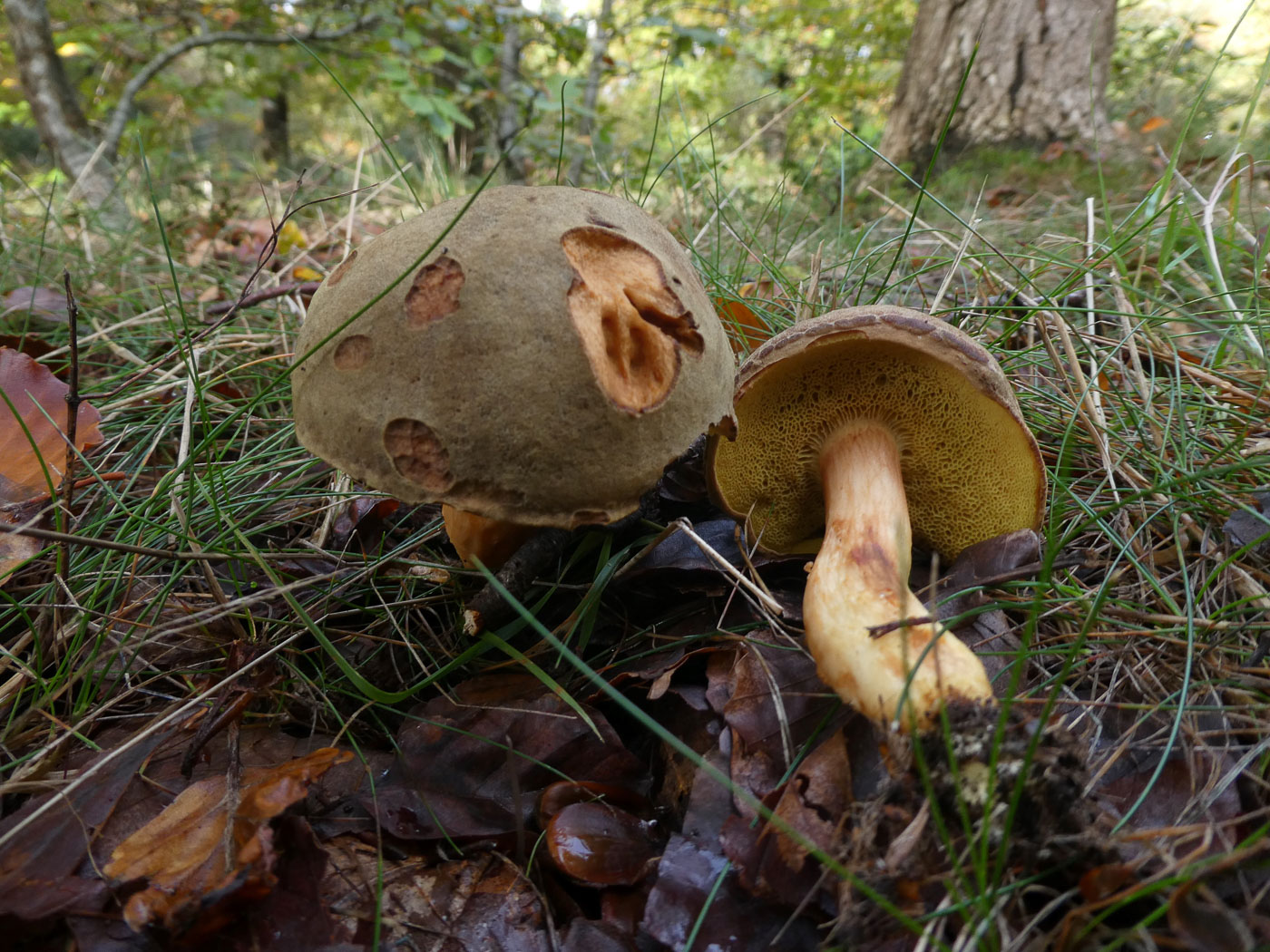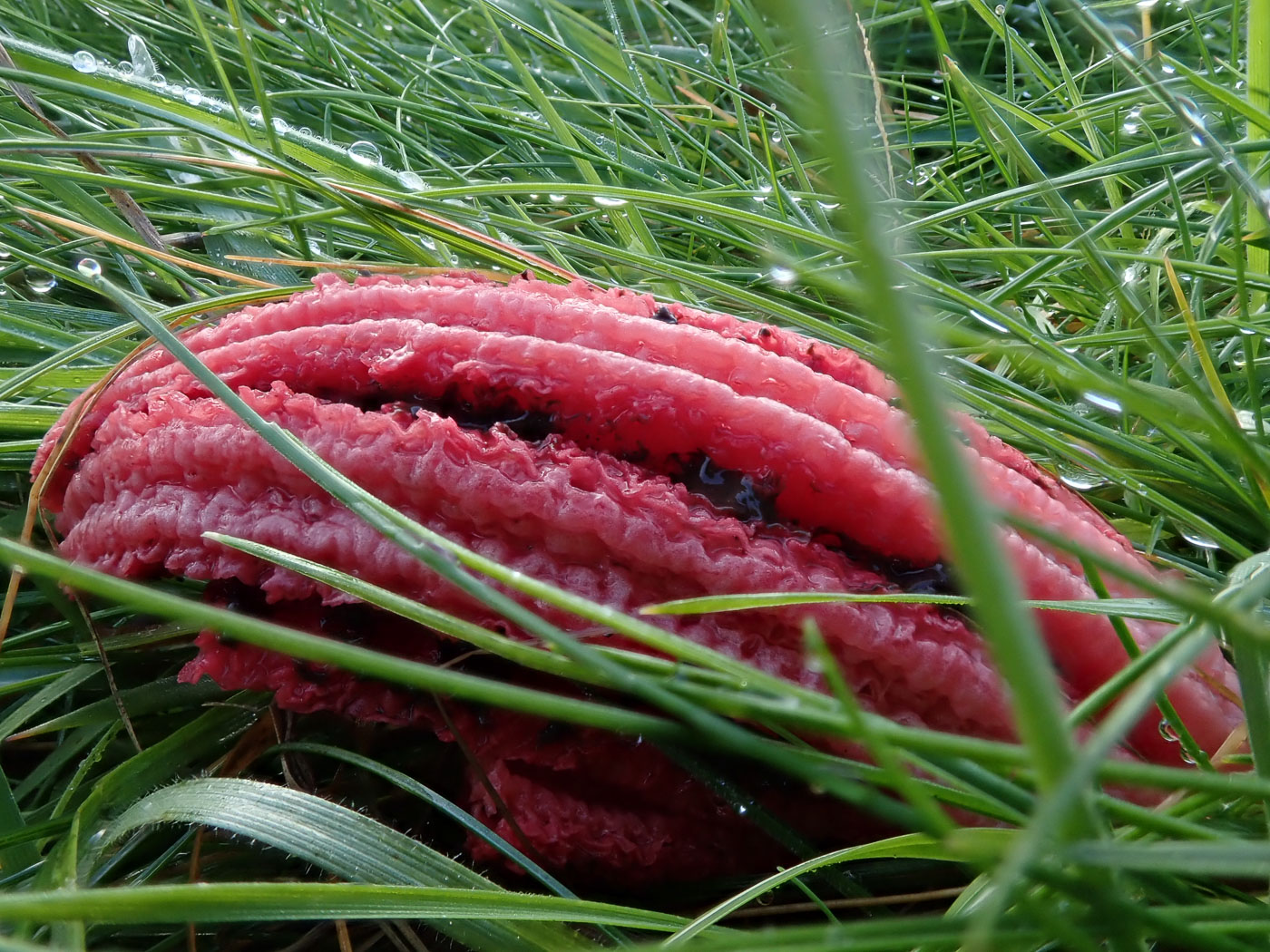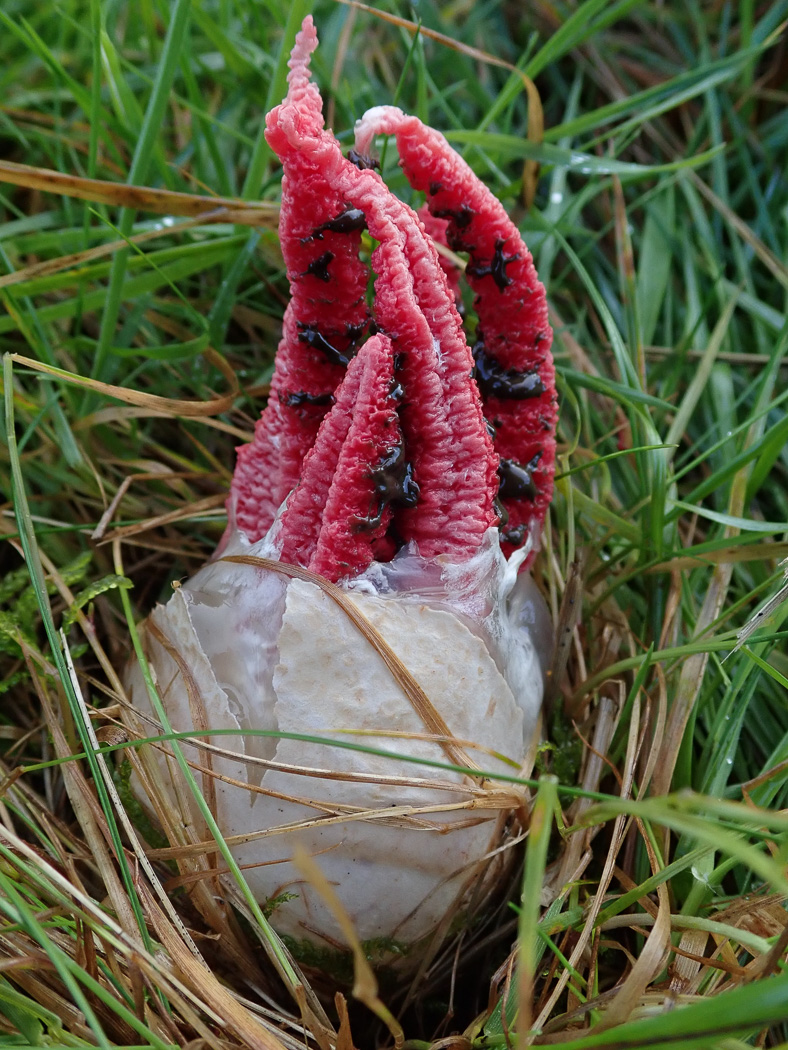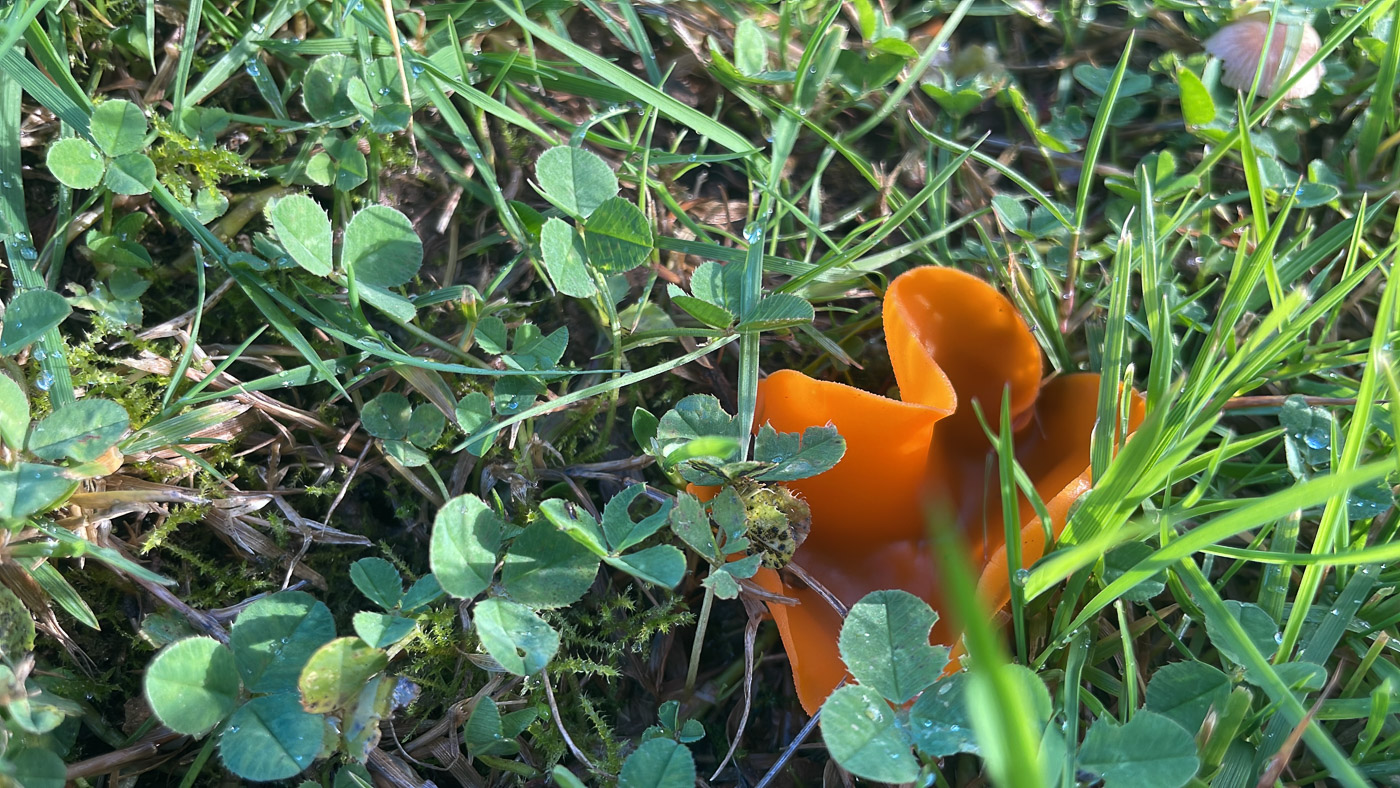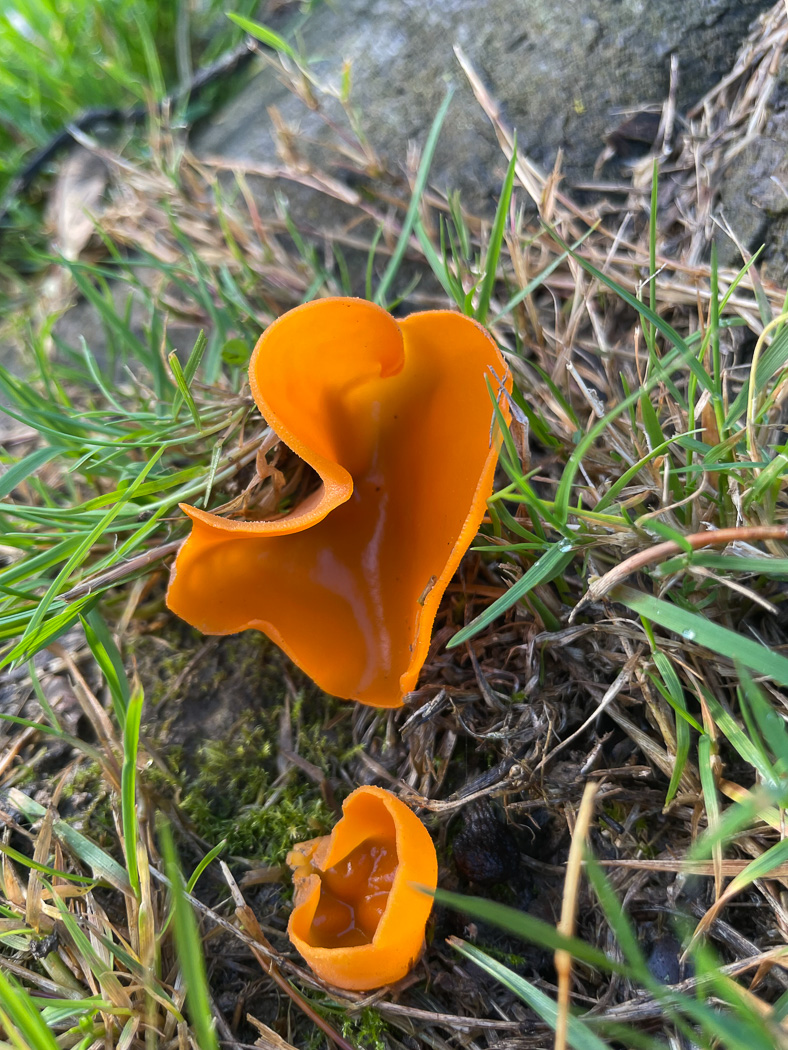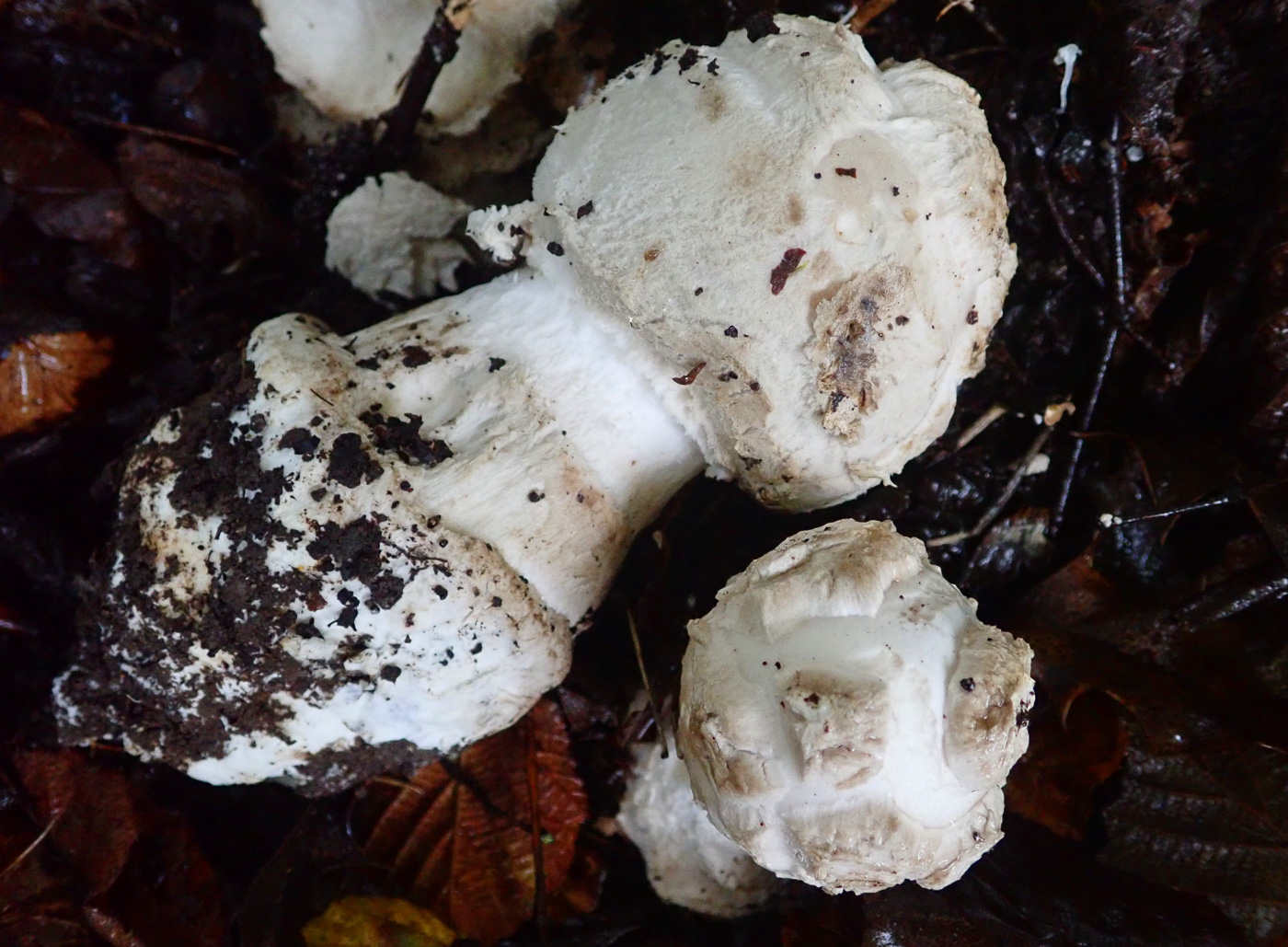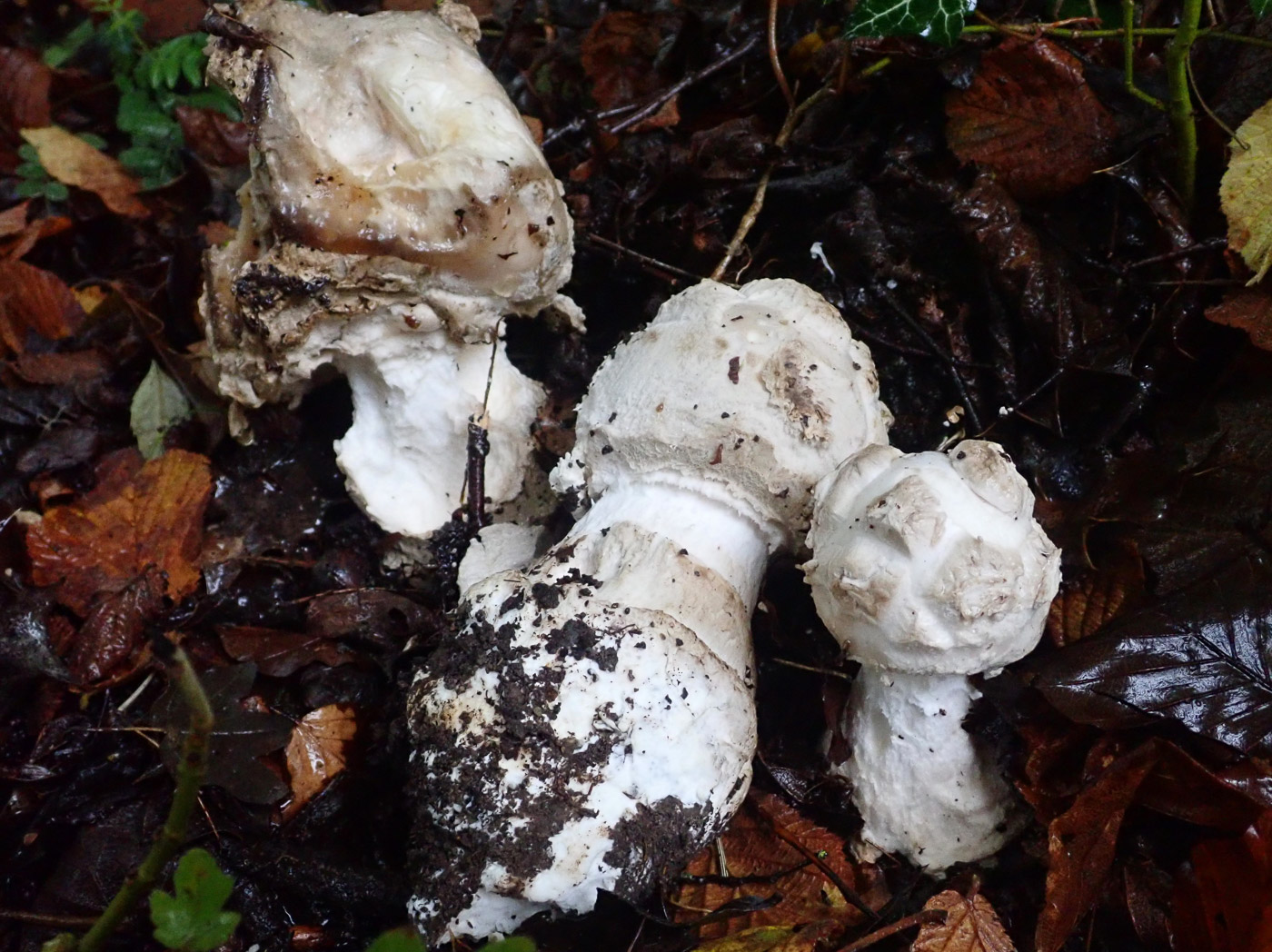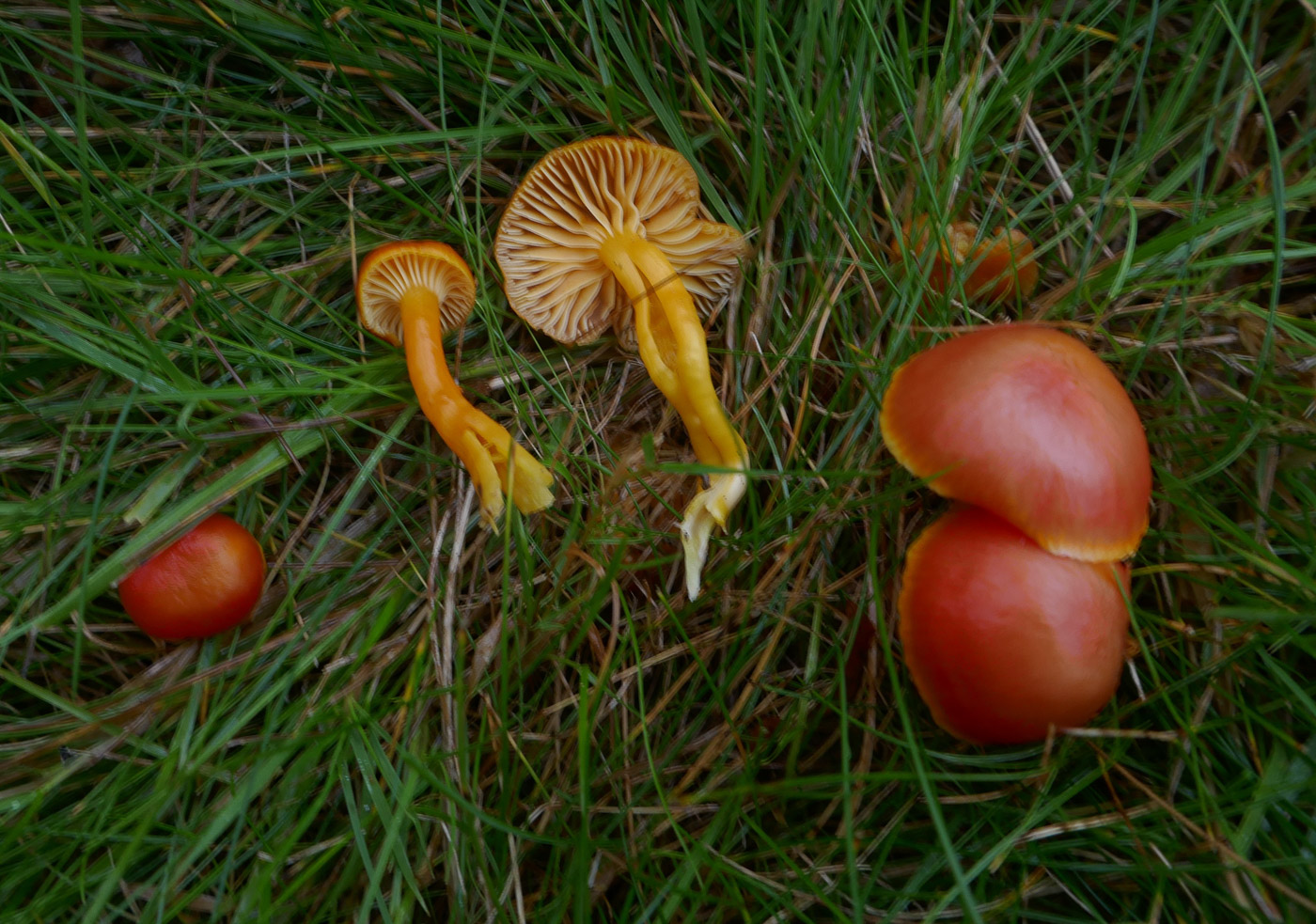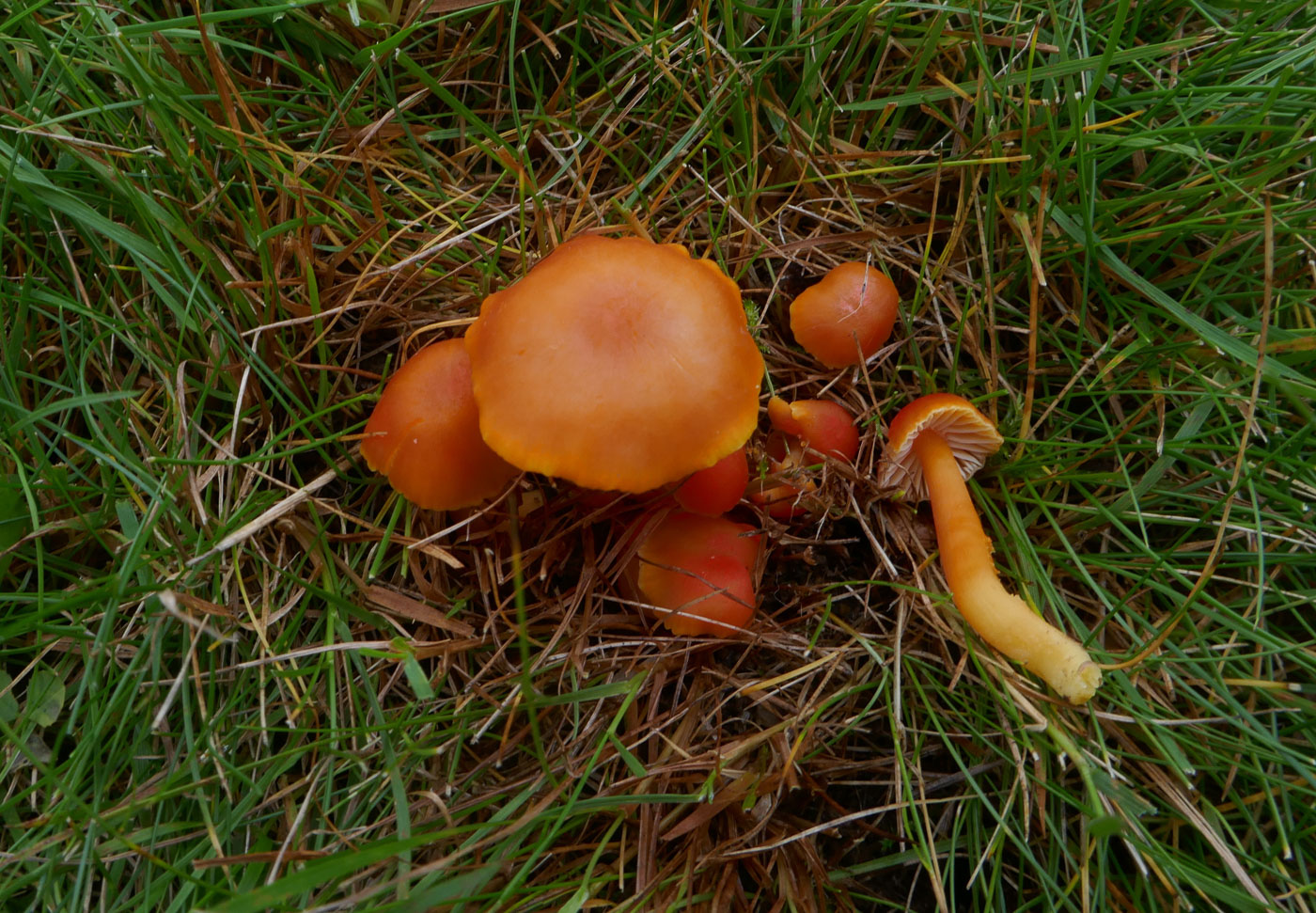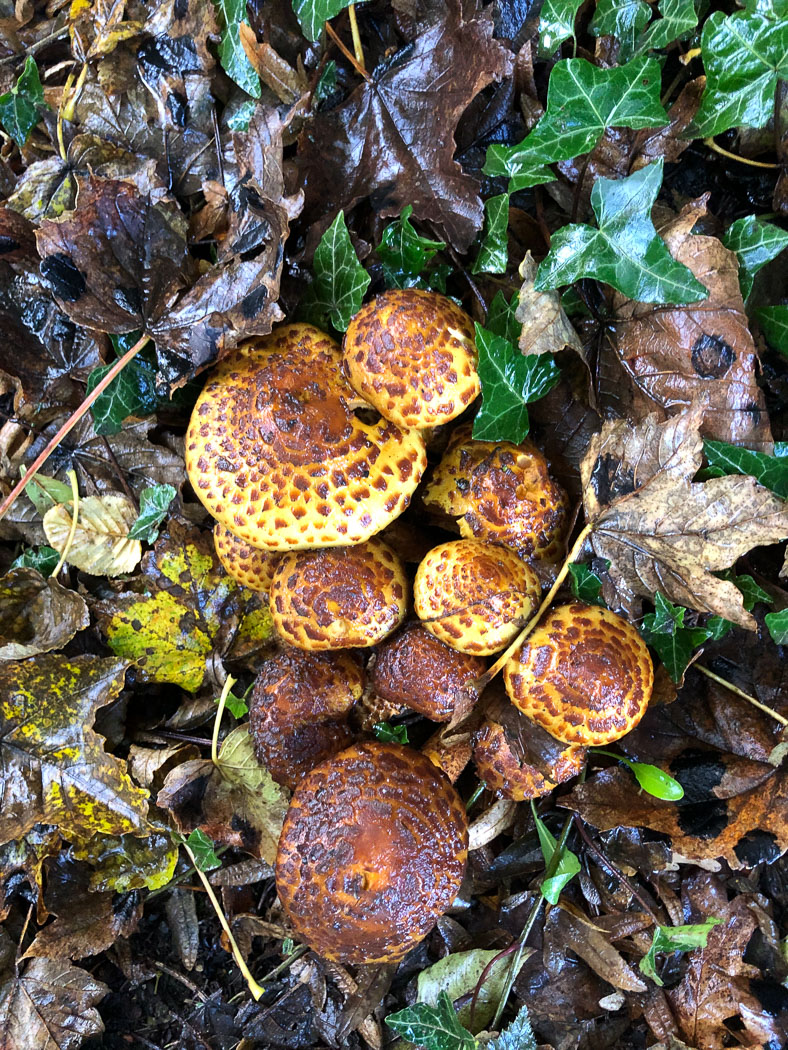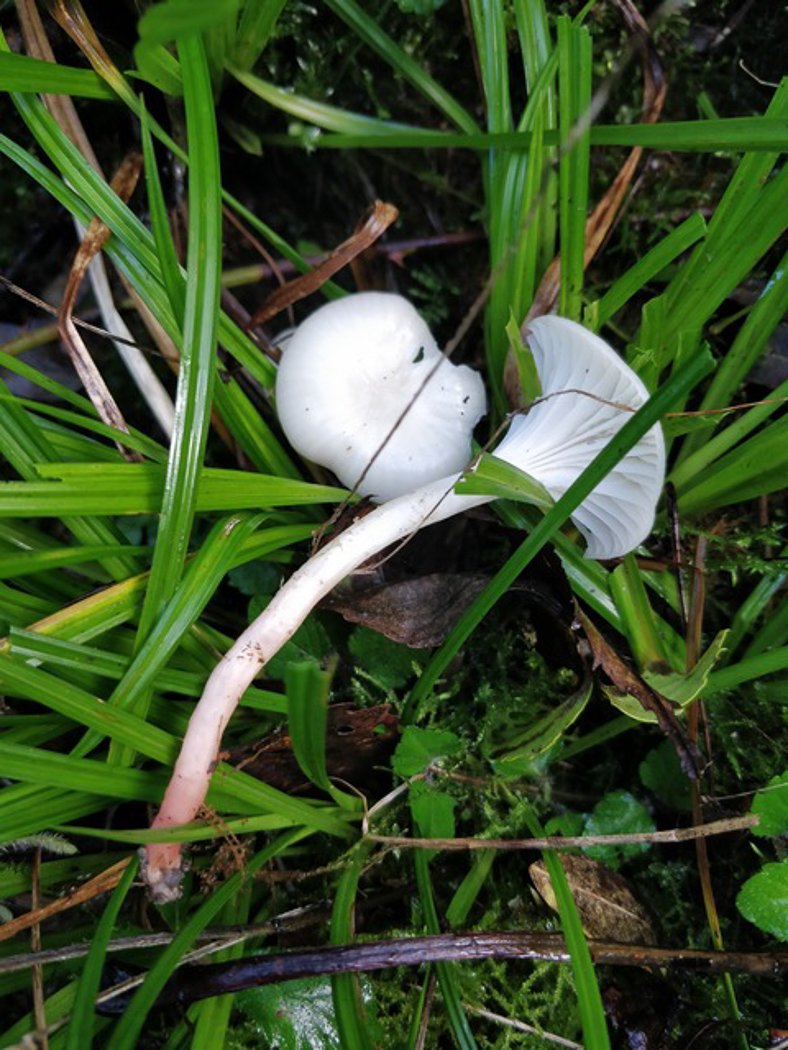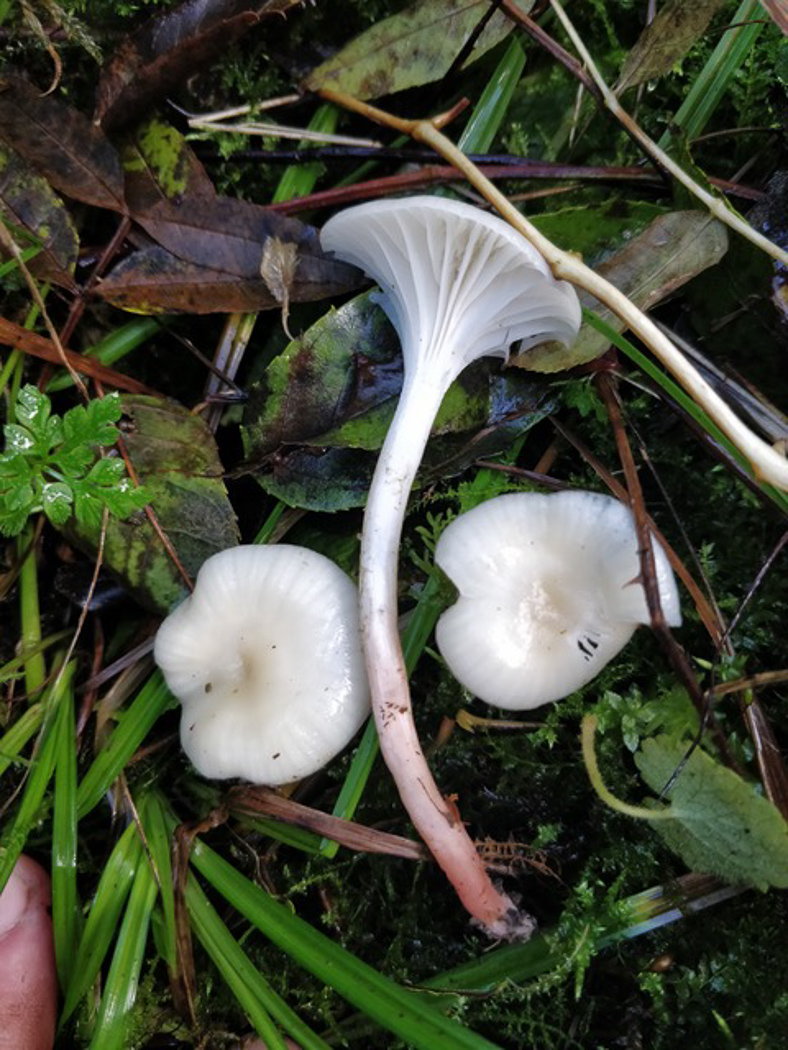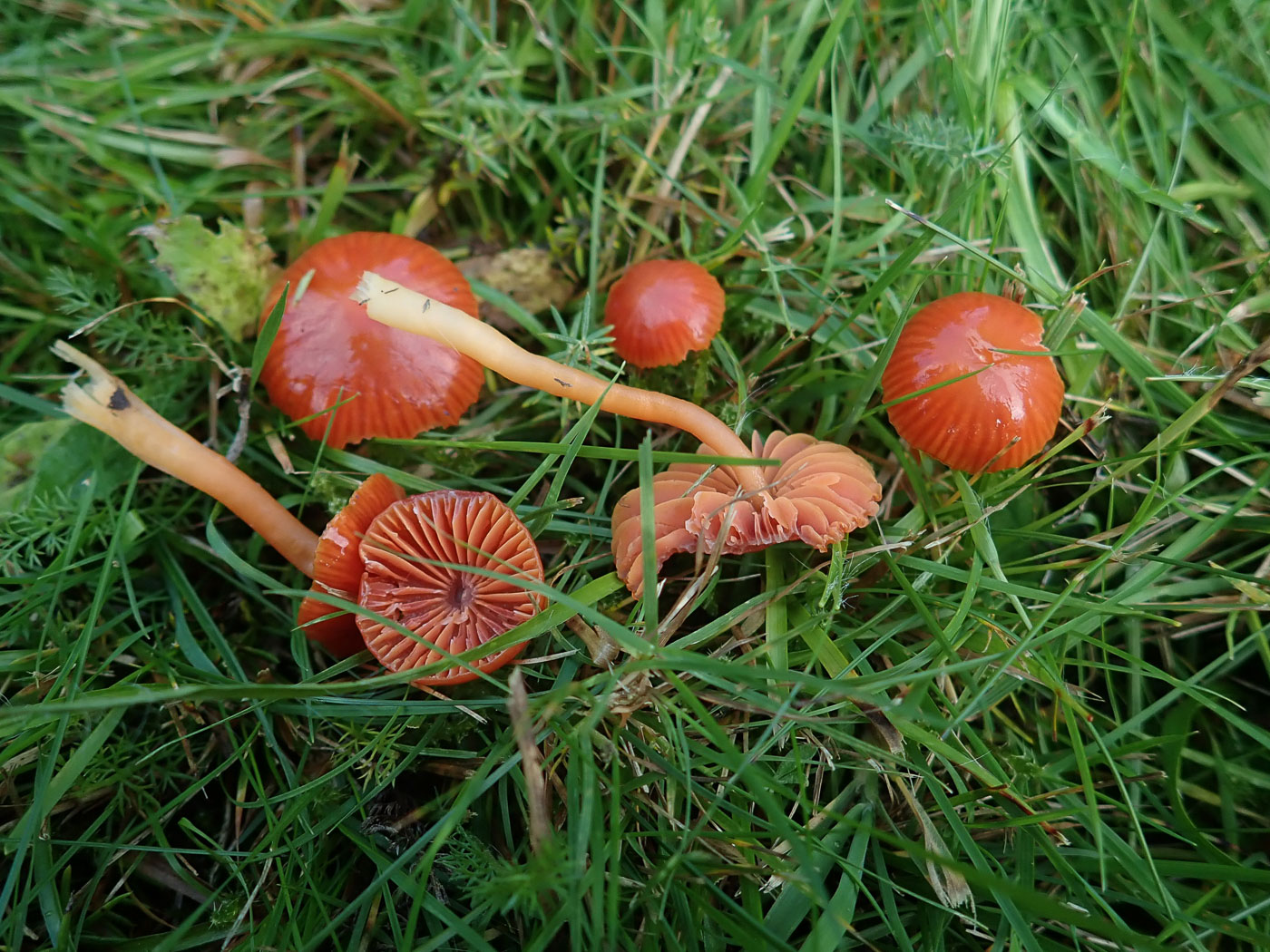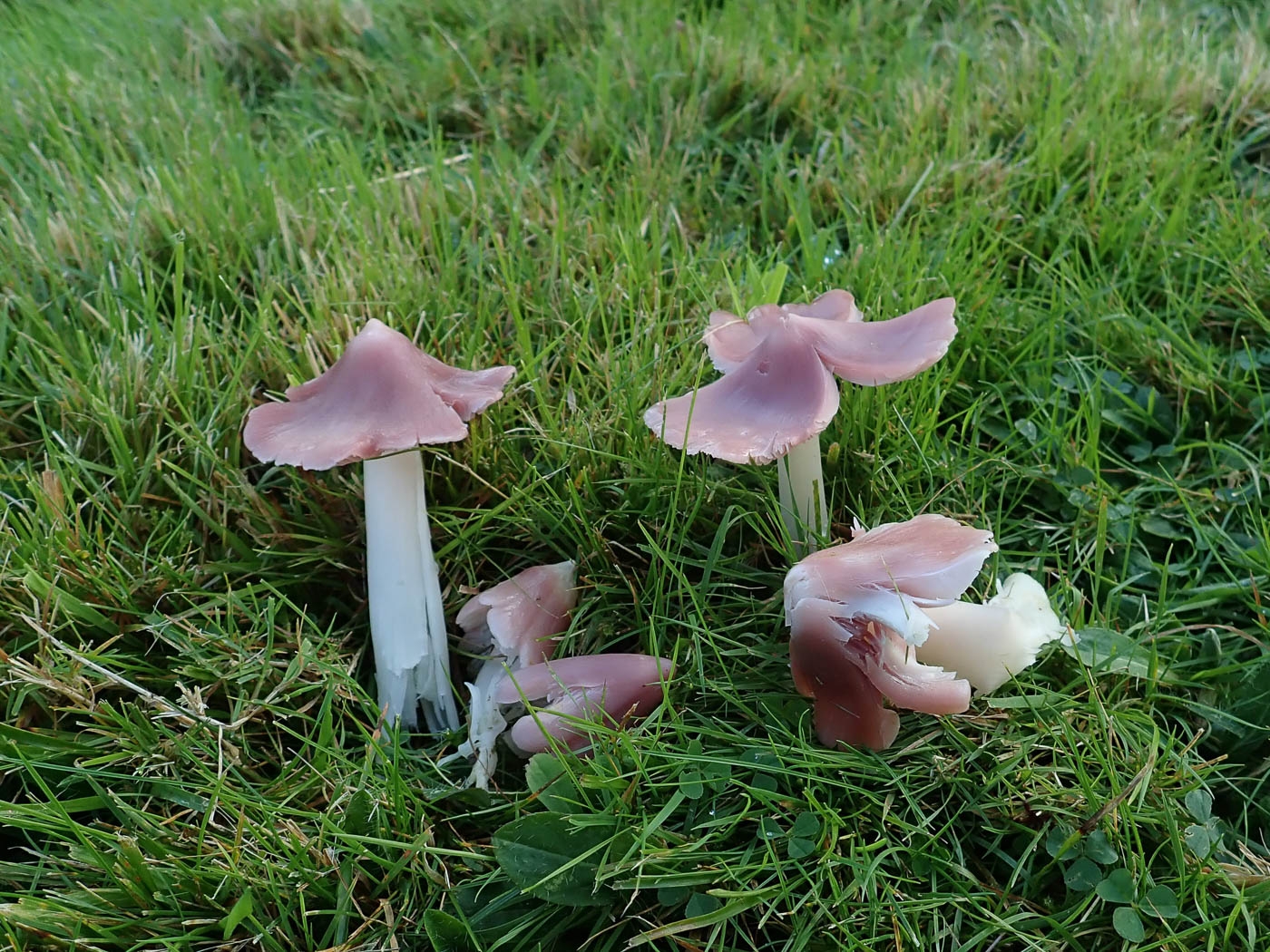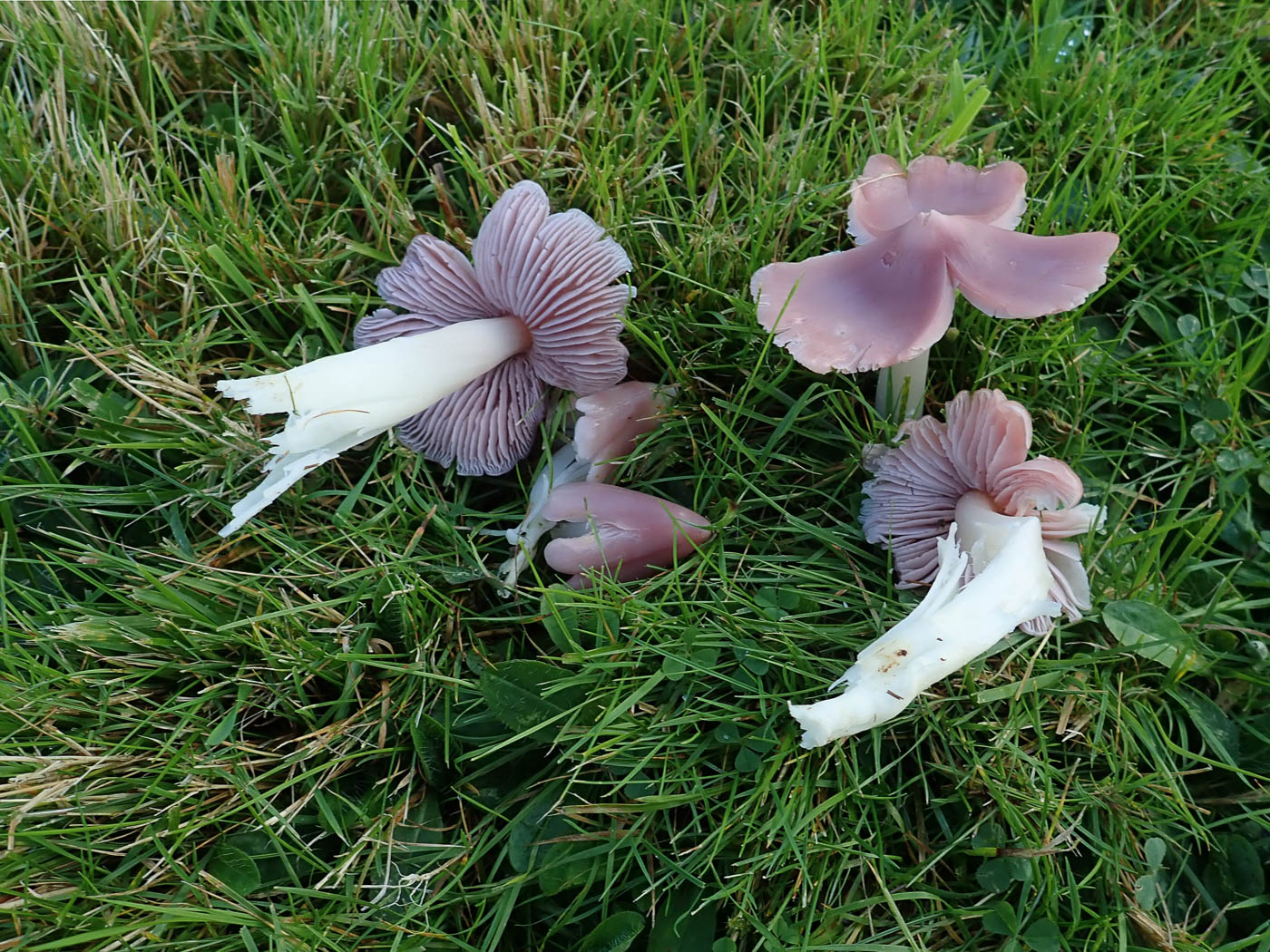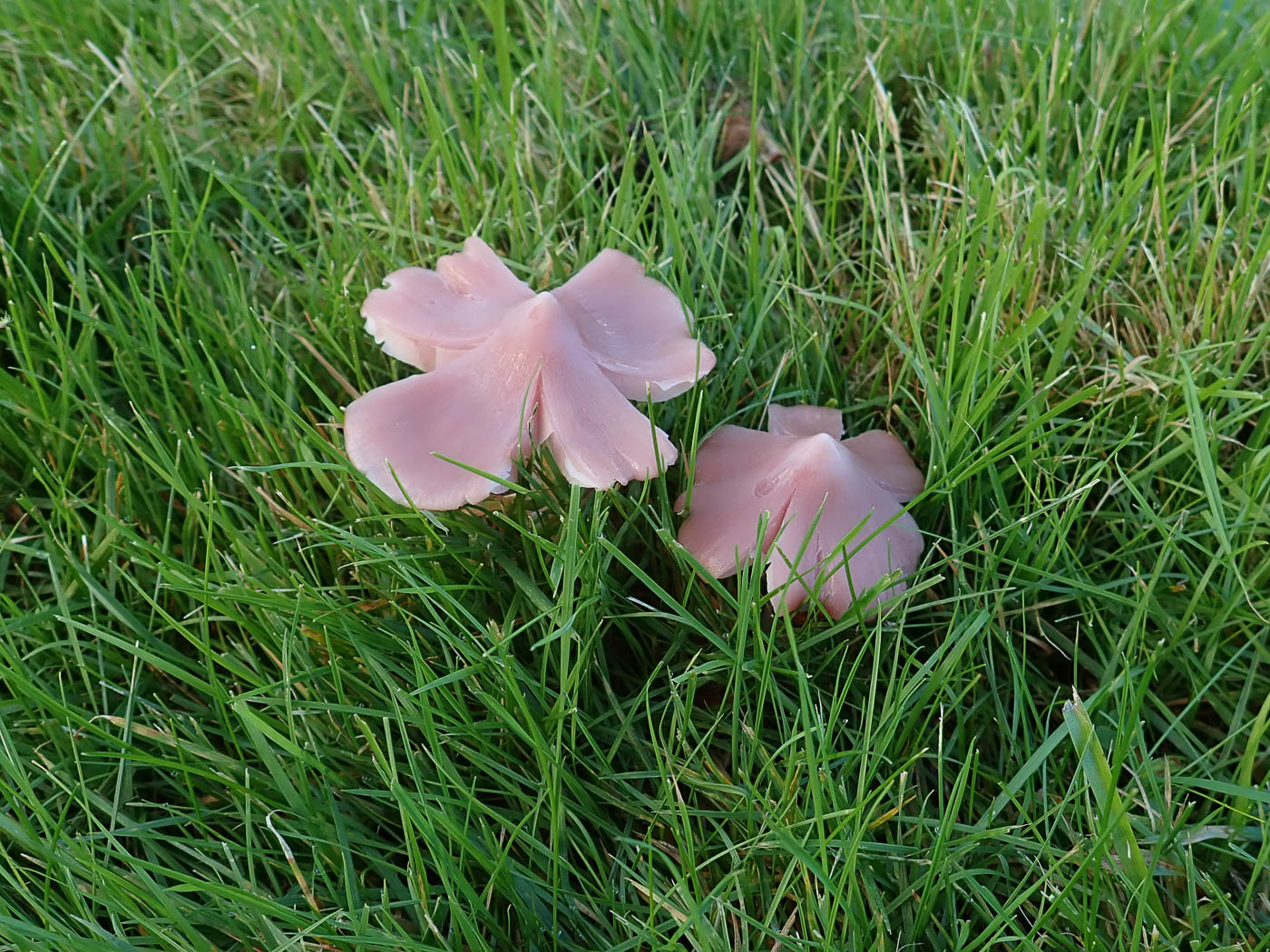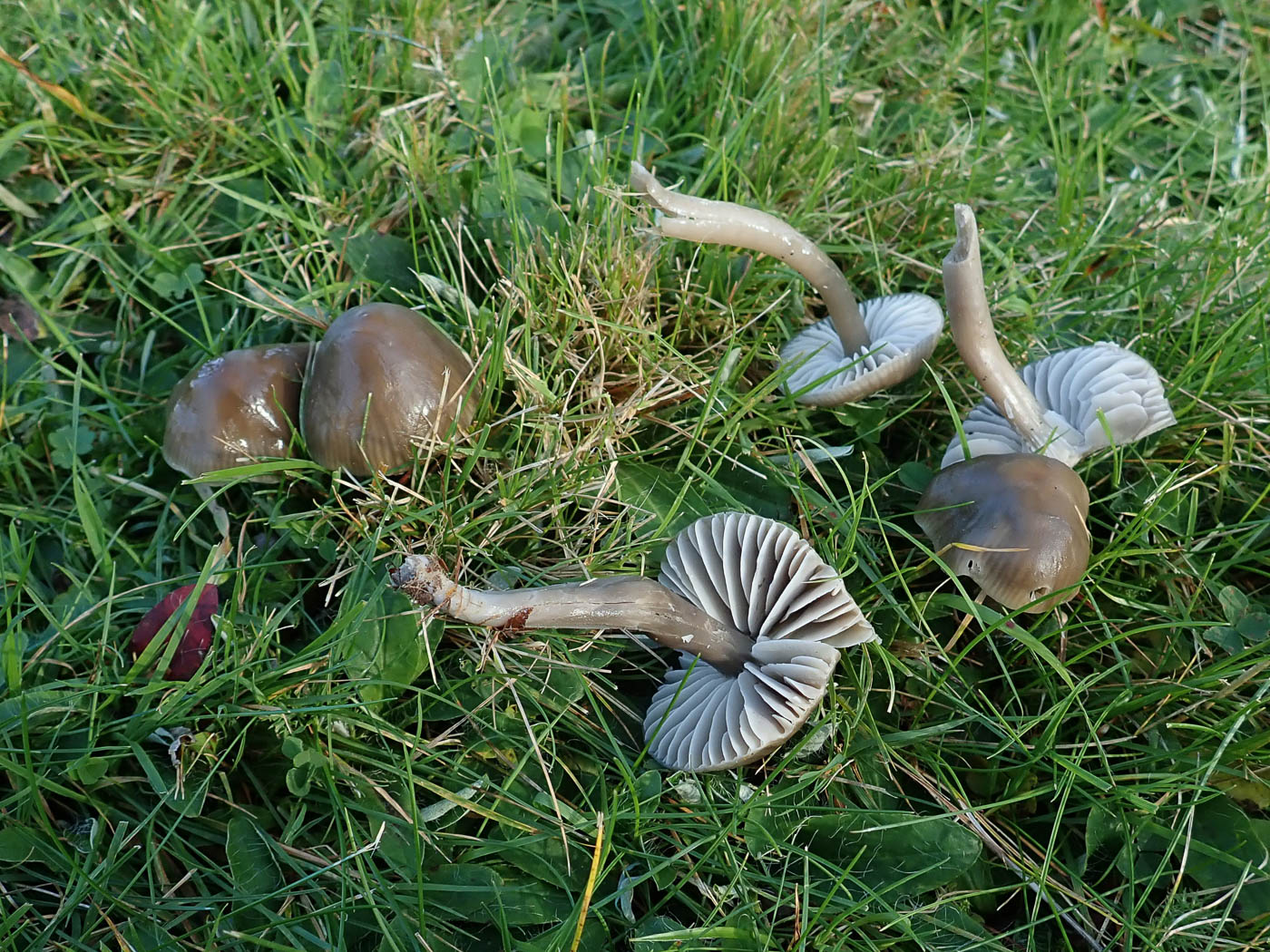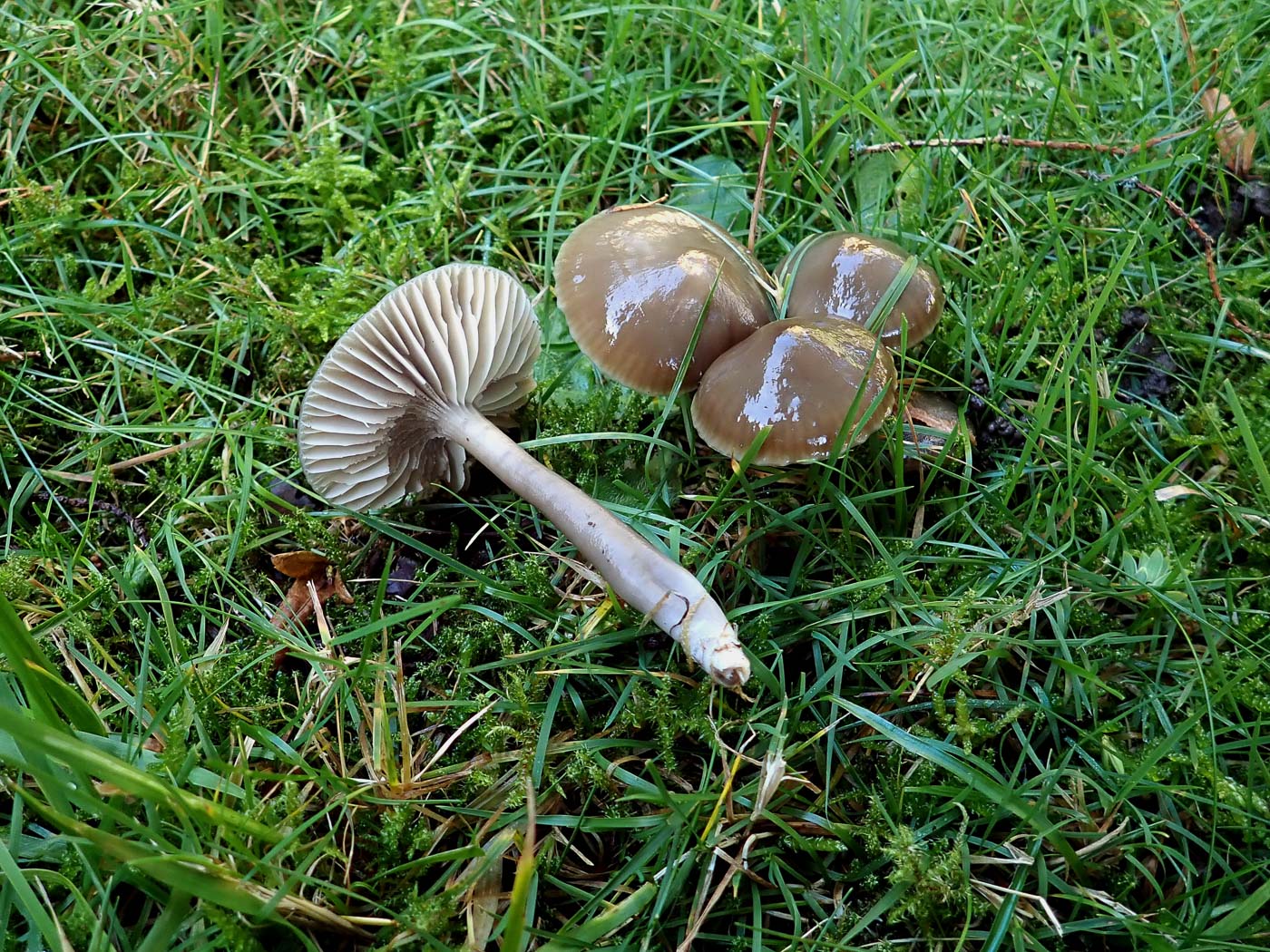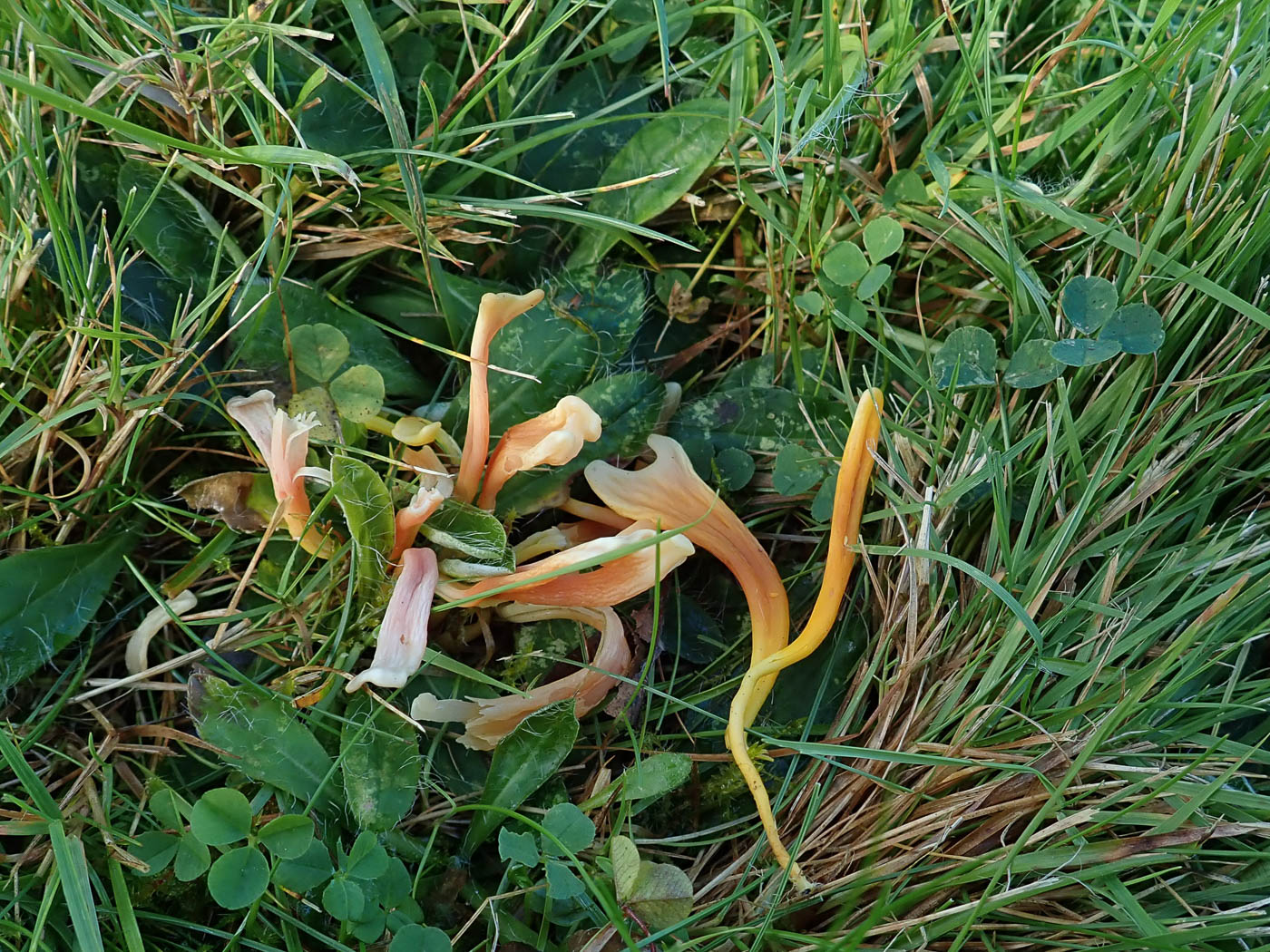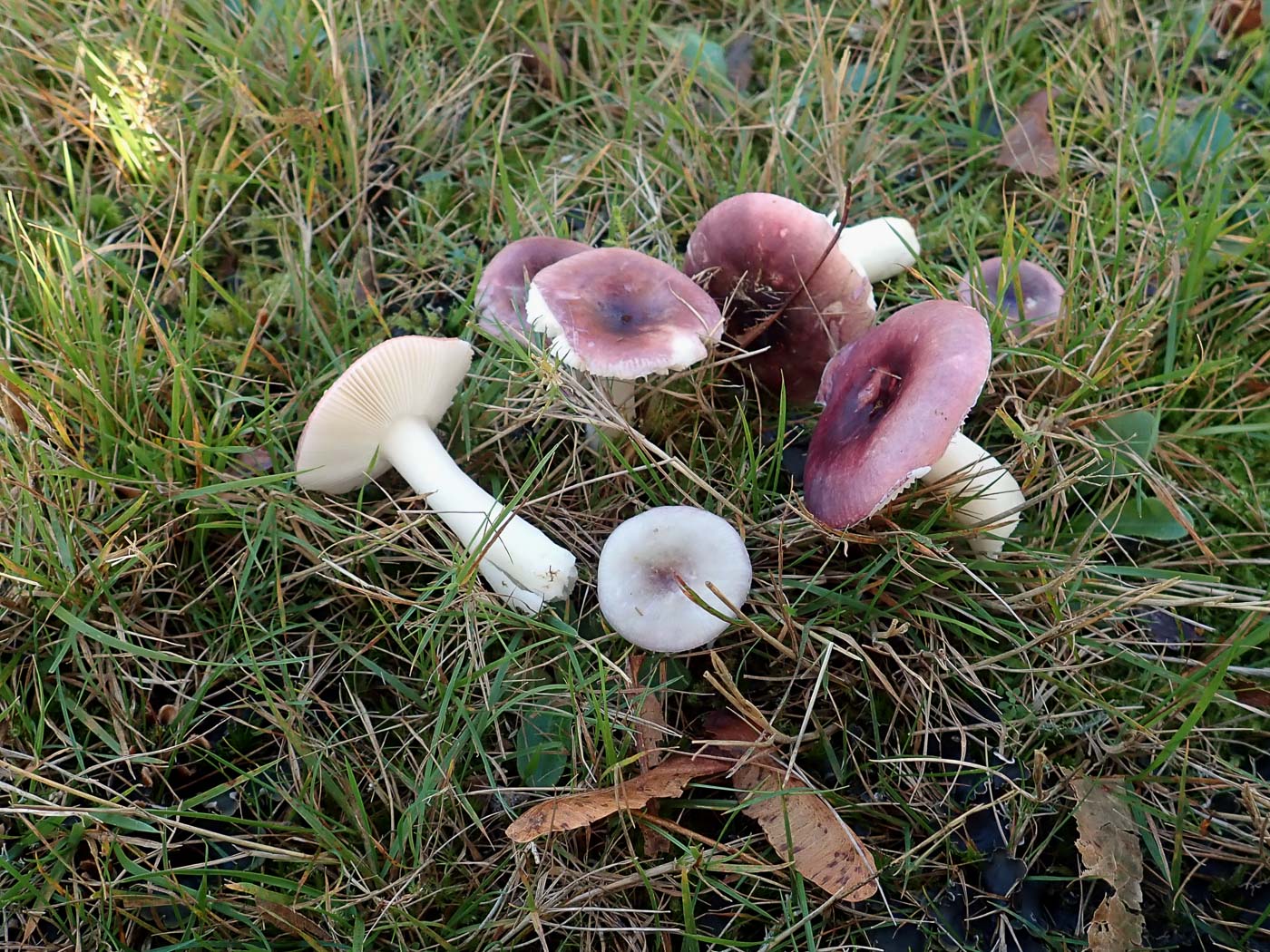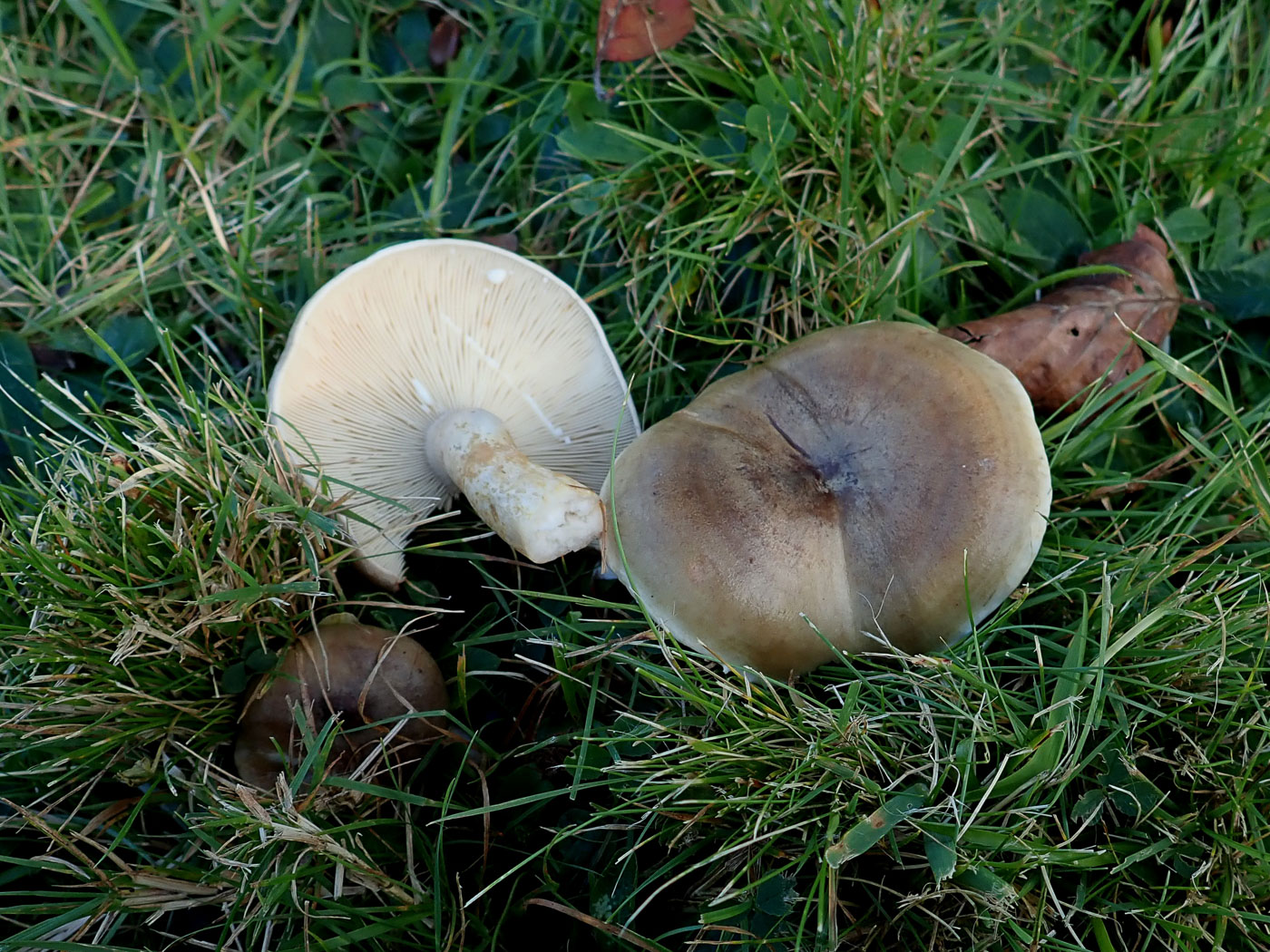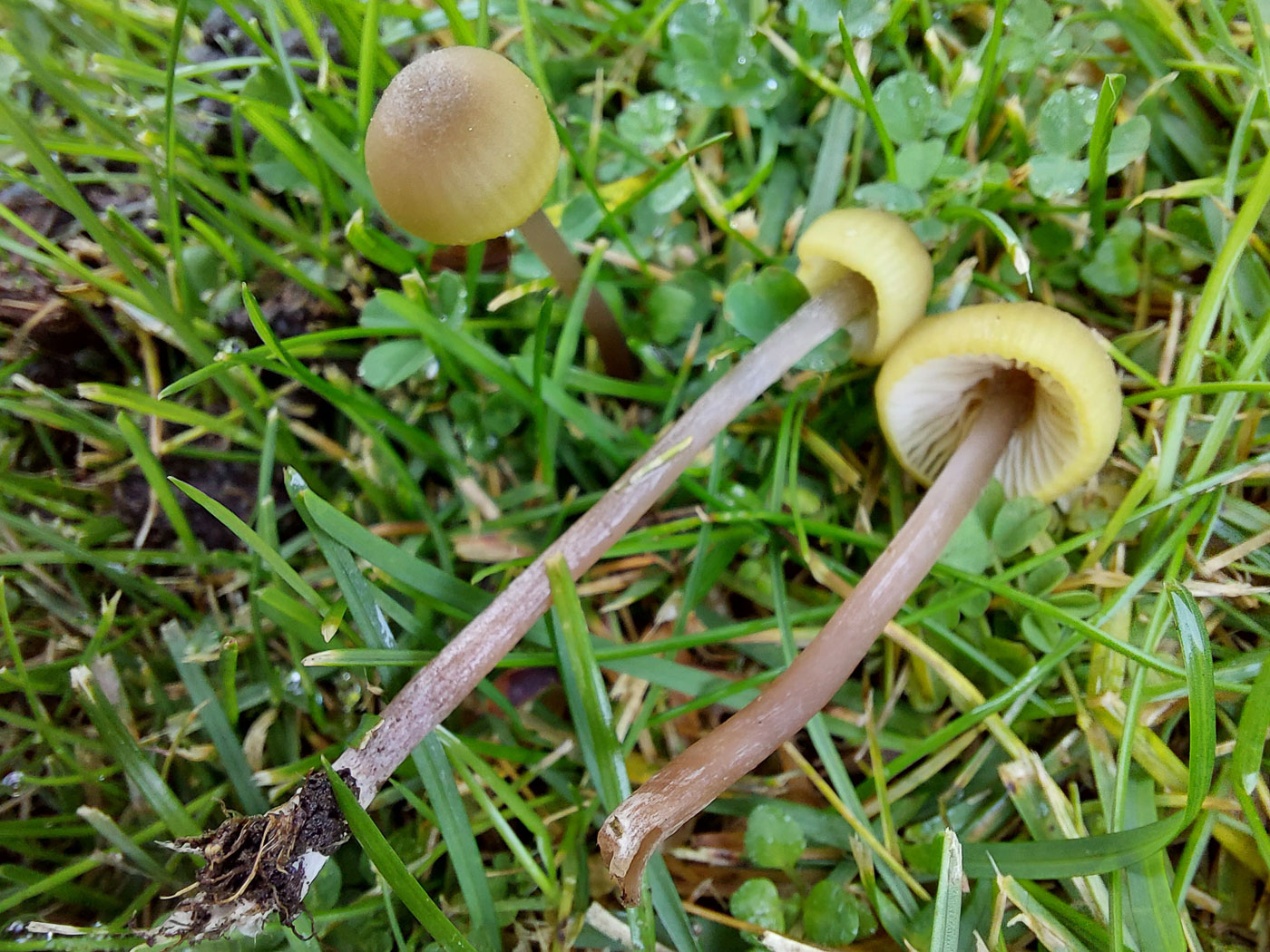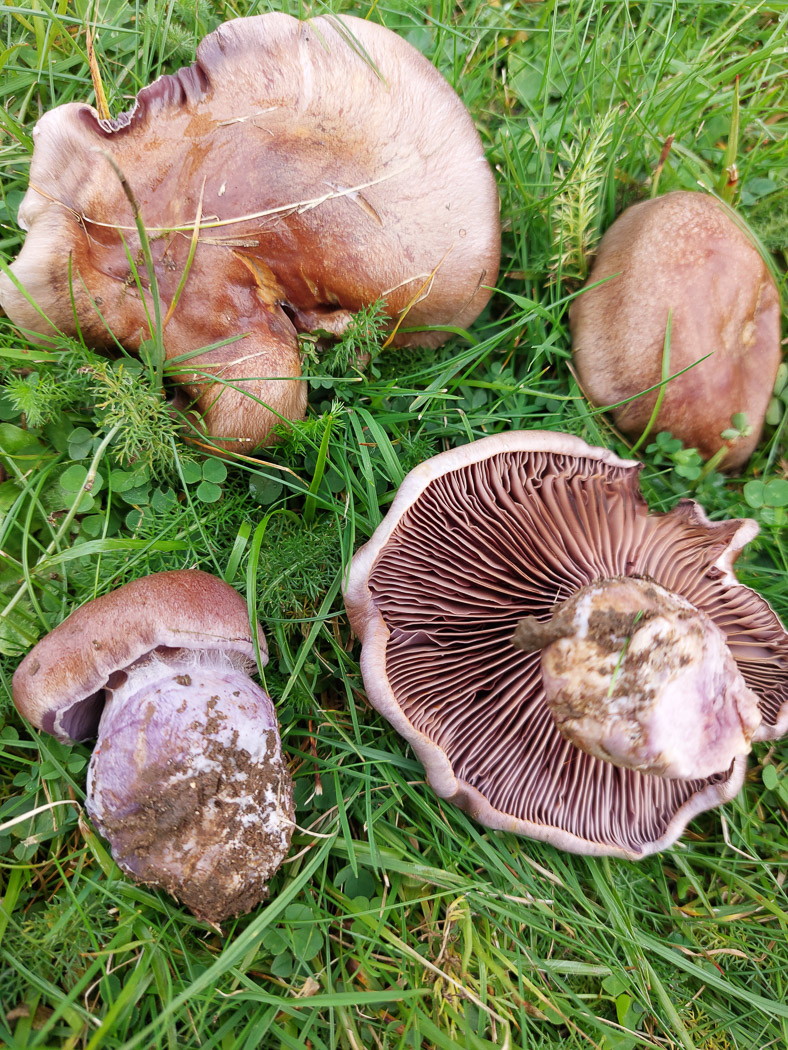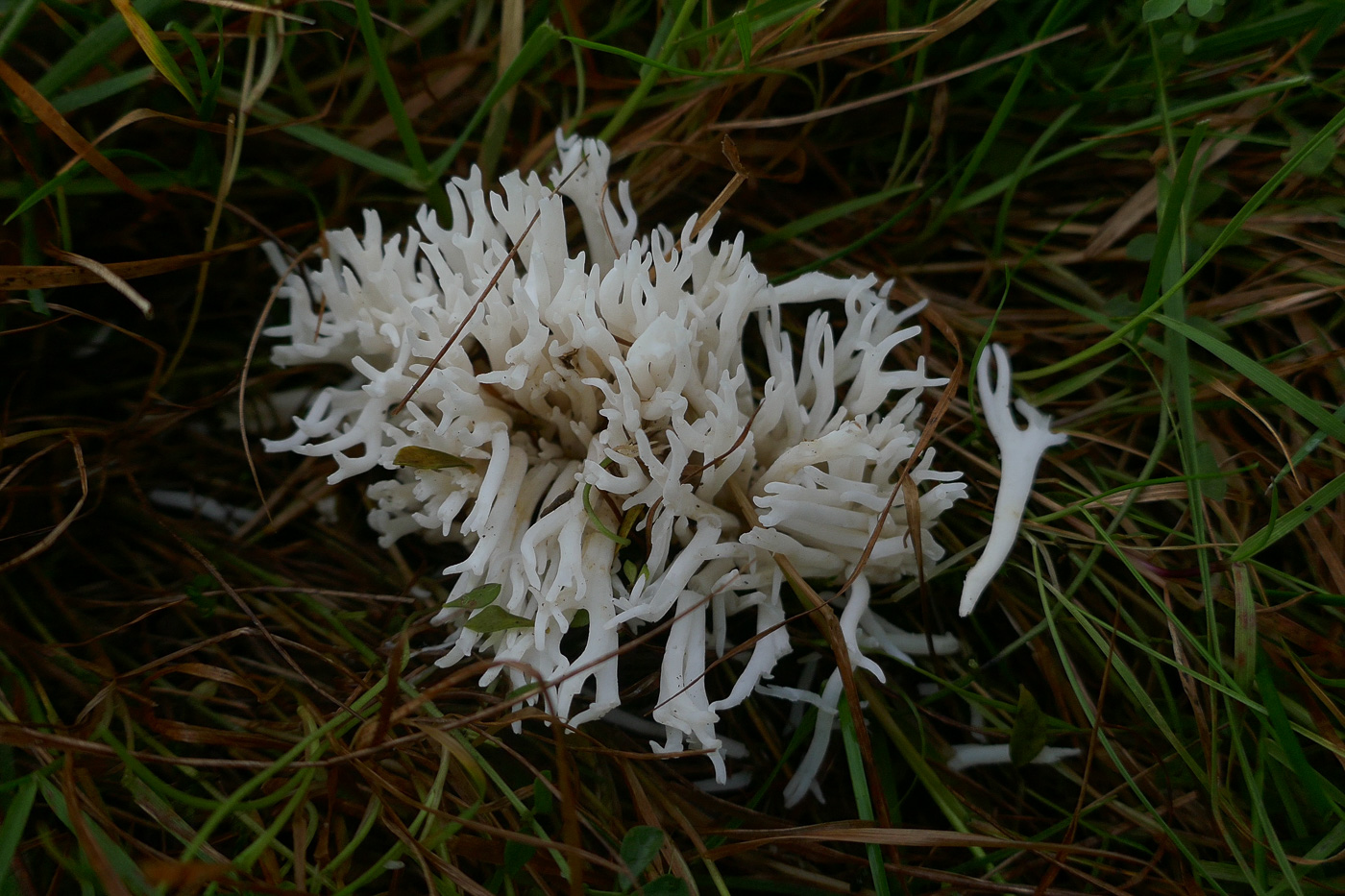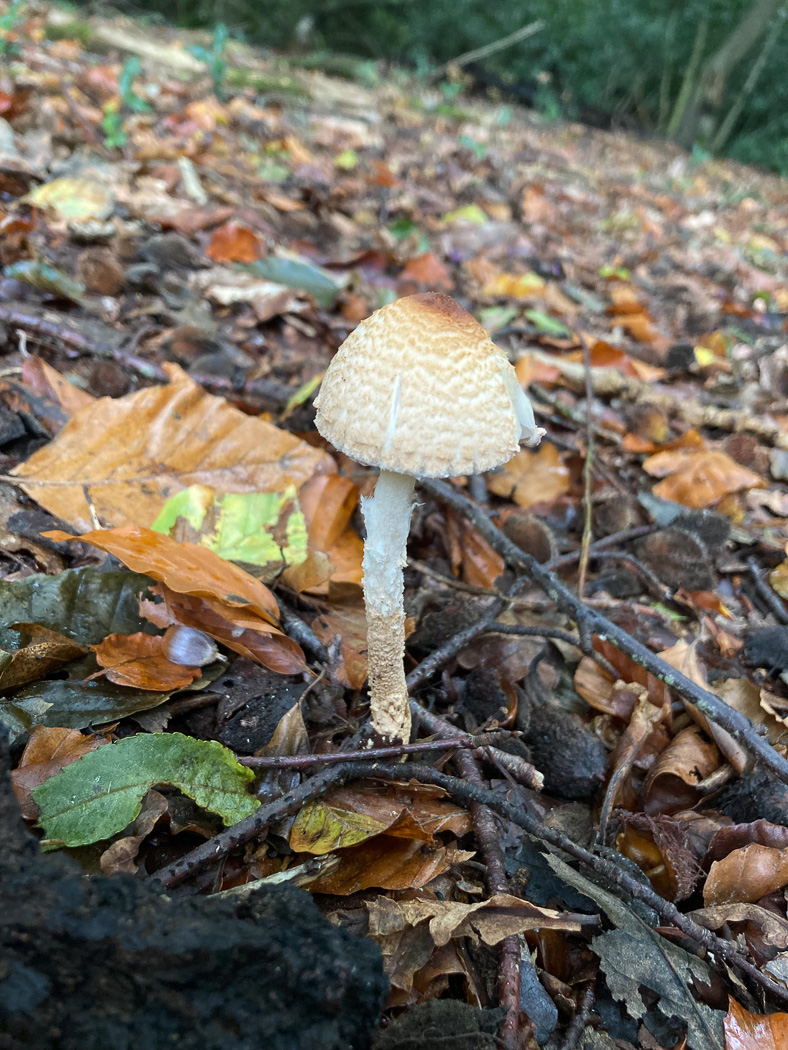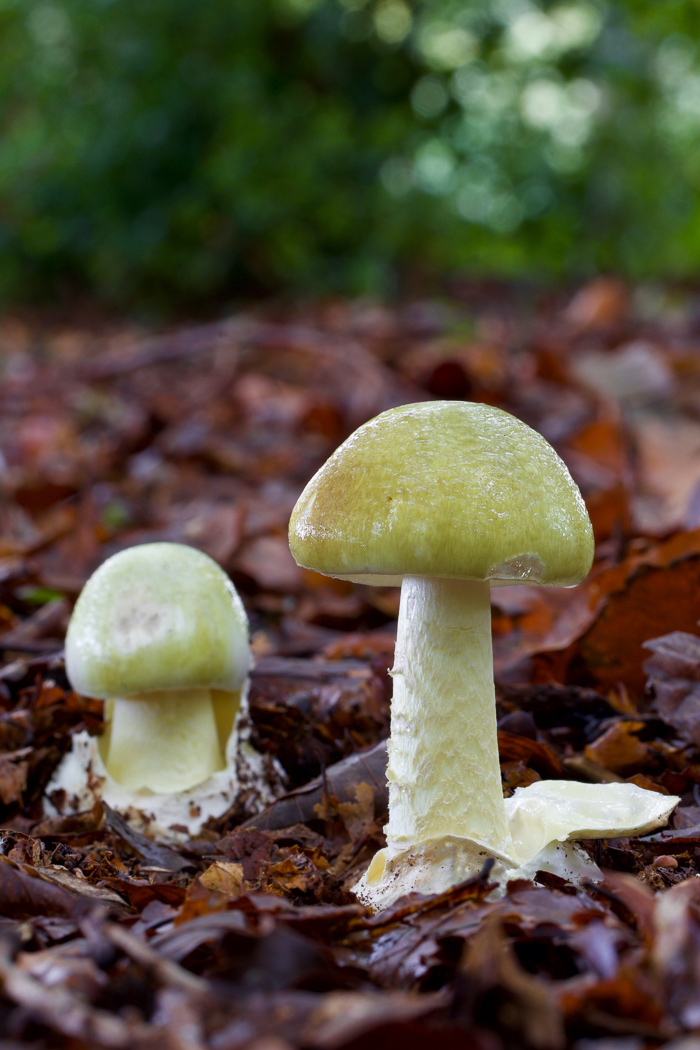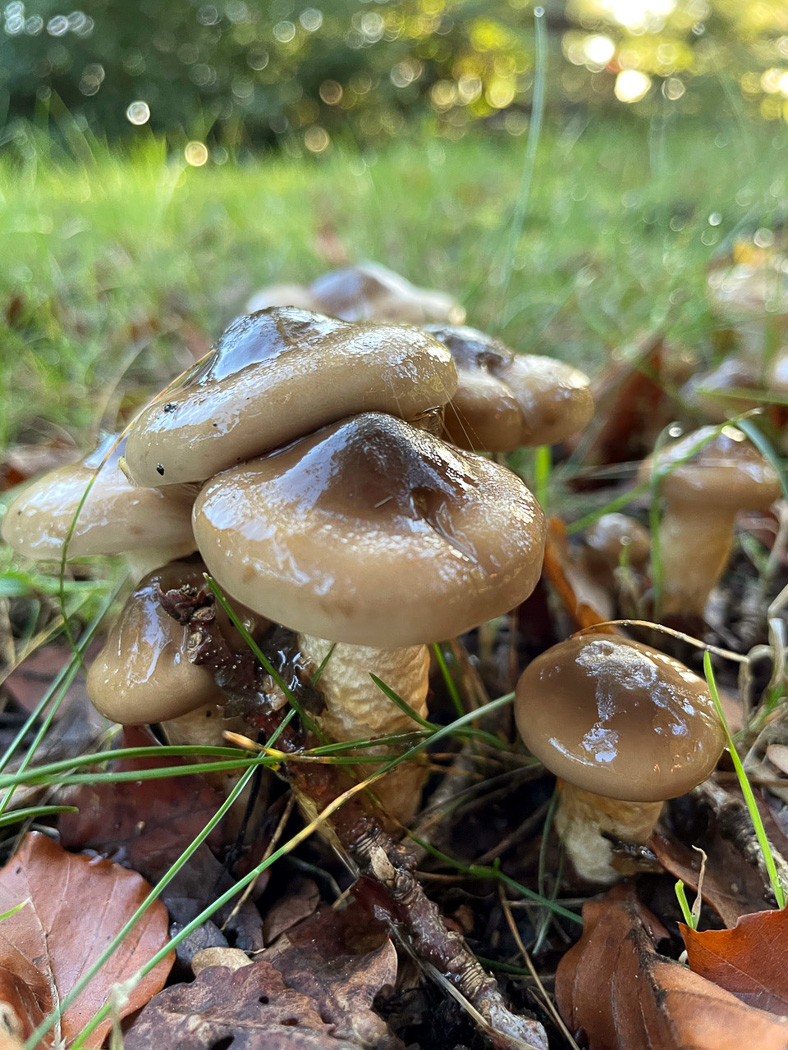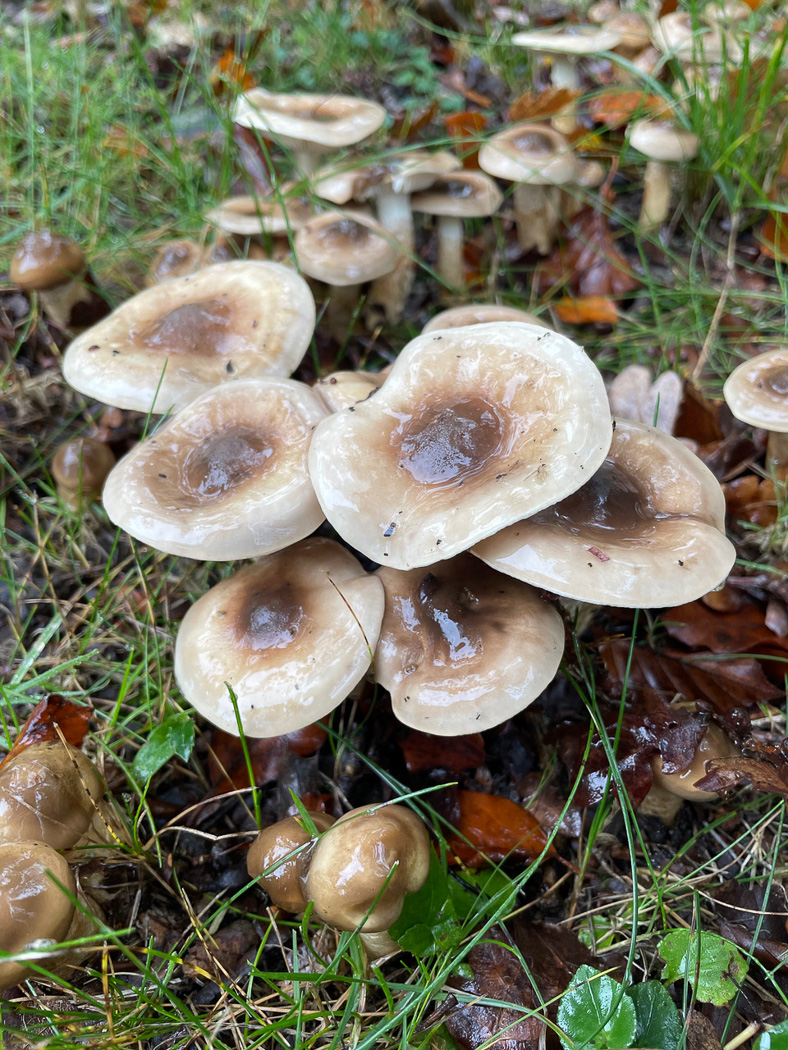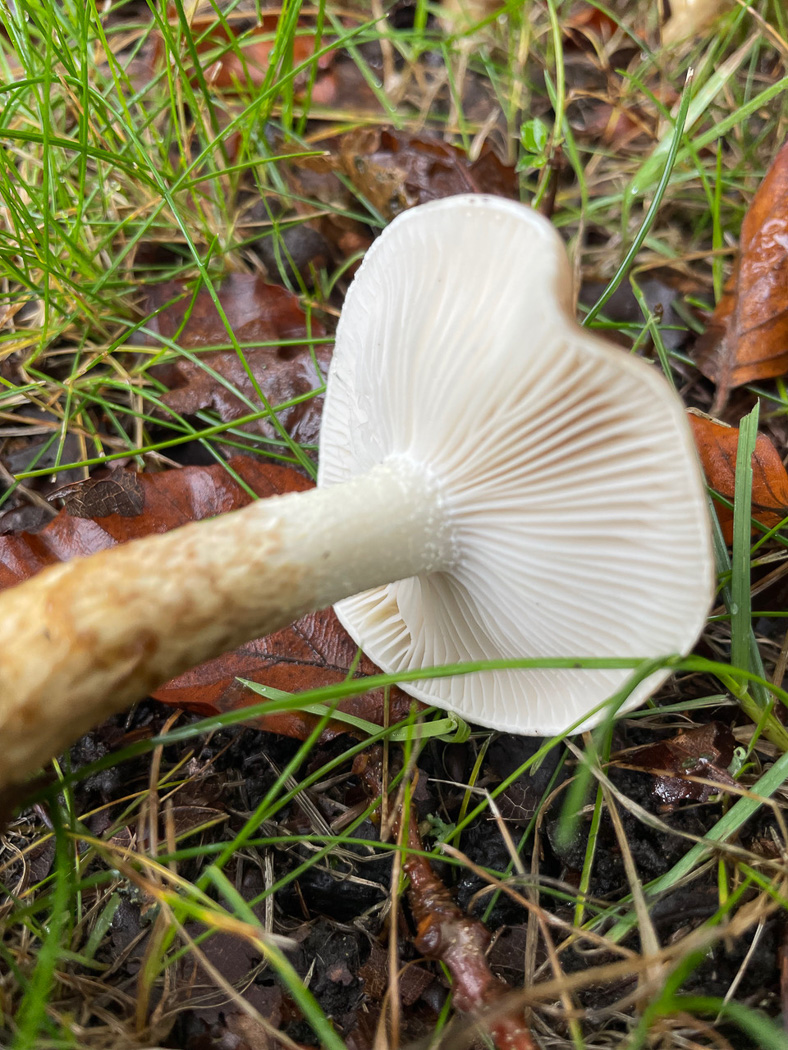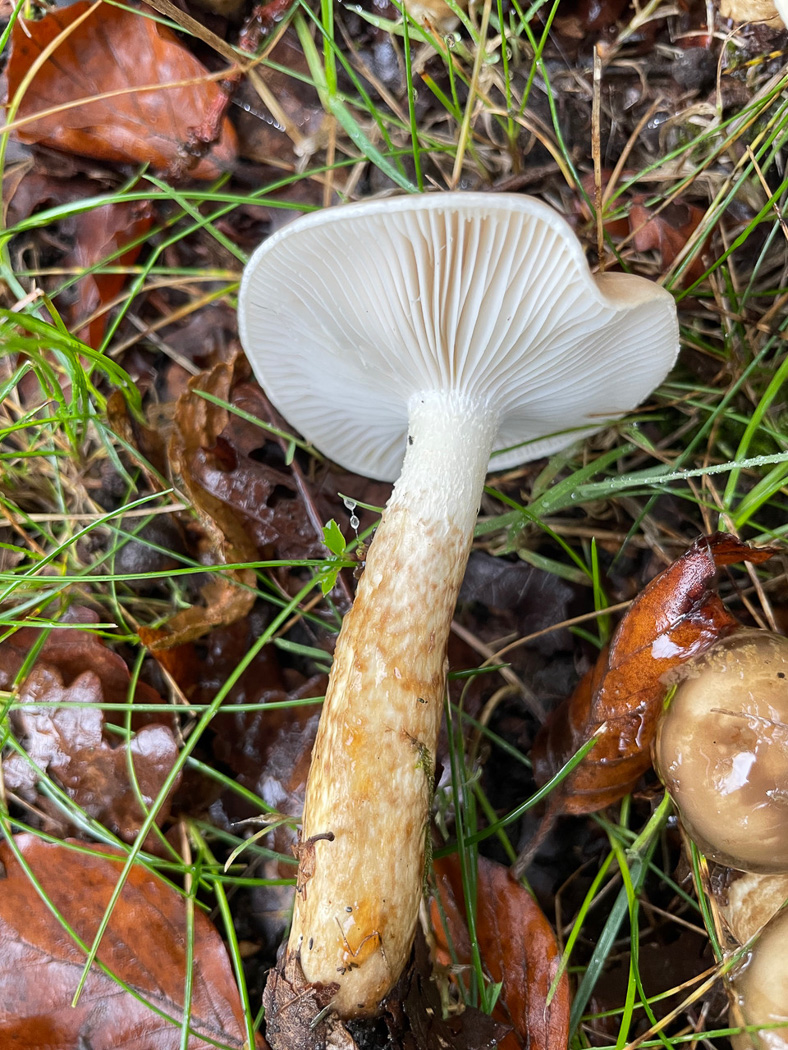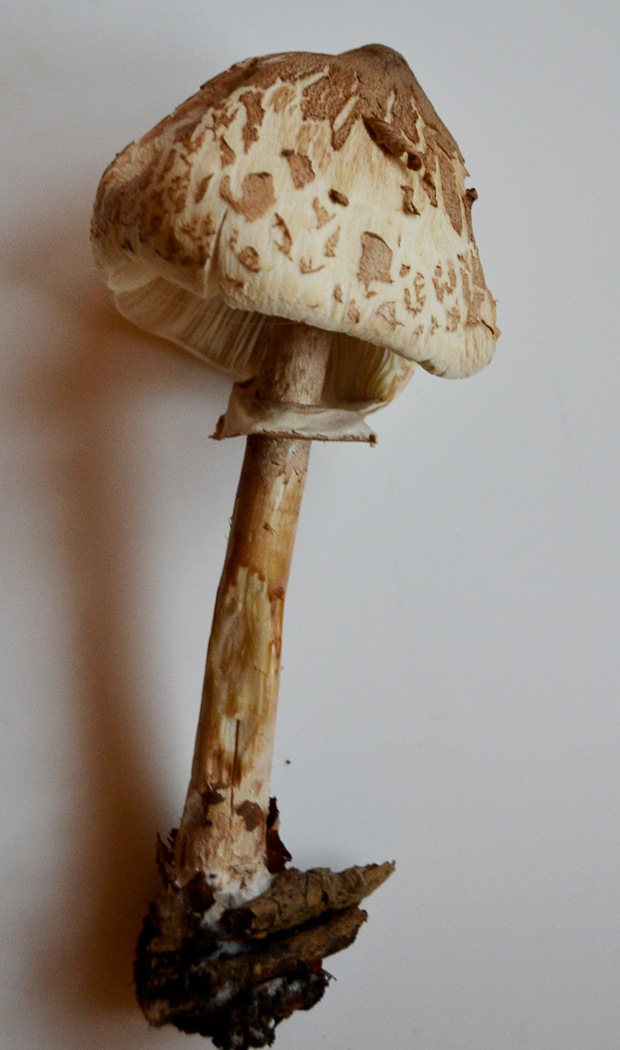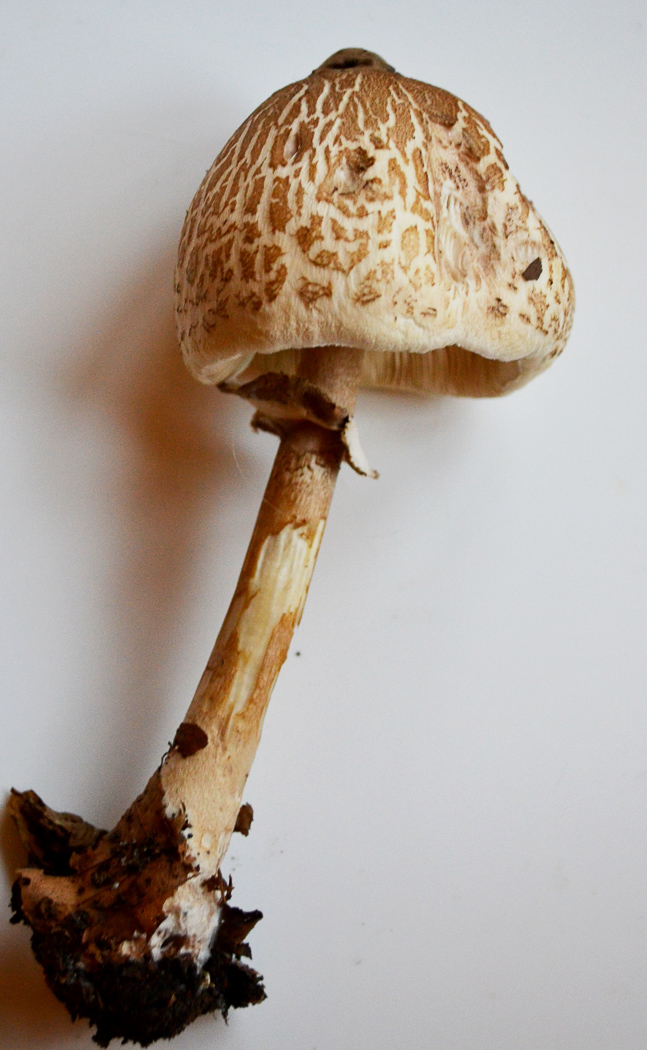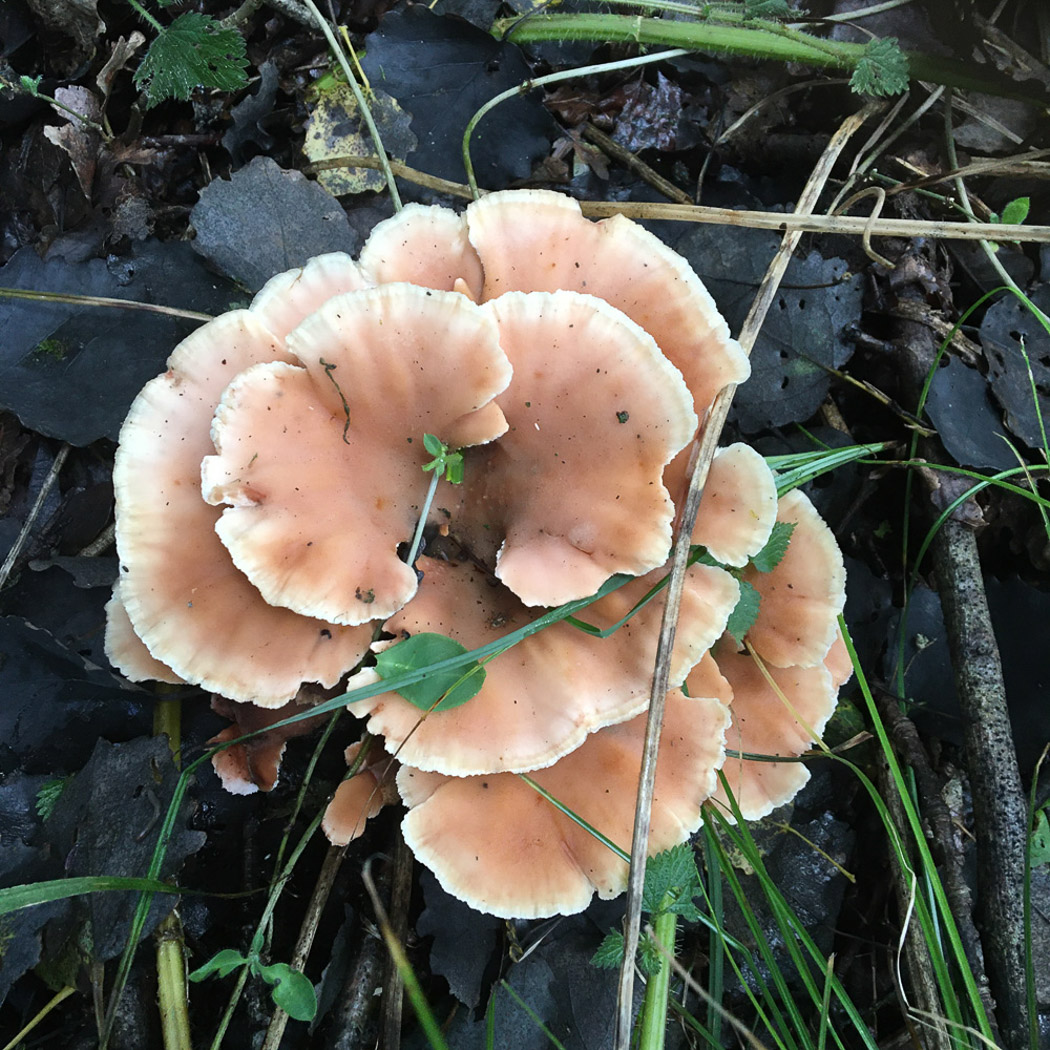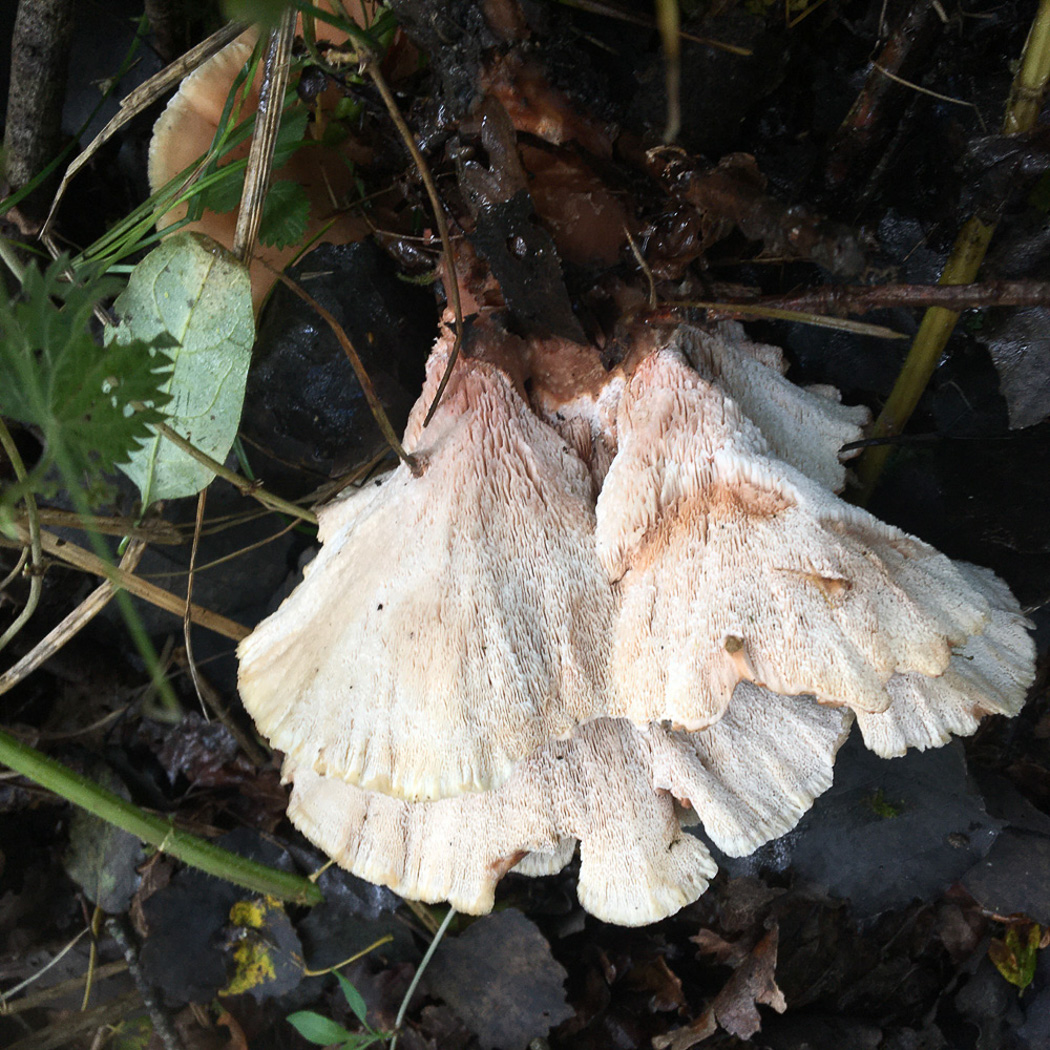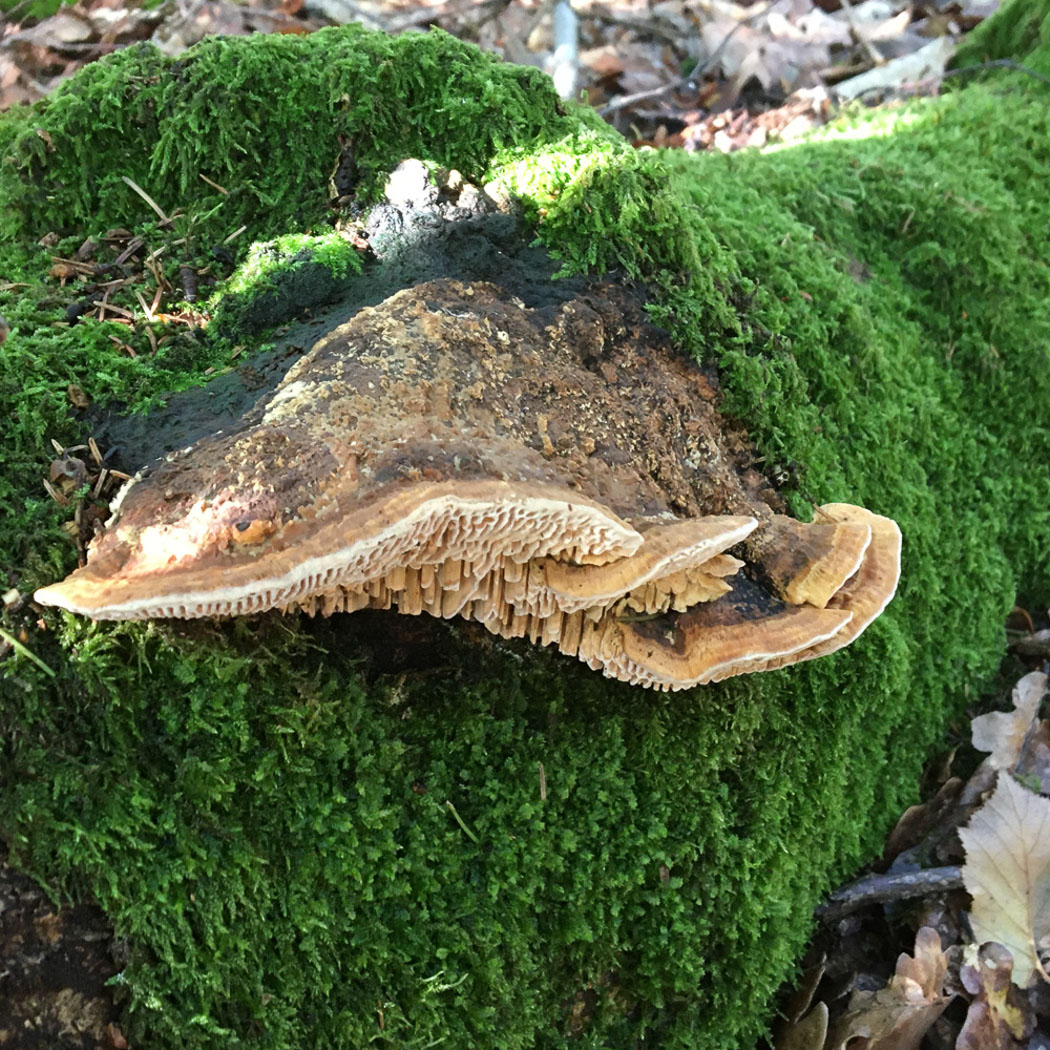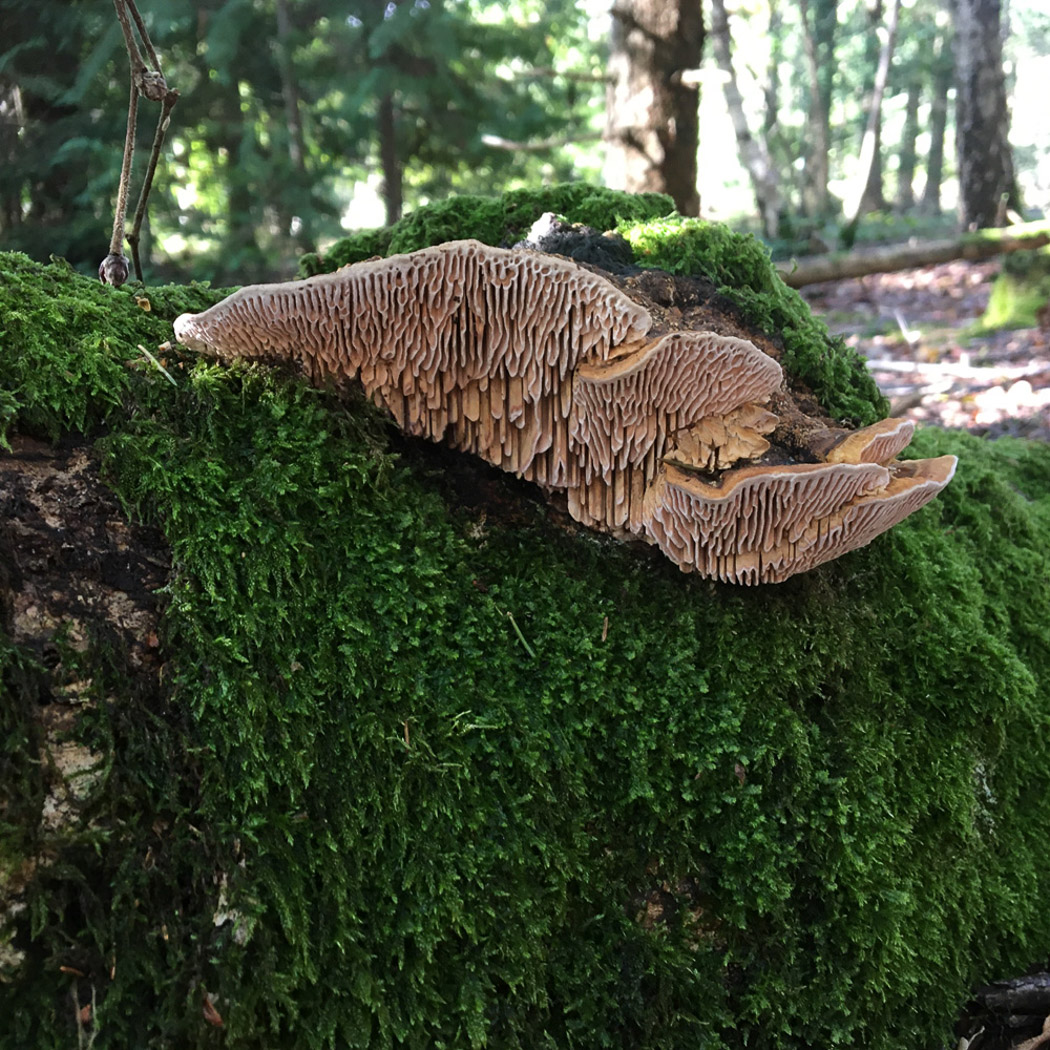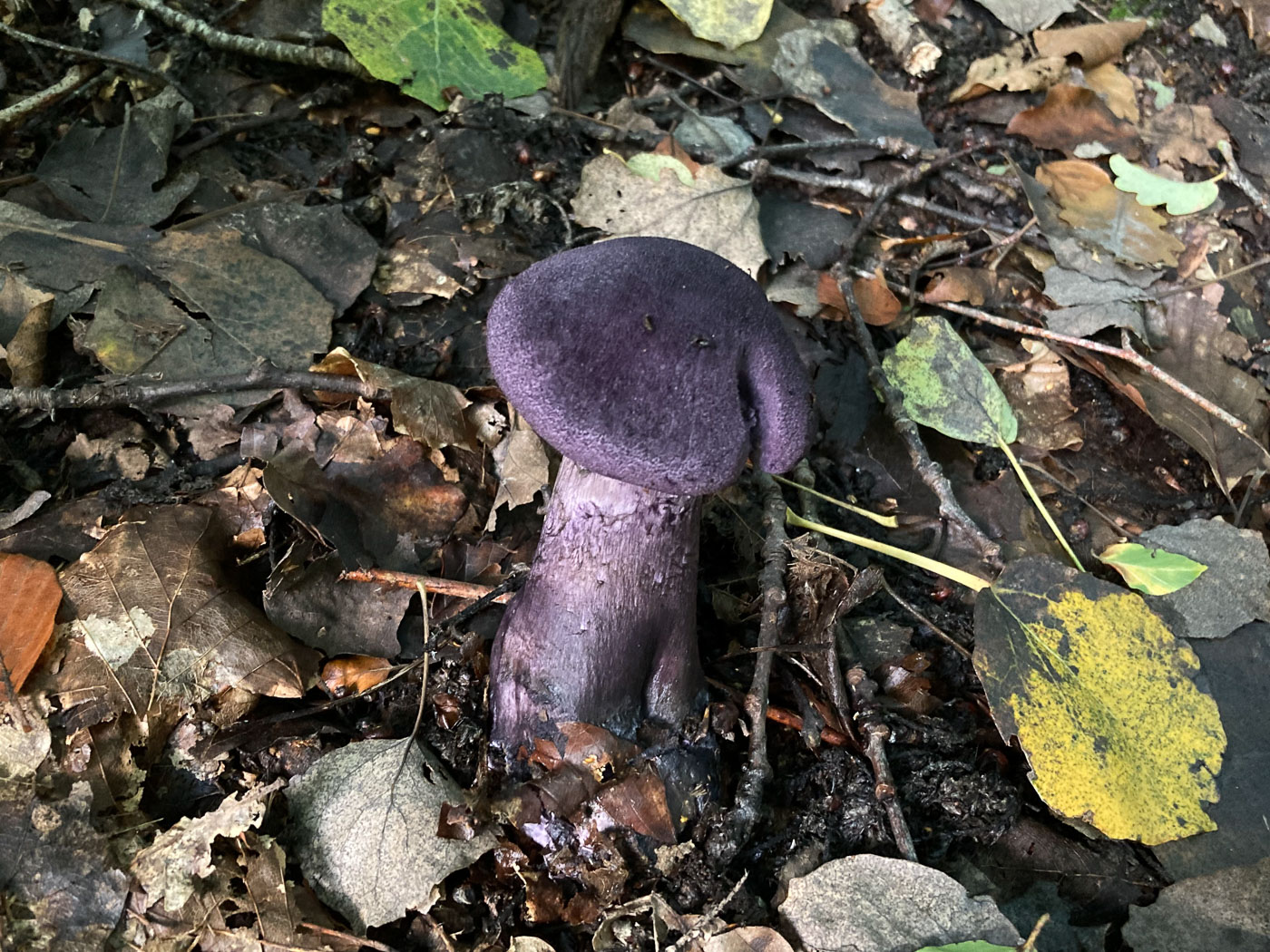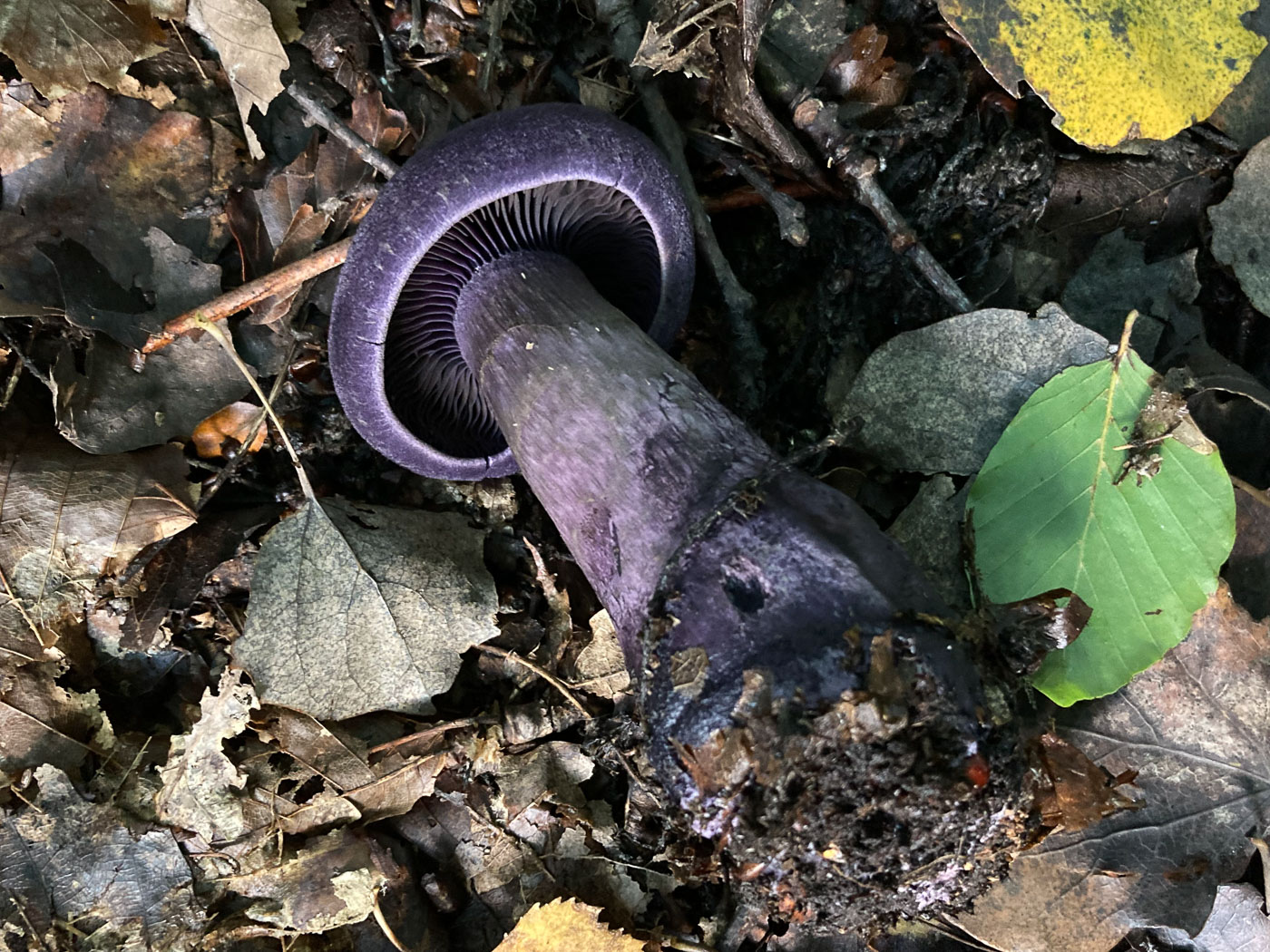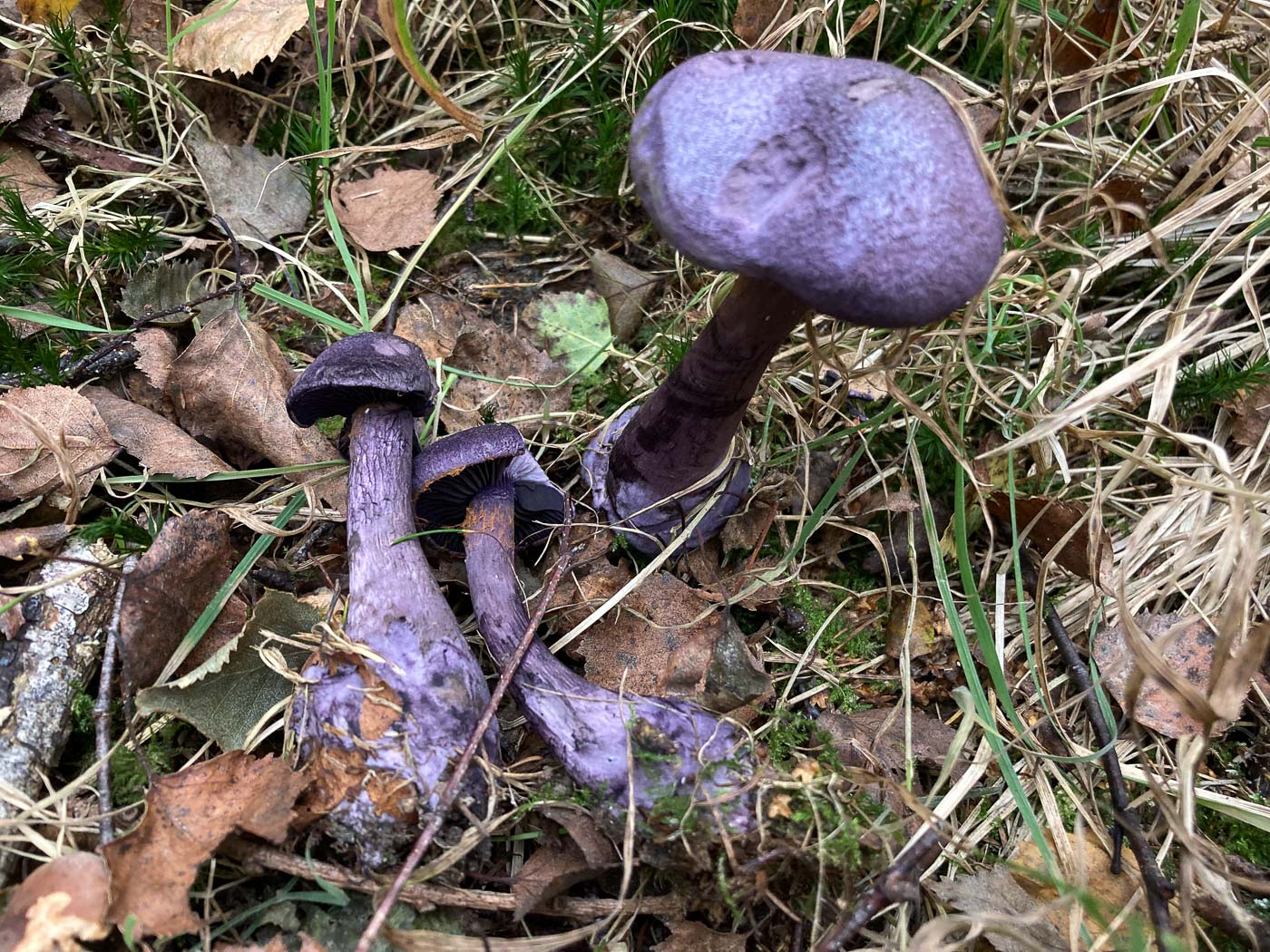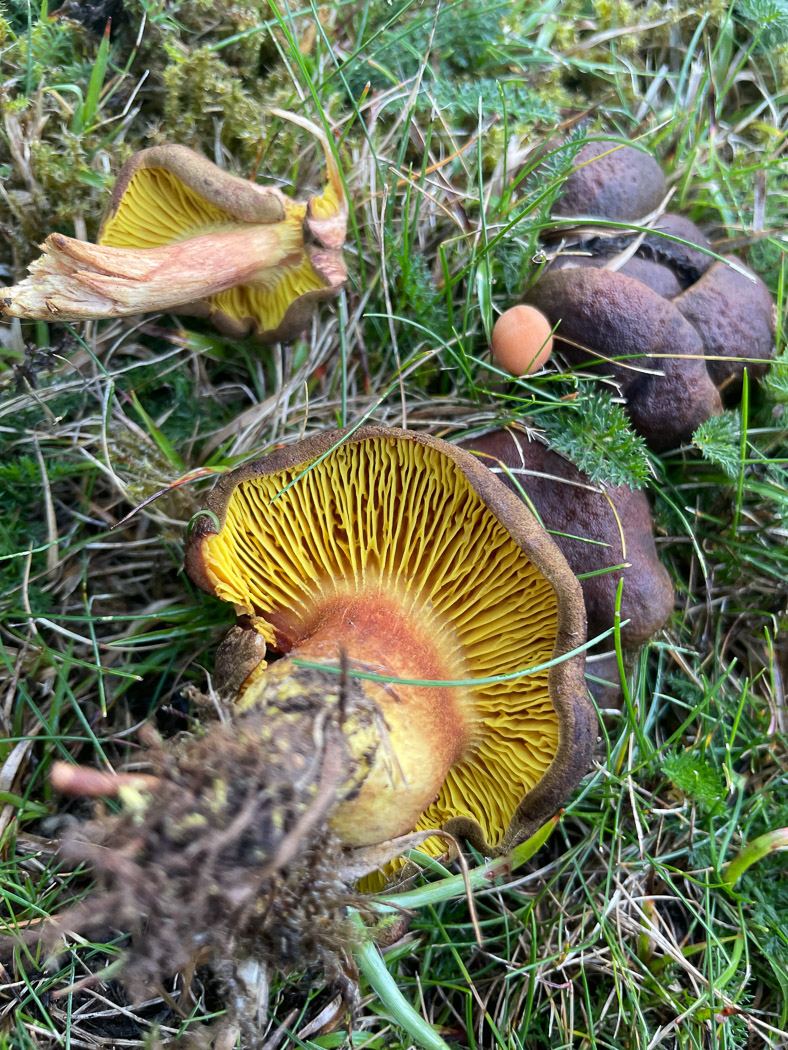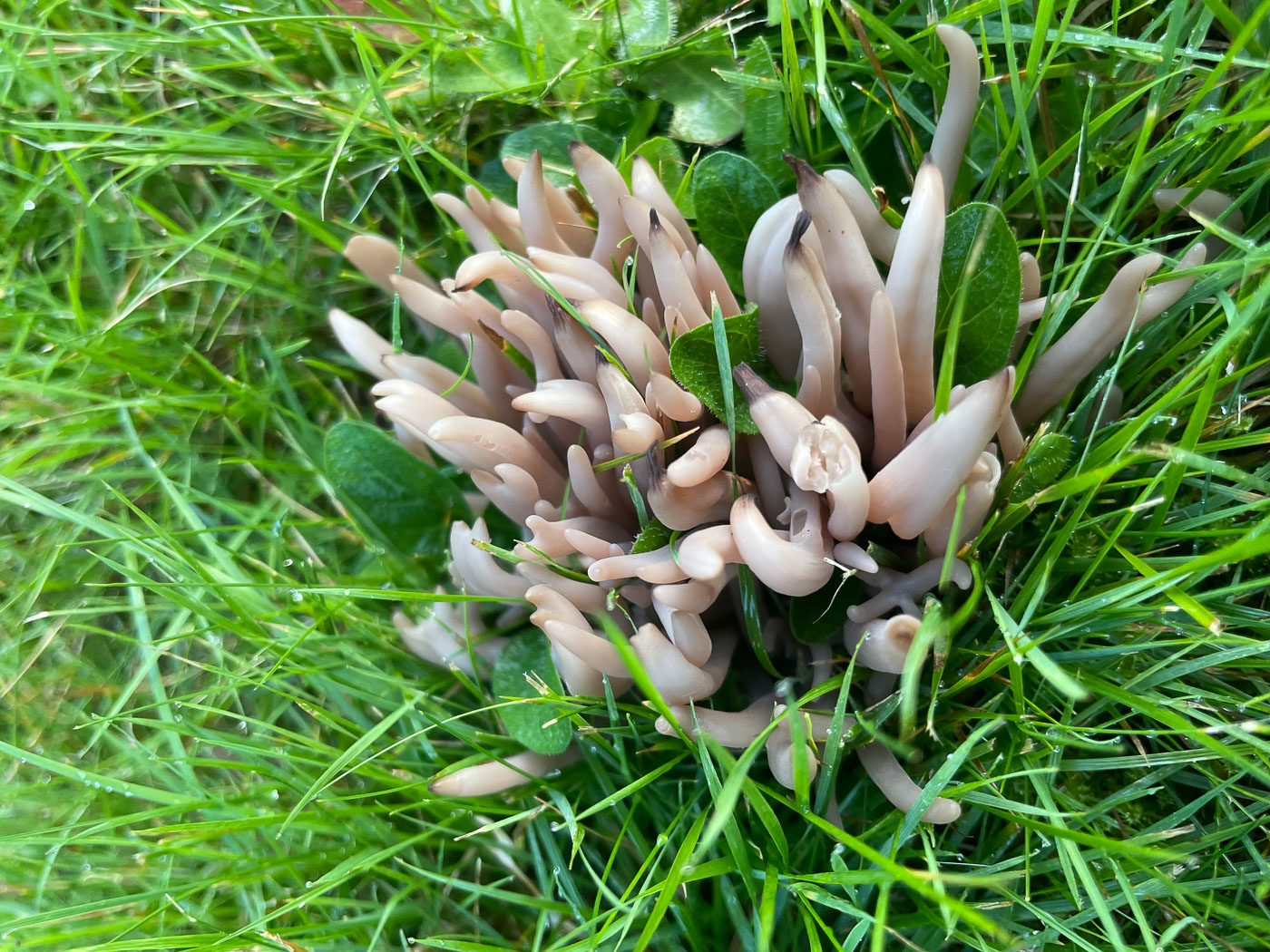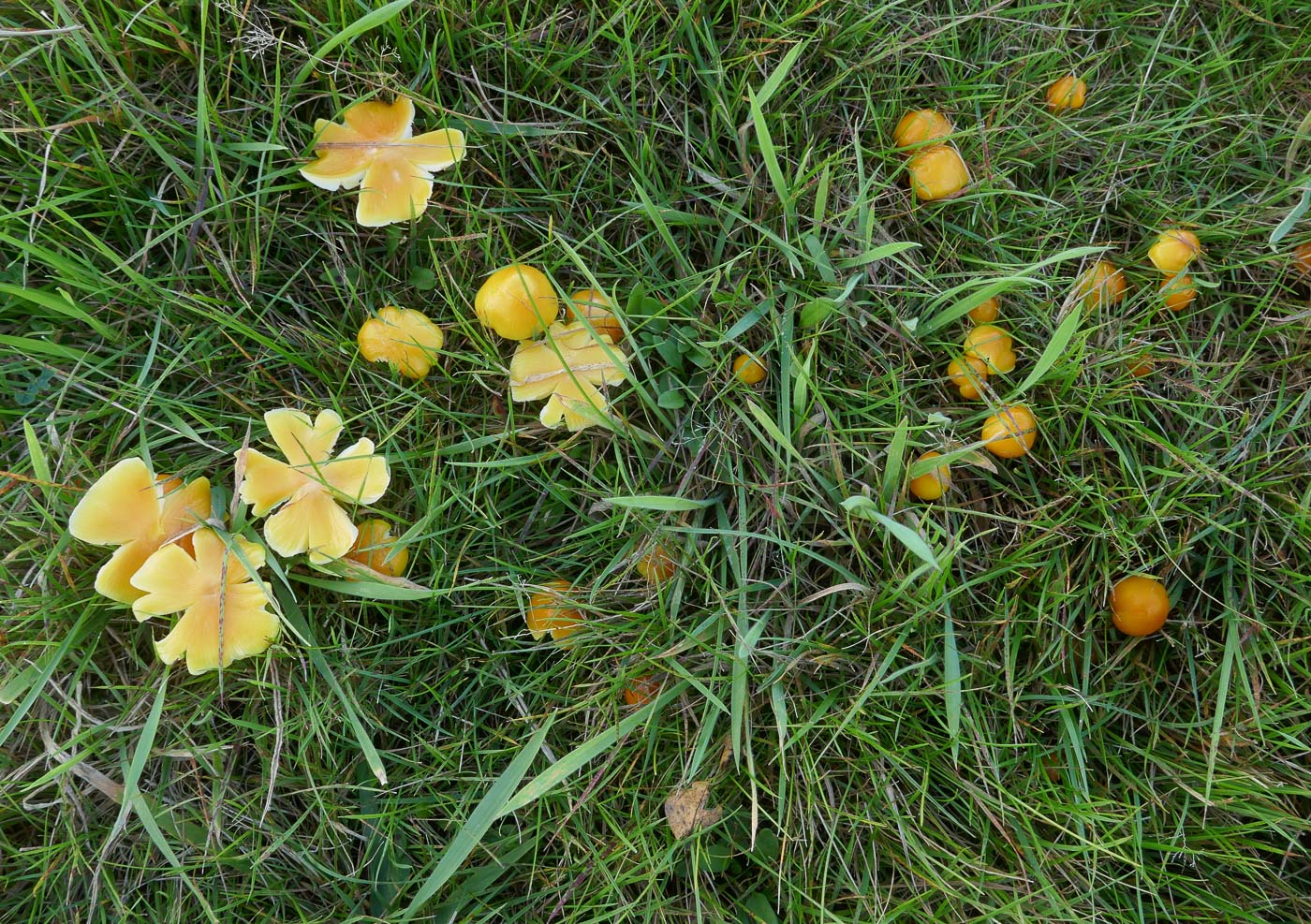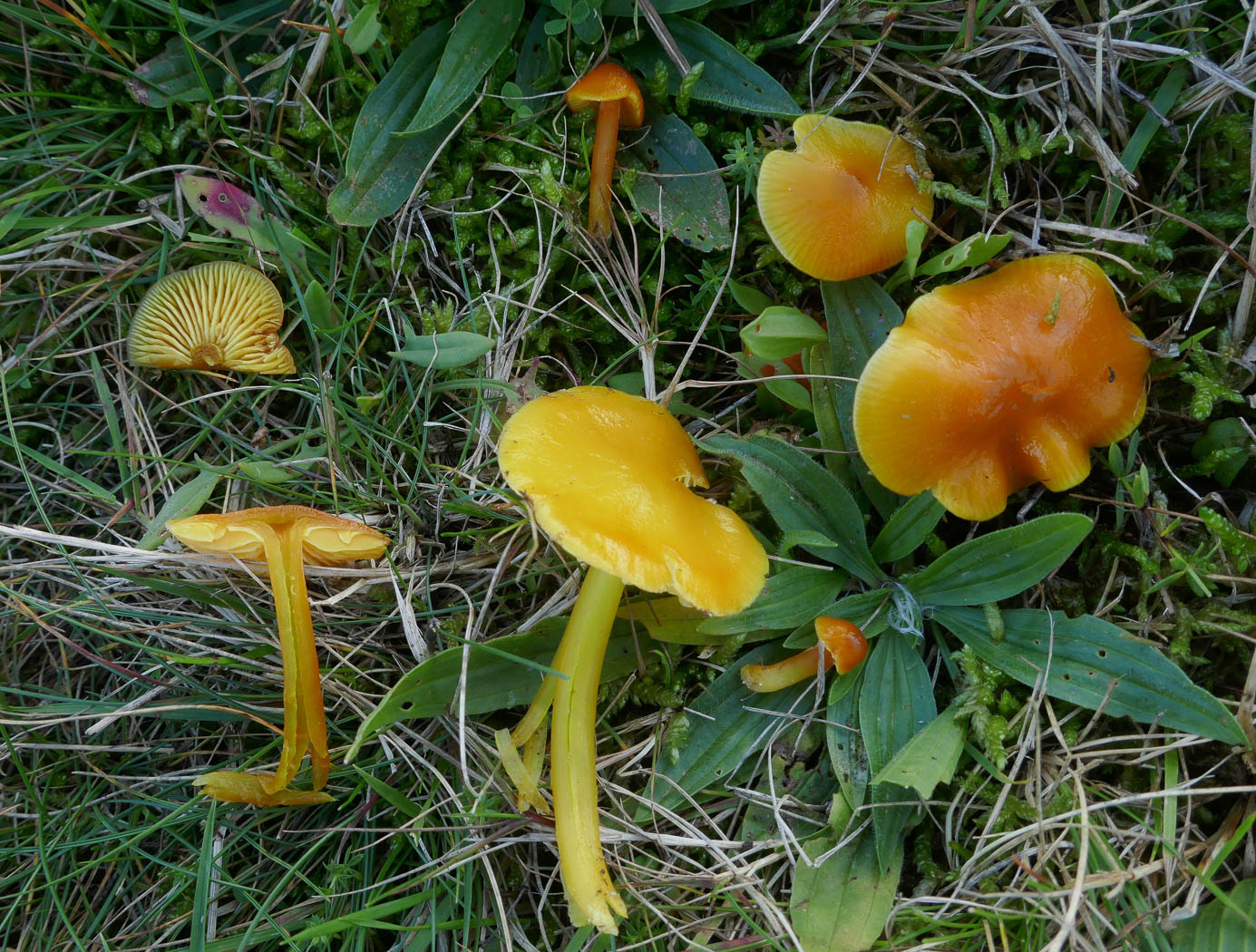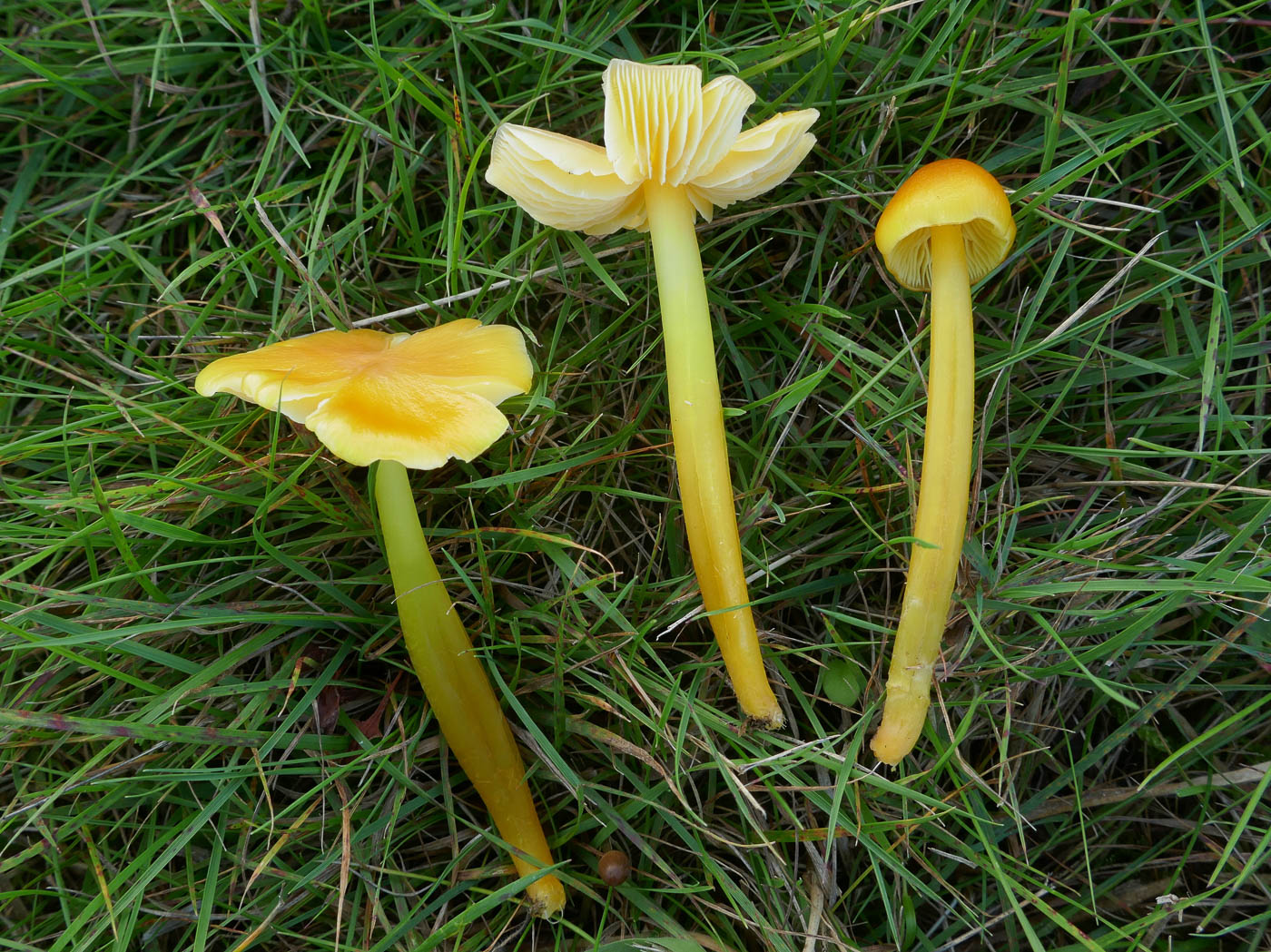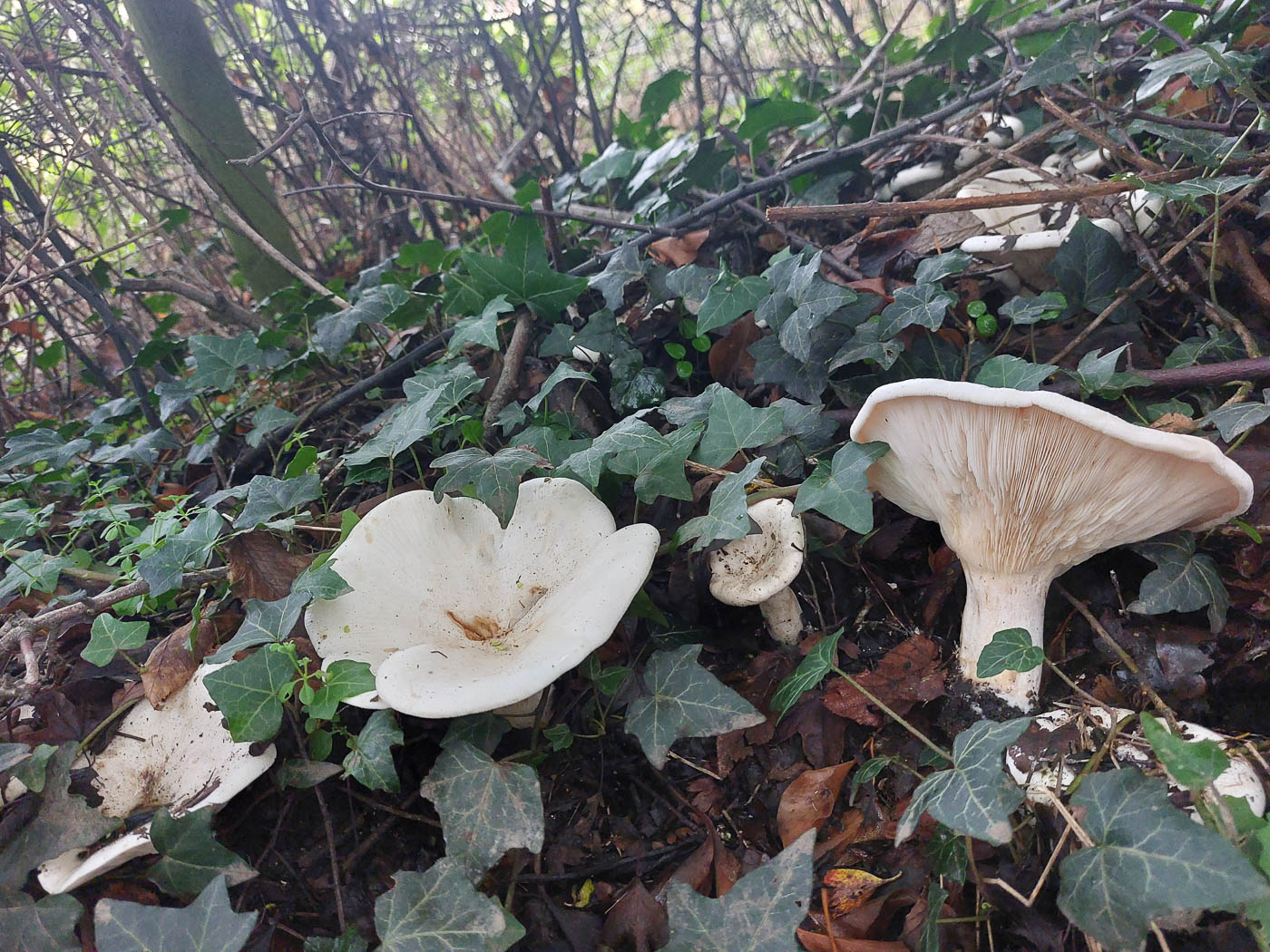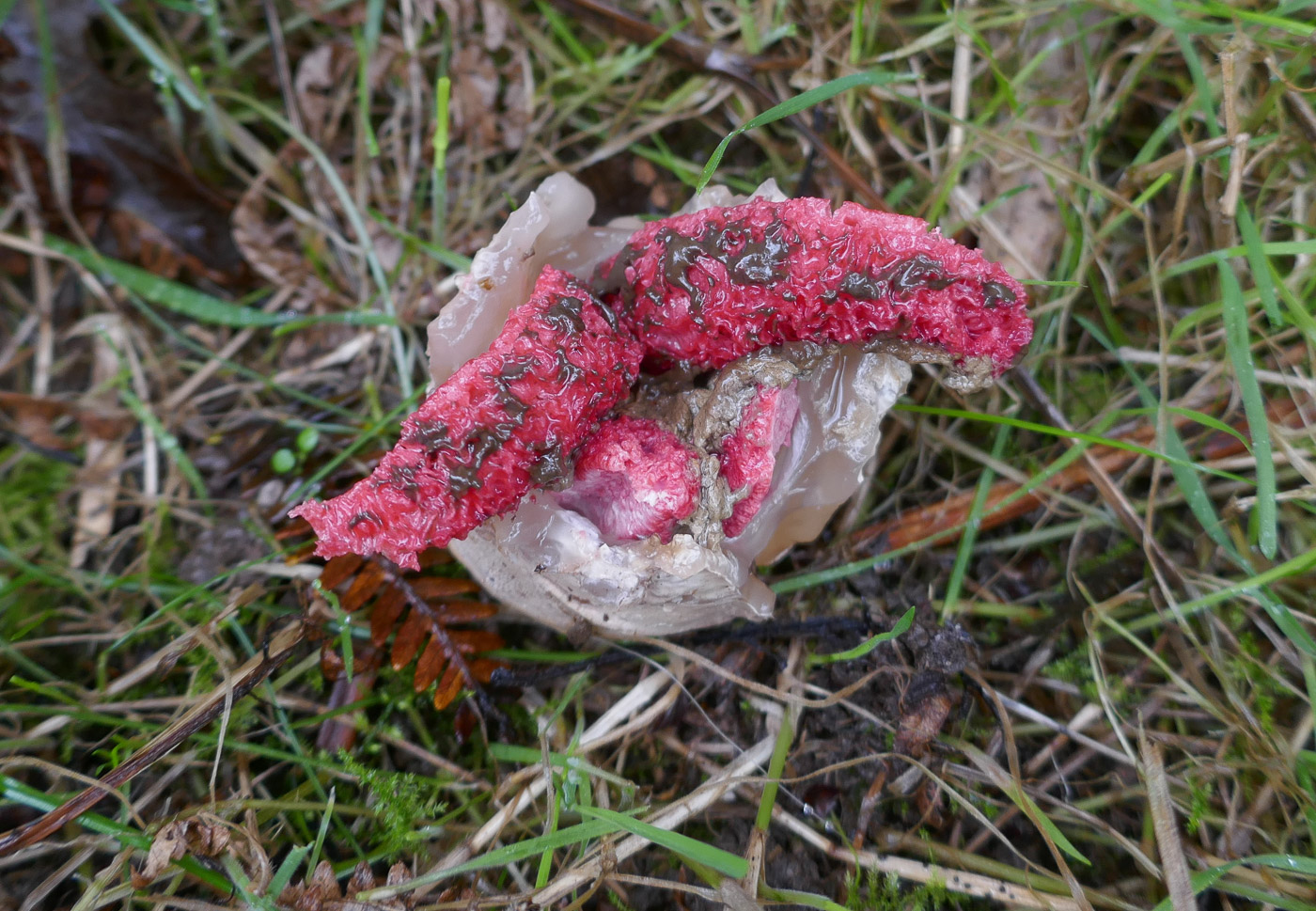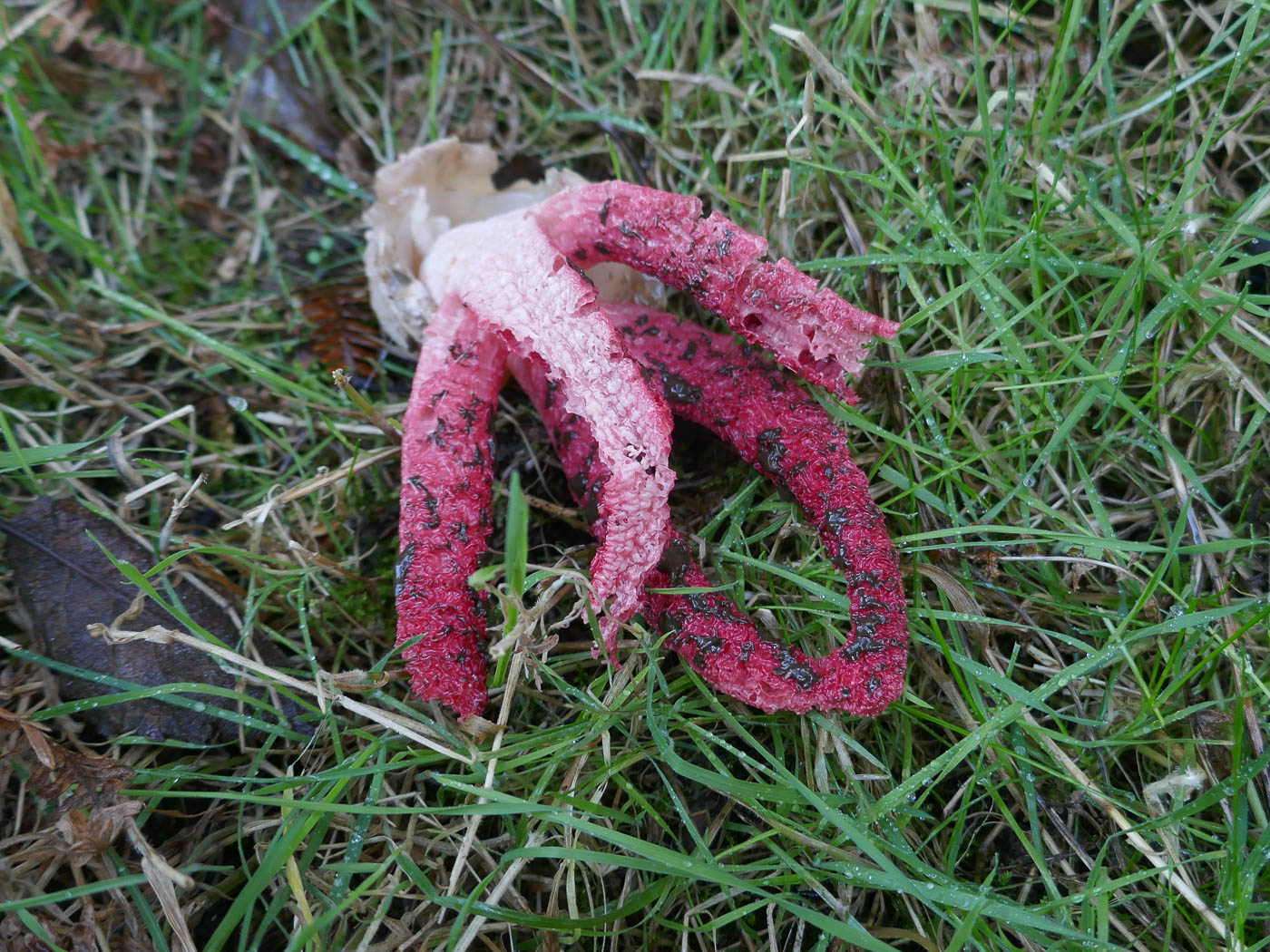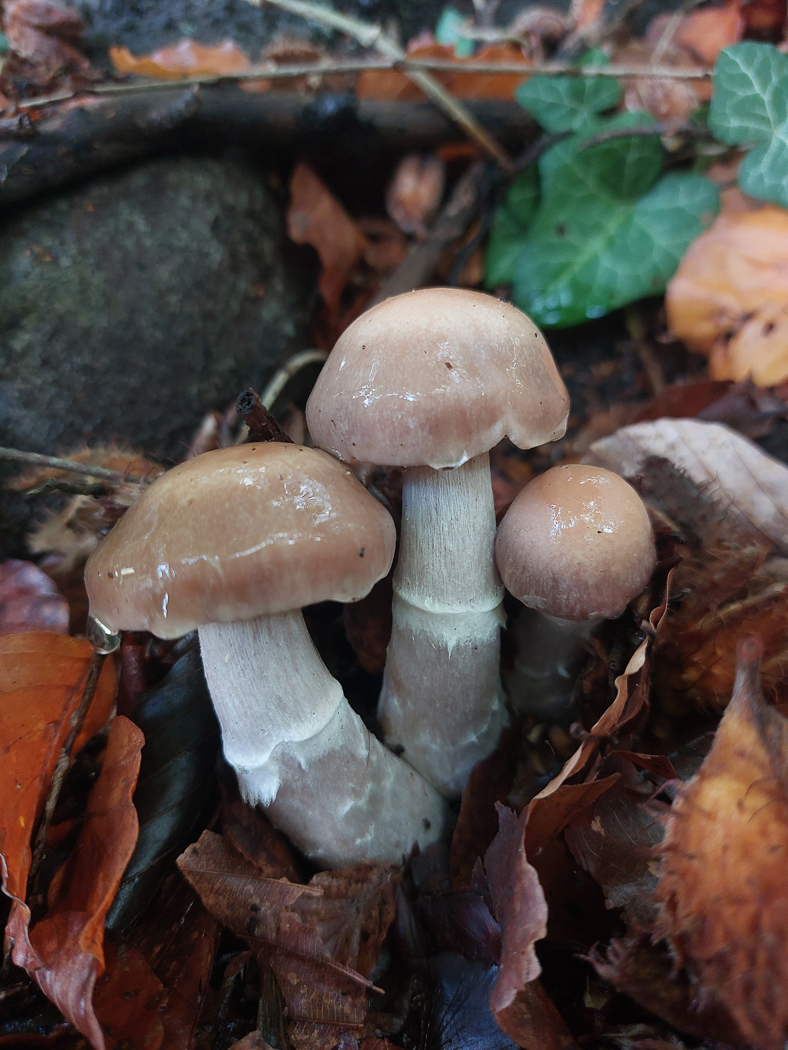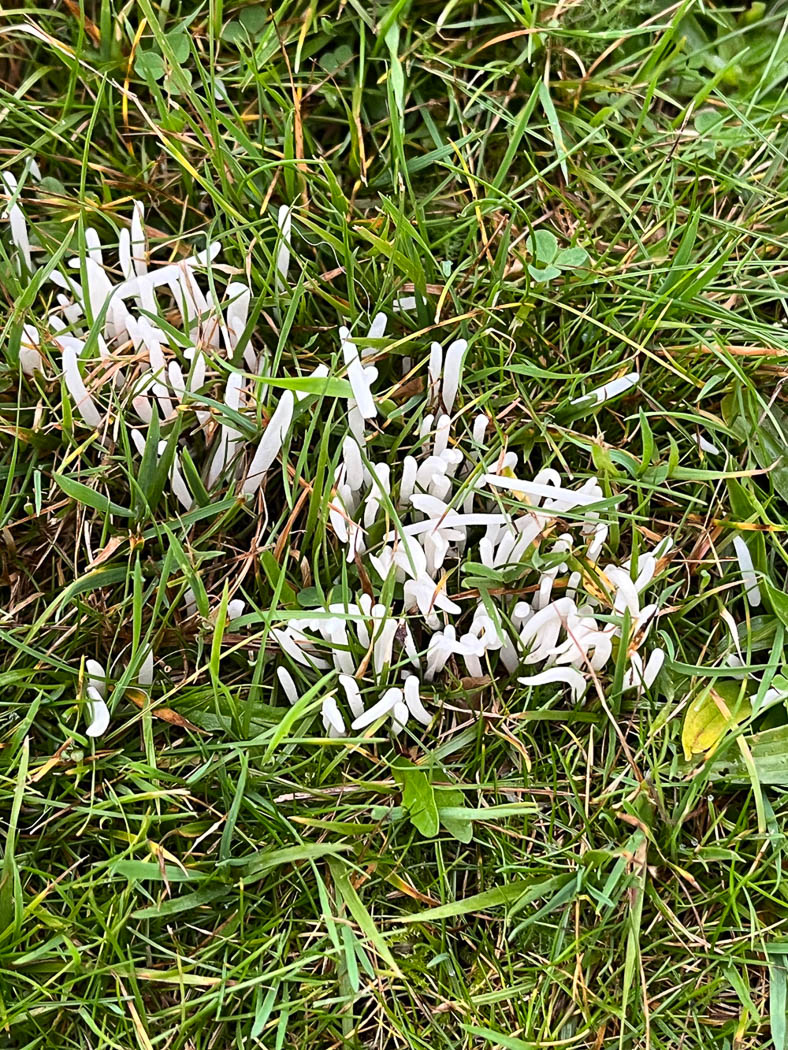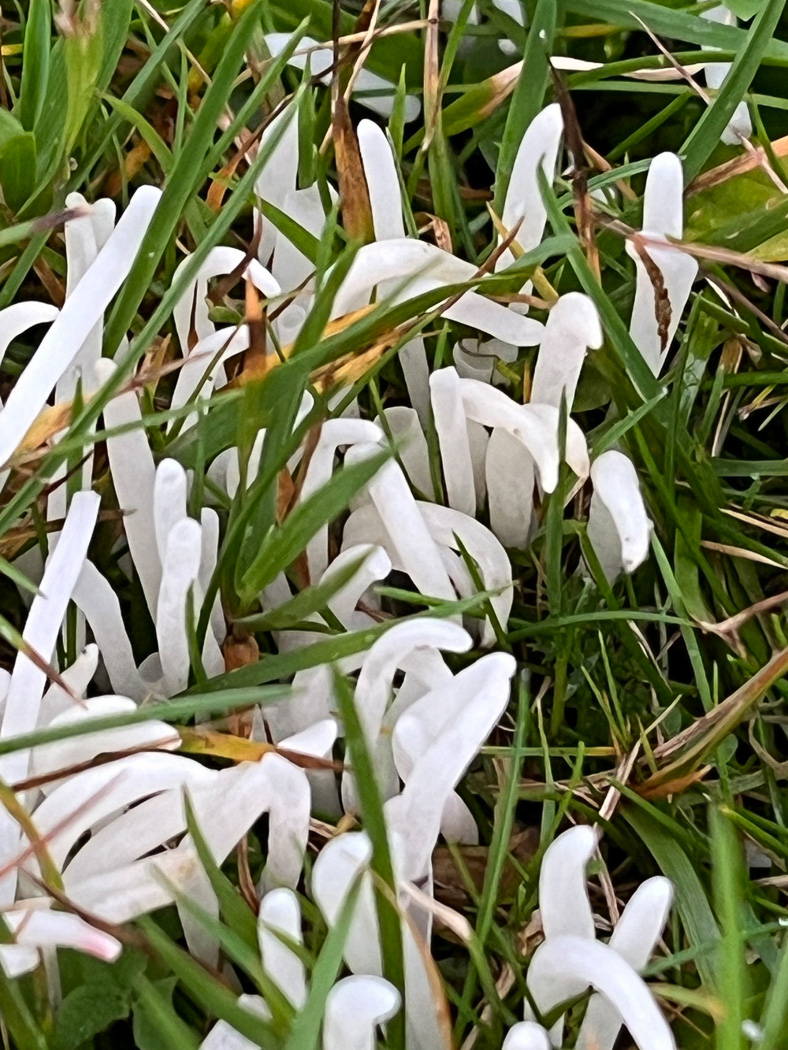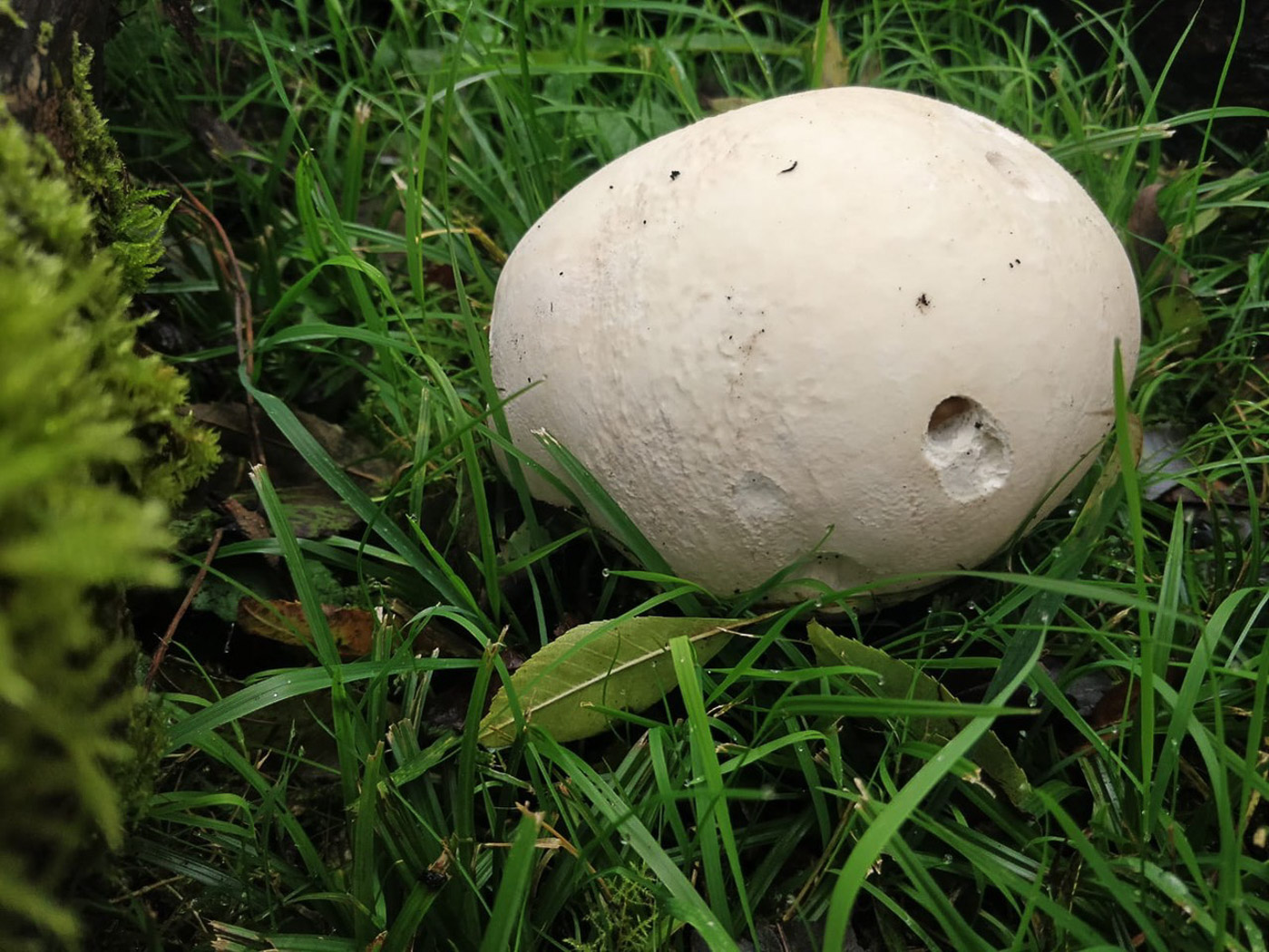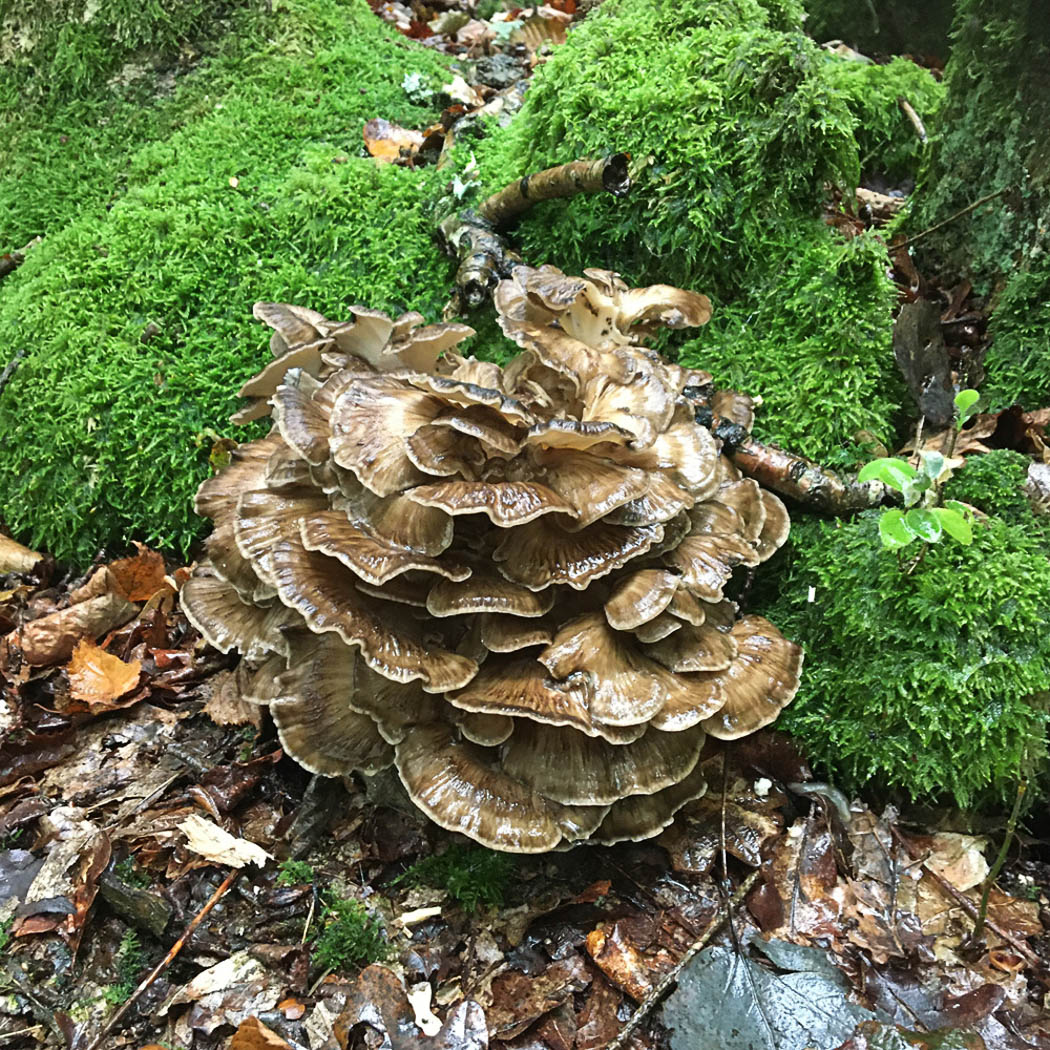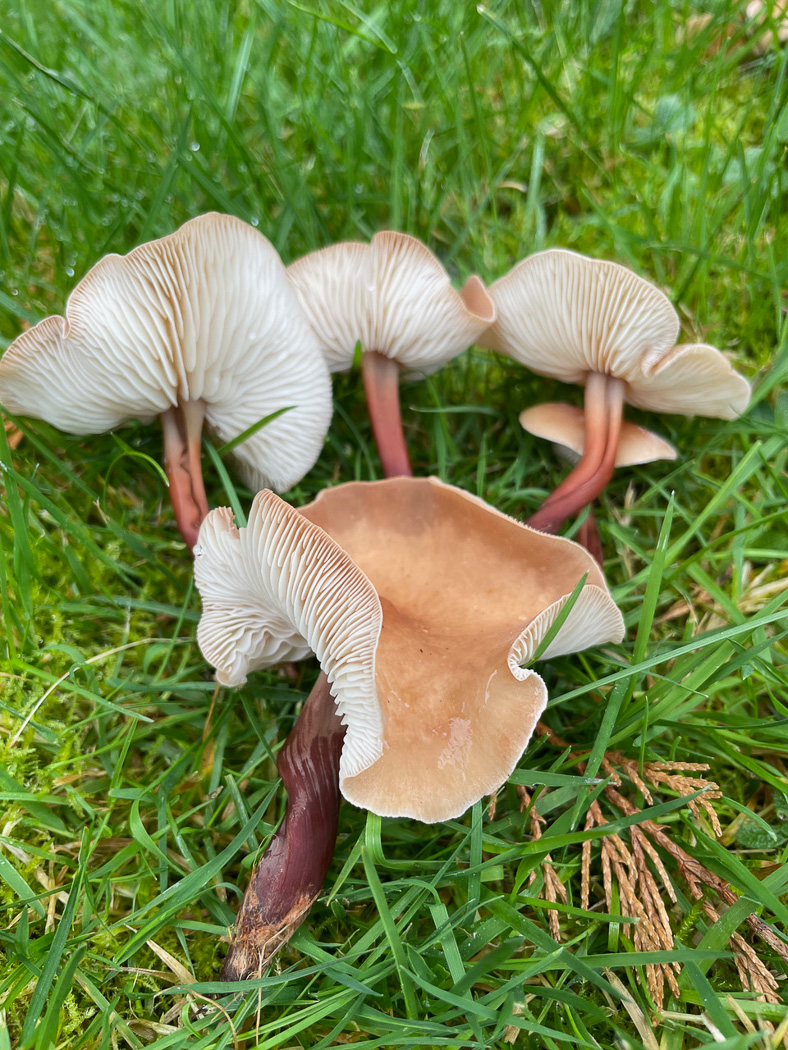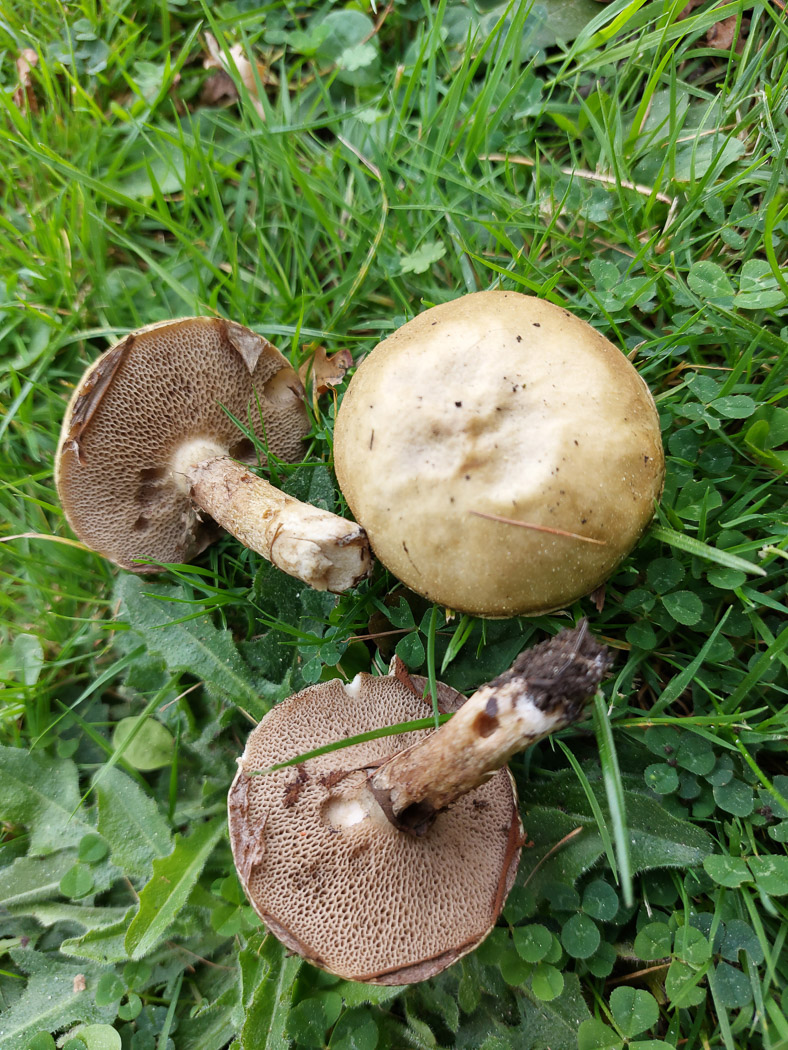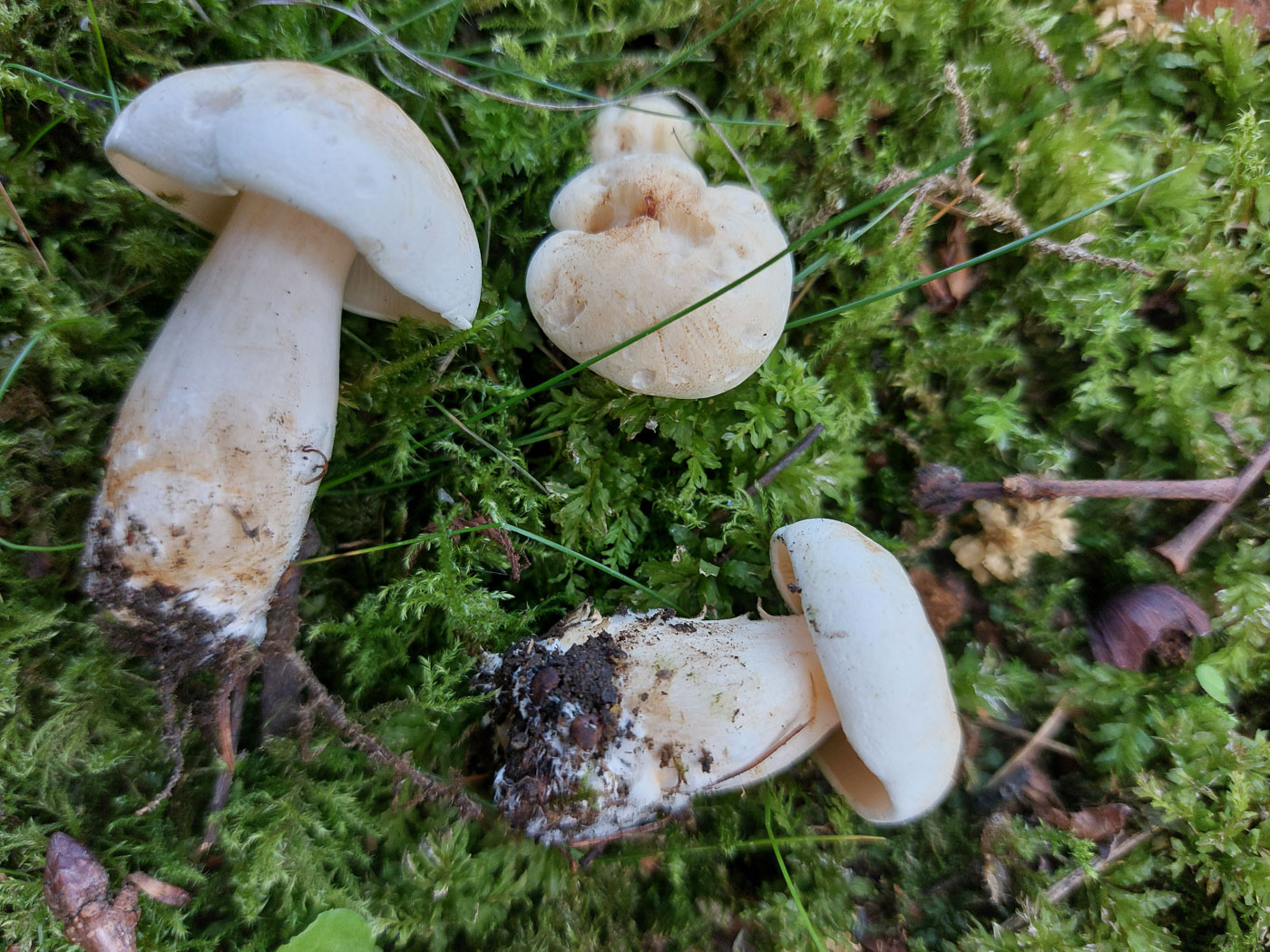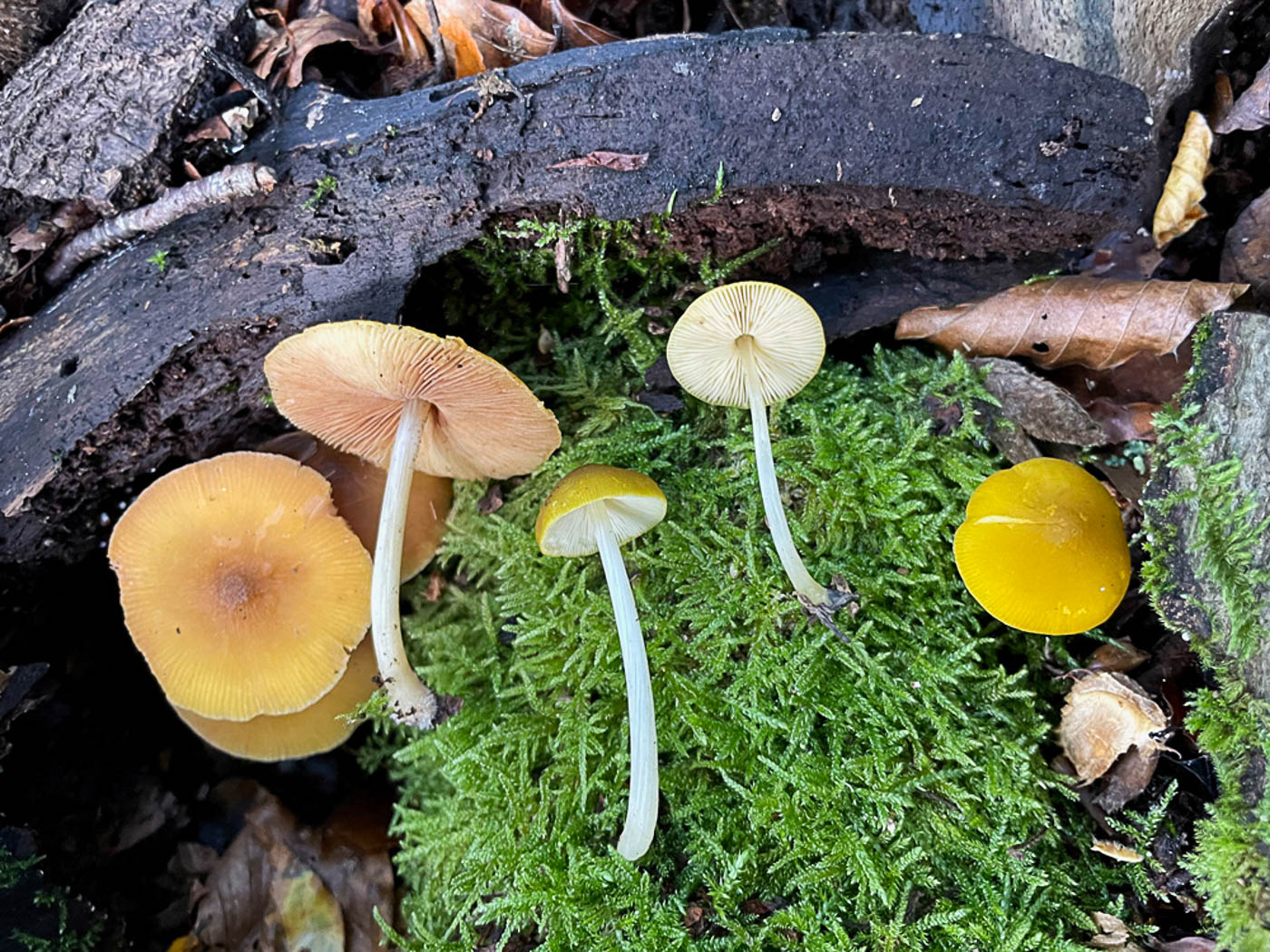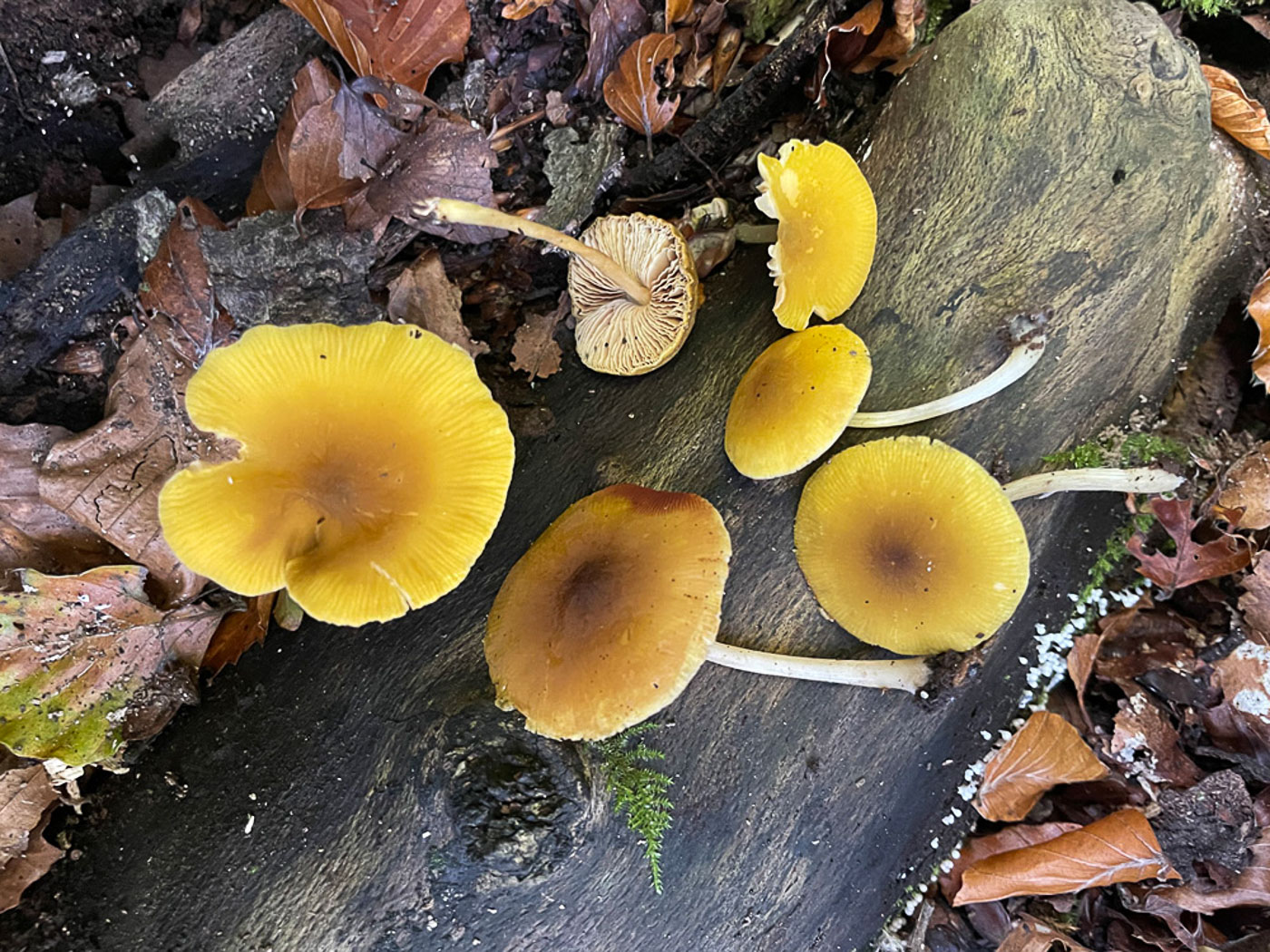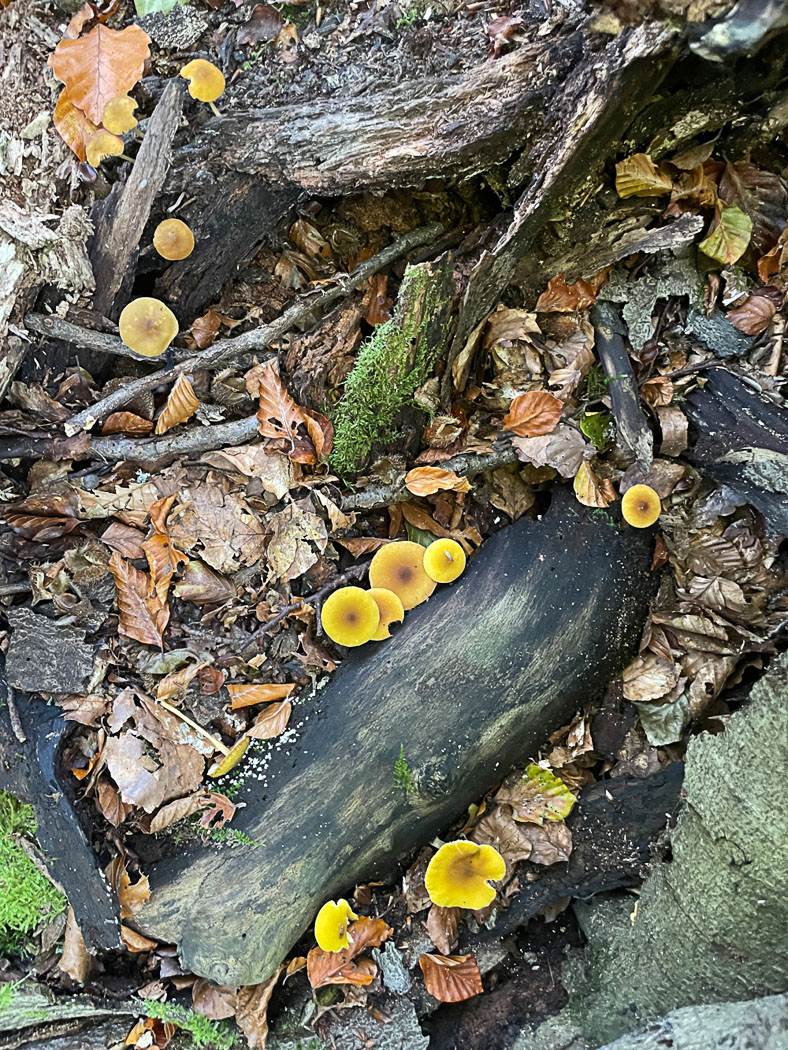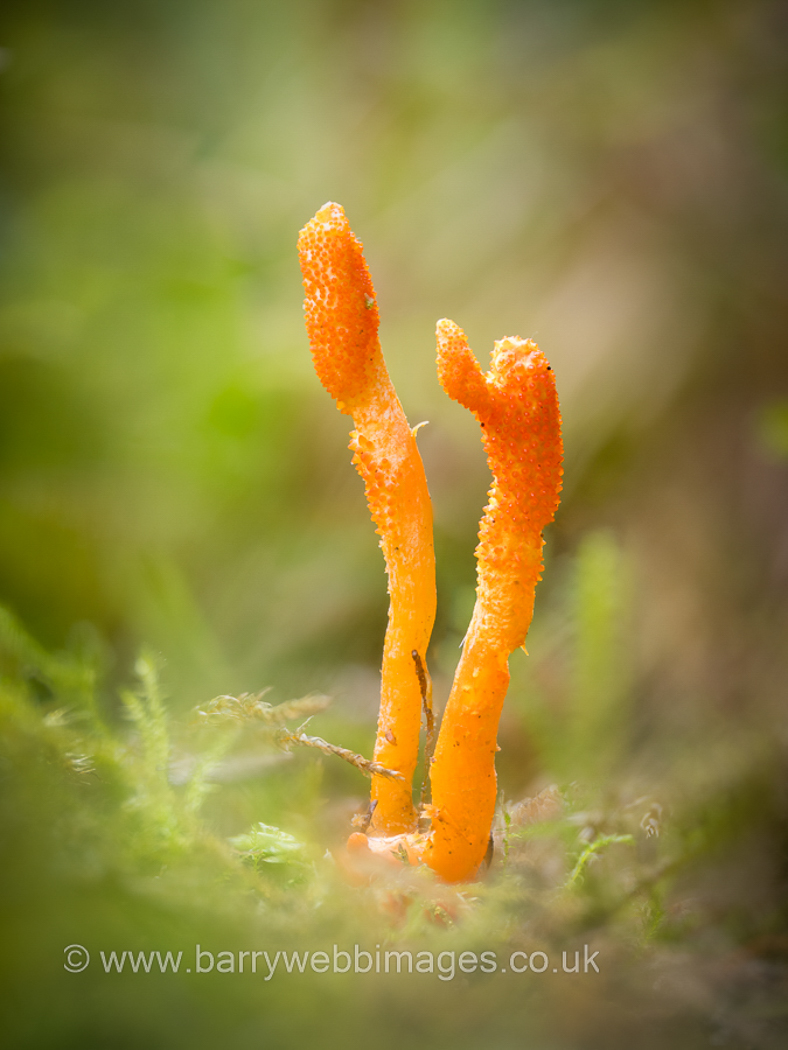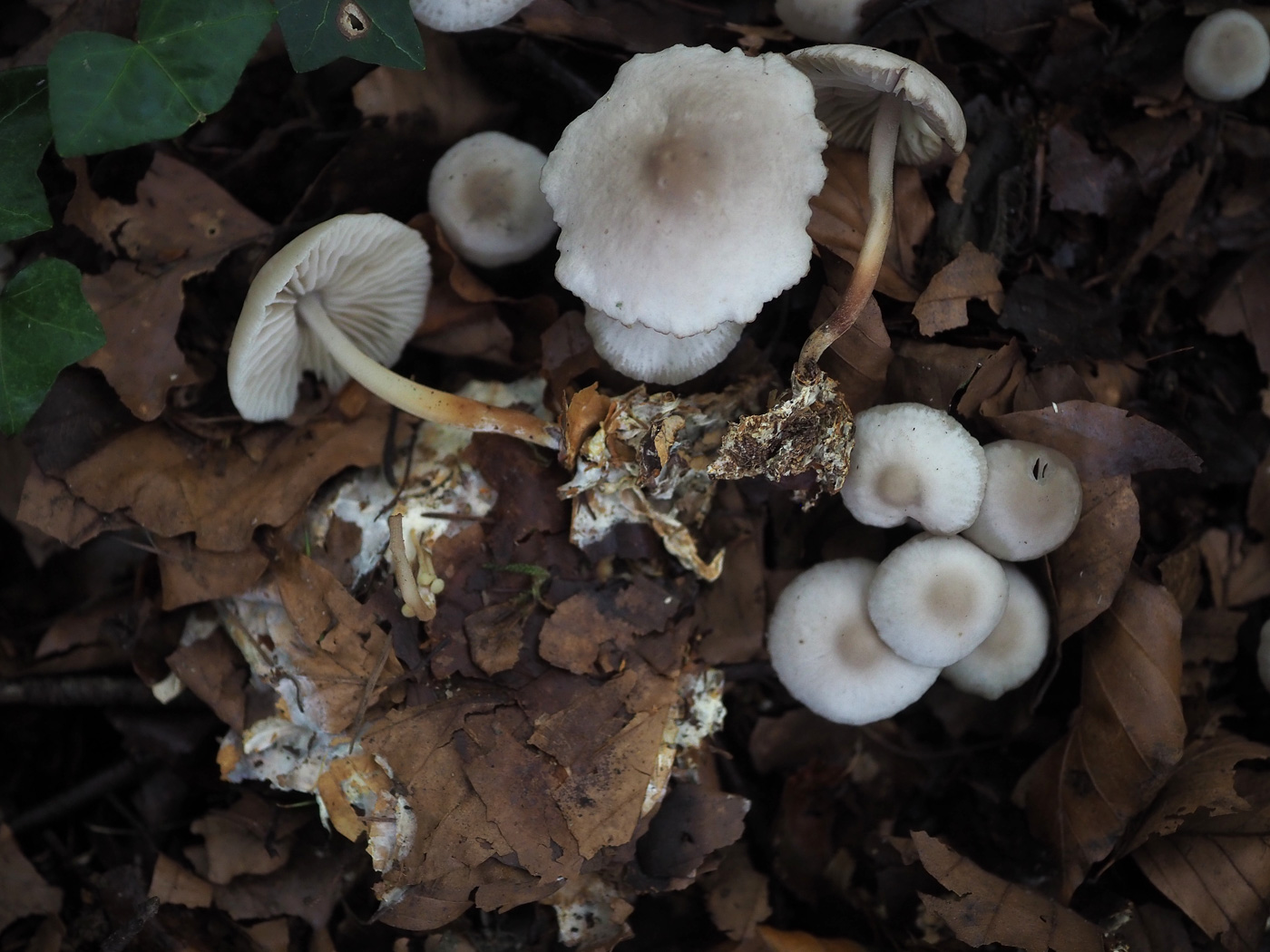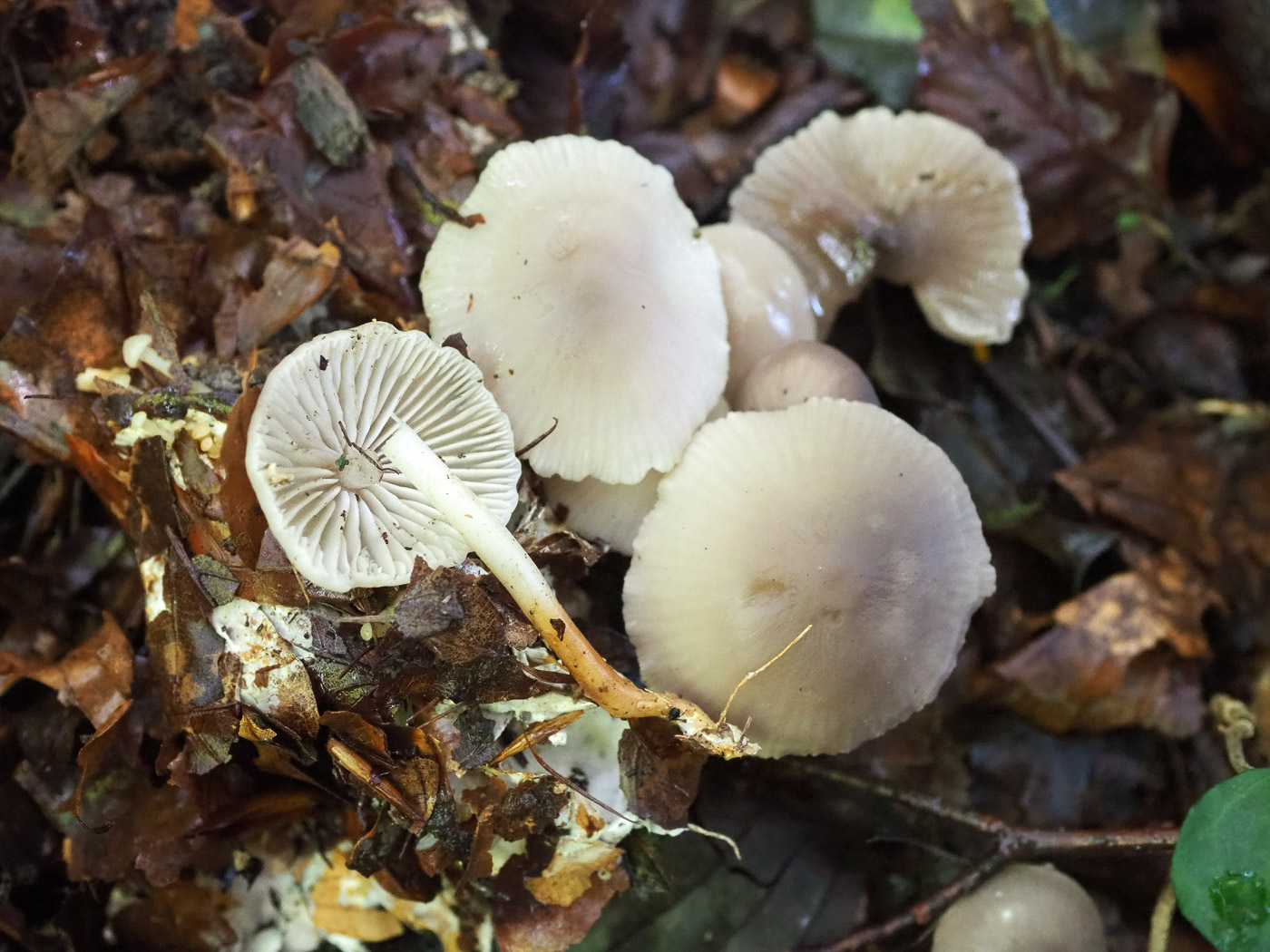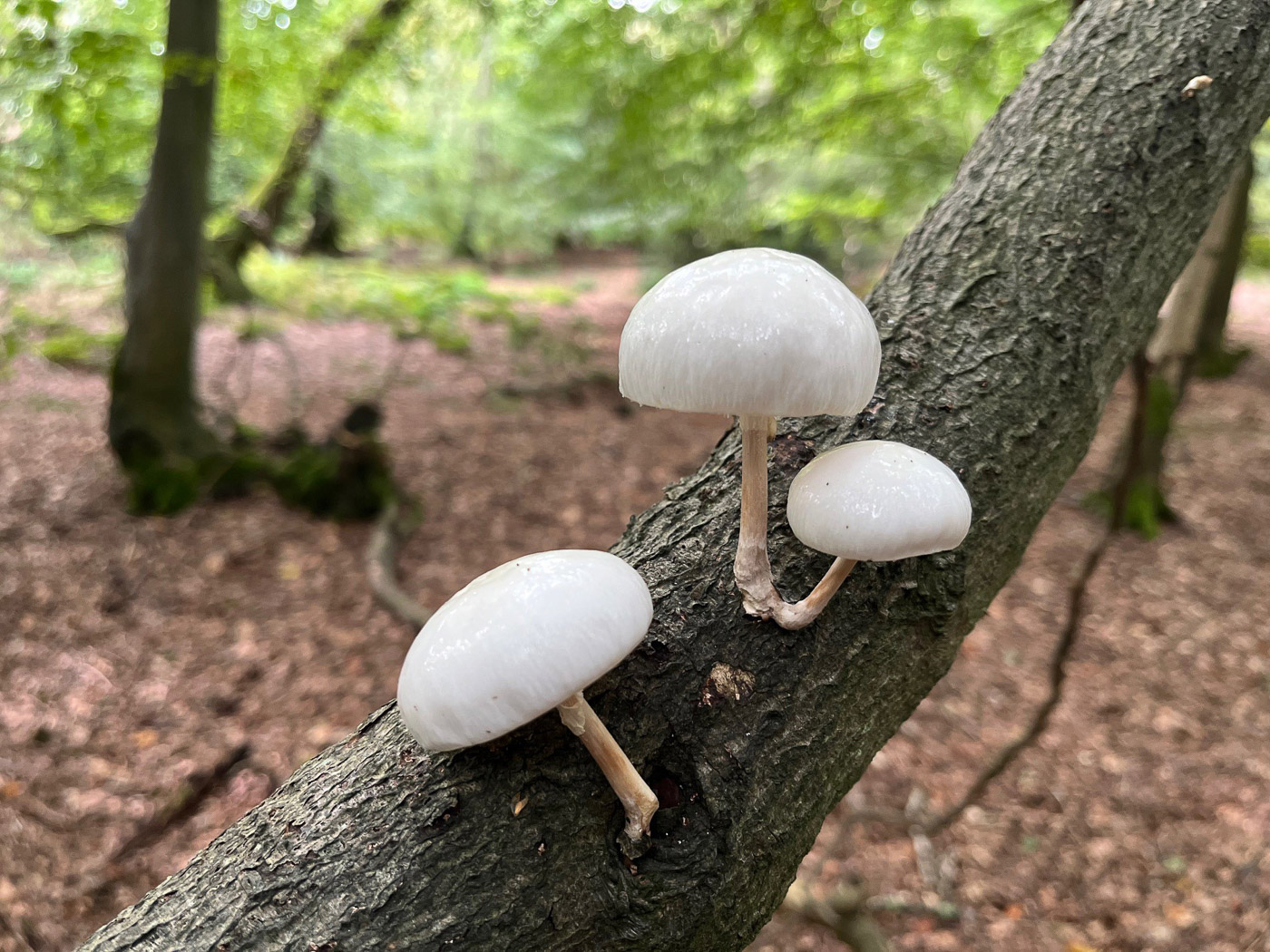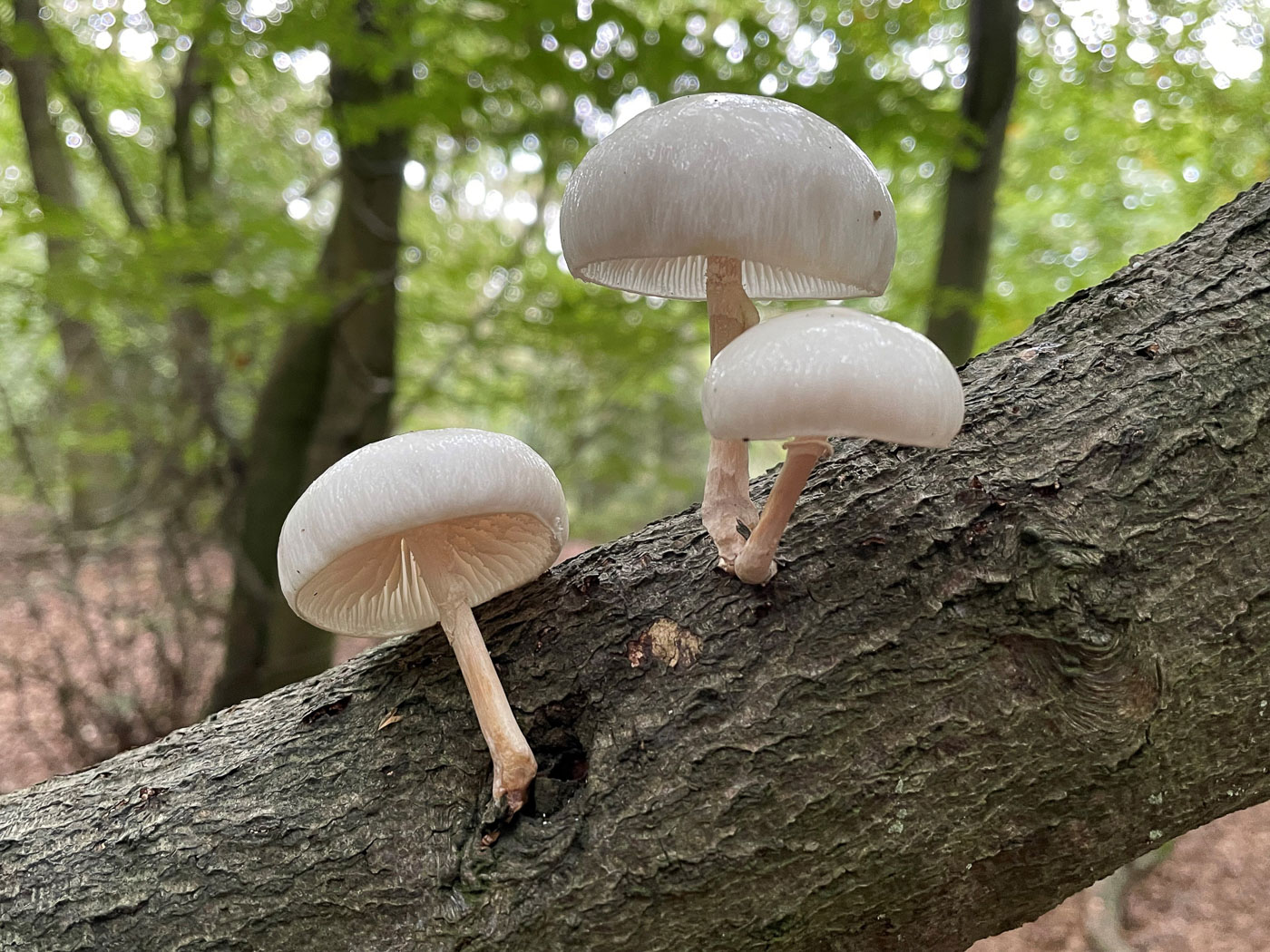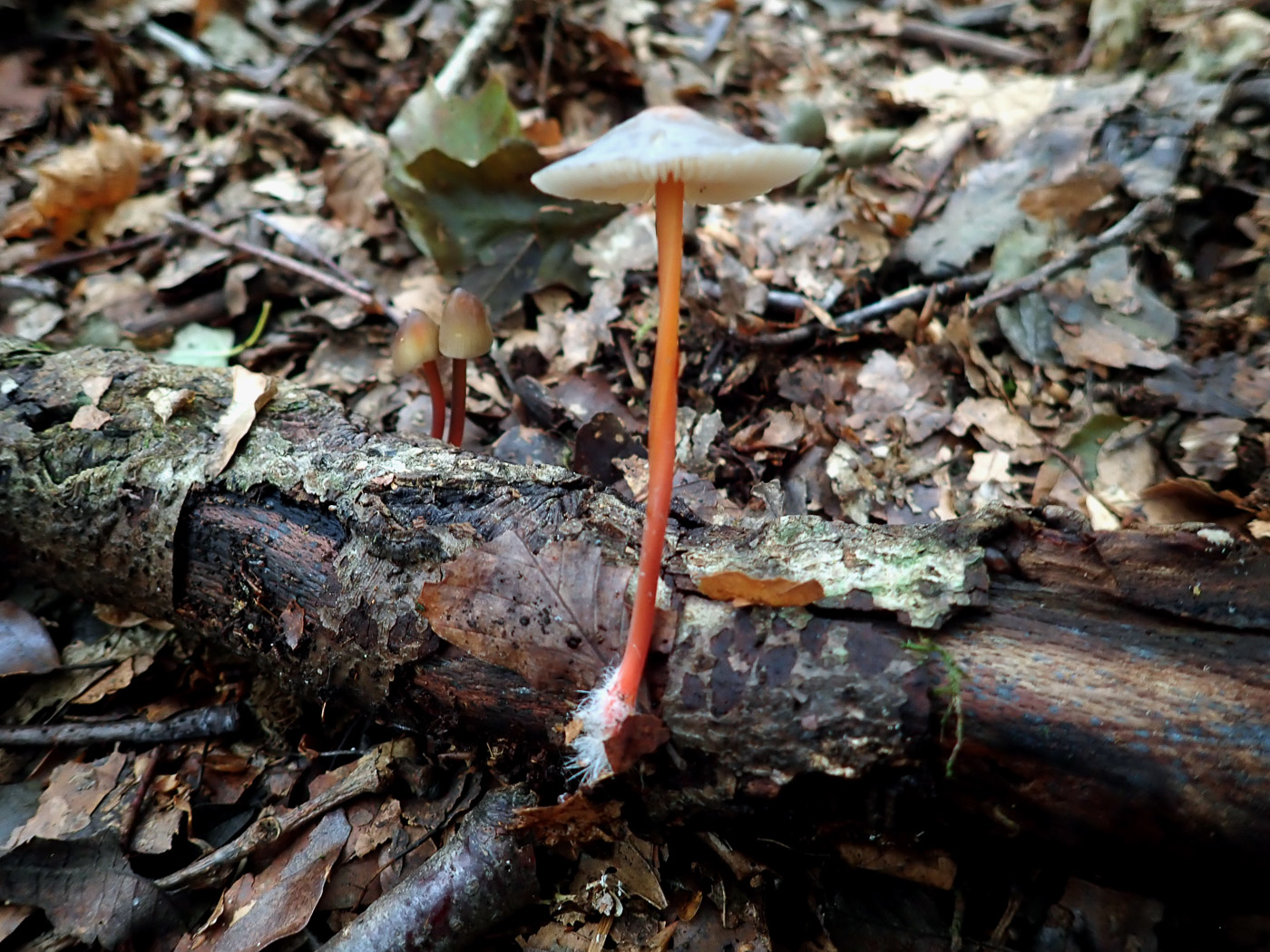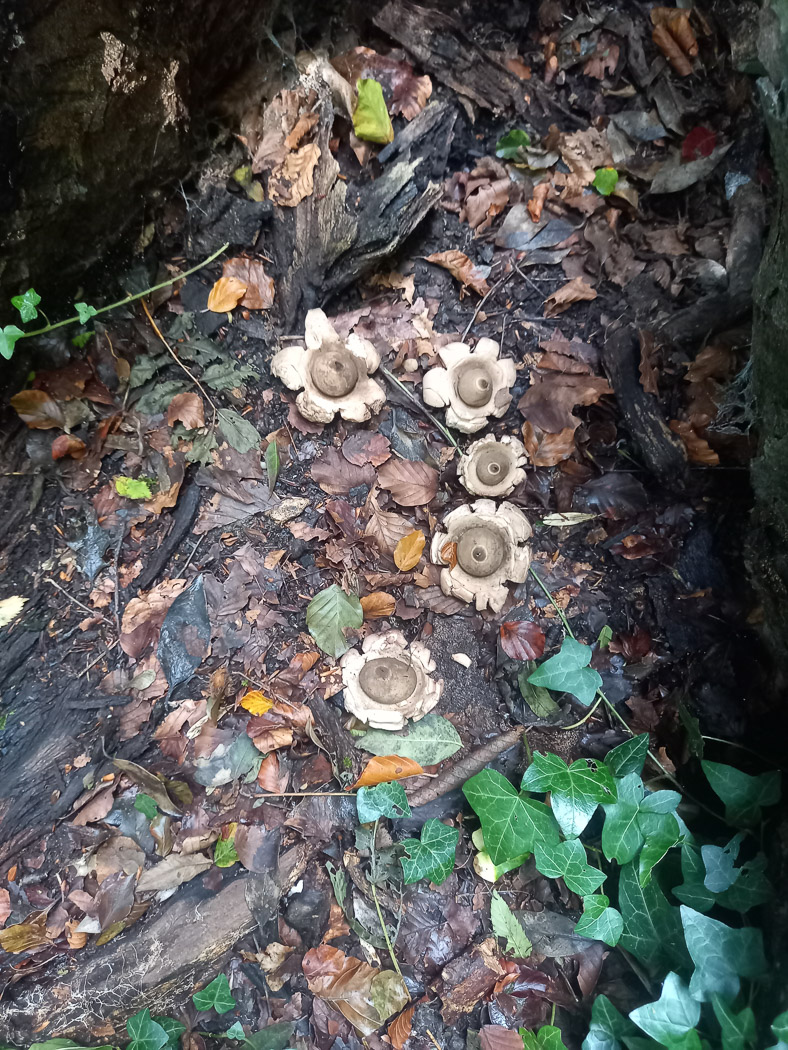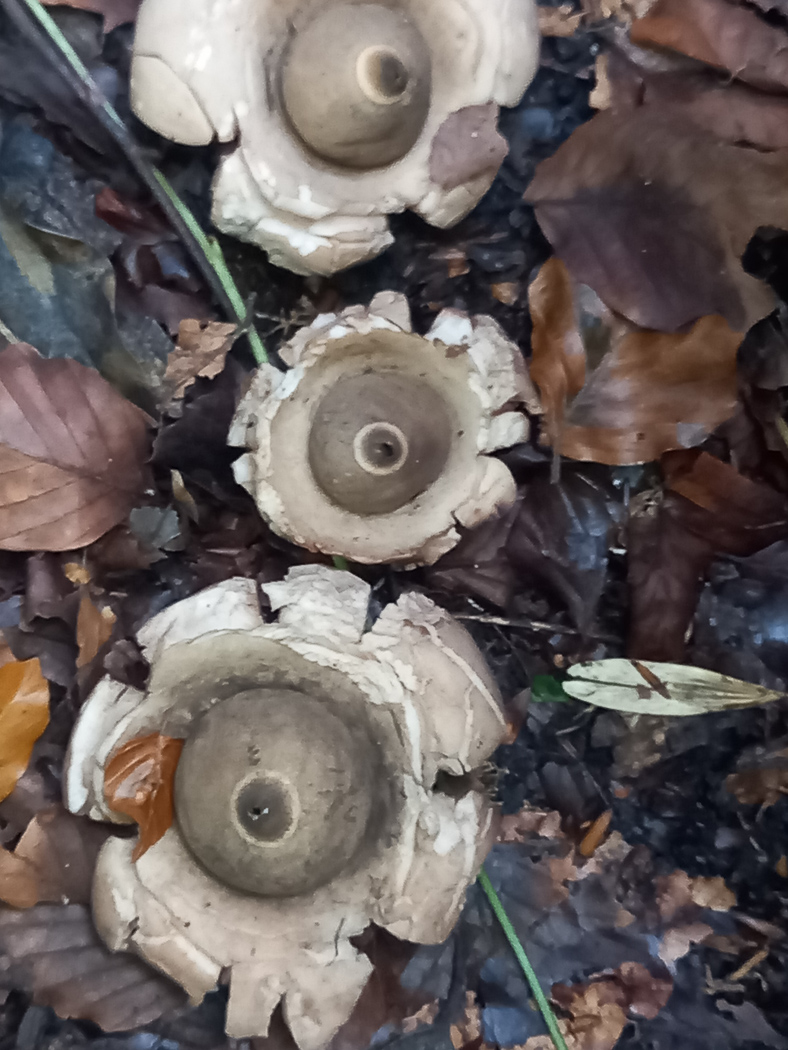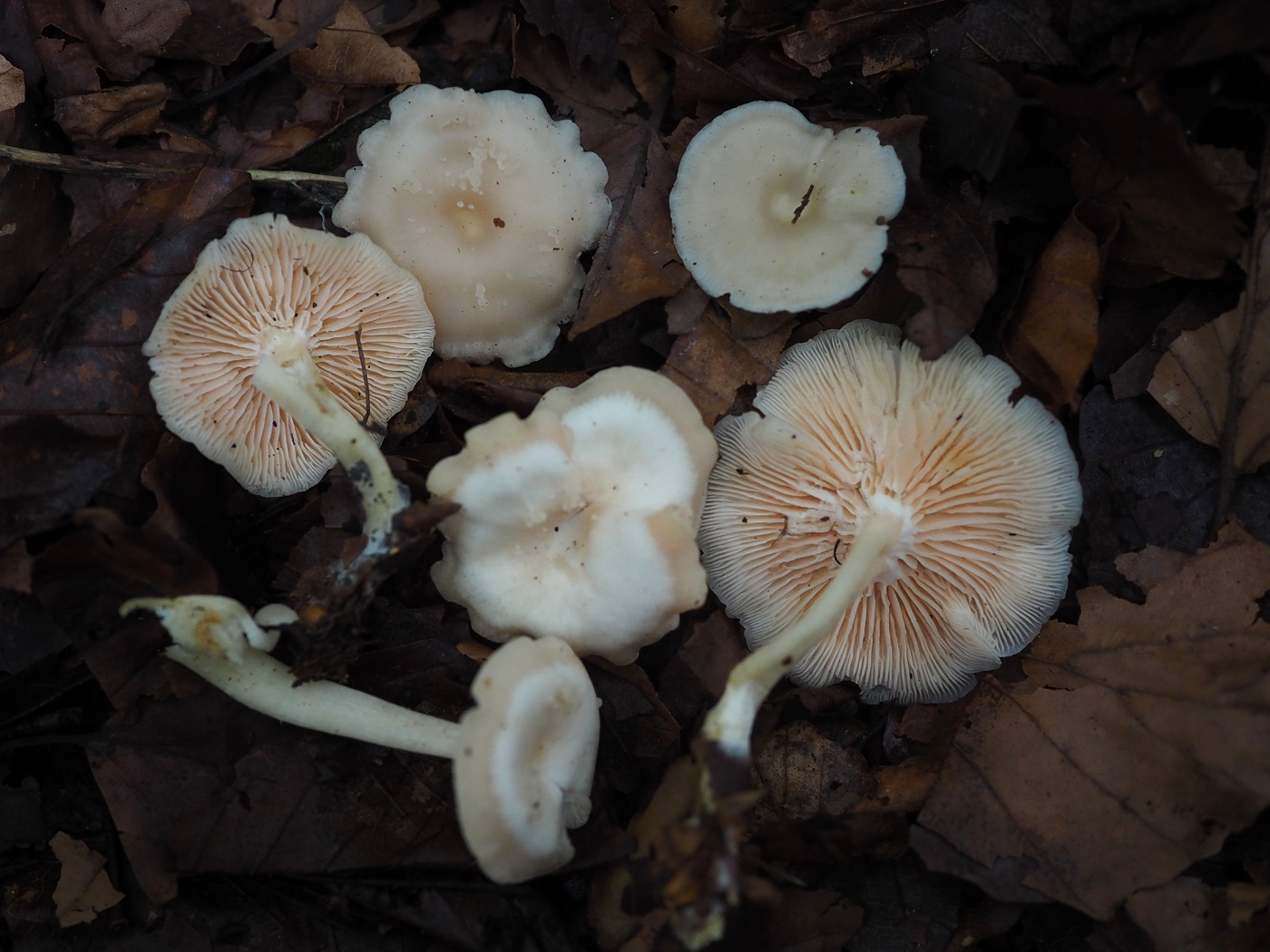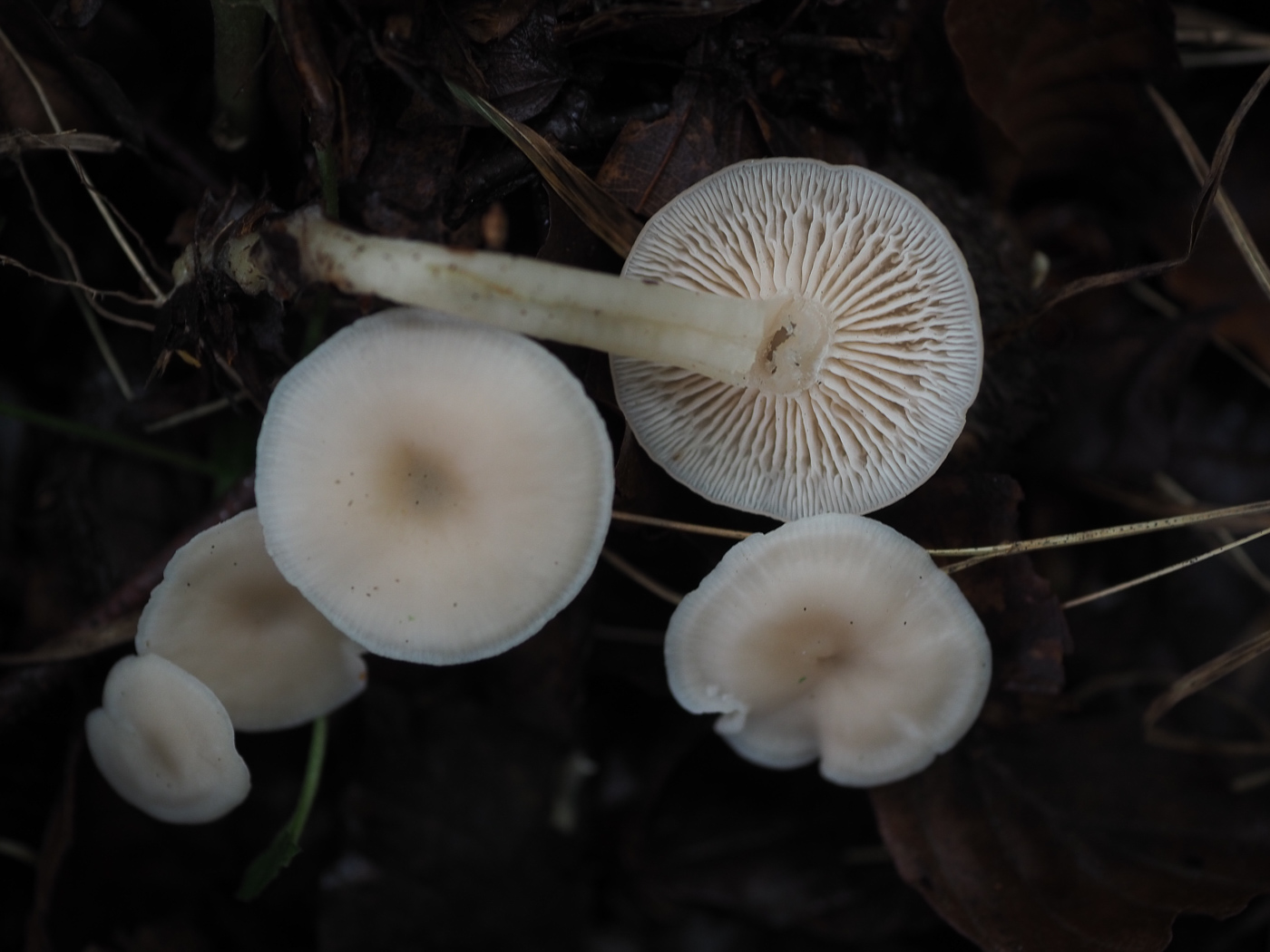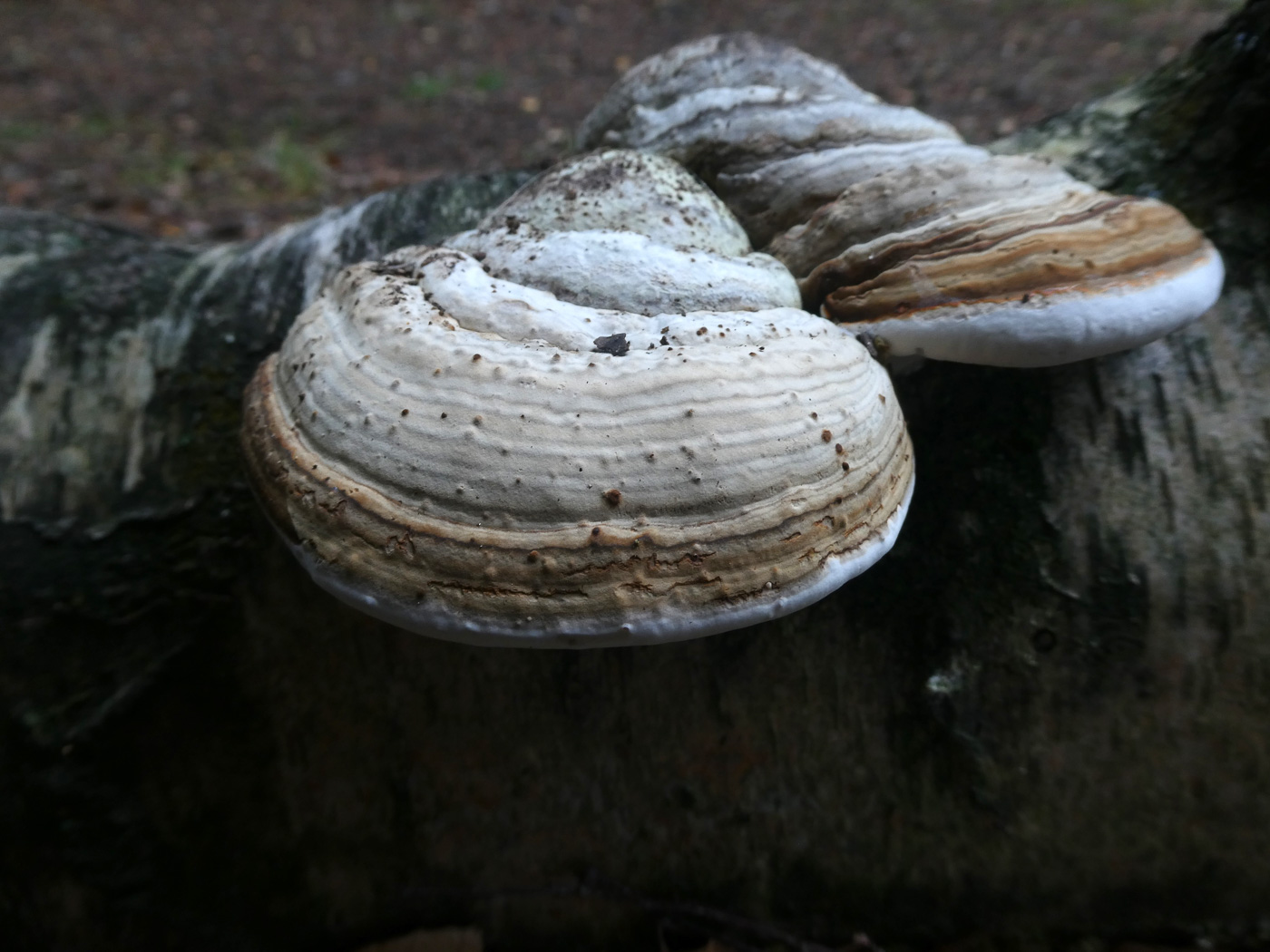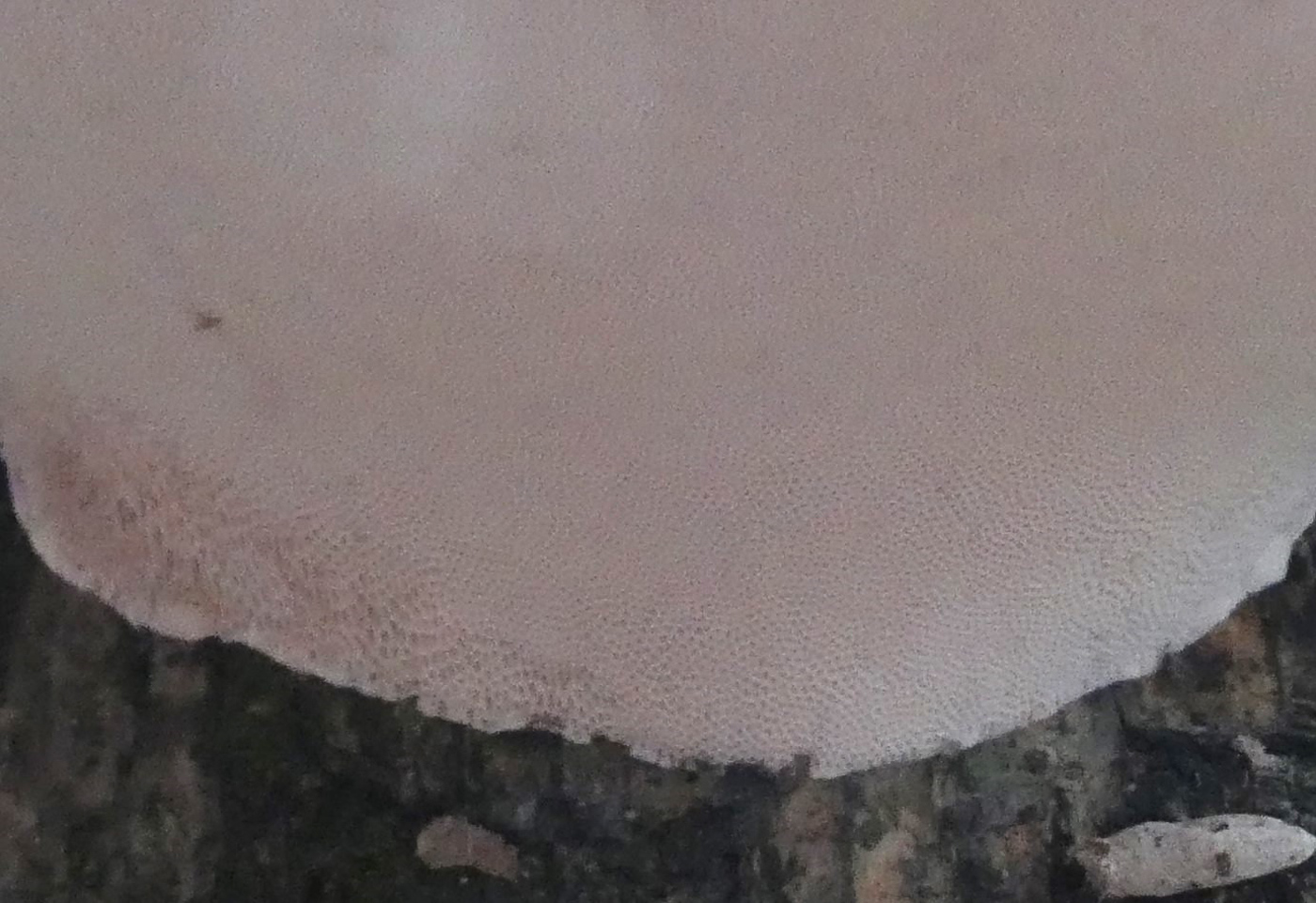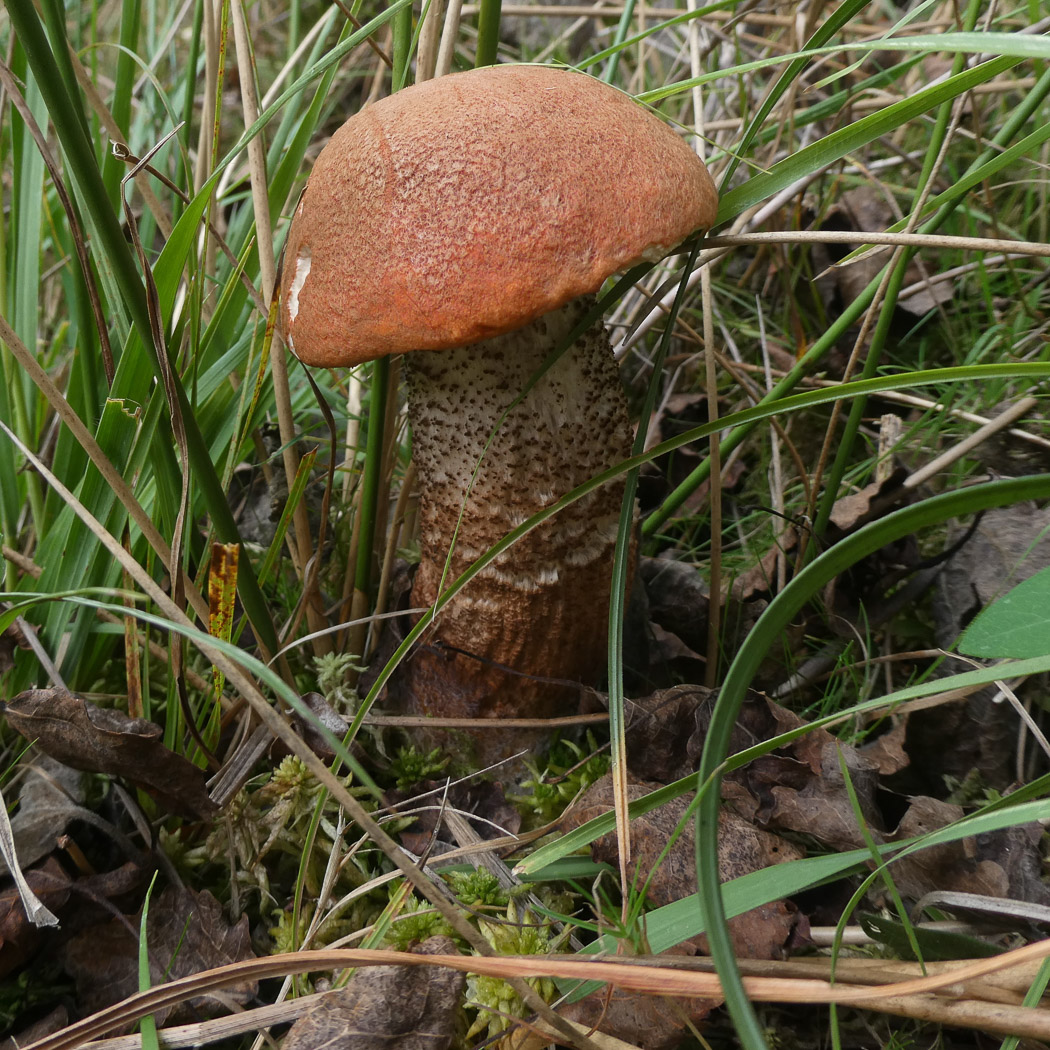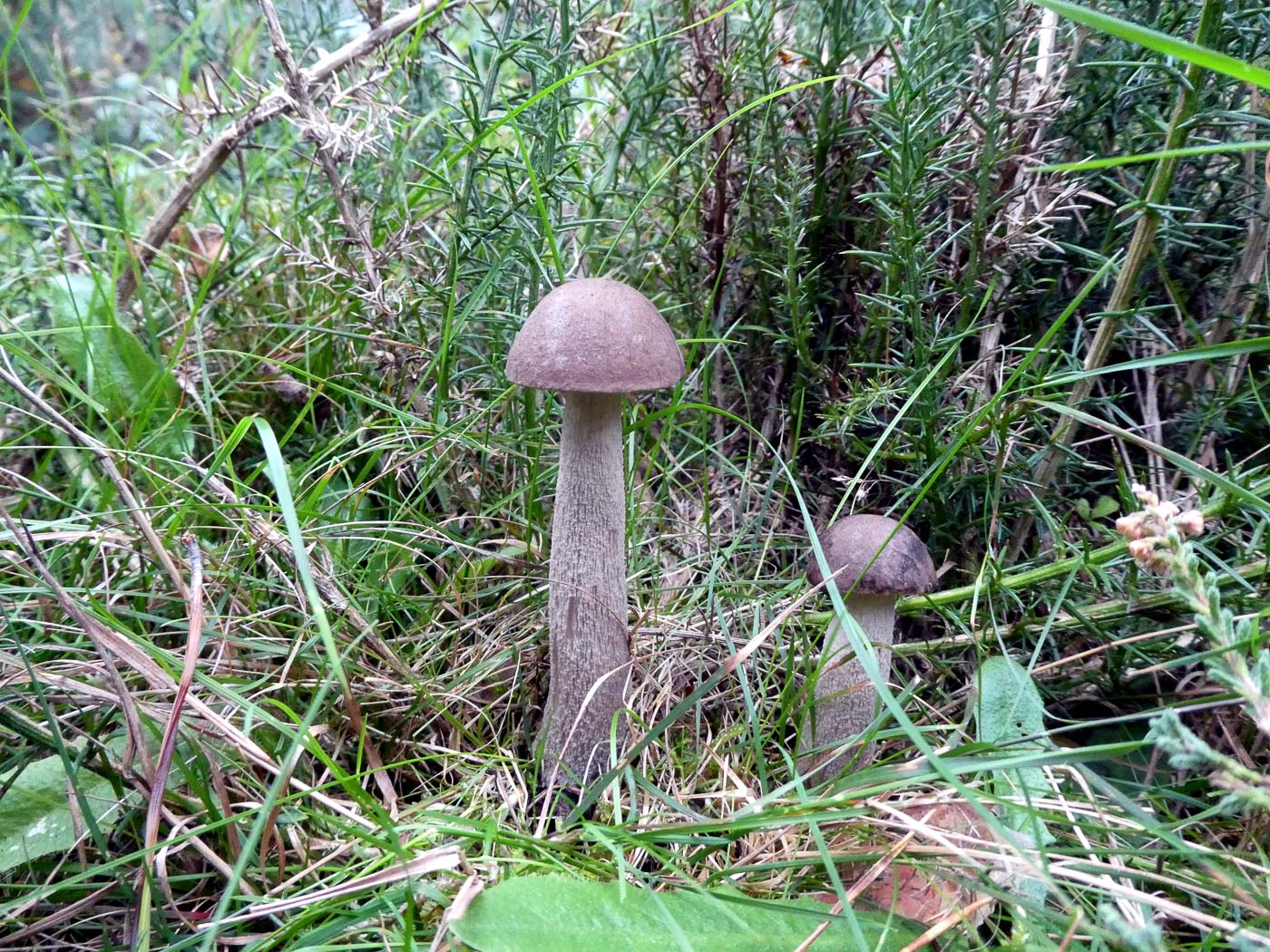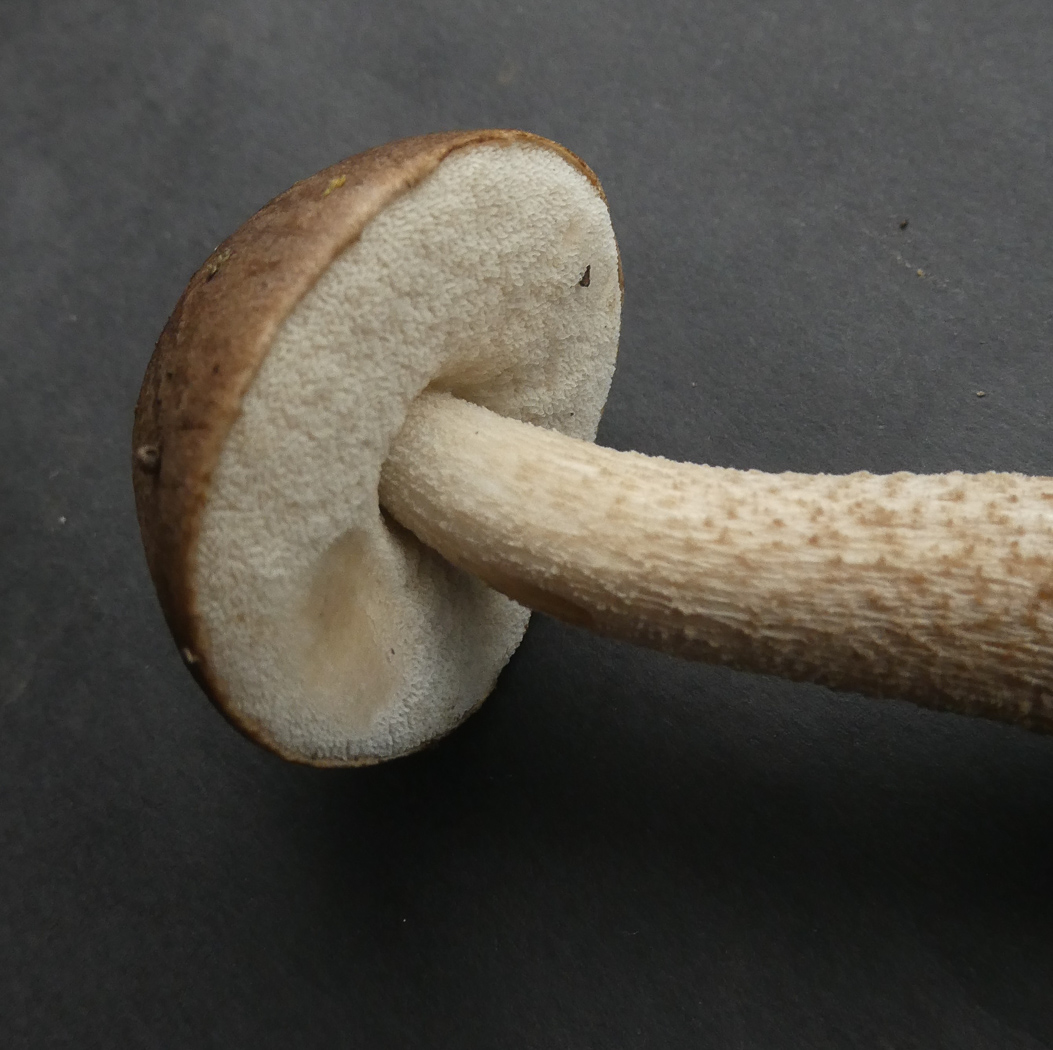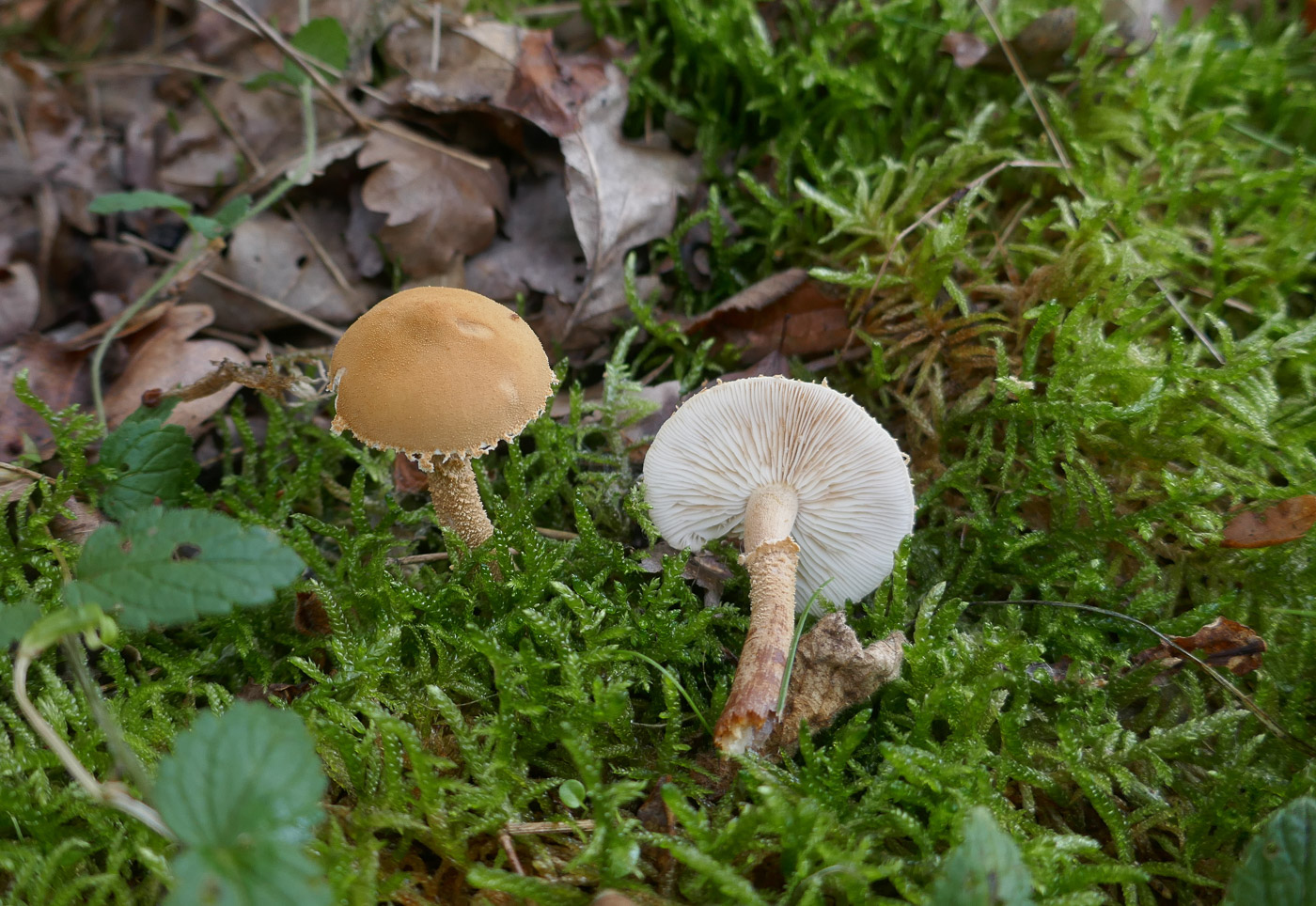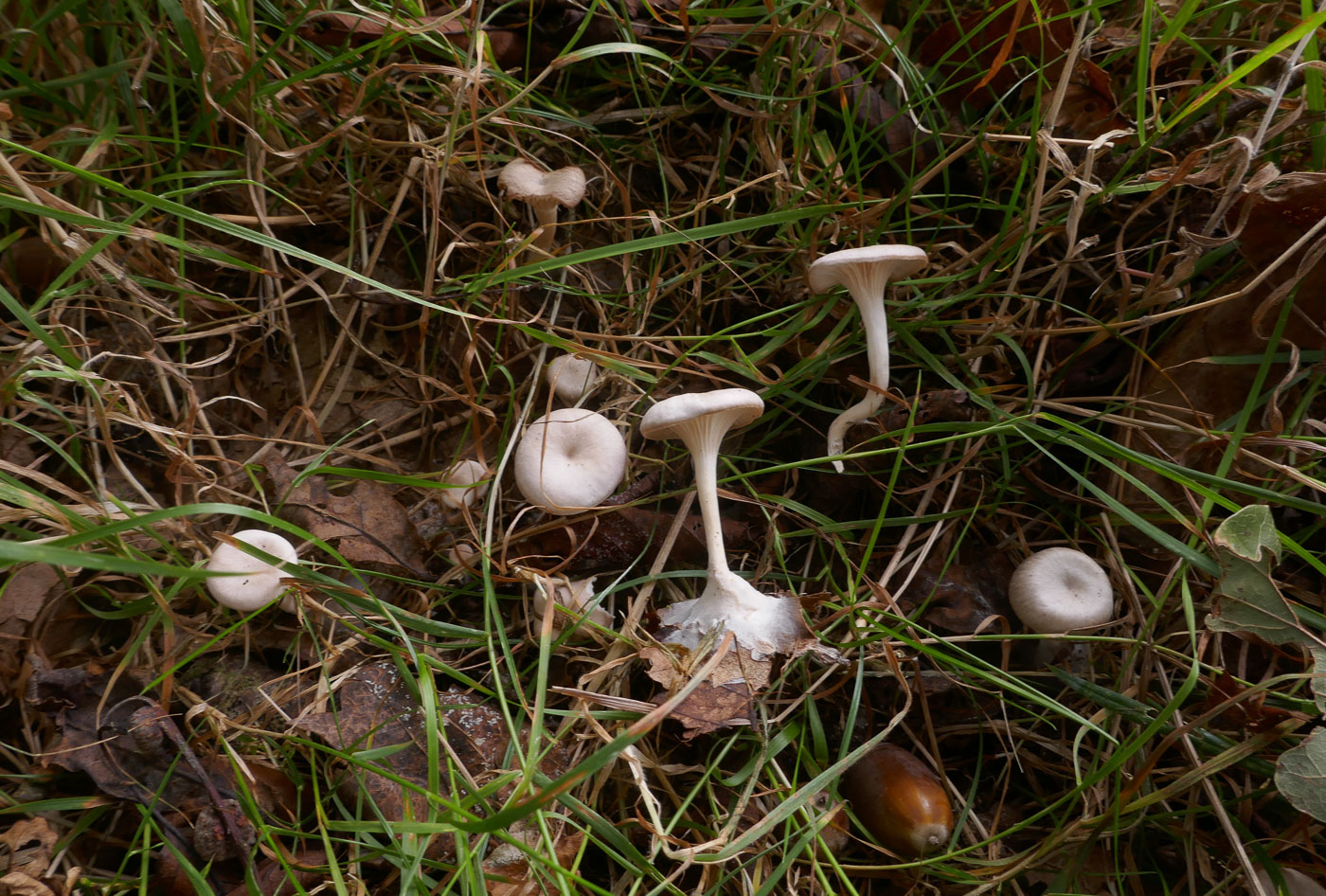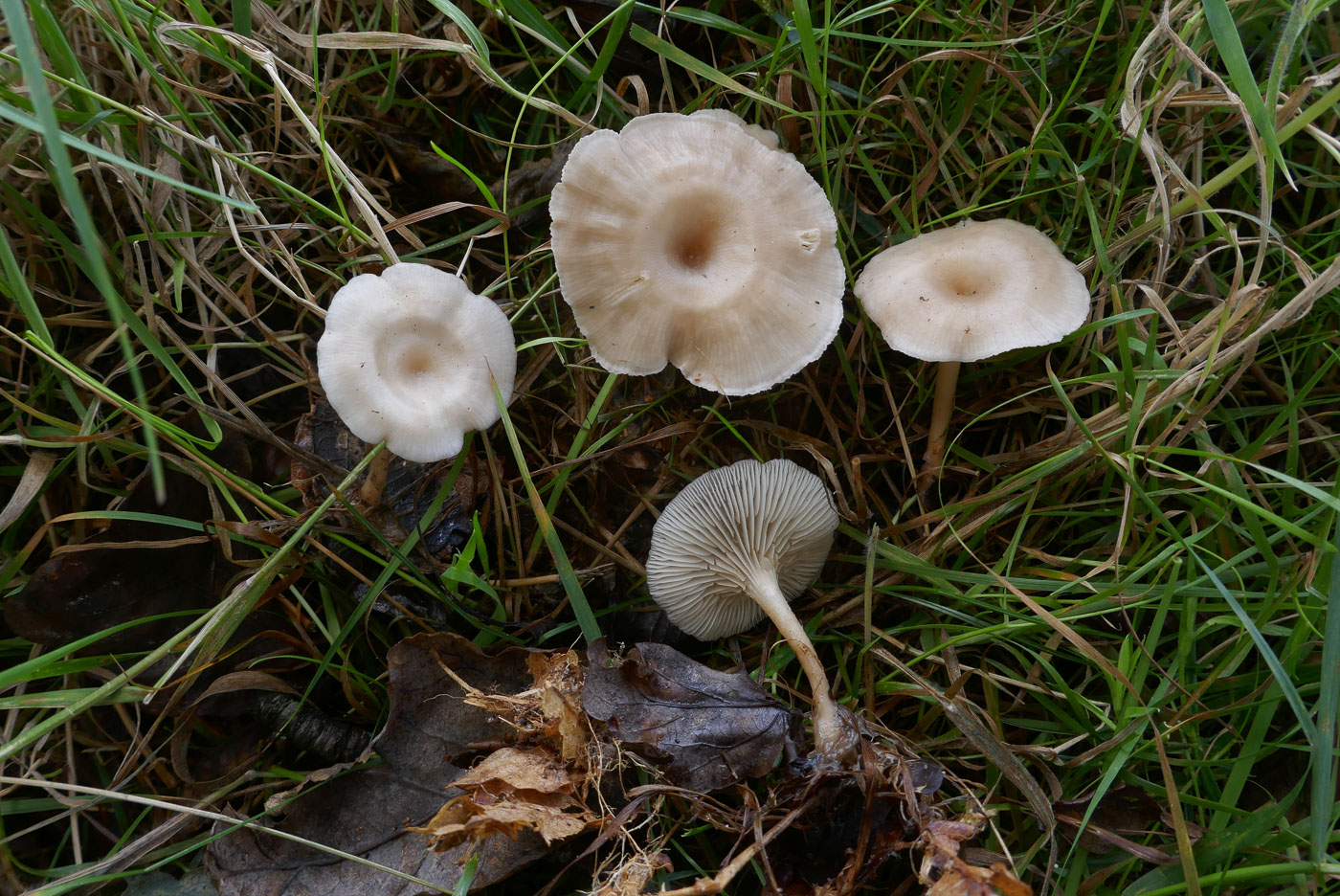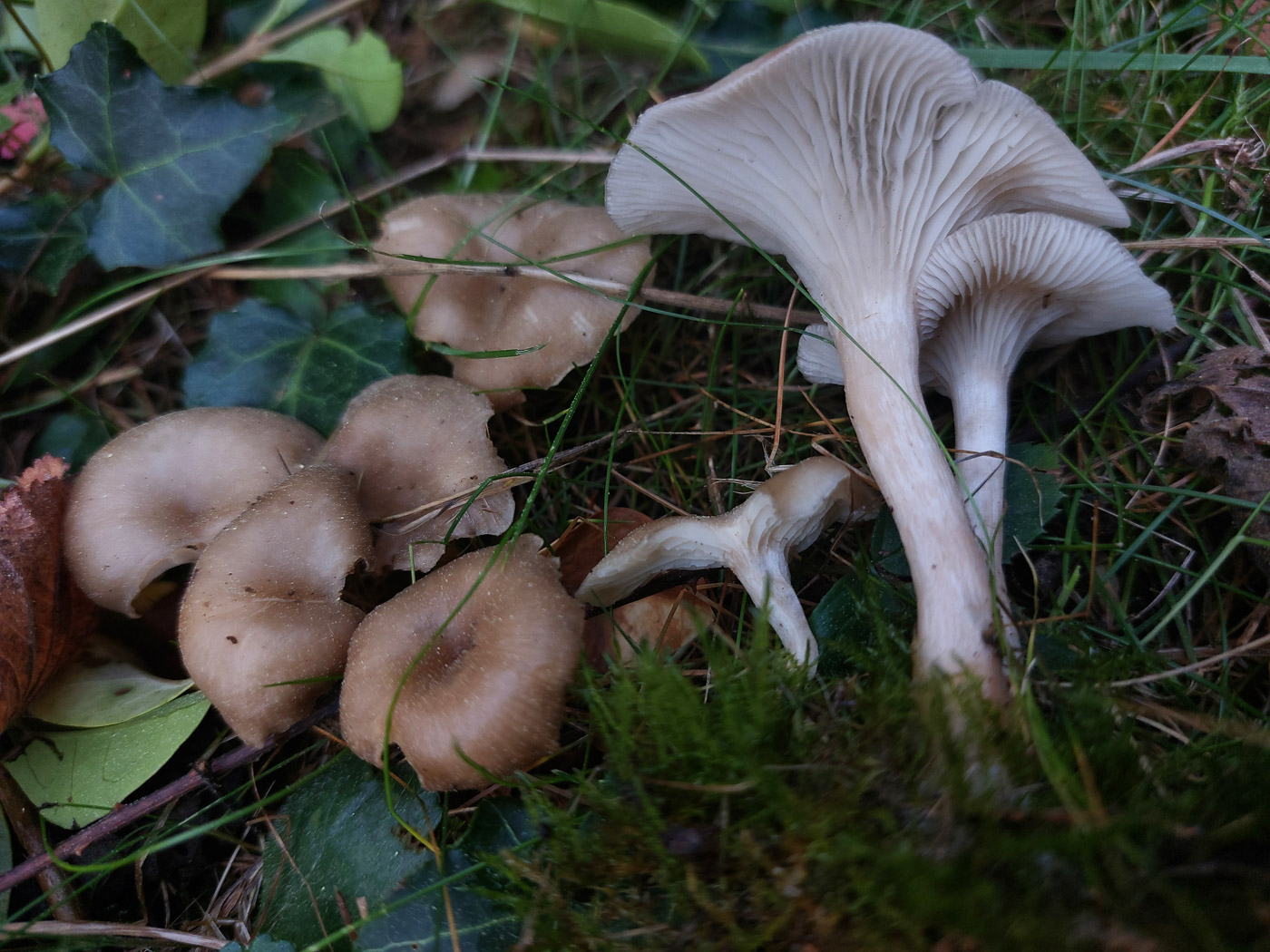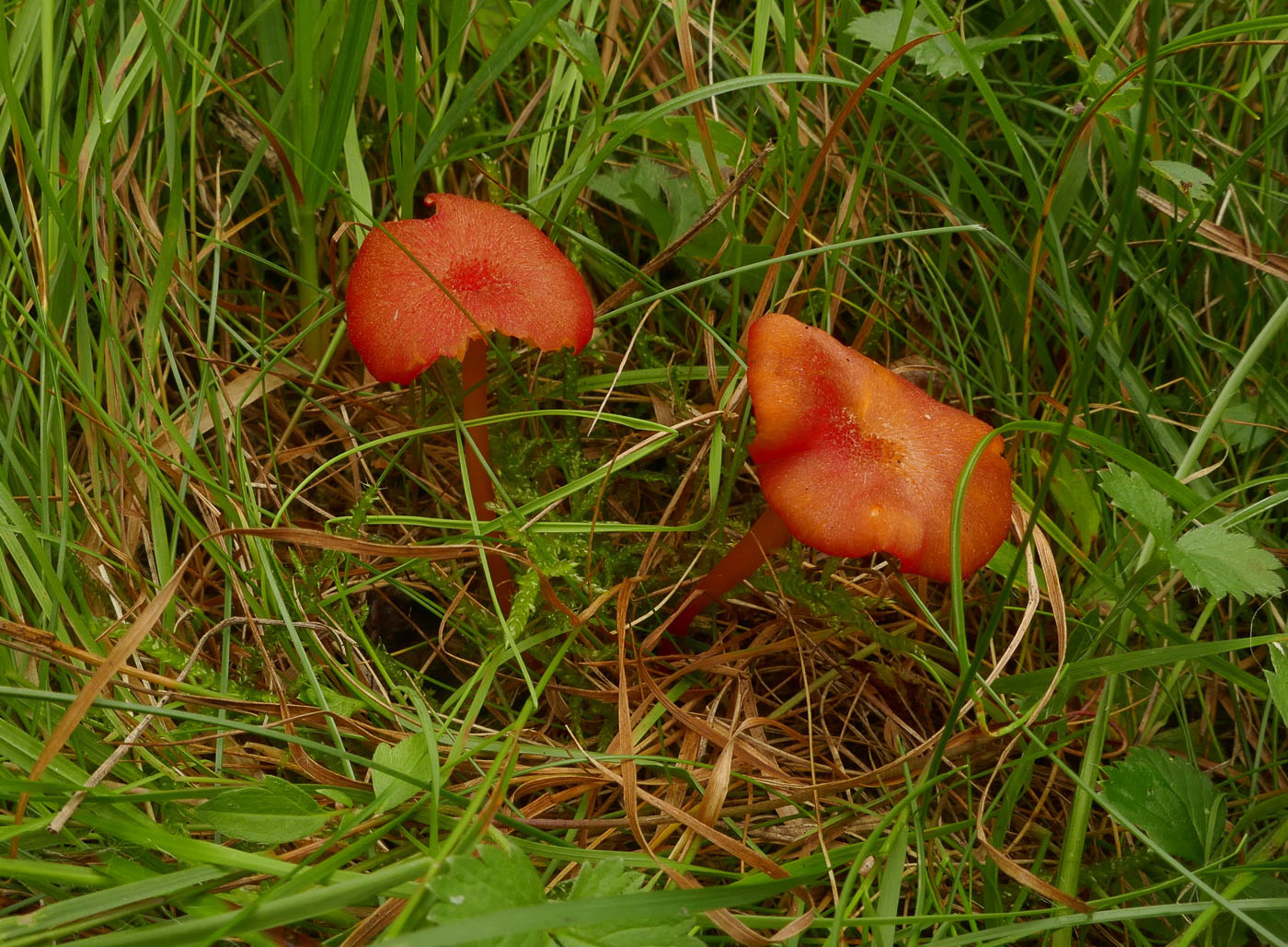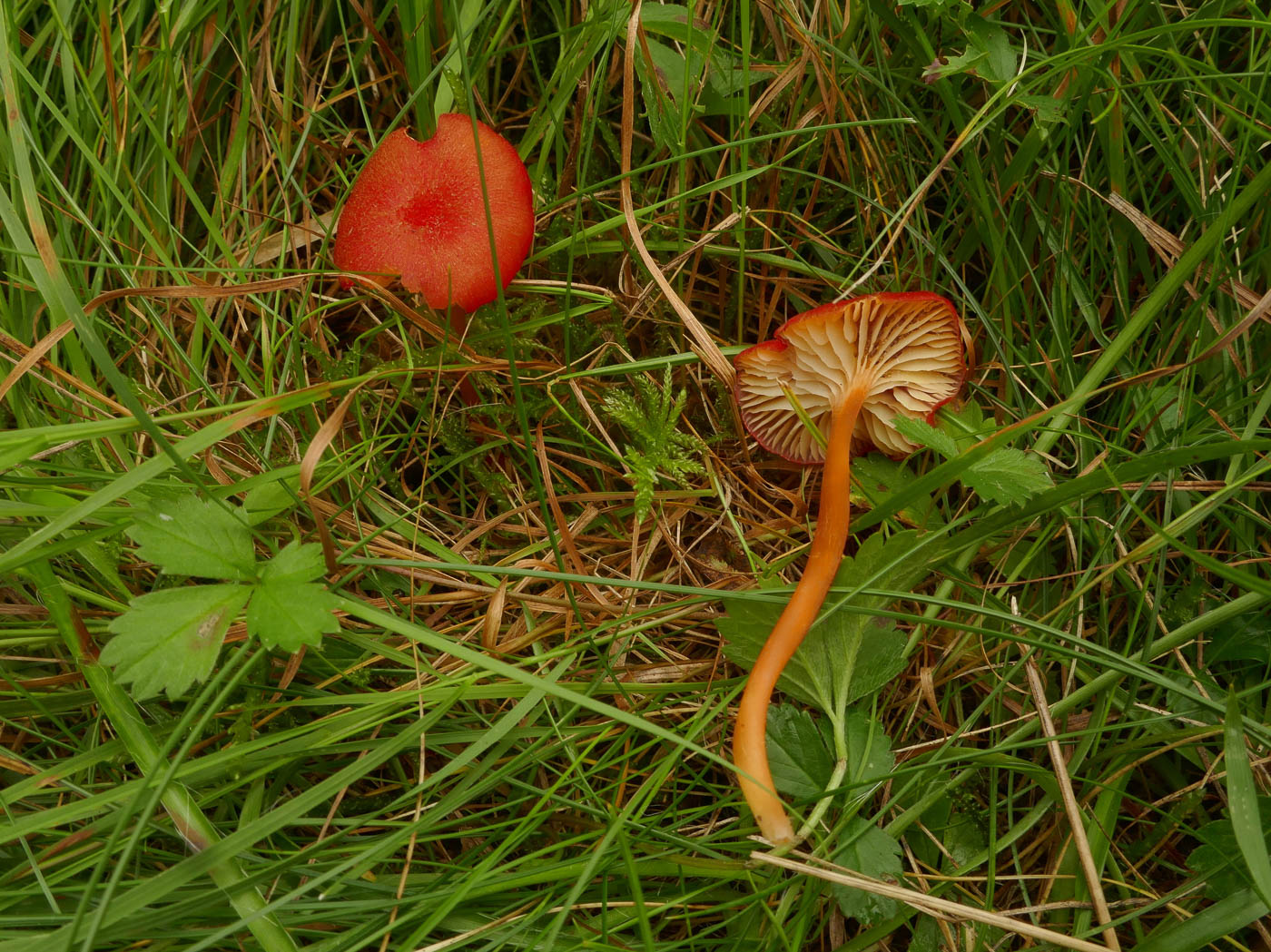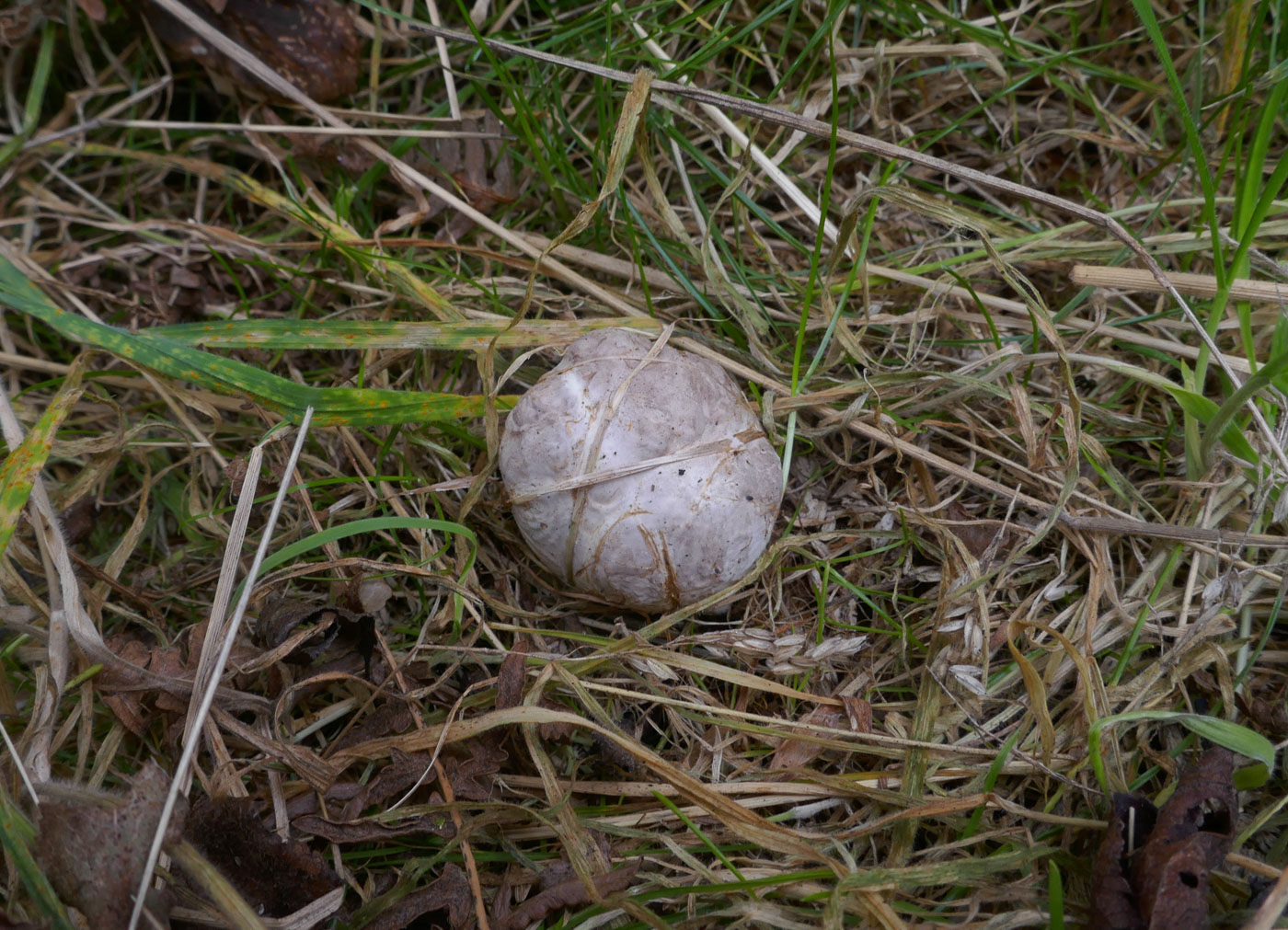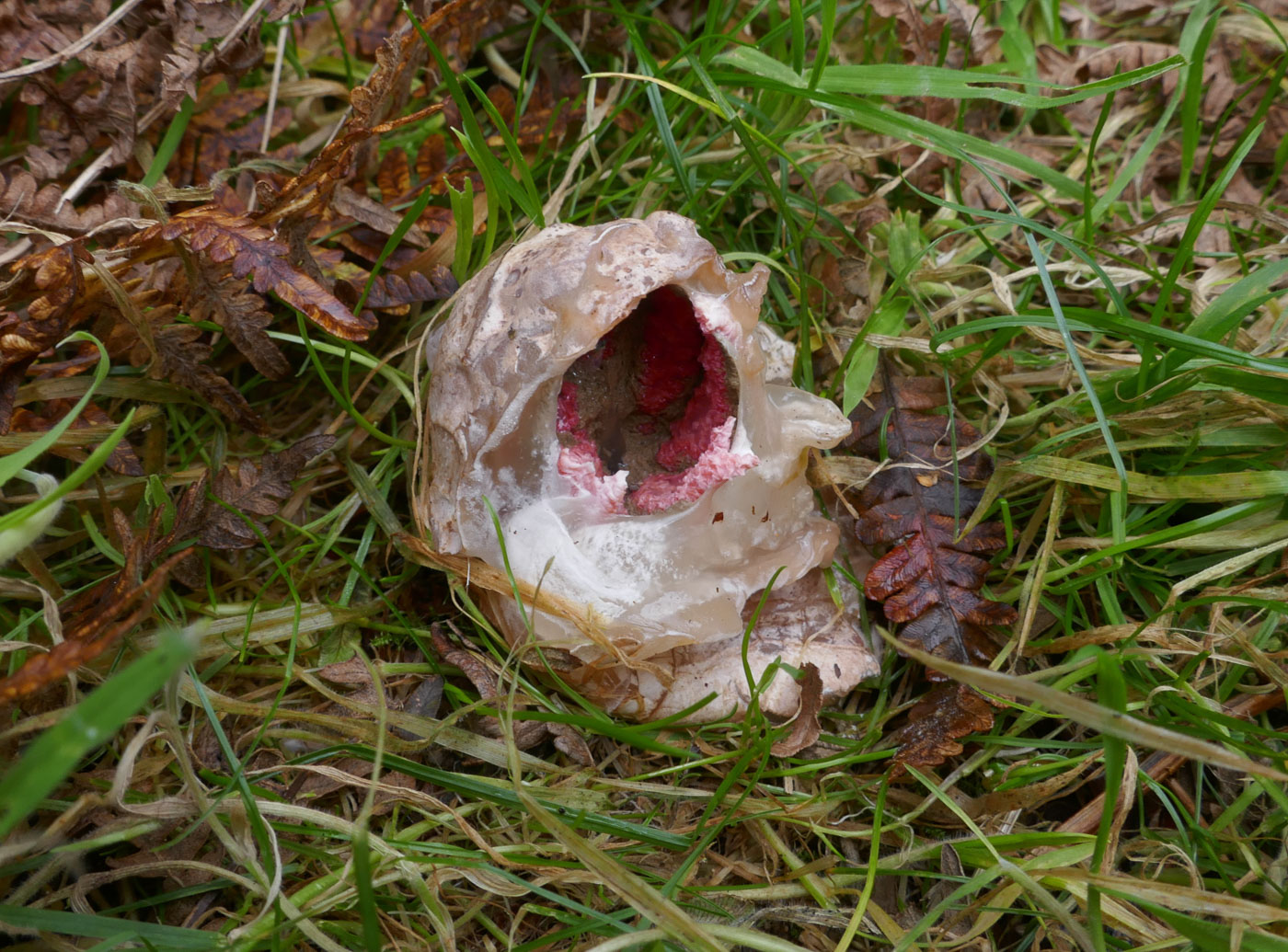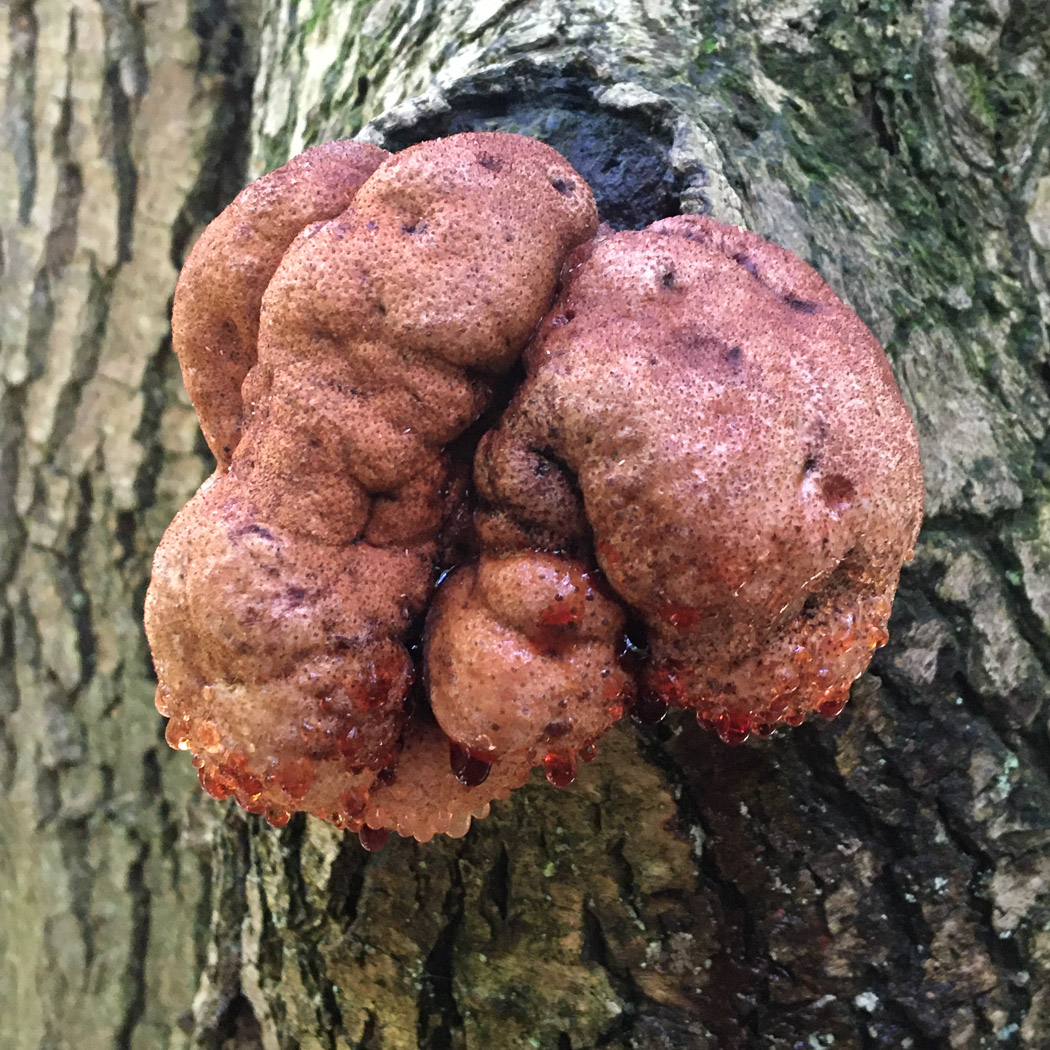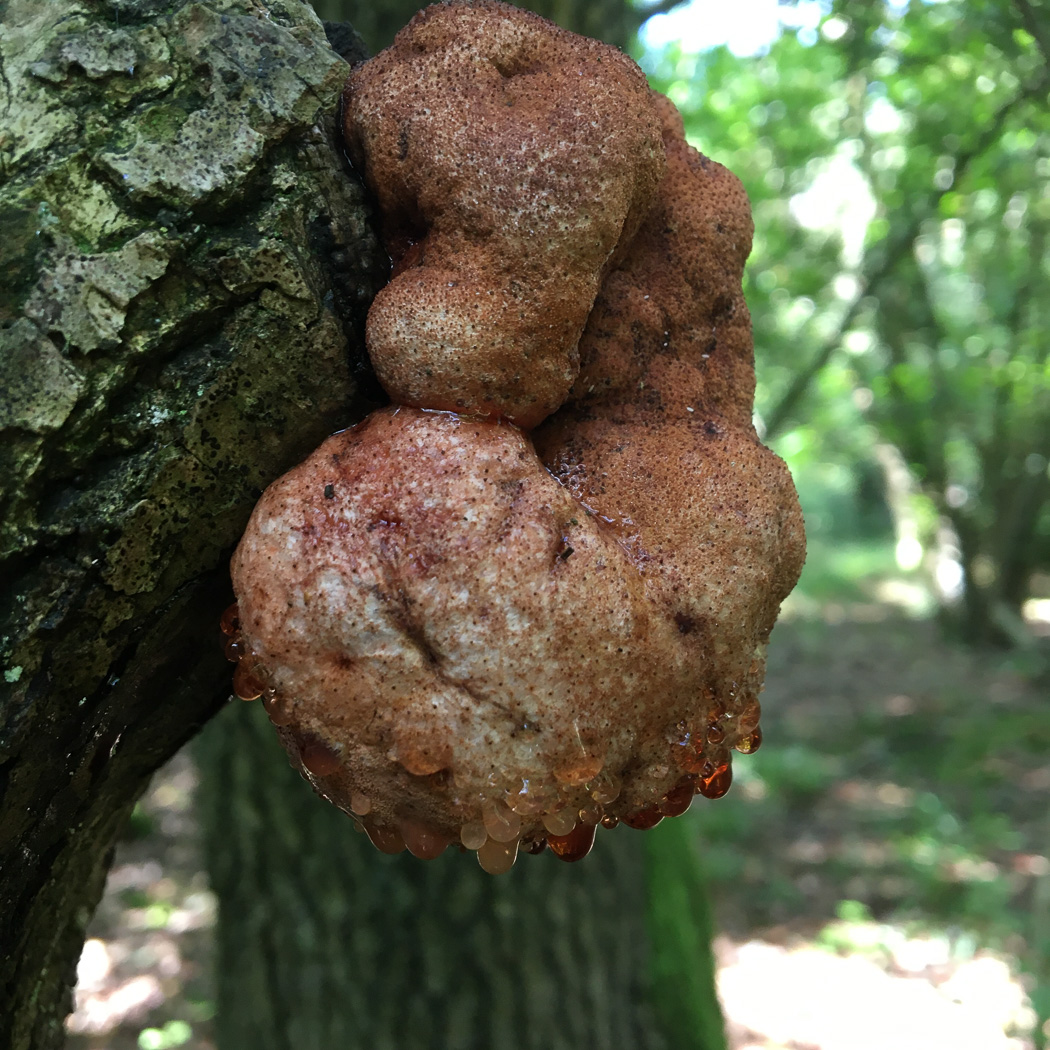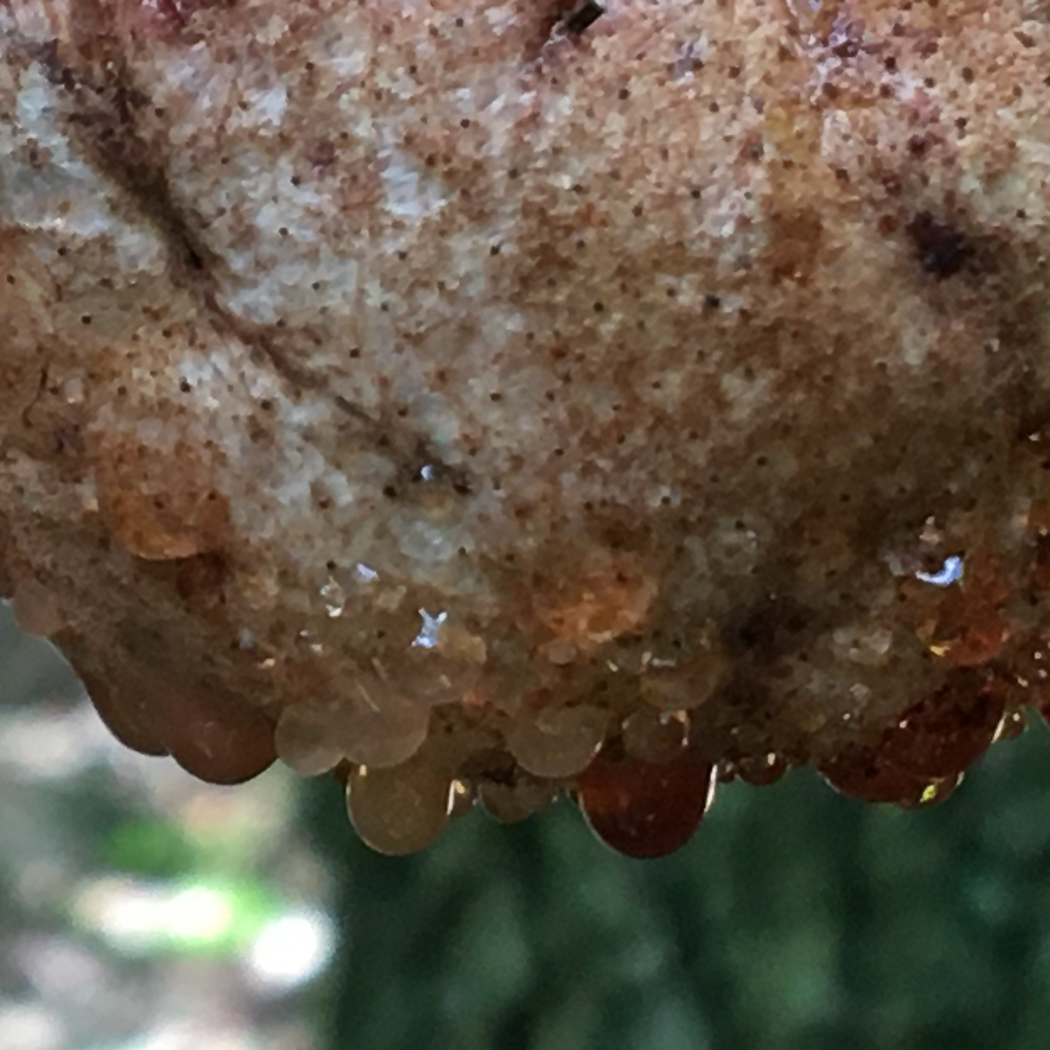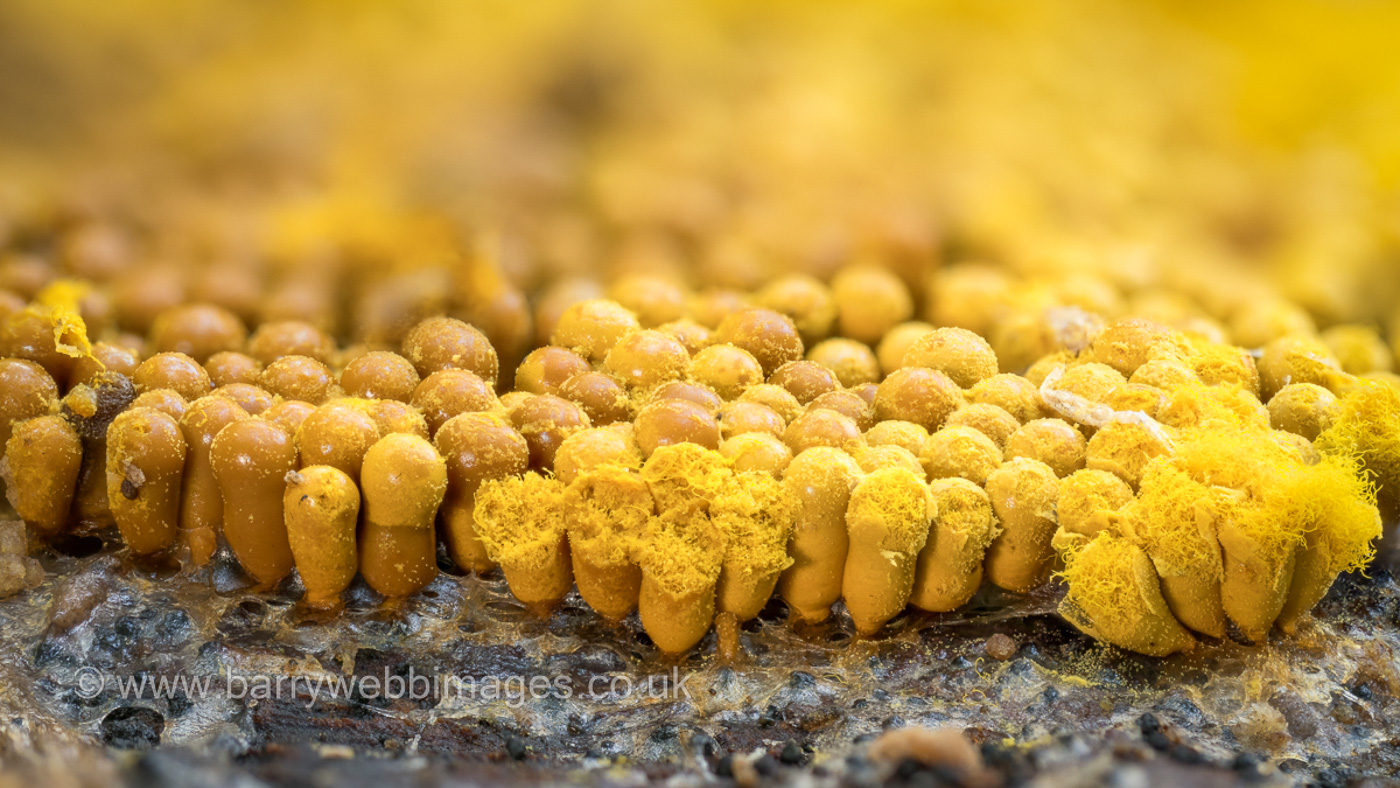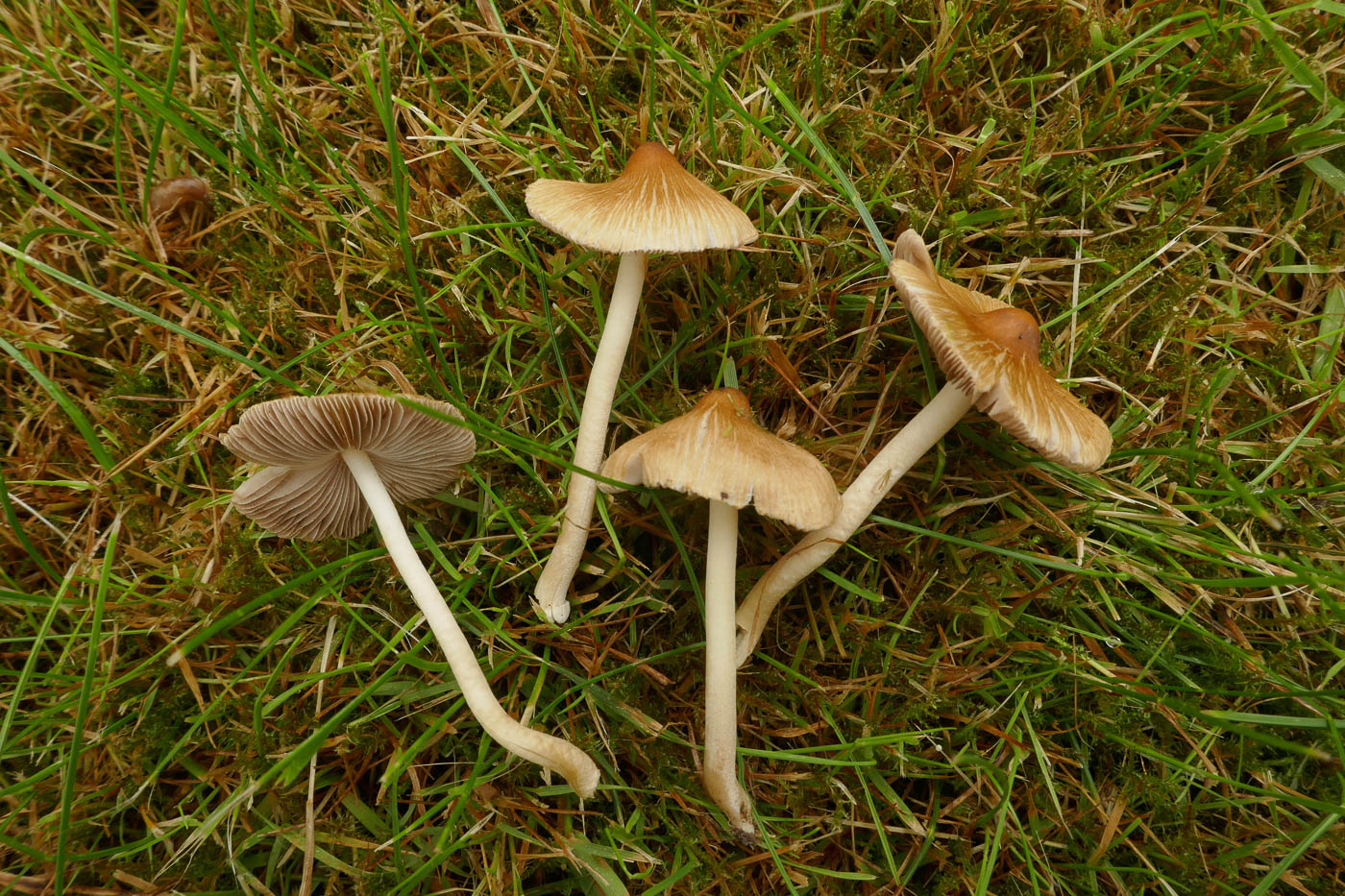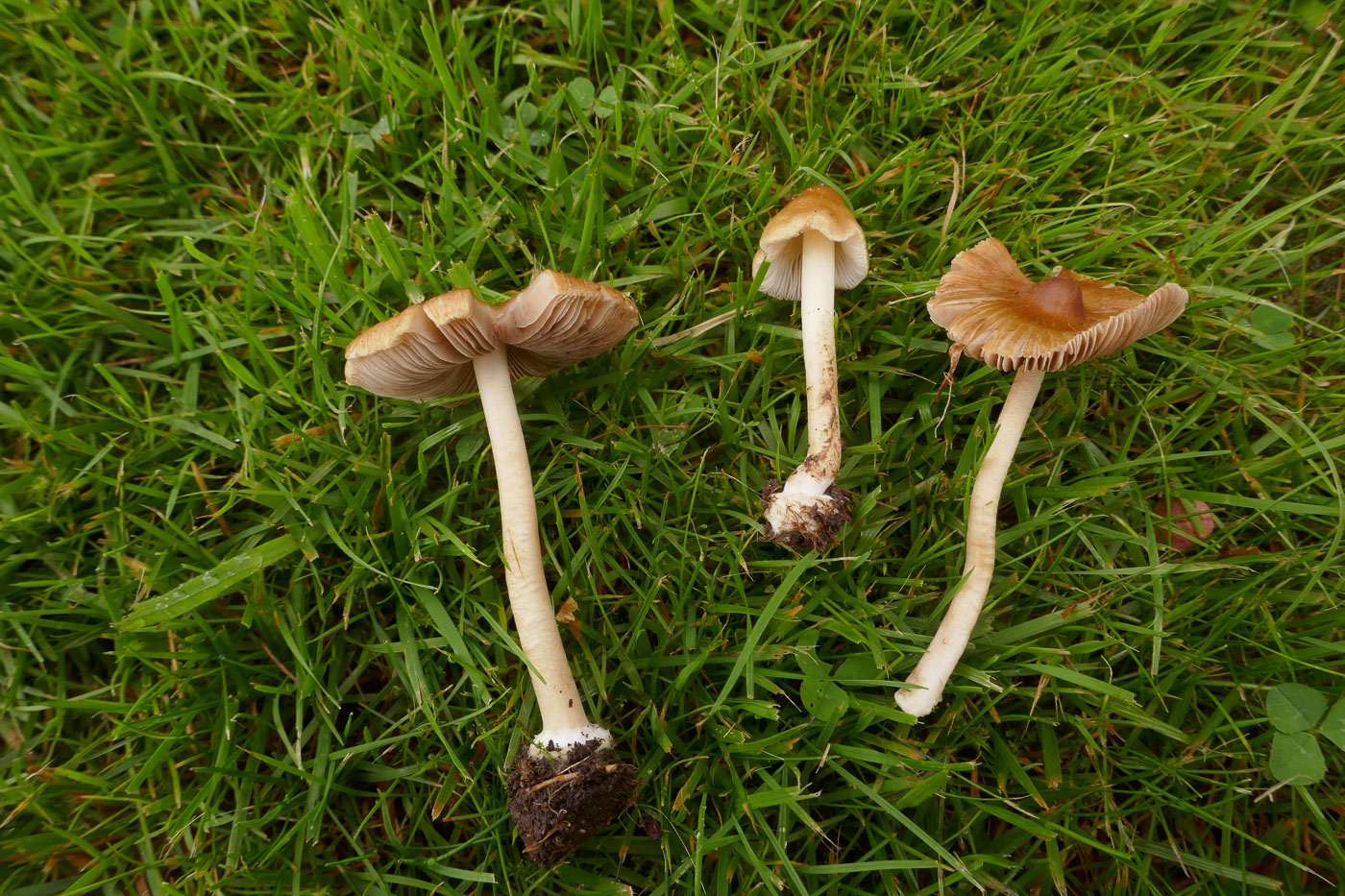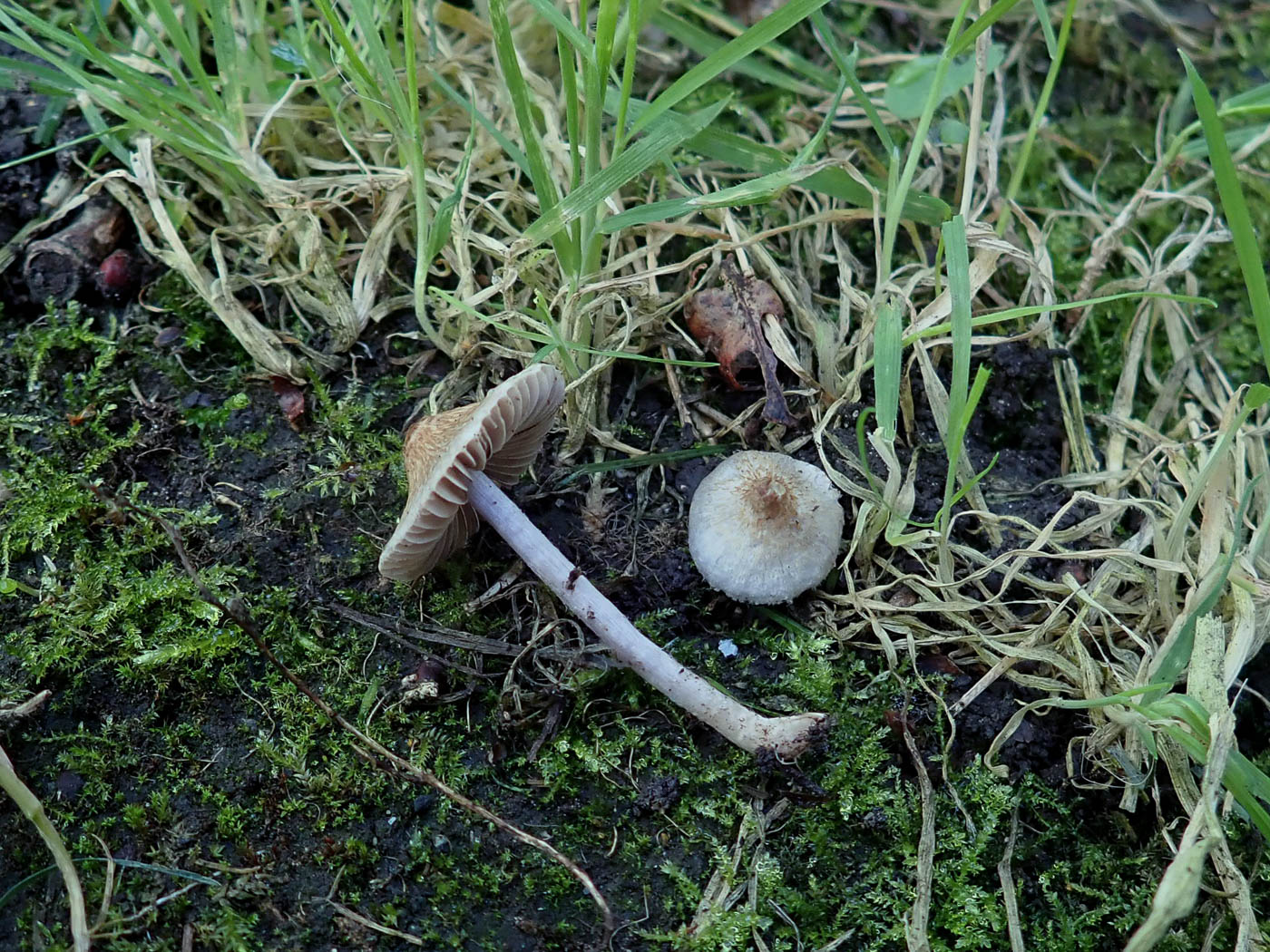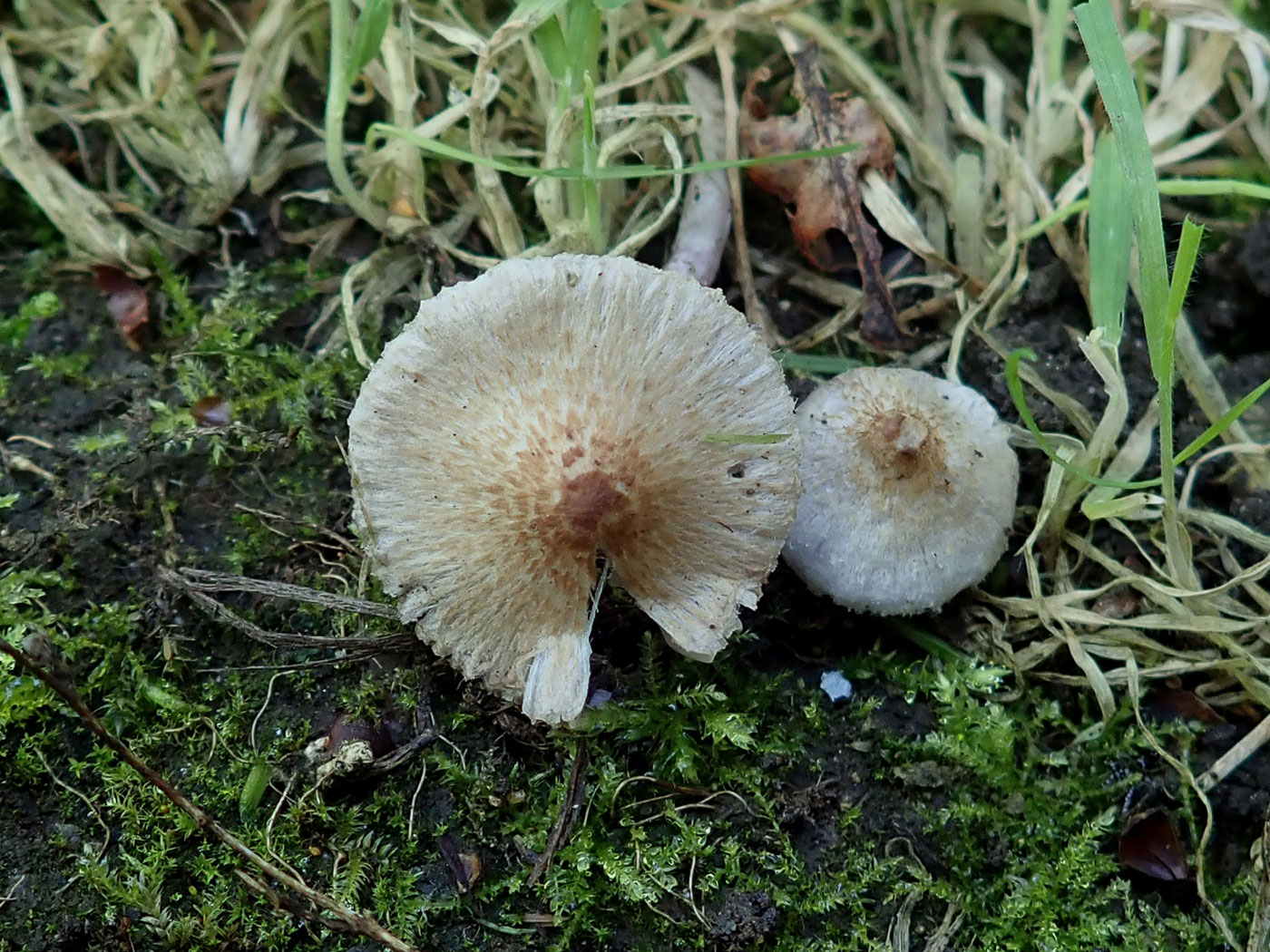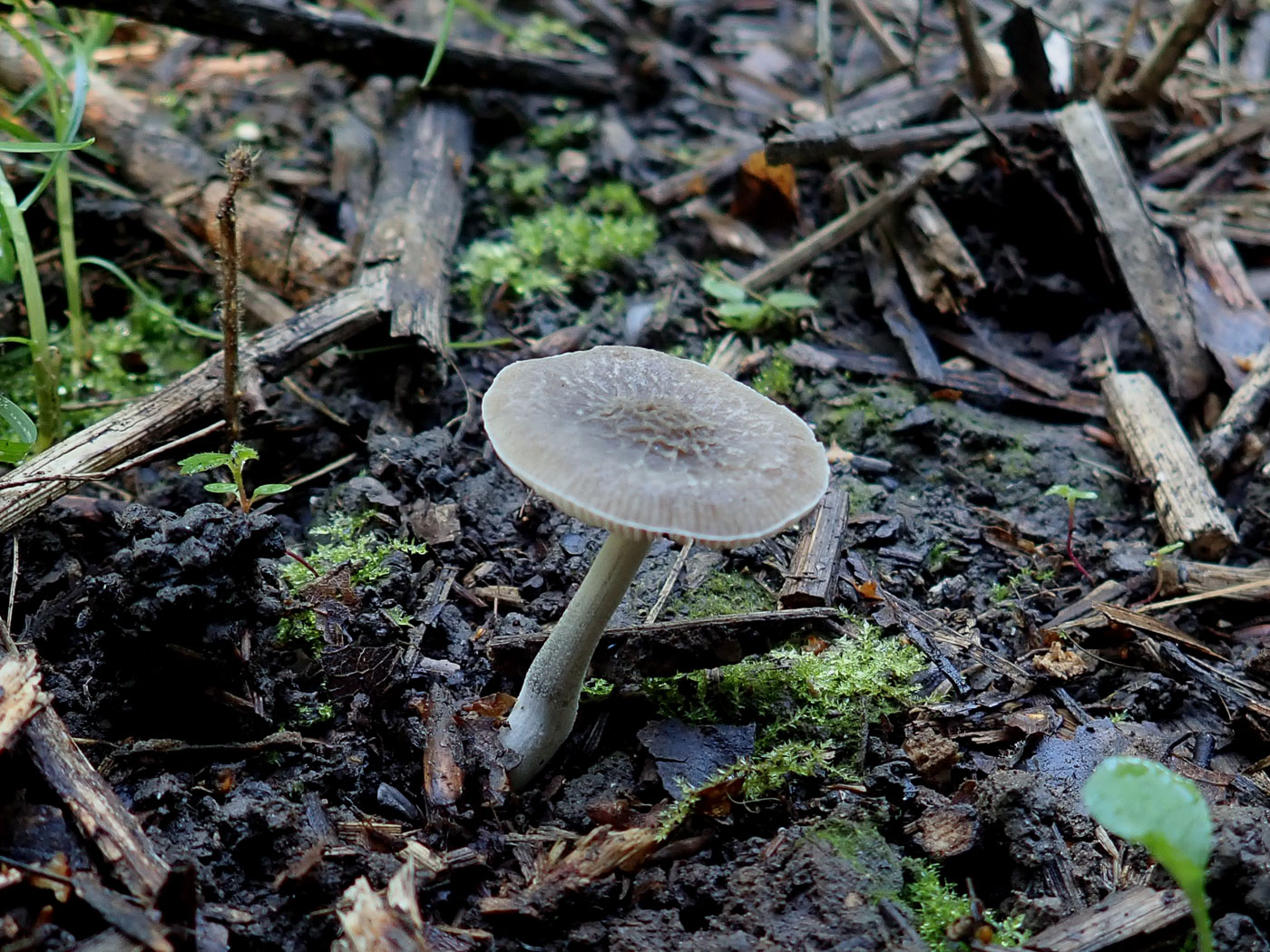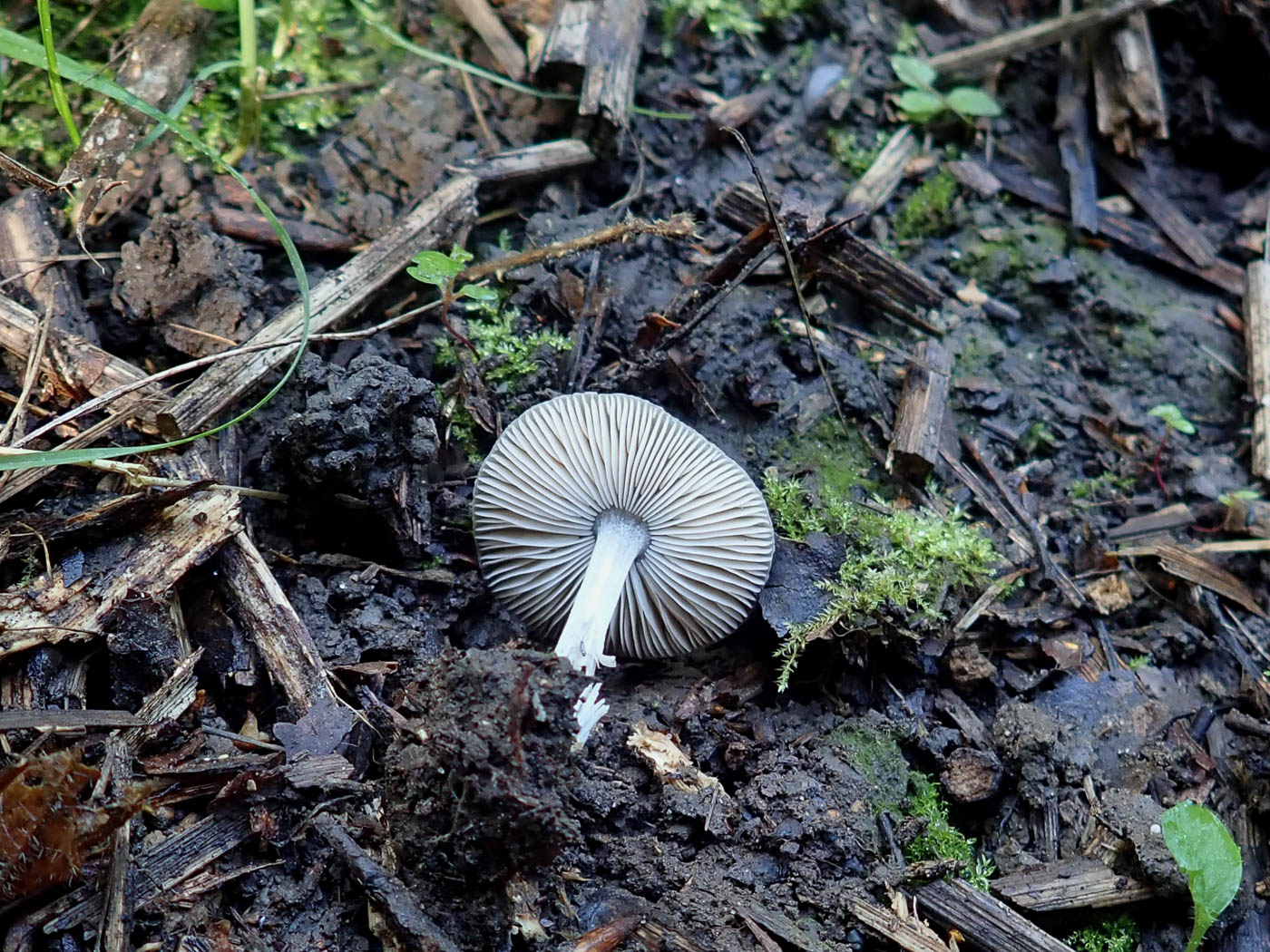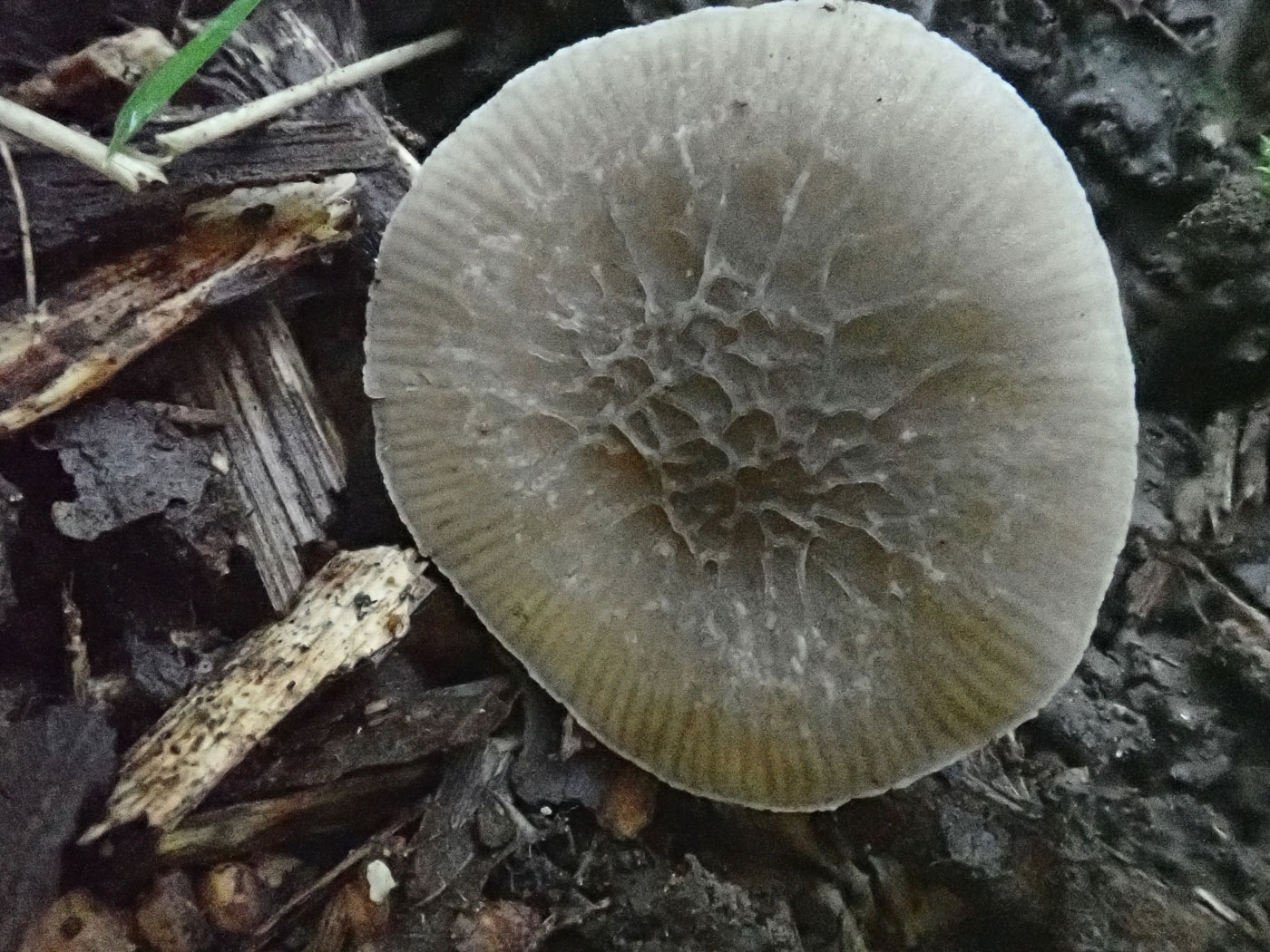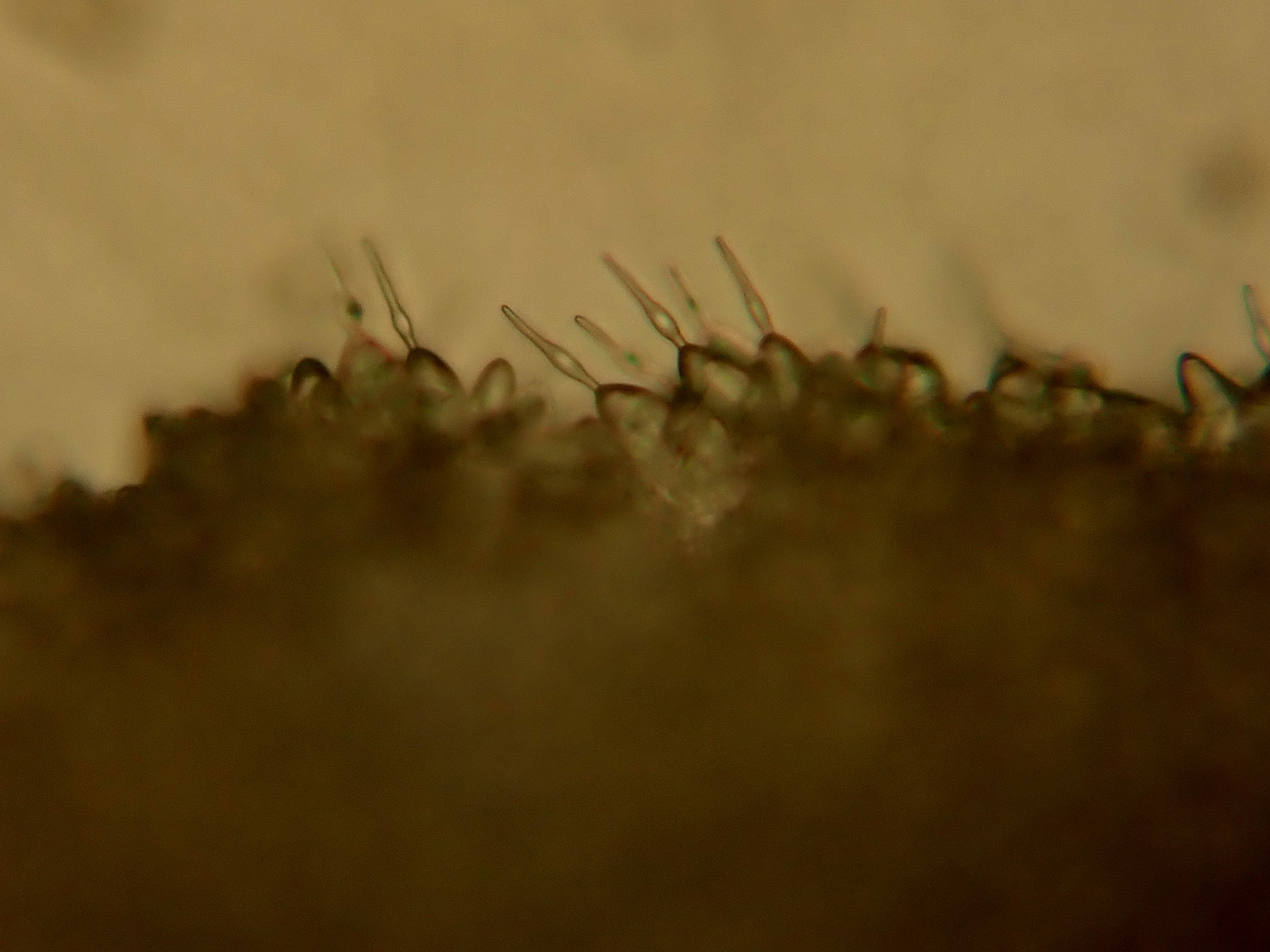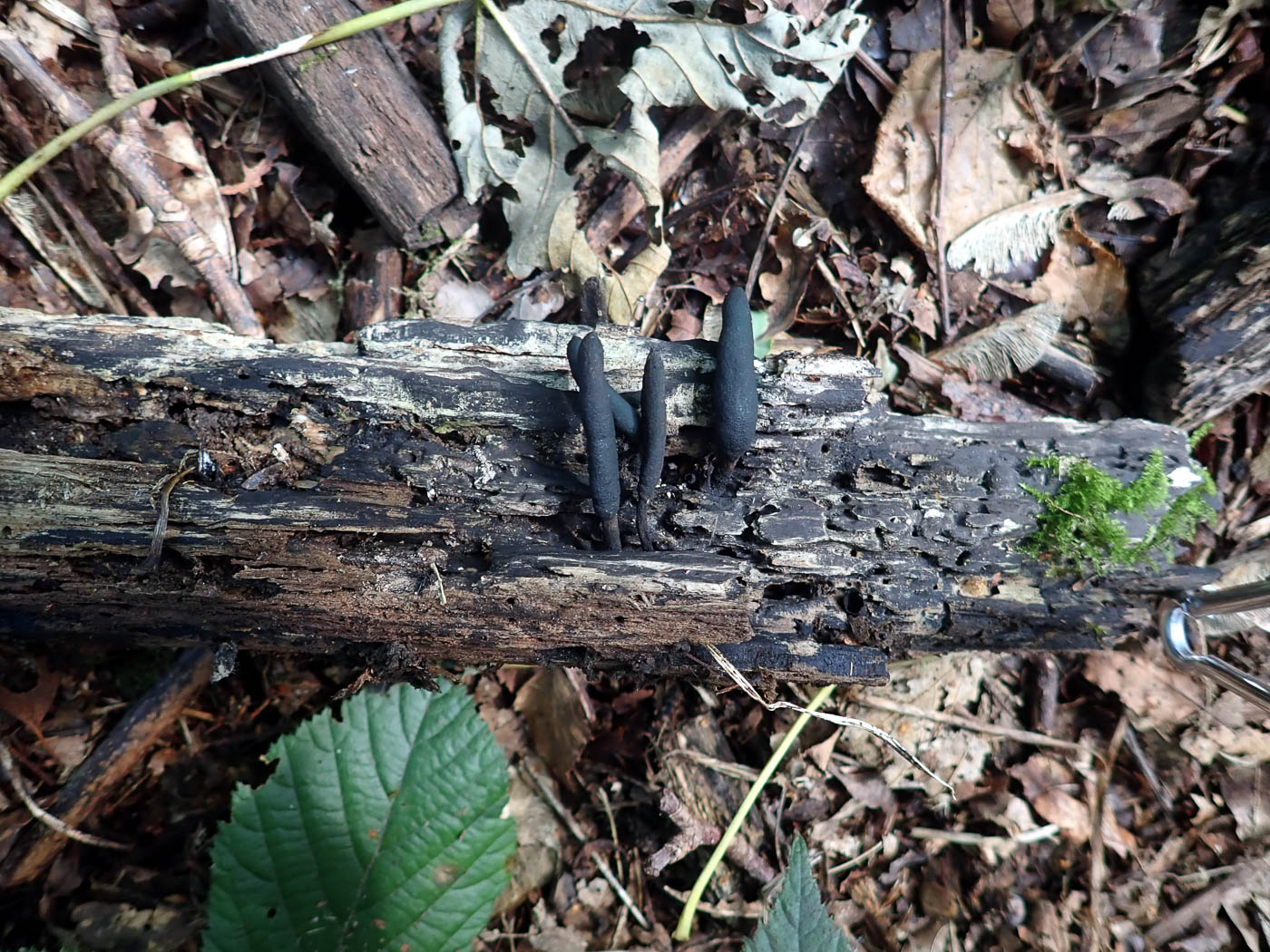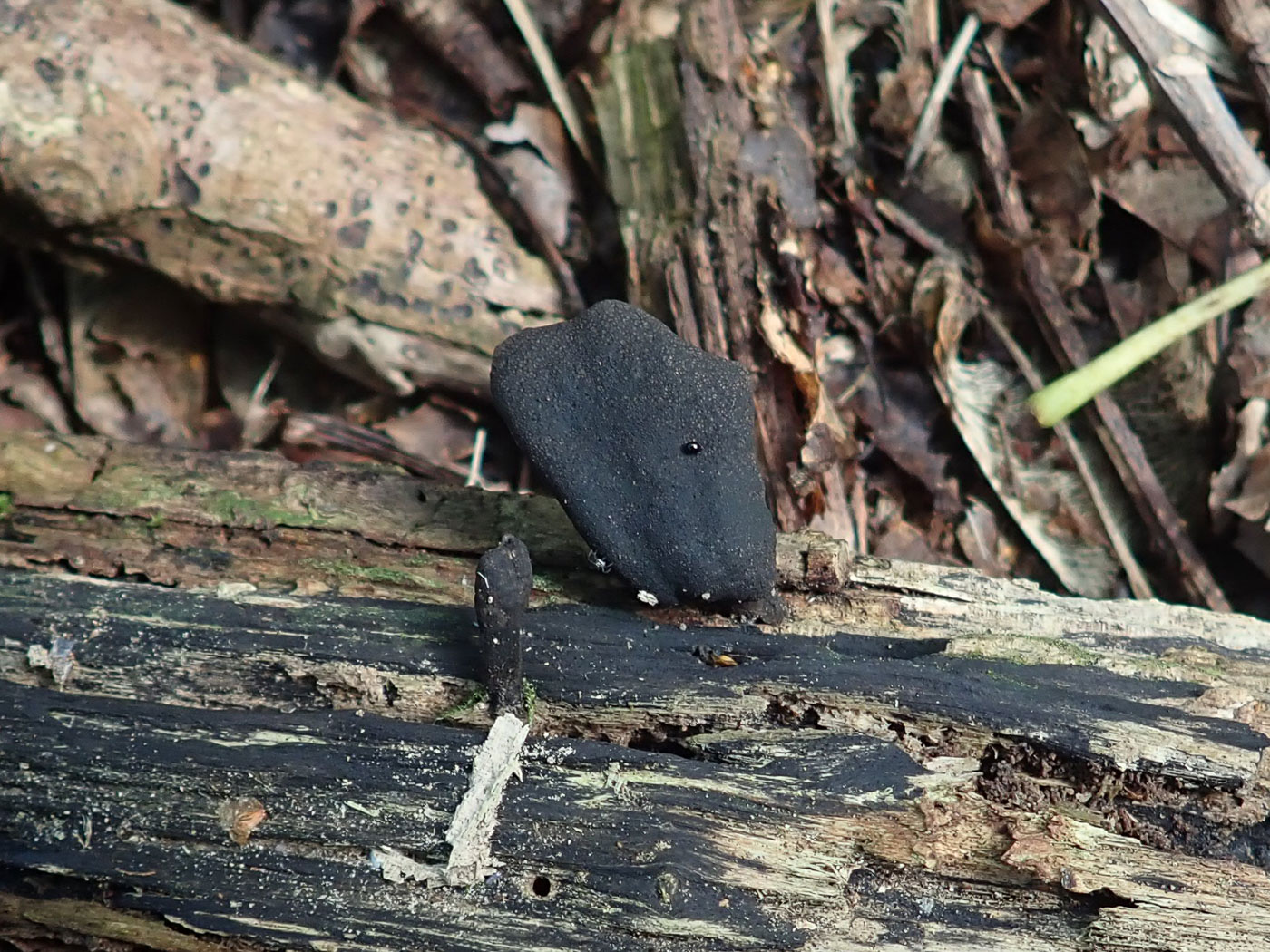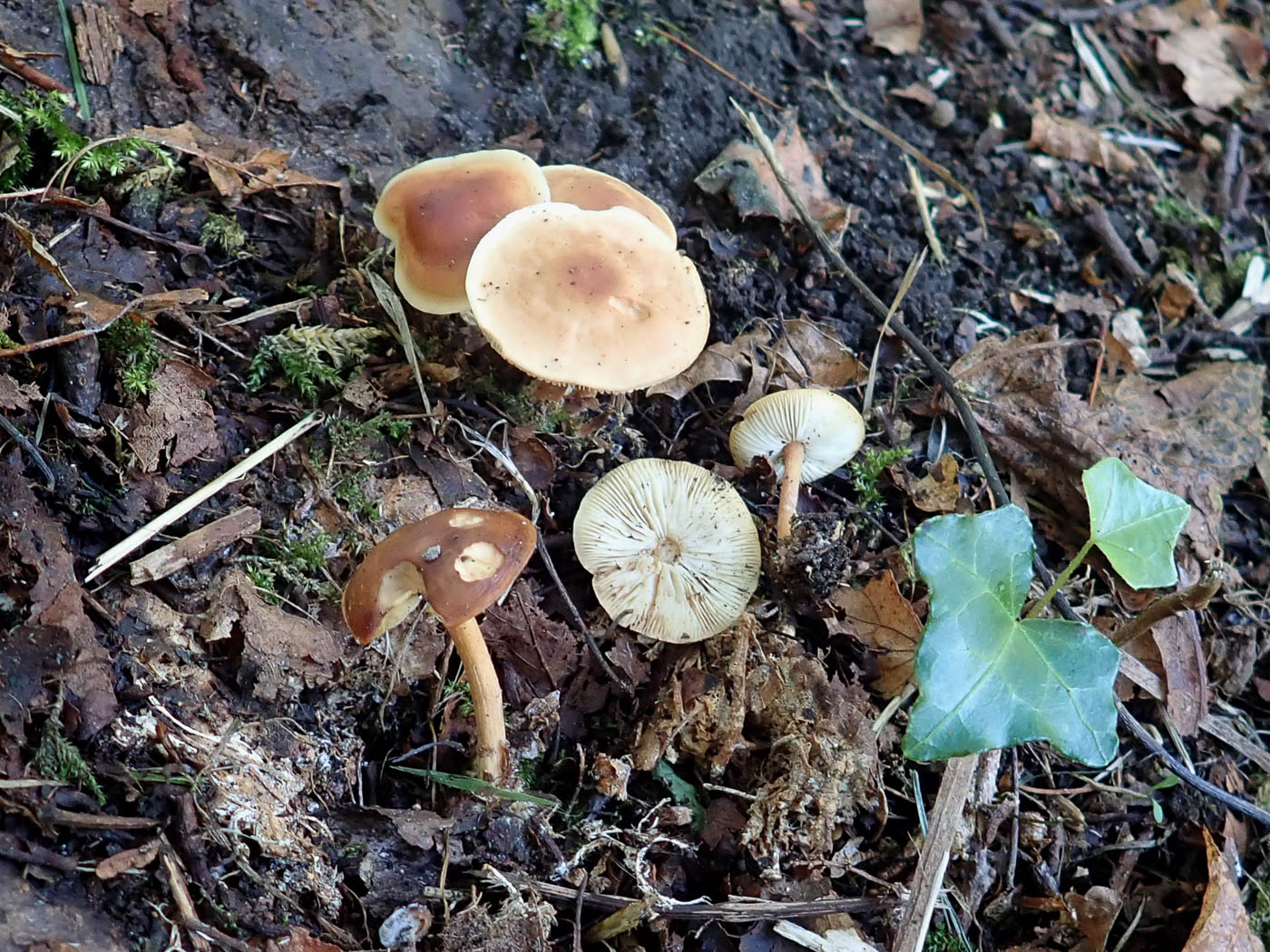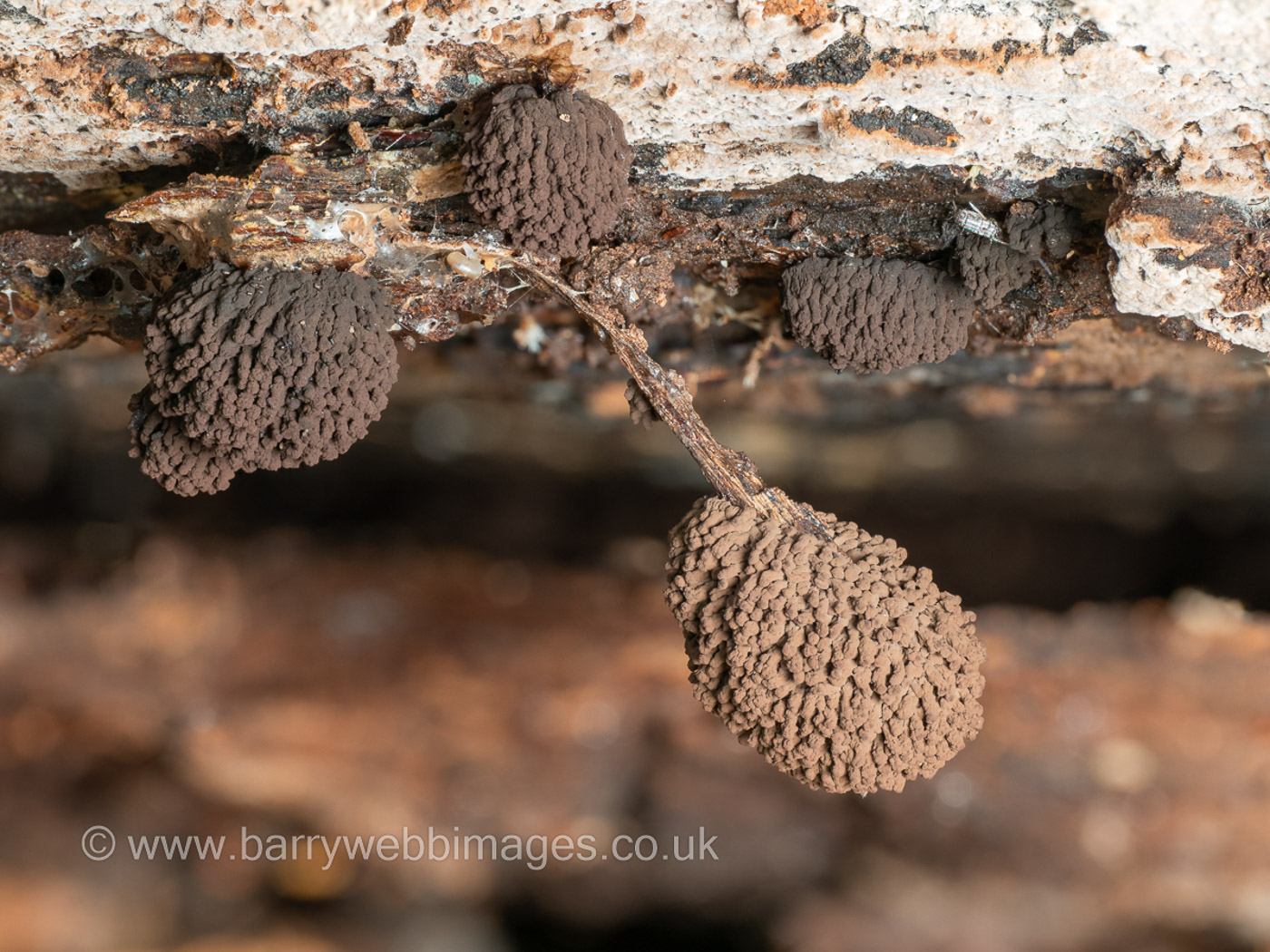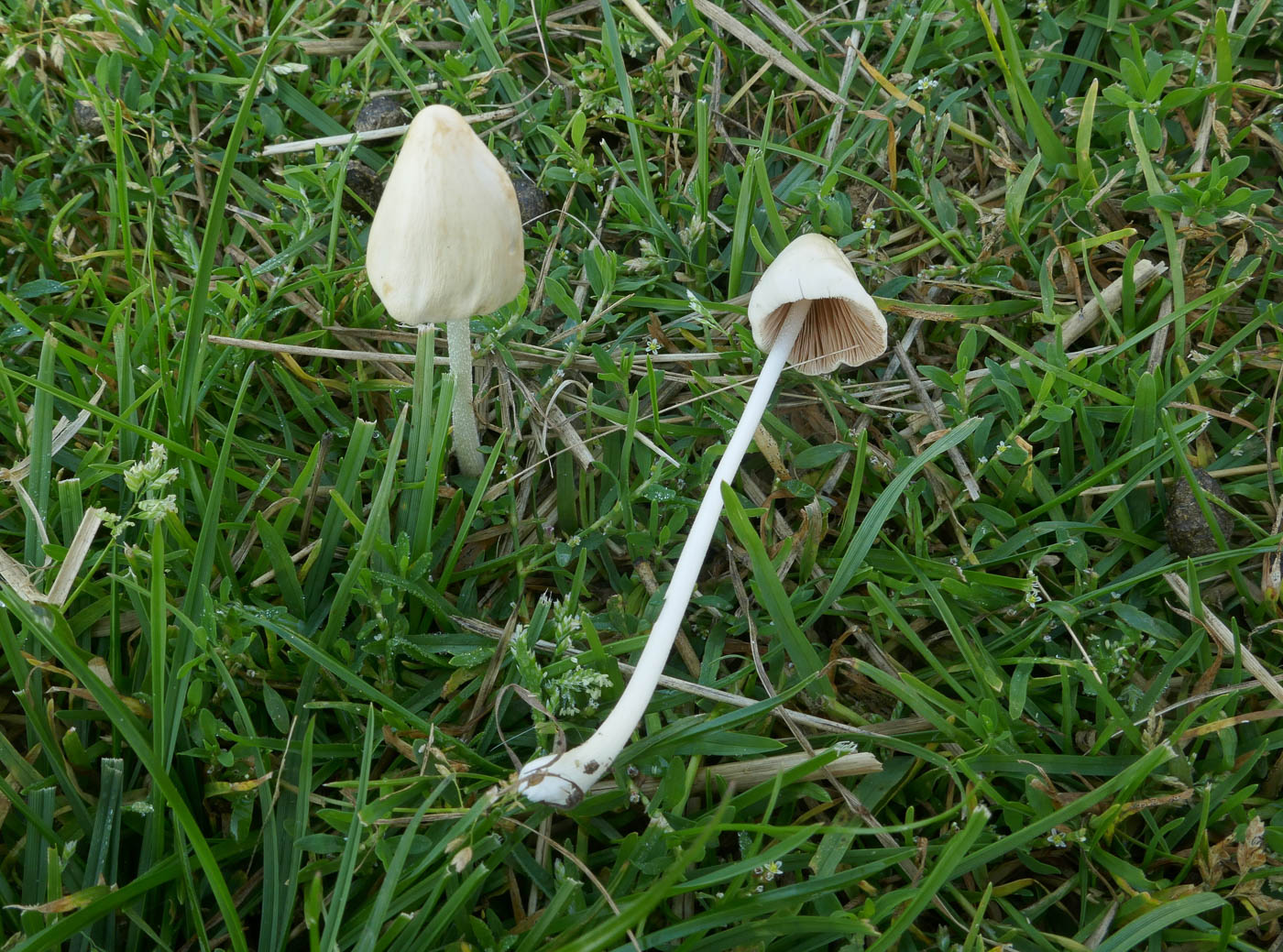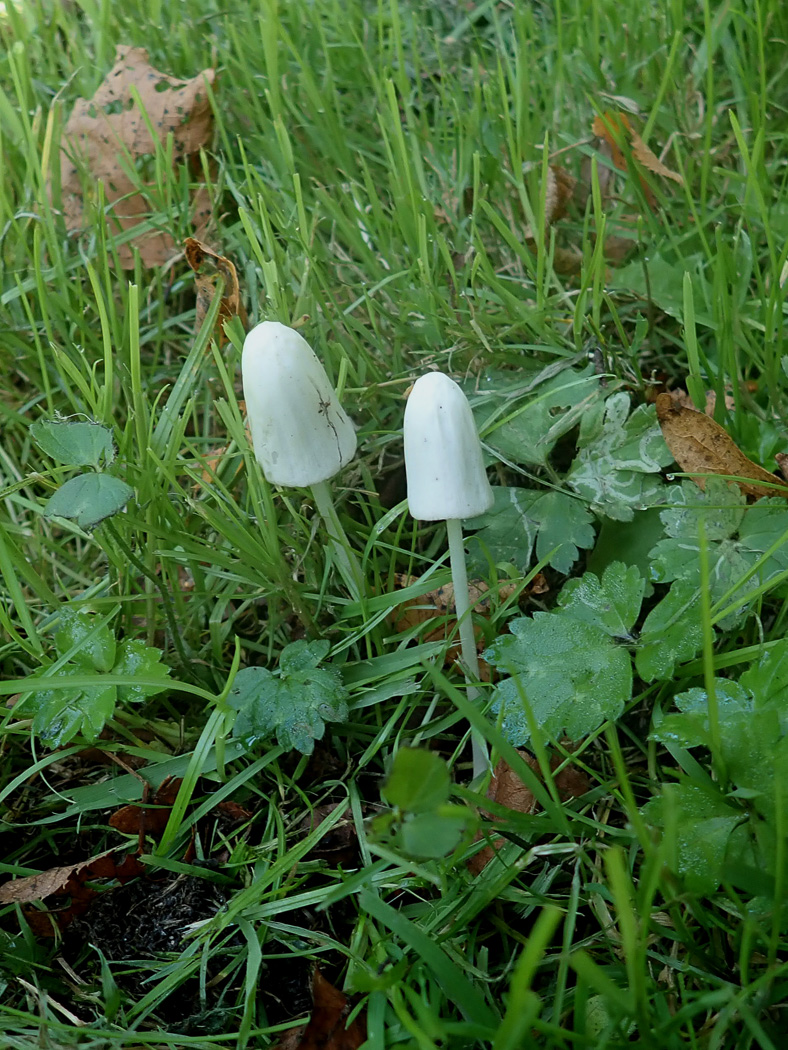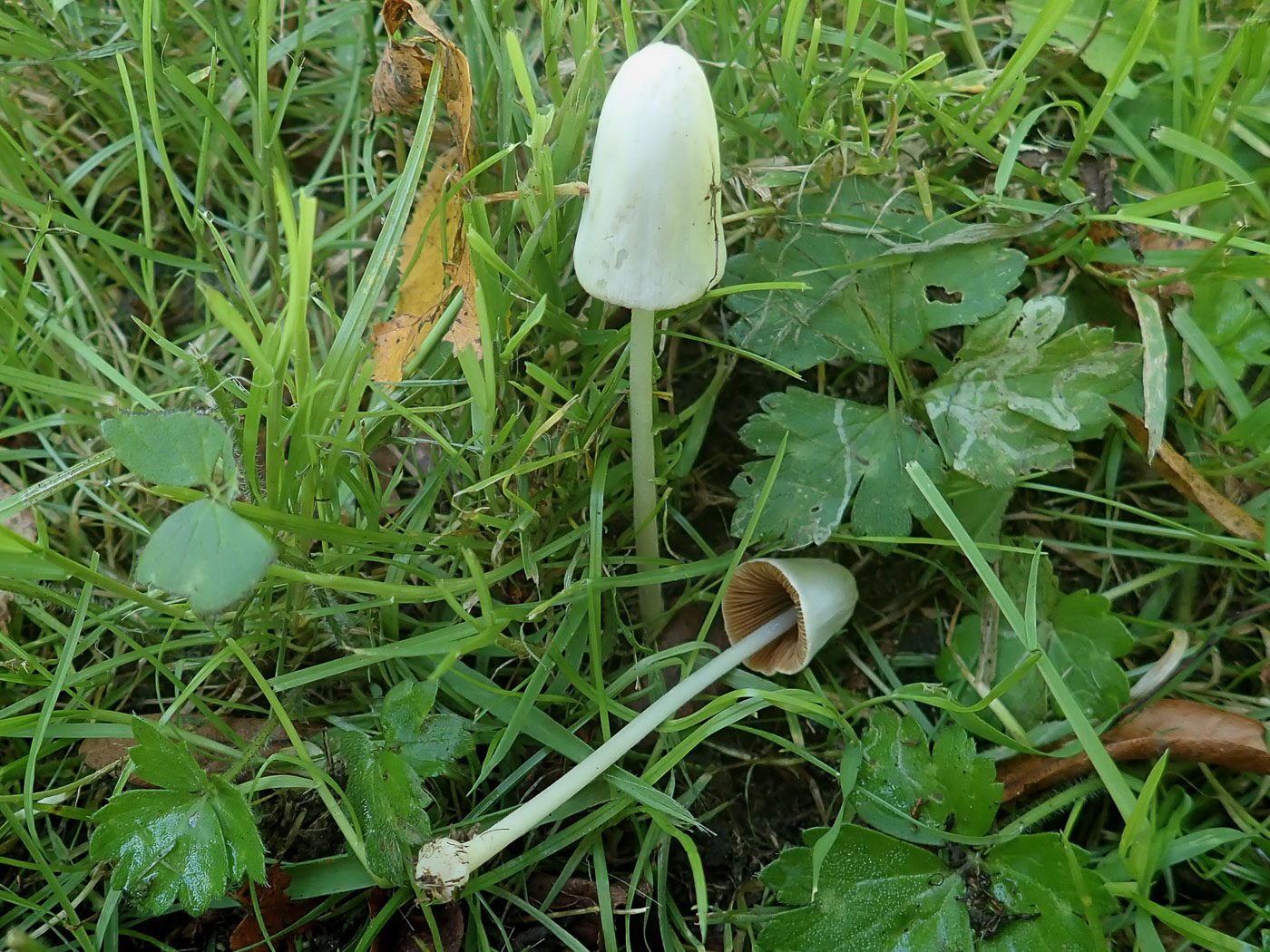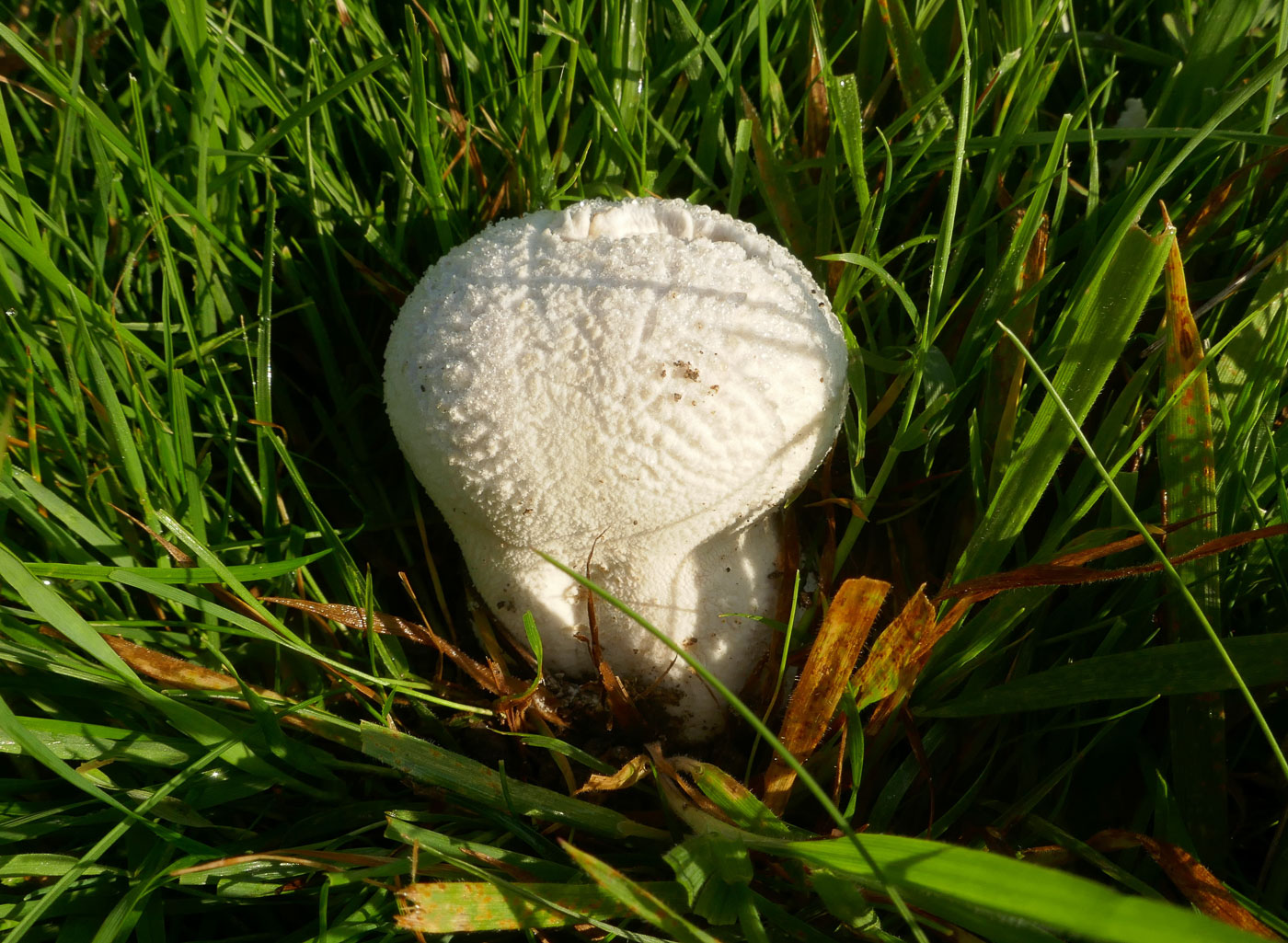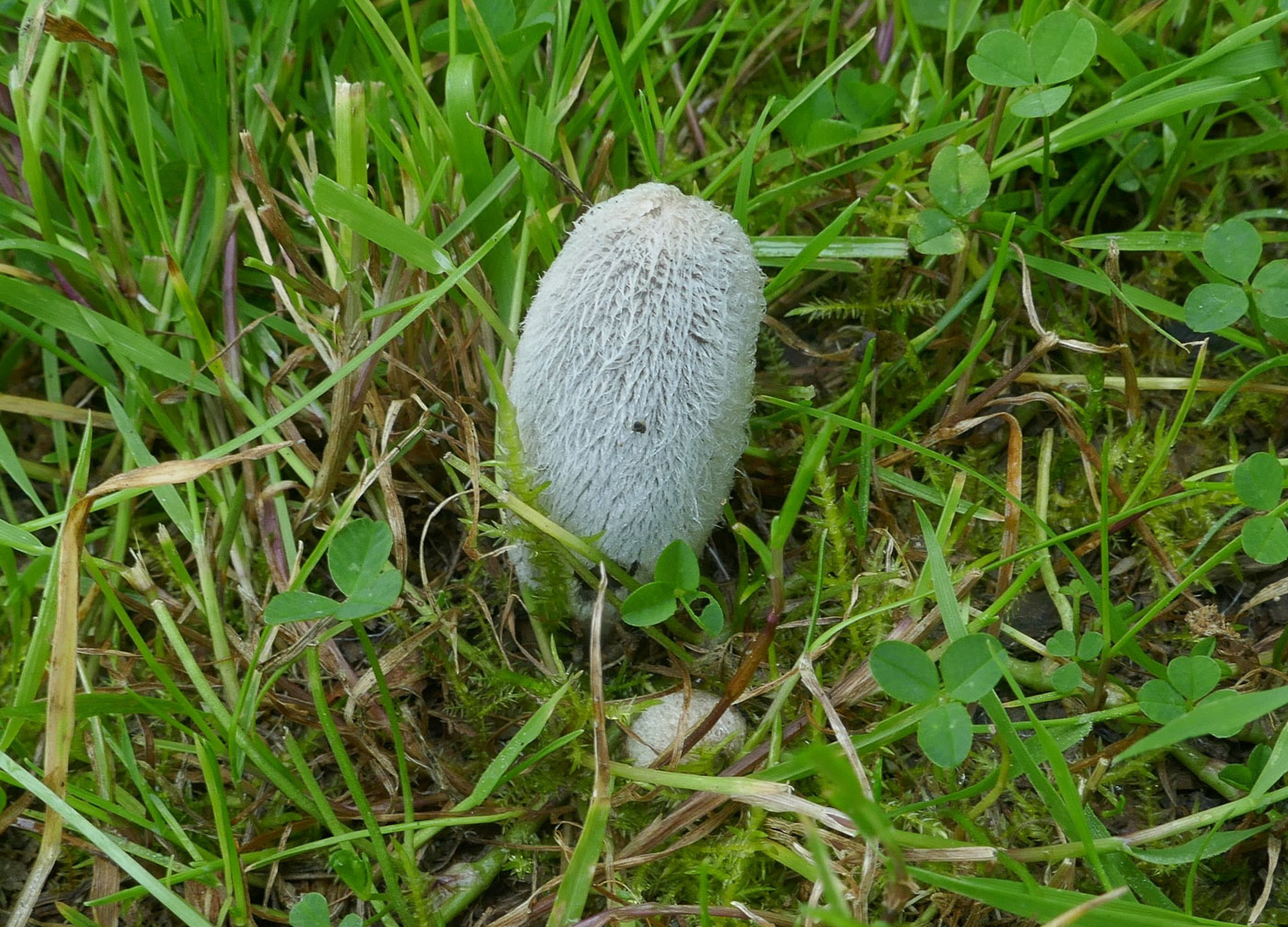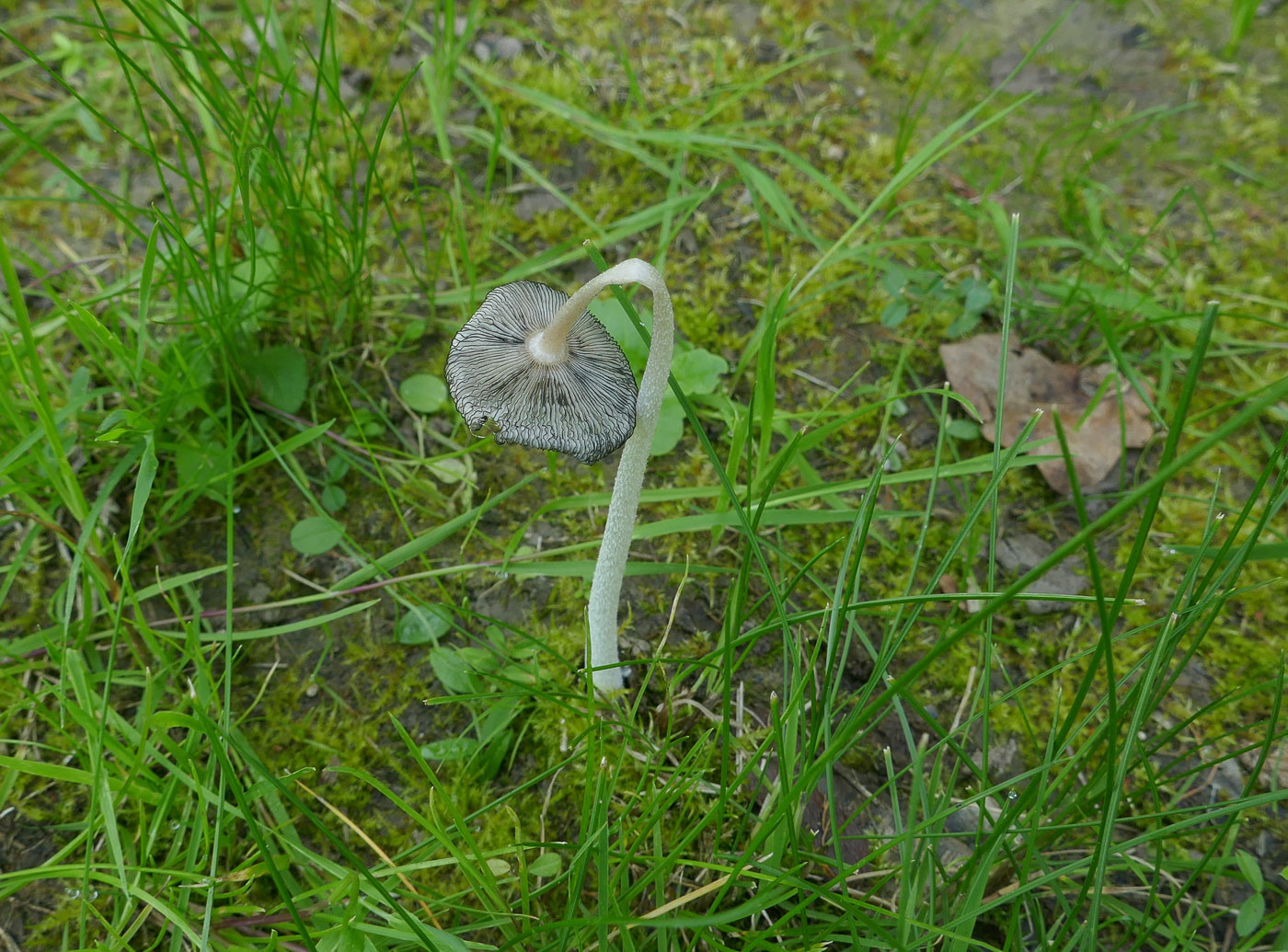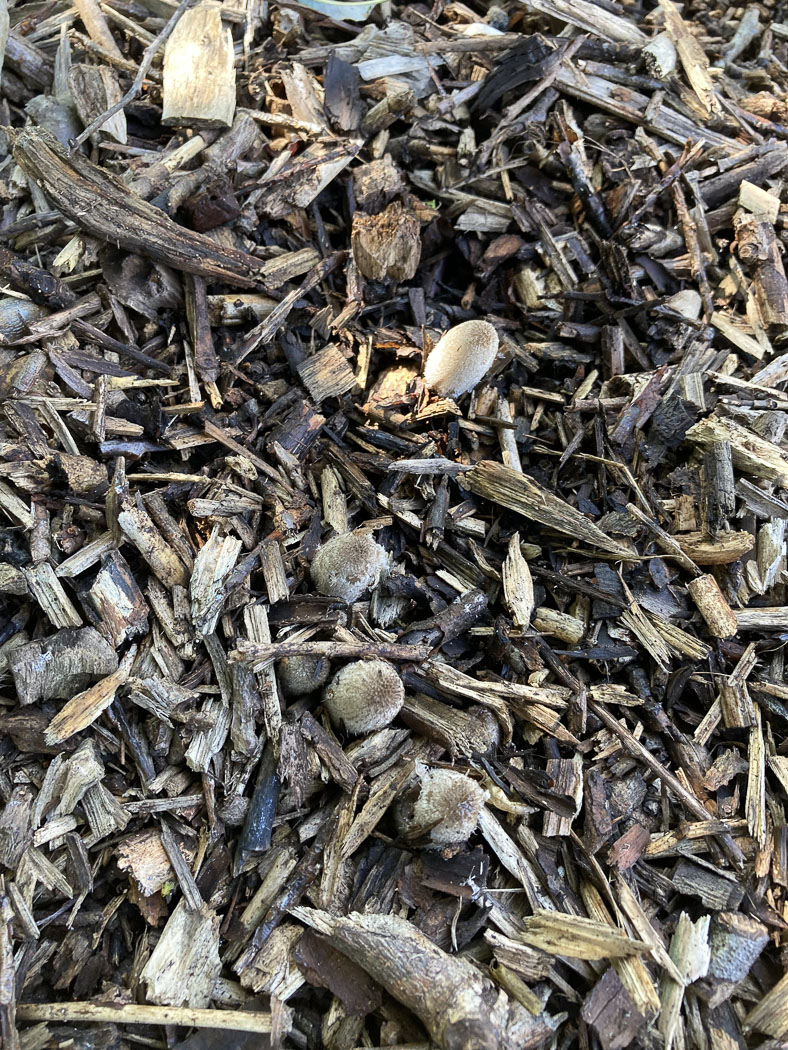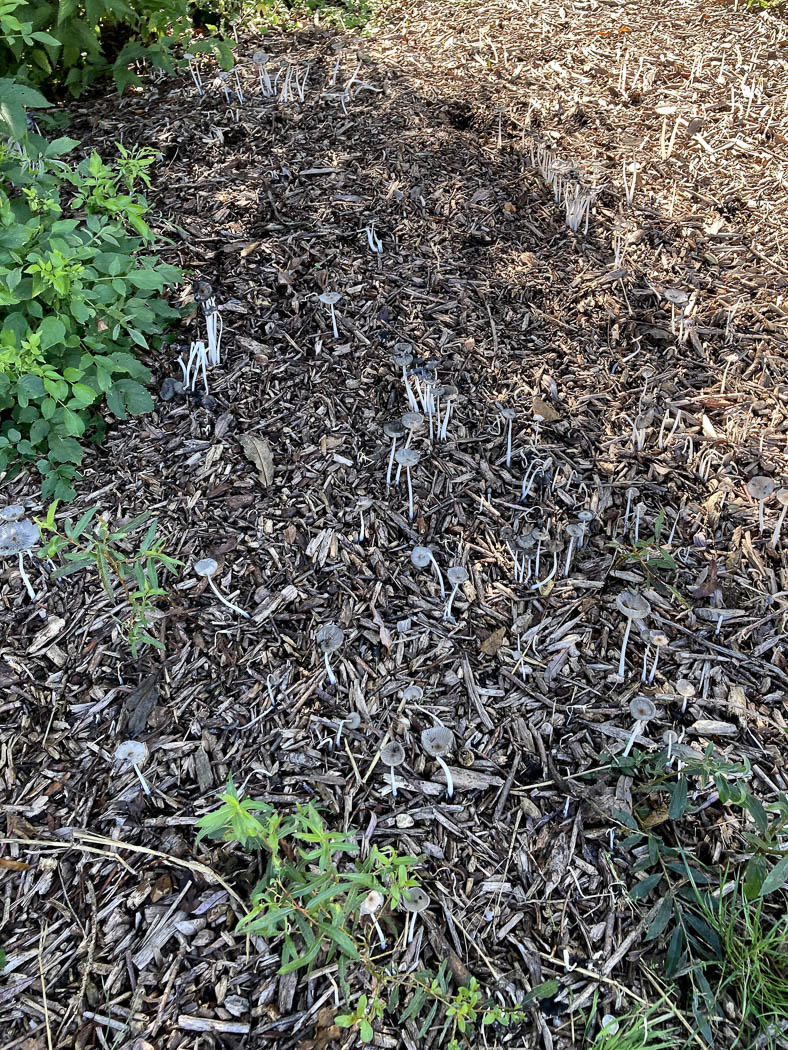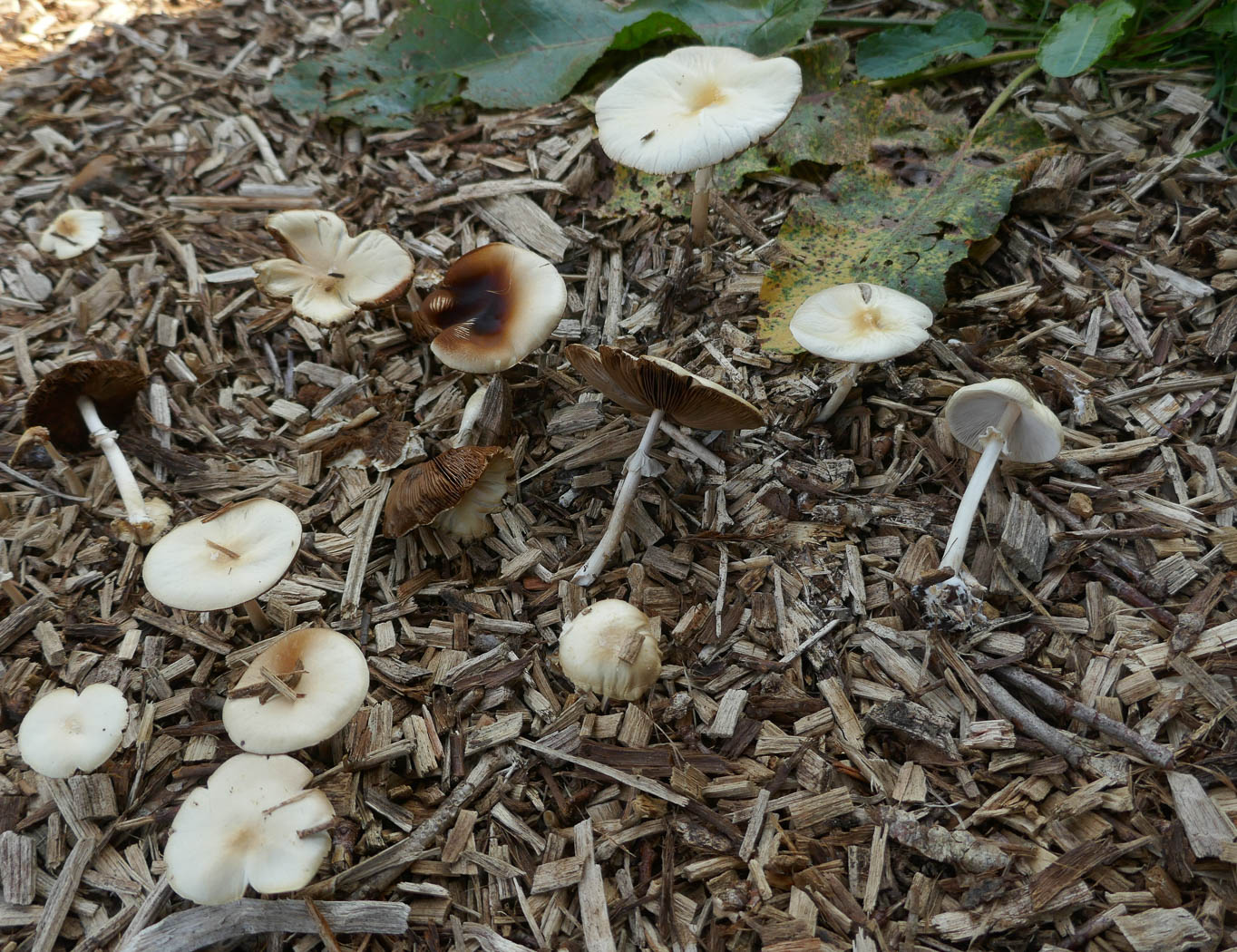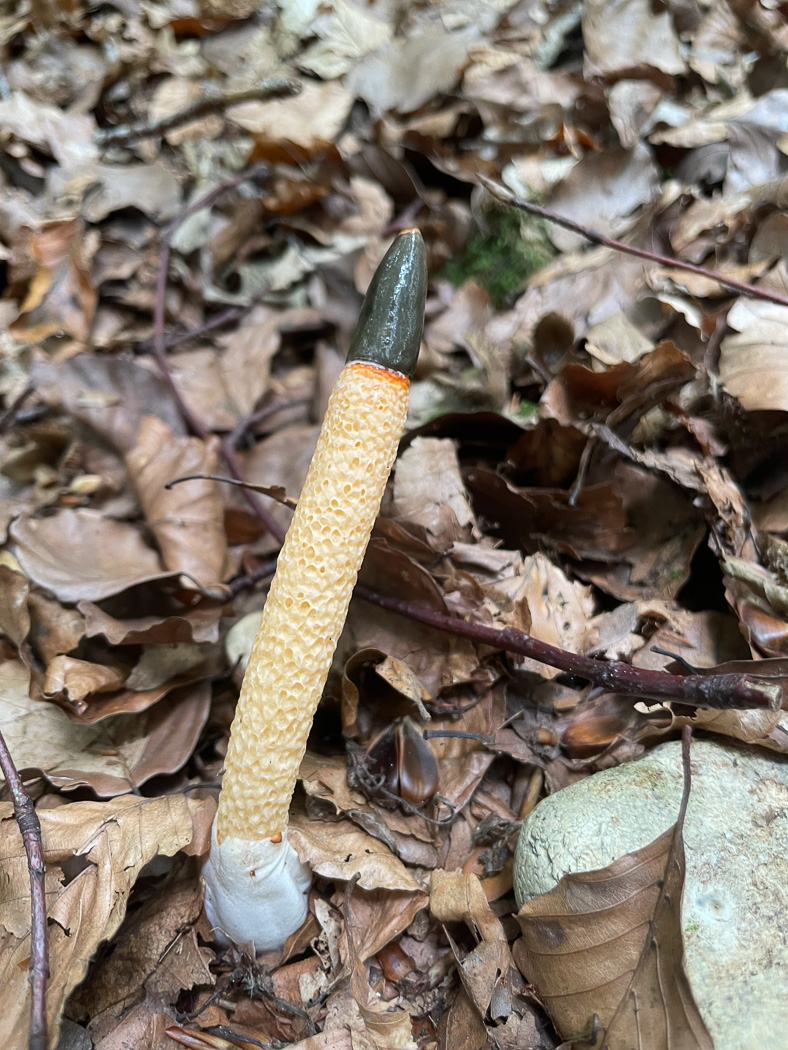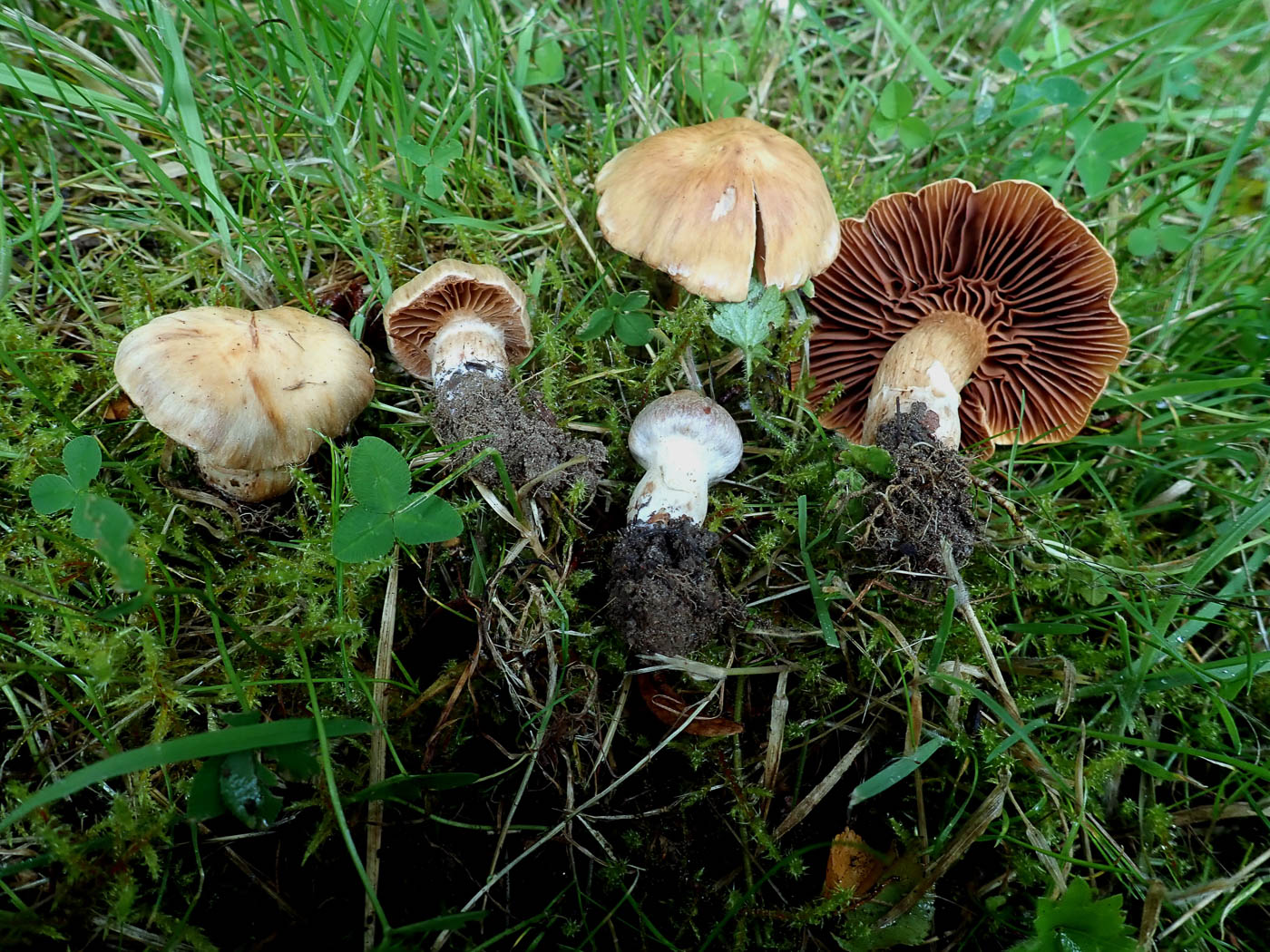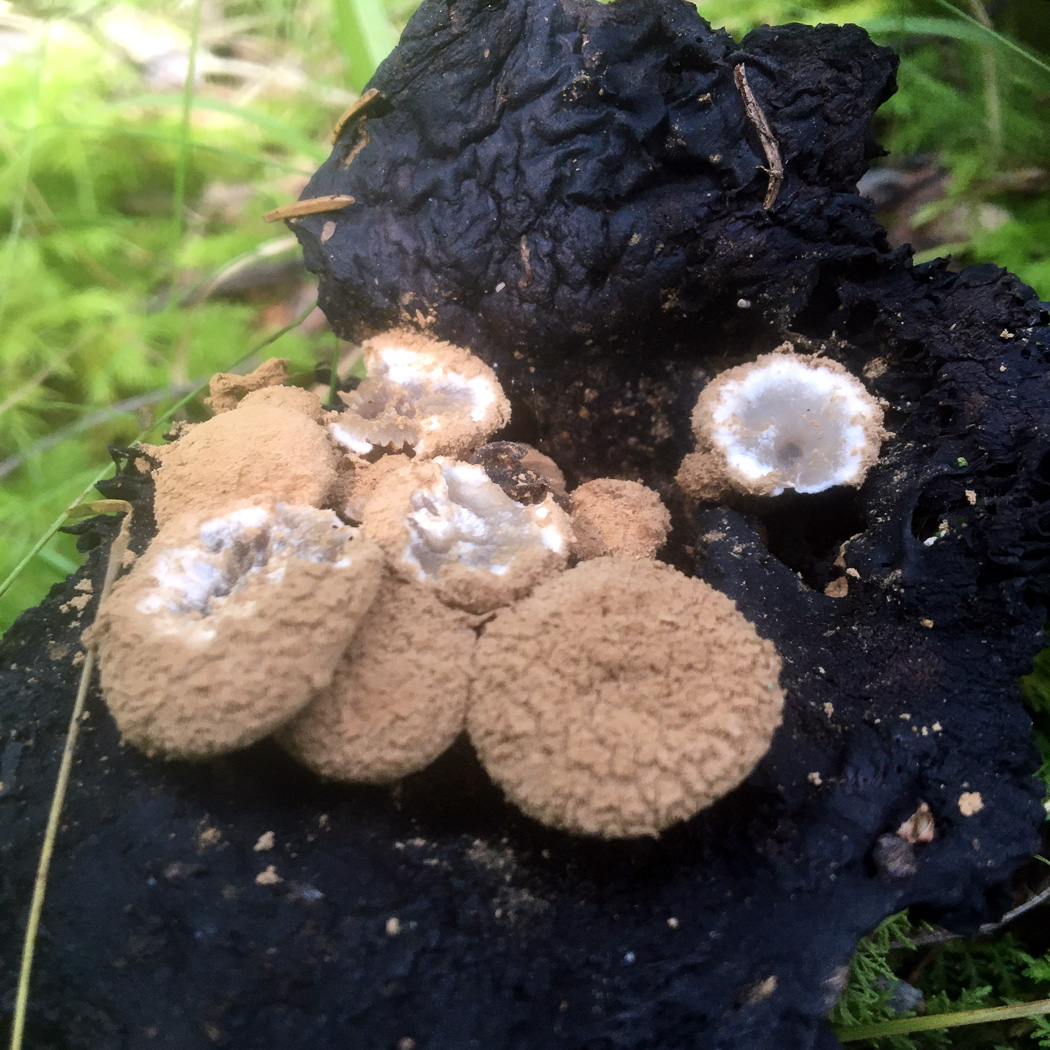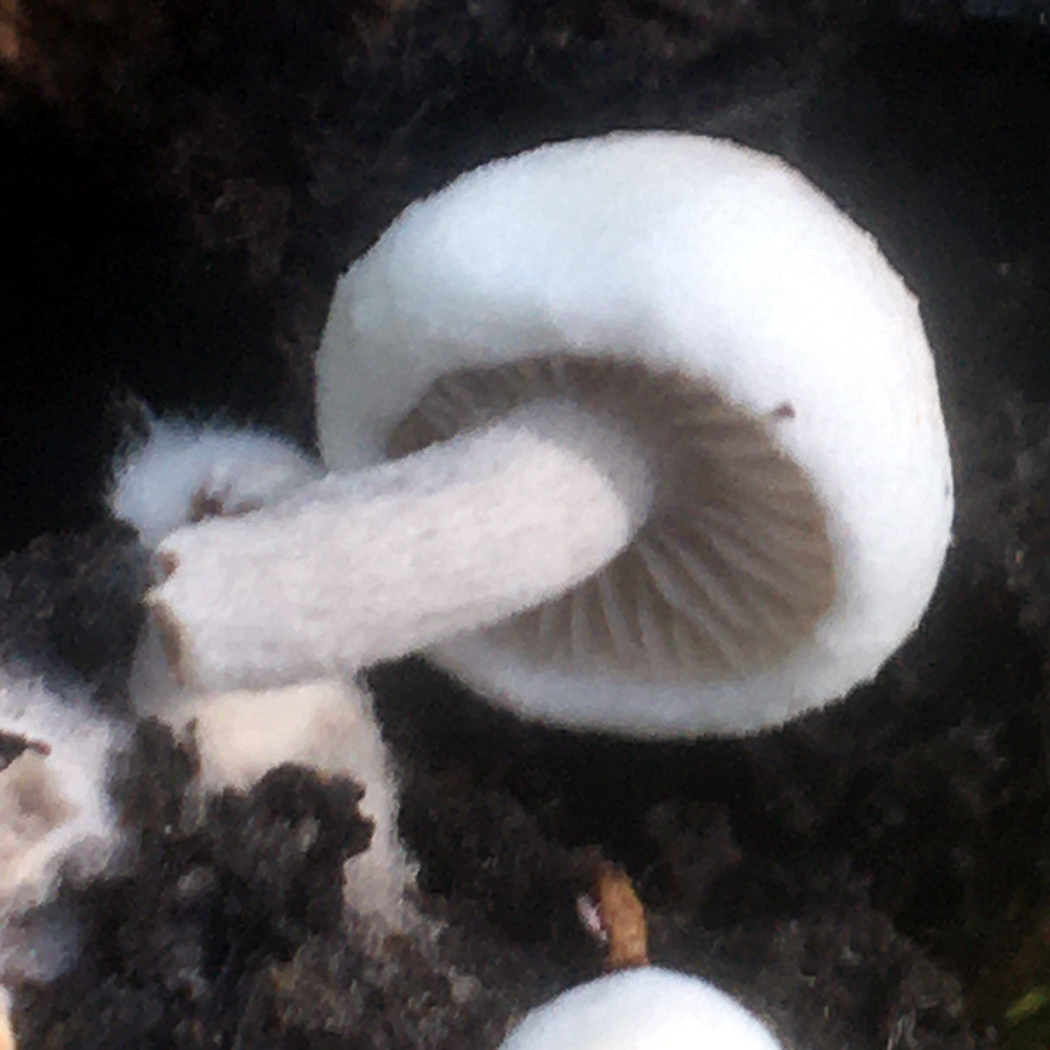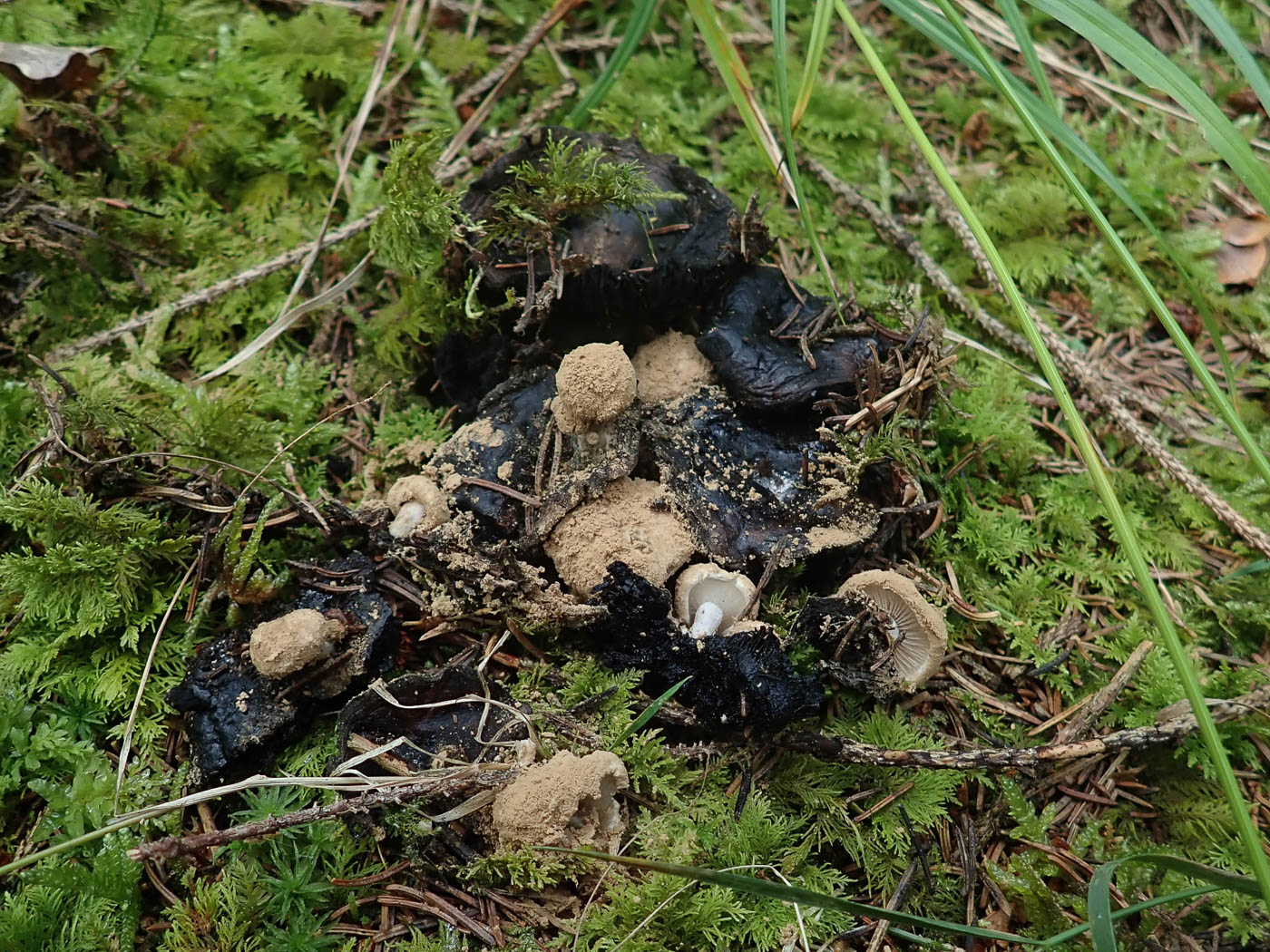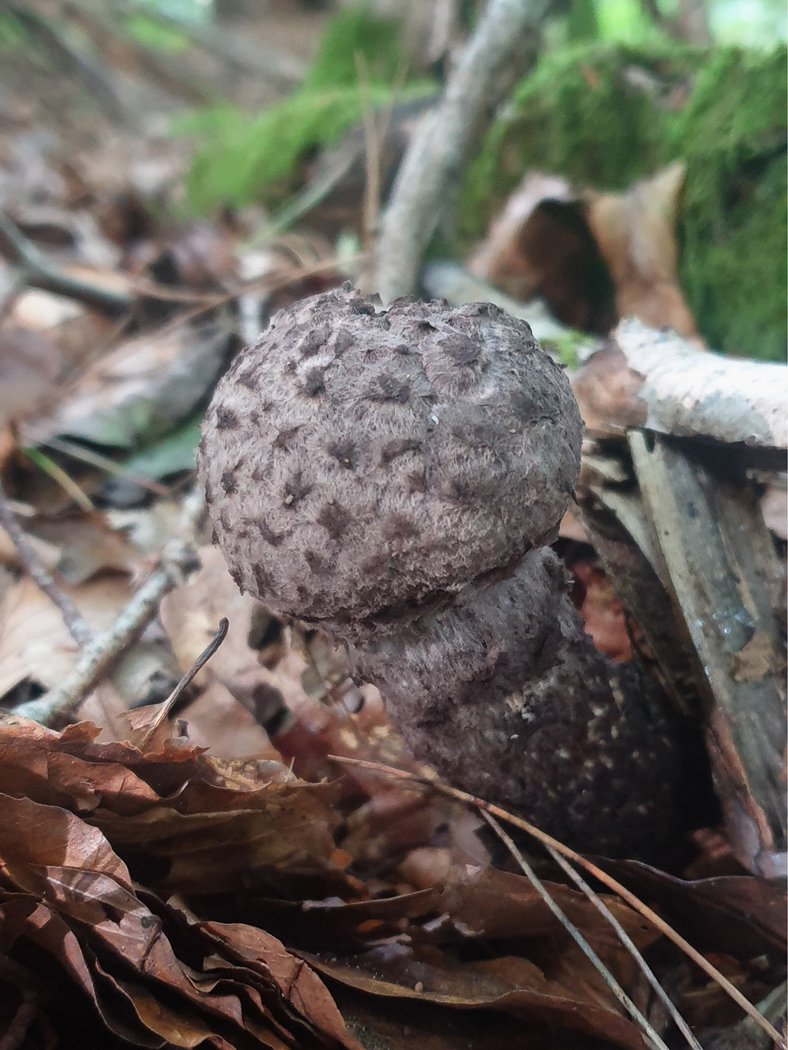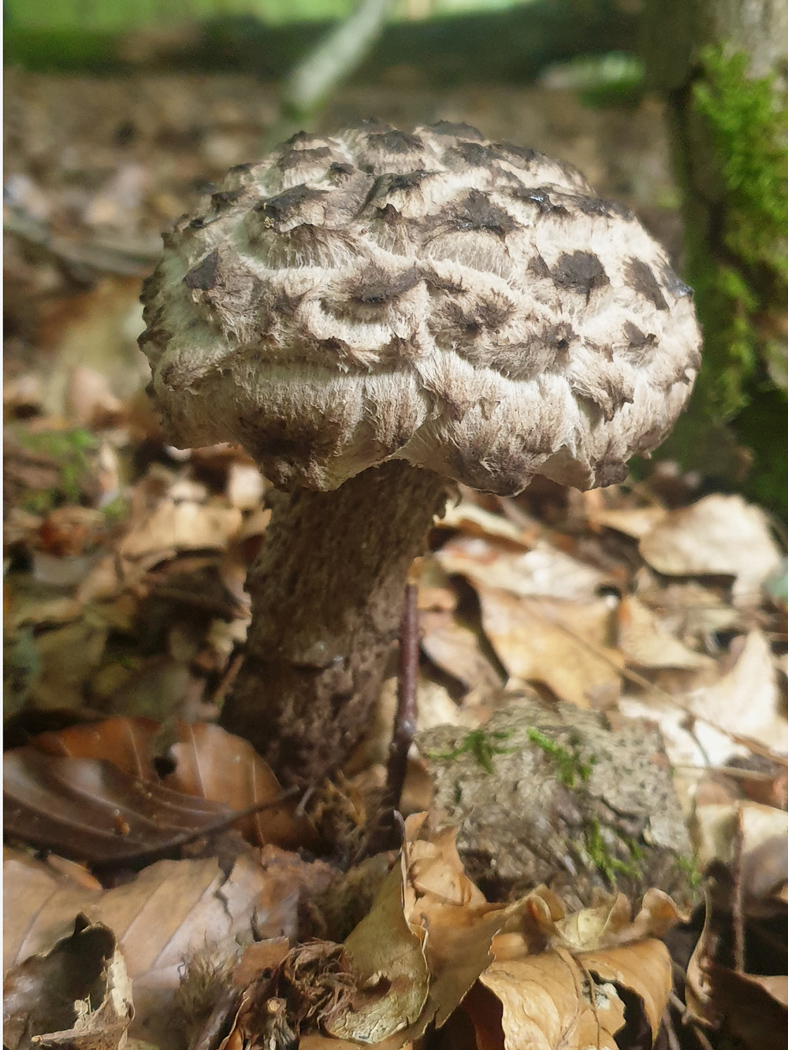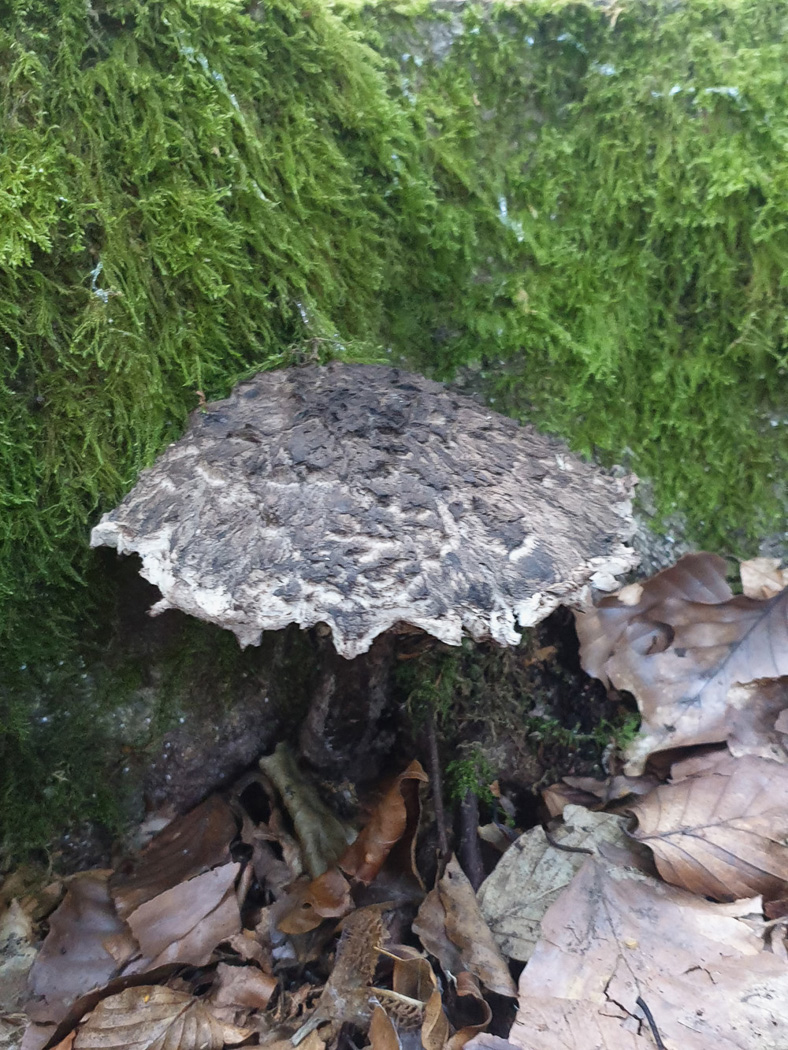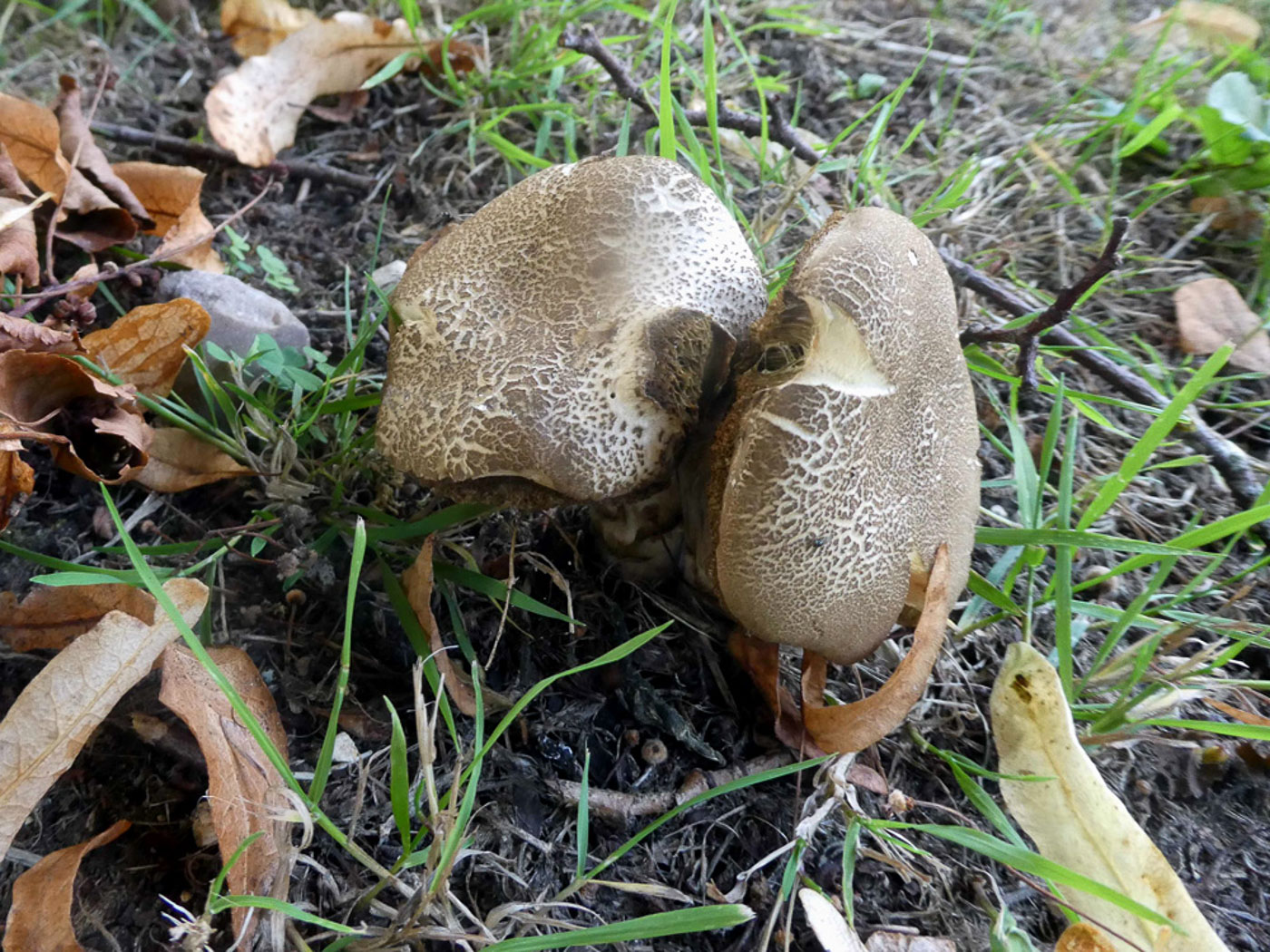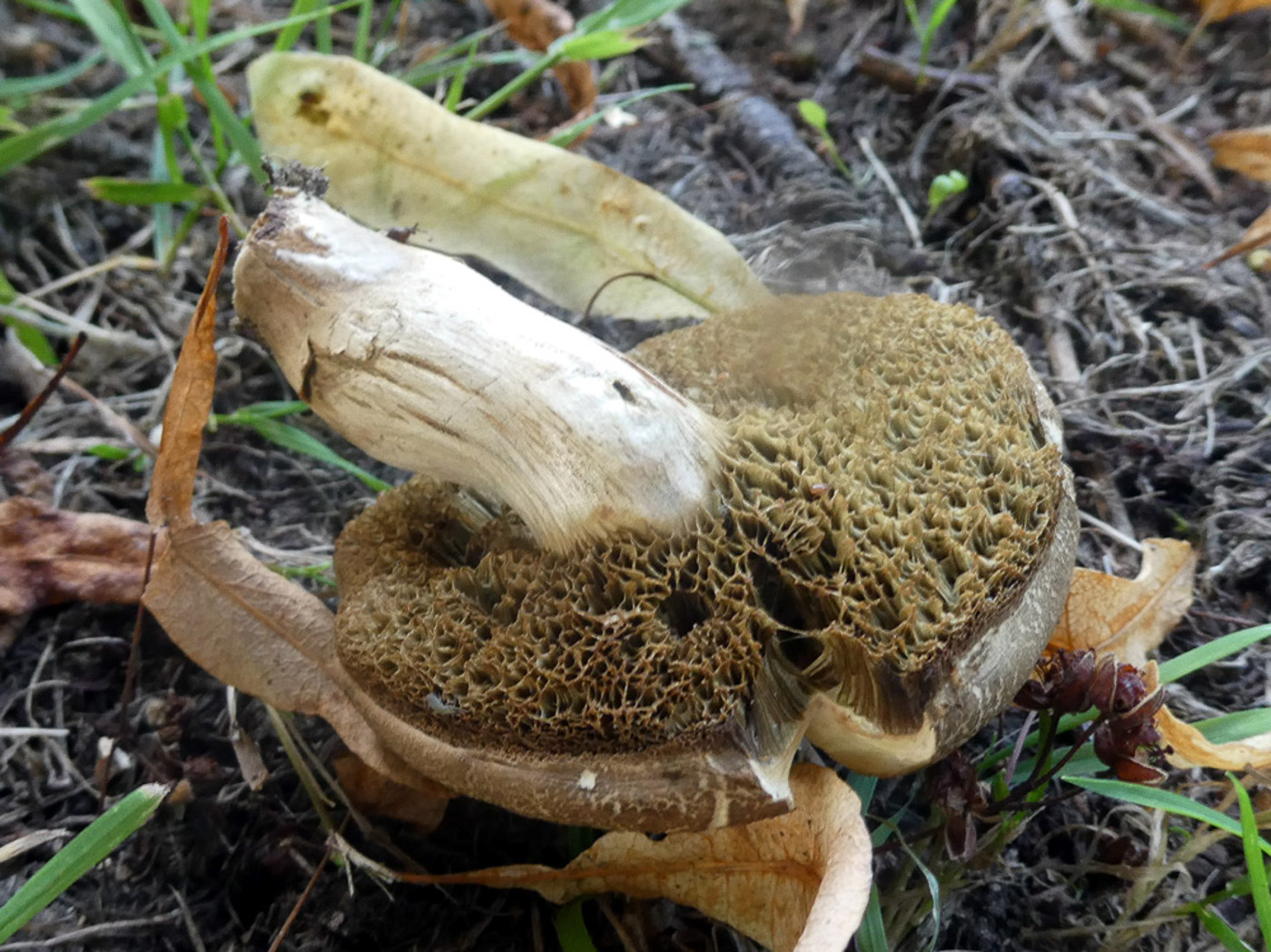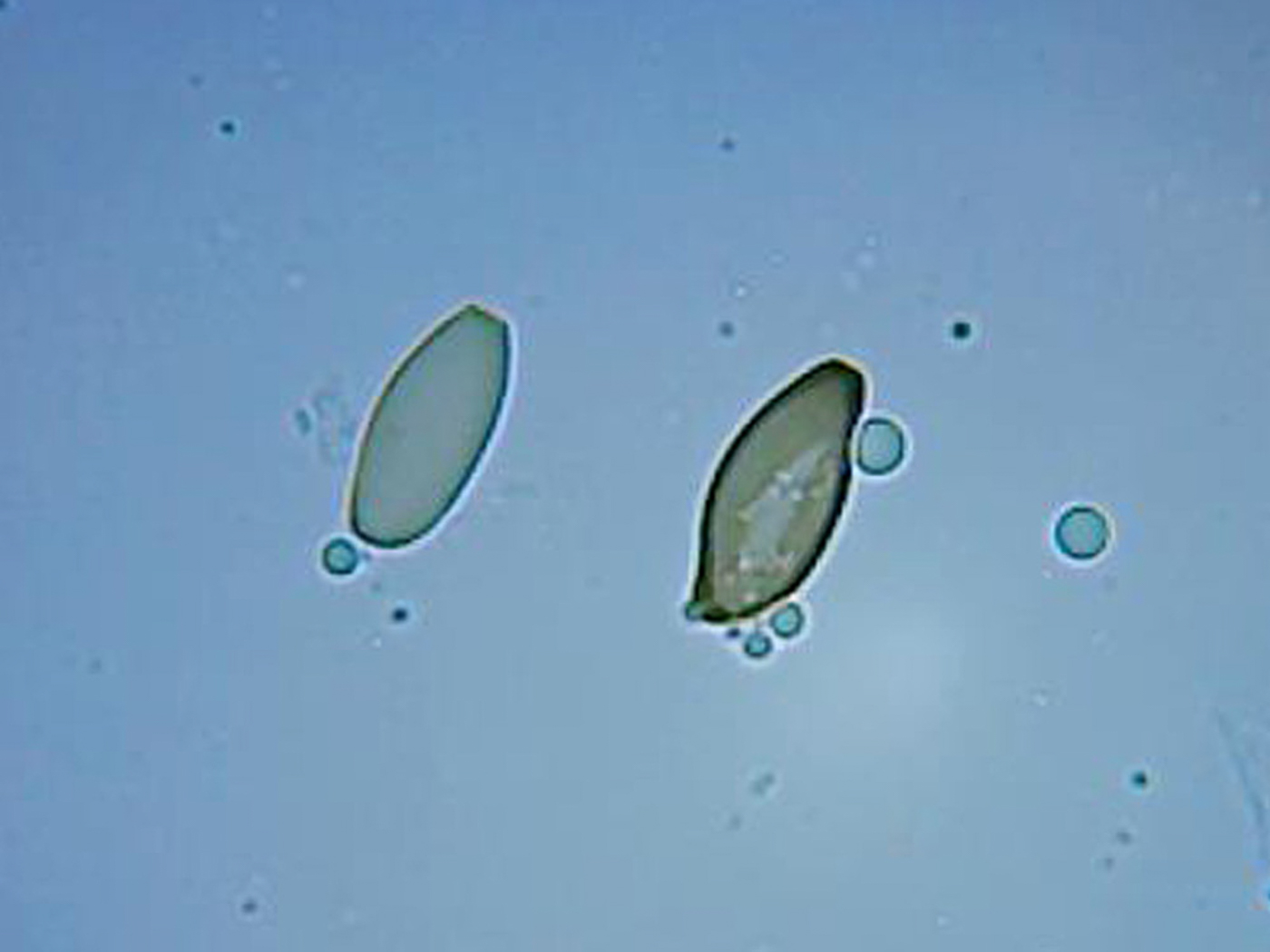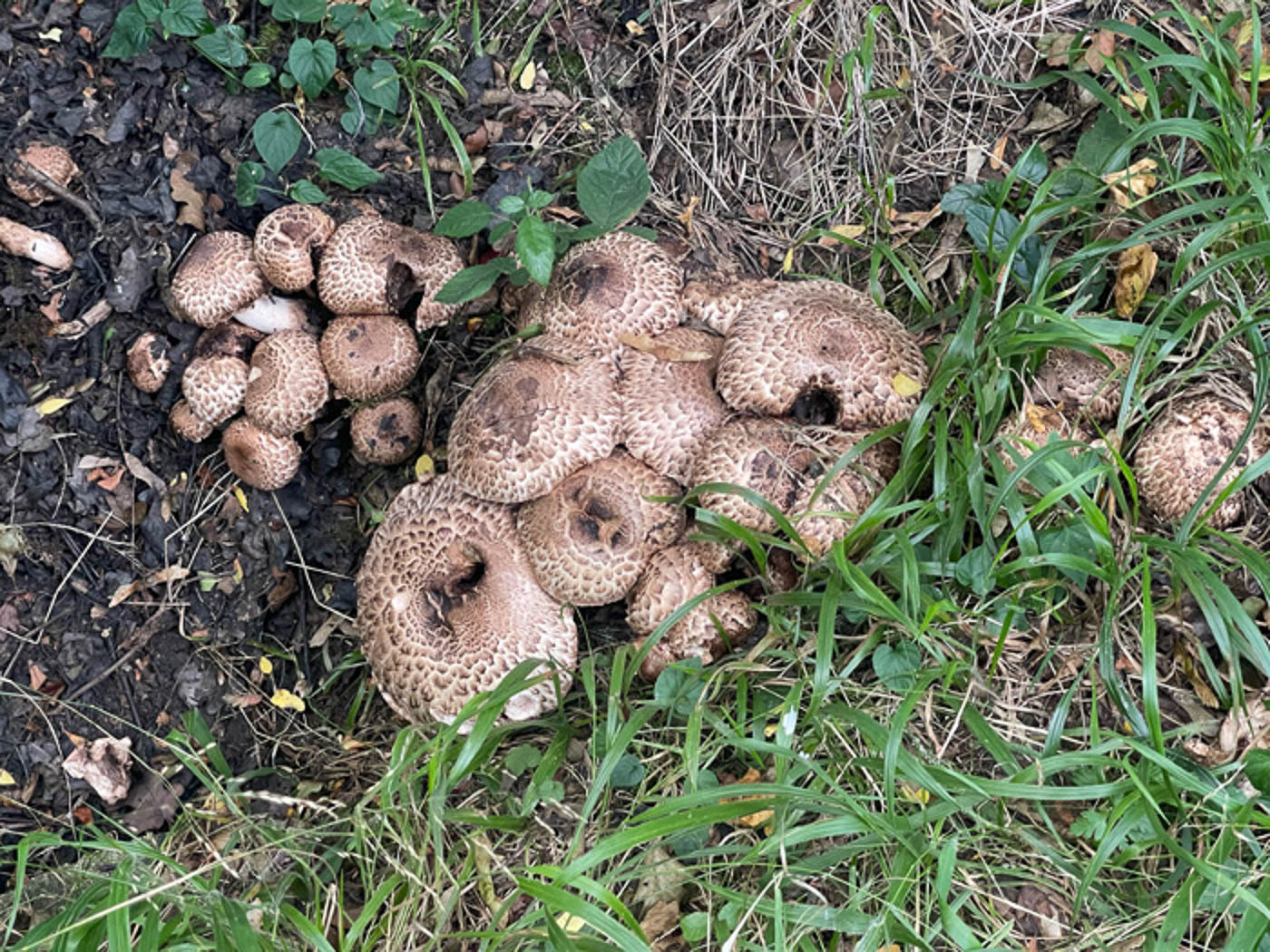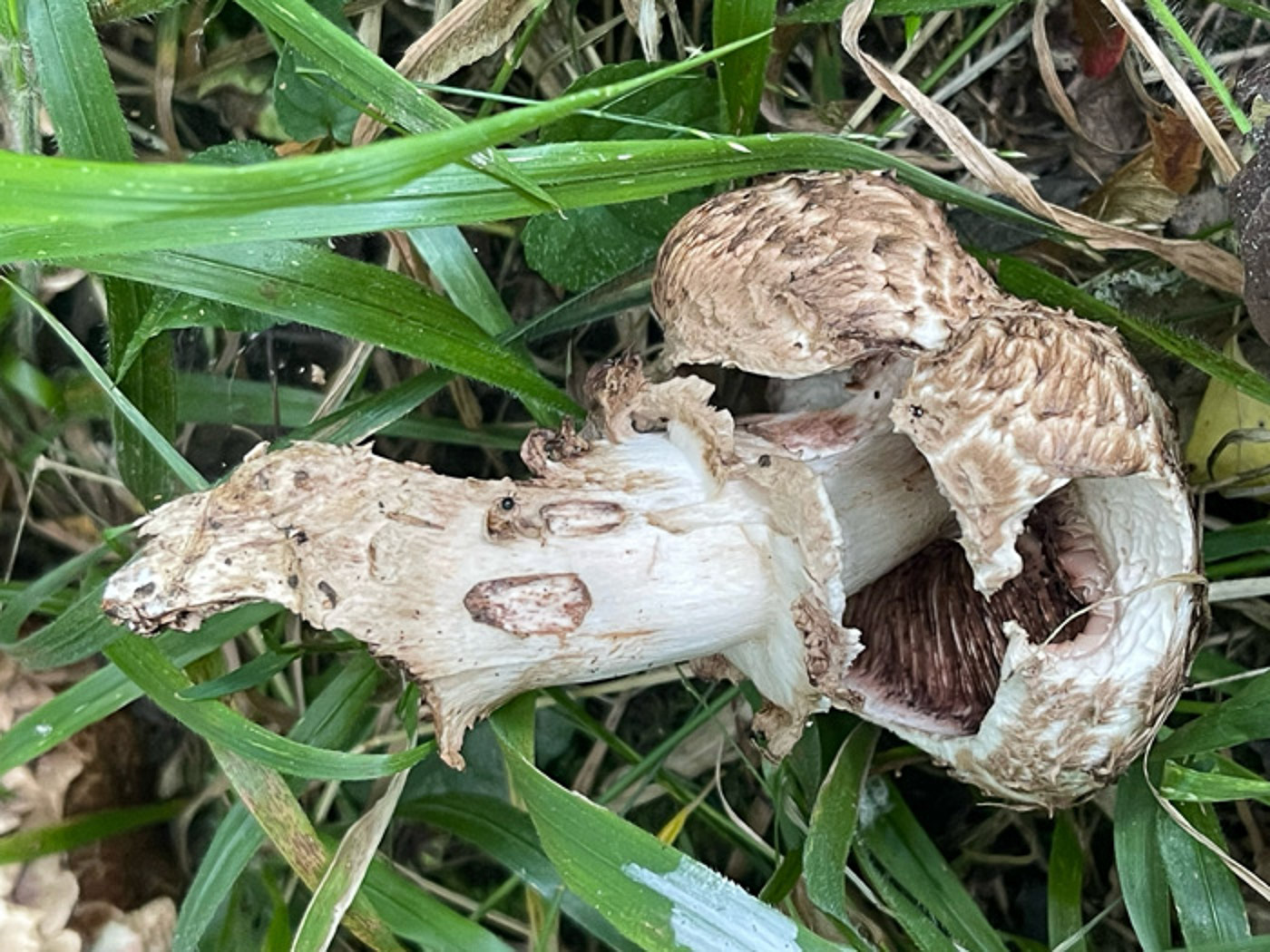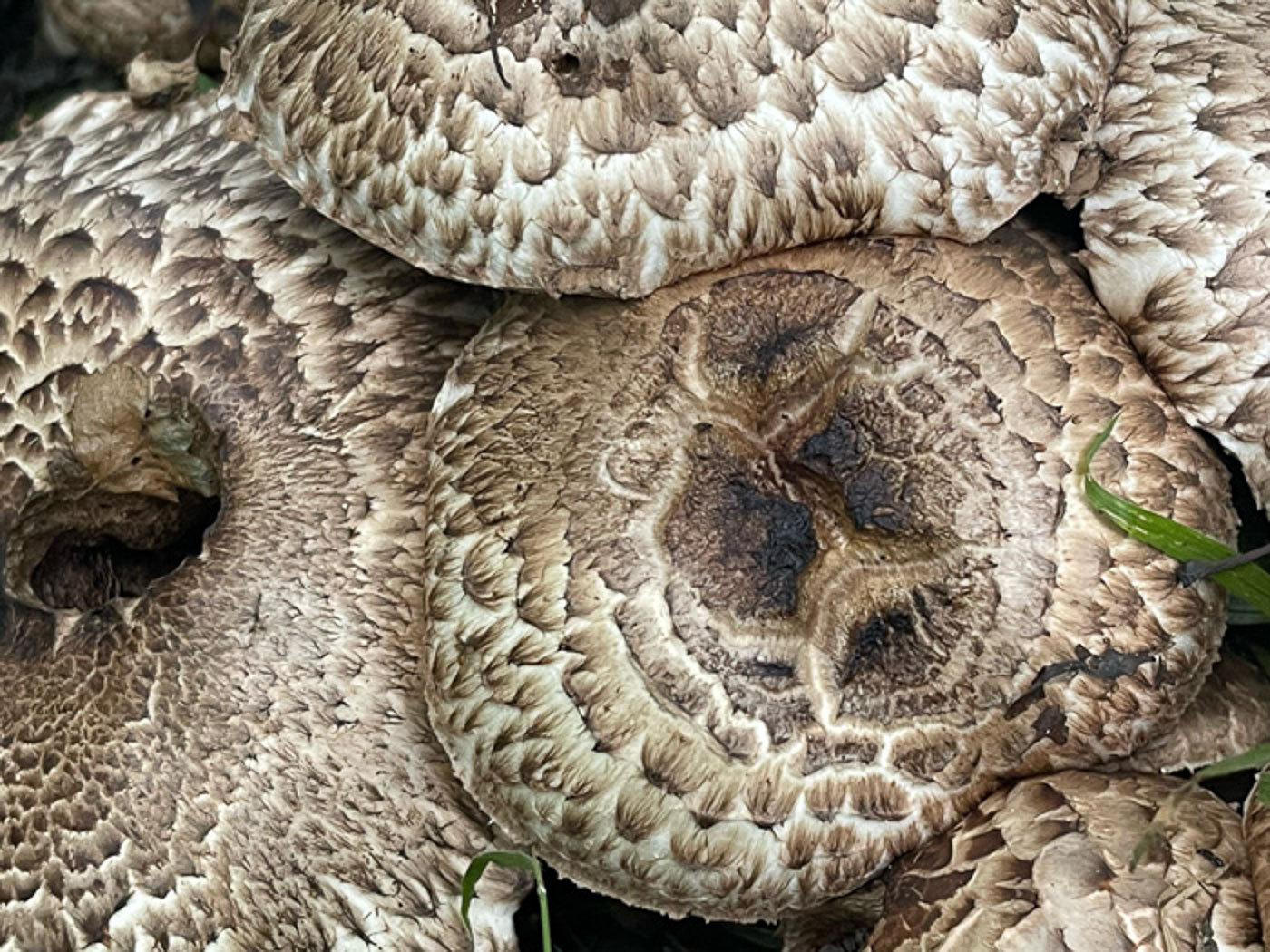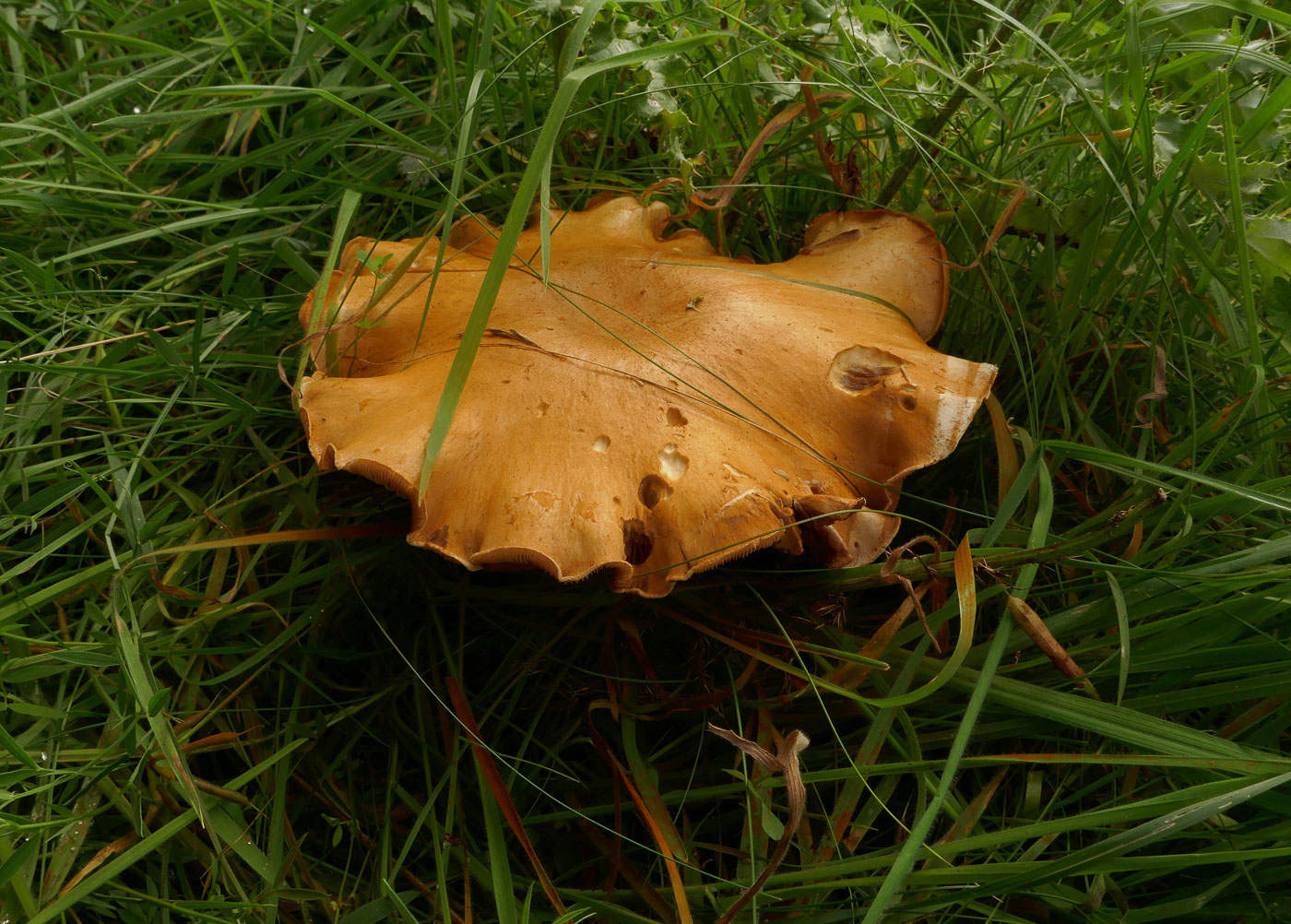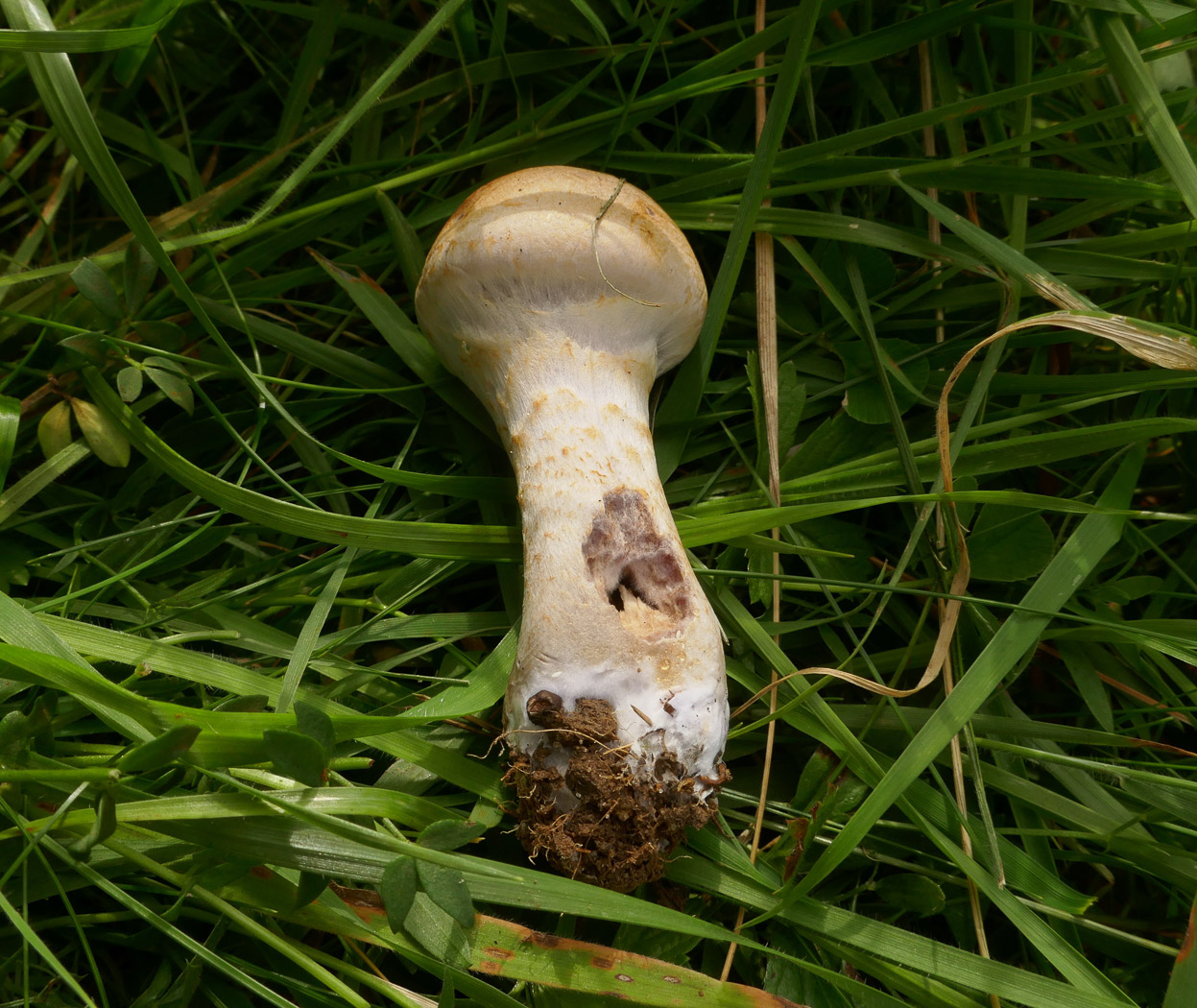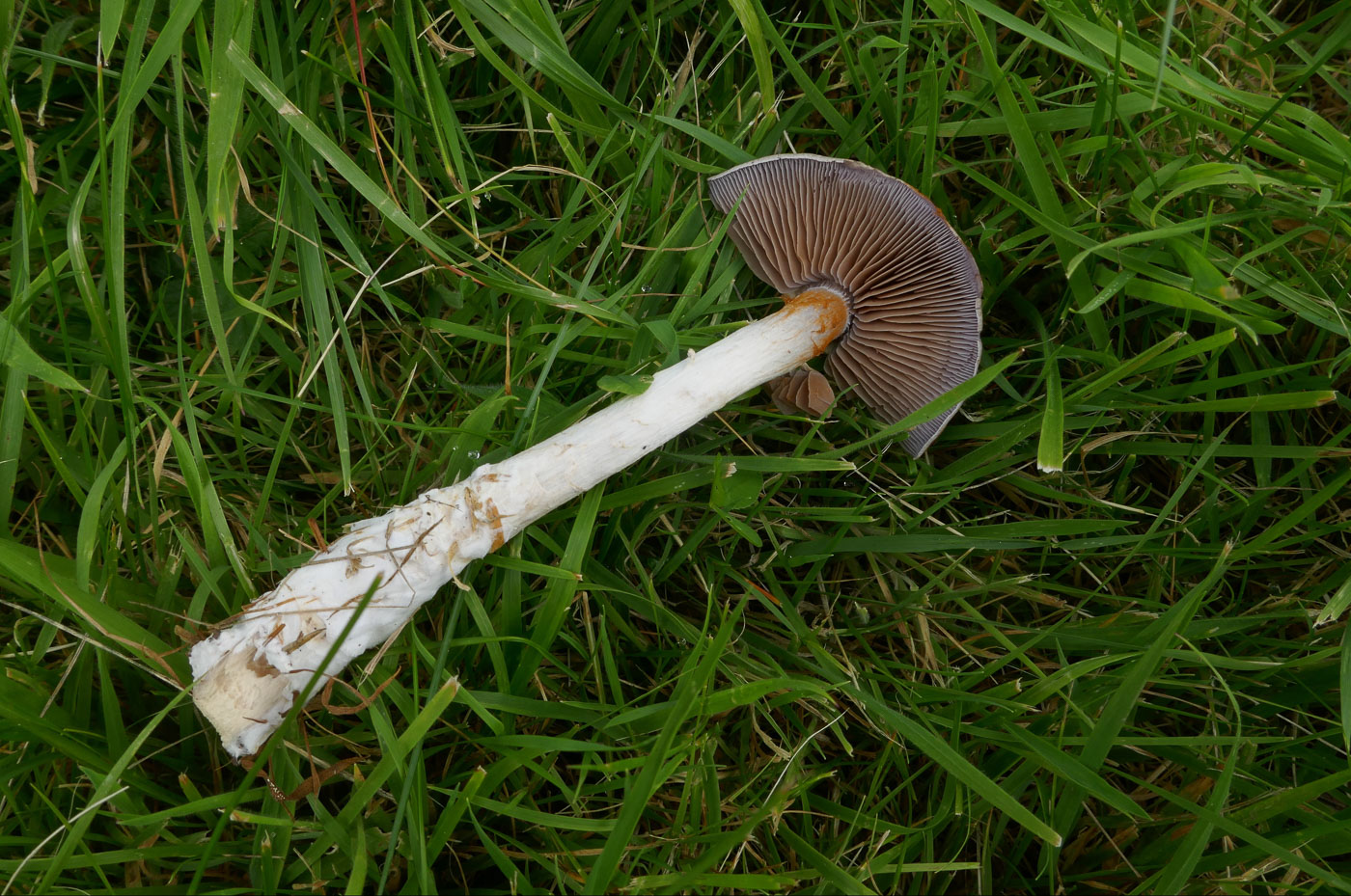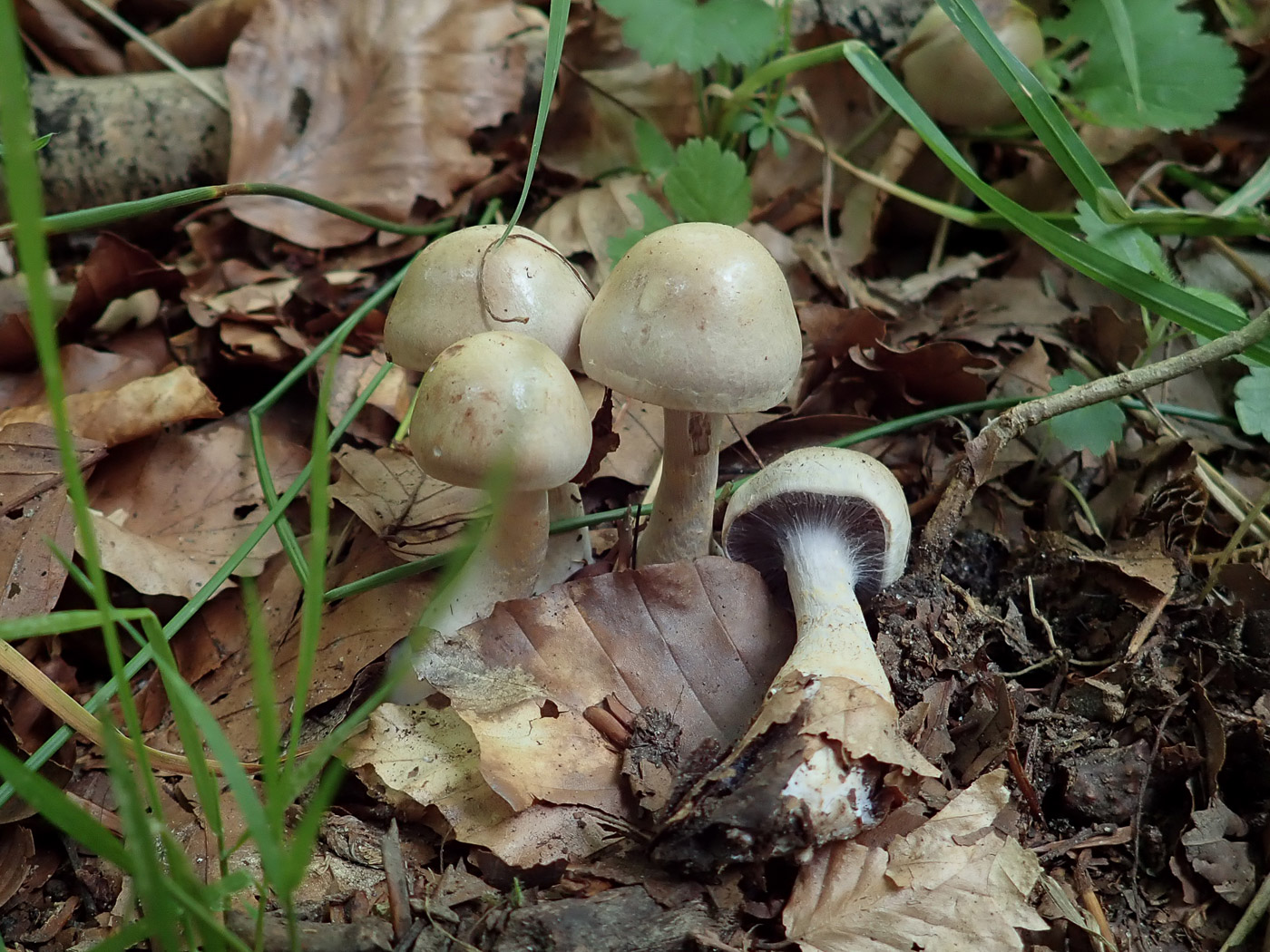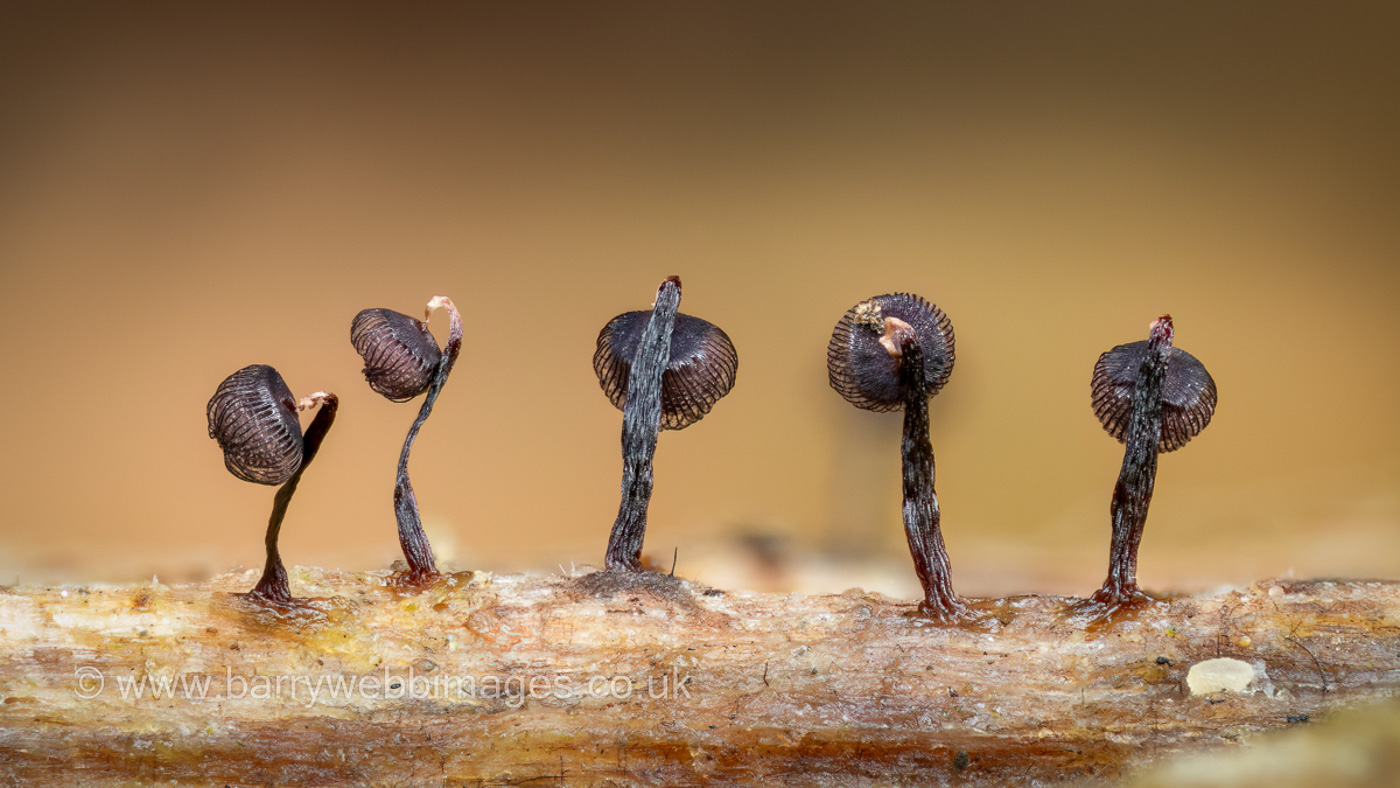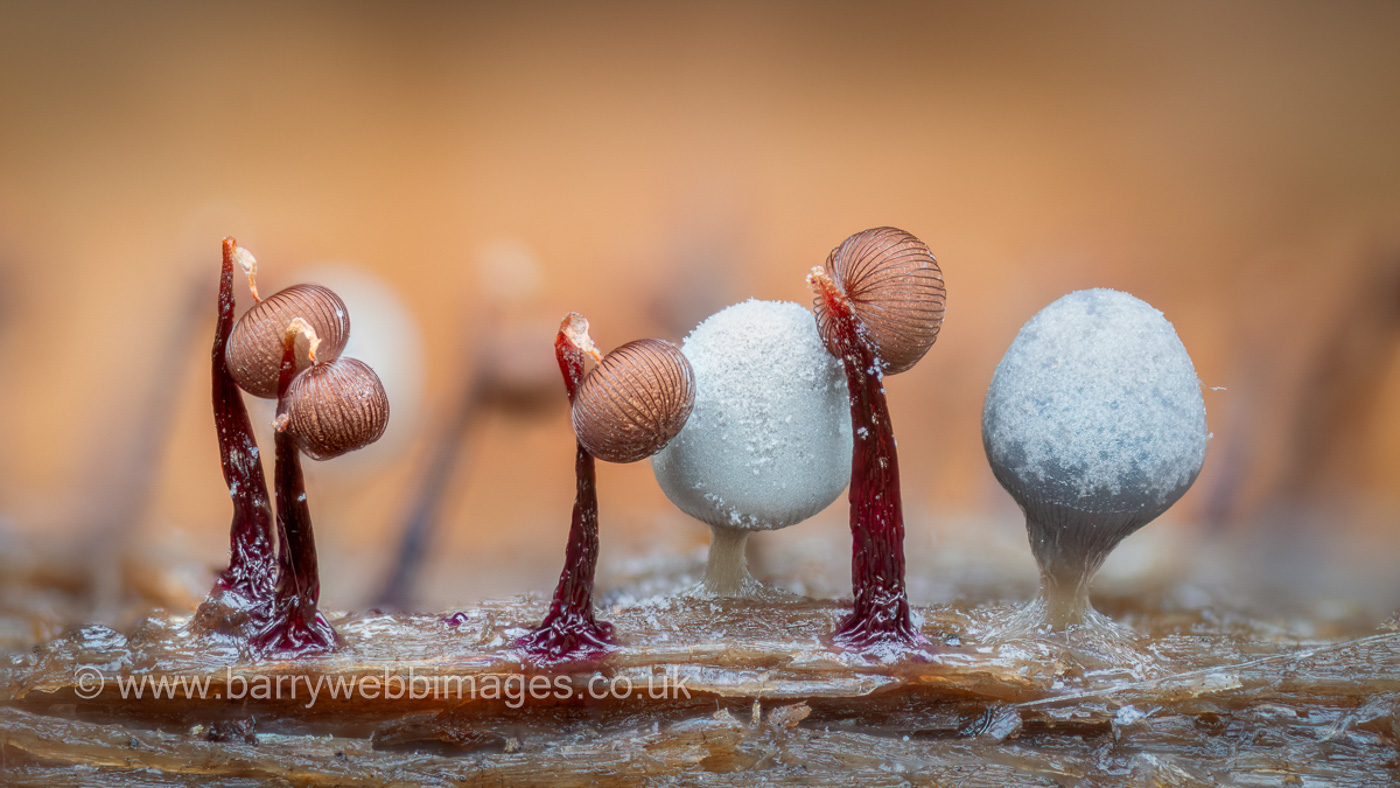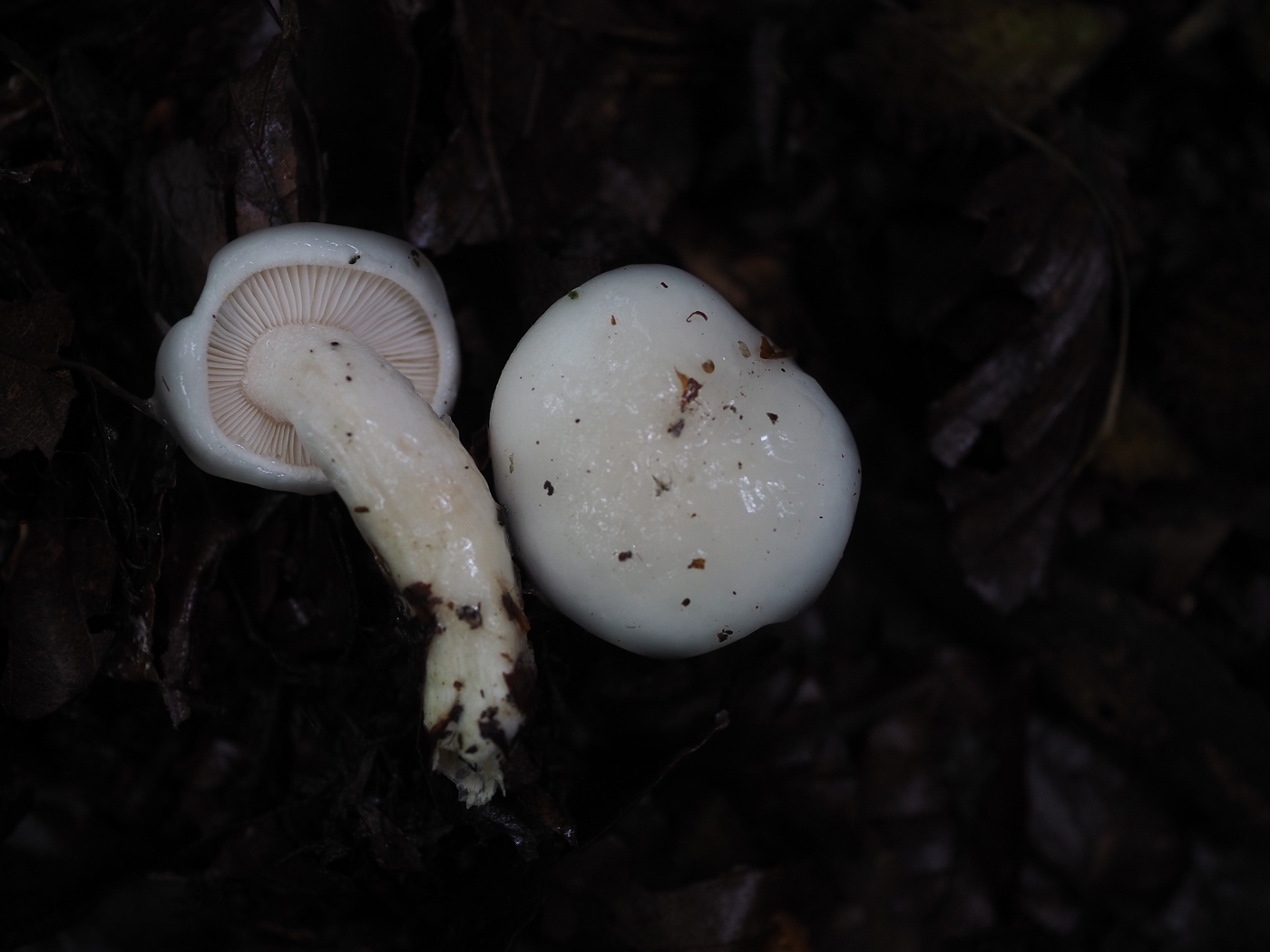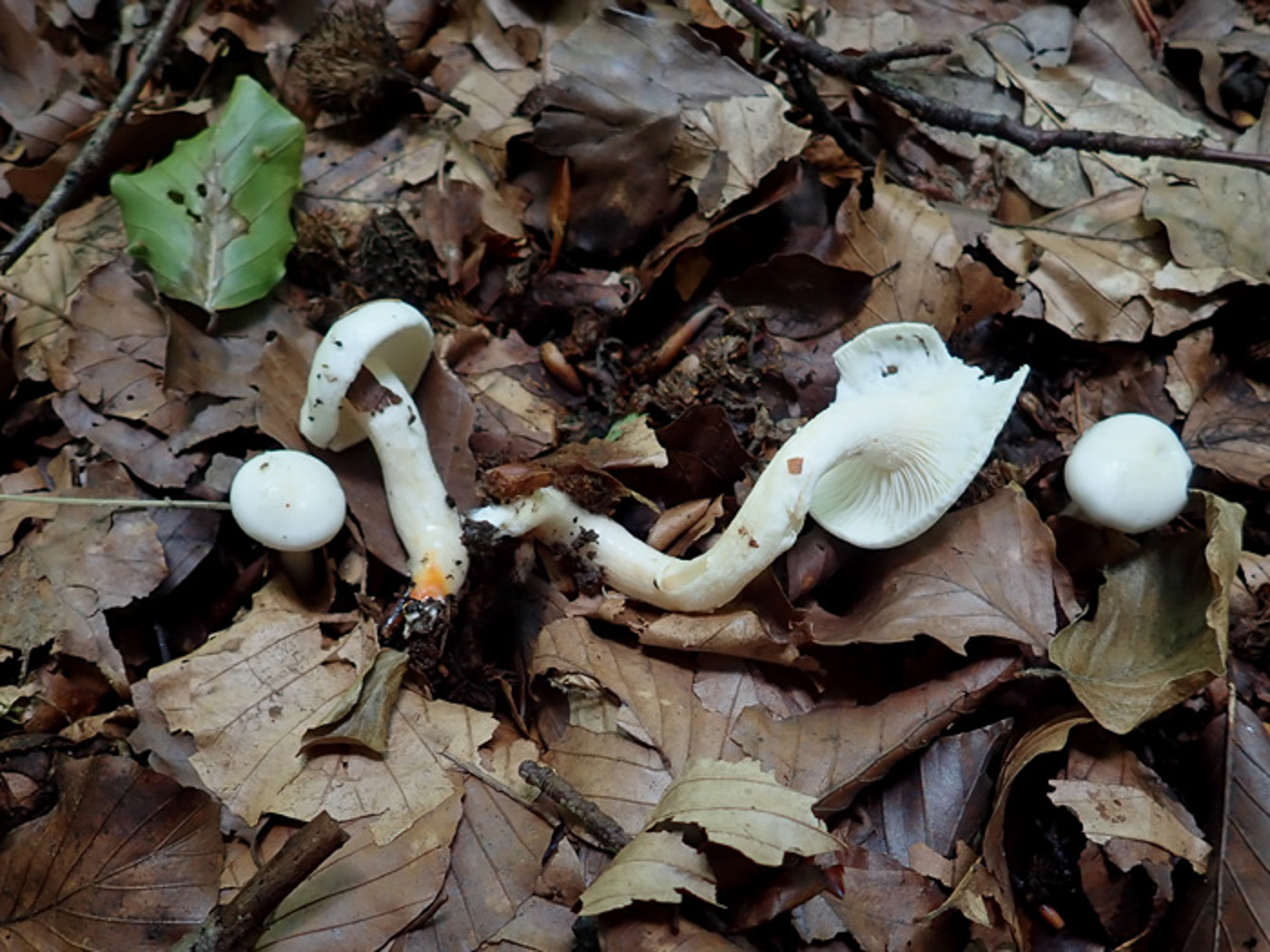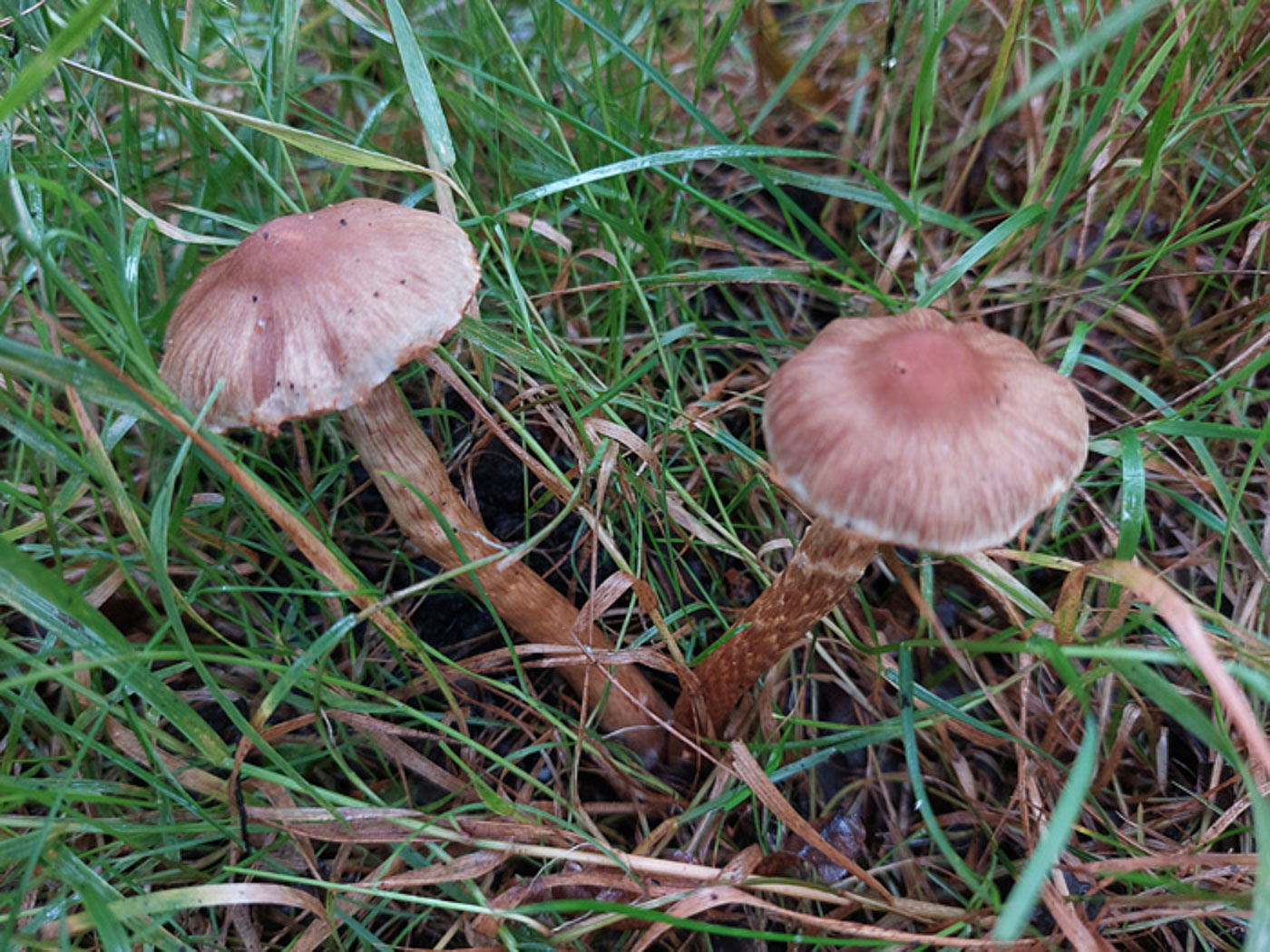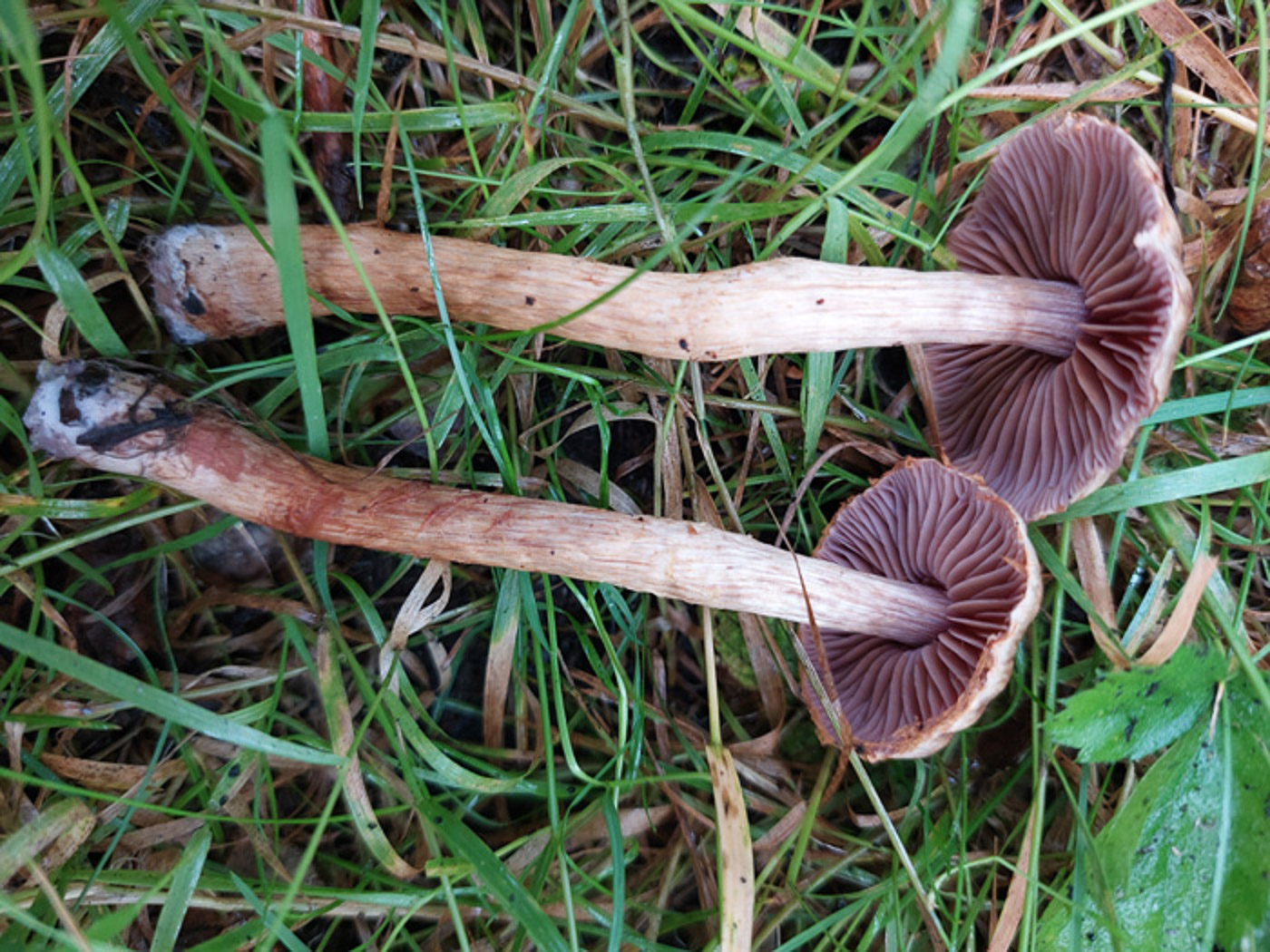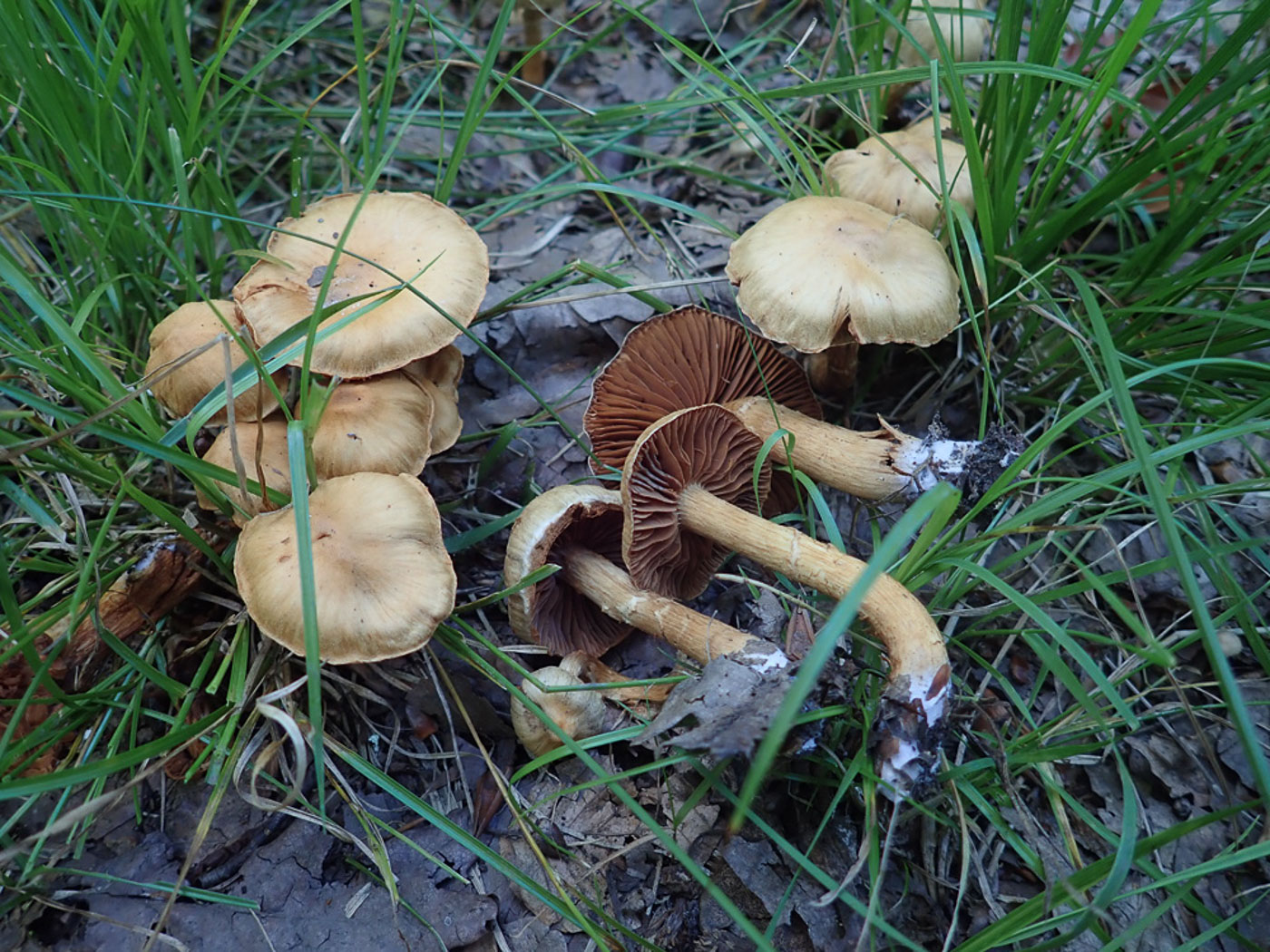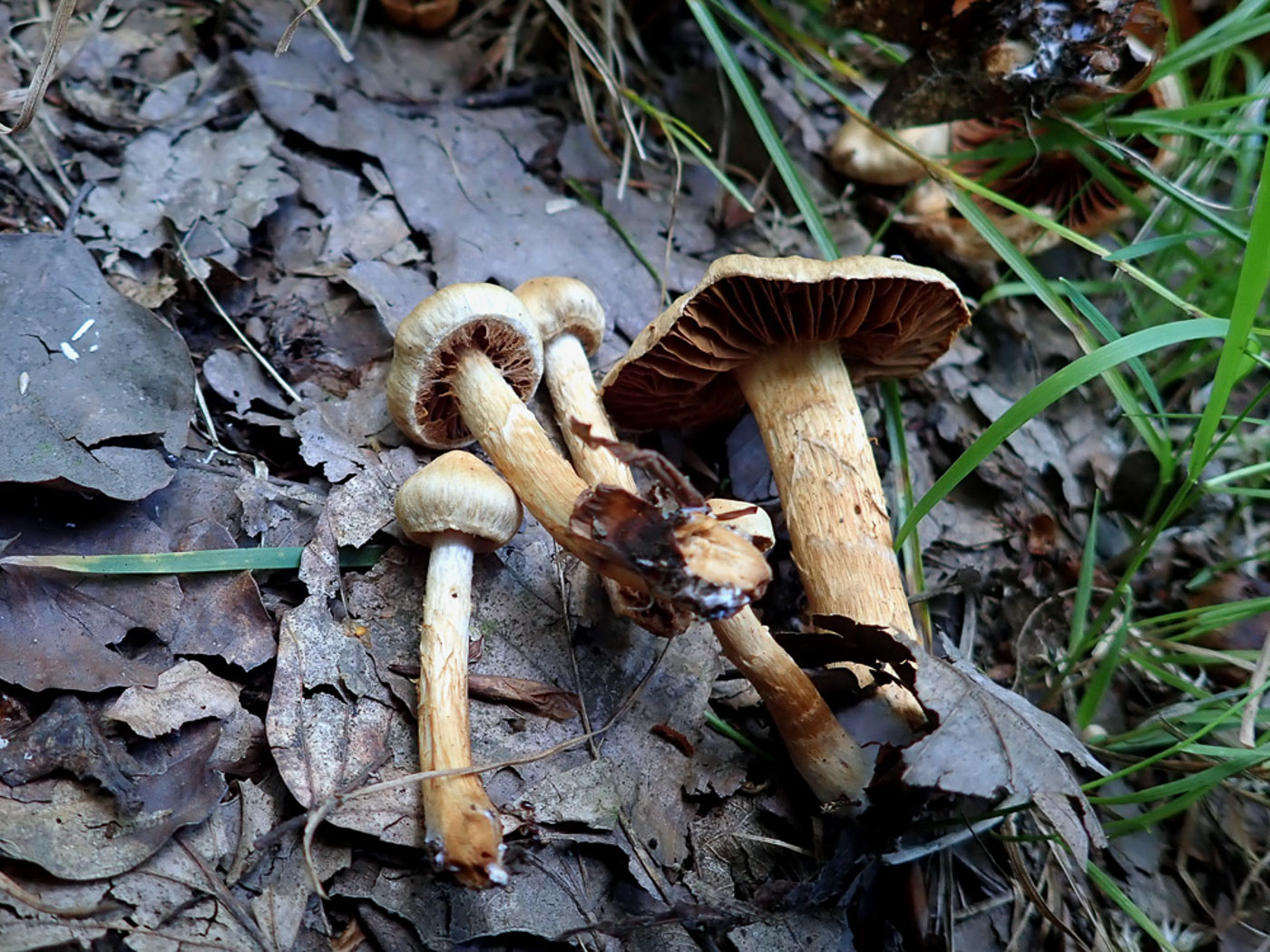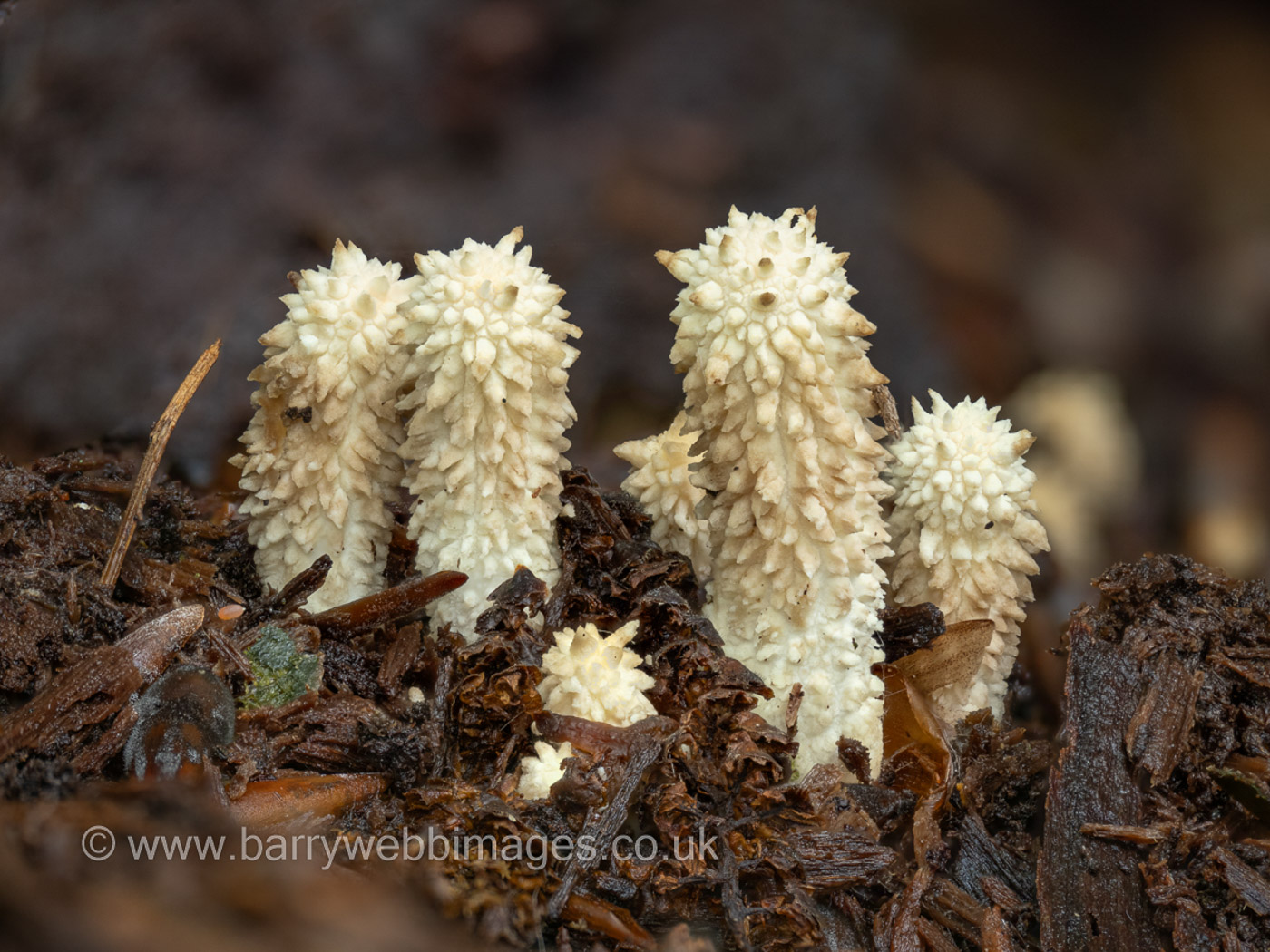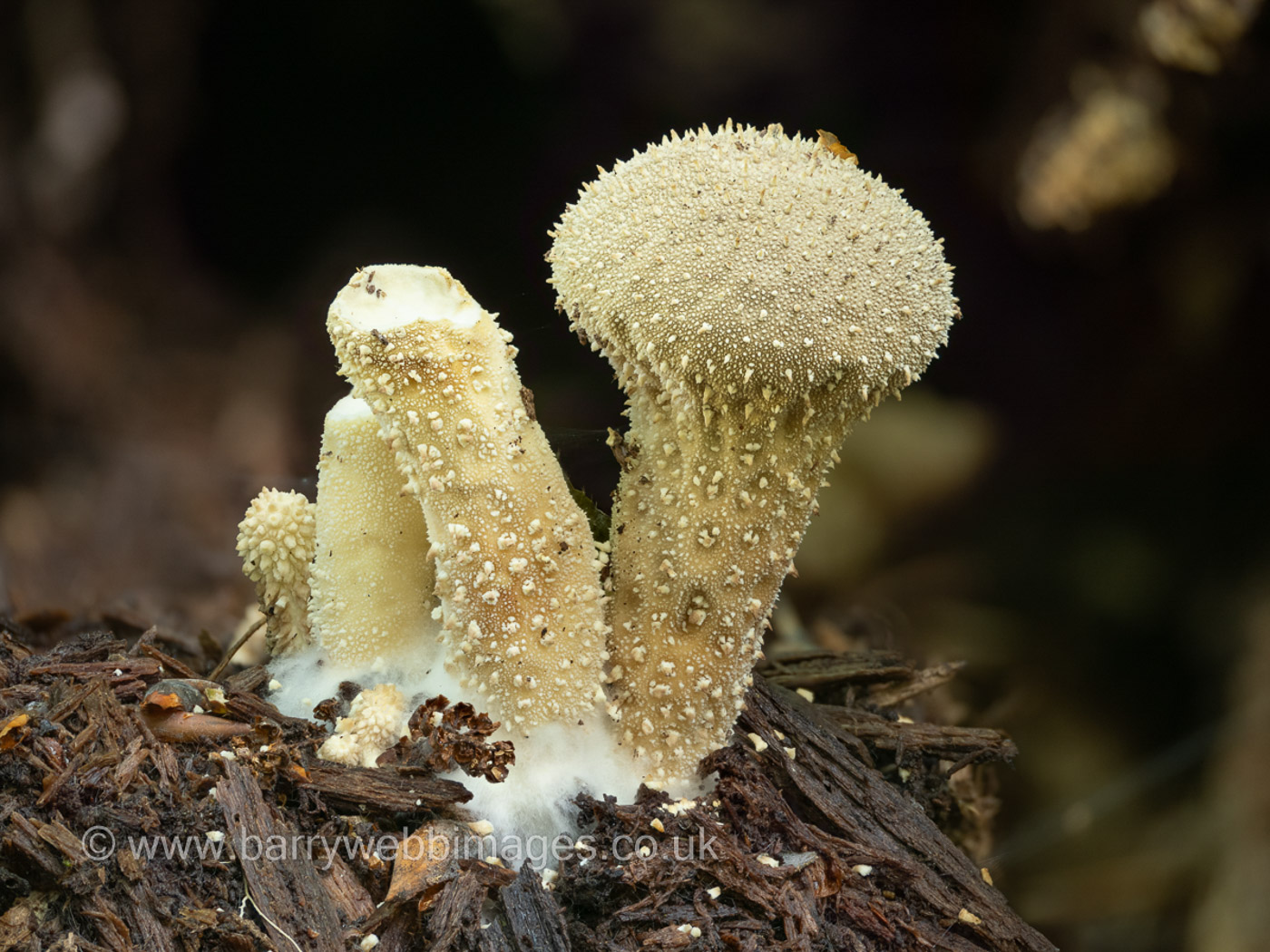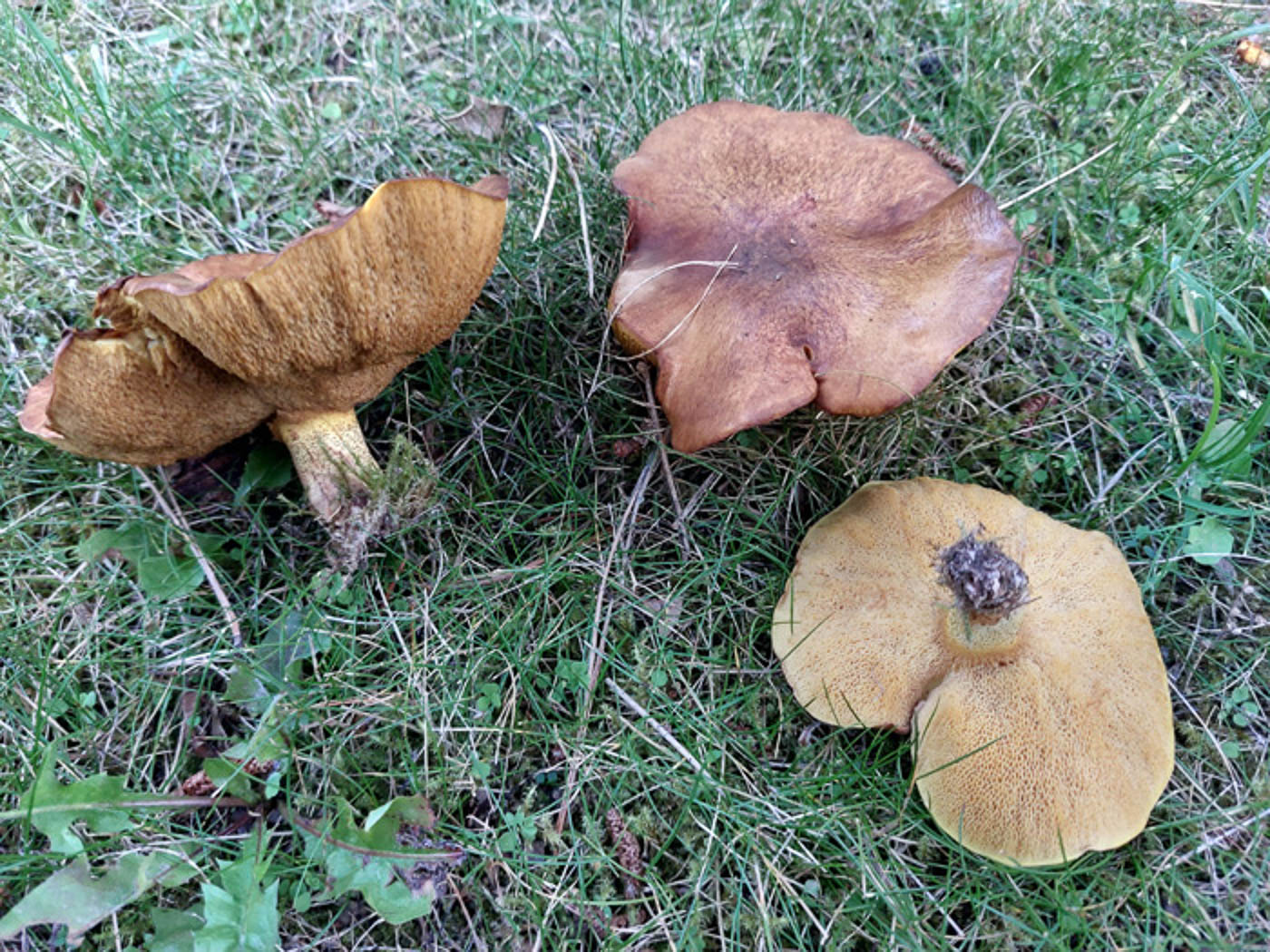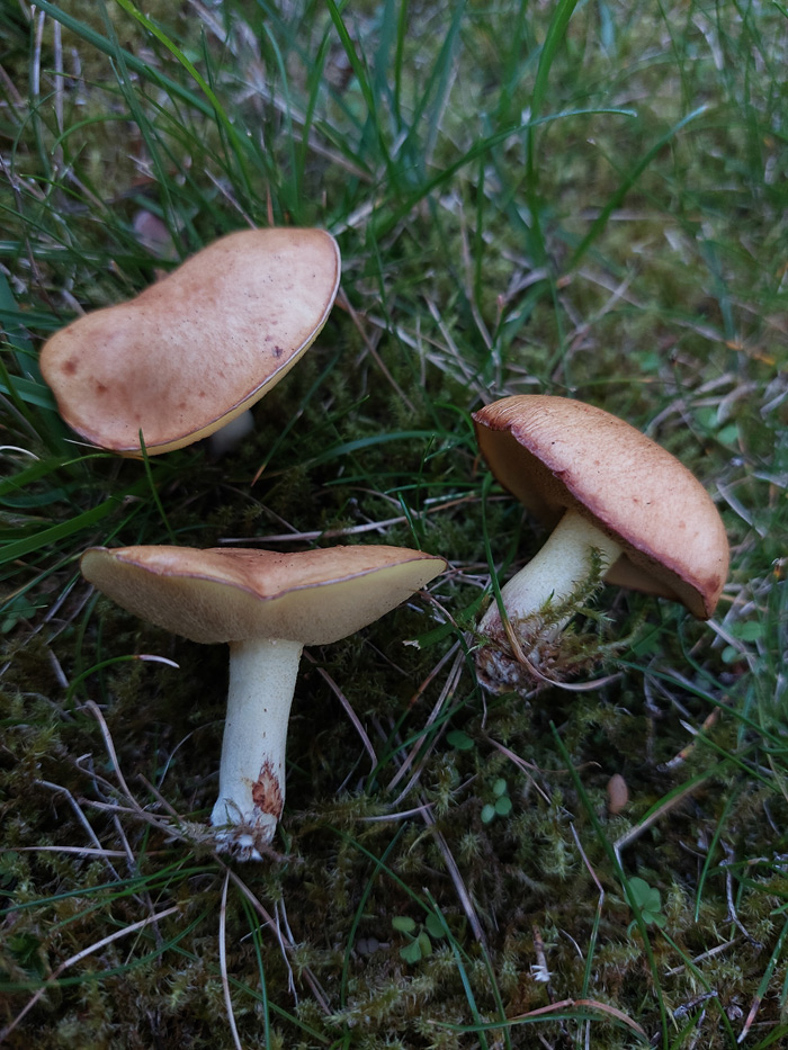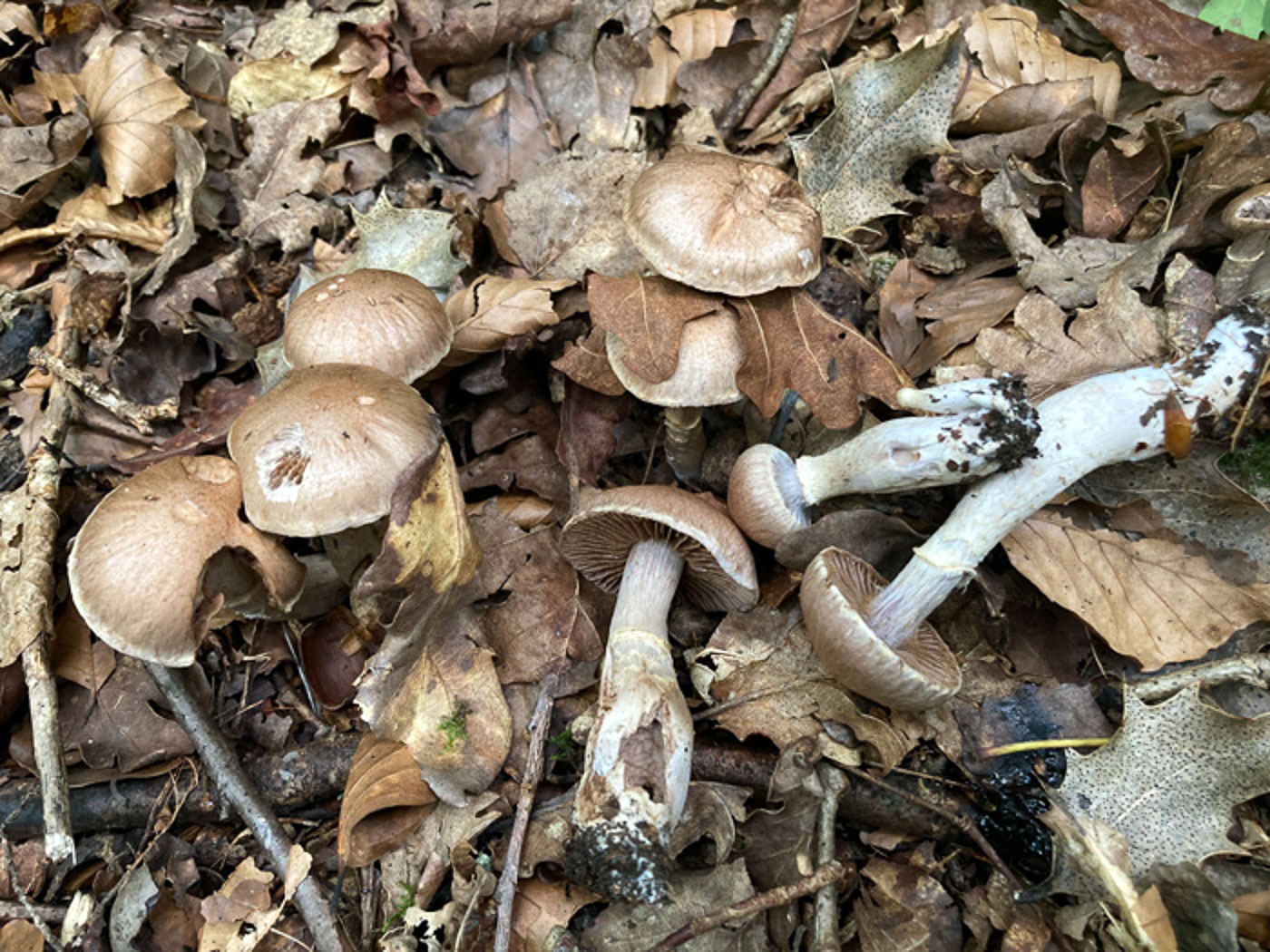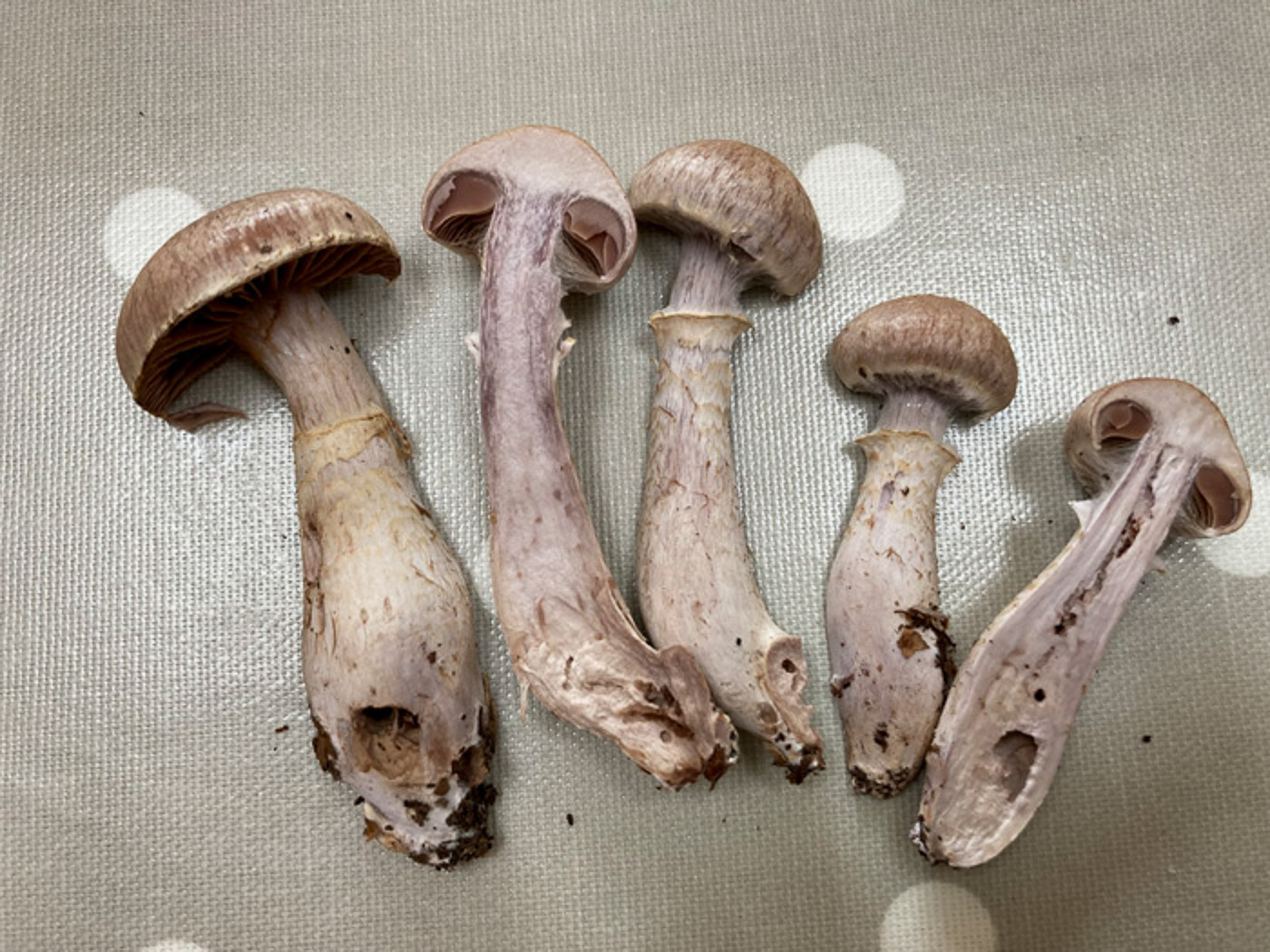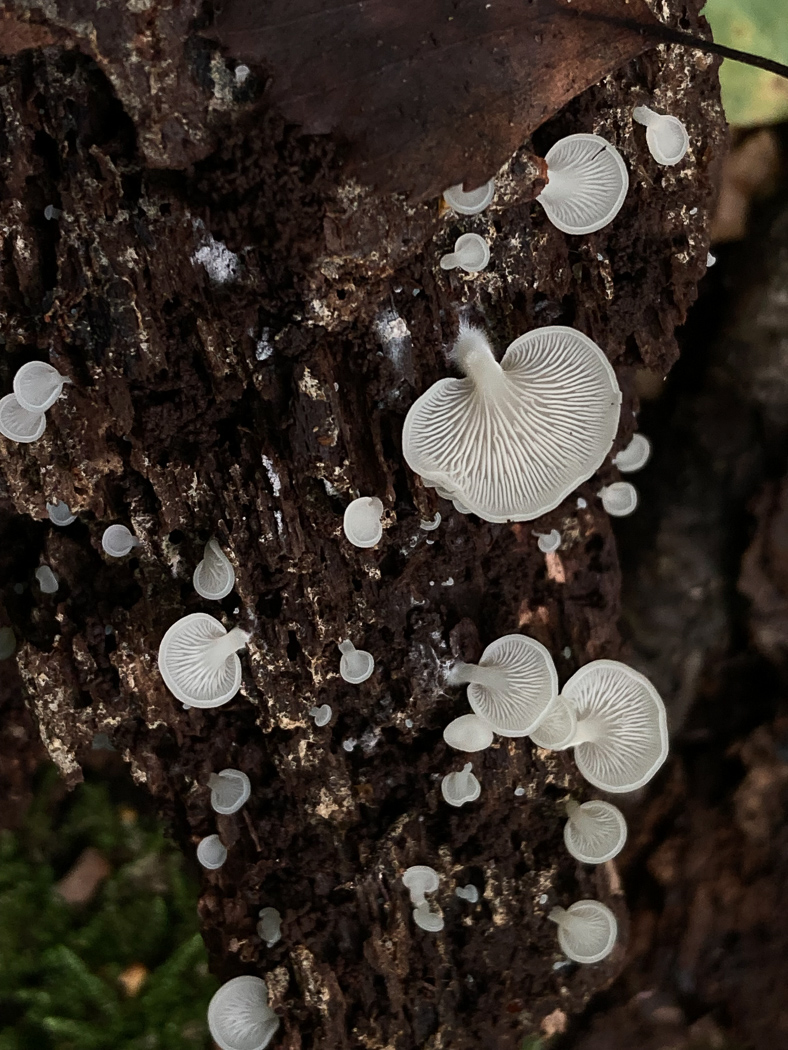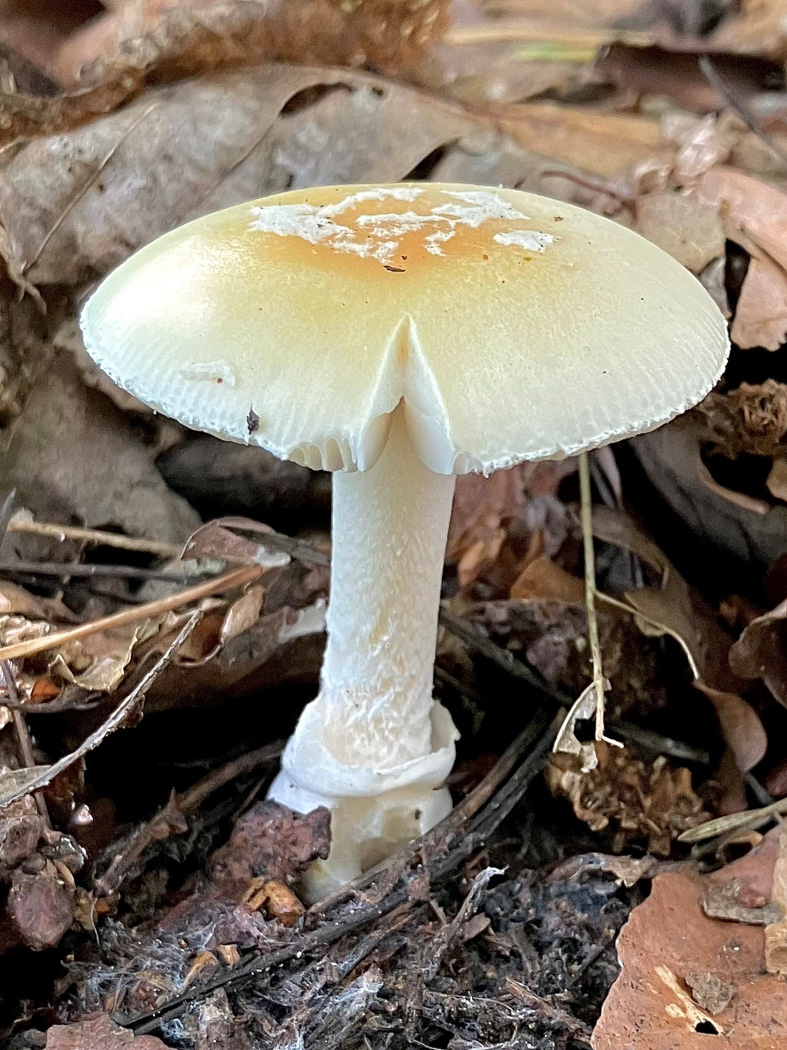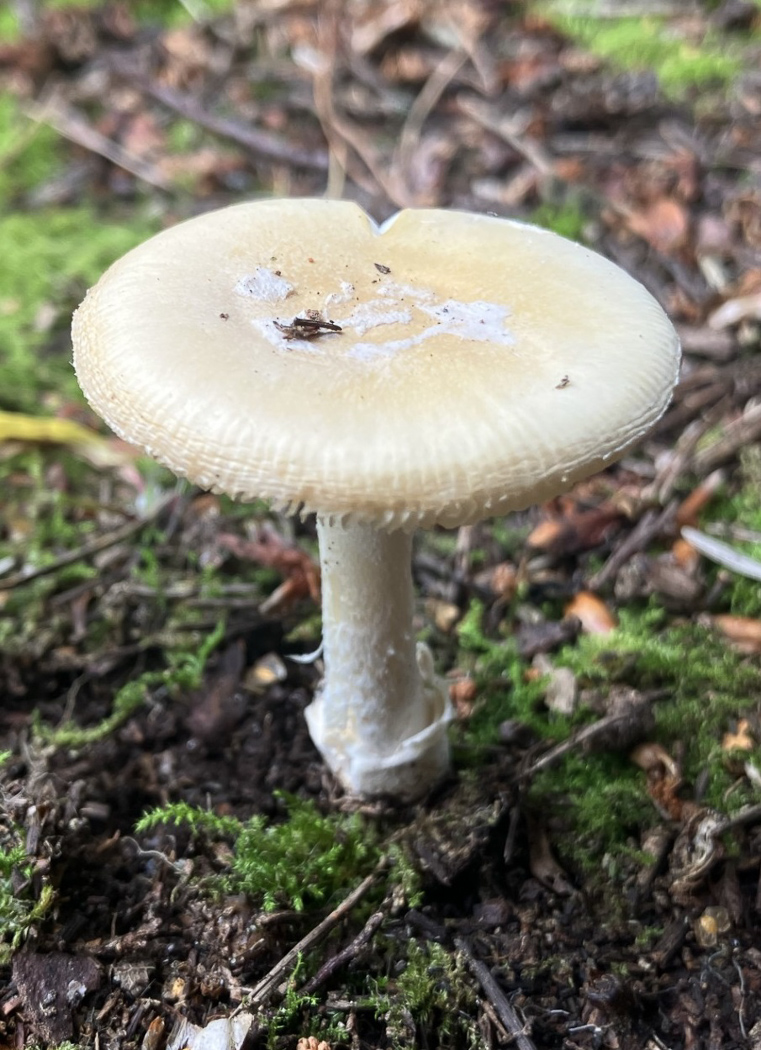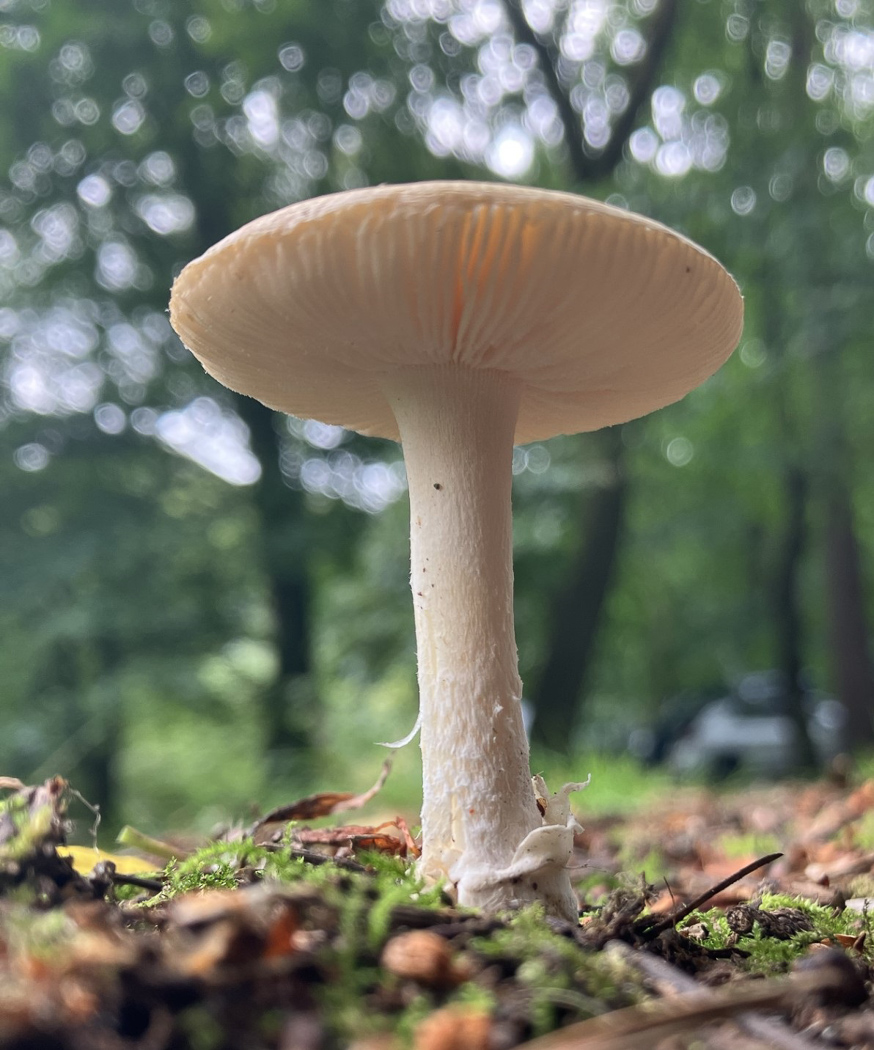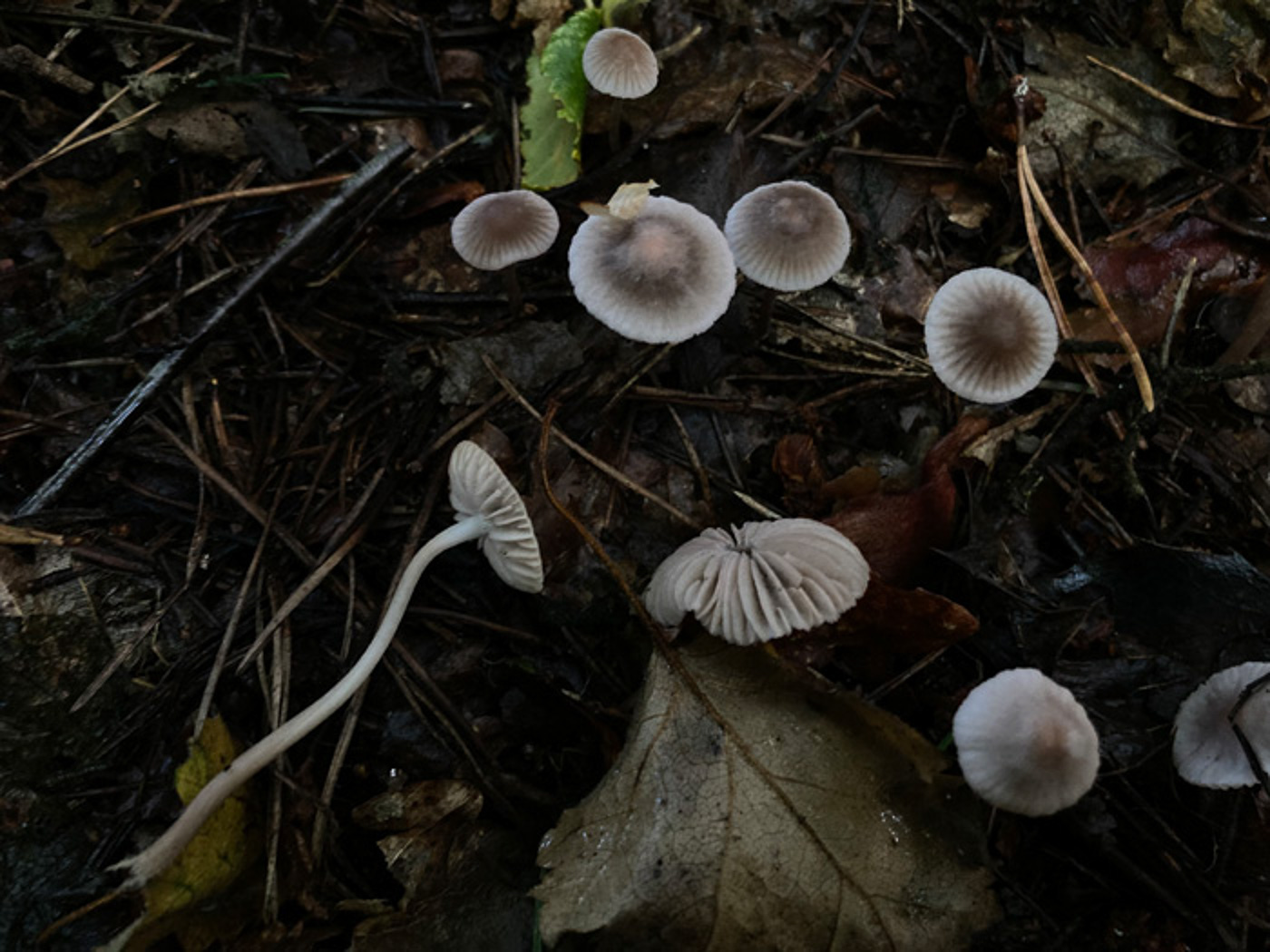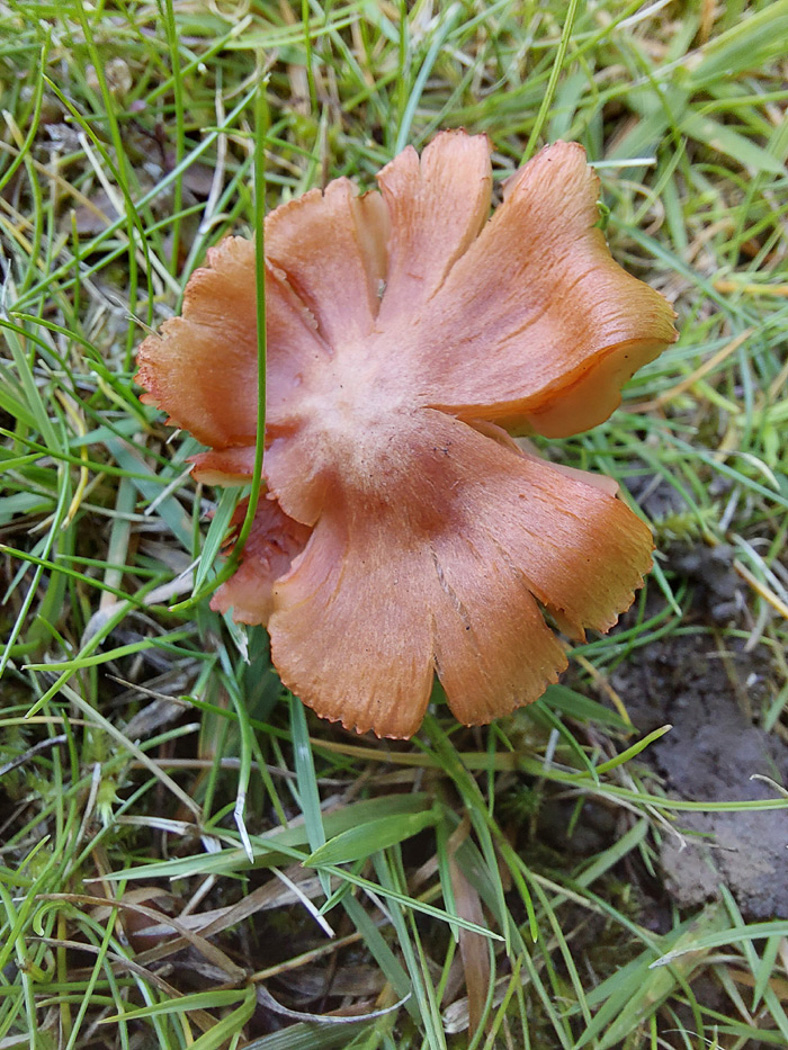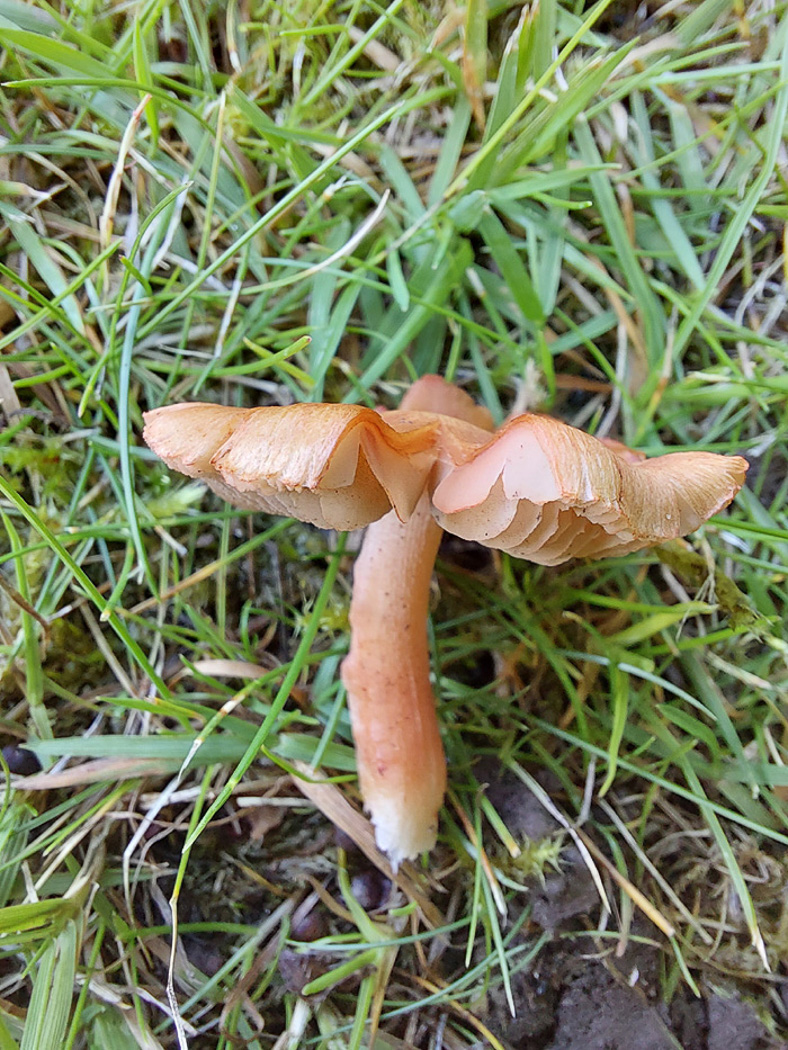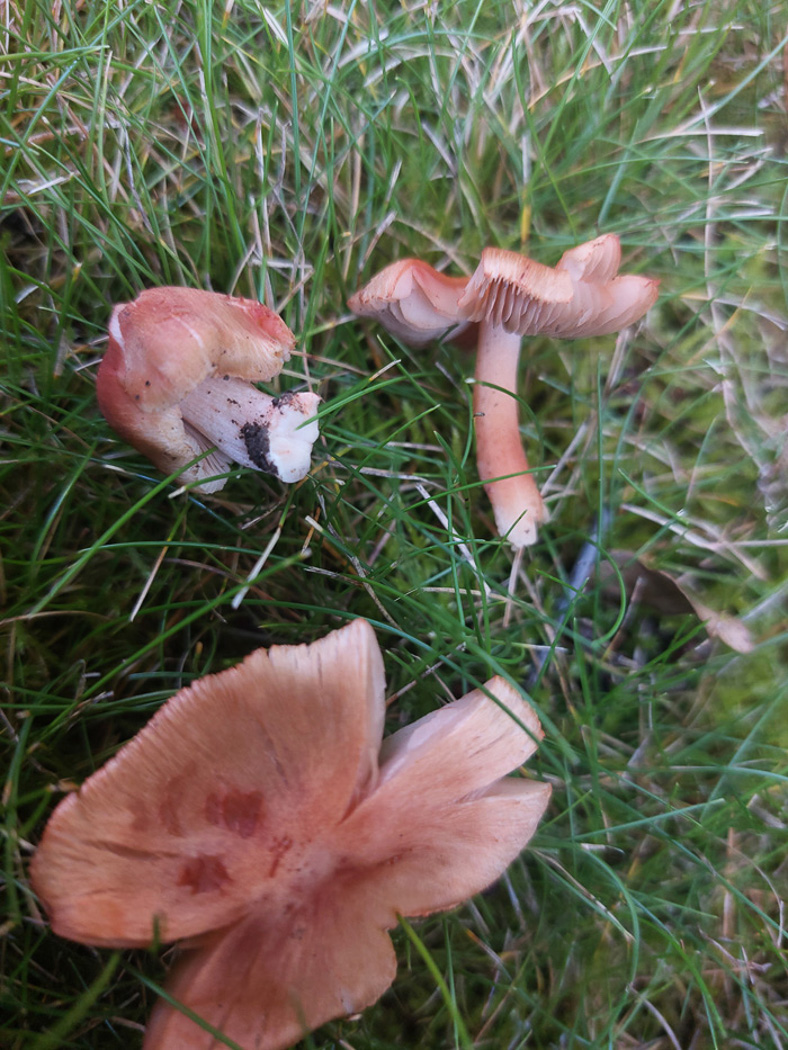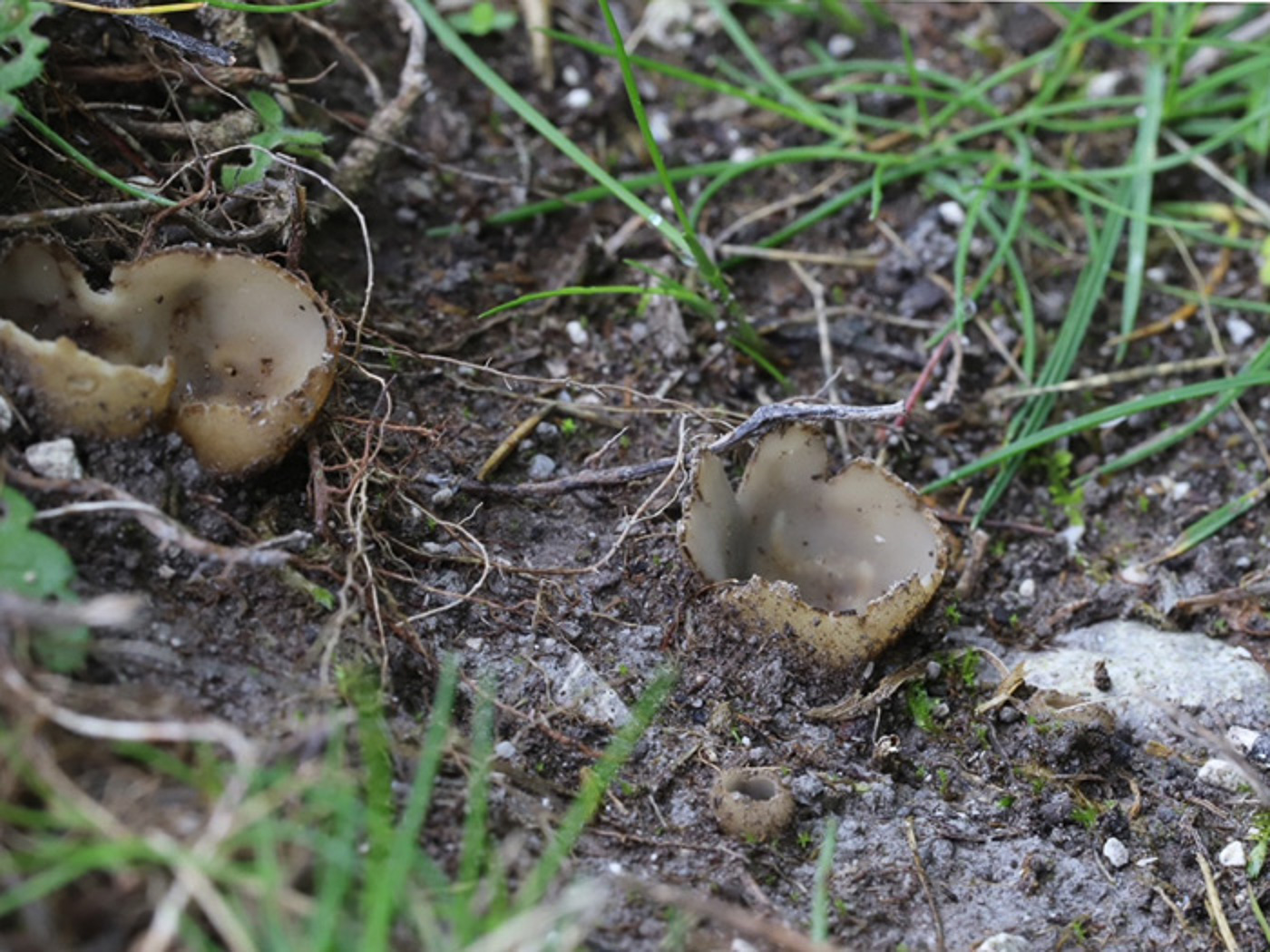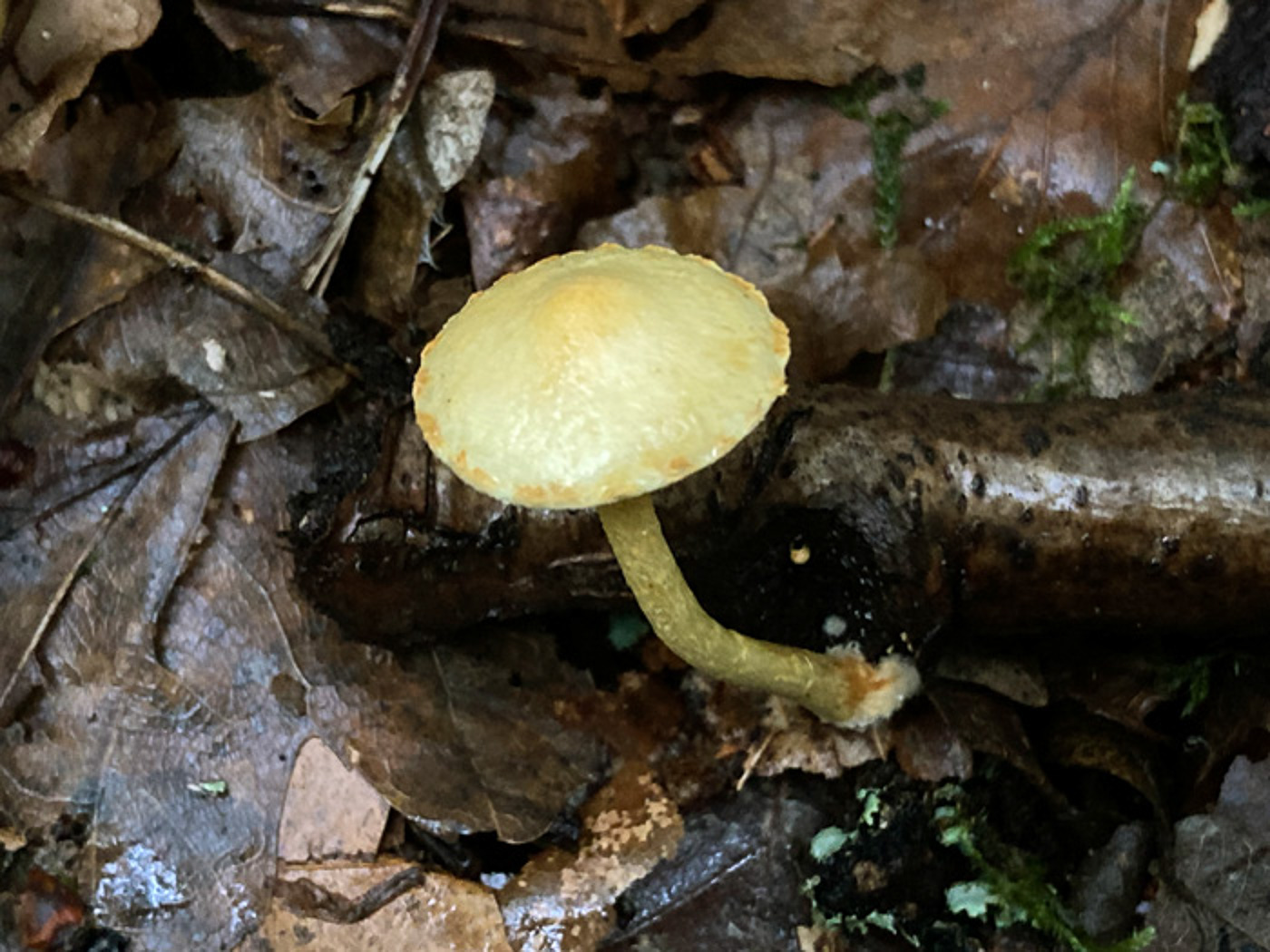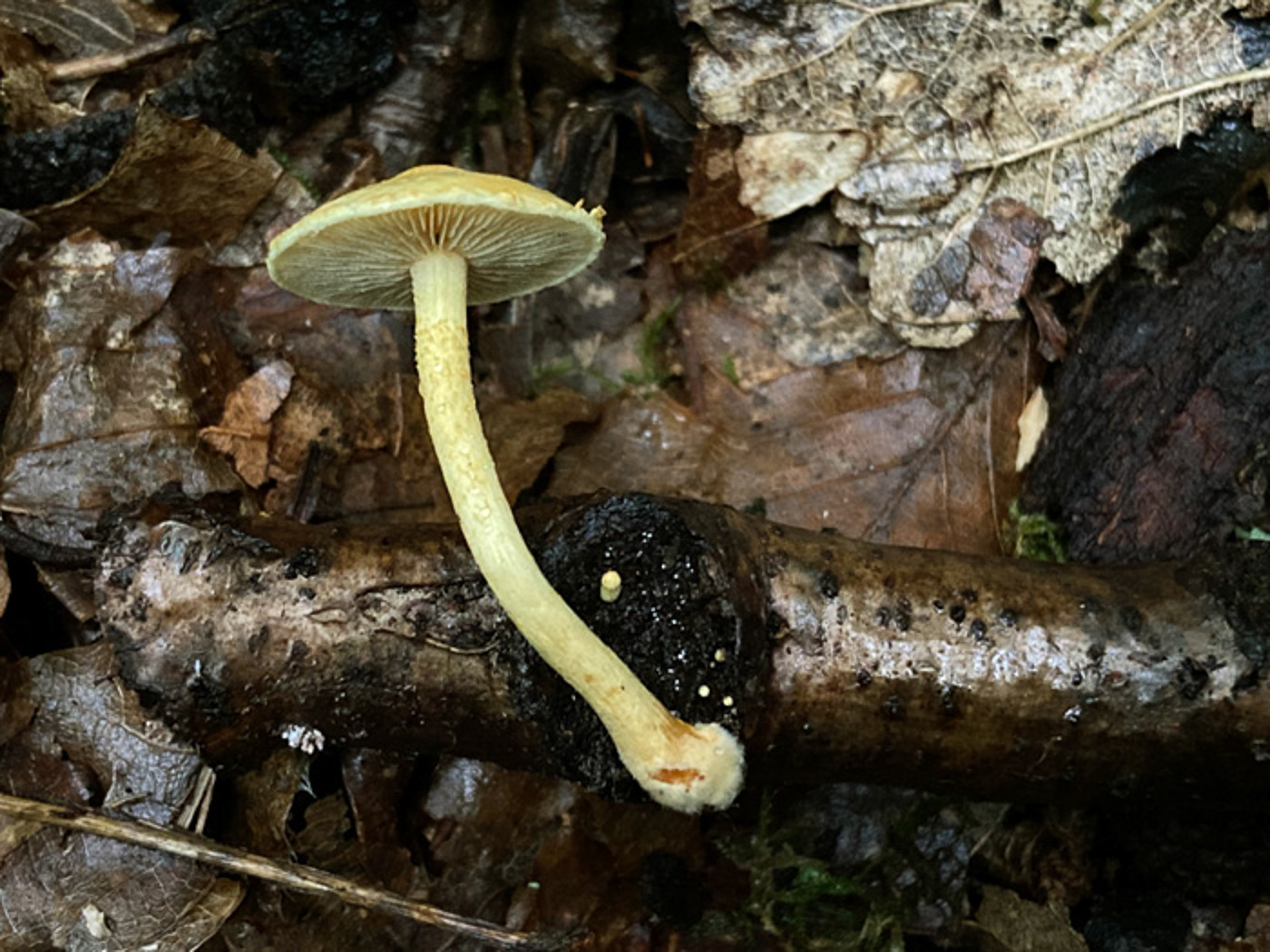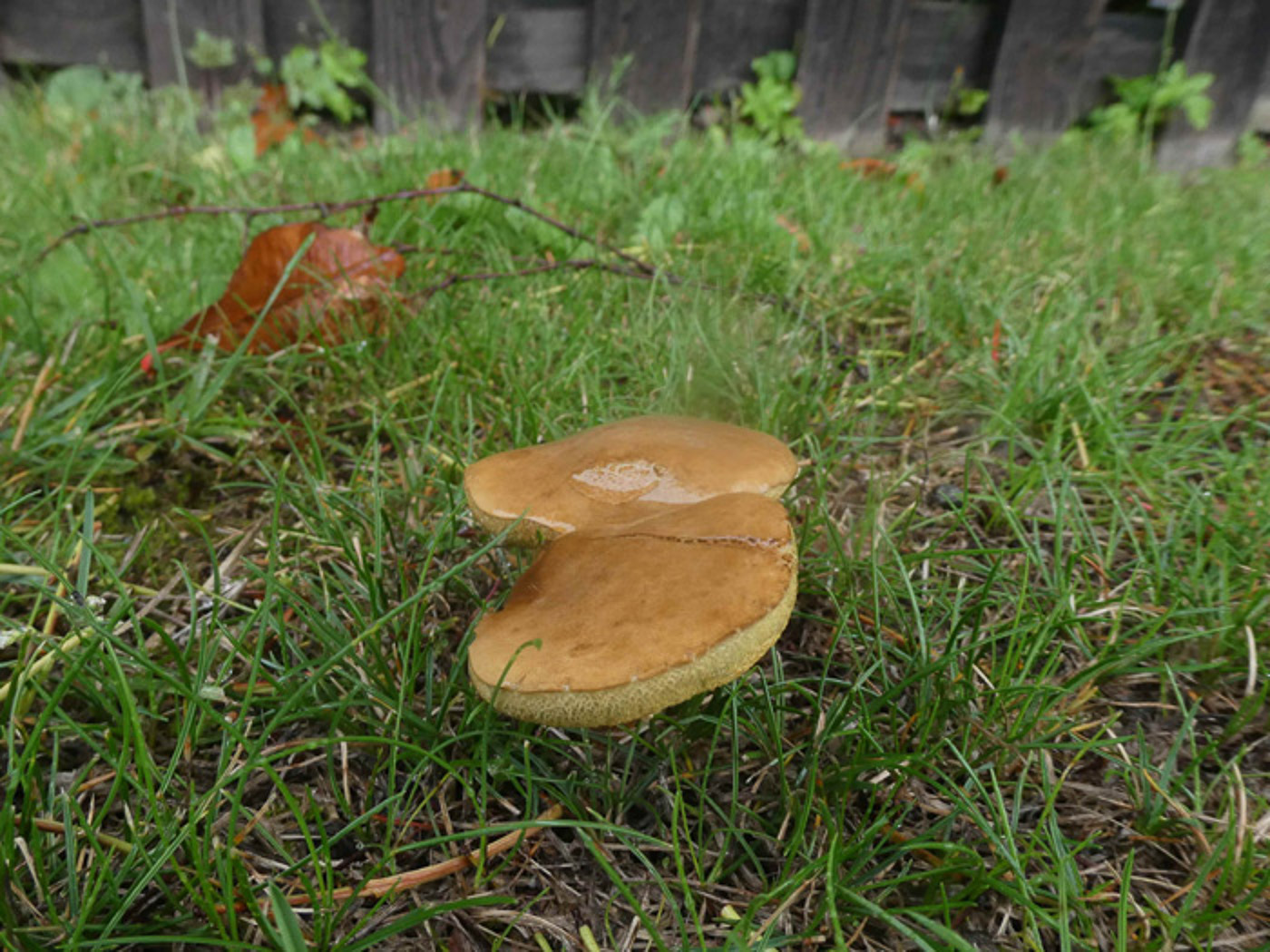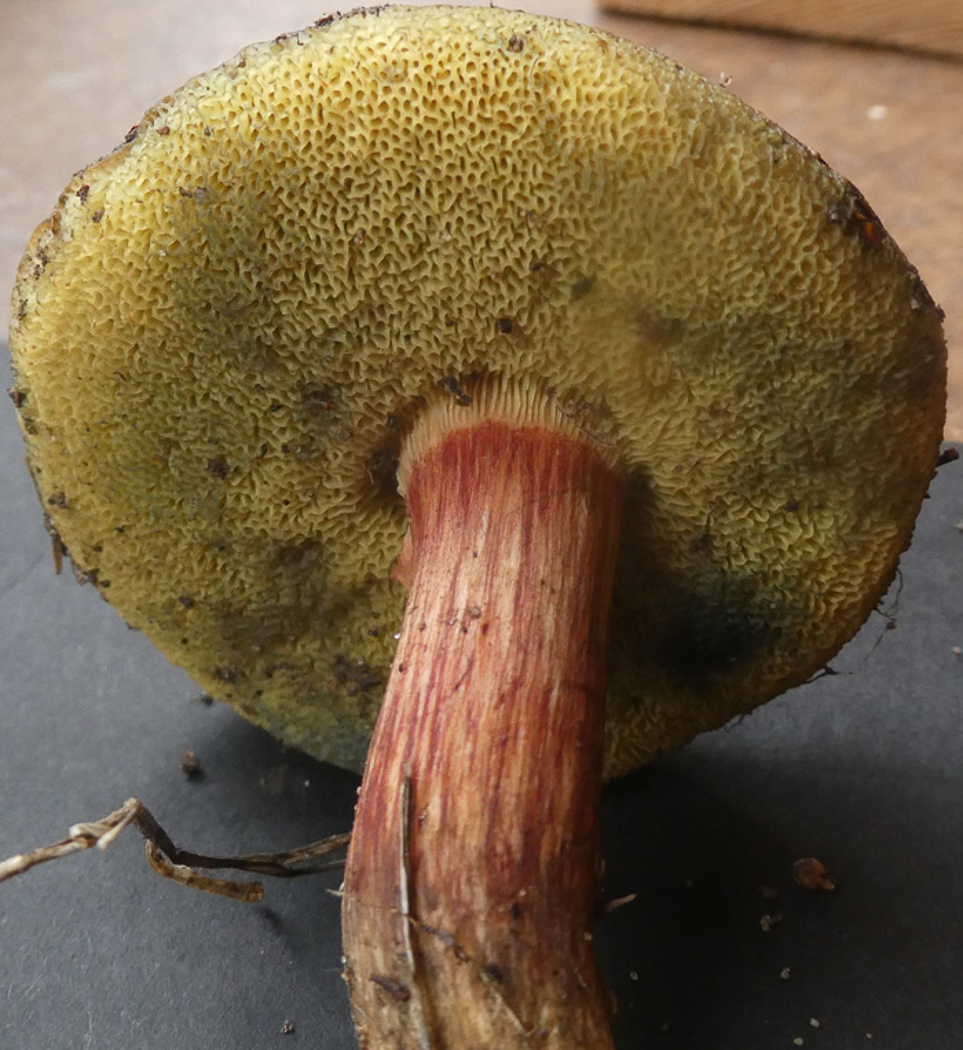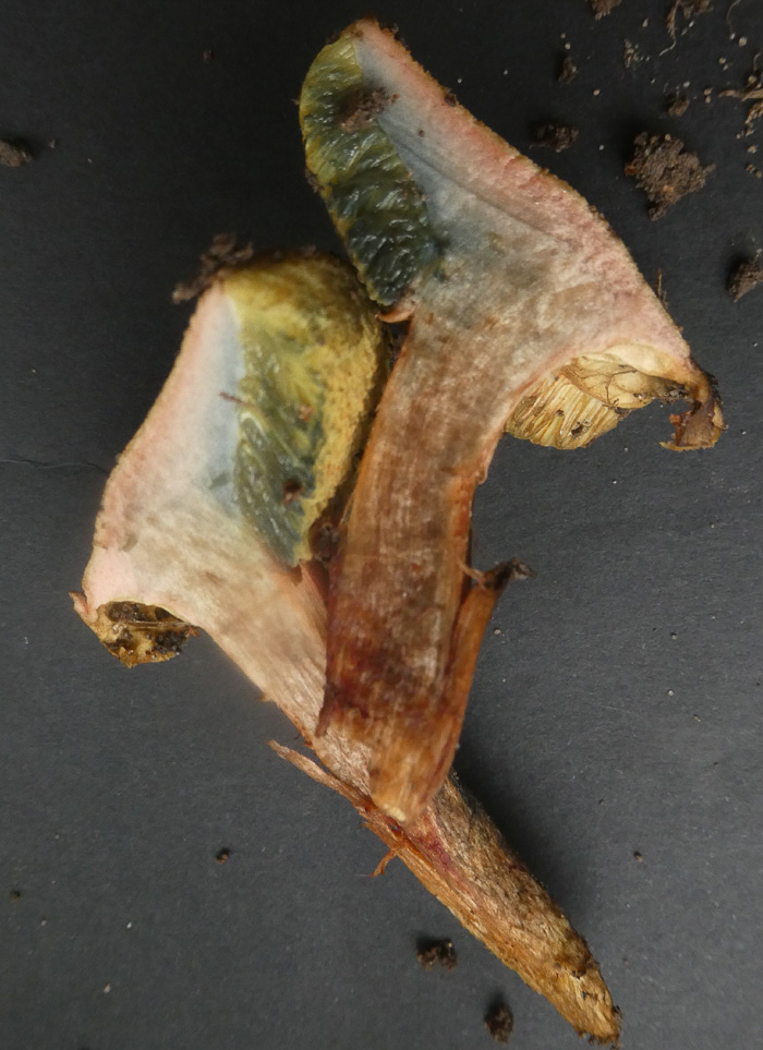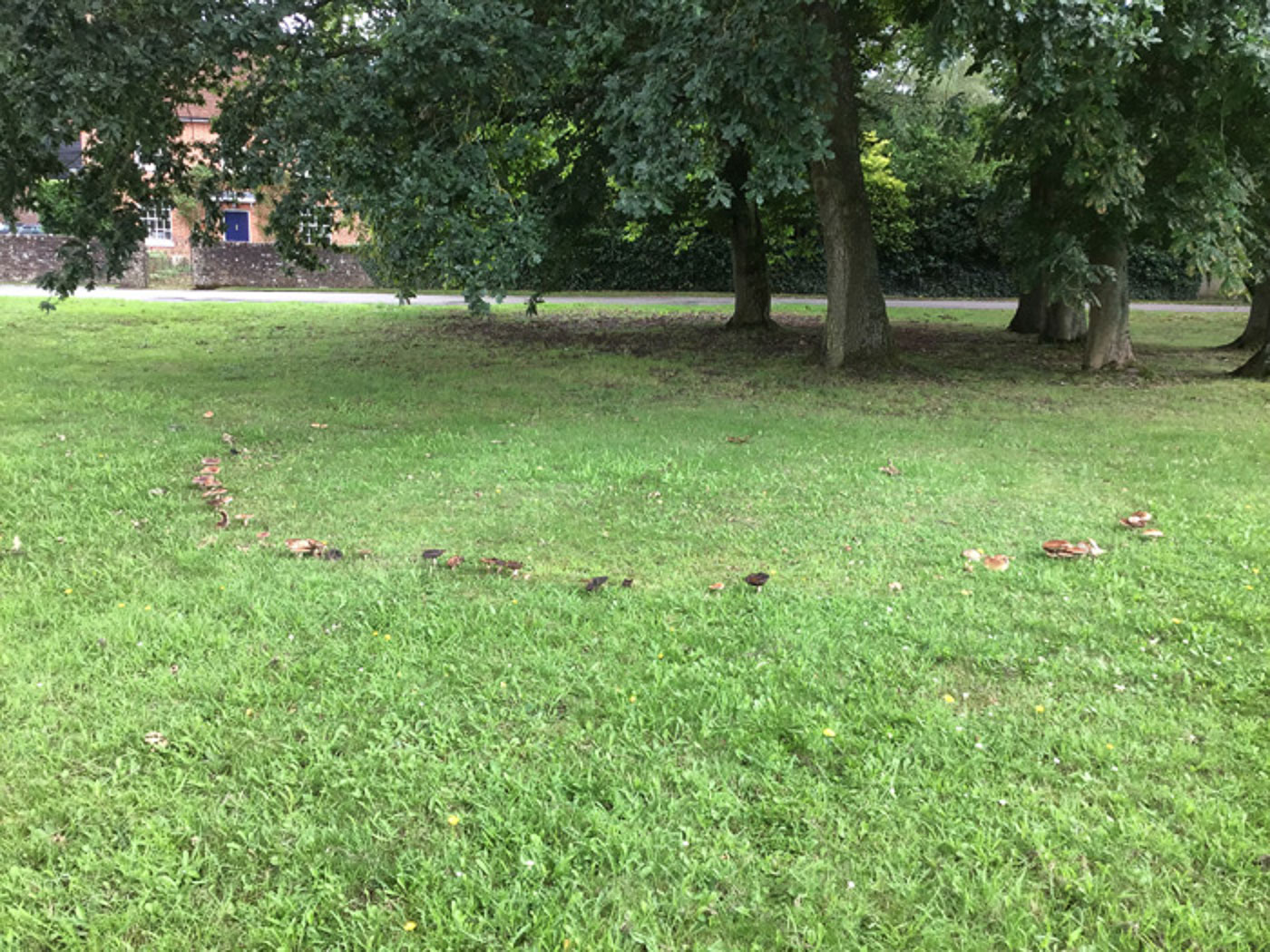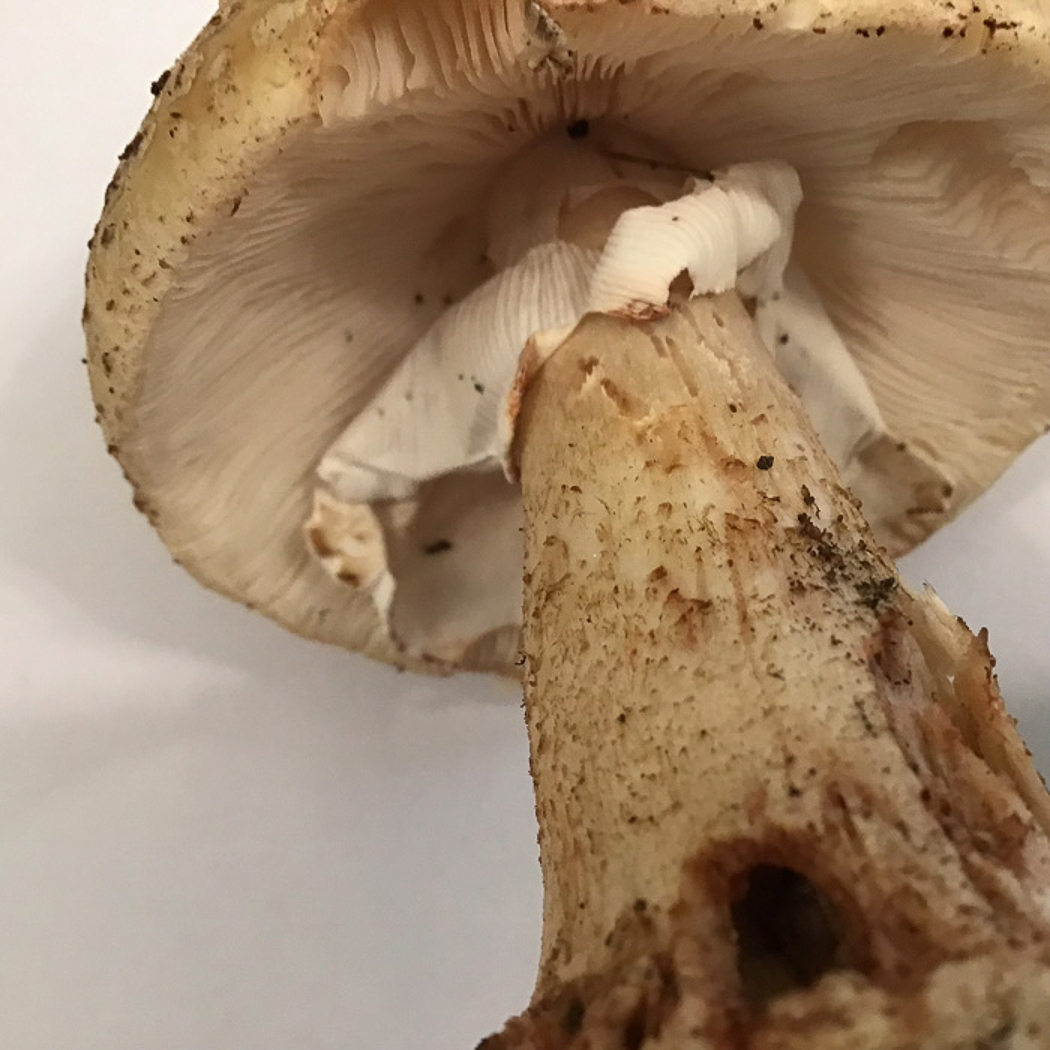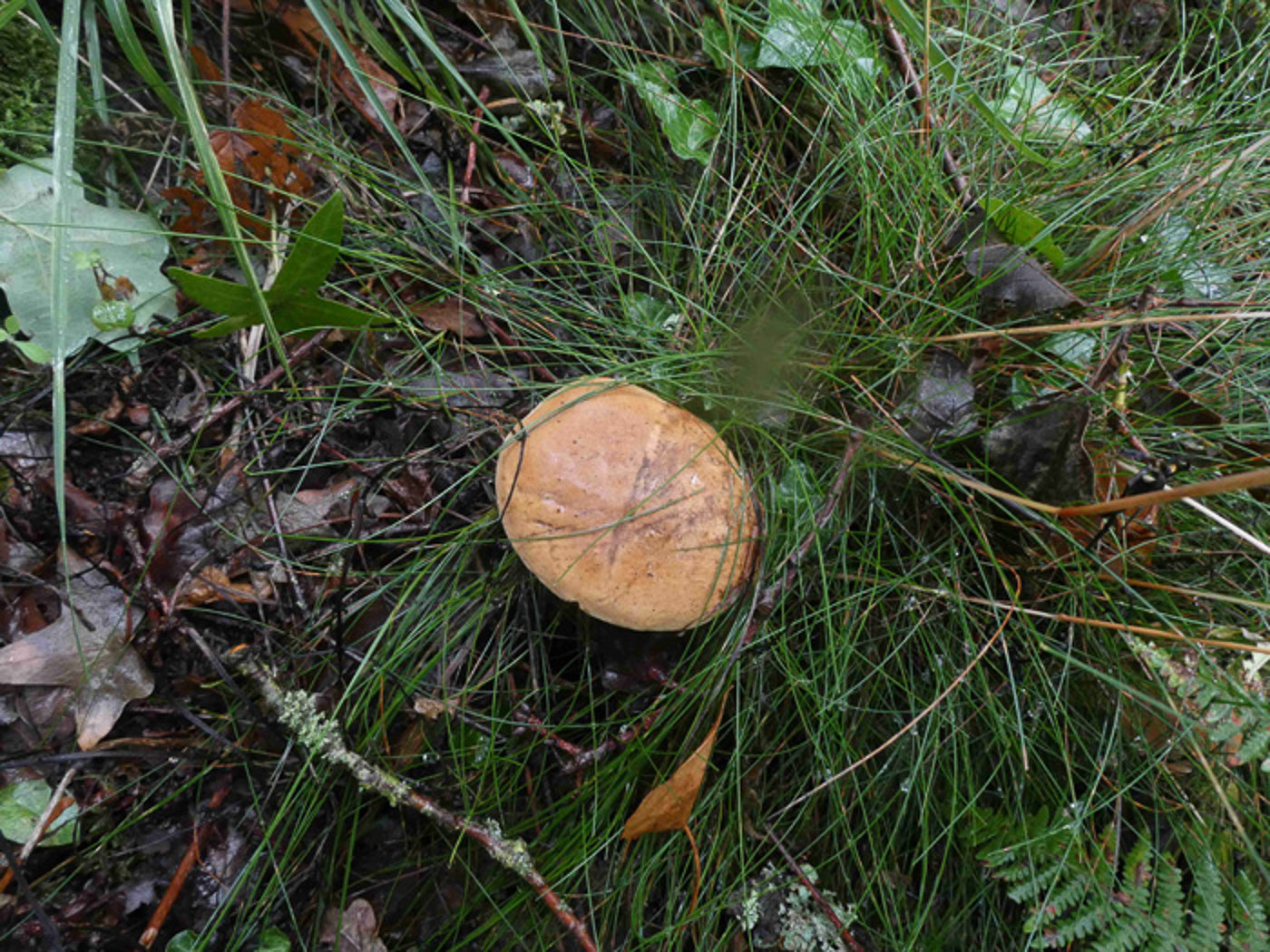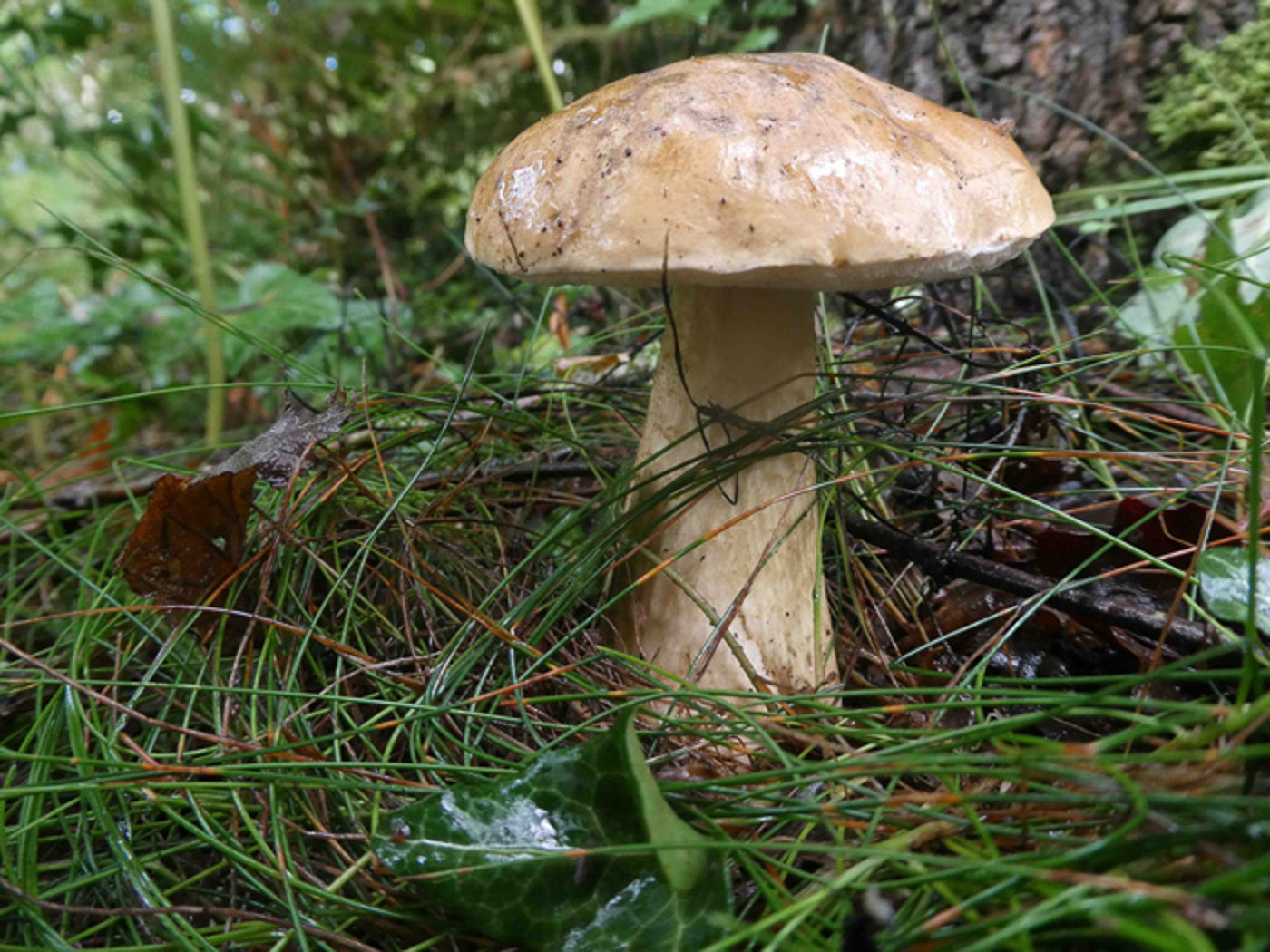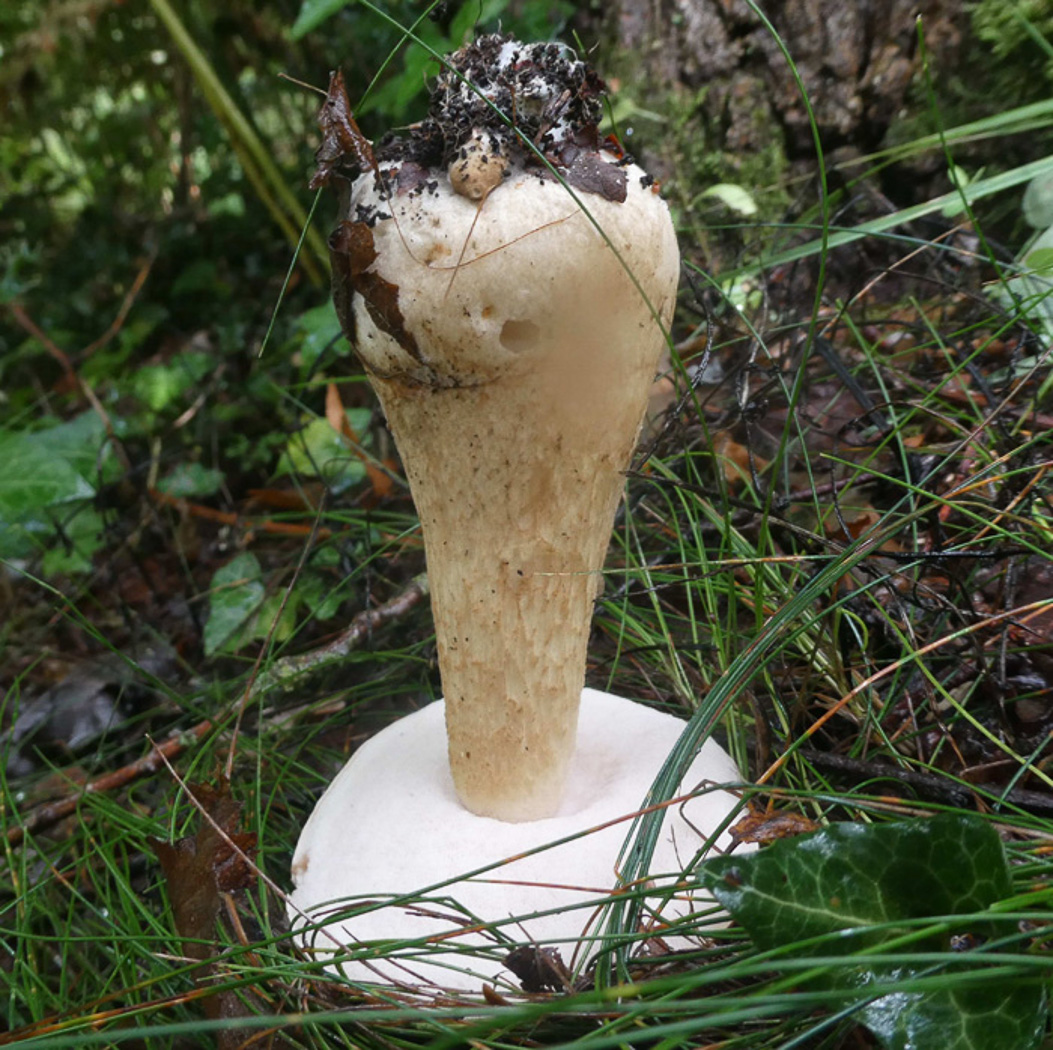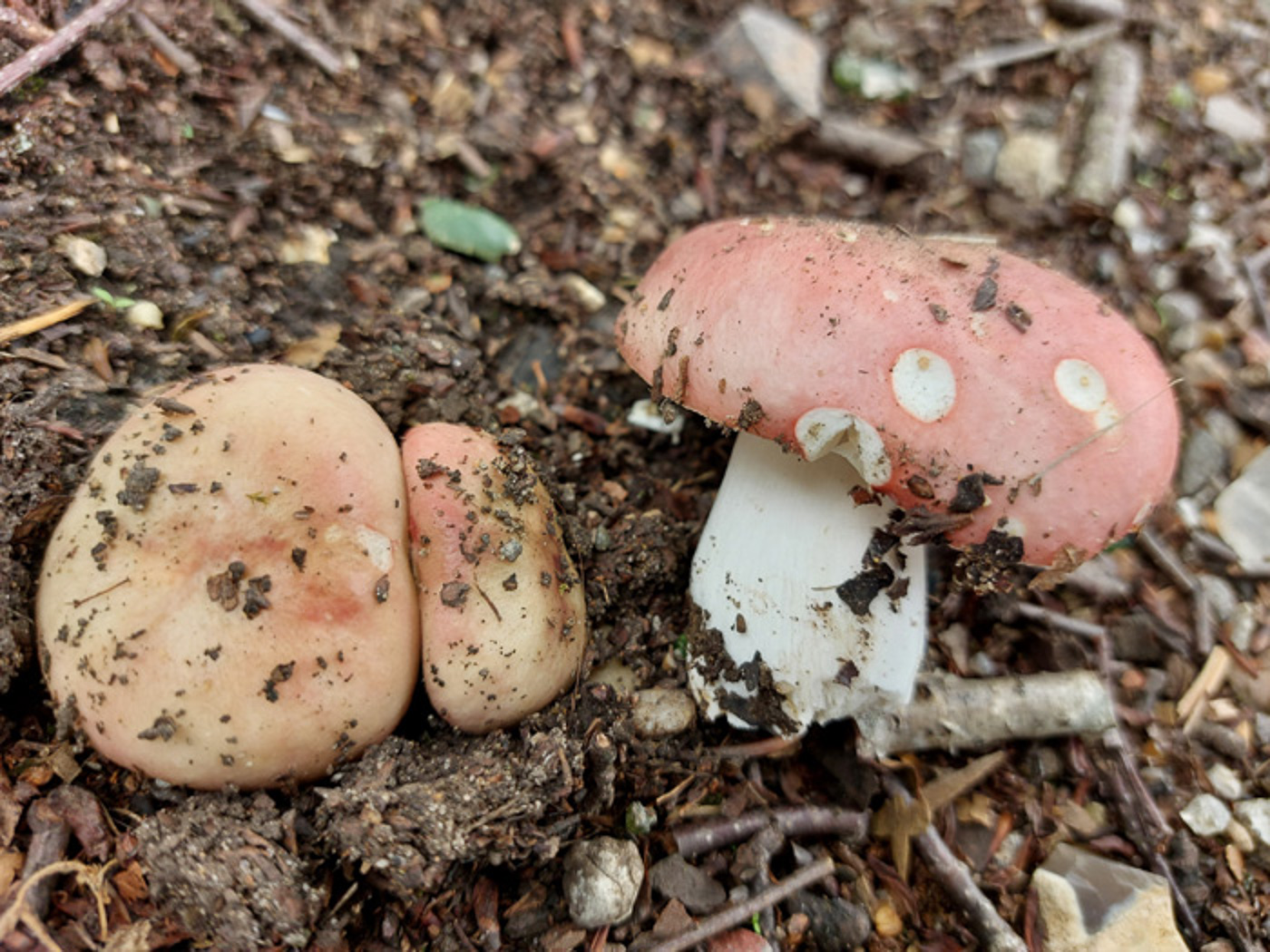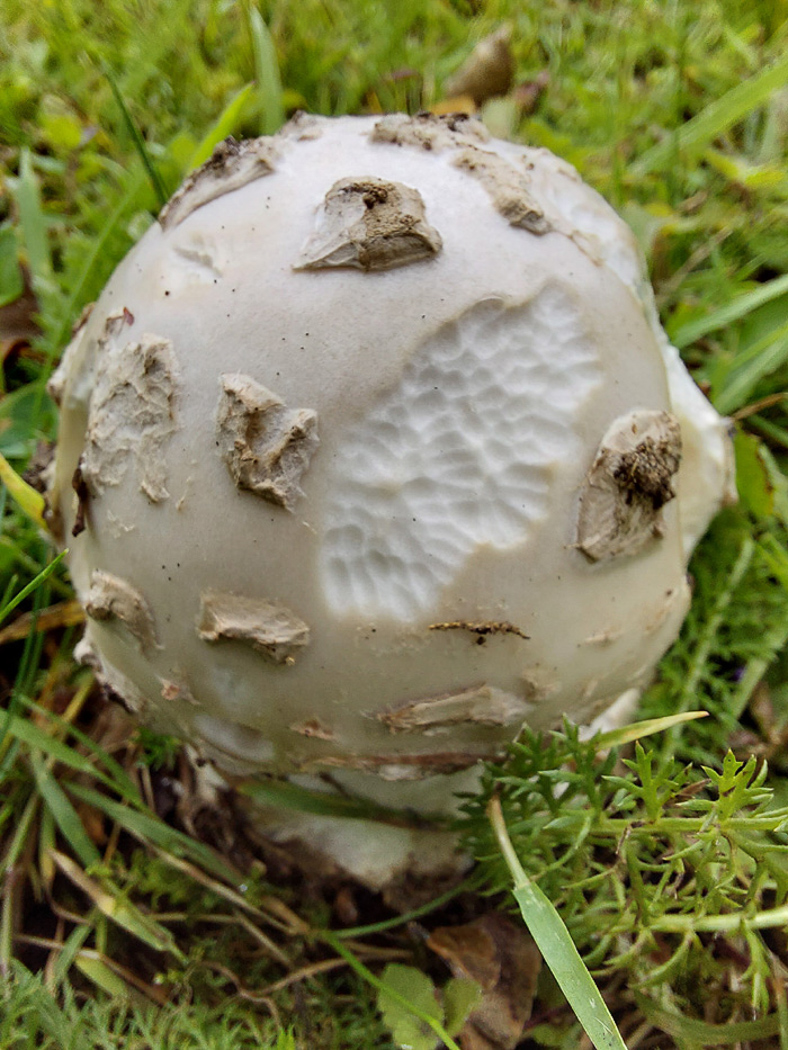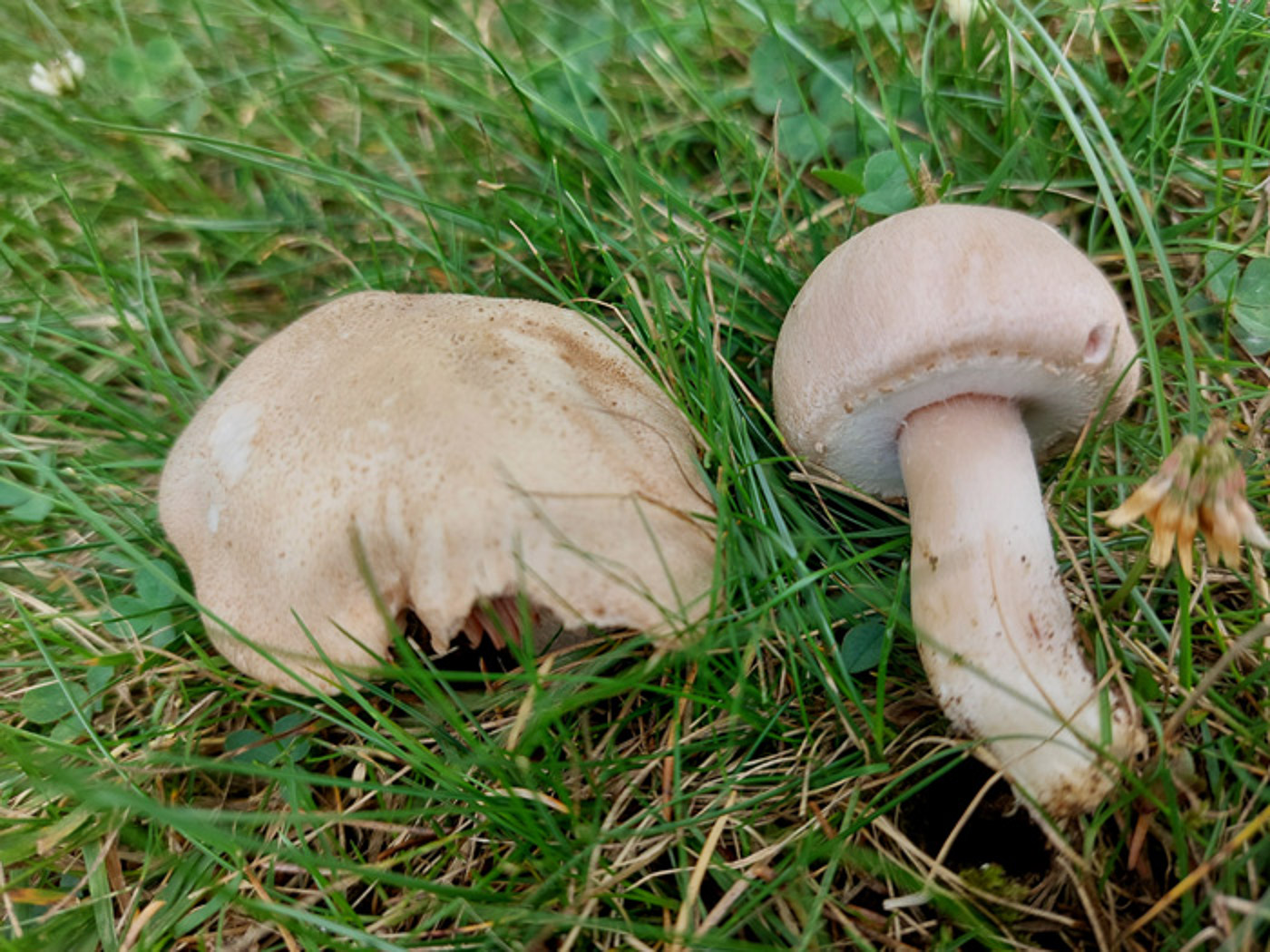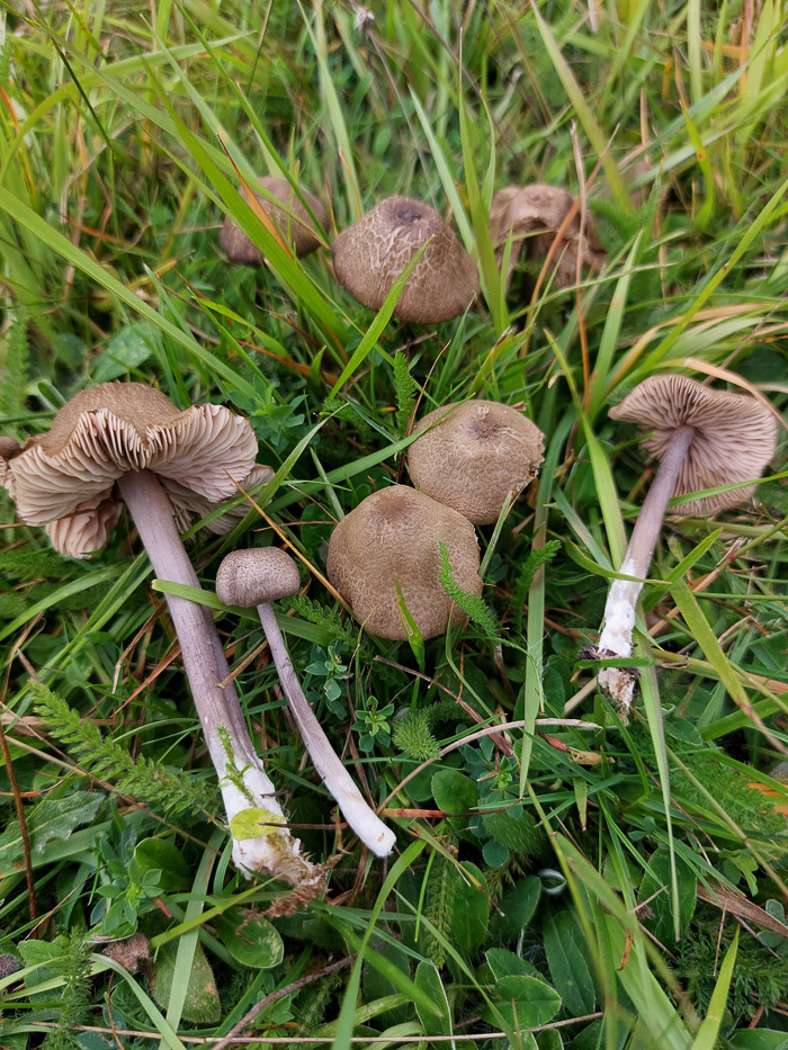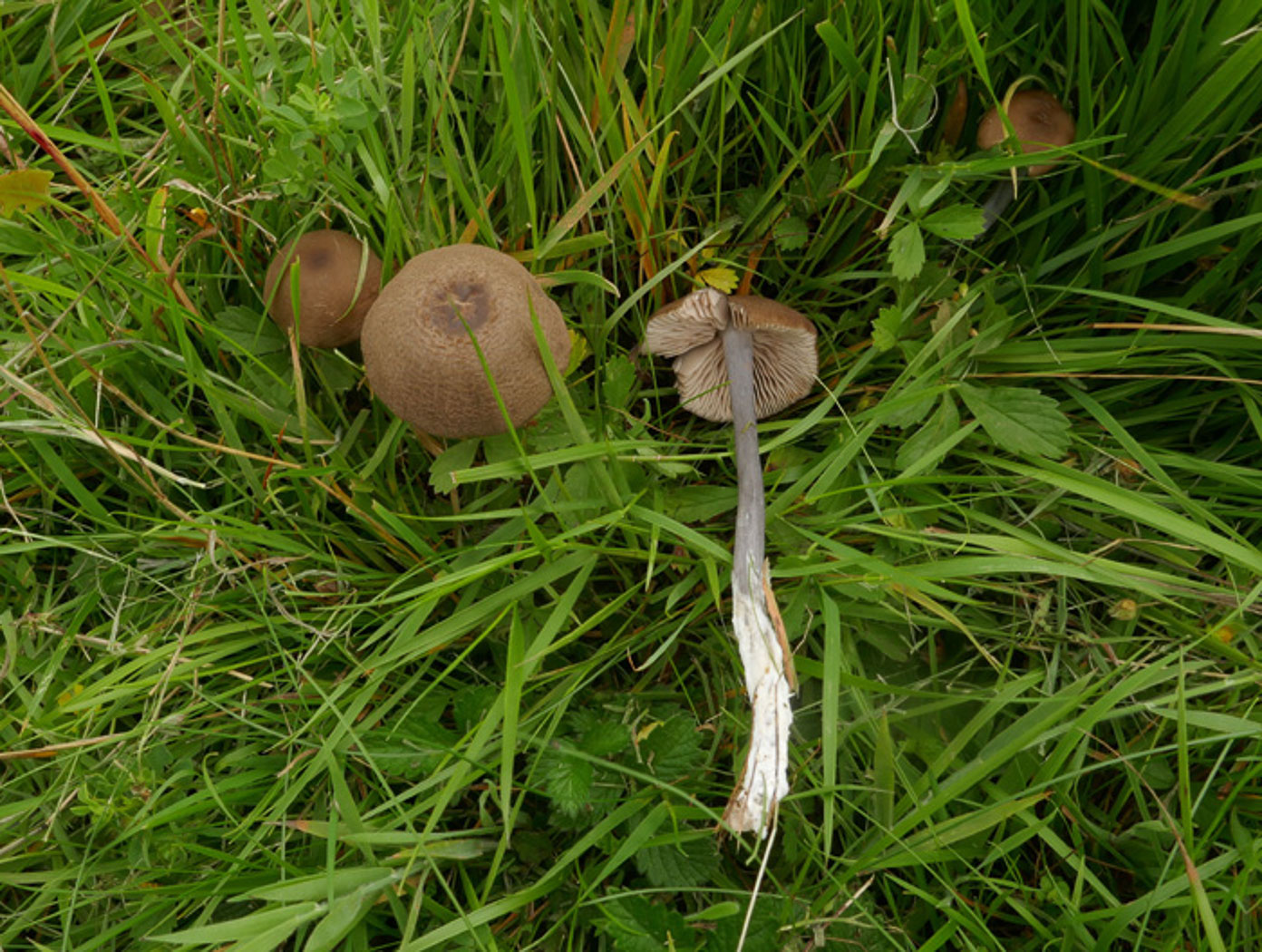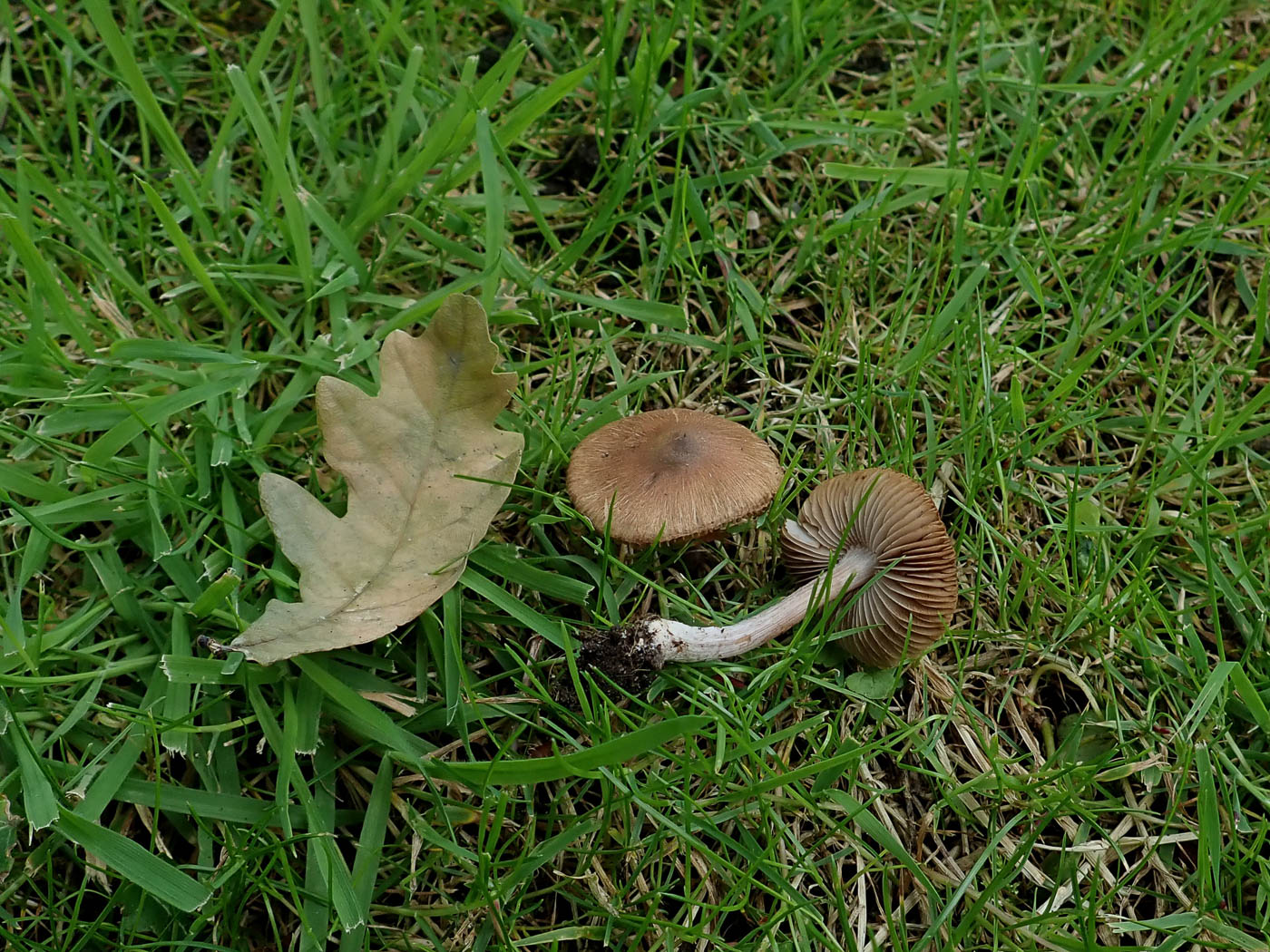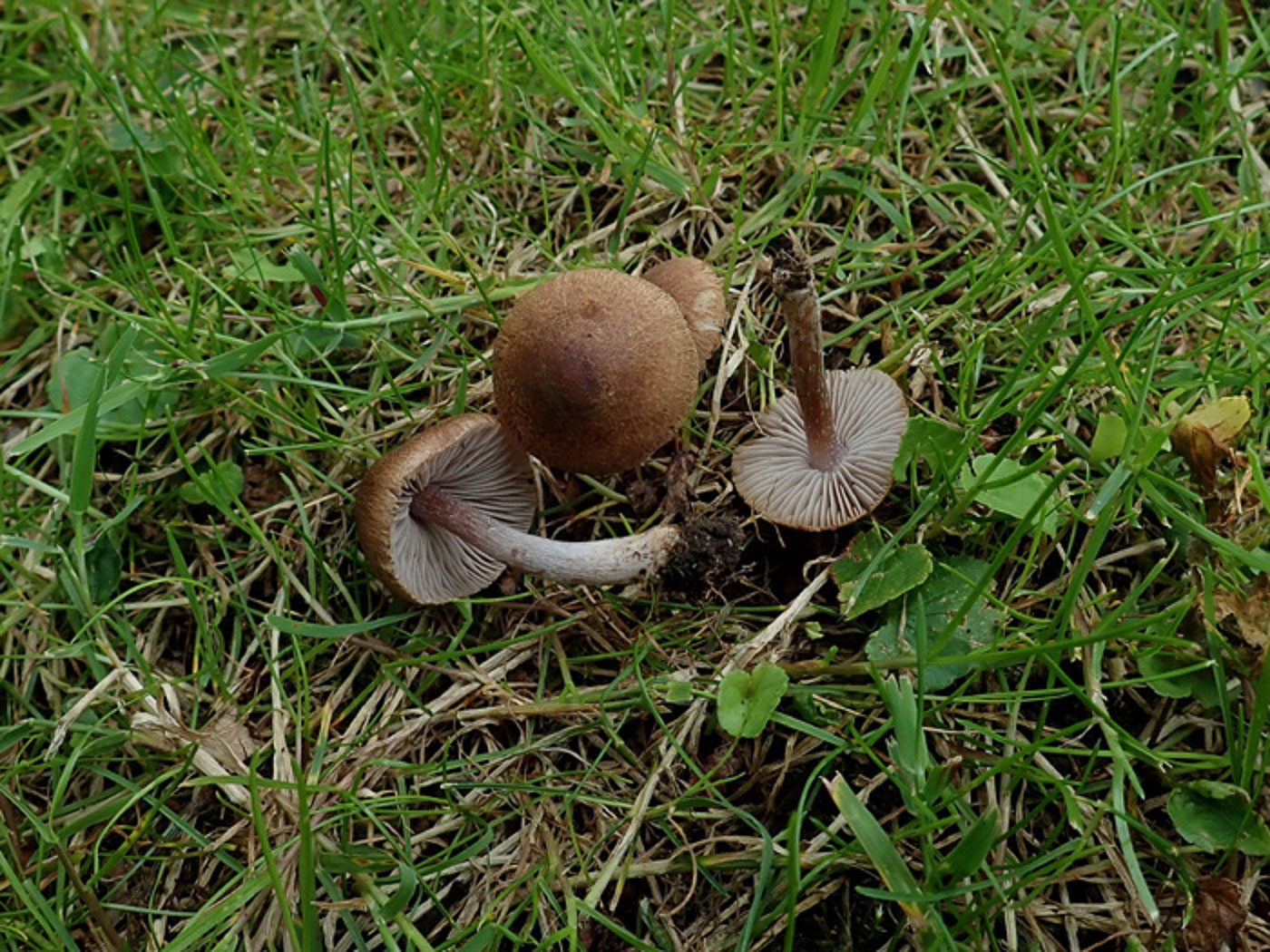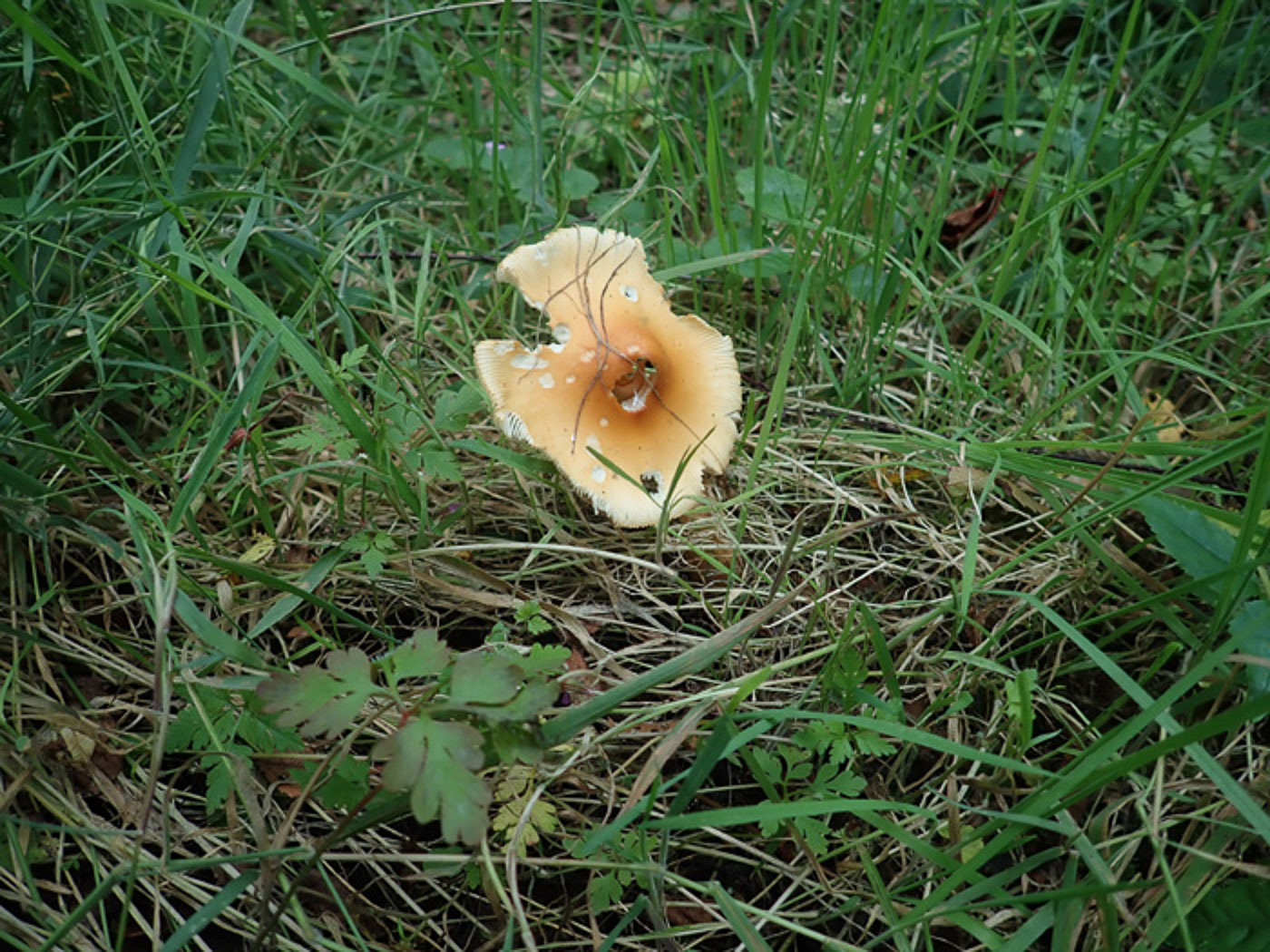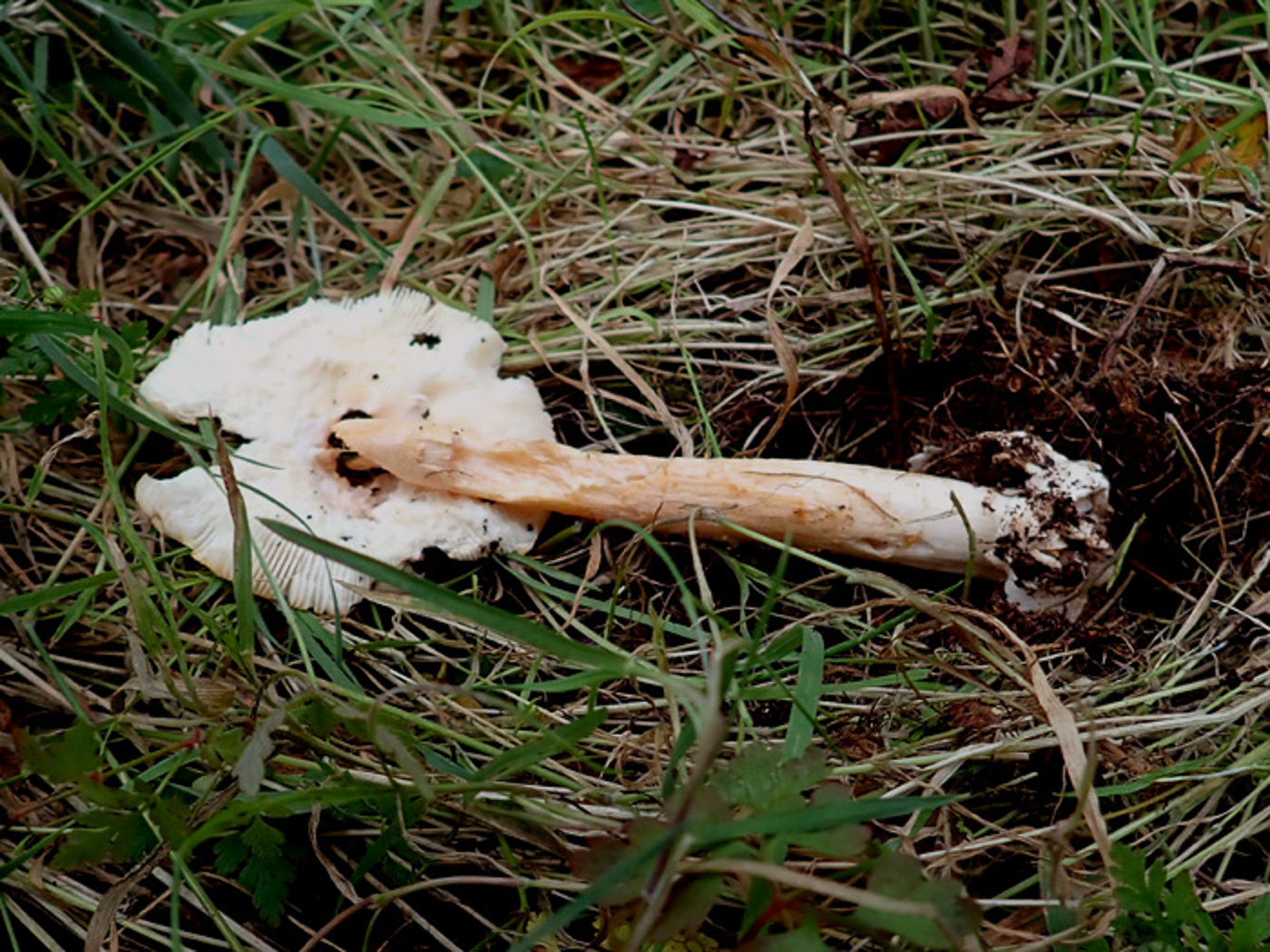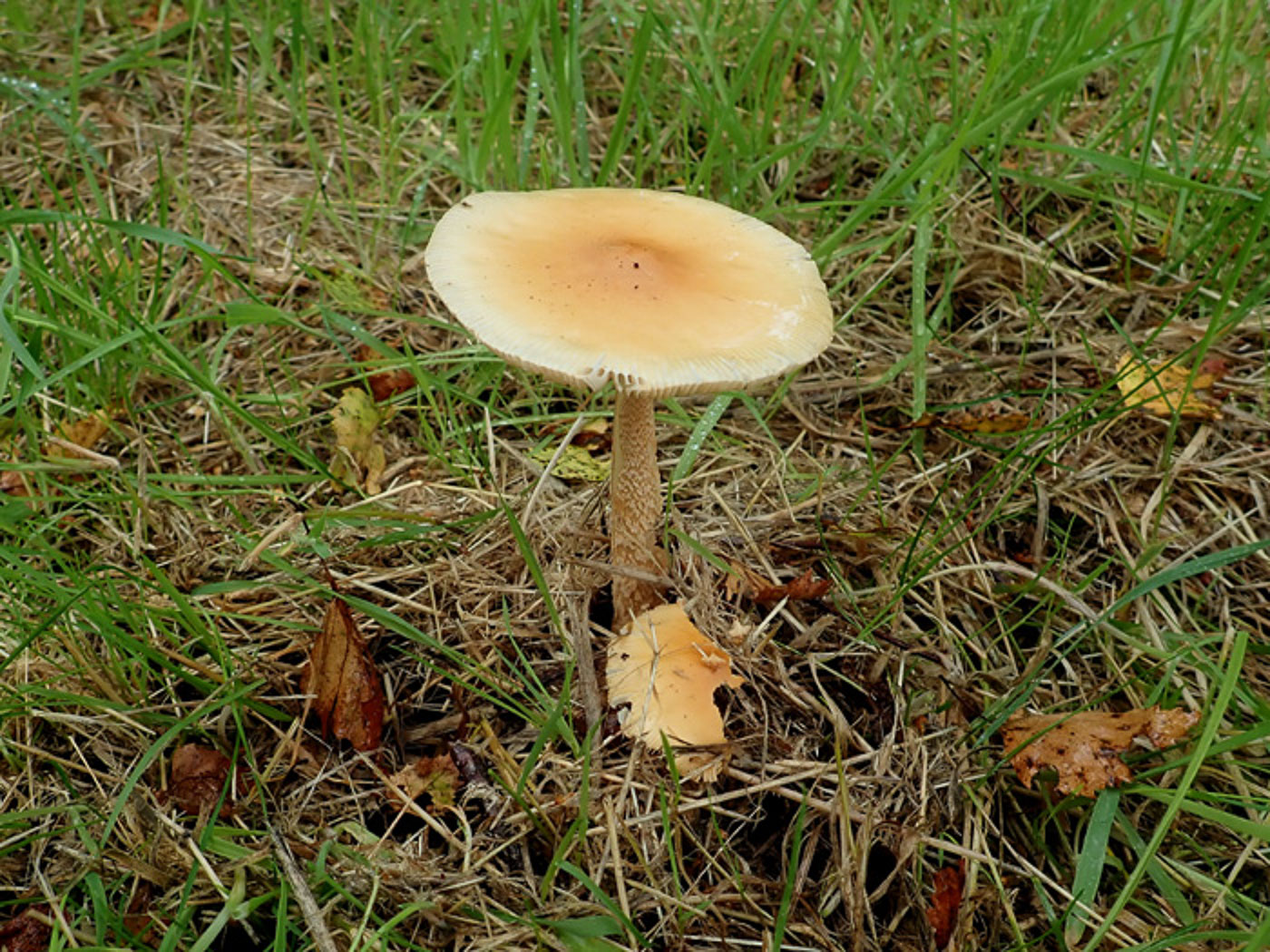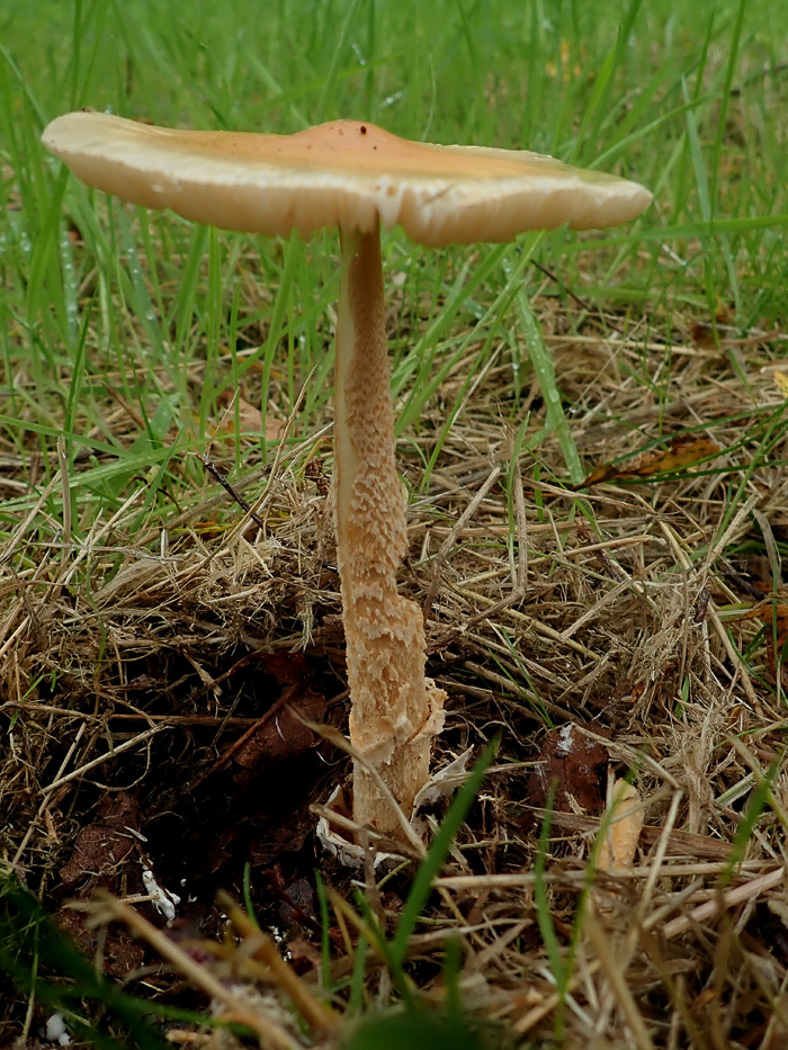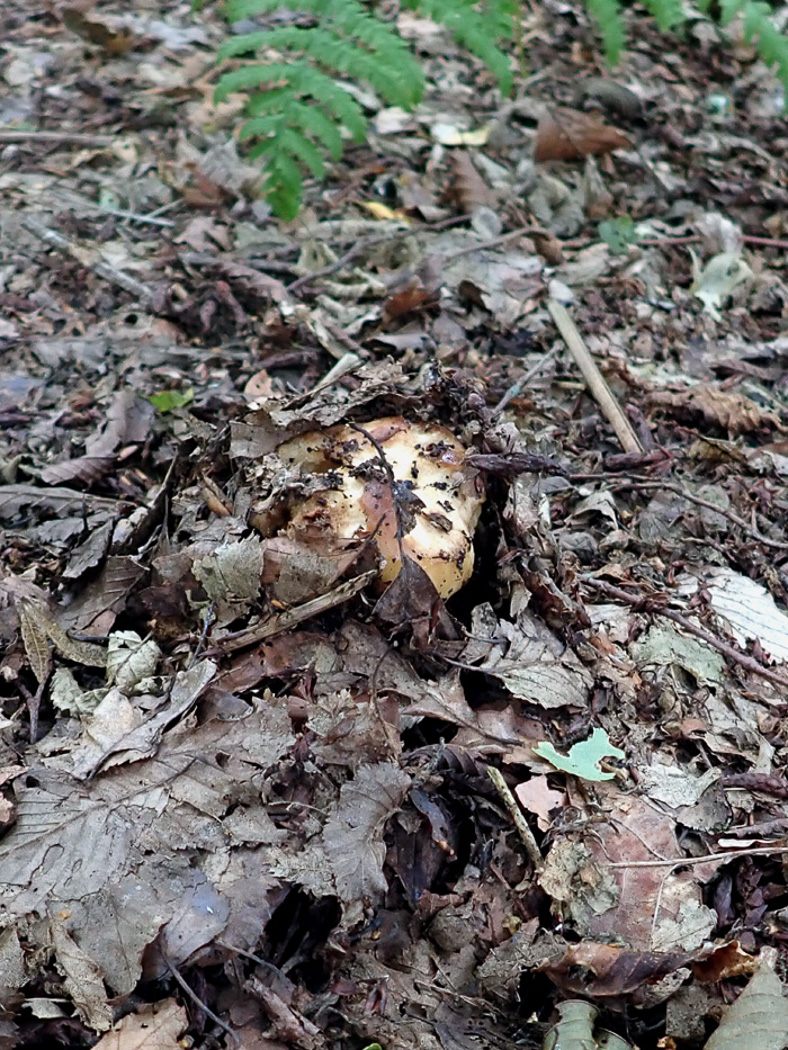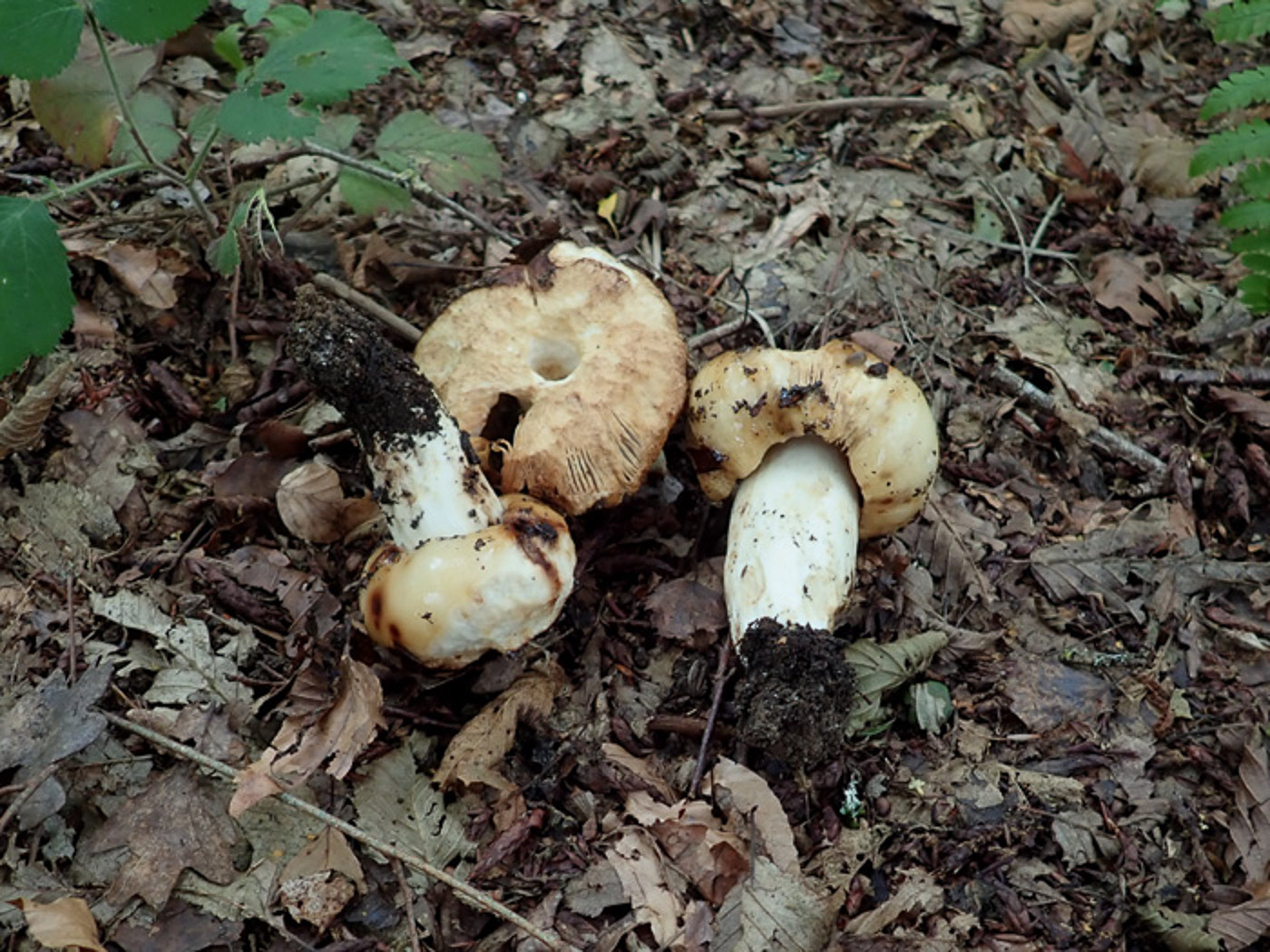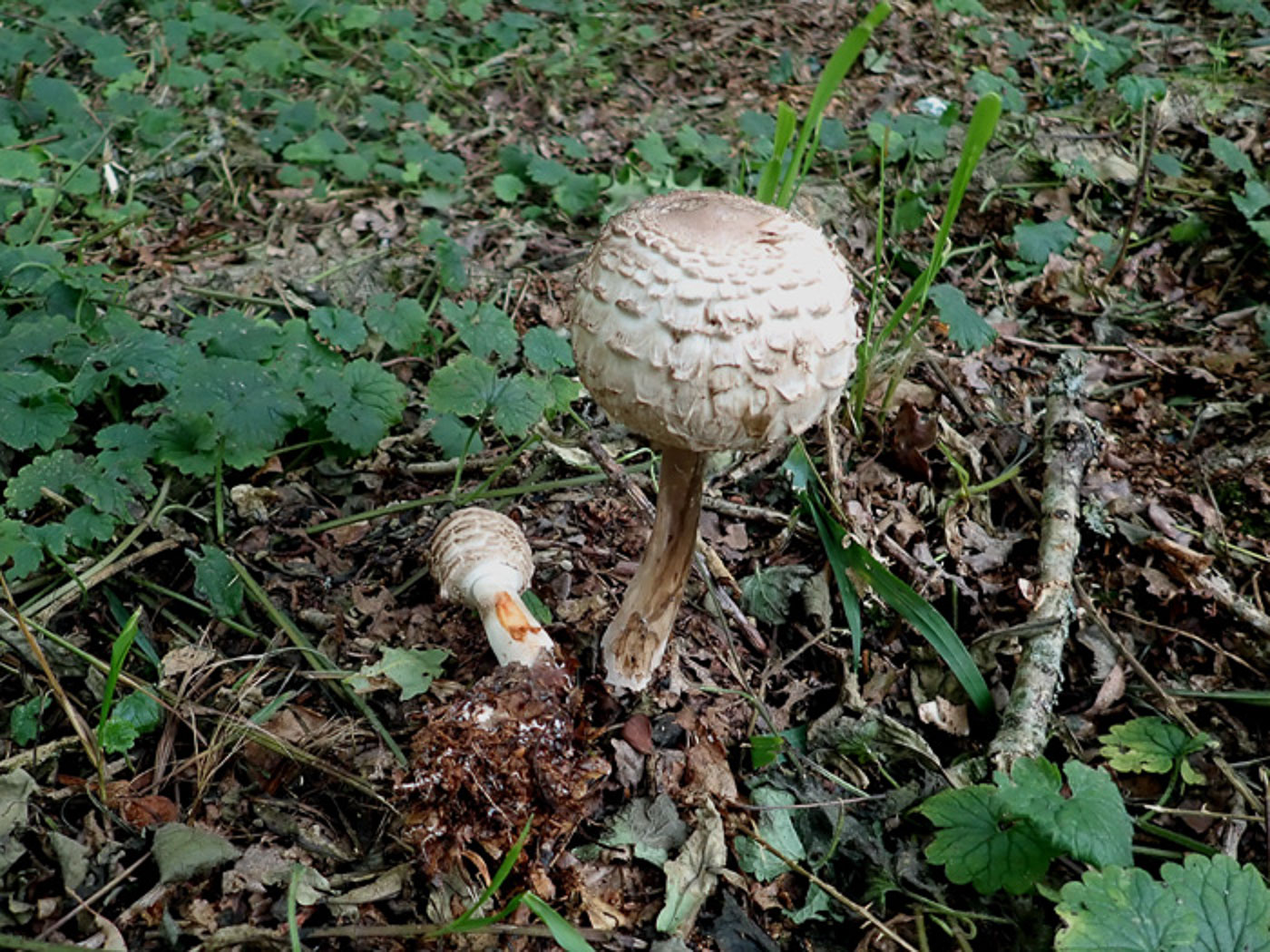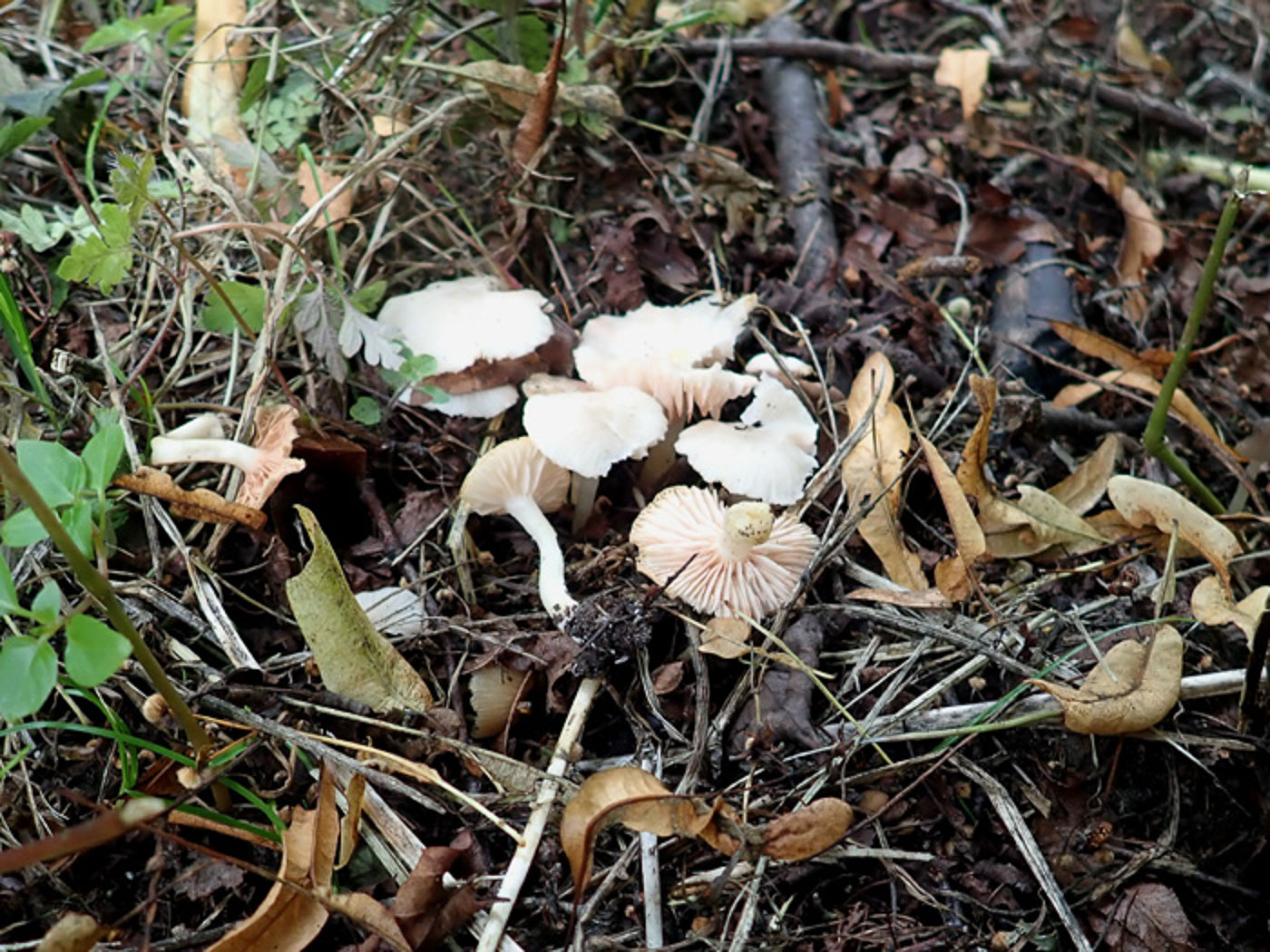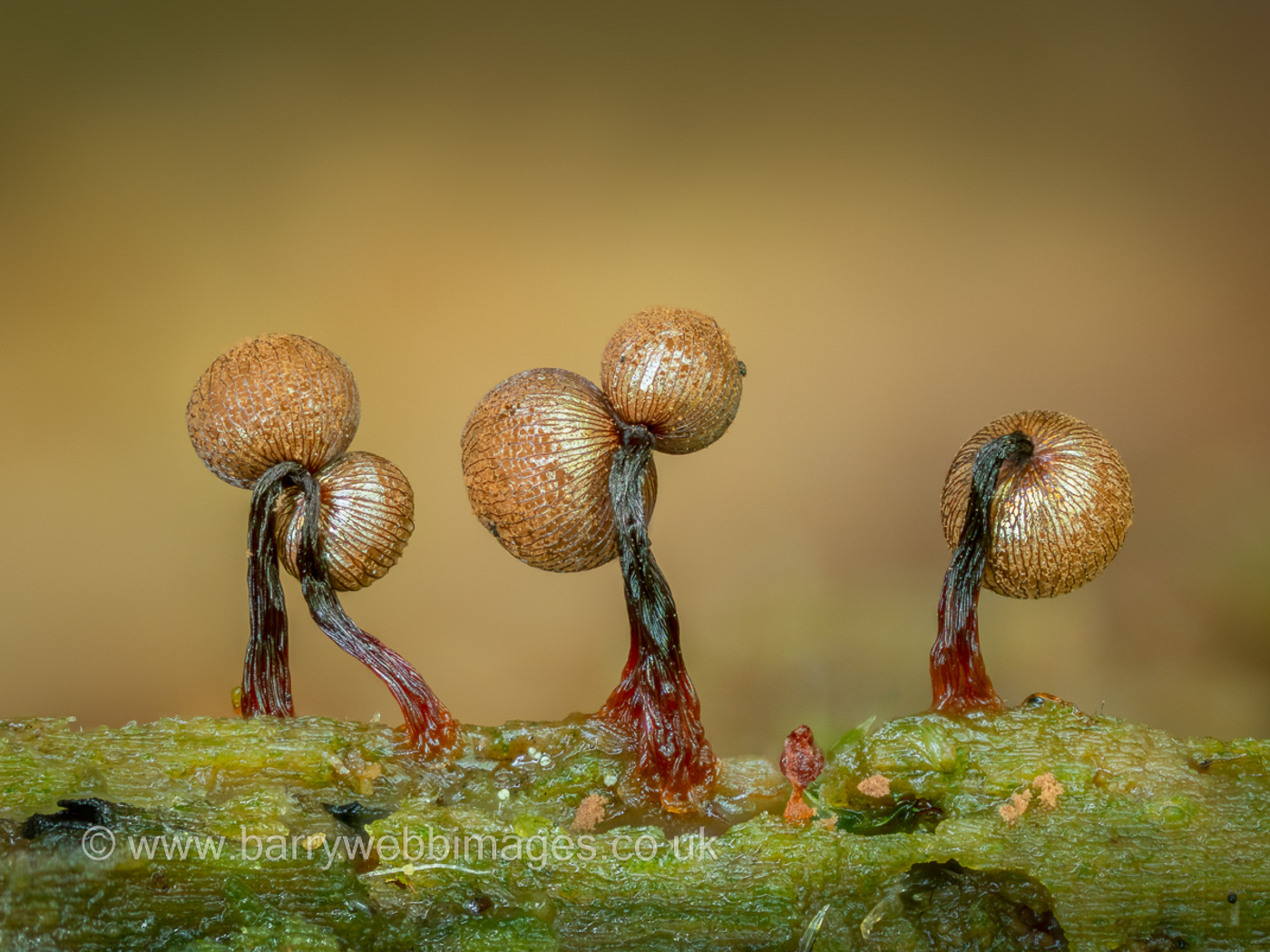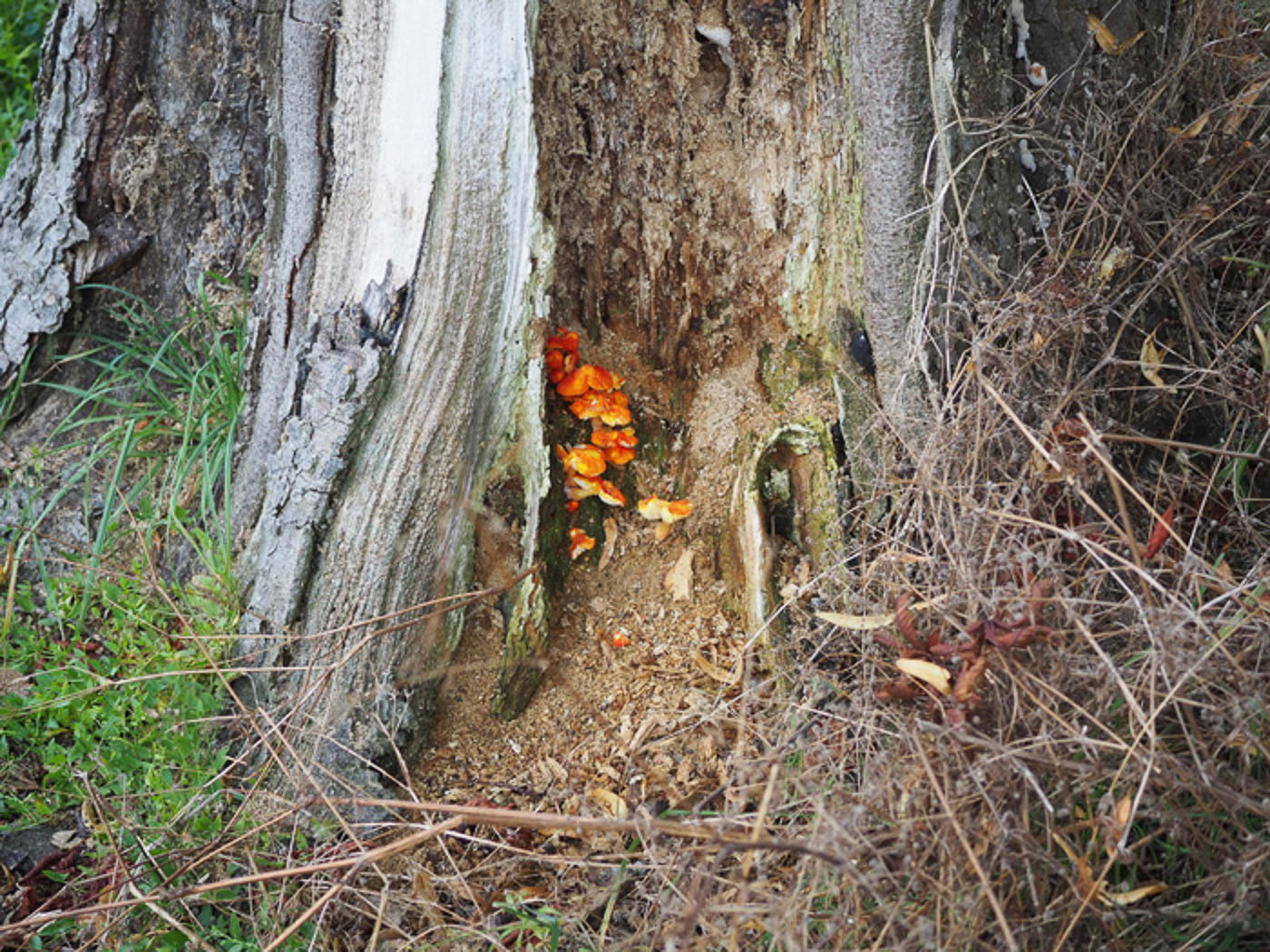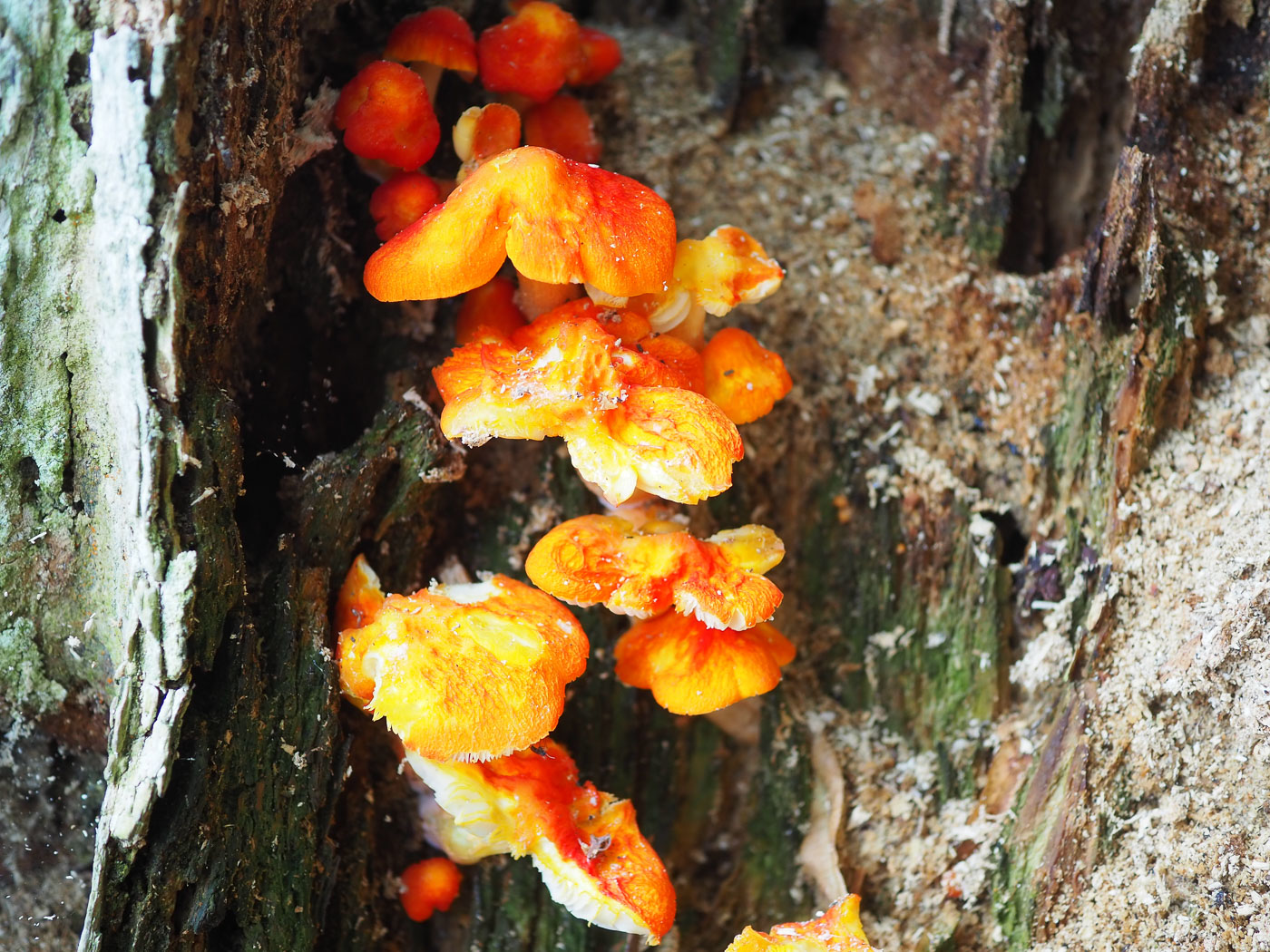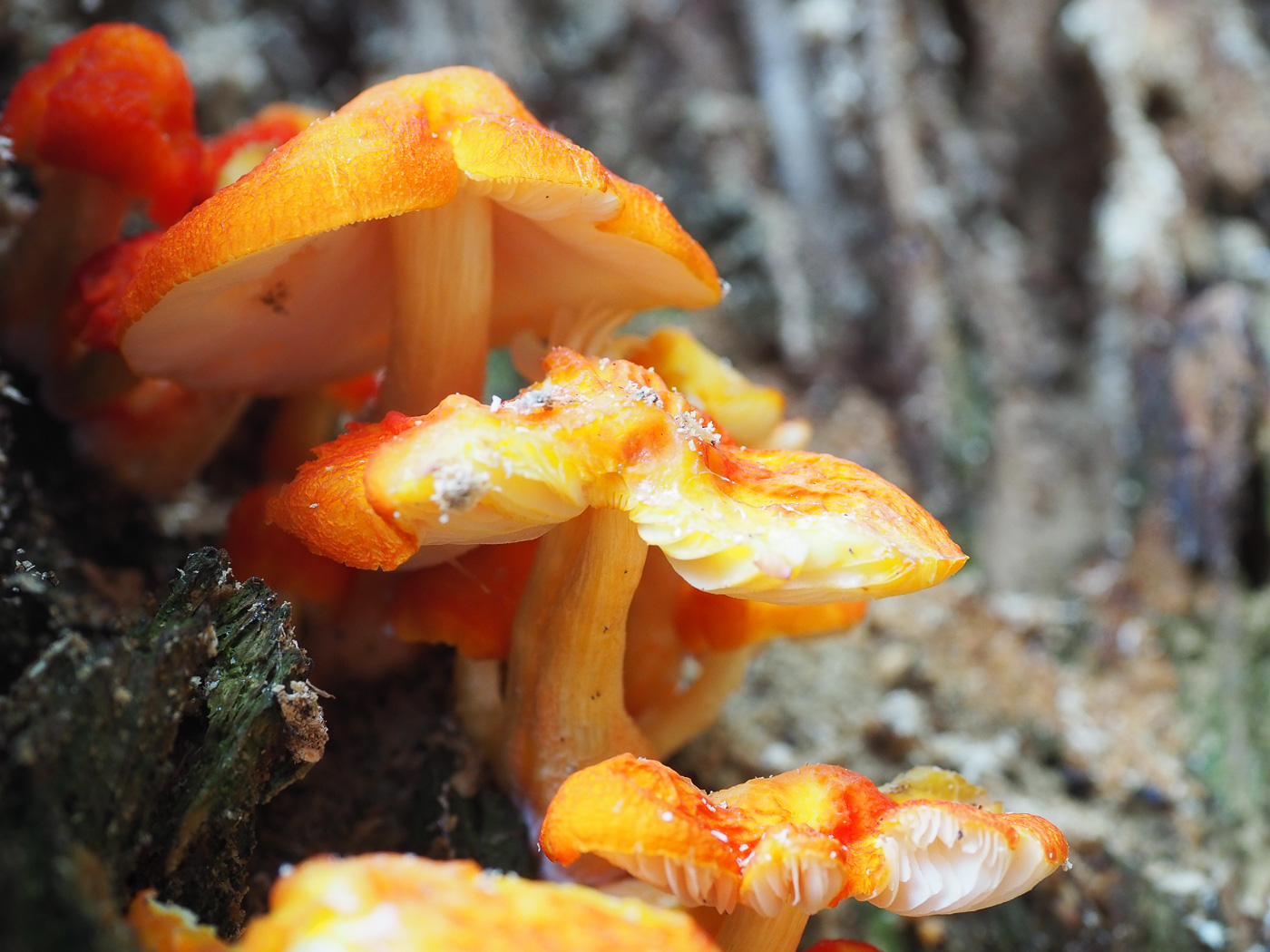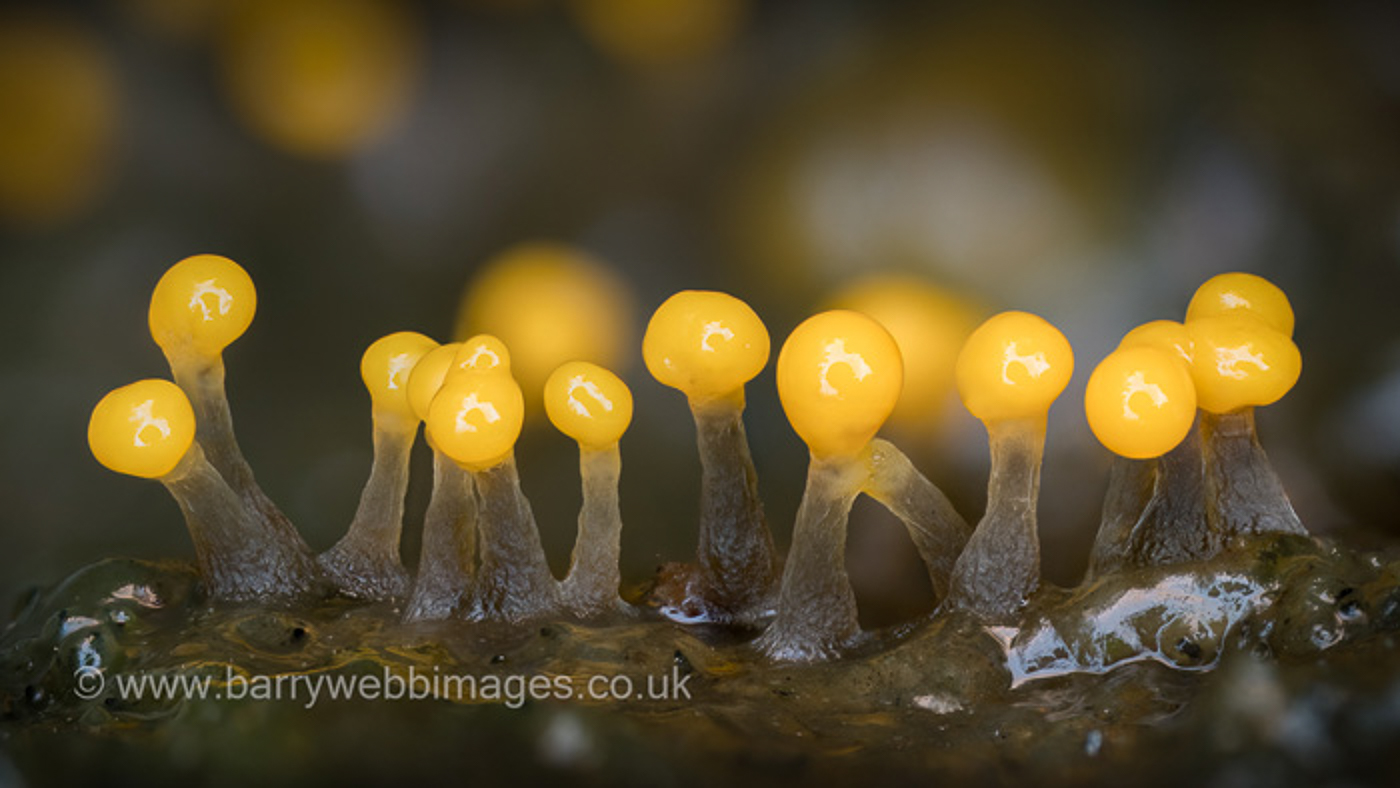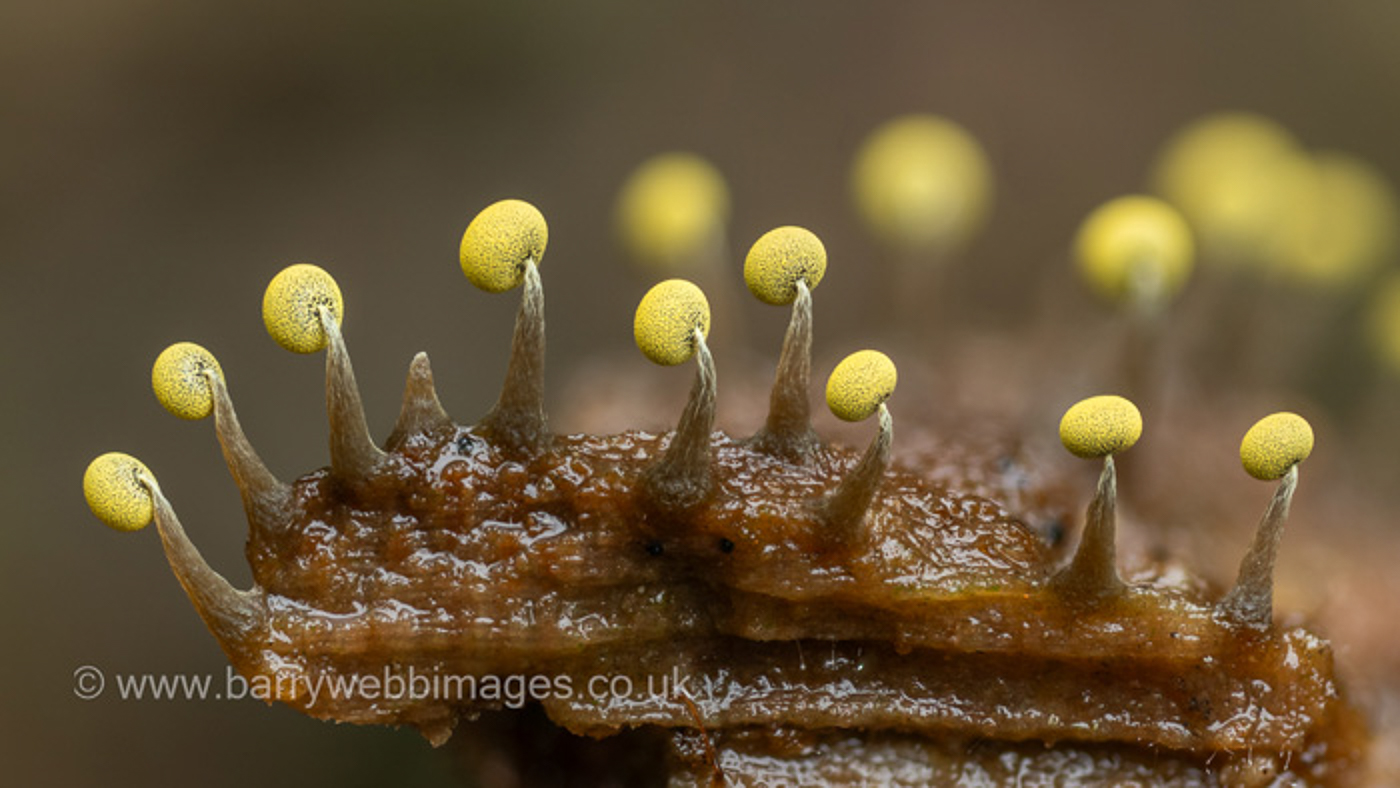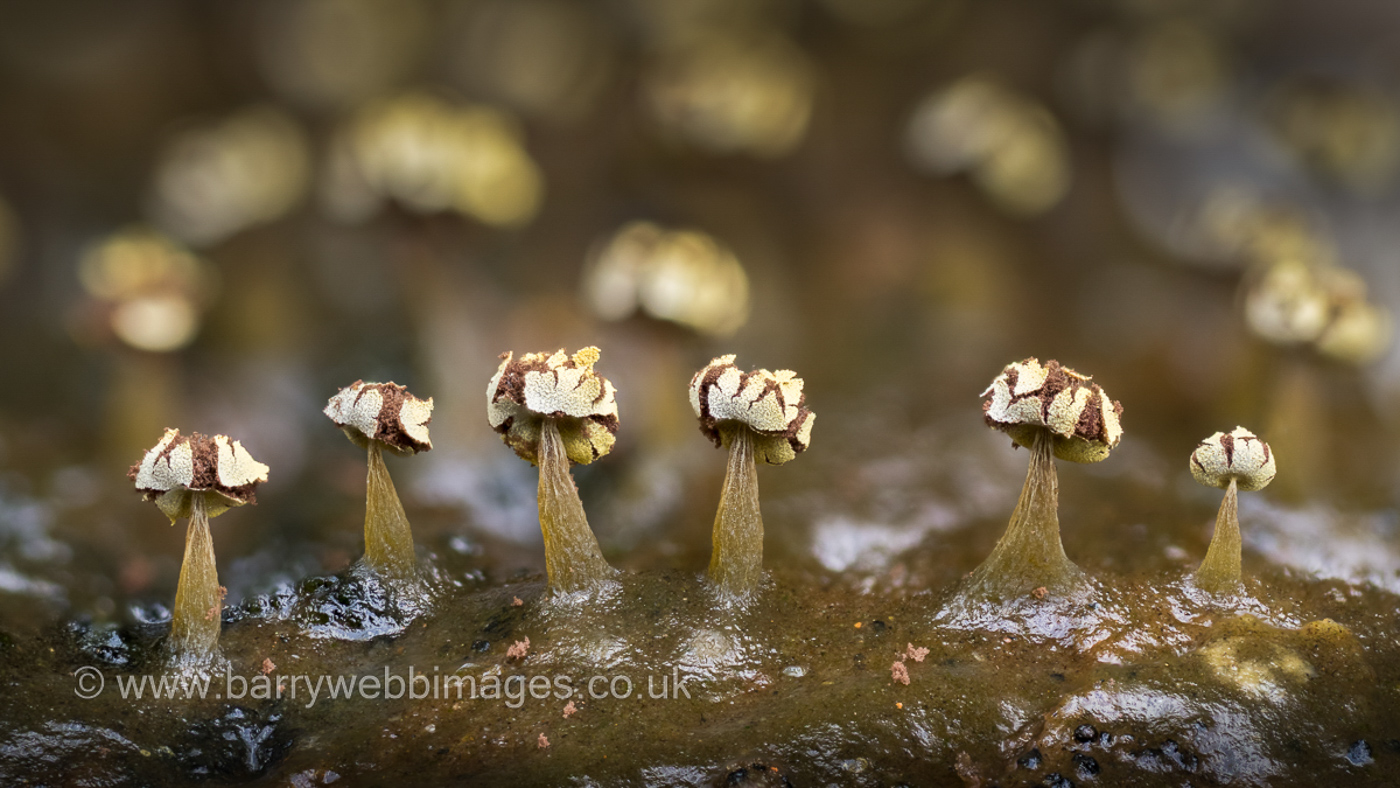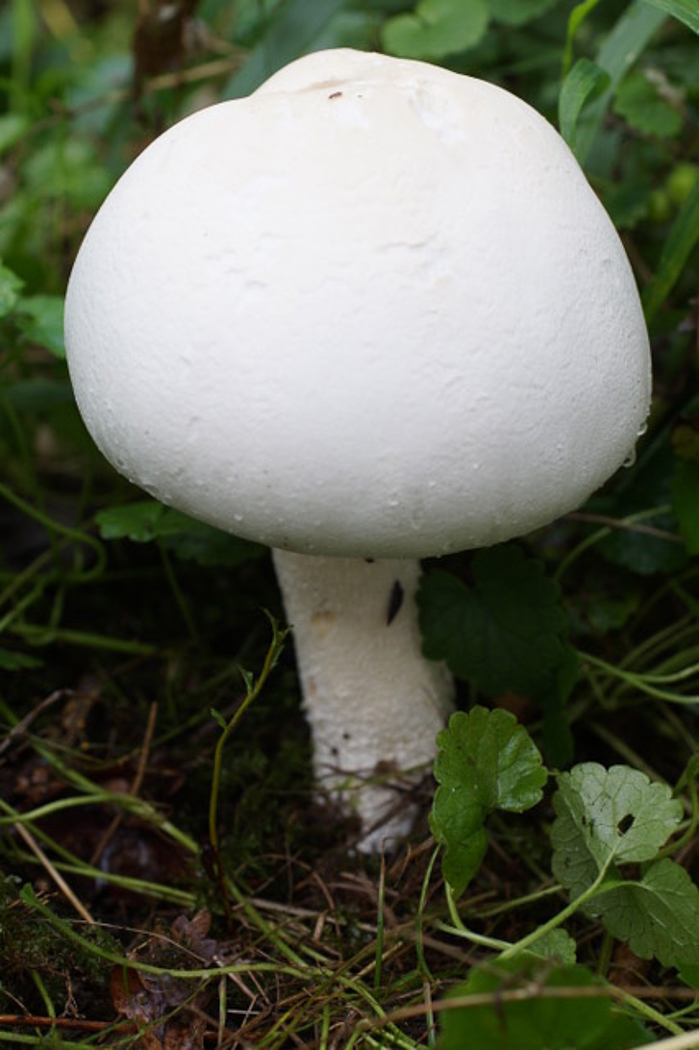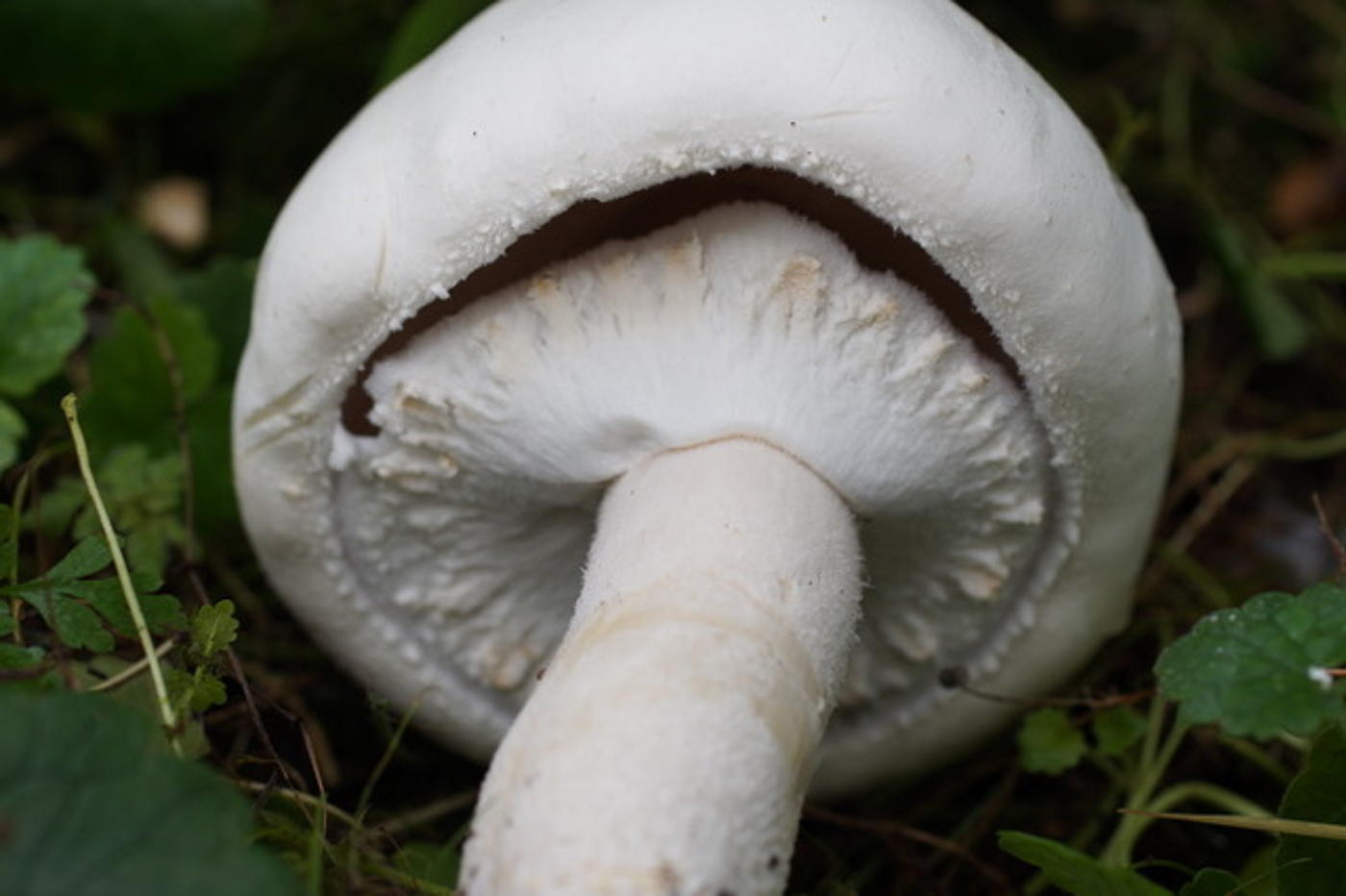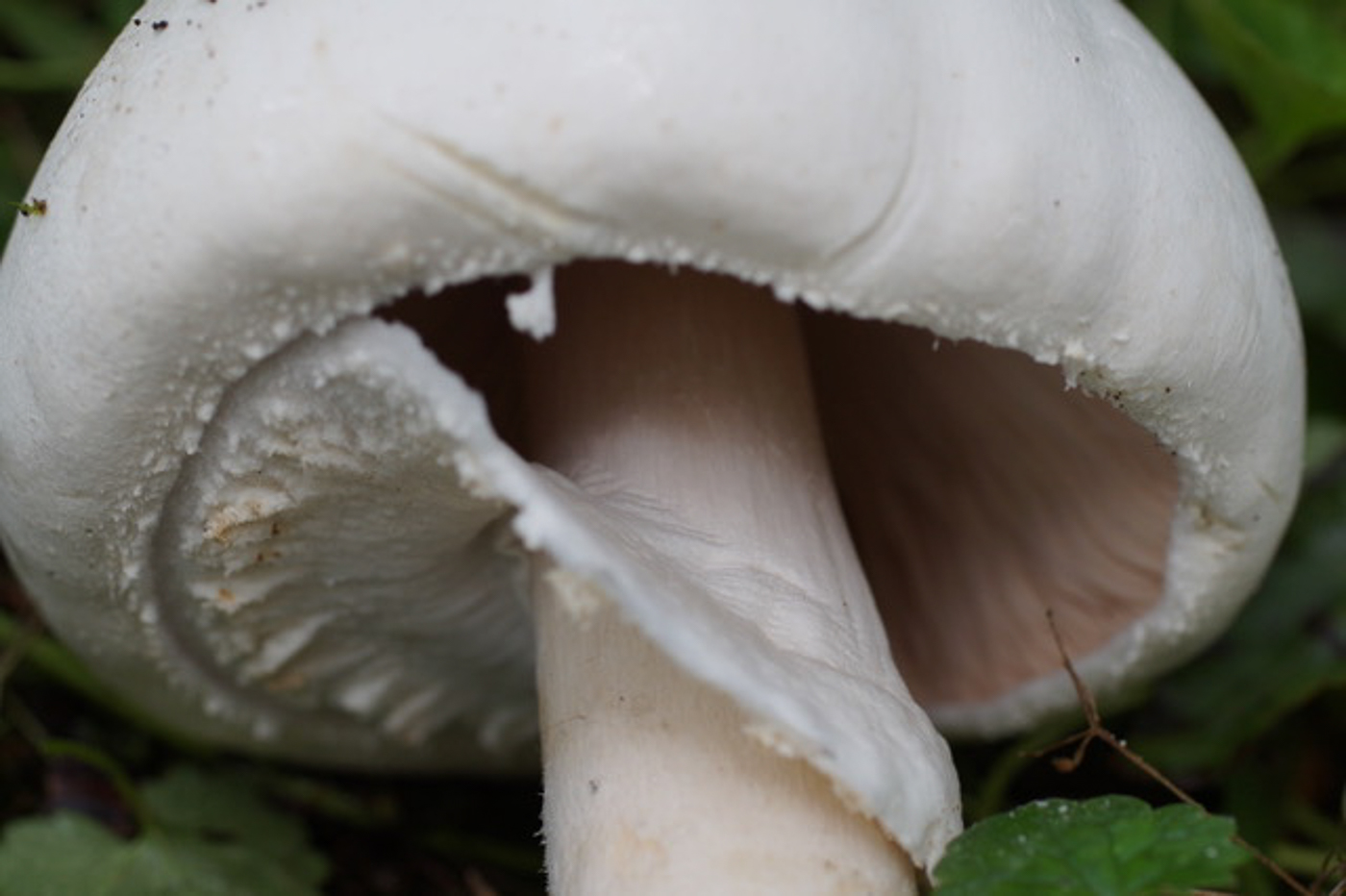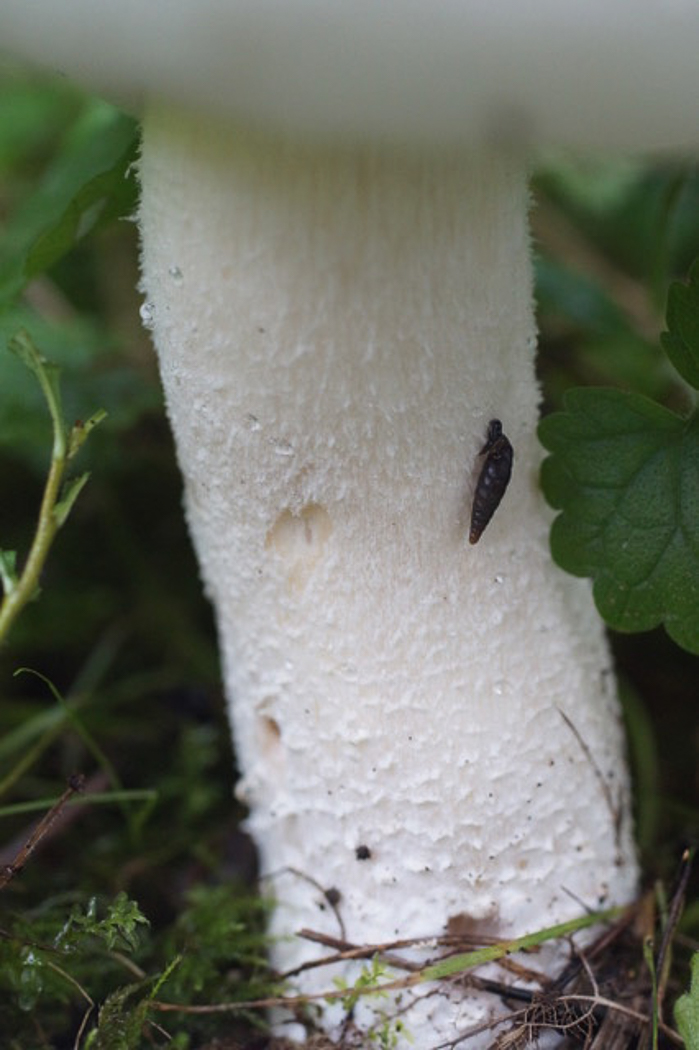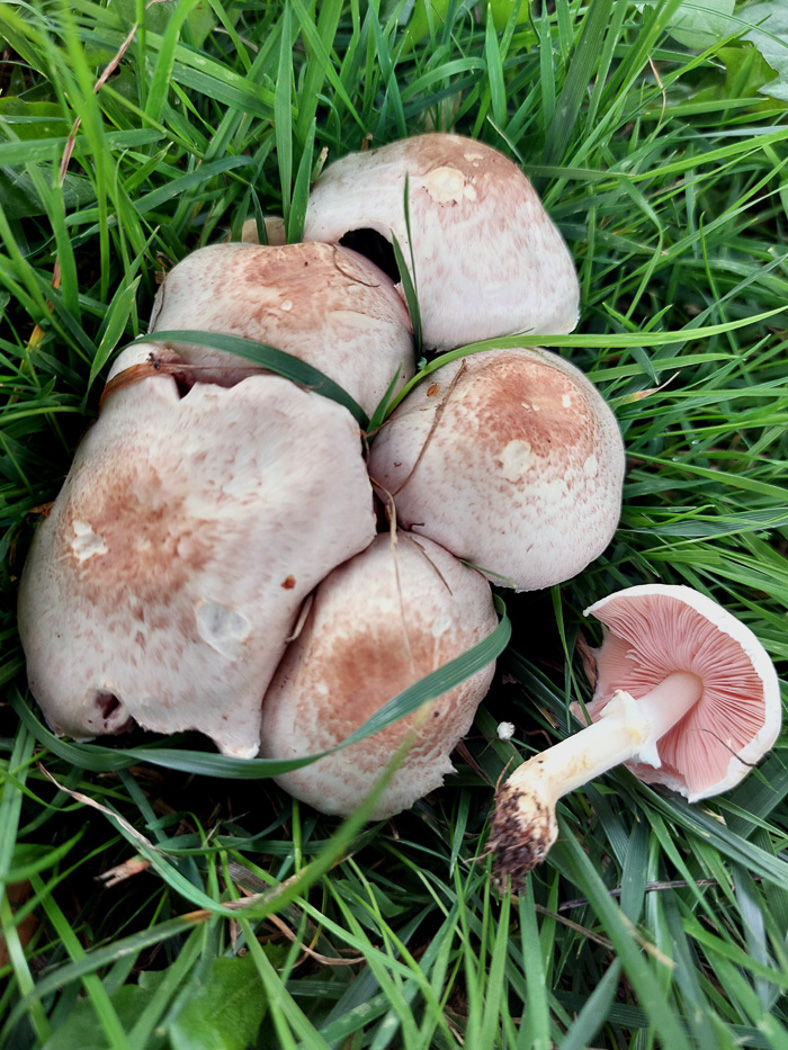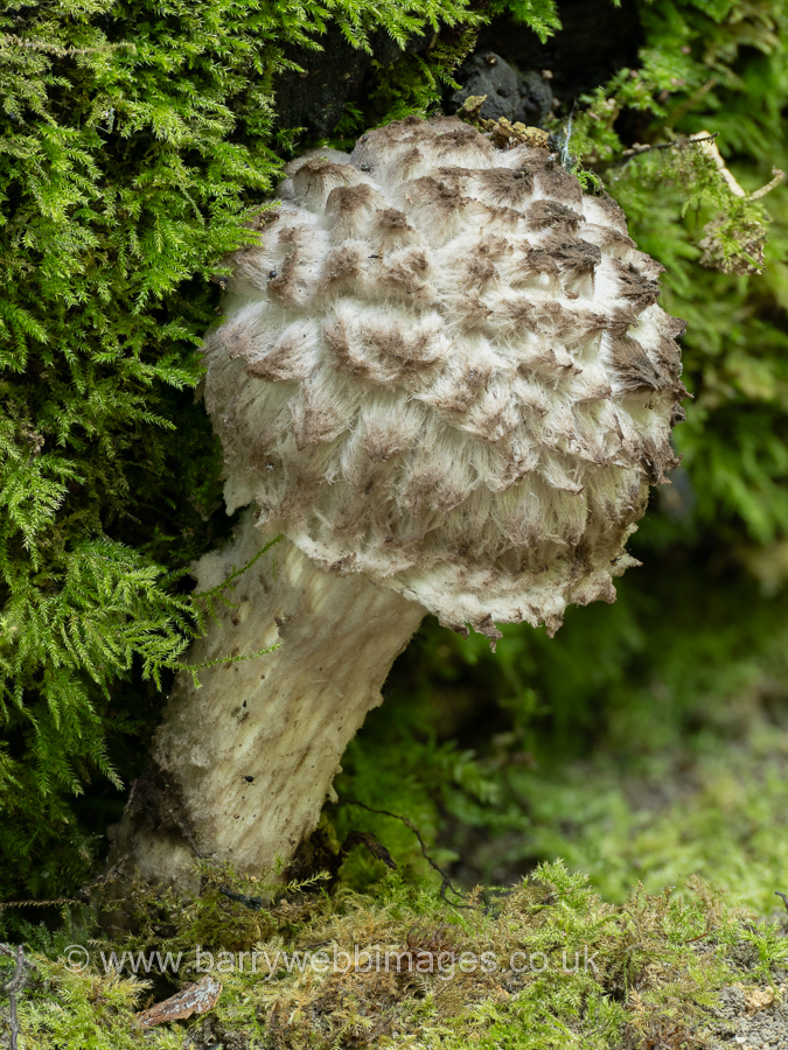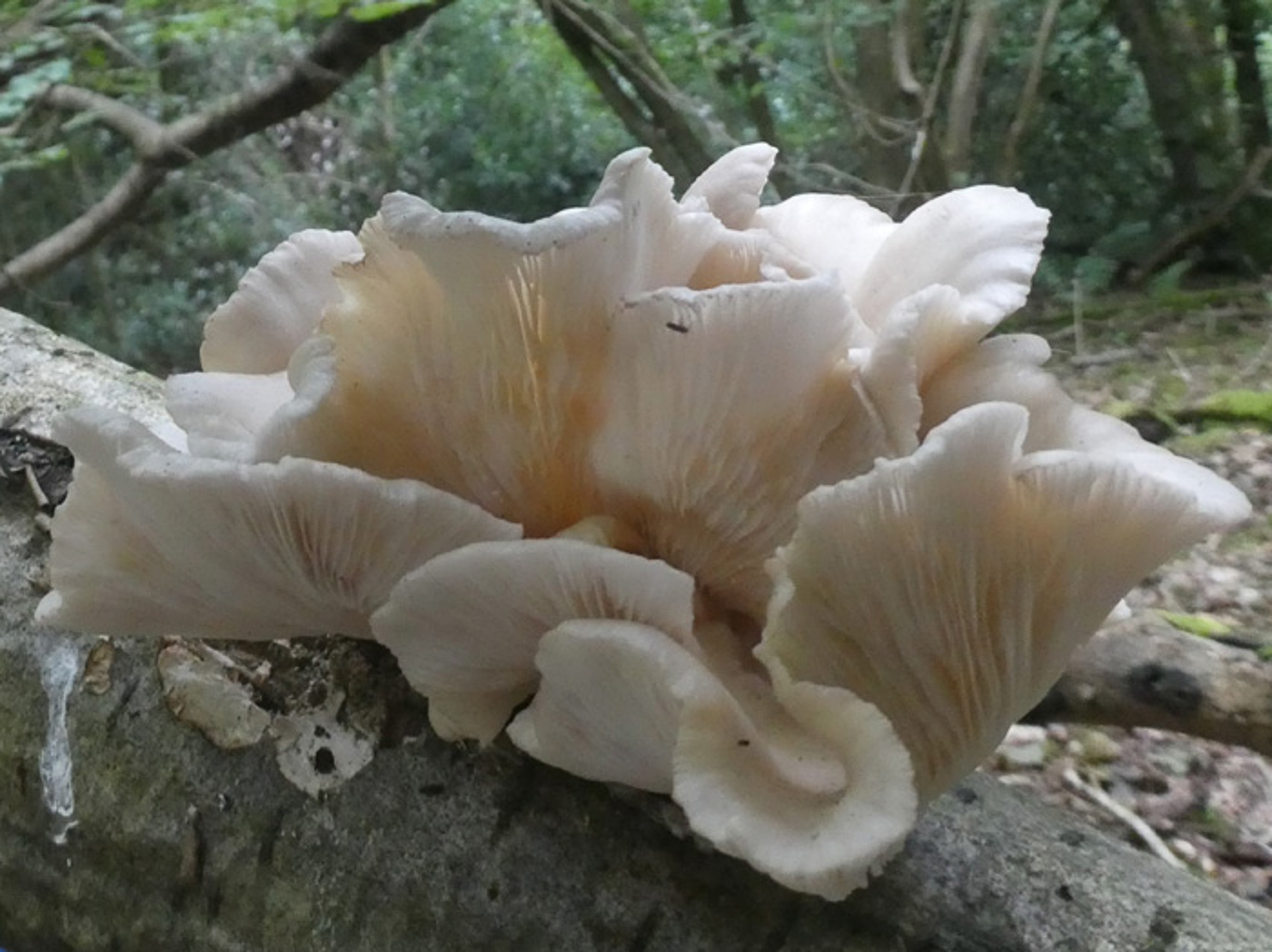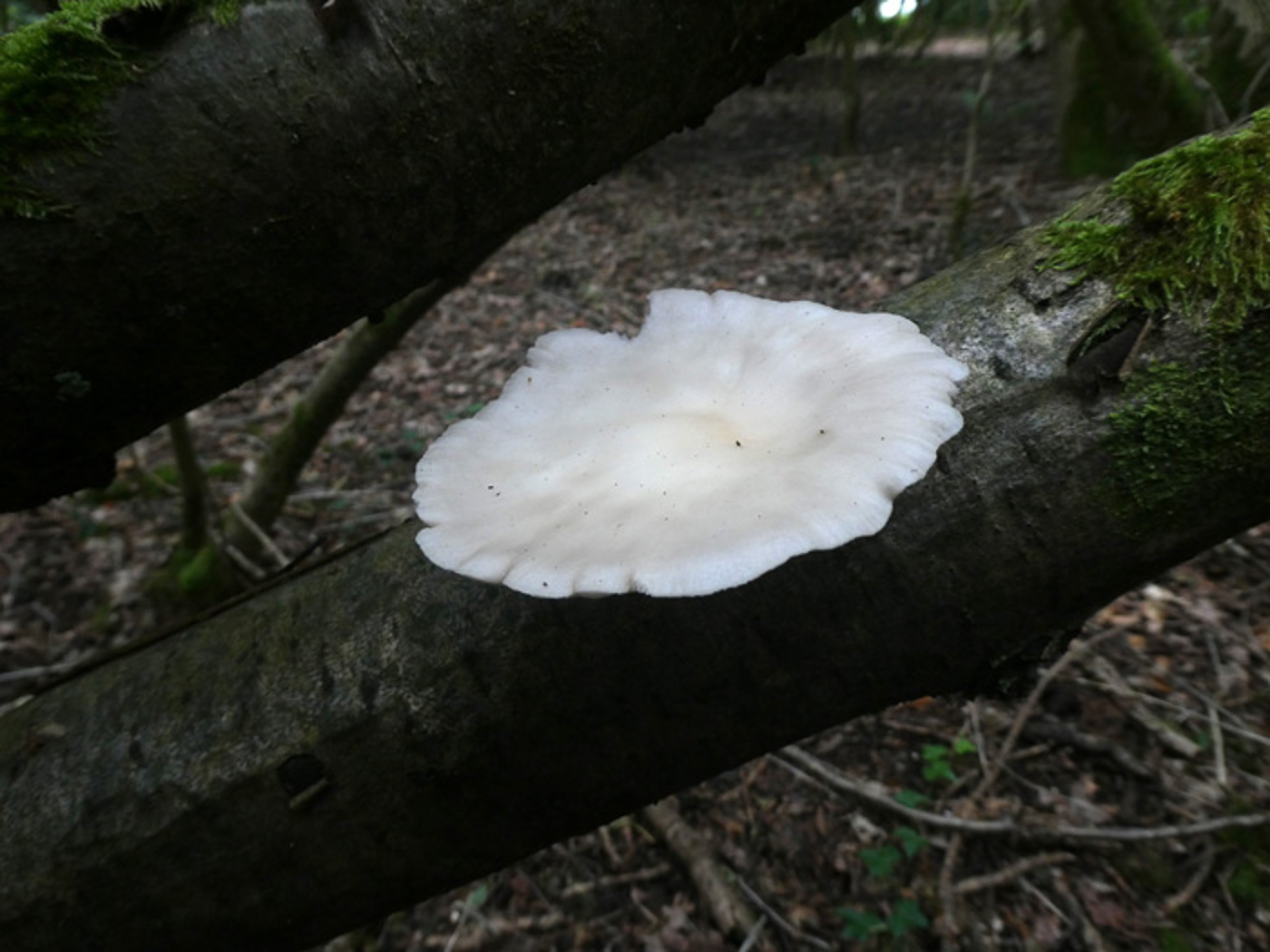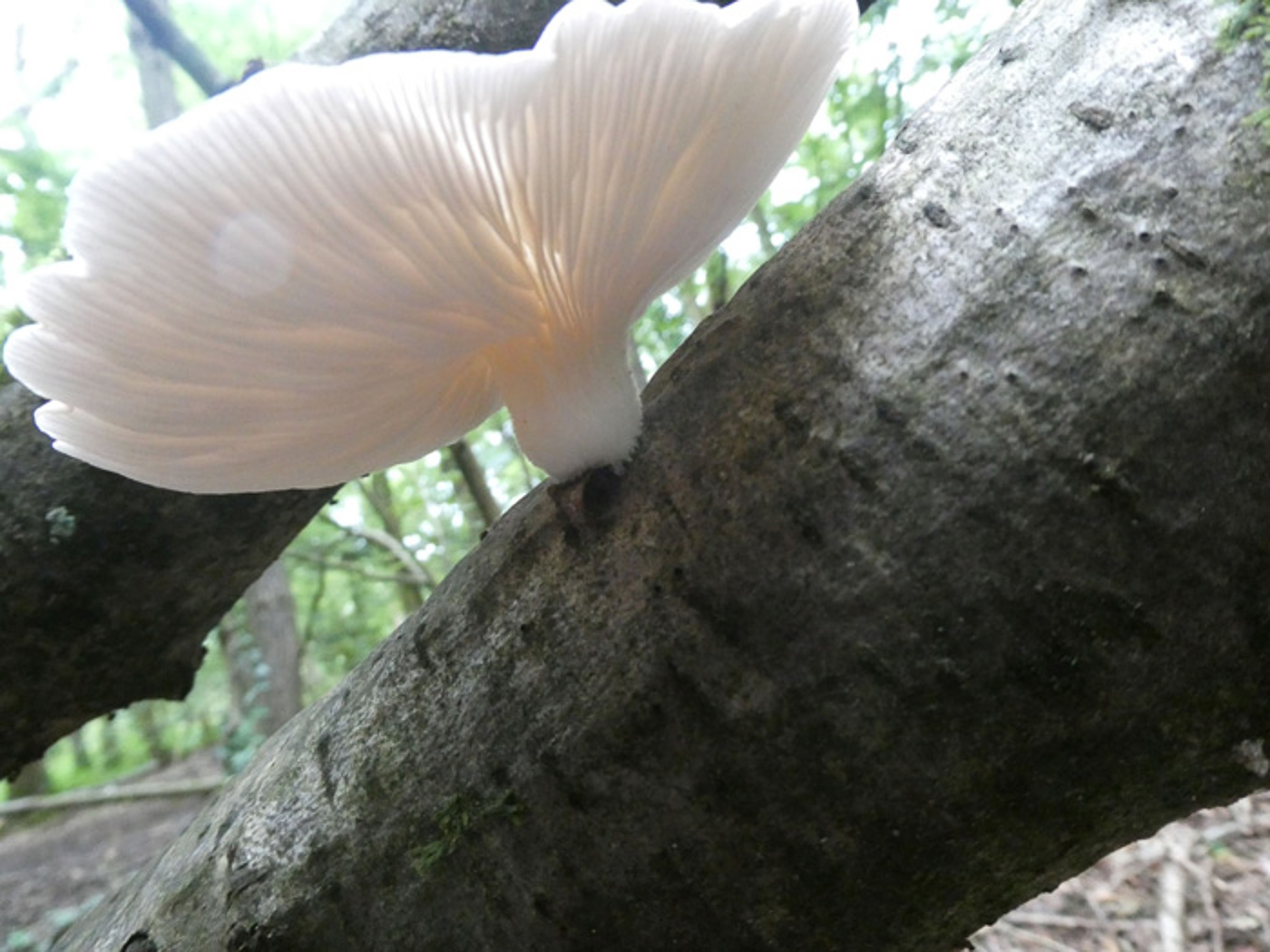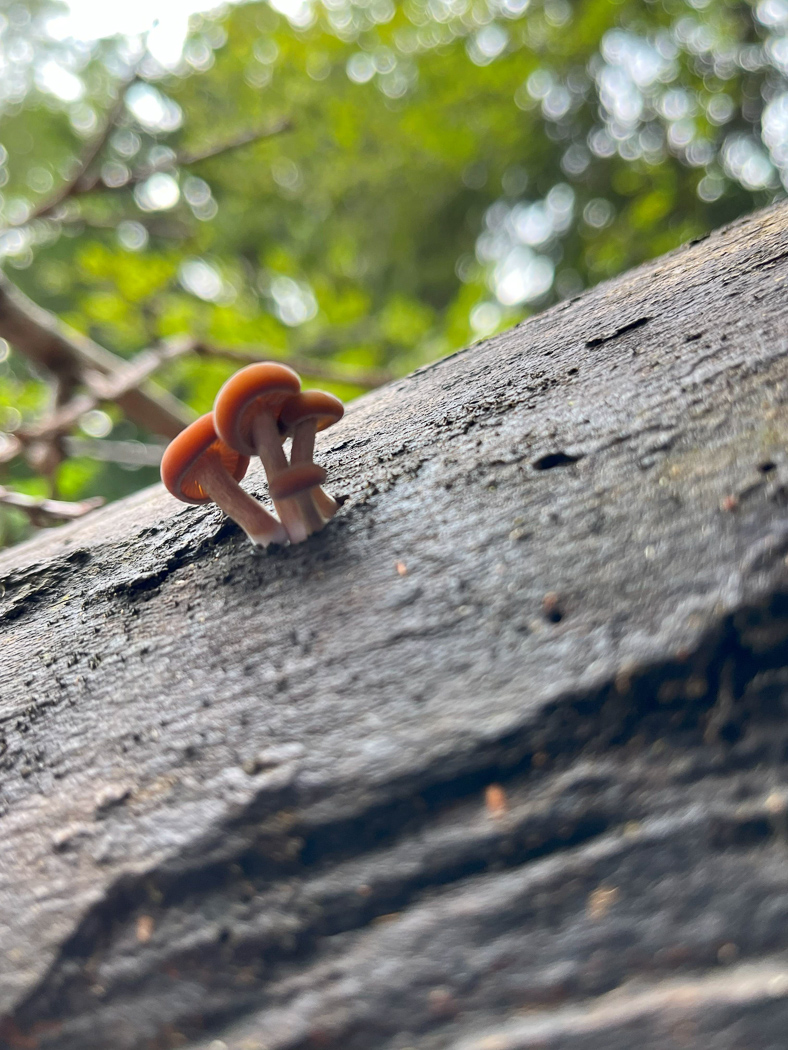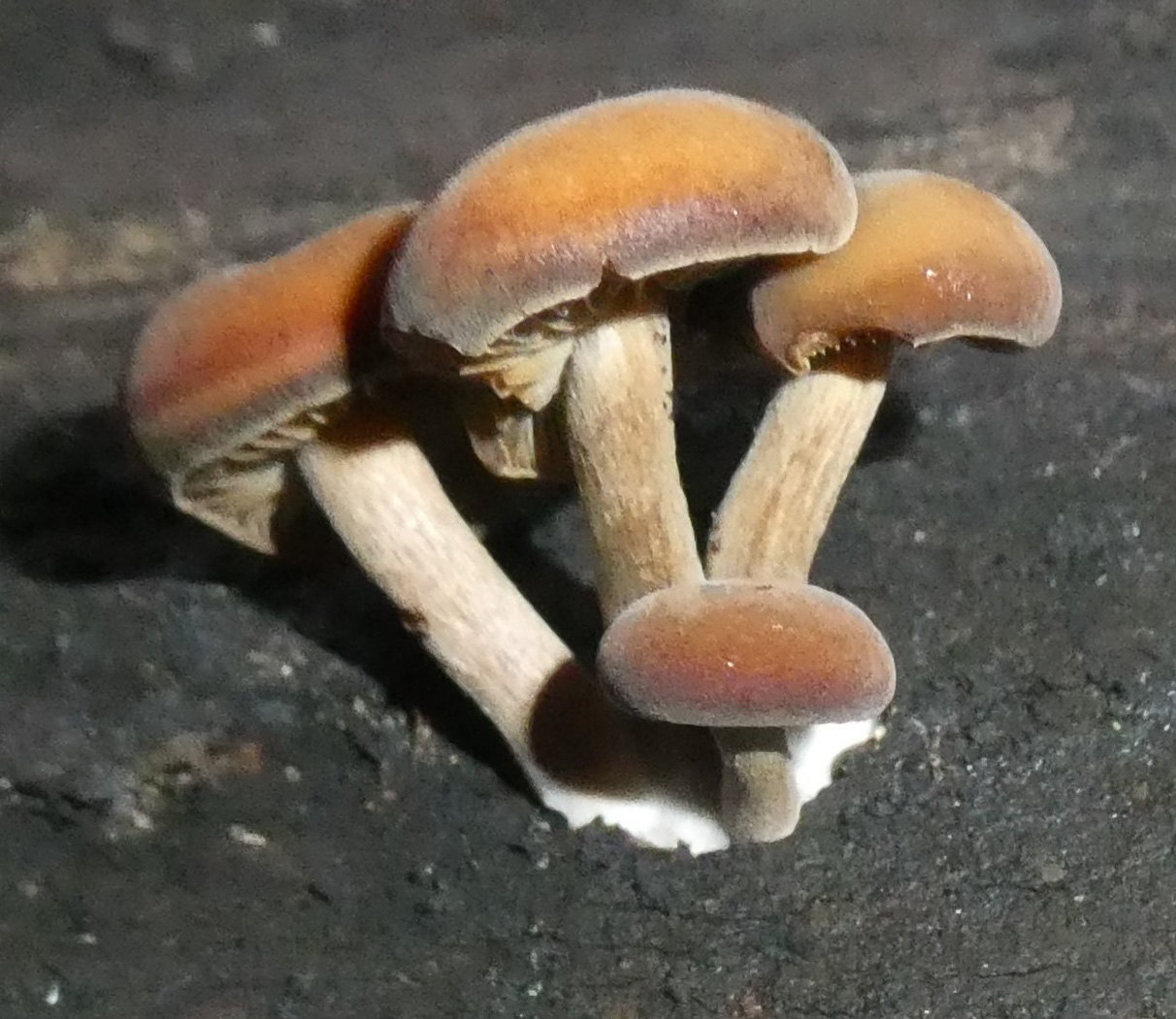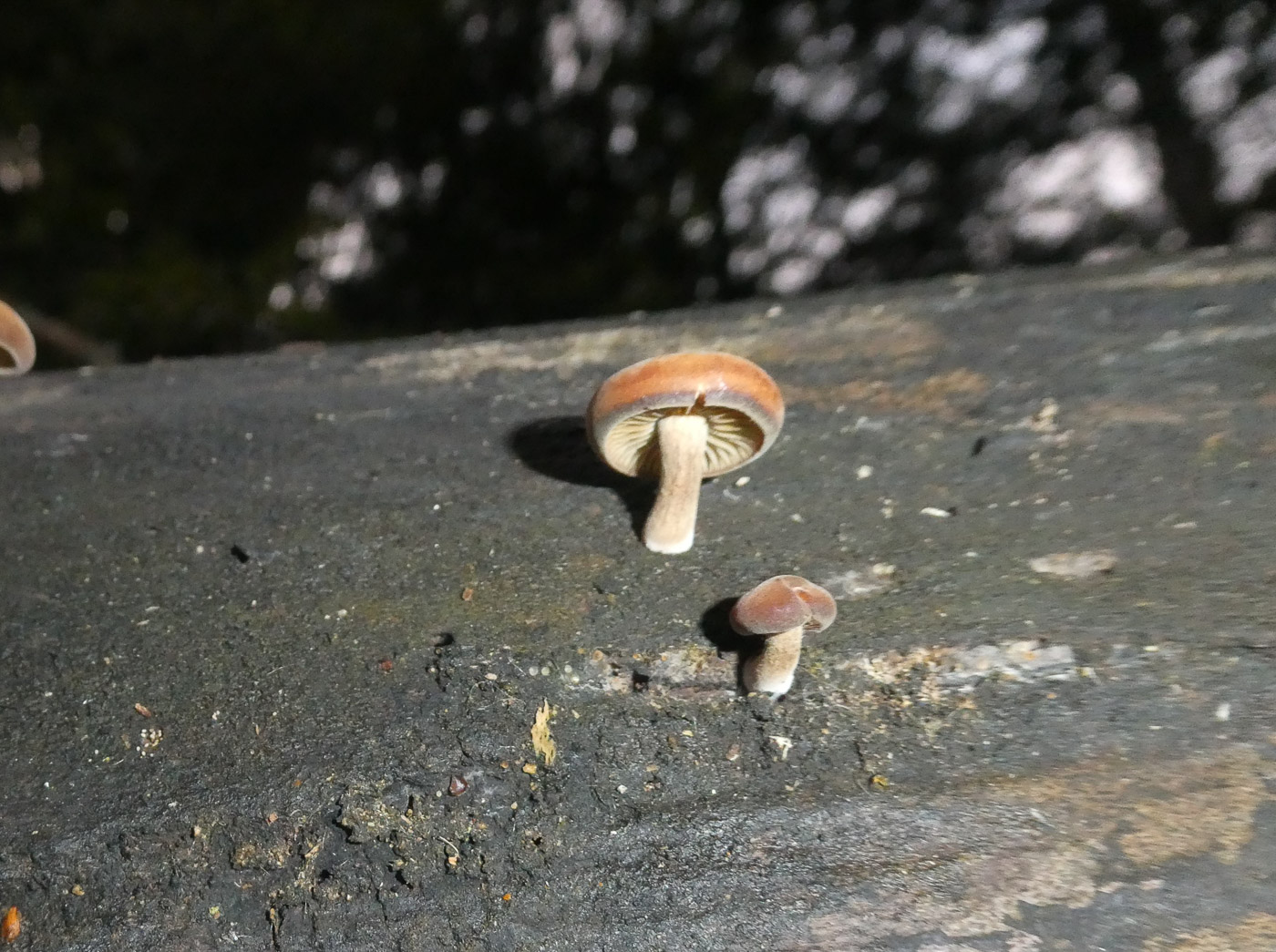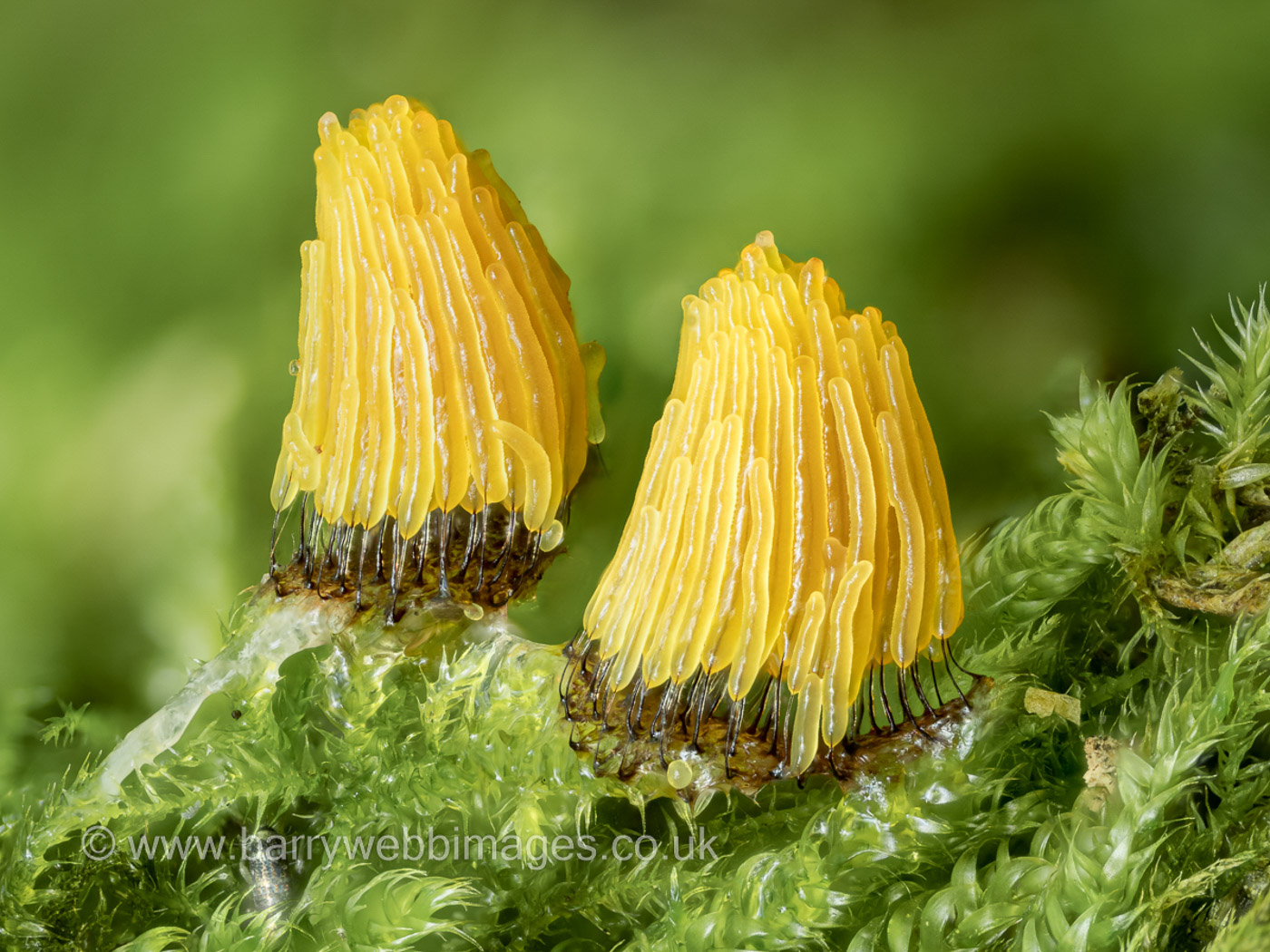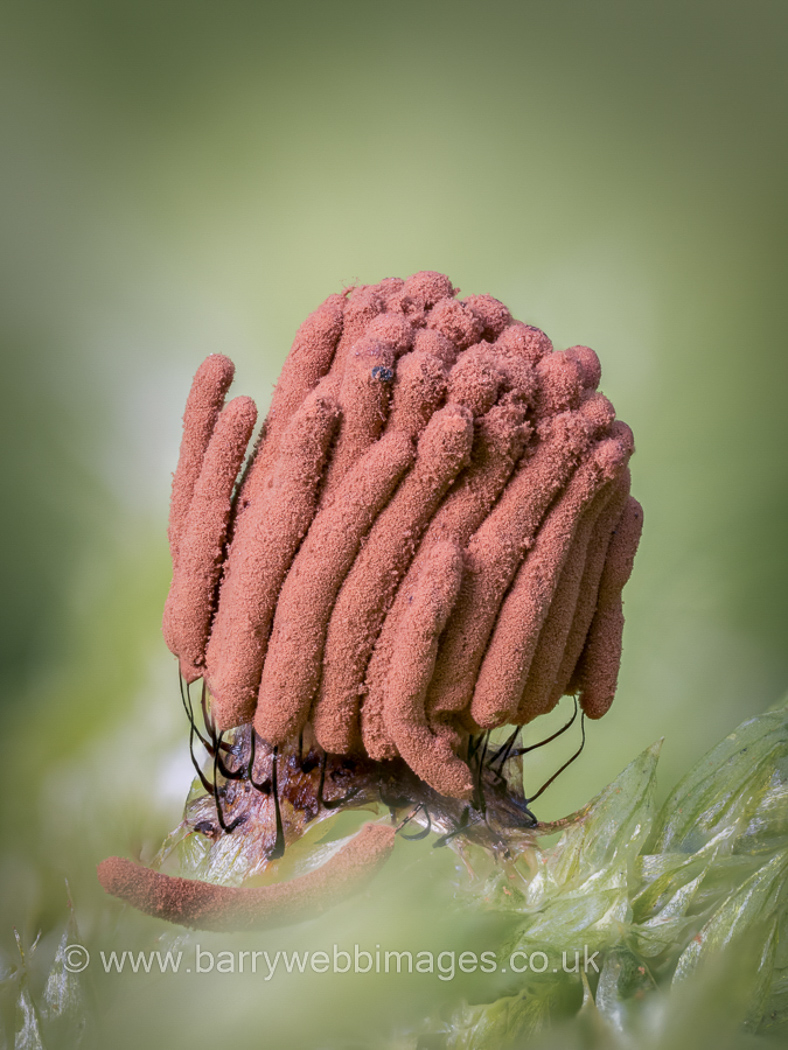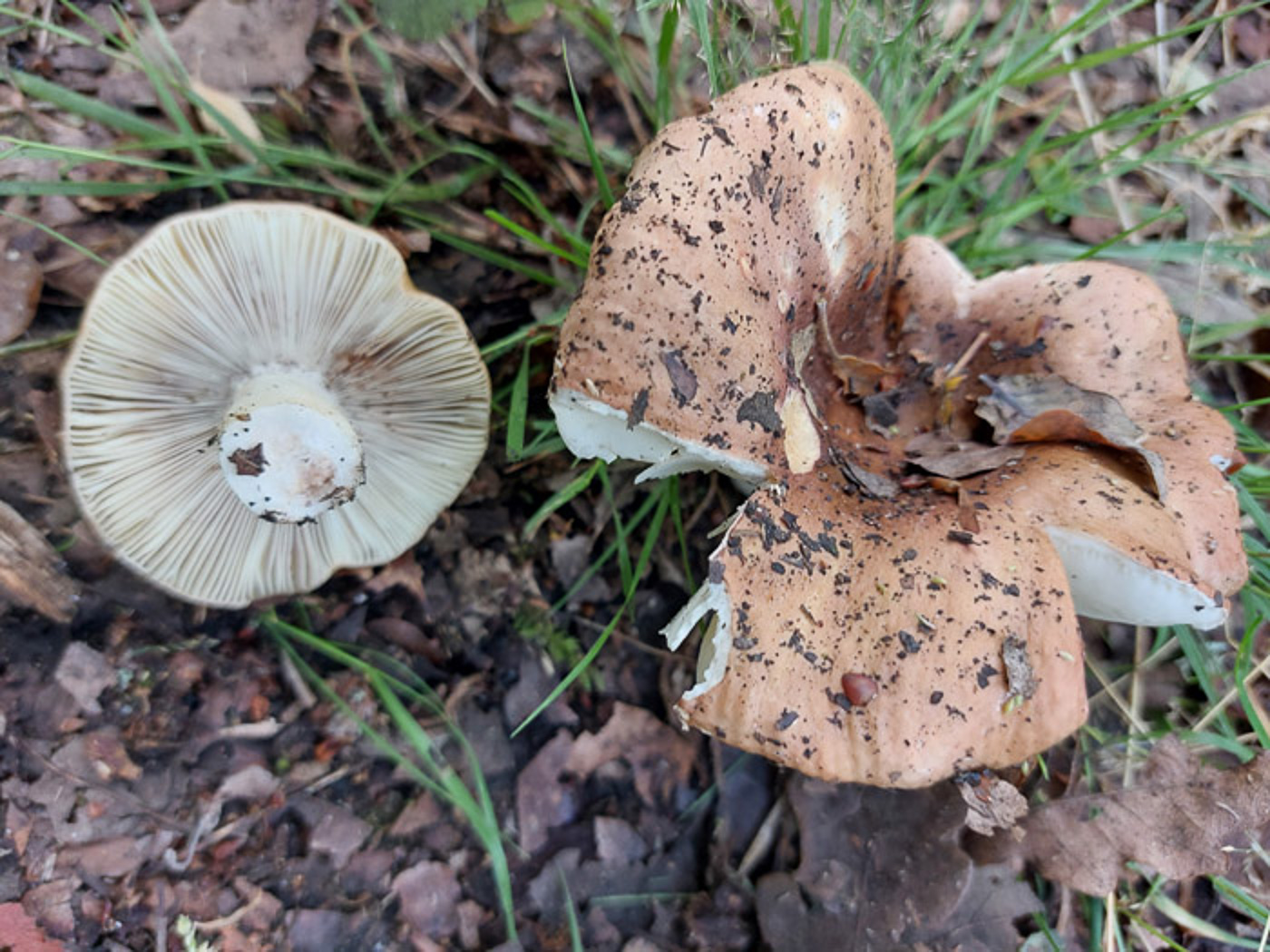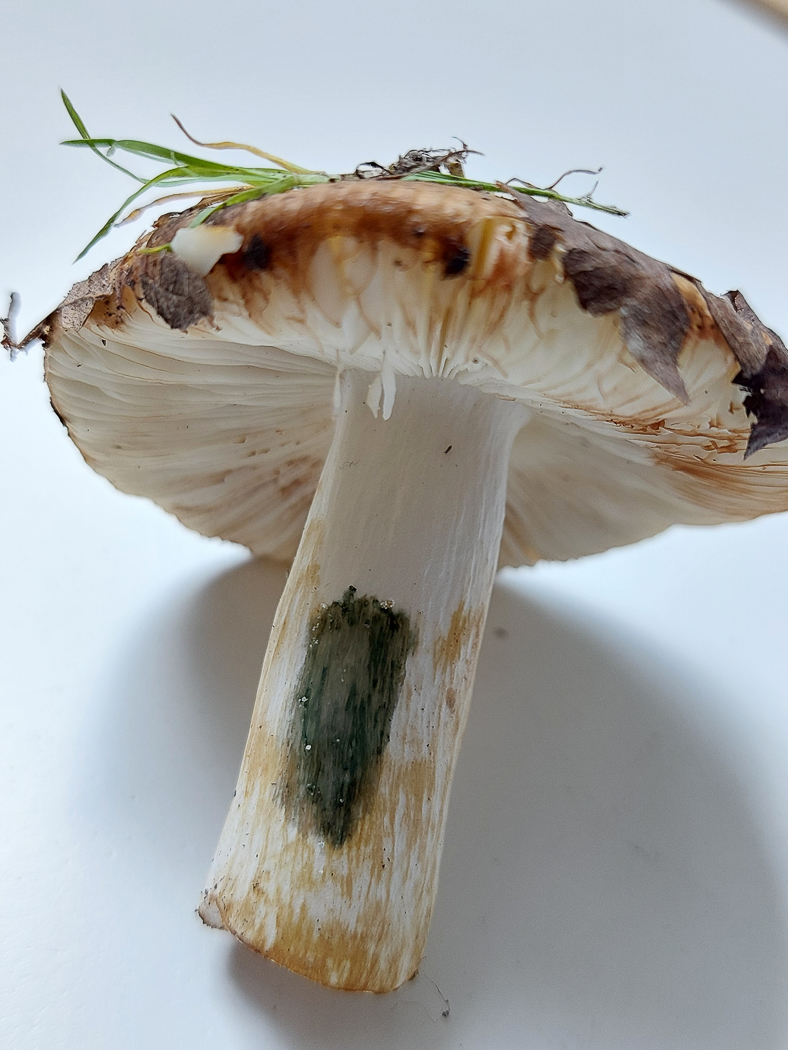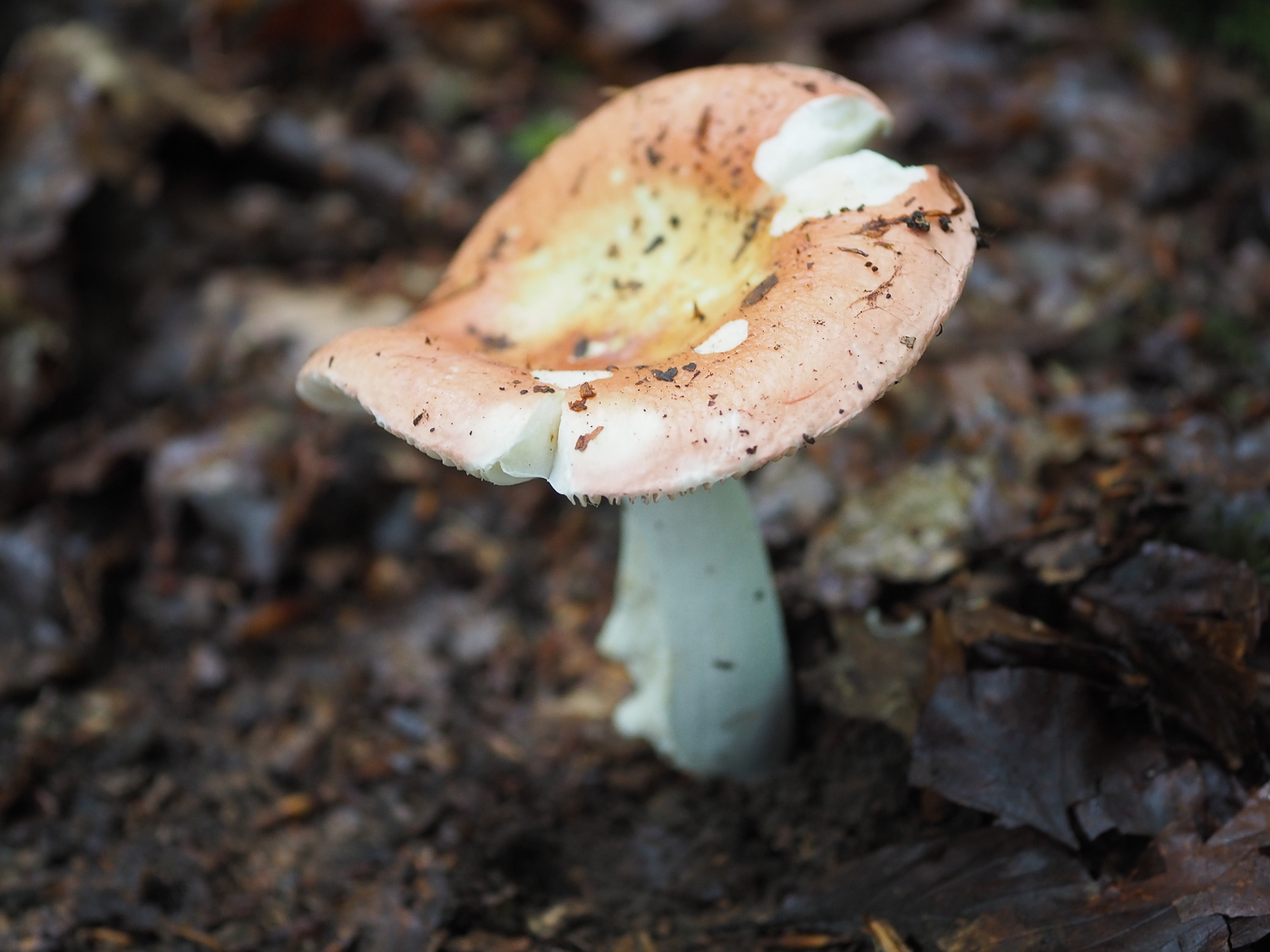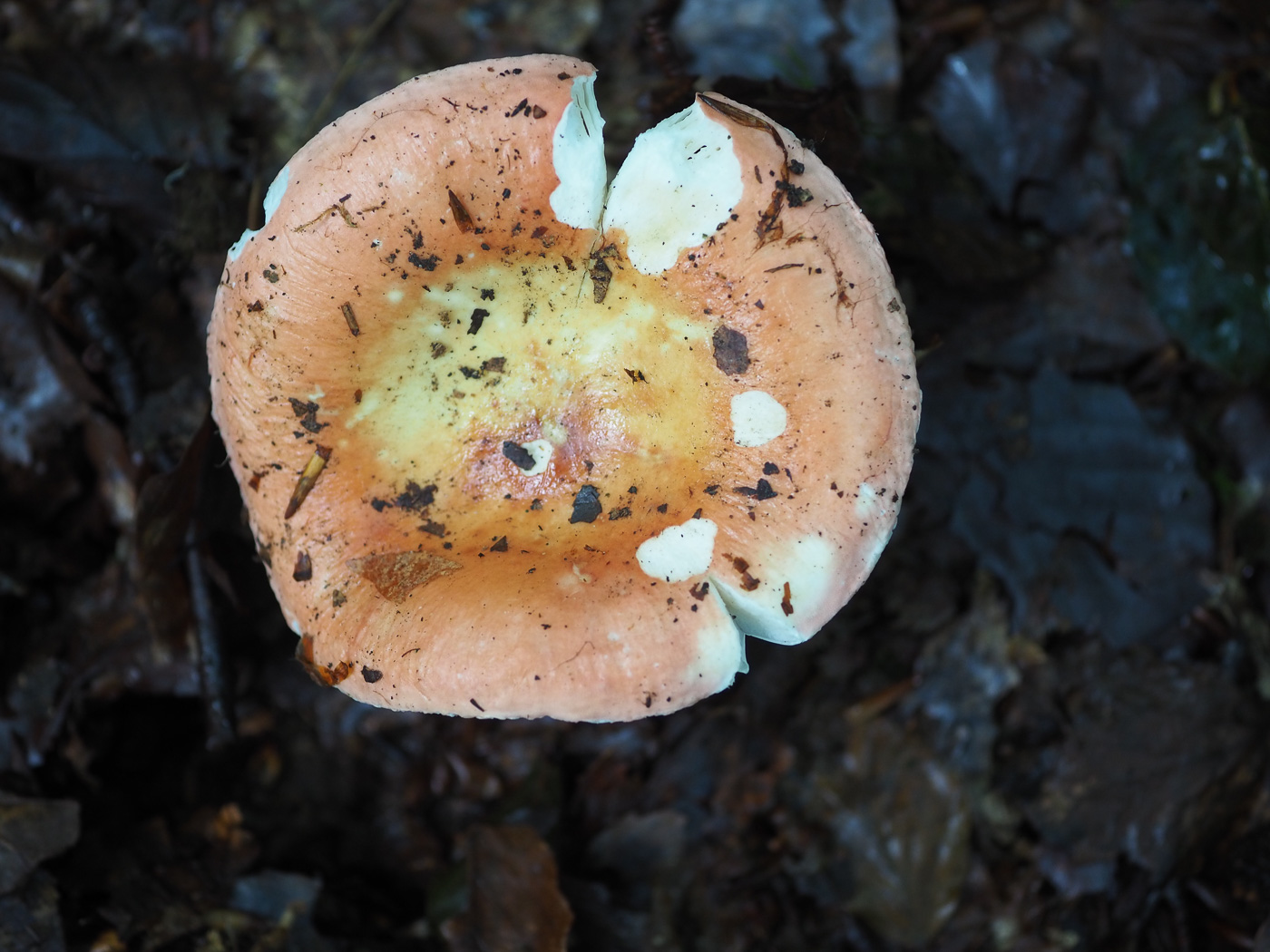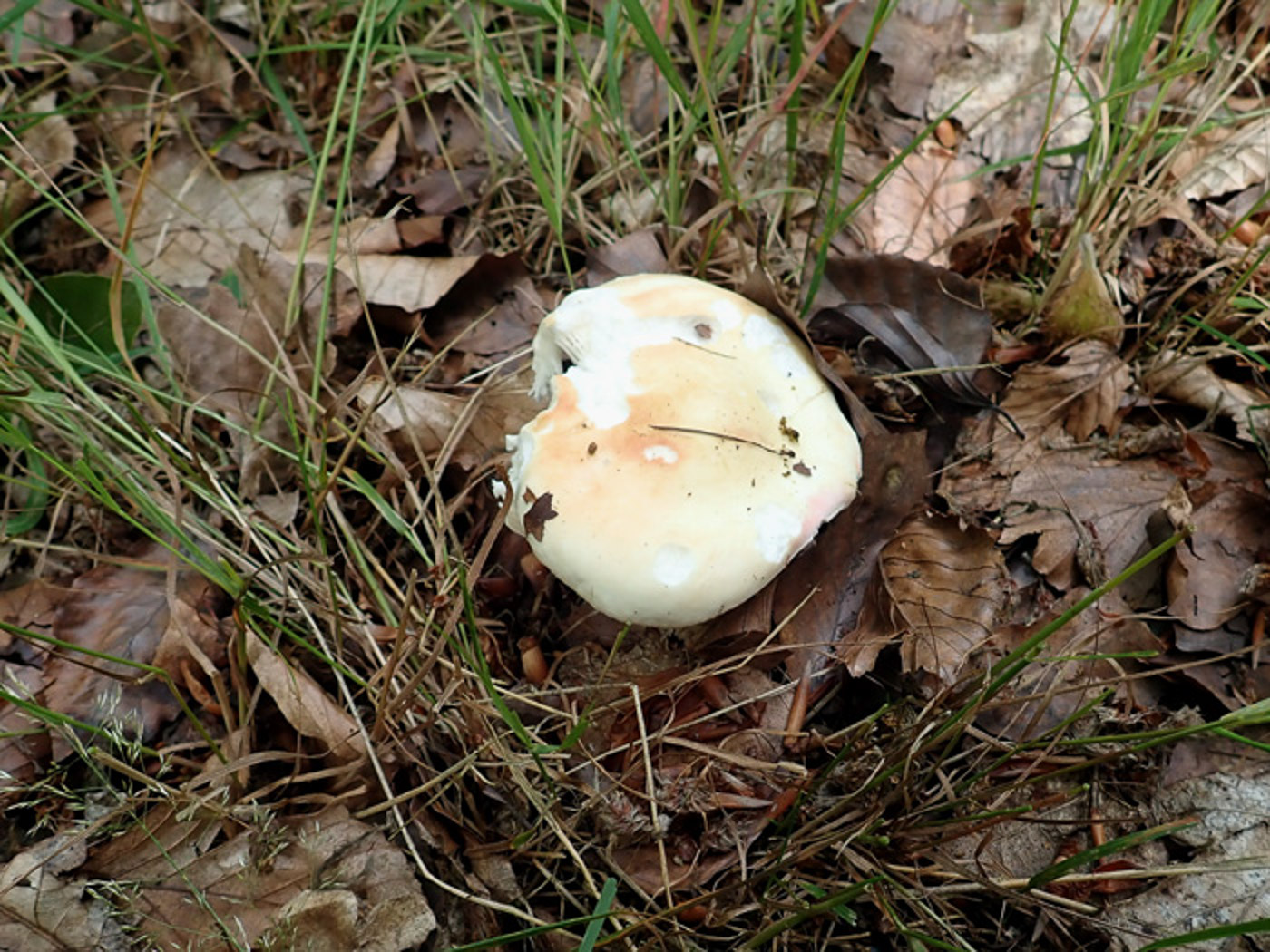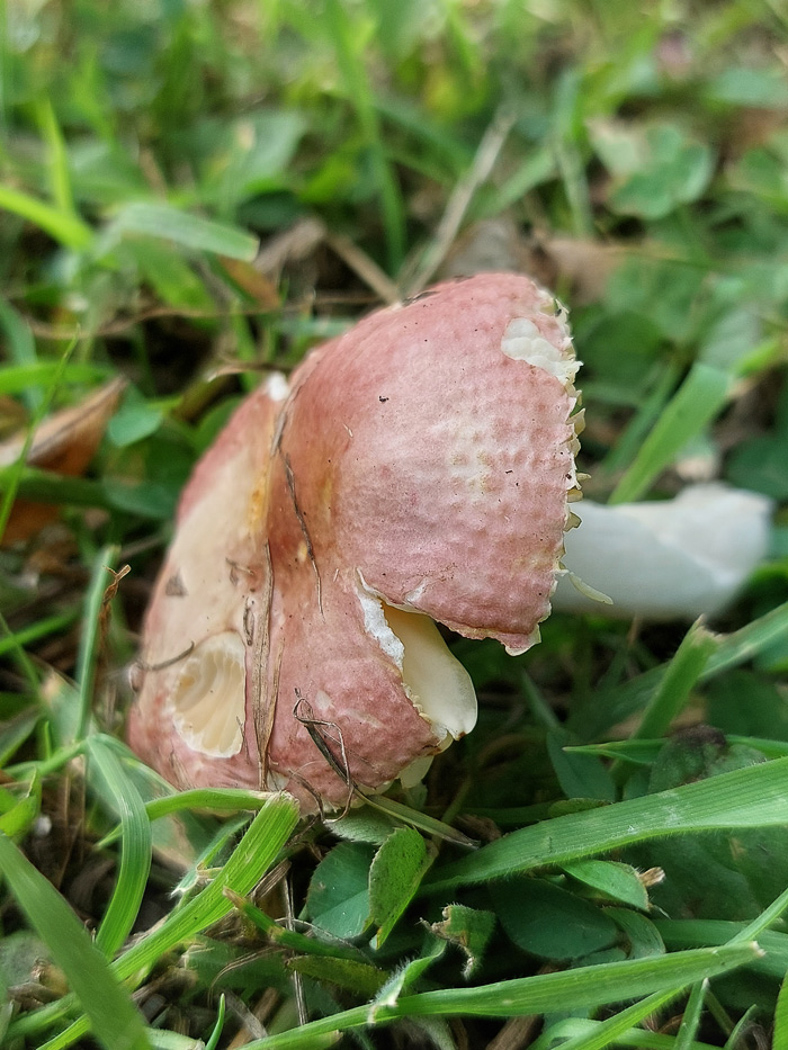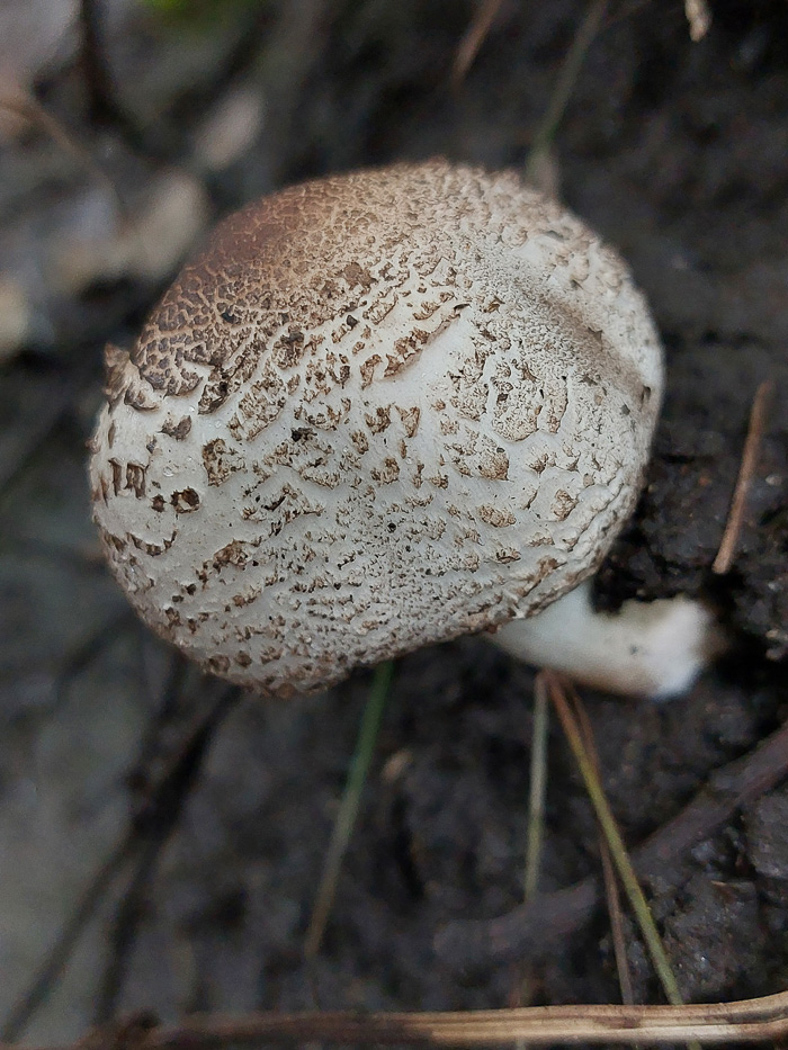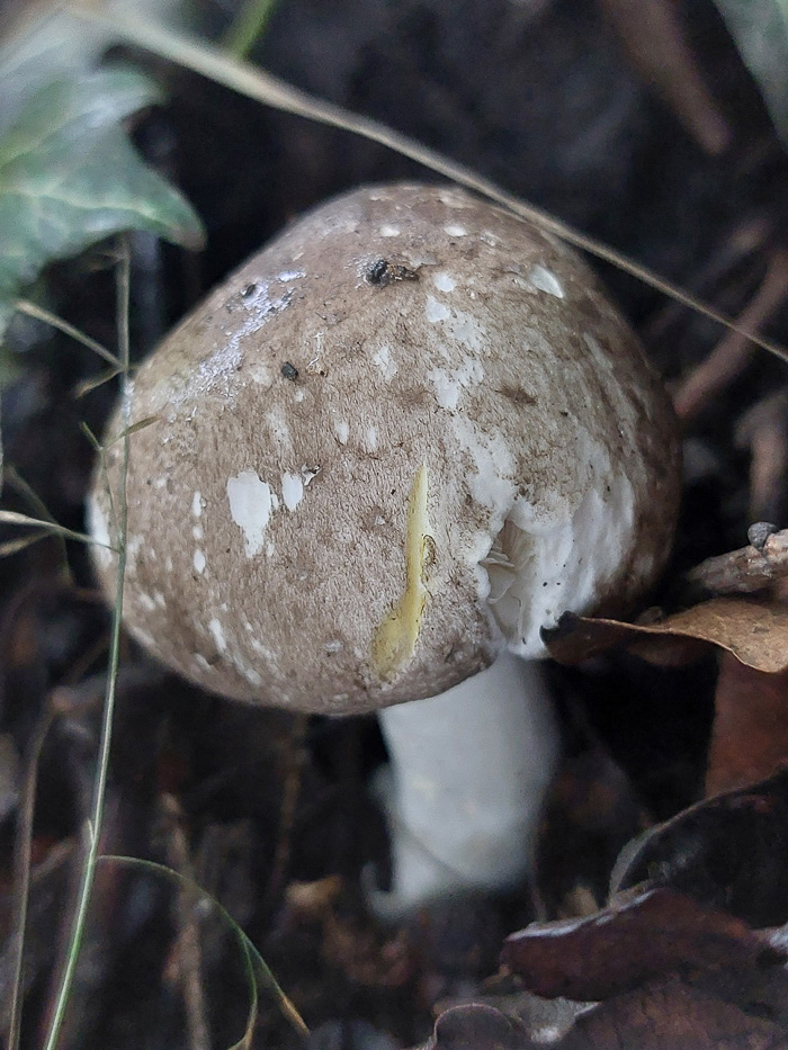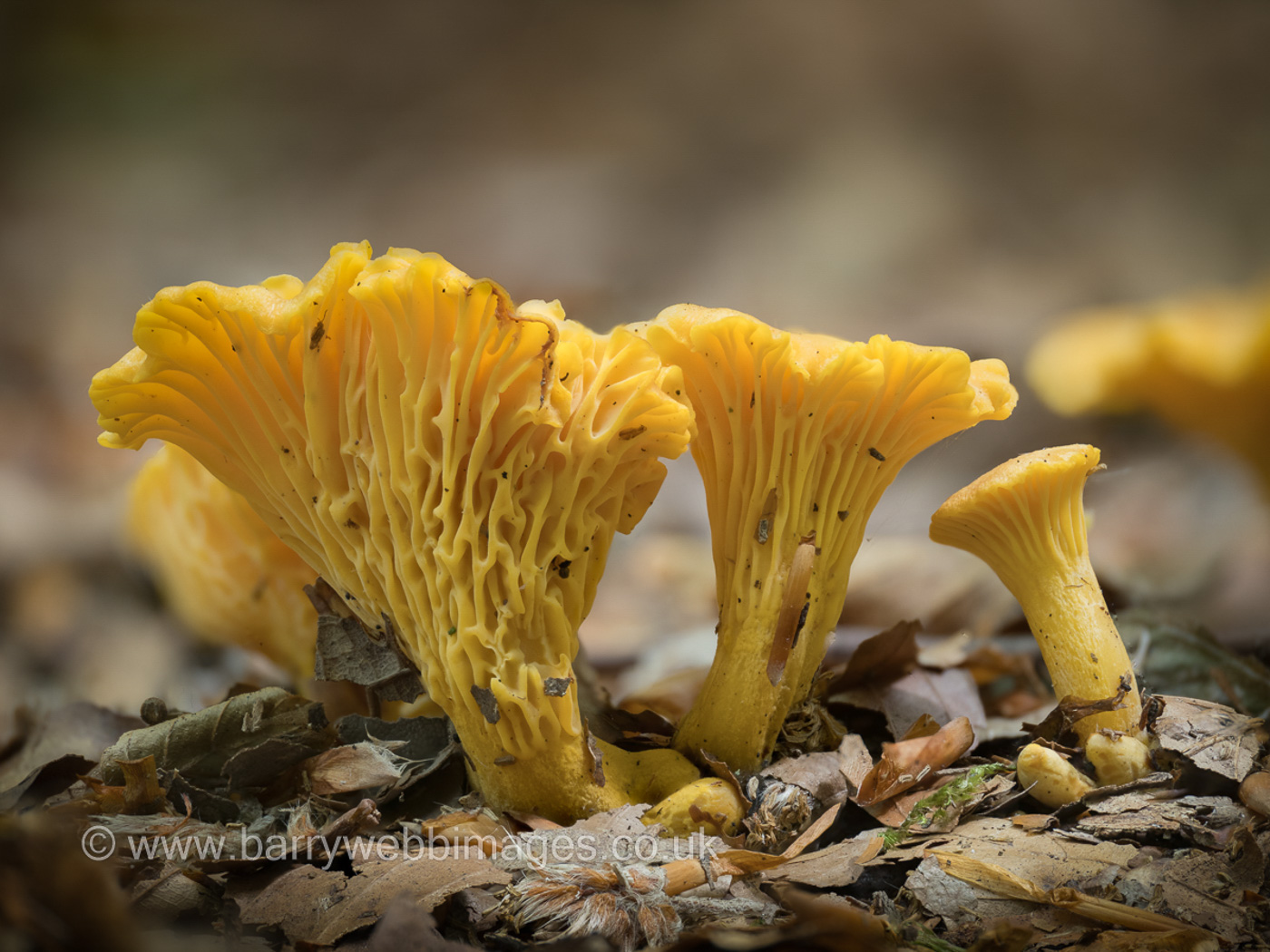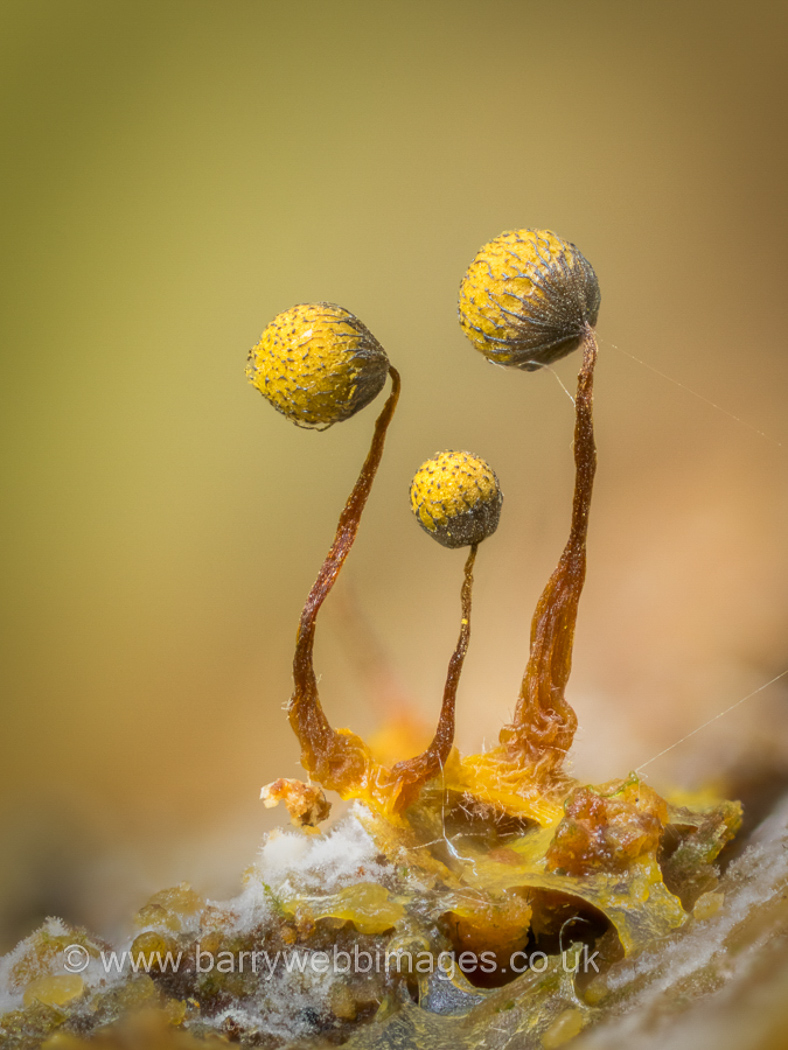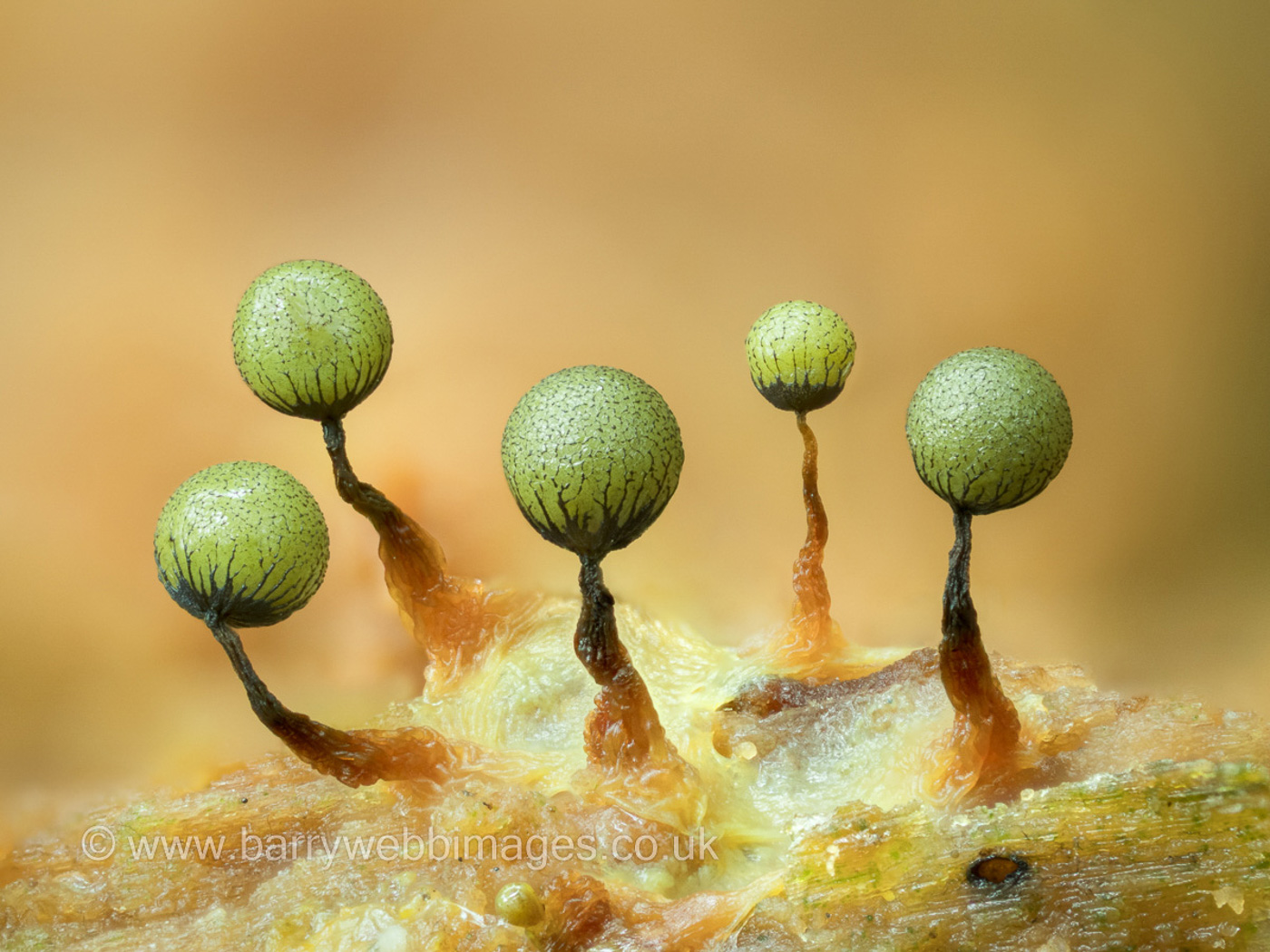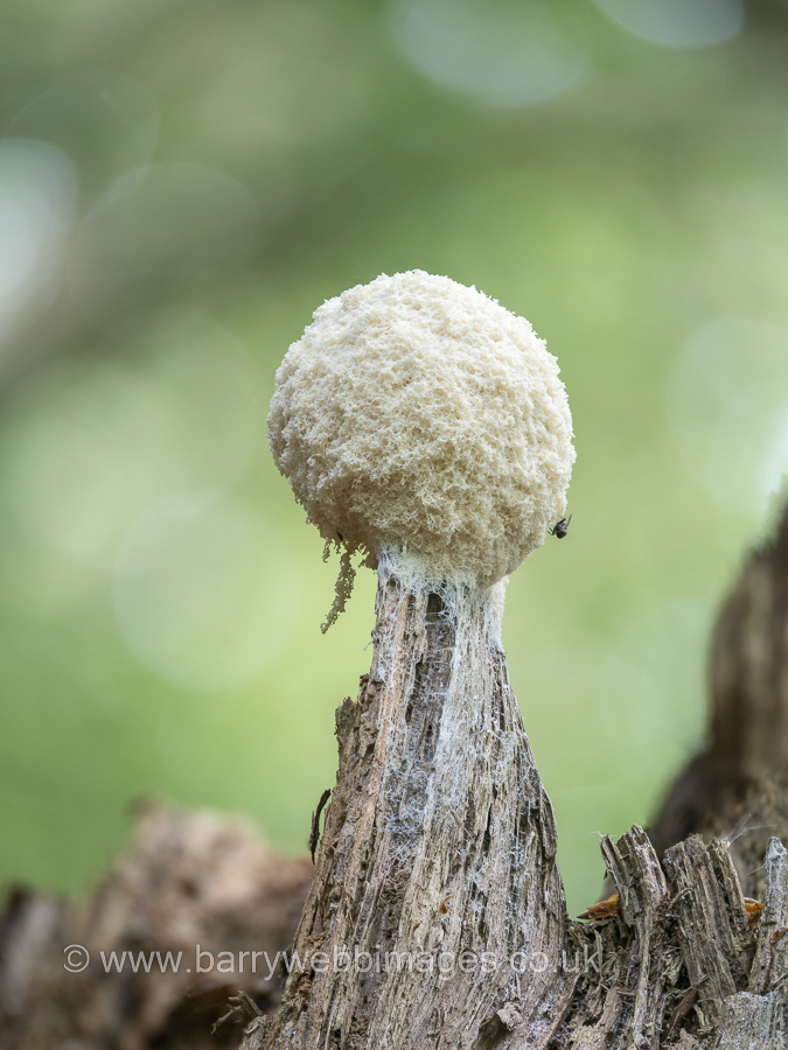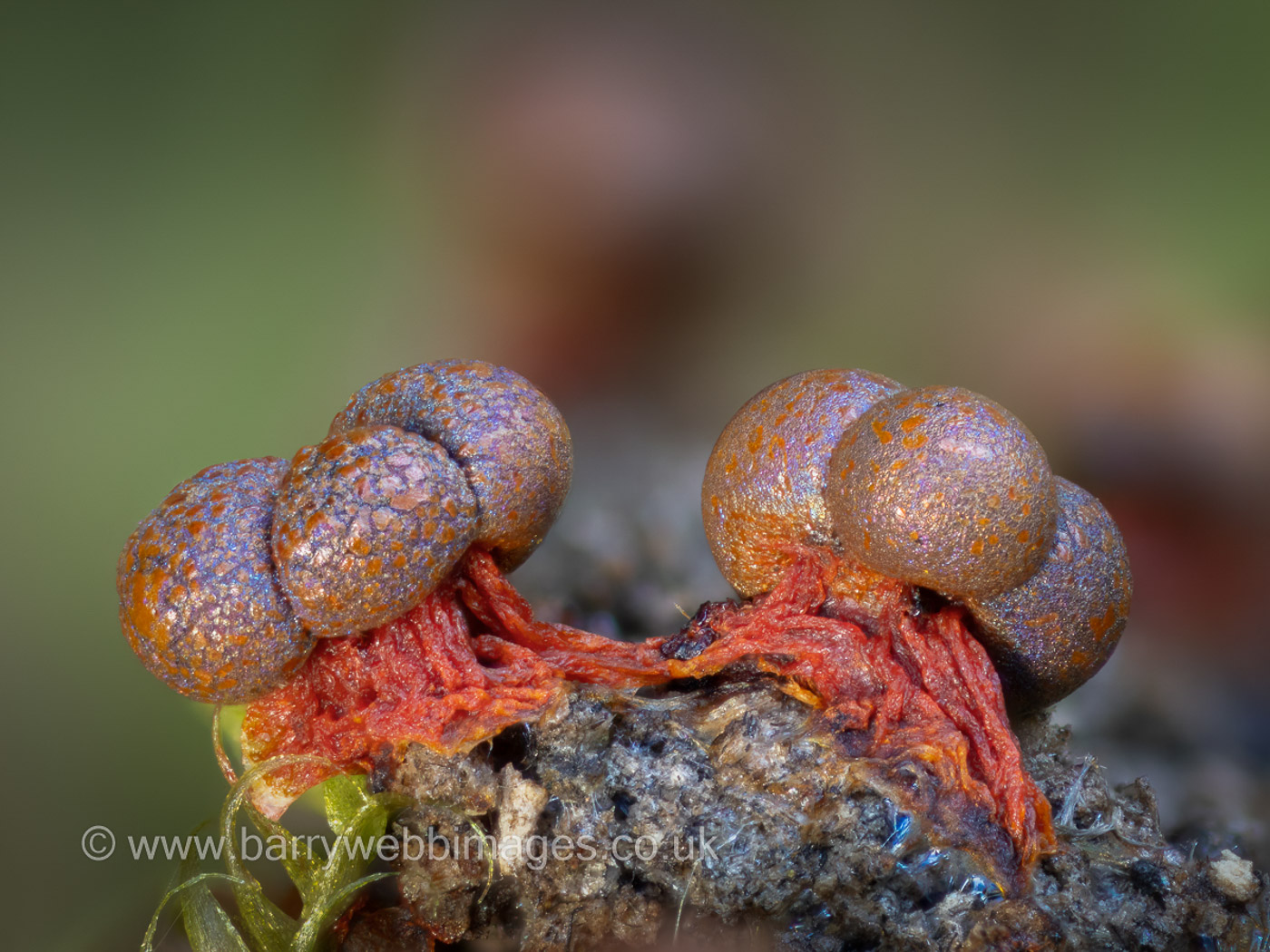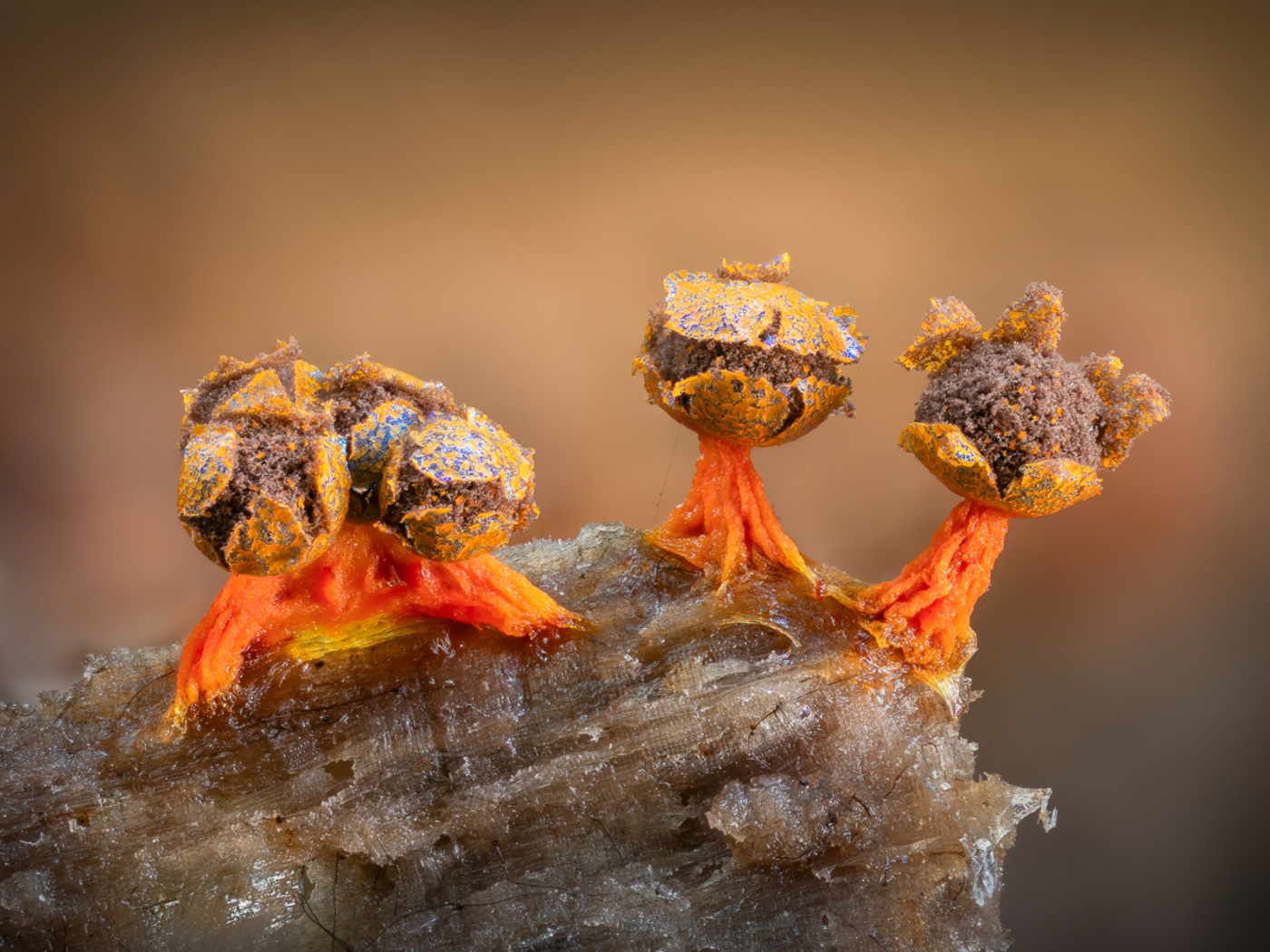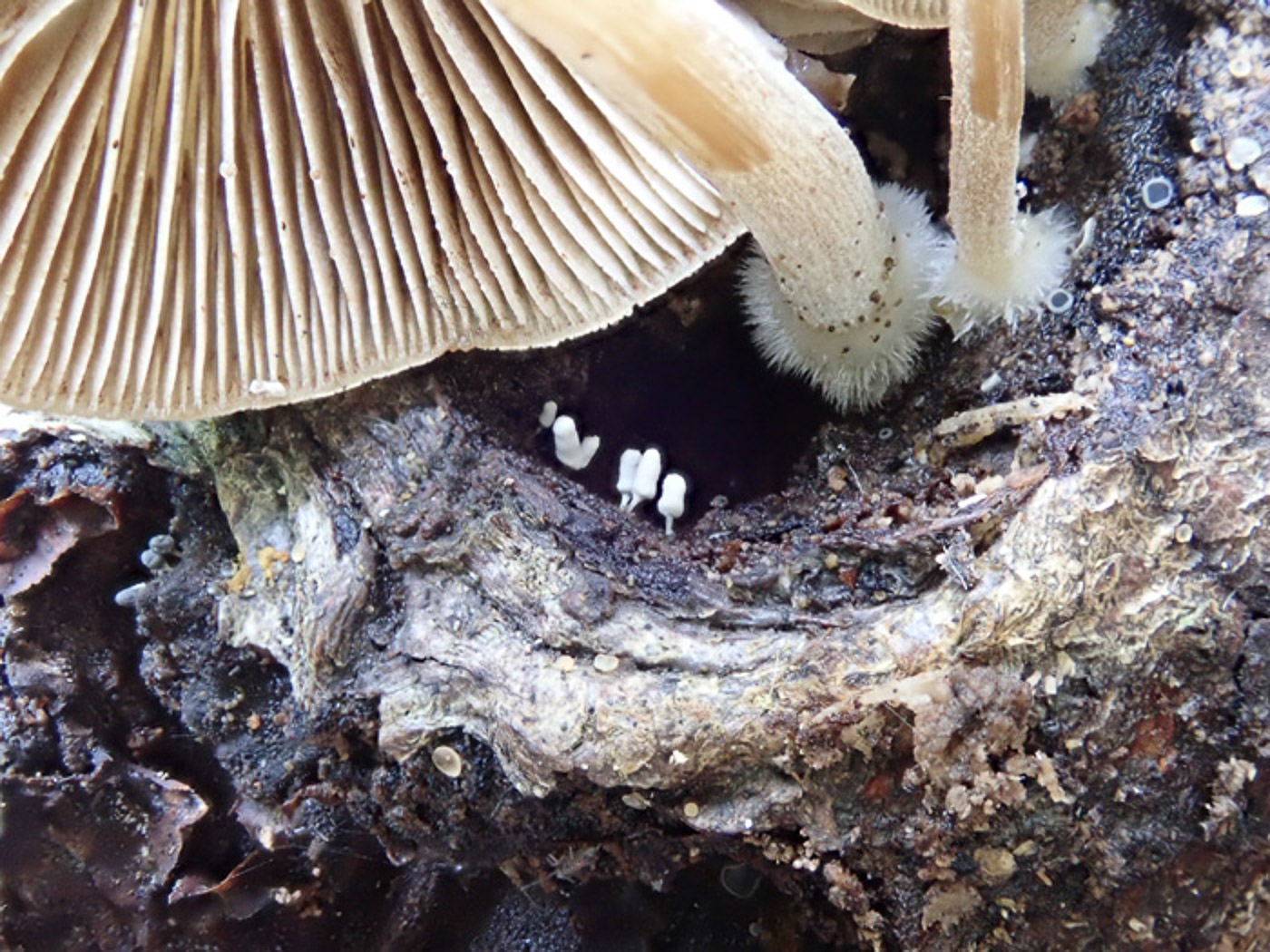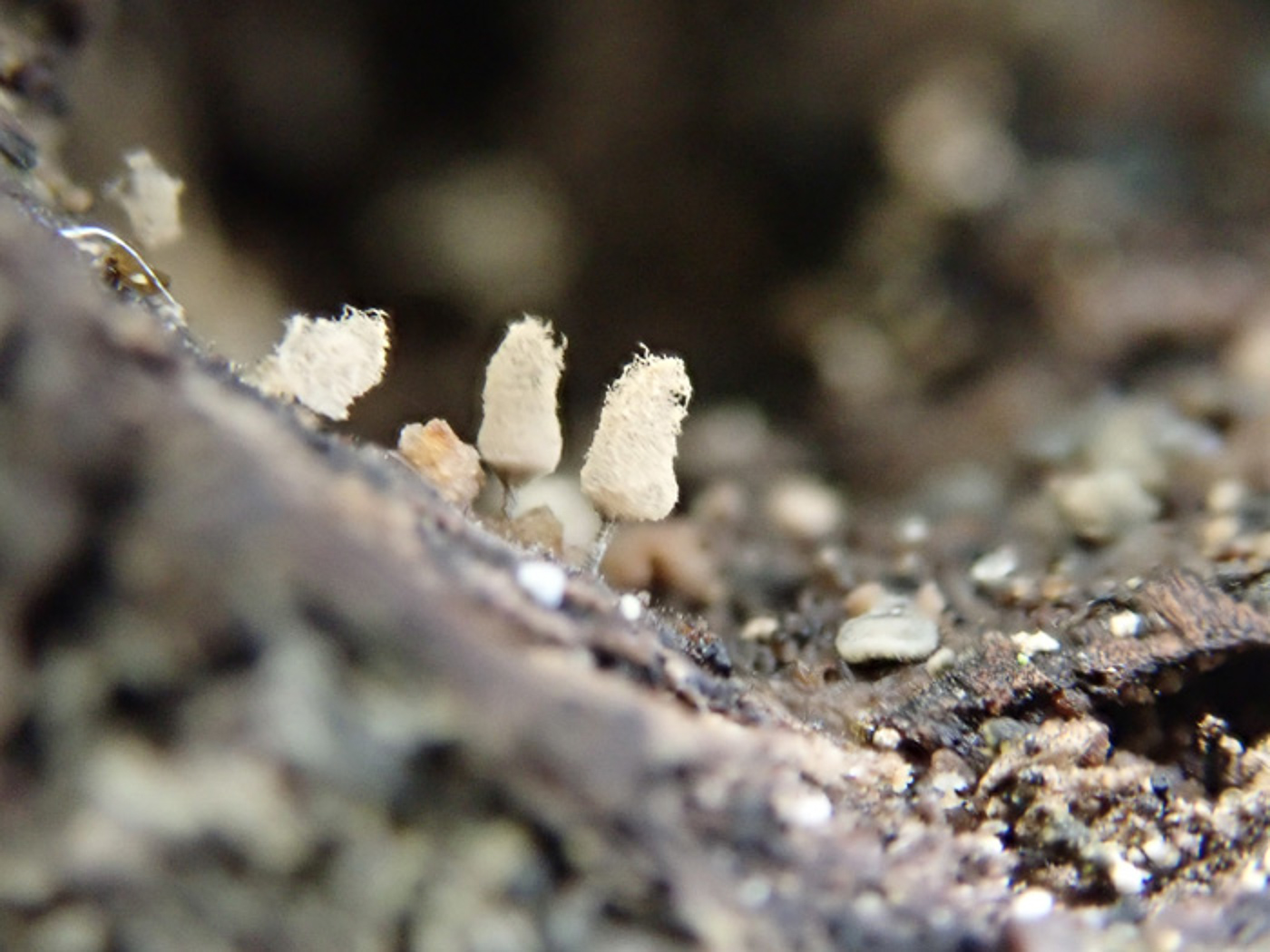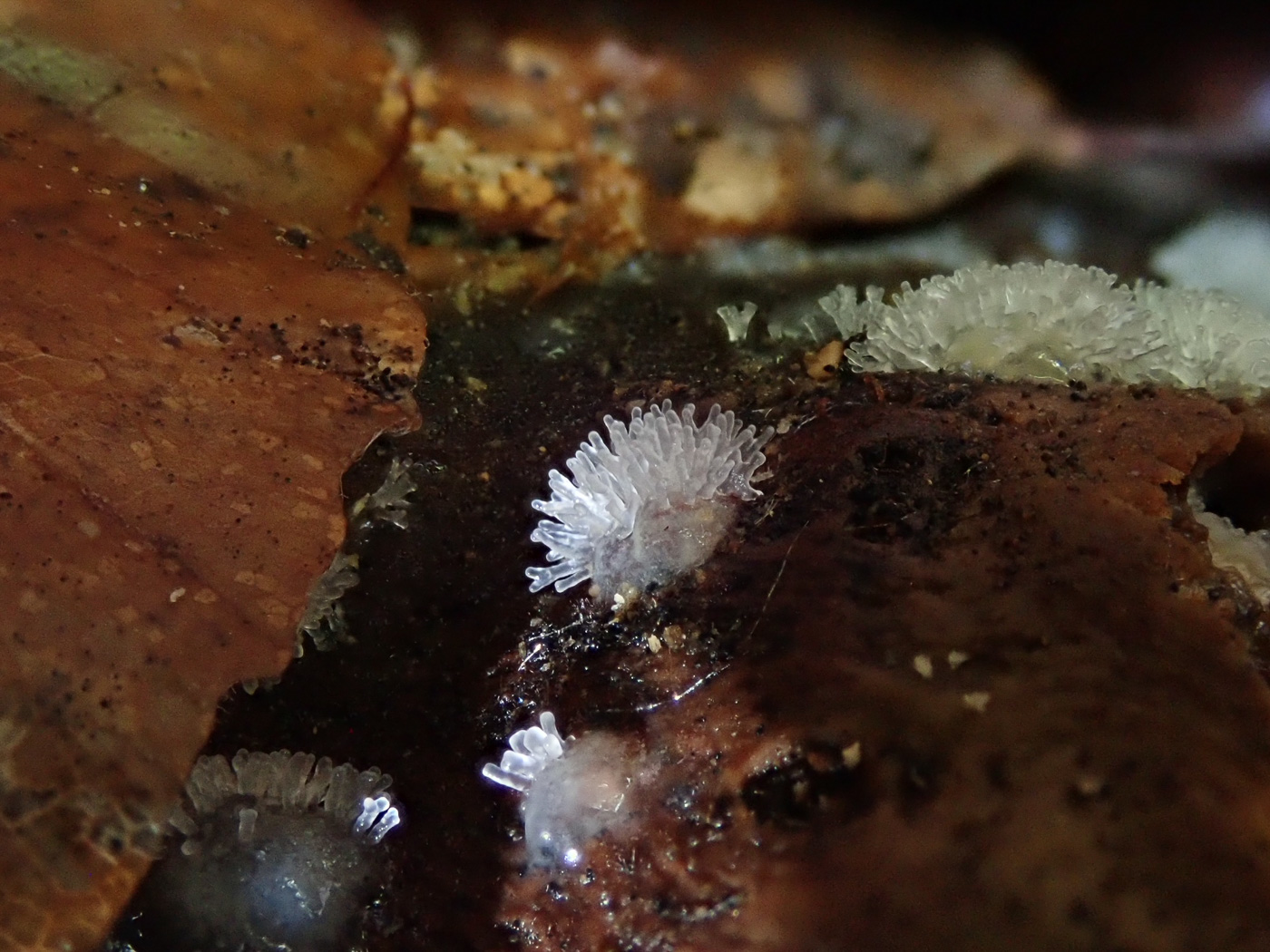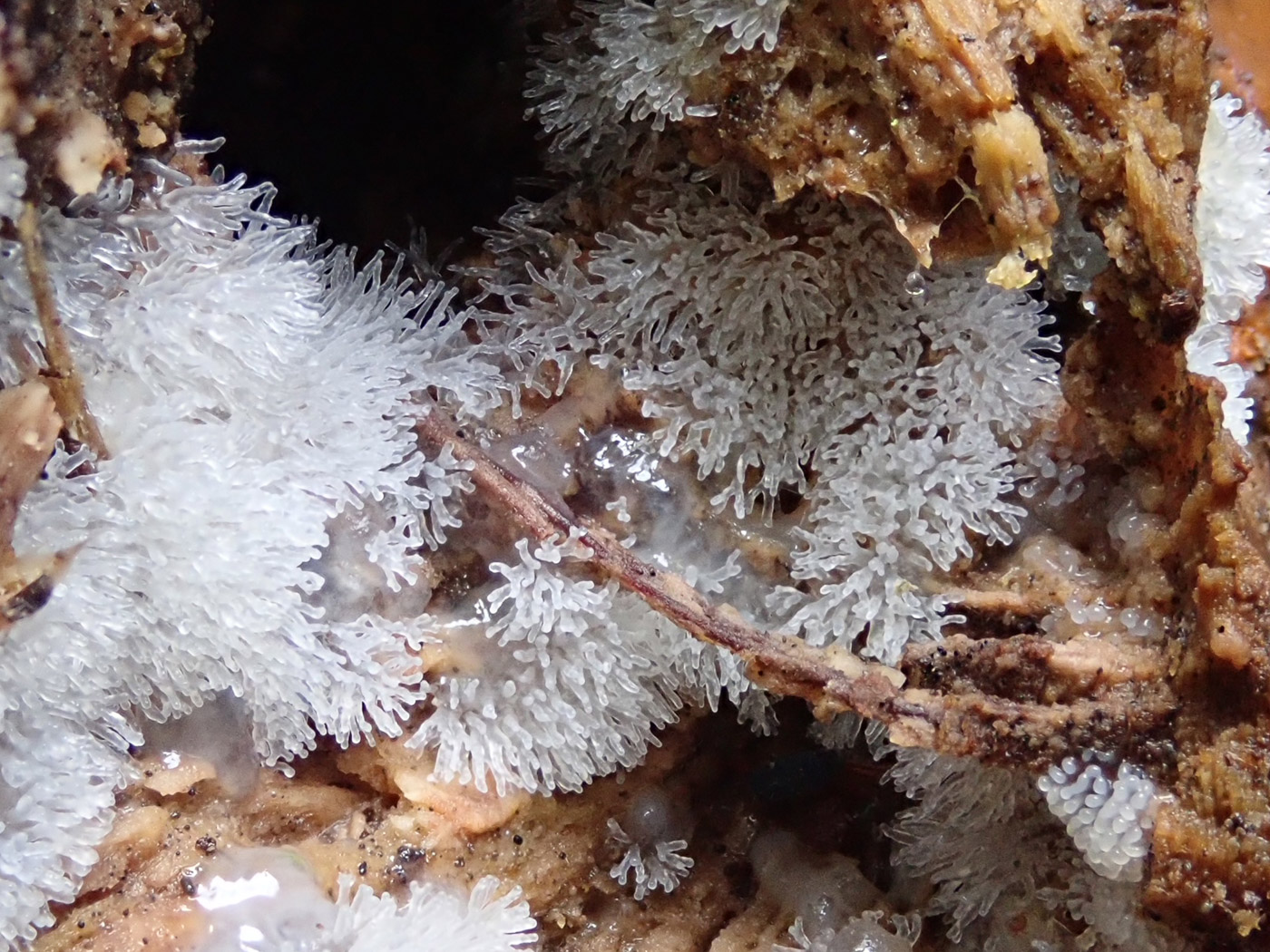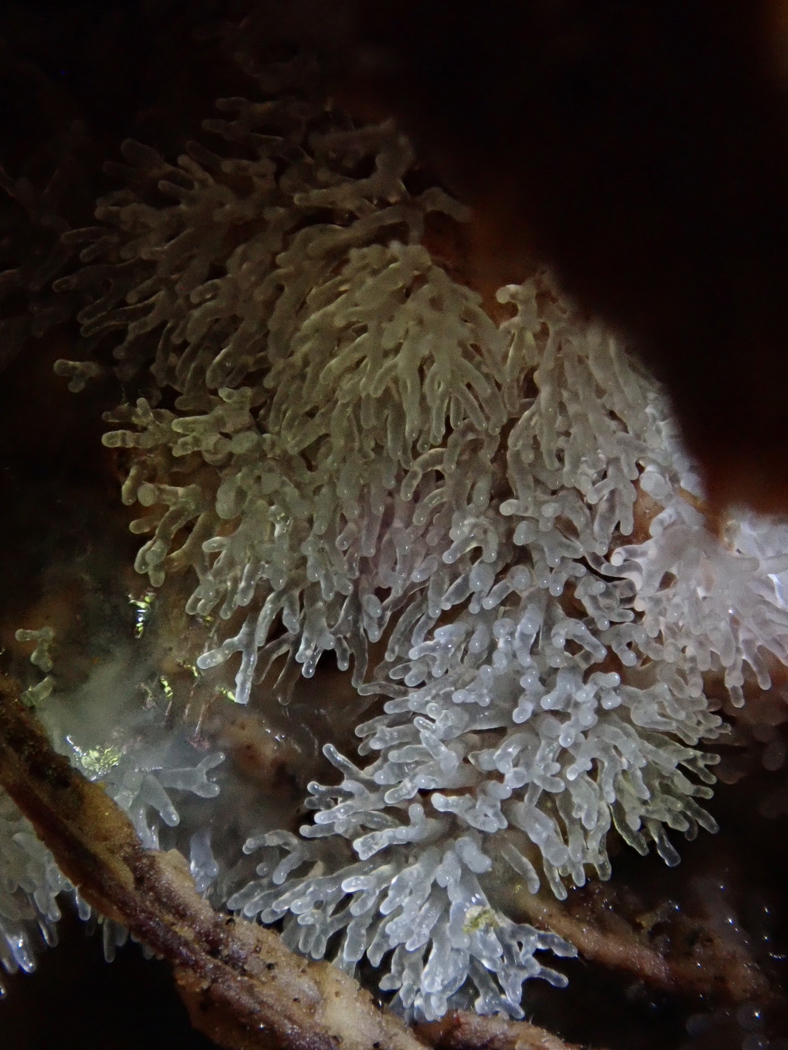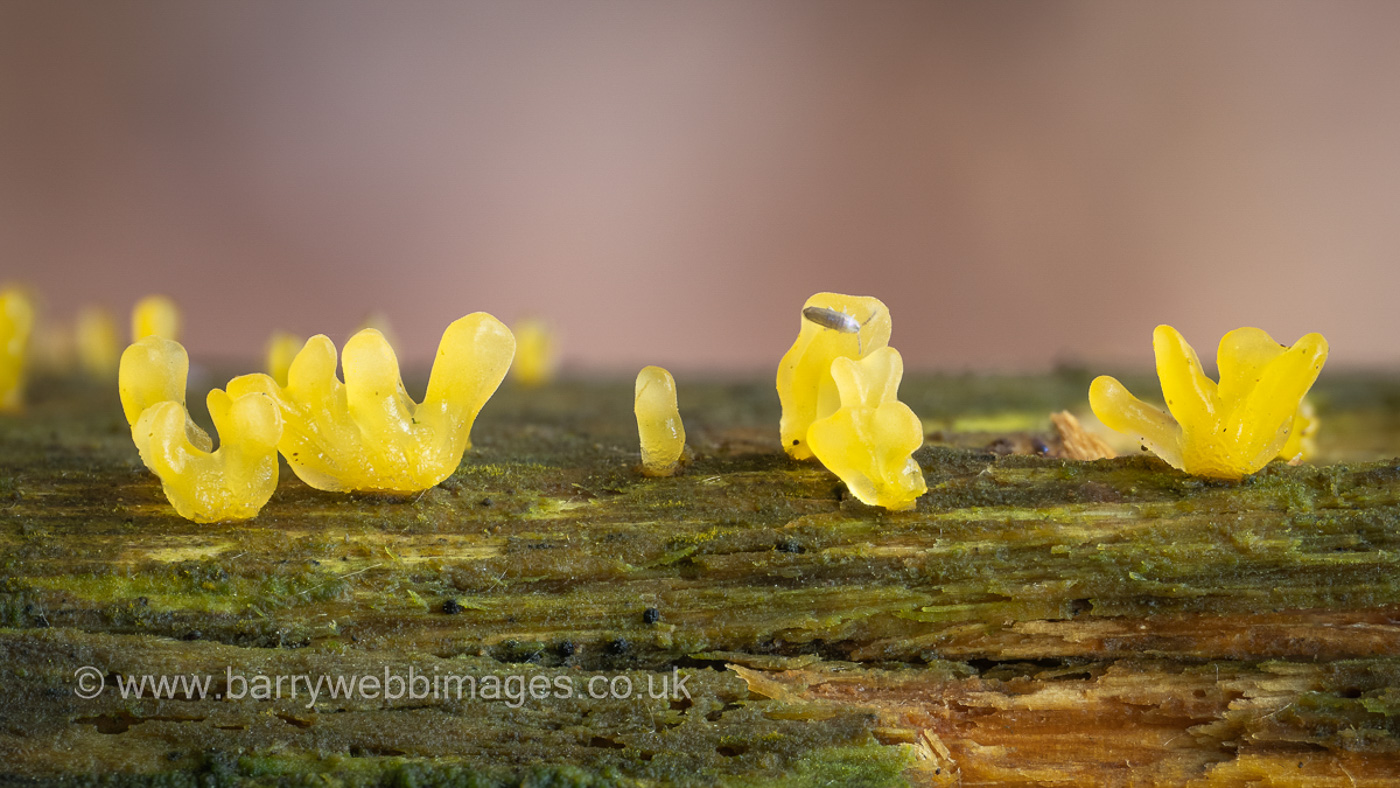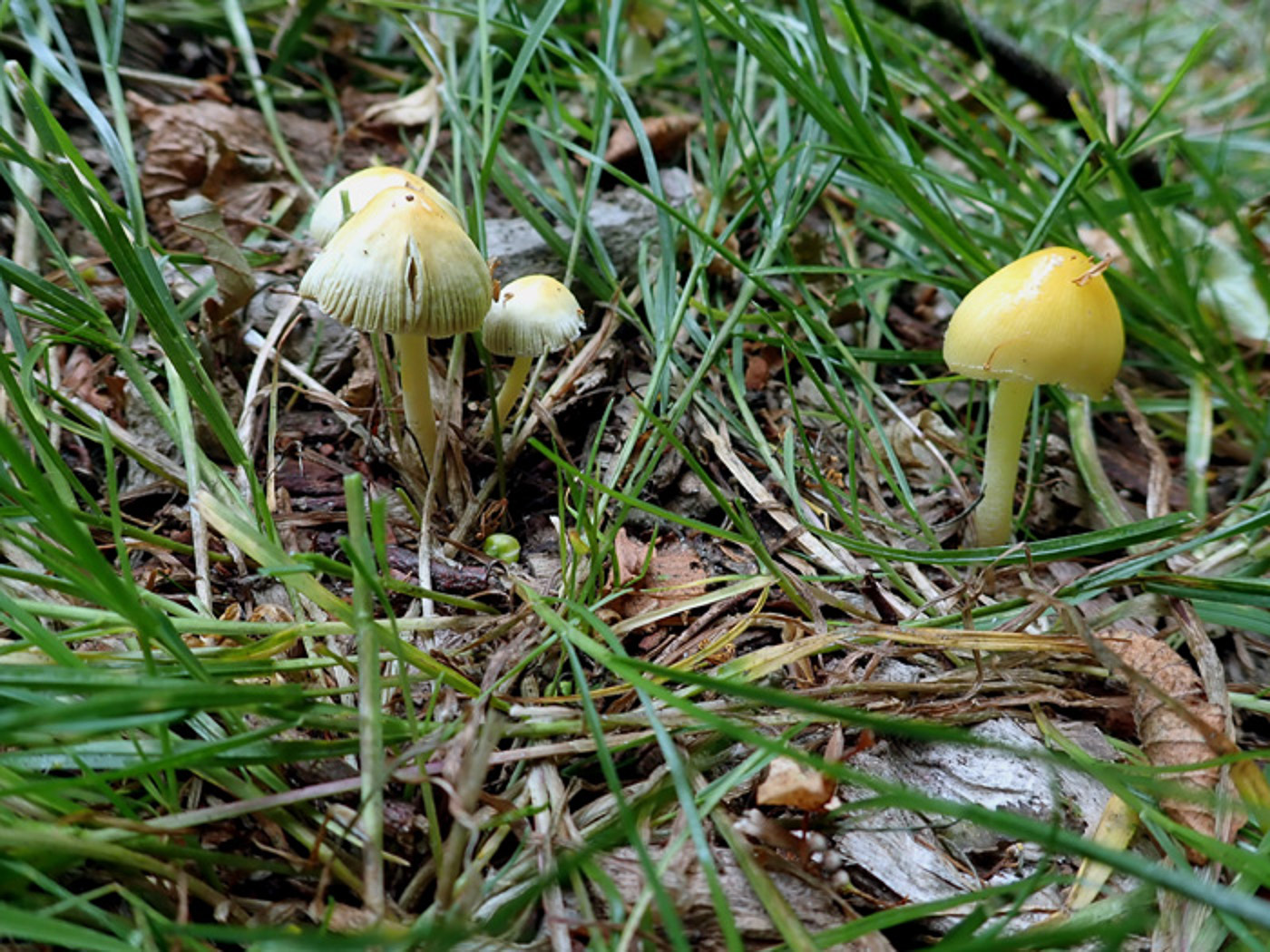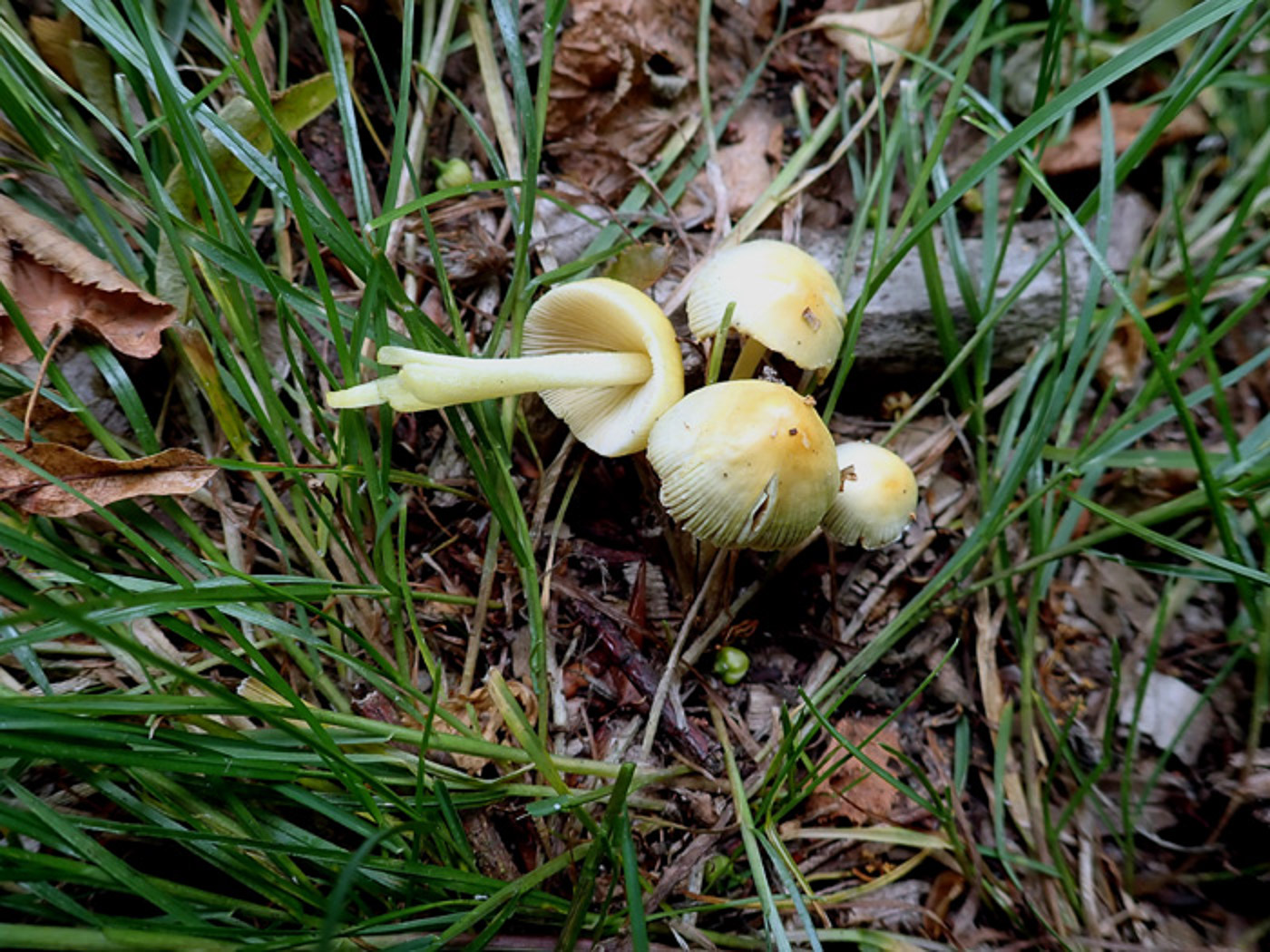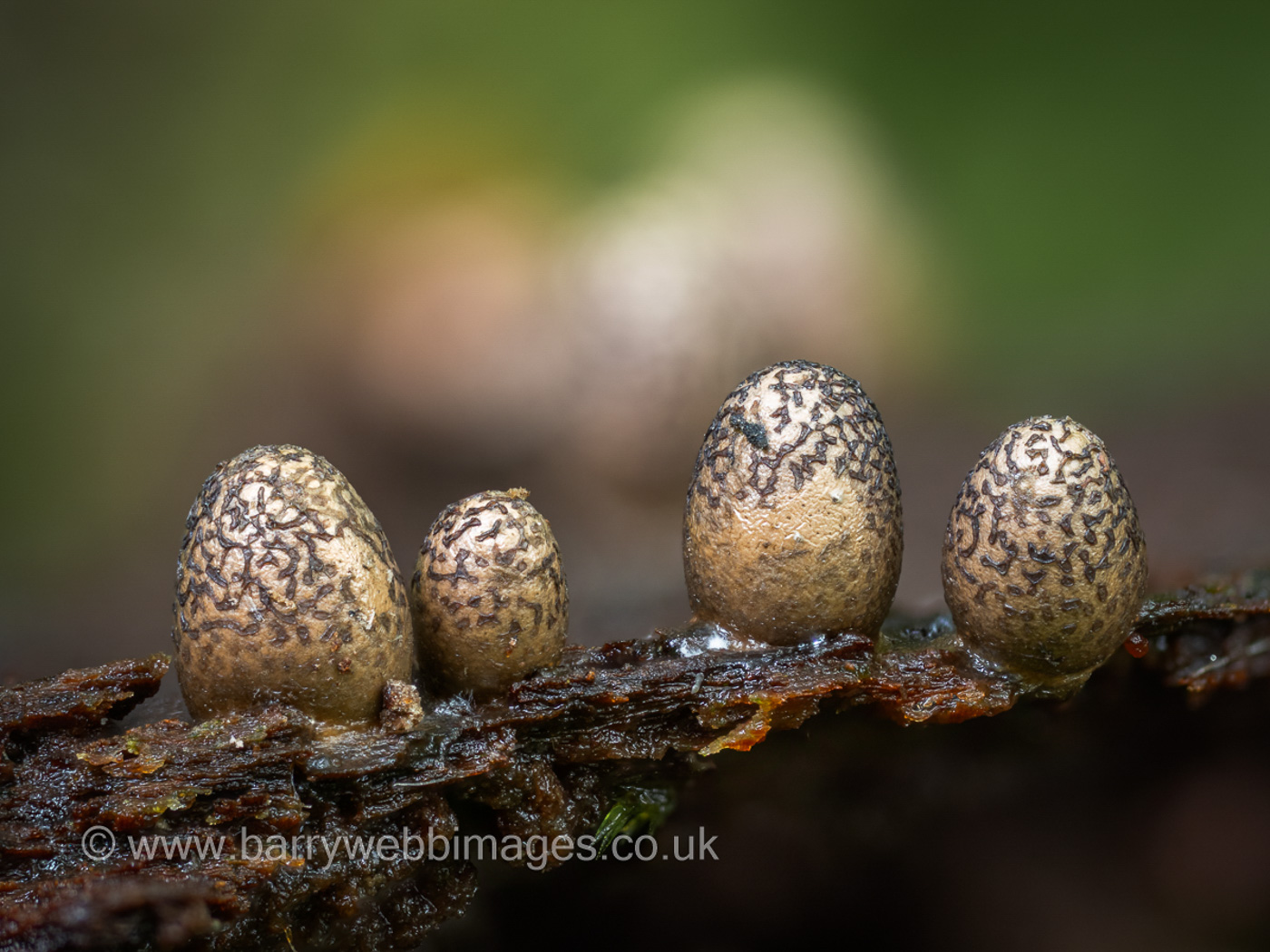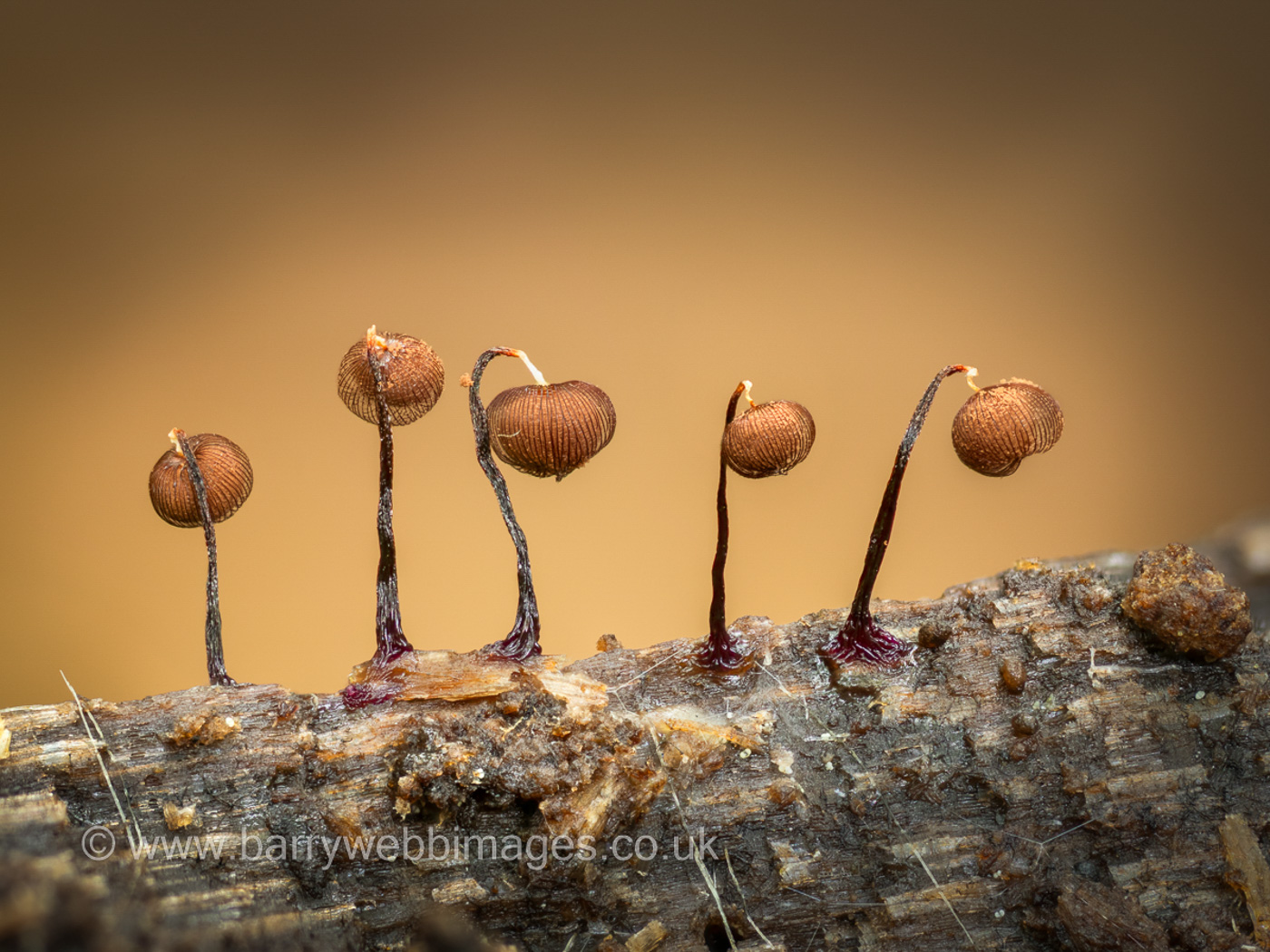Following the success and popularity of our experimental Members' Finds project which has now been running for almost three years, here is our new page for July to December 2022 to which members are again invited to contribute. Please email Penny photos of anything you find - even of species already on previous lists. Aim to illustrate all aspects of the fruit body, also remember not to reduce the photo size and to include the date, site, substrate, habitat plus any other useful features such as size, smell, etc. All extra clues are vital when identifying solely from photos. Ideally, try to collect at least one specimen and retain in a pot until you've heard back from Penny in case it might be needed for further investigation - records of rarities are of no use without voucher material as we have discovered to our cost previously.
A regularly updated list of entries is provided in a choice of Latin binomial or English common names to facilitate the location of a particular species. The Latin Masterlist - updated monthly - is now the easiest way to locate an image / selection of images for a particular species within the Finds pages. Thanks to all our valued contributors we have now amassed photos of approaching 950 different species - something we never envisaged when Members' Finds was introduced!
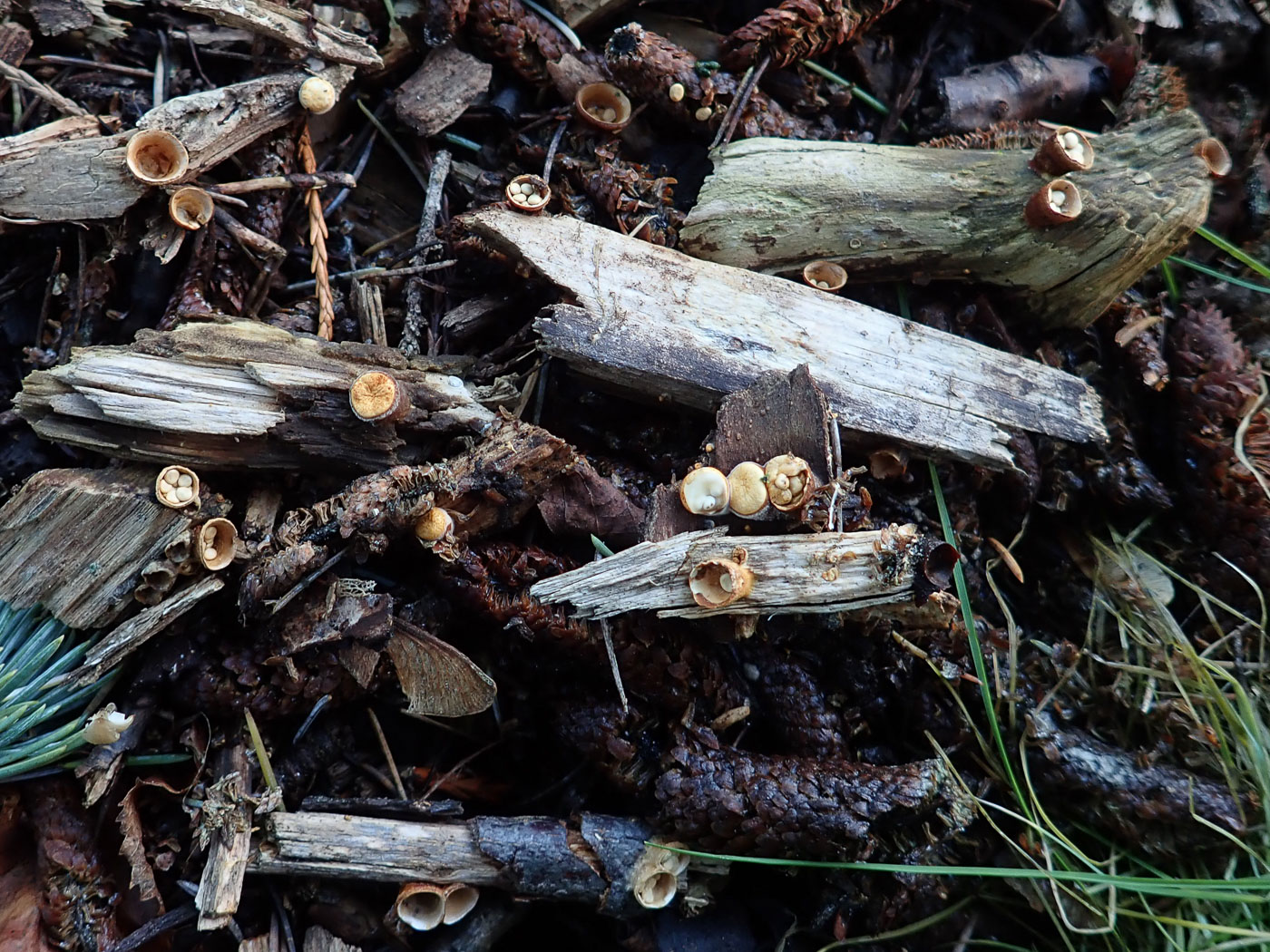 |
December 12th Crucibulum laeve (Common Bird's Nest)
A quick visit to Stoke Poges Memorial Gardens would not be complete without checking for this tiny but distinctive species in the thick layers of woodchip spread around various trees near the entrance. Now we know where to look, it's surprising how often it's there and today was no exception. This time it was under the Cedar and Penny was able to place together wood fragments showing all stages of development: from still with its yellow-ochre lid in tact to the uncovered 'nests' both with clusters of 'eggs' containing the spores and empty having been dispersed by raindrops. See the Masterlist for other examples.
|
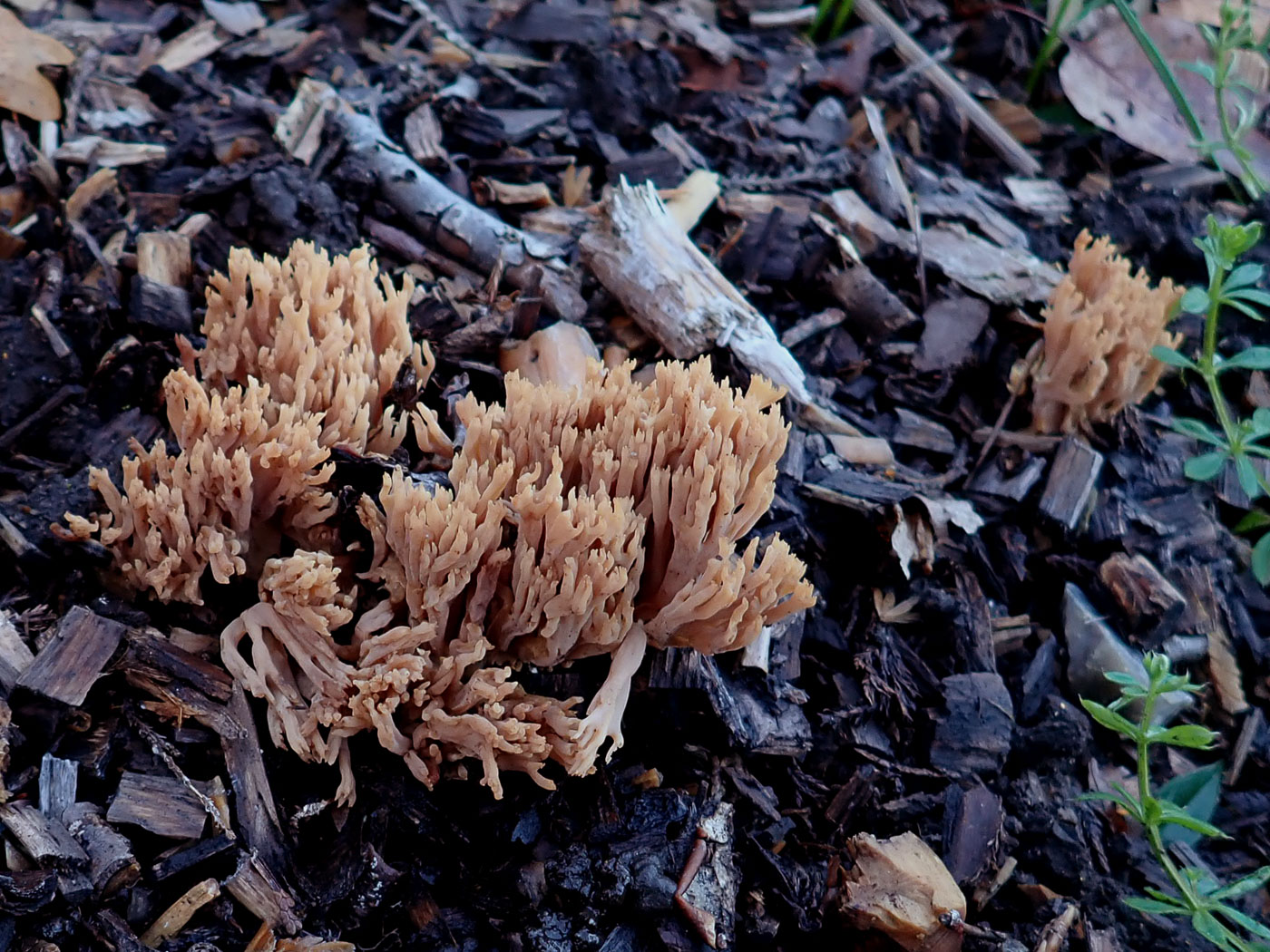
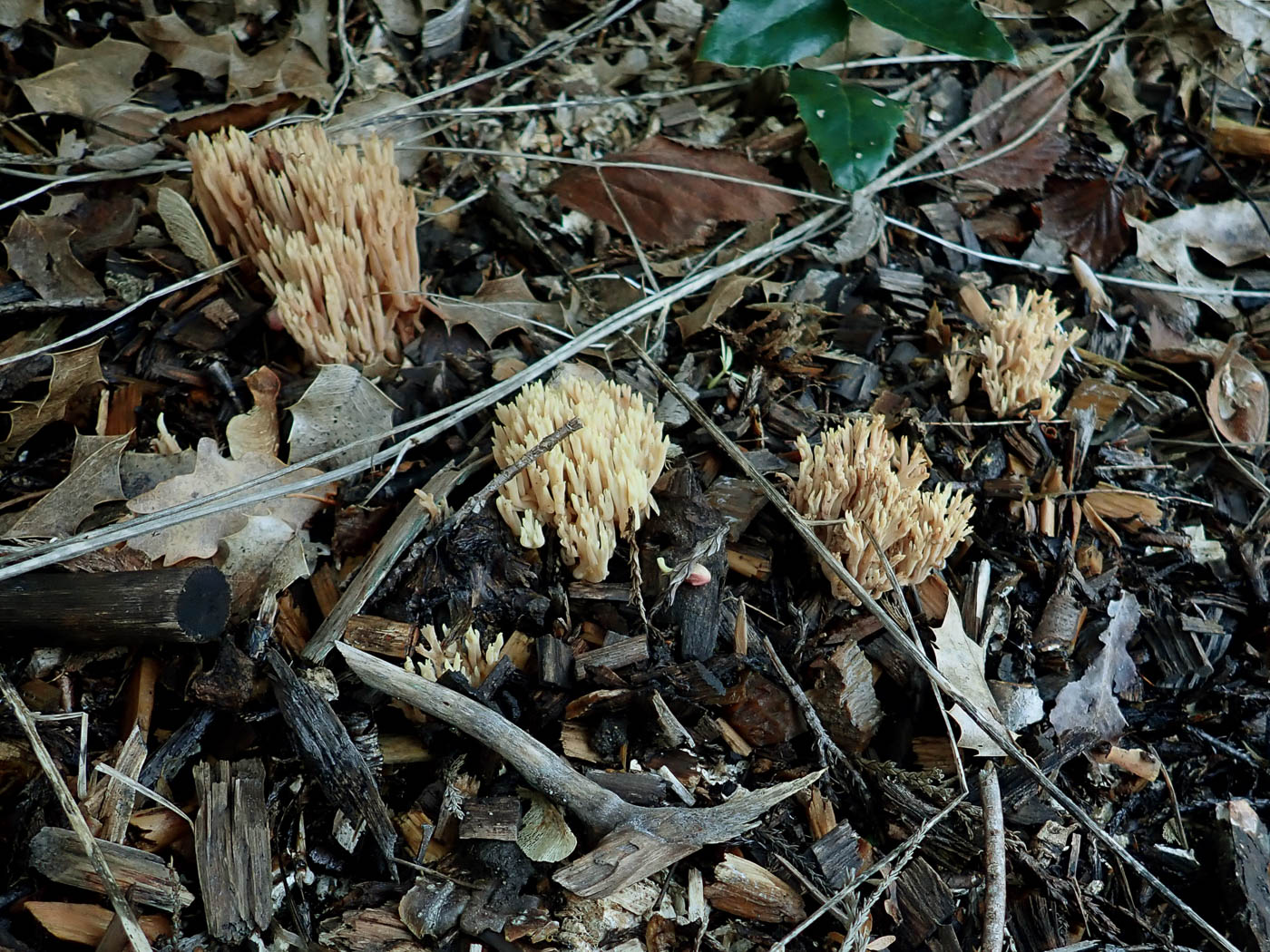 |
December 12th Ramaria stricta (Upright Coral)
At Stoke Poges Memorial Gardens Penny noticed a large patch of Coral Fungus in thick woodchip amongst shrubs and noticed they looked surprisingly vinaceous reddish. It was not until getting nearer and finding a typical-looking fresh clump (photo 2) that she realised it was R. stricta but just well weathered and frosted - mostly not appearing in its more familiar guise as seen earlier in the season. It was also unexpected as she's not found the species here over the last 10 years or so. See the Masterlist for other examples.
|
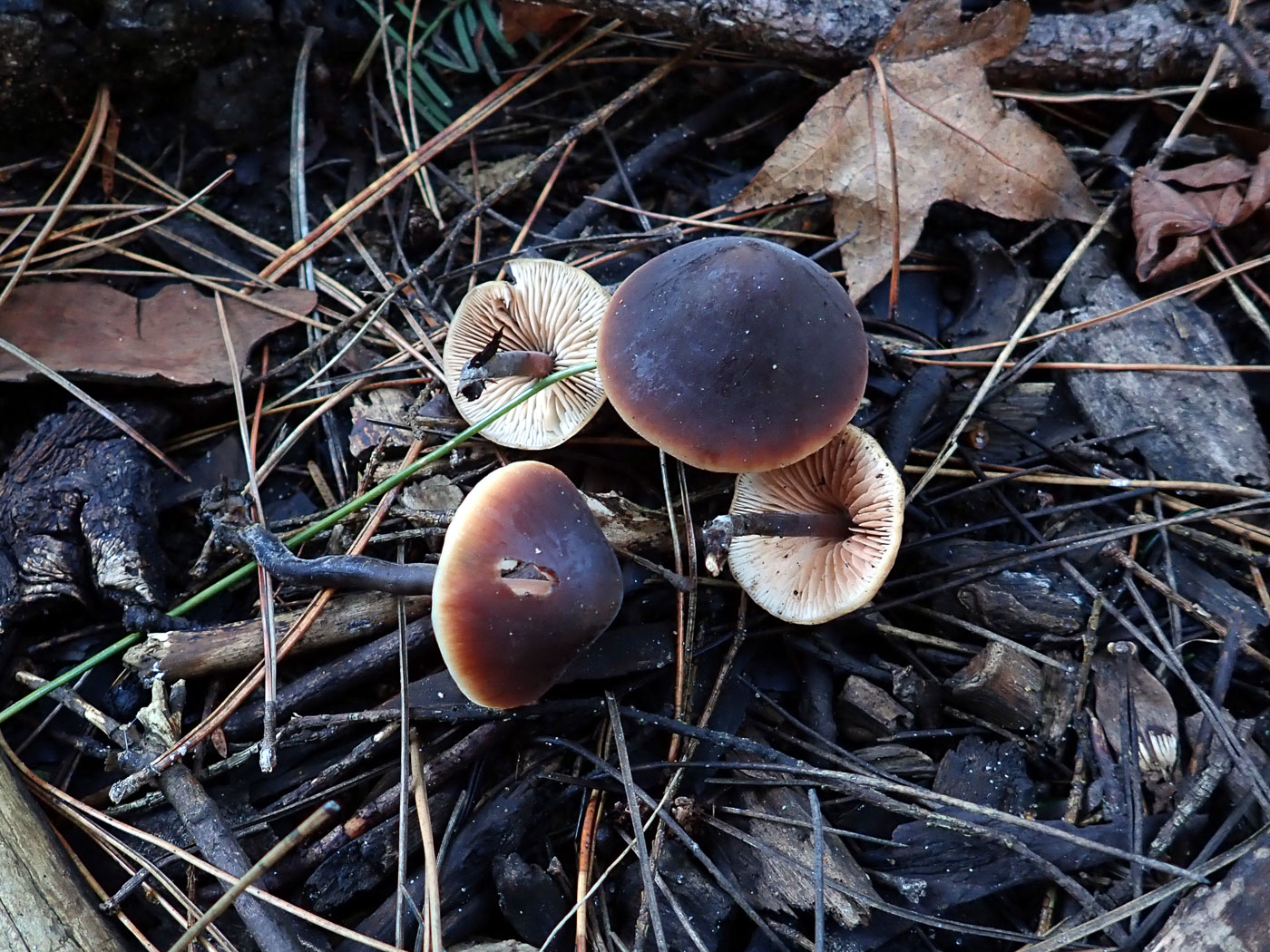 |
December 12th Macrocystidia cucumis (Cucumber Cap)
At Stoke Poges Memorial Gardens Penny was interested to see this species still fruiting away here amongst woody debris in a rather dark corner near the gate into the churchyard next door. This seems to be a regular spot for it and once familiar with its conical shape intense brown cap with pale rim and extraordinary smell it becomes an easy species to name in the field with no need to view its spectacular lanceolate cystidia as confirmation! See the Masterlist for other examples.
|
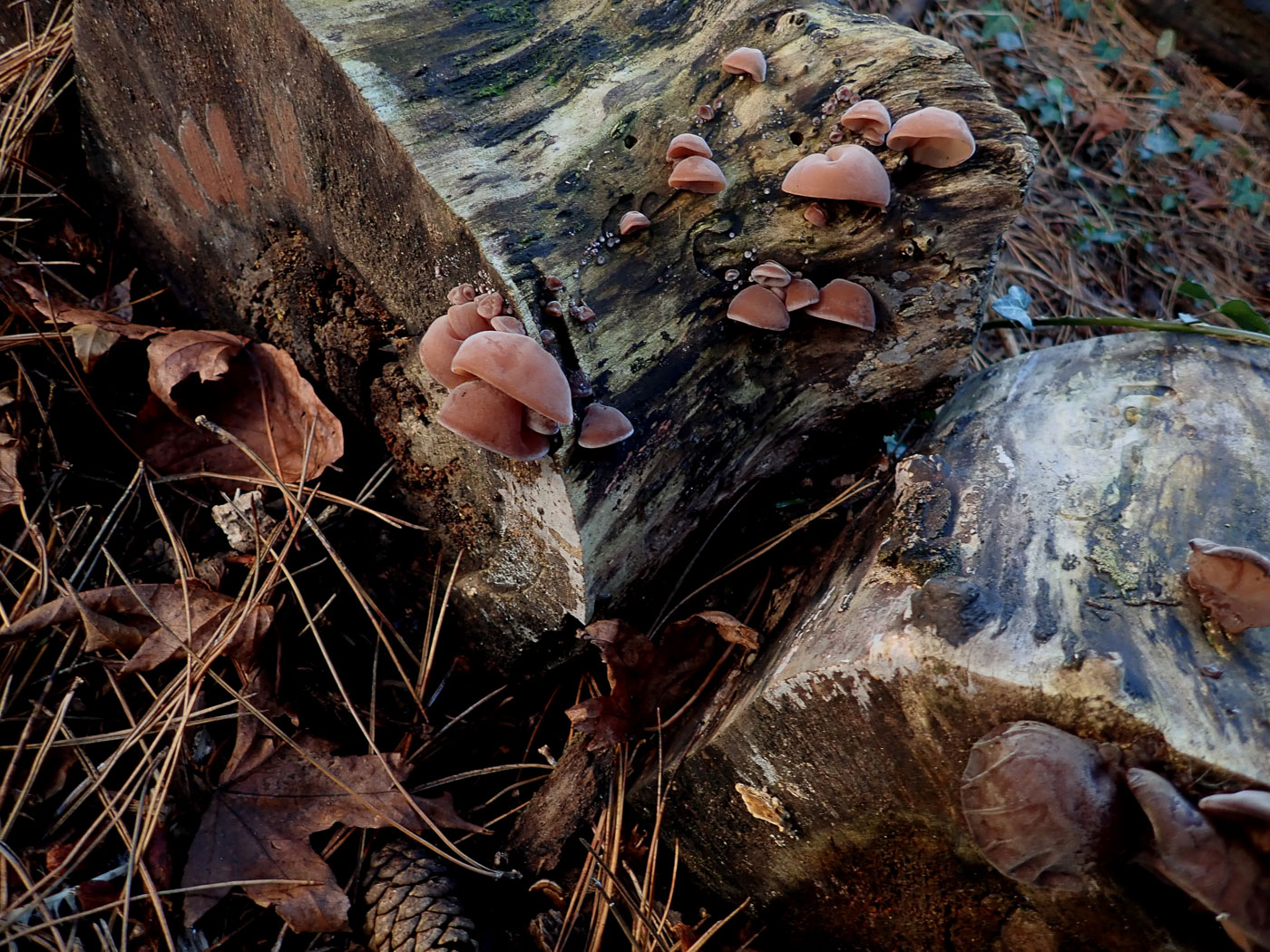
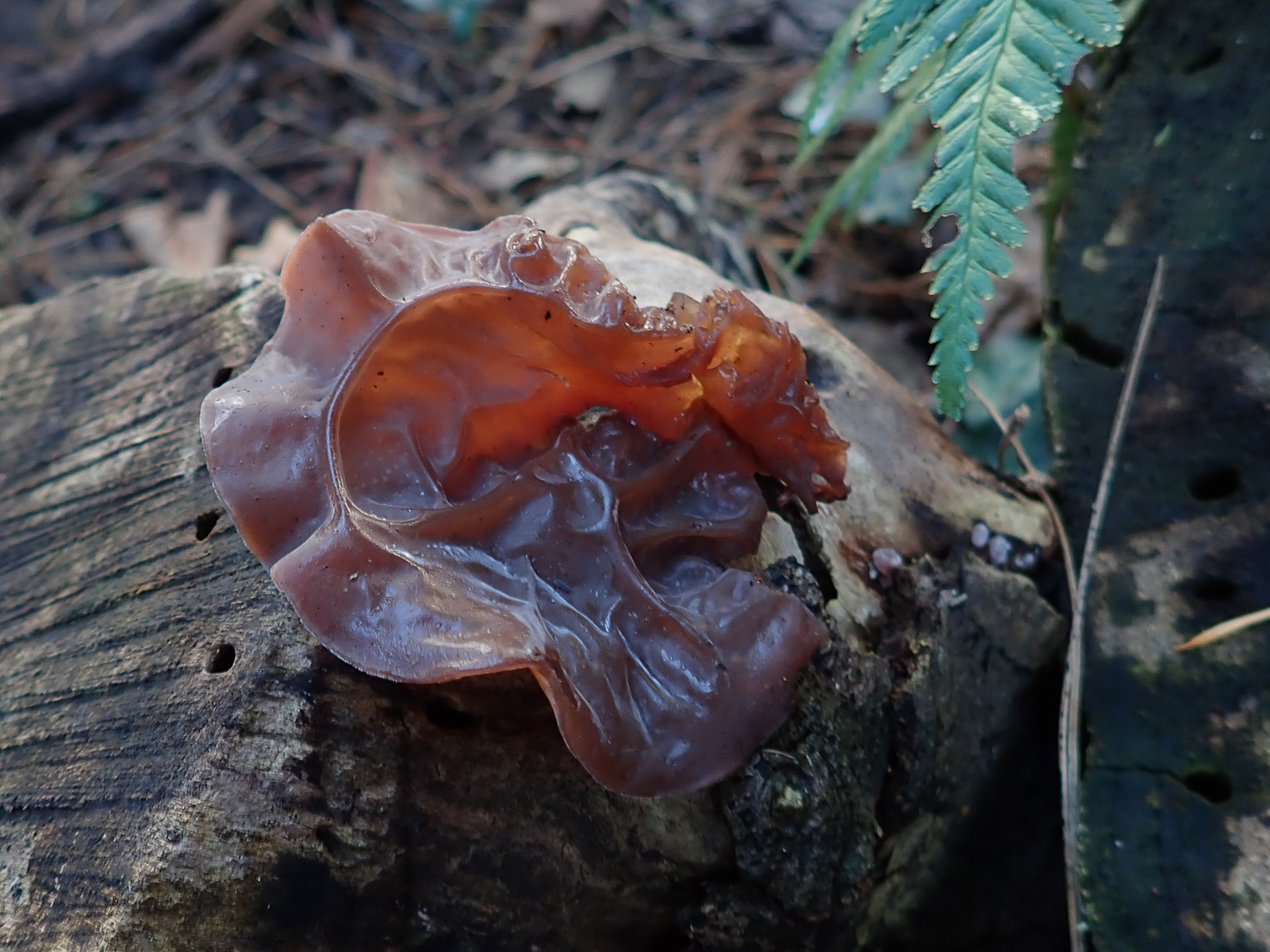 |
December 12th Auricularia auricula-judae (Jelly Ear)
Also in the same dark area of woody debris at Stoke Poges Memorial Gardens Penny found some old deciduous logs lining the path and covered in this species. Most commonly frequenting Elder, it is by no means unusual on other substrates and here the wood could have been Birch? Photo 2 shows the veined underside. See the Masterlist for other examples.
|
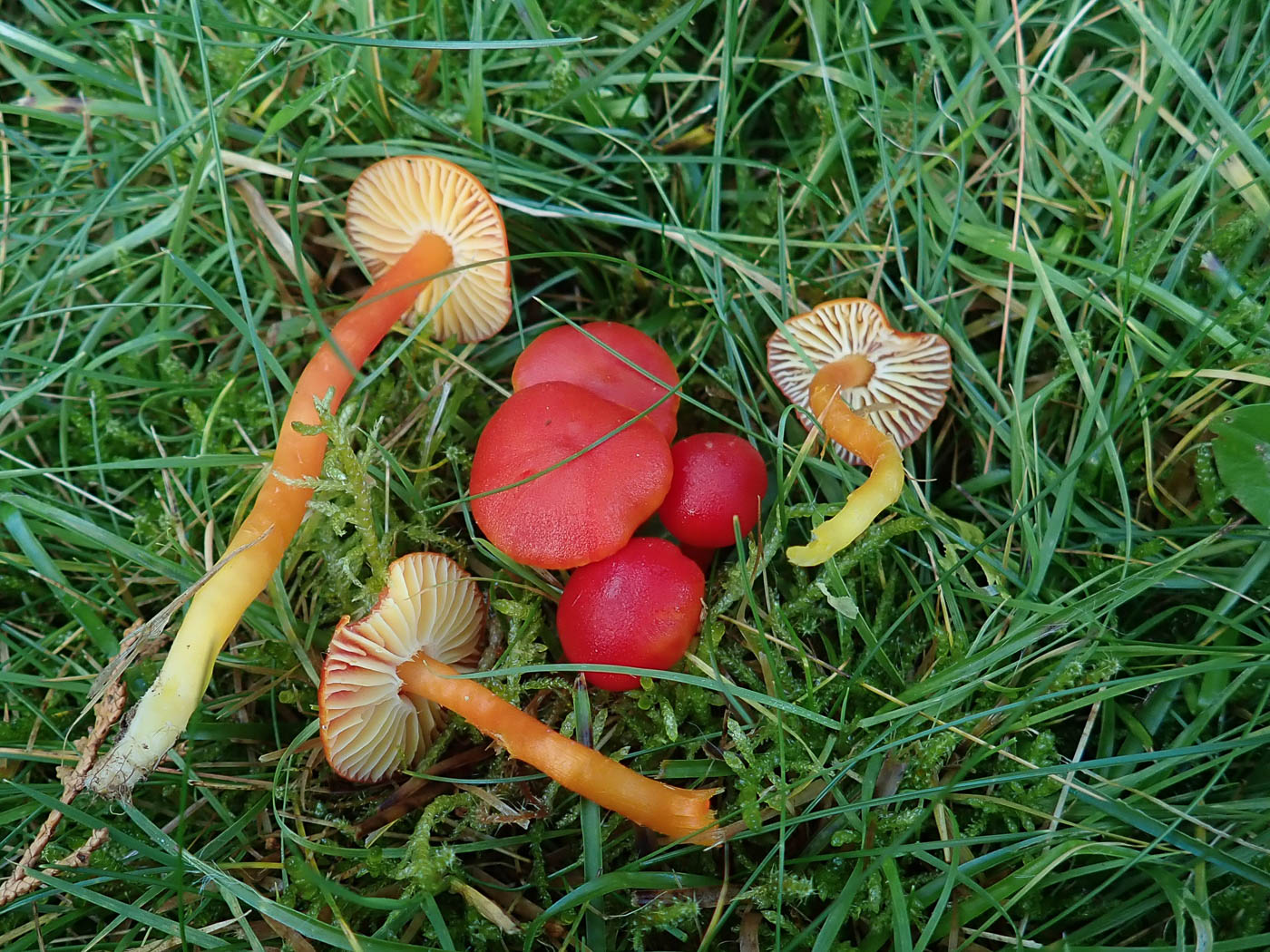 |
December 12th Hygrocybe coccinea (Scarlet Waxcap)
Inspired by Sarah's recent visit to Prestwood Churchyard Penny went to St Giles Churchyard, Stoke Poges to see what grassland fungi were still fruiting now the weather has turned milder again. Disappointingly no Earthtongues were found and the only Waxcaps on show were Cuphophyllus virgineus and this nice collection of H. coccinea which she couldn't help setting up for a photo despite it not being at all unusual, though it doesn't seem to have been nearly as common as usual this autumn. See the Masterlist for other examples.
|
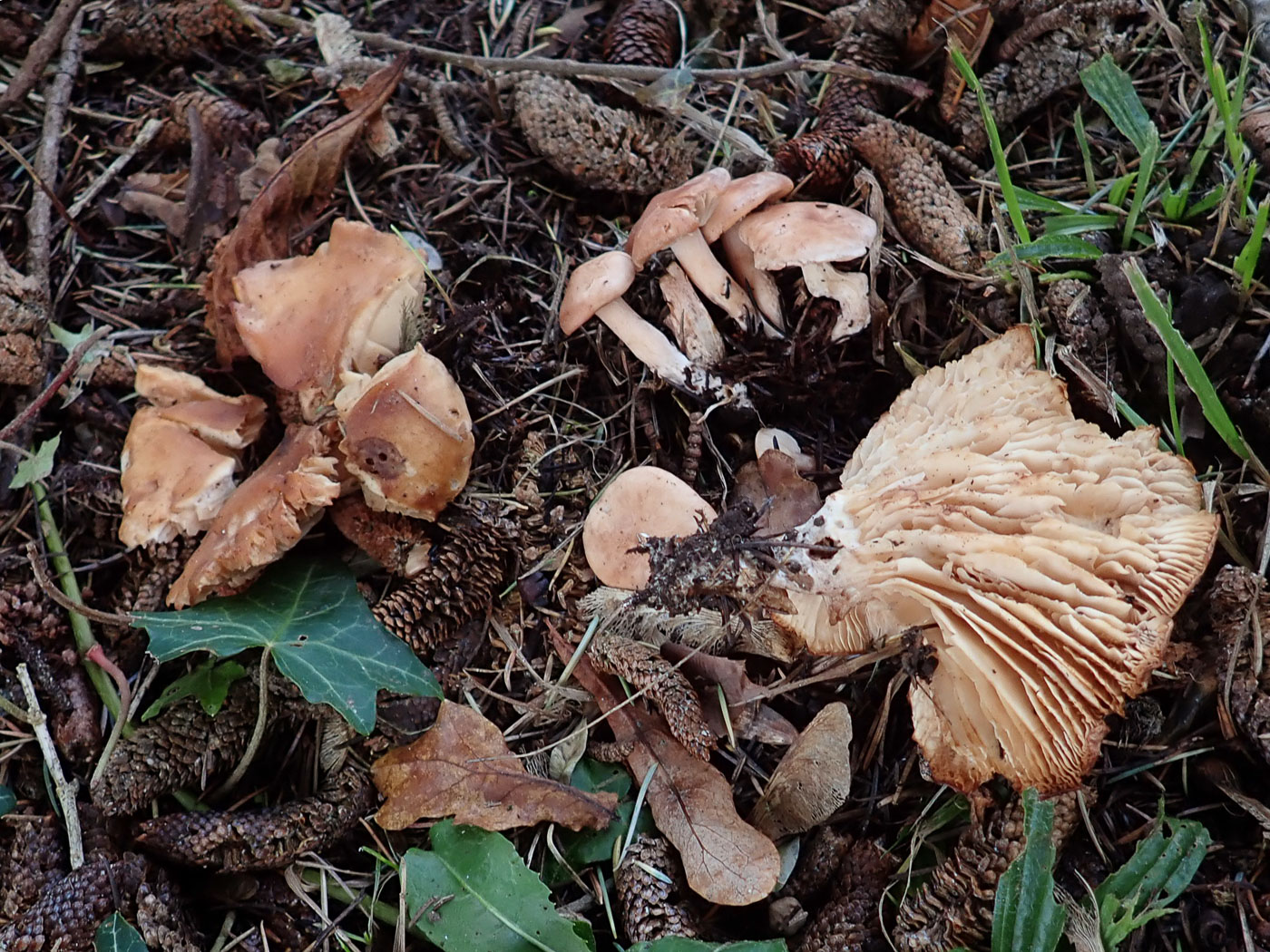 |
December 12th Rhodocybe gemina (Tan Pinkgill)
Under a large Cedar at St Giles Churchyard, Stoke Poges, Penny found this unusual species - not recorded her previously. Though not common, it is a regular fruiter at several sites, notably Rushbeds Wood and Bradenham Churchyard (where it is under Yew in several spots). The cap colour is more pink than tan, as are the gills (hence its common name though not related to Entoloma - the main Pinkgill genus). It is a chunky mushroom with thick flesh when mature and getting to anything up to 12 cm across. See the Masterlist for further examples.
|
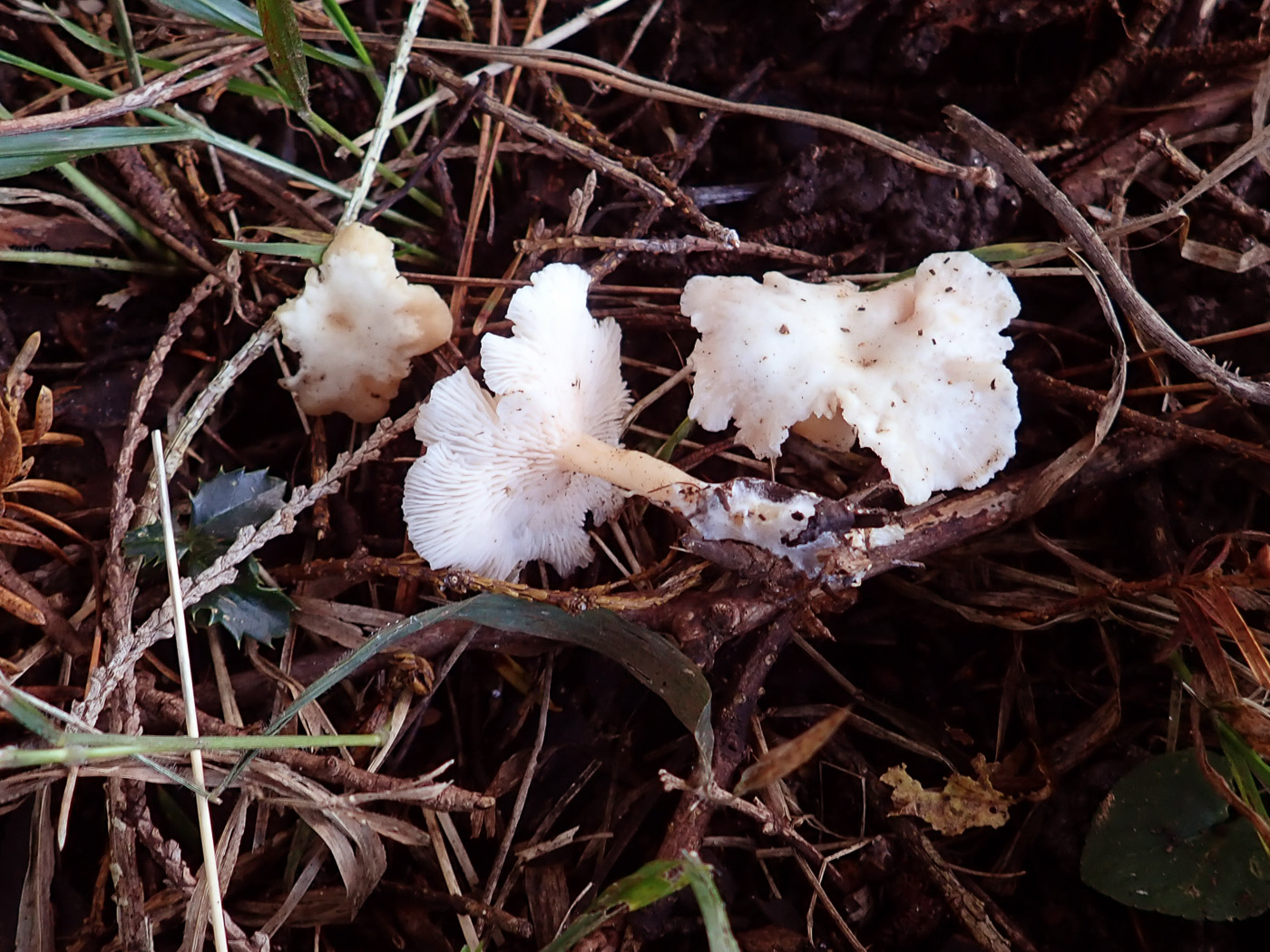 |
December 12th Leucocybe houghtonii (a Funnel with no common name)
In woody litter mixed with rotting vegetation at St Giles Churchyard, Stoke Poges, Penny found this species - yet another Funnel which has recently been moved from Clitocybe to different but closely related genus. It was identifiable in the field from various characters: the tendency for the cap to develop a slightly frilly rim, for the gills to turn distinctly pink rather than white to cream (they became strongly pink by the following day), and last but not least the smell of bruised tomato leaves when the gills are rubbed. See the Masterlist for further examples.
|
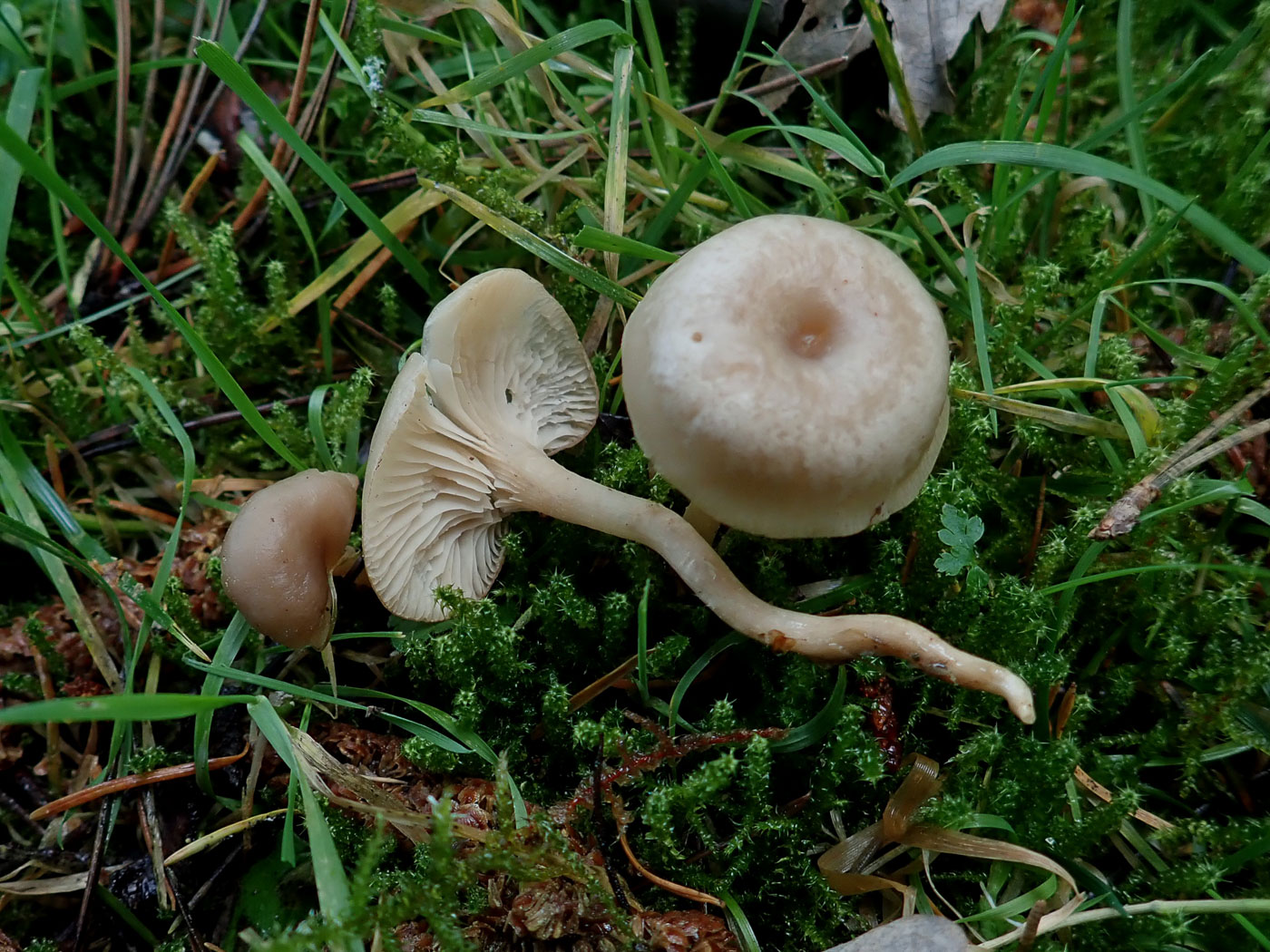 |
December 12th Singerocybe phaeophthalma (Chicken Run Funnel)
In mossy vegetation at St Giles Churchyard, Stoke Poges, Penny noticed this trio of Funnels, the smell of which instantly enabled her to place it to species. Wet feathers or damp dog describe the smell well, and it saves a lot of time and effort once one can recognise this in the field because so many Funnels looks very similar and lack useful microscopic characters to help. Actually today's species has some distinctive balloon-shaped cap cuticle cells - the reason for its recent move out of genus Clitocybe. See the Masterlist for further examples.
|
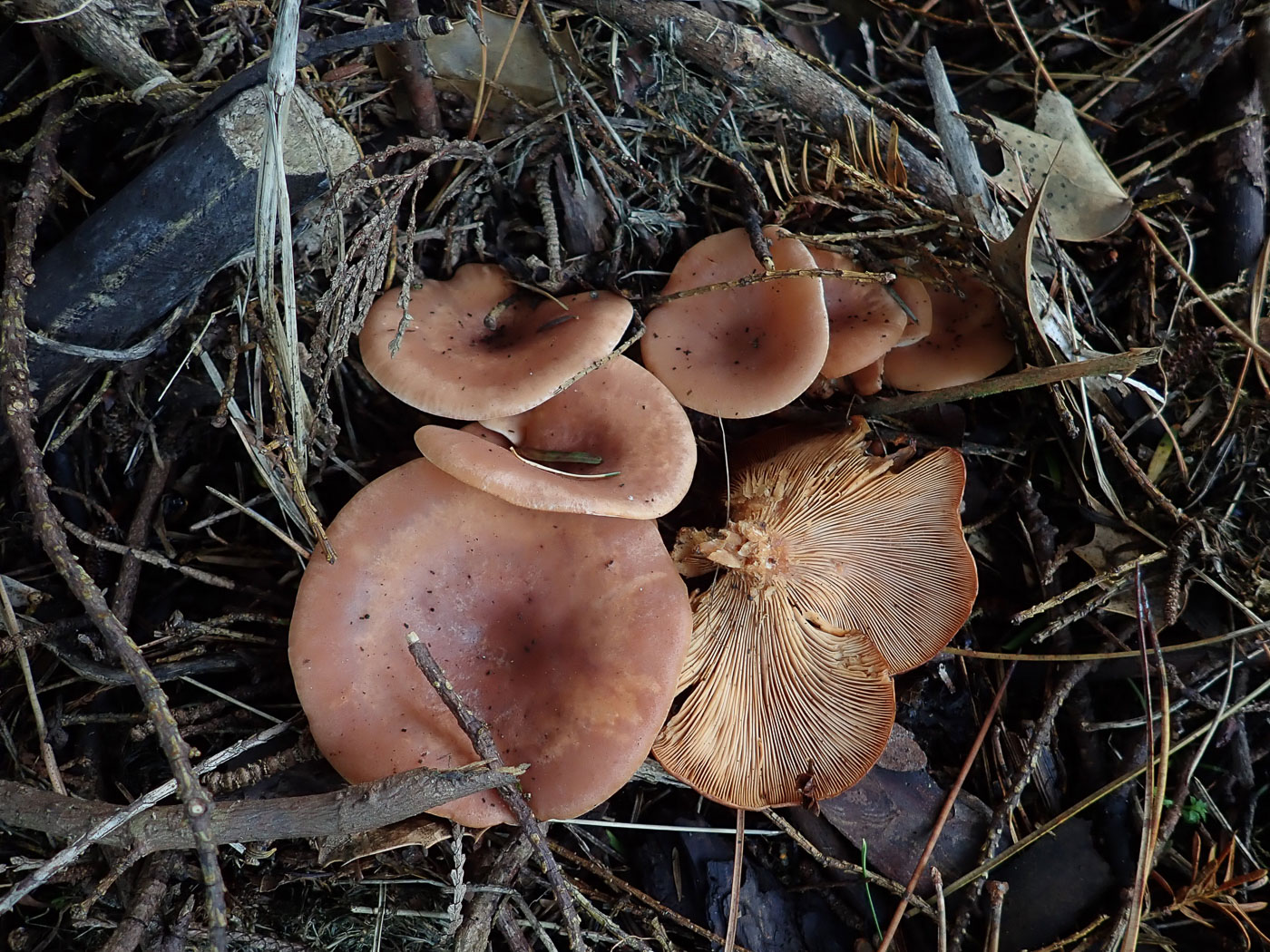 |
December 12th Paralepista flaccida (Tawny Funnel)
In woody litter mixed with rotting vegetation at St Giles Churchyard, Stoke Poges, Penny found this cluster of a very common fungus in good condition. Originally in genus Clitocybe it was moved to genus Lepista on account of its similarly ornamented spores, but following molecular investigation was moved again to Paralepista where it now resides together with just one other (rare) British species. See the Masterlist for other examples.
|

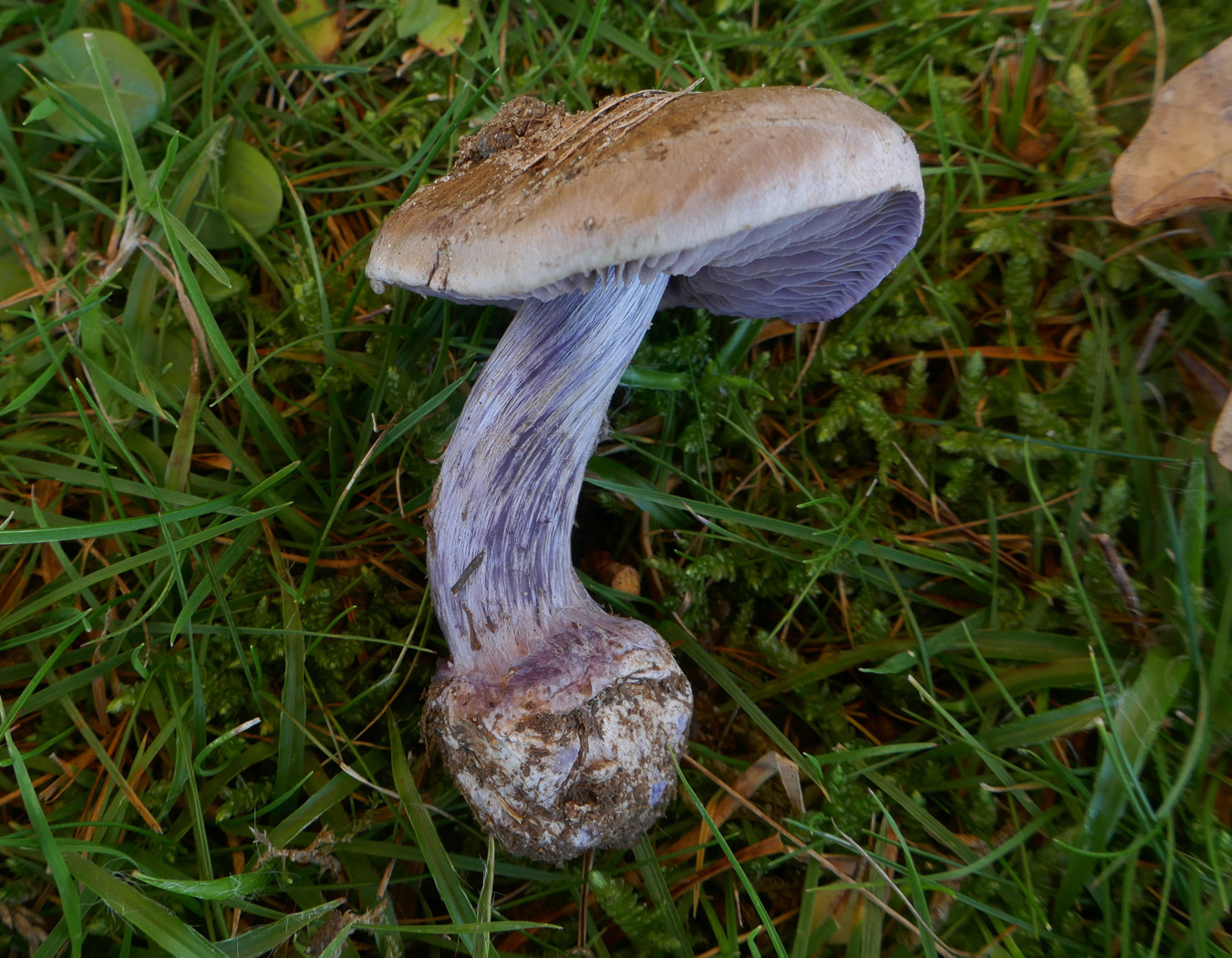
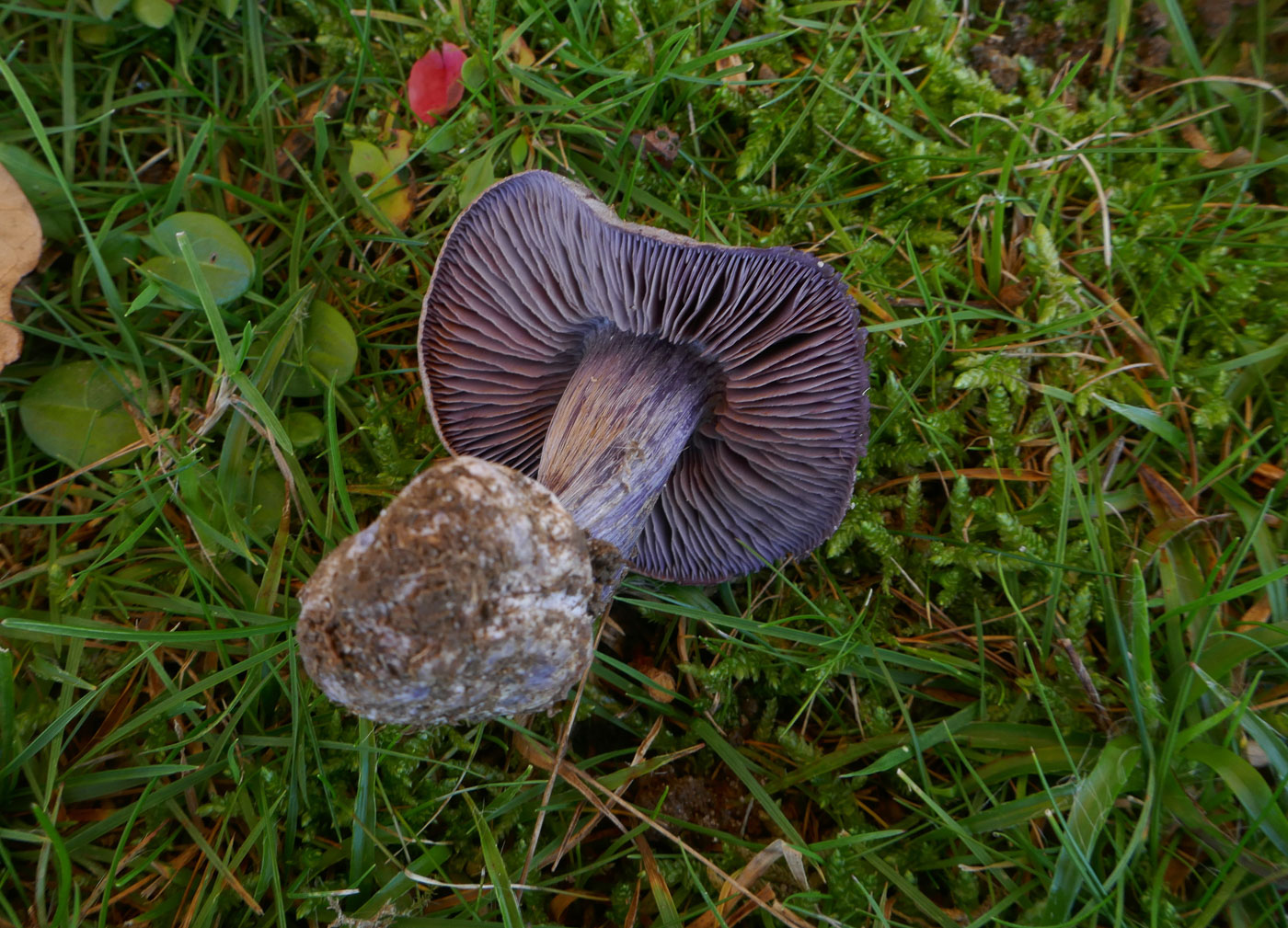
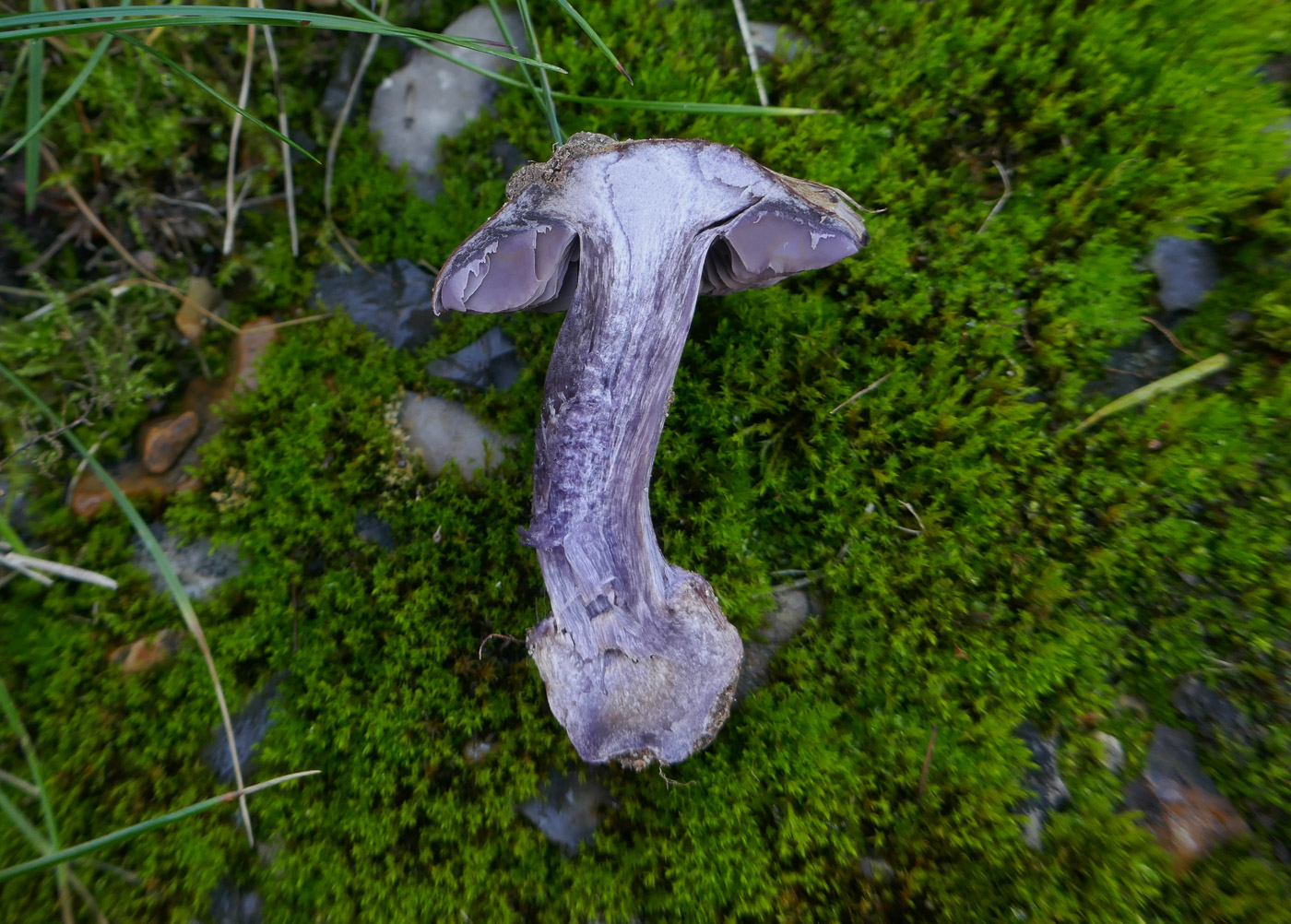 |
November 16th Cortinarius magicus (a rare Webcap with no common name) 
Under Oak at Stampwell Farm Jackie Ewan found this collection of distinctive Webcaps belonging to Section Phlegmacium (with sticky caps but dry stems). She sent photo 1 to Penny plus the spore details in the hope that it could be identified, but more information was needed before the key to this section in the Kibby / Tortelli monograph could be followed. Returning to the spot a week days later, the one remaining specimen provided the vital details of the stem base shape on which the key depends. So armed with the violet gills when young but brown cap, the large marginate bulb and violet flesh within the stem together with the small amygdaliform ornamented spores and occurrence under Oak, Penny was able to key it out to this rare species which is new to the county with only a handful of UK records in FRDBI, all pre 2000. This will be dried and sequenced in the hope of confirmation.
|
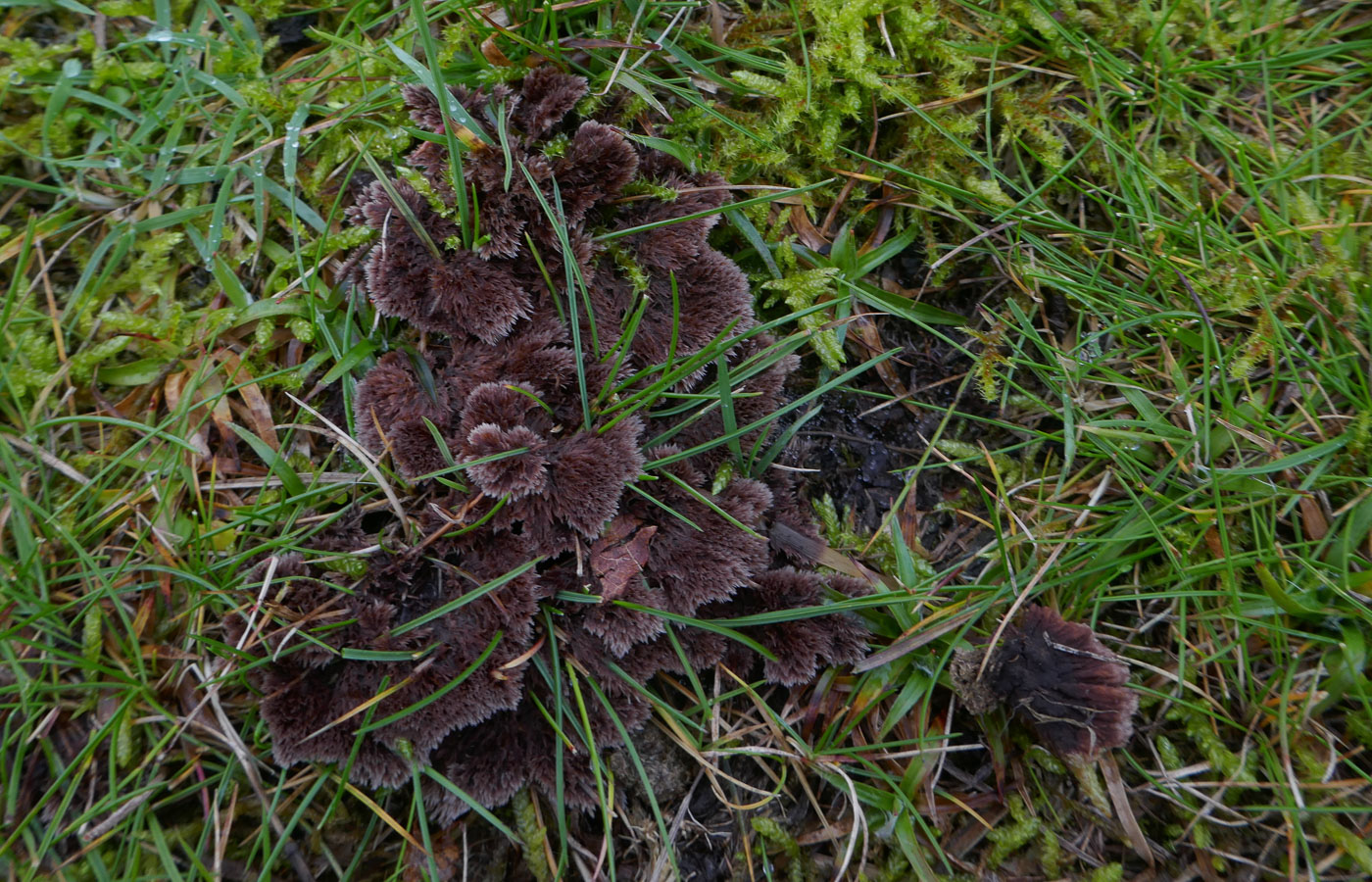 |
November 16th Thelephora terrestris (Earthfan)
At Stampwell Farm Jackie Ewan found this nice example in mossy heathy litter. When in woody litter it is easily missed, blending in well with its surroundings but here it was showing up against the green background. See also in Finds 2020 Oct 11th and 2022 November 12th.
|
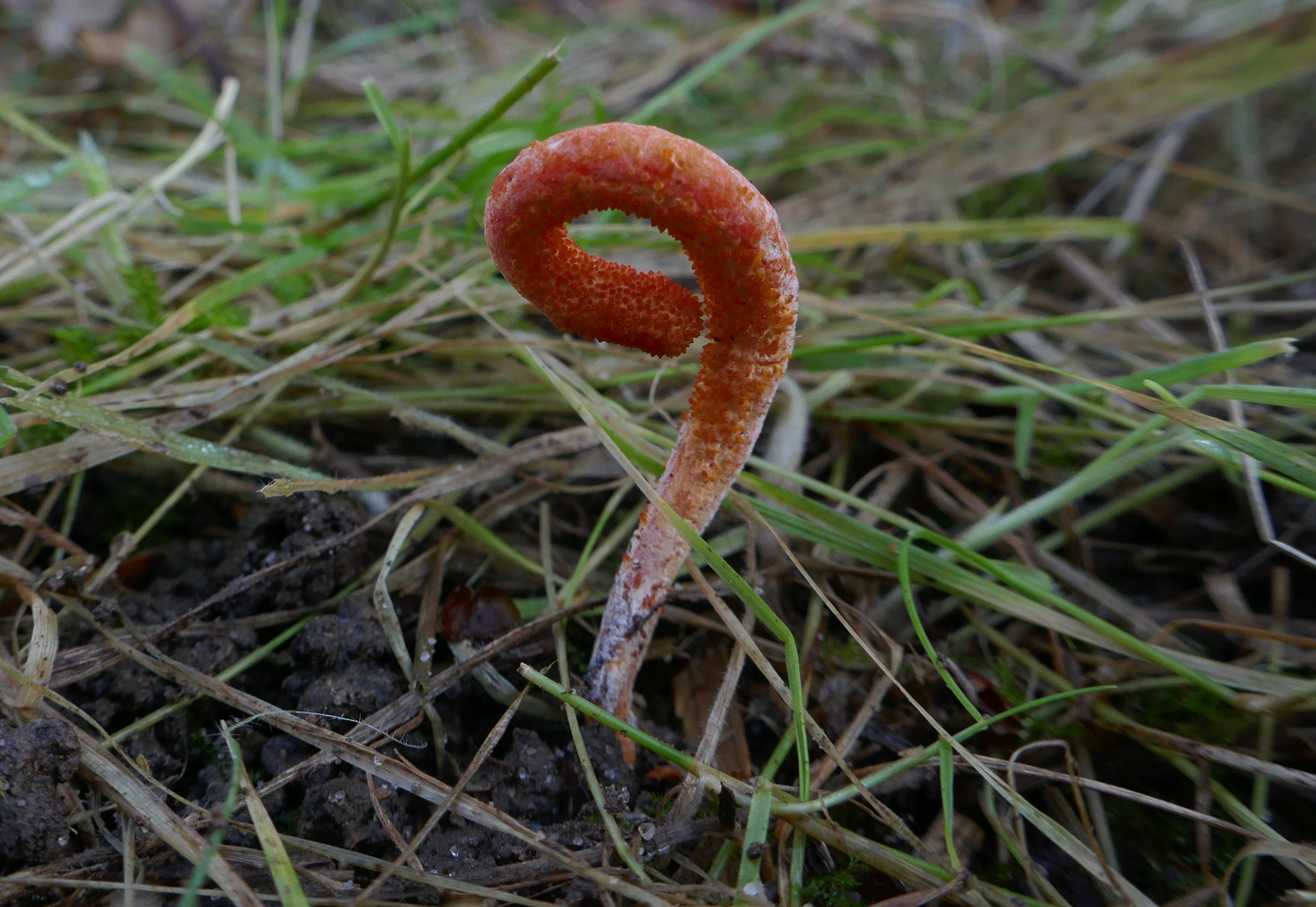 |
November 16th Cordyceps militaris (Scarlet Caterpillarclub)
At Stampwell Farm Jackie Ewan found this somewhat misshapen example in soil amongst Bracken, recognising it from our previous Finds entry on October 6th. If you find this parasitic fungus and then carefully dig down to its base, with luck you can reveal the host caterpillar on which it feeds and grows, killing its victim in the process! See also in Finds 2020 November 6th.
|
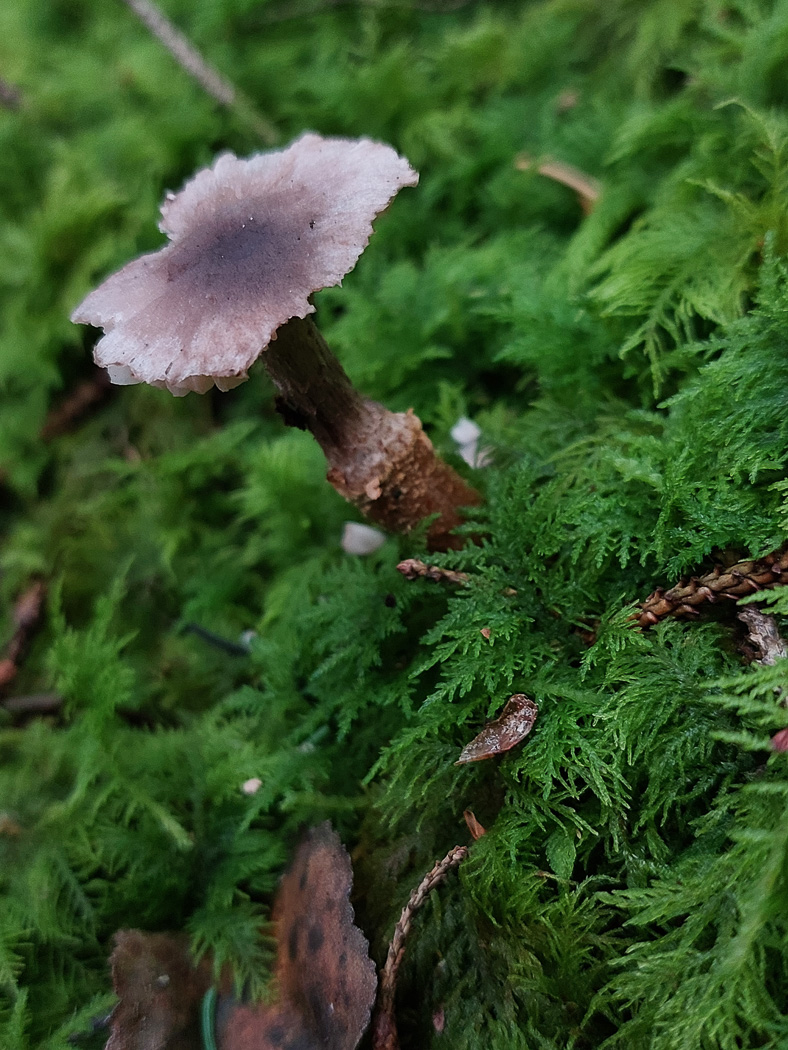
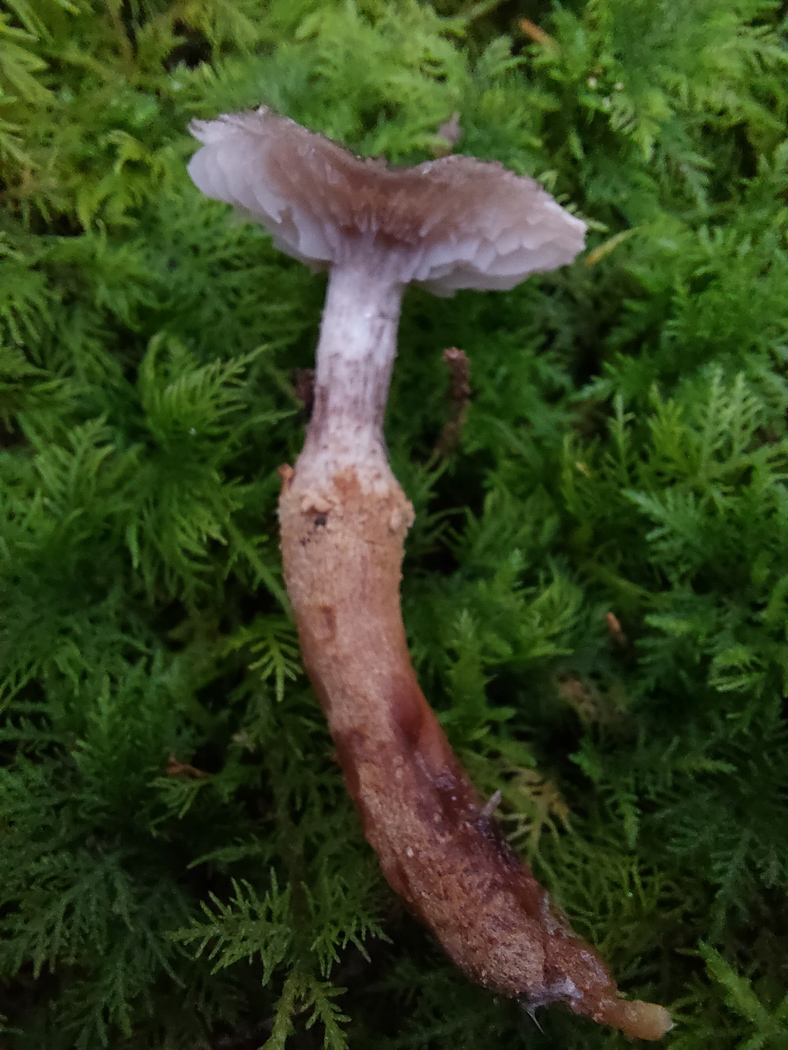 |
November 16th Squamanita paradoxa (Powdercap Strangler)
In a mossy patch under conifers in Bernwood Forest Jesper Launder found good numbers of Cystoderma amianthinum (Earthy Powdercap) and amongst them he noticed one cap which was not the expected cream colour but much greyer. He immediately wondered if he'd chanced upon the rare and illusive Squamanita paradoxa, the cuckoo of the fungal world! This parasitic species invades the hapless Cystoderma, takes over its scaly stem and replaces the cap with its own fertile cap instead, resulting in this bizarre-looking mushroom, half Cystoderma, half Squamanita! It only inhabits this particular Cystoderma species and was new to the county when found in Burnham Beeches in 2019 by Barry Webb. This is new to Finds and was an exciting find.
|
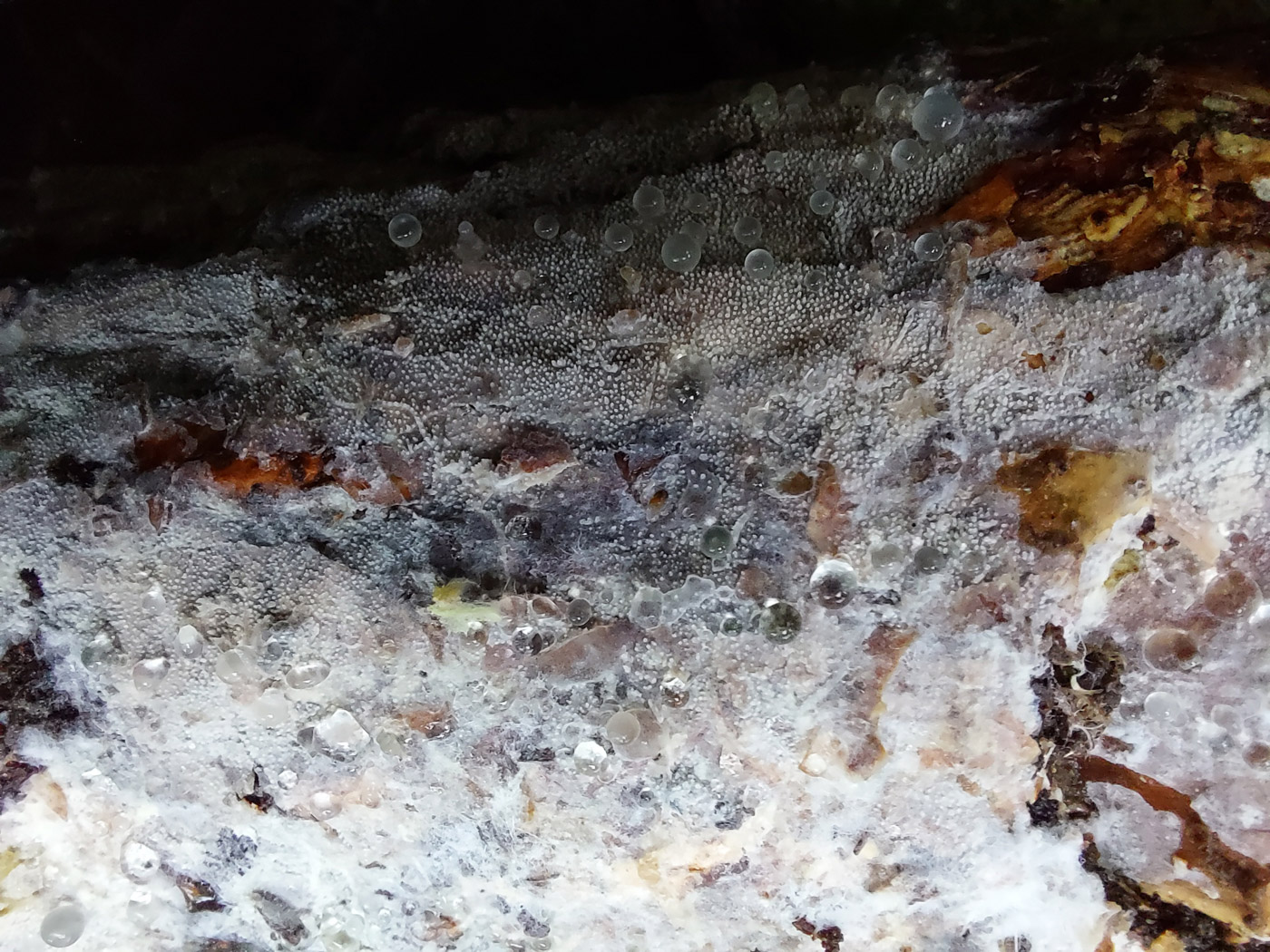 |
November 16th Resinicum bicolor (Hallowed Crust) 
On a conifer log in Bernwood Forest Jesper Launder noticed this patch of corticioid fungus and took a sample home to examine. Though quite similar to many other species found on fallen wood in the field, under the scope this species is very distinctive and has some cells tipped with snowflake-like crystals which make it quite easy to confirm its ID if you can find them. This is quite an unusual species and is a new entry for Finds.
|
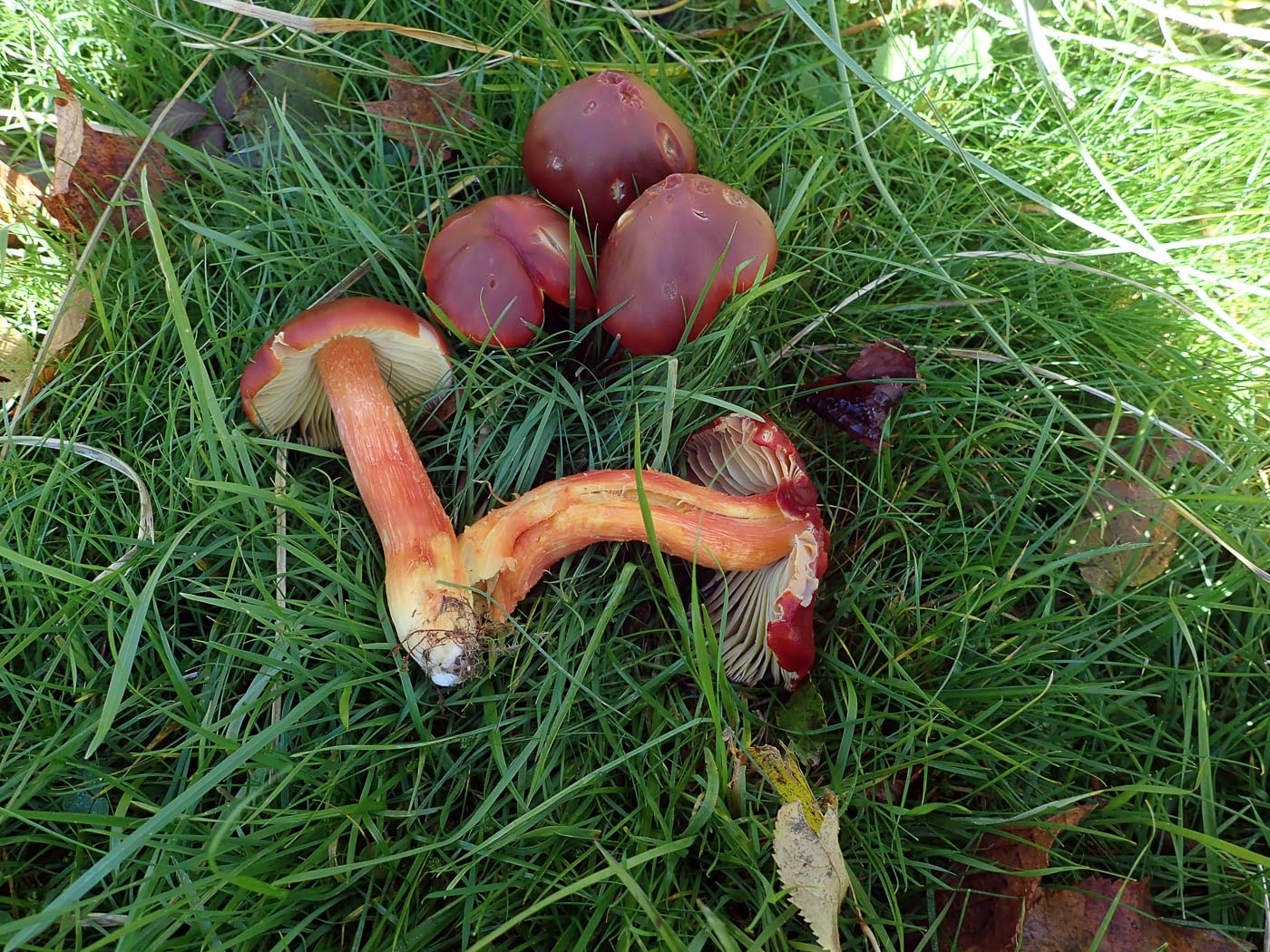 |
November 15th Hygrocybe punicea (Crimson Waxcap)
Penny went to Prestwood Churchyard today with the express purpose of checking to see if this stunning Waxcap was fruiting as conditions and timing seemed perfect. Success! This is one of our largest and most showy Waxcaps and we have quite a few county records though almost all either from this site or Stowe Landscape Gardens where we visit this coming weekend. It didn't make an appearance here last year though was found in exactly this same spot the two previous years, always late in the season. Fungi can be deceptive in size in photos but the two front specimens were about 10 cms tall.
|
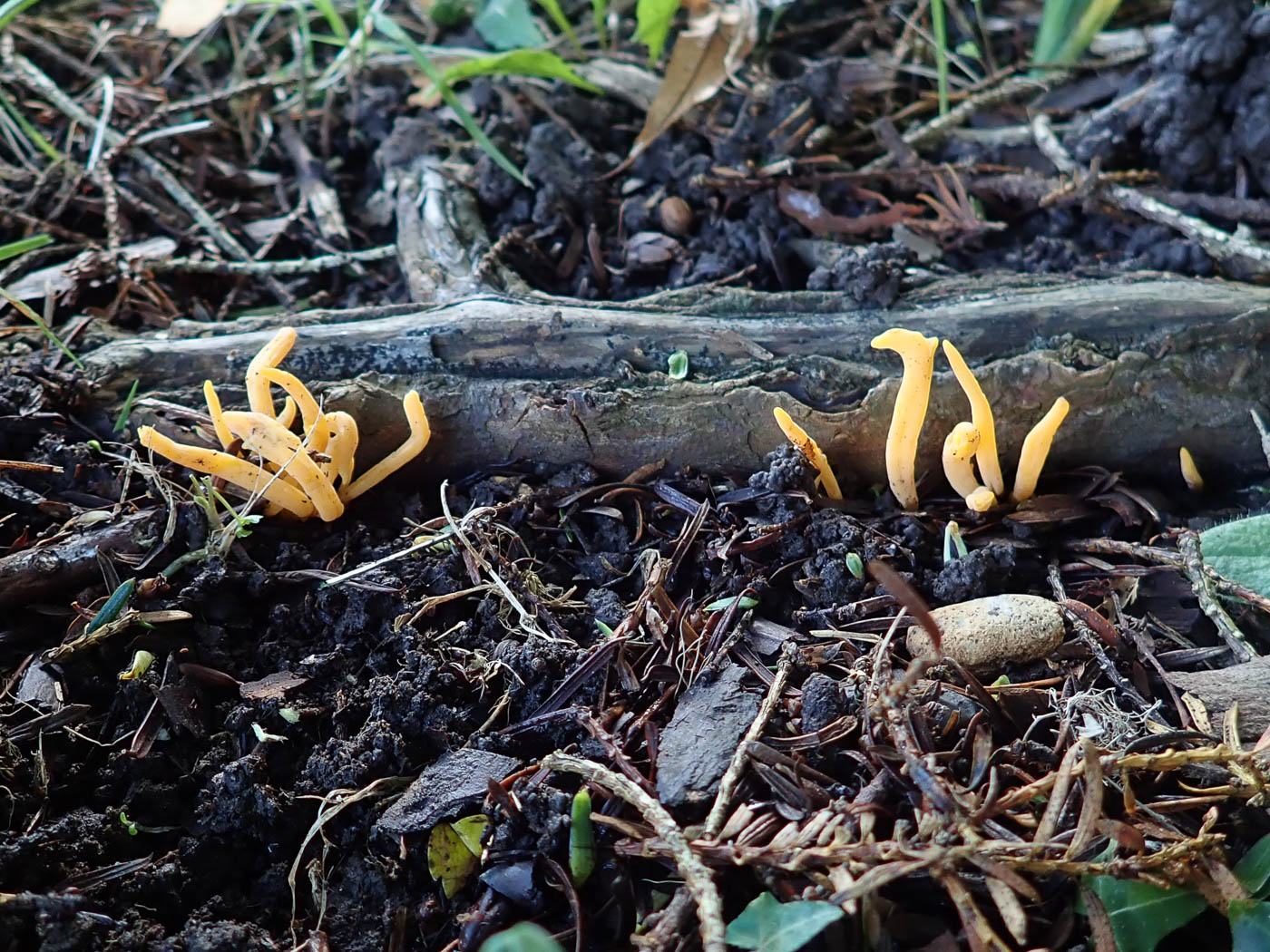 |
November 15th Clavulinopsis luteoalba (Apricot Club) 
Under Yew in Prestwood Churchyard Penny found these Clubs making their way around a root above surface. She took one home to check the spores as there are two almost identical small clubs having this subtle orange tinge rather than the yellow of the much more common C. helvola (Yellow Club). The species today is described as often having whitish tips but in Penny's experience this is seldom seen and the only safe way to separate them is by their spores shape. See the Masterlist for images of both these species to compare.
|
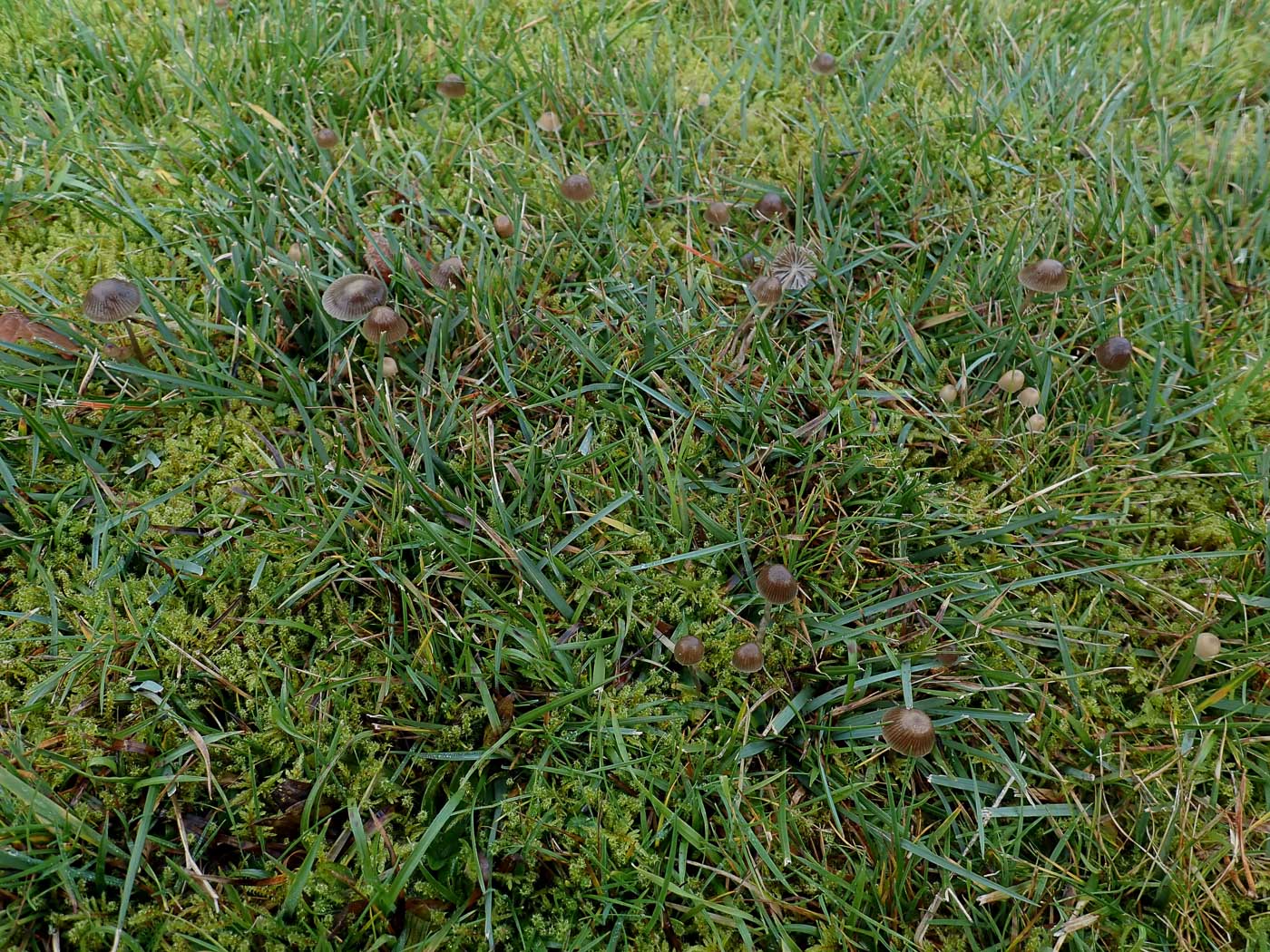
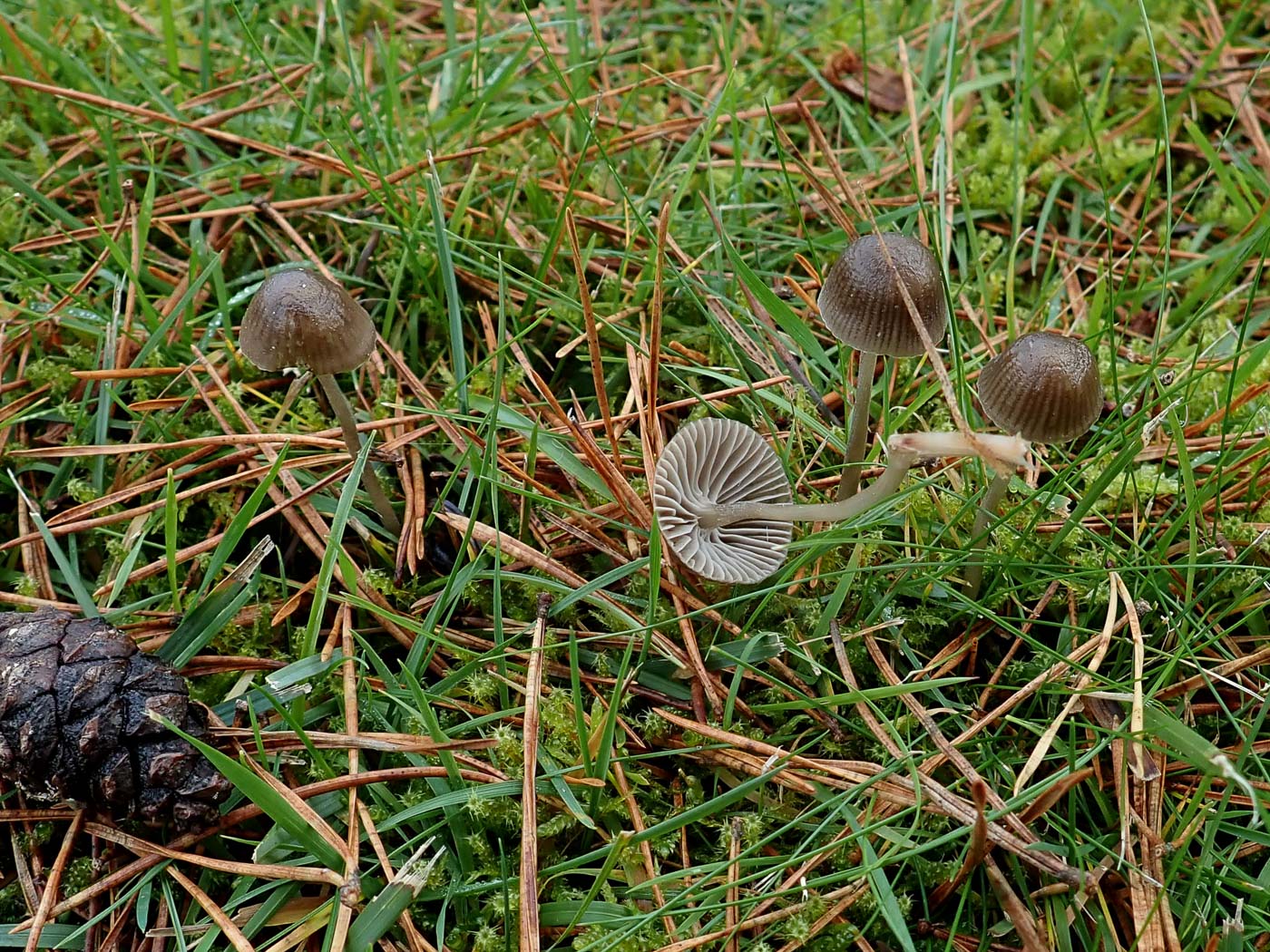 |
November 15th Mycena vulgaris (Vulgar Bonnet) 
In lawn under Pine at Prestwood Churchyard Penny was pleased to find this unusual species coming up in good numbers. We have a few records from the 1980s but since 2000 this is our only known county site when Penny has found it here every year since 2020. This is an easy Bonnet to recognise in the field: dull grey all over with no smell but sticky all over with a peelable cap cuticle like M. epipterygia, also the gills are slightly decurrent and have a layer of slime running along the edge which is detachable in one piece with a pin - as in Gliophorus laetus. It only occurs in Pine litter. See the Masterlist for the earlier finds from this site.
|
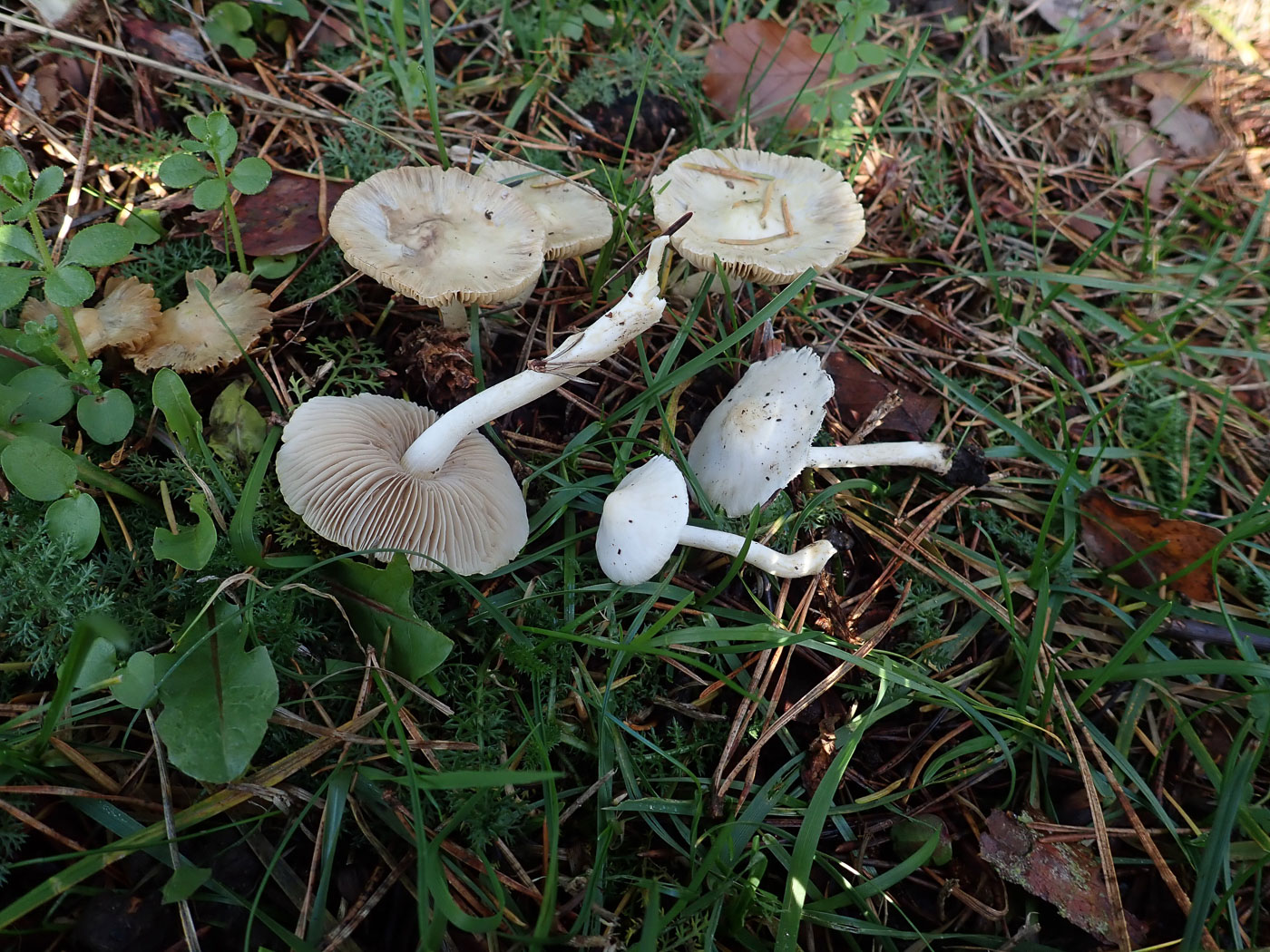 |
November 15th Inocybe posterula (a Fibrecap with no English name)  
Under Pine at Prestwood Churchyard Penny came across good numbers of a white Fibrecap and, realising that this might well be something different now that DNA in recent years has shown there to be quite a few separate white Fibrecap species, she made a collection to get sequenced. Not only do these species look pretty well identical but their microscopic characters are also extremely similar, rendering sequencing the safest way to make a determination to species. Gone are the days of naming these white lookalikes to species either in the field or in the lab! Sure enough when sequenced this proved to be I. posterula, a rare Pine associate (though confusingly I. geophylla can also occur under conifers). This is just the second county record and a new entry for Finds.
|
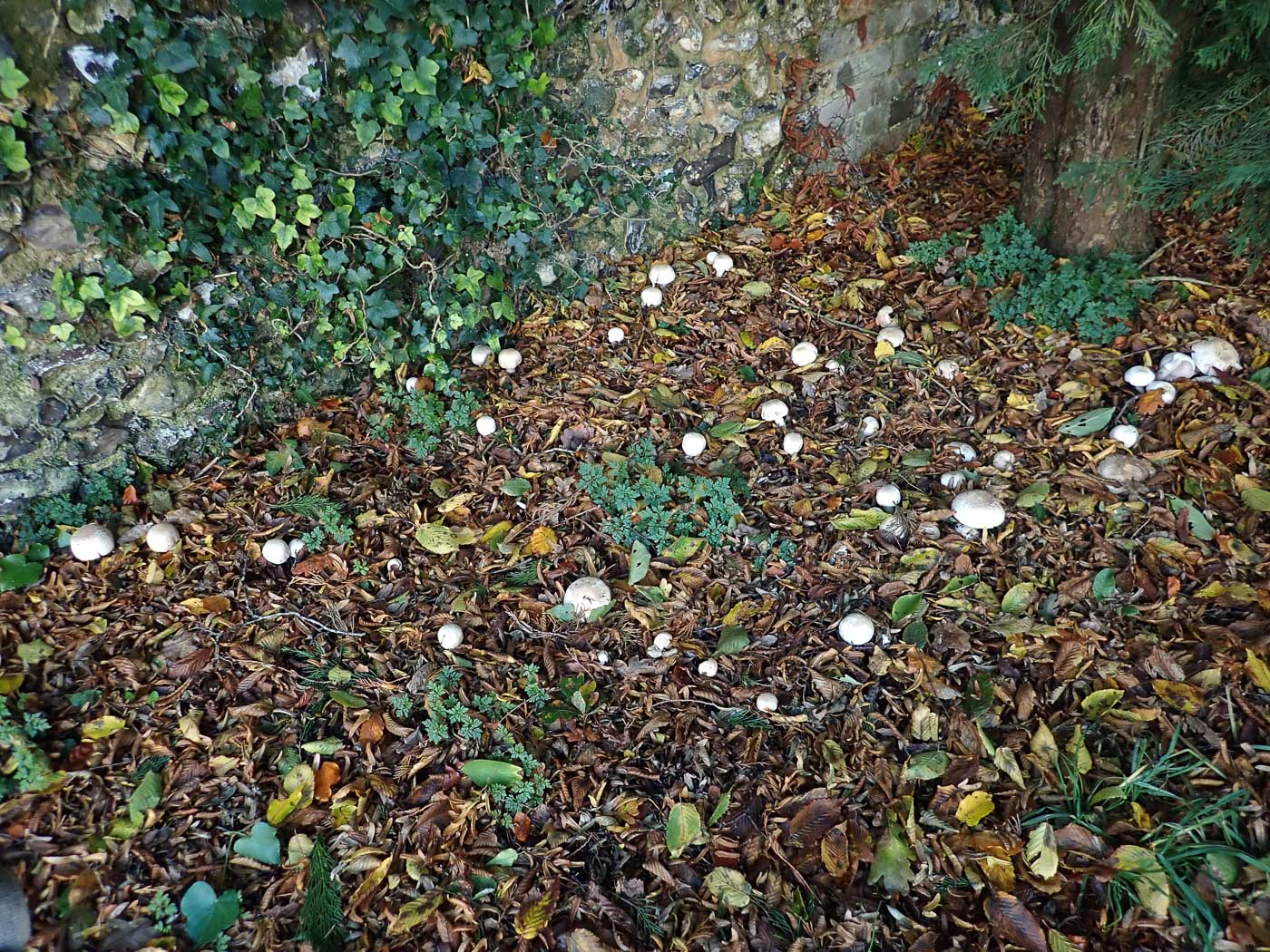
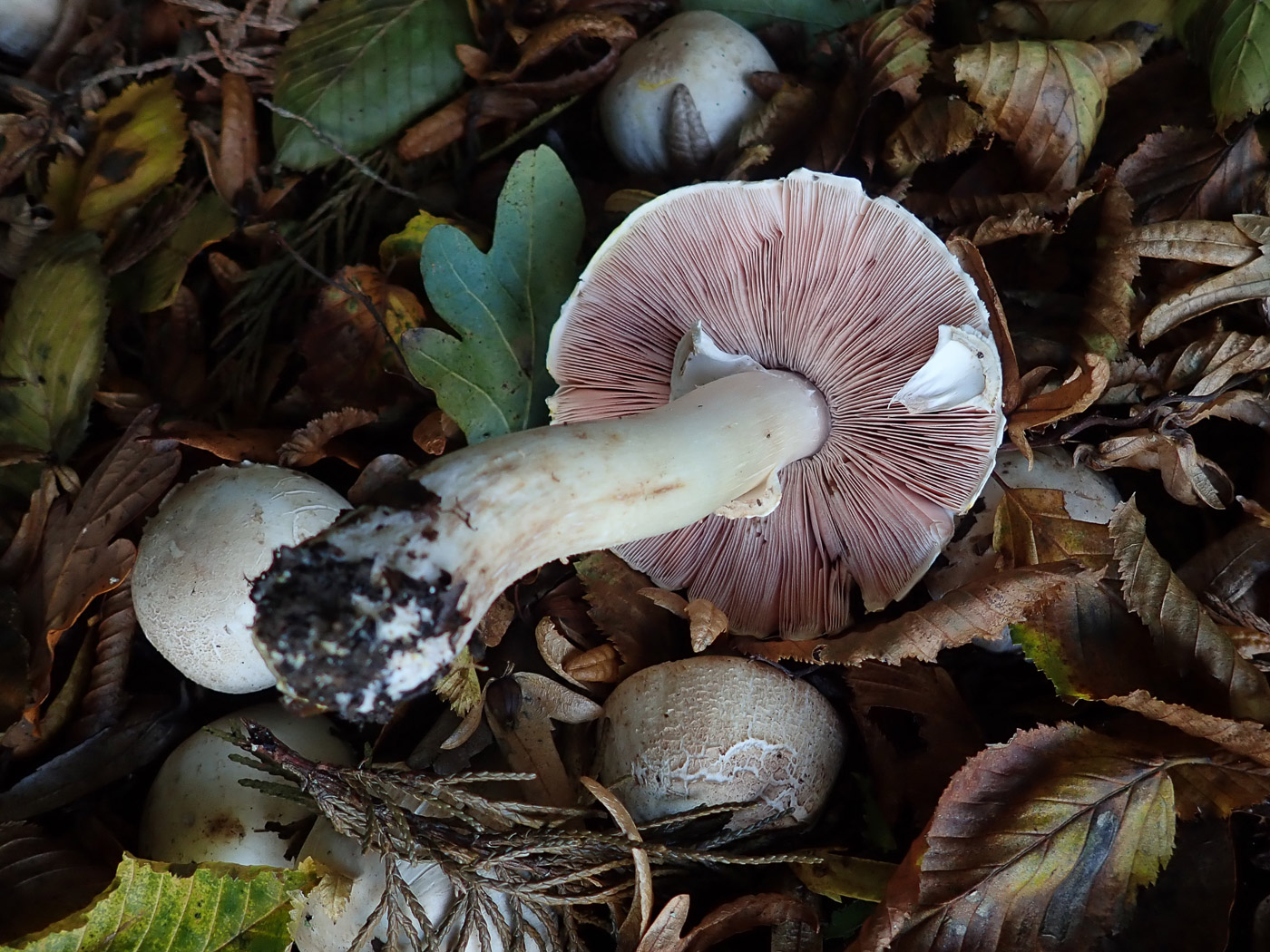
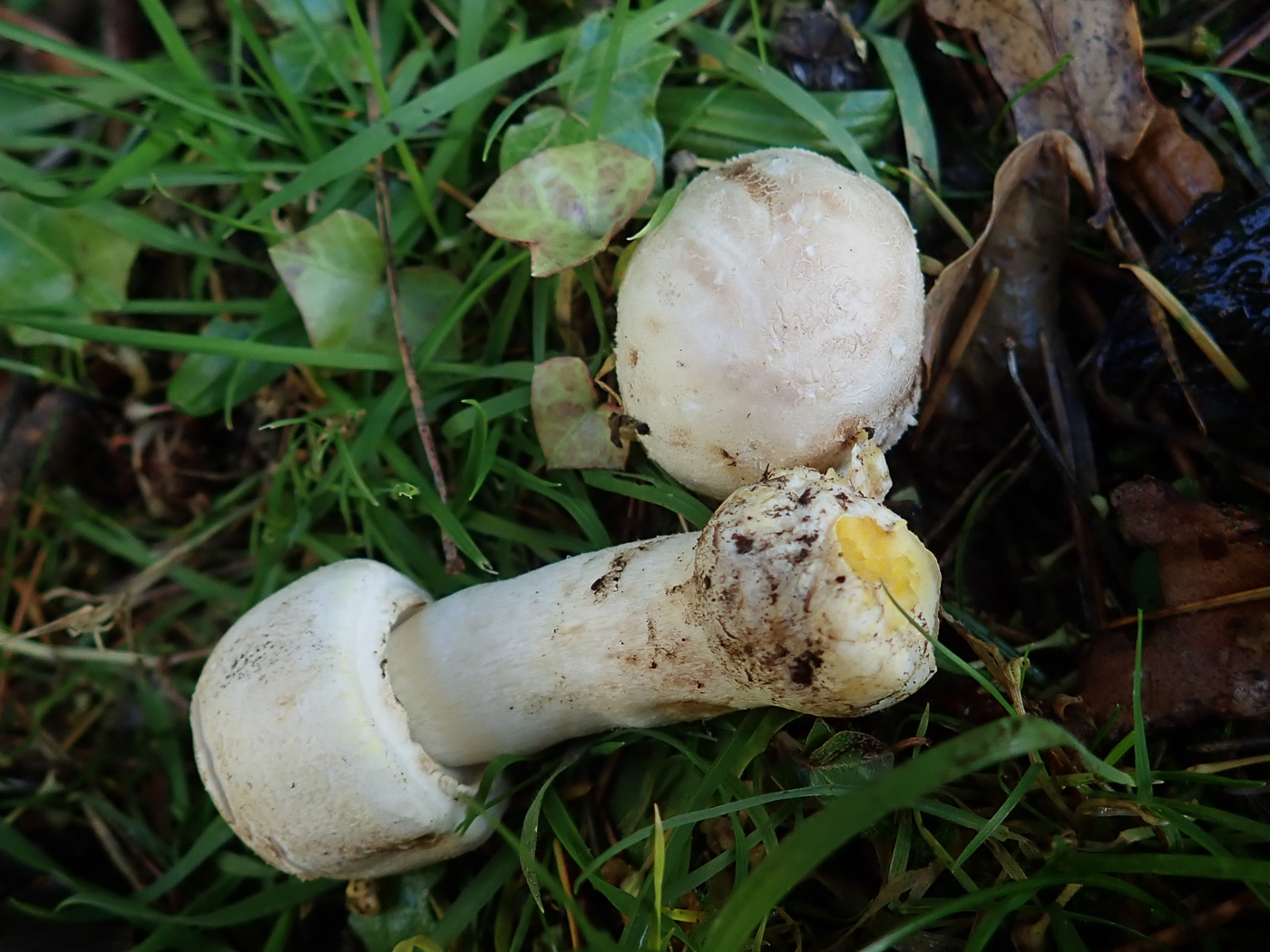 |
November 15th Agaricus xanthodermus (Yellow Stainer)
Under conifer in Prestwood Churchyard Penny found this species busily freshly fruiting in two different spots (see also the previous entry, October 17th, for an earlier fruiting found here in one of these spots). The typical features were all showing nicely including the bright brassy yellow staining where she'd picked off the stem base (photo 3). We tend to think of Agaricus as a late summer / early autumn species but this year seems to be bucking the trend. See the Masterlist for other examples.
|
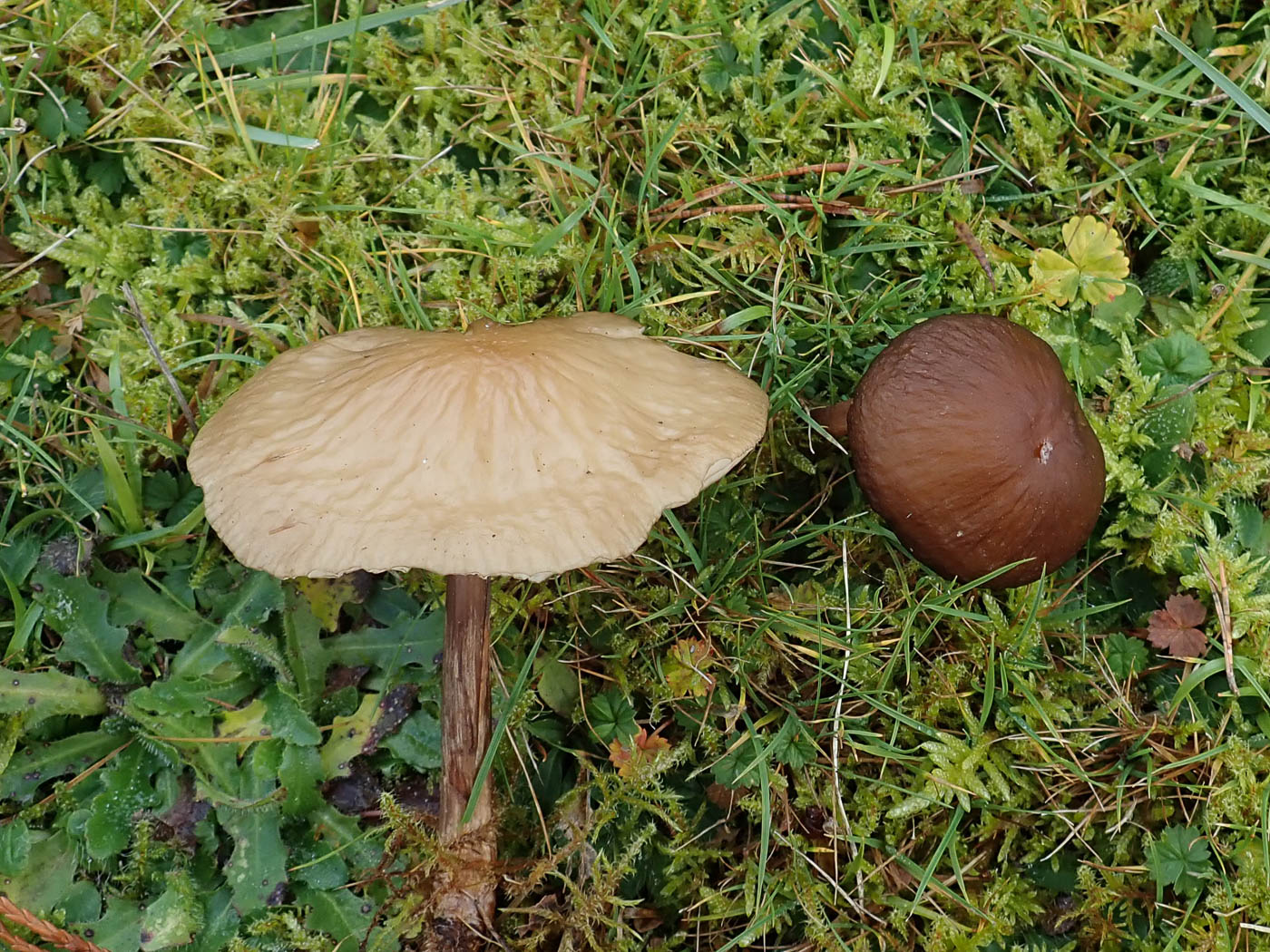
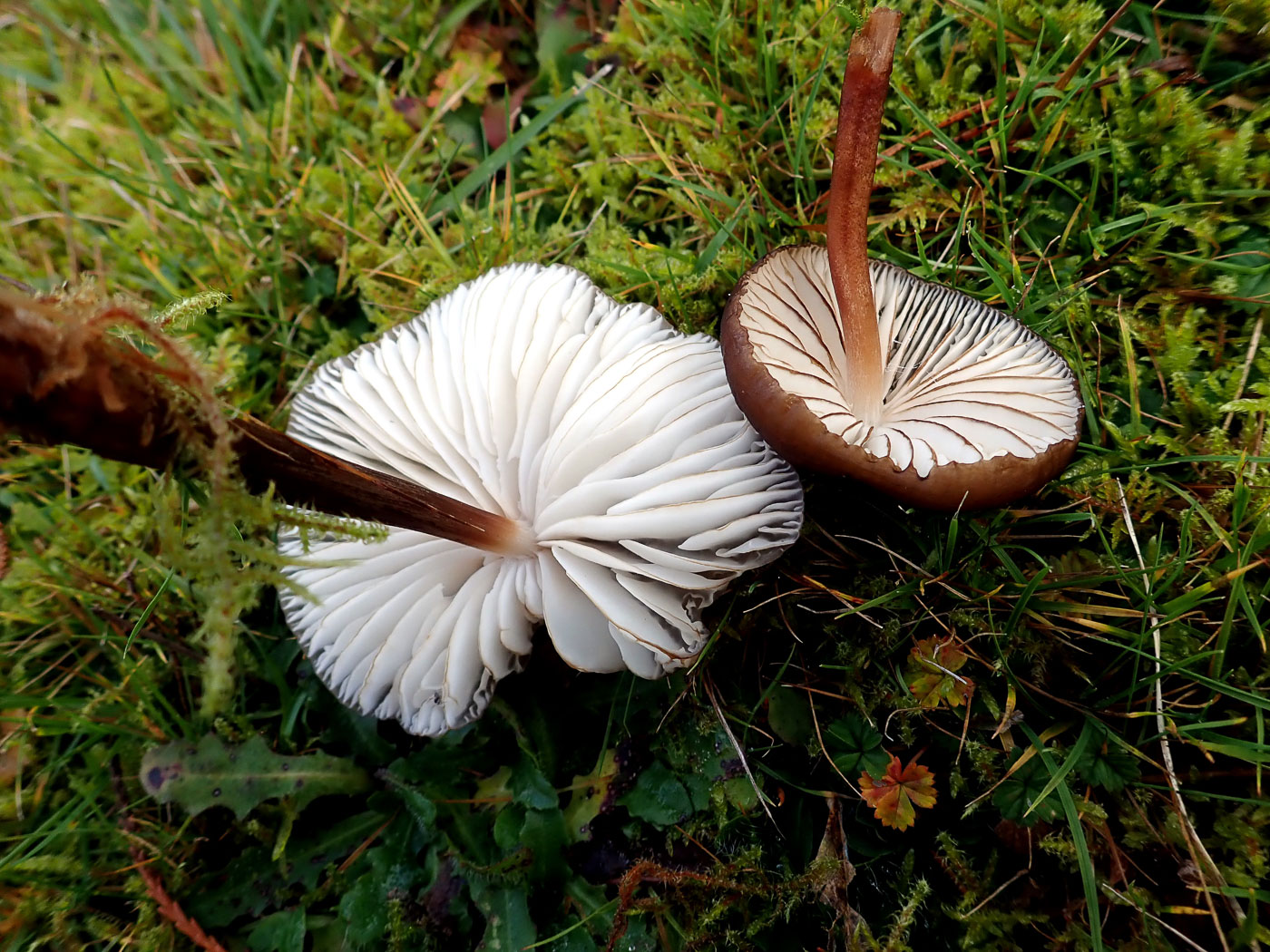 |
November 15th Hymenopellis radicata (Rooting Shank)
In Prestwood Churchyard Penny was surprised to find two very different examples of this common woodland species in lawn only 18 inches apart and not very near to Pine. The habitat alone was a bit strange - no deciduous trees around, but the caps were totally different colours - one pale, one dark brown - though the slimy wrinkled surface was clearly visible in both. Then turning them over, both had the typical widely spaced white gills of the species but the darker-capped specimen also sported distinct dark gill edges. This particular character is known to be variable, as also is the cap colour, but what struck Penny as odd was why two adjacent examples should develop so differently given the same conditions and why there was no evidence of one of their accepted deciduous hosts. (The species was previously in genus Xerula.) See the Masterlist for other examples.
|
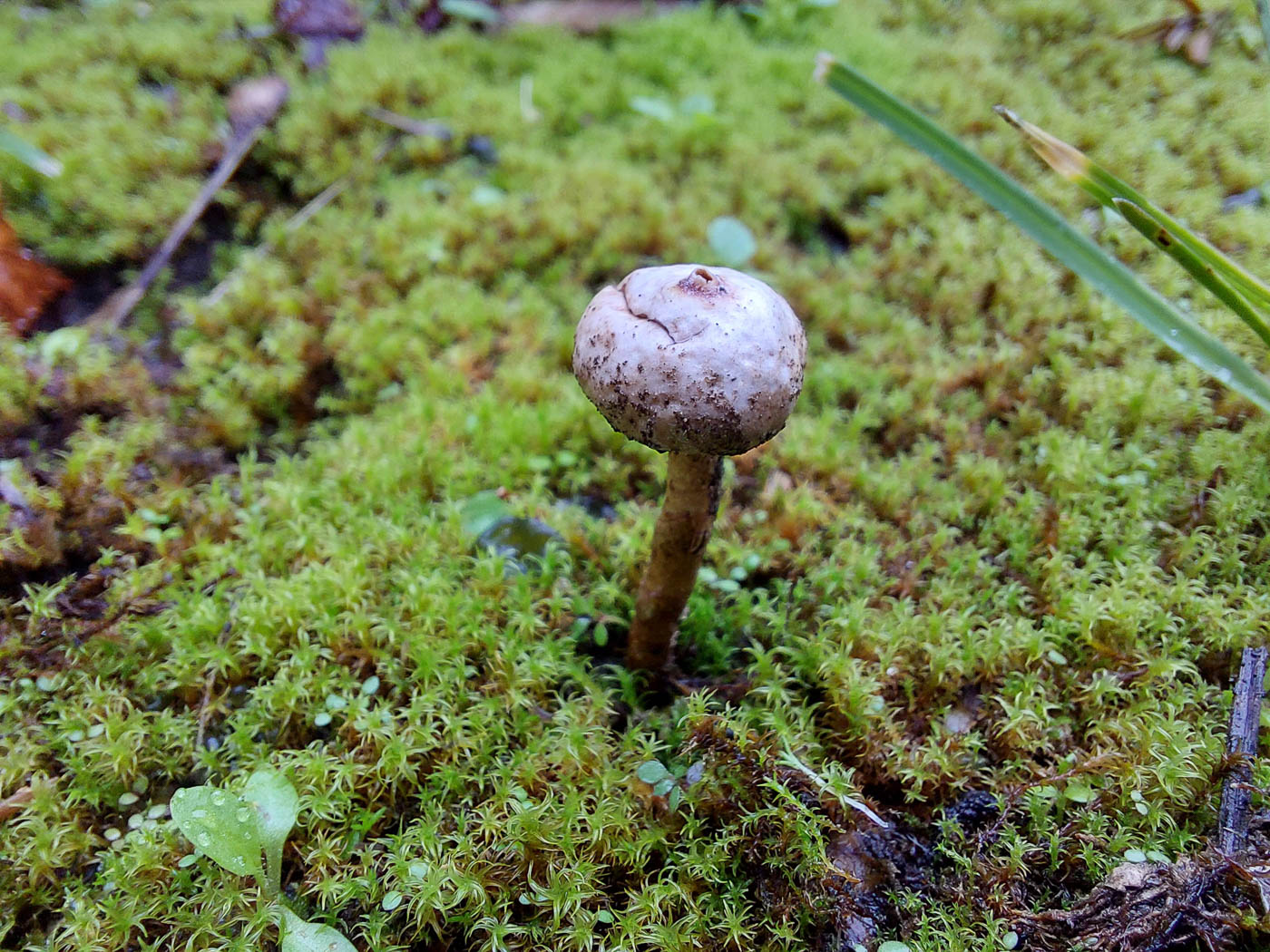 |
November 8th Tulostoma brumale (Winter Stalk Ball) 
In a mossy bank on the edge of a hotel carpark Jesper Launder spotted about ten of these tiny 'Puffballs on a stalk'. The species favours sandy calcareous soils and is apparently widespread though generally uncommon - Penny has only seen it in sand dunes! So this is new to the county and one of three similar species though the other two are extremely rare in the UK.
|
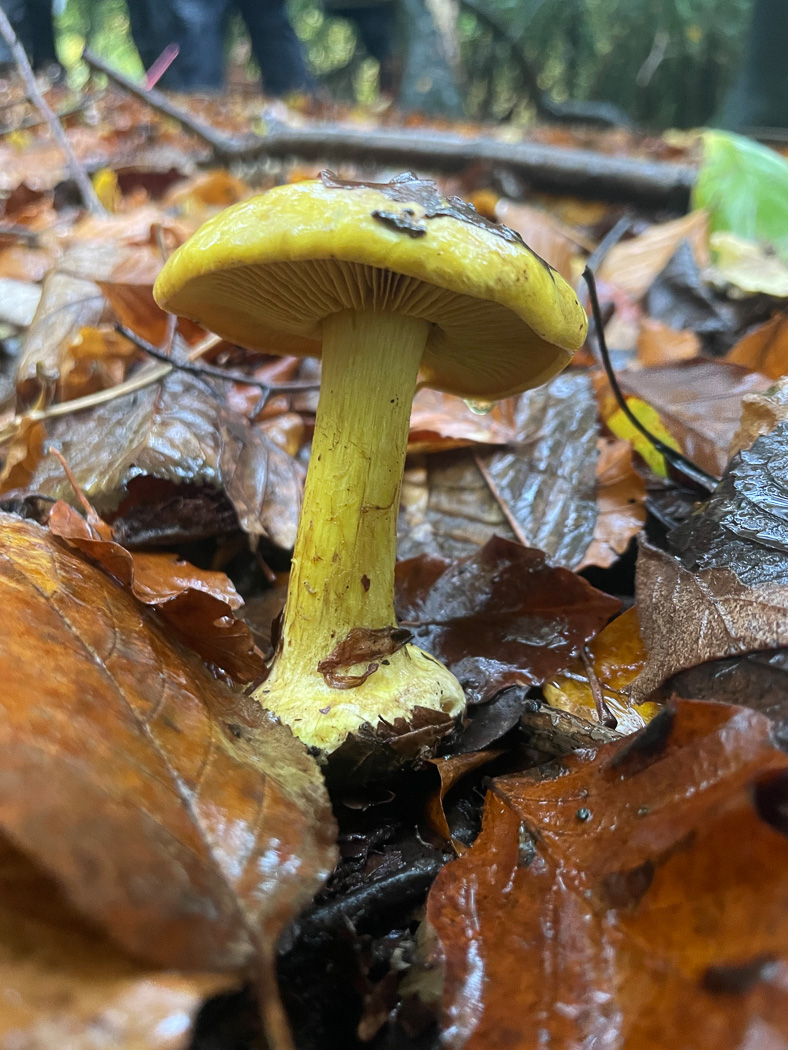
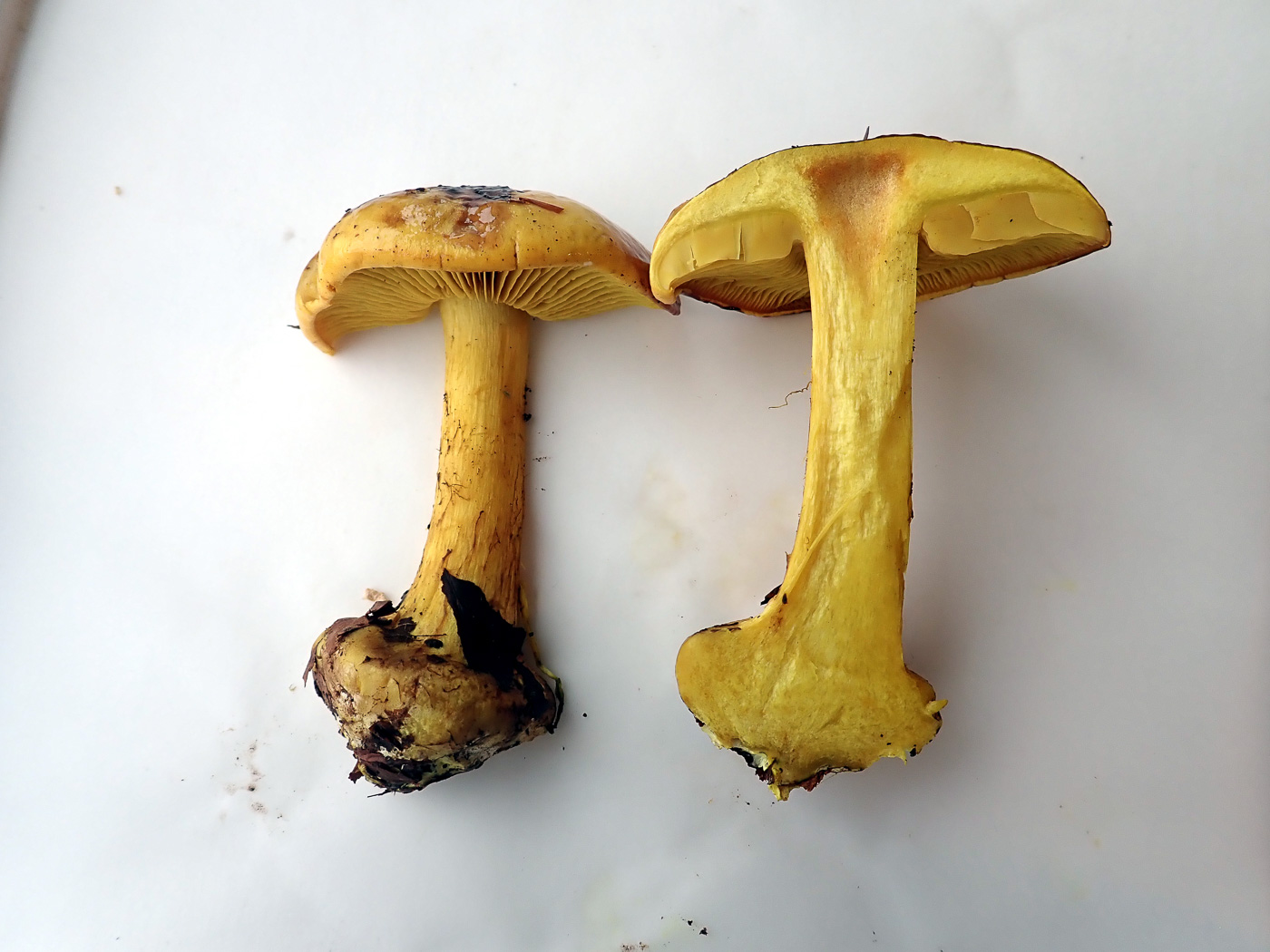 |
November 8th Cortinarius splendens (Splendid Webcap) 
In Mousells Wood under Beech we were lucky enough to find just this single beautiful specimen of a rare species - this site now has quite a reputation for Section Phlegmacium Webcaps of which this is one. Penny was able to key it out, using its platform stem base, yellow gills and cap, reaction to KOH on the cap, also spores size and shape. The final clincher was its amazing yellow flesh throughout when sliced lengthways (photo 2). Photo 1 is Sarah Ebdon's, photo 2 is Penny's. We have extremely few county records, all from this site and one of these in Finds 2021 October 21st.
|
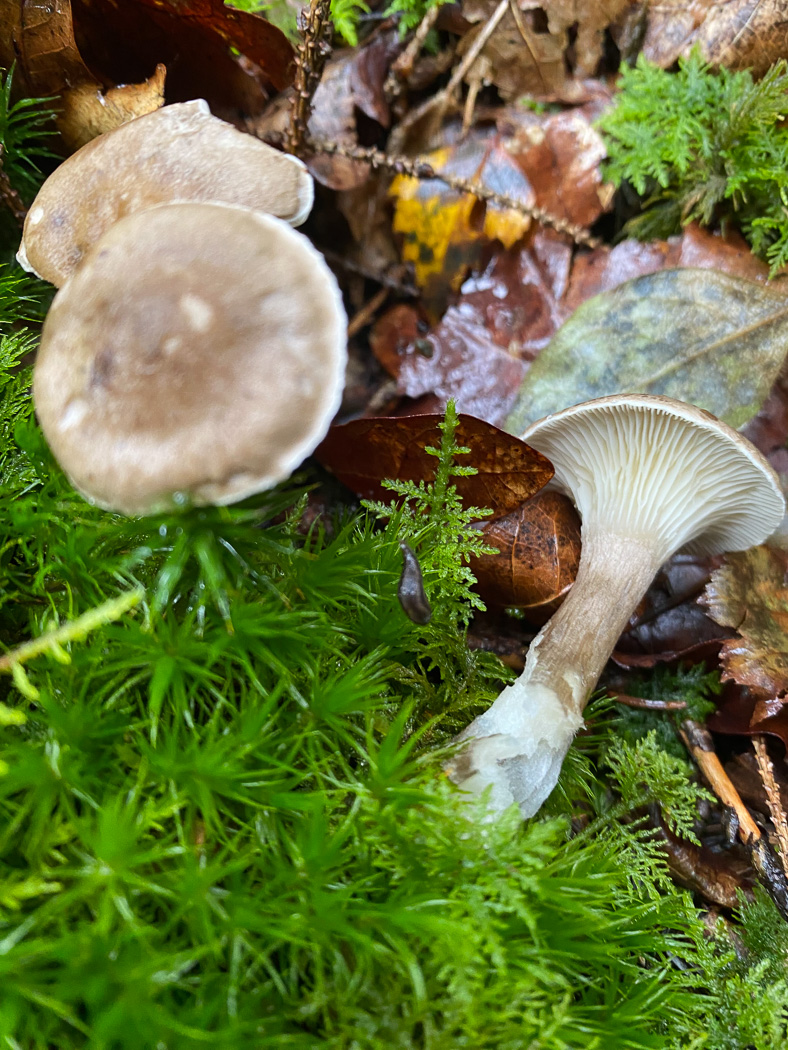 |
November 8th Ampulloclitocybe clavipes (Club Foot)
In mossy litter in Bernwood Forest Chris Grimbly noticed this occasional species, very similar to the genus Clitocybe (where it originally resided) but with thick flesh in the centre of the cap, also a darkish stem having a swollen base - hence its common name. It favours grassy path edges in woodland clearings. Though not rare this seems to be a new entry for Finds.
|
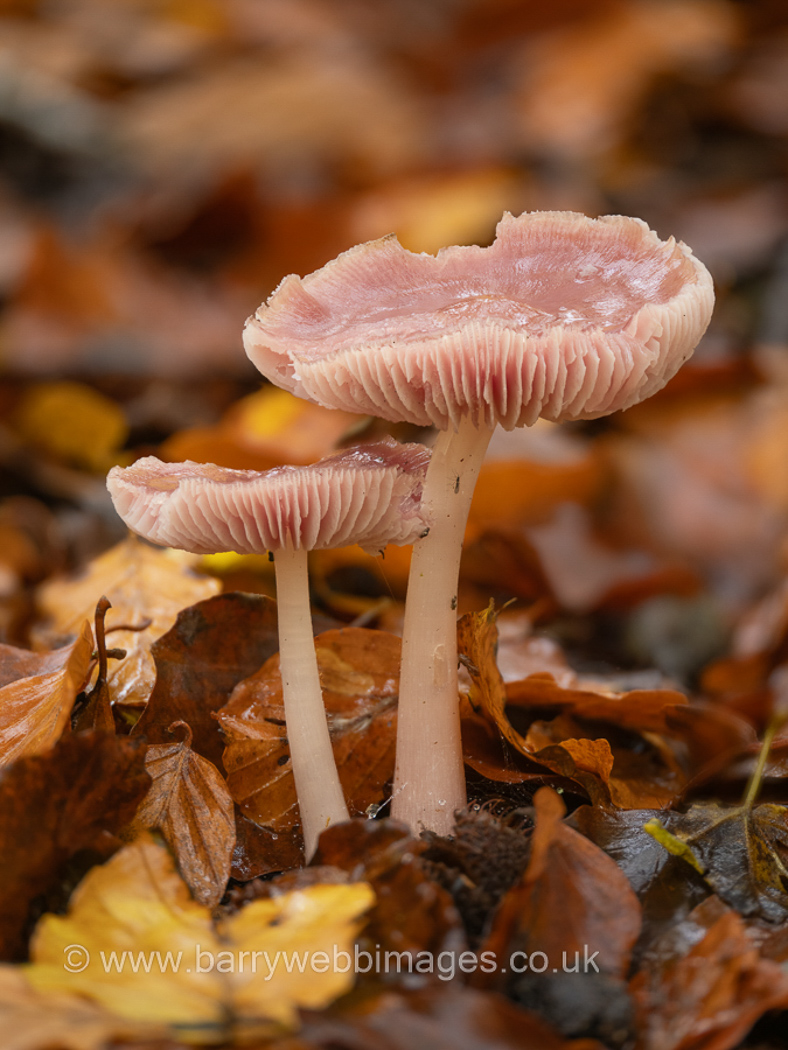 |
November 8th Mycena rosea (Rosy Bonnet)
Today in Mousells Wood we found plenty of examples of this common species in the Beech litter. It is in fact by far the commonest of the M. pura complex of species in our area, occurring in litter of various deciduous trees though is most prevalent under Beech. See the Masterlist for further images and descriptive comments. The photo is Barry Webb's.
|
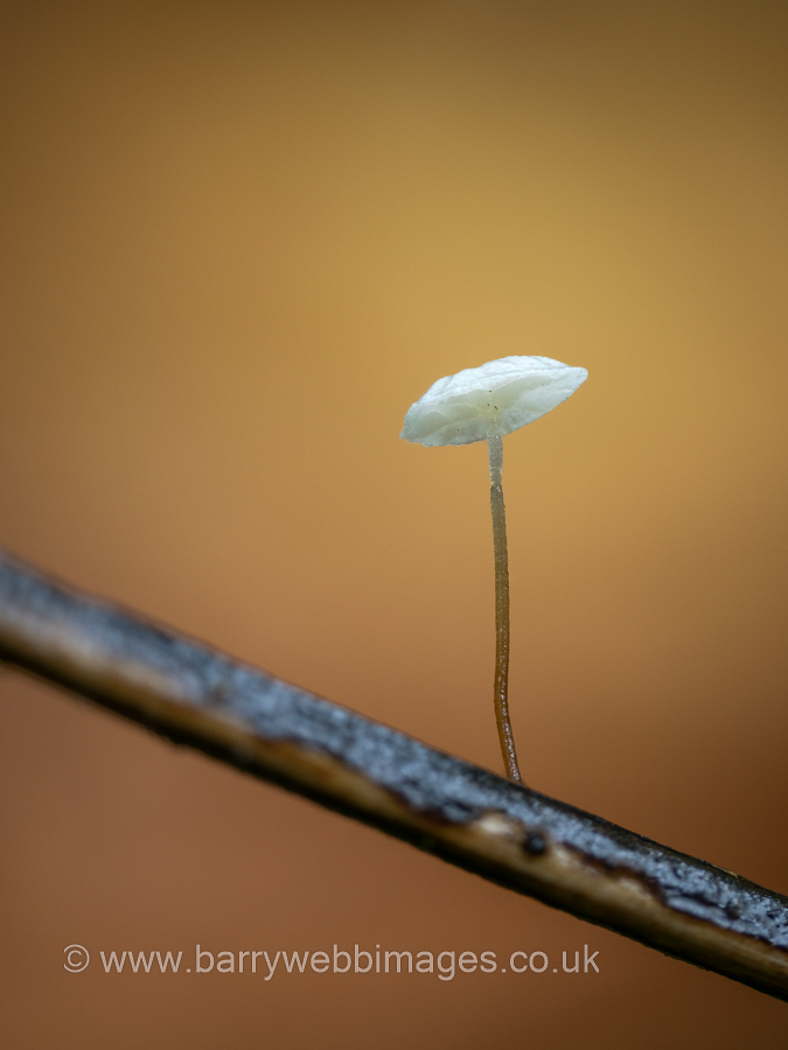
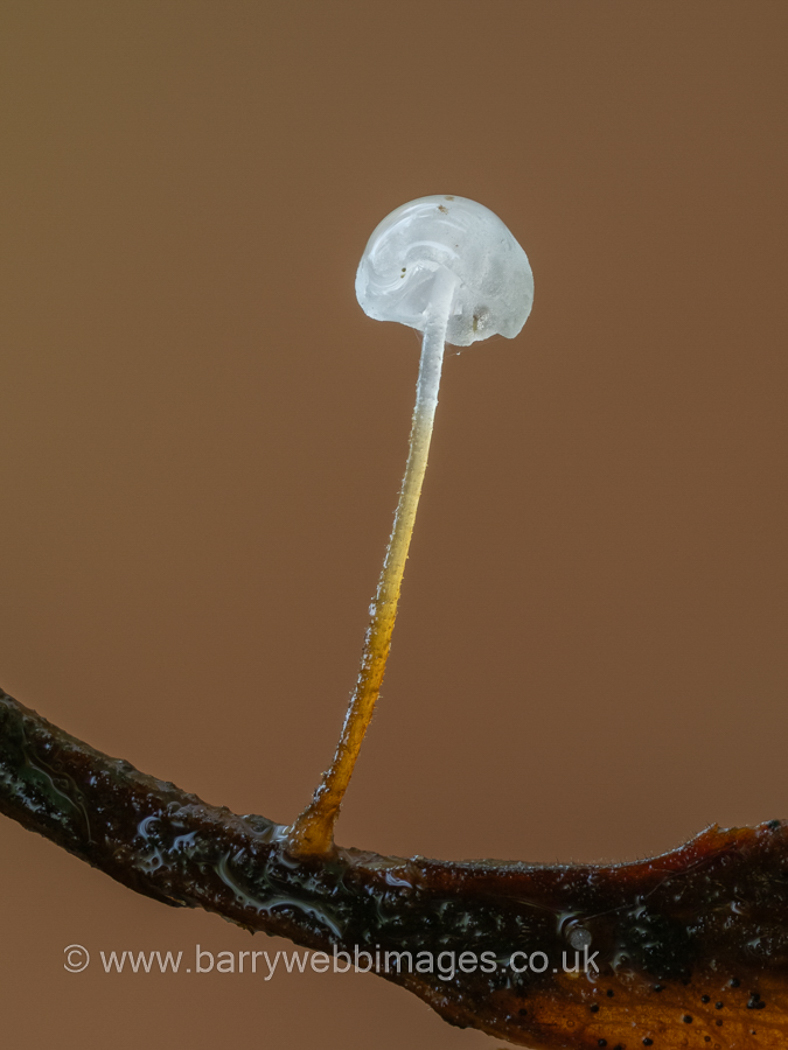 |
November 8th Marasmius epiphyllus (Leaf Parachute)
In Mousells Wood Richard Fortey found and identified this tiny mushroom growing on dead vegetation stems. It is very similar to the much more common M. setosus (Hairy Stem Parachute) which we also found here today and which grows on deciduous litter. Bothe species have a finely hairy stem which is white at the top then gradually darker towards the base. However, today's species has smaller spores and often has very reduced gills. See also in Finds 2020 November 9th and December 2nd. The photos are Barry Webb's.
|
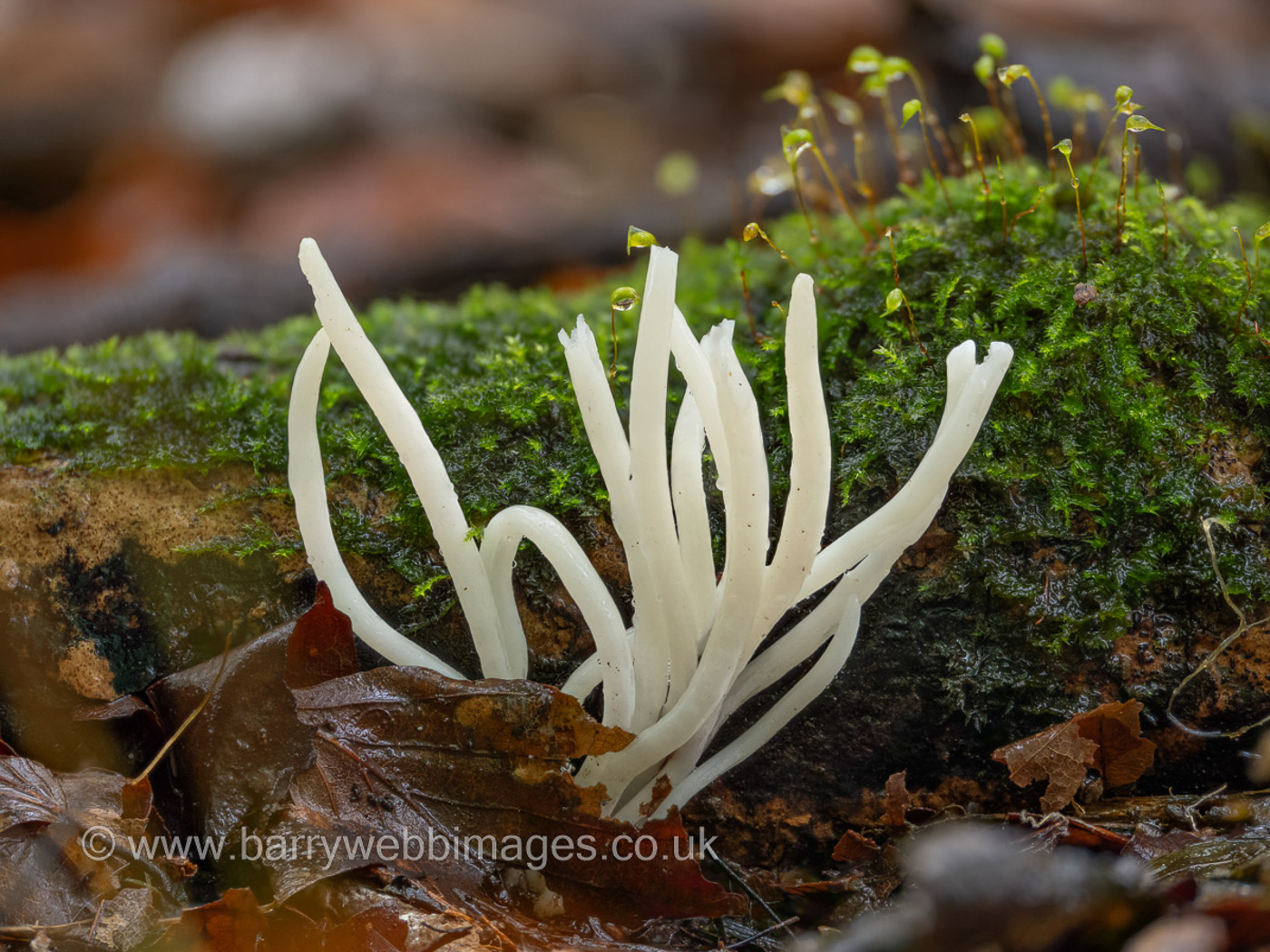 |
November 8th Clavaria acuta (Pointed Club) 
In Mousells Wood our group found this nice clump, the spores of which were later checked to confirm its identity as there are a few similar species. It is not that unusual to find this species in woodland as well as grassland and we have many county records though for some inexplicable reason this seems to be a first entry for Finds. The photo is Barry Webb's.
|
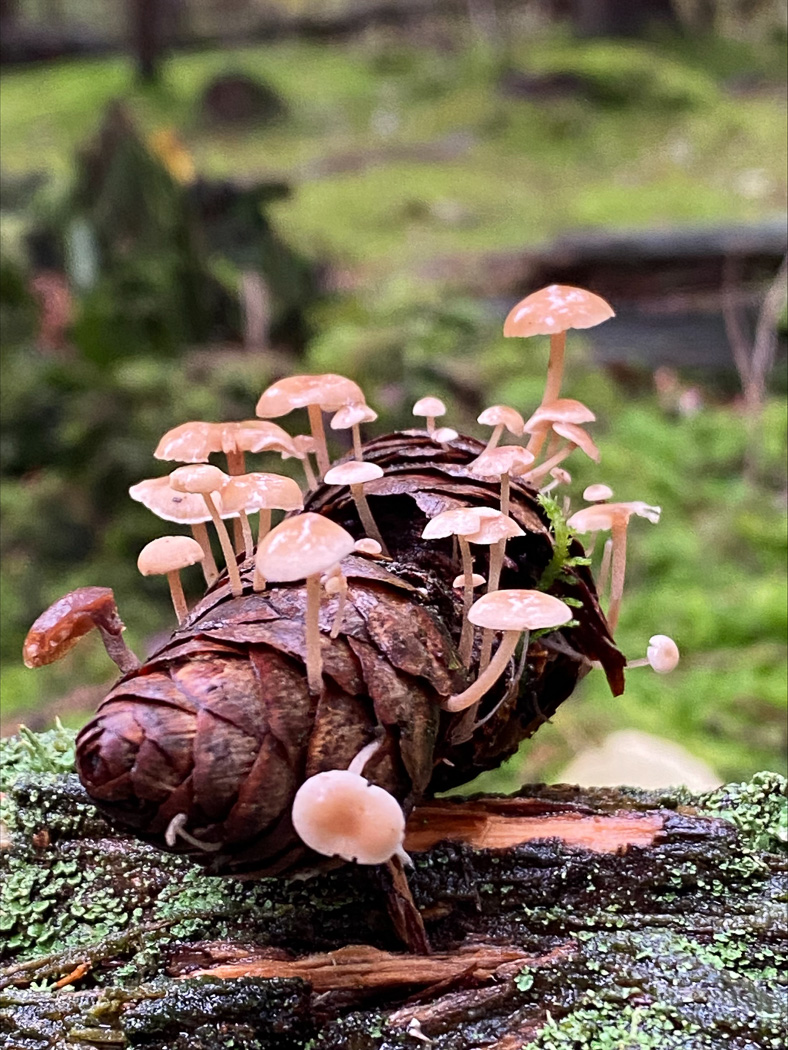 |
November 8th Baeospora myosura (Conifercone Cap)
In Bernwood Forest Chris Grimbly found this Spruce cone liberally covered in little mushrooms and sent the photo to Penny for confirmation. Though the crowded gills associated with this species are not visible here, there can surely be little doubt over its identity, also we found and identified it at Stoke Common a few days earlier and it is not at all rare. See the Masterlist for further examples.
|
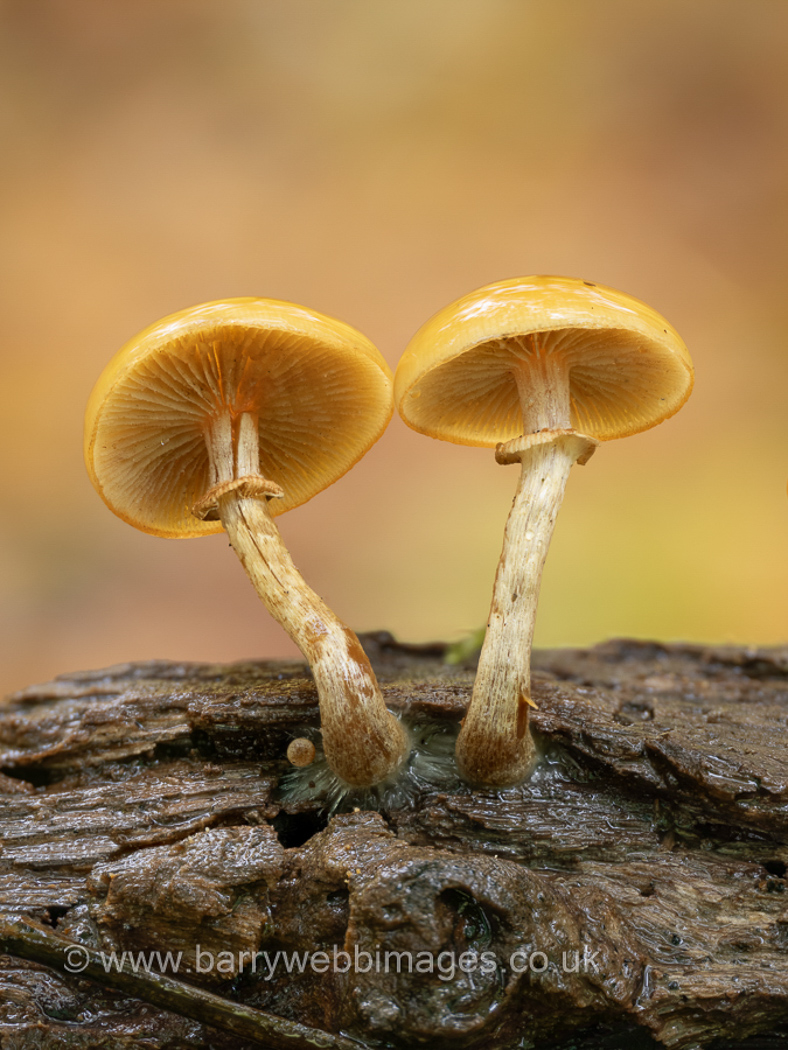 |
November 8th Galerina marginata (Funeral Bell)
In Mousells Wood a group of us found this species on several different fallen deciduous branches. It is considered a late season fruiter so is not surprisingly around at the moment. It is a typical LBJ, found often clustered on deciduous wood, and has a distinctive ring on the stem. As it's name suggests, it is extremely toxic. See the Masterlist for a selection of other images.
|
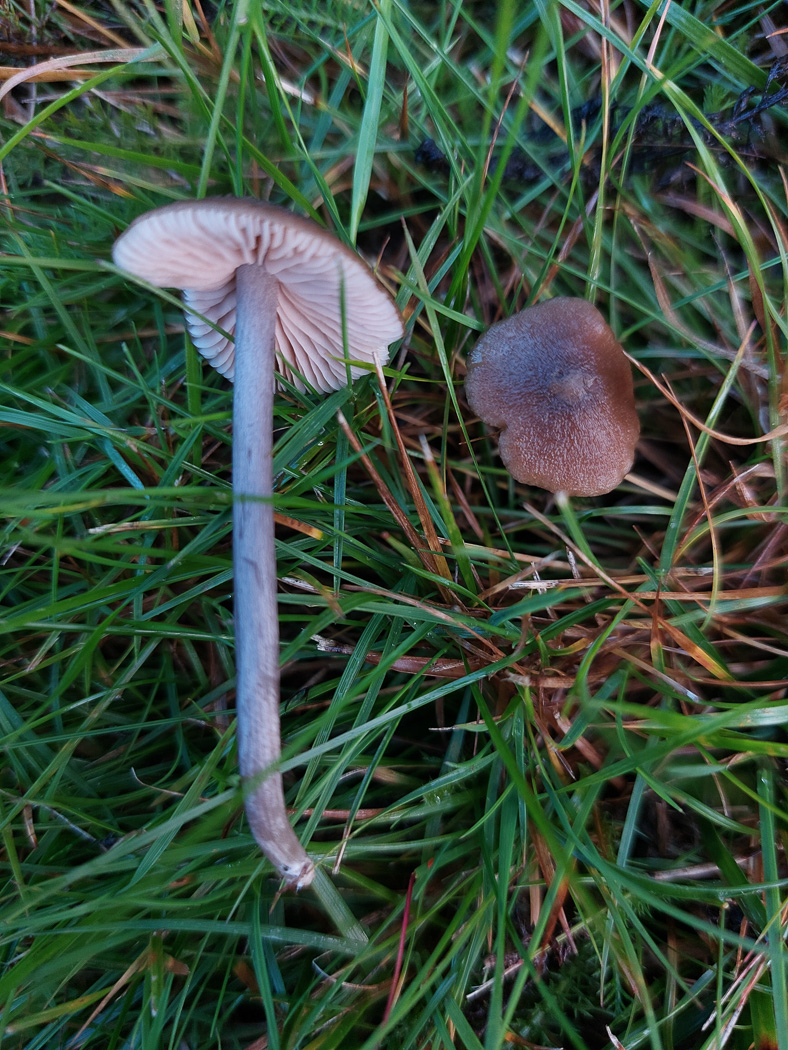 |
November 3rd Entoloma glaucobasis (a very rare Pinkgill with no common name) 
In Chalfont St. Peter in lawns Jesper Launder found this seldom recorded species which he was able to key out at home. A member of Section Leptonia which has blue in some part of the fruitbody, it has an entirelybrown cap with the blue colour restricted purely to the lower stem, the upper stem being brown or even yellowish - this being a unique feature. There appear to be no FRDBI records and this is new to the county. A sample will be dried for sequencing.
|
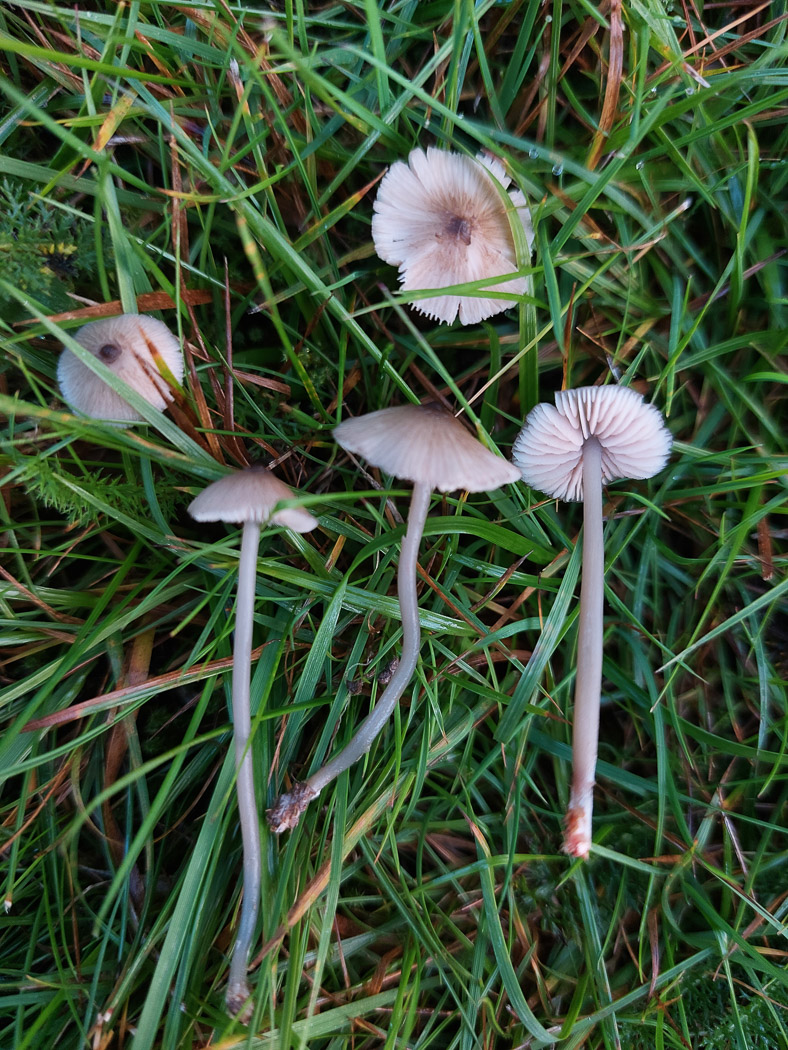 |
November 3rd Entoloma mutabilipes (a very rare Pinkgill with no common name) 
In Chalfont St. Peter in the same lawns as his find above, Jesper Launder also found this very rare species which he later keyed out at home. Another member of Section Leptonia having blue colours in some part of the fruitbody, this species generally has a brown cap though sometimes with blue tints, the stem is blue at first but tends to fade to greyish. There appear to be only a handful of FRDBI records and this is new to the county. A sample will be dried for sequencing.
|
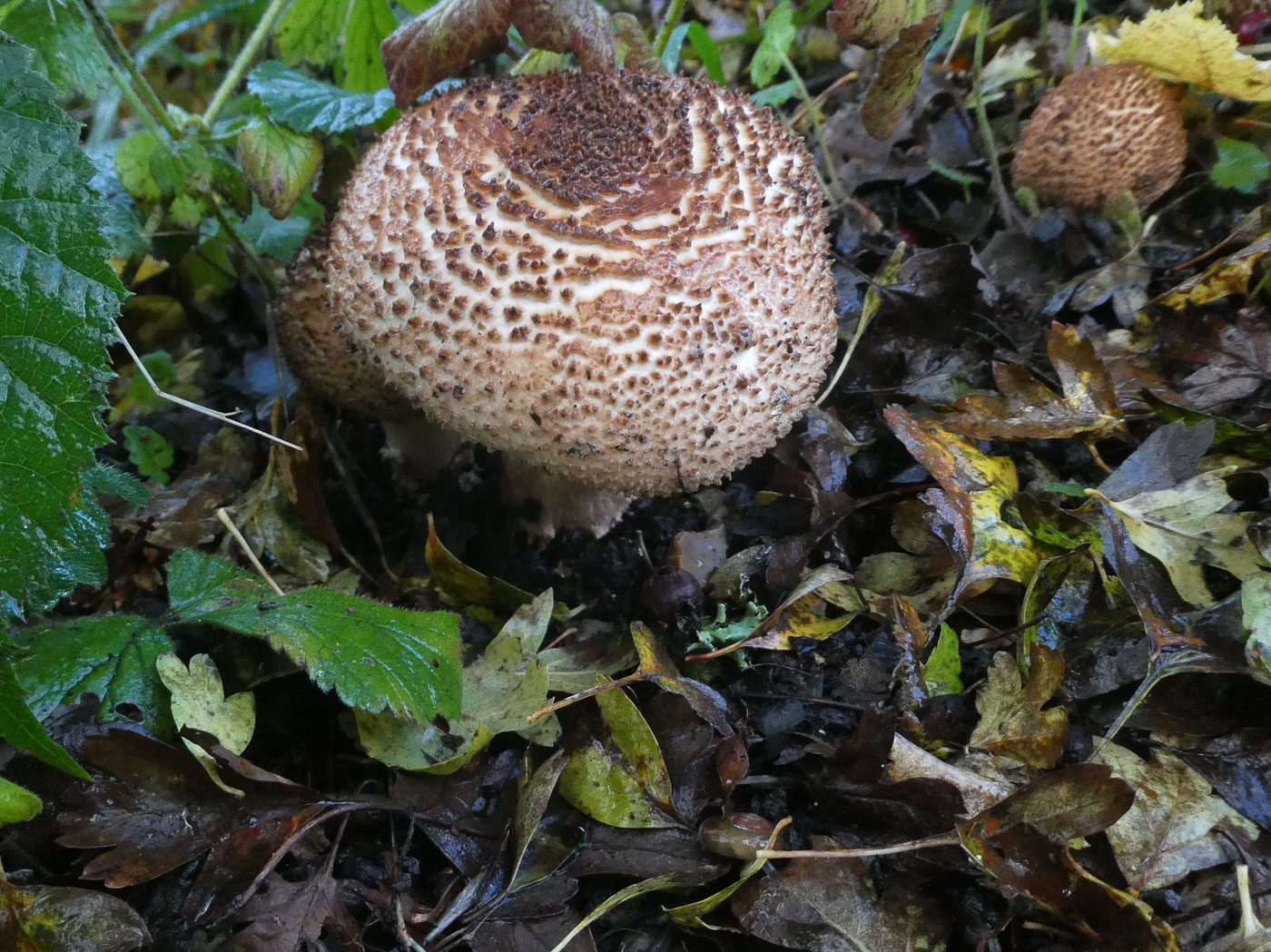
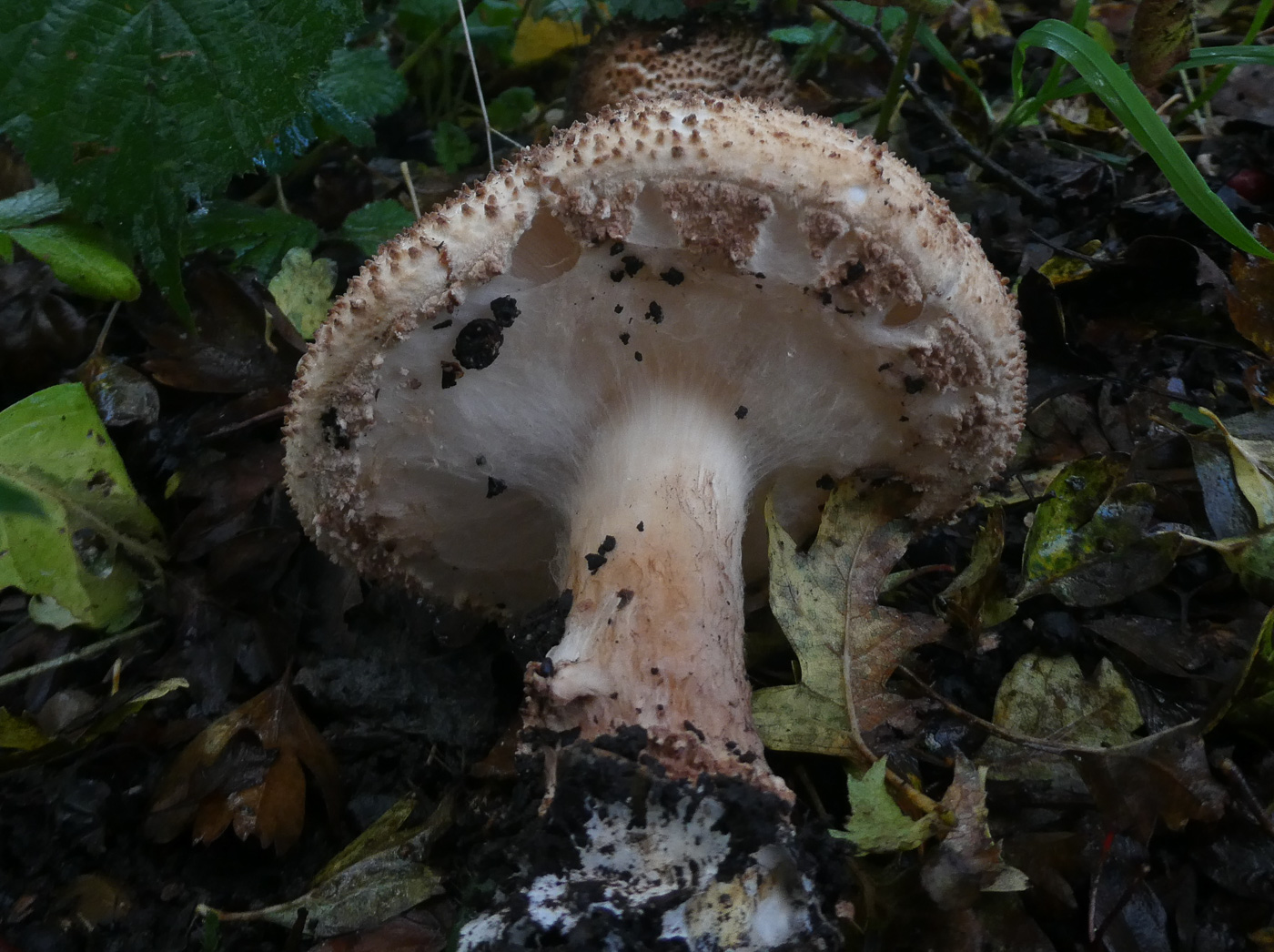 |
November 3rd Echinoderma asperum (Freckled Dapperling)
In Chalfont St. Peter Jesper Launder found this attractive species previously in genus Lepiota. This is quite a big Dapperling though not as large as the Parasols, and is by far the commonest of the strongly scaly-capped species now moved to this newish genus. The gills here are still covered by the thick membrane which later falls away to form a substantial ring on the stem. The species is extremely toxic. See the Masterlist for further examples.
|
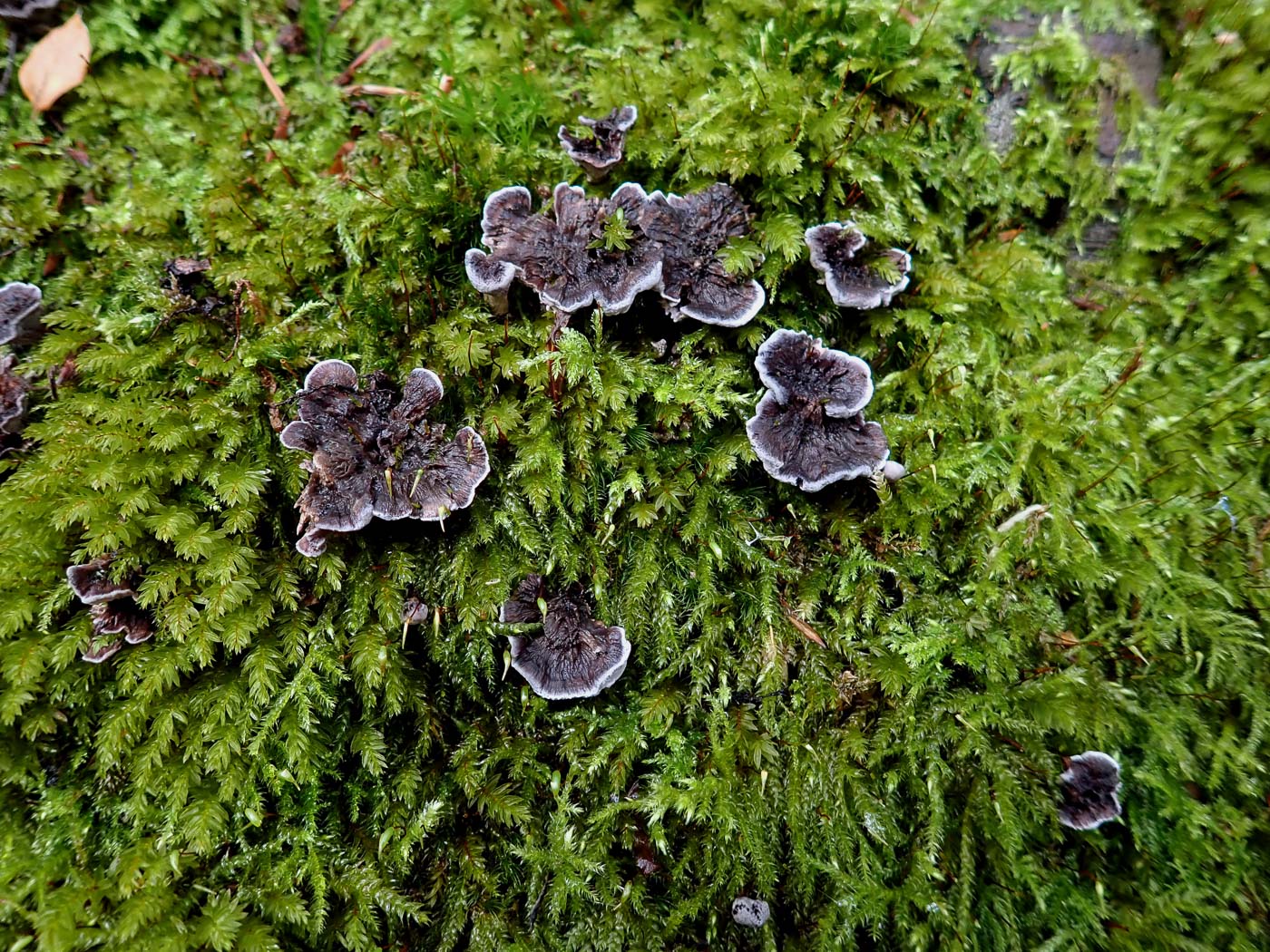
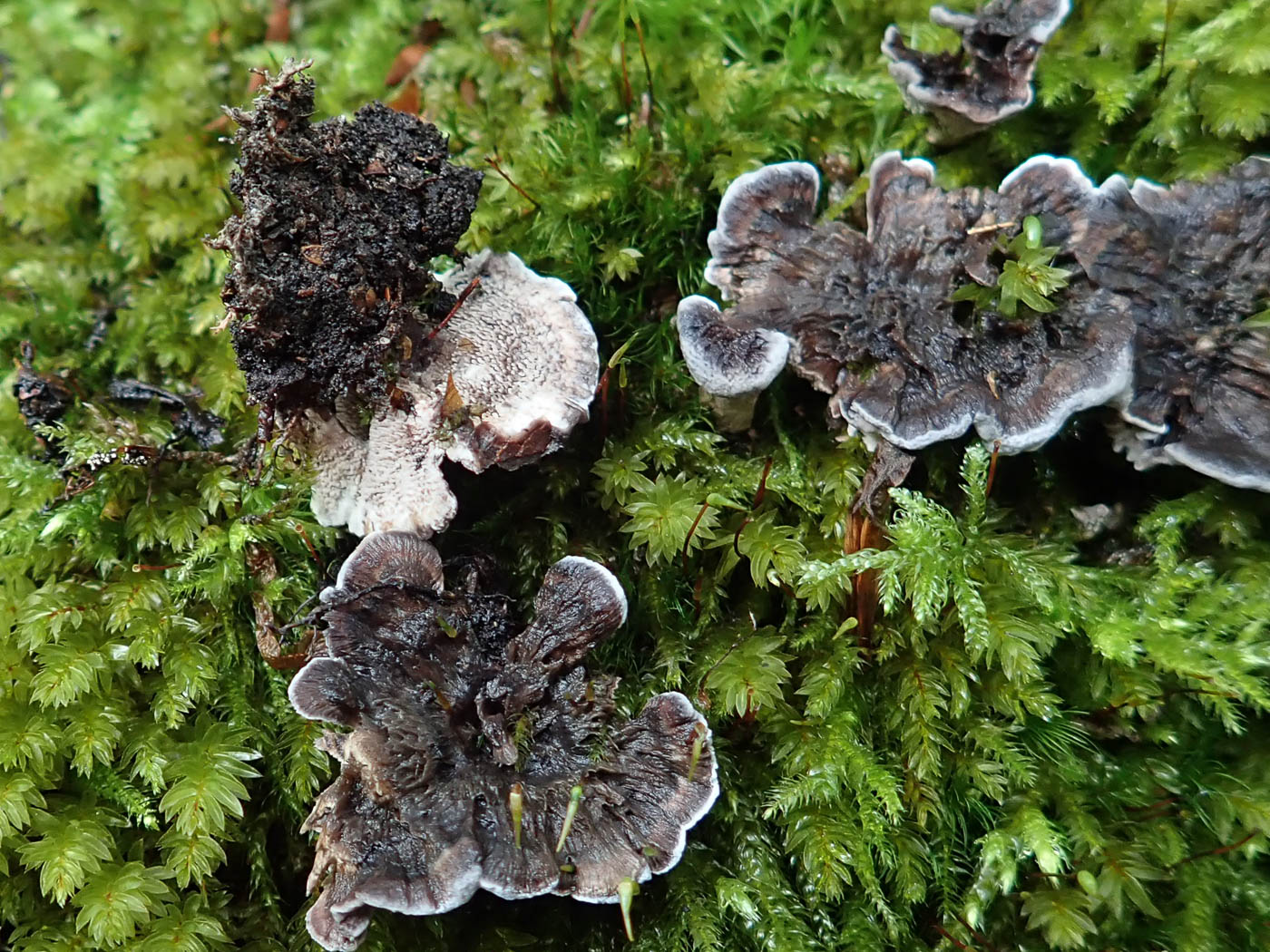 |
November 3rd Phellodon cf. melaleucus  (Grey Tooth) (Grey Tooth)
Penny went to Pullingshill Wood to check on the clump of the rare Hydnellum concrescens found here a few weeks earlier (see the October 10th entry) and to her delight found it was really flourishing but just emerging through the moss beside it was another equally rare toothed species, which was black rather than brown so clearly different. A sporeprint of a small sample revealed tiny white ornamented spores (making this Phellodon rather than Hydnellum which has tiny brown ornamented spores), and its colour with the white rim suggests P. melaleucus (though P. niger is almost identical and this is a species complex yet to be finally unravelled) so the sample will be sequenced. Our only county sites for this species are this one and Burnham Beeches, when found by Hydnoid expert Martyn Ainsworth back in 2008 / 09 - another new entry for Finds.
|
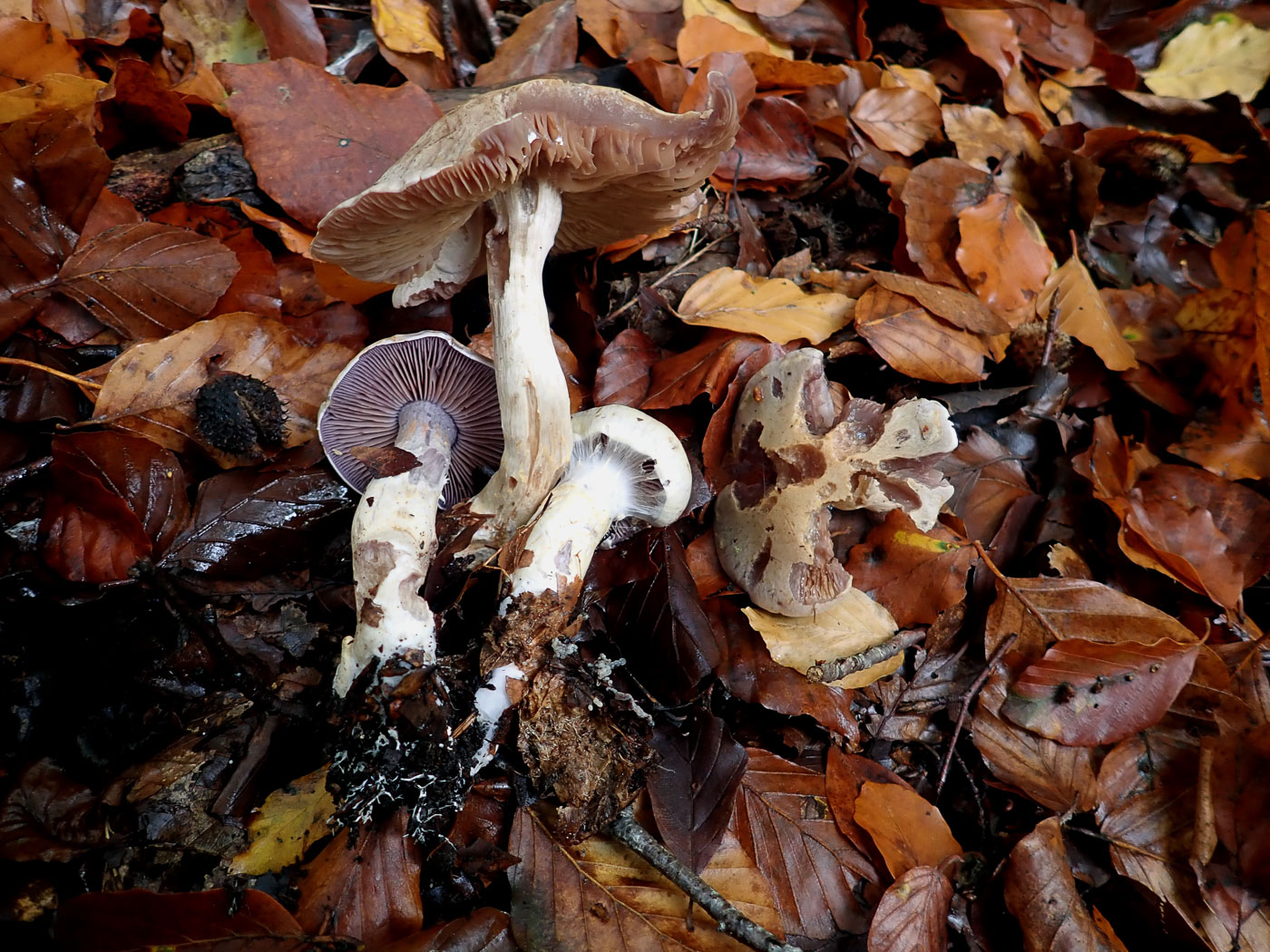
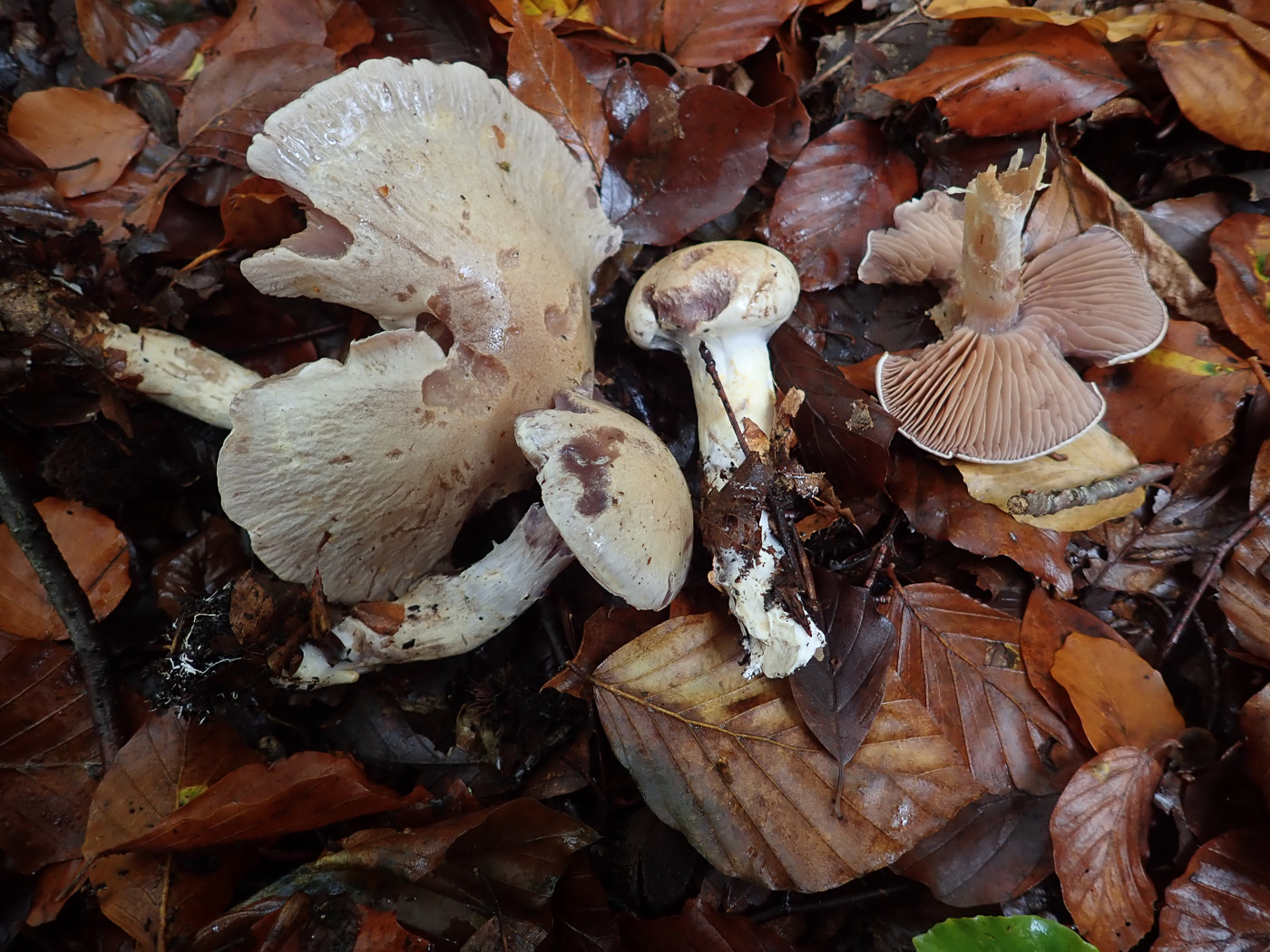 |
November 3rd Cortinarius albocyaneus (a Webcap with no common name)
In deep Beech litter in Pullingshill Wood Penny found this collection of Webcaps belonging to Section Telamonia in various states of development. To determine this genus to species it is essential to have at least one really young example to judge both the veil colour and gill colour at this stage - without this one might as well give up! Photo 1 shows clearly the white veil and violaceous gills though when more mature (photo 2) the gills are already browner and the veil has all but gone. The species has a raphanoid smell and is not that common, occurring with Birch and Beech also with Helianthemum. We have only one or two county records and this is new to Finds.
|
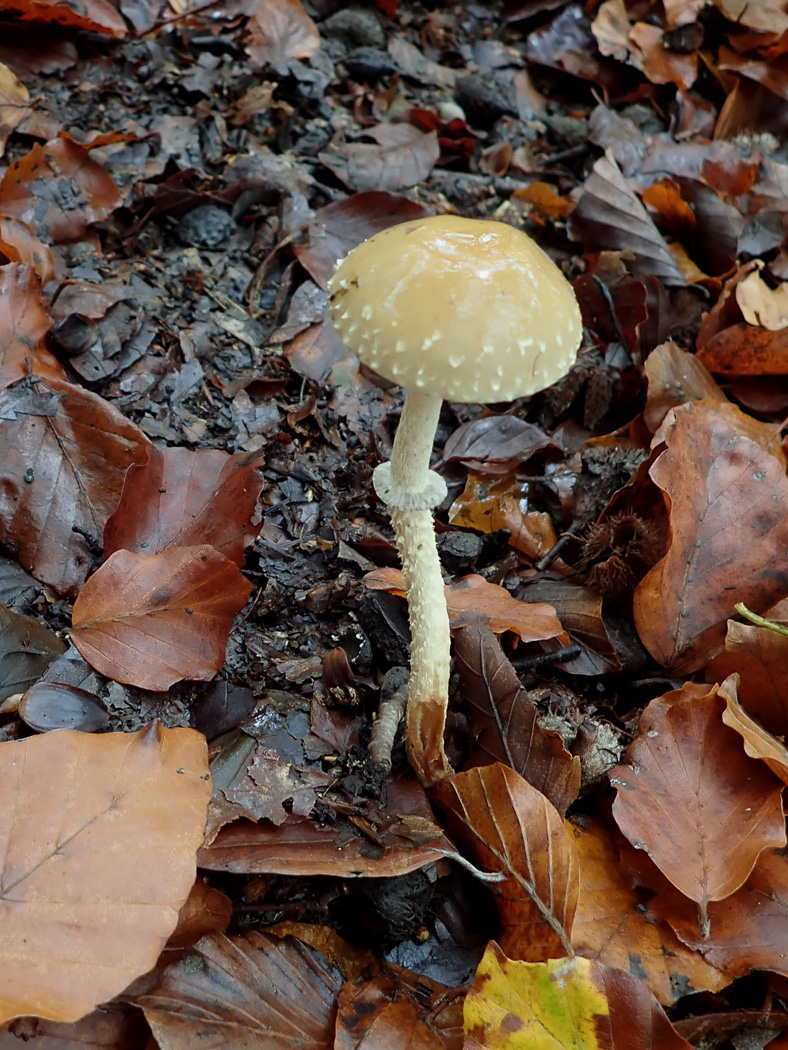
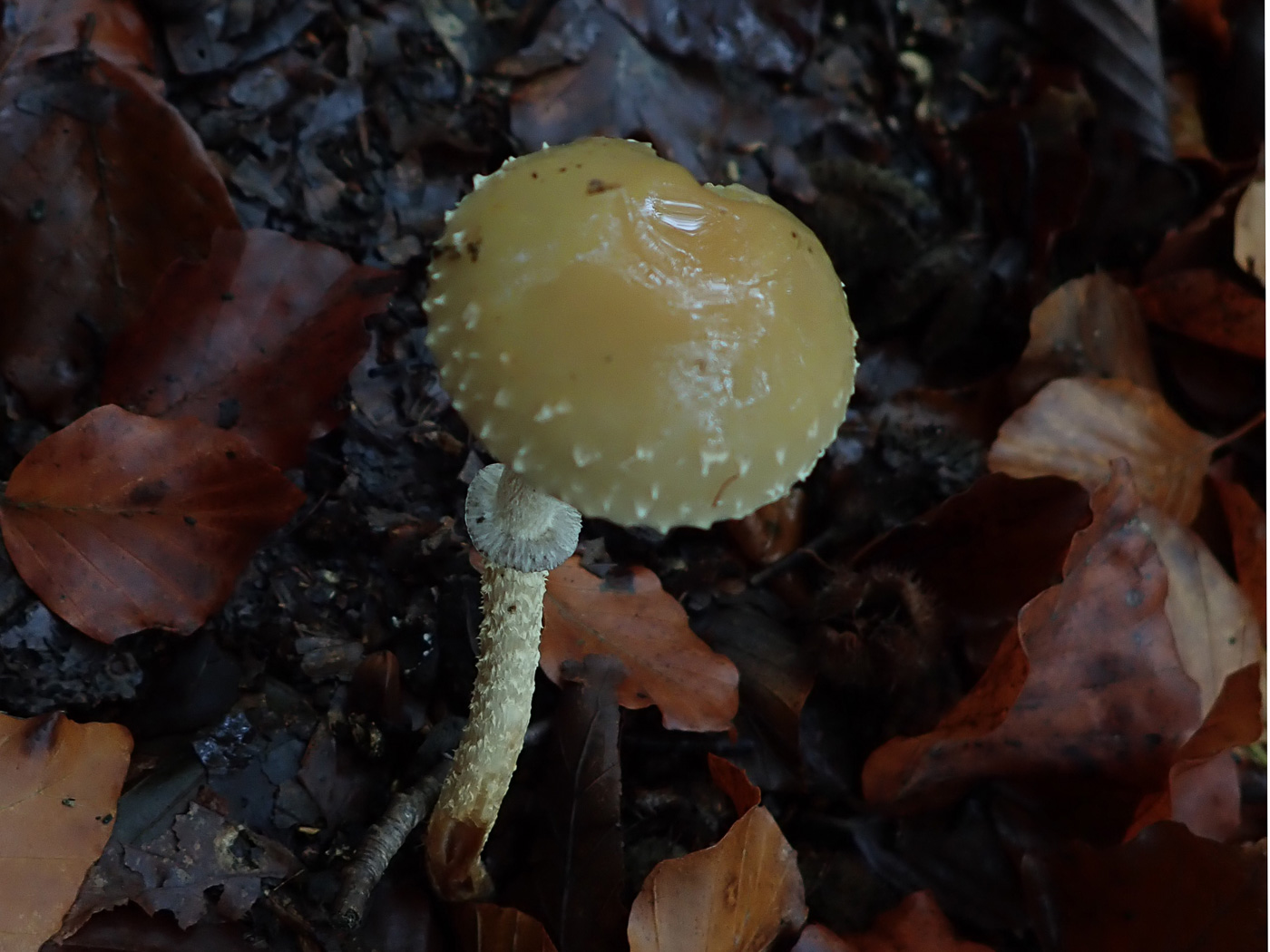
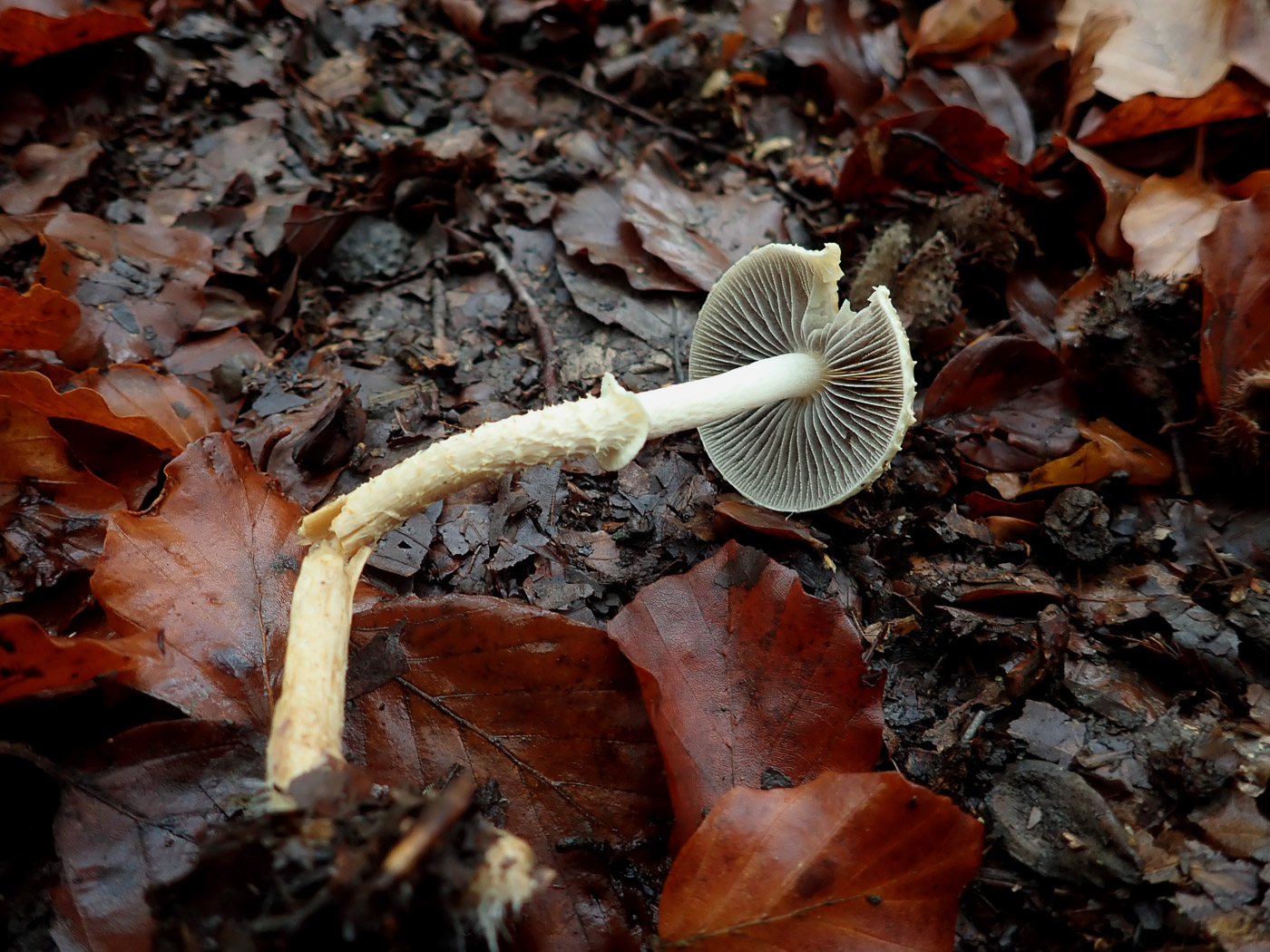
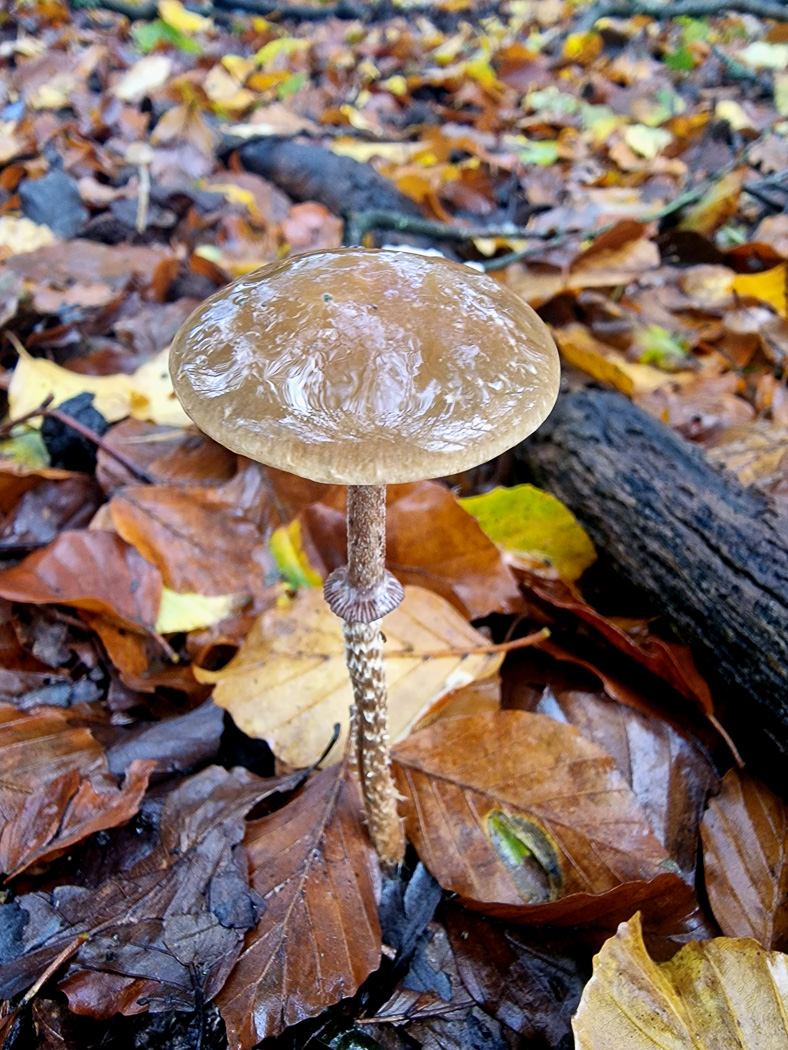 |
November 3rd Leratiomyces squamosus (Slender Roundhead)
In deep Beech litter in Pullingshill Wood Penny found one pristine specimen of this quite unusual species, previously in genus Stropharia. The pale yellowish beige cap, slimy in wet weather, has white flecks of veil within the slime, dark spores which colour the crowded gills as it matures, and a stem which is floccose below the distinctive ring. Photo 4 is of another singleton found two days later in Downley Common by Laura Paterson, also in deep Beech litter. We have just one previous Finds entry as Stropharia squamosa dated 2020 October 11th
|
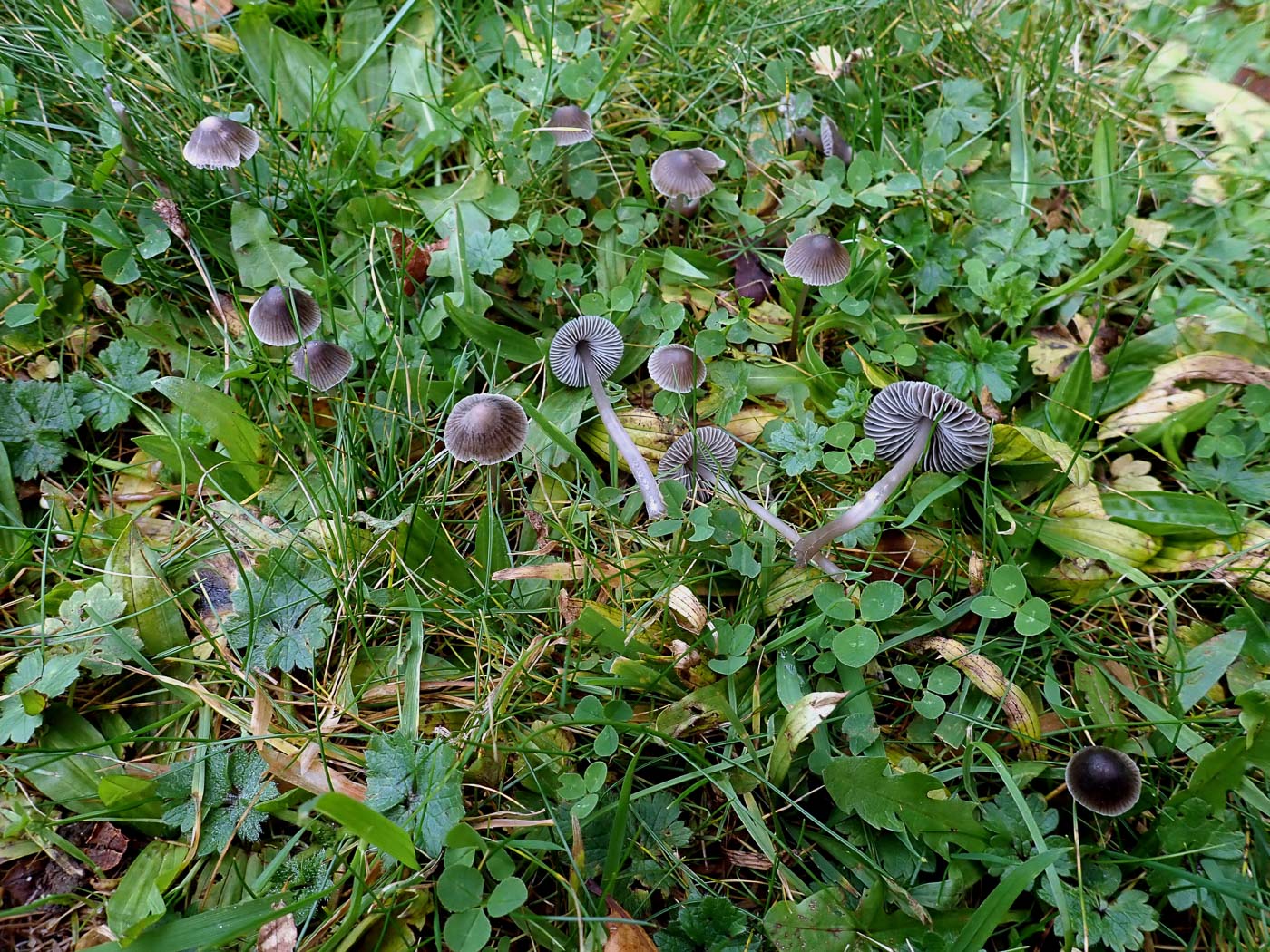 |
November 3rd Mycena aetites (Drab Bonnet)
In longish grass at Cadmore End Penny found good numbers of this common grassland Bonnet recognisable in the field from its medium size - larger than other grassland Bonnets - and darkish grey colours including the gills. It also has a faint bleach smell though this is never as striking as it is in the quite similar M. leptocephala which occurs in grassland and well as woodland litter. See also in Finds 2020 October 28th and 2022 December 6th.
|
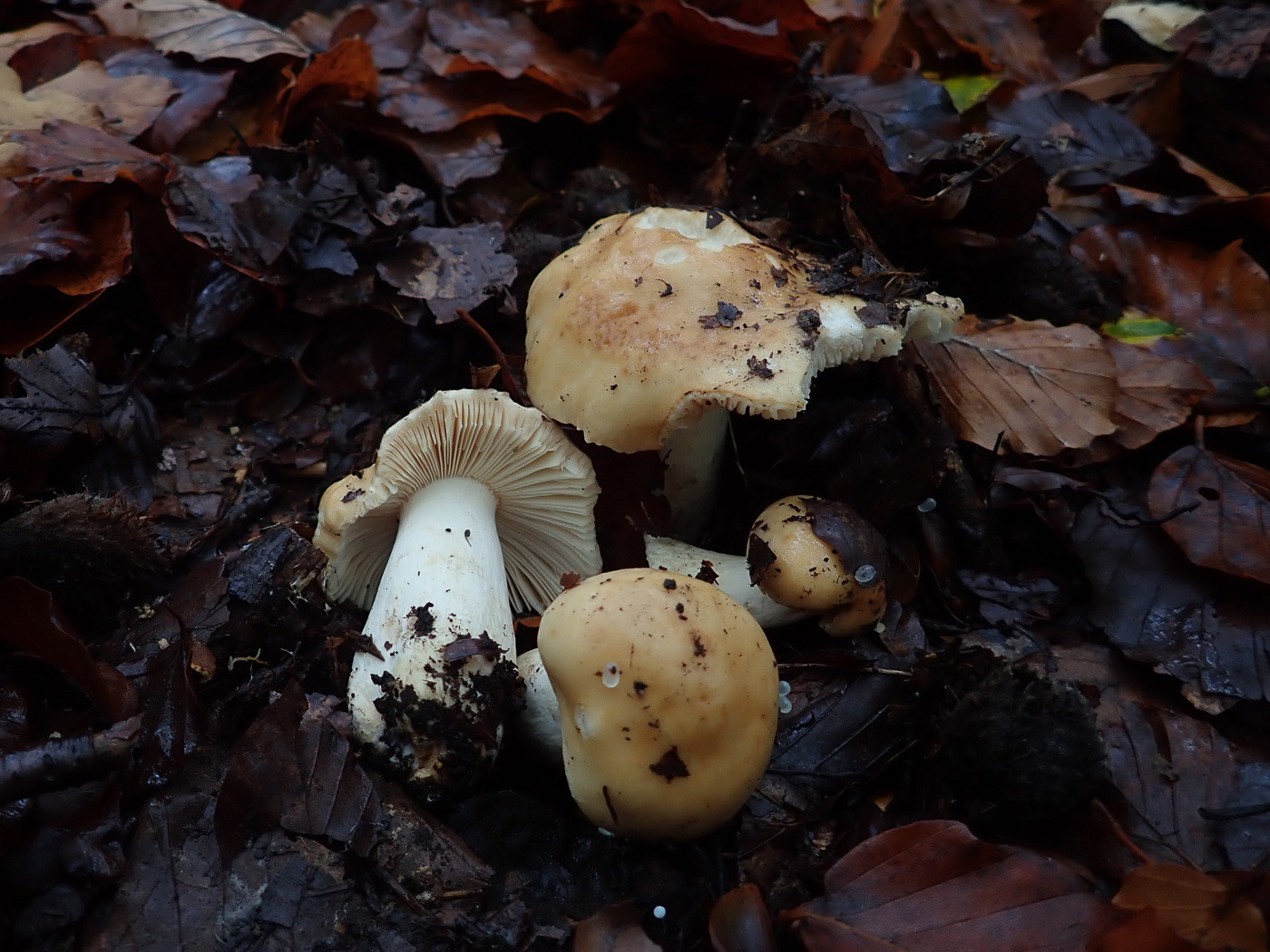 |
November 3rd Russula fellea (Geranium Brittlegill)
In Pullingshill Wood Penny found this group just emerging through thick Beech litter as the light deteriorated before a downpour! Often quite common, this species has not been prolific this season and is one which many get confused with the very common R. ochroleuca (Ochre Brittlegill). Note the orange tint which is repeated in both gills and stem - the commoner species has contrasting white gills and stem with no orange tint in the cap and furthermore lacks much smell. Once R. fellea starts to dry out it develops a distinct fruity sweet smell , to Penny of stewed apples though officially of Geranium leaves! See also in Finds: 2020 September 30th and 2023 August 27th.
|
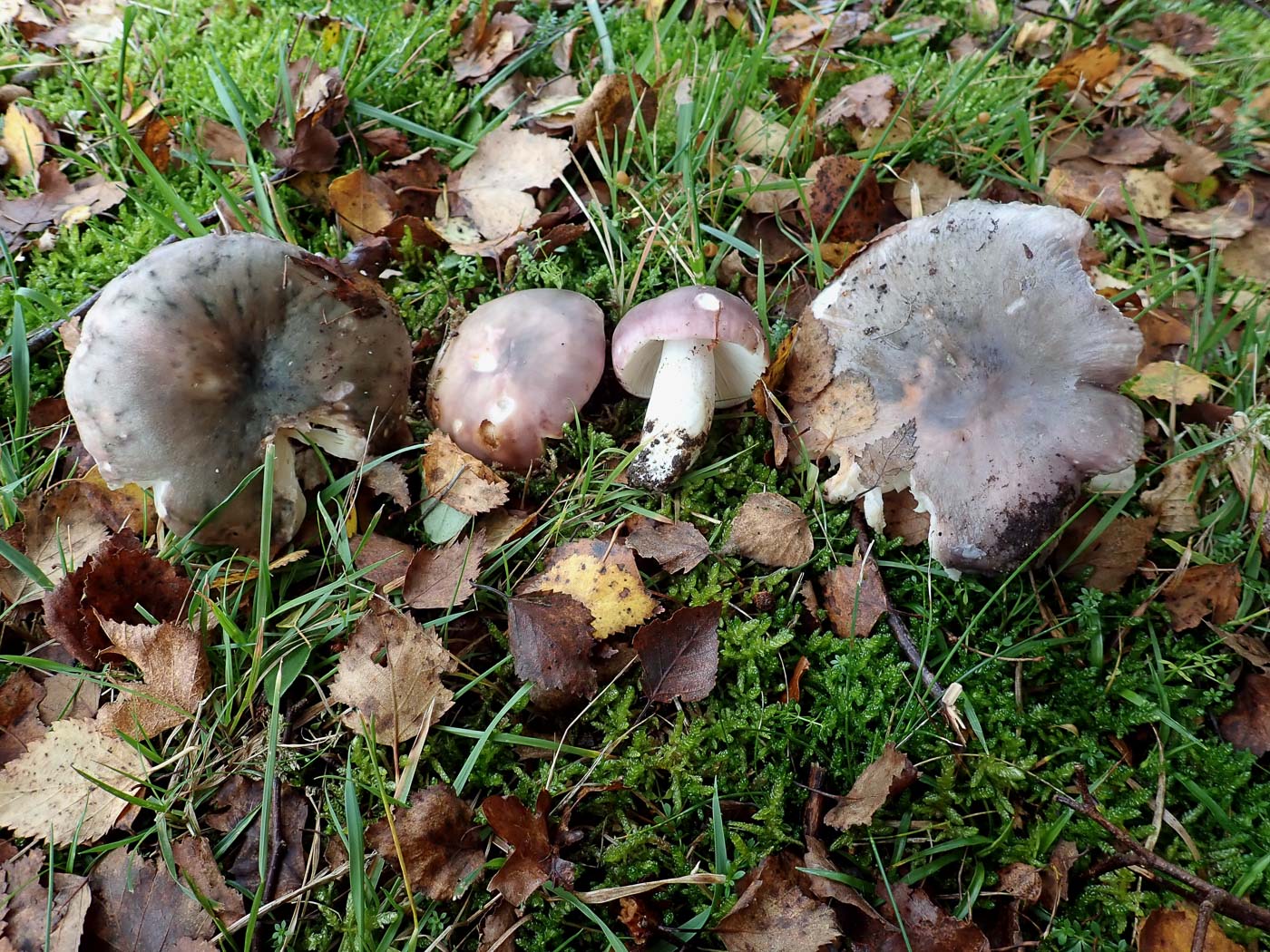
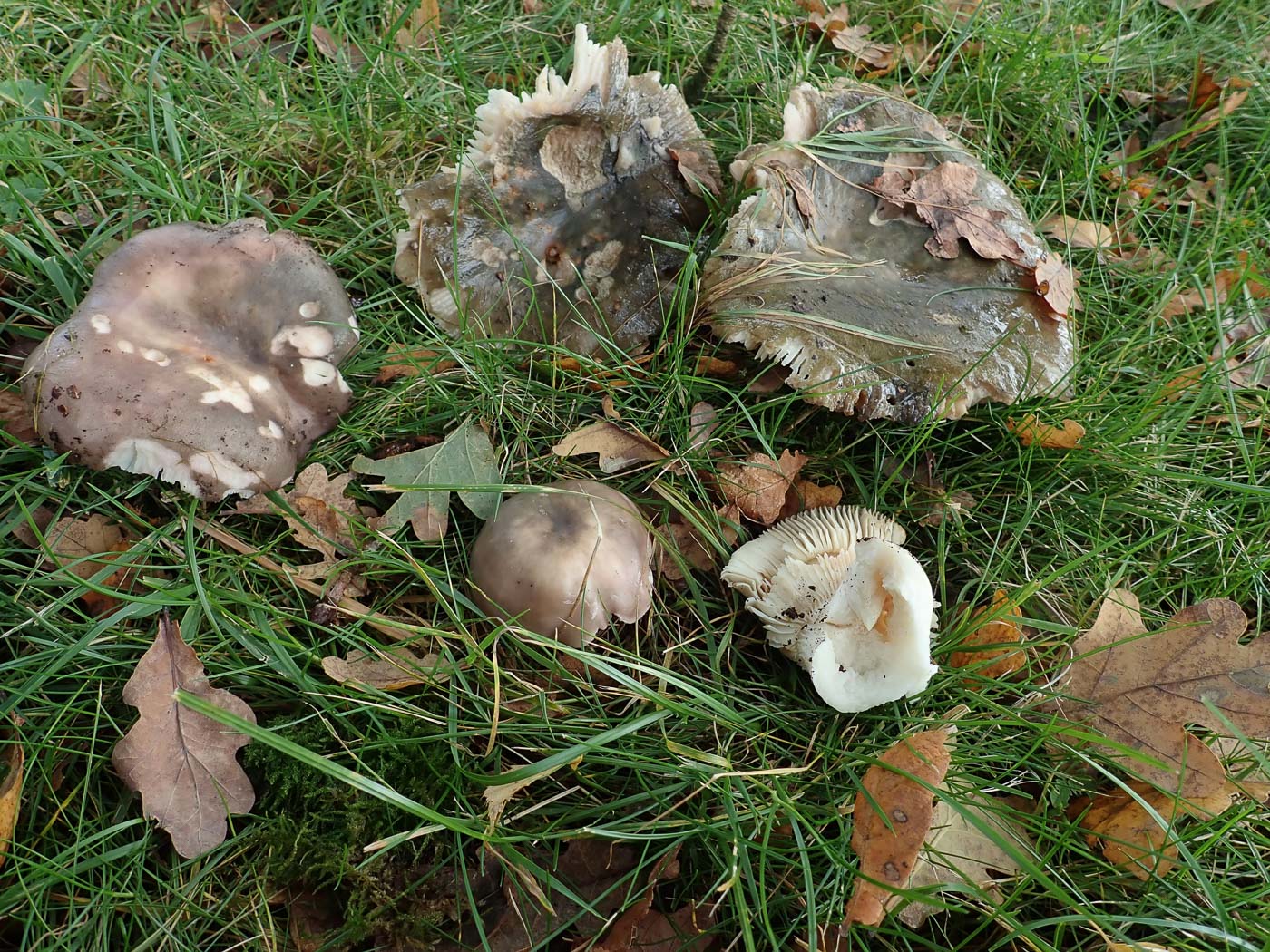 |
November 3rd Russula cyanoxantha (Charcoal Burner)
In a grassy patch under Oak at Cadmore End Penny found some huge Brittlegills with caps 12 cm across or more. The stem when rubbed with a crystal of Iron salts produced little reaction at first but eventually turned pale greeny grey, indicating this particular species which is easily confused with several others having similar coloured caps but with a salmon reaction to the crystal. We have two other Finds entries: 2021 July 28th and 2022 October 7th.
|
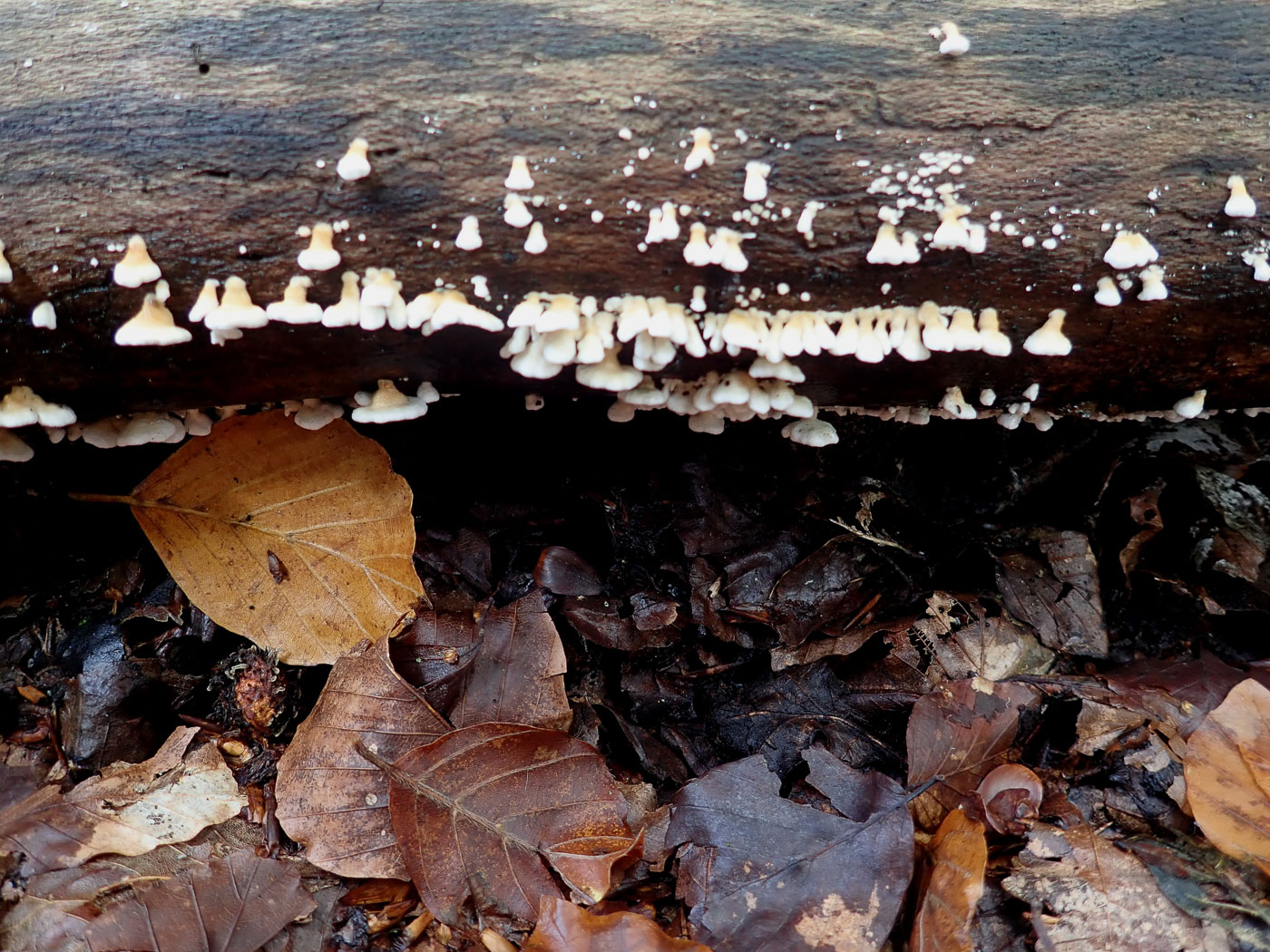
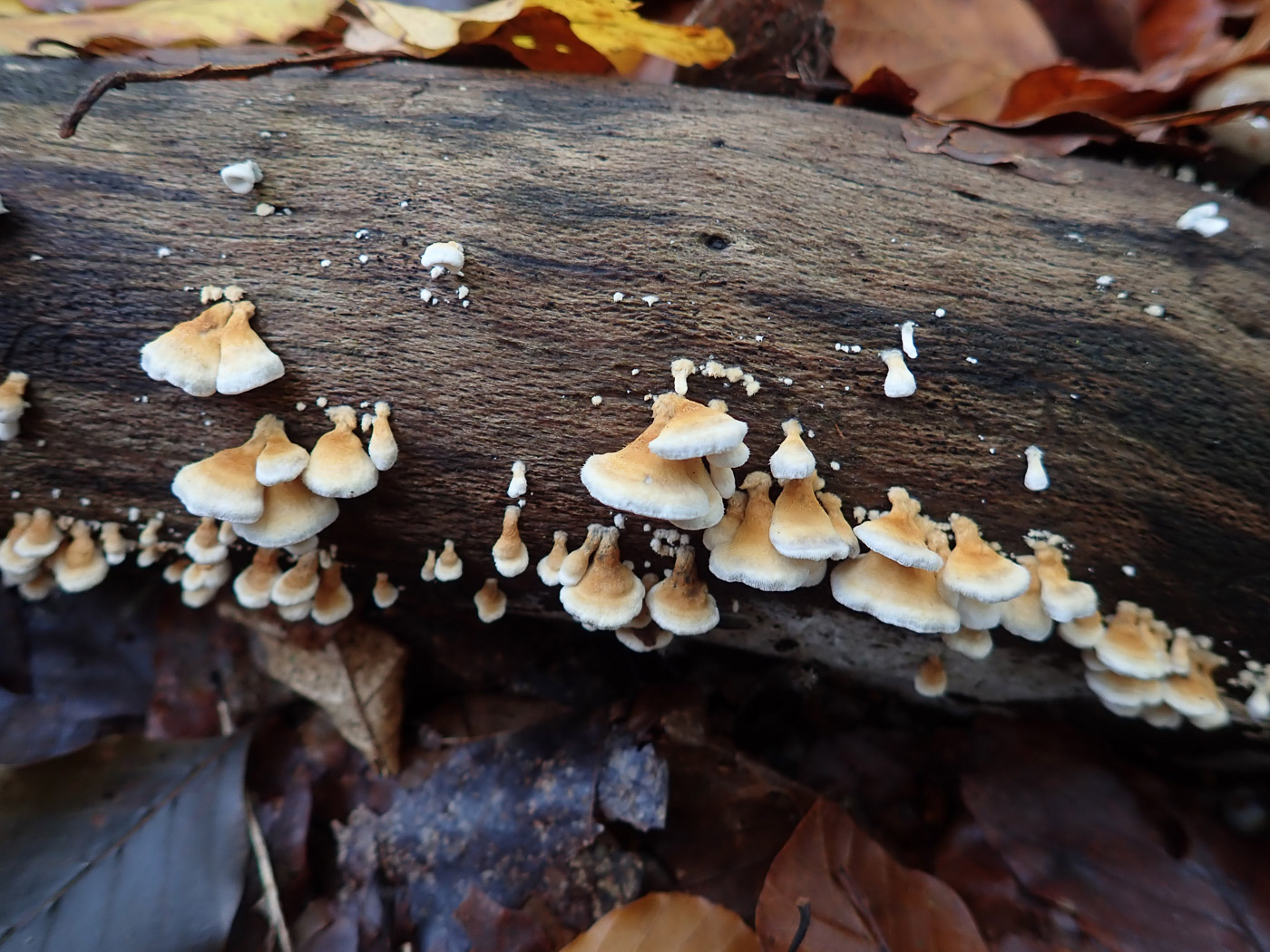
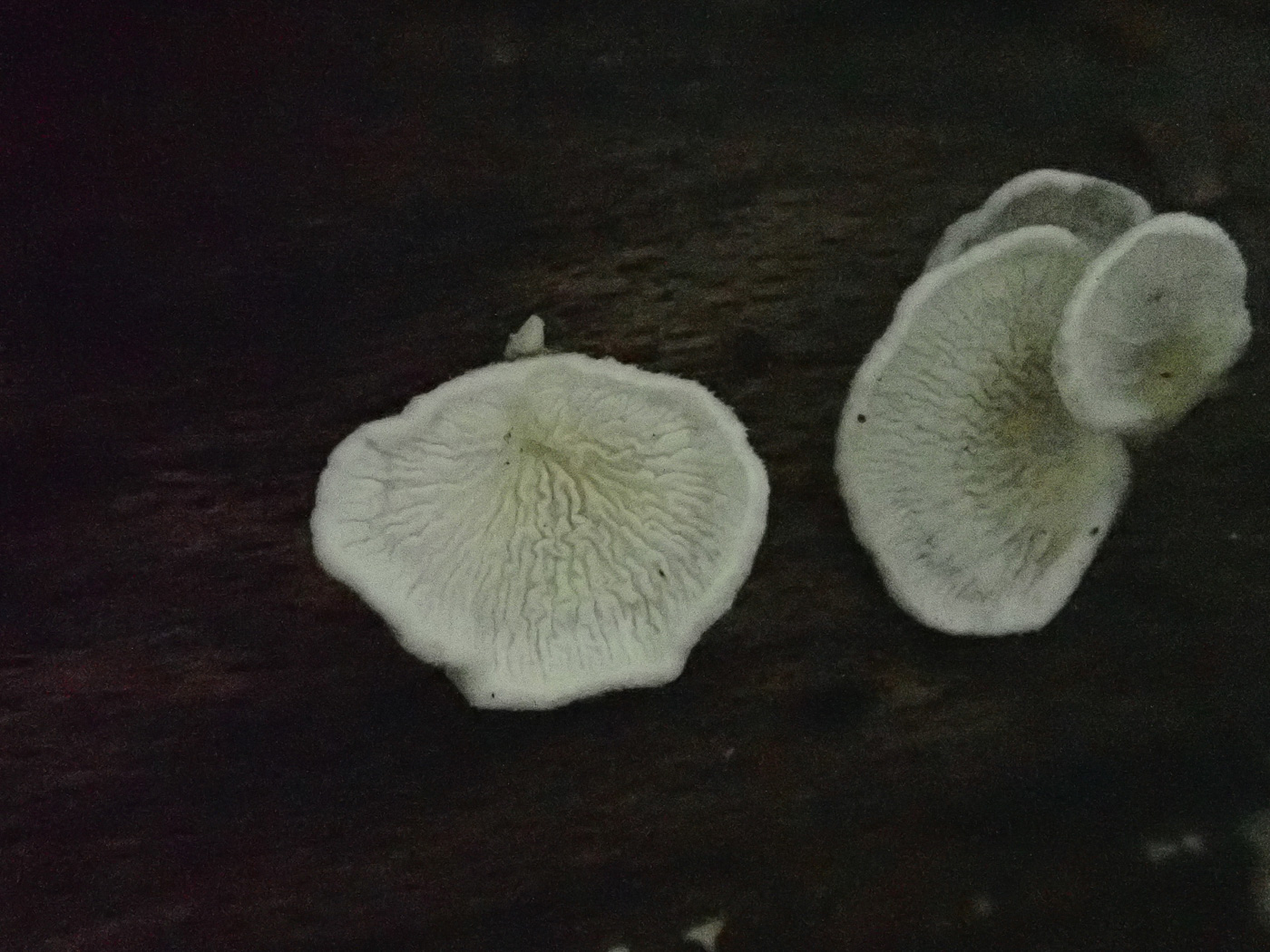 |
November 3rd Plicaturopsis crispa (Crimped Gill)
In Pullingshill Wood Penny came across a fallen Beech branch with this species fruiting in its early stages (photo 1). Further along the branch was a line of some slight further developed examples (photo 2), and photo 3 shows a (bad) close-up of the 'crimped gill' - like structures underneath which help to confirm the species if in doubt. The upper surface can appear somewhat similar to a small Stereum hirsutum (Hairy Curtain Crust). The species is becoming increasingly common especially on fallen Birch, less common to find it on Beech in this area, however. See the Masterlist for a choice of other entries.
|



 |
November 2nd Geastrum pectinatum (a rare Earthstar with no common name) 
In Broomhill Woods, Milton Keynes, Justin Long came across an amazing patch of these beautiful Earthstars in deep litter under Redwood. His range of photos show all the diagnostic features including the plicate peristome (pleated top opening), the neck, the smooth fertile puffball-like part, and the cream coloured rays beneath. Justin reported about 20 fruiting bodies here - what a sight! We have just two previous county records and this is a new entry for Finds.
|
 |
November 2nd Lepiota pseudolilacea (a Dappperling with no common name) 
In St. Giles churchyard Stoke Poges Jesper Launder found and later identified this rare Dapperling, one for which we have just three previous county records, all from the last century. Today we recorded several rare Dapperlings - two here in the churchyard and others in the adjacent Memorial Gardens - and it's been noted before that this does seem to happen with this genus: if you find one interesting species it's worth having a close look for others nearby. This is another new species for Finds.
|
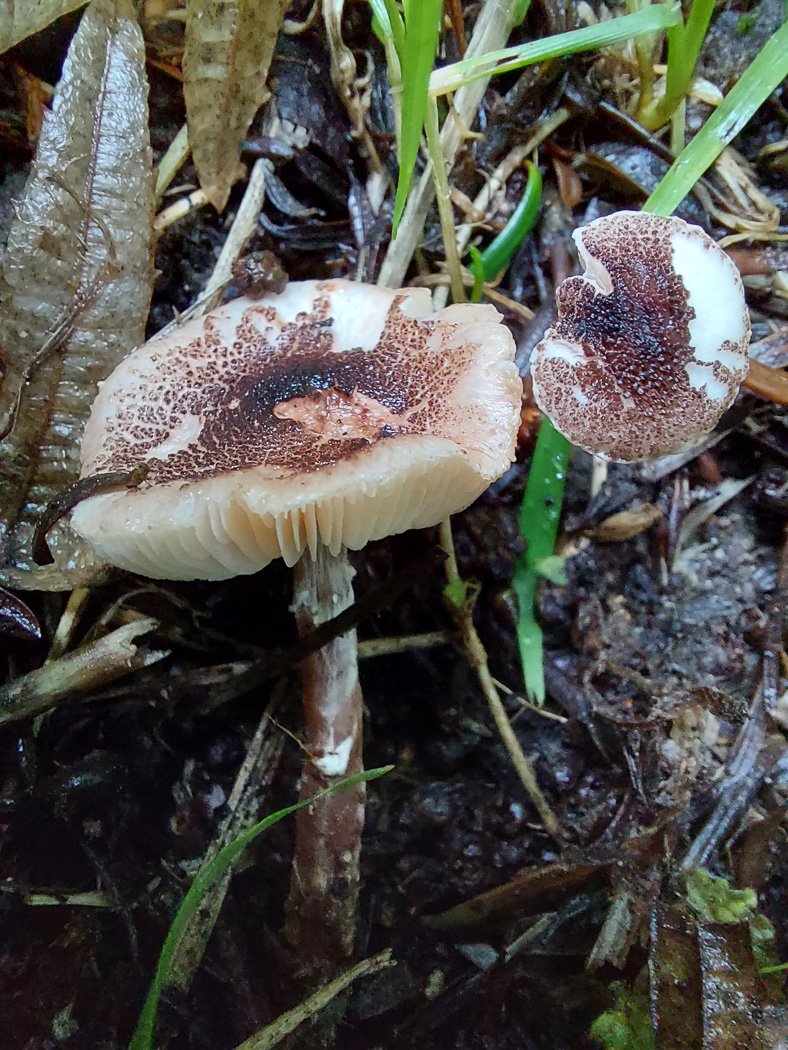 |
November 2nd Lepiota echinella (a Dappperling with no common name) 
In St. Giles churchyard Stoke Poges Jesper Launder found and later identified this unusual Dapperling, one for which we have just two previous county records, one of those from the adjacent Memorial Gardens back in 2018. This is anew entry for Finds.
|
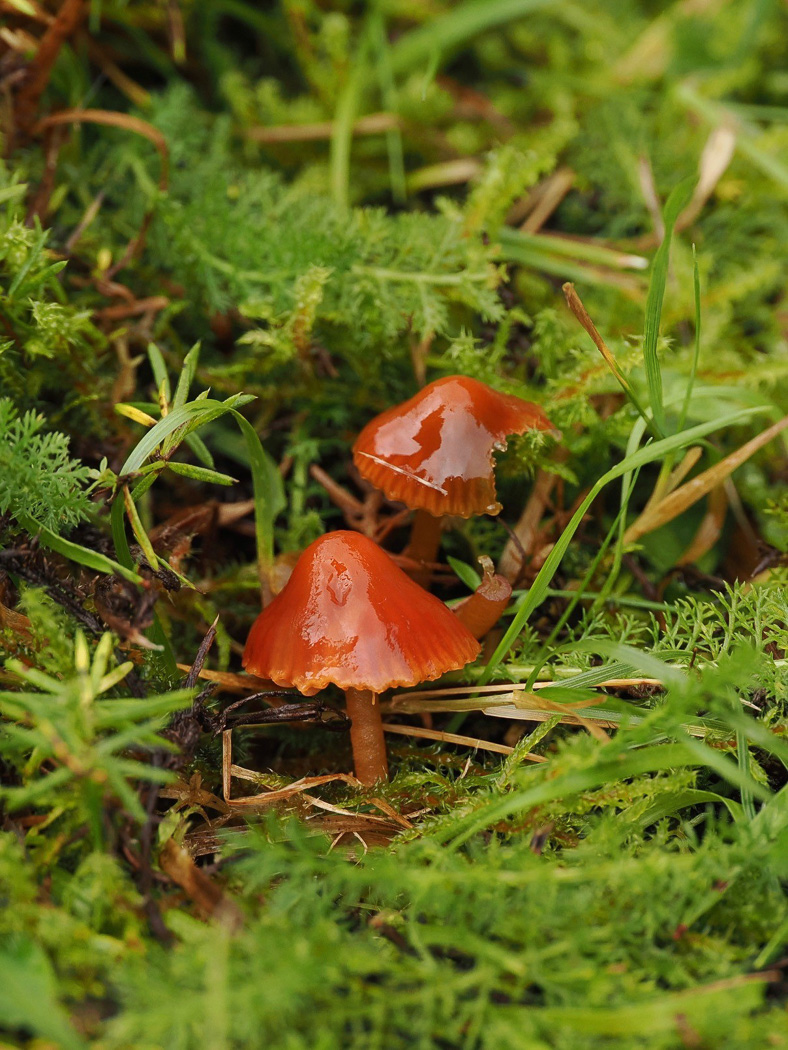 |
November 2nd Gliophorus cf europerplexus (a very rare Waxcap with no common name)
When Penny visited St. Giles churchyard Stoke Poges last week she was thrilled to find this species fruiting here again. See her entry (October 24th) for more details. Luckily it was still in evidence here today when our large group were able to see and admire it. The rusty copper colour is unique within the genus. See the Masterlist for two other entries as well as Penny's last week. The photo is Claire Williams's.
|
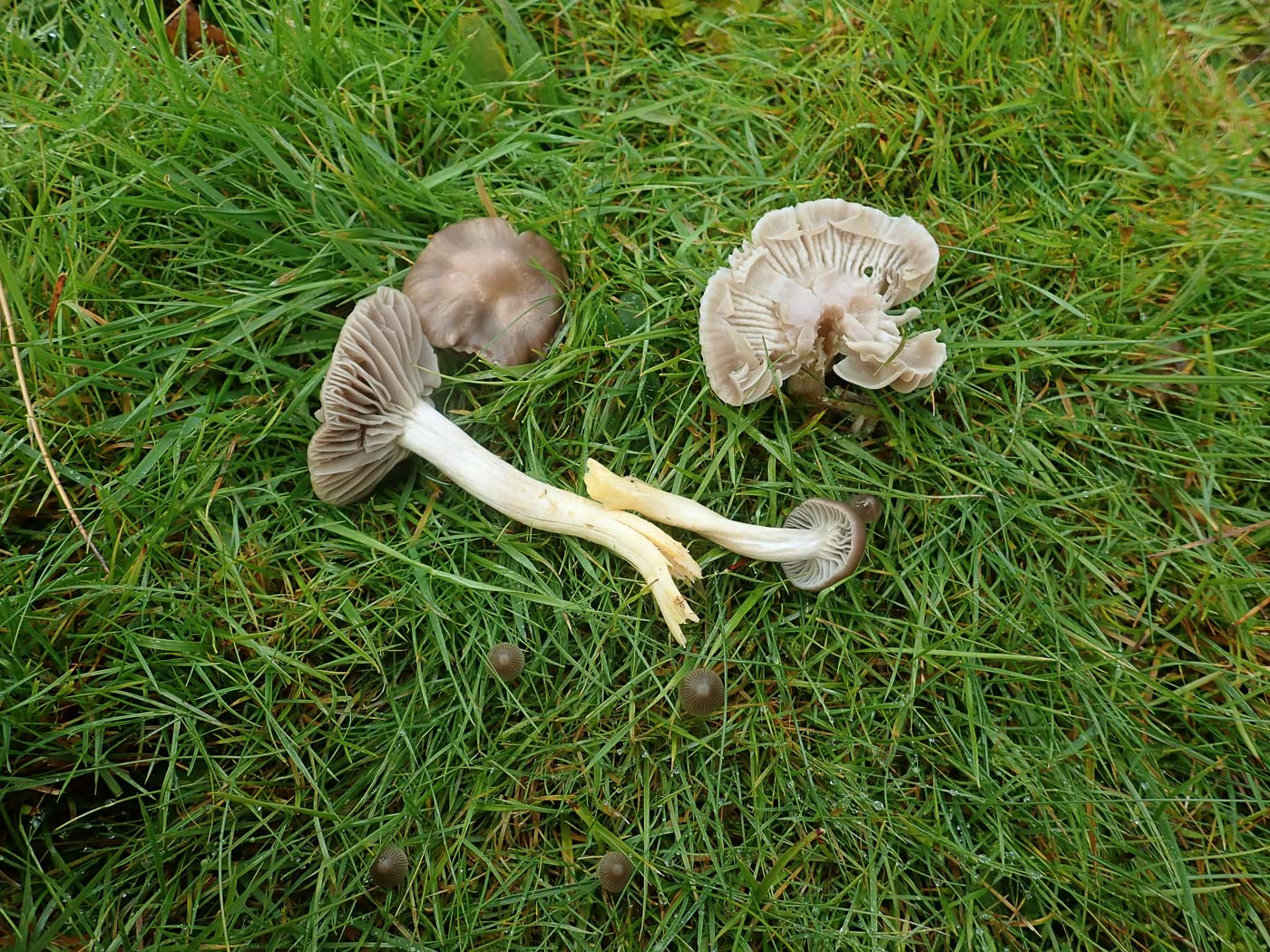 |
November 2nd Cuphophyllus flavipes (Yellowfoot Waxcap)
In short grass in St Giles churchyard Stoke Poges we were pleased to find this unusual Waxcap (previously in genus Hygrocybe), one known only from a couple of other county sites. We also found it here in 2021 though today's is the first entry for Finds. This is quite a large Waxcap, entirely dry and grey apart from having a distinct yellow tinge to the stem base. The photo is Penny's.
|
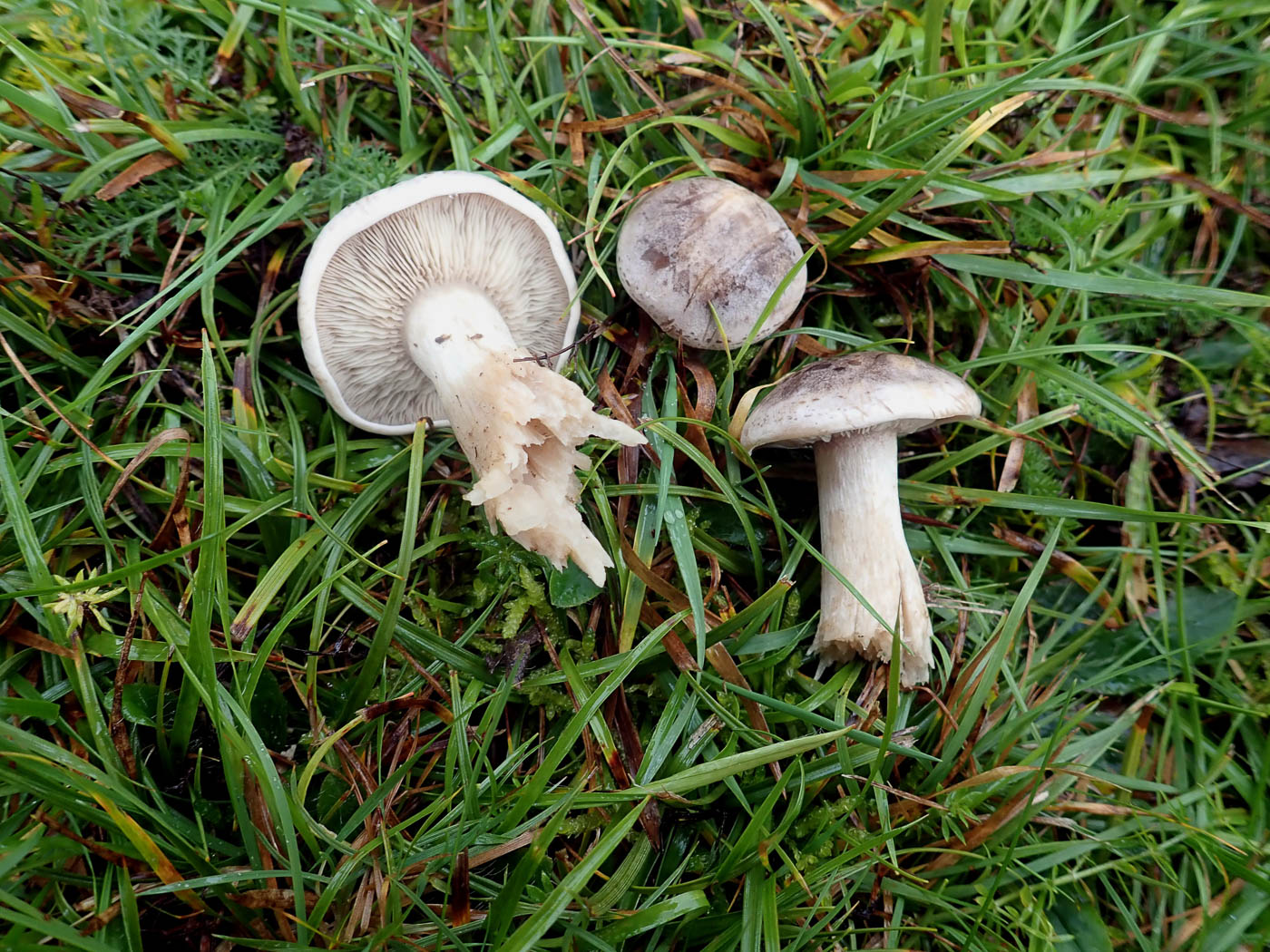 |
November 2nd Lepista luscina (Spotted Blewit) 
In short grass in St Giles churchyard Stoke Poges Penny noticed these grey mushrooms which were unfamiliar though both she and Jesper Launder guessed correctly at the genus. Both took a sample home and came to the same conclusion - very gratifying! The species has a slightly sweet smell, a pale pinkish sporeprint, crowded gills and its grey cap has some diagnostic darker spots around the rim (rather similar to those seen in Lactarius blennius (Beech Milkcap). We have only a few previous records, virtually all from the grassland at Coombe Hill. See also in Finds 2020 October 30th.
|
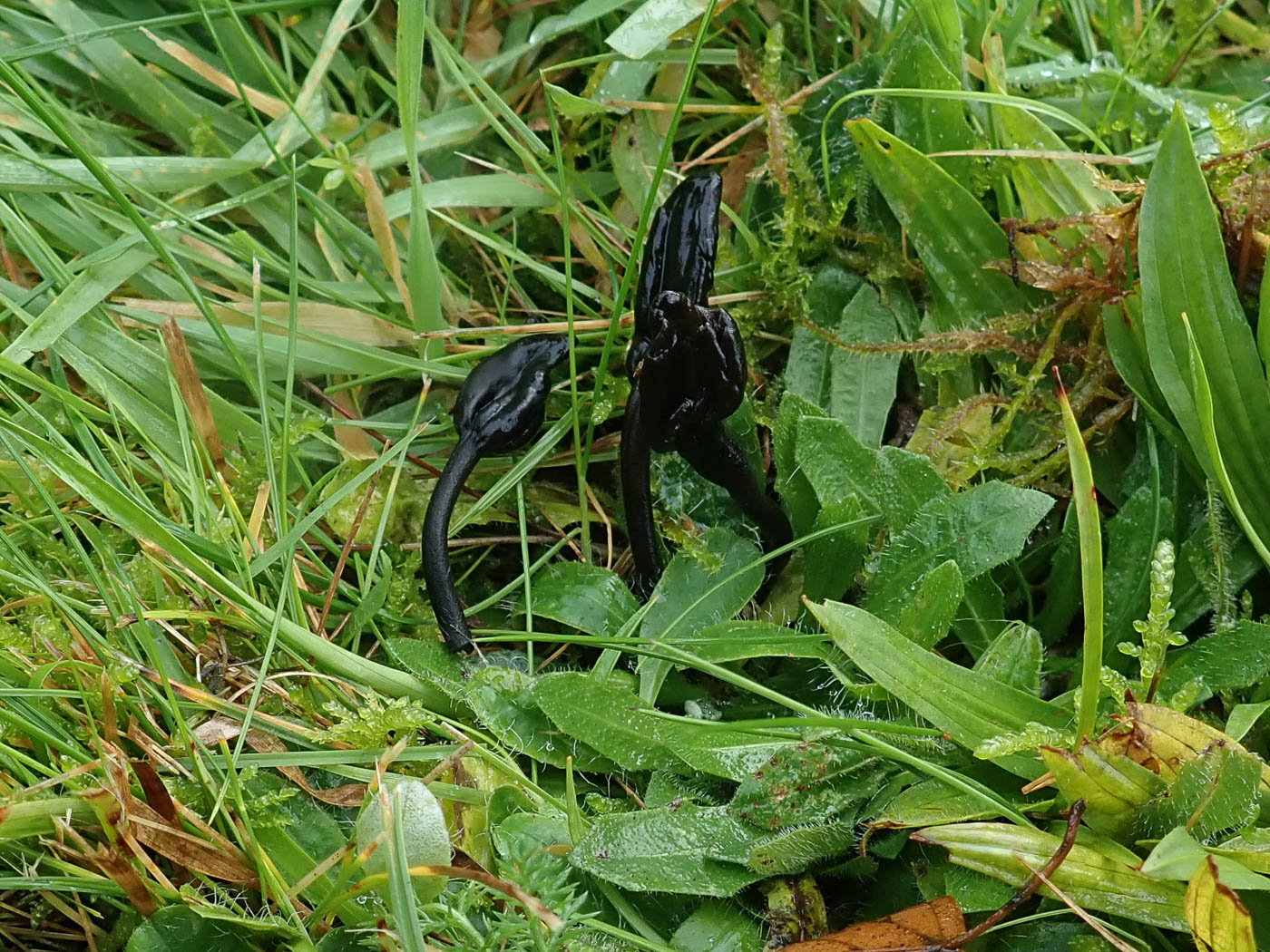
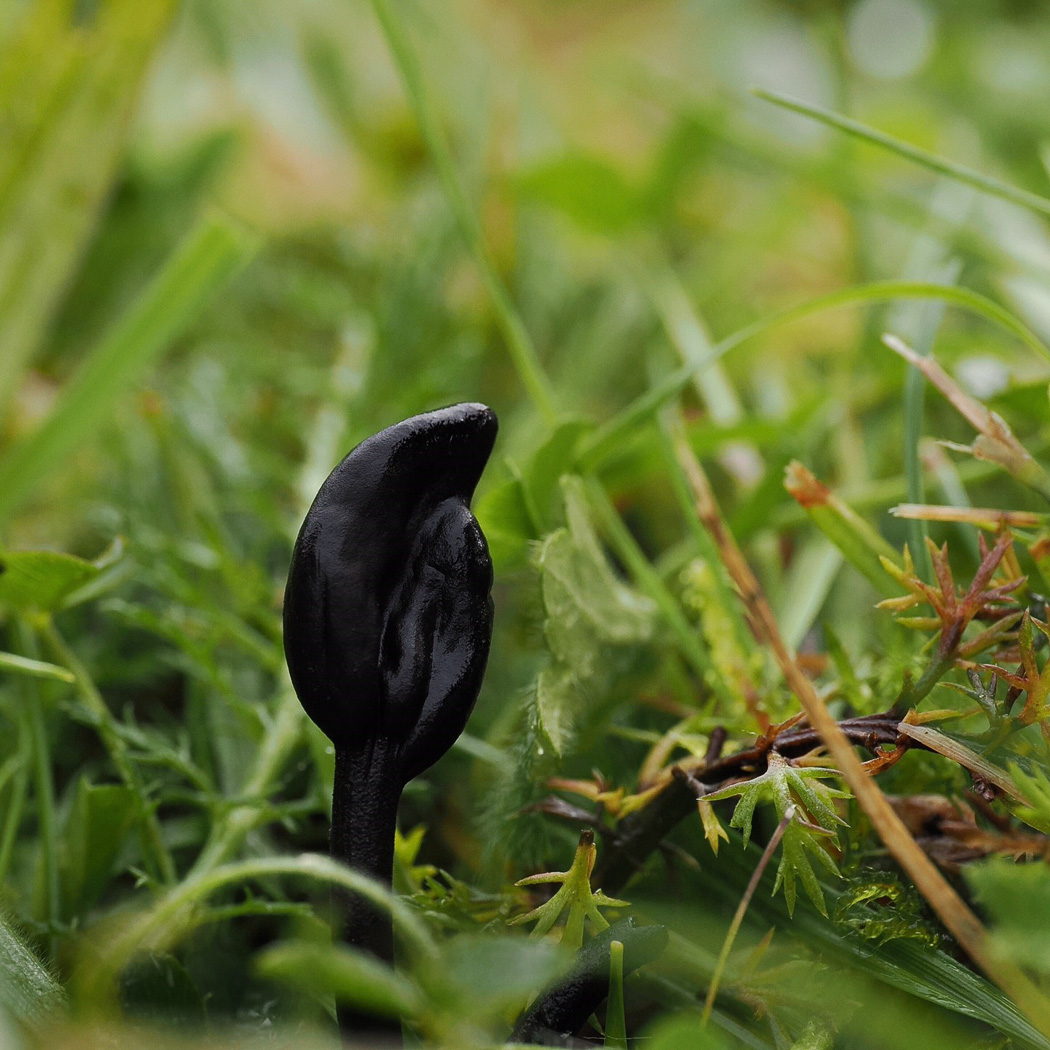 |
November 2nd Trichoglossum hirsutum (Hairy Earthtongue) 
In St Giles churchyard Stoke Poges we found a few of these black grassland clubs which Penny later identified at home. This is perhaps the commonest Earthtongue species, the hairy part being the stem beneath the fertile top section though a hand lens is needed to see it. This and related genera virtually always need a scope to make a safe identification. We've found this species here on several occasions now. See the Masterlist for further examples. Photo 2 is Claire Williams's.
|
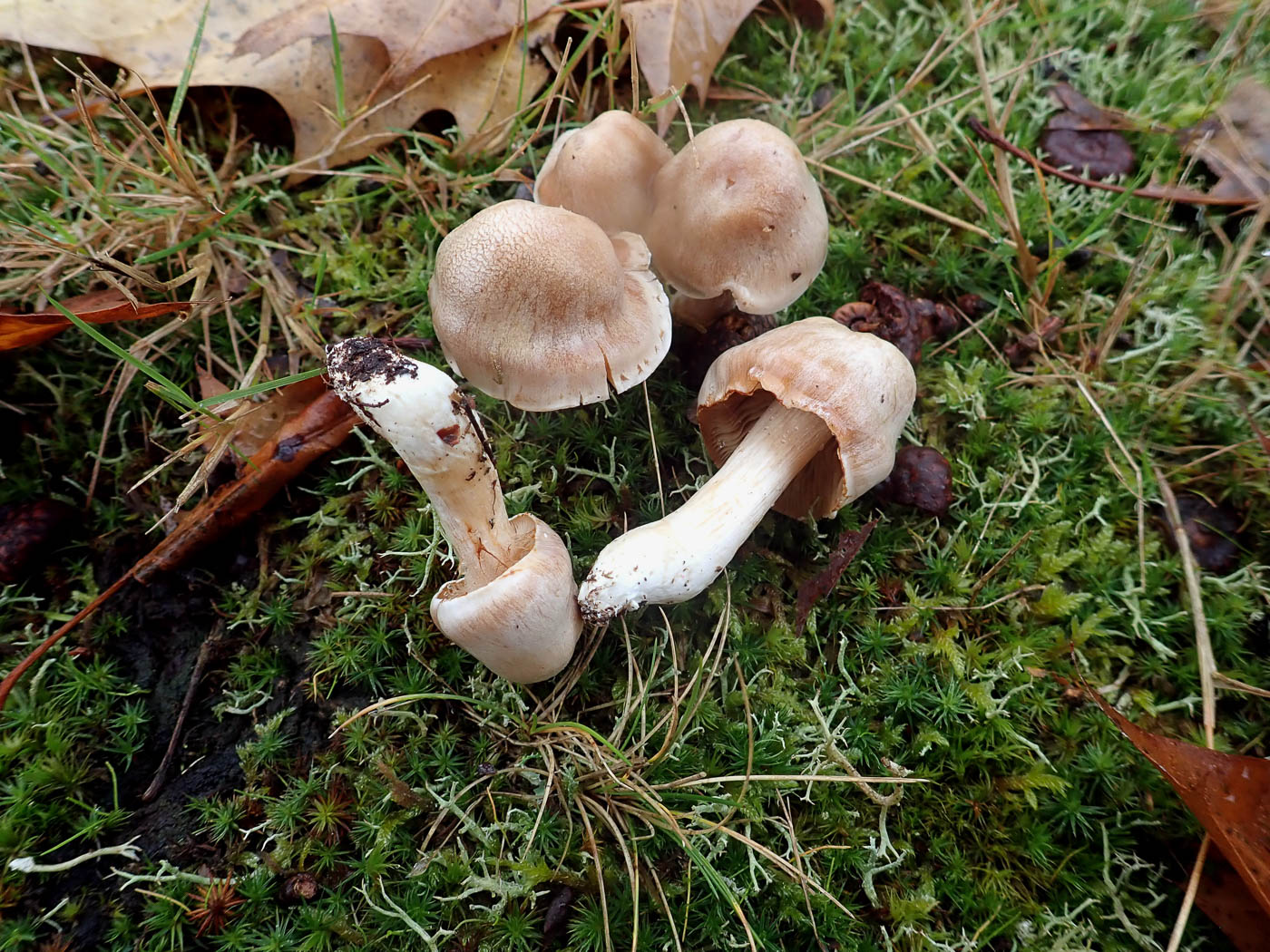 |
November 2nd Cortinarius leucoluteolus (an unusual Webcap with no common name) 
Under Oak at Stoke Poges Memorial Gardens Penny found this pale Webcap belonging to Section Myxacium (having a sticky cap and stem). She was able to key it out later, then sent this photo together with her description to Geoffrey Kibby (Cortinarius guru) who agreed with her identification. We have no BFG records but he assured Penny that he'd found it in Bucks in the past. This is a new entry for Finds
|
 |
November 2nd Porpolomopsis calyptriformis (Pink Waxcap)
Today at Stoke Poges Memorial Gardens we were treated to an array of 10 different Waxcap species and though this beautiful and special Waxcap was featured in Finds last week (October 24th) when Penny visited here, Claire Williams' photo today is well worth including. See the earlier entry and also the Masterlist for more examples.
|
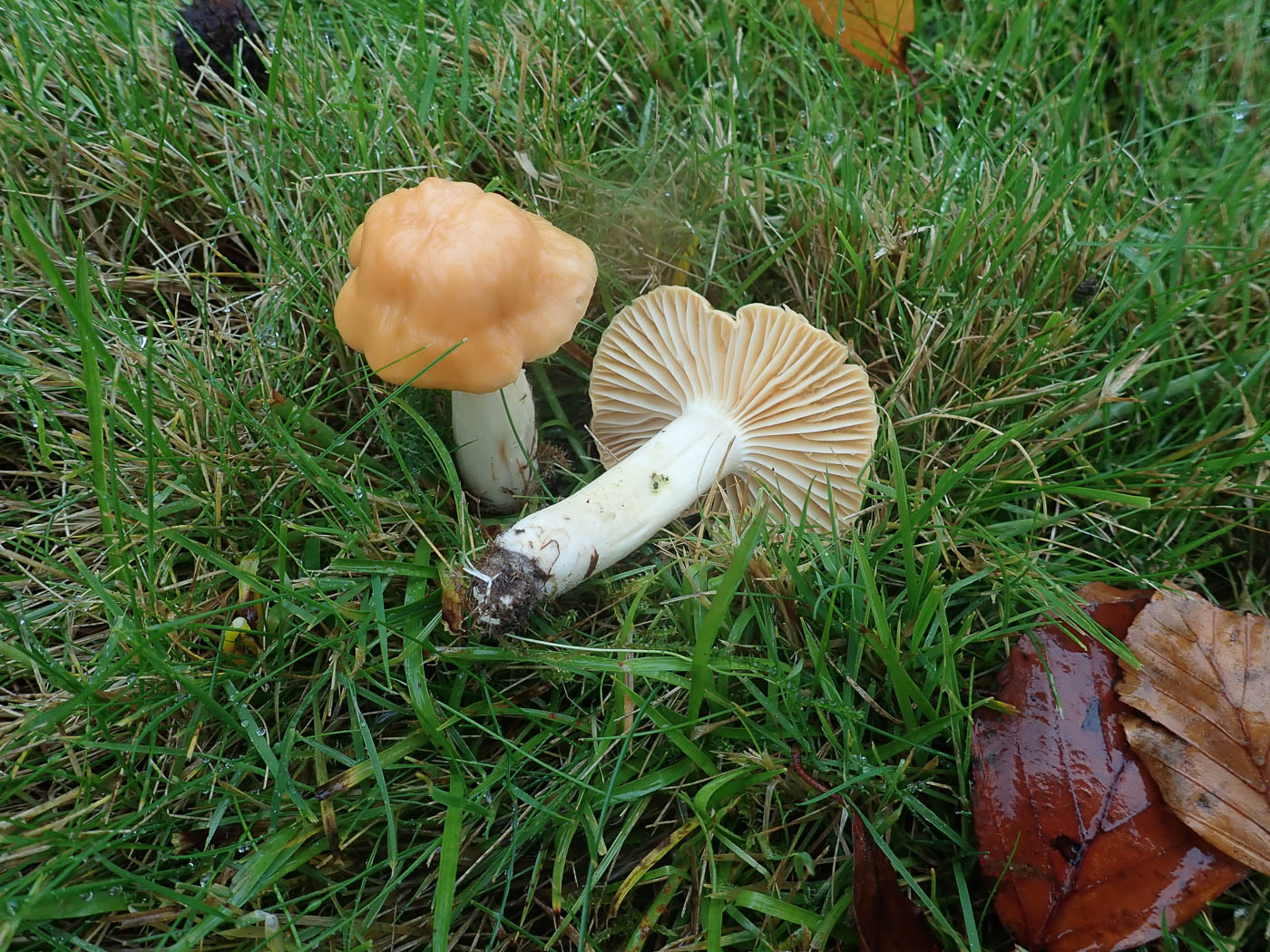
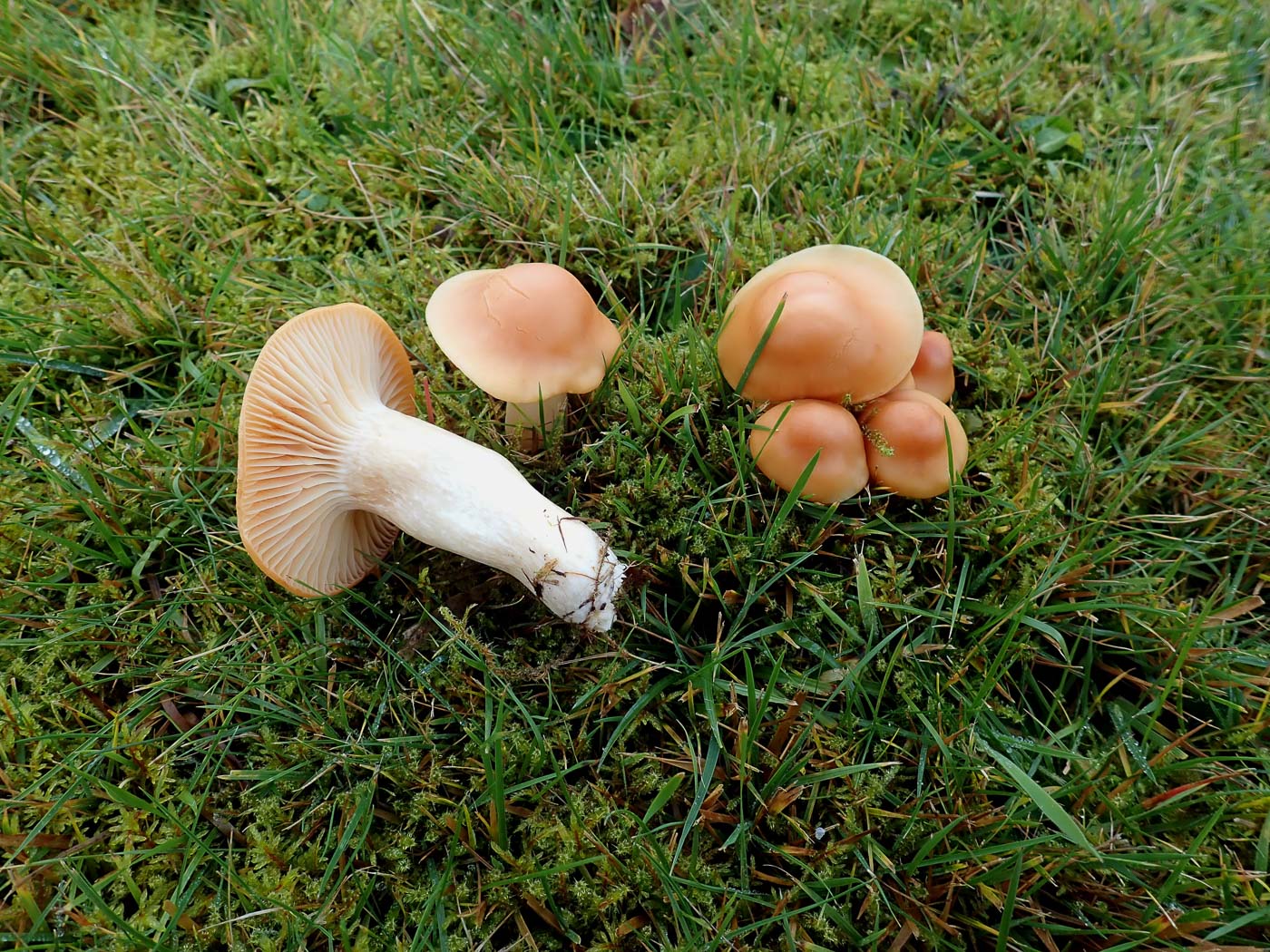 |
November 2nd Cuphophyllus pratensis (Meadow Waxcap)
Today at Stoke Poges Memorial Gardens we were treated to an array of 10 different Waxcap species, most of which we have already featured quite recently in Finds so are omitting the others but including this species here as it is only just making an appearance this season. Previously in genus Hygrocybe it is one of the larger species but distinctive with its peach colour and strongly decurrent gills. Members of genus Cuphopyllus have dry caps and stems. See the Masterlist for a range of other entries. Both photos are Penny's, the second was taken 2 weeks later at Prestwood Churchyard where the species is amazingly common.
|
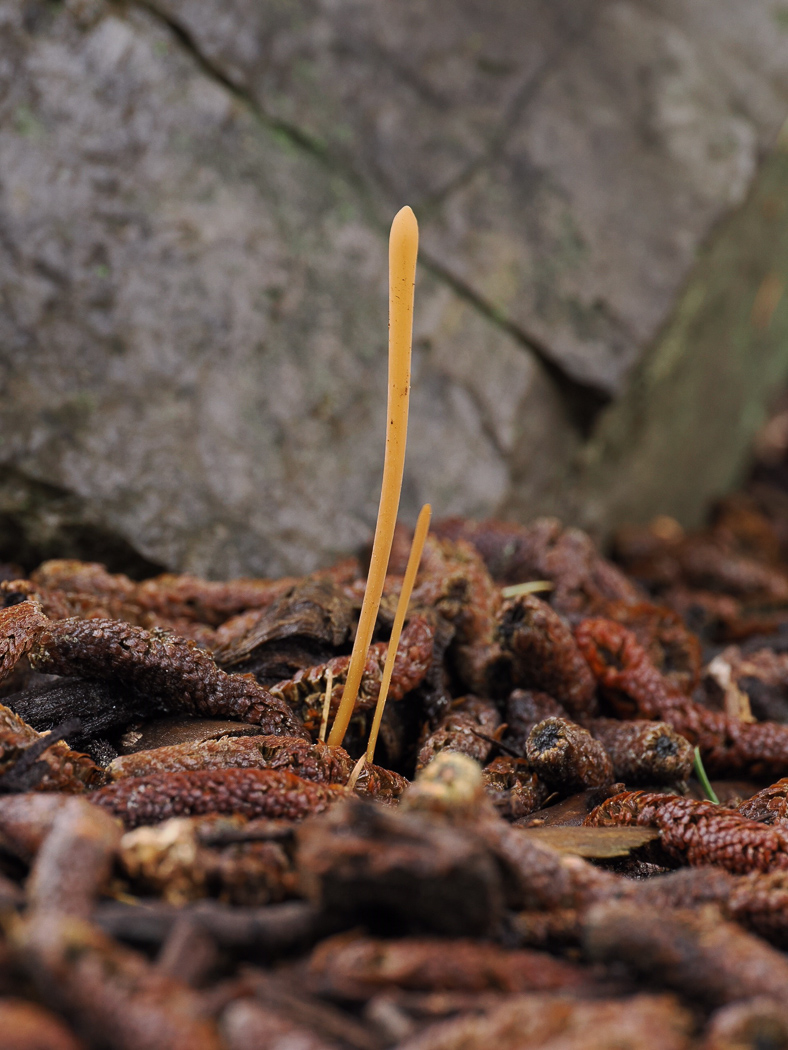 |
November 2nd Typhula fistulosa (Pipe Club)
In woodchip under a large Cedar Claire Williams noticed these unusual clubs which though about 10 cm tall are surprisingly difficult to spot. Not rare, they are new to the site today and we have just one previous finds entry: 2021 November 13th.
|
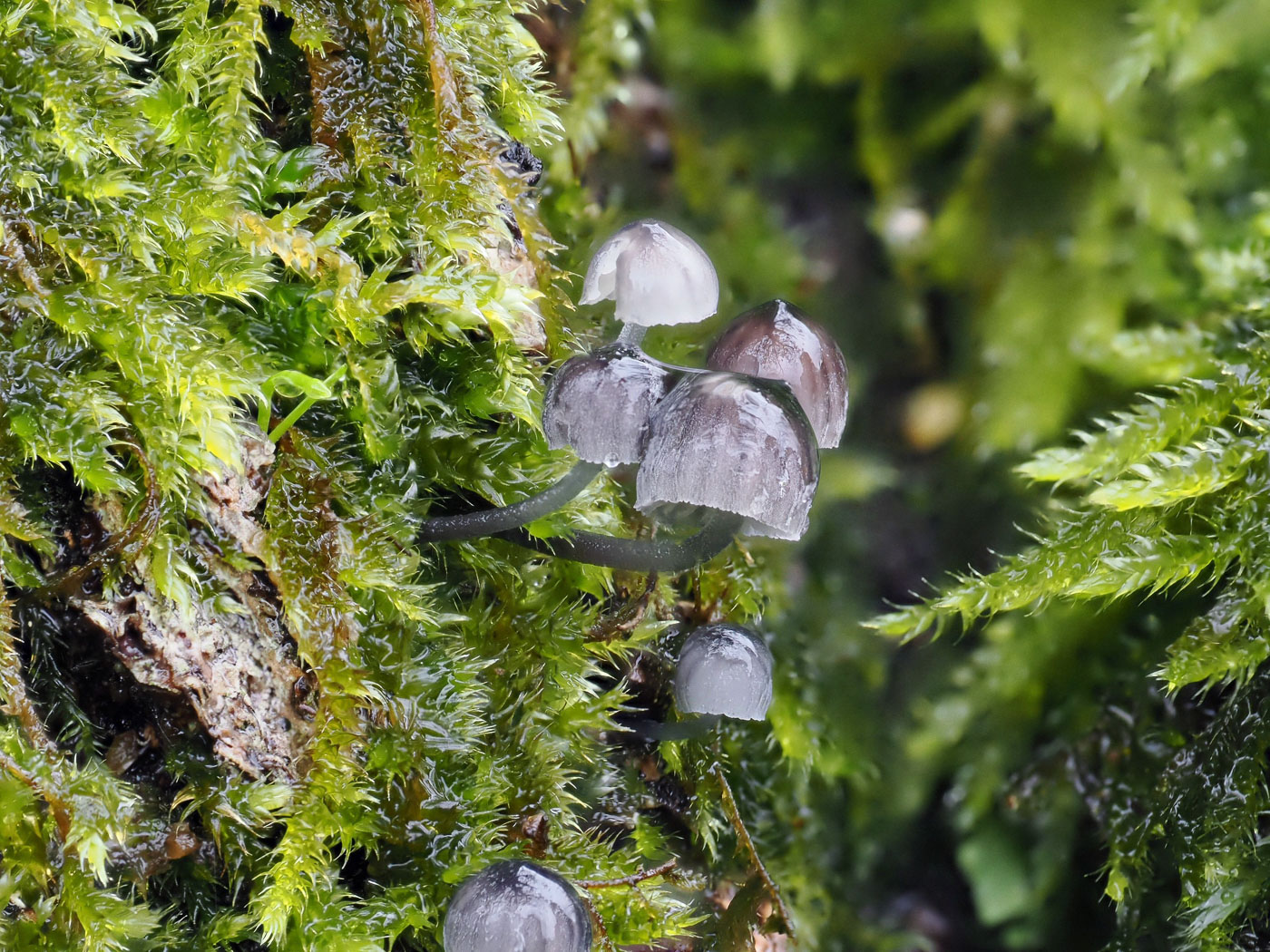
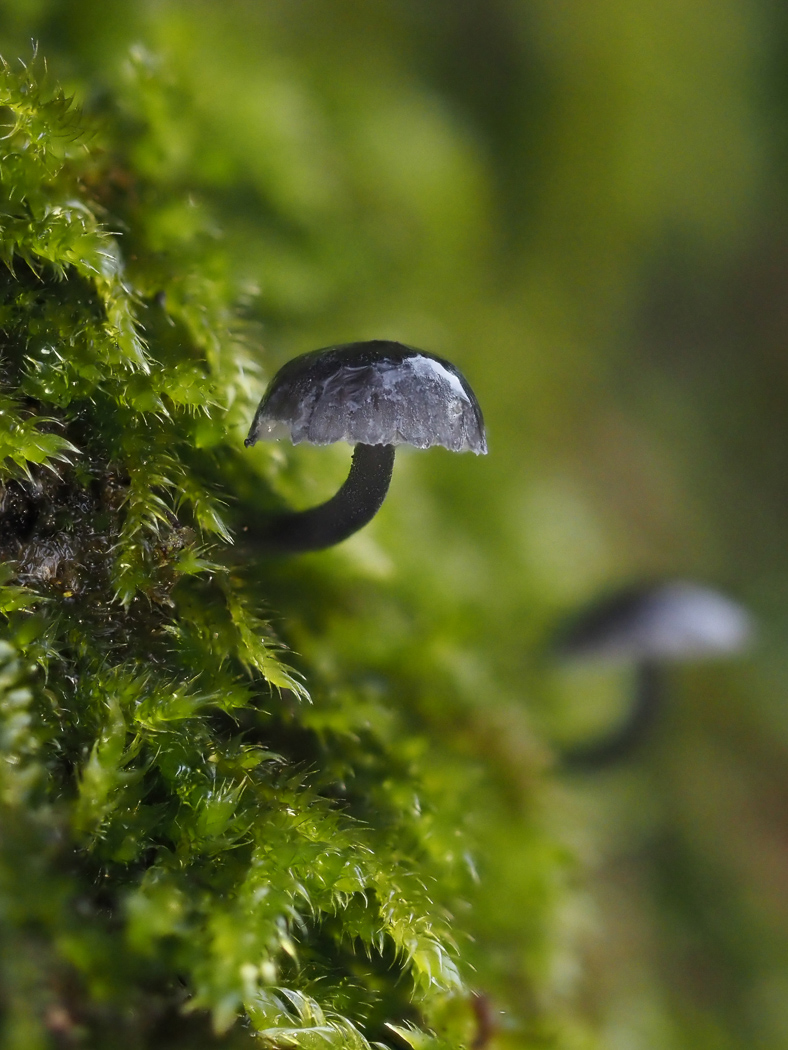
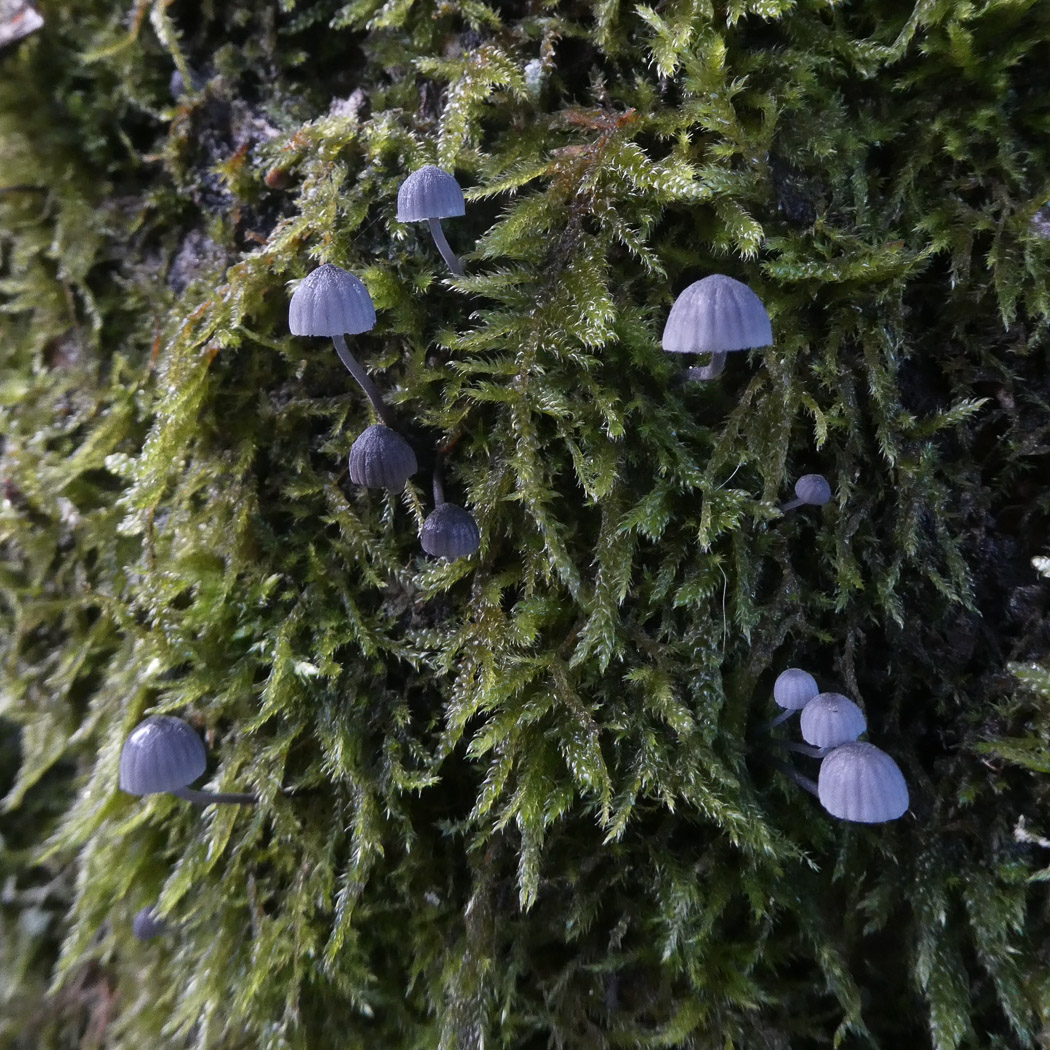 |
November 2nd Mycena pseudocorticola (an unusual bonnet with no common name)
In moss on an Oak at Stoke Common Memorial Gardens Claire Williams spotted these tiny little beauties with caps only about 5 mm across and which are new to the site today. The stunning blue colour is quite variable and sometimes the caps appear dull beige or grey, but as luck would have it Jim Wills also found this same species the following day in Chalfont St. Peter, this time on mossy Field Maple, with the most intense blue caps - stunning! Photo 1 is Claire's, photo 2 is Eleanor Page's also taken today, photo 3 is Jim's. We also have two images available via the Masterlist.
|
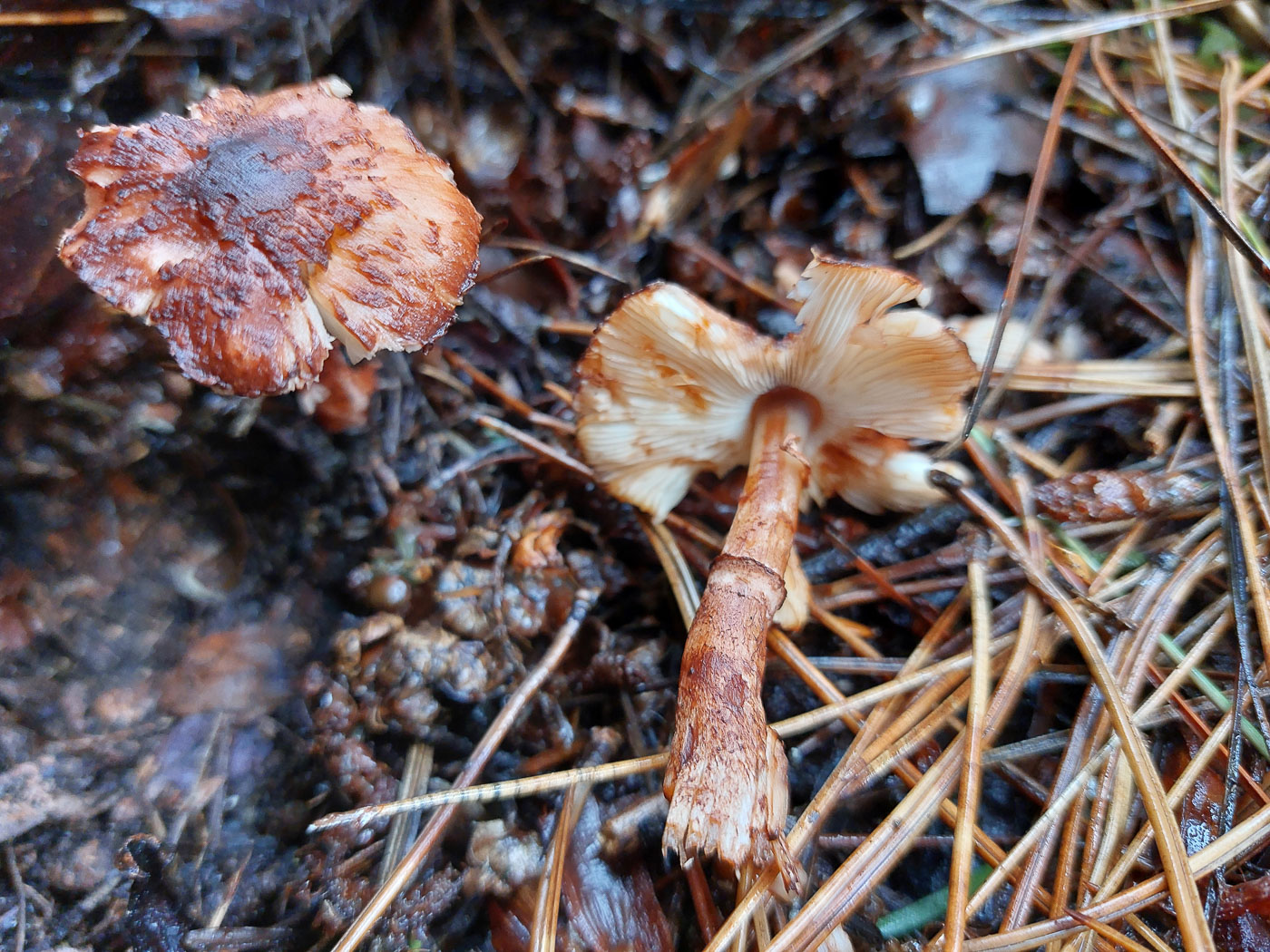 |
November 2nd Leucoagaricus croceovelutinus (a rare Dapperling with no common name
In Stoke Common Memorial Gardens in woody litter Jesper Launder was (rightly) excited when he spotted this small mushroom which was clearly strongly reddening throughout. He recognised it was close to but different from L. badhamii (Blushing Dapperling), so keyed it out with care at home. The species is new to the county with only 16 national records in FRDBI, none since 2004.
|
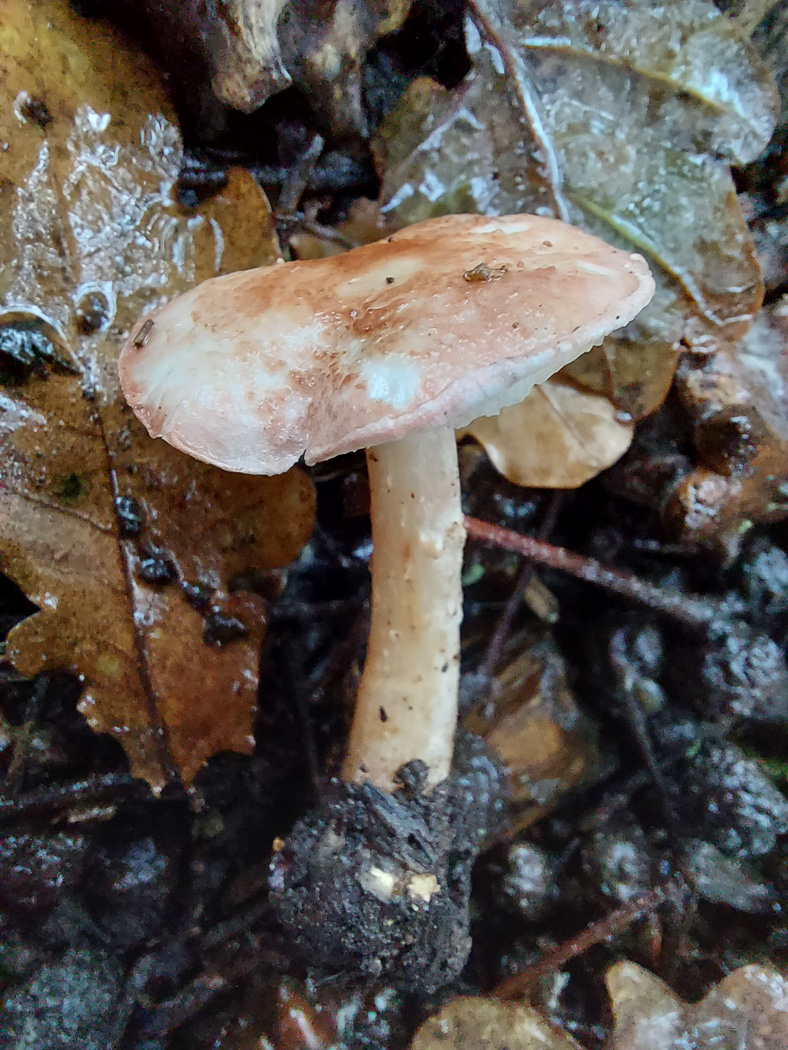 |
November 2nd Lepiota subincarnata (Fatal Dapperling) 
In Stoke Common Memorial Gardens this was one of several Dapperlings found and identified by Jesper Launder today, the conditions clearly suiting the genus at the moment. This is an occasional species with pink colours on both cap and stem, its common name reflecting the fact that it is extremely toxic. We have just a handful of previous records dating from 1953 to 2002, then a gap until last week at Round Spring Wood and here today! This is a new entry for Finds though there is also a photo in Penny's report on Round Spring Wood.
|
 |
November 2nd Humaria hemisphaerica (Glazed Cup)
In Stoke Common Memorial Gardens Sarah Ebdon found this delightful little cup fungus in the woodchip which abounds at this site. These were only small examples, the cups being less than 1 cm across, but showed the diagnostic features of a white smooth interior with the exterior covered in fine brown hairs. it is the inner surface which contains the spores. See the Masterlist for plenty of other examples. (The photo here is Claire Williams')
|
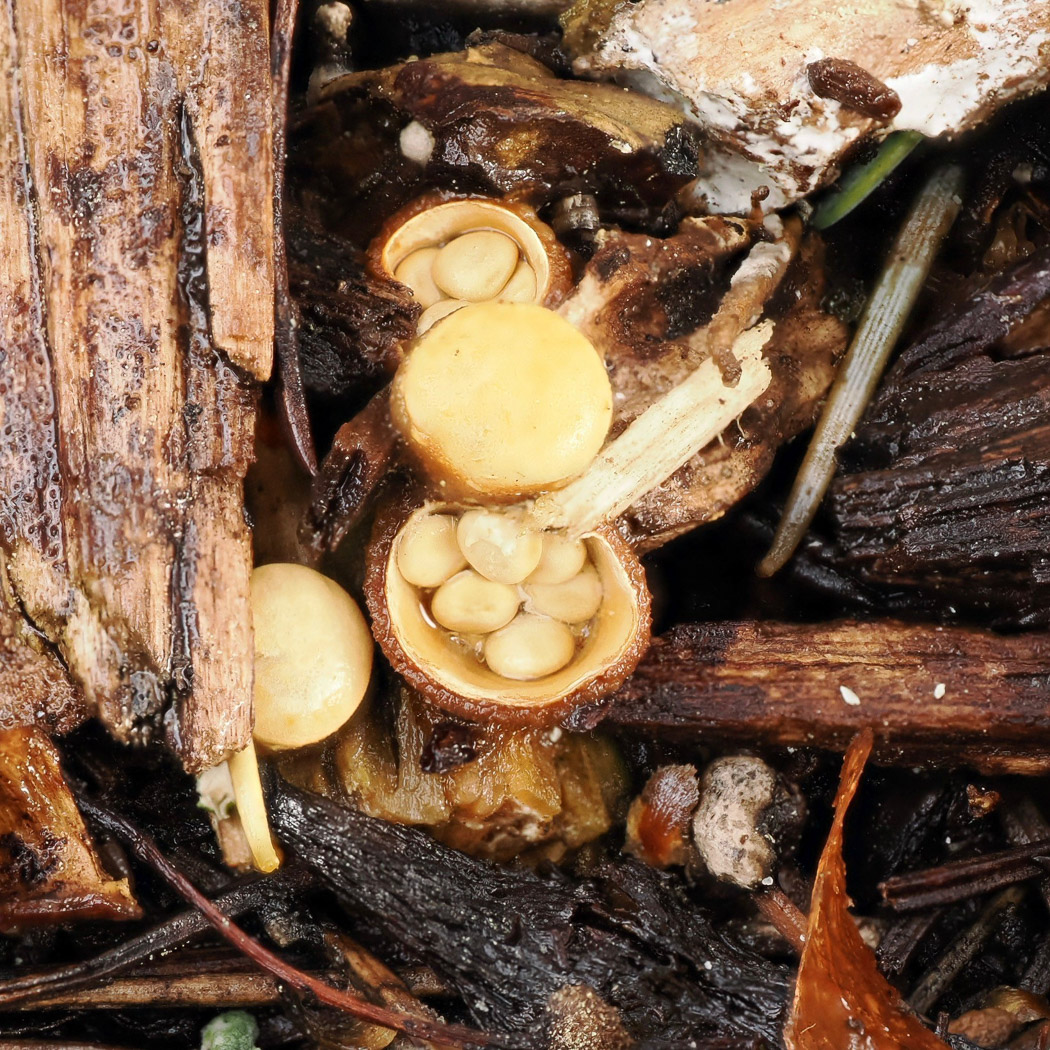 |
November 2nd Crucibulum laeve (Common Bird's Nest)
In woodchip at Stoke Poges Memorial Gardens Claire Williams found this interesting little species which is a regular at this site and brings looks of amazement to those who've never seen it before. Claire's photo shows two immature 'nests' still unopened, also two full of 'eggs' which are in fact sacks containing spores which are then dispersed by a splash of rain. For futher images on Finds try 2022 September 7th and October 27th.
|
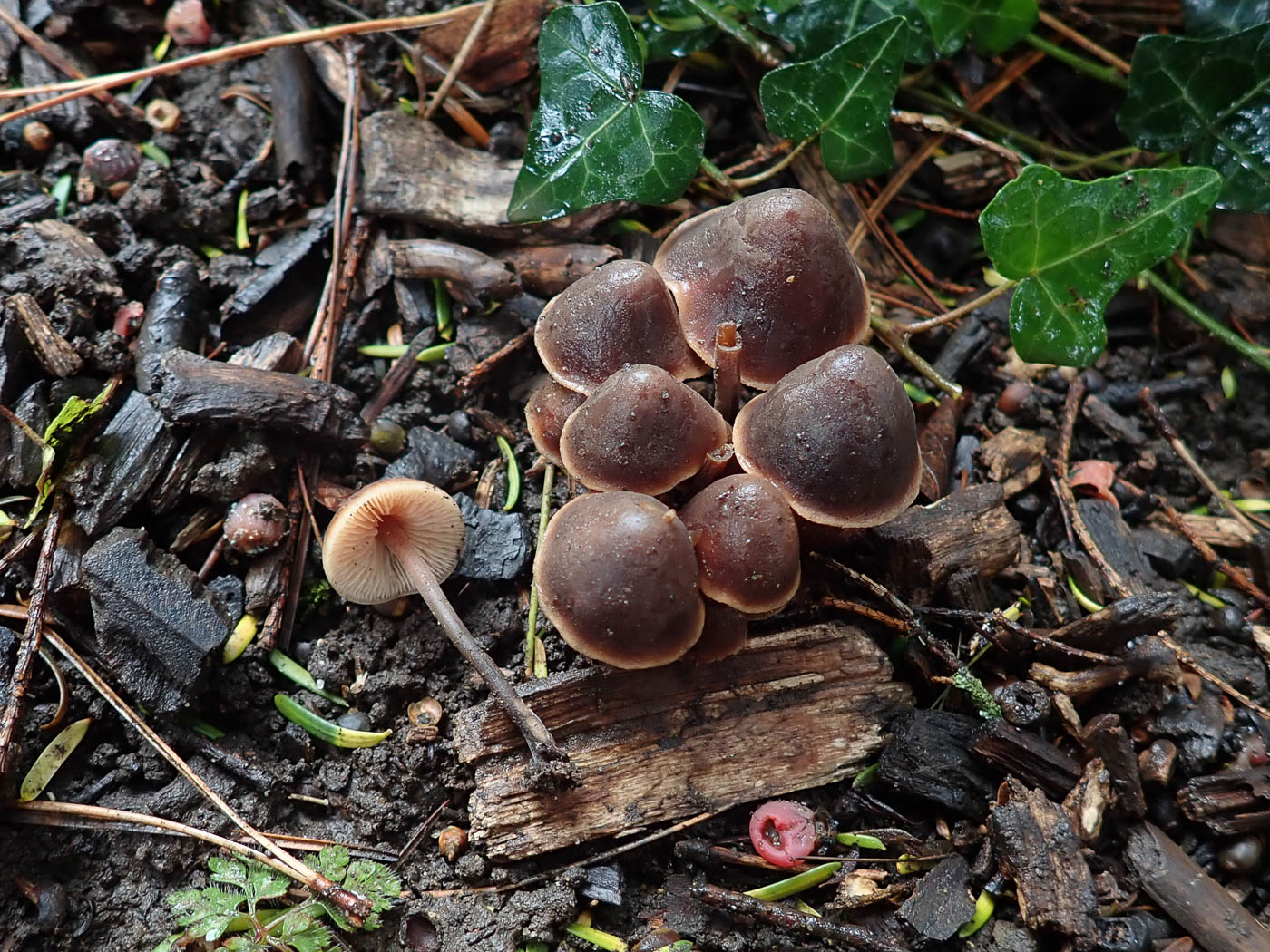 |
November 2nd Macrocystidia cucumis (Cucumber Cap)
In Stoke Poges Memorial Gardens Penny found this species in woody debris in a dark corner where it has fruited several times in past years. The rich dark brown smooth conical cap with pale rim is typical of the species, also the white gills and brown stem. The reference to cucumber in the common name describes its smell said to be of cucumber sandwiches though a more apt name would be Cod-liver-oil Cap which to Penny sums its smell up perfectly! See the Masterlist for more images, all but one being from this same site.
|
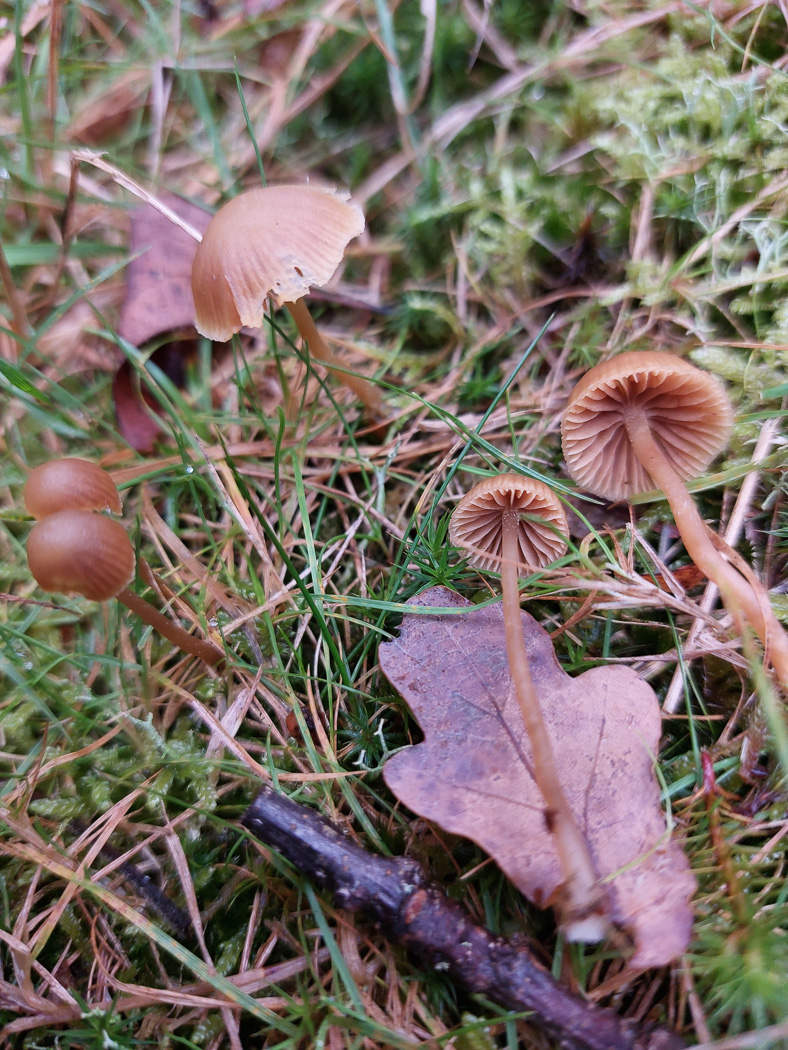 |
November 2nd Galerina mniophila (a Bell with no common name)
In Stoke Poges Memorial Gardens Jesper Launder collected a few of these small Mycenoid mushrooms which were popping up in the grass and worked on them at home. The genus is large and most species look extremely similar - just like this one - so a scope and a complicated key is always necessary to name any collection to species. Though probably not at all rare, this appears to be only our third county record (the second was from nearby Stoke Common also ID by Jesper!), this probably reflecting the fact that those with enough skill to identify this genus will often walk past and ignore it in favour of easier and more eye-catching prey! See the first collection in Finds 2021 December 12th.
|
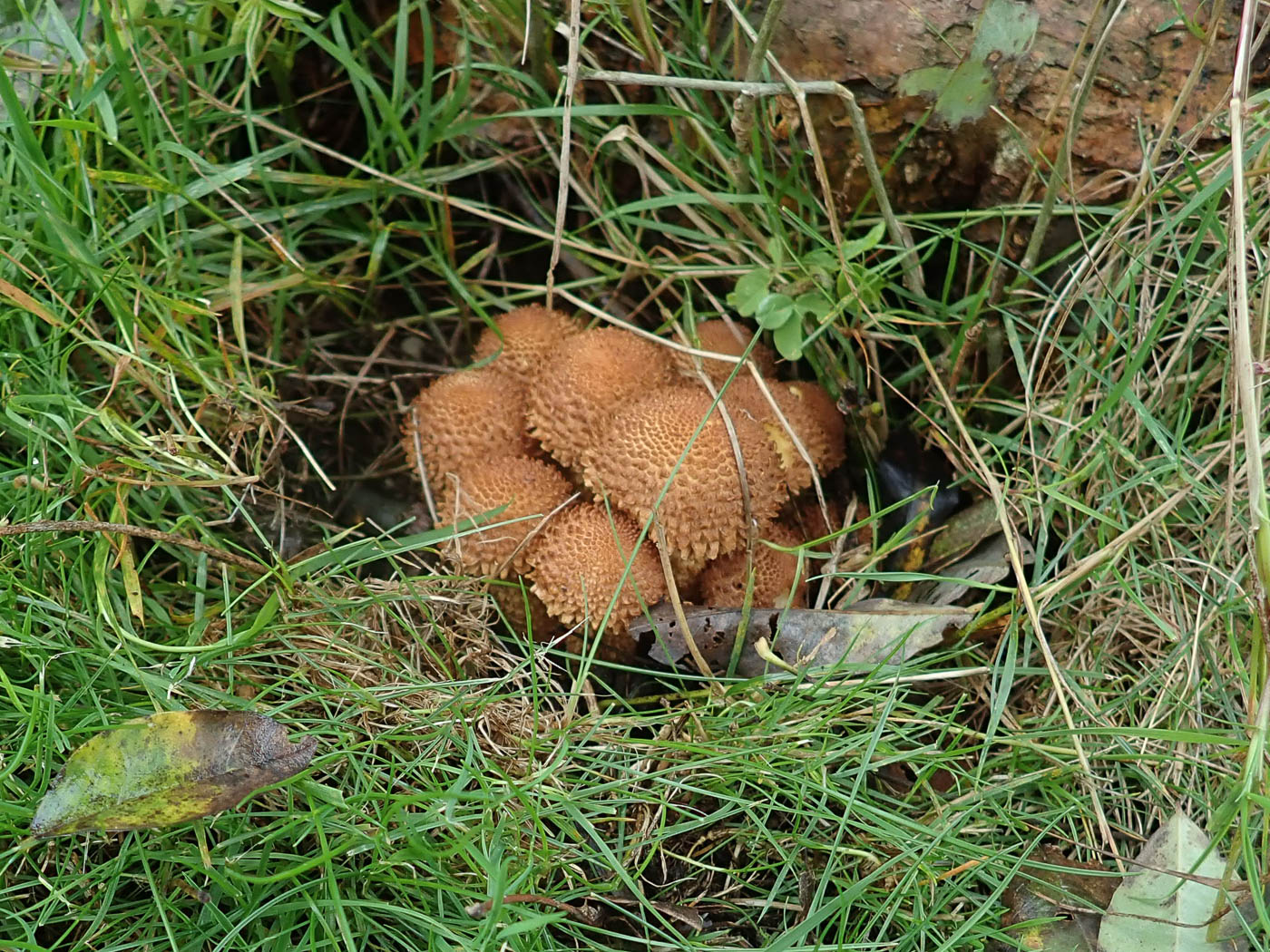 |
November 2nd Pholiota squarrosa (Shaggy Scalycap)
In Stoke Poges Memorial Gardens Penny checked the base of a Laburnum tree where this species is a regular, and there amongst the vegetation it was just beginning to emerge. Well described by its common name, this is a big chunky species which forms large tightly clustered clumps on a range of deciduous trees and is usually quite common though has not been much in evidence this year as yet. Maybe now is its moment! See the Masterlist for a range of other entries.
|
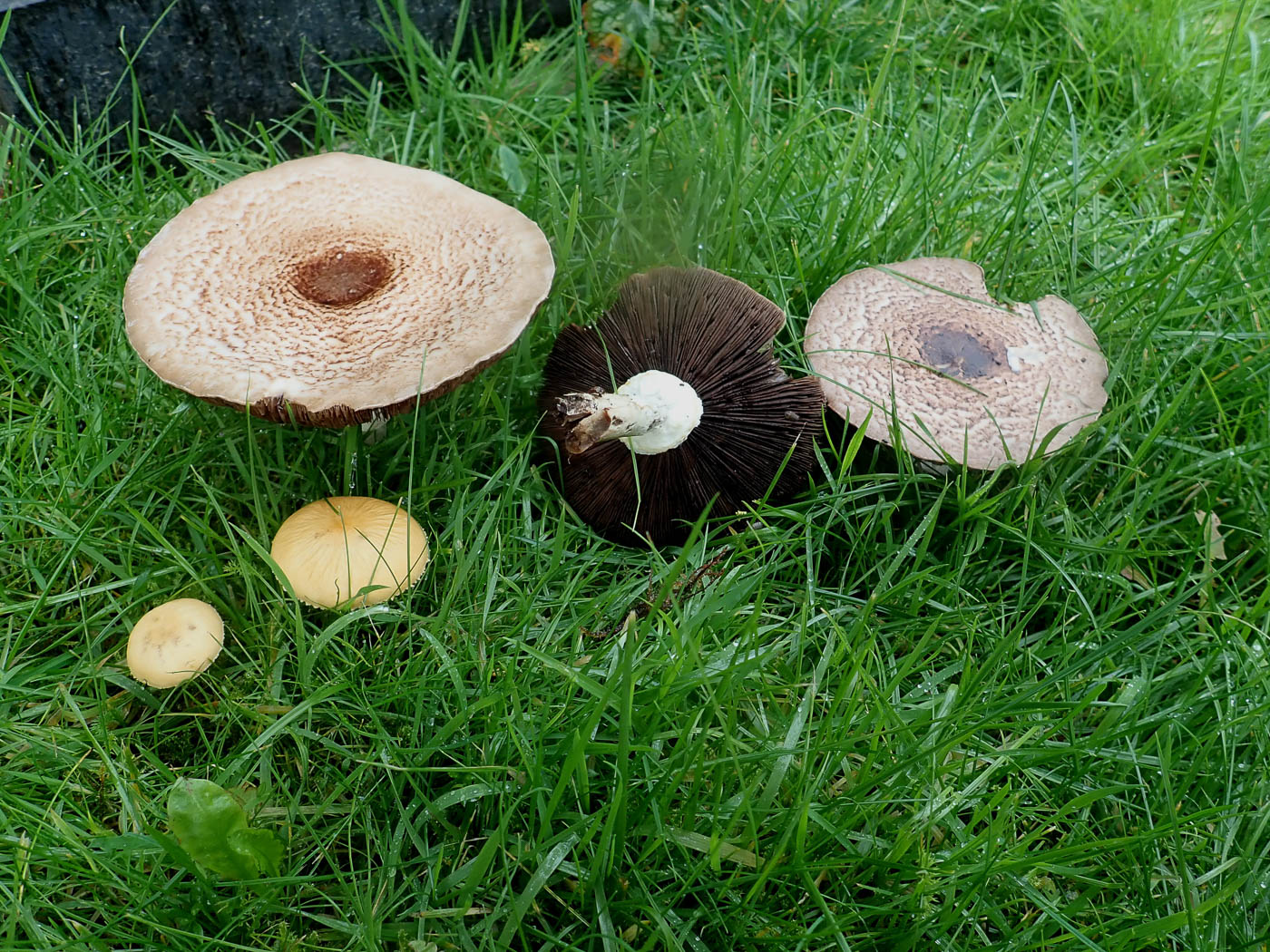
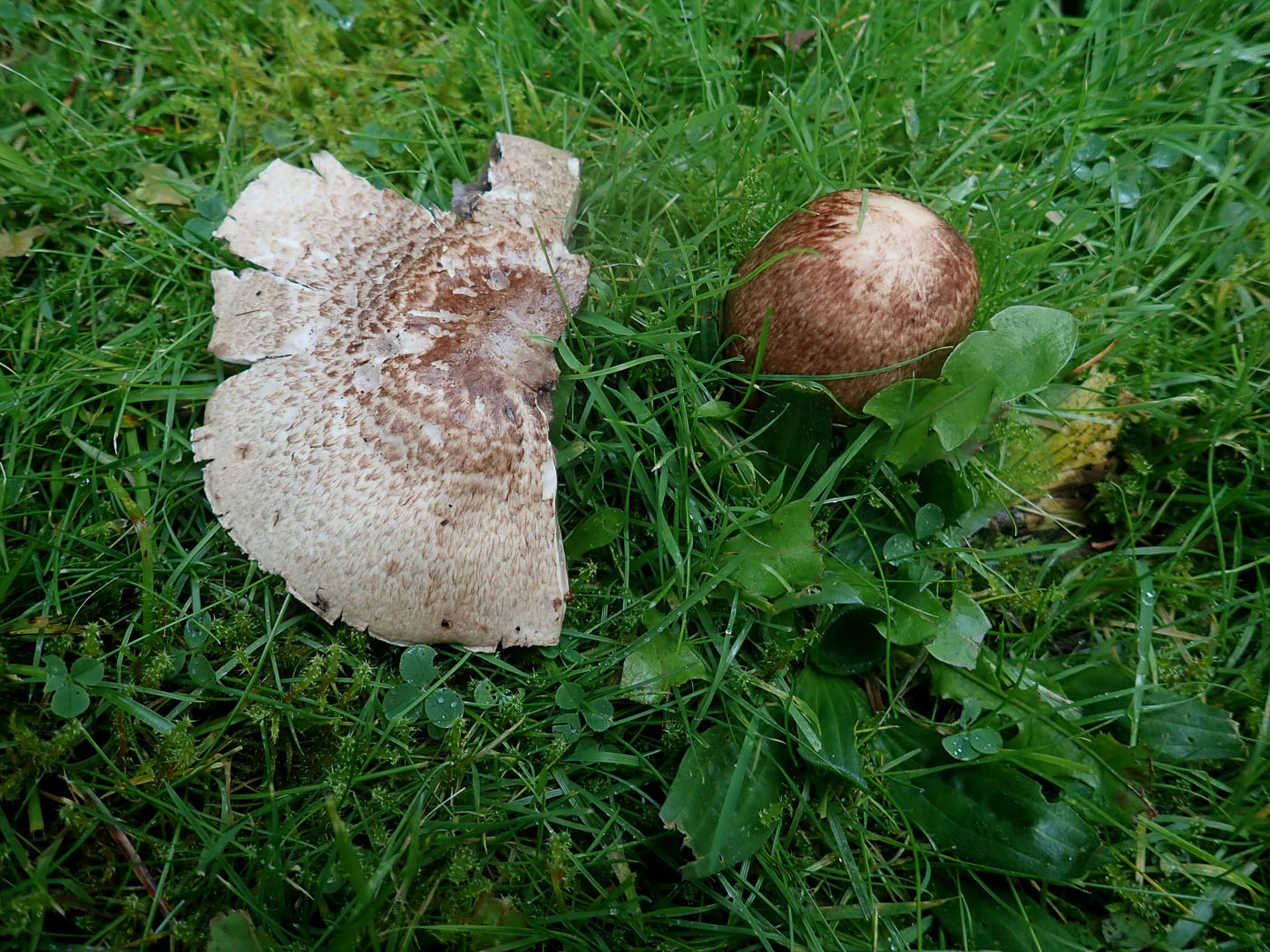
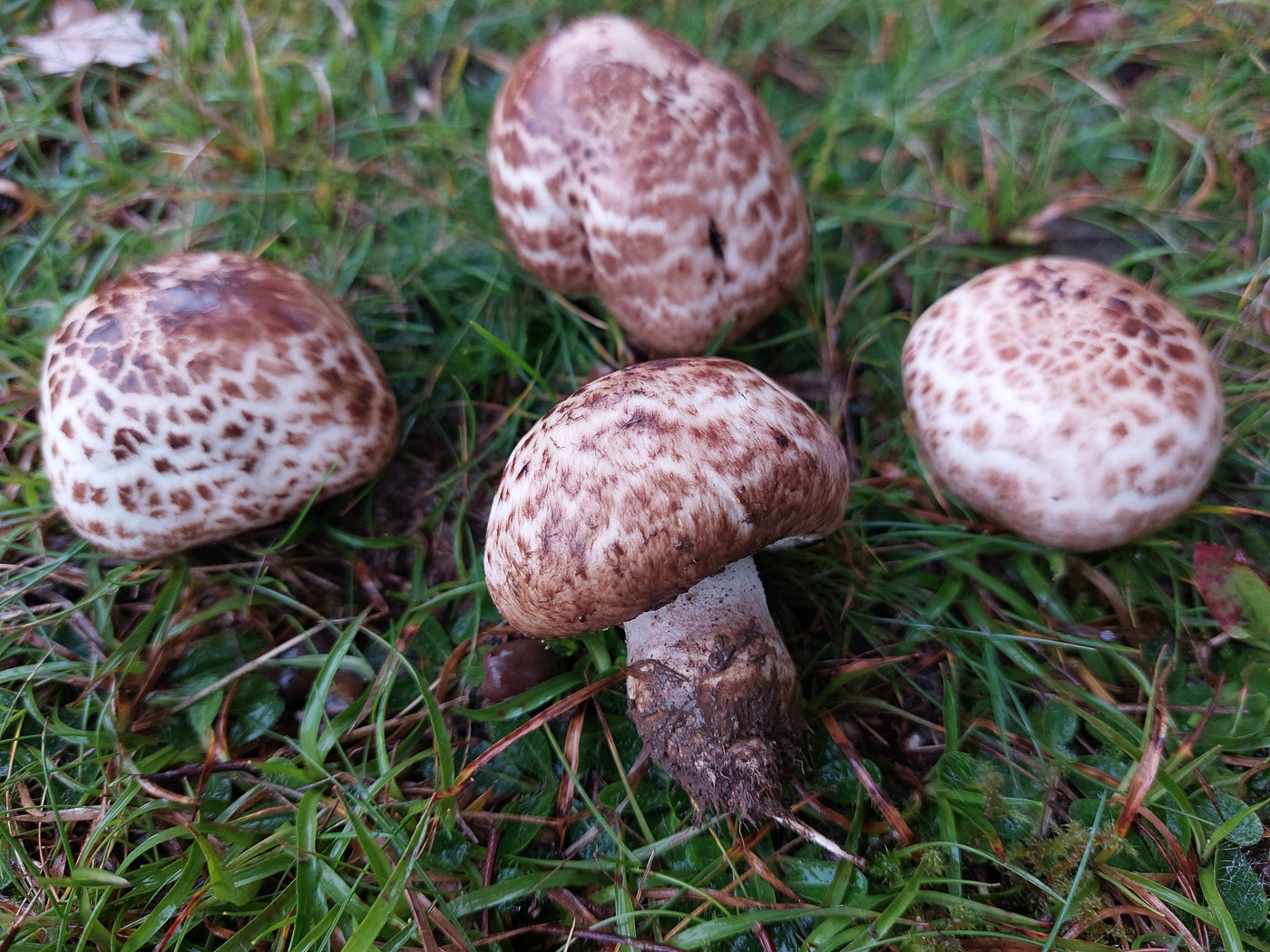 |
November 1st Agaricus impudicus (Tufted Wood Mushroom)
In Bradenham Churchyard Penny found a couple of patches with this species alongside some gravestones. It is quite similar to A. sylvaticus (Blushing Wood Mushroom) sharing the same brown scaly cap but does not redden when scratched or damaged. It is a common species and is not restricted to woodland despite its name and seems to favour churchyards. (In photo 1 the two small yellow caps - lower left - are not this species but Cystoderma amianthinum - see the entry above!) Photo 3 is of a collection made the same day in Chalfont St. Peter by Jesper Launder. See the Masterlist for a few other examples.
|
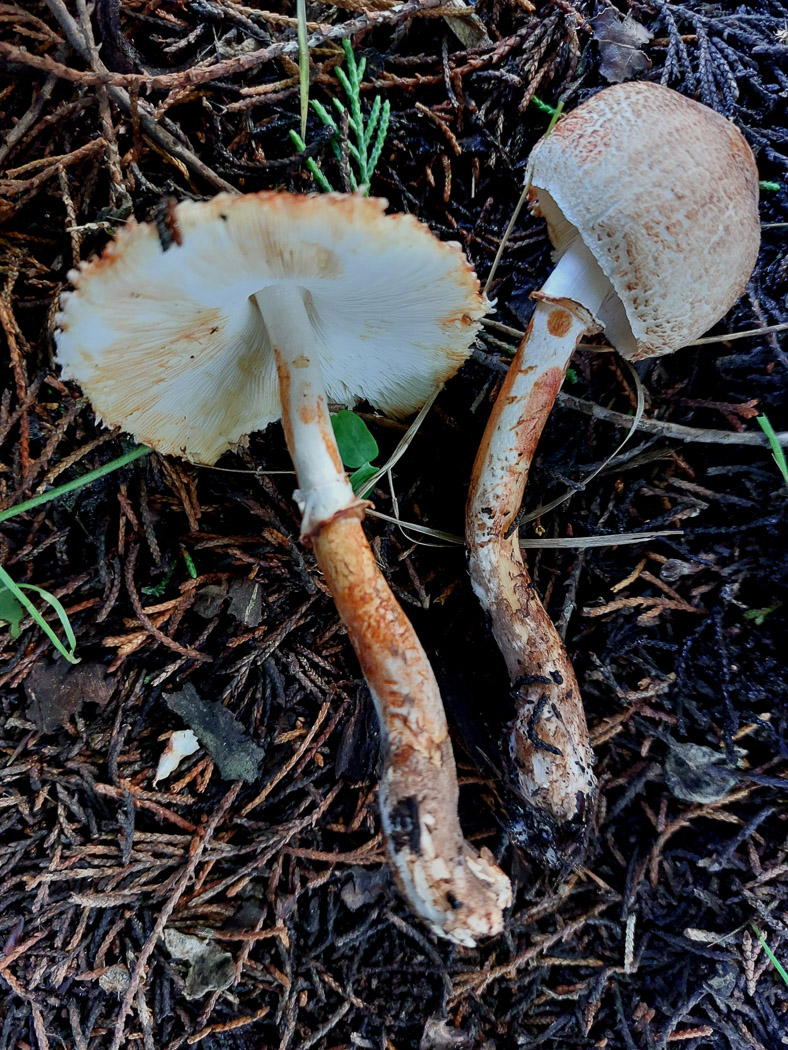
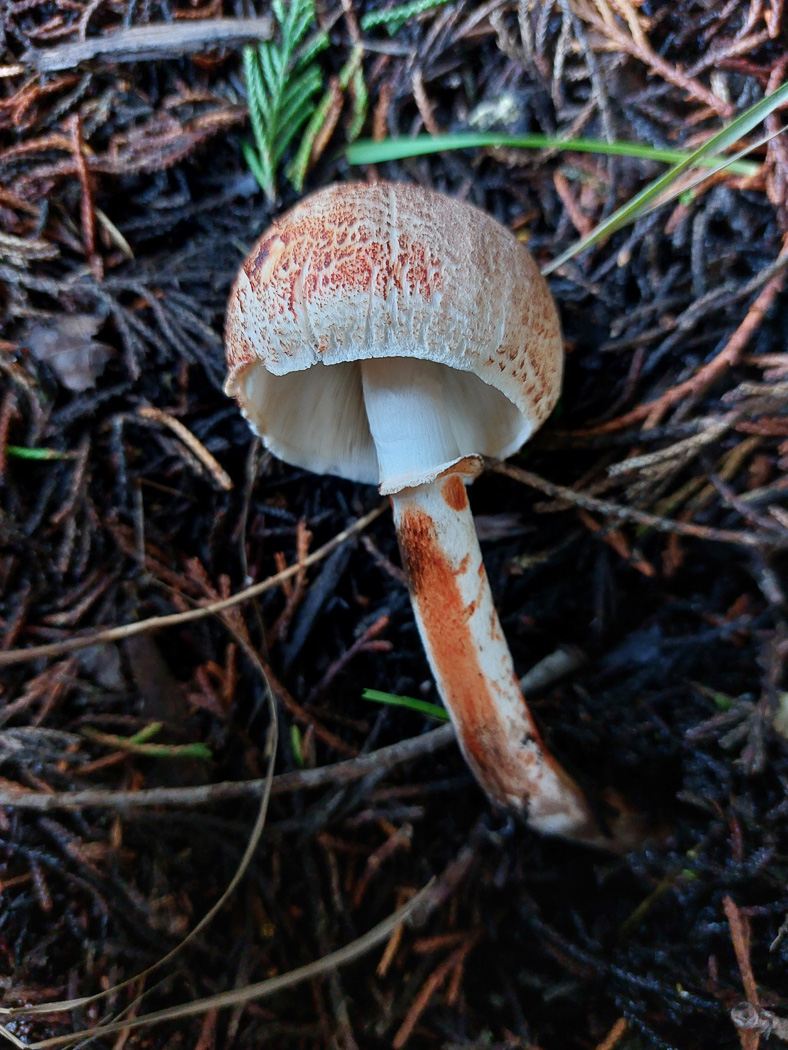 |
November 1st Leucoagaricus badhamii (Blushing Dapperling) 
In Chalfont St. Peter Jesper Launder found this distinctive pair - obviously Dapperlings with the typical free white gills but clearly strongly reddening then turning almost black when handled. A quick check at home confirmed his suspicions as to its identity. The species is not that common and seems to favour urban sites with woodchip; here it was under Leylandii. This is a new entry for Finds.
|
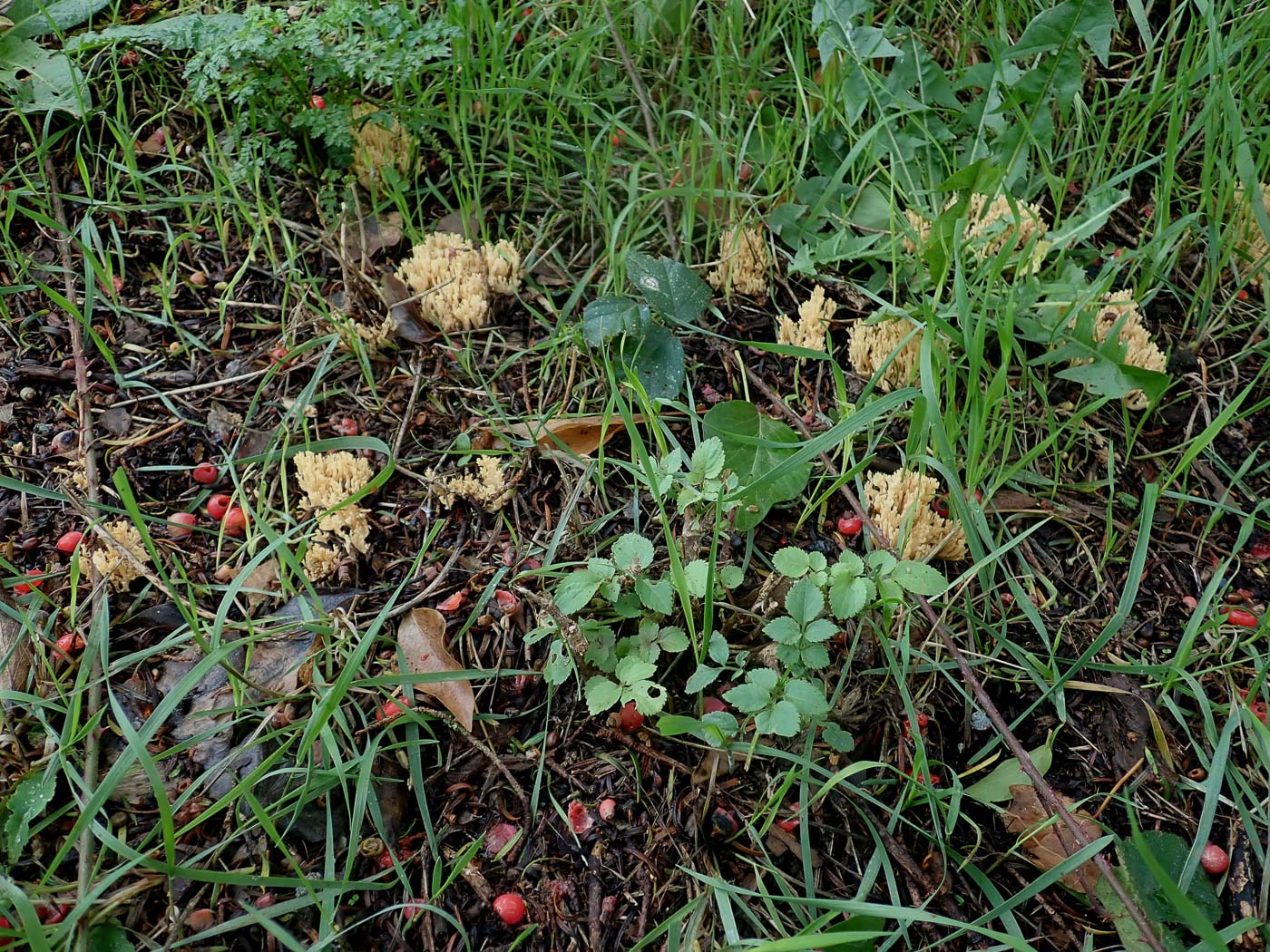
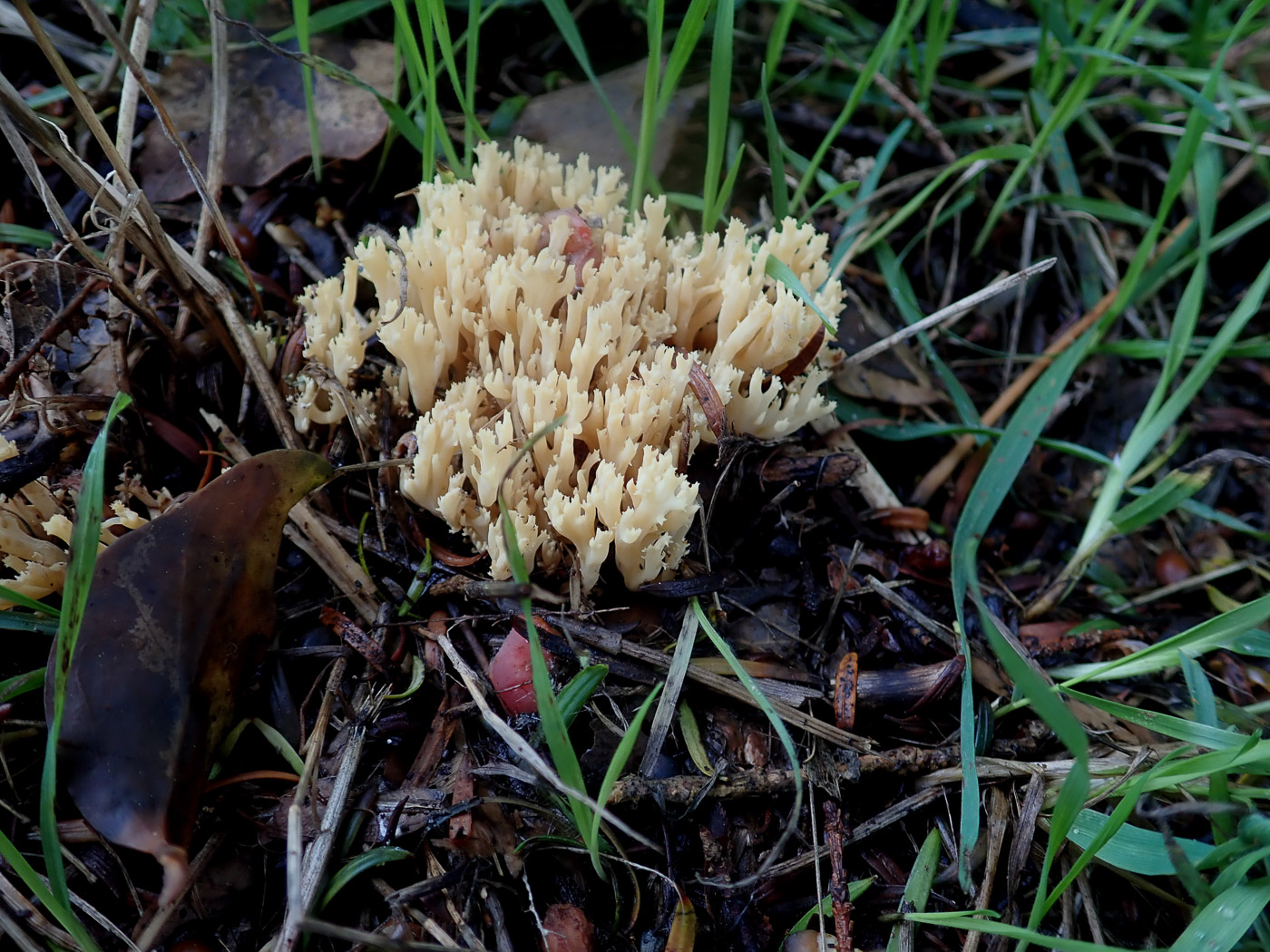 |
November 1st Ramaria cf. gracilis (a Coral with no common name) 
Under Yew at Bradenham Churchyard Penny found this pretty little Ramaria species coming up in clumps. It clearly was unlikely to be the common R. stricta (Upright Coral) which inhabits deciduous woods and Penny had recently found two different conifer species - both very similar but with different sized spores - under Spruce. There are many species of Ramaria though none except R. stricta are common. Today's collection obligingly dropped a sporeprint which matched both in colour and size with R. gracilis which she'd recently identified from Round Spring Wood. This is a conifer species though she couldn't find reference to it occurring under Yew, so a sample will be sent for sequencing. This is a new entry for Finds.
|
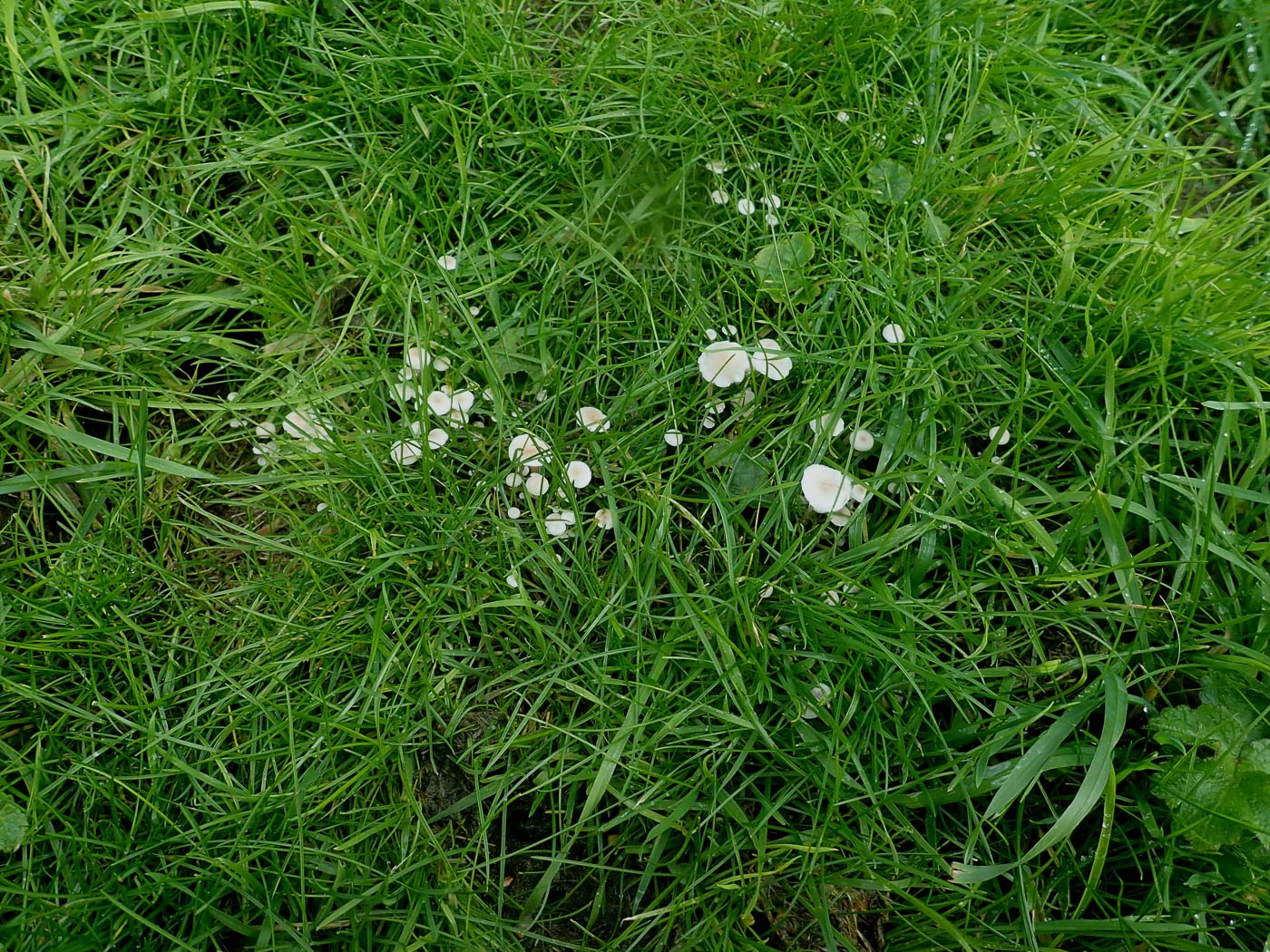
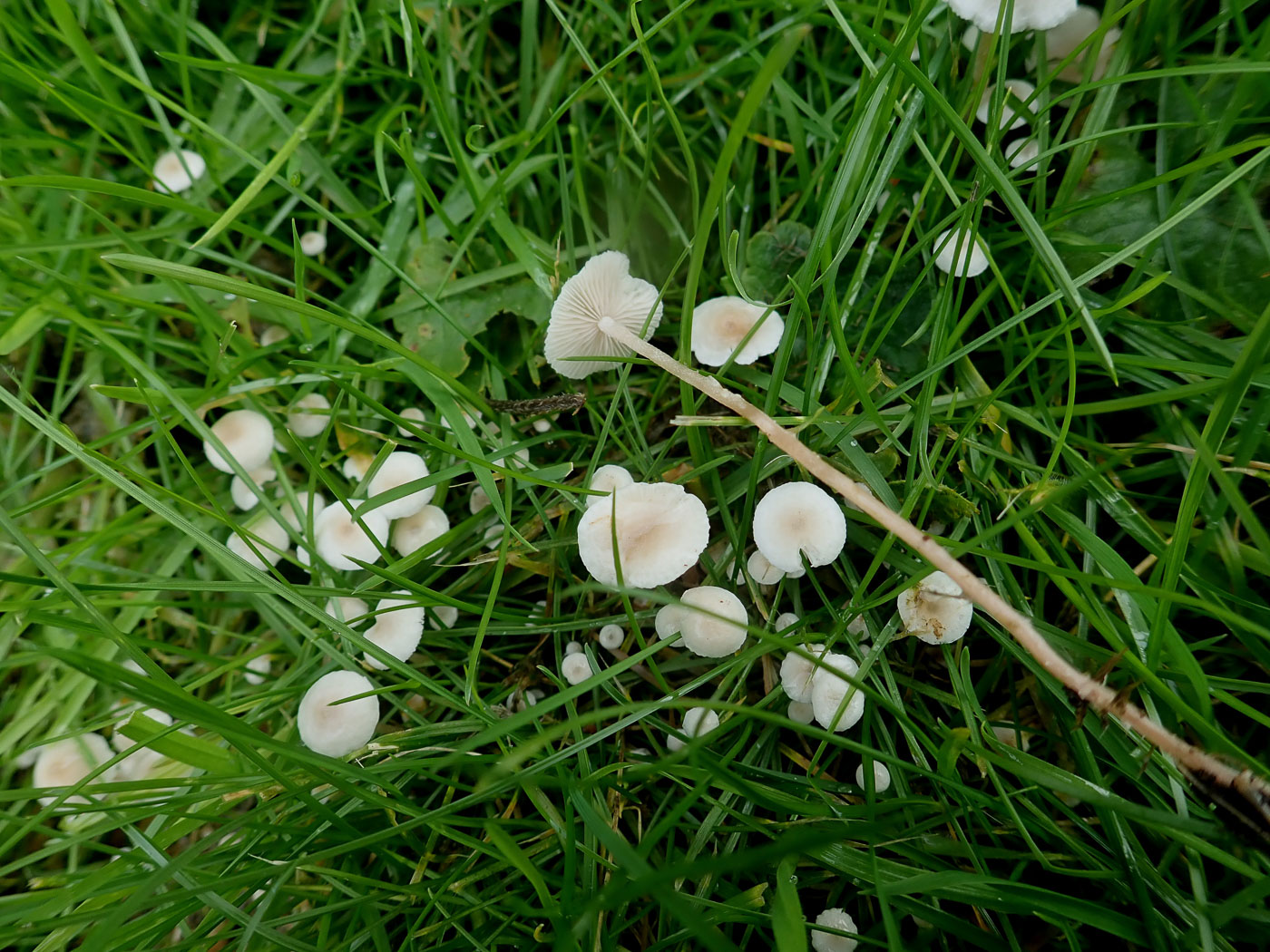
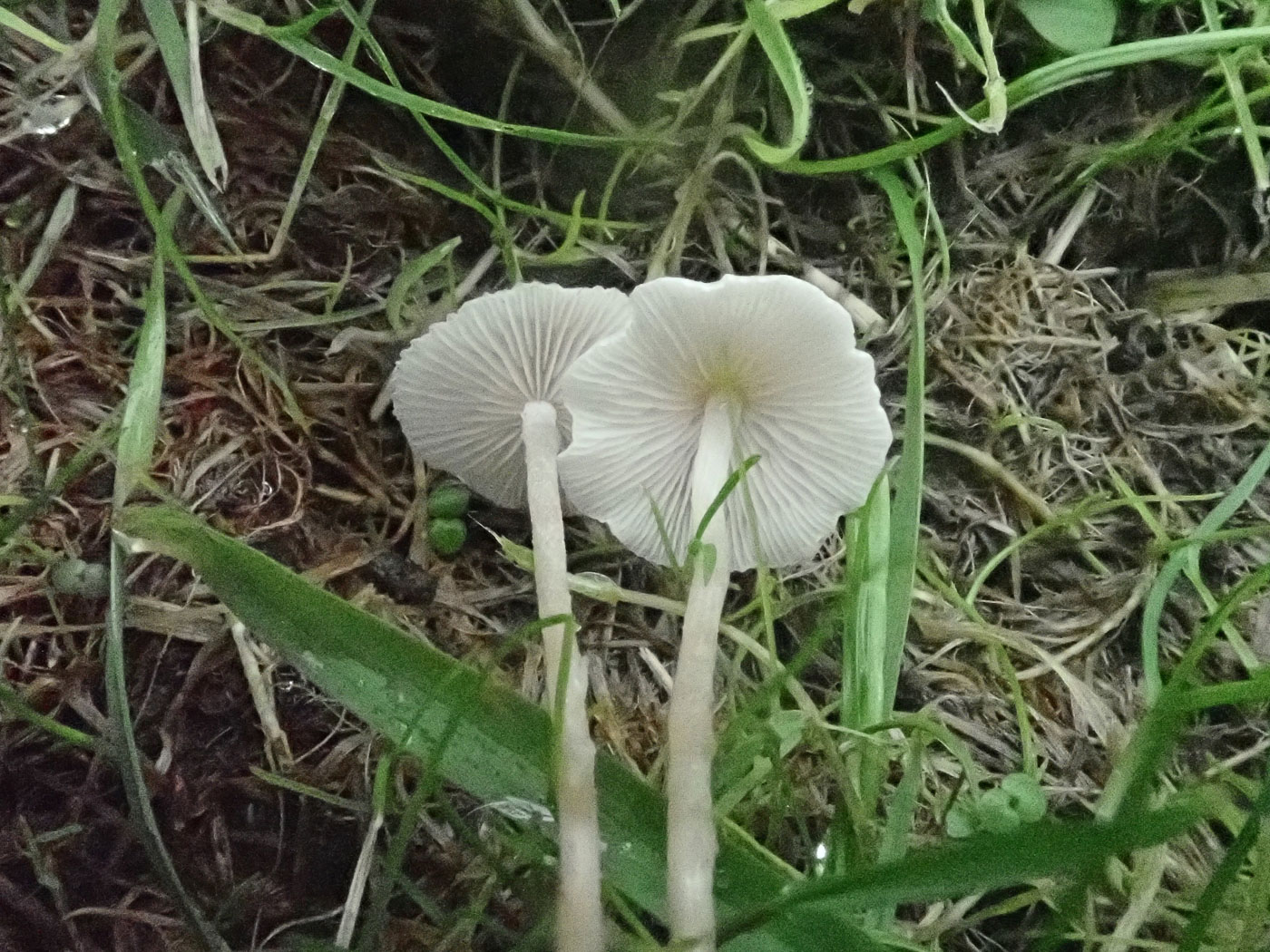 |
November 1st Collybia cf cookei (Split Pea Shanklet)
In Bradenham Churchyard Penny came across a concentrated collection of a small white-capped Mycenoid species in thickish grass which at the time completely foxed her. To her they just didn't have the 'jizz'of Mycena, nor had she come across such a large collection so closely clustered in grass before. It was not until working on it at home that the light dawned that this could well be one of the three tiny species of Collybia which grow on the remains of old fungi. This made sense because this particular part of the churchyard is regularly covered in a huge ring of Lepista nuda (Wood Blewit) and no doubt there would be fungal remains aplenty just here. Unfortunately the best way to separate the three possible Collybia species, all of which are uncommon, is to carefully examine the stem base for signs of the presence of a sclerotia (a tiny tuber) but because she'd found them in thick grass and hadn't recognised the genus at the time Penny had not thought to examine the ground beneath for this evidence. Hence the cf here meaning there is some doubt over the species, and she'll have a sample sequenced in the hope of nailing it. See the Masterlist for two entries of another of these unusual species.
|
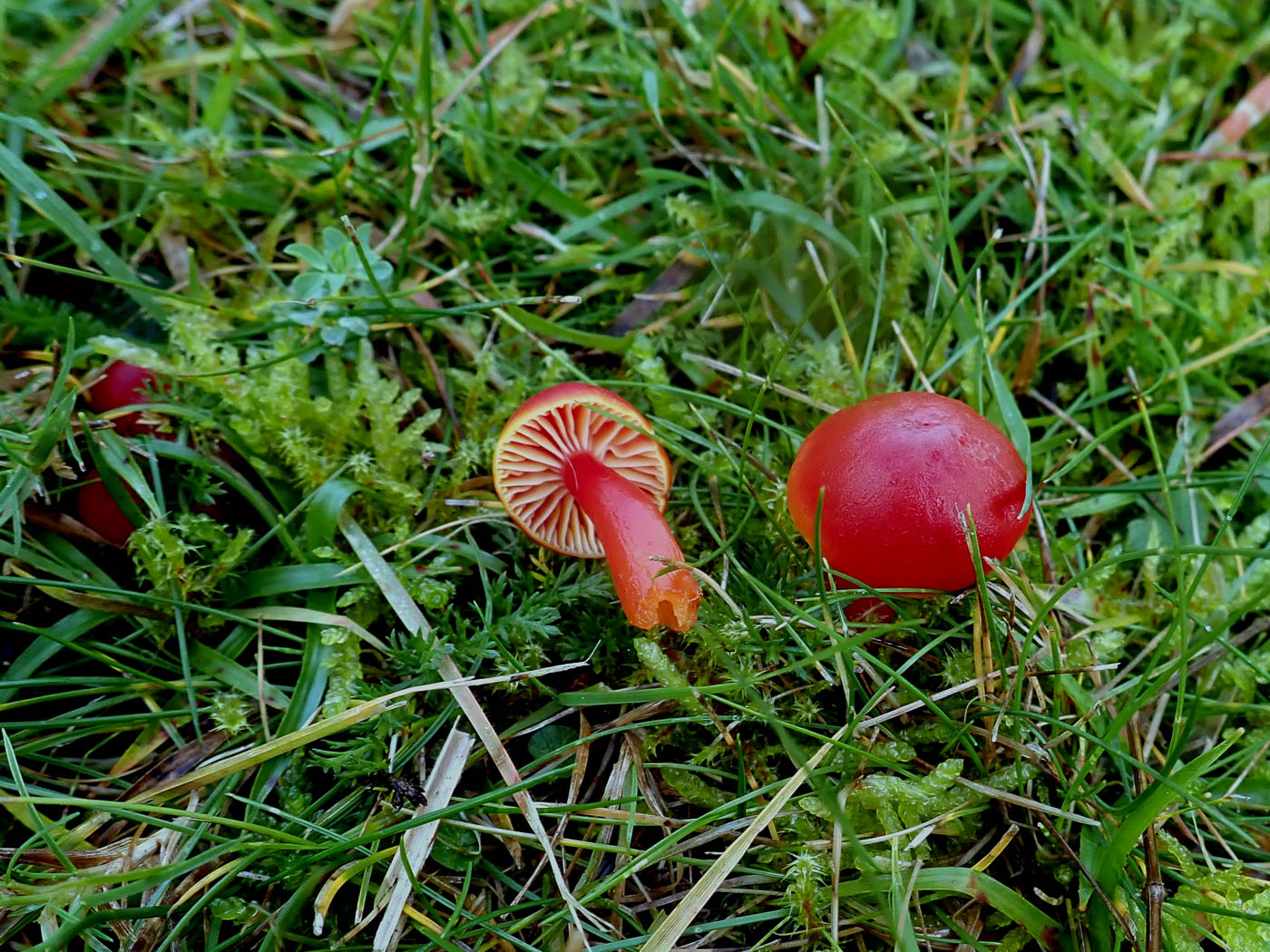 |
November 1st Hygrocybe coccinea (Scarlet Waxcap)
In Bradenham Churchyard Penny saw her first examples of this common Waxcap just emerging in a grassy bank where they usually grow at this time. It is one of our commonest Waxcaps and has one of the brightest red caps too - always a joy to find. See the Masterlist for further entries.
|
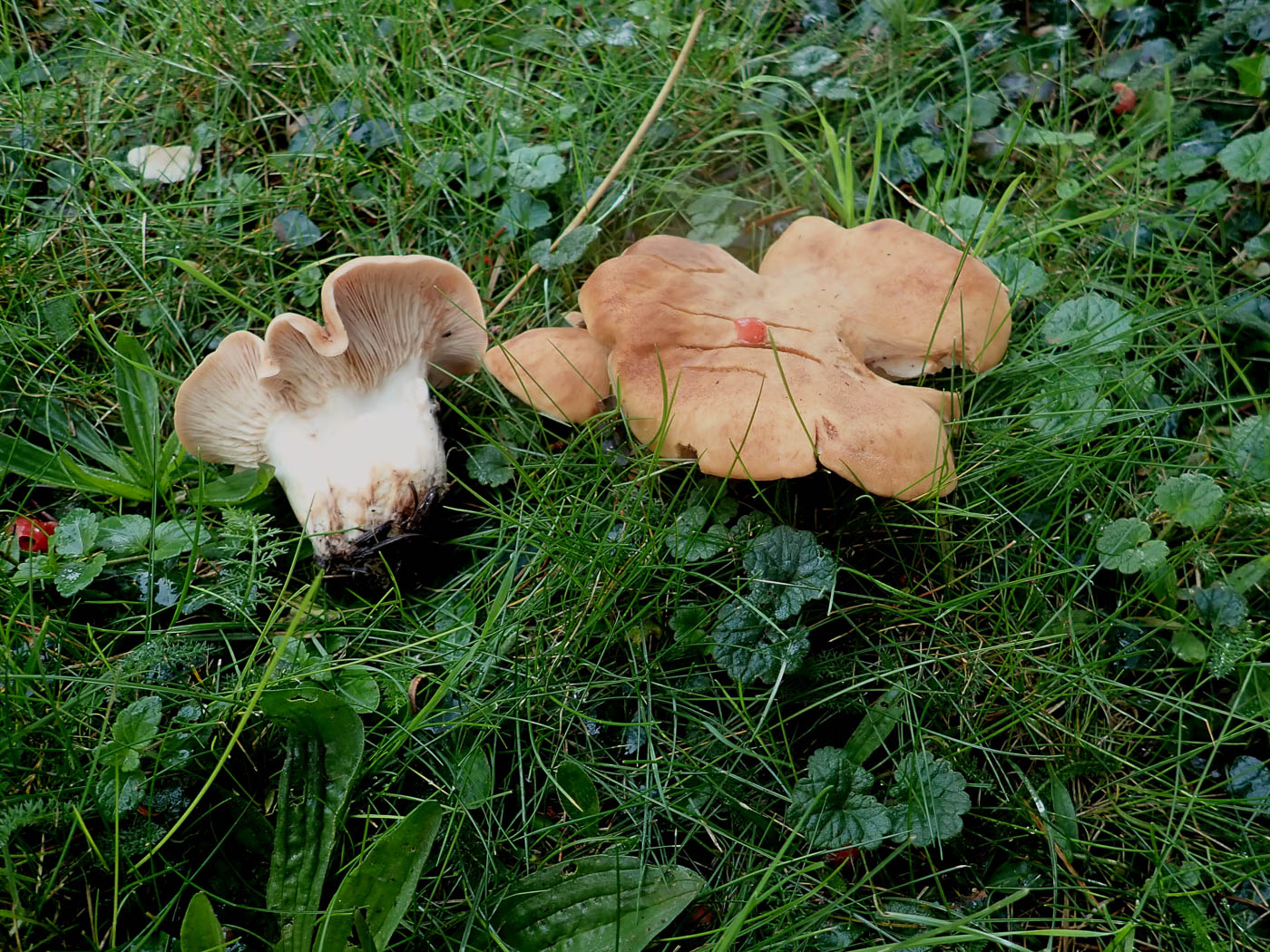 |
November 1st Rhodocybe gemina (Tan Pinkgill)
In Bradenham Churchyard Penny was pleased to find this quite unusual species coming up under the Yew in a couple of places where she's found it in previous years. (In fact there's Yew berry having fallen onto the cap here!) This is a large chunky mushroom and seems to favour grassy path edges - we see it regularly in Rushbeds Wood though do not have that many sites for it. See the Masterlist for further entries.
|
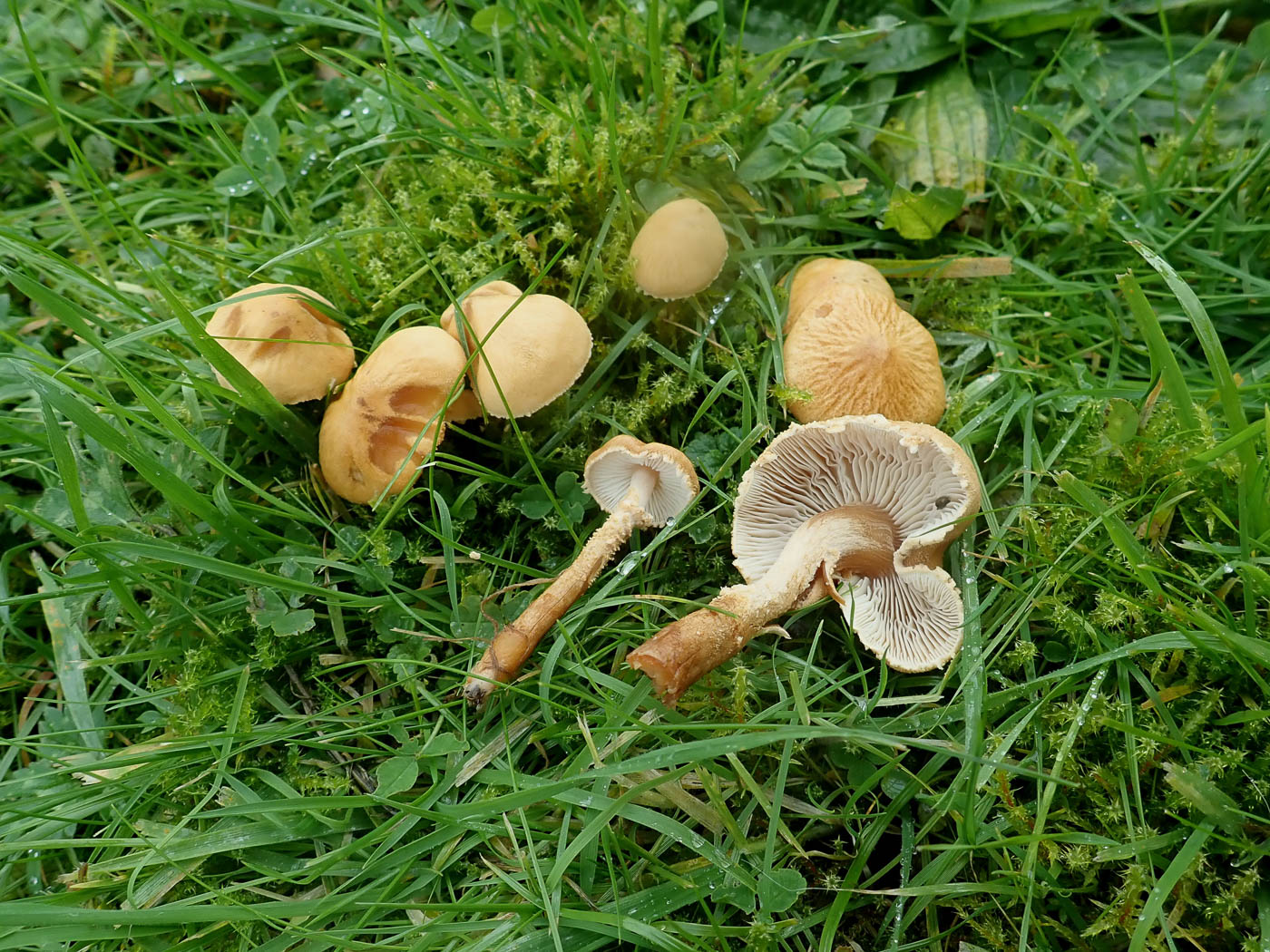 |
November 1st Cystoderma amianthinum (Earthy Powdercap)
In Bradenham Churchyard Penny found good numbers of this grassland species showing nicely despite the rainy conditions. It is an attractive species and a regular fruiter here and was very near to a patch of Agaricus impudicus amongst some gravestones (in fact the entry below of that species includes a couple of Cystoderma caps - it seemed a shame to disturb and remove them just for the photo! See the Masterlist for a few other examples.
|

 |
November 1st Agaricus impudicus (Tufted Wood Mushroom)
In Bradenham Churchyard Penny found a couple of patches with this species alongside some gravestones. It is quite similar to A. sylvaticus (Blushing Wood Mushroom) sharing the same brown scaly cap but does not redden when scratched or damaged. It is a common species and is not restricted to woodland despite its name and seems to favour churchyards. (In photo 1 the two small yellow caps - lower left - are not this species but Cystoderma amianthinum - see the entry above!) See the Masterlist for a few other examples.
|
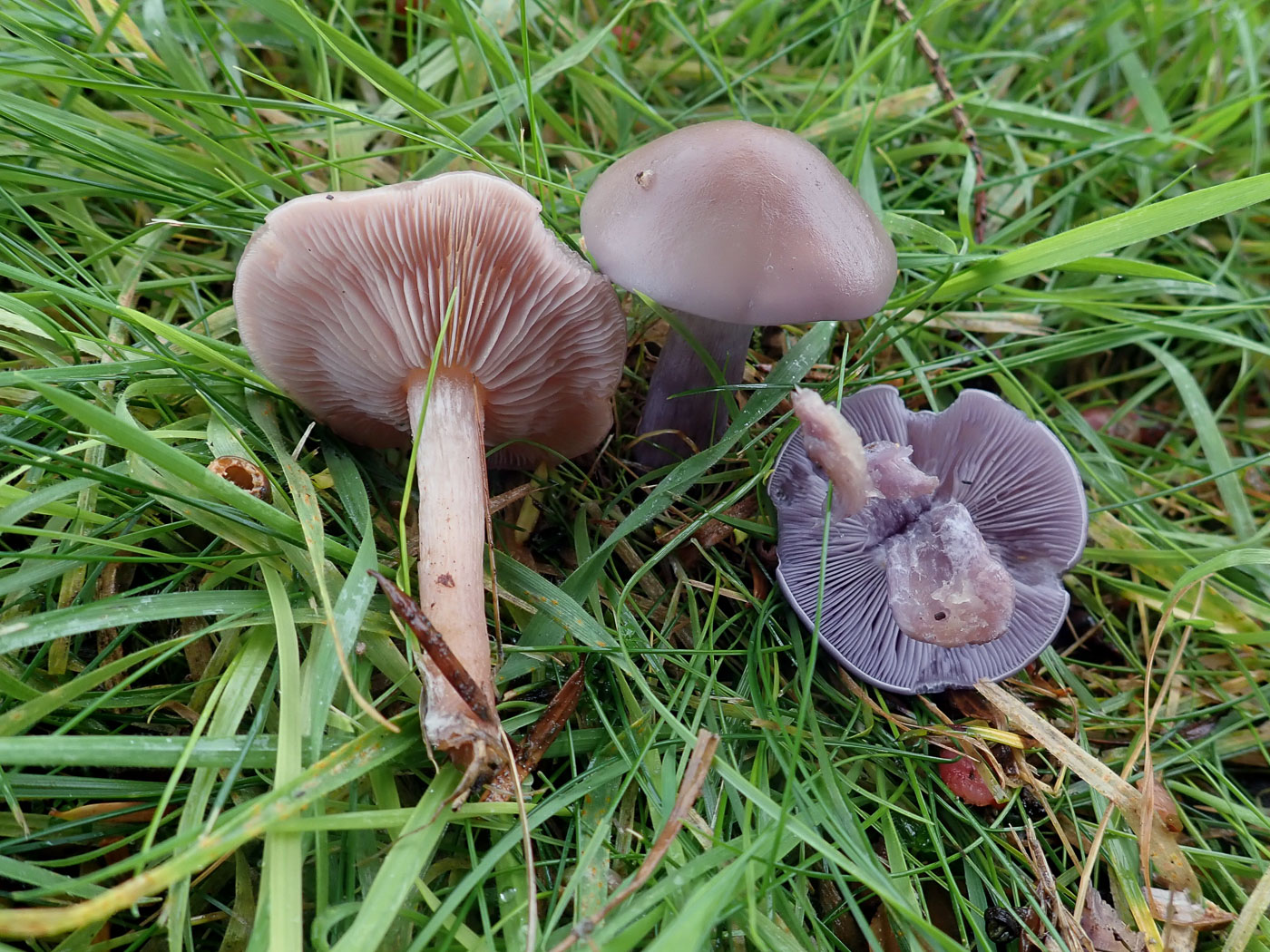 |
November 1st Lepista sordida (Sordid Blewit)
In Bradenham Churchyard Penny found quite a few of these coming up in thickish grass. Smaller than the closely related L. nuda (Wood Blewit) which also frequents this site but was not up yet, it has a duller darker general appearance and can lose the violet colours almost completely as can be seen in the LH example here. See the Masterlist for a few other examples.
|
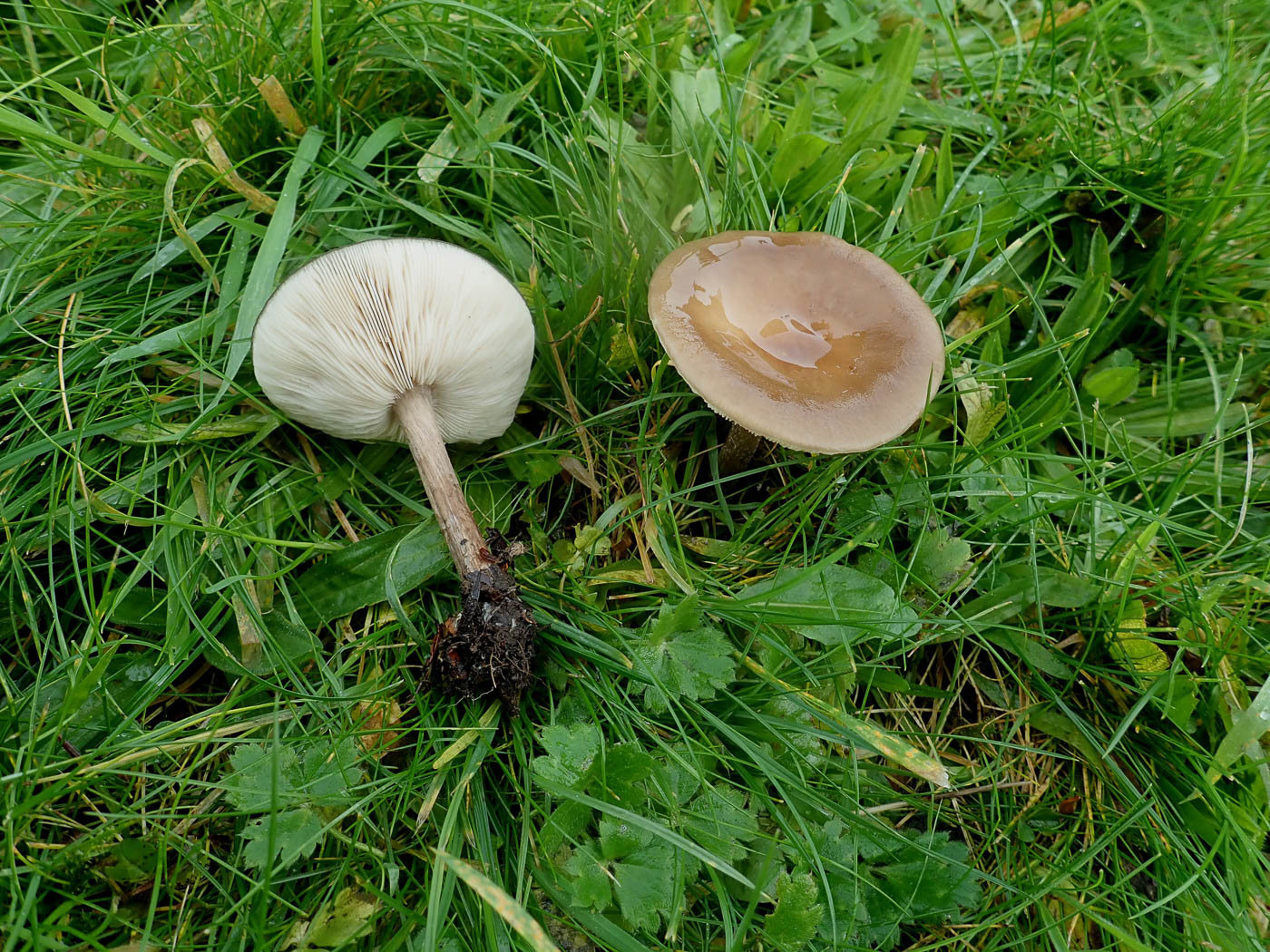 |
November 1st Melanoleuca polioleuca (Common Cavalier) 
In Bradenham Churchyard Penny found amongst many other species this mid-brown smooth capped mushrooms which often seem to confuse - they look pretty similar to several other species and lack much to distinguish them at first glance but tend to have a slightly raised rounded cap centre, the gills are off white and somewhat crowded and the stem is fibrous and often has dark flesh in the base (if you split it open). A sporeprint reveals strongly amyloid spores which are finely ornamented and the gill cells are certainly distinctive with tips like harpoons. The species favours grassy path edges in woodland glades, also grassland such as churchyards as here and is quite common. See another example in Finds 2020 October 14th.
|
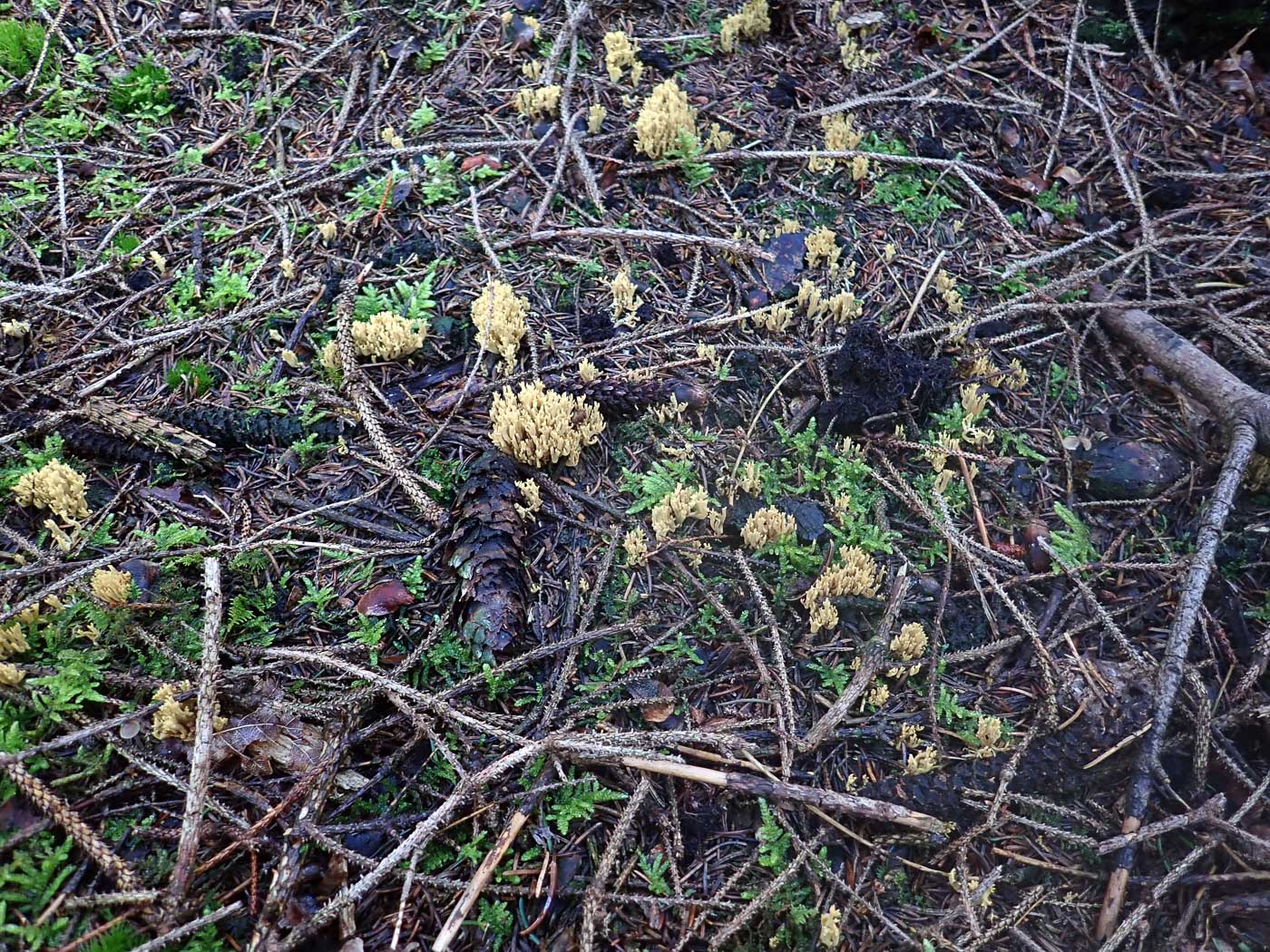
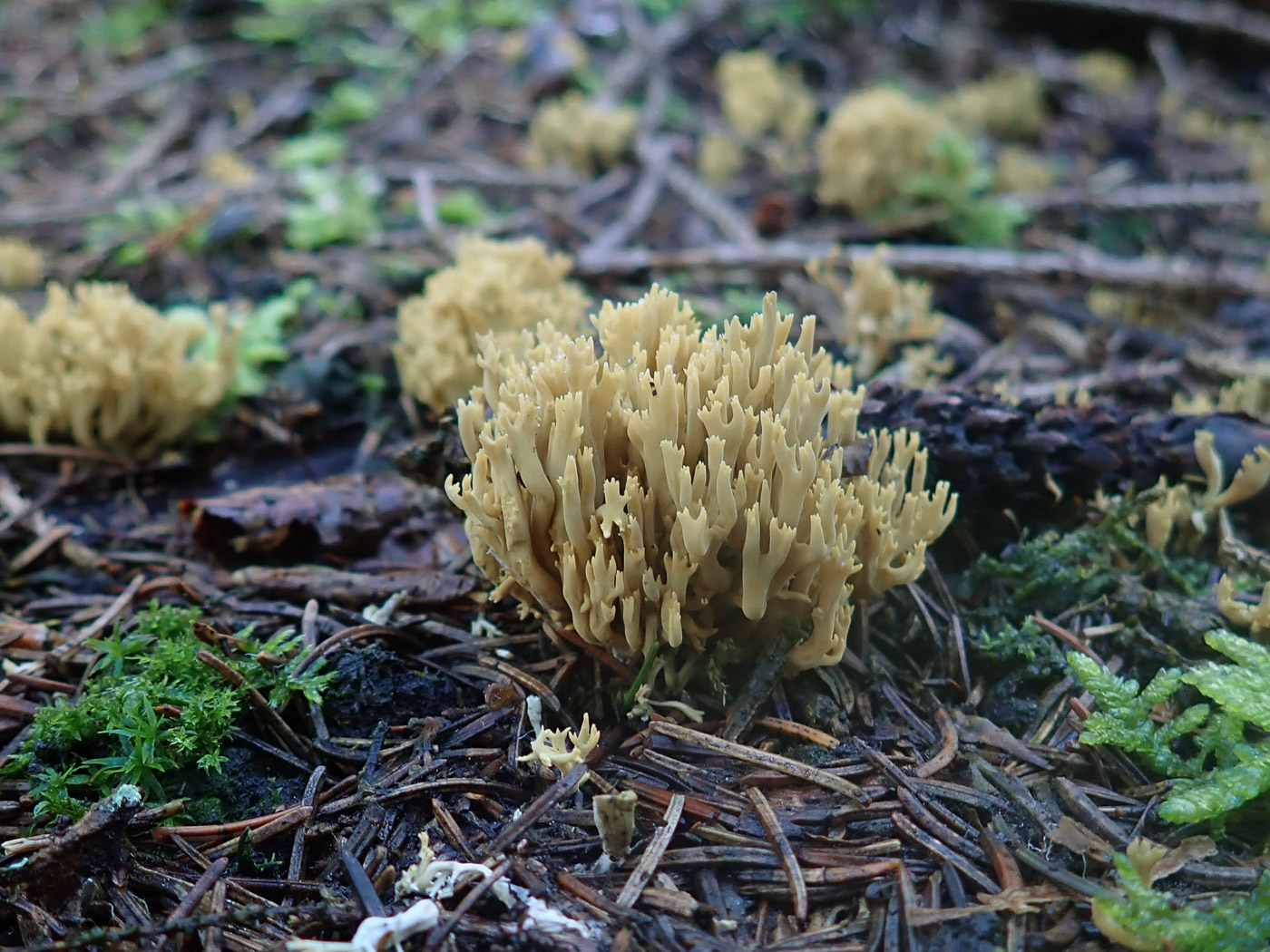 |
October 26th Ramaria flaccida (a Coral with no common name) 
In moss under Spruce in Bernwood Forest Penny found several large clumps of a Ramaria species which she recognised as different from the common R. stricta (Upright Coral) which frequents Beech litter, and suspected this would turn out to be R. abietinum which is a Spruce associate. However, working on the specimen at home she realised that (a) it was not turning green when damaged or with age which would have pointed to the commoner Spruce associate, and (b) it was developing a distinctive fruity smell. Spore size also confirmed that this had to be the less frequently recorded R. flaccida. Checking in our database she then found two previous county records, one of which was from this site in 2008 identified by Derek - always reassuring when this happens! This is a new entry for Finds and a sample has been dried for DNA sequencing.
|
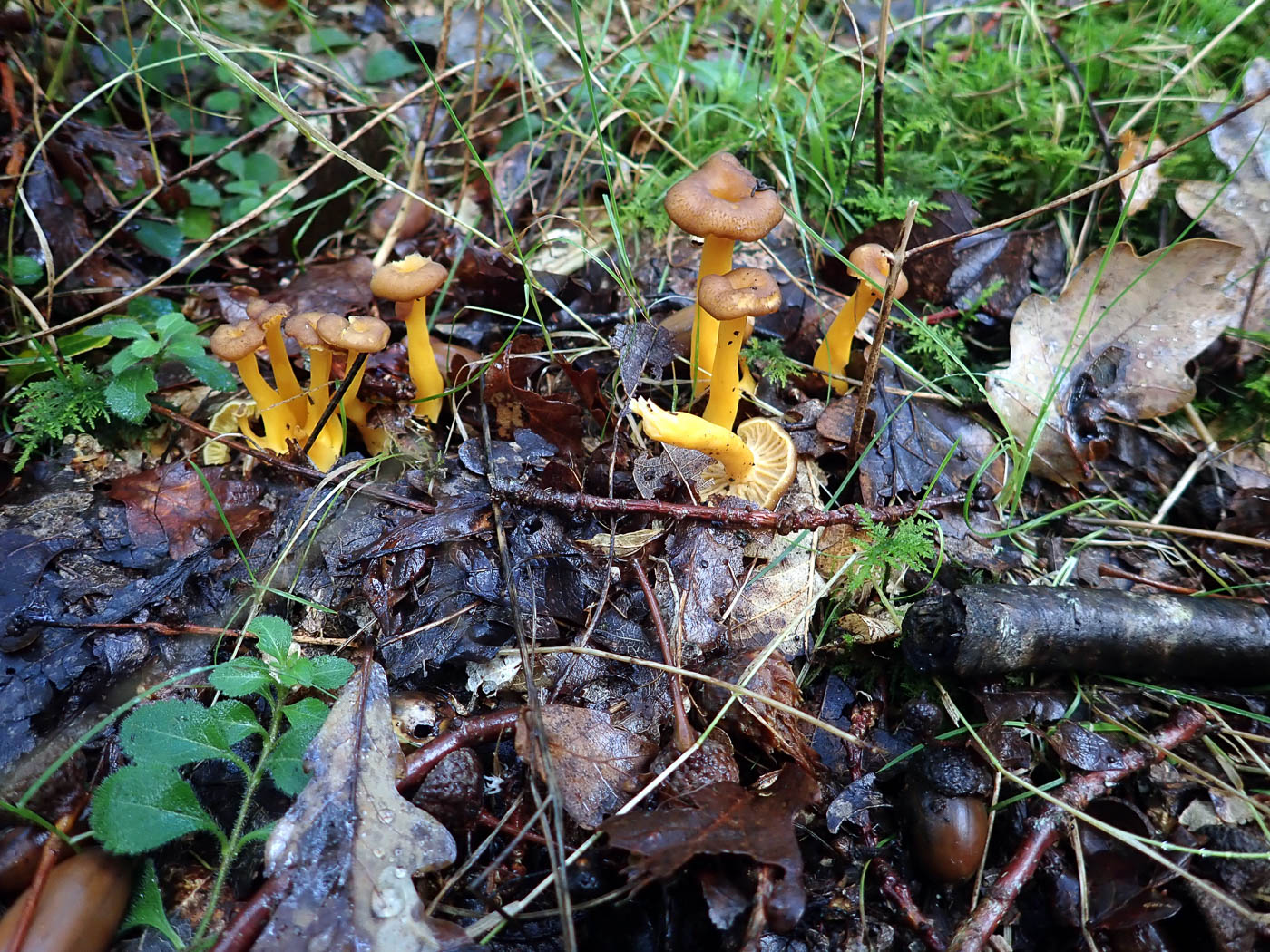
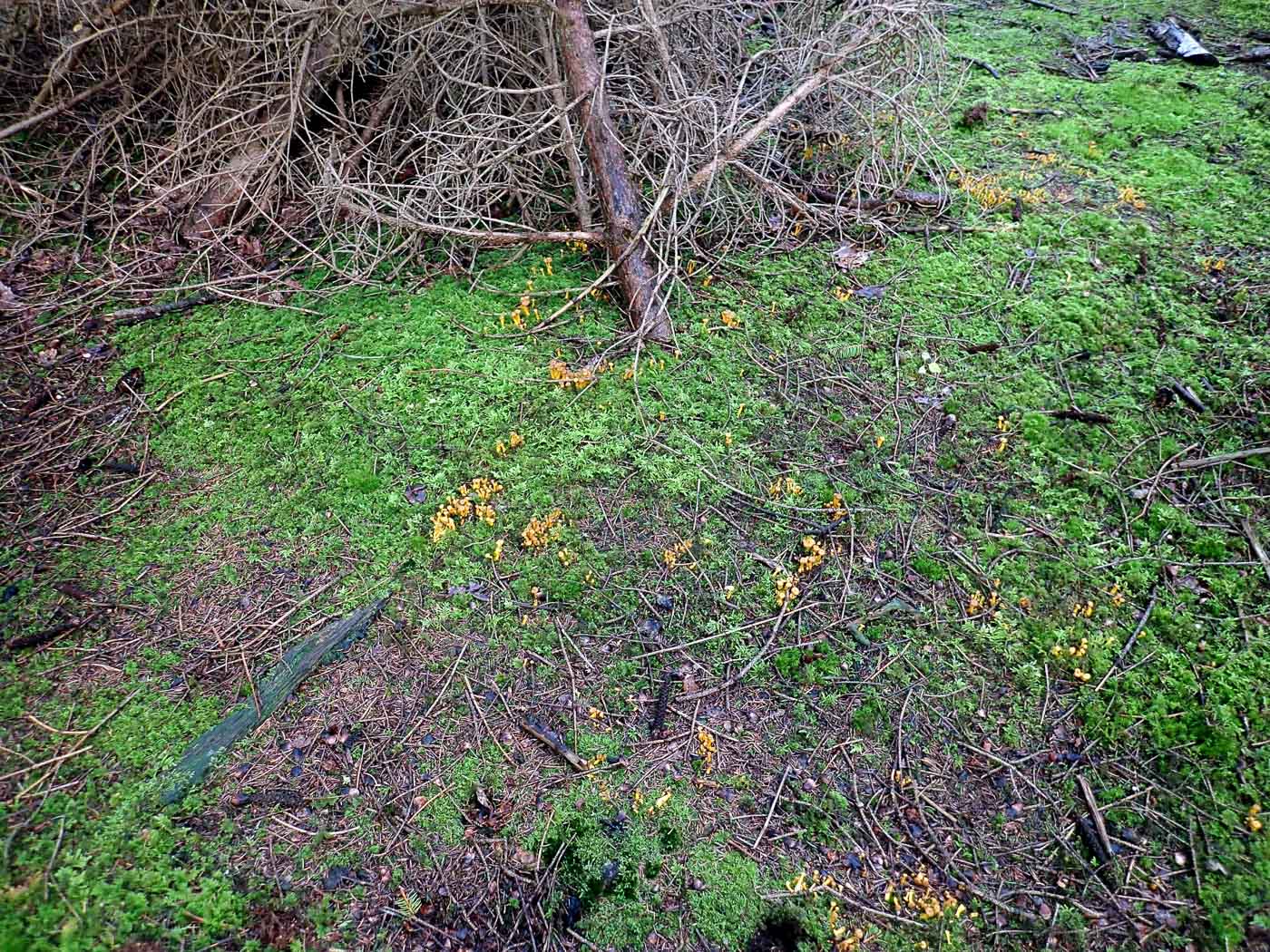
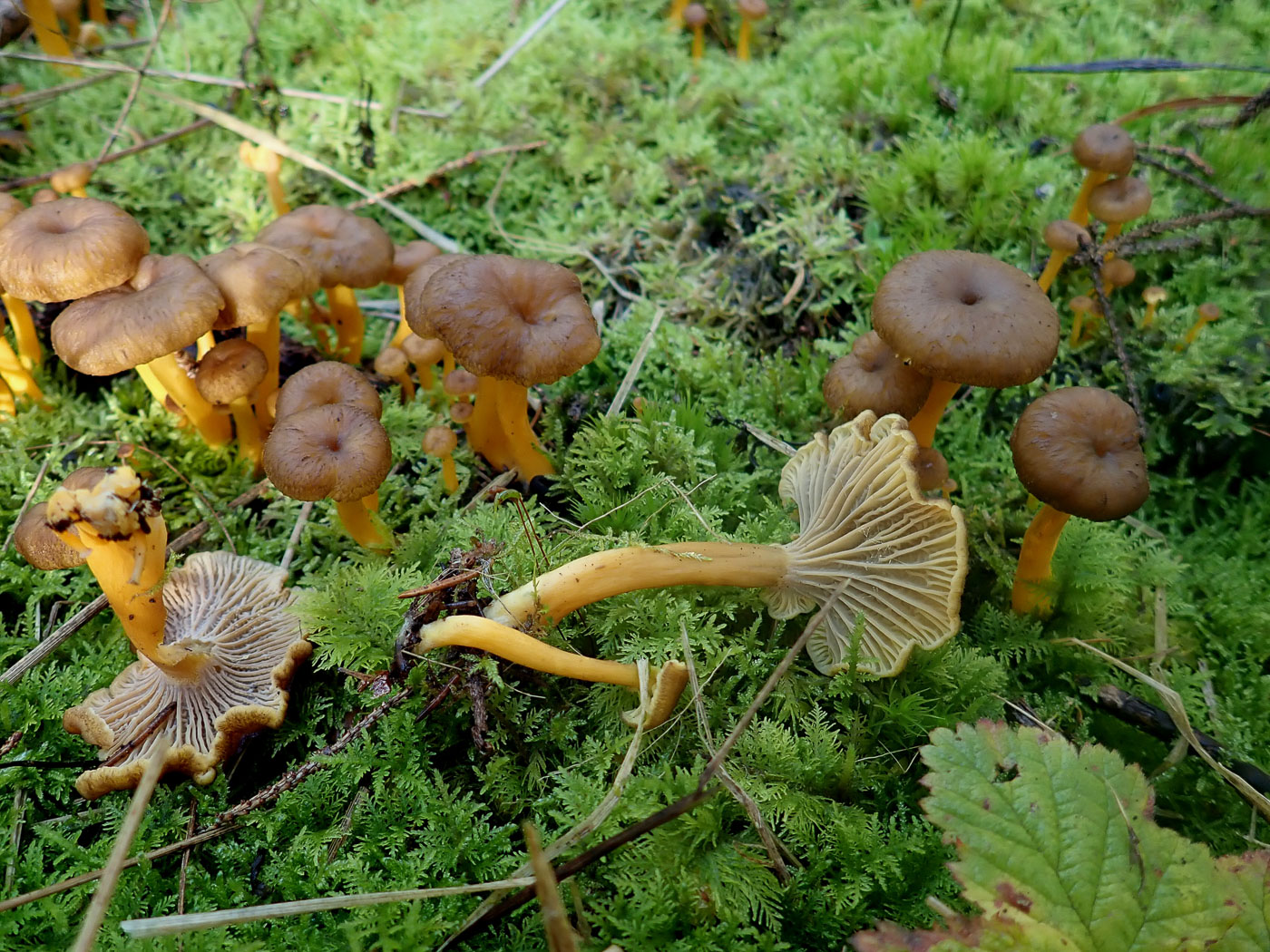 |
October 26th Cantharellus tubaeformis (Trumpet Chanterelle)
In Bernwood Forest Penny first came across this species just emerging under Oak (photo 1), but further on under Spruce it was coming up in droves (photo 2) and eventually some mature examples were encountered (photo 3). Another common name for the species was Winter Chanterelle referring to its often late appearance in the season, however it was surprisingly one of many autumn species to be found here as early as July this year. See the Masterlist for previous
|
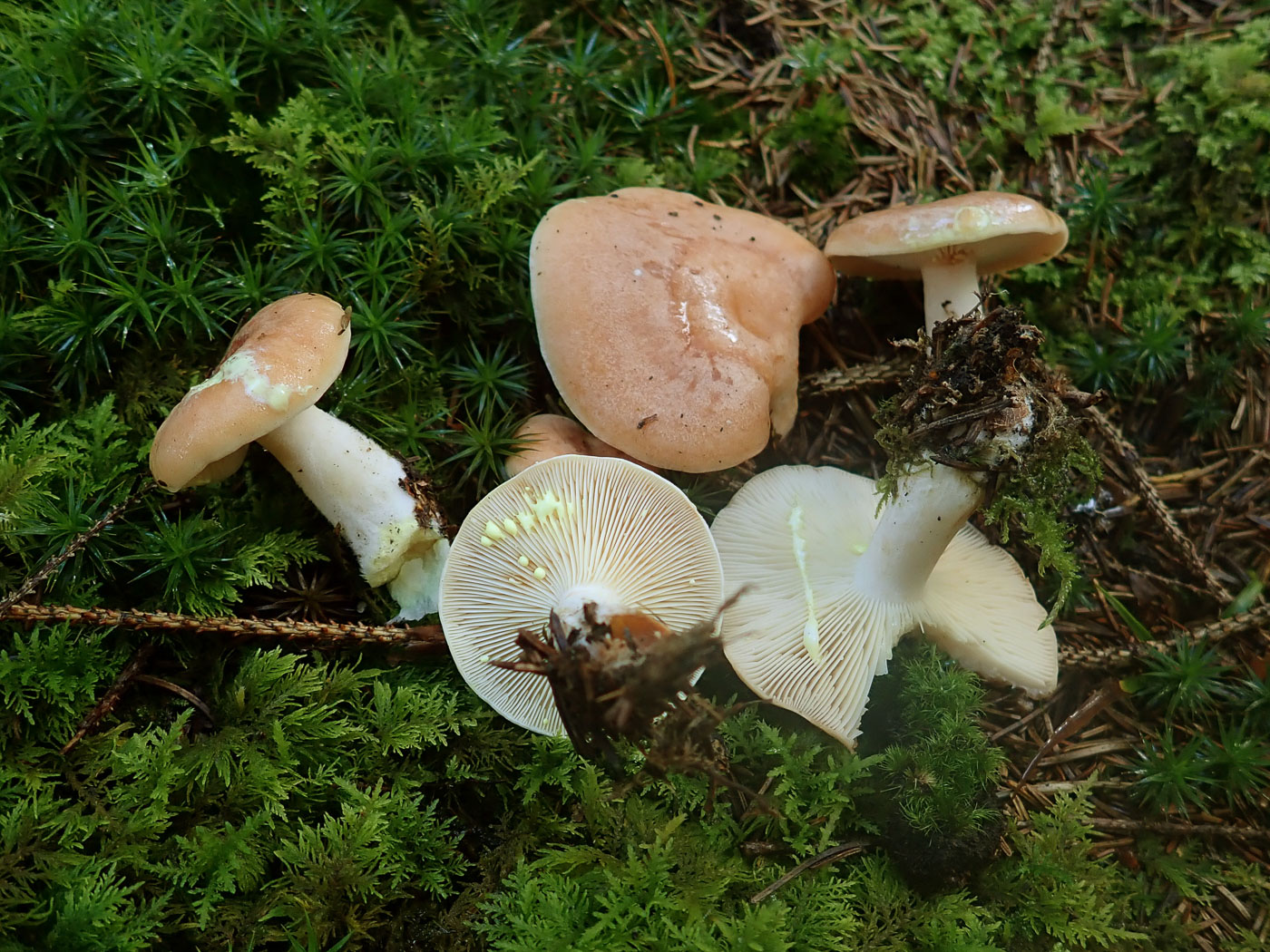 |
October 26th Lactarius chrysorrheus (Yellowdrop Milkcap)
In an area of Bernwood Forest dominated by Picea Penny was surprised to find this Oak associate until she realised that there were a few standing Oaks present, also some stumps around. The species has been few and far between so far this season and is never as common as other Oak associating Milkcaps but is an easy one to name in the field once the milk starts to turn from white to bright yellow - not on a hanky as in L. tabidus but on the gills wherever it is damaged though this can take a few minutes. The cap could be described as a rather pink version of L. quietus - ie with some zonal markings, though the stem is more or less white. See the Masterlist for some other entries.
|
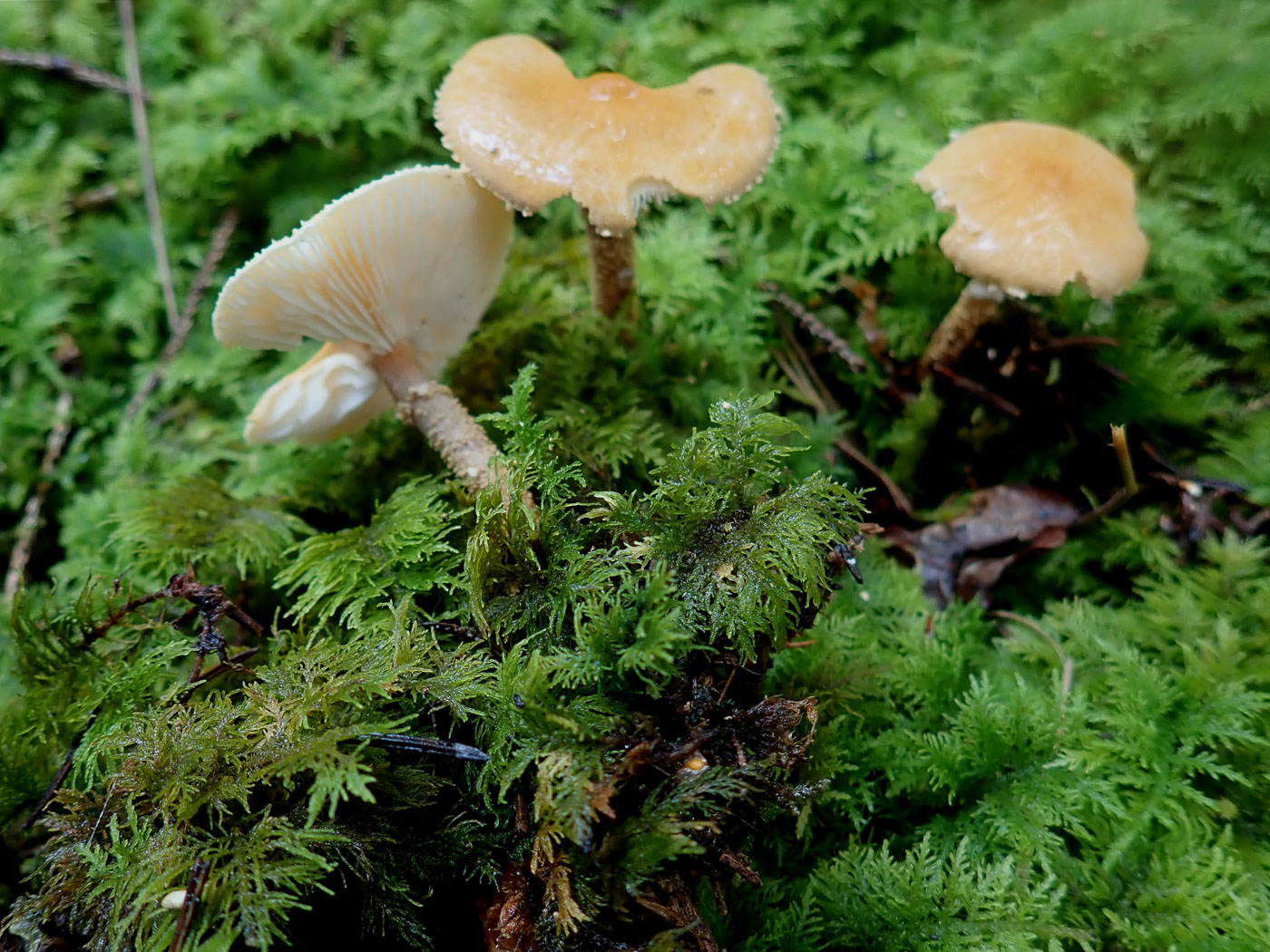 |
October 26th Cystoderma amianthinum (Earthy Powdercap)
In moss under Spruce Penny noticed just a few of these Powdercaps and was hopeful that they might turn out to be the rare Cystoderma jasonis (Pine Powdercap) for which the habitat here was spot on. Not so, however: the diagnostic little brick-shaped conidia were missing from the cap cuticle, thus confirming its ID as the much more common species. Commonly found in grassy areas rather than woodland, this is by no means the first time Penny's been disappointed when coming across it in moss in conifer areas. See the Masterlist for a few more entries.
|
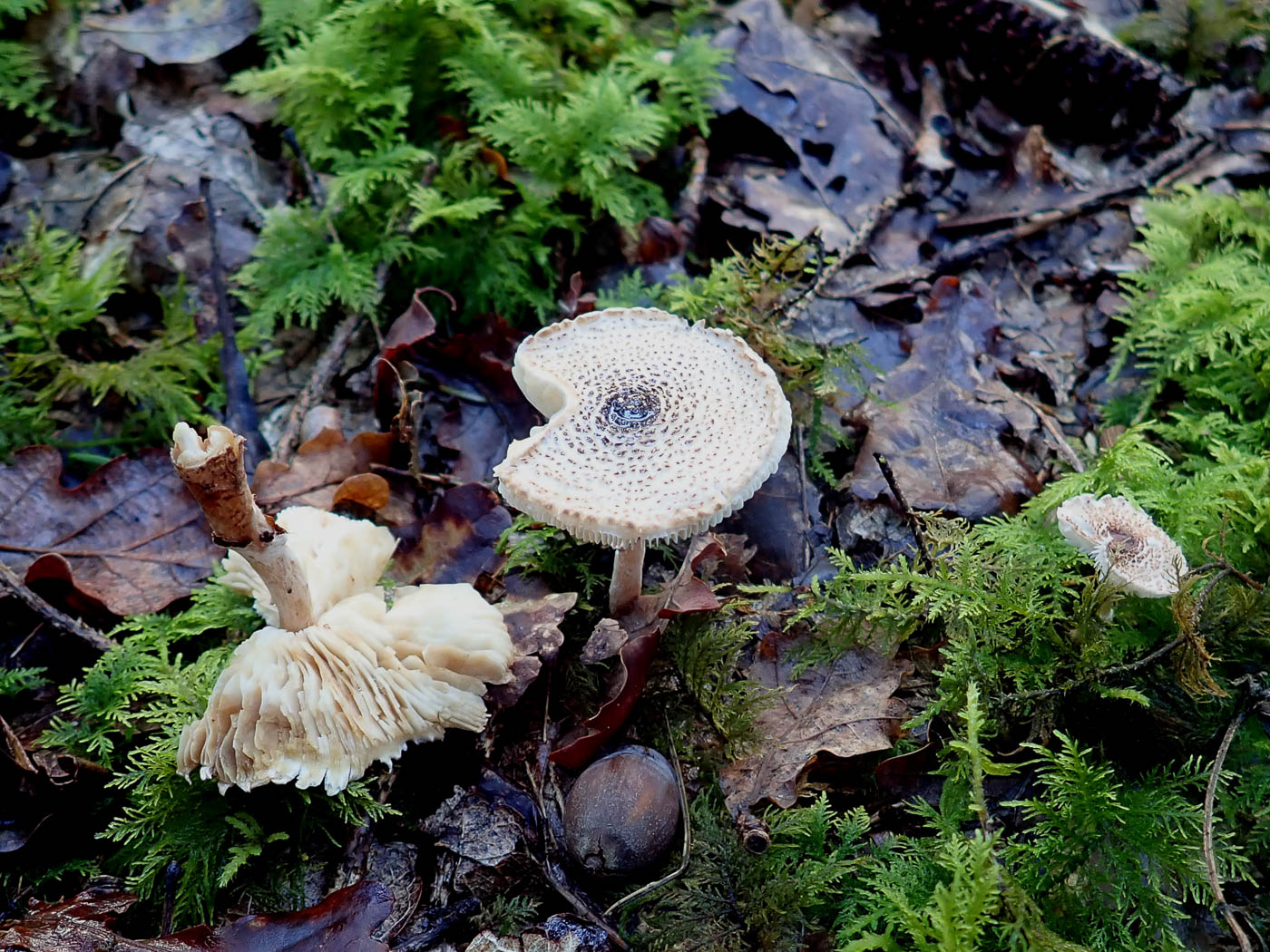 |
October 26th Lepiota felina (Cat Dapperling) 
Under Spruce and Oak in Bernwood Forest Penny spotted this small to medium sized Lepiota, the surprisingly dark cap center of which caught her attention. Though quite similar in appearance and smell to the much more common L. cristata (Stinking Dapperling) this occasional species not only has differently shaped spores but dark brown to black scales which also mark the edge of the ring on the stem. This is a new entry for Finds.
|
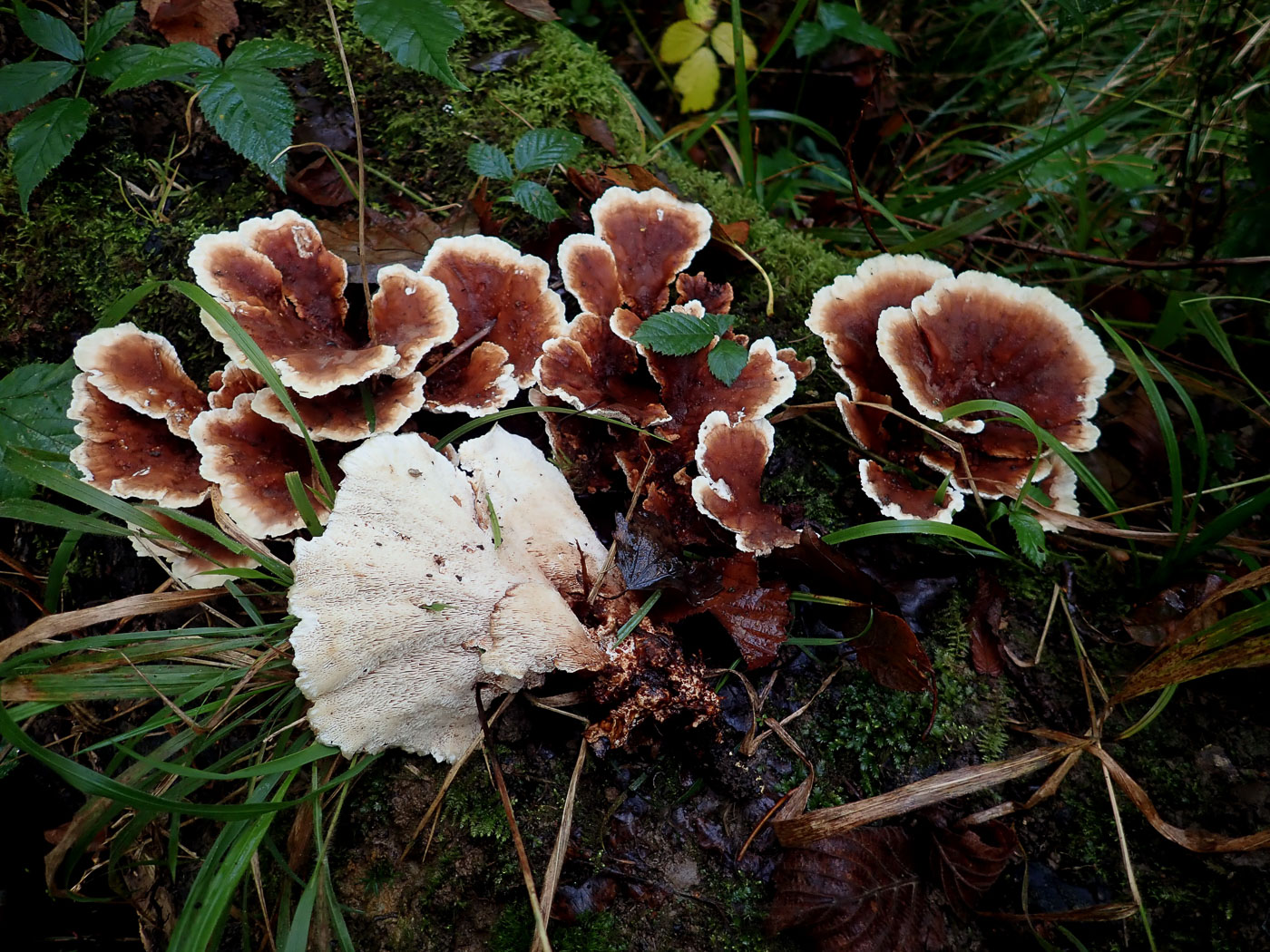 |
October 26th Abortiporus biennis (Blushing Rosette)
On a fallen deciduous trunk in Bernwood Forest Penny found a mature striking collection of this bracket, no longer showing its blushing pink colours but nicely 'rosette-shaped. It is probably more commonly found at path edges (apparently on soil but attaching to submerged roots or wood) rather than on trunks or branches and its mazelike underside is typically pinkish white. See the Masterlist for a range of other entries.
|
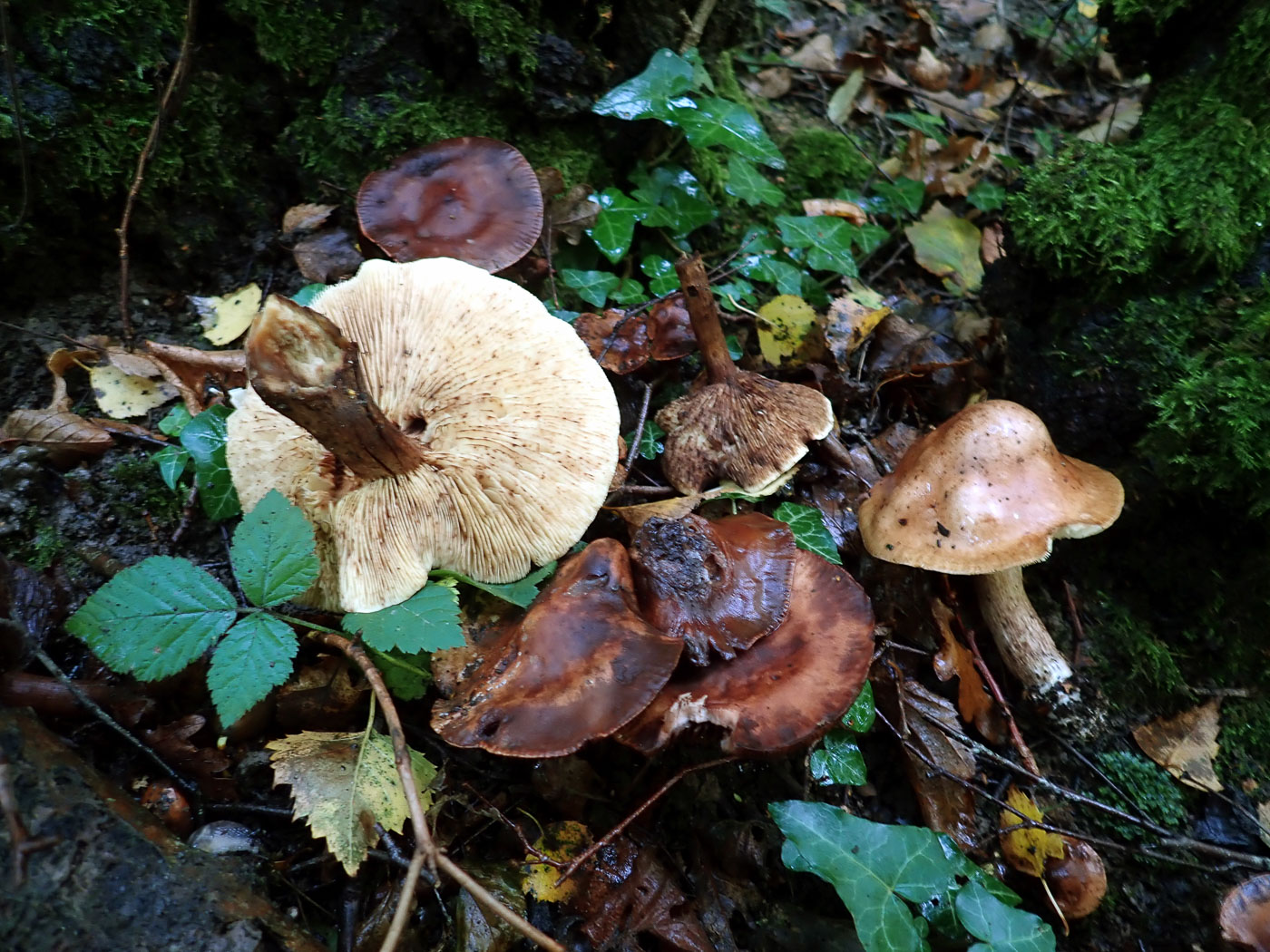
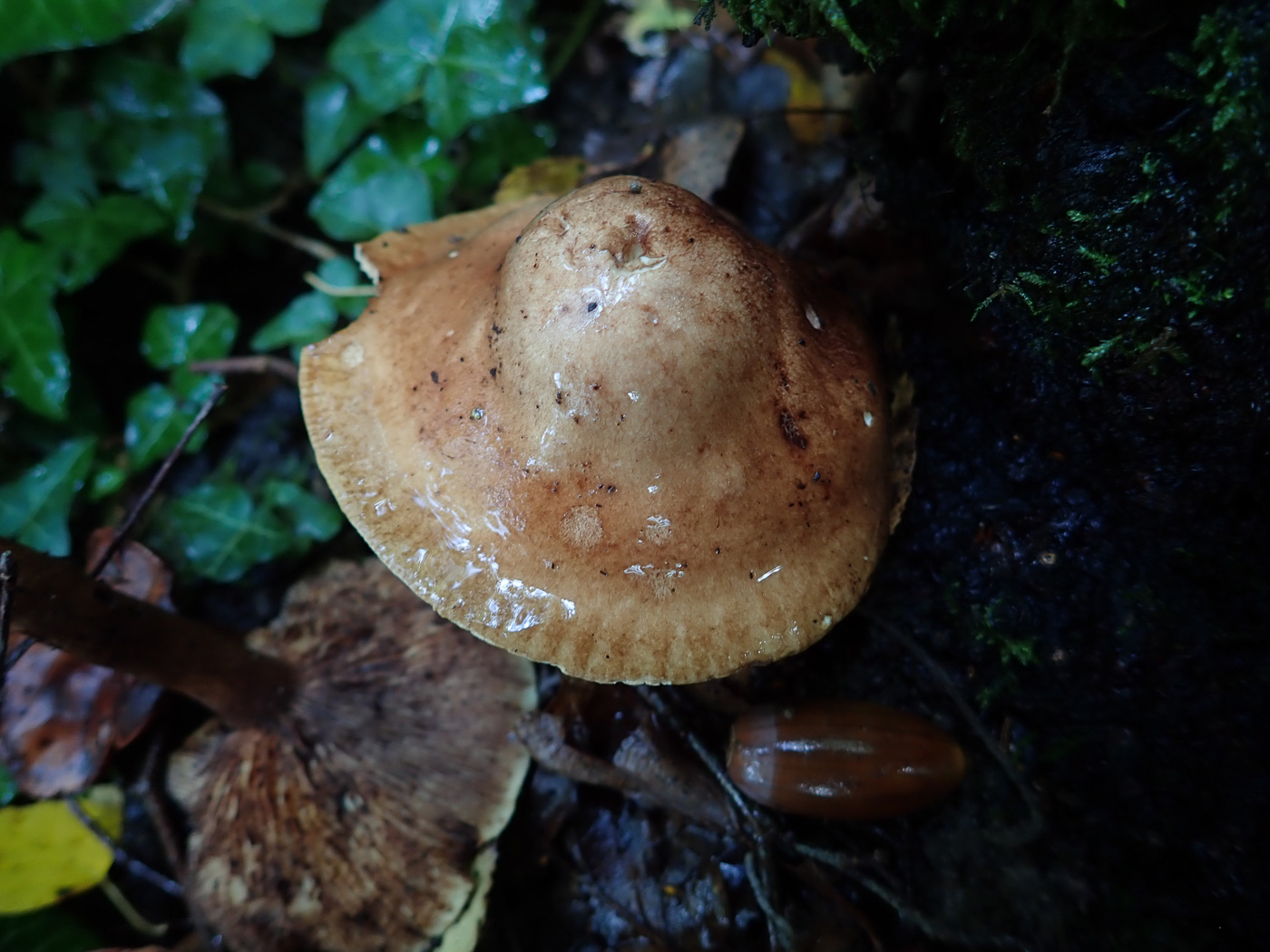 |
October 26th Tricholoma fulvum (Birch Knight)
In Bernwood Forest under birch Penny found a few of this brown-capped Knight which can sometimes confuse. It is host specific to Birch and characteristically has somewhat yellow gills together with yellow flesh within the brown stem. Photo 2 shows another characteristic: the cap - similar in colour to Amanita Fulva (Tawny Grisette) - often develops a 'pie crust' crimping around the rim. We have just one previous Finds entry: 2020 September 18th.
|
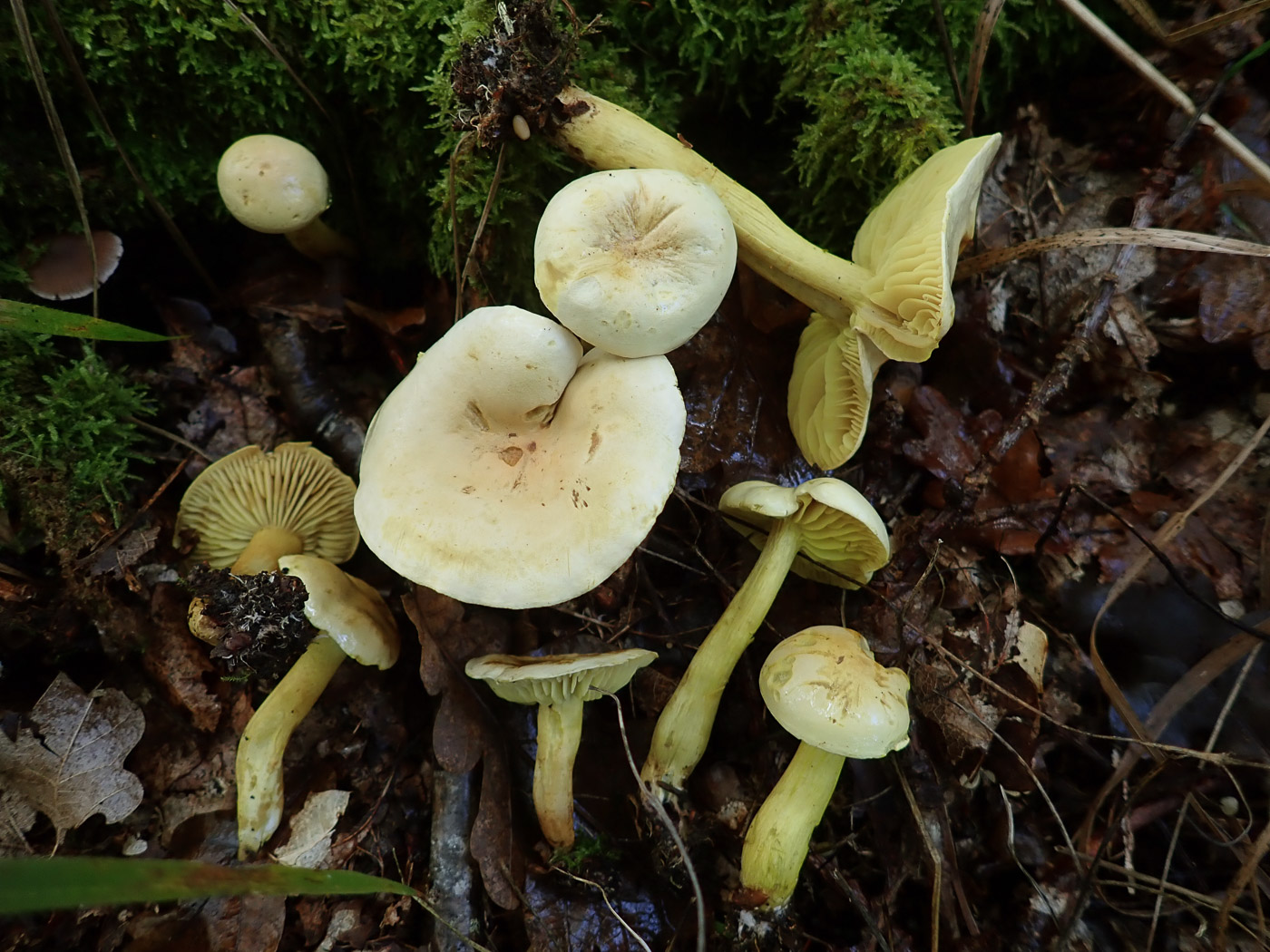 |
October 26th Tricholoma sulphureum (Sulphur Knight)
Under Oak in Bernwood Forest Penny found quite a few of this distinctive Knight just starting to fruit. This is one of the easiest in the genus to recognise, having clear yellow colours in cap, gills and stem but also if collected and put near ones nose, the unmistakeable unpleasant odour of coal gas tar (bad eggs) leaves little room for doubt. See the Masterlist for several previous entries.
|
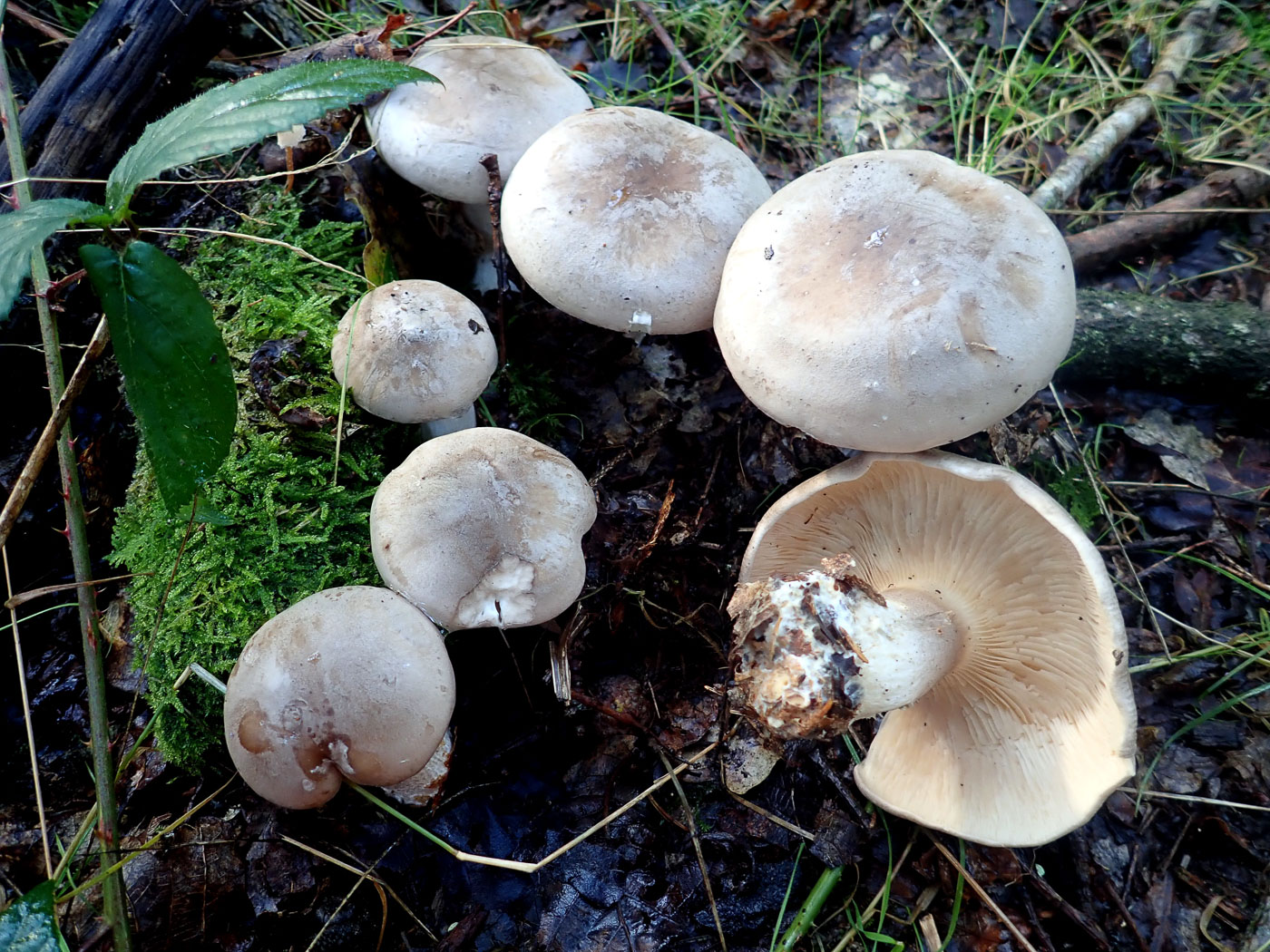 |
October 26th Clitocybe nebularis (Clouded Funnel)
In Bernwood Forest Penny found this common and substantial Funnel amongst Spruce and Oak. It tends to be a late season fruiter and can often be seen in good numbers forming rings around many different trees. It is commonly confused with other large Funnel species, especially as it matures and gets really large and somewhat shapeless, but has a distinctive fruity smell which helps in its ID. See the Masterlist for several previous entries.
|
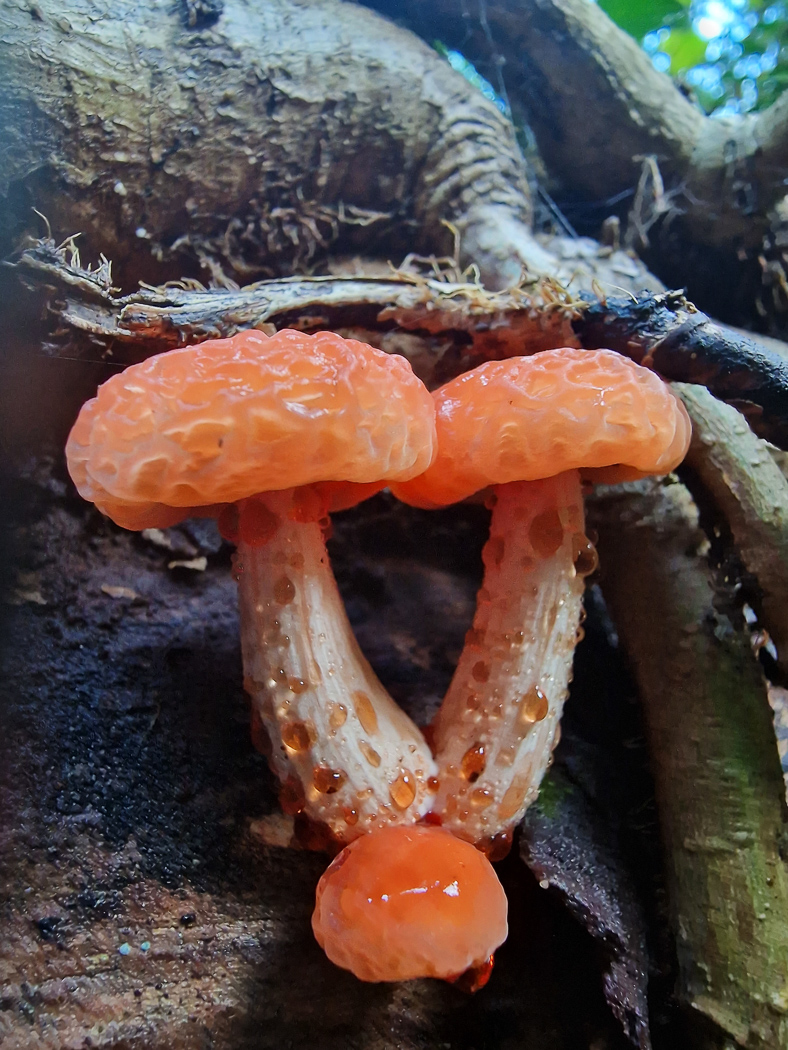
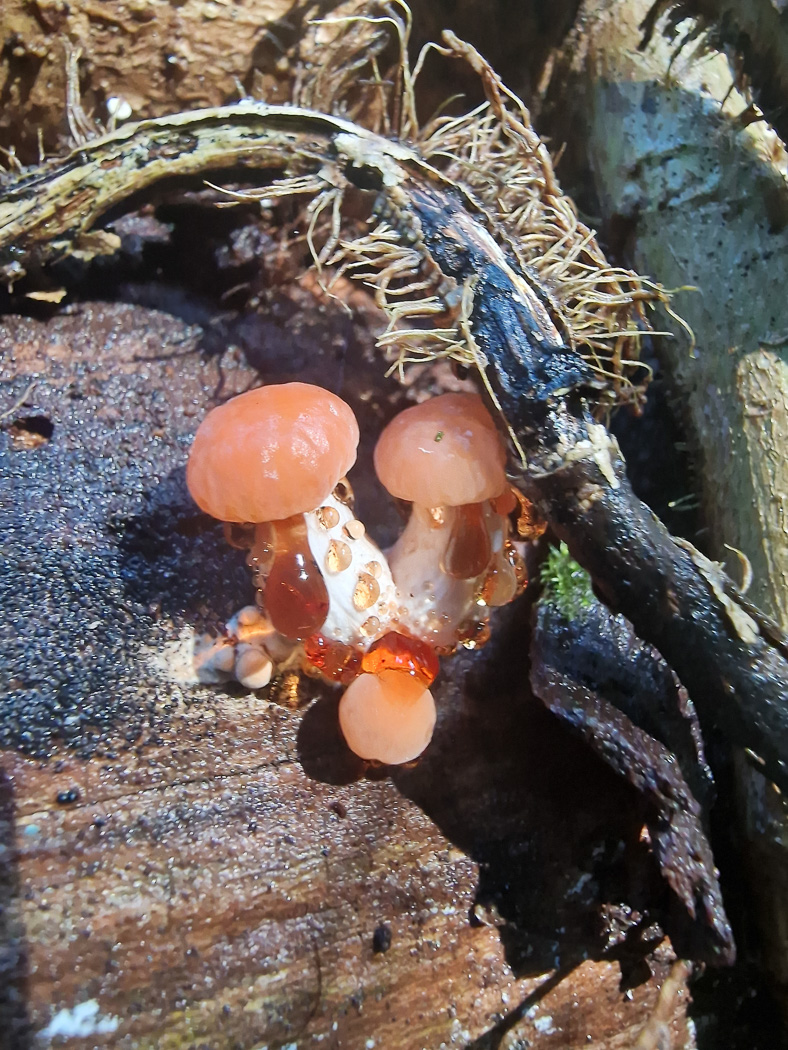
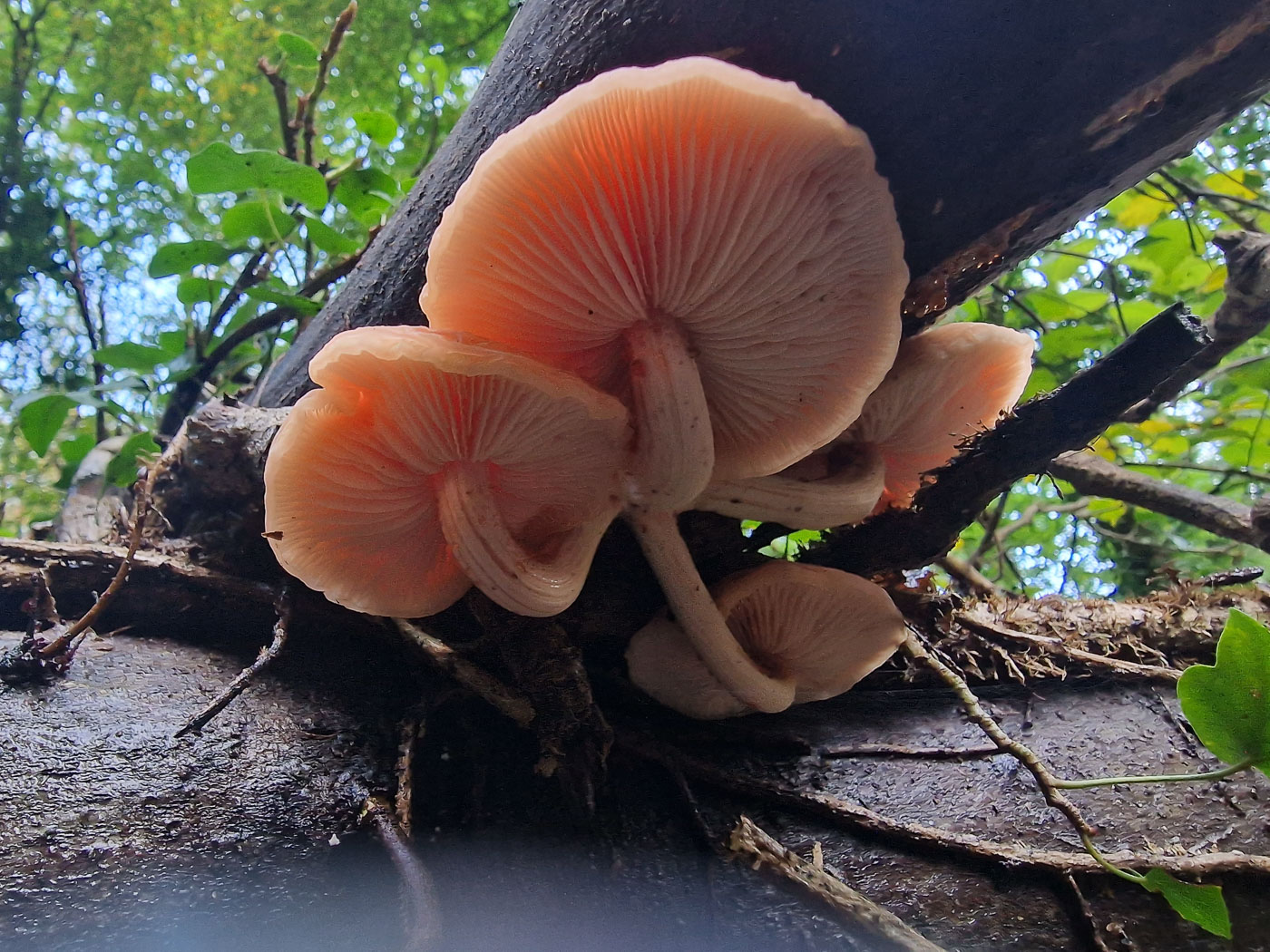 |
October 22nd Rhodotus palmatus (Wrinkled Peach)
Several people have recently reported this species doing well, but this collection sent in by Laura Paterson takes the biscuit! In Tinkers Wood she estimates there were 60 fruitbodies on the one Elm trunk - amazing. In damp weather the droplets are very much a feature of the species and if present leave one in little doubt as to its identity. See the Masterlist for various other entries.
|
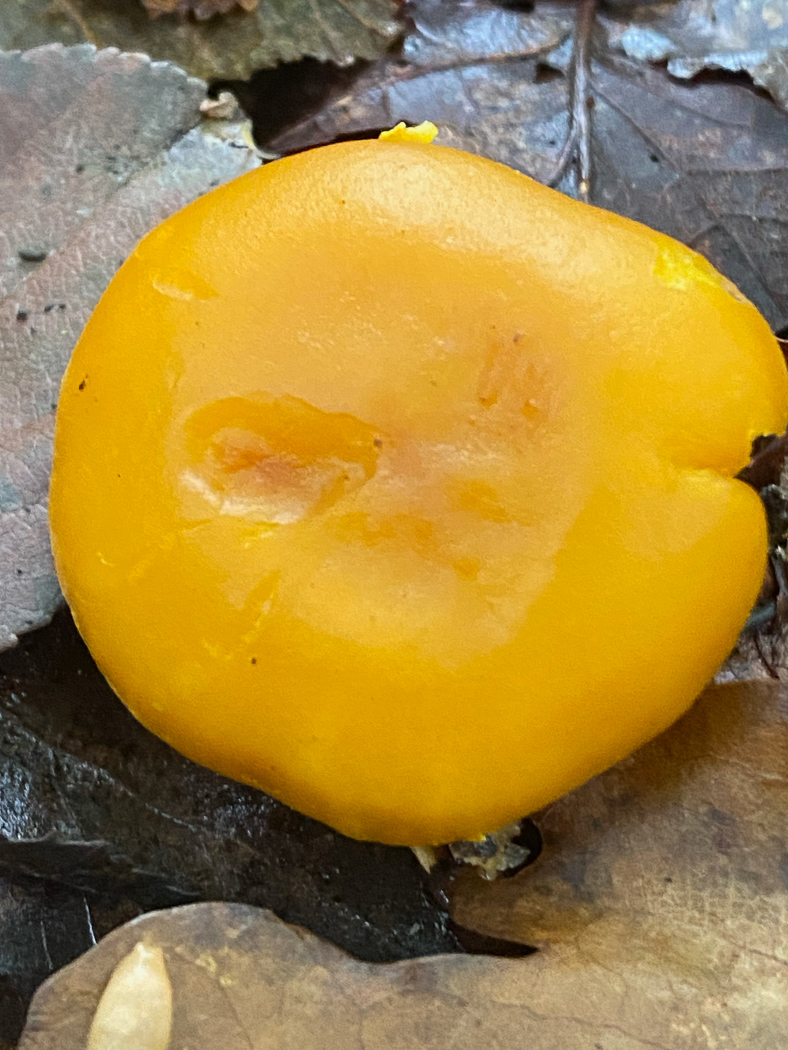
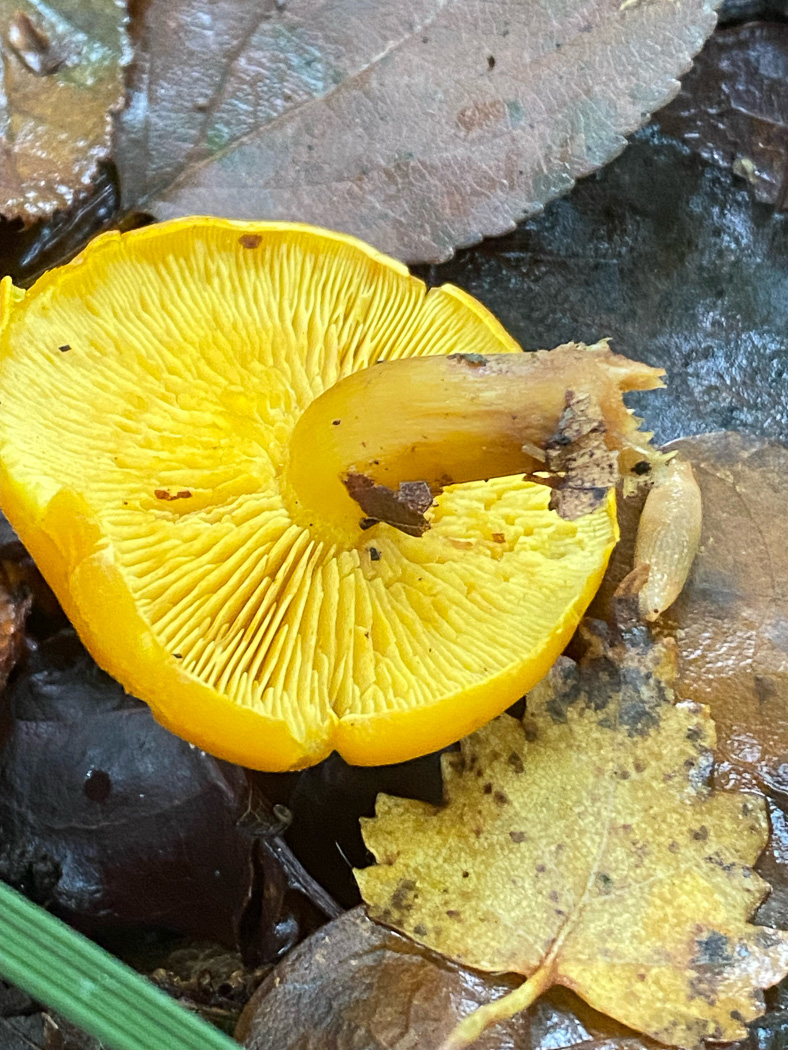
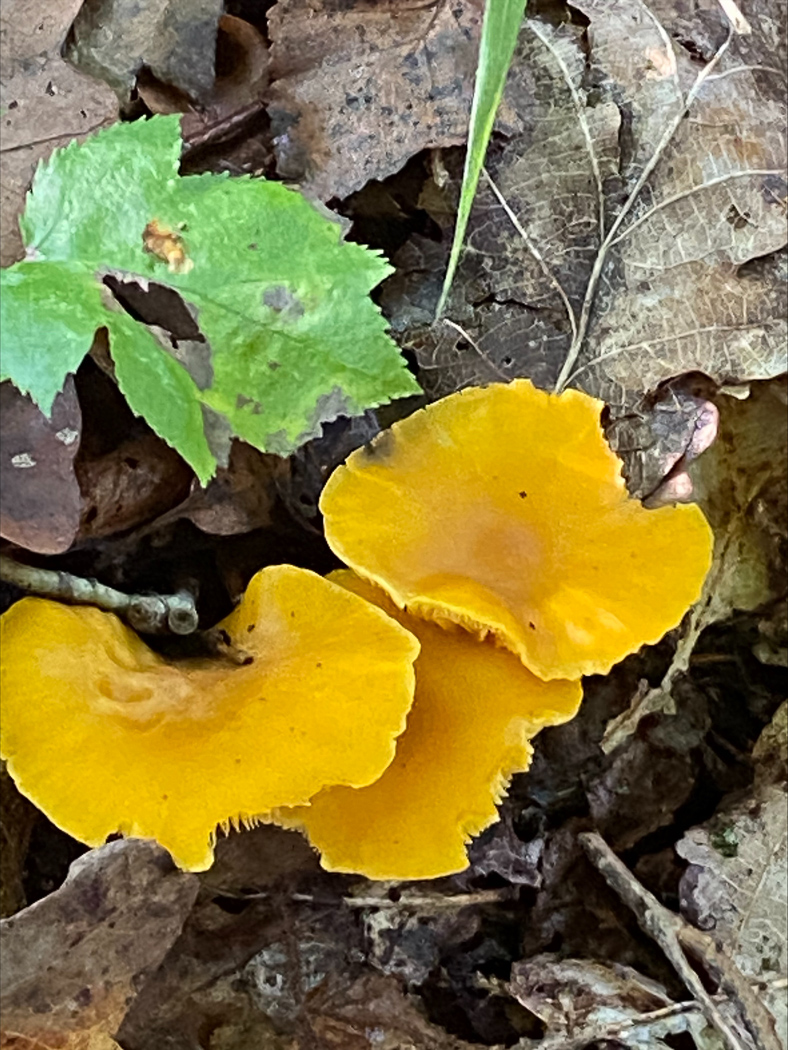
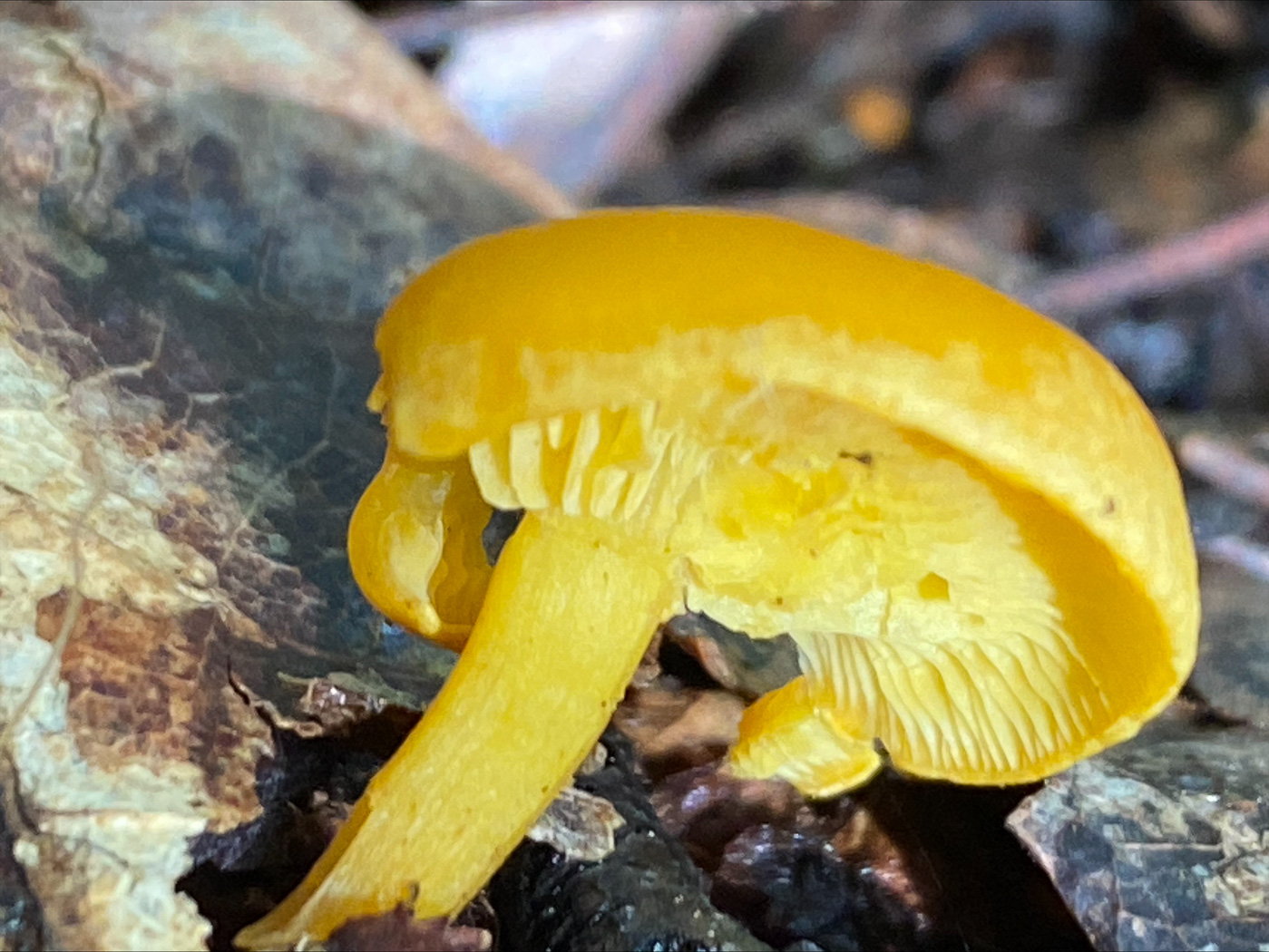 |
October 22nd Calocybe chrysenteron (a rare mushroom with no common name
In Bernwood Forest Chris Grimbly found a whole load of these bright yellow caps in grassy litter under Hazel and sent photos 1 and 2 to Penny asking if these were perhaps Waxcaps passed their sell-by date. Penny was sceptical but was stuck for any other conclusion but the following day Chris let her know that Andy Overall (on a facebook page) had suggested the rare Calocybe chrysenteron as a possibility. More scepticism from Penny! This was a species she'd never seen and knew to be rare. There was only one way to resolve this: to microscopically examine the material. So Chris collected more specimens (photos 3 and 4) and met Penny two days later, who on seeing it straight away realised it was no Waxcap and could well be the suggested species. A sporeprint overnight produced the correct white print and suitably tiny smooth ellipsoid spores thus confirming Overall's suggestion. Derek had once found this species in Pulpit Hill under Beech back in 1997 but it had never appeared there since on any of our visits so this was our only previous county record. There are very few national records and the species has at some stage been included in the Red Data list though there seems confusion as to whether the genus name should be Calocybe or Rugosomyces. This was an exciting find and the material will be sequenced and then sent to RBG Kew.
|
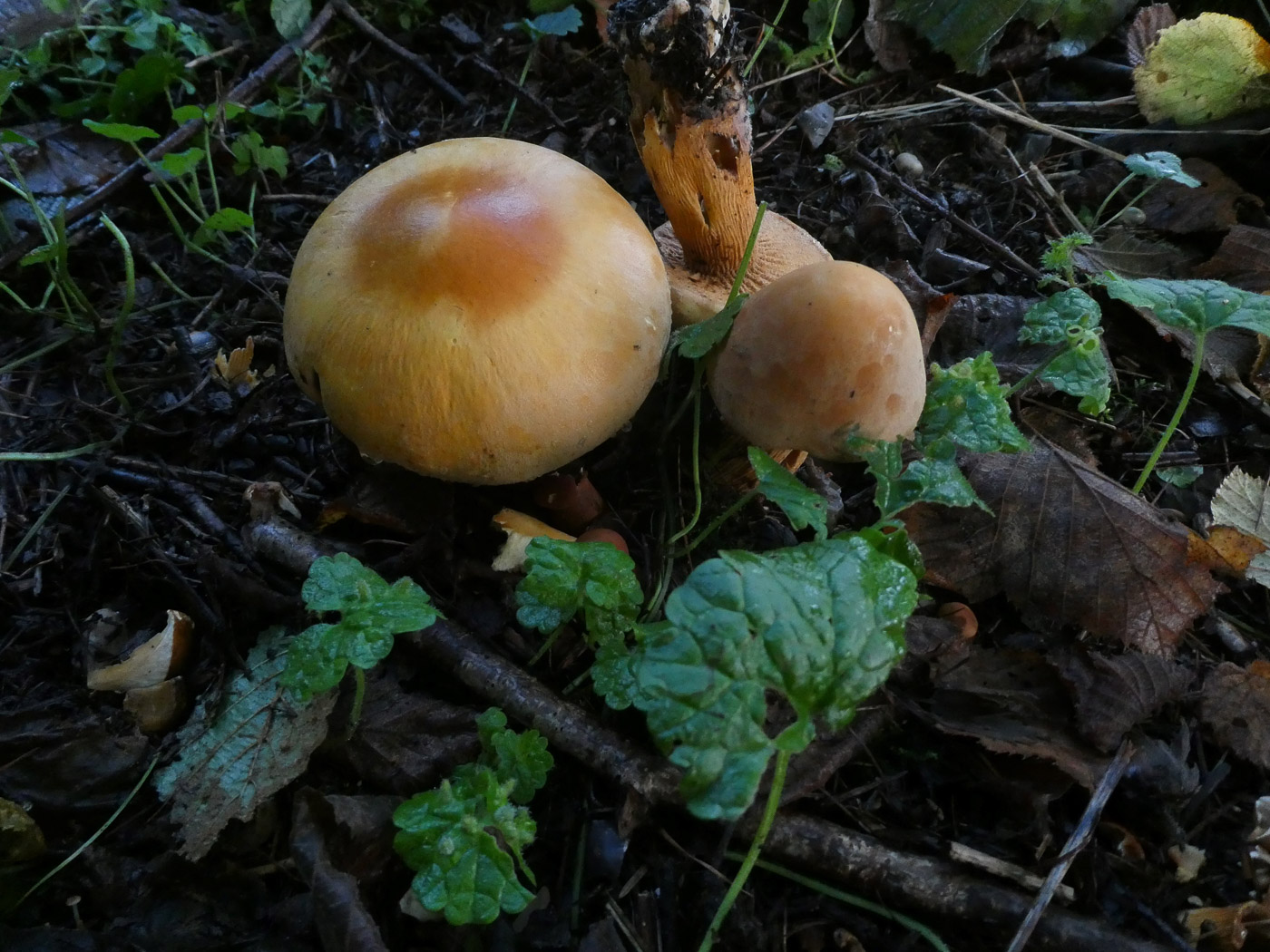
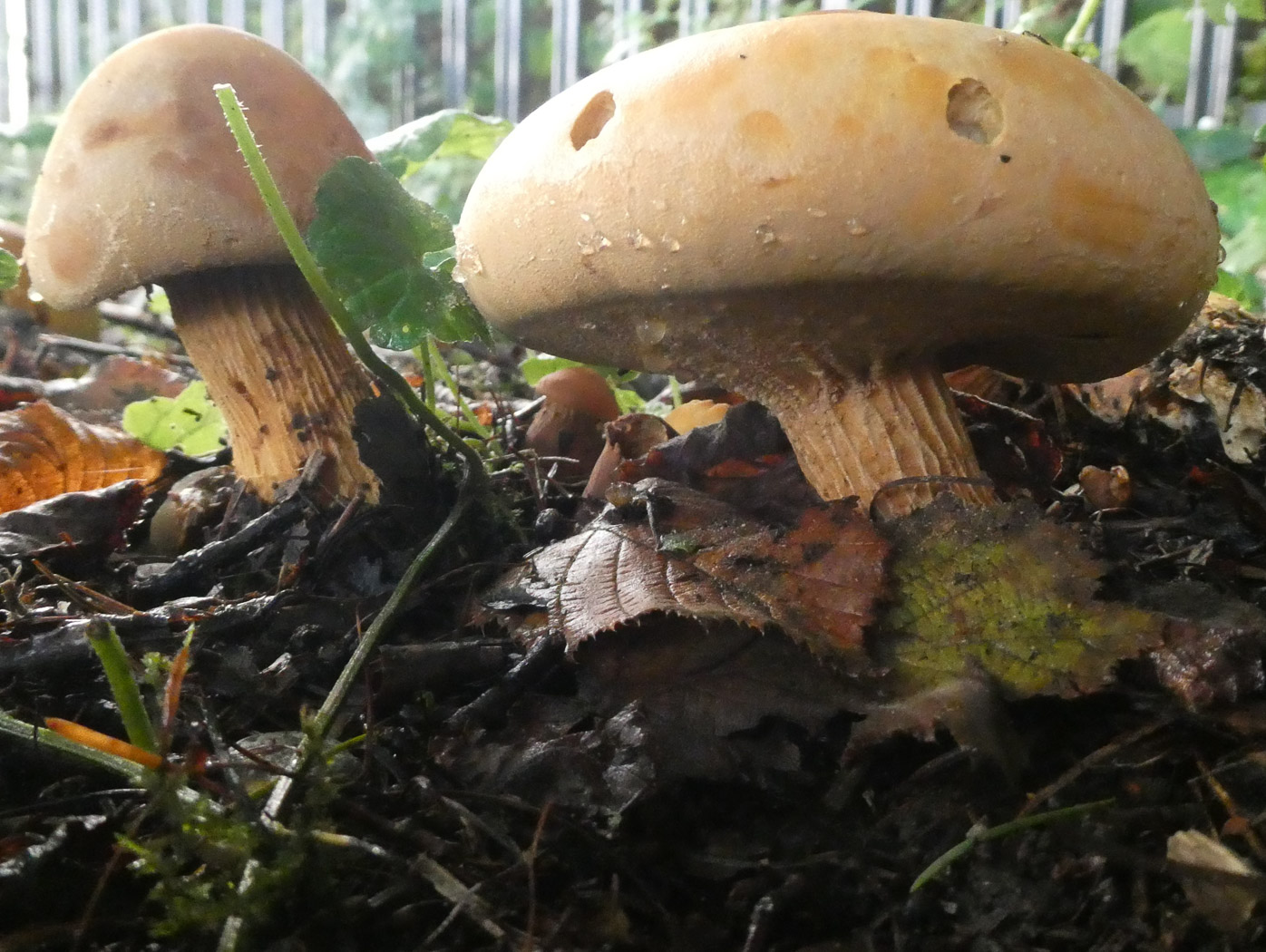
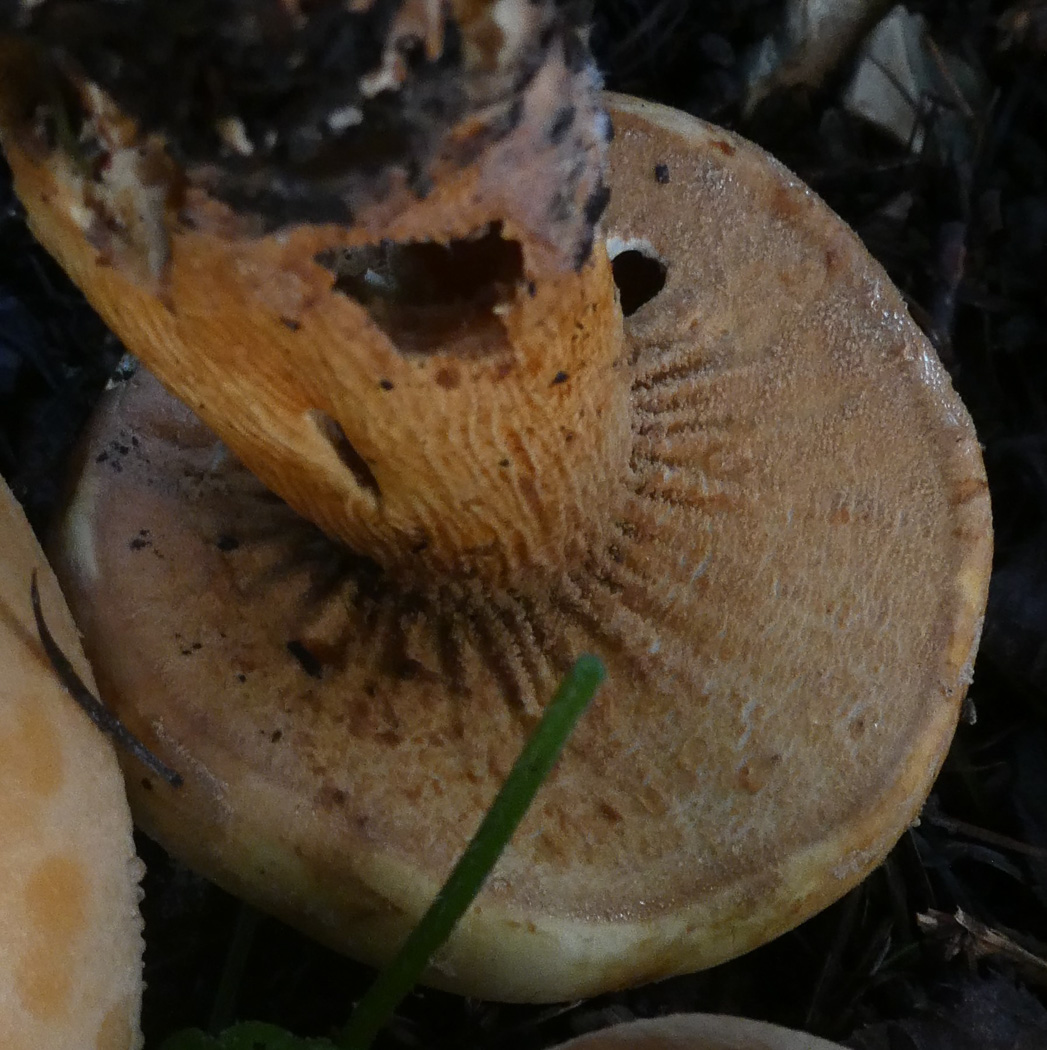 |
October 22nd Phaeolepiota aurea (Golden Bootleg)
Last year Jim Wills found this rare species in a grassy path edge in Chalfont St Peter and he reports that it is now up again in exactly the same spot! This is a large distinctive species with cap getting to 12 or 15 cms across, golden tan with a scurfy surface and the concolorous somewhat ridged stem has a thick membranous ring, seen here still in place and covering the immature gills, which eventually tears away from the cap as it expands leaving hanging remnants attached to both cap and stem. We have only a couple of previous records from Penn Wood as well as Jim's here last year - Finds 2022 October 25th.
|
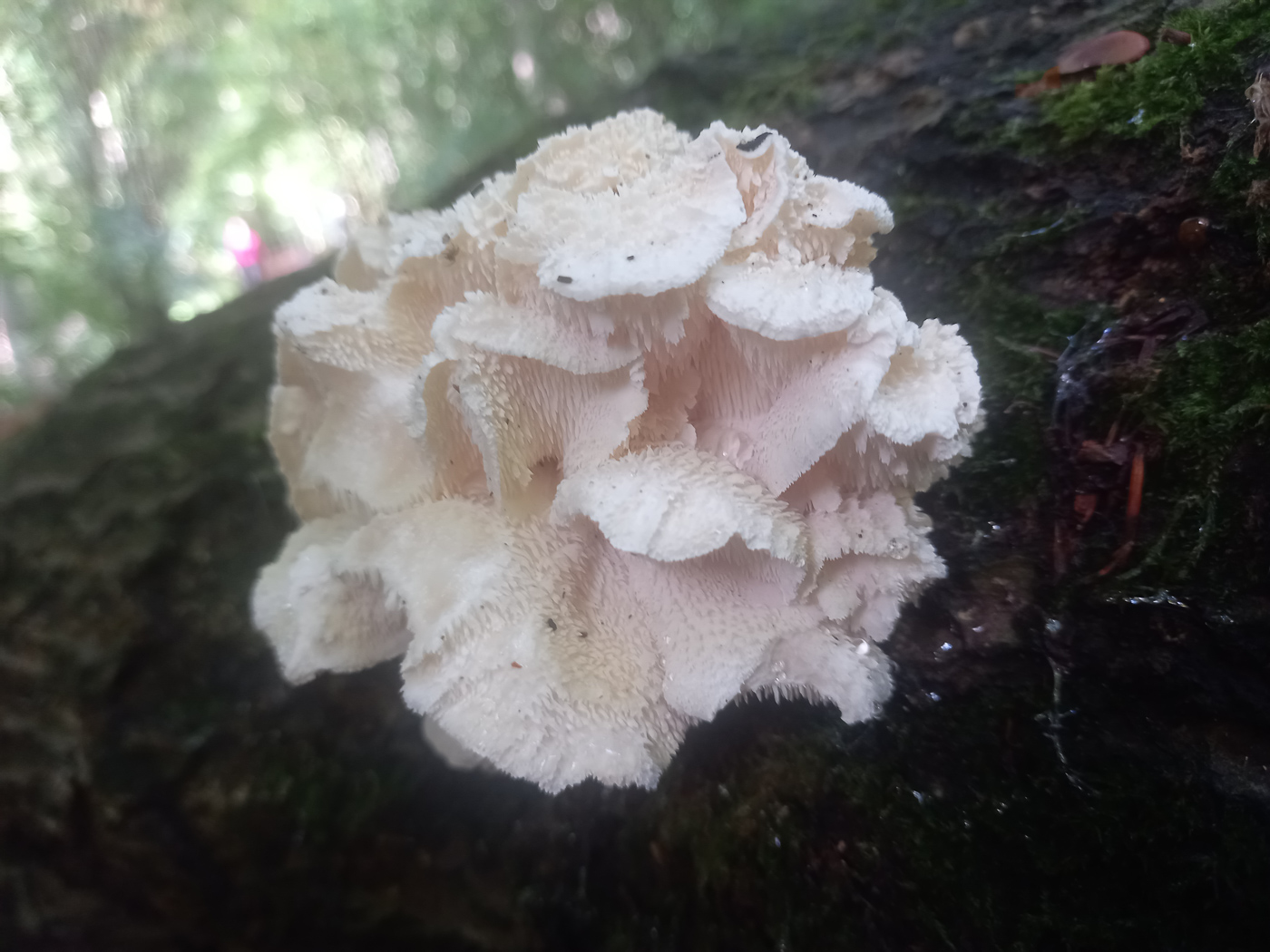 |
October 22nd Hericium cirrhatum (Tiered Tooth)
In Captains Wood Chesham Greg Douglas had been watching this fungus develop on an old Oak log, felled many years ago, and eventually realised that it was developing 'teeth' underneath. Assuming, therefore, that it was one of the 'Hydnoid' species he sent his photo to Penny who has named it purely on the evidence of his photo but there can surely be little doubt over its identity. It ticks all the boxes for this species, one of three in the genus and all considered rare though this is perhaps the least rare but still an exciting find. It favours Beech - as do the other Hericium species - but also occurs on old wood of other deciduous trees, Ash and Elm also being mentioned. We have records from just 4 other sites, mostly Burnham Beeches, with one previous Finds entry: 2020 October August 31st.
|
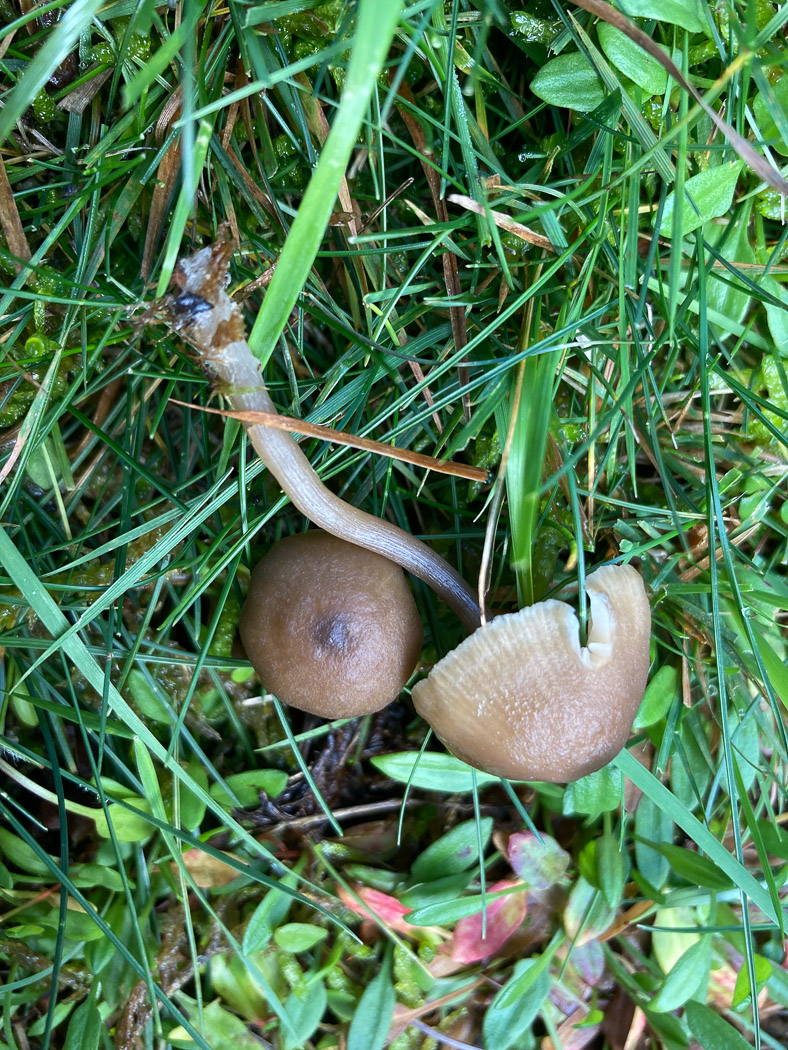
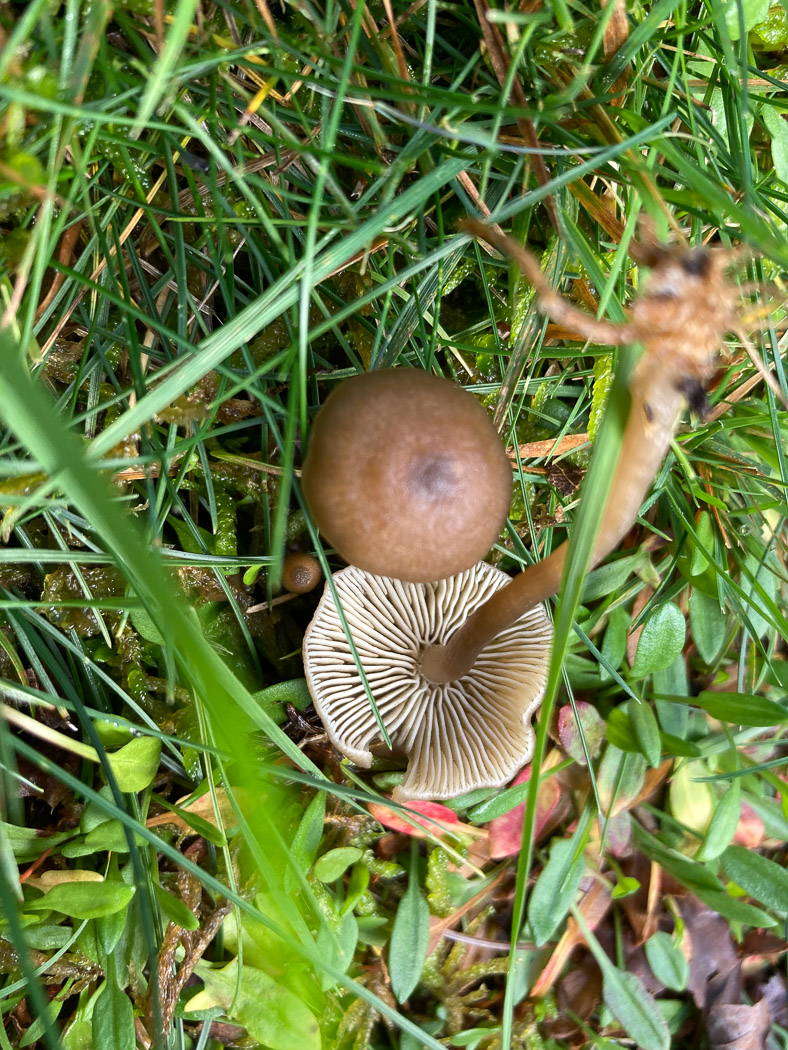 |
October 22nd Tephrocybe ellisii (a Greyling with no common name) 
When Russell Ness found these in Burnham Beeches he was at a loss to place them in a genus though they looks not unalike a small Entoloma (Pinkgill). The white sporeprint the next day eliminated that genus and he eventually arrived at this species by flipping through Kibby vol 2, then checked the details which all fitted fine. Members of this genus (though soon possibly to move to Lyophyllum) are often rather nondescript LBJs with a distinct likeness to Entoloma but have few useful microscopic features beside their spores which are neither the shape nor colour of that genus. This particular species is rarely recorded with a limited number of national records and just one from Bucks from Bradenham Woods back in 2000. So another new Finds entry.
|
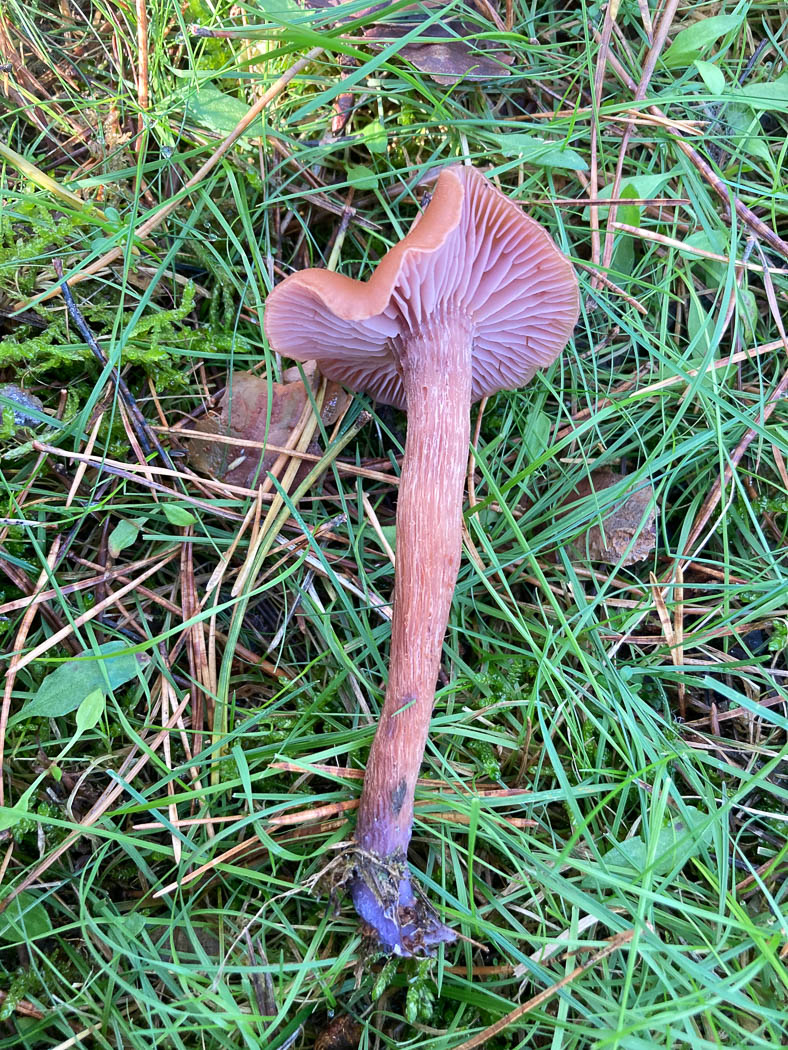 |
October 22nd Laccaria bicolor (Bicoloured Deceiver)
At Burnham Beeches Russell Ness noticed that this Deceiver was clearly different from the very common L. laccata (Deceiver) in that it had a distinctly violaceous stem base - the significant feature of this rare species which favours acidic soils and usually occurs near conifers (note the Pine needles in the photo). The gill colour also has a tinge of violet about it but otherwise only the stem base separates it from its much commoner relative. We have just three previous county records - from this site in 2002, from Naphill Common - Finds 2020 Oct 16th - and from nearby Stoke Common (also having acidic soil and conifers) - Finds 2022 September 29th.
|
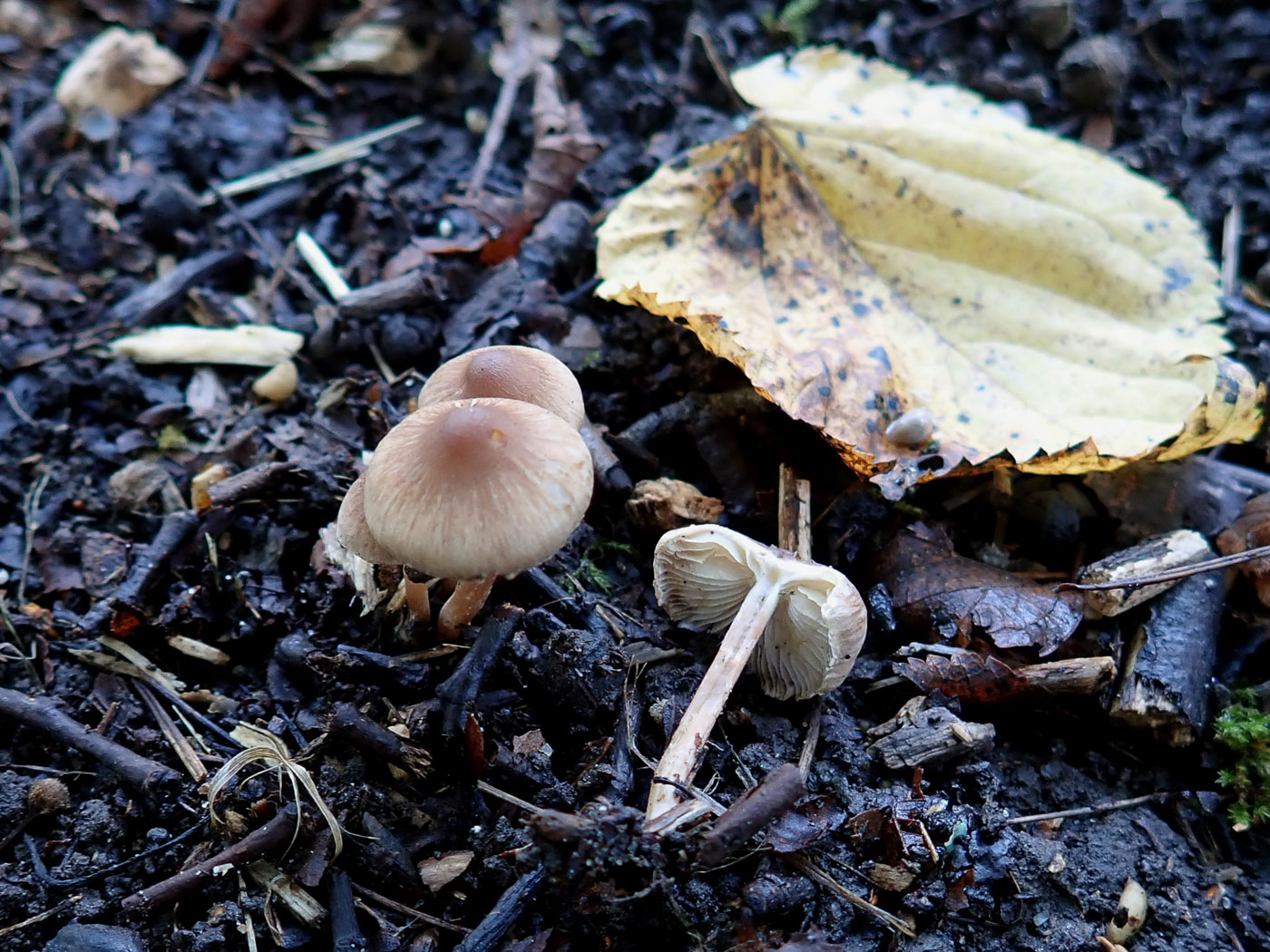
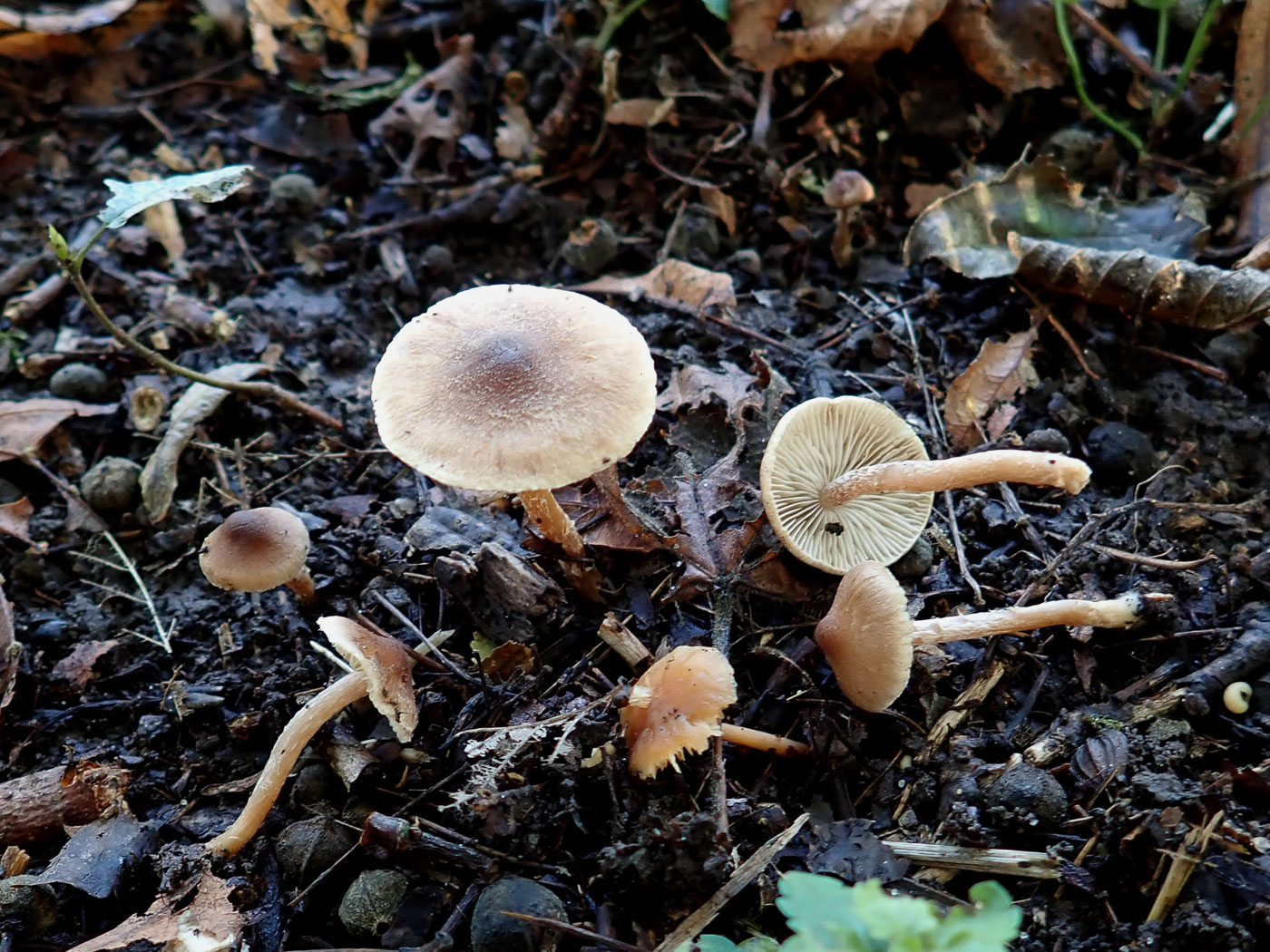 |
October 22nd Inocybe microspora (a Fibrecap with no common name) 
In the Lime avenue at Turville Heath Penny often finds good numbers of Fibrecaps and today was no exception. This species is not that common (and new to Finds) but is a typical LBJ with no outstanding features other than fairly obviously belonging to genus Inocybe: dry dull brown radially fibrous cap - often darker in the middle with an umbo as here, pale brown gills and stem and a faintly spermatic smell. Microscopic features are key as always with this genus and, as its species name suggests, it has smooth almond shaped brown spores which are one of the smallest in the genus. The photos are of two separate collections made here today.
|
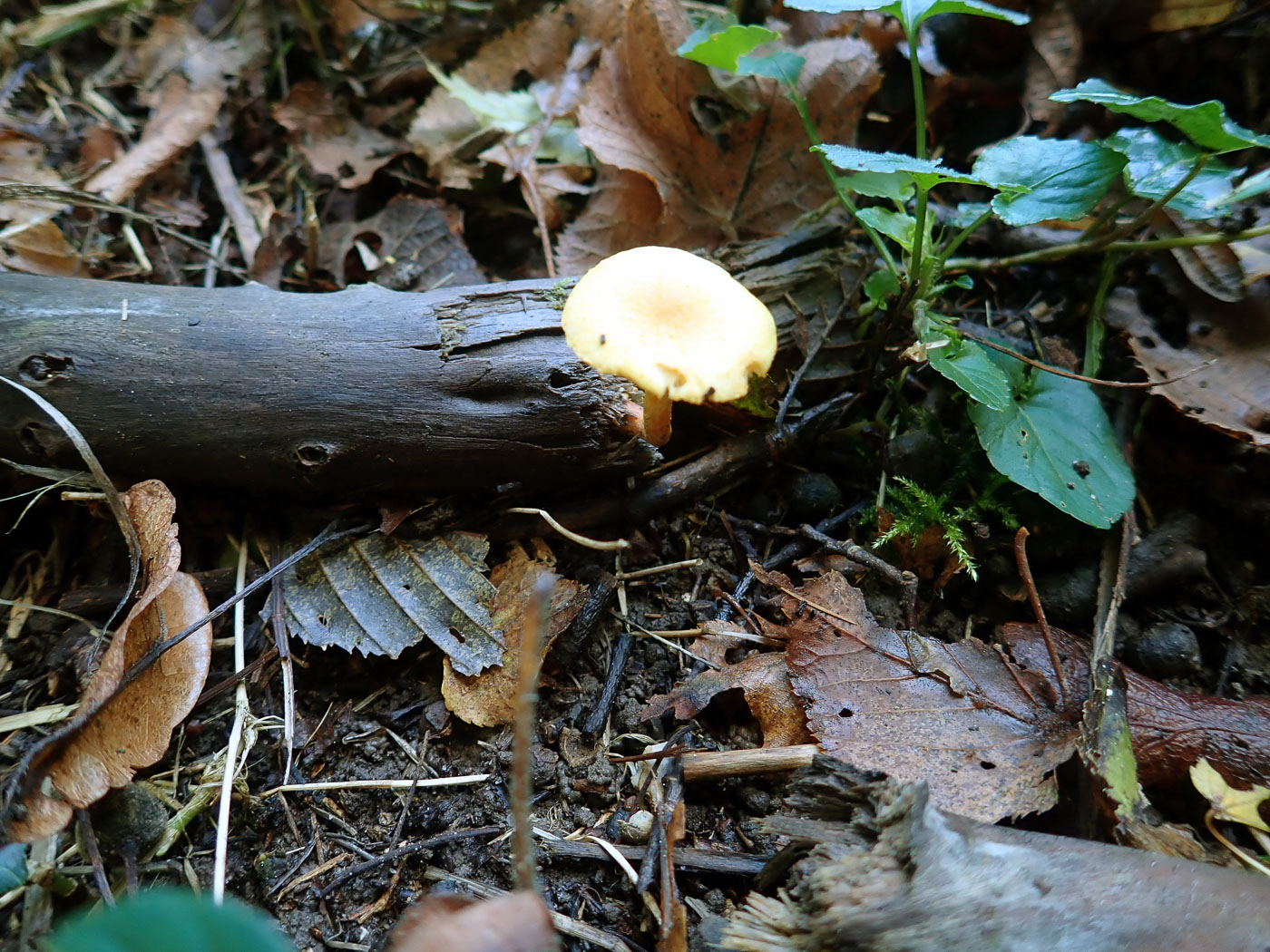
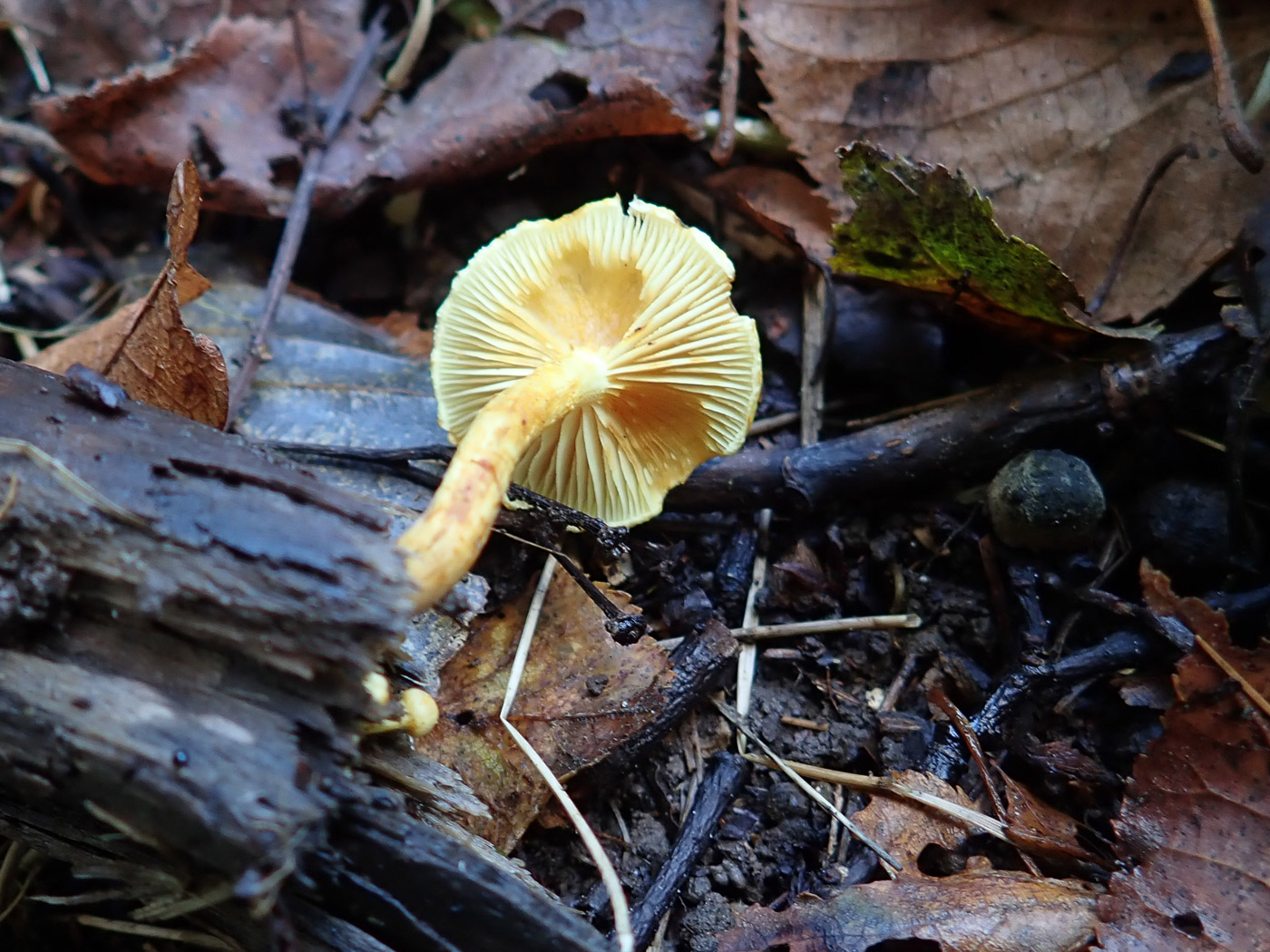 |
October 22nd Pholiota tuberculosa (a Scalycap with no common name) 
At Turville Heath under Lime Penny noticed this small but bright yellow cap in woody litter and found it was attached to a piece of stick. She suspected it was this unusual species having found it earlier in the year elsewhere (see July 19th - our only other entry), so took it home to check the microscopic details. The name Scalycap is indeed appropriate for the majority of this genus but not for this particular member which has an almost smooth cap though the yellow gills and rusty spores are typical.The cells on the gill edge are particularly useful and are distinctly capitate - ie they have swollen blobs on top. The species may be more common than we realise (we have few records) but could easily be misidentified in the field as Gymnopilus penetrans (Common Rustgill).
|
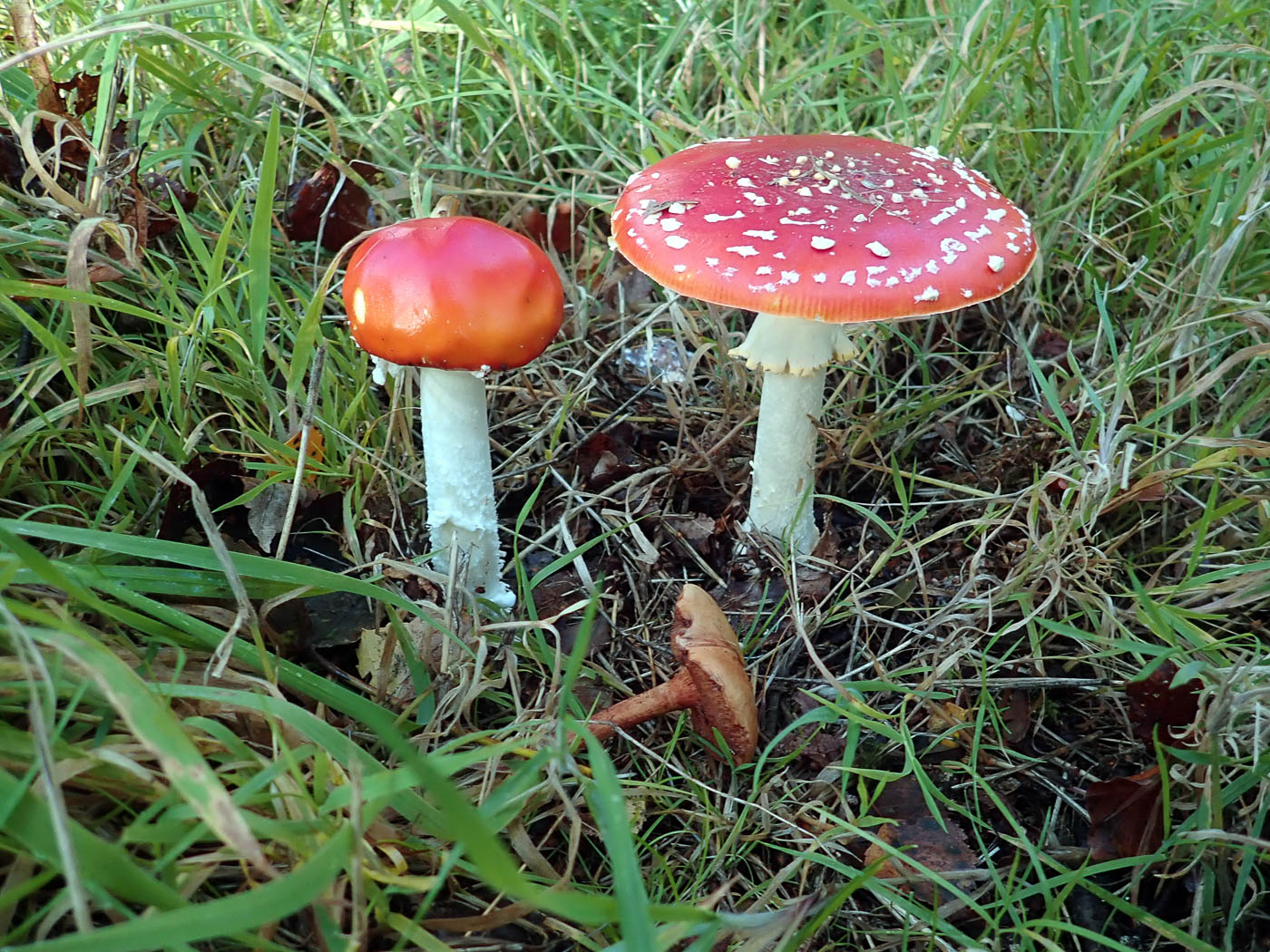
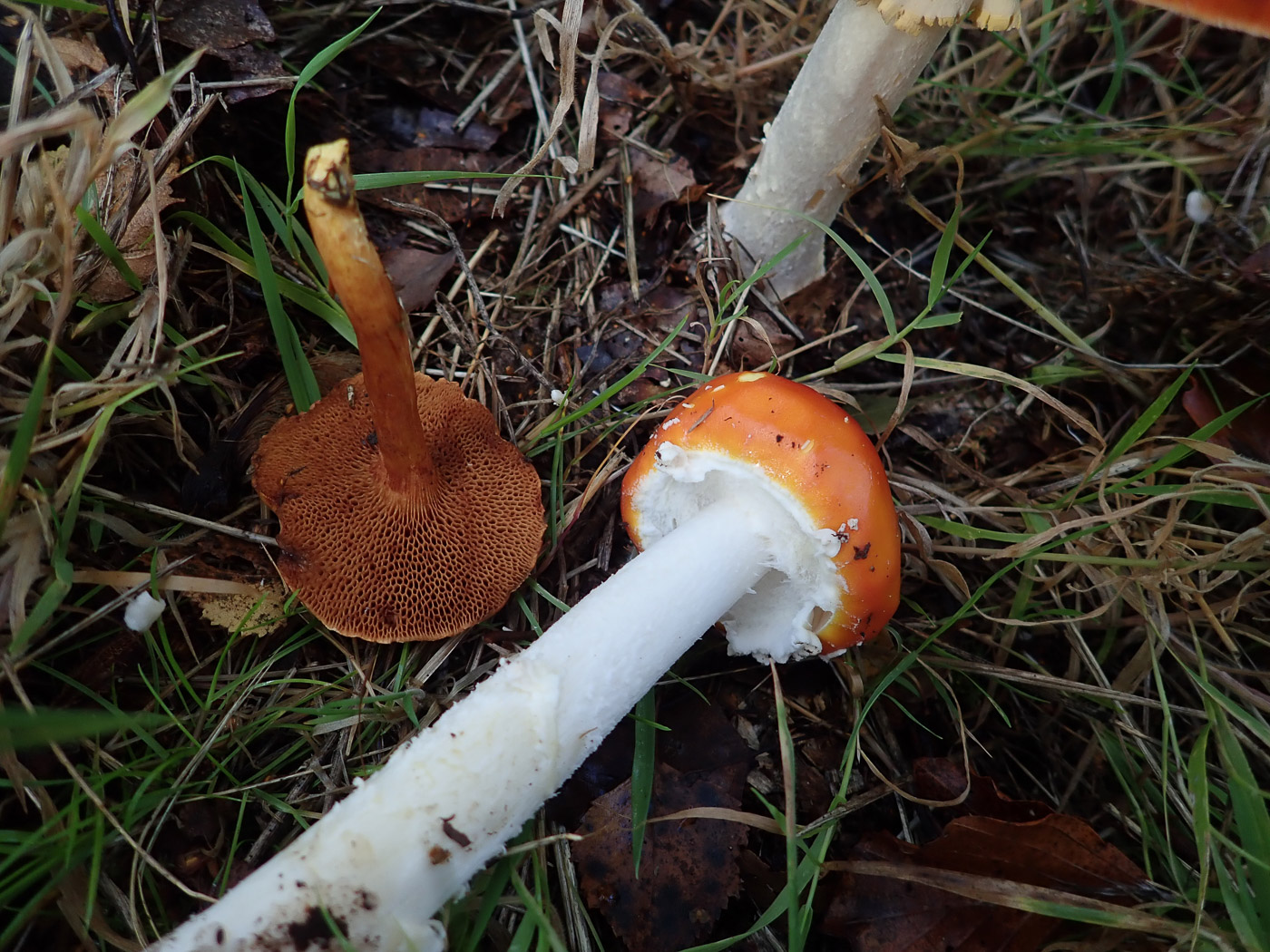 |
October 22nd Amanita muscaria plus Chalciporus piperatus (Fly Agaric plus Peppery Bolete)
At last this charismatic mushroom is now busy fruiting under Birch, here found by Penny at Turville Heath. She was, however, particularly pleased to see just 6 inches away this comparatively insignificant tan-coloured Bolete accompanying it as it often does. The relationship between these two entirely unrelated species has long been recognised though not fully understood: they are both often found growing apart but the number of times they're together has to be more than a coincidence. See the Masterlist for more images of both species mostly without their partner though 2020 September 12th is of an impressive collection of both together at this same site.
|
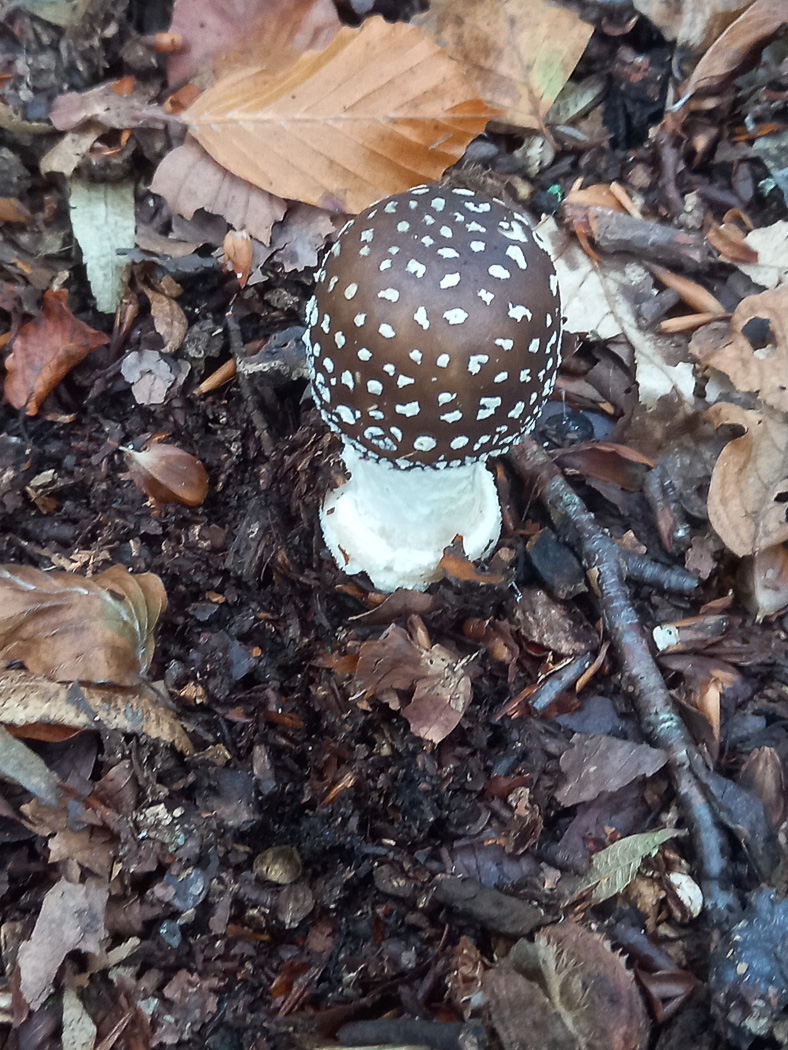 |
October 22nd Amanita pantherina (Panthercap)
In Captains Wood, Chesham, Greg Douglas spotted this singleton and sent the photo to Penny to see if she agreed that he had the identity correct. The regularly spaced pure white veil flecks certainly looked convincing and she asked him to go back and check that there were no striations visible on the upper ring surface or on the stem above this. (If there had been it would point to the quite similar but considerably more common A. excelsa var spissa). On returning he found the specimen kicked over but with no such markings present, confirming his original ID. The same day Richard Donnelly sent in photos of this same species found near Cadmore End. So conditions are clearly triggering this species into action now. See the Masterlist for further examples.
|
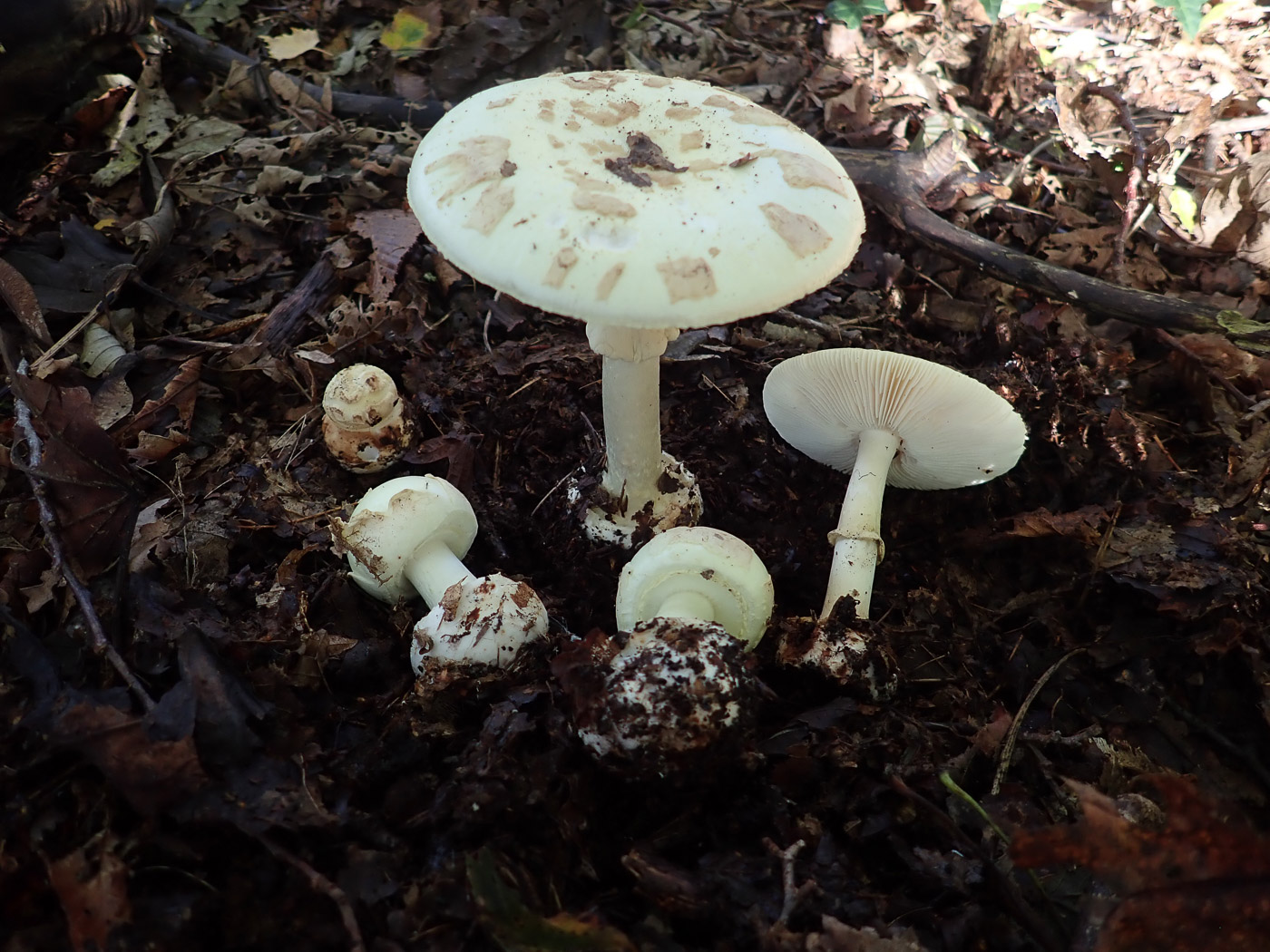
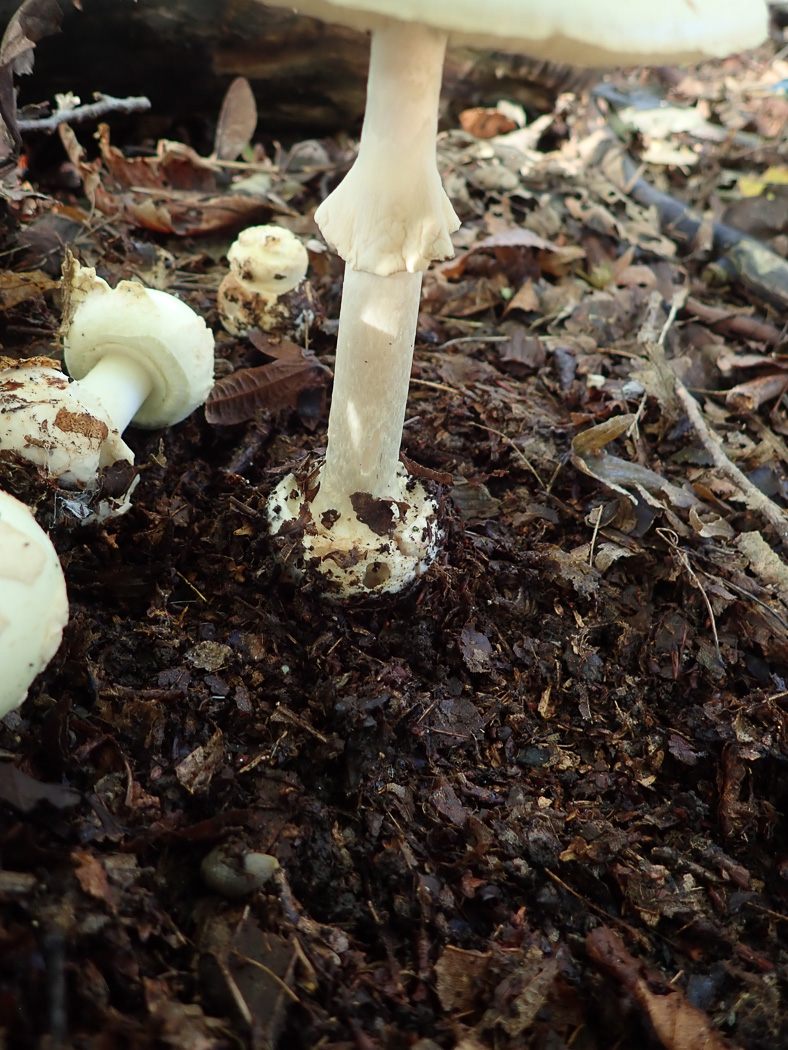 |
October 22nd Amanita citrina (False Deathcap)
In Turville Heath under Hornbeam Penny found this group which show off all the vital features of this very common species (except for its smell!) which has just started fruiting prolifically. Note the tiny 'button' on the left in photo 1 - a bit like a miniature cottage loaf in shape and quite easily mistaken for an Earthball at this stage. Note also the large volva with a clear rim around it, the stem with a ring, the white gills and yellow tinted cap with flecks of veil still attached. All you need to confirm it is the smell of potato peelings. There is also an entirely white form (var. alba) which has exactly the same smell. See also in Finds 2020 September 18th and 2021 September 4th.
|
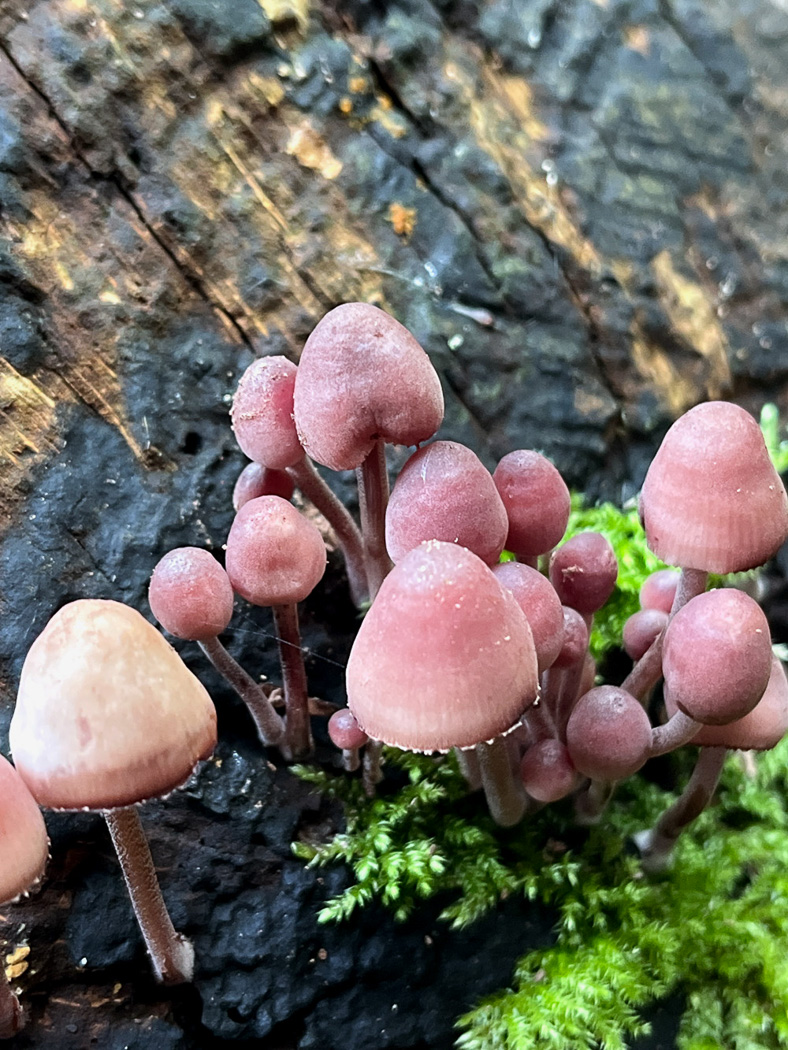 |
October 17th Mycena haematopus (Burgundydrop Bonnet)
In Churchfield Wood Jim Wills found this attractive cluster of Bonnets on fallen deciduous wood. When finding a cluster like this on wood with caps as pink as they are here the species is easy to recognise without the need to check whether the stem contains the telltale red/brown latex to which its common name refers. This is one of our commonest Bonnets and often has the white slightly frilly margin seen on a couple of caps here. We have only one previous Finds entry: 2020 September 7th.
|
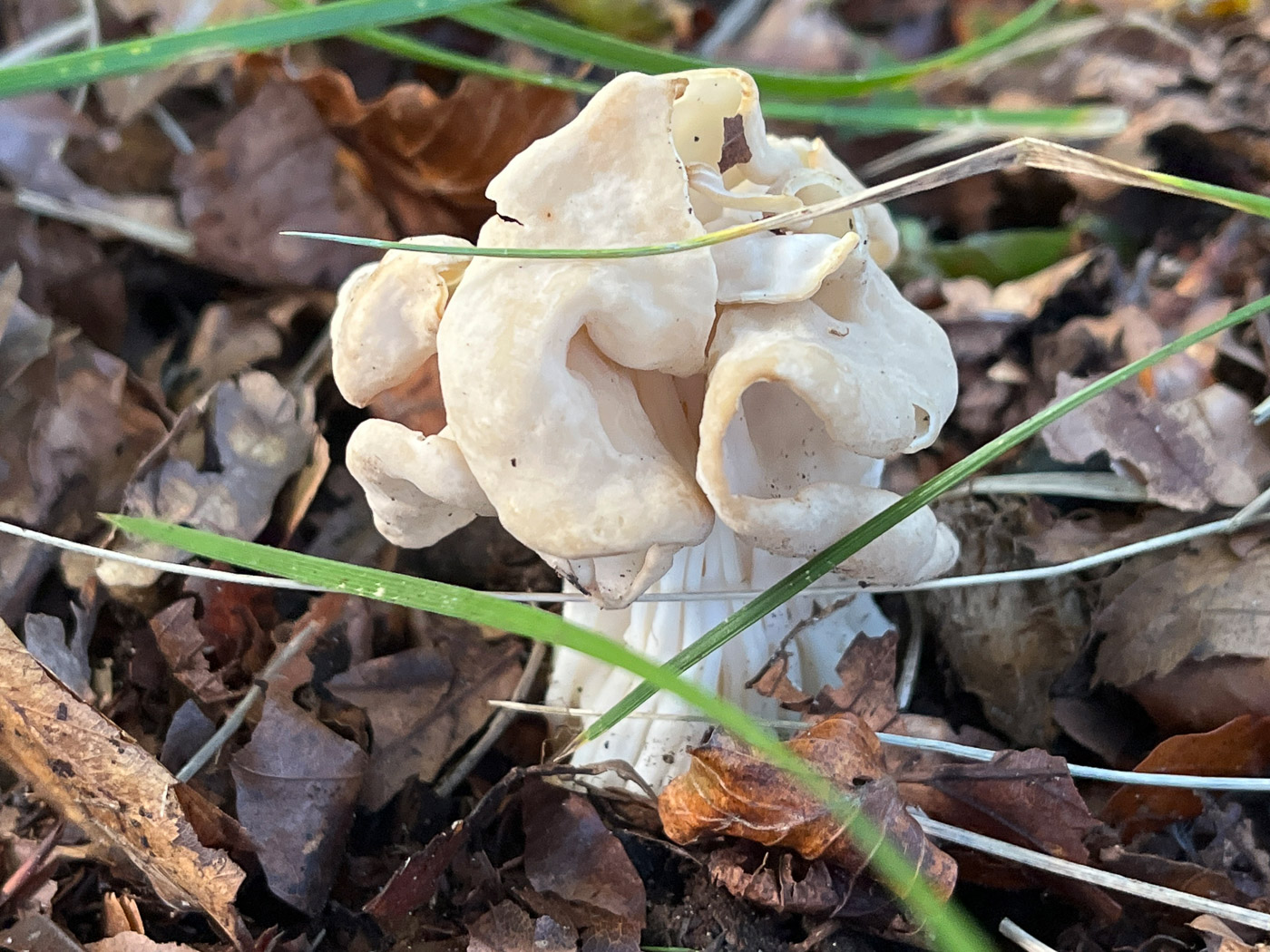
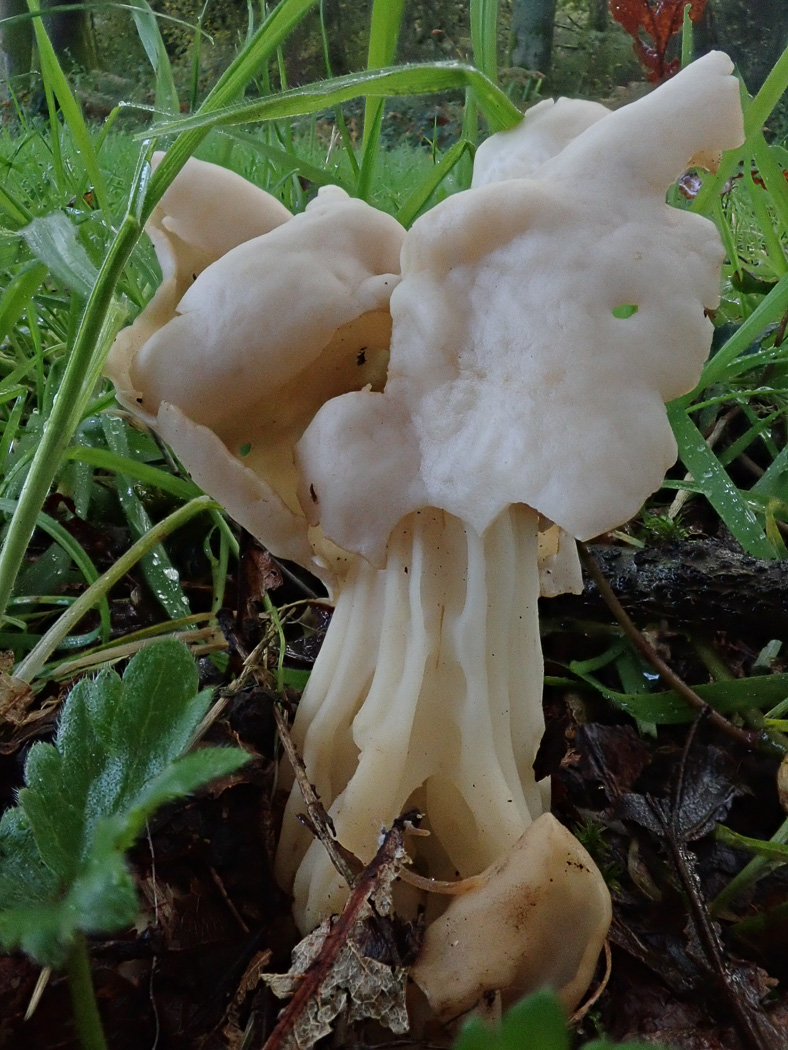
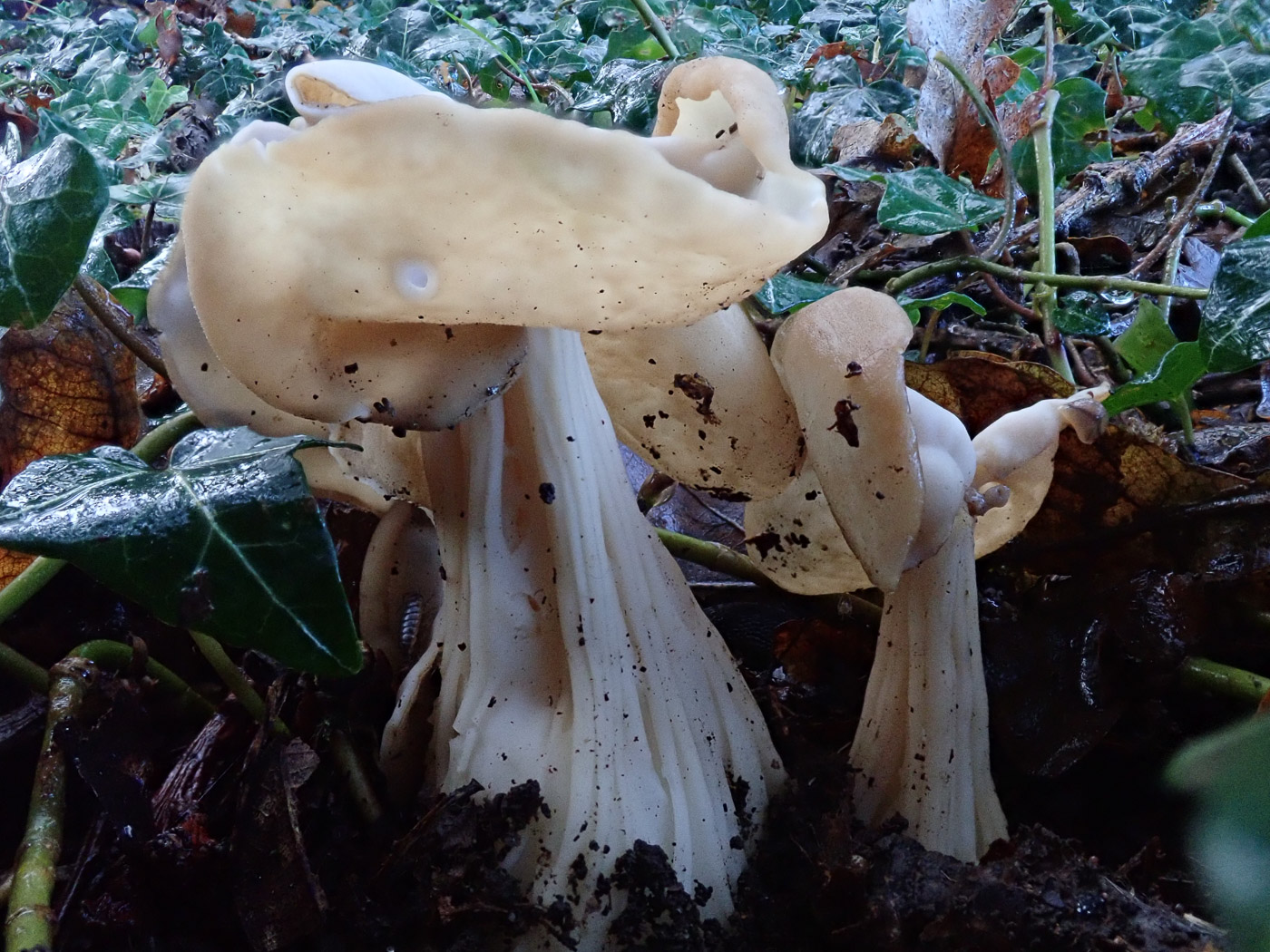 |
October 17th Helvella crispa (White Saddle)
In Summerheath Wood Jim Wills found this distinctive Ascomycete - one which is normally quite common but seems to have been few and far between so far this season. Easily recognised, the deeply ridged white stem with it irregularly shaped cream to white 'saddle' on top is typical, it can get to about 10 cms tall, often in grass path edges. Photos 2 and 3 were taken a couple of weeks late in Naphill Common by Sarah Ebdon. See the Masterlist for further images.
|
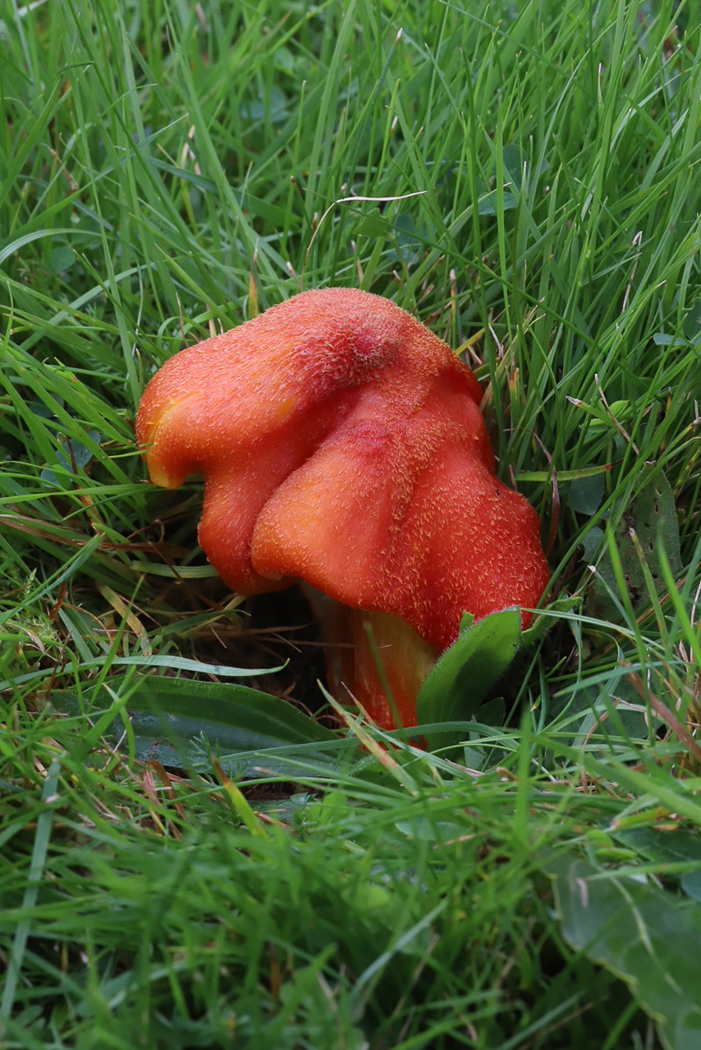
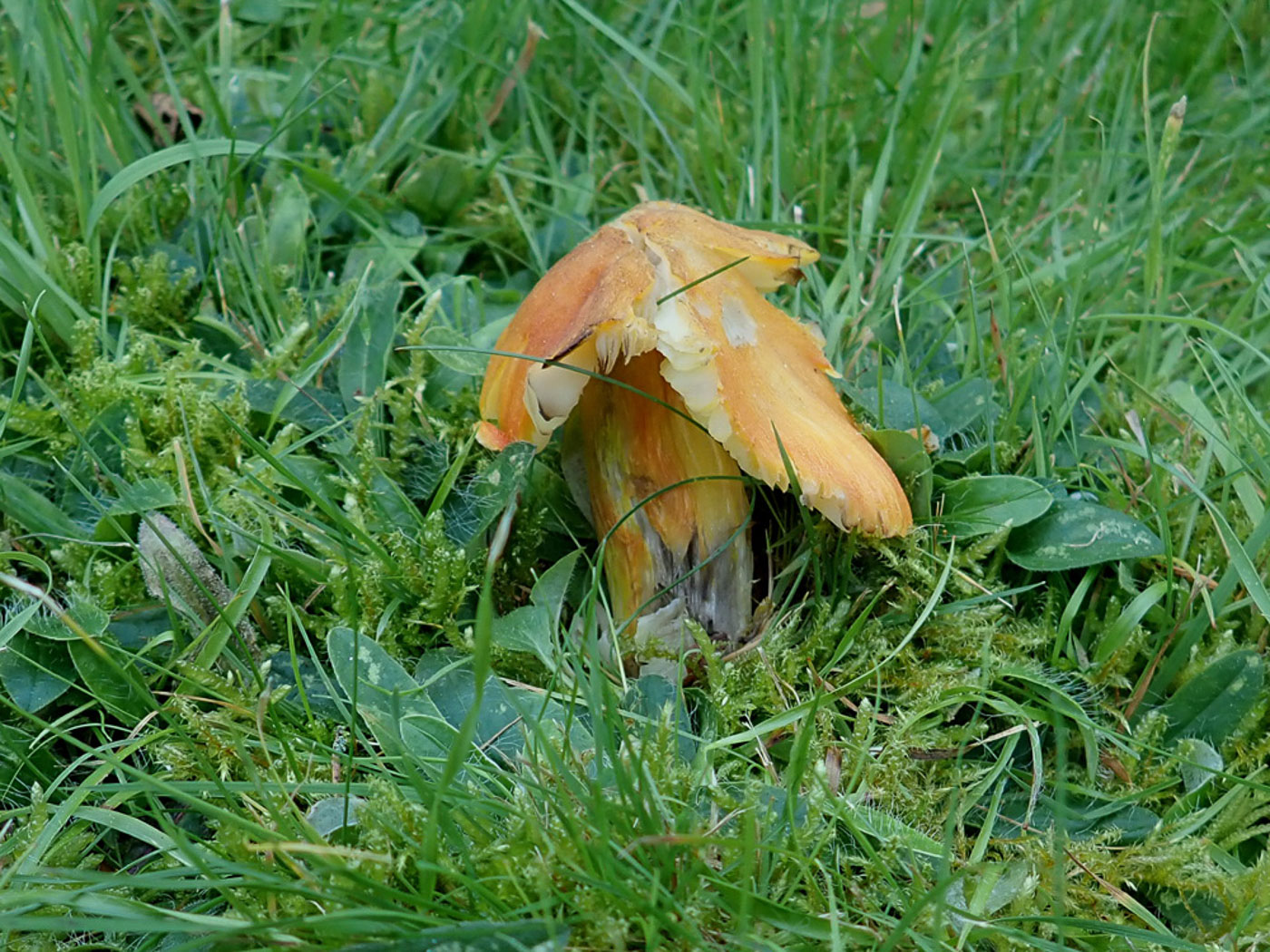
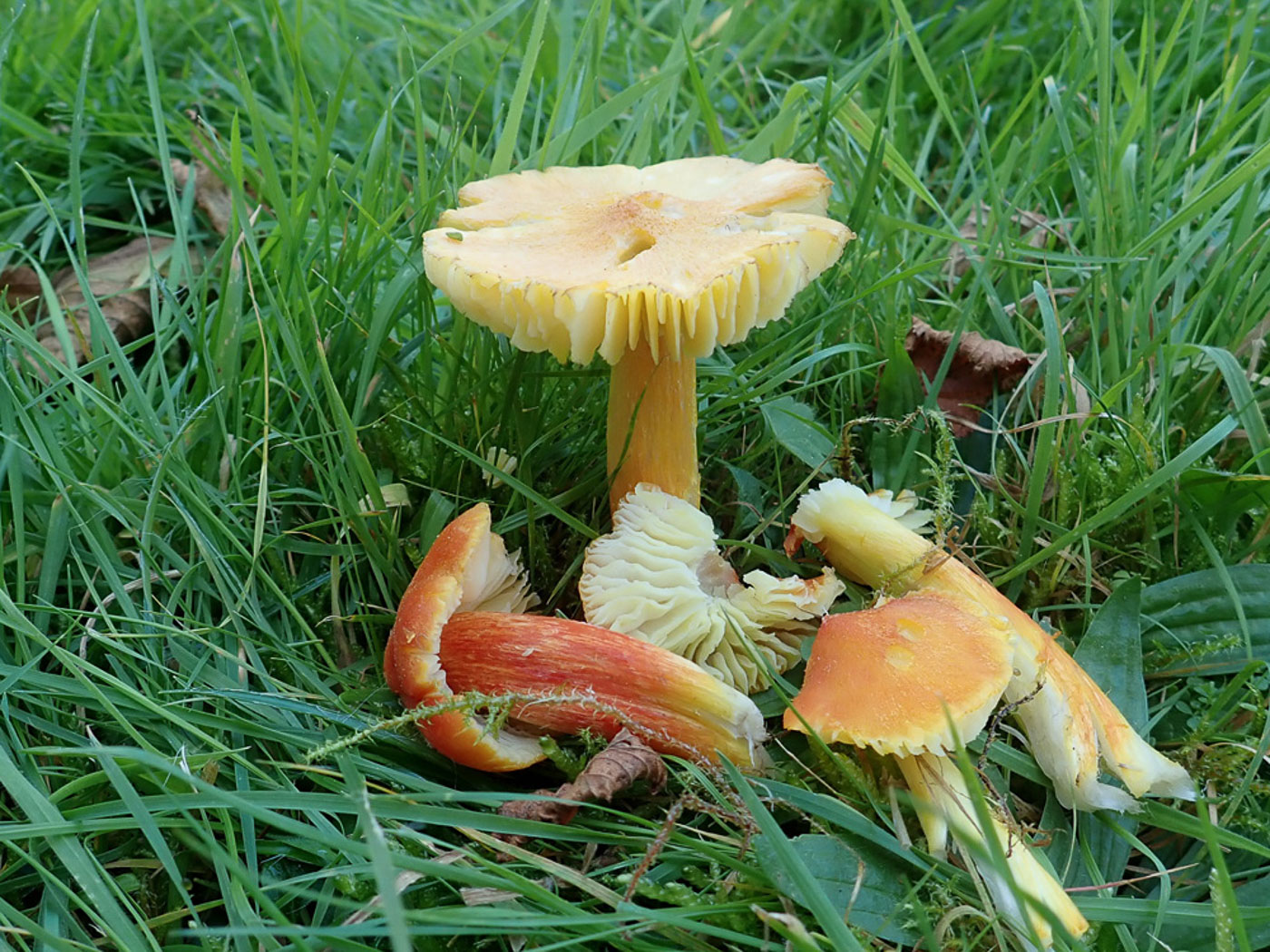 |
October 17th Hygrocybe intermedia (Fibrous Waxcap)
The previous day Penny received photo 1 from Phil Townsend to ask if she agreed that this was Hygrocybe intermedia which he'd just seen in Prestwood Churchyard. It did look like it but as the diagnostic fibrous stem was not visible in his photo, she paid a visit there today to try and check it and see what else was about - this is always an interesting site for grassland species. She found what she guessed was the same fruitbody, now past its best and possibly affected by the slight overnight ground frost, but the large fibrous orange cap together with dry fibrous stem was enough to confirm it. Nearby were one or two other examples which further convinced her of its ID (photo 3). She was later surprised to discover that we have no previous county records though she recalls seeing the species in Ashridge many years ago. So this is yet another species to add to the growing list of fungi found at this remarkable little site, also another new entry for Finds.
|
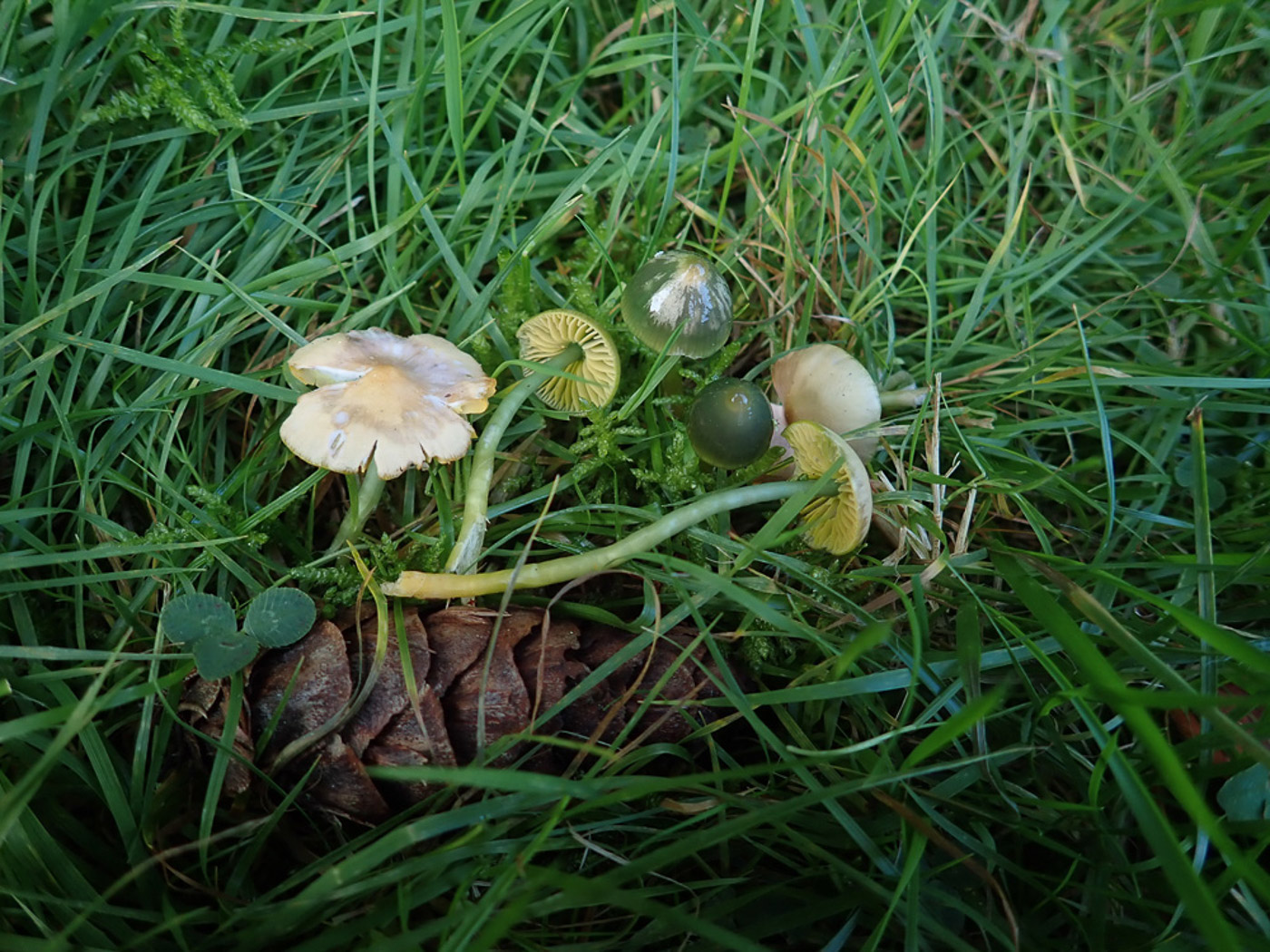
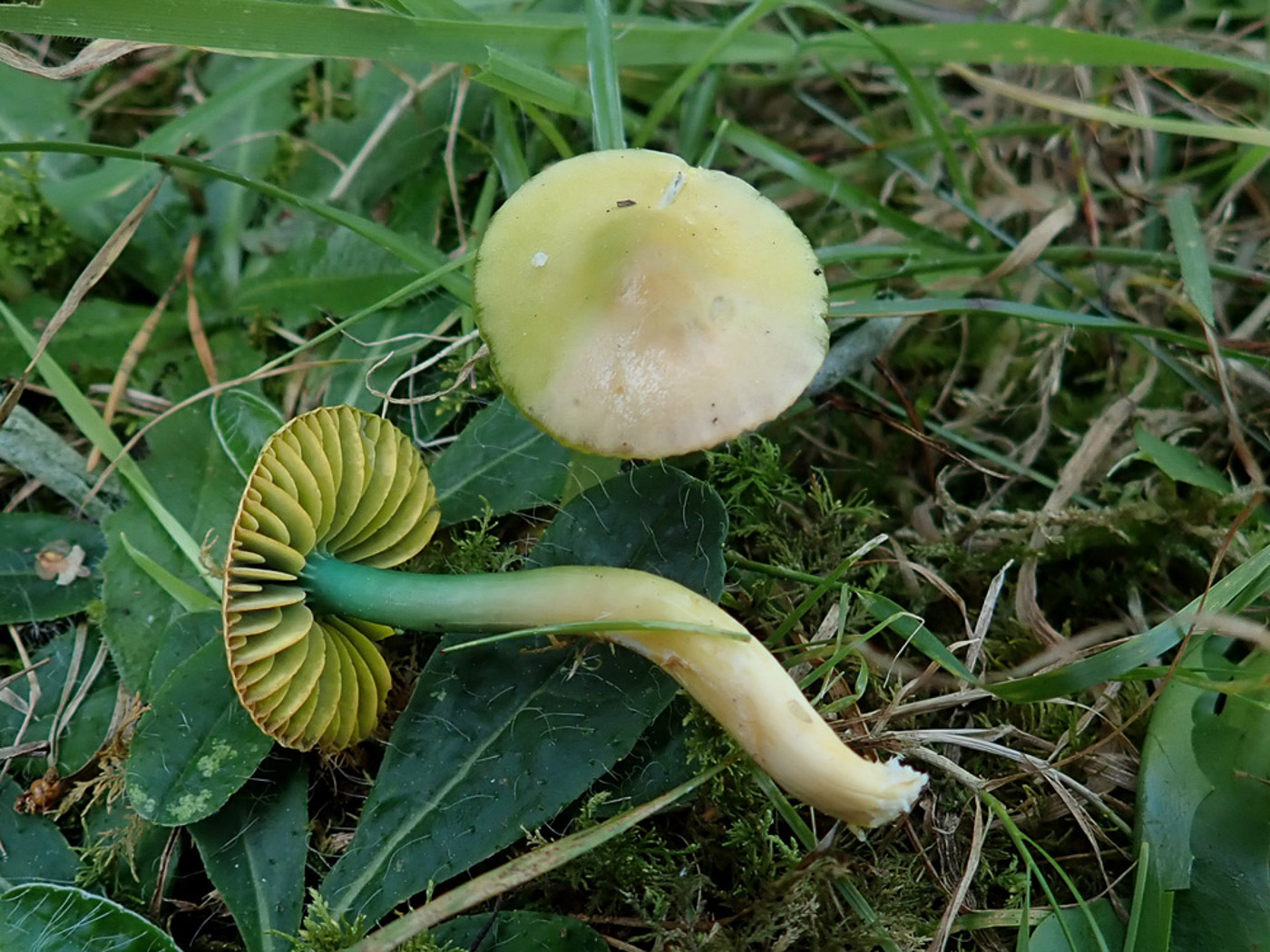
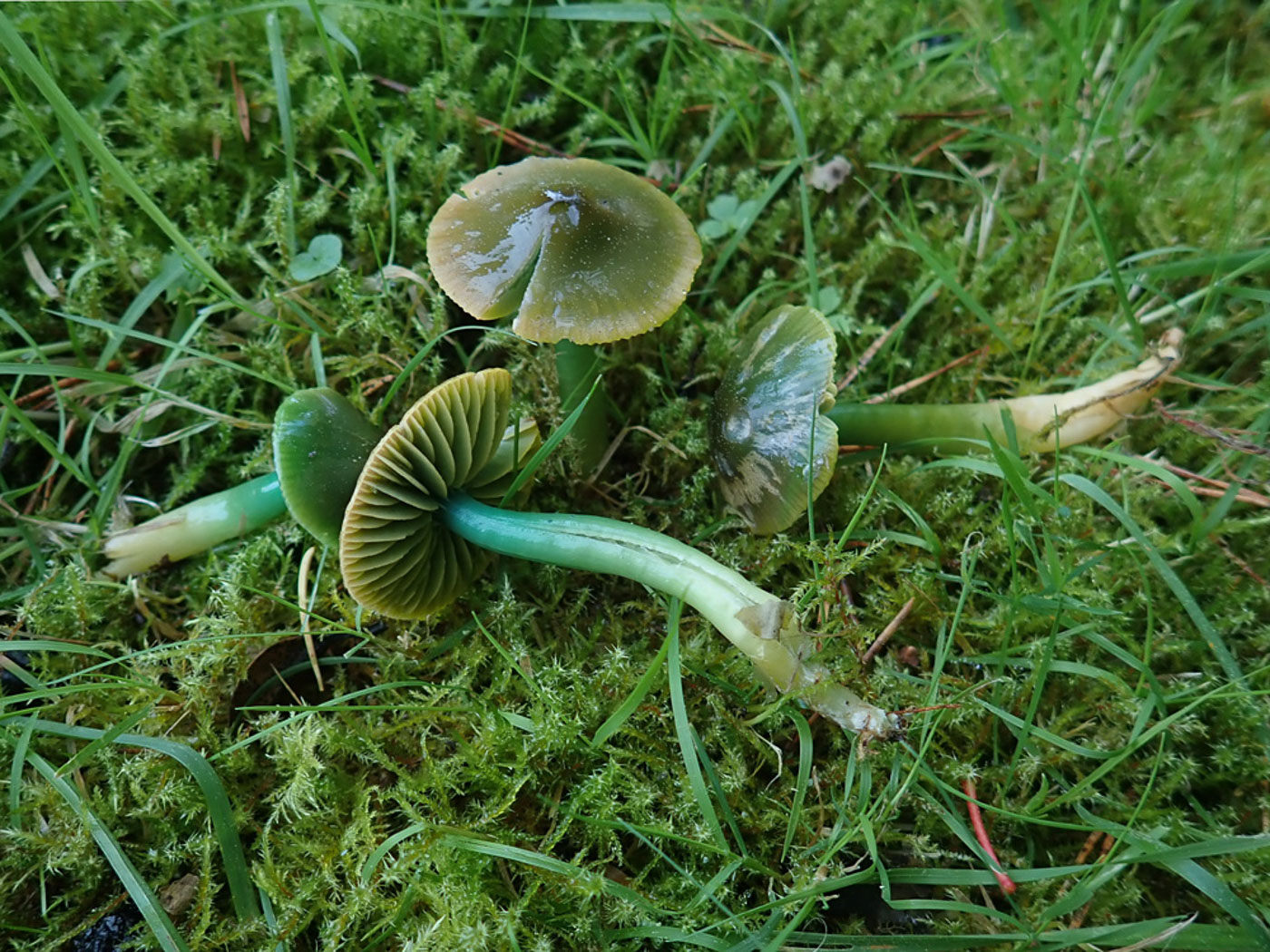 |
October 17th Gliophorus psittacinus (Parrot Waxcap)
In grass at Prestwood Churchyard Penny found various groups of this charismatic Waxcap - one it's difficult to resist getting the camera out for! The caps were somewhat varied in colour, as they often are, but the distinctive grass green even if missing from the cap is always apparent in the top half of the stem to confirm if there's doubt over its ID. Furthermore, like all waxcaps now moved to genus Gliophorus, it is slimy all over. See the Masterlist for various other examples.
|
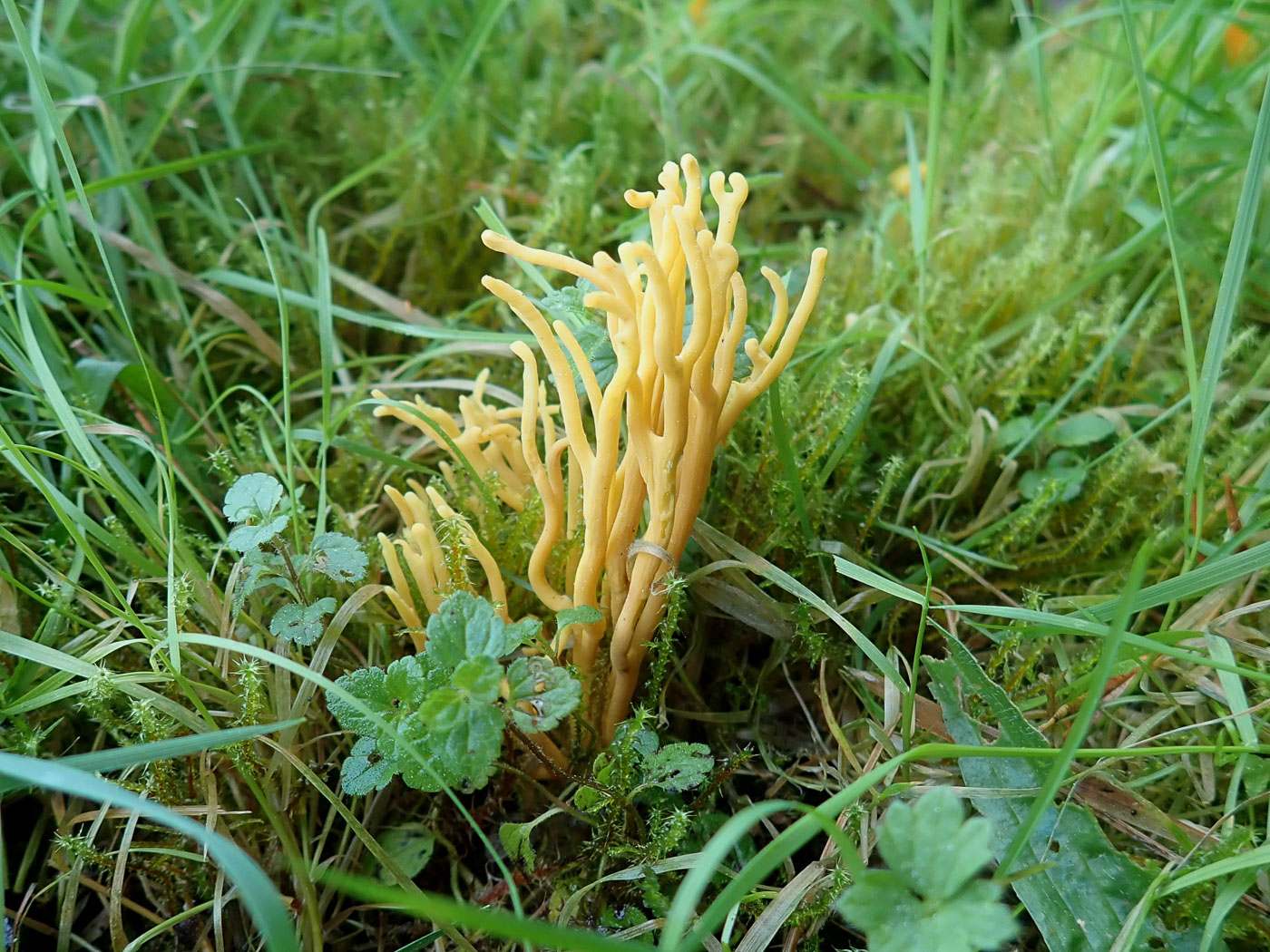 |
October 17th Clavulinopsis corniculata (Meadow Coral)
In grass at Prestwood Churchyard Penny saw a whole load of bright yellow single clubs - probably Clavulinopsis helvola but she didn't check them - and amongst them a couple of tightly branching clusters which she recognised as C. corniculata. Probably not as common as C. helvola though classed in the same genus, in appearance it has more in common with the Corals - hence its common name. See the Masterlist for further examples.
|
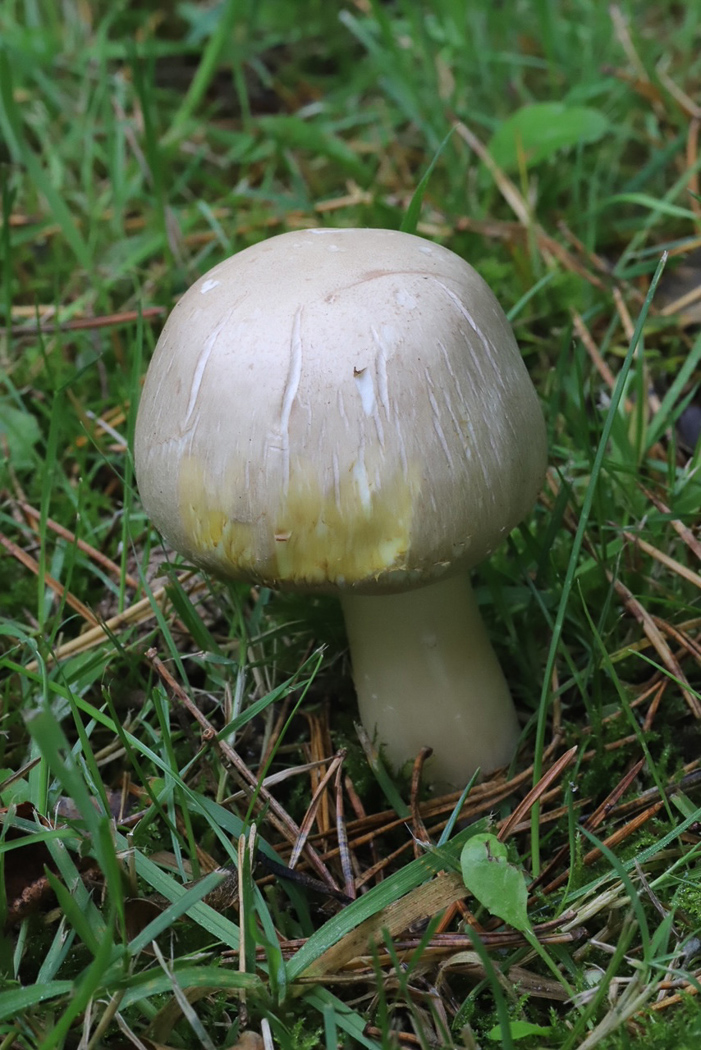
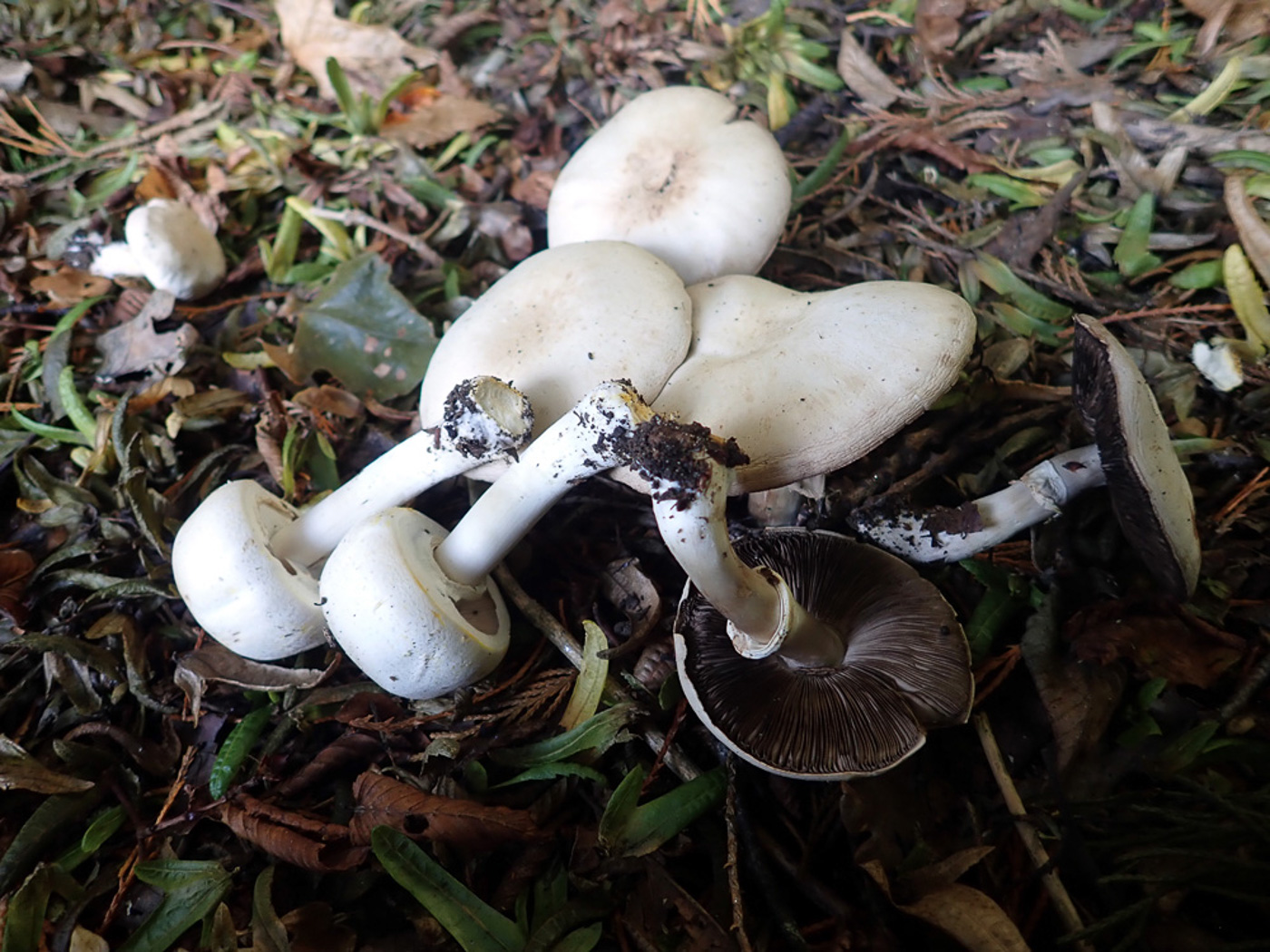
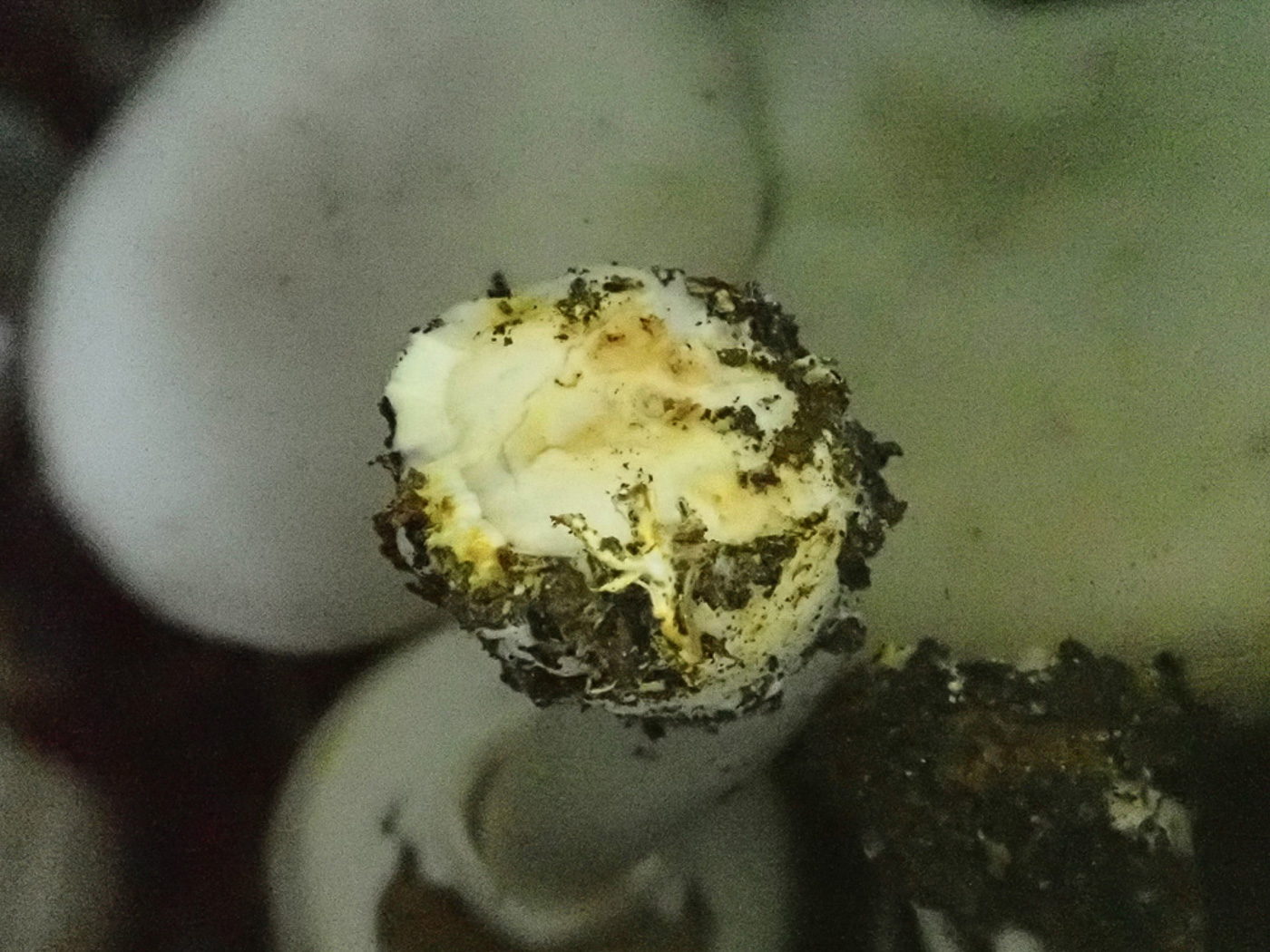 |
October 17th Agaricus xanthodermus (Yellow Stainer)
The previous day, Penny received photo 1 from Phil Townsend to ask if she agreed that this was Yellow Stainer as he thought. He 'd found it at Prestwood Churchyard. Being unsure as the stem base was not visible (also many Agaricus species have caps which bruise yellow as seen here) she visited the site today to check and see what else was around. Under a Cypressus in the far corner she found more examples and was then able to confirm Phil's ID though the bright brass yellow staining at the stem base (photo 3) was not as strong as it is sometimes. However, it was definitely present and that together with the strong inky smell and somewhat square cap shape when young were enough to be sure. See the Masterlist for various other examples.
|
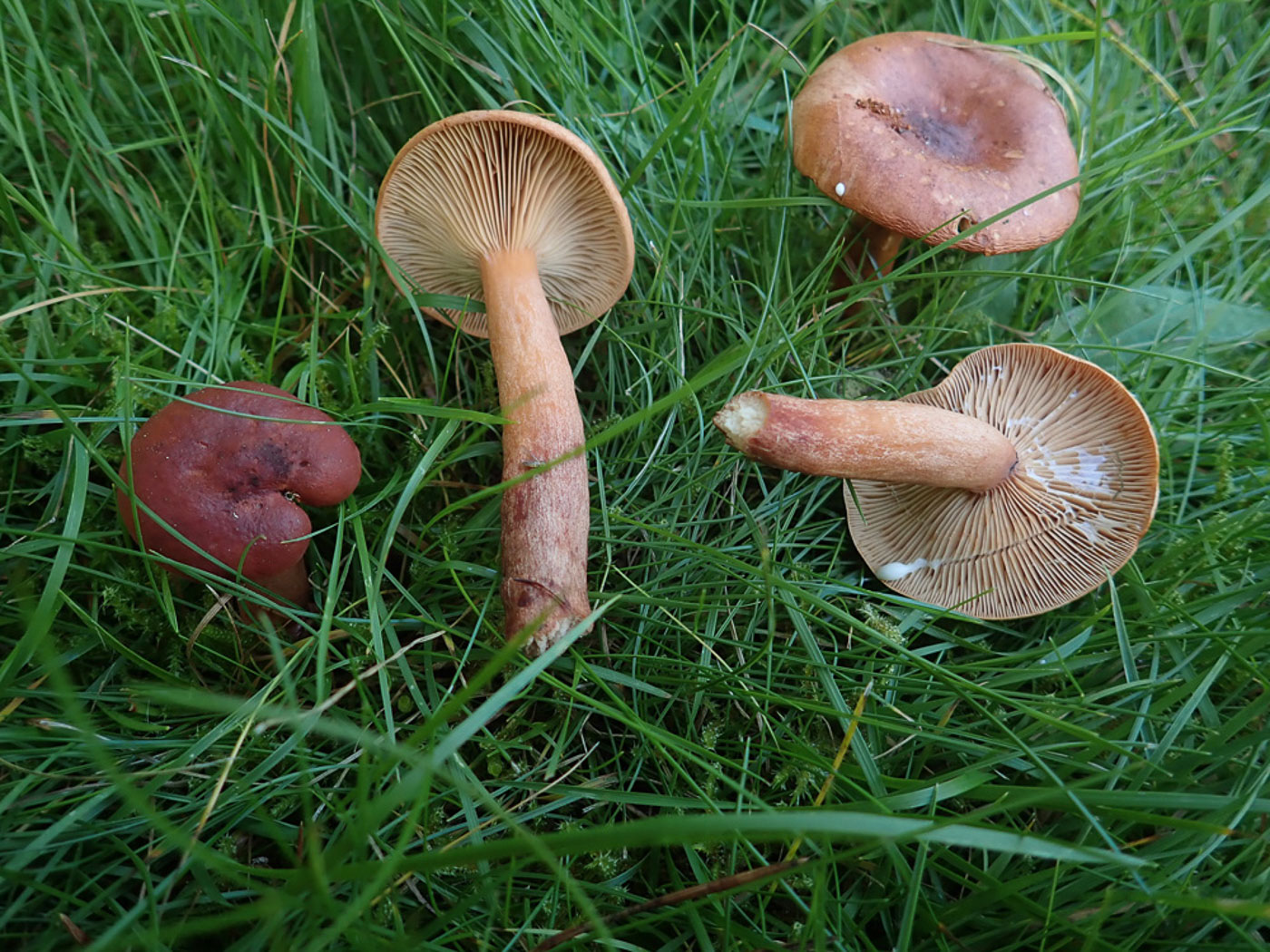 |
October 17th Lactarius aurantiacus (Orange Milkcap)
At Prestwood Churchyard in longish grass near Oak and Pine Penny found several of these brightly colour Milkcaps. The species has perhaps the most intensely colour orange brown caps and the watery milk remains white on the gills when damaged. It is an occasional fruiter in mixed woodland and here was associating with one of the nearby trees. See the Masterlist for our two other entries.
|
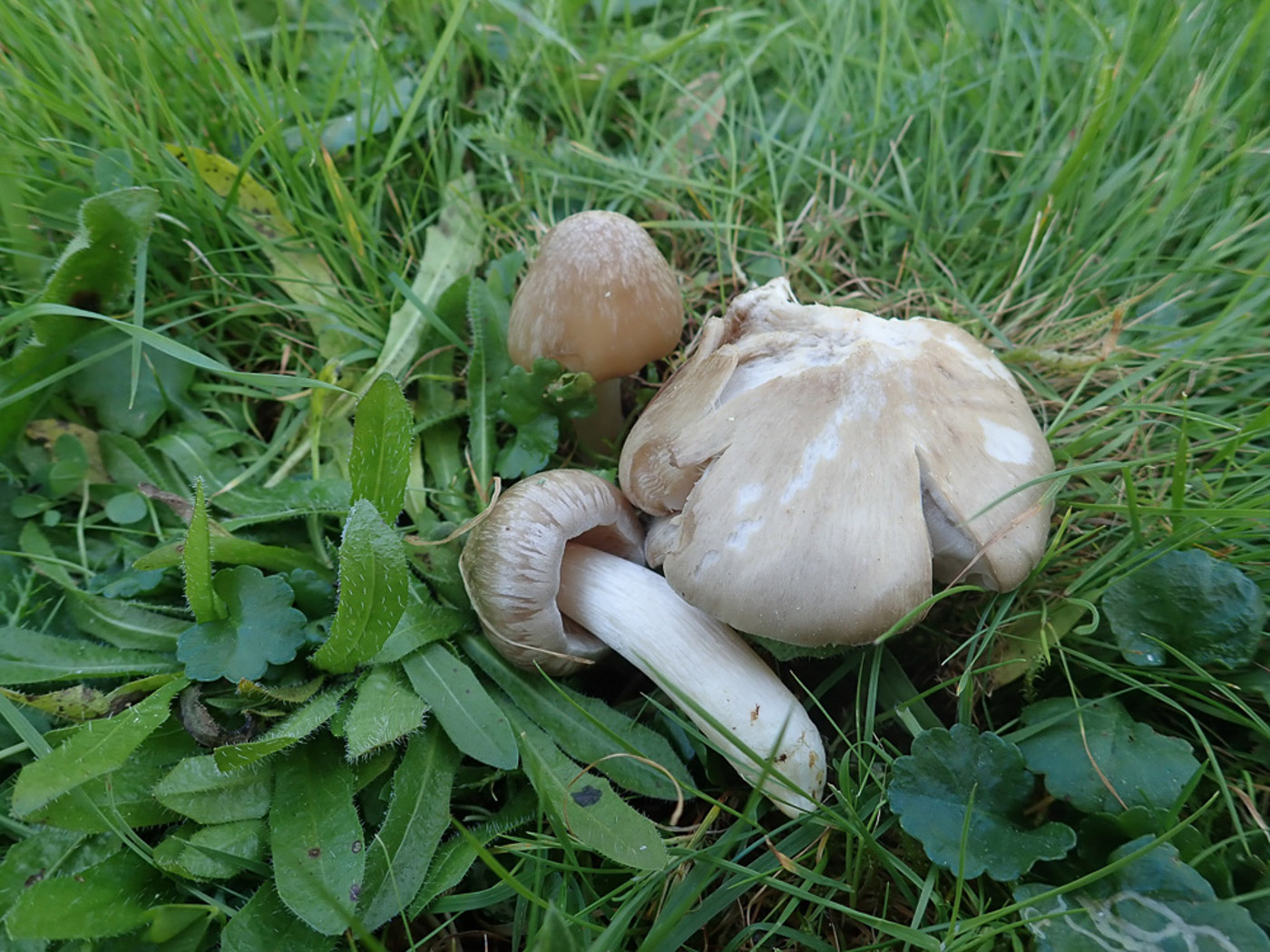
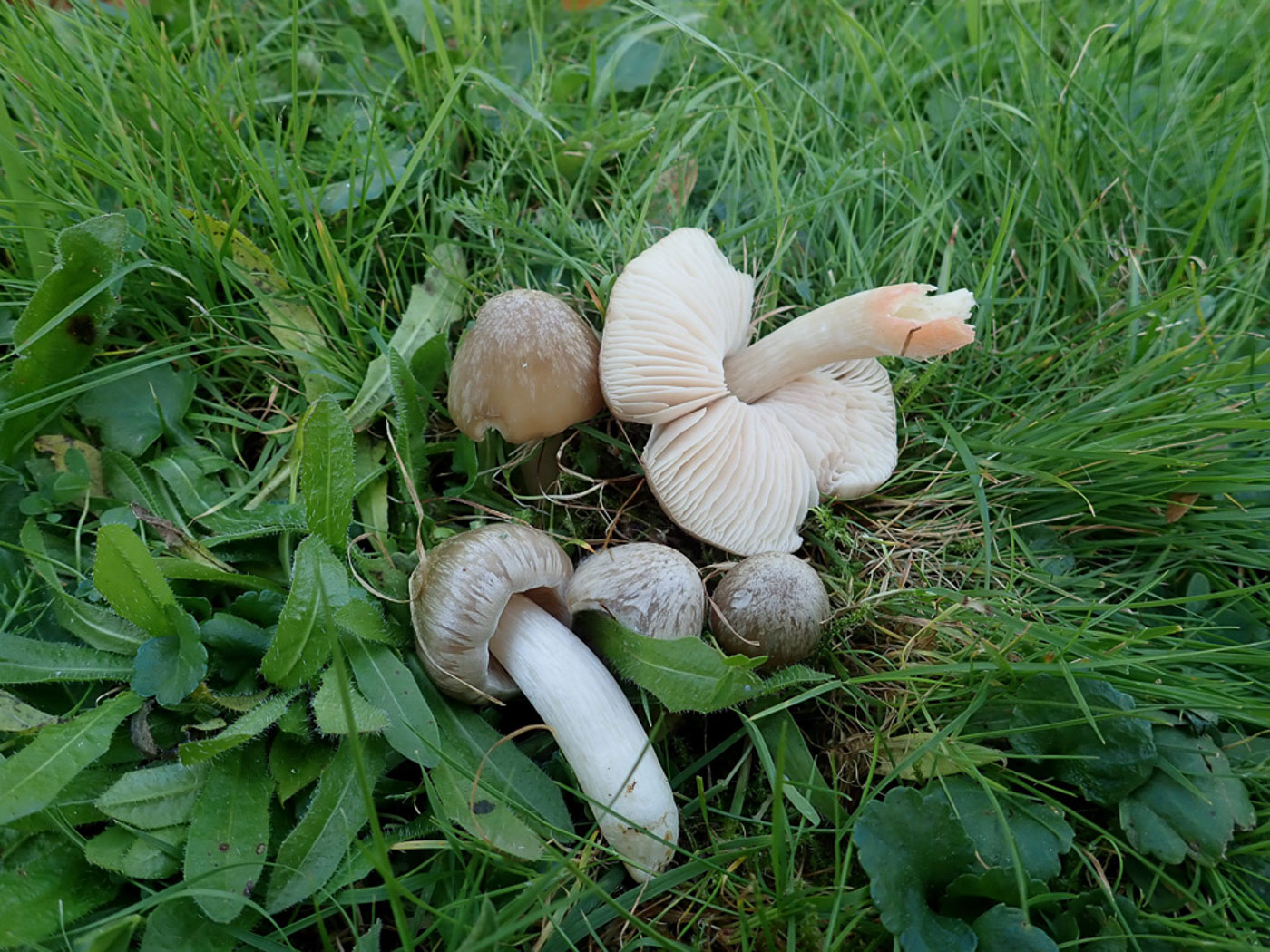 |
October 17th Entoloma prunuloides (Mealy Pinkgill) 
In lawn at Prestwood Churchyard Penny found a couple of examples of this chunky Pinkgill which, though not that common, is one that can fairly safely be recognised in the field by its fibrillose pale greyish cap and strong mealy smell. It was not until she upturned the large specimen to observe the gills that she found two more small caps emerging underneath (photo 2). The gills are not yet pink here despite its size and clearly it had not yet dropped any mature spores to colour the caps beneath. Note the pink stem base seen here - not a feature of the species but obviously an infection of some sort. By the next morning the entire stem base was covered in white mould - presumably a species of Hyphomycete. See also in Finds 2021 October 30th – Penny's first collection at this site.
|
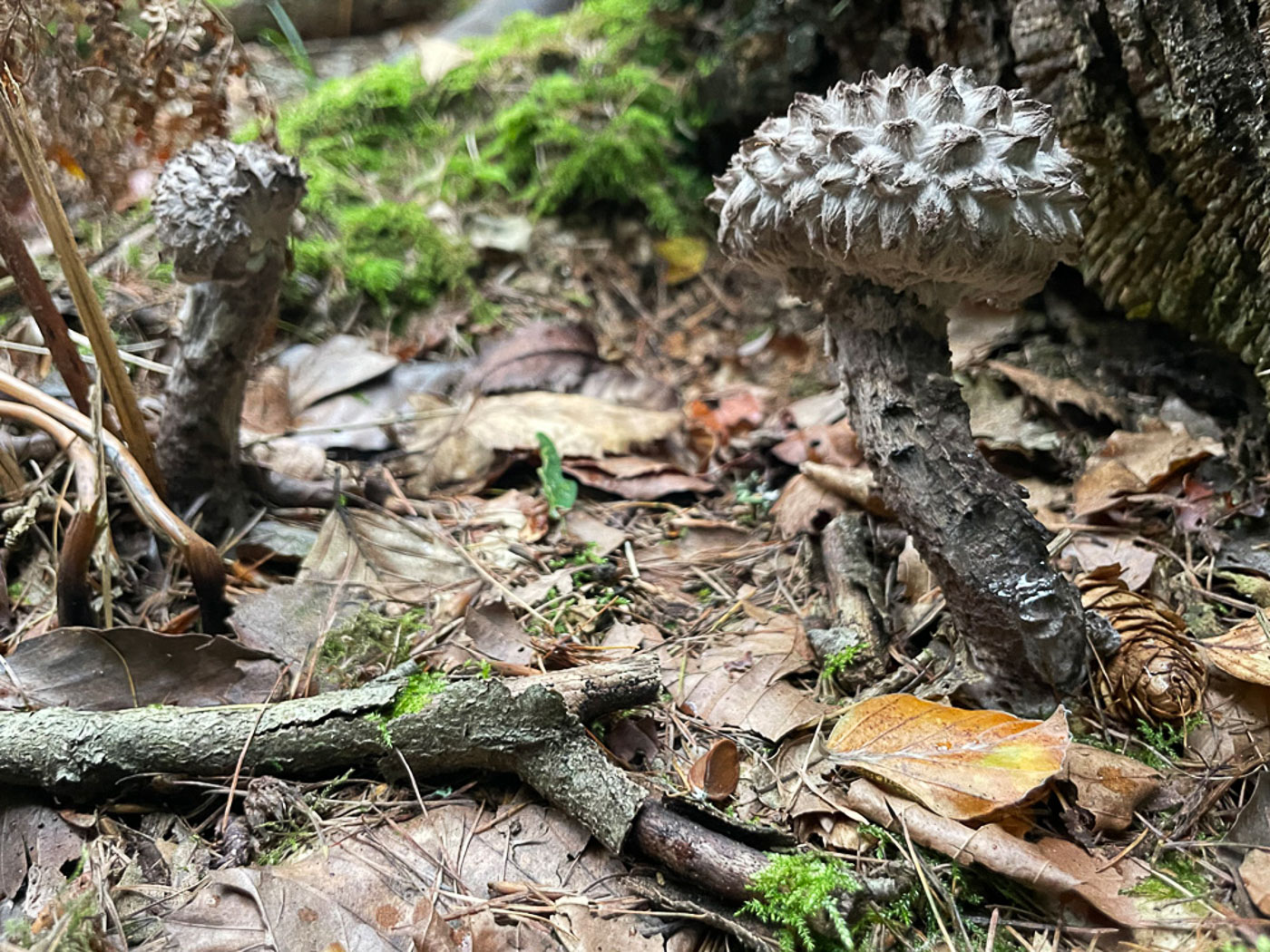
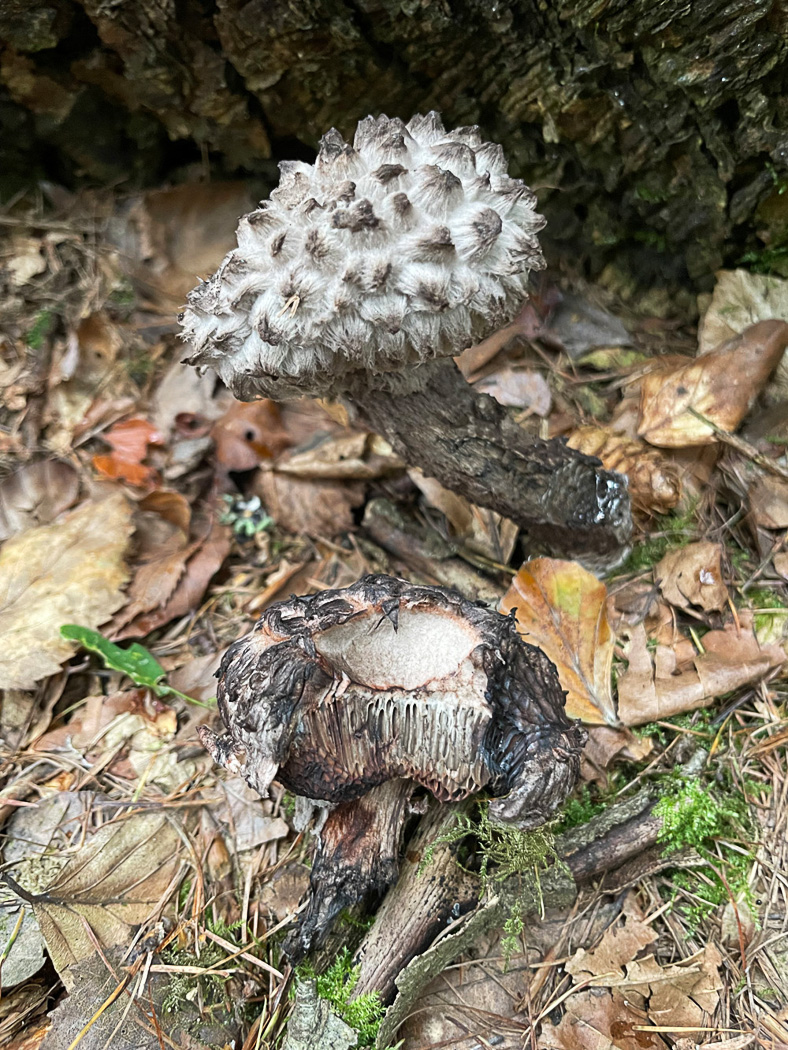 |
October 11th Strobilomyces strobilaceus (Old Man of the Woods)
After a tip-off from a friend, Sarah Ebdon went in search of this unmistakeable and charismatic Bolete in Penn Wood, and sure enough there it was in the spot she'd found it before under the Larches. In photo 2 one can see a damaged bit of cap and pore surface showing the typical reddening when the flesh is exposed to air - not that one needs this extra clue to confirm the ID with such a distinctive species, but every little helps! See the Masterlist for further examples.
|
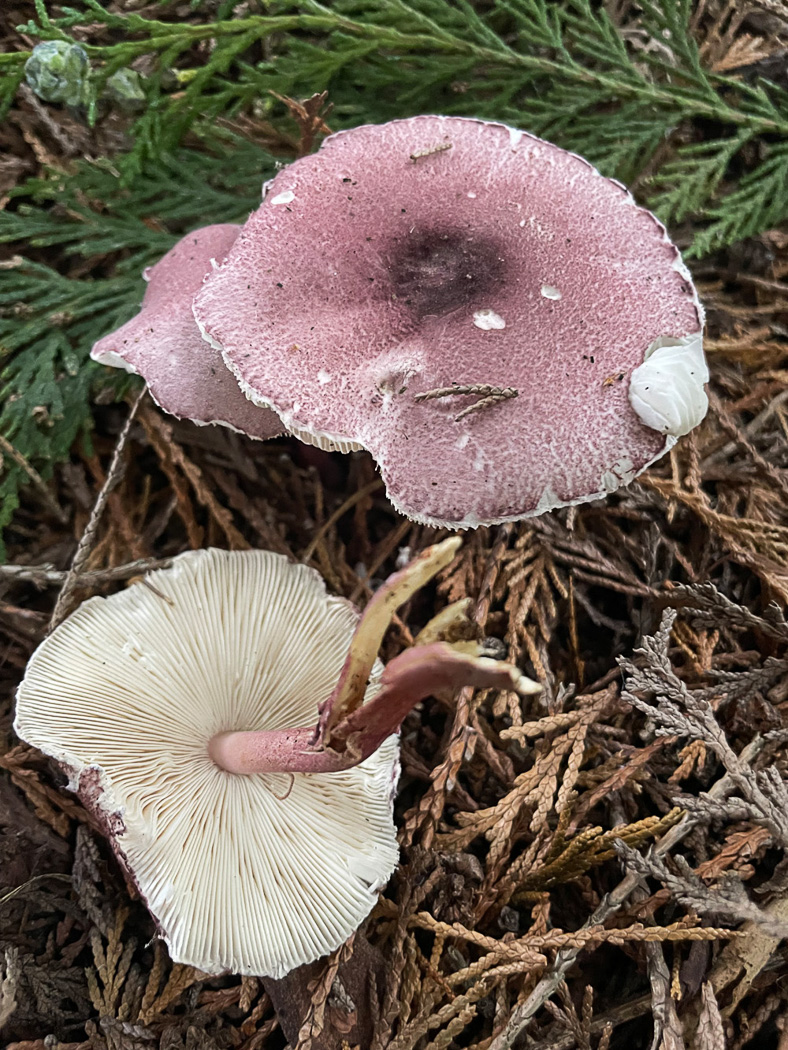 |
October 11th Leucoagaricus ionidicolor (a rare Lepiotoid species with no common name)
This rare and beautiful mushroom was found by Jesper Launder in Penn Street Churchyard in conifer litter which it favours. The link to the genus Lepiota is clear in its white free gills, stem with a fleeting ring and dry squamulose cap surface. The species is rare all over Europe and we have just two previous county records, one found by Jesper again (see in Finds 2021 November 21) and the other interestingly found by Derek at this same site in 2014. (The photo is Sarah Ebdon's.)
|
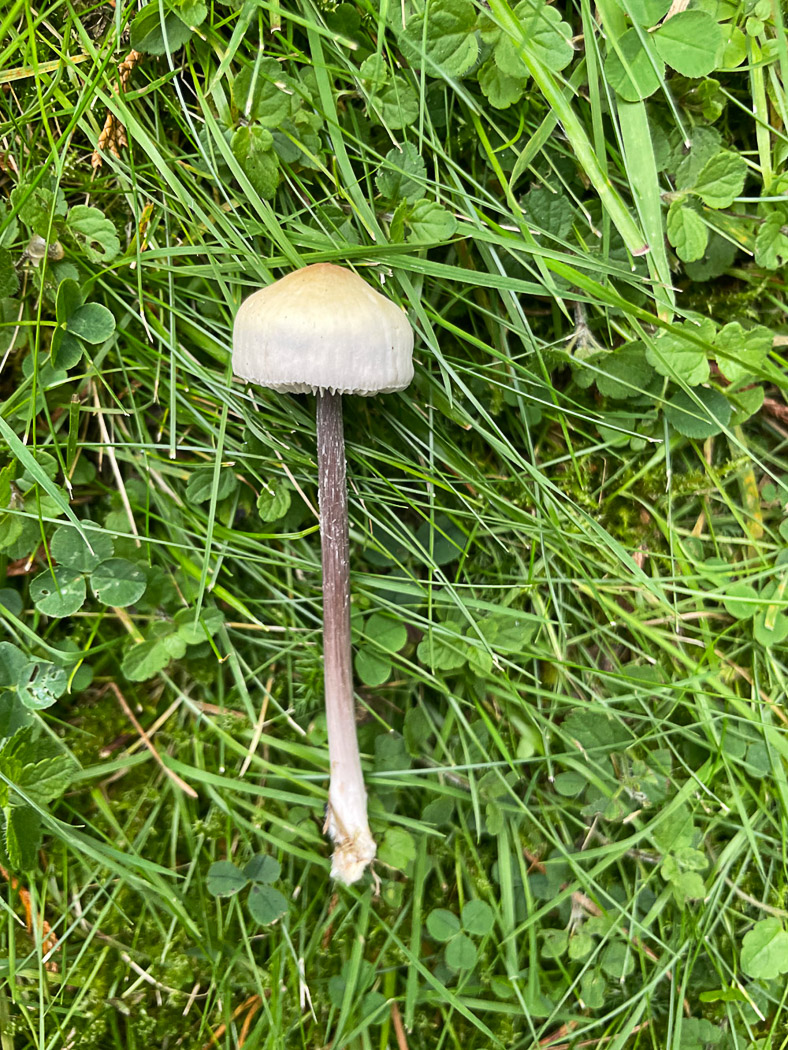
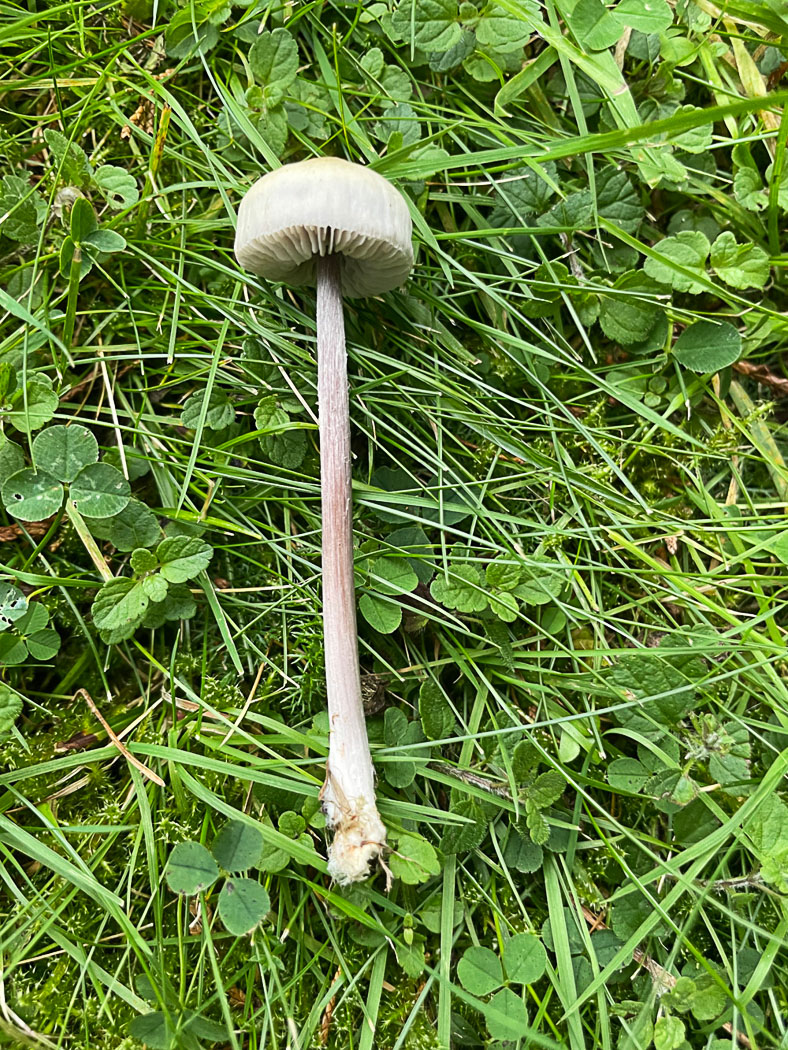 |
October 11th Mycena luteovariegata (a Bonnet with no common name)  
In grass in Penn Street Churchyard Jesper Launder found this strange Bonnet which he didn't recognise and which Sarah Ebdon took home to examine. The raphanoid smell, also microscopic characters, suggested it was in the M. pura group though its yellowish tinged colour did not match any obvious candidates within that group. However, for some years a M. pura var. lutea has been described and is now elevated to species level after DNA analysis. It is the only member of this species complex to be found consistently in grassland and also has slightly different microscopic features. Penny has found such examples in grassland before but this is the first official county record and is a new Finds entry. See also the two entries below. (The photo is Sarah Ebdon's.)
|
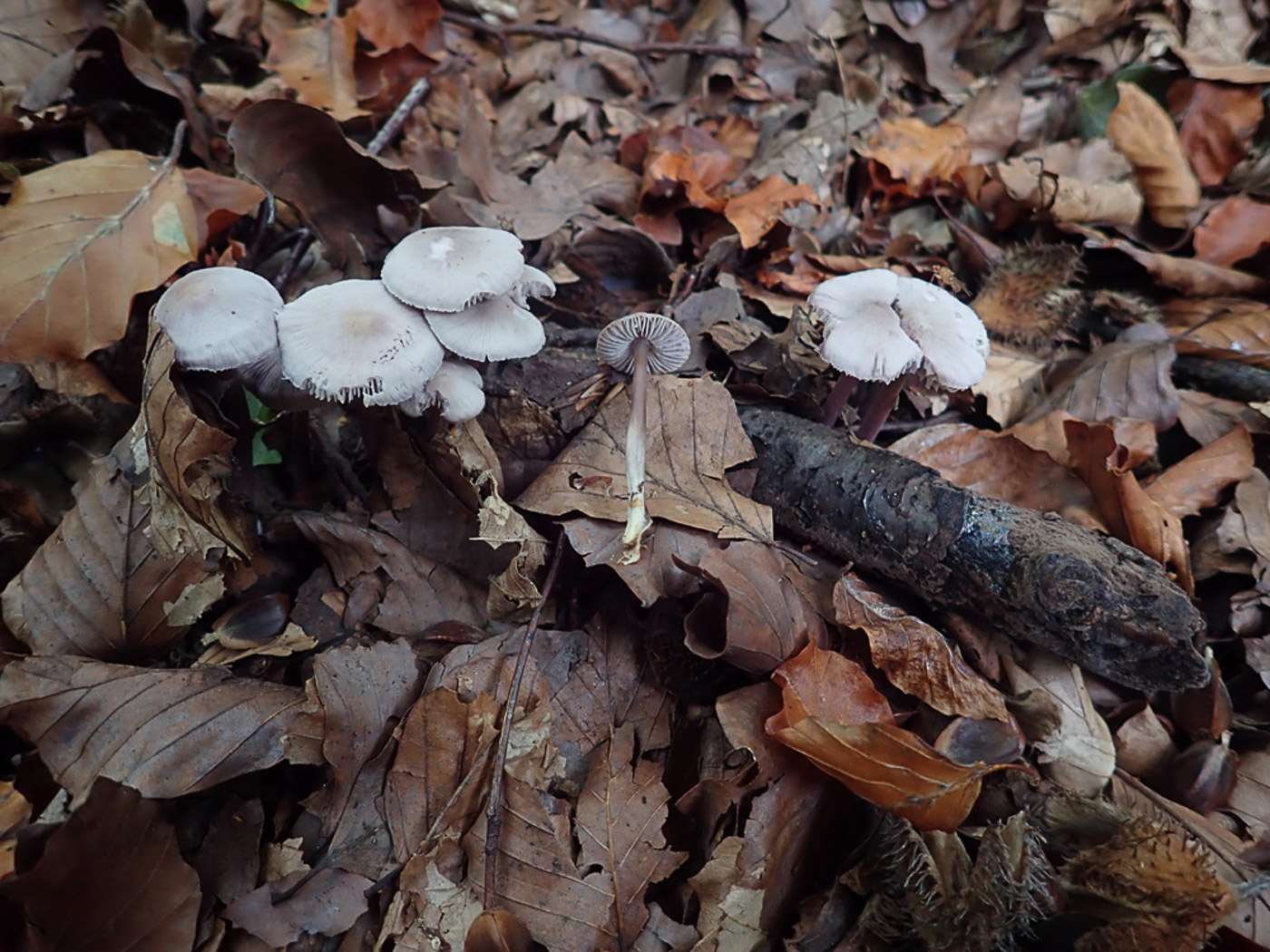 |
October 11th Mycena pura (Lilac Bonnet) 
In litter in Pullingshill Wood Penny found a pale group of this species which is not as common as the beautiful pink M. rosea in this area though closely related. (See the entry below and also above!) It was not many years ago that both lilac and pink forms of this Bonnet were lumped together as M. pura and only separated when DNA showed the pink form to be distinct. Both species come in a range of different shades, however, the constant feature being the strong raphanoid smell. See the Masterlist for further examples.
|
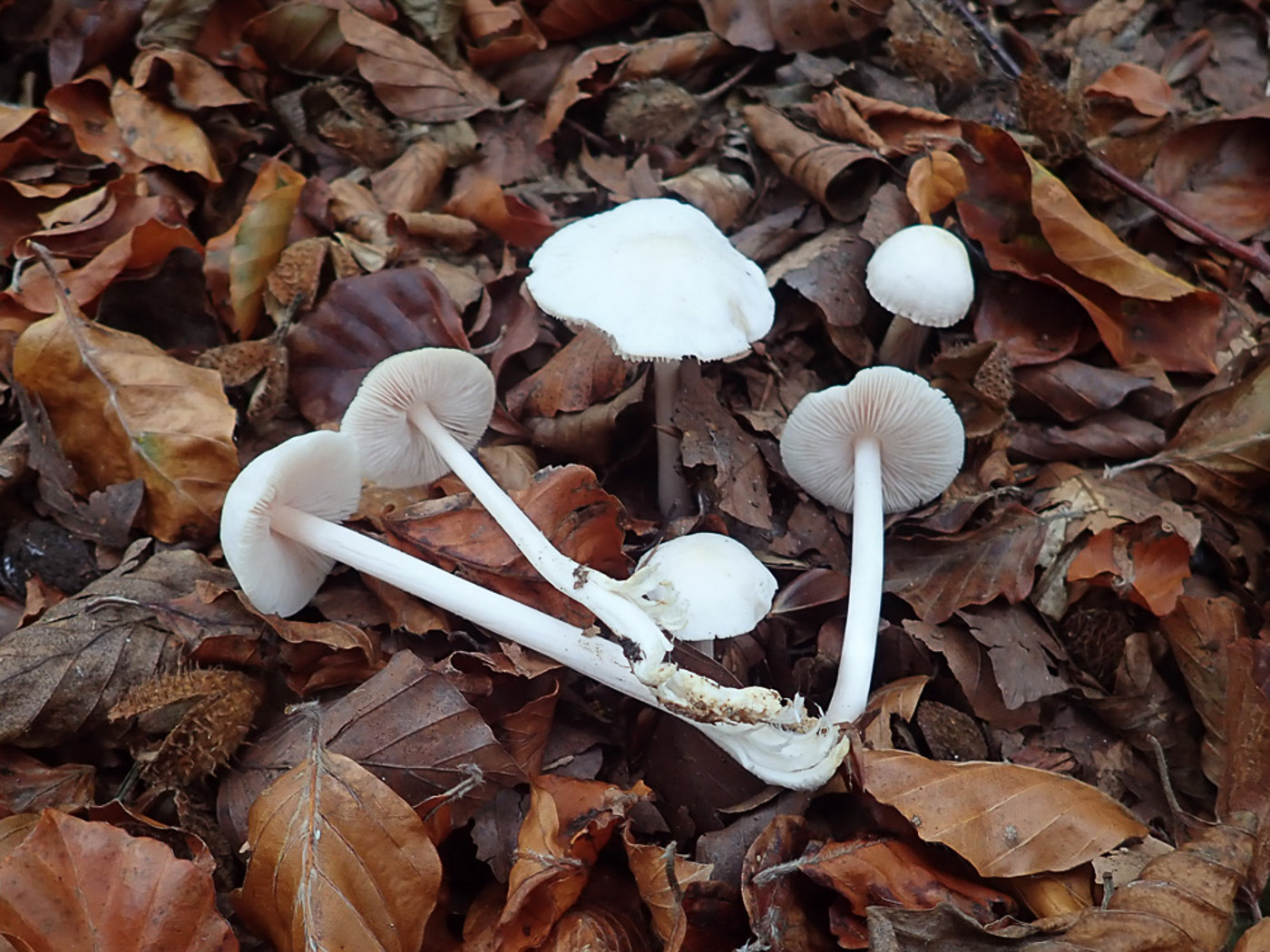 |
October 11th Mycena rosea forma candida (a form of Rosy Bonnet)
In litter in Hollowhill Wood - just across the road from Pullingshill Wood, Penny noticed a group of white capped Bonnets and quickly realised that they had to be related to the M. pura group of Bonnets which all share a distinctive raphanoid (radishy) smell. The pink gills together with tapering white stem pointed to a white form of M. rosea which she then found mentioned in several specialist Mycena books. Though we have entries of M. rosea in Finds this is the first white collection.
|
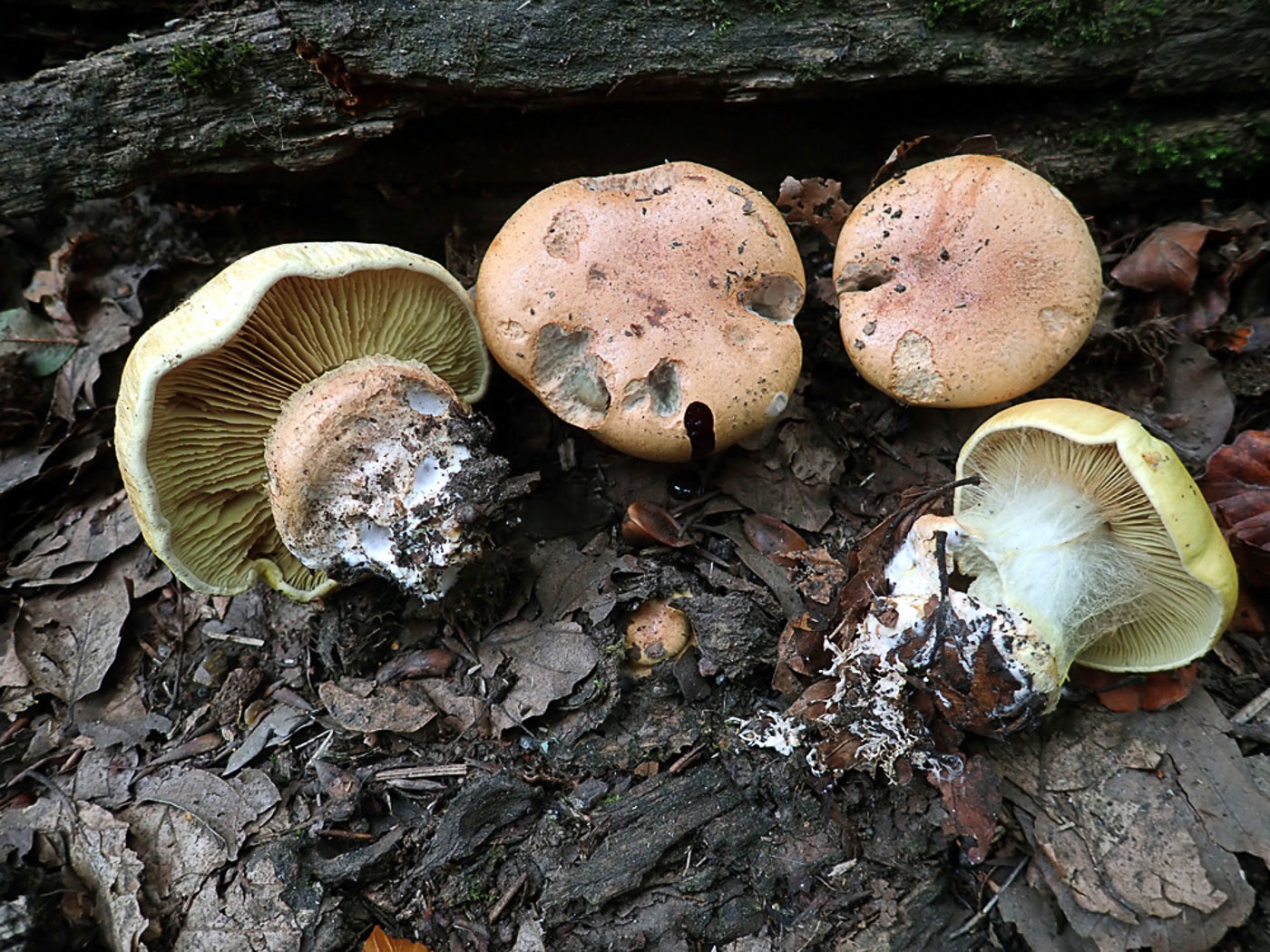
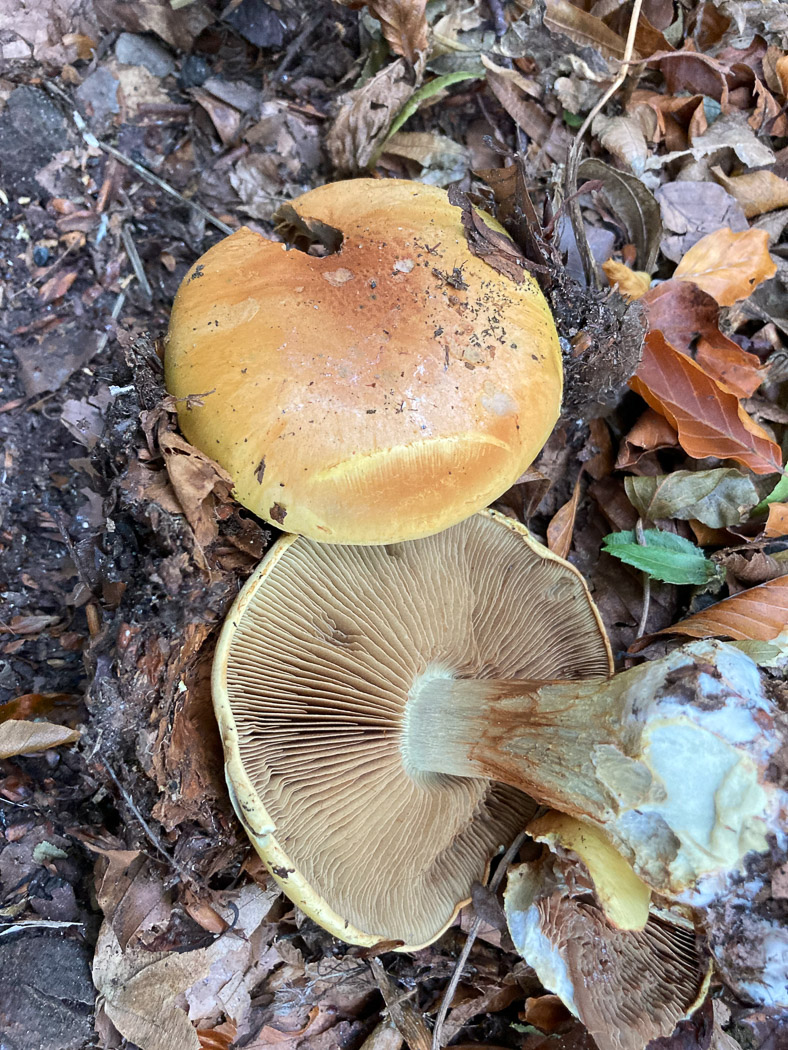 |
October 11th Cortinarius bergeronii (a Webcap with no common name) 
Under Beech in Marlow Common Penny found good examples of two different Webcaps - both of which have been sequenced from this same spot in recent years. C. bergeronii seen here is an impressive member of Section Phlegmacium (with a sticky cap but dry stem), pretty well identical to C. elegantissimus though a bit smaller and with smaller spores. Both associate with Beech in calcareous soil and the cap is pinkish orange brown in the centre but yellow around the margin. The bulbous stem is greenish yellow as are the gills at first (then rusty), and when young it has a striking thick white cobweb-like veil (seen in the RH specimen). When cut the flesh is pale violet in cap and upper stem and a drop of KOH turns instantly deep blood red on the cap (seen in the larger central cap here). Penny's found it in this spot several times since 2016 though at first named it C. elegantissimus until the presence of this second species, probably more common around here, was brought to our notice. Photo 2 is of a collection from Burnham Beeches found by Russell Ness just three day later. See also in Finds 2020 October 5th and 2021 October 20th.
|
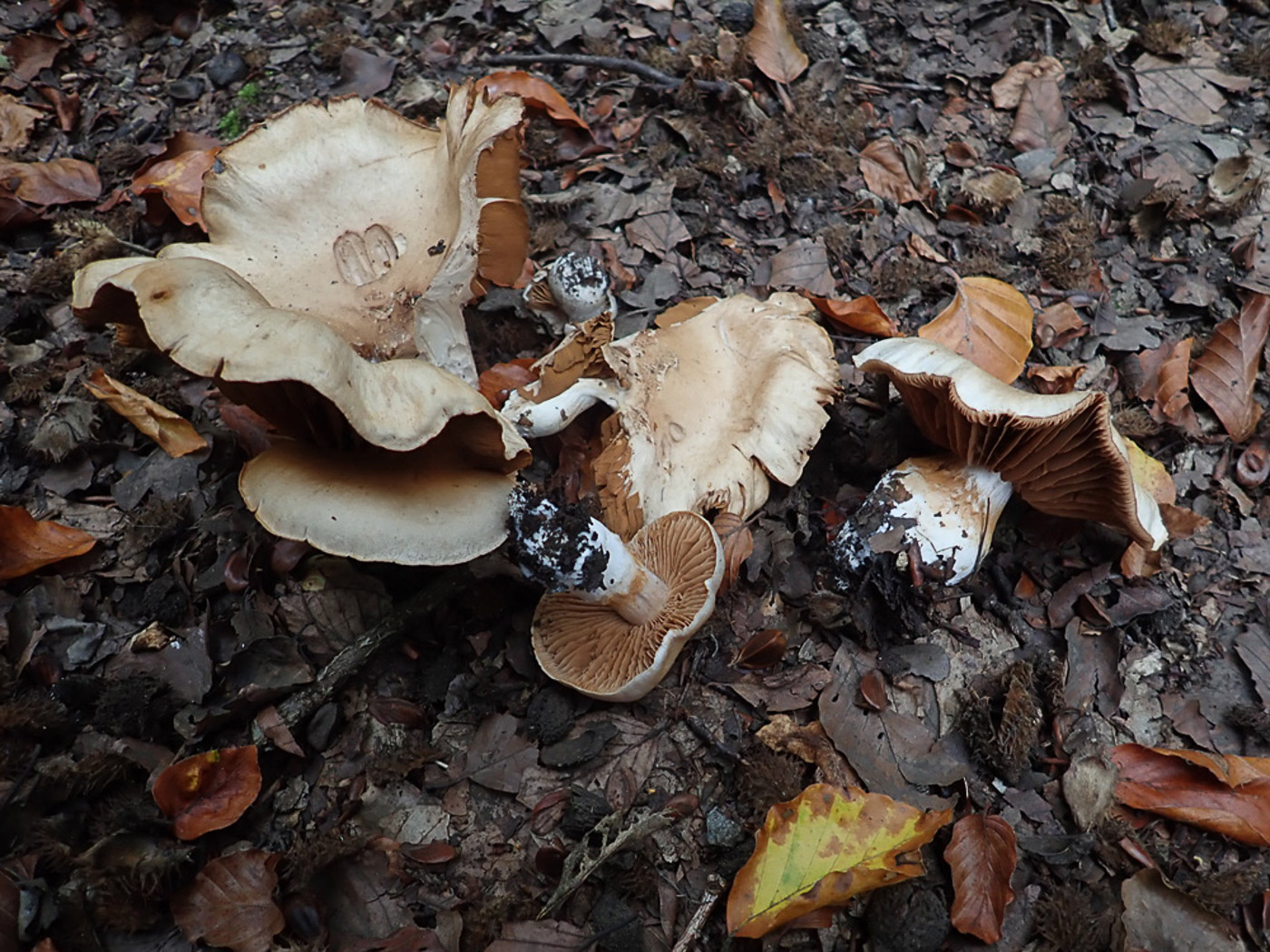 |
October 11th Cortinarius turgidus (a Webcap with no common name)
Under Beech in Marlow Common Penny found good examples of two different Webcaps - both of which have been sequenced from this same spot in recent years. C. turgidus seen here is a large member of Section Telamonia (with a dry cap and stem), found under Beech, less often under Oak and Hornbeam. It has a palish buff slightly streaky cap and a pale stem having a clavate base. Note how the rusty spores of the LH largest cap have dropped a print onto the cap beneath. This is a new entry for Finds.
|
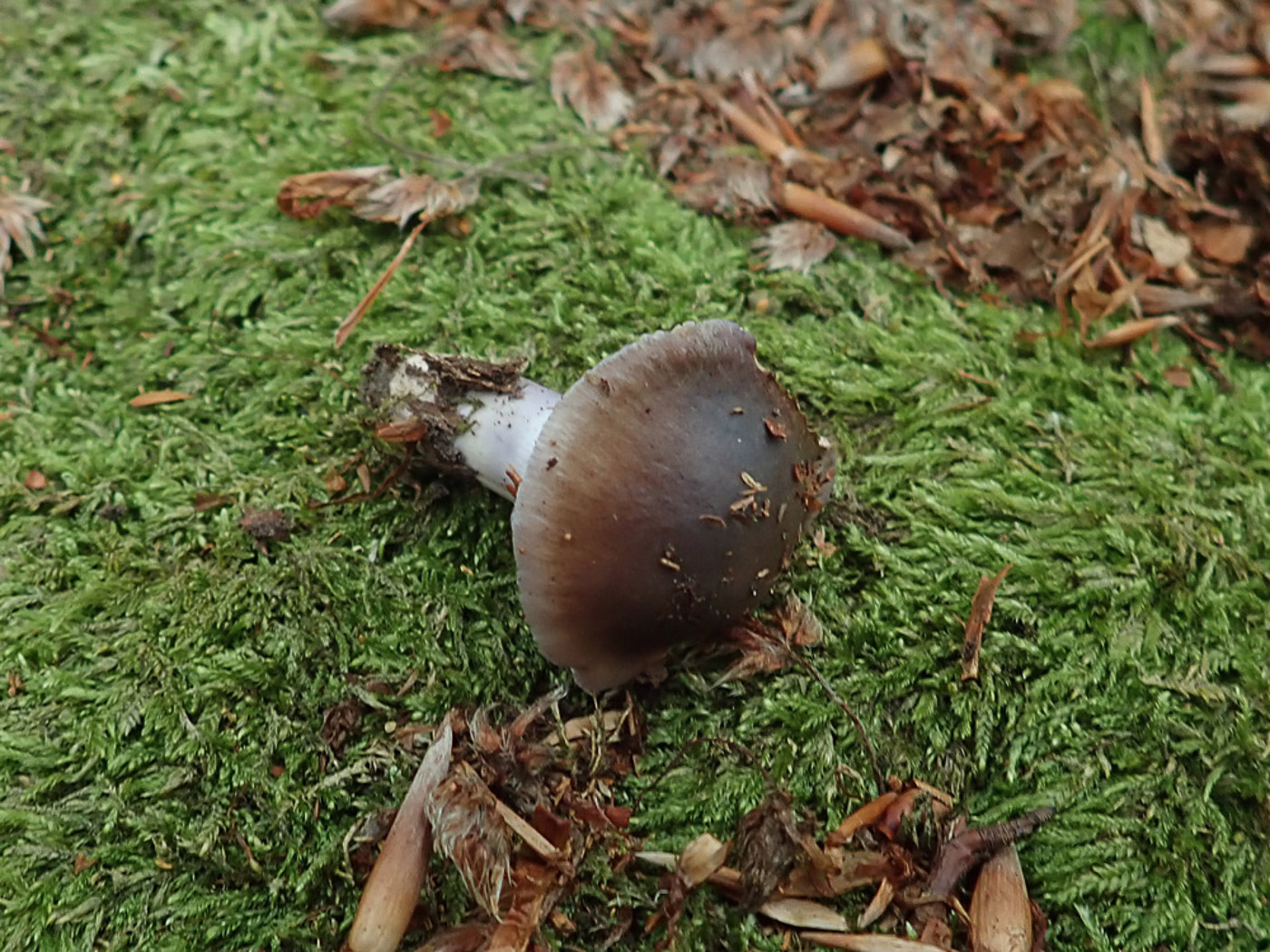
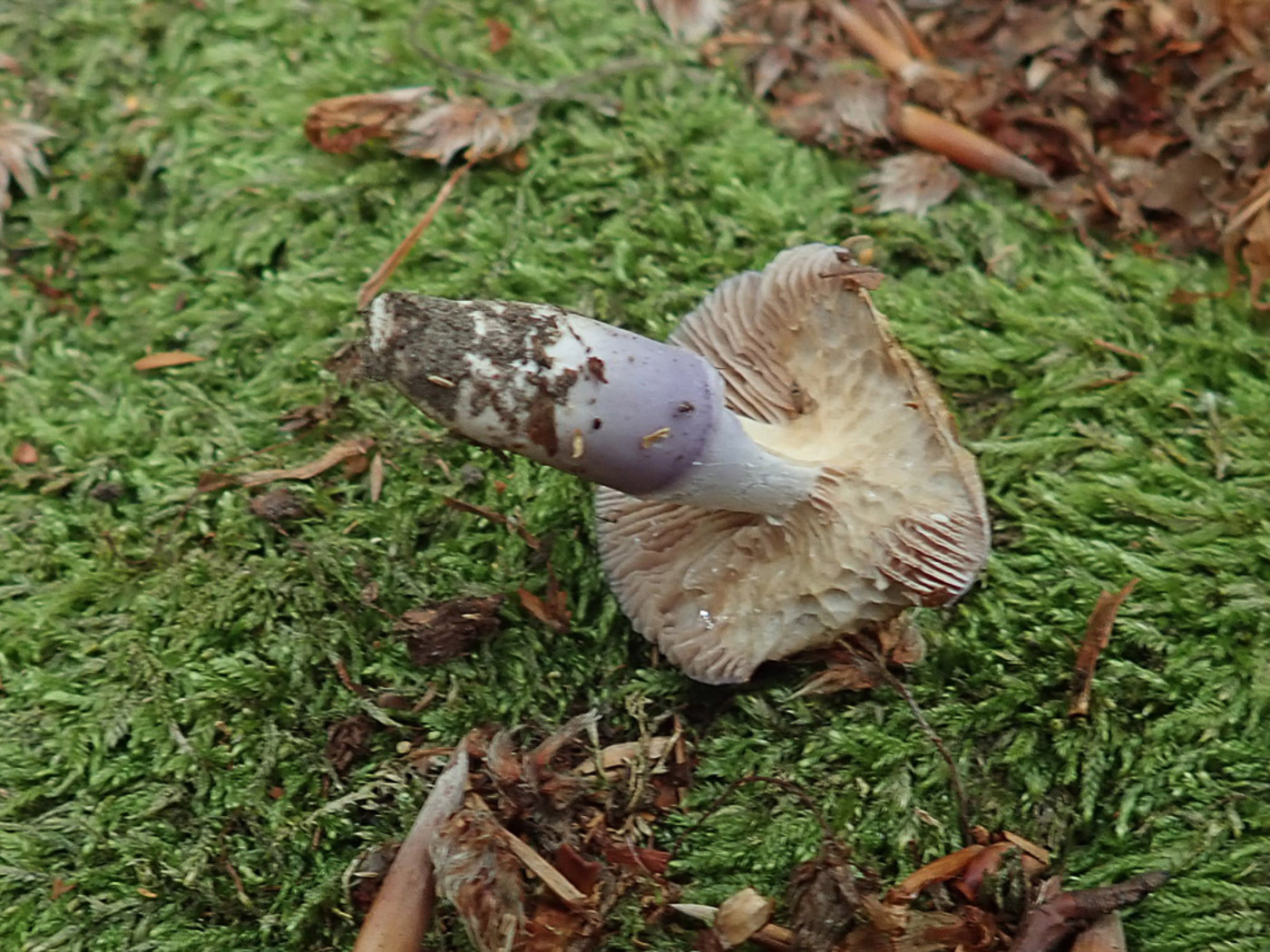
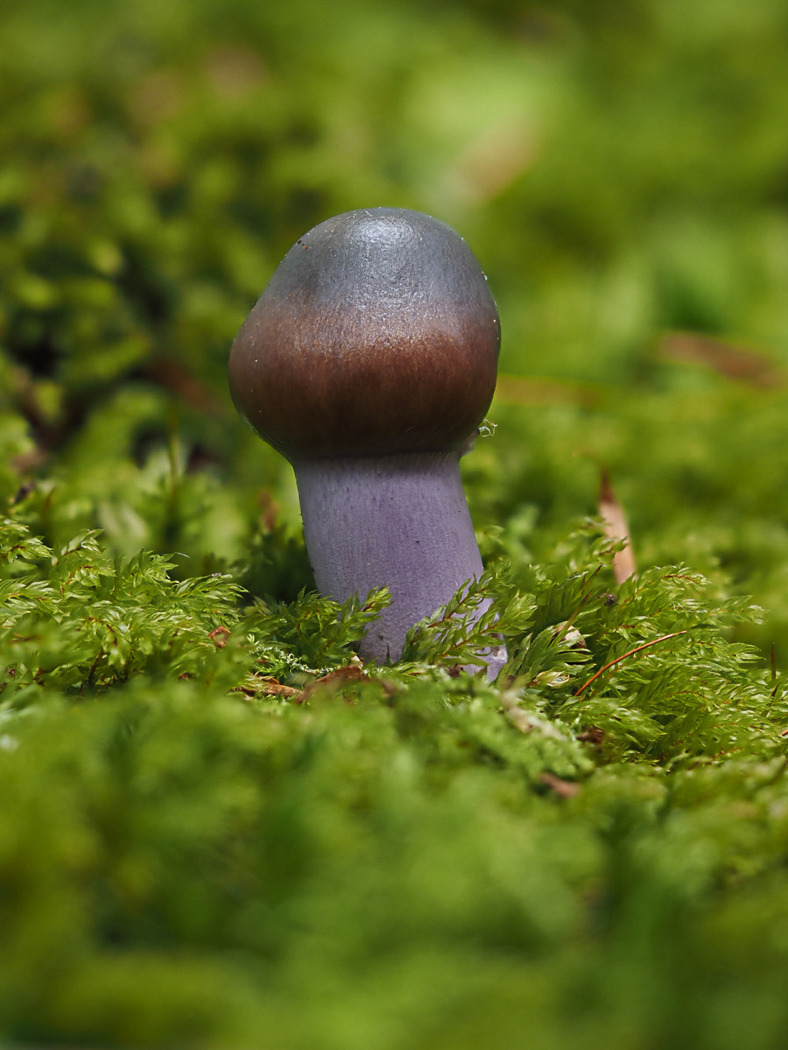 |
October 11th Cortinarius mucifluoides (a Webcap with no common name)
On a bank under Beech at Pullingshill Wood Penny found a single small sticky brown cap just emerging with purple tinges just visible on the stem. Recognising that this must be a Cortinarius Section Myxacium - this particular bank is a hotspot for Webcaps and the C. croceocoerulea collection, see below under October 10th, was still here only inches away - she collected it to identify. This group of Webcaps (with brown slimy caps, purple slimy stems and a smell of honey) has been much studied and sorted in the last few years with the aid of DNA sequencing, so we now know that this particular Beech associate is the one we've named C. pseudosalor or C. stillatitius in the past, both those names now obsolete though the very similar conifer associate is now C. integerrimus. C. mucifluus is again similar but a Pine associate. The similar C. elatior is another Beech associate but has a wrinkled cap - not smooth as seen here today, also the lower stem has floccose bands - not seen here. Photo 3 is Noel Murray's who saw this same specimen unopened the previous day!
|
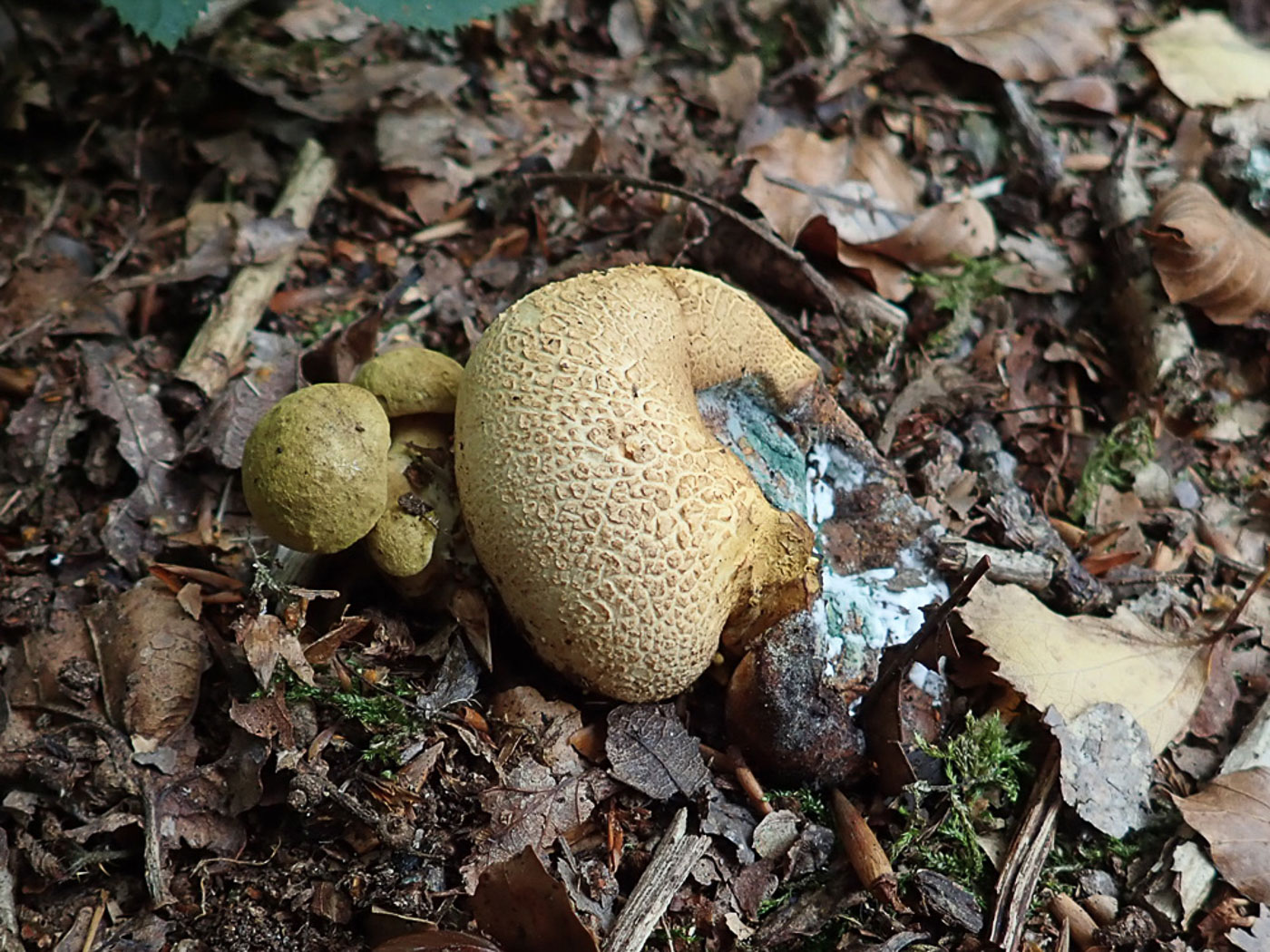
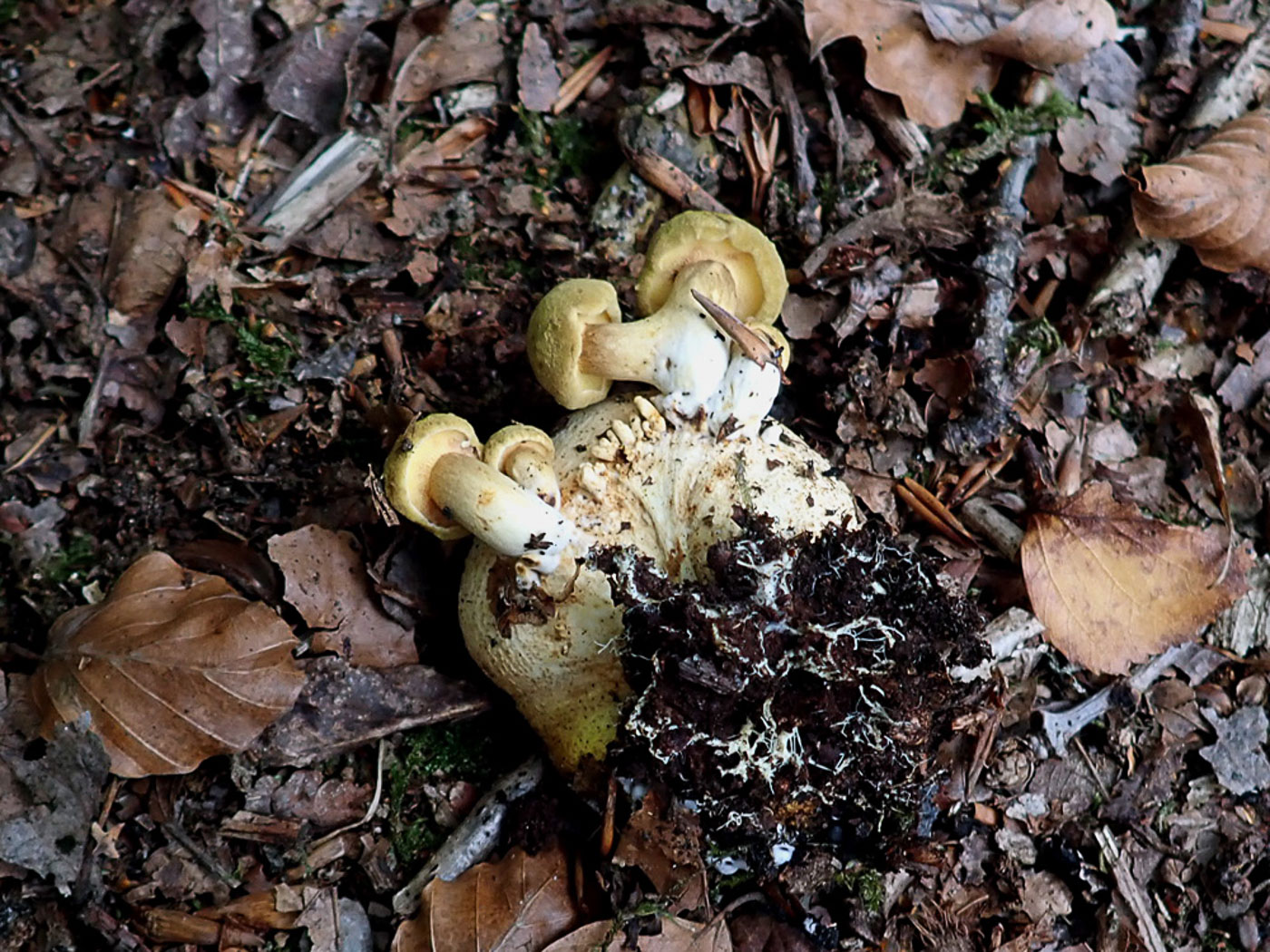
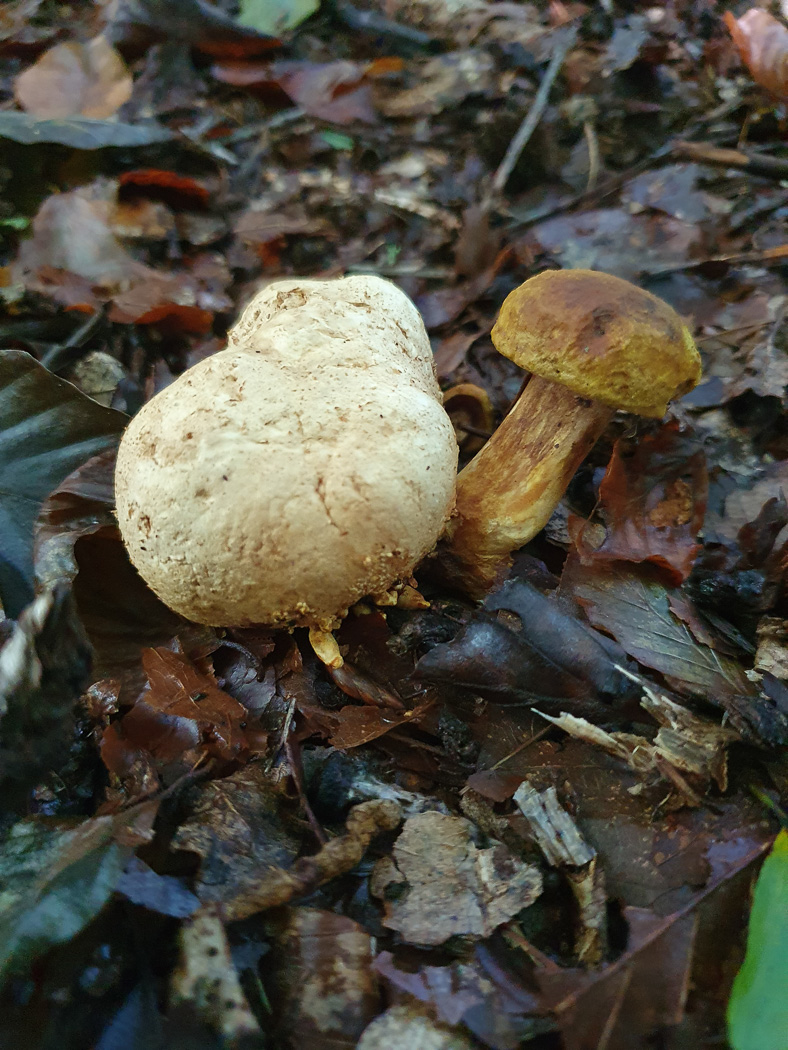 |
October 11th Pseudoboletus parasiticus (Parasitic Bolete)
Marlow Common is the best local site to find this unusual species, though today Penny found only one example just emerging around its host Scleroderma citrinum (Common Earthball). We've looked elsewhere for it when coming across this particular Earthball during the last few weeks but without success, so maybe conditions are now triggering it into action so one to look out for now. Photo 3 shows a slightly further developed example found at this same site three days later by Noel Murray. For more developed examples see Finds 2020 September 26th and October 18th, also 2021 October 15th.
|
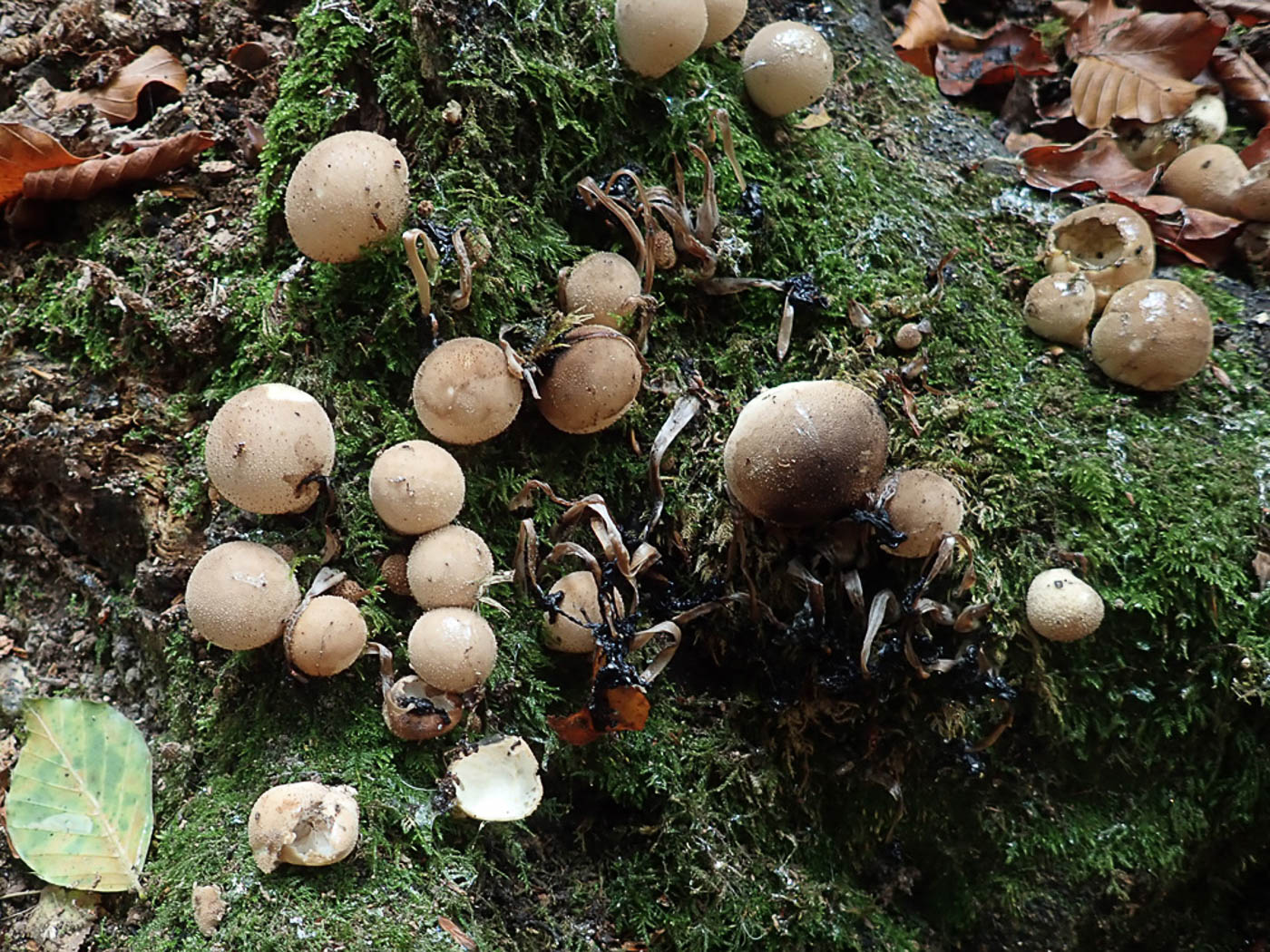 |
October 11th Lycoperdon pyriforme (Stump Puffball)
On a deciduous stump in Pullingshill Wood Penny found a good collection of this very common Puffball, and as the equally common L. perlatum was also fruiting nearby she took the opportunity to show both species here for easy comparison. (See also below.) This is by far the smoother species of the two and is also rounder despite its common name. It tends to turn brown fairly quickly as here (but not always) and lacks the easily loosened white 'pearls' which cover the Common Puffball. This species is always on wood - sometimes submerged - whereas the other is in litter. Amazingly this is a new entry for Finds!
|
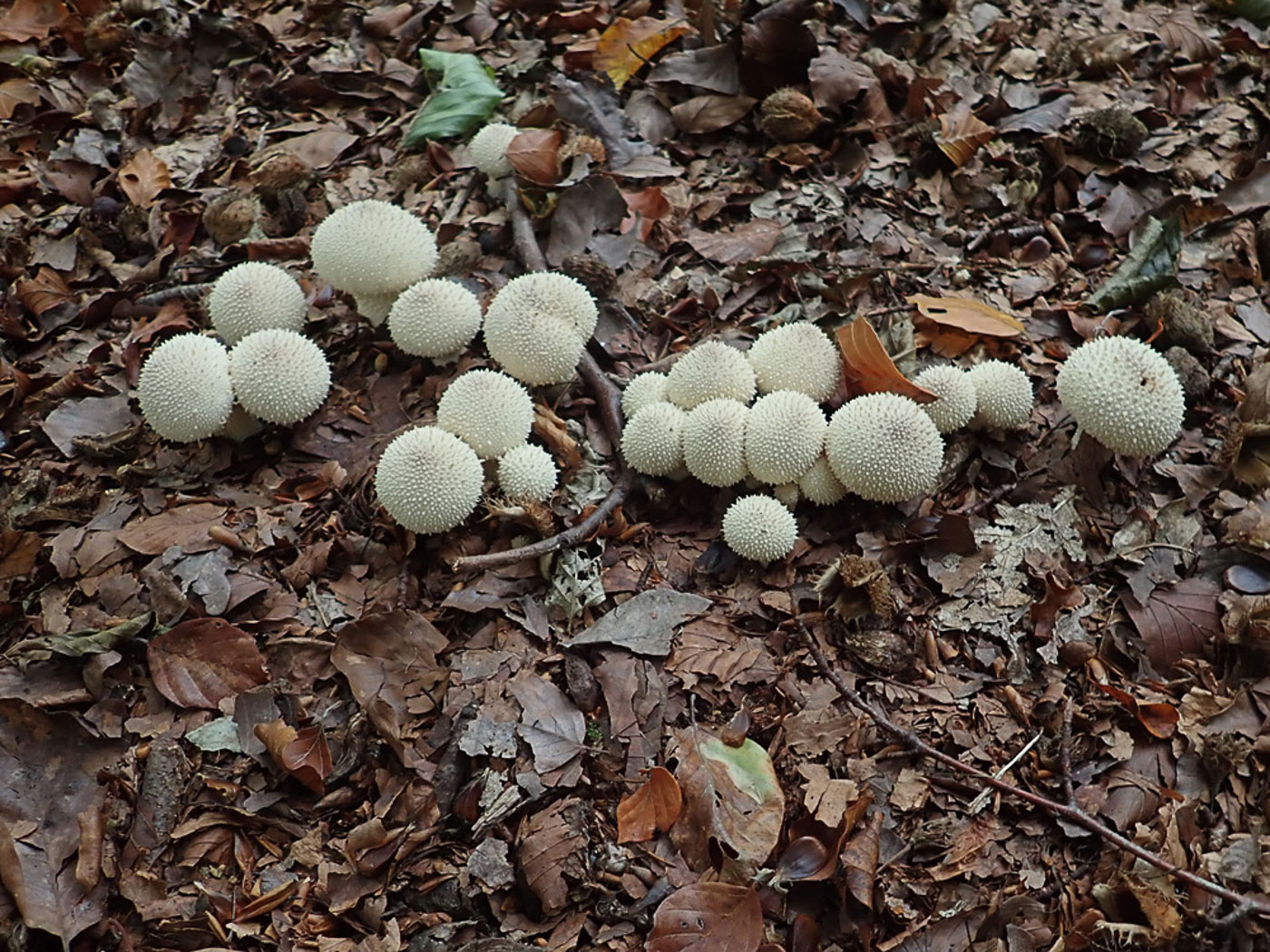 |
October 11th Lycoperdon perlatum (Common Puffball)
In Pullingshill Wood in Beech litter Penny came across this nice fresh showing of a common autumn species, though one that's not been in evidence much until now. Compare with the quite similar L. pyriforme entered above, found nearby on a stump. It's surprising that for such a common species we have only one previous Finds entry: 2020 October 6th.
|
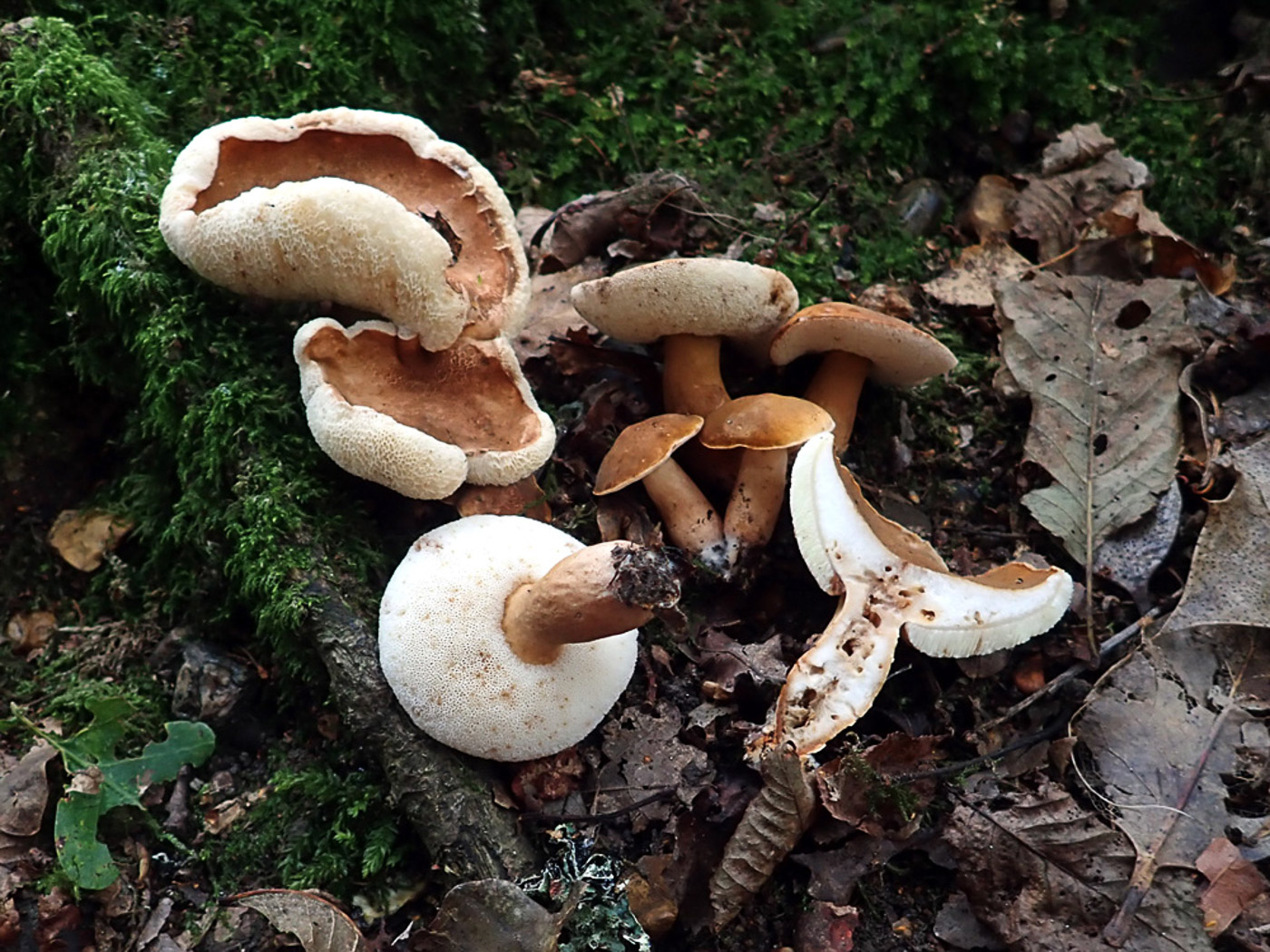 |
October 11th Gyroporus castaneus (Chestnut Bolete)
In Marlow Common under a large Oak Penny found a good collection of this attractive Bolete - an easy one to recognise from its chestnut brown cap and stem with contrasting white unstaining pores. It's not that common but Penny recalled find it in exactly this spot years ago. We've seen it a few time on our walks this season but this it the first image for Finds this year. See the Masterlist for a few other examples.
|
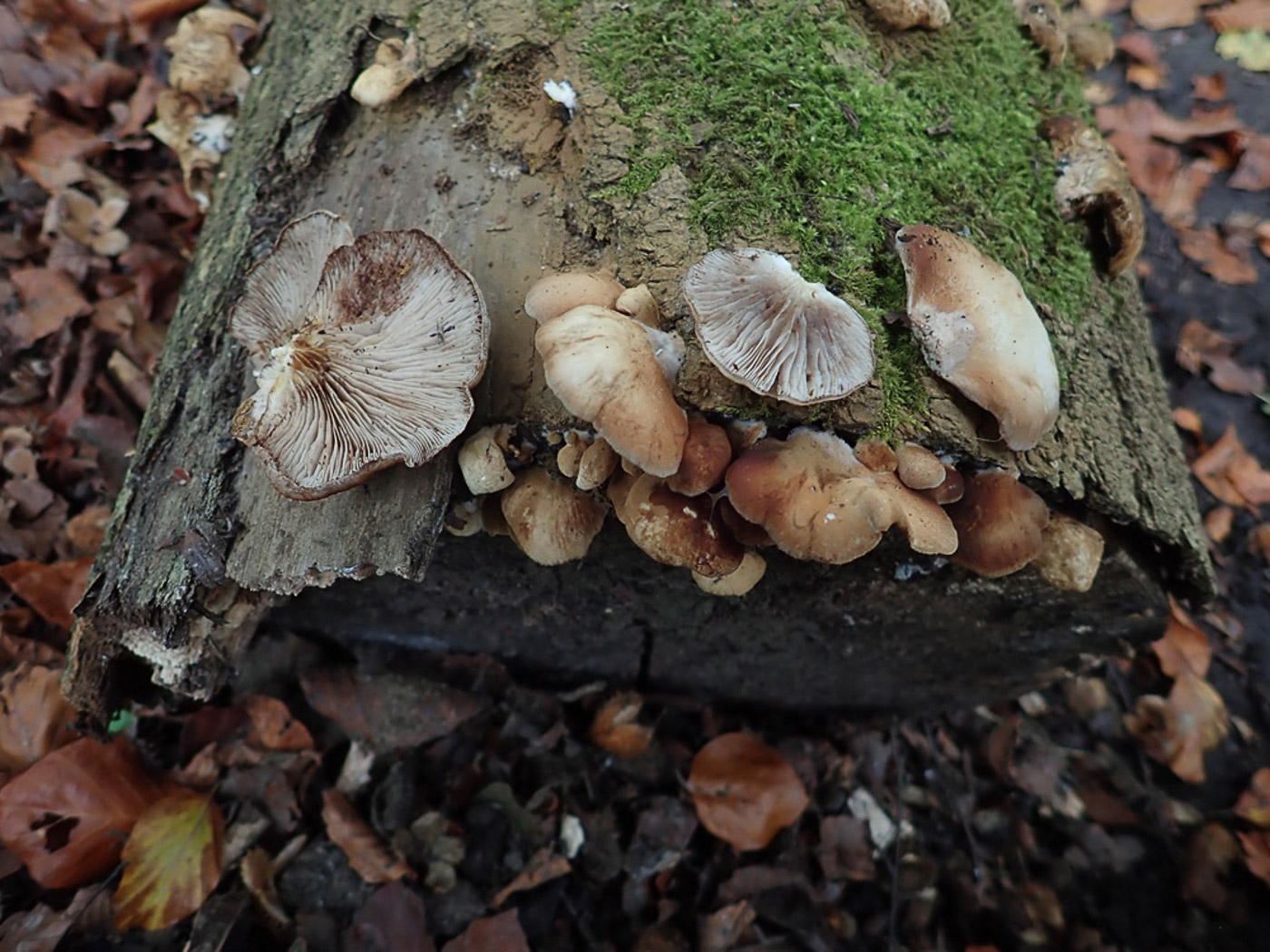 |
October 11th Crepidotus mollis (Peeling Oysterling)
On a deciduous log in Marlow Common Penny found good numbers of this shell-like mushroom which had grown to a good size - 3-4 cm across - and were dropping their brown spores on the surrounding wood. Collecting one then stretching it sideways revealed the expected transparent coating which prevents the cap from splitting as other members of this genus would, thus confirming its ID. See also in Finds 2020 October 6th and September 13th.
|
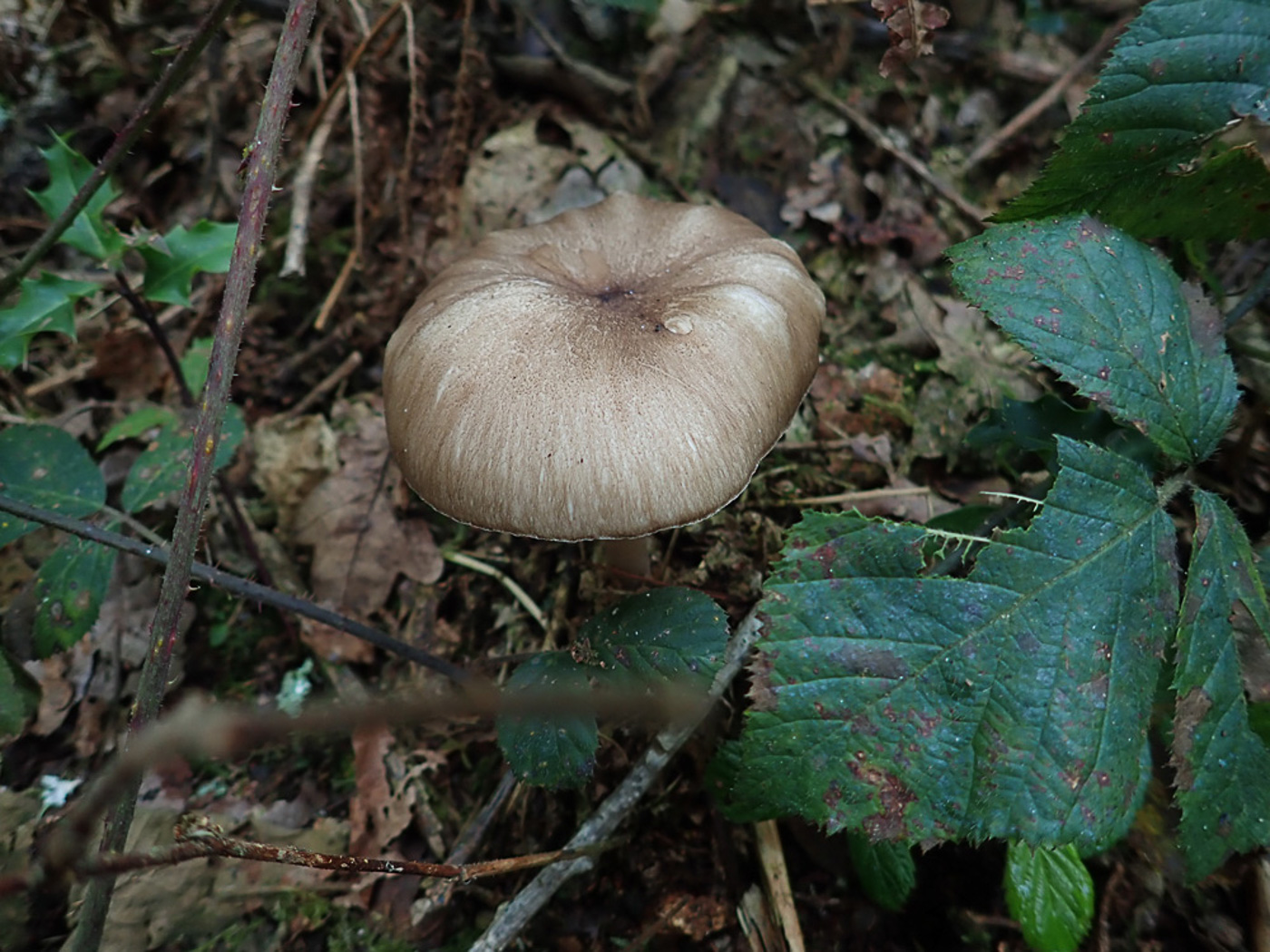
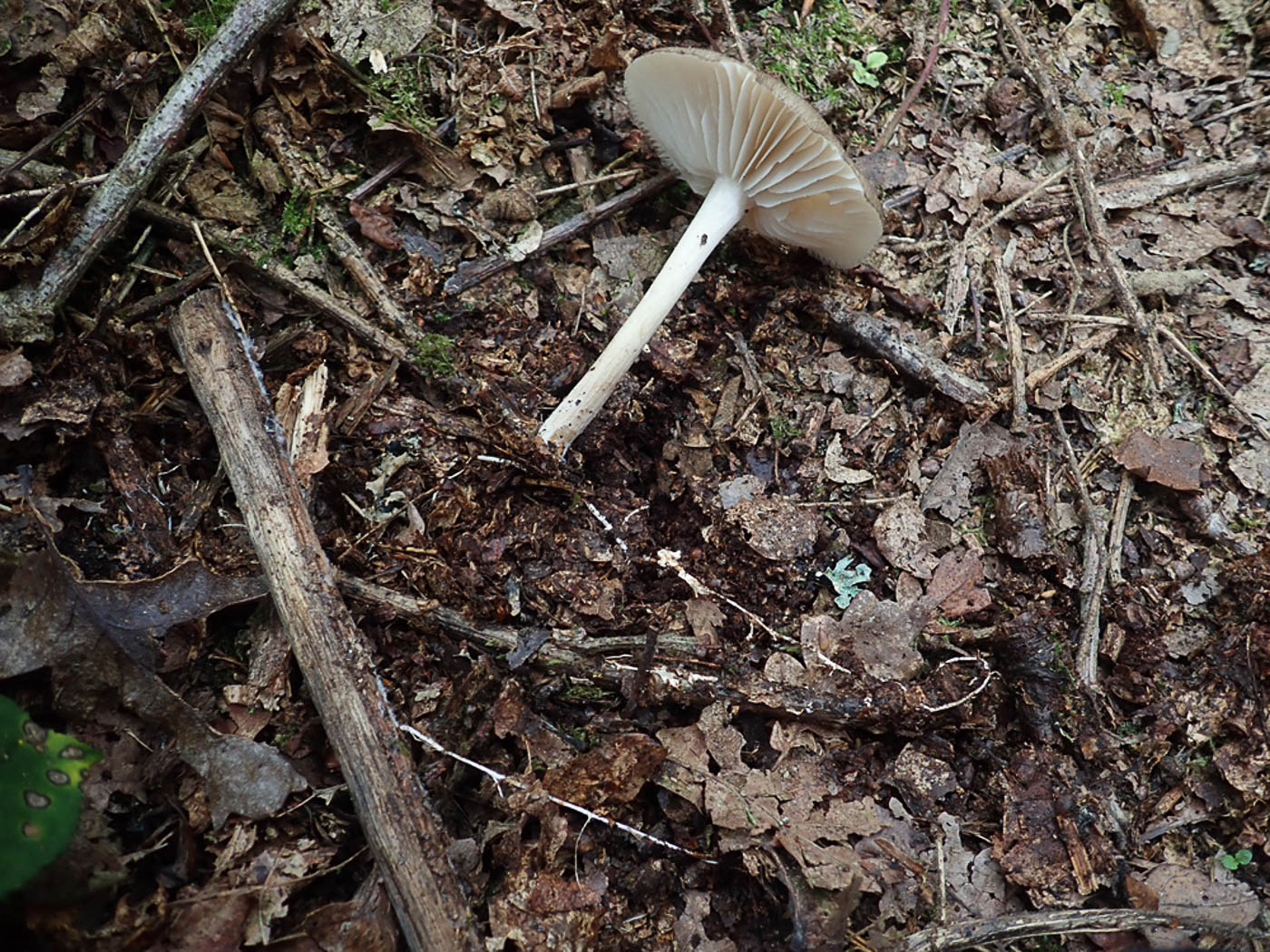 |
October 11th Megacollybia platyphylla (Whitelaced Shank)
Alongside a path at Marlow Common Penny spotted what could have been a typical brown cap of Pluteus cervinus (Deer Shield) amongst the vegetation. With a closer look she realised it was not that species but the very similar and equally common M. platyphylla. Uncovering the litter beneath then revealed the mycelial 'white laces' attaching it to a nearby stick - a sure confirmation of this species which also has gills very unlike that of Pluteus, ie widely spaced, not free and remaining cream - no sign of pink! See the Masterlist for further examples.
|
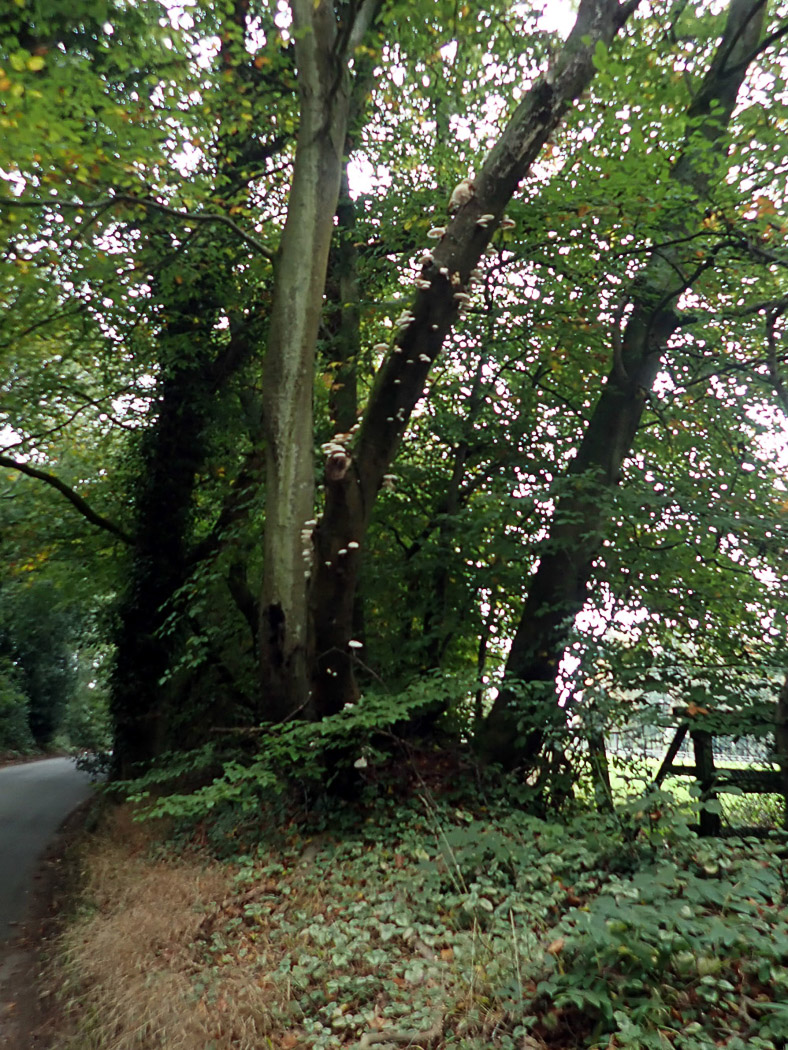
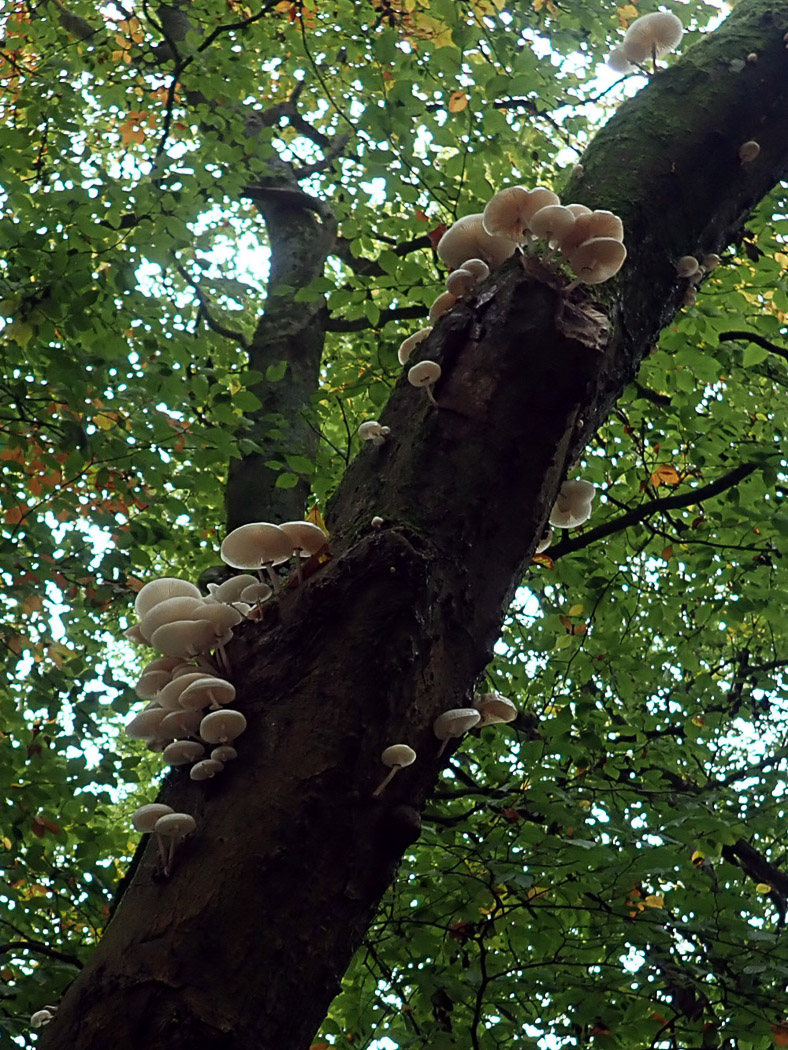 |
October 11th Mucidula mucida (Porcelain Fungus)
Near Marlow Common whilst driving, Penny screeched to a halt when this dying Beech covered in white mushrooms caught her eye! There were too many to count - a sight for sore eyes! It is not unusual to see this attractive but very slimy species growing on standing Beech both live and dead, nor to find it on fallen Beech or even apparently on the ground when it's dropped off a branch from above. It is only found on Beech, however. See also on October 4th, with several other images available via the Masterlist. (It was previously in genus Oudemansiella.)
|
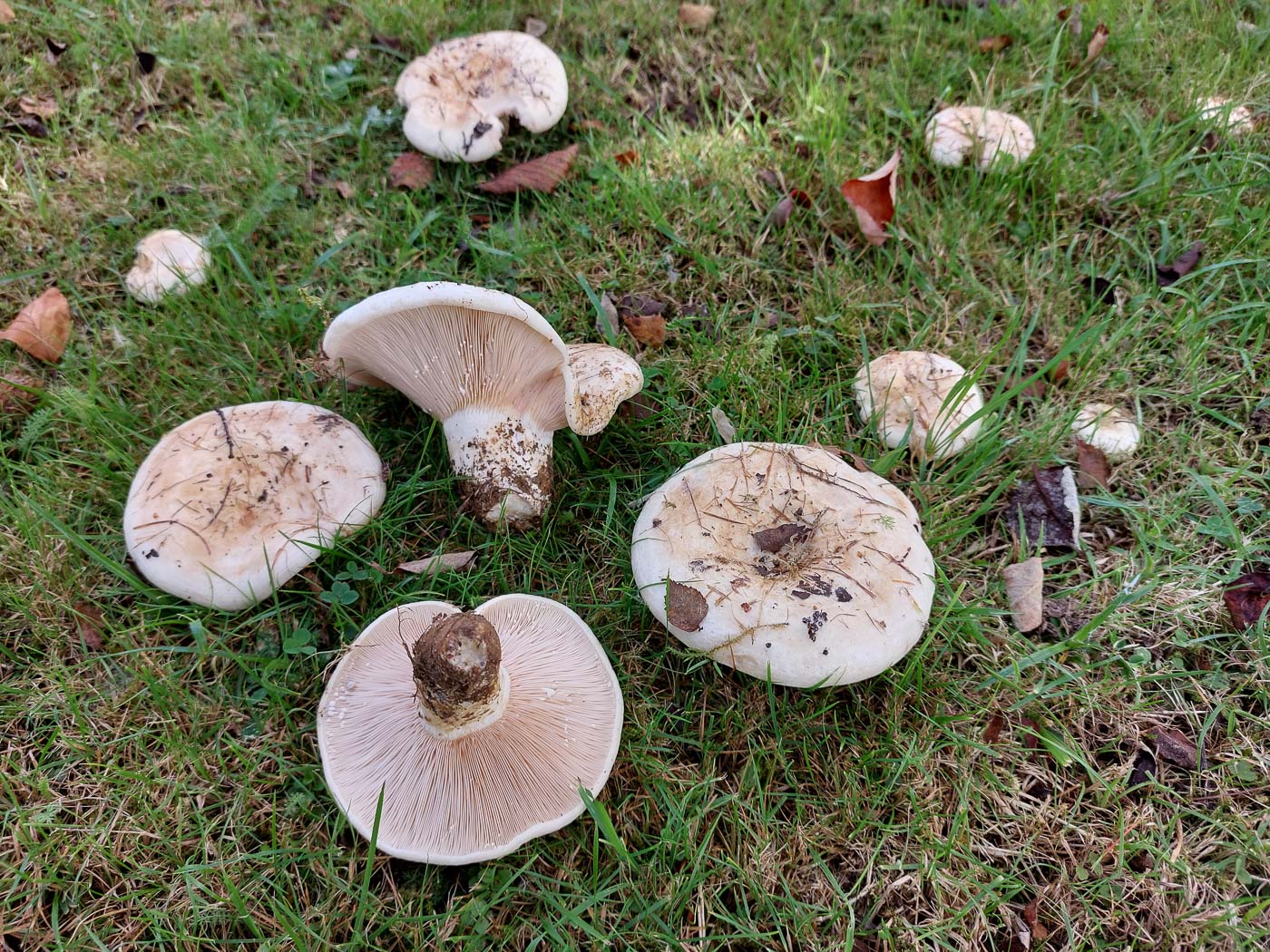 |
October 10th Lactarius controversus (Blushing Milkcap)
In Jordans Village under Willow Jesper Launder found this large species of Lactarius - one which is host specific to Willow or Poplar and can get to a spectacular size. The common name refers to its gills which are very crowded and soon turn pink, the cap also developing pink tinges. It is not that common - we have just a handful of county sites, one of these being Stampwell Farm where we visit on October 21st. This is a new entry for Finds.
|
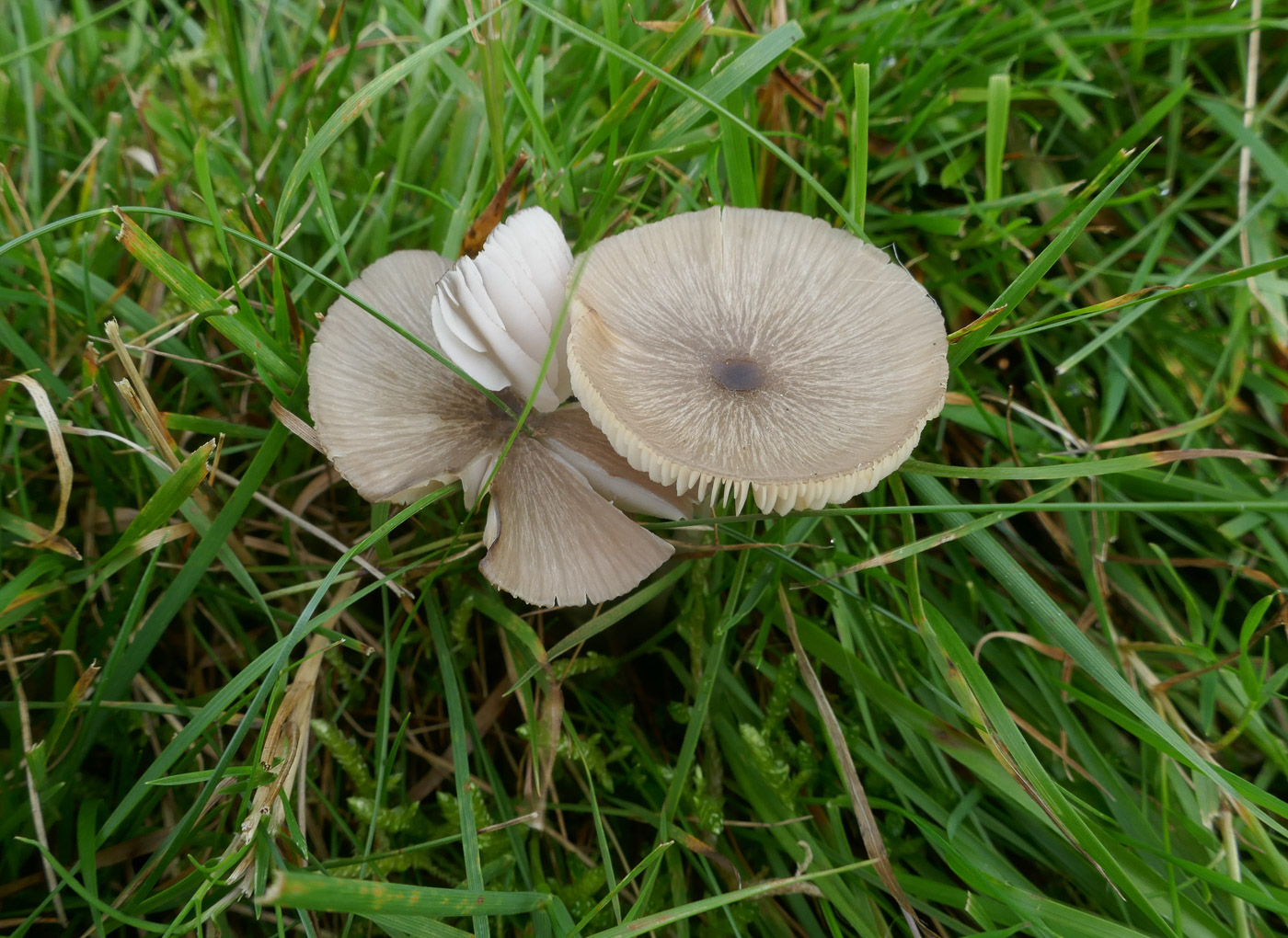
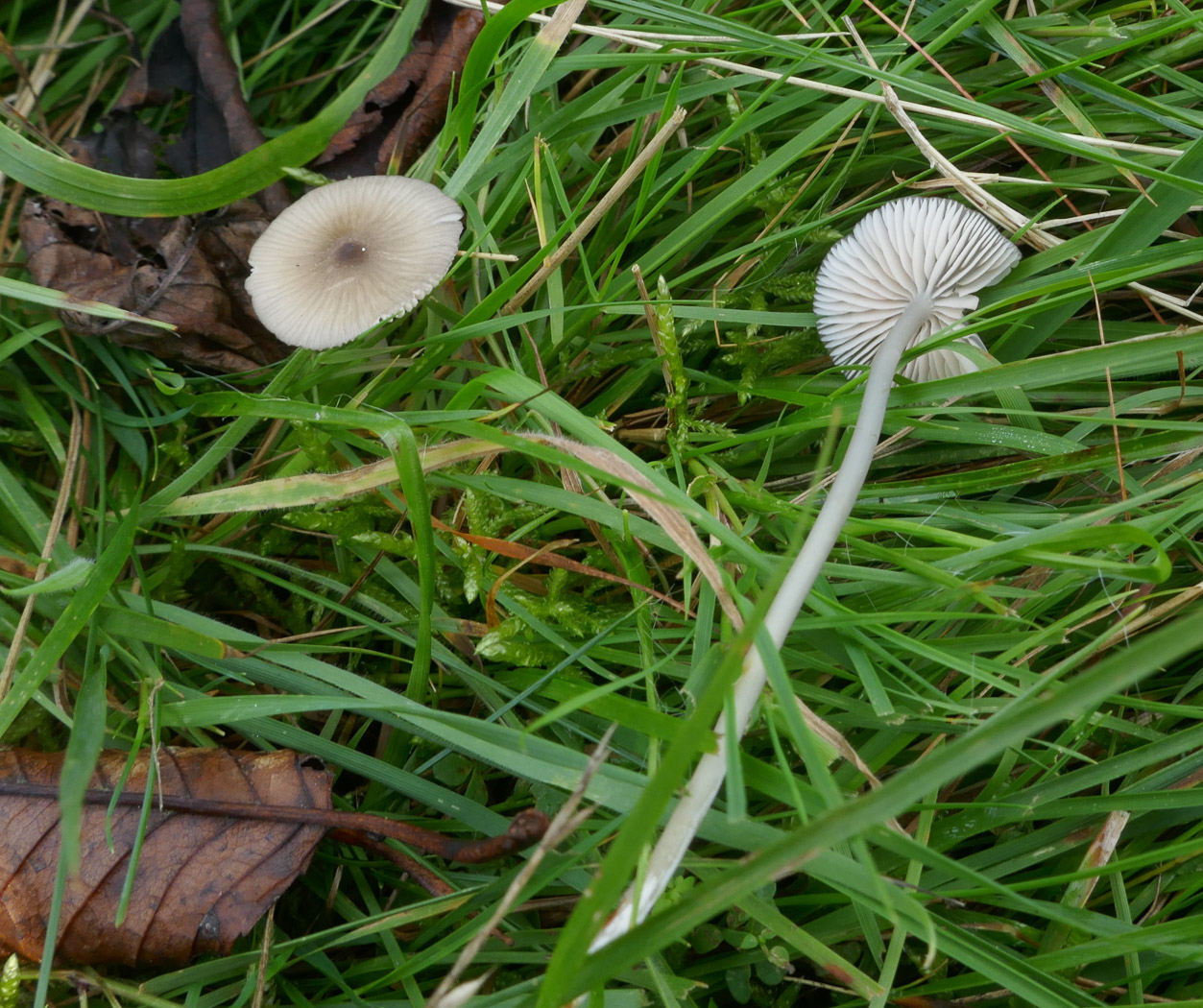
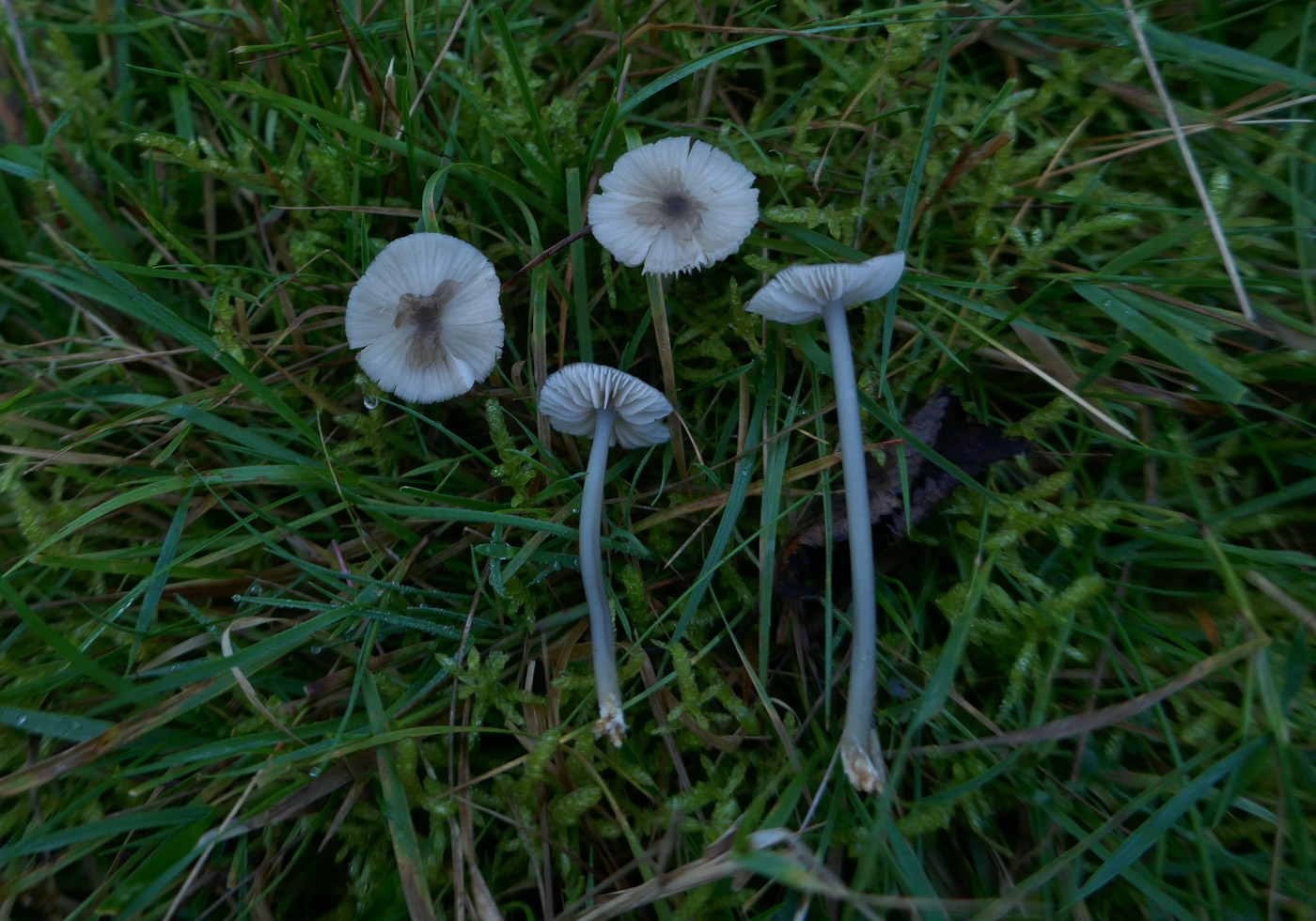 |
October 10th Entoloma exile (Glaucous Pinkgill) 
At Stampwell Farm Jackie reports that many small Pinkgills (Section Leptonia) are now appearing in the grassy areas. This is one she identified though was not certain - the genus has a large number of species and is considered by many to be one of the very trickiest! (It is also Penny's least favourite!) Though new to the county, E. exile is apparently one of the commonest Leptonia species and the photos here look spot on for the cap colour and texture, also Jackie checked that the microscopic features fitted. This collection was not retained, however, but photo 3 is of a further collection of Jackie's from the same site made on October 30th, and this has been dried for sequencing. This is a new entry for Finds.
|
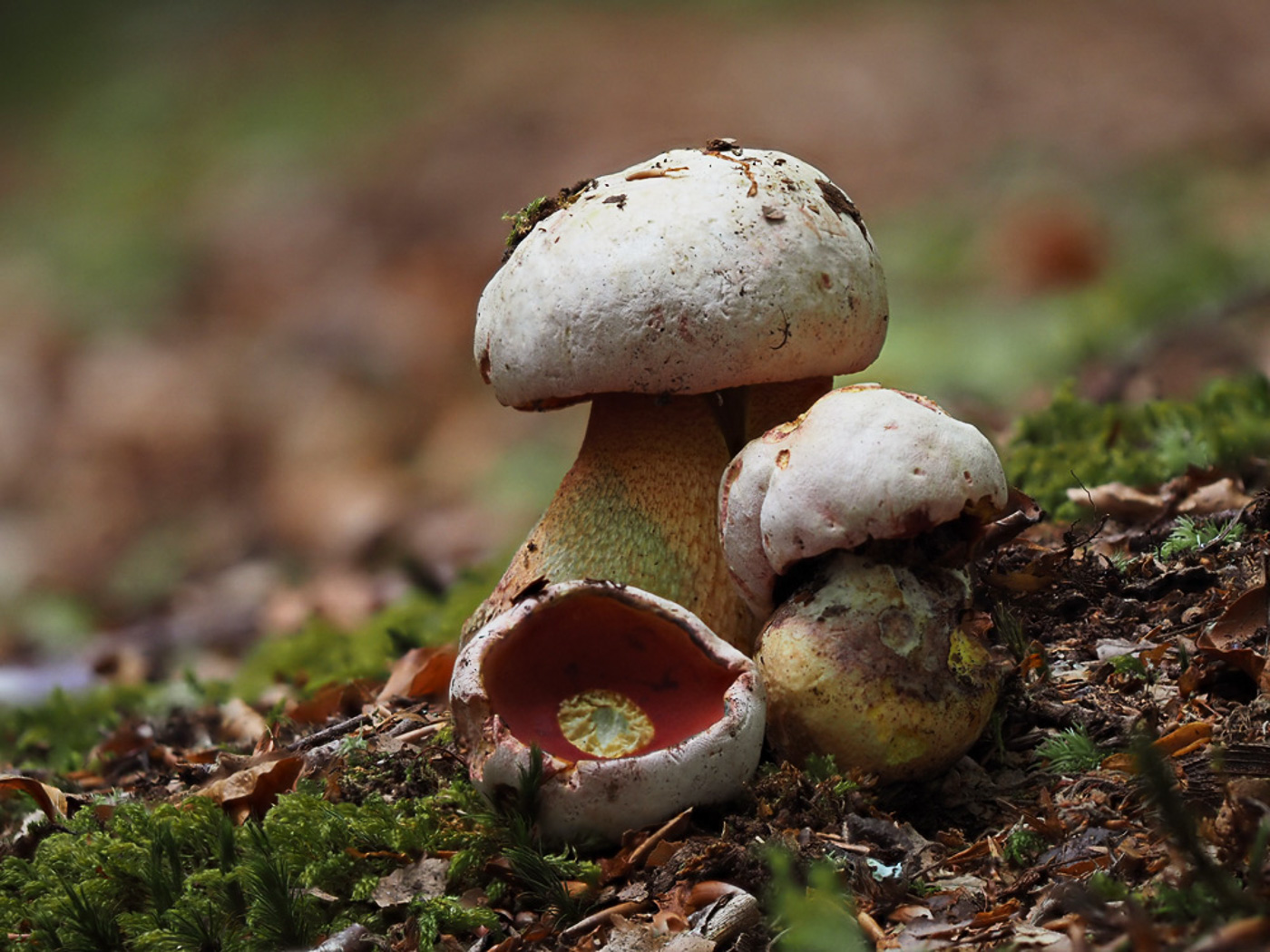 |
October 10th Rubroboletus legaliae (Bilious Bolete)
On a bank under Beech near Pullingshill Wood Noel Murray found these beauties - a rare Bolete for which we have only one previous county record in 2009. (What an unfortunate common name!). Somewhat similar to and easily mistaken for R. satanas (Satan's Bolete), today's species develops a pinkish tinge to the cap, has a longer much less pronounced clavate stem and a pleasant smell - all characters in contrast to R. satanas. Realising this was not that species but unable to identify it satisfactorily, his lovely photo went first to Penny, then on to Geoffrey Kibby who made the identification. This is obviously a first for Finds.
|
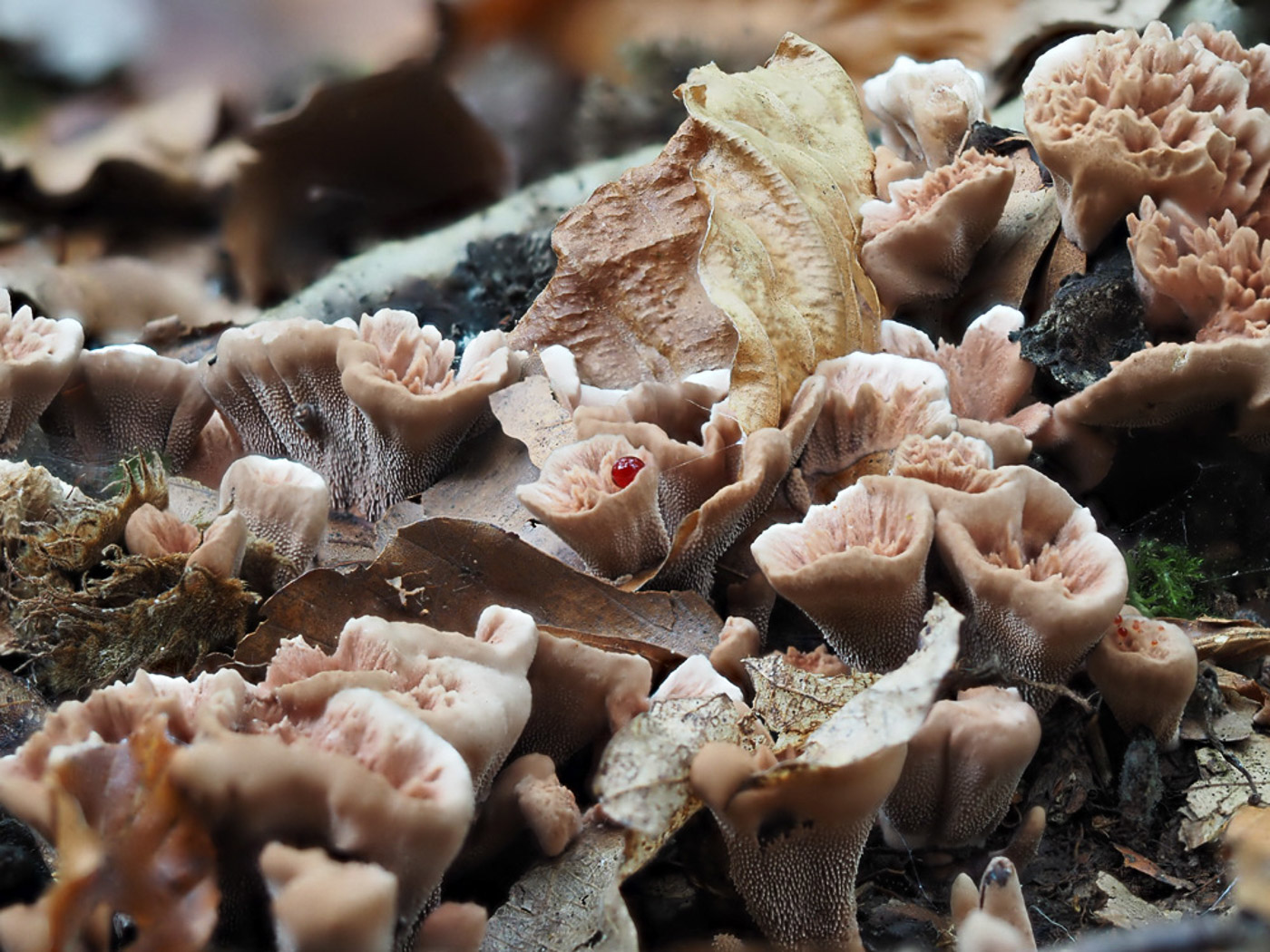
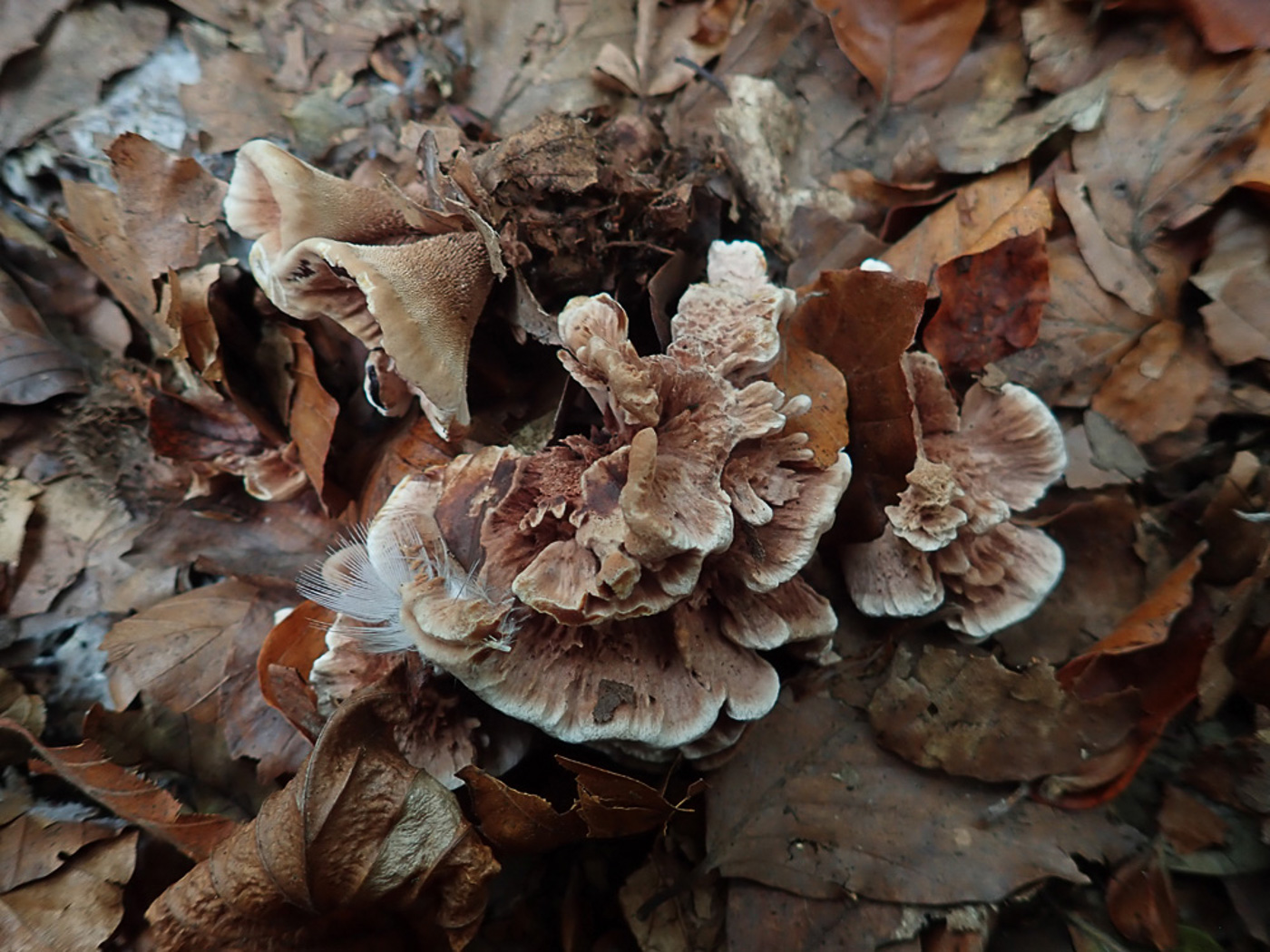
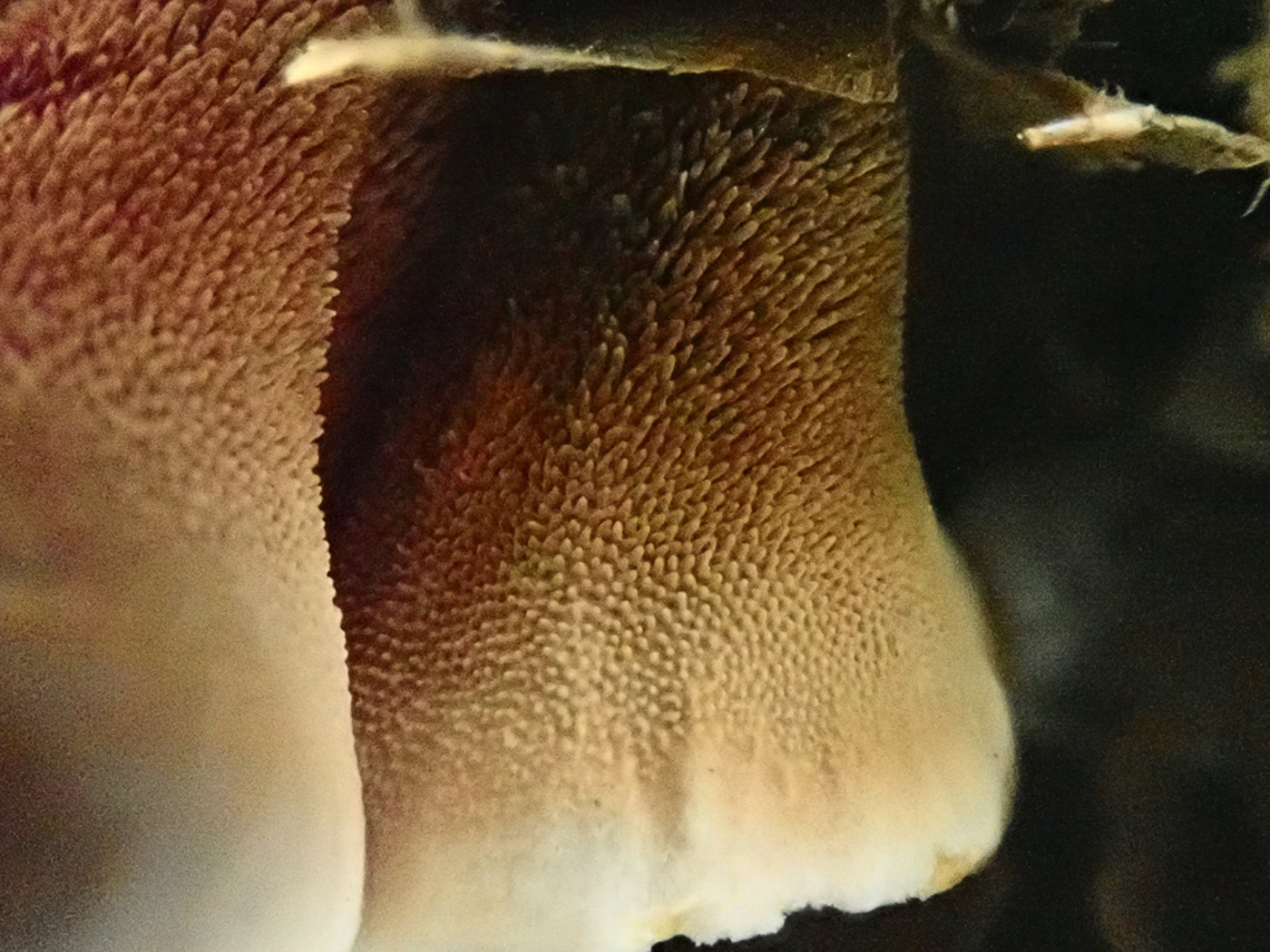 |
October 10th Hydnellum cf concrescens (Zoned Tooth) 
In a bank on the edge of Pullingshill Wood under Beech Noel Murray noticed this small patch of fungus which was new to him. On receiving photo 1 Penny at first thought it was Abortiporus biennis (Blushing Rosette) - a species regularly mistaken for one of the rare Hydnoid (toothed) fungi and which can often have red droplets, one of which is visible here. Geoffrey Kibby also glanced at this photo and concurred. However, when Penny visited the site the following day she found this same clump (photos 2 and 3) and was convinced it was indeed a rare Hydnoid species after all! A sporeprint overnight revealed the correct tiny nobbly spores which fitted the rare Hydnellum concrescens though this is known to be a difficult species complex still not fully understood - hence the 'cf' here - and the material when dried will go to RBG Kew for further analysis. Checking our records Penny found we have just a few from Burnham Beeches and also one from nearby Marlow Common in 2017. This is our first Hydnellum for Finds.
|
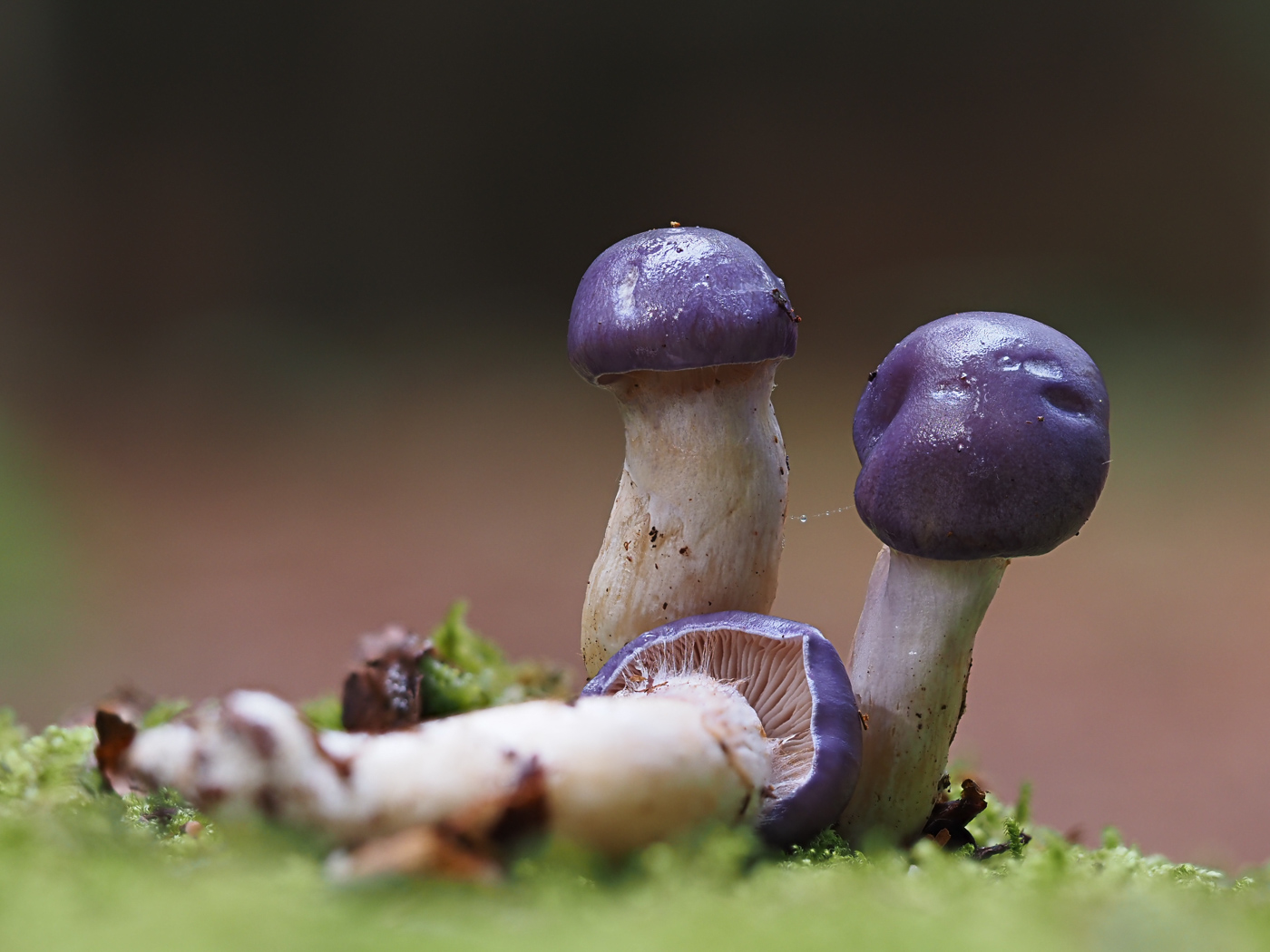
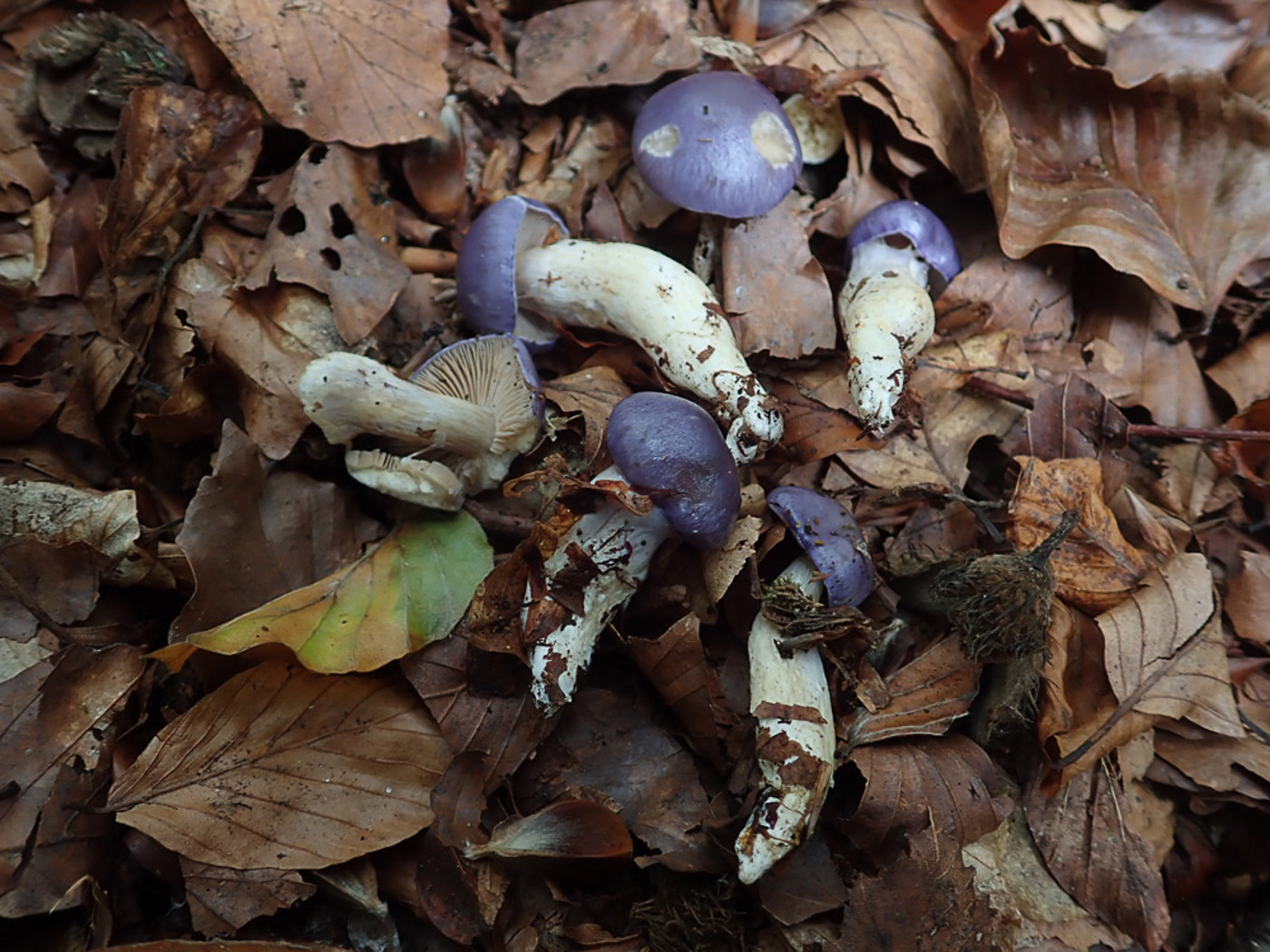 |
October 10th Cortinarius croceocoeruleus (a Webcap with no common name)
In Pullingshill Wood Noel Murray spotted these small beautiful blue-lilac caps amongst the Beech litter and successfully recognised the genus but not the species - no shame there, this genus is enormous and one of the trickiest too. Luckily this is a species Penny knows and is also a regular at this site too. A member of Section Myxacium (with sticky caps and stems) it is small for the genus and only found under Beech in calcareous soil. Photo 2 is Penny's when she visited the same spot the following day. Both images were confirmed by Geoffrey Kibby. See another image in Finds 2021 October 15th taken a few hundred yards from today's spot.
|
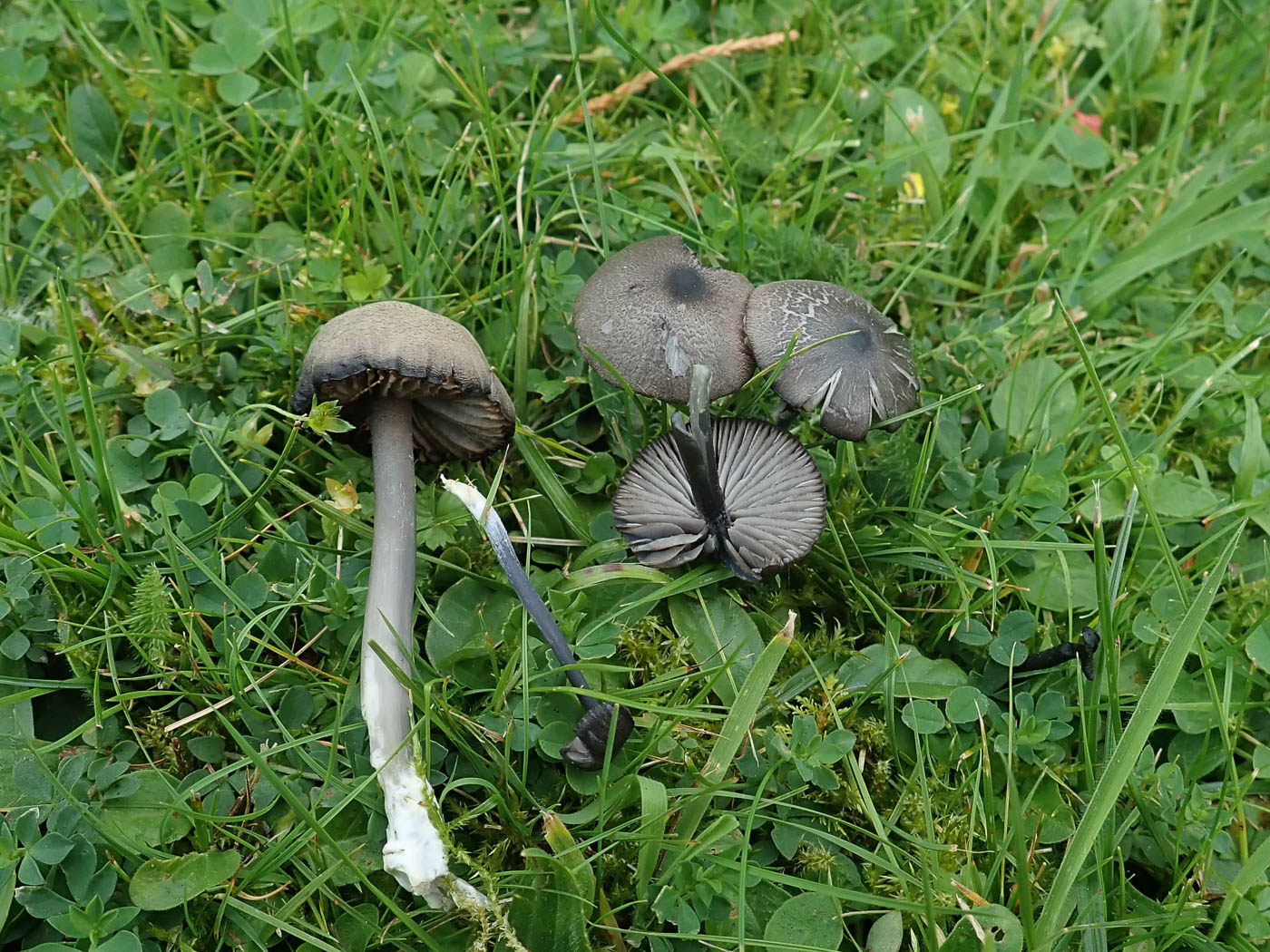
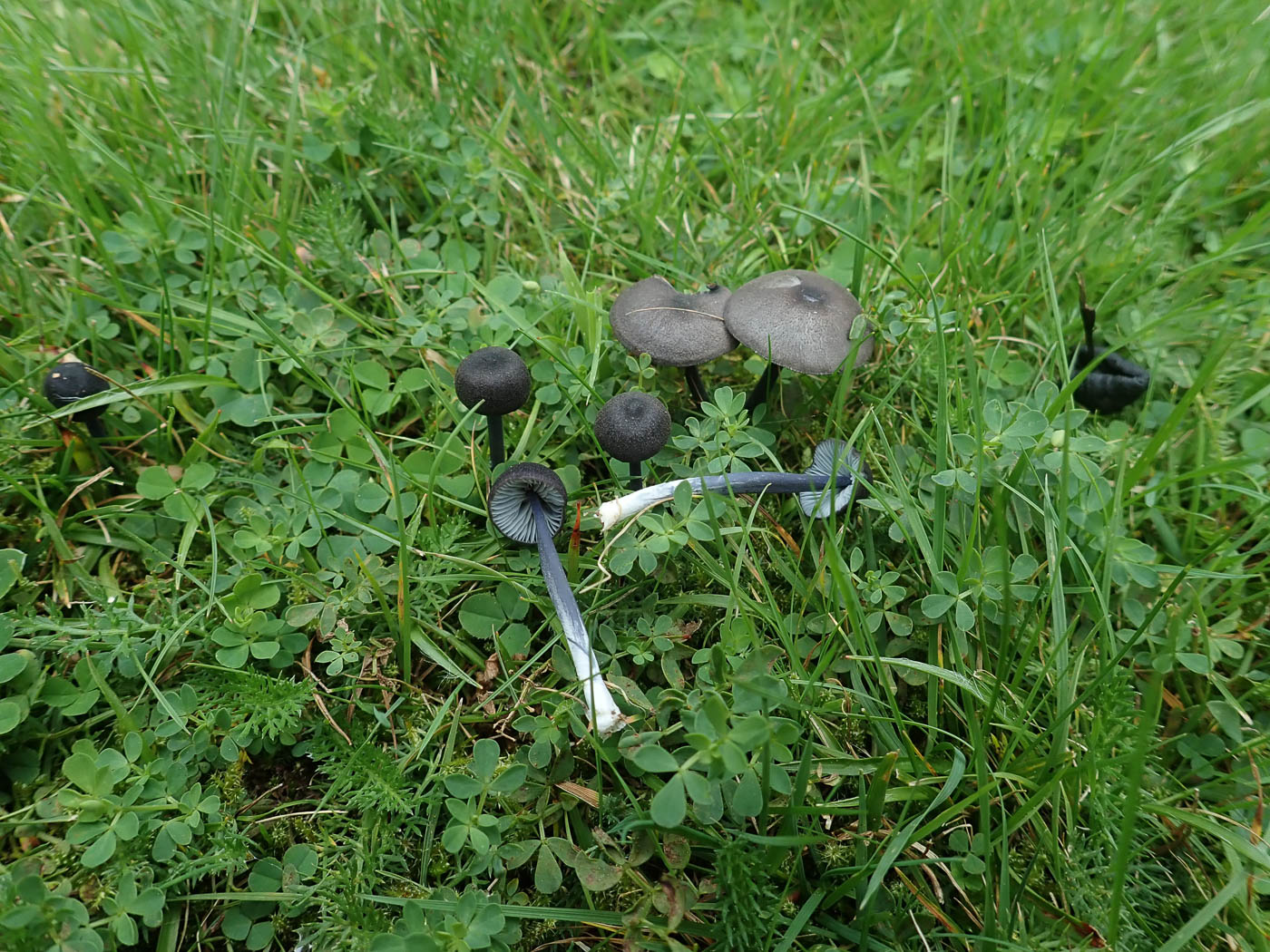
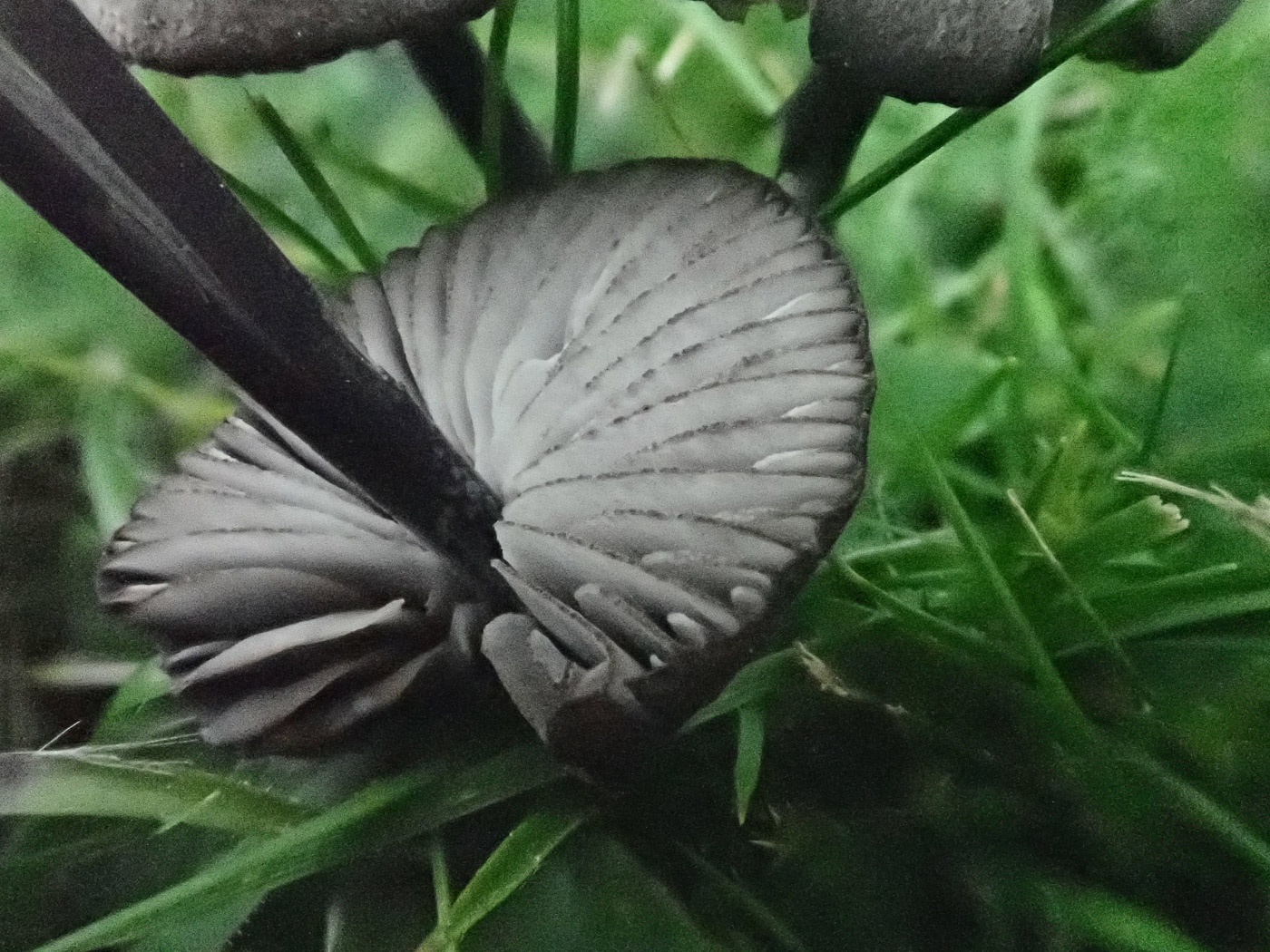 |
September 28th Entoloma chalybeum (Indigo Pinkgill) 
Having been alerted by Jim Wills to the fact that there were small blue Pinkgills fruiting at the moment, Penny made a visit to Prestwood Churchyard and was certainly rewarded. Just a couple of feet into the short grassy area she found her first collection, swiftly followed by many more dotted about and intermixed with some brown capped Pinkgills (which went unidentified!). Work at home was needed because this is a very tricky genus (possibly Penny's least favourite!). There are many very similar small grassland Pinkgills, some with deep blue caps and stems, some with blue caps and brown stems and vice versa, some smooth, some not, some with a coloured gill edge, some not, etc etc. Microscopy is essential and often not easy to interpret, furthermore the keys are hard to follow and somewhat technical. Not for the faint-hearted. However, Penny had photos of a sequenced collection of this species from Penn Street Churchyard in two years ago to compare, and the roughened almost scaly cap surface plus faintly coloured gill edge together with microscopic features were convincing. See in Finds 2021 August 14th.
|
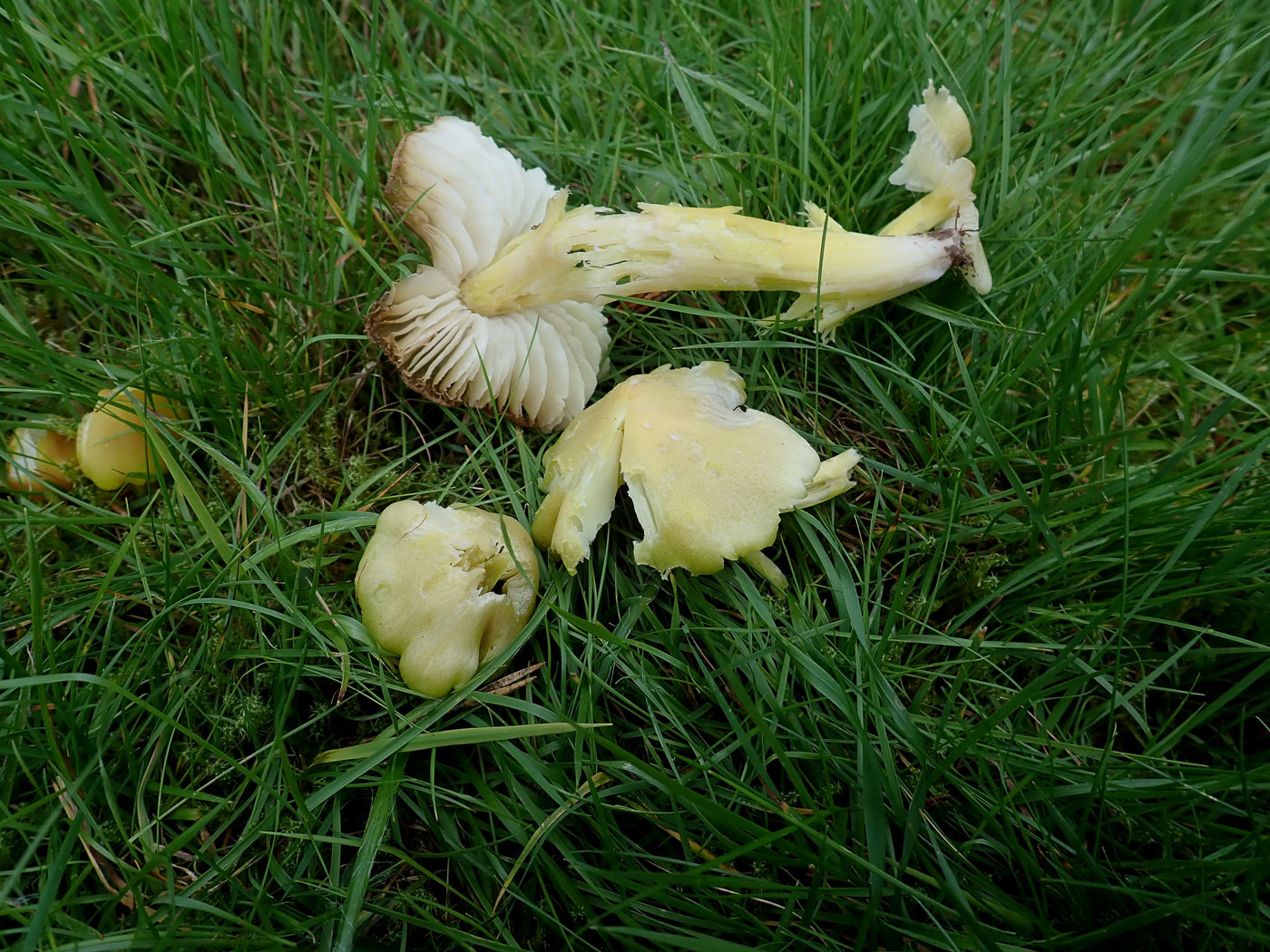
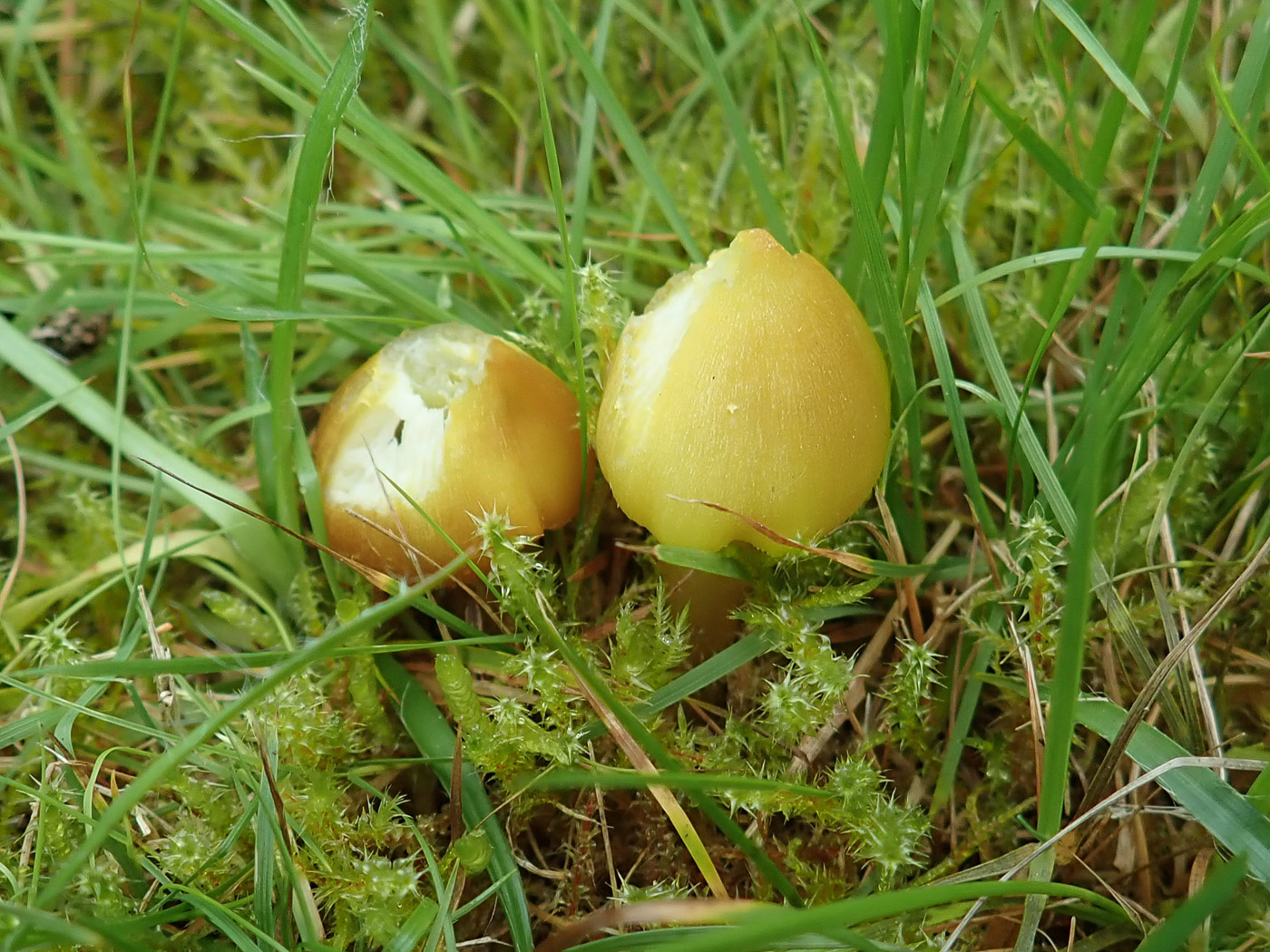 |
September 28th Hygrocybe citrinovirens (Citrine Waxcap) 
In grass at Prestwood Churchyard Penny spotted these beauties and quickly realised that despite their conical shape, large size and yellow colour they had too green a tint to be one of the commoner larger yellow species. At home she checked the microscopic details which fitted well with this rare Waxcap, then checking in the BFG database found just three previous county records - two from Stowe Landscape Gardens (where we visit later this autumn) and one from this site back in 2005 also found by Penny! This is a new entry for Finds.
|
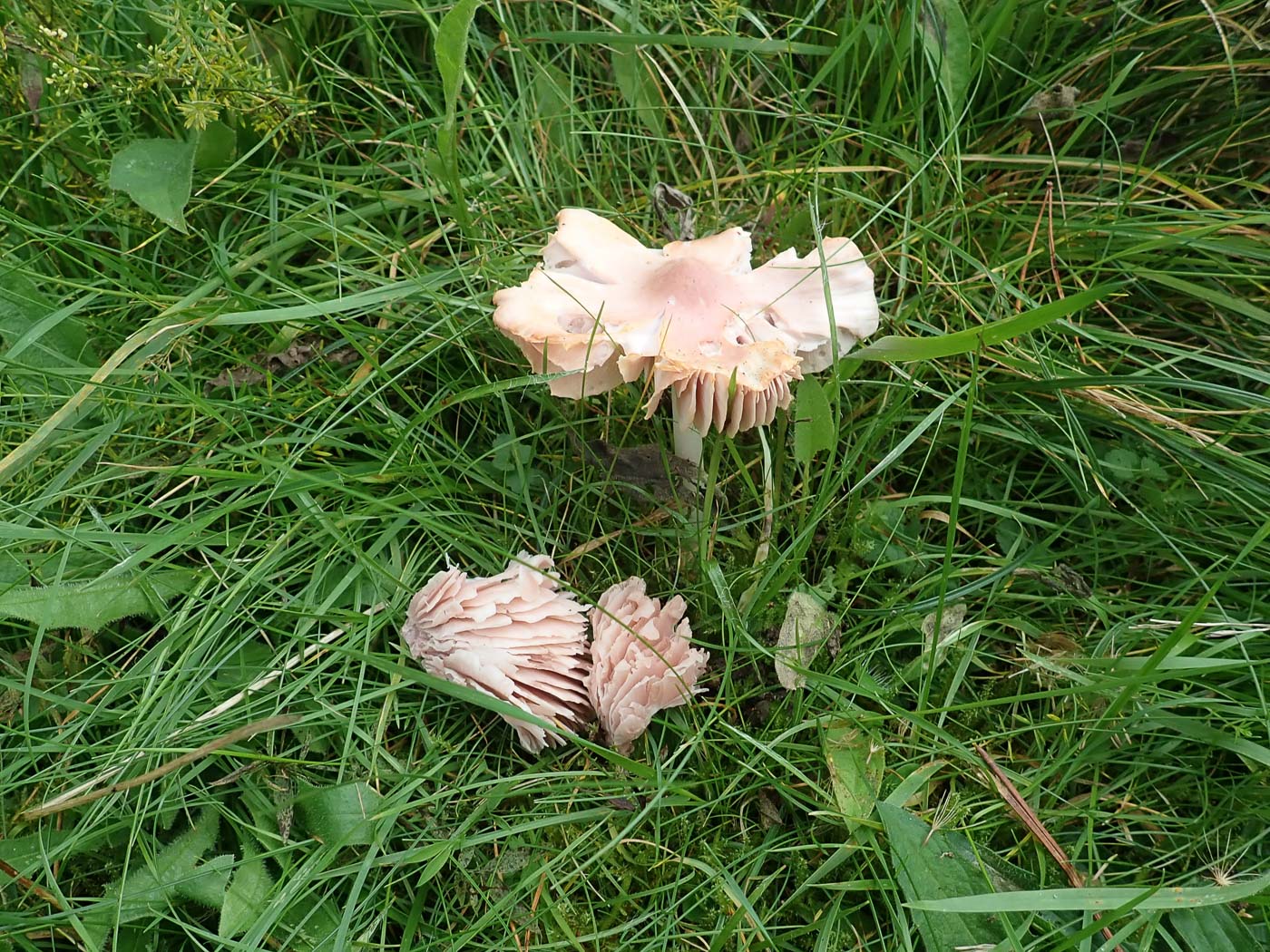 |
September 28th Porpolomopsis calyptriformis (Pink Waxcap)
In short grass at Prestwood Churchyard this species was certainly a surprise to Penny today, one of five Waxcaps found and usually a late season fruiter. It is one of our rarer species though regularly comes up at several county sites and has been recorded here before. Its tall stature, graceful conical shape which then expands like a flared skirt, and beautiful pink shade make it unmistakeable. Previously in genus Hygrocybe, it is our only Porpolomopsis Waxcap, and it rather ordinary common name does it no favours; another name was Ballerina Waxcap - sadly not adopted when our list of common names was formalised. See the Masterlist for further examples, all found in late October.
|
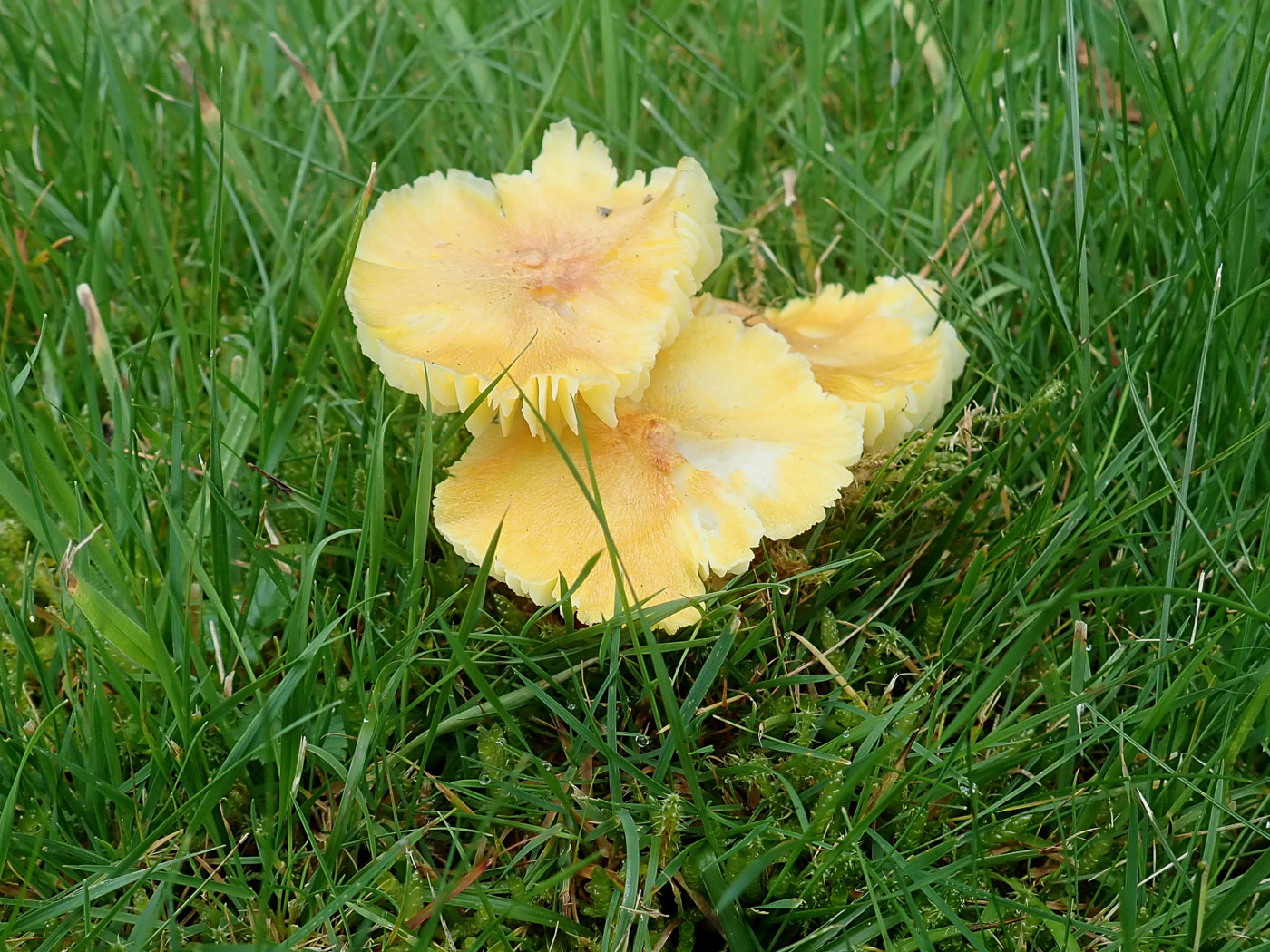
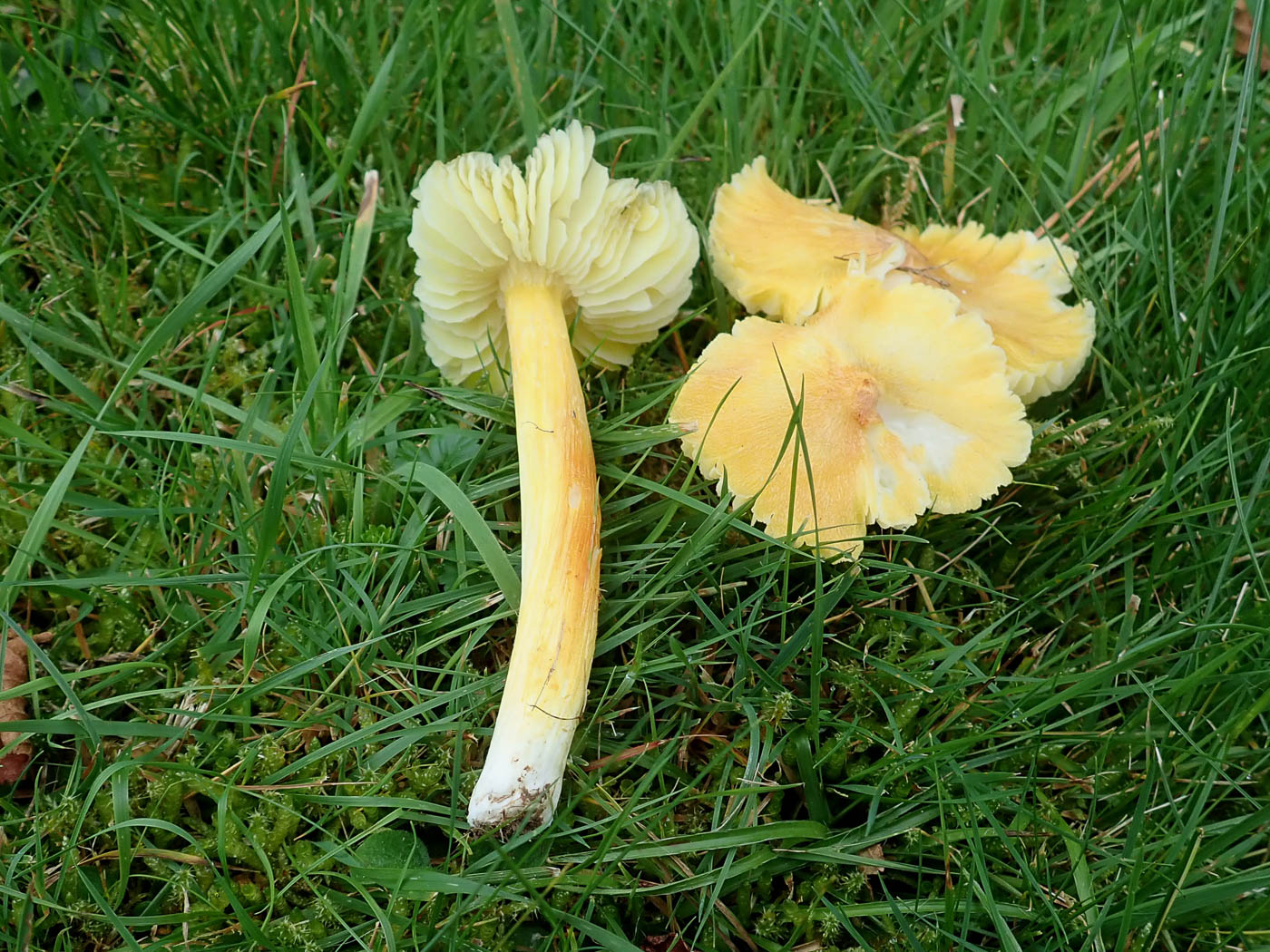 |
September 28th Hygrocybe acutoconica (Persistent Waxcap) 
At Prestwood Churchyard in short grass this was one of five Waxcap species Penny found here today, this one being the least surprising as it often fruits in Summer or early Autumn. Its common name relates to it previous species name: H. persistens. Quite similar in shape to H. conica (Blackening Waxcap) it is quite big, also strongly conical to start with though later becomes more flattened (as here), never blackens and often has orange colours on the stem and / or cap. The gills are yellow. See also in Finds 2021 August 15th and earlier this year on July 28th.
|
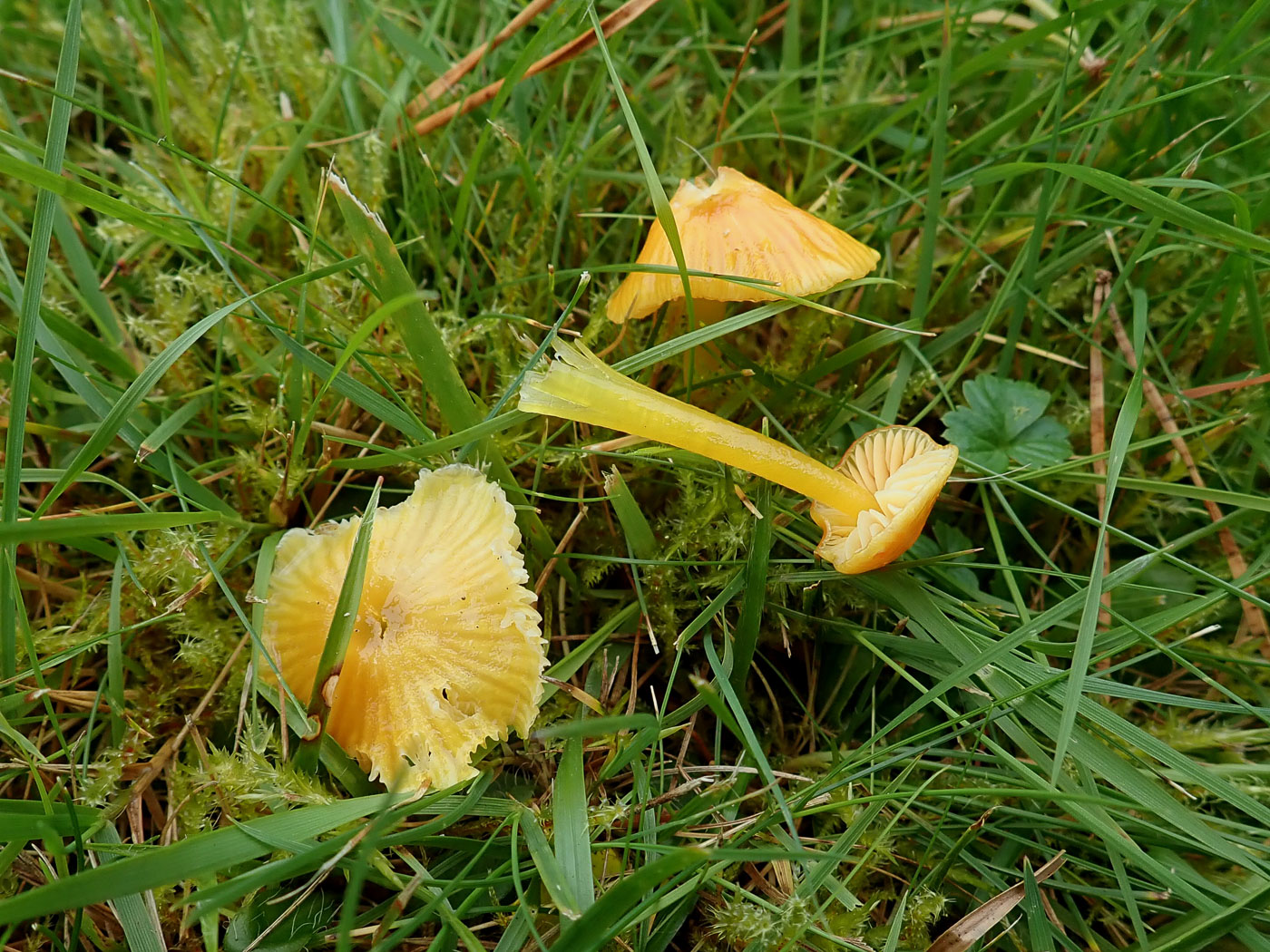 |
September 28th Hygrocybe glutinipes (Glutinous Waxcap)
At Prestwood Churchyard in short grass this was the fourth Waxcap species Penny found here today and she knew what species it was as soon as she picked one! There are several small yellow to orange Waxcaps but only this one has a really slimy stem - so much so that it's quite hard to hang on to it! The cap is also sticky and often has a slightly sunken centre as seen here. It is not rare and often turns up in grassy places where different Waxcaps occur, and should present little difficulty to identify especially in damp conditions. See the Masterlist for further examples.
|
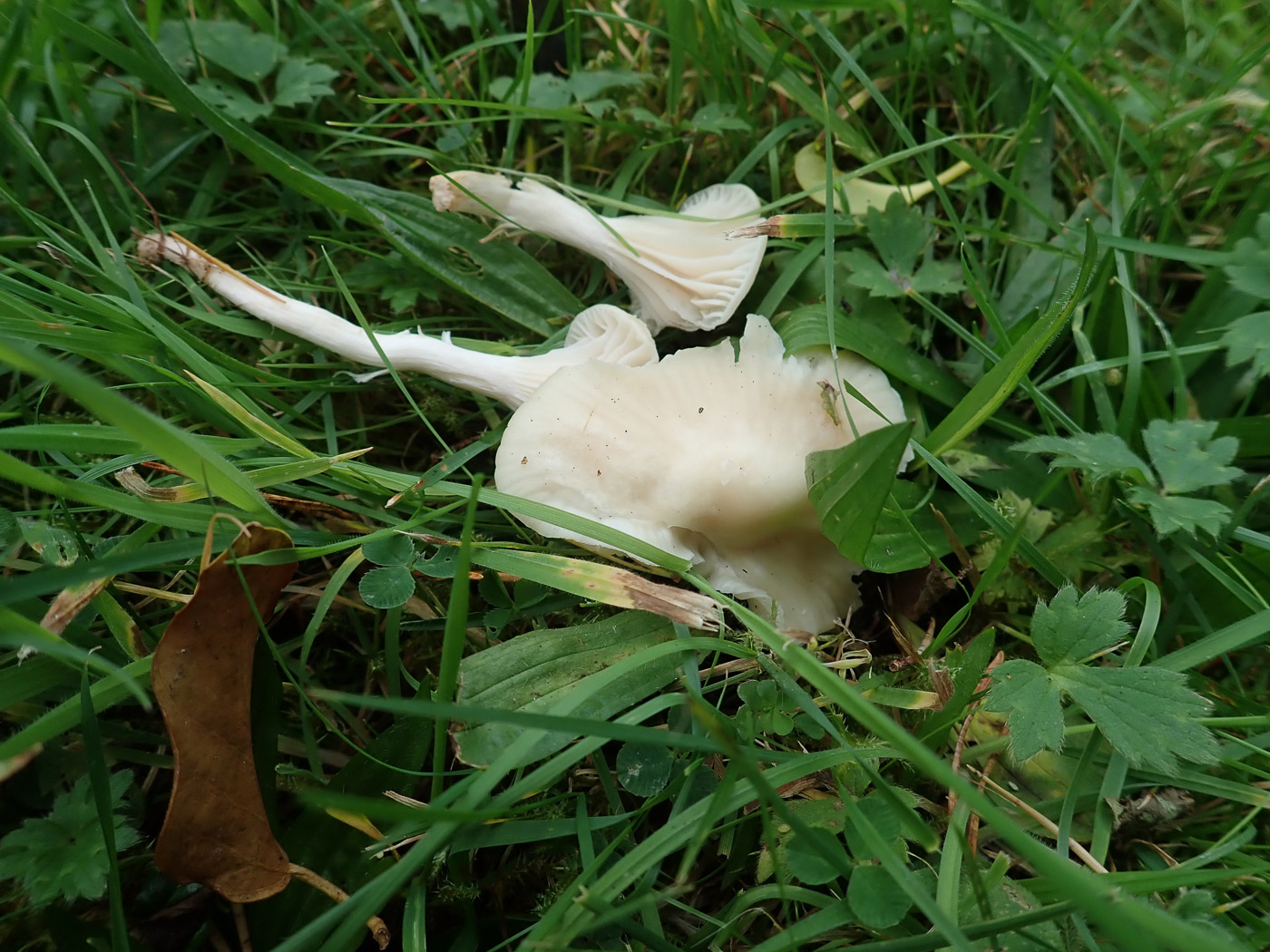 |
September 28th Cuphophyllus virgineus (Snowy Waxcap)
In short grass at Prestwood Churchyard this was the fifth Waxcap Penny found here today. Possibly our commonest species (and previously in genus Hygrocybe), it seems to thrive in any grassland so is not one of those considered an indicator species for unimproved grassland. Its dry cap, whitish colour together with strongly decurrent gills make it an easy one to recognise. Surprisingly we have only one previous Finds entry: 2021 November 18th.
|
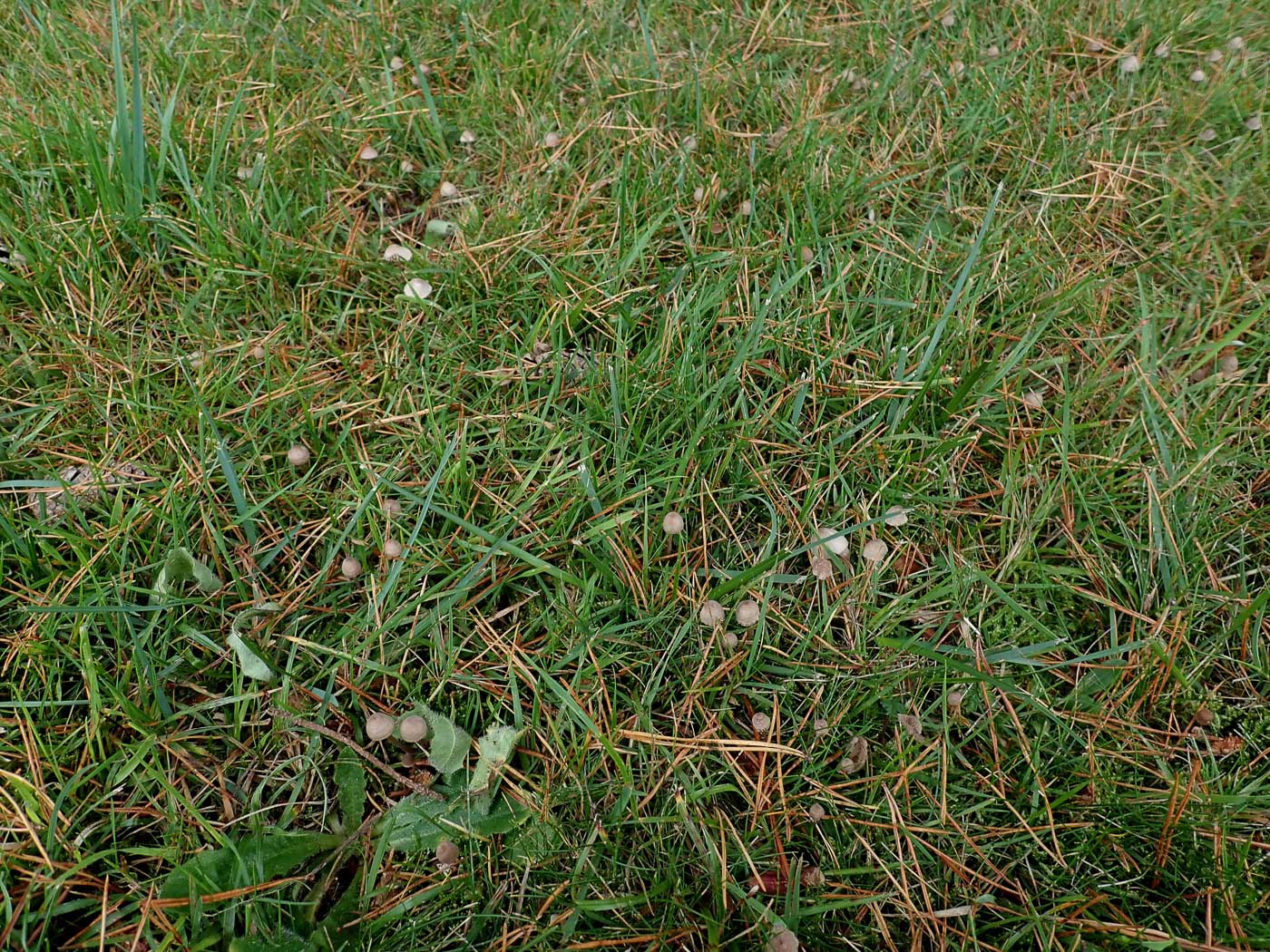
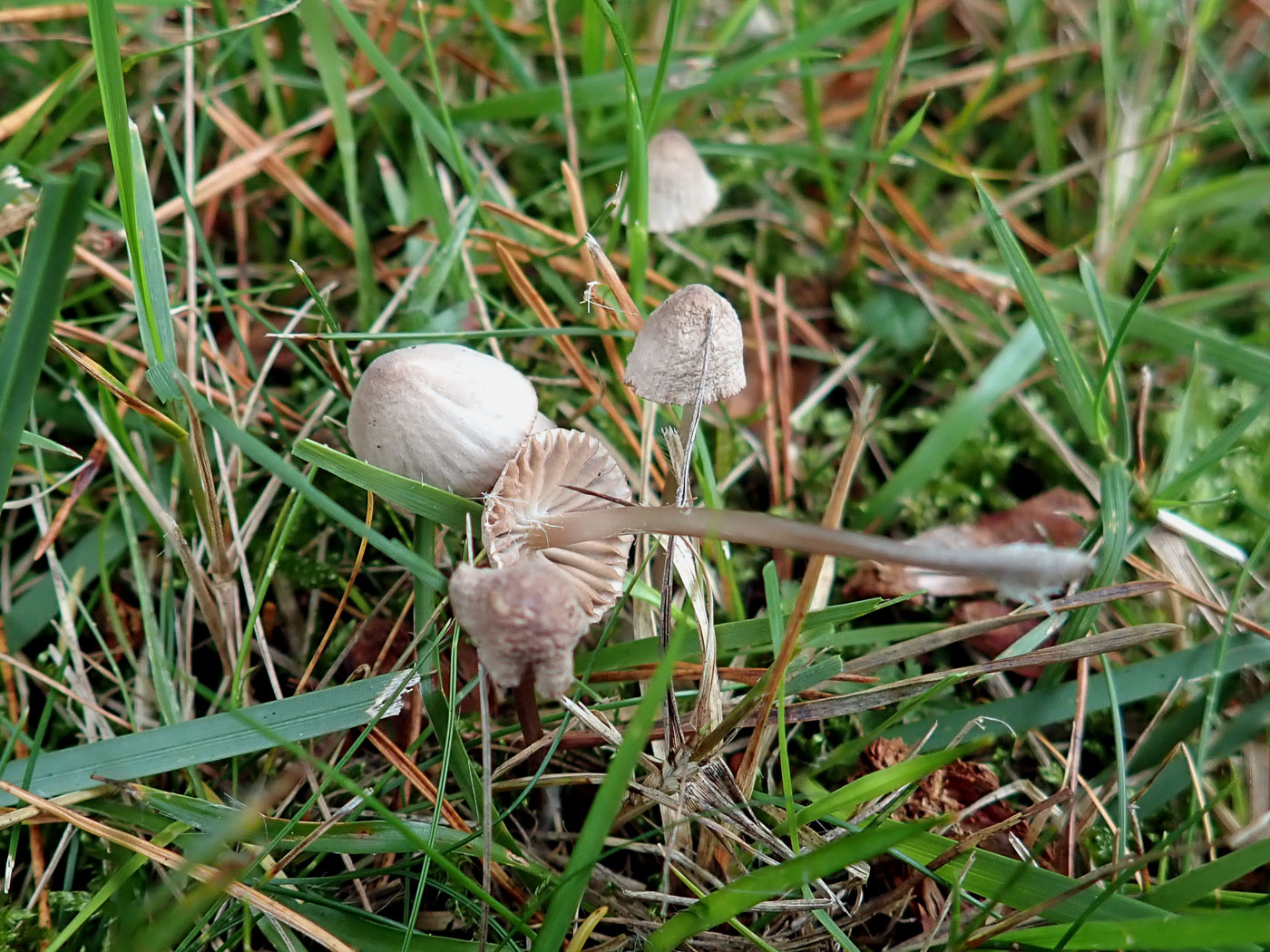 |
September 28th Mycena leptocephala (Nitrous Bonnet) 
Amongst the Pine litter at Prestwood Churchyard Penny found good numbers of a small nondescript Mycena and at first thought it might be the unusual M. vulgaris which is a regular in this particular spot. However, straight away on picking one she realised it was not that species which has a distinctly slimy stem - the stem was dry; so the next likely candidate was M. leptocephala, common in both deciduous and conifer litter, with a dry cap and stem but a distinct smell of bleach. The smell confirmed it, as did the microscopic details when checked at home later. Though one of our commonest Bonnets this is a new entry for Finds.
|
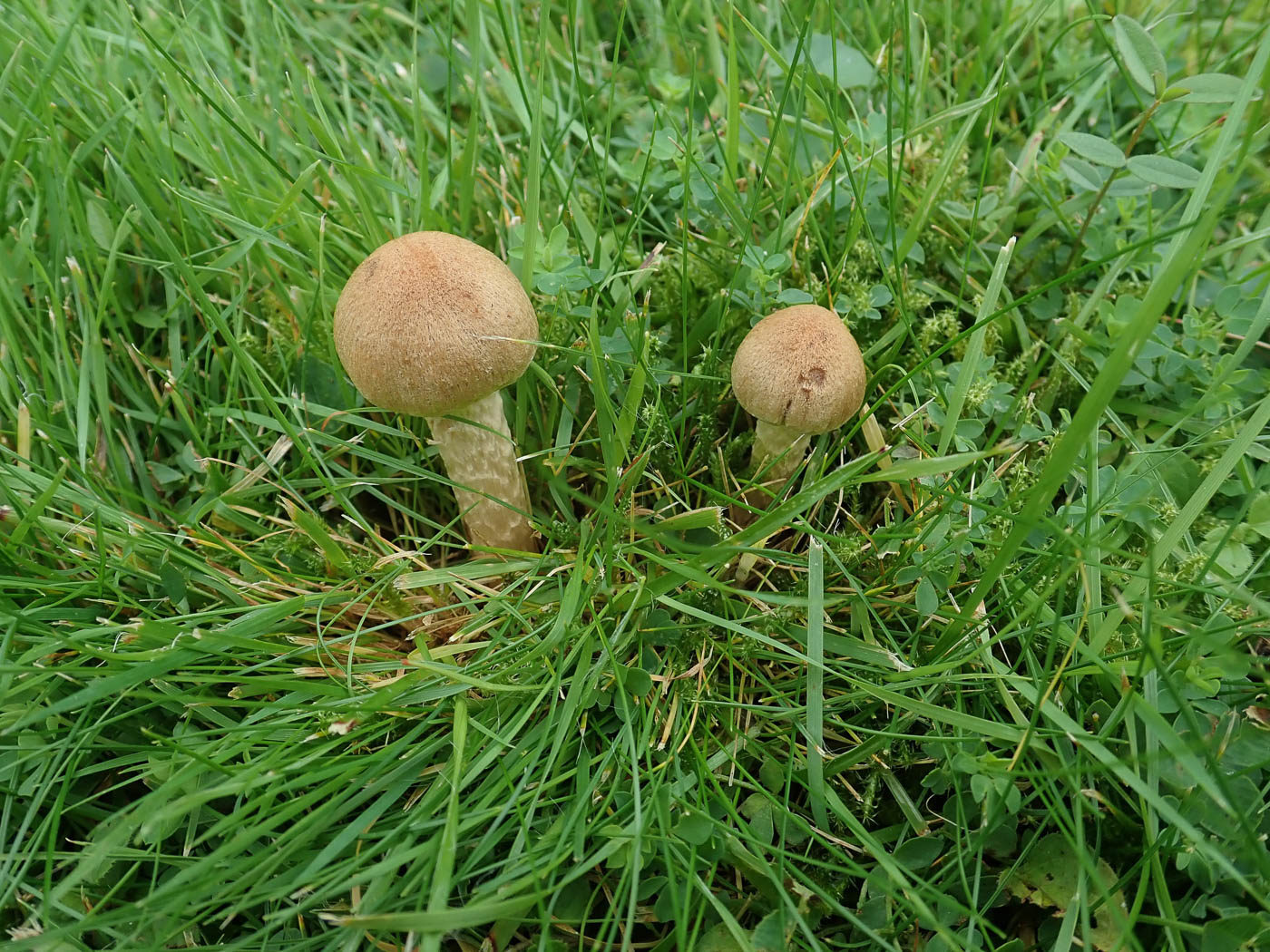
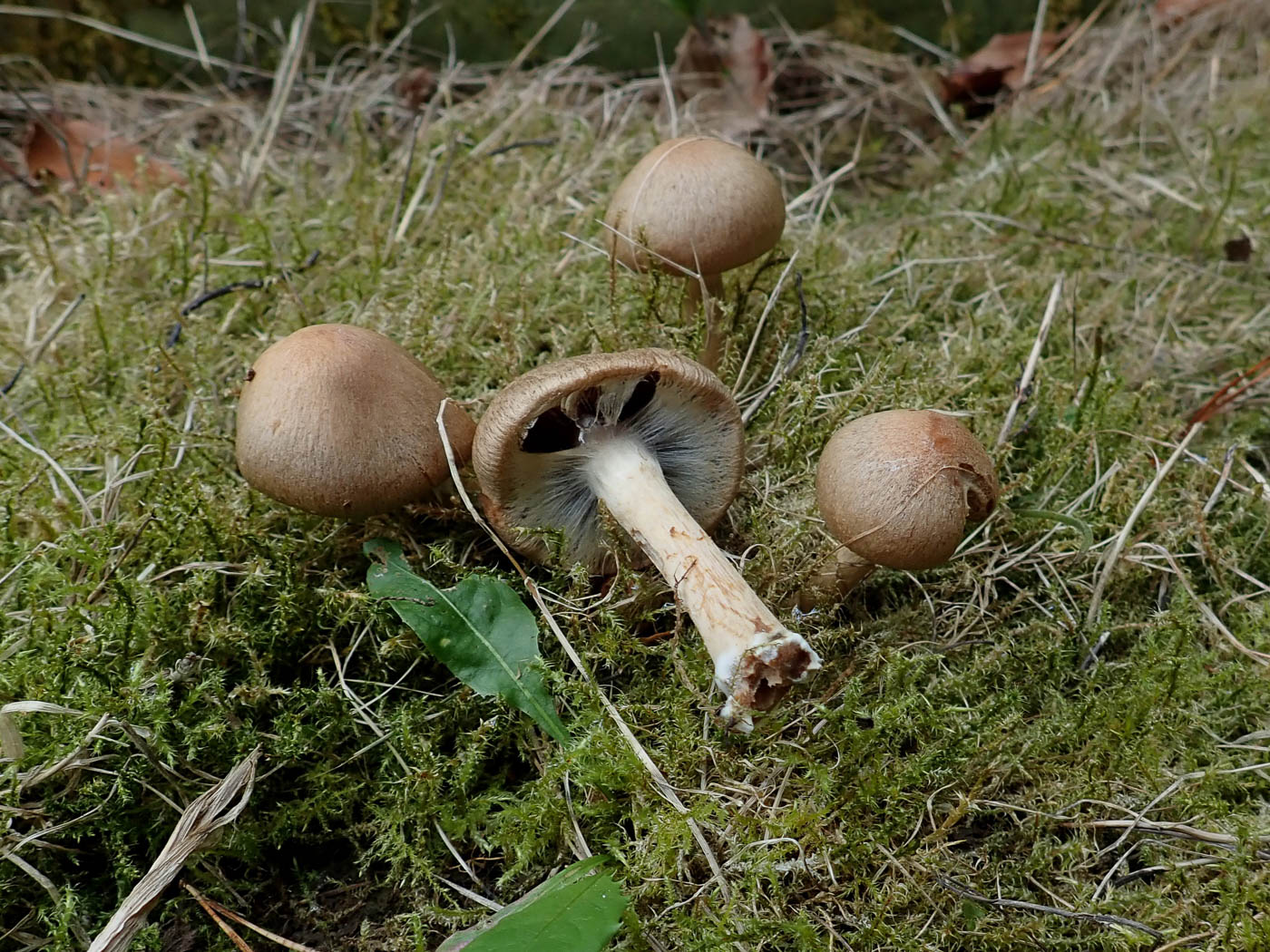
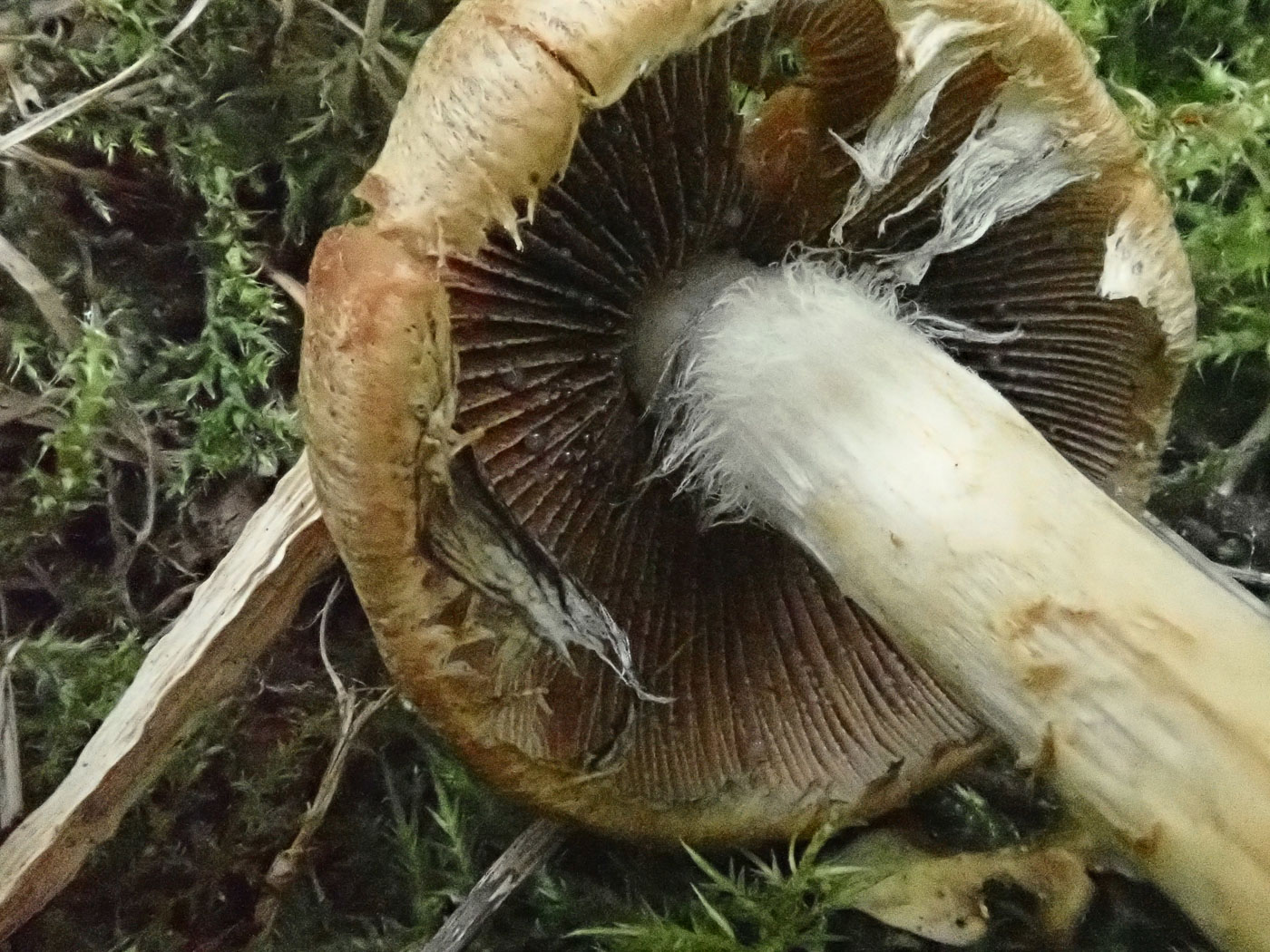 |
September 28th Lacrymaria lacrymabunda (Weeping Widow)
At Prestwood Churchyard Penny first found two specimens pushing through the short grass which she guessed were this species (photo 1) though no gills were yet showing. Later she came across another collection which was developed enough to confirm her ID (photo 2). She then encouraged the ring under the largest cap to disperse (photo 3), revealing the telltale dark gills with droplets already forming - hence the common name. Not only do the gills 'weep' in this species but it is often to be found near gravestones in churchyards though certainly not exclusively - there is no macabre connection to what lies beneath here! See the Masterlist for further examples.
|
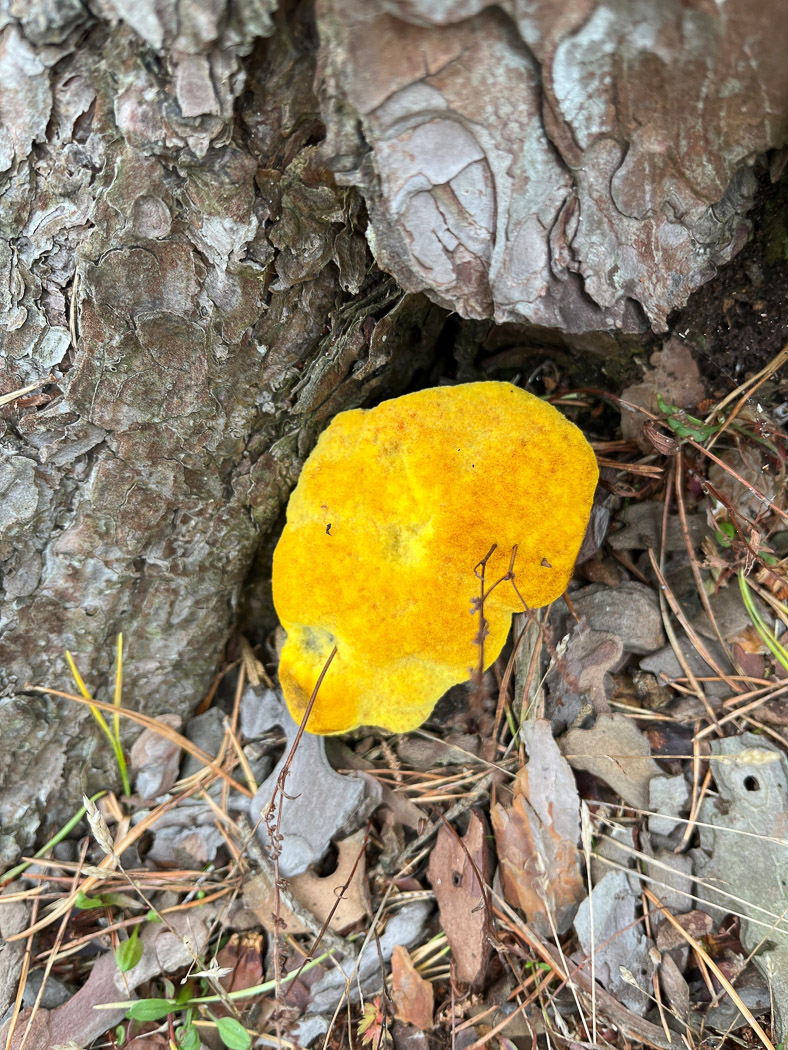
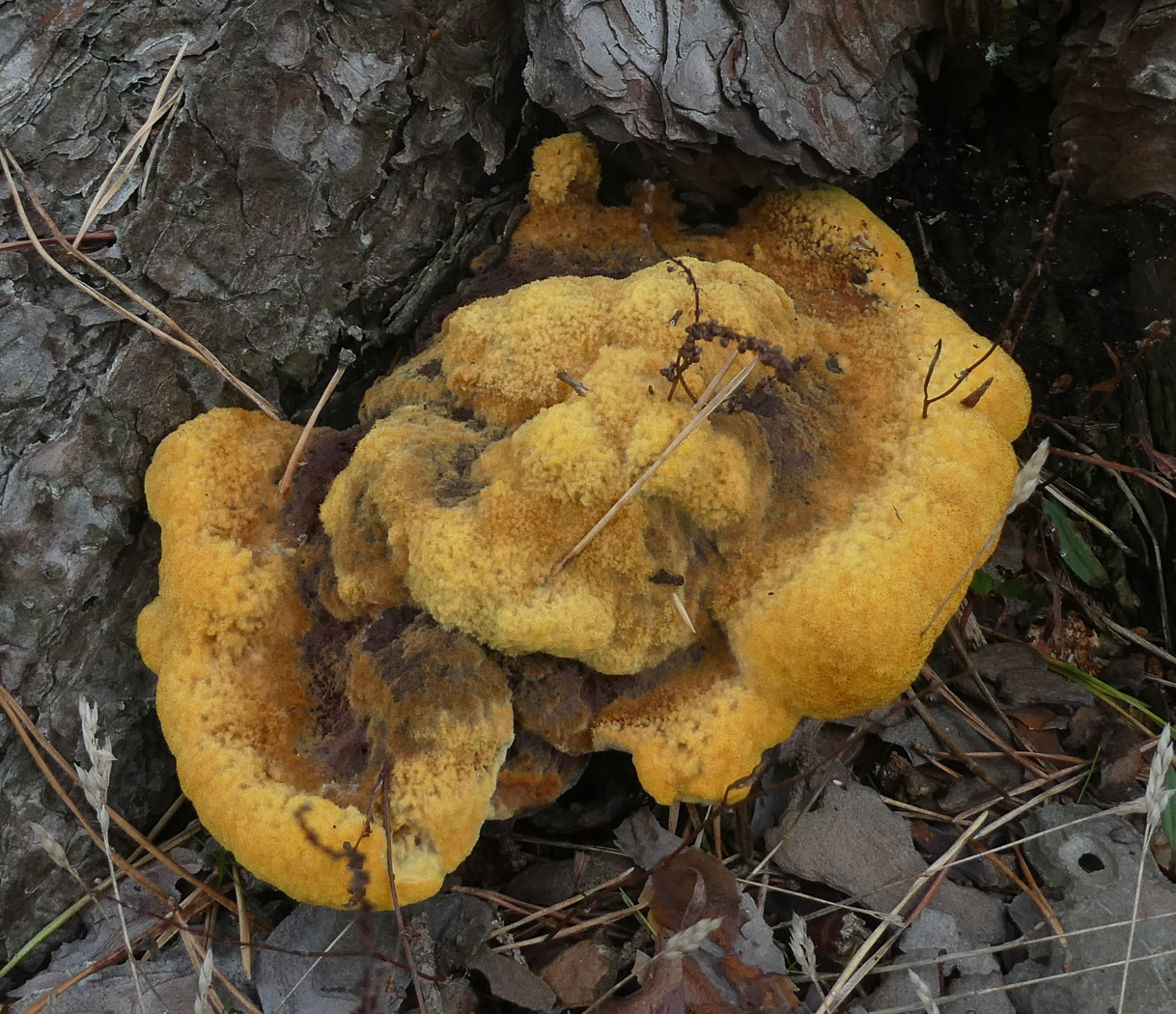 |
September 26th Phaeolus schweinitzii (Dyer's Mazegill)
At the base of a standing Pine in Burnham Beeches Jim found these strange looking yellow lumps, then looking online found they were a good match for the early stages of this bracket fungus. It only occurs on or near Pine and when mature it can get to dinner plate size or even larger and is an impressive thing. It is not rare but is always impressive to see and as the common name suggests it can be used to provide dye - apparently of various different shades - for wool etc. Of our three previous Finds entries 2020 September 27th shows a mature example and 2021 October 27th another similarly immature example.
|
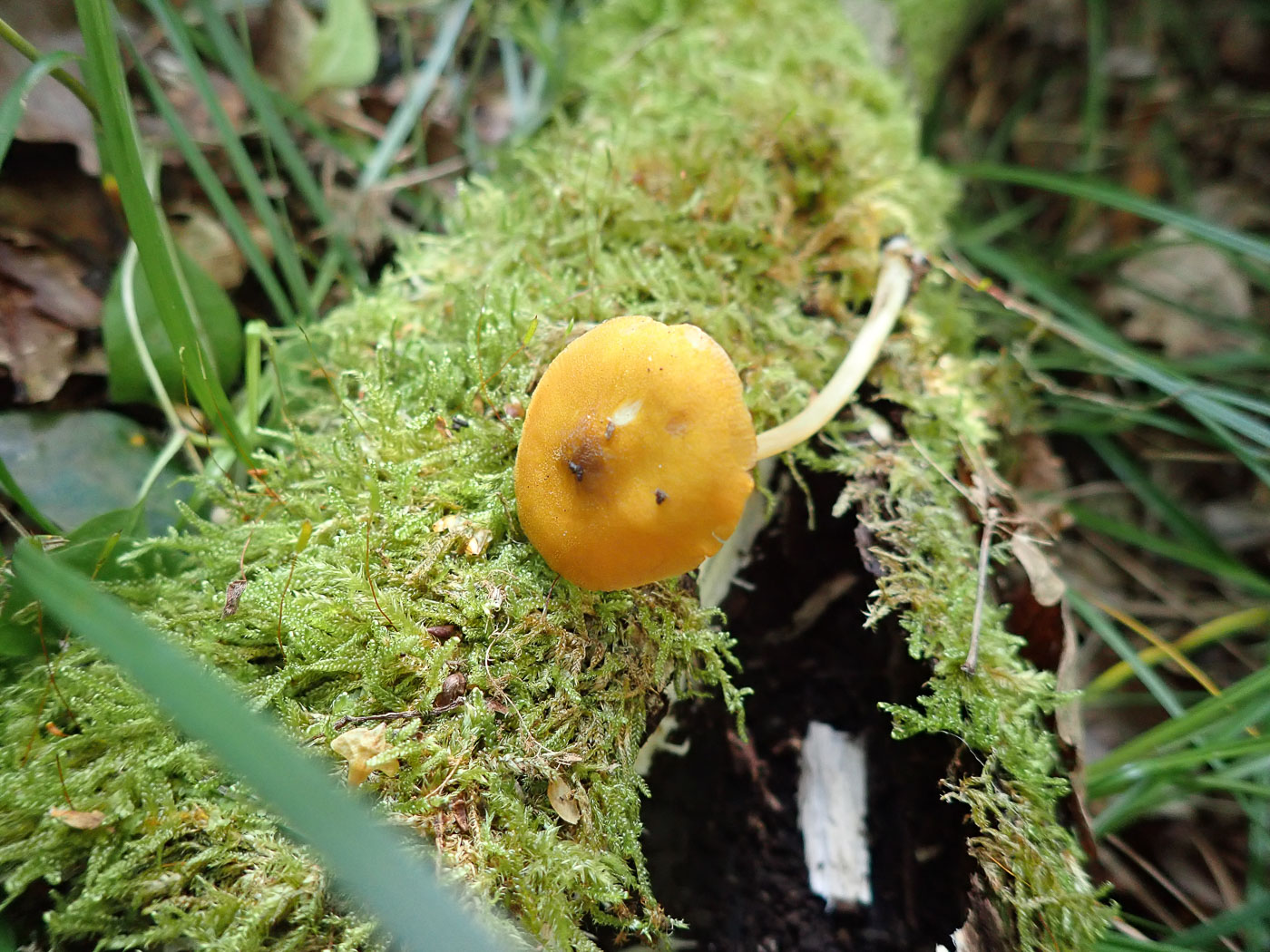
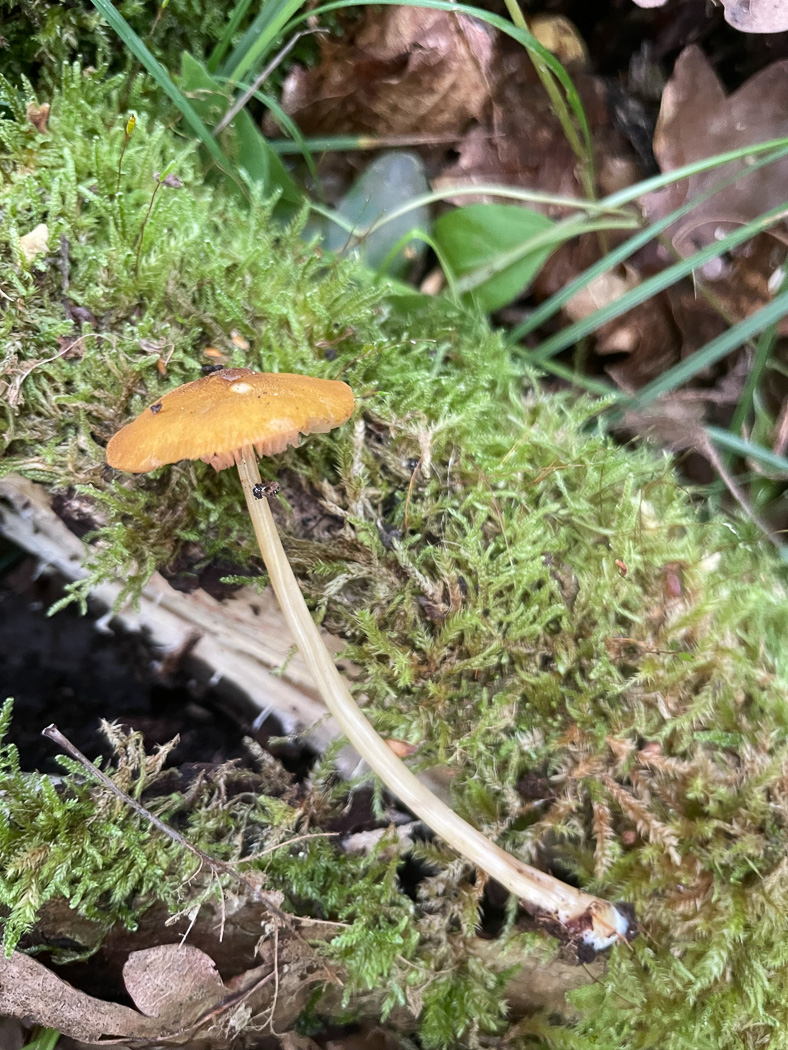 |
September 26th Pluteus leoninus (Lion Shield) 
In Bernwood Forest Sarah Ebdon found this beautiful yellow mushroom on fallen wood and, having found it on our Hodgemoor Walk just three days previously, was fairly confident it was the same again. This is a rare Shield with only one previous county record though the species is very similar to the much more common P. chrysophaeus (Yellow Shield) for which we have many records. The differences in the field are slight though Sarah noted the somewhat felted cap surface and sweet raphanoid smell on both her collections. The definitive difference, however, is in the cap cuticle and seen with a scope when the two species cannot be mistaken. (See Penny's Hodgemoor Wood report - 23.10.2023 - for more on this) This was a nice find and is a new species for Finds.
|
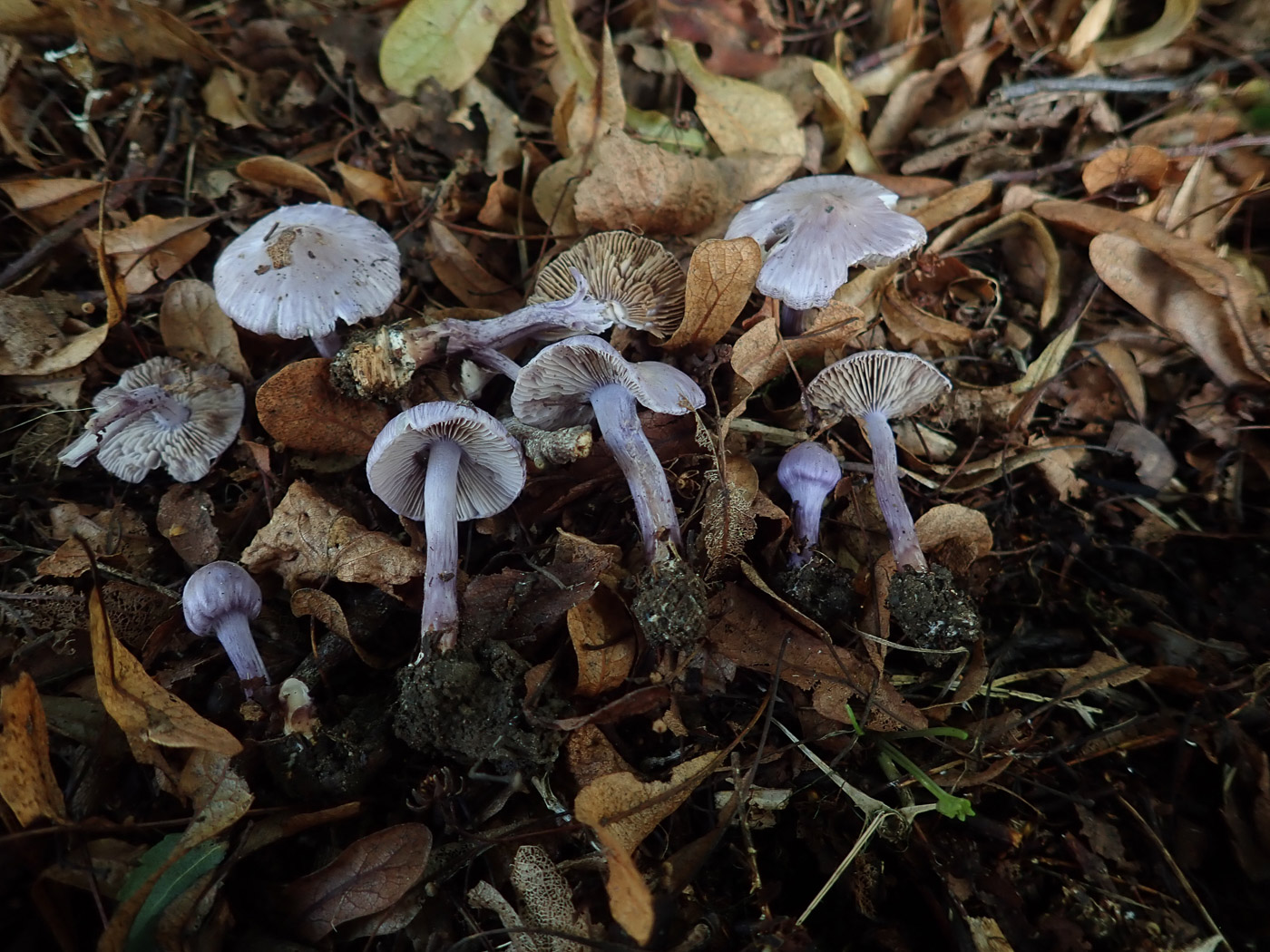
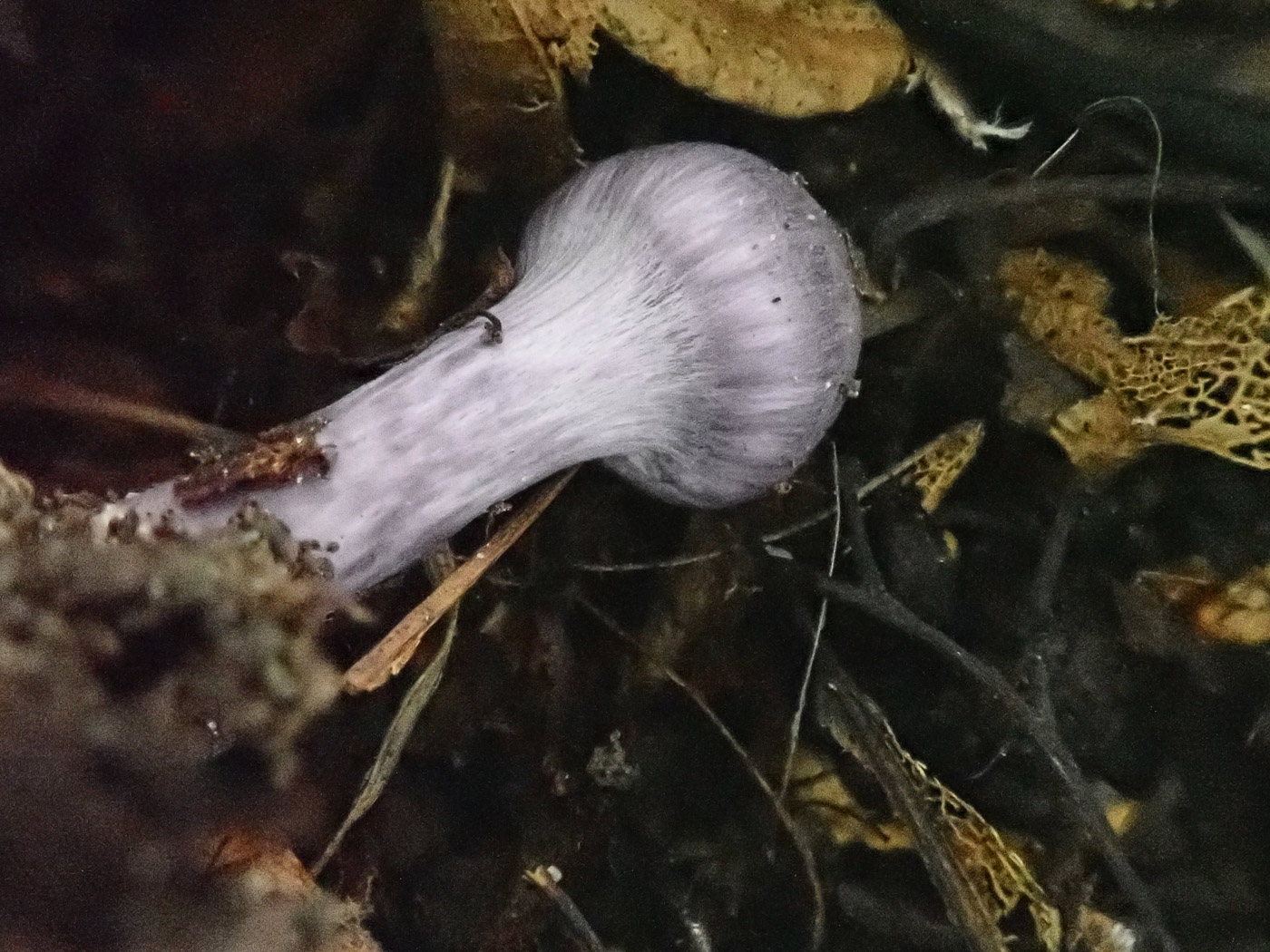 |
September 26th Inocybe tyrii (a rare Fibrecap with no English name)  
Under Lime at Turville Heath Penny made two separate collections of this Fibre cap with a view to getting them sequenced. Recent years have revealed that what we recorded previously as the common I. lilacina (and before that as I. geophylla var. lilacina) is in fact a complex of several species now newly described but so similar to each other that determining to species needs DNA confirmation to be really sure. Last year a collection from this site turned out to be I. tyrii, new to the British list, and both collections made today - also now sequenced - are confirmed as this species again. Photo 2 shows an immature specimen with cortina still intact.
Previous finds |
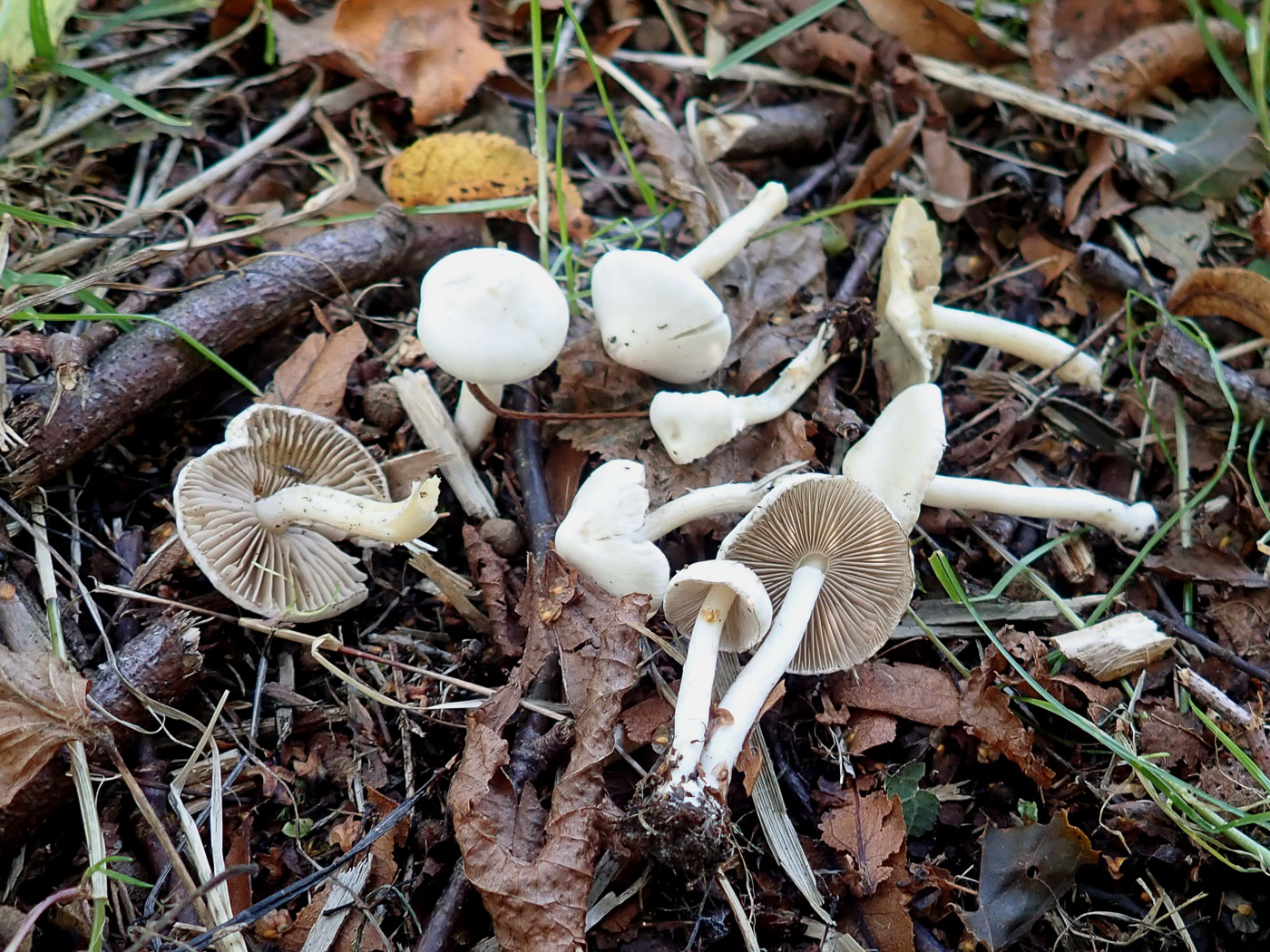 |
September 26th Inocybe miranda (a rare Fibrecap with no English name)  
Under Lime at Turville Heath Penny made a sizeable collection of this Fibre cap with a view to getting it sequenced. Recent years have revealed that what we recorded previously as the common I. geophylla is in fact a complex of several species now newly described but so similar to each other that determining to species needs DNA confirmation to be really sure. In 2021 a collection from this site turned out to be I. miranda, a species from this complex first described in 2013, and two separate collections made today - both also now sequenced - are confirmed as this species again.
Previous finds
|
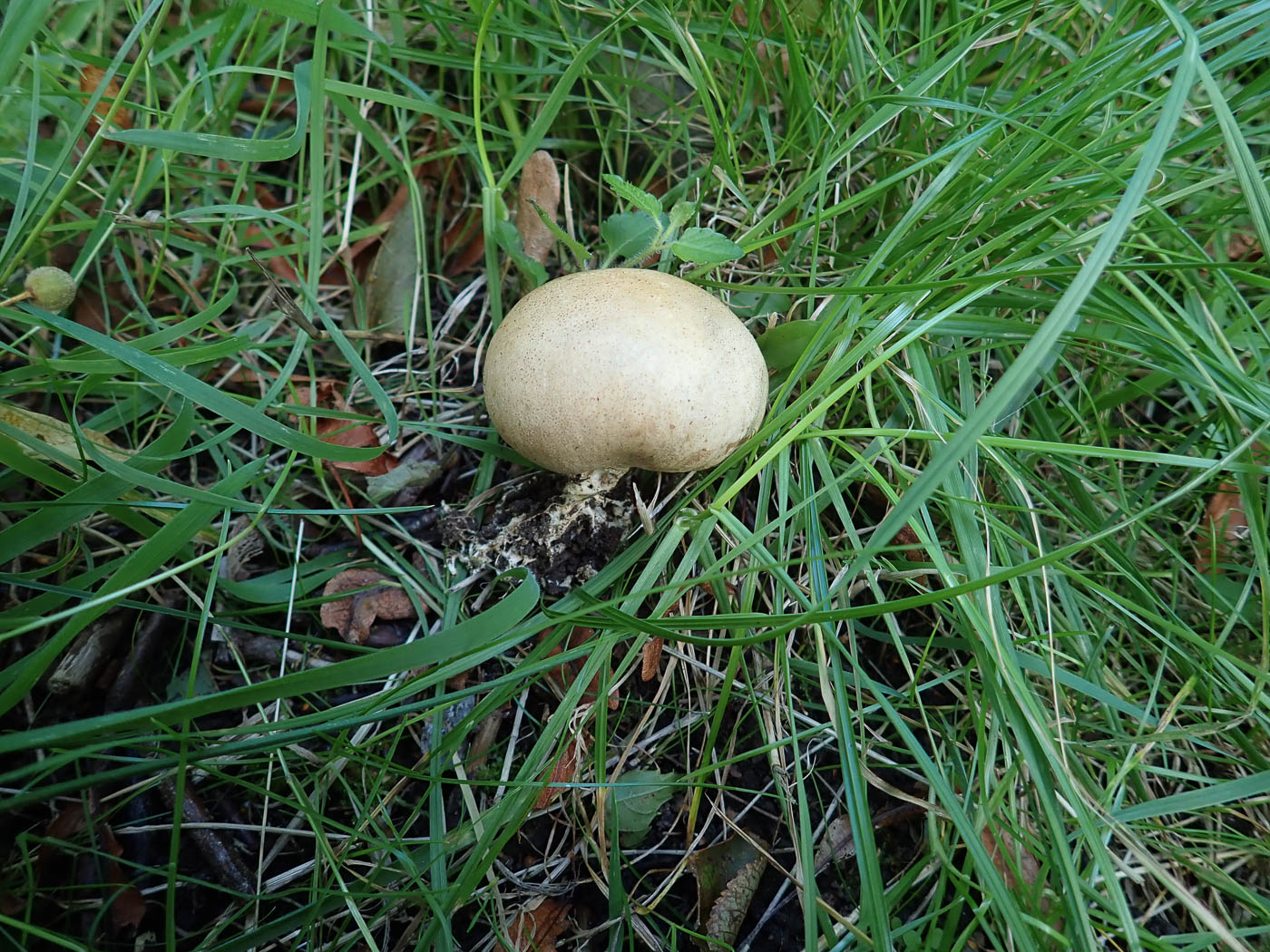
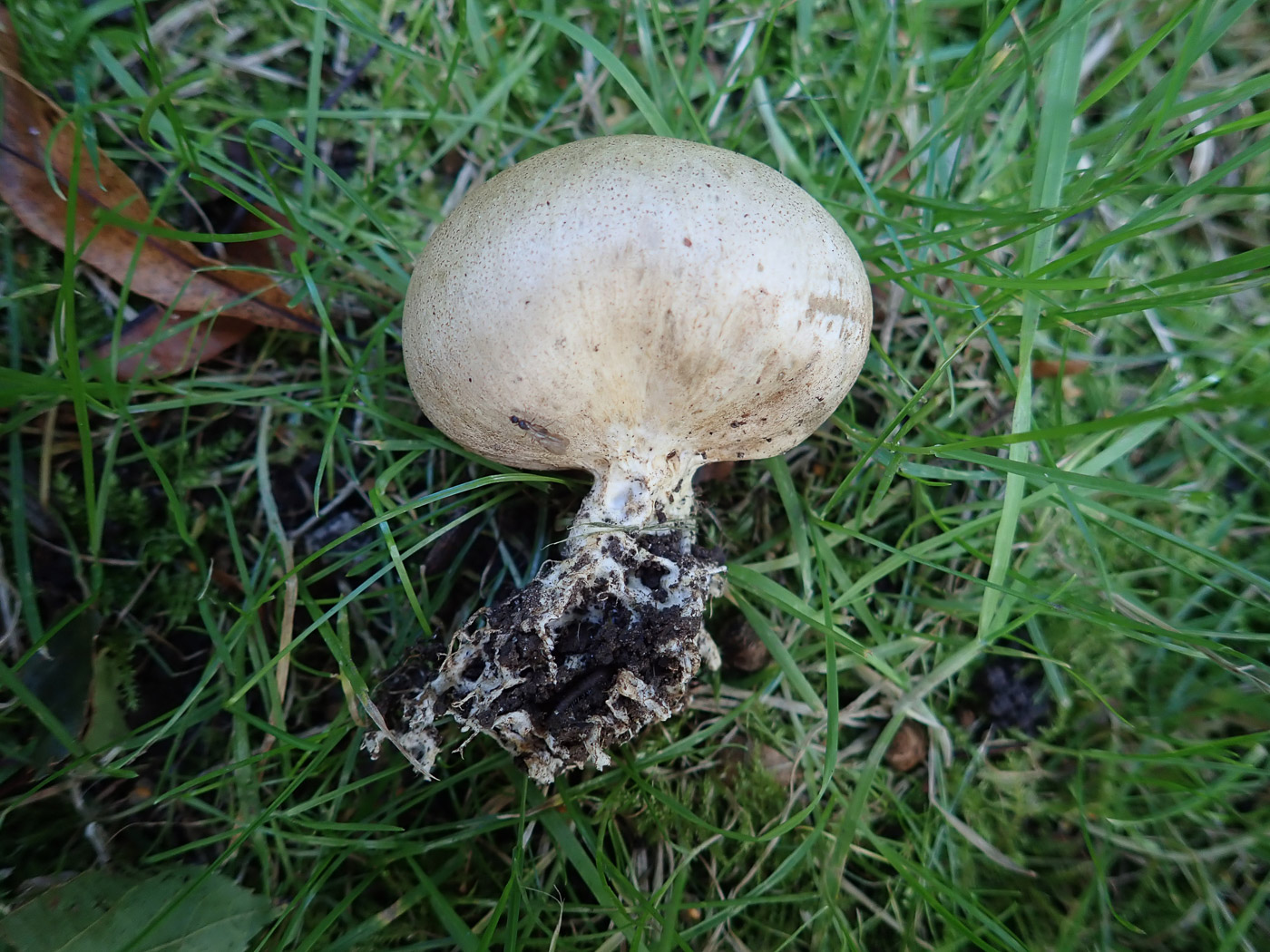 |
September 26th Scleroderma bovista (Potato Earthball)
In longish grass under Oak at Turville Heath Penny nearly missed this specimen, then did a second take and realised it was not one of the species we regularly record. It was almost entirely smooth and had a rooting base and luckily when examined at home was mature enough to have spores within. These were ornamented with a clear reticulation rather than isolated spines as in S. verrucosum or S. areolatum, also a thin sliver of the thick outer skin revealed clamps - absent in the other two species and confirming this was S. bovista. Not rare but favouring parkland rather than woodland, hence its occurrence here. This is new to Finds.
|
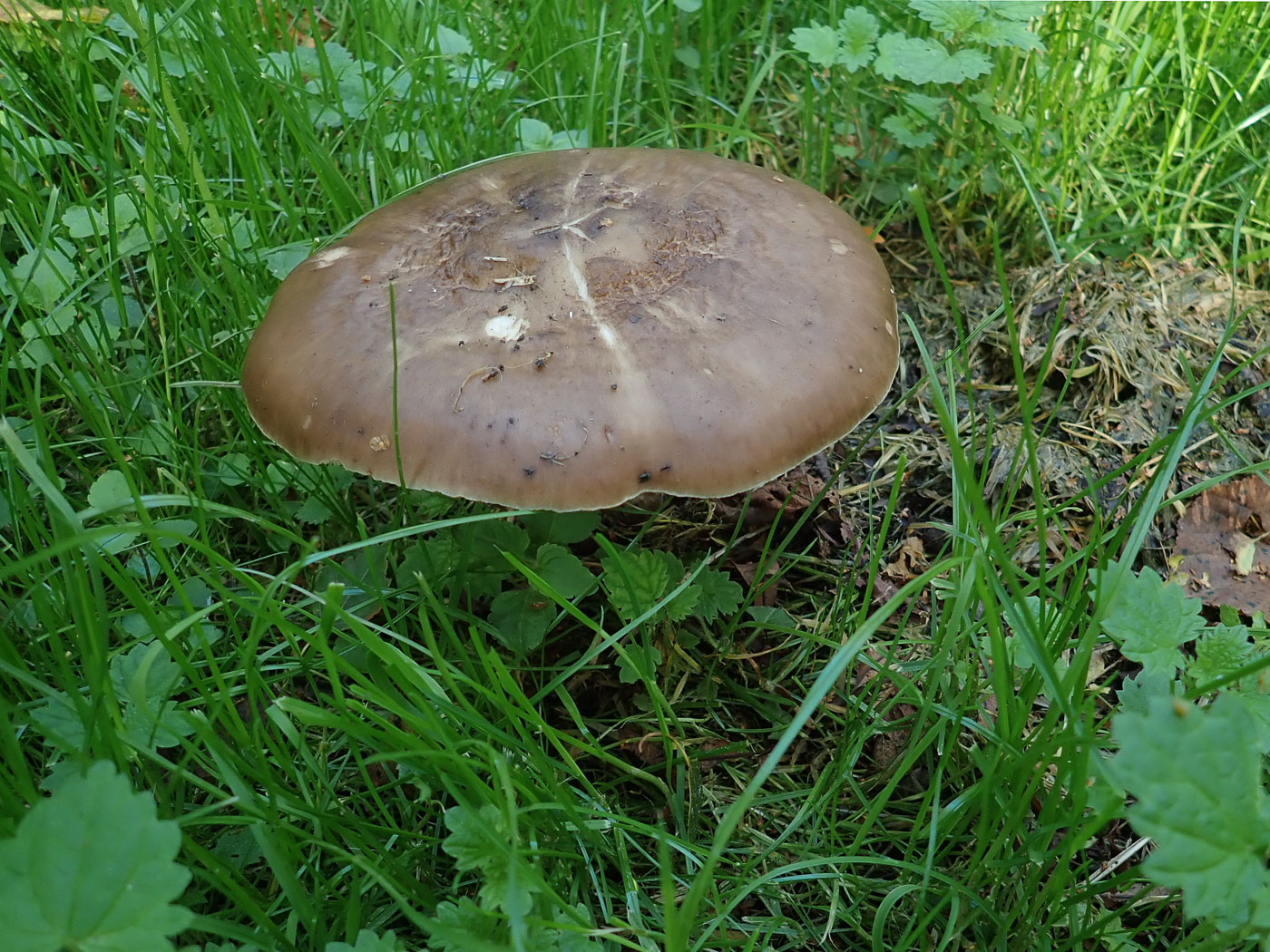
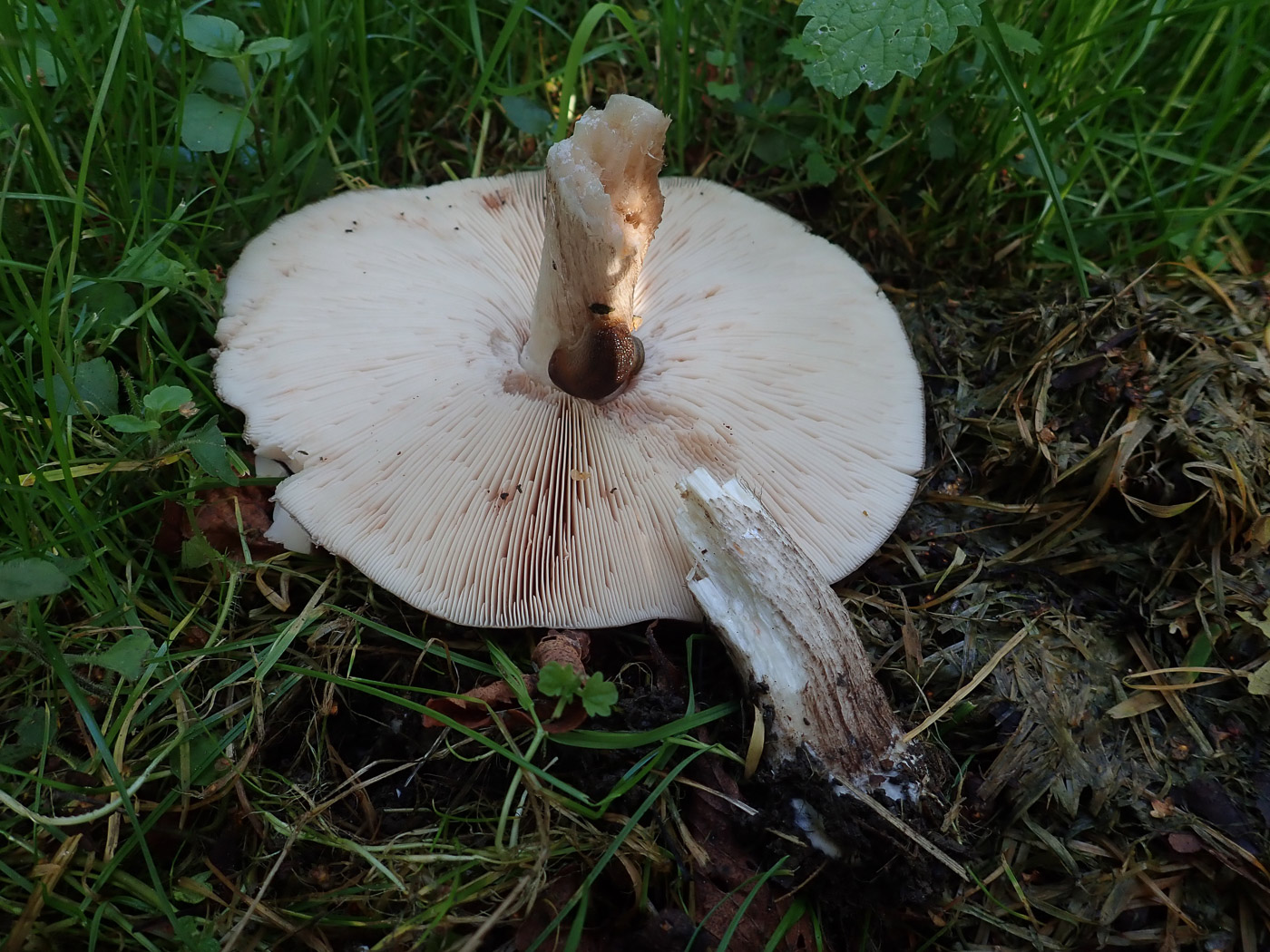 |
September 26th Pluteus cervinus (Deer Shield)
At Turville Heath in a grassy spot previously covered in woodchip but recently planted with a new Lime sapling Penny saw an enormous brown cap amongst thick grass. Despite it not being on a fallen branch but apparently just in grassy soil, she recognised the species and recalled finding huge specimens of it here in previous years. The cap measured about 15 cm across and the gills were suitably crowded, free and pink though it collapsed when she turned it over and was clearly being enjoyed by a slug! There are many examples of this common species in Finds - see the Masterlist.
|
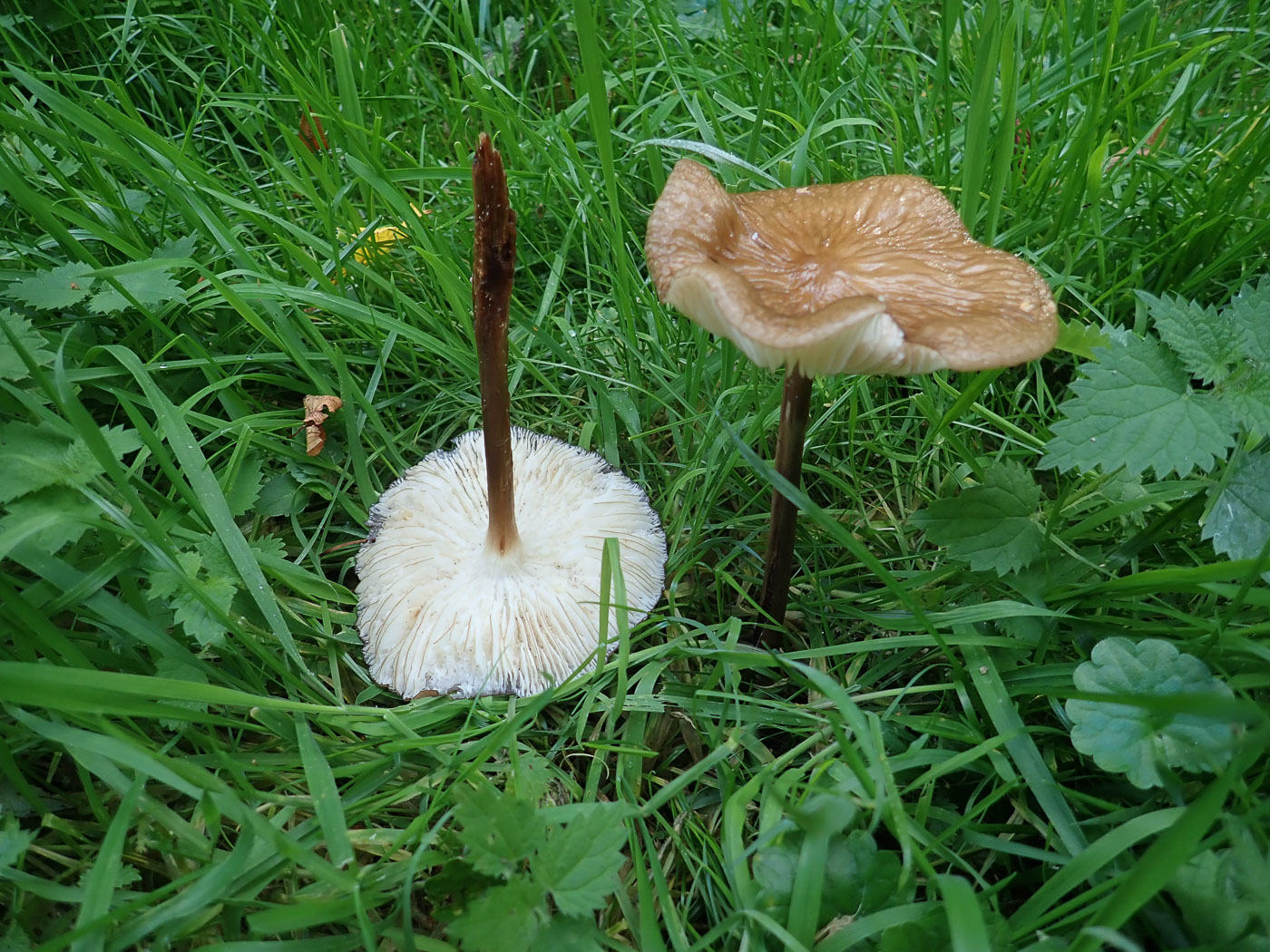
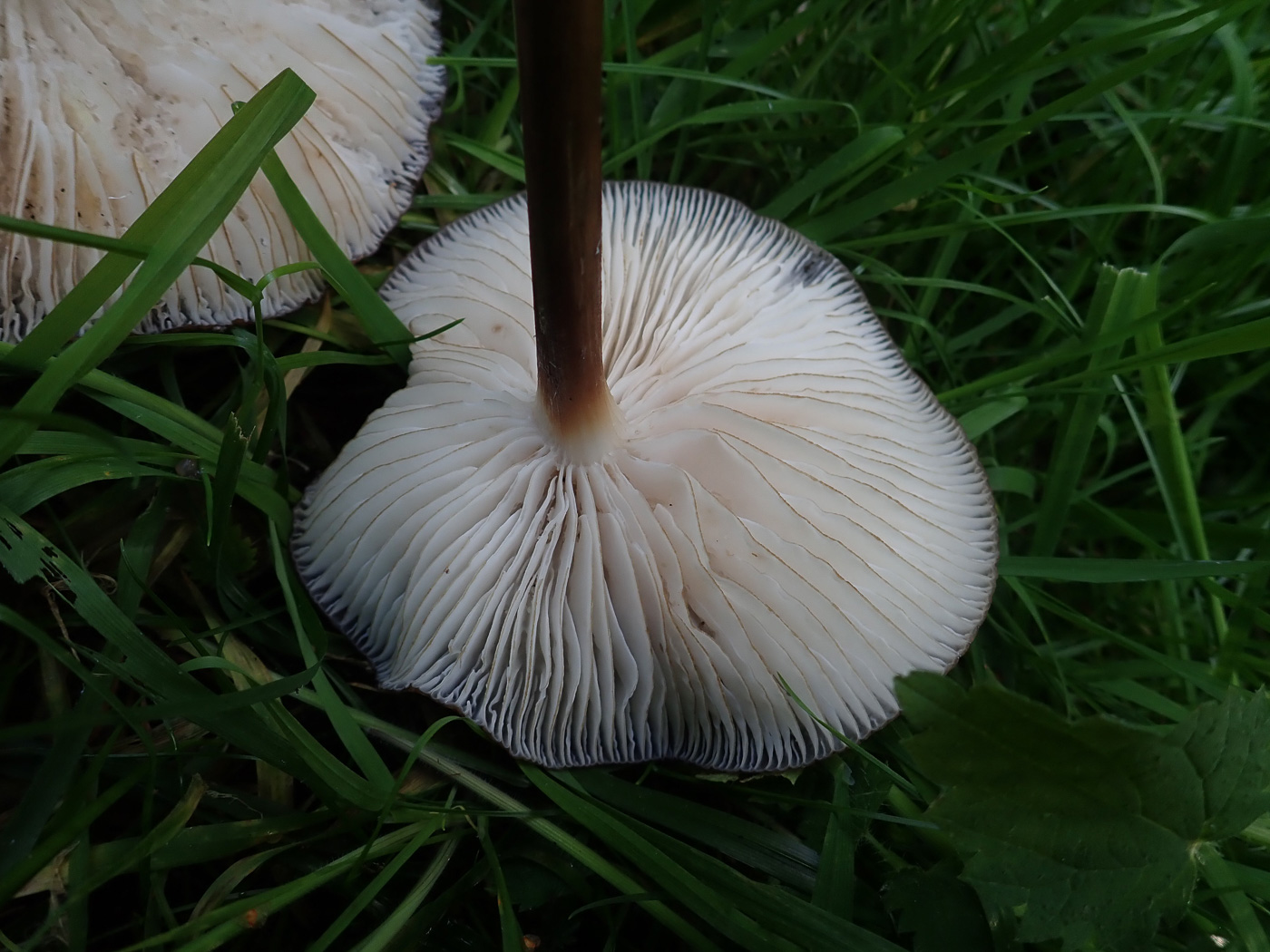 |
September 26th Hymenopellis radicata (Rooting Toughshank)
At Turville Heath in long grass under a Lime sapling Penny saw two very large brown wrinkled slimy caps and recalled finding similar sized examples of this species (previously in genus Xerula) in this exact same spot almost to the day last year! The caps must have been all of 12 cm across. The adjacent nettles discouraged me from attempting to dig up the diagnostic taproot, but there was little doubt over its ID with widely spaced white gill showing a slight dark edge - sometimes but not always present. See last year's example plus other in Finds.
|
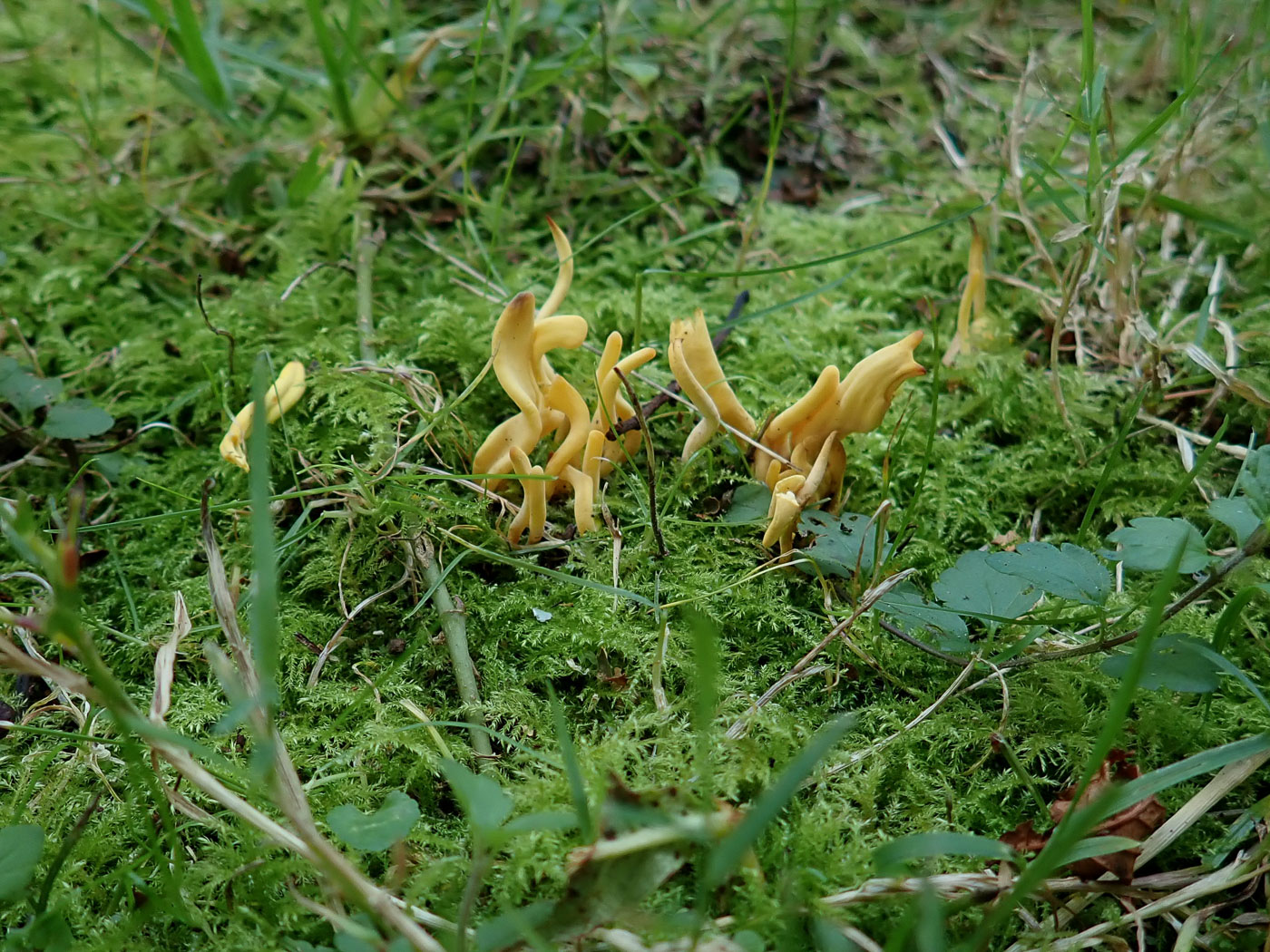
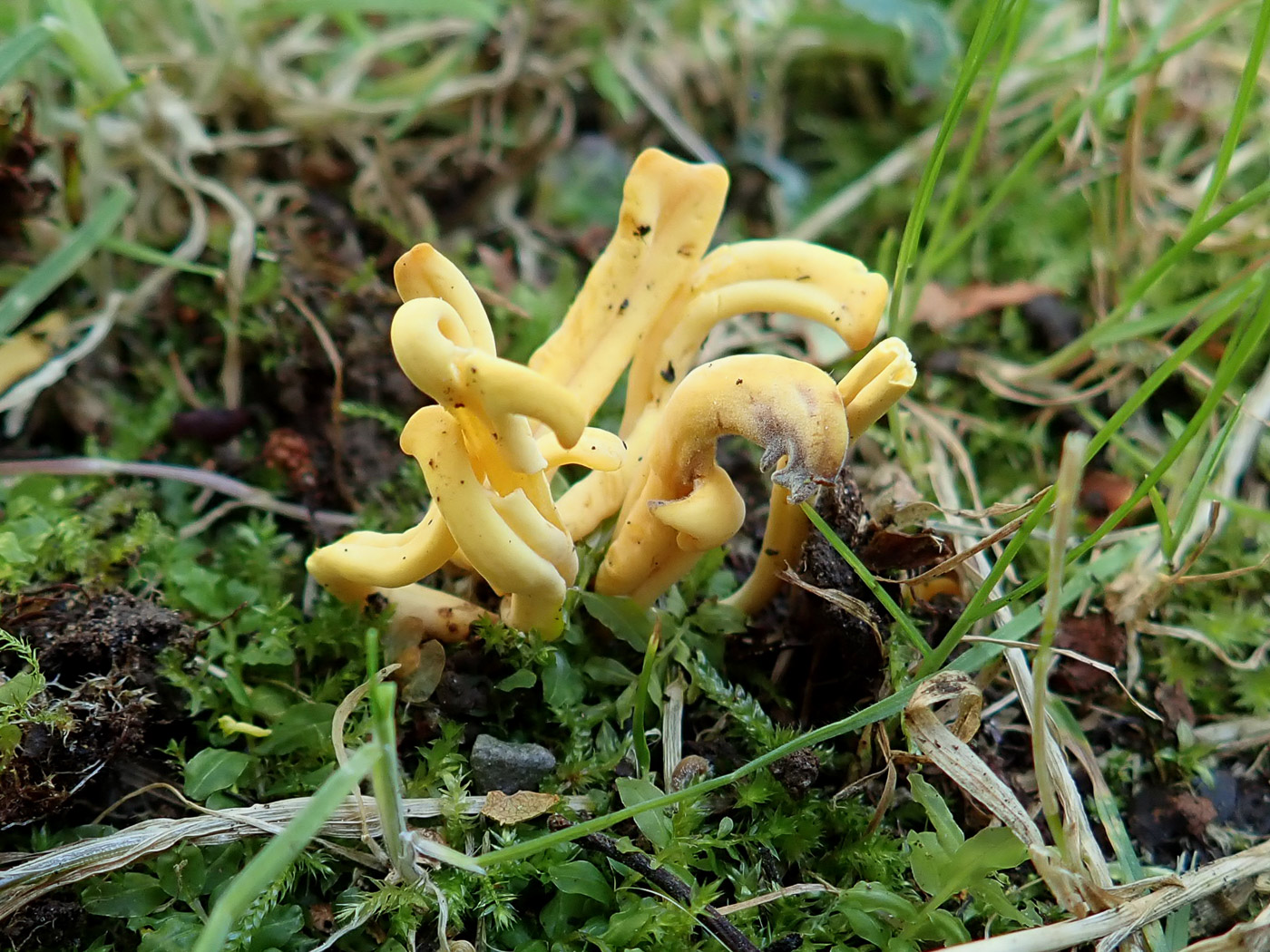 |
September 26th Clavulinopsis helvola (Yellow Club)
In a mown mossy grassy verge under Oak at Turville Heath Penny found a few clusters of yellow clubs which she suspected might be something other than this species which is probably the commonest - they seemed rather twisted and misshapen. However, the spores were unmistakeable: round with a few protruding extrusions and unlike those of any other similar species. We have several other examples in Finds.
|
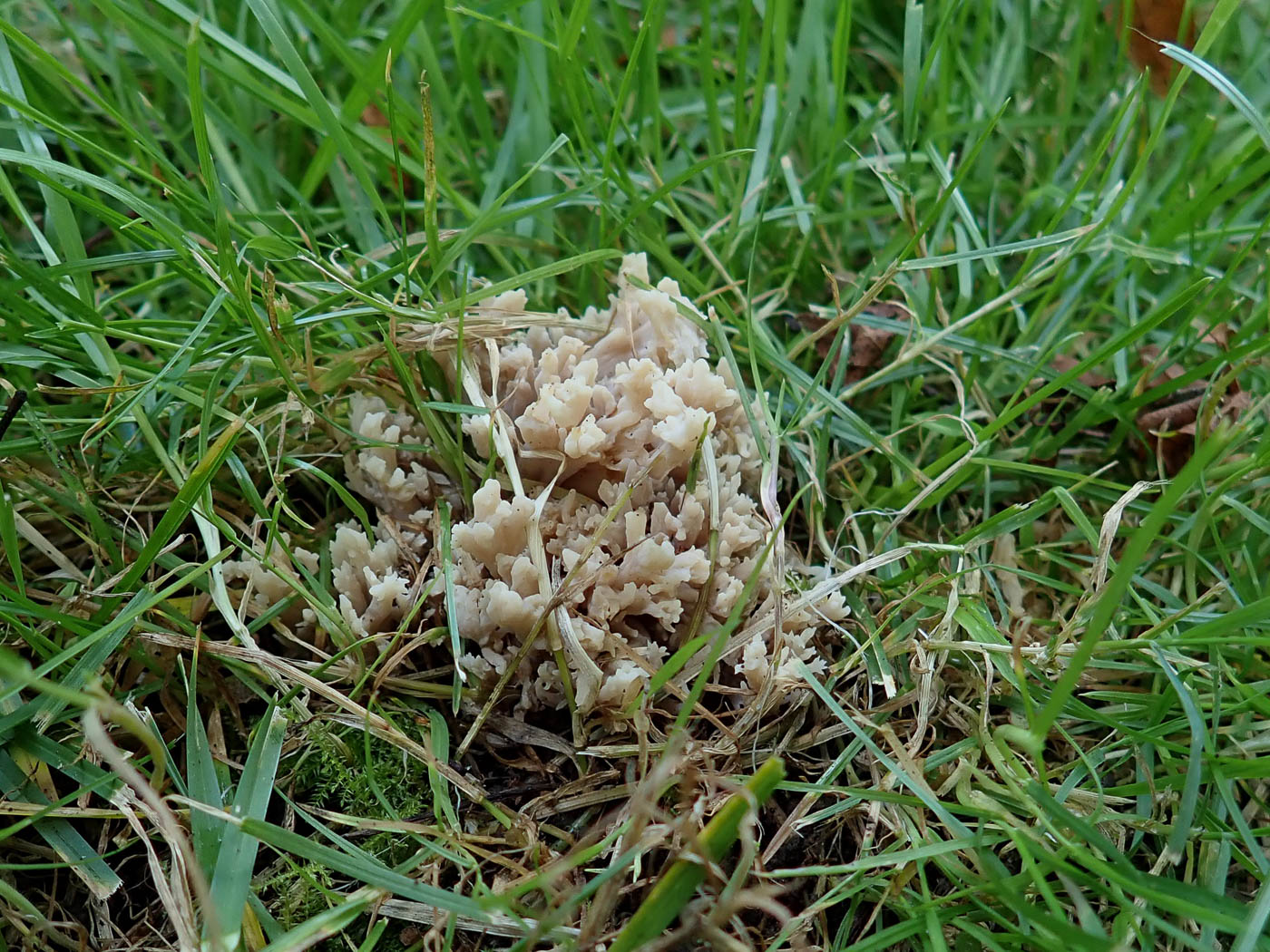 |
September 26th Clavulina cinerea (Grey Coral)
In a mown grassy verge at Turville Heath Penny found a couple of tight clumps of this coral fungus, clearly not white enough or sharply crested enough for the similar C. coralloides (Crested Coral). It is common in woodland litter though possibly less so in grassy aspects though it was under Oak here. See also in Finds 2020 October 12th.
|
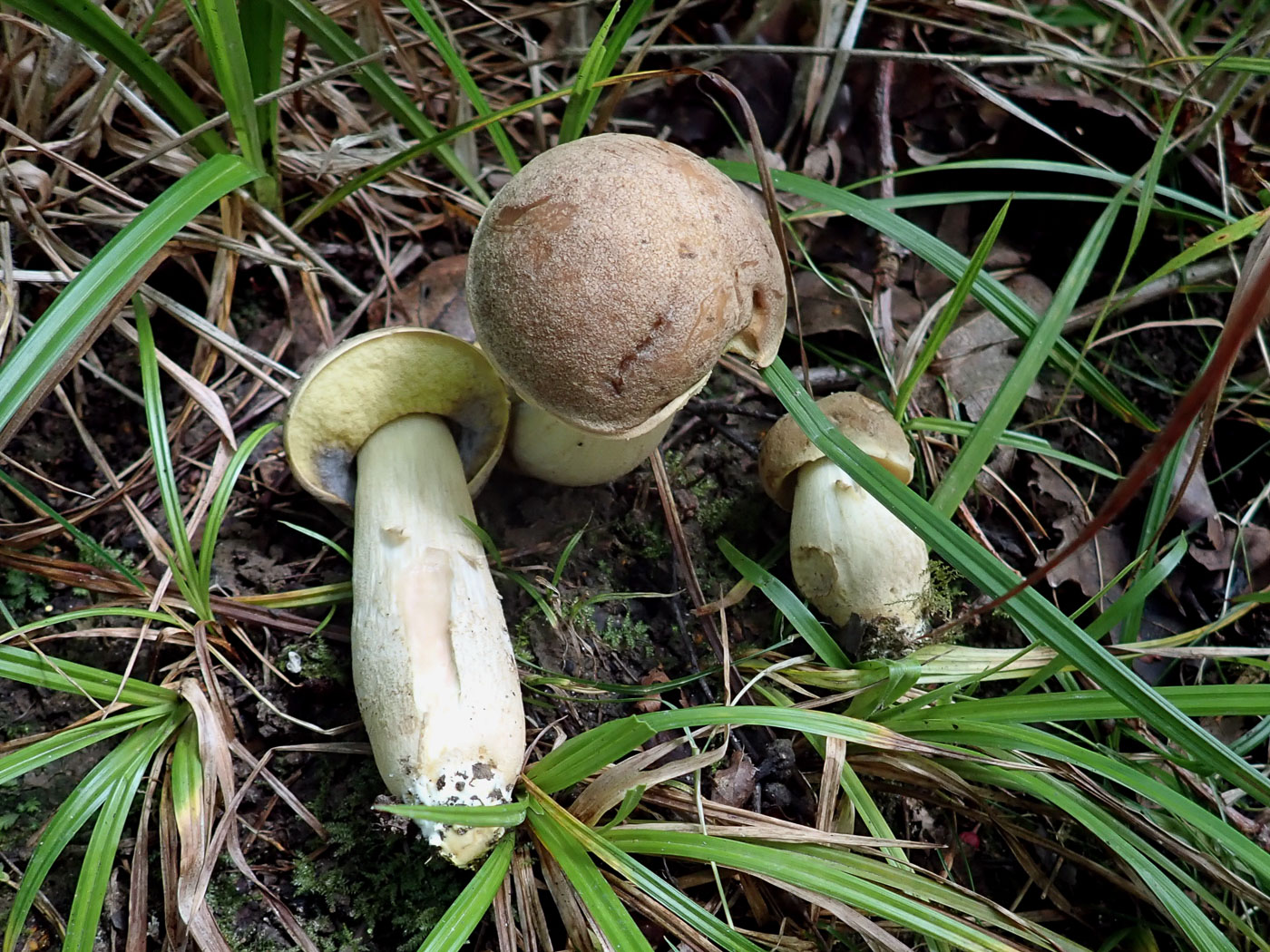
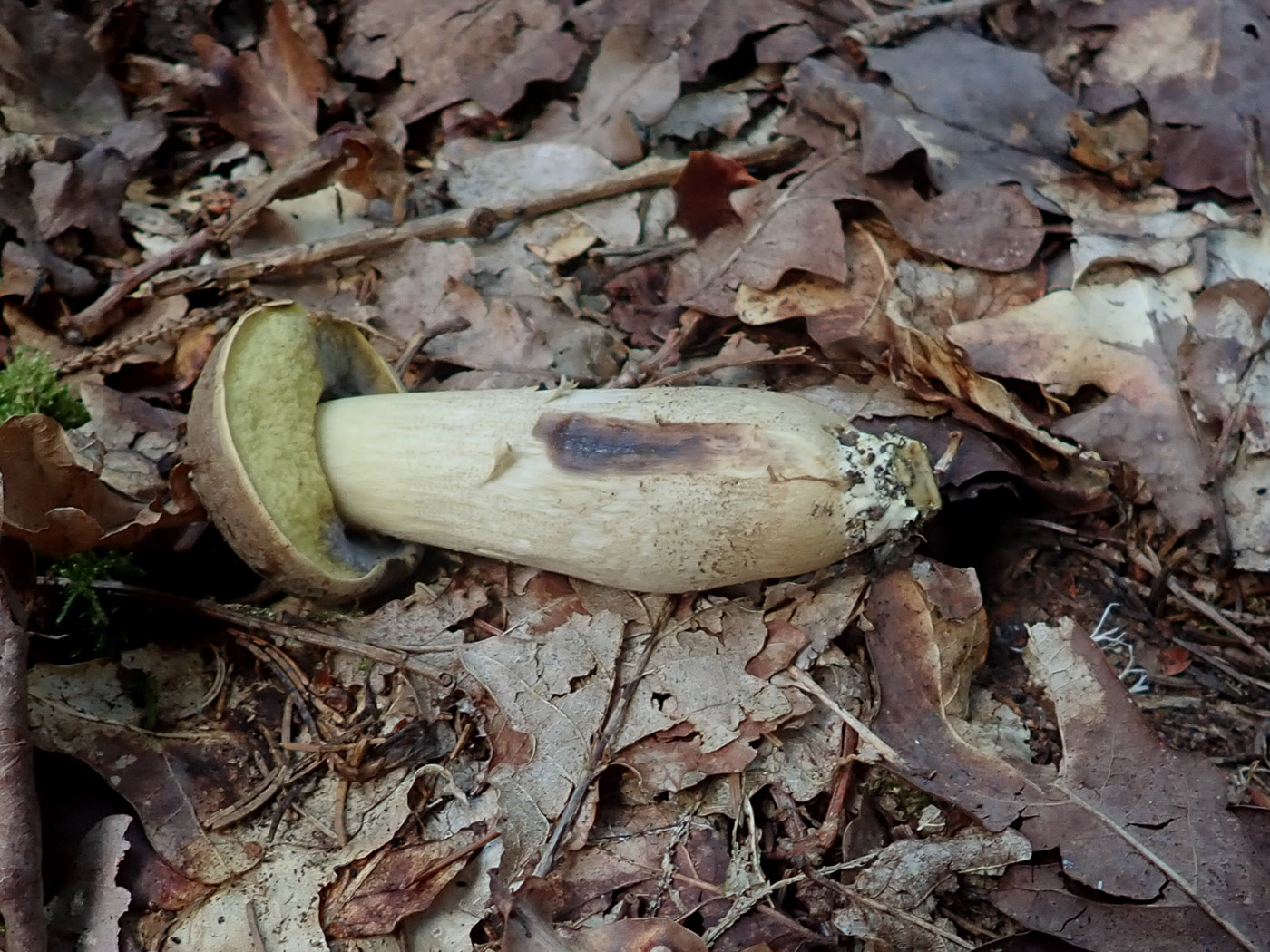 |
August 30th Leccinum crocipodium (Saffron Bolete)
Under Oak in Bernwood Forest Penny and Paul spotted these Boletes which from above were tricky to identify, but once the small yellow pores and rather clavate stems were seen Penny realised what they were. Furthermore Jesper Launder had found the species here in July and Oak is very much the predominant tree in much of this site, with which this particular Leccinum associates. Penny gave the stem a good scratch then waited for half an hour for it to turn first pinkish red then black, thus confirming the ID (see photo 2). All parts will blacken when damaged. When mature this is a large chunky Bolete and the cap can be bright yellow (hence its common name) though it tends to have a rather 'hammered' surface. The previous entry on July 16th is our only other Finds entry.
|
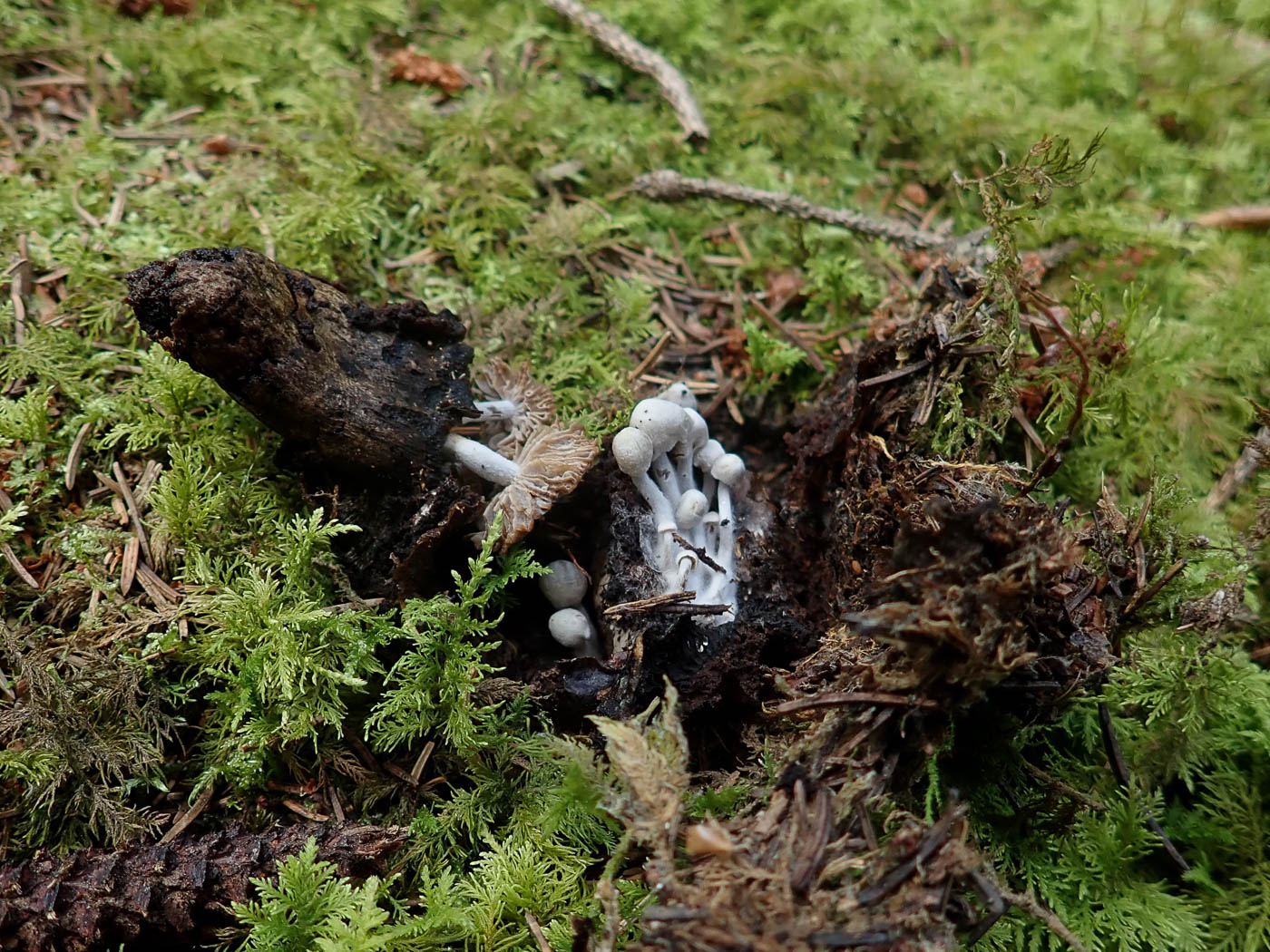 |
August 30th Asterophora parasitica (Silky Piggyback)
Having been alerted to the very early fruiting of this unusual genus at Bernwood Forest (see the first entry for August 28th just two days ago) Penny and Paul came looking for it here and were not disappointed! They found literally hundreds of old black Russula nigricans (the host species for Asterophora) and growing on them many examples of Asterophora lycoperdoides with its buff coloured fluffy caps (Finds Aug 28th) now fully mature. Careful searching produced also just a very few examples of A. parasitica - clearly only just beginning to fruit with only this one example showing gills. However, even when tiny as seen here the smooth caps are distinct and a different colour from the fluffy caps of the other species of this genus. See the Masterlist for our few other examples, all from November which is when one would expect to start looking for either species of Asterophora which require the rotting remains of R. nigricans to grow on.
|
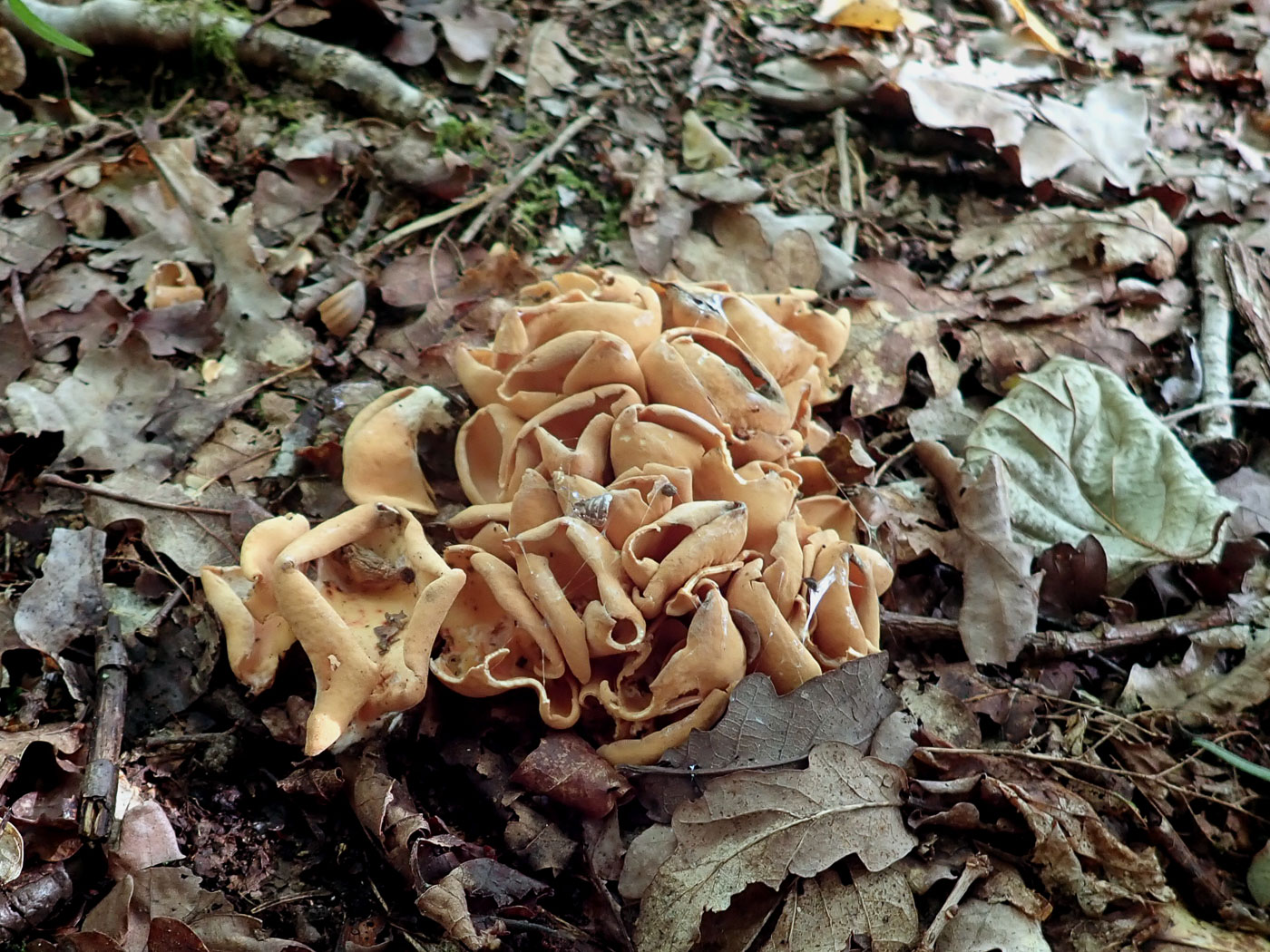 |
August 30th Otidea onotica (Hare's Ear) 
In a mixed woodland clearing in Bernwood Forest Penny and Paul spotted this tight cluster of cups amongst the litter though they were very dry and beginning to shrivel somewhat. Still visible, however, were their split sides indicating this genus rather than Peziza or some other genus of cups, and their pink tinge, even some pink spots inside (not visible here), and clustered habit pointed to this species. This was confirmed later with a scope: smooth ellipsoid spores having two droplets and hooked paraphyses (cells in between the spore-bearing sacs). See also in Finds 2020 September 6th and 2021 October 11th.
|
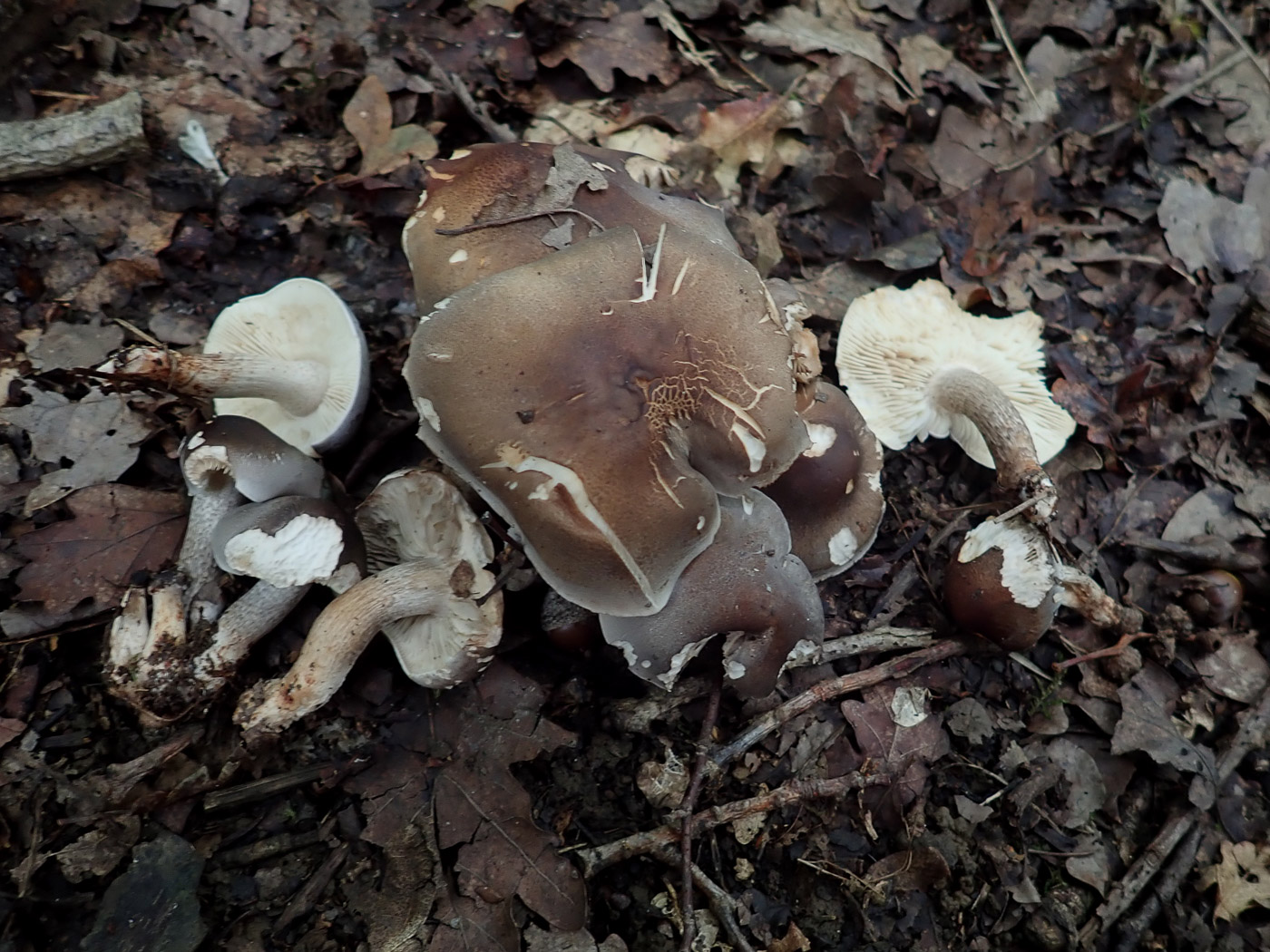
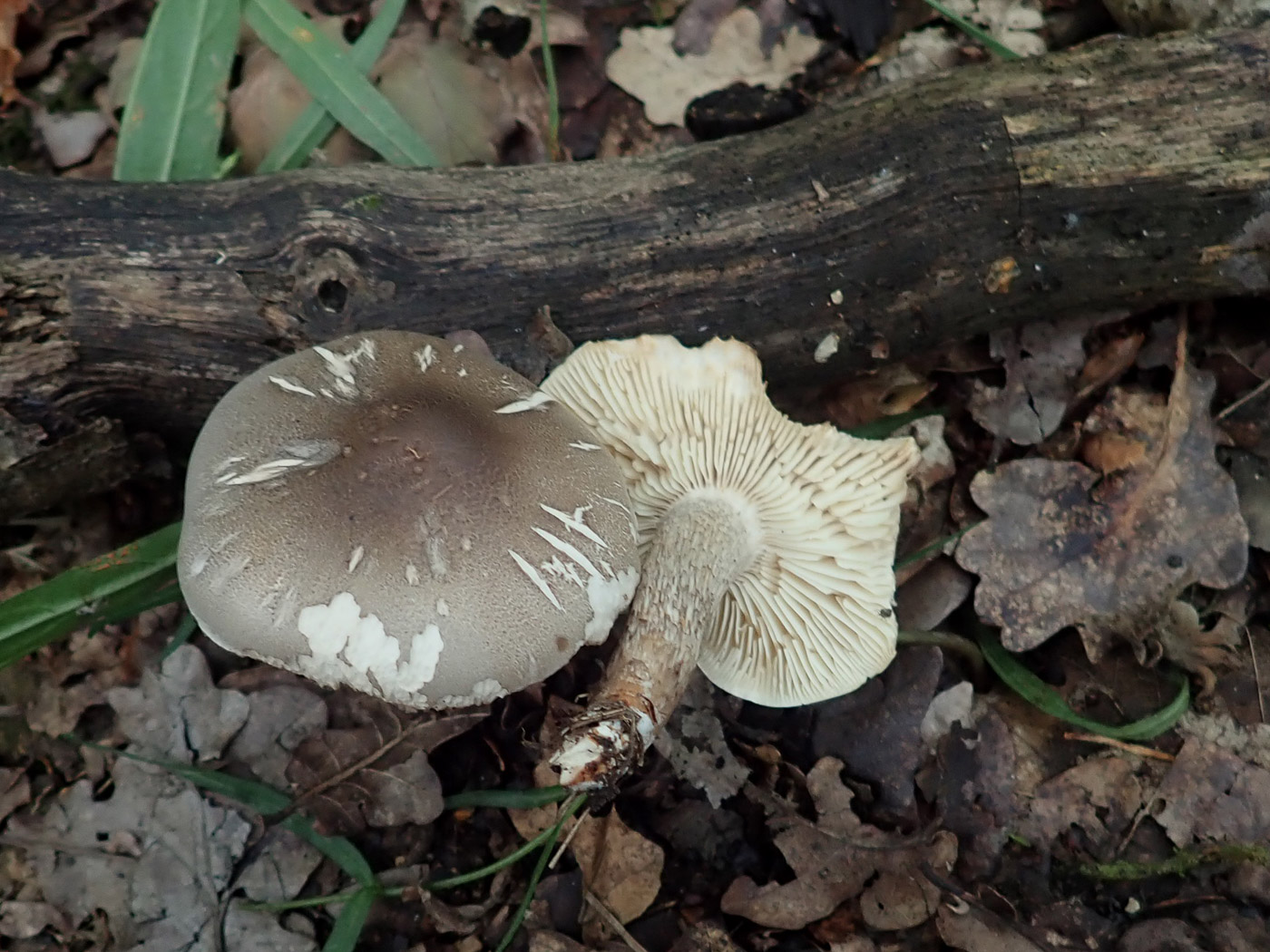
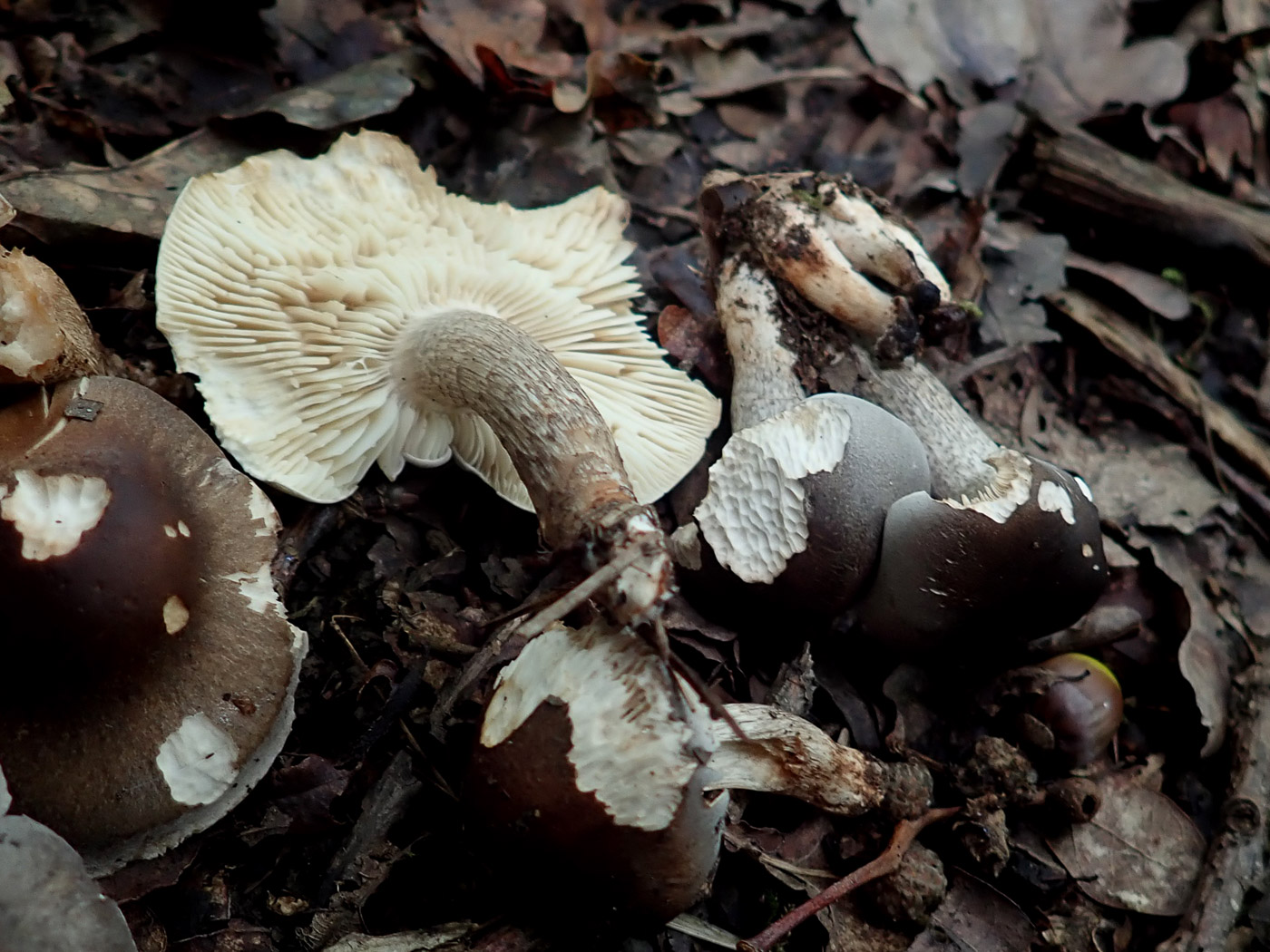 |
August 30th Tricholoma saponaceum (Soapy Knight)
Under Oak in Bernwood Forest Penny and Paul found a cluster of Knights which foxed Penny in the field, having dark brownish dry caps and stems with distinctive blackish squamules. It was not until flipping through images at home that she realised it was the very variable T. saponaceum, then confirmed by its unpleasant smell of unperfumed soap (which she'd not checked for in the field since the cap colour did not conform to her concept of the species). Usually having a cap some shade of grey though often with olive tinges in the outer half - which can be seen in photo 1 - this appears to be a species complex with several named varieties (one being var. squamosum) which in time may warrant raising to species level. Hence this collection will be sent for sequencing. See in Finds 2020 October 14 and 19th, also 2021 November 9th, for examples with very different caps from those shown here though several with stems having similar markings.
|
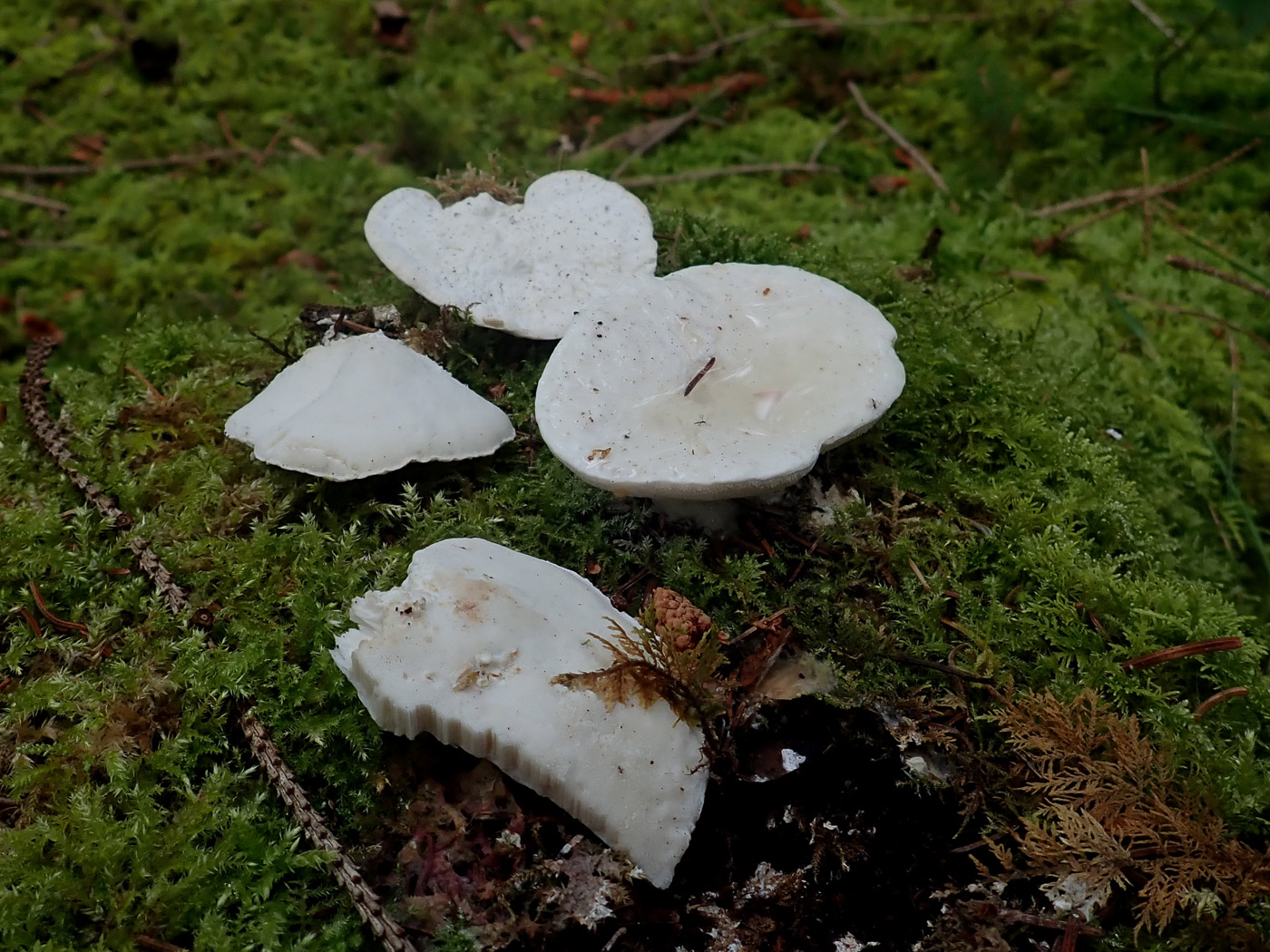 |
August 30th Postia stiptica (Bitter Bracket)
In Bernwood Forest Penny and Paul came across a mossy Spruce stump liberally dotted about with pure white half-moon brackets up to about 5cm across with tiny pores beneath. Penny took a small bite to confirm the bitter taste before naming it in the field. The species is one of several white brackets this shape and size but is by far the commonest, occur only on conifer wood. See also in Finds 2020 September 4th.
|
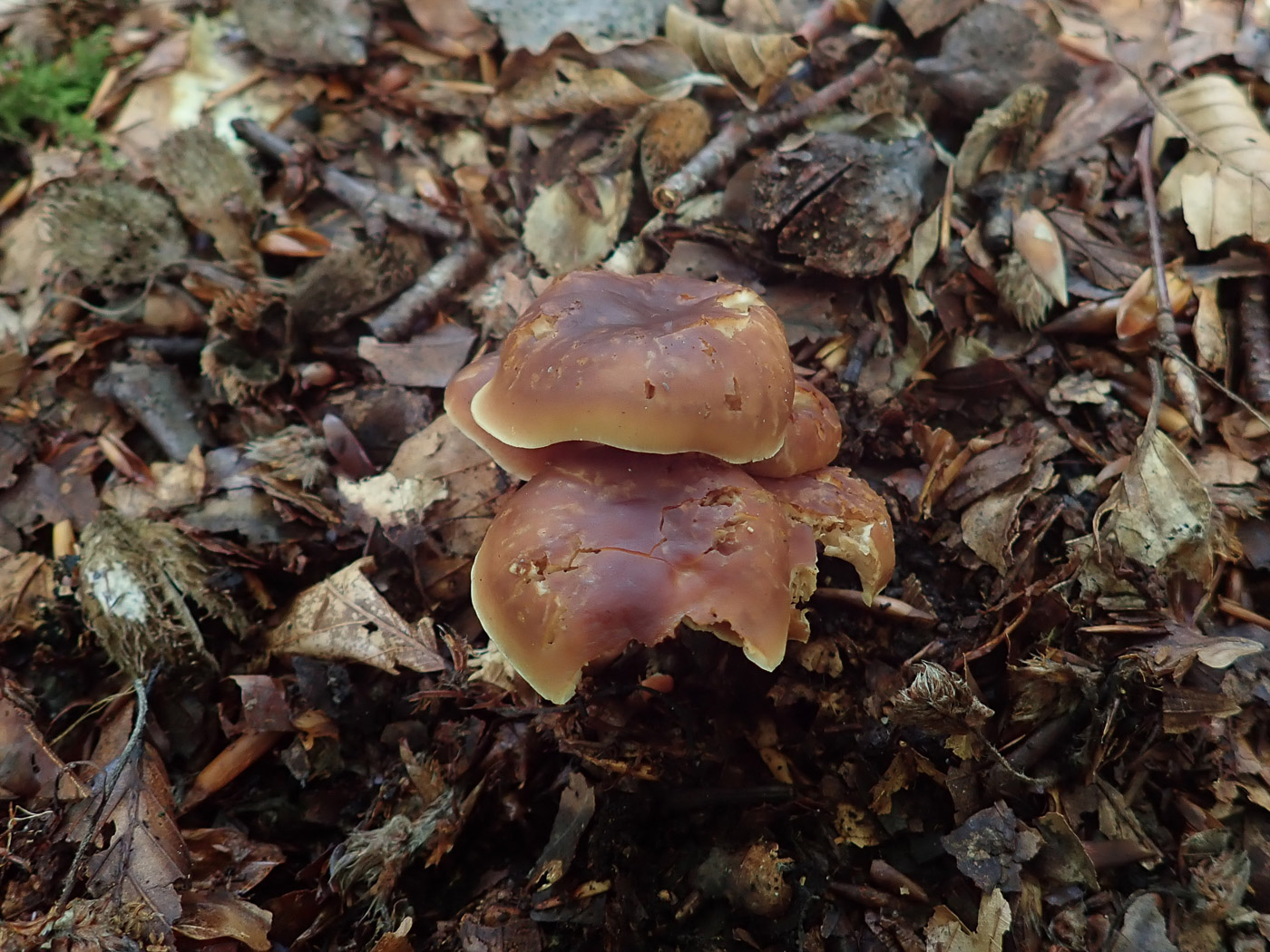
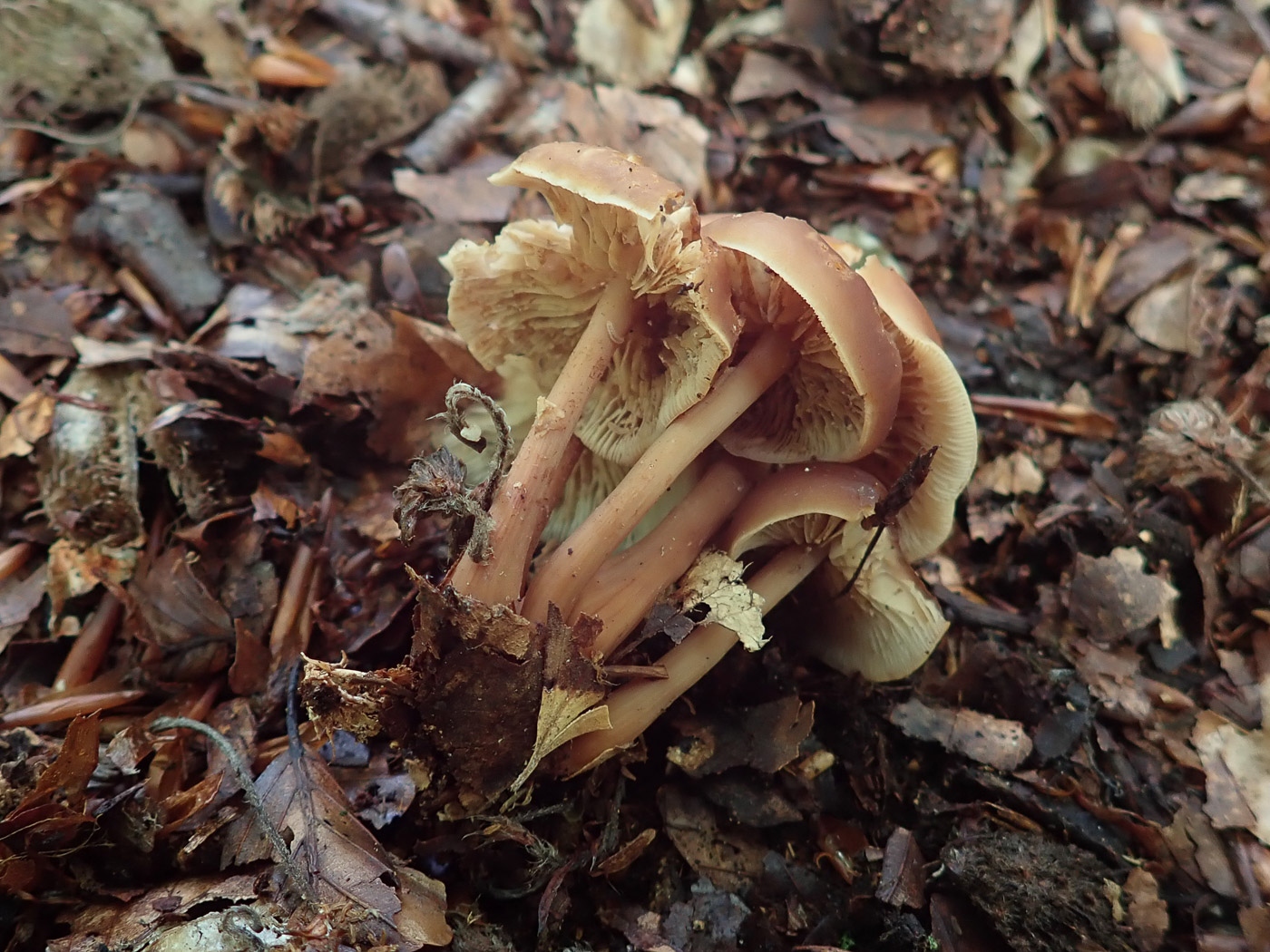 |
August 27th Gymnopus ocior (Spring Toughshank) 
In Beech litter at Park Wood Ibstone Penny spotted just this one cluster and thought it looked different from the much more common though similar G. dryophilus (Russet Toughshank). The colour was darker and more intense with a pale rim around the edge and a sunken centre - all pointers to this species rather than G. dryophilus though microscopic features are extremely similar so did not help a great deal. When the gills are distinctly yellow as can happen in this species one can be sure, but this is not a constant feature. See the Masterlist for further collections.
|
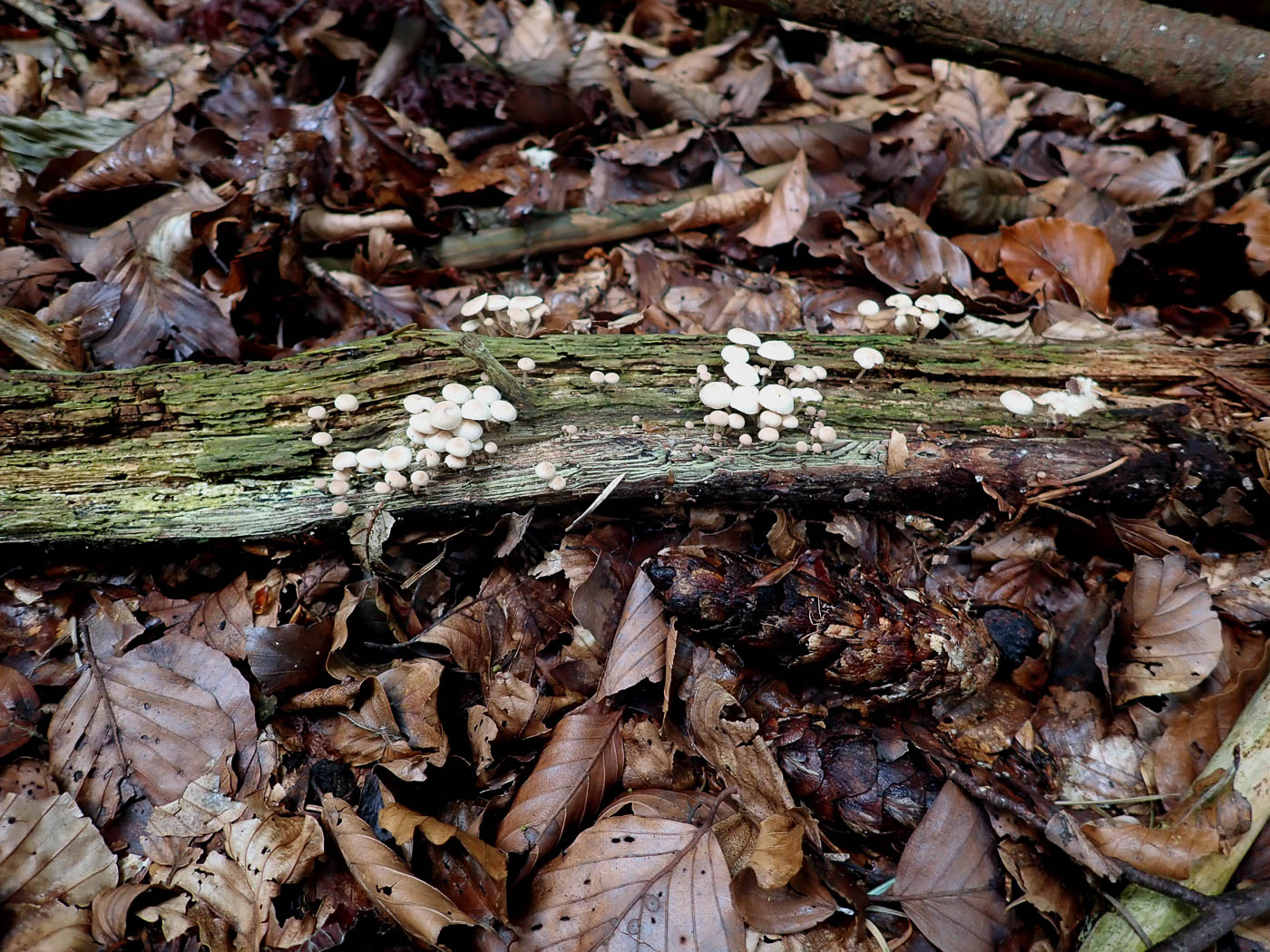
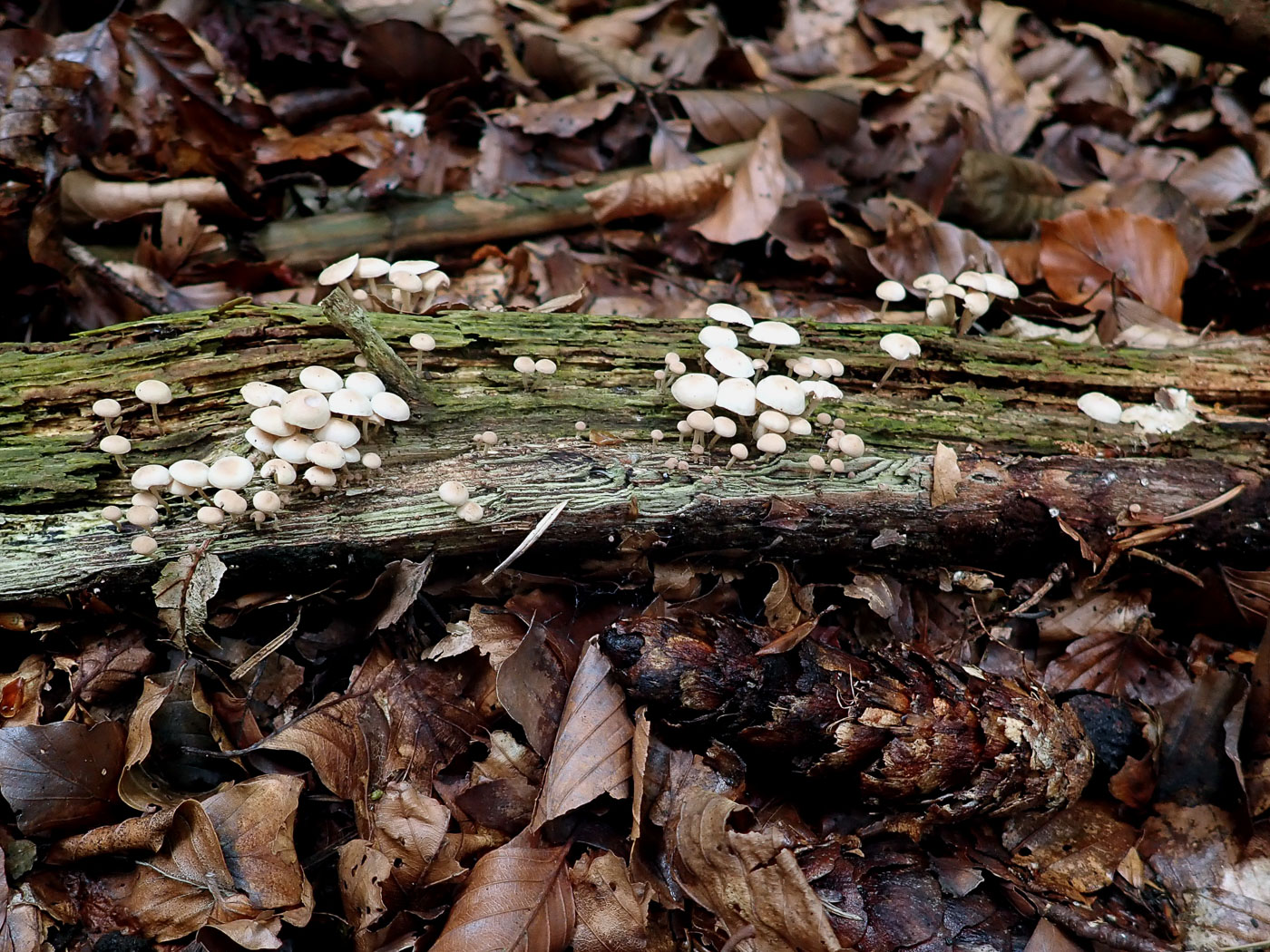
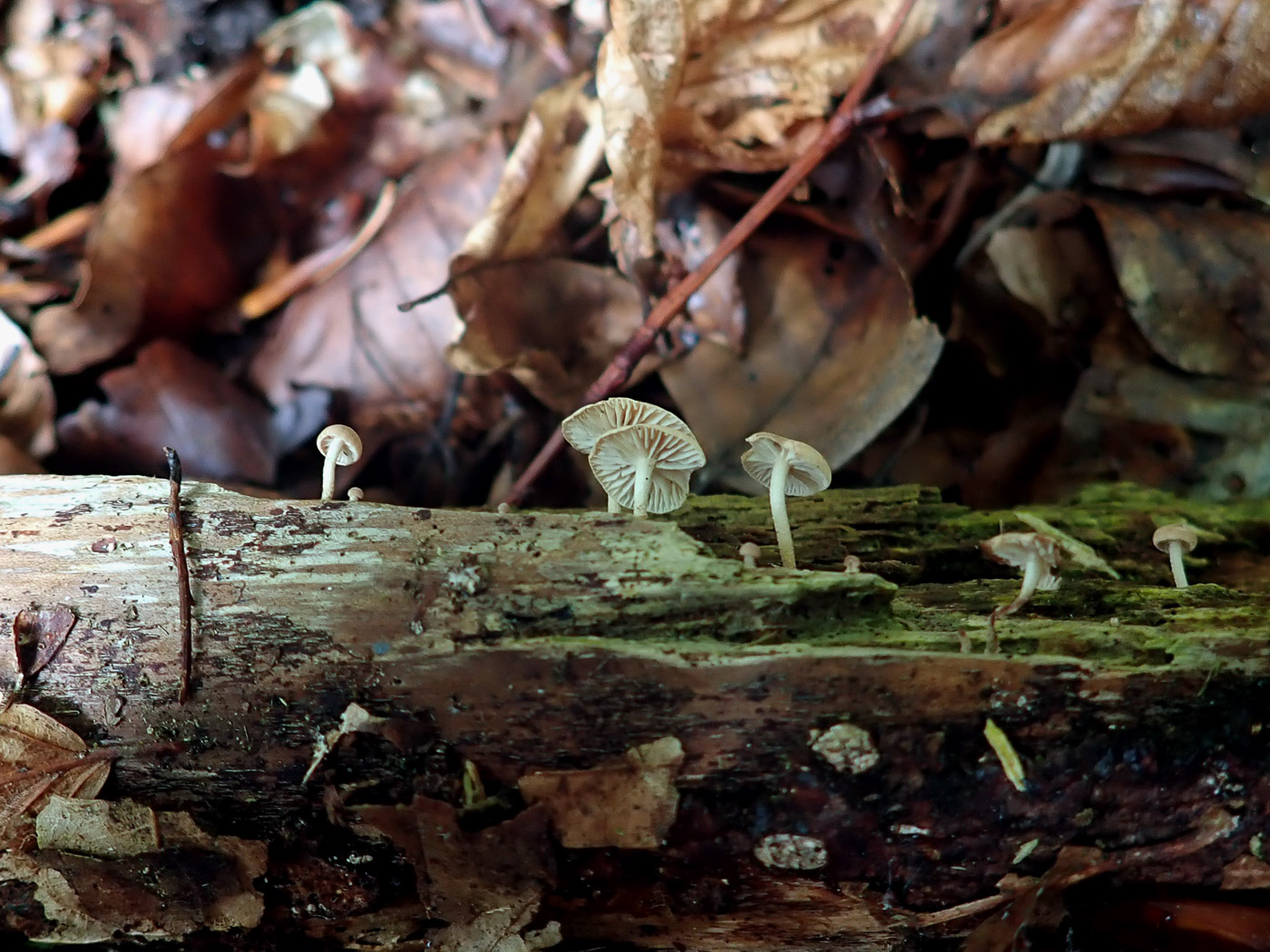 |
August 27th Marasmiellus ramealis (Twig Parachute) 
On a thin bare fallen conifer branch in Park Wood Ibstone Penny found a colony of these tiny mushrooms, with caps up to about 7mm across. The species is regularly in clusters like this on old Bramble stems and thin twigs of all sorts, so the branch here (only 4 cm thick) was on the large size hence the check with a scope at home later. The similar Marasmius rotula also was about in the litter, a little bigger and white rather than cream as here, but could be eliminated by the lack of a collar where the gills attach to the stem (see photo 3). Both species are common. See the Masterlist for further images.
|
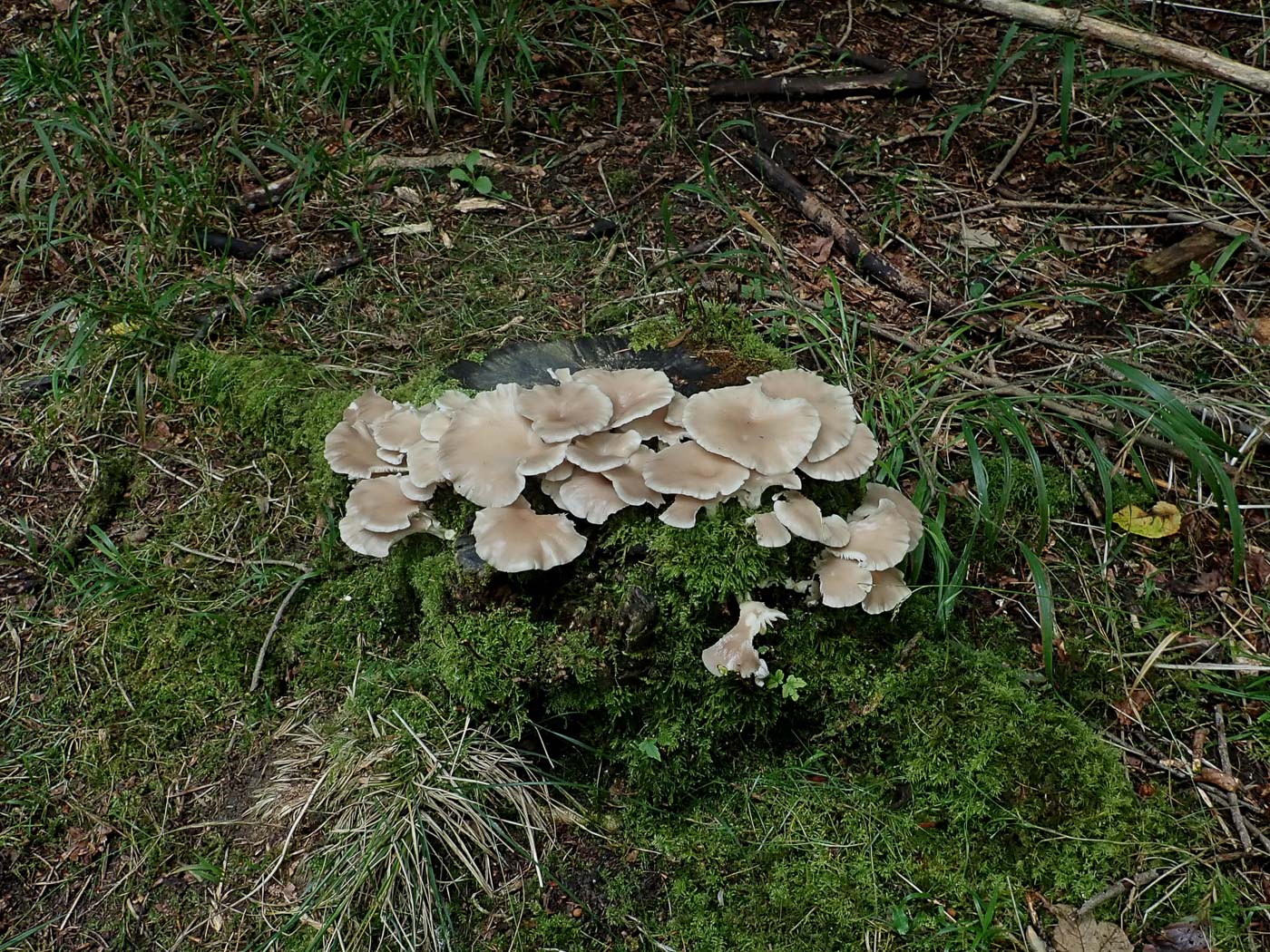
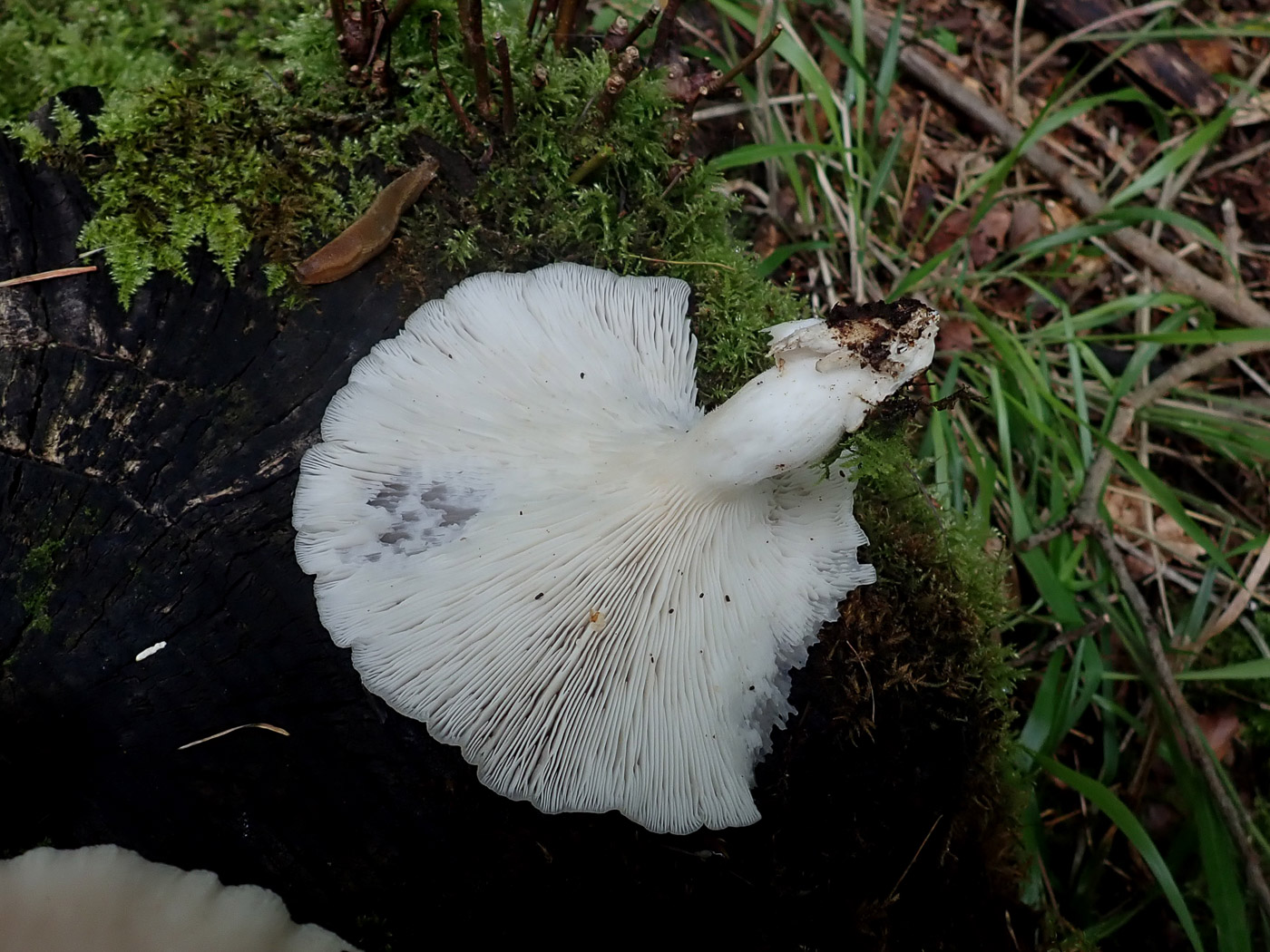 |
August 27th Pleurotus ostreatus (Oyster Mushroom)
Penny found this attractive troop of mushrooms on a mossy indeterminate stump in Park Wood Ibstone and tried hard (but eventually failed) to make it P. pulmonarius rather than the much more common P. ostreatus! The former tends to fruit earlier in the year and is generally flatter and paler than the latter (which varies considerably, however, from deep grey to pale buff or cream) and favours stumps rather than fallen wood: looking good so far! However, it has a sweetish smell of aniseed and a pale yellowish cream sporeprint, and by the next morning no smell had developed and sadly the thick spore deposit when scraped together had a distinct lilac tint - a sure sign of P. pleurotus. Case closed! There's a wide choice of further images in Finds found via the Masterlist.
|
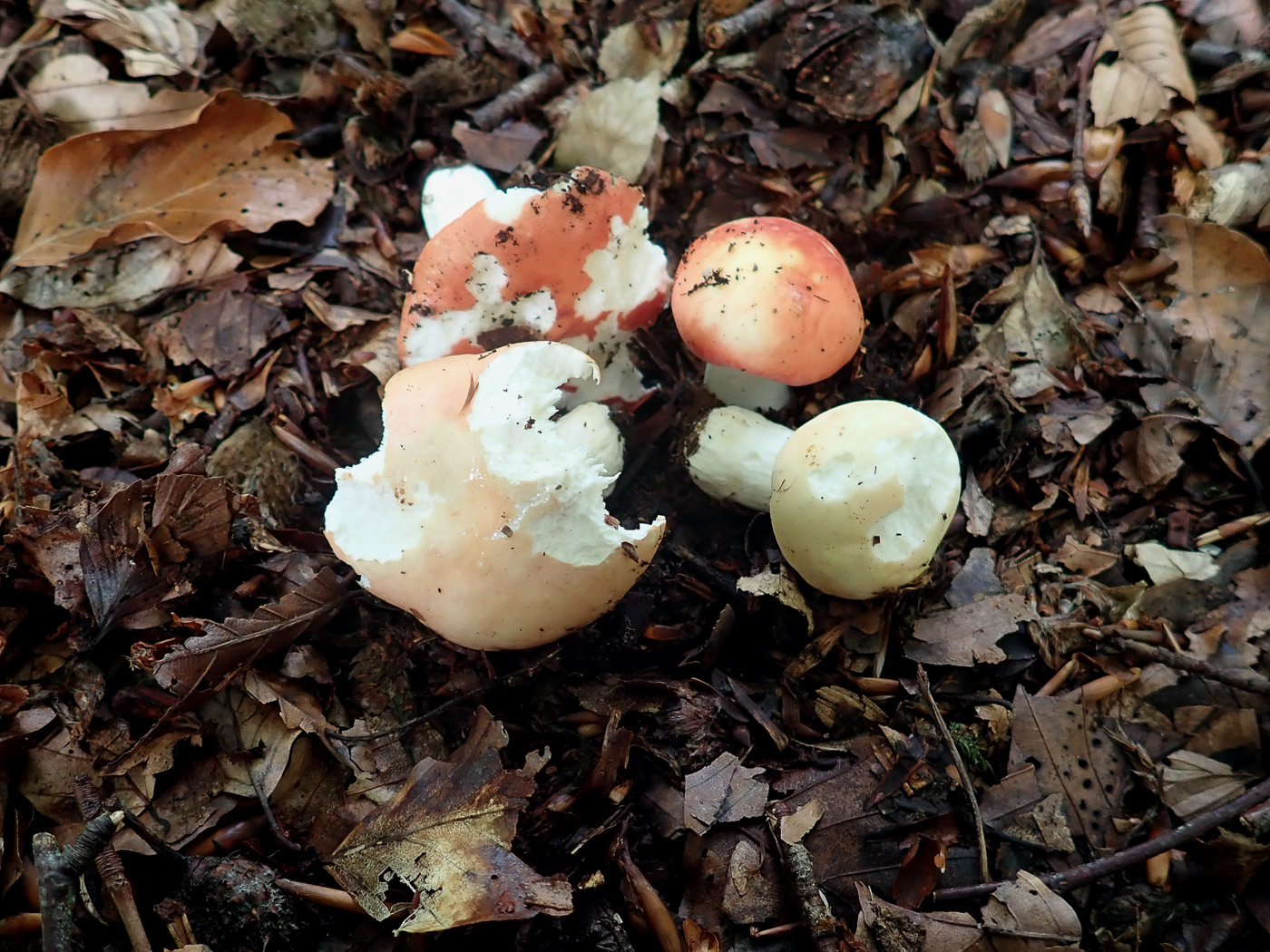
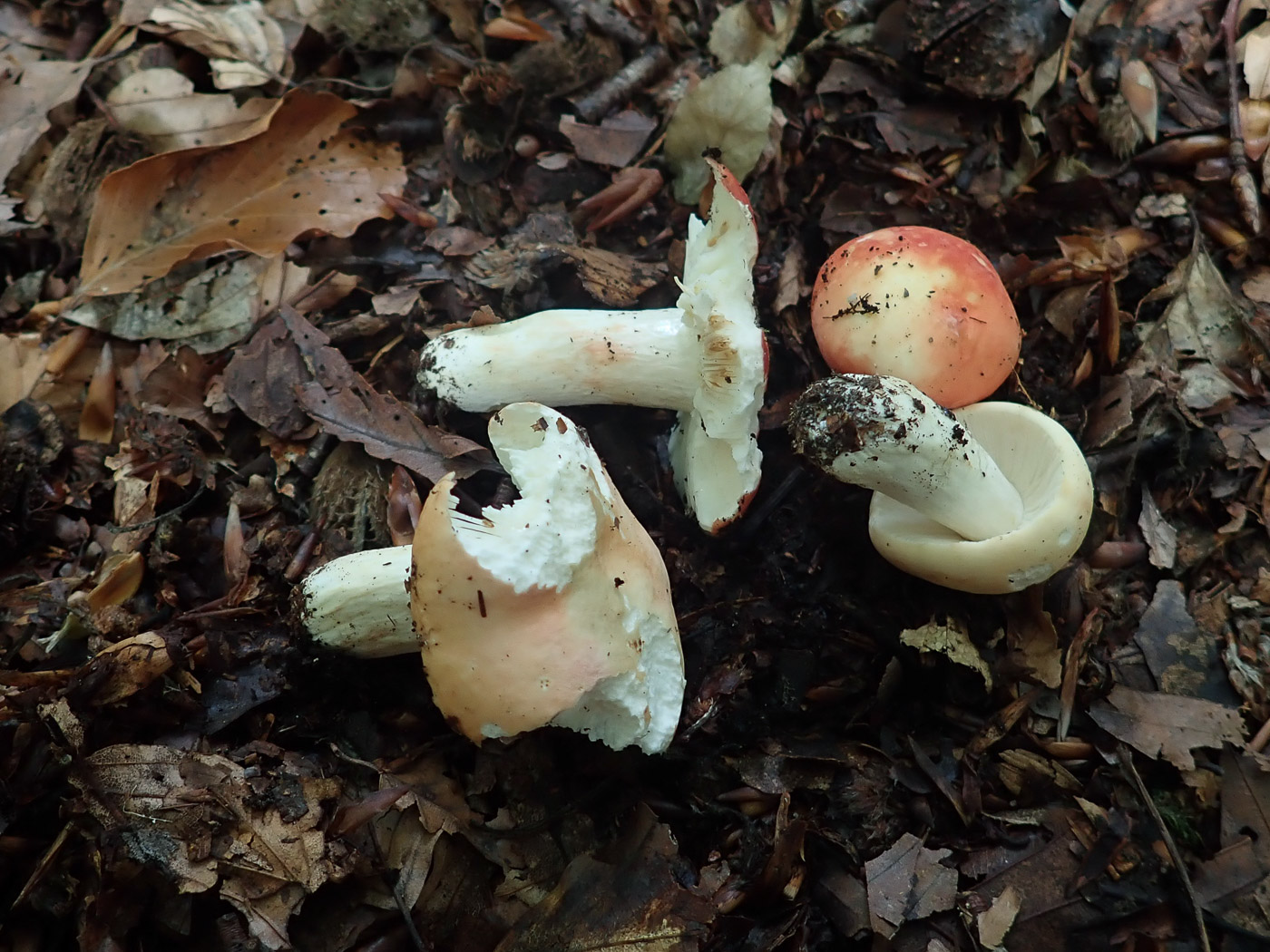 |
August 27th Russula rosea (Rosy Brittlegill)
Under Beech in Park Wood Ibstone Penny eventually found four examples of this quite common Brittlegill to assemble for a photo. This is one of many red-capped Brittlegills but its colour can vary considerably and somewhat confusingly from bright red through pink to entirely cream! It does have one redeeming feature which separates it from other lookalikes: it has a notably hard cap and stem - really solid, also the cap cuticle is adnate, ie it hardly peels at all unlike other red-capped species which will peel at least a quarter of the way in from the margin. It can also have red on the stem unlike others but this is an inconsistent feature. There is, however, a slight patch of red to be seen on the top left stem in photo 2. See also in Finds 2020 September 1st.
|
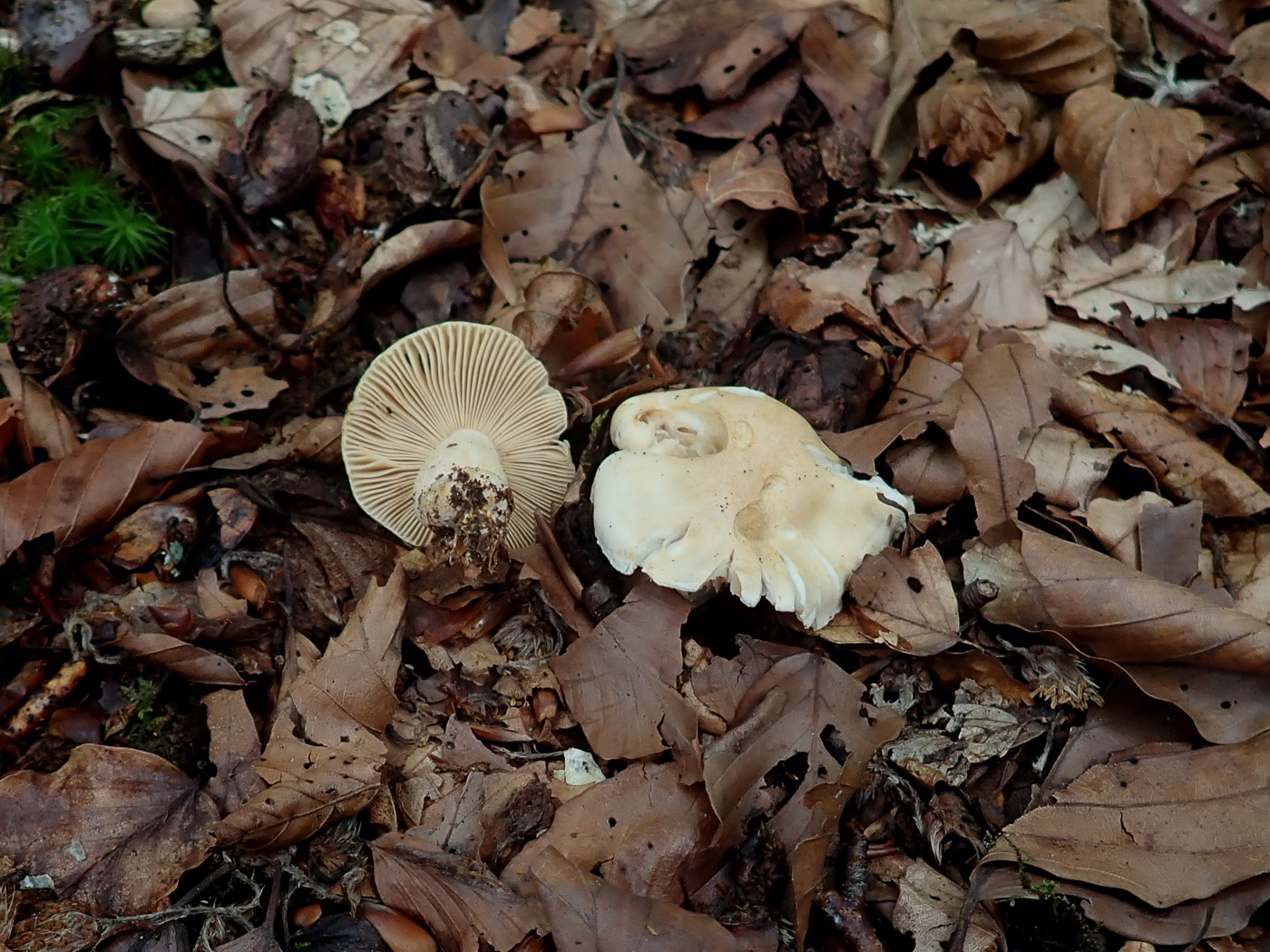 |
August 27th Russula fellea (Geranium Brittlegill)
In Park Wood Ibstone Penny found just two small examples of this quite common Beech associating Brittlegill - the first time she's seen it this summer. One of the yellow-capped Brittlegills, it is regularly overlooked as R. ochroleuca but it should be quite easy to differentiate between the two species. Its softer more subtle honey colour is consistent over cap, gills and stem in contrast to the ochre yellow cap of the other species which also has contrasting white gills and stem. Furthermore, to clinch it put R. fellea in an enclosed pot for a few minutes to let its distinctive fruity smell develop: described as of Geranium but to Penny clearly of stewed apple! Compare today's photo with that of R. ochroleuca taken a few days ago (August 21st), also see in Finds 2020 September 30th.
|
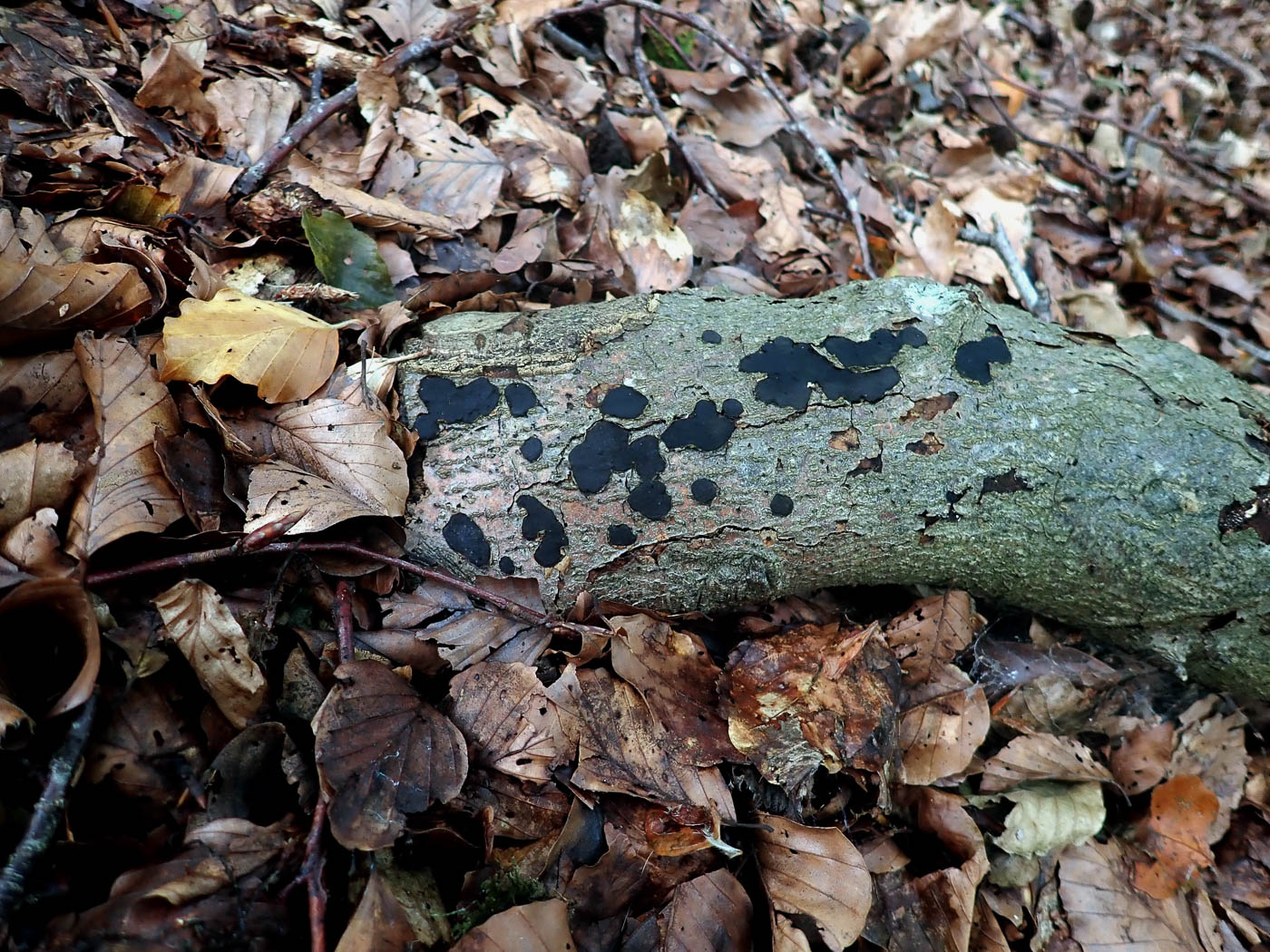
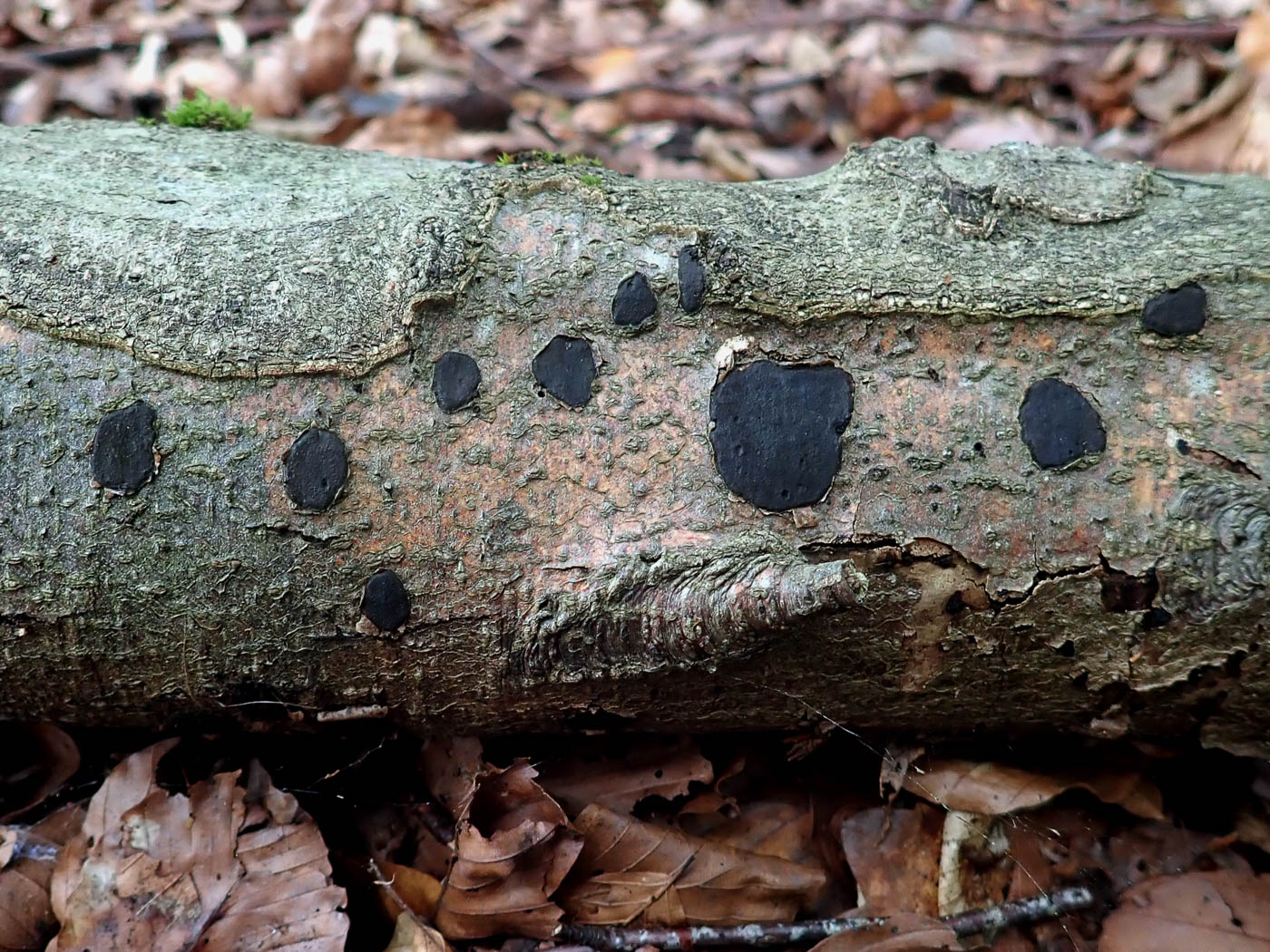
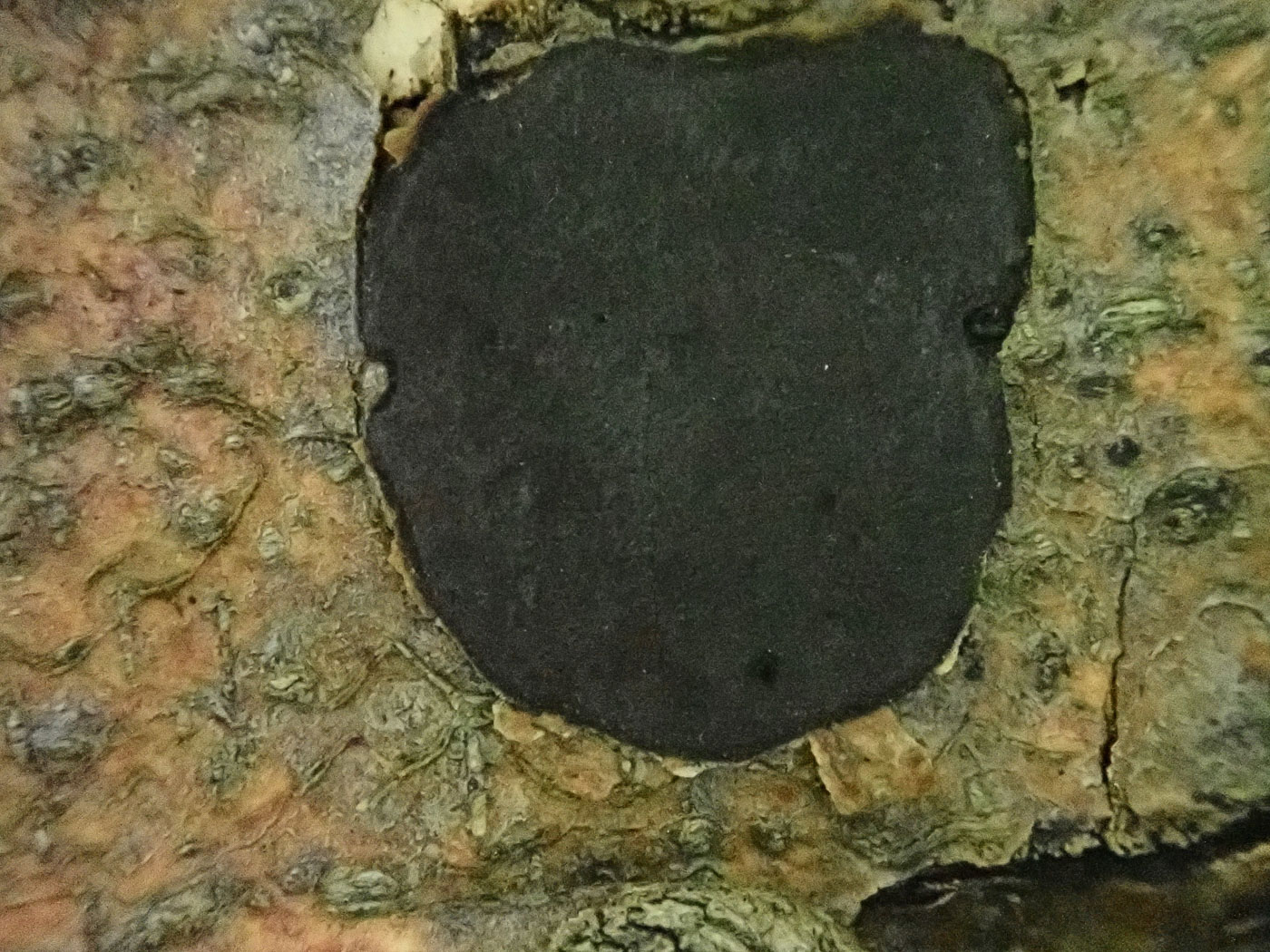 |
August 27th Biscogniauxia nummularia (Beech Tarcrust)
In Park Wood Ibstone Penny thought she'd add an example of this very common species to our Finds collection of images. The species - a Pyrenomycete Ascomycete - is often present on fallen Beech bark though not always recognised. Its black irregularly lozenge-shaped flat blotches are distinctive, however, and can occasionally join up to form bigger patches. See also in Finds 2020 December 7th.
|
 |
August 23rd Cortinarius subpurpurascens (a rare Webcap with no common name) 
In Mousells Wood under Beech Geoffrey Kibby found this pair - the first example of Section Phlegmacium (having a sticky cap but dry stem) to have appeared locally this year though this is proving to be an excellent area for them and especially this site. Noting the buff cap colour but striking violaceus gills he thought instantly of C. collocandoides - by far our commonest species with these characters, but then noted when he scratched the stem that the flesh beneath hardly showed this violet colour and certainly not as much as would be the case in that particular species. Last year on our Walk here we found this same species which, when subsequently sequenced, proved to be C. subpurpurascens - doubtfully British until this collection. Not only is the flesh much less violaceus in this species than in either C. collocandoides or C. purpurascens, but the spores differ in size. Hence Penny's check with the scope at home today, also the collection will be dried for sequencing, making this hopefully the second confirmed British collection. (The photo is Penny's.) See last year's collection in Penny's Mousells Wood report (2022 October 8th) where both this species and the more purple C. collocandoides are compared - though the text is in need of updating!
|
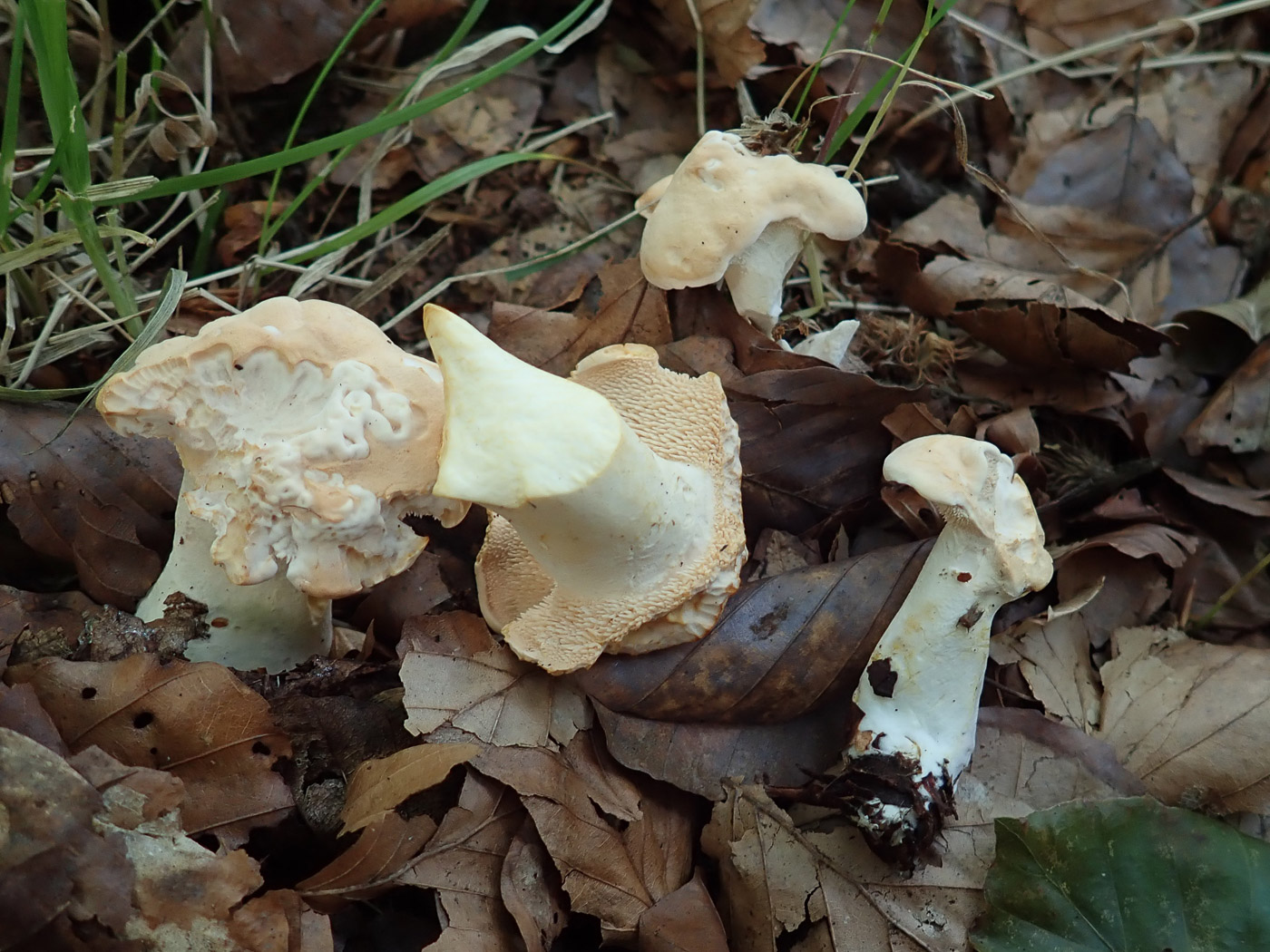 |
August 23rd Hydnum repandum (Wood Hedgehog) 
In Mousells Wood under Beech Penny and Geoffrey Kibby found two different species of Hedgehog (see also the entry below) and knowing of the fairly recent additions to the species within this genus it was necessary to check the spores to confirm which we'd found. Gone are the days when pale Hedgehog species can be named H. repandum and darker more orange collections H. rufescens - the sequencing era frequently makes our life more complicated rather than easier! In both collections today, however, the spores matched the two common and familiar species. See other Finds Images in 2020 September 6th and October 12th. (The photo is Penny's.)
|
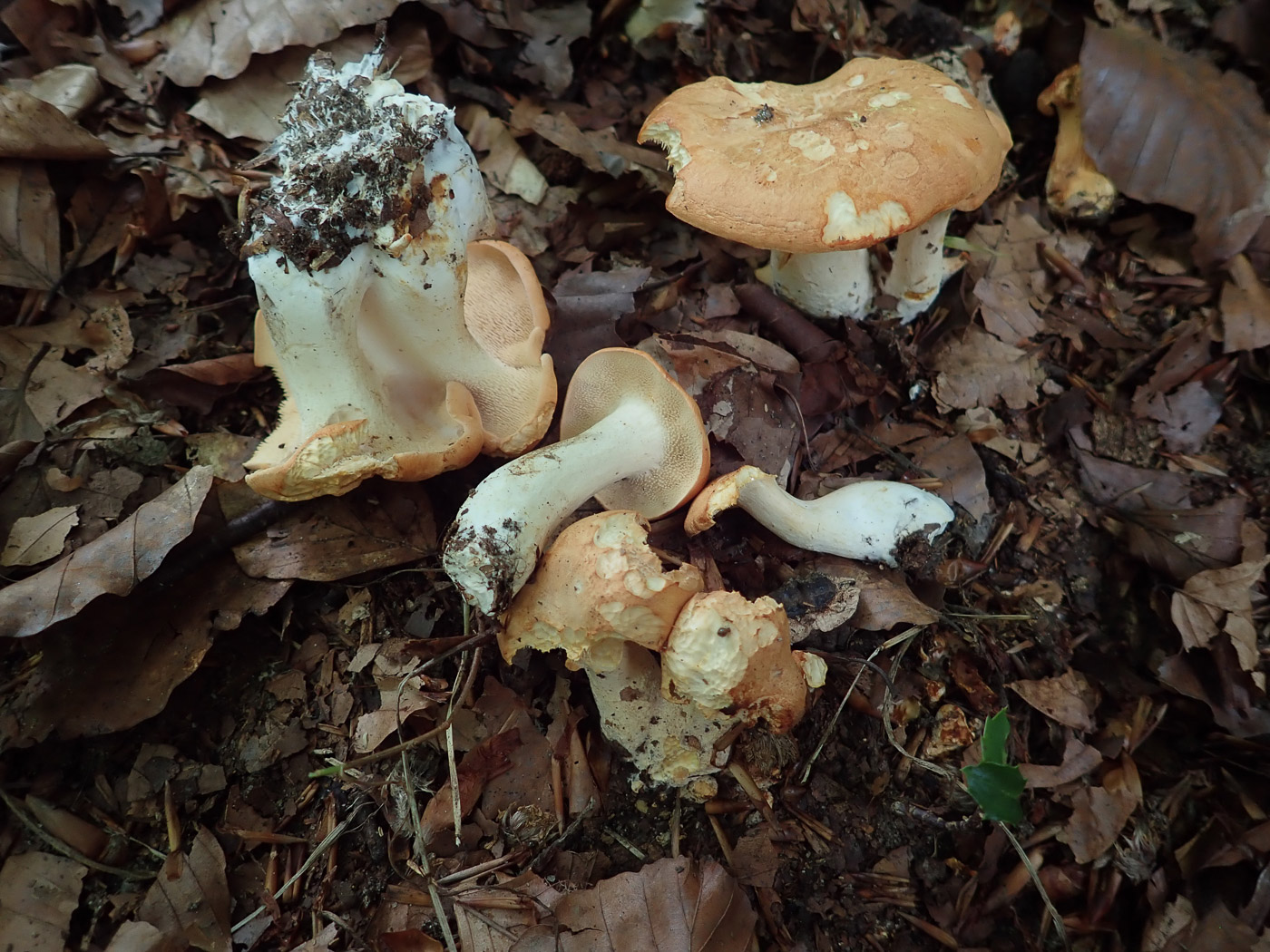
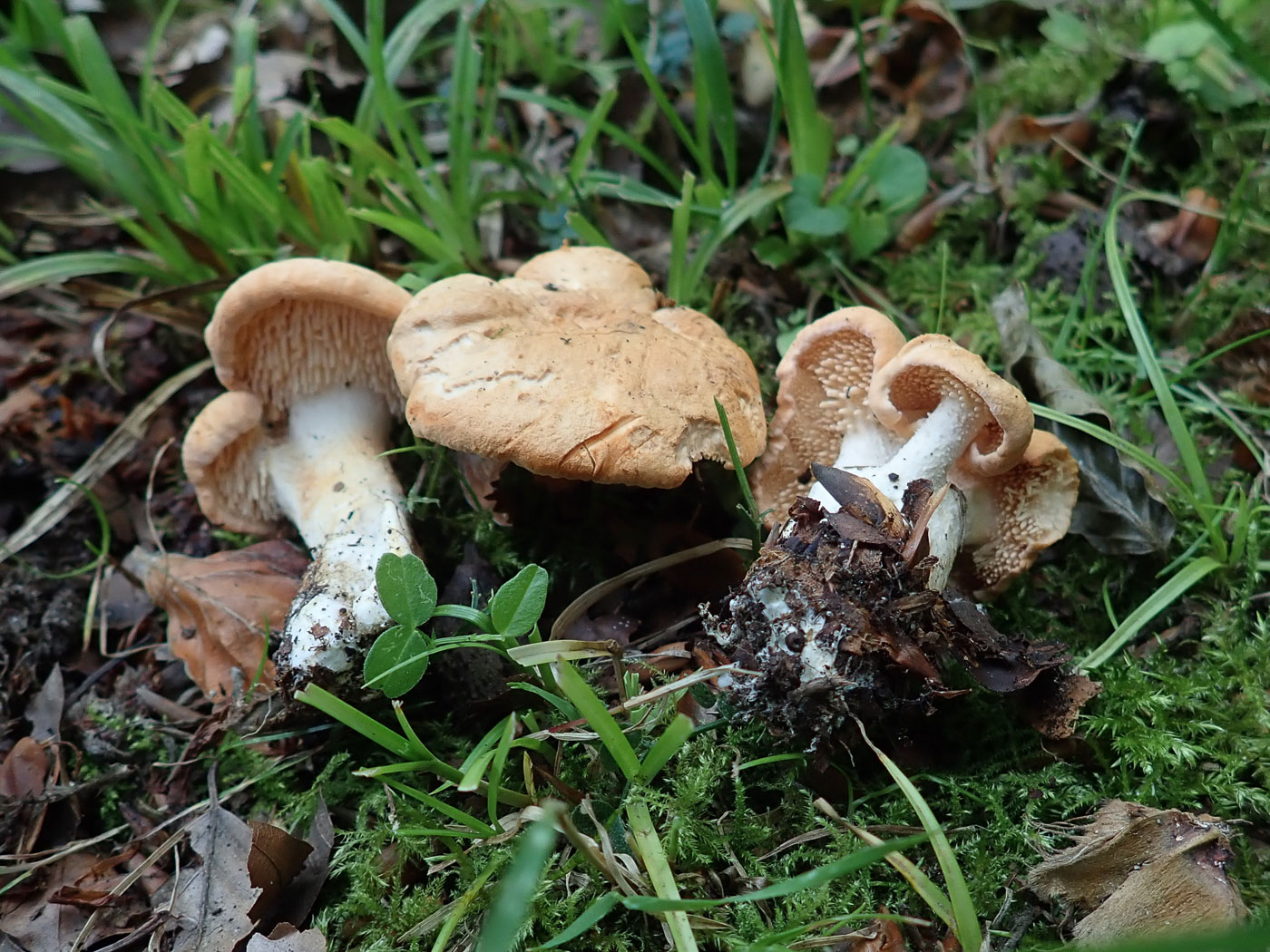 |
August 23rd Hydnum rufescens (Terracotta Hedgehog) 
This was the second Hedgehog collection made by Penny and Geoffrey Kibby at Mousells Wood, and though less common than the paler H. repandum, this was fruiting much more prolifically here today. (See the entry above for further comments.) It always brings a smile when you turn over the first one of these mushrooms and find not gills or pores but tiny sharp spines underneath, giving away the genus instantly. See a further image in Finds 2020 September 27th.
|
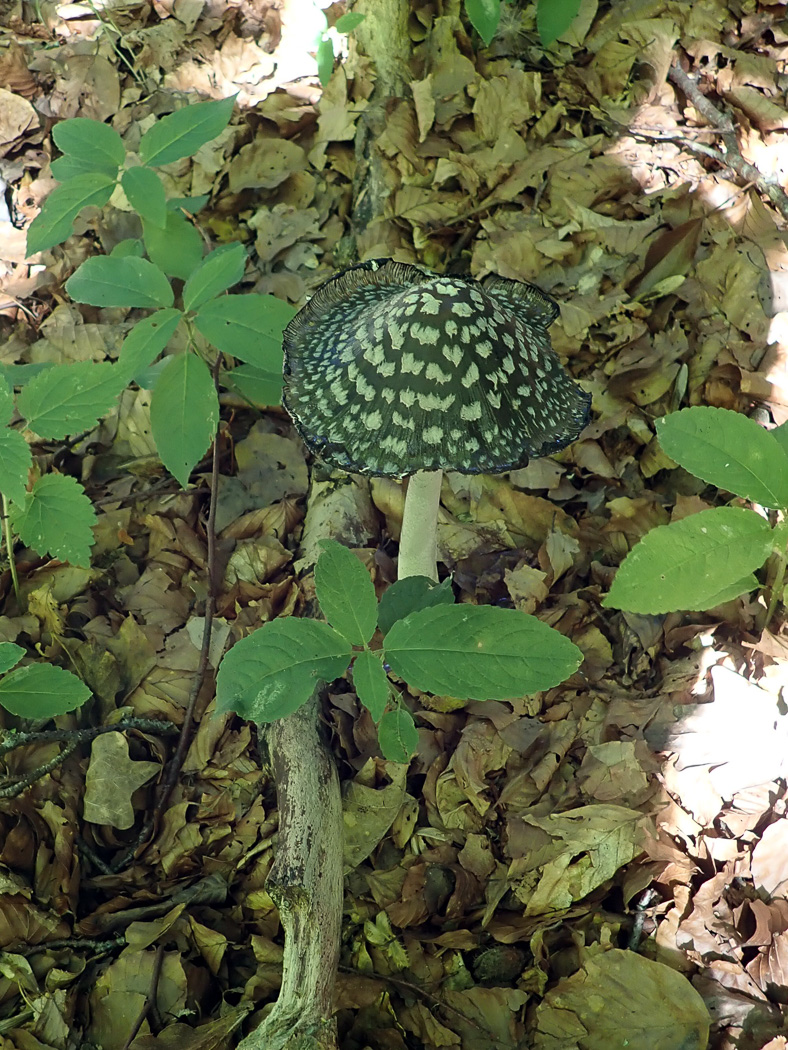 |
August 23rd Coprinopsis picaceus (Magpie Inkcap)
In Mousells Wood Geoffrey Kibby spotted this beauty standing proud of the Beech litter though the dappled sunlight was not conducive to the best photo here (Penny's). This was the first time they'd seen it fruiting this year. See the Masterlist for a choice of other entries.
|
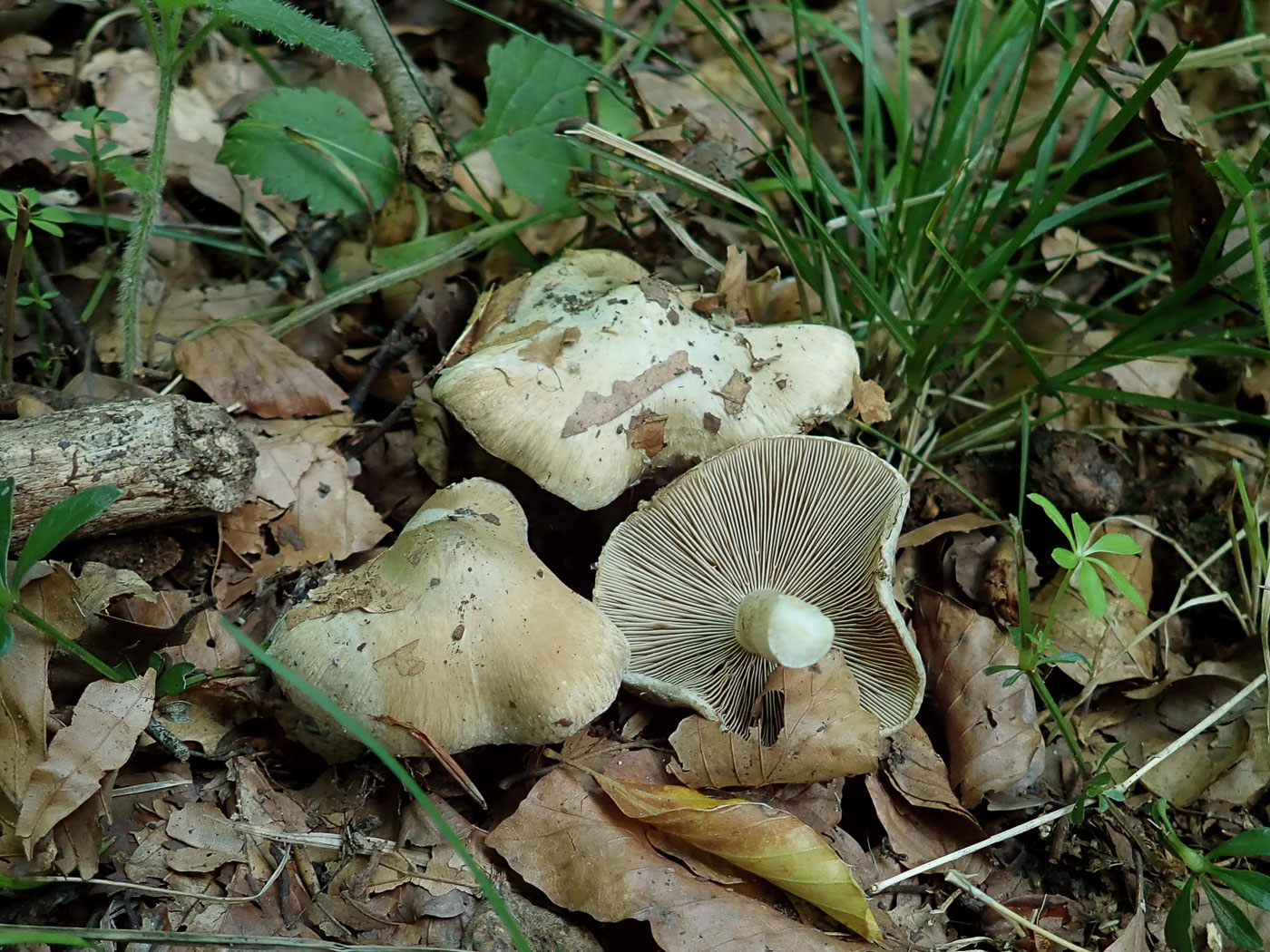 |
August 23rd Inocybe corydalina (Greenflush Fibrecap) 
Under Beech in soil at a pathside in Mousells Wood Penny Geoffrey Kibby spied these quite unusual Fibrecaps which Penny recognised from their conical shape, greenish flush over the cap centre and - once collected - the pervasive smell of pear drops. One of several somewhat similar Fibrecaps having this distinctive smell (see also I. fraudans - the last entry for August 16th) it can also have green tints at the stem base - a sign of the presence of Psilocibin - though not seen in today's collection. This is a new entry for Finds. (The photo is Penny's.)
|
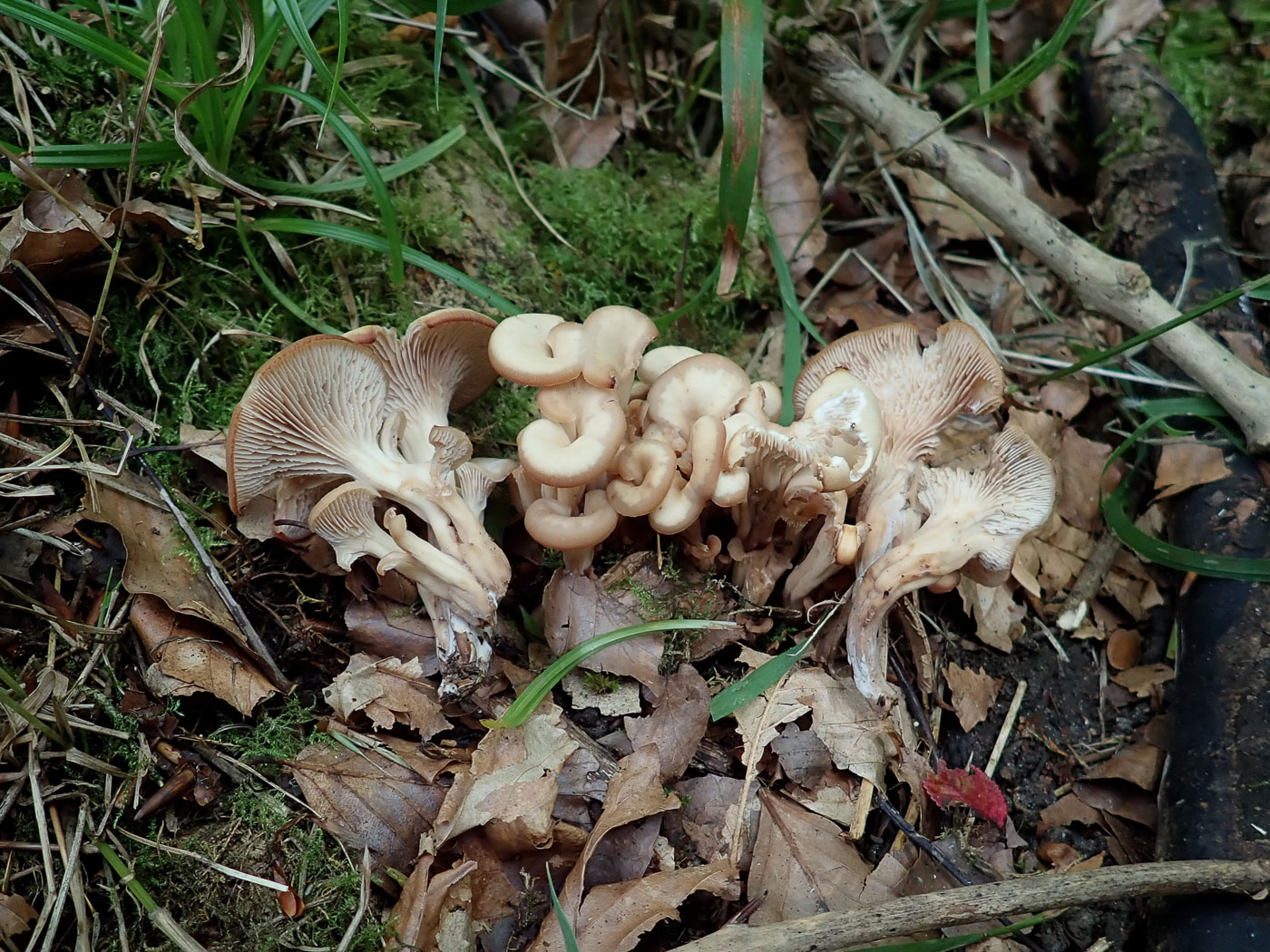 |
August 23rd Lentinellus cochleatus (Aniseed Cockleshell)
On a couple of mossy exposed old roots of Beech at Mousells Wood Geoffrey Kibby noticed this quite unusual species showing nicely. Its shape told him instantly what it was - tightly curled when young then funnel shaped, this then confirmed by the sharp edged and markedly serrate gill edge (seen on the left). Sometimes the species has a strong aniseed smell but more often than not no smell at all as here. This is new to the site and to Finds though we have just nine other county sites where it's been found. (The photo is Penny's.)
|
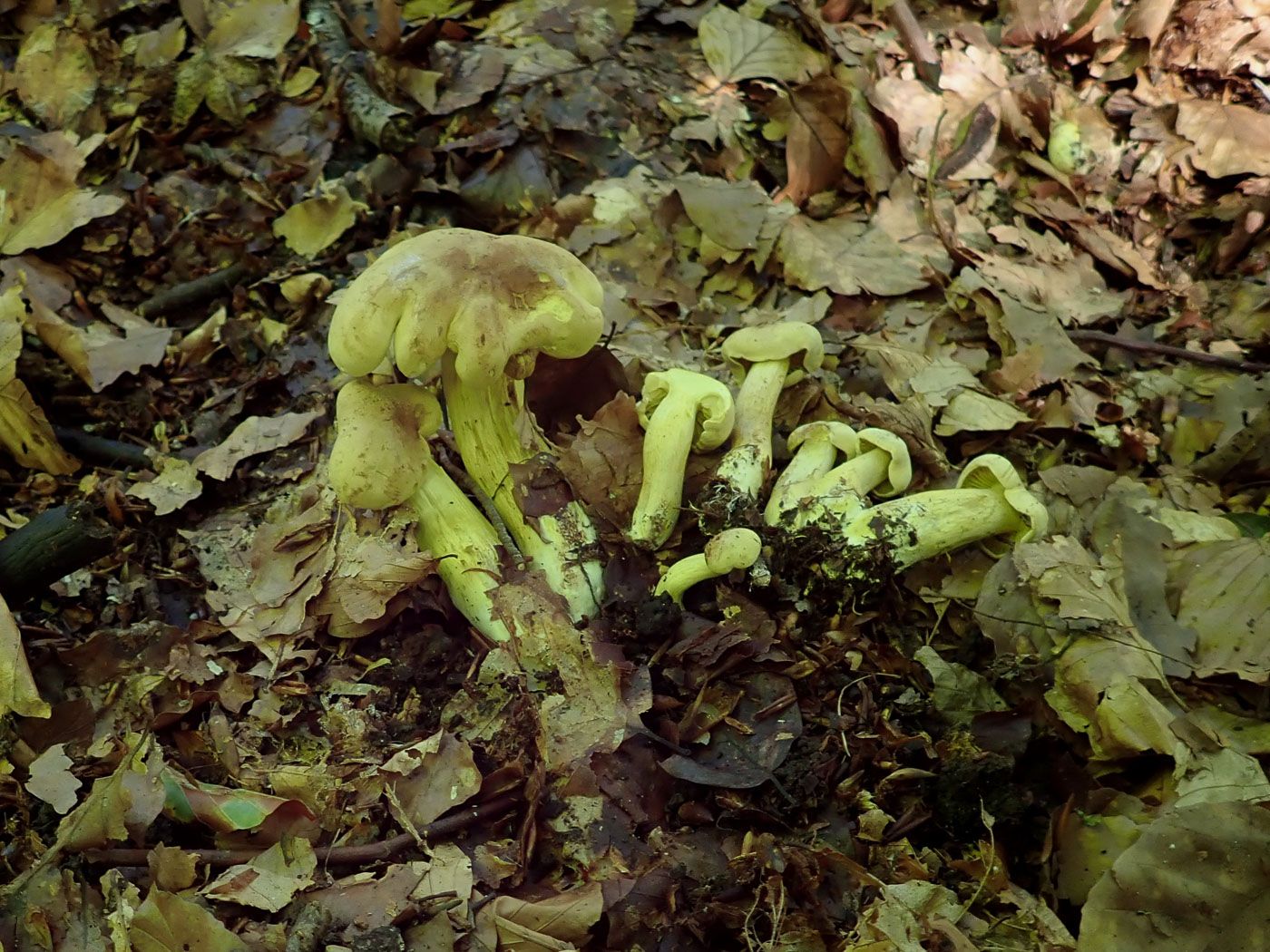 |
August 23rd Tricholoma sulphureum (Sulphur Knight)
At Mousells Wood under Beech Penny found just one little group of this common knight pushing up through the litter. The dry pruinose yellow cap can vary in colour with shades of green and/or brown and is often much brighter yellow than here, but one sniff of the strong coal gas tar smell is enough to confirm its ID. Most often under Beech it is not unusual under Oak and on occasion other trees including Pine. See the Masterlist for a choice of other images.
|
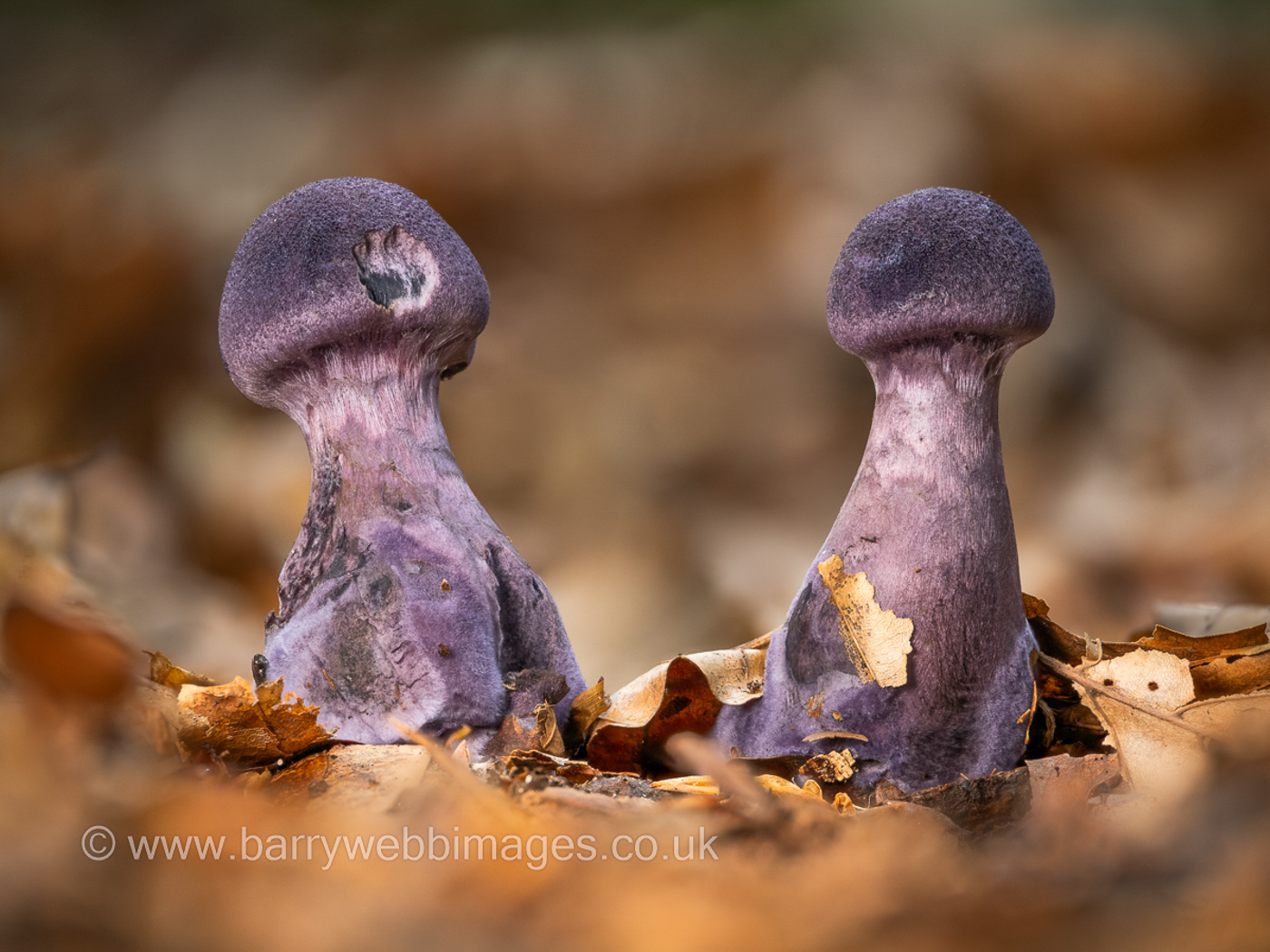
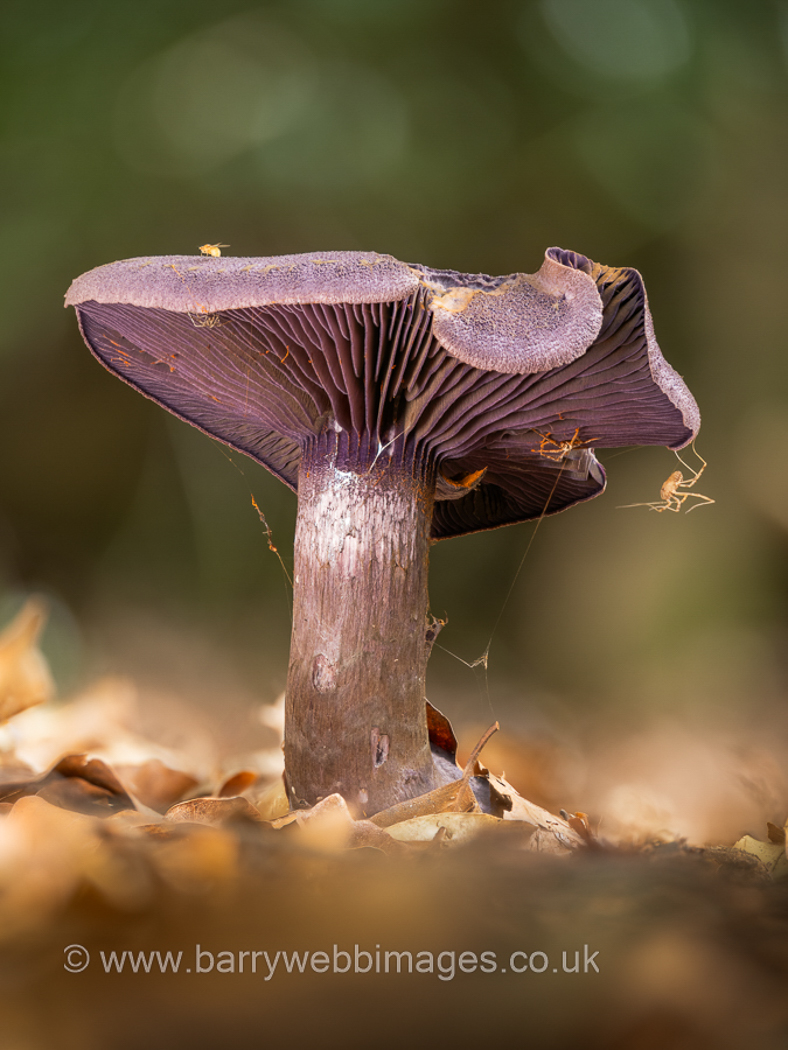 |
August 21st Cortinarius violaceus (Violet Webcap)
At Burnham Beeches Berry Webb found this beautiful Webcap which Penny has (hopefully correctly) named from his two photos. You might think this is a somewhat risky procedure with such an enormous genus, many members of which have purple colours! However, the dry tomentose cap surface when this colour is unique and very clear in both photos, also visible are the swollen base and concolorous stem and gills, furthermore she knows the species from two previous collections found at Hodgemoor (see in Finds 2020 October 22nd for one of these). The species is not at all common but can occur under various deciduous trees.
|
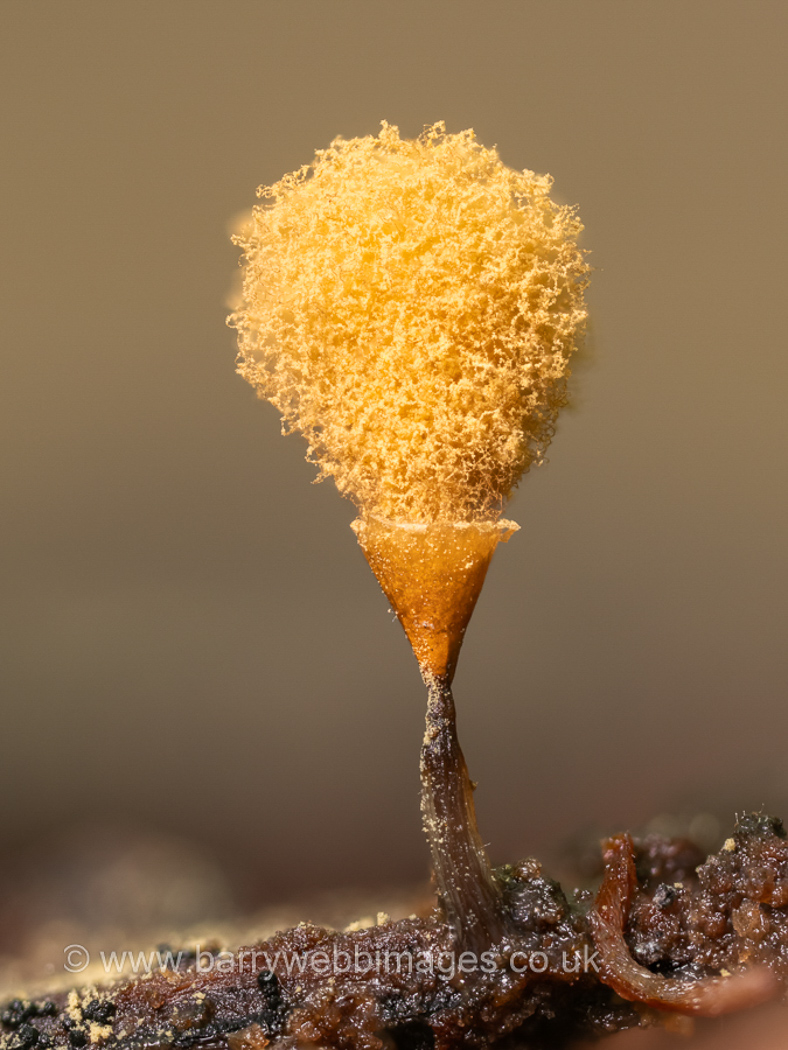 |
August 21st Hemitrichia calyculata (a Slime Mould with no common name)
At Burnham Beeches Barry Webb found this quite unusual Myxomycete - one for which we have just his three previous records in the last few years, two of which are from this site. The distinctive conical 'cup' with frilly edge which forms underneath the now mature fertile part is typical of this particular species, making it recognisable on sight. See also in Finds 2021 March 1st and 2022 March 23rd.
|
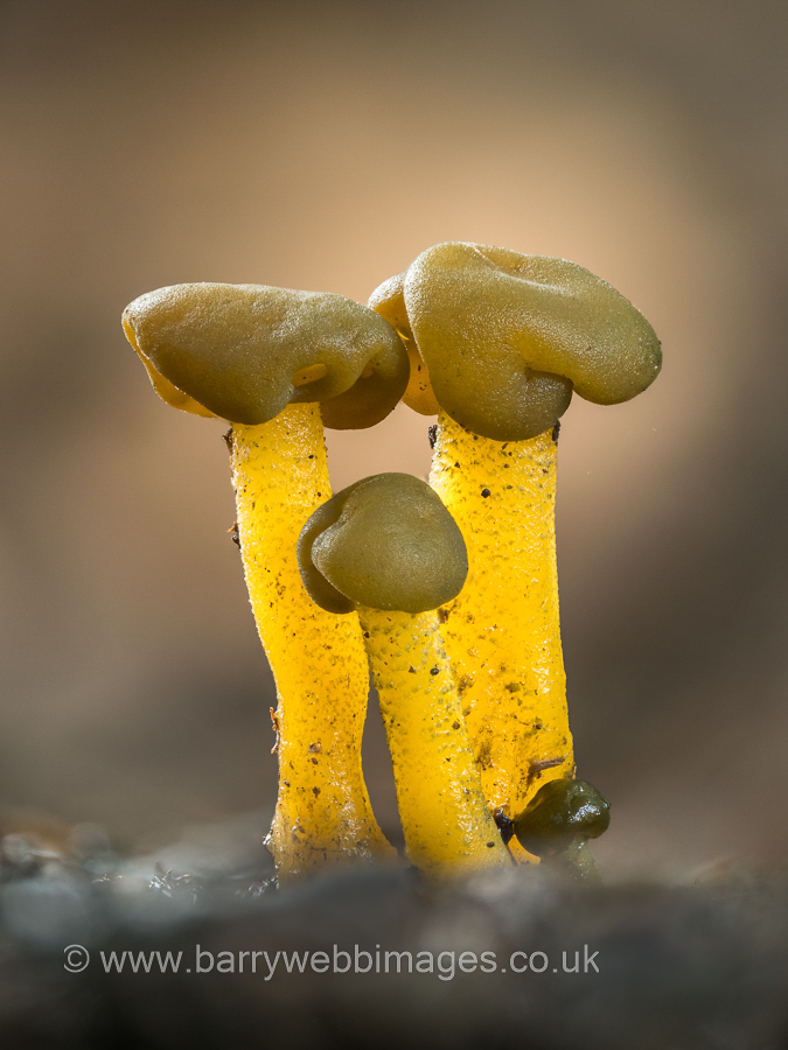 |
August 21st Leotia lubrica (Jellybaby)
At Burnham Beeches Barry Webb noticed this species which, though looking like a gilled mushroom as yet unopened, is in fact an Ascomycete. It never uncurls much more than is seen here, and the rubbery olive green top with yellow greasy stem is typical - a bit like a giant Bog Beacon (though that tiny species is confined to wet marshy areas in Spring). Jellybabies can sometimes occur in large numbers woodland glades and path edges. We have just two previous entries in Finds, 2020 November 1st and 2022 October 7th.
|
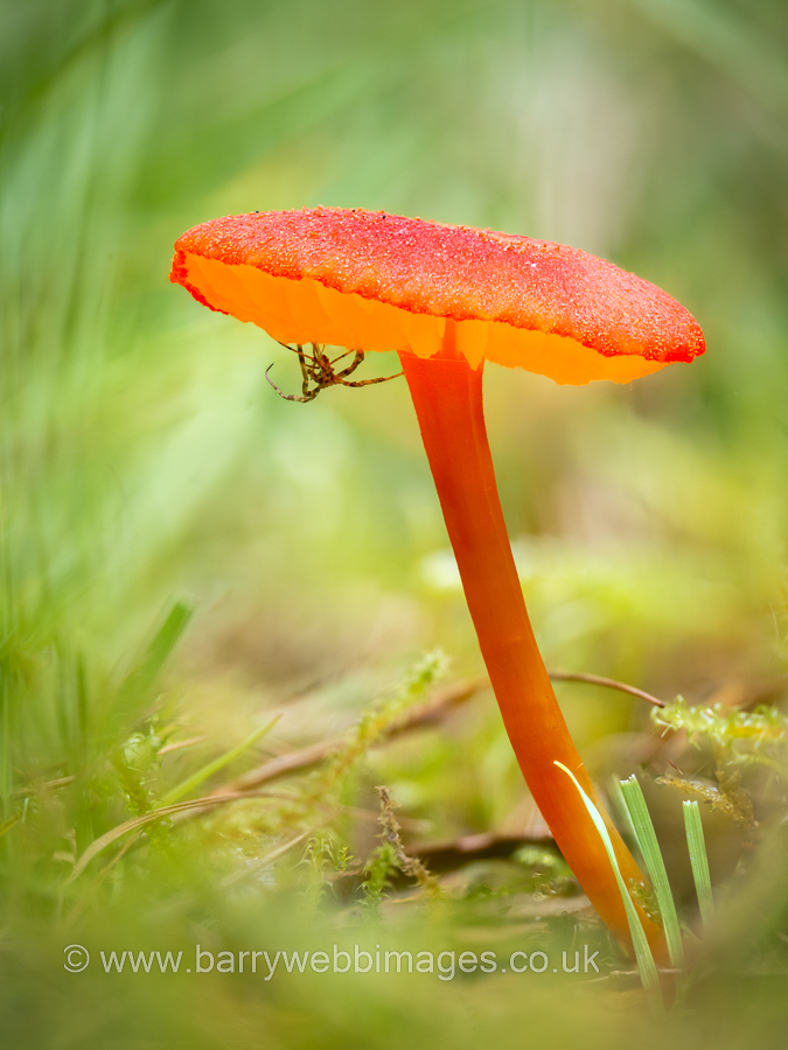 |
August 21st Hygrocybe miniata (Vermillion Waxcap)
In a grassy area at Burnham Beeches Barry Webb found this little beauty which Penny has named (hopefully correctly) purely from his photo. Small and delicate with a roughened, not sticky, bright red cap surface and adnate rather than decurrent gills (which may or may not be red as well) were the pointers to its ID which is, however, by no means guaranteed. See the Masterlist for a few other more authenticated images.
|
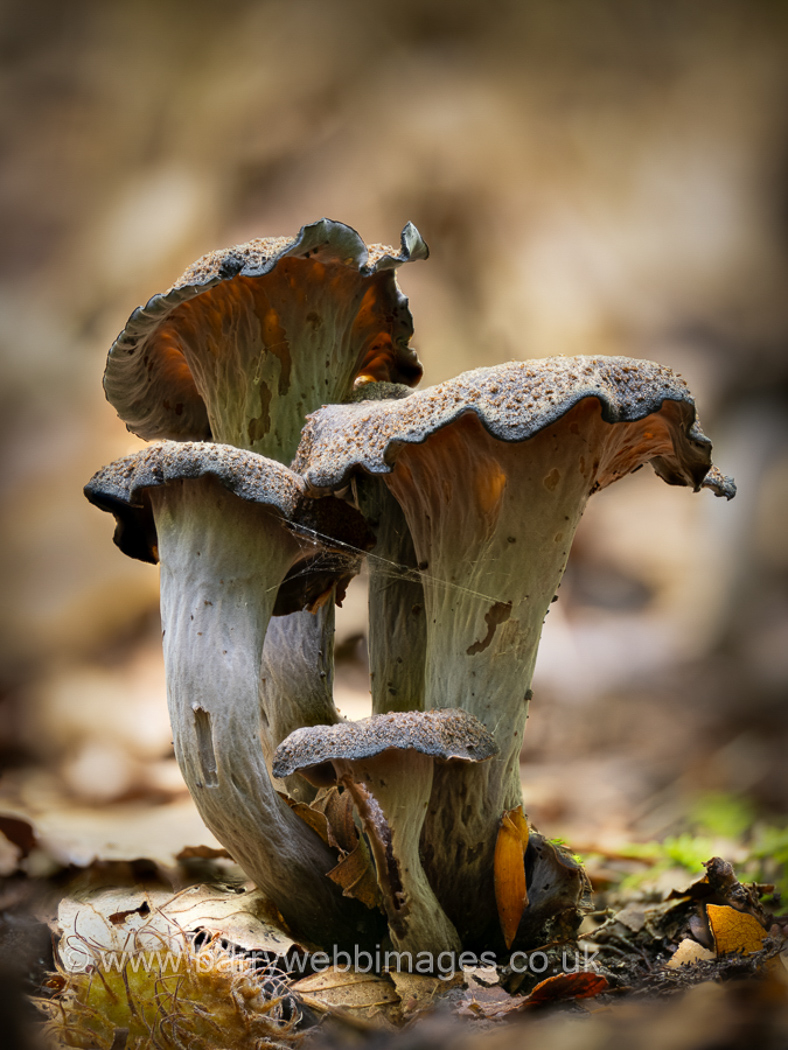 |
August 21st Craterellus cornucopioides (Horn of Plenty)
At Burnham Beeches Barry Webb took this lovely photo of a species which is proving very common at the moment with reports in from various places. (Penny and Geoffrey Kibby found sheets of it under Beech at Mousells Wood a couple of days after this.) It described as basically black it can vary in colour and is often surprisingly grey (with a brownish tint at times) with hardly any black, but the trumpet shape with smooth outer surface is inmistakeable. See the Masterlist for a choice of images.
|

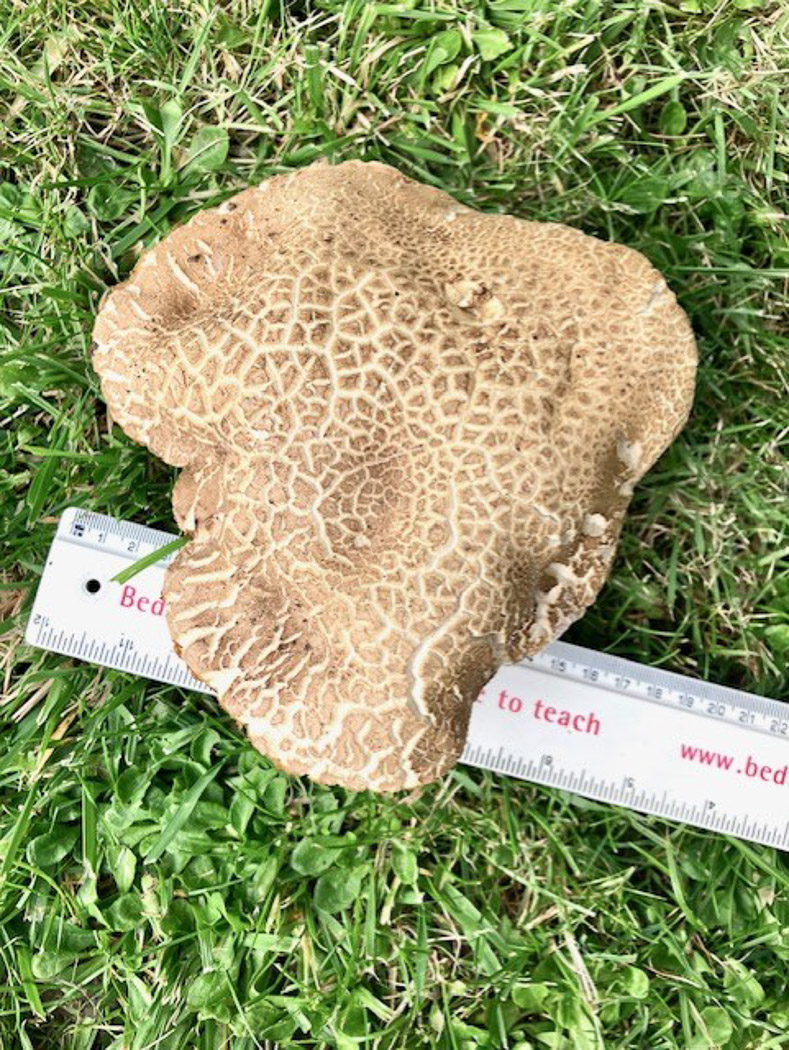
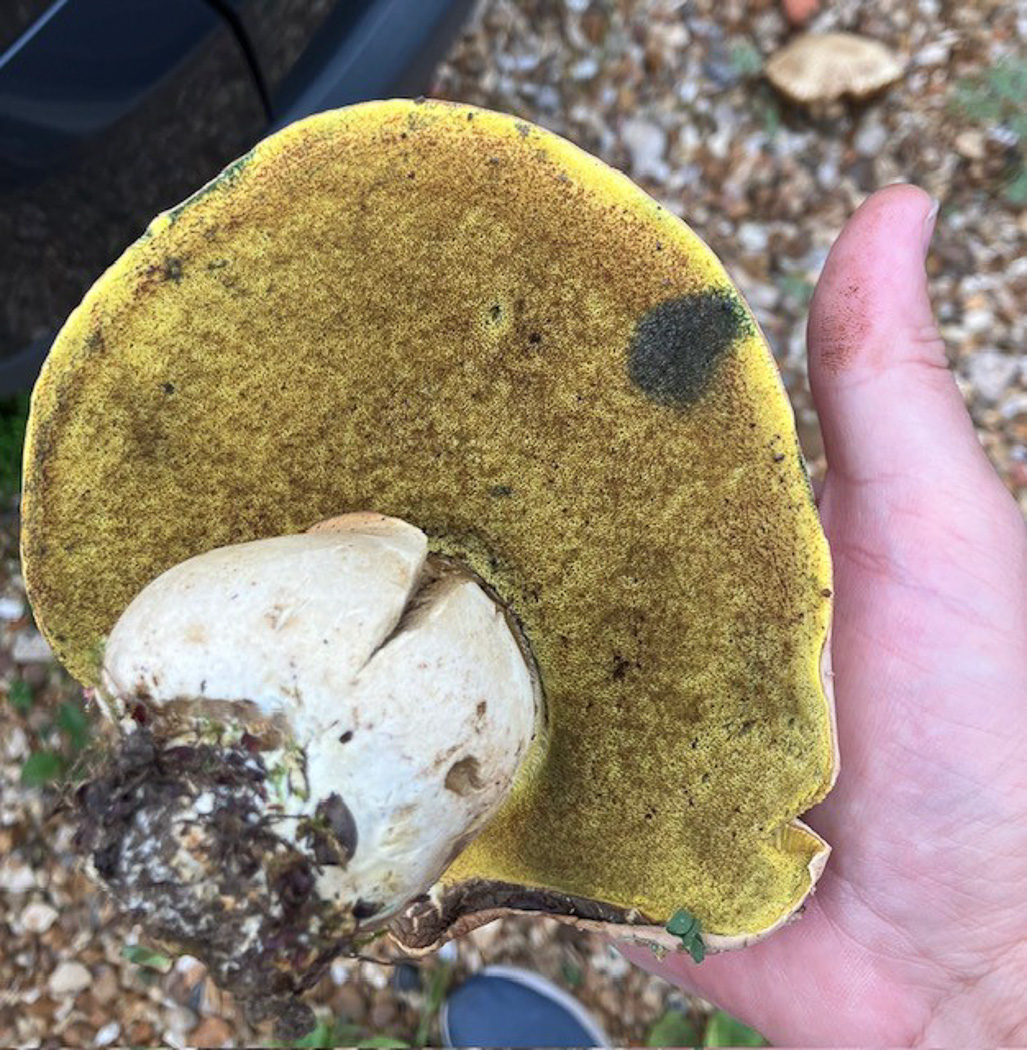
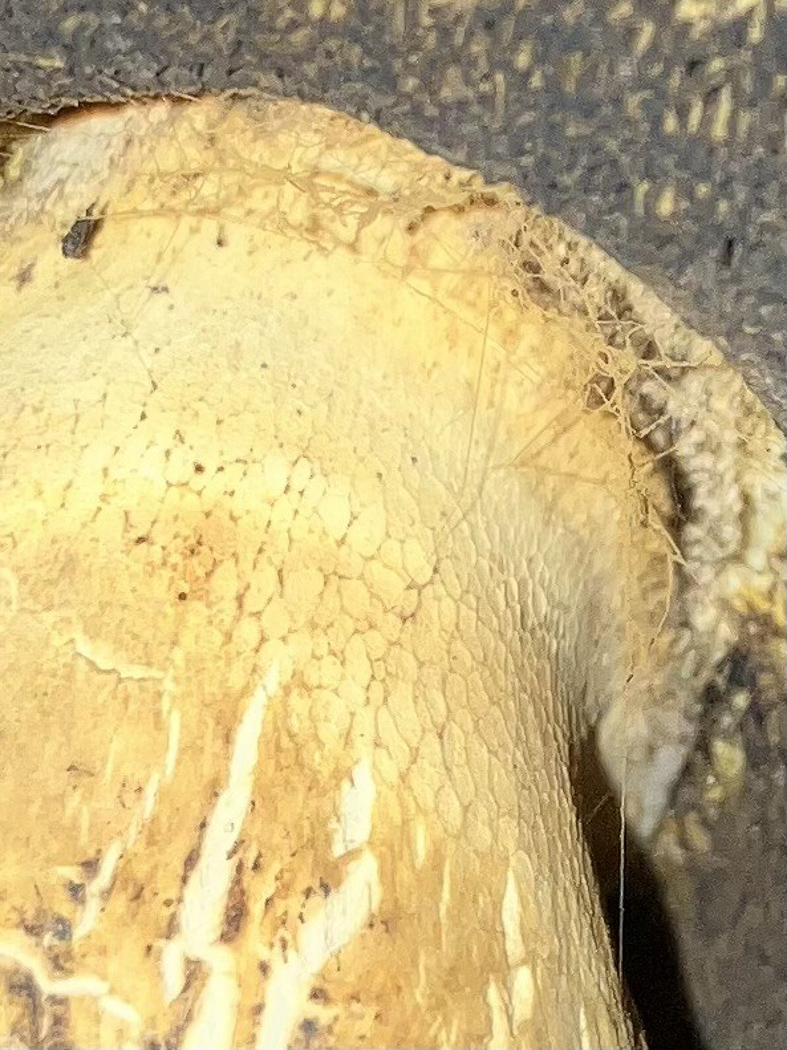 |
August 21st Caloboletus radicans (Rooting Bolete) 
In a Bletchley industrial estate Justin Long was surprised to see a whopping great Bolete not far from Beech but almost underneath an old tank! It was somewhat past its best with the cap well crazed from its exposed position but he noted the yellow pores slowly blued when pressed and the obviously rooting pale stem had an equally pale network below the apex (photo 3). At home he noted also the bitter taste and the spore size, then keyed it out to this species which when young has a paler almost white cap. See the Masterlist for a choice of images.
|
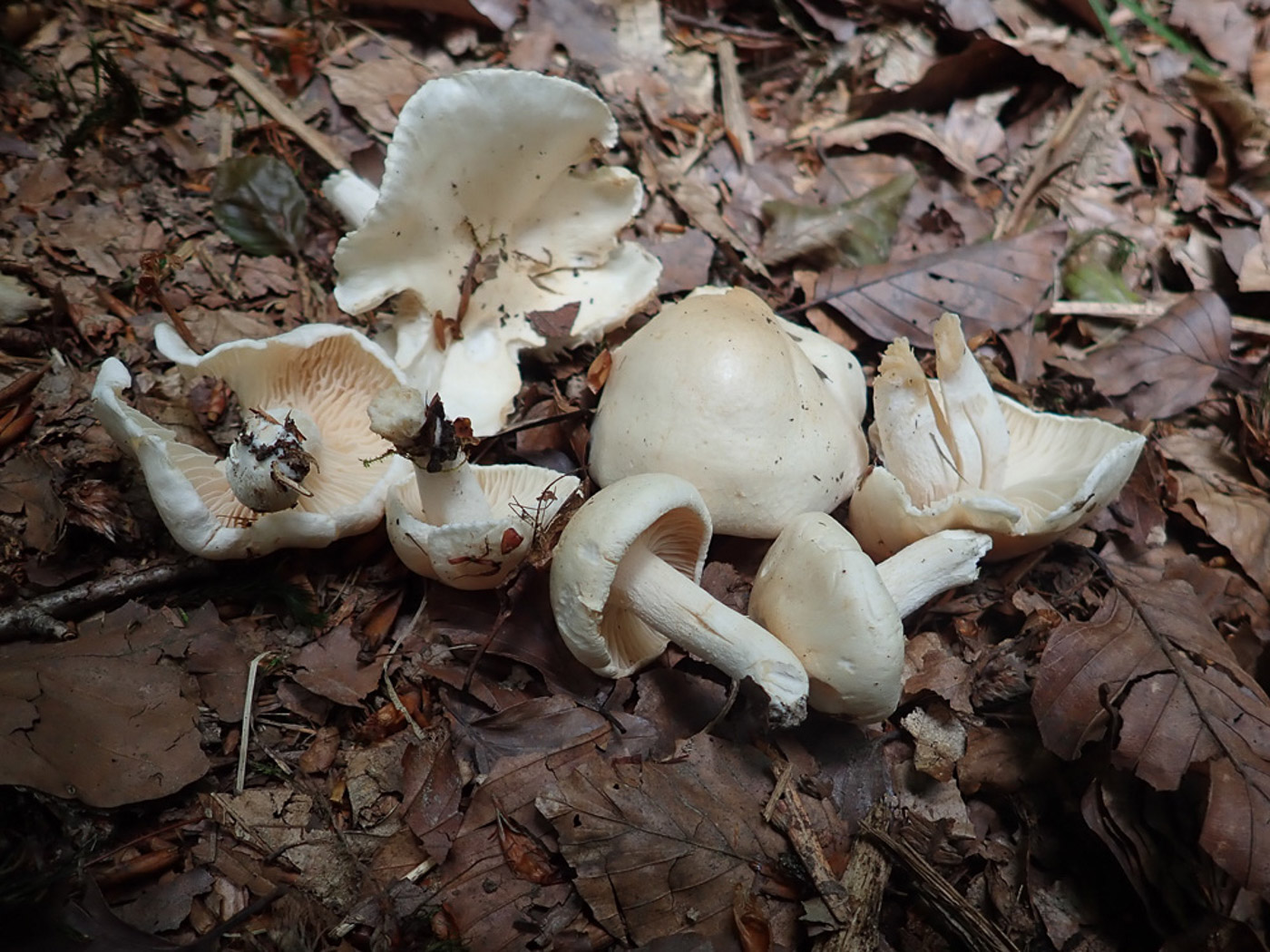 |
August 21st Hygrophorus penarius (Matt Woodwax)
In Bradenham Wood under Beech Penny noticed a patch of pale cream rather rounded mushrooms and turning one over she took a few moments to place the genus and then the species. This is not one of our common Beech associating Woodwaxes and is quite large and dry-capped compared to the more familiar white and somewhat glutinous species we often find under Beech. The gills are pinky cream and slightly wrinkled and the white stem tends to narrow at the base. The species was new to Penny at this site when shown her by Geoffrey Kibby over 20 years ago and we now have a dozen county records though from a fewer number of sites. This is a new entry for Finds.
|
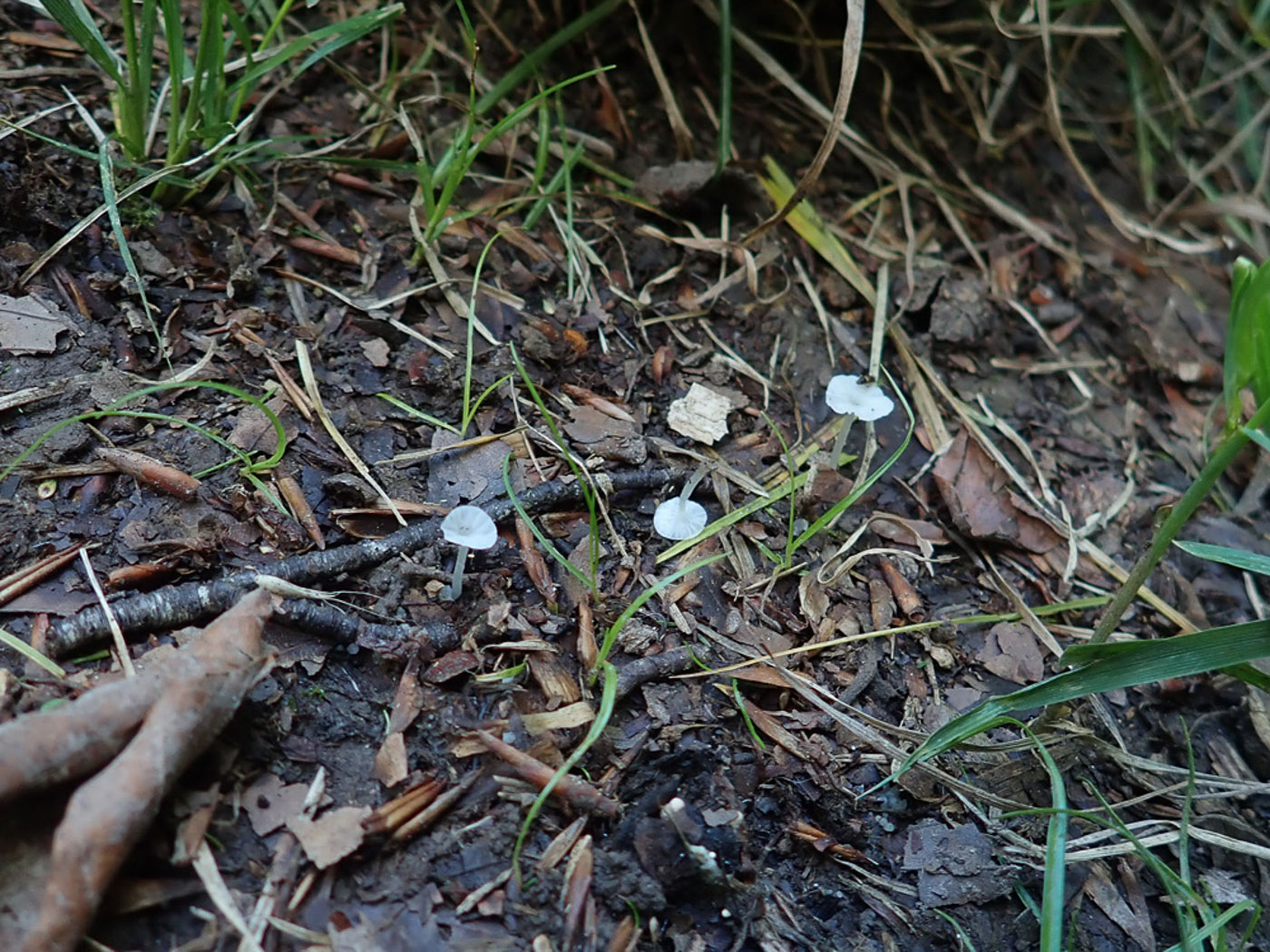
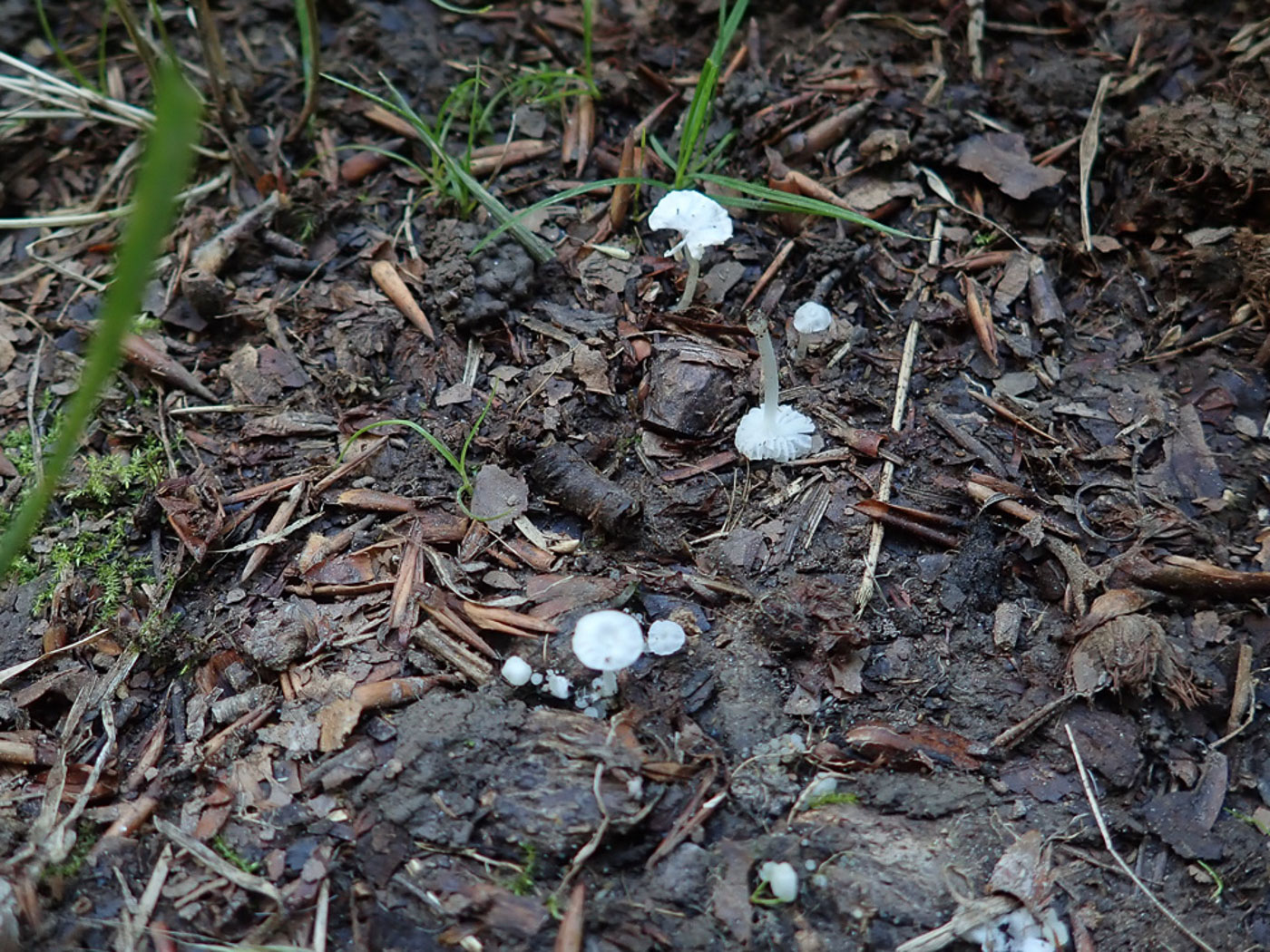 |
August 21st Delicatula integrella (a unusual Bonnet lookalike with no common name) 
In Bradenham Woods Penny came across various patches of this unusual tiny white 'Bonnet' in damp muddy debris along the wide rides. Suspecting it was this species, which in the past has utterly confused her, she took it home to check. Both Mycena and Hemimycena - sometimes remarkably similar when small and white - have quite distinctive gill cells, but this species lacks these gill cells entirely and also has distinctive amyloid spores which seem to vary in shape quite considerably. With a hand lens one can see that the gills are somewhat shallow and not sharp edged with some branching also - certainly unlike Mycena. This is new to the site though we have about a dozen previous records with one image in Finds: 2021 June 24th.
|
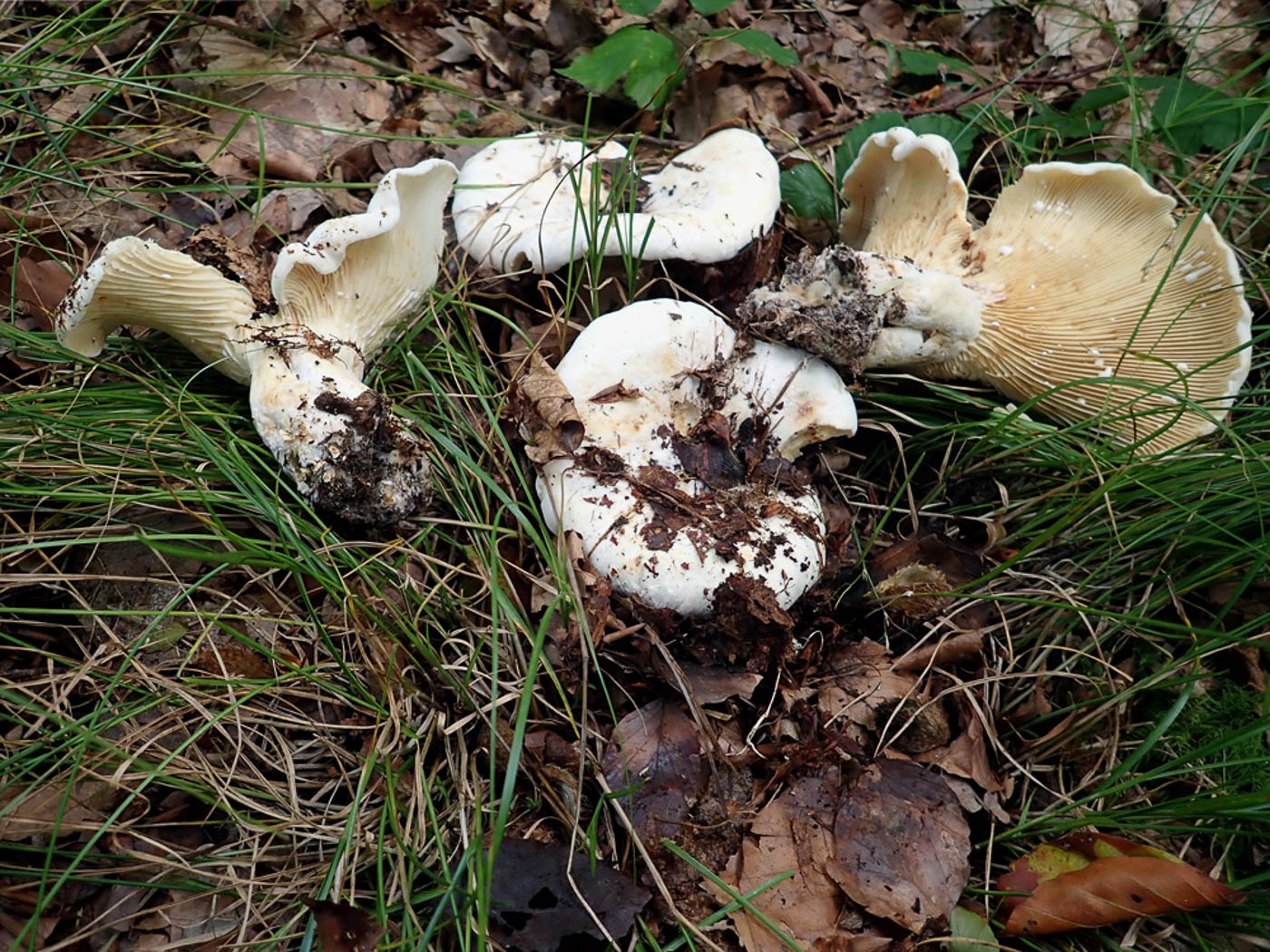 |
August 21st Lactifluus vellereus (Fleecy Milkcap)
Under Oak in Naphill Common Penny found a cluster of these chunky and solid funnel-shaped Milkcaps lurking under vegetation, the largest being a good handspan across. Until one was upturned she couldn't tell whether it was one of the two lookalike Brittlegills (R. delica or R. chloroides) or one of several possible Milkcaps now moved to this separate genus - all are very similar in stature, cap colour and shape. The instant abundant milk left no doubt which genus she had but work at home was needed for an ID. The commonest of this group is L. piperatus which has extremely crowded whitish gills but quite sparse milk which is burning hot to taste, hence its common name. The gills of L. vellereus are more cream, are less crowded, and its milk is abundant and mild to taste. To split this species from the very similar but rarer L. bertillonii, place a drop of the milk on a slide (away from the flesh) and add a drop of KOH: no colour change with today's species but quickly orange in the rarer species. This was new to the site today and we have one previous image in Finds, 2020 October 22nd.
|
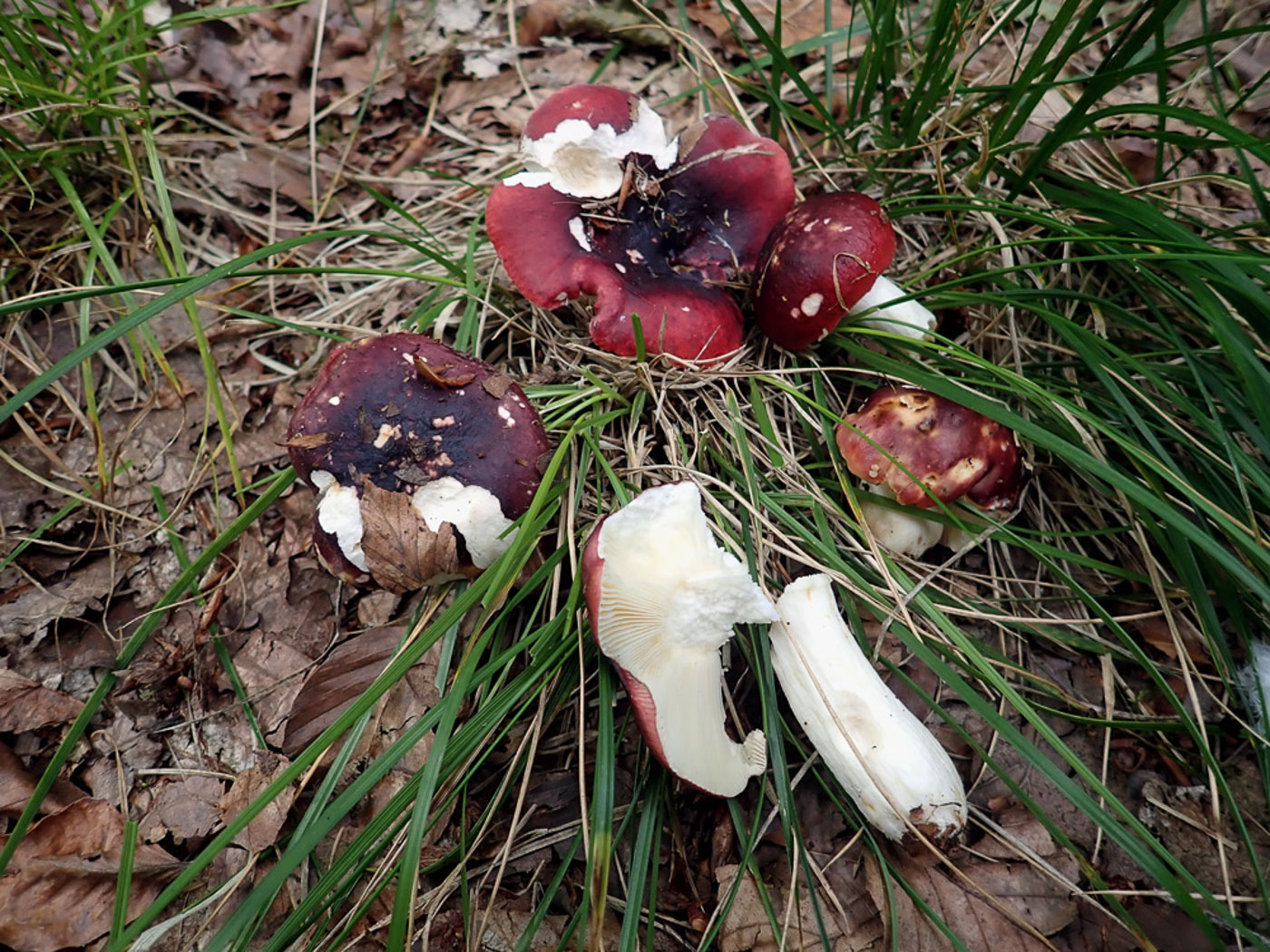 |
August 21st Russula atropurpurea (Purple Brittlegill)
In Bradenham Woods Penny found just a few of this very common species dotted about under Beech and Oak, then placed them together to show the features despite several being well nibbled. The species name refers to the rich purplish red cap which tends to be almost black in the centre. Note also the cream spots and patches seen in places and which are often present in this species - it can even be entirely cream on occasion. It has contrasting pale cream gills and a white stem which when waterlogged turns greyish; it can occur under conifers as well as deciduous trees. See the Masterlist for a choice of other images.
|
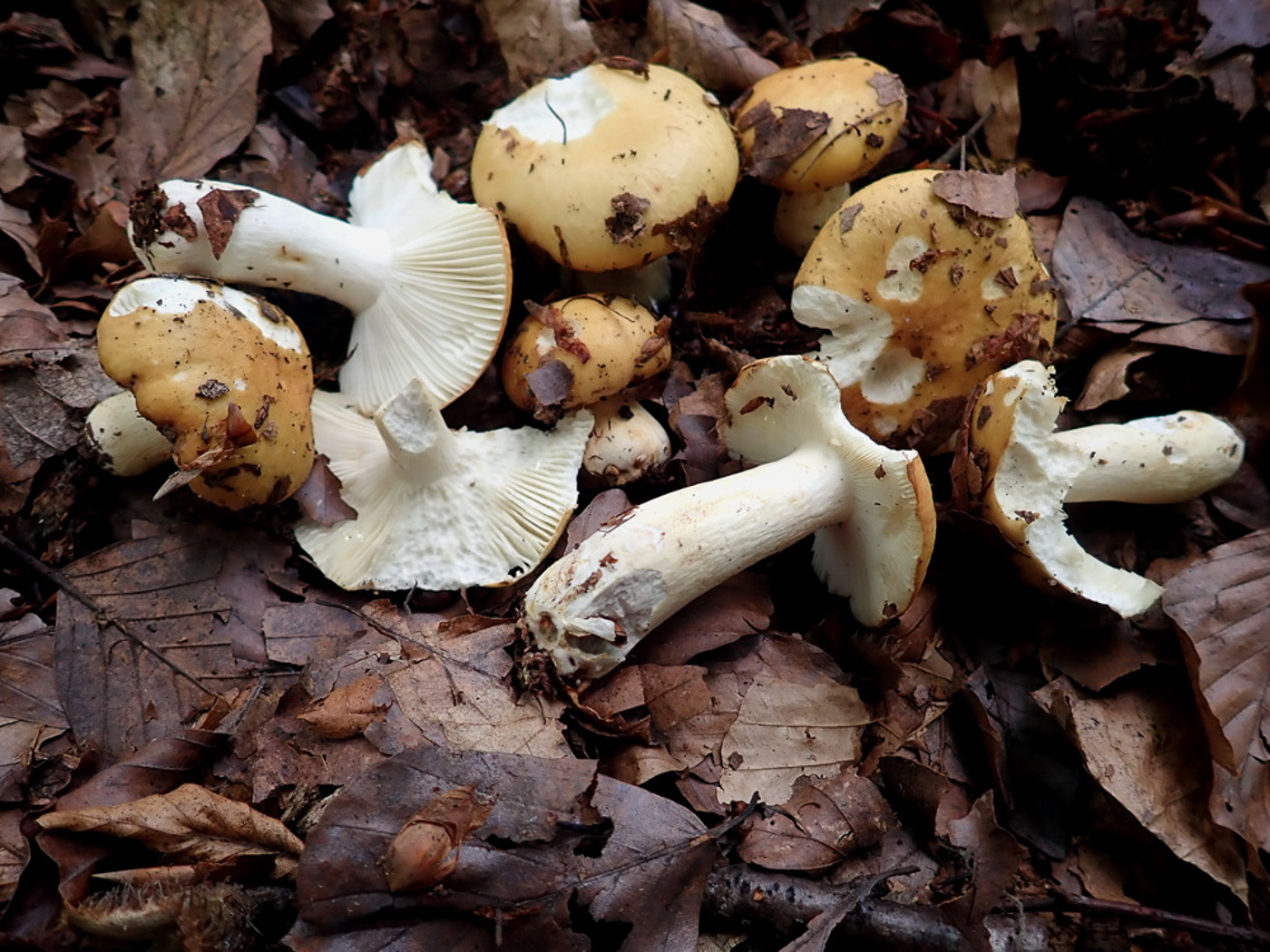 |
August 21st Russula ochroleuca (Ochre Brittlegill)
In Bradenham Woods Penny eventually collected enough specimens of this species which were not too chewed to show its characteristics. This is one of our commonest Brittlegills, found under both deciduous and coniferous trees, though many people regularly mistake it for one or other of our other yellow-capped species. Note how the dull greenish ochre yellow cap contrasts with white gills and stem - that's the best pointer. Host specific to Beech is R. fellea, also yellow but evenly honey coloured in cap, gills and stem. Host specific to Birch is R claroflava, bright yellow with cream gills but staining slowly reddish then black where damaged or scratched. A chemical trick: a drop of KOH on the cap centre or stem base of today's species uniquely stains it instantly bright red. See the Masterlist to make your own comparisons between these species.
|
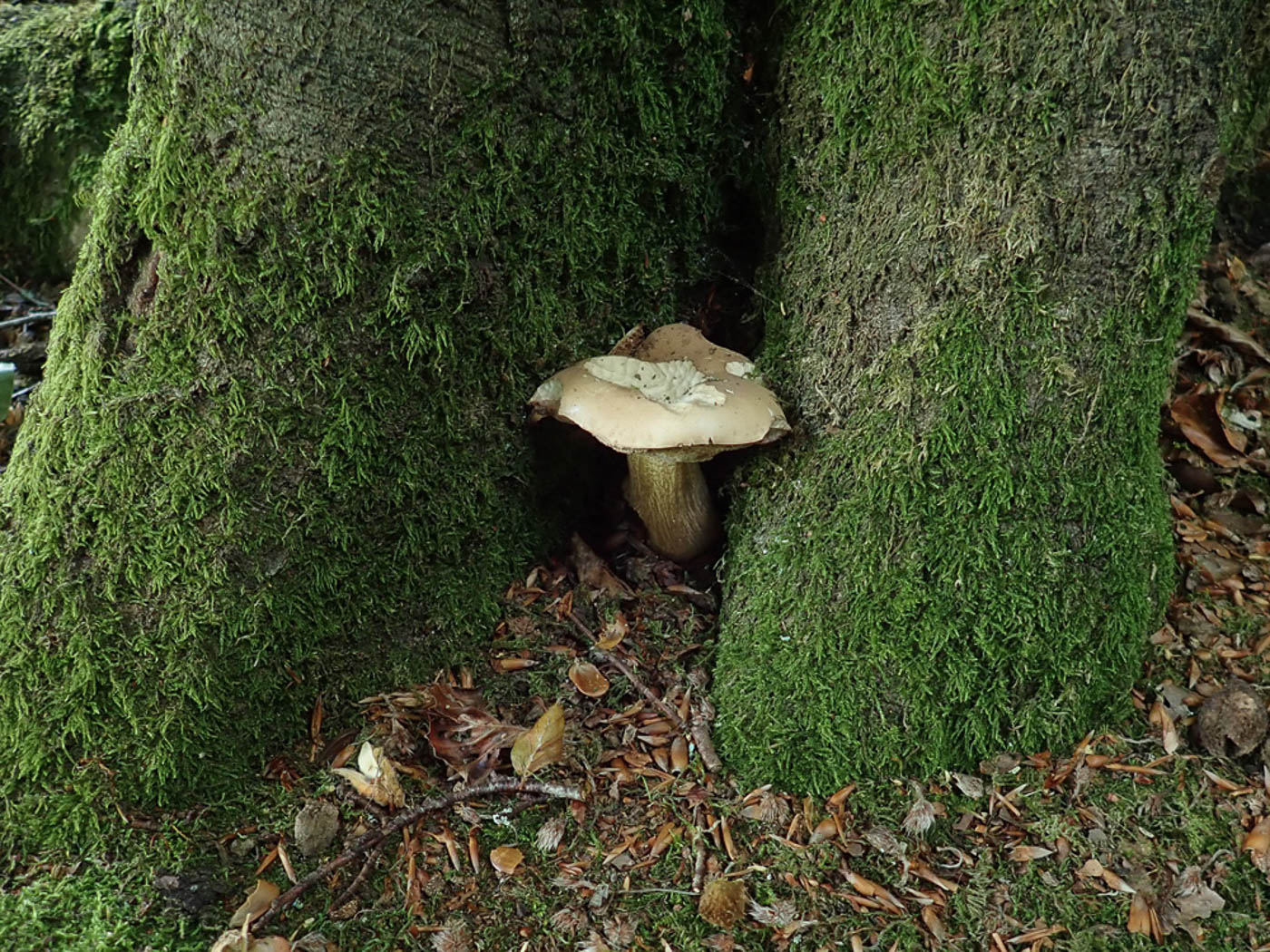
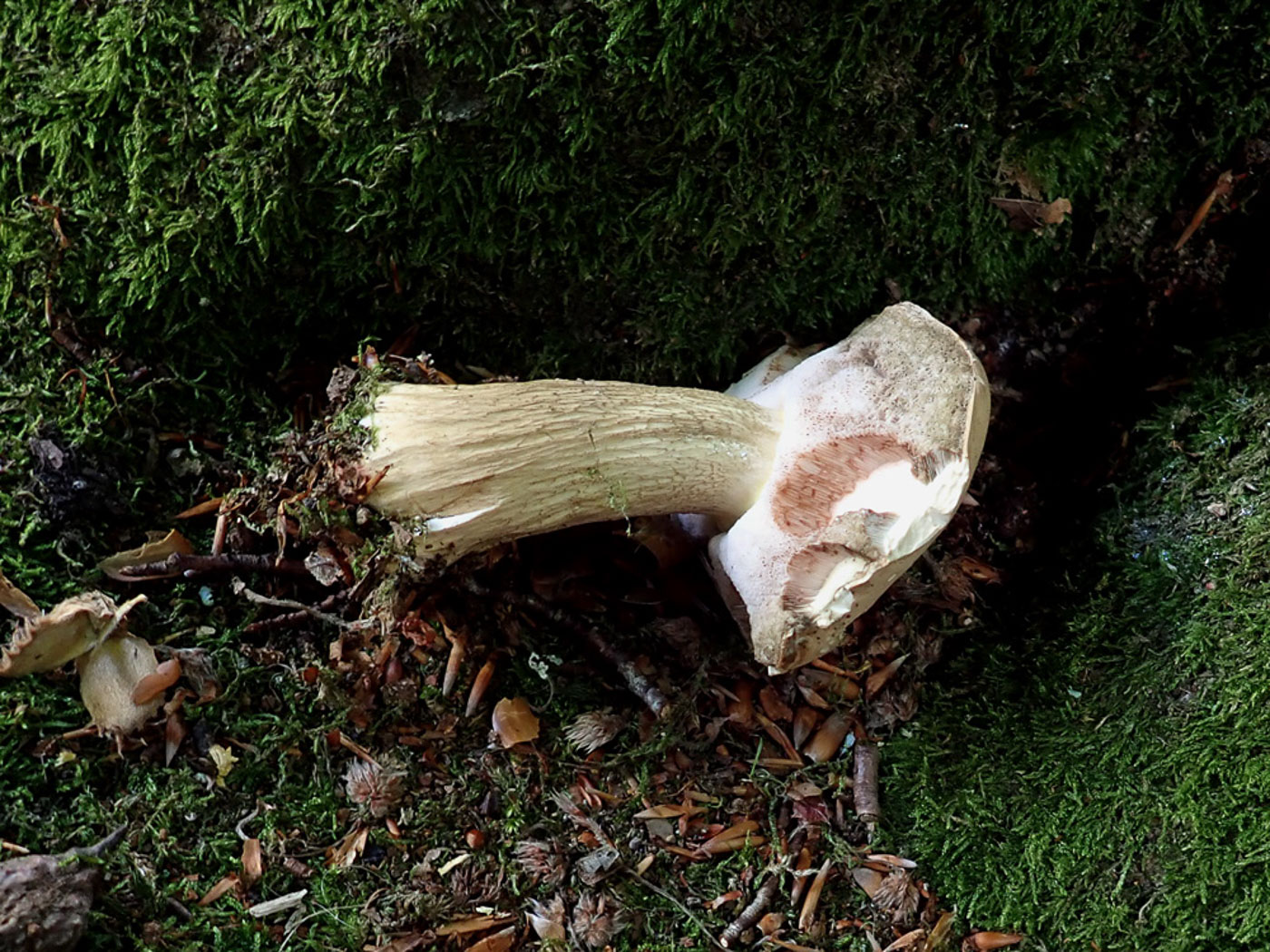 |
August 21st Tylopilus felleus (Bitter Bolete)
In Bradenham Woods Penny spotted a chunky pale brown mushroom emerging from the base of a mossy Beech trunk, so took photo 1 prior to extricating it to find out what it was. The pink pores and tubes (well nibbled) and pale reticulate stem provided the answer (photo 2). Presumably the rodent nibblers are immune to the very bitter taste of this occasional species and many fungi in this area were really well nibbled today. See another example earlier in the month: August 2nd.
|
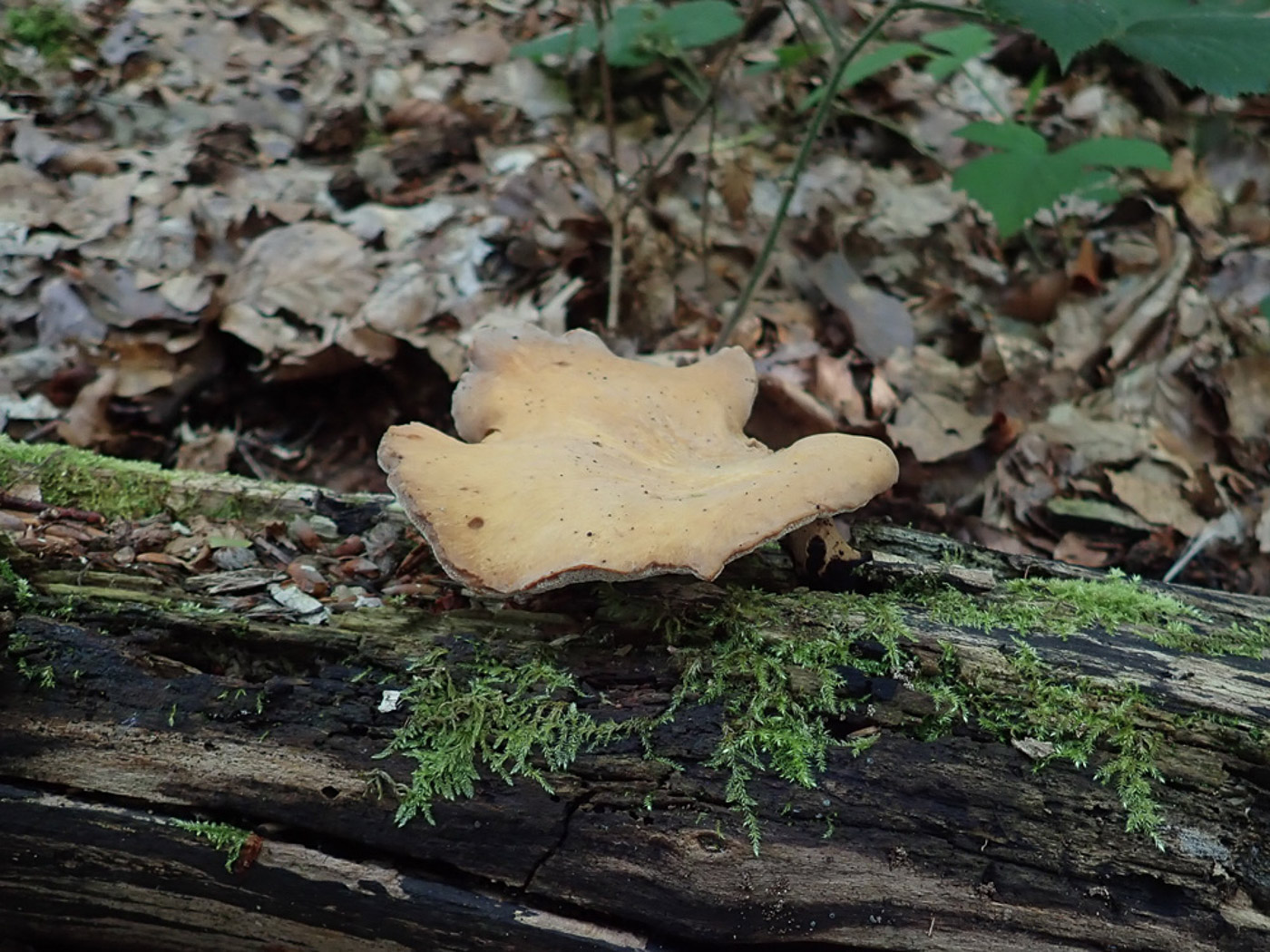
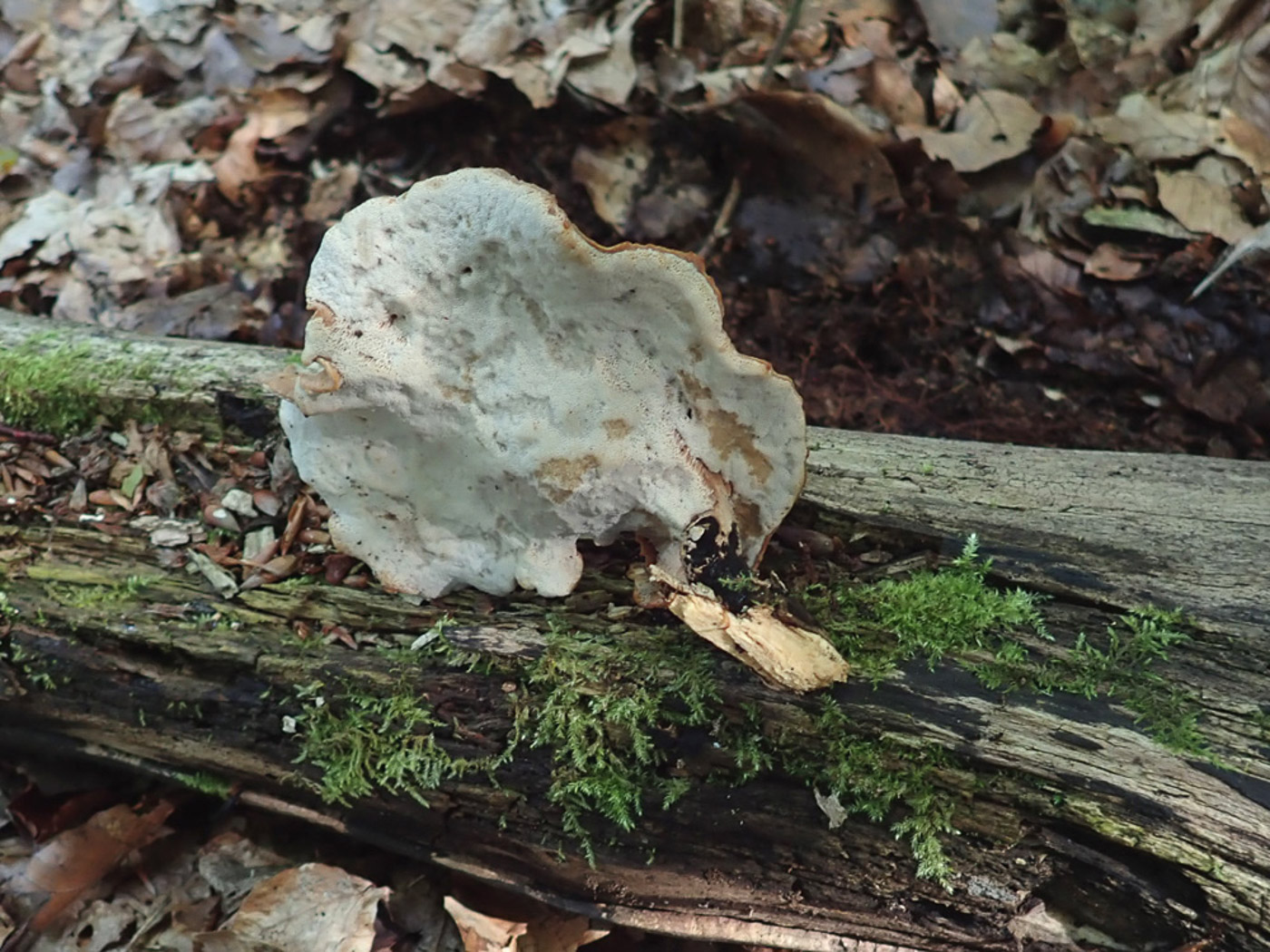 |
August 21st Cerioporus leptocephalus (Blackfoot Polypore)
In Naphill Common Penny noticed this rather nibbled smooth brown cap - about 8 cm across - fruiting on a fallen Beech branch and turning it over was not surprised to see pale small pores (also well nibbled) and a black base to the stem where affixed to the wood. Much better known under the genus name Polyporus this is probably our commonest polypore and one of the easiest to name owing to its distinctive black stem base (see photo 2 though some of the rotten branch came away attached to the stem which makes the black base a bit harder to see). See also in Finds 2020 December 7th and 2021 August 19th.
|
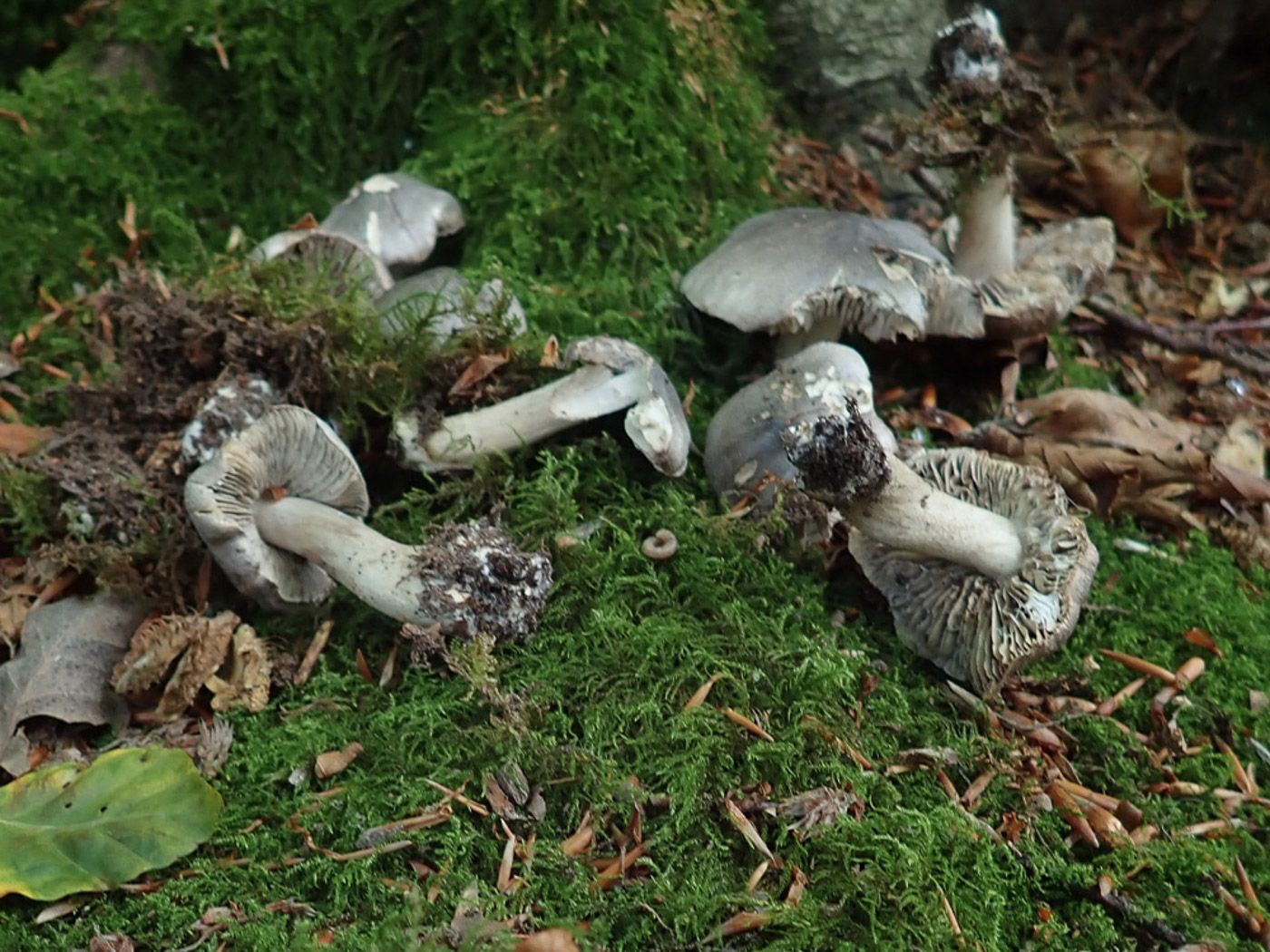 |
August 21st Tricholoma sciodes (Beech Knight)
In Bradenham Woods Penny found this cluster of grey Knights under Beech with which it is host specific. One of several somewhat similar grey-capped Knights, the species is the most likely under Beech though not the only possibility! However the silky surface and conical shape when small, also the black gill edge (just visible in the LH upturned specimen) together with the lack of much smell and unpleasant taste help to confirm the ID. It is locally common in our area wherever Beech is present. See also in Finds 2020 September 24th and 2022 October 21st.
|
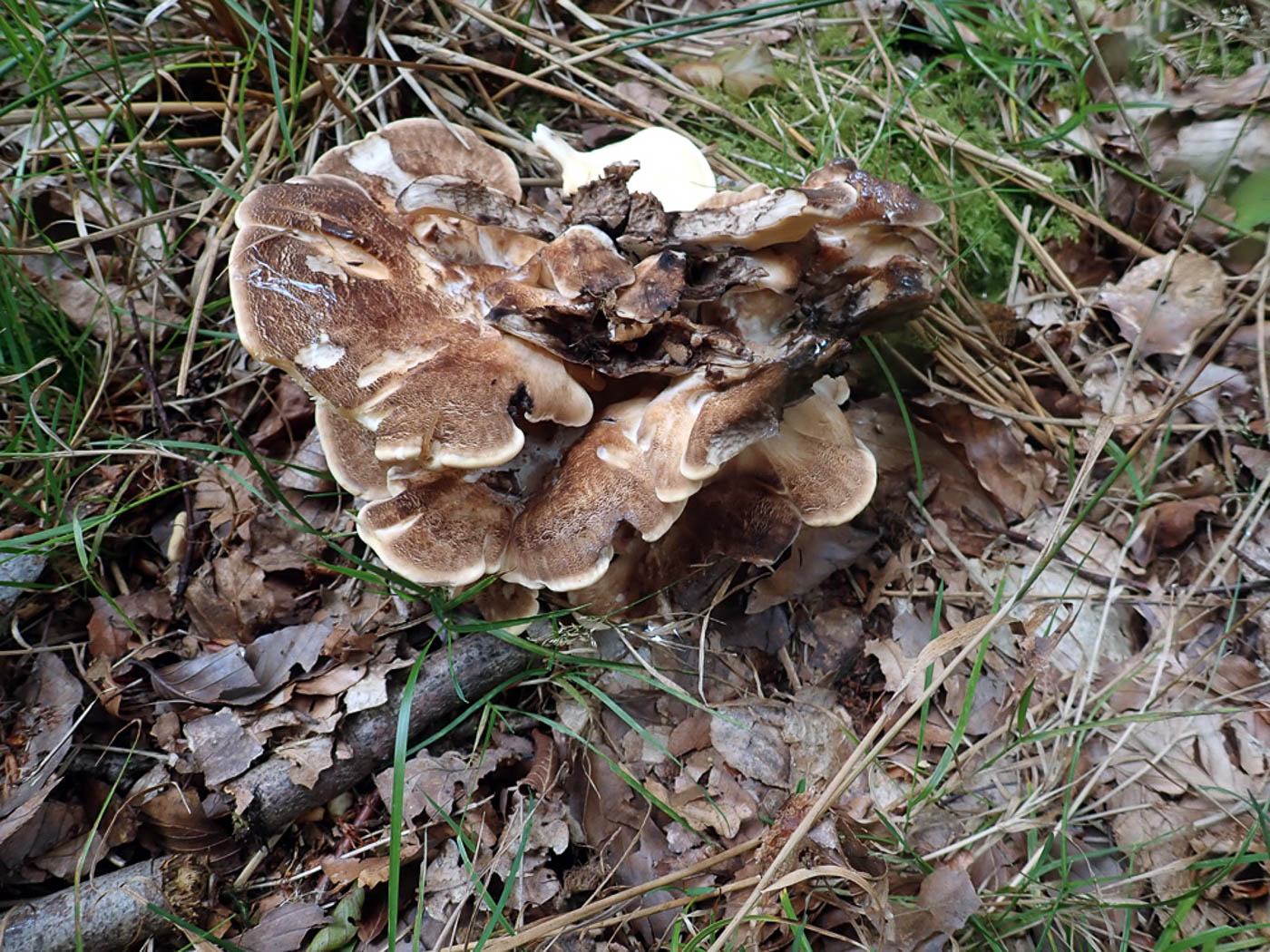
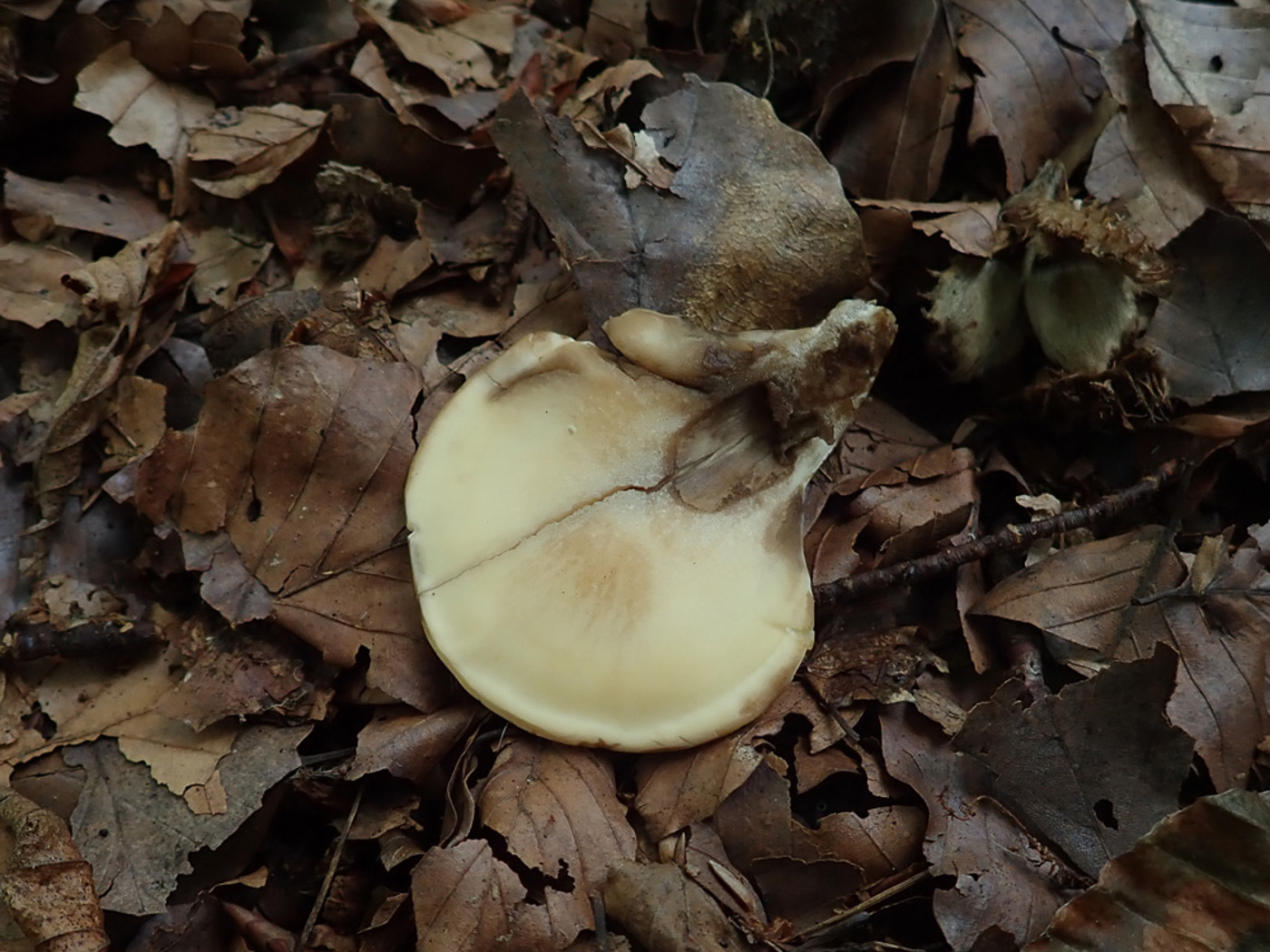 |
August 21st Meripilus giganteus (Giant Polypore)
In Bradenham Woods near an old Beech stump Penny found this quite common species just starting to expand - here only about a modest foot across but sometimes found in truly massive tiered clumps encircling Beech when its size makes it unmistakable. When small and young, however, ID is not so obvious but a clue is the finely pored undersurface and the blackening flesh where damaged though this takes time. Photo 2 shows a lobe broken off then kept for ten minutes when it was already beginning to blacken. See the Masterlist for a choice of other images.
|
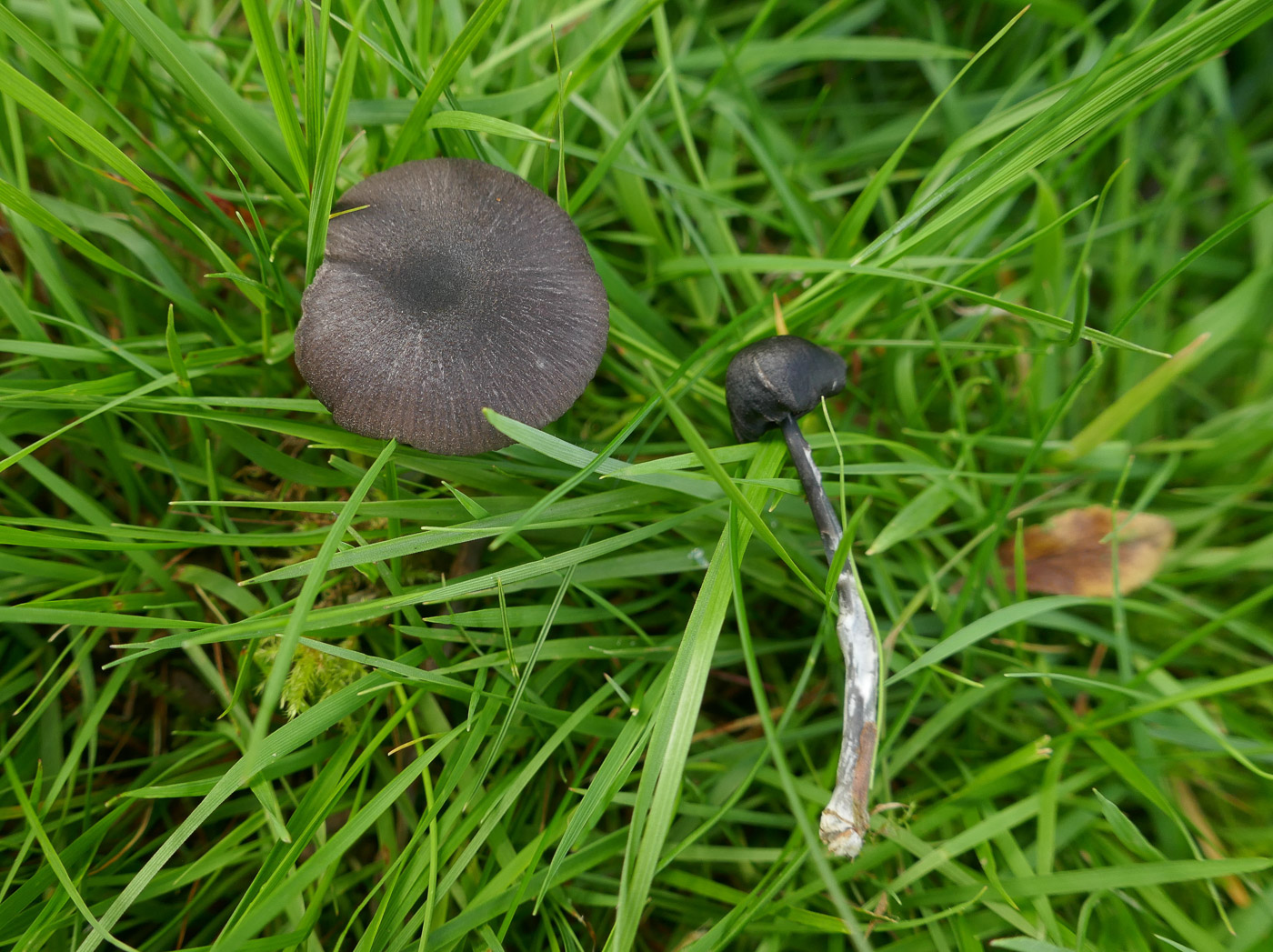
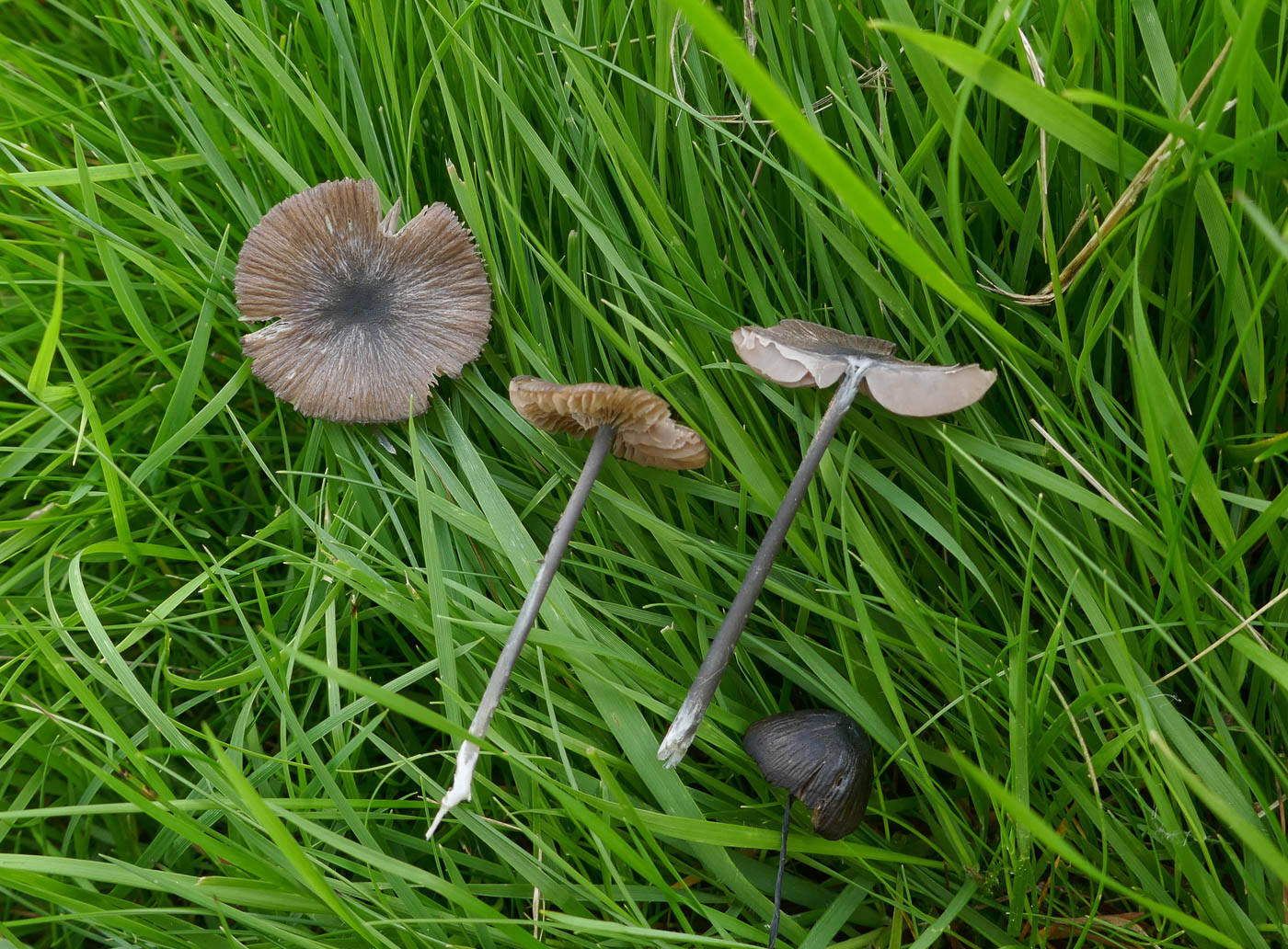
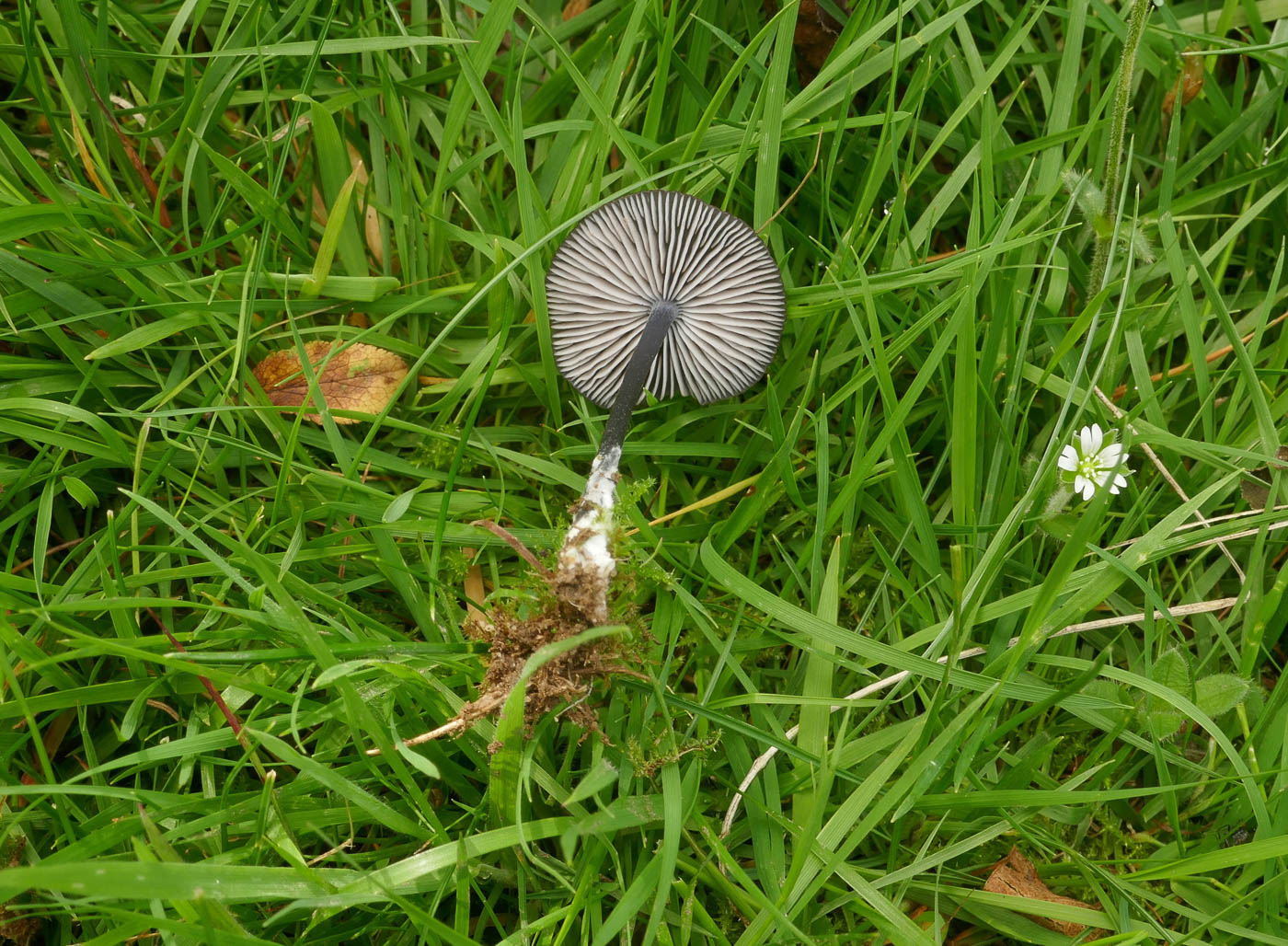 |
August 19th Entoloma lampropus (a Pinkgill with no common name) 
In a grassy path at Stampwell Farm Jackie Ewan found this rare small bluish tinged Pinkgill and recognised it, being near to where she found it last year when it was new to the county confirmed with sequencing. See Penny comments about the species in that Finds entry: 2022 October 29th.
|
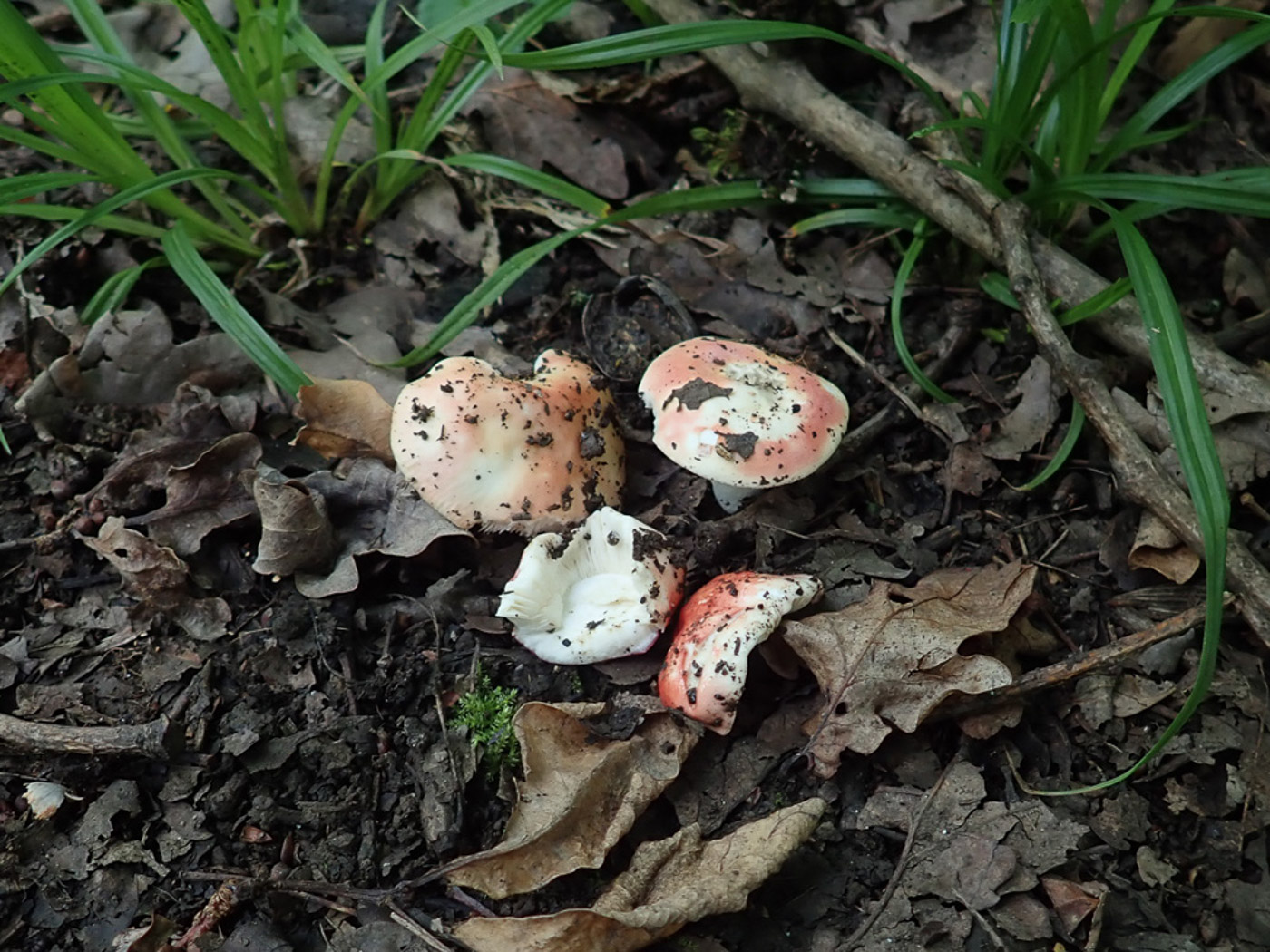
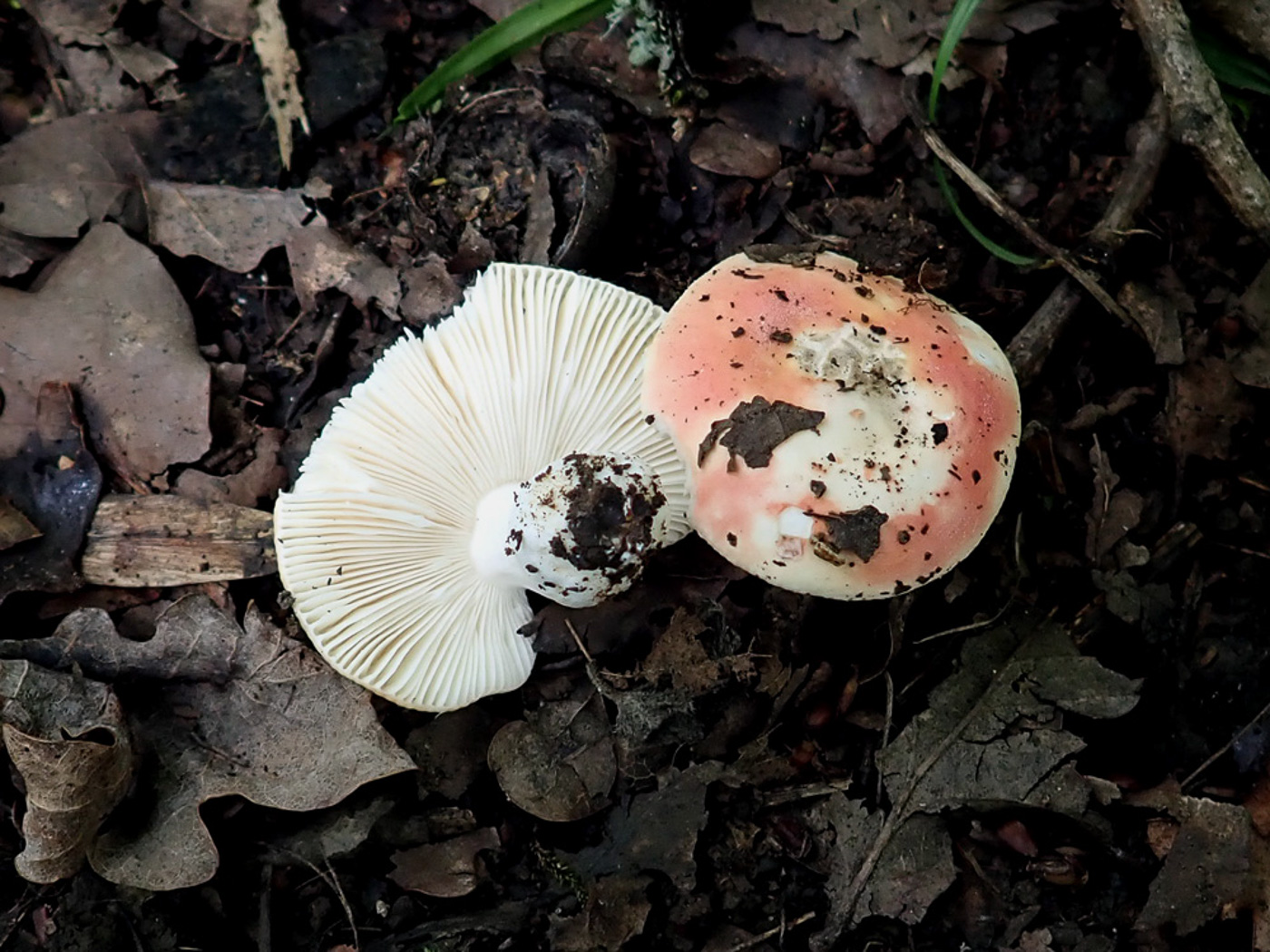 |
August 19th Russula persicina (an unusual Brittlegill with no common name)
In Rushbeds Wood along a muddy path edge under Oak Penny found this Brittlegill and instantly guessed it would turn out to be R. luteotacta from the cap colour and texture. 'Peaches and cream' is how she likes to describe it, also it is remarkably firm (both stem and cap) and the cuticle refuses to peel at all. It's unique feature is one you have to wait for, however: given several hours - sometimes overnight - any damaged parts turn brassy yellow (see Finds 2020 September 27th). However, there is a lookalike Brittlegill which has all the same features apart from lacking the brassy yellow staining though the sporeprint colour also differs: white in R. luteotacta but cream in the rarer R. persicina. Having left today's collection in a pot overnight and expecting to find it showing the telltale staining by morning, she found instead no staining but in the bottom of the pot a cream sporeprint! Both species favour damp clay soils under Oak and both have been found at Rushbeds though Penny had forgotten the Rushbeds collection here on August 3rd 2021 when it was new to the county - see that Finds entry (with apologies for the dreadful photos). So today's is the second county record (and thankfully also better photos!)
|
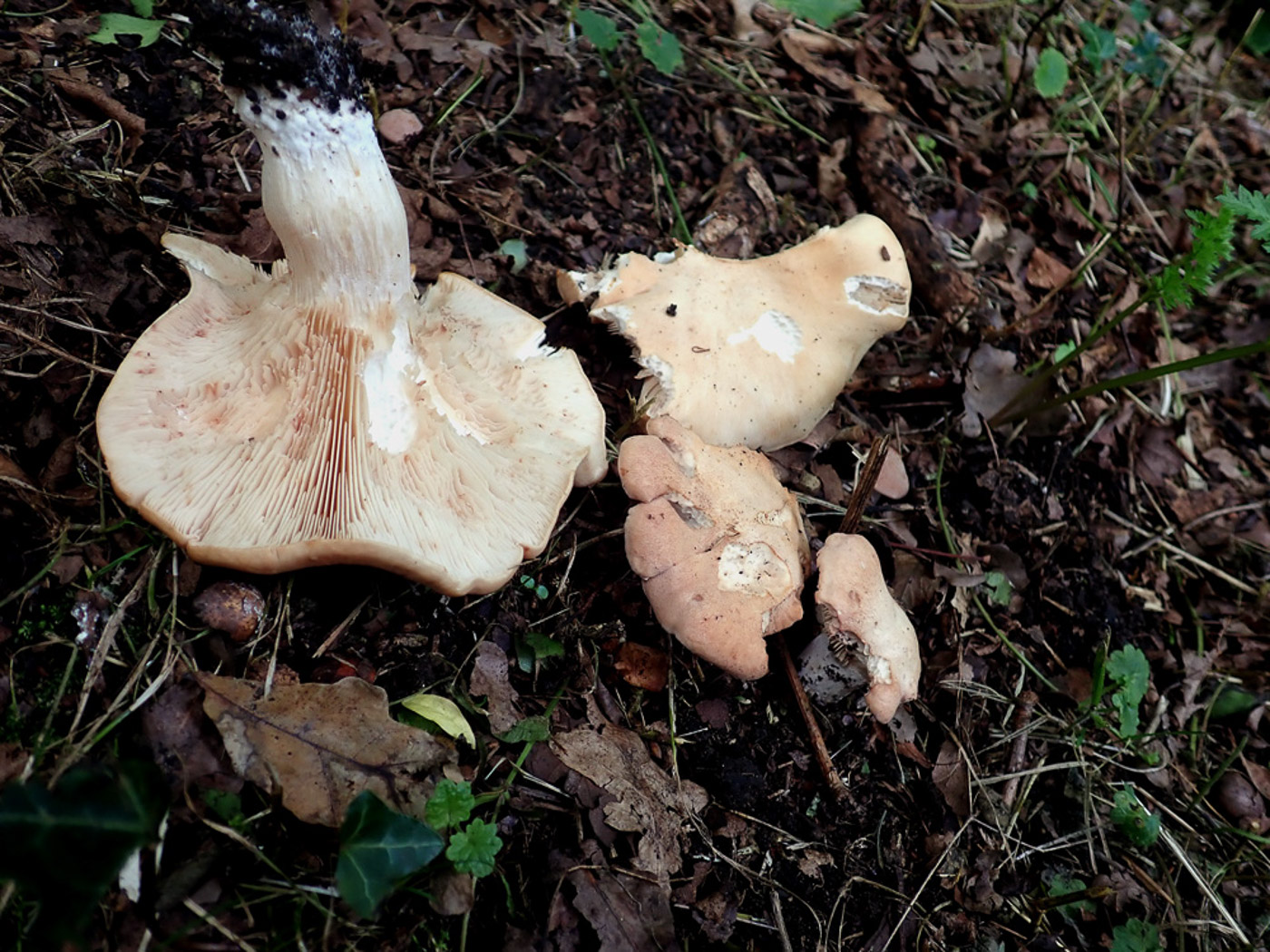 |
August 19th Rhodocybe gemina (Tan Pinkgill)
At Rushbeds Wood Penny was hopeful of finding this unusual species which regularly occurs along the old tram track here. Though the grassy edges had unfortunately recently been shaved of vegetation she found it fruiting in several spots. This is a large chunky mushroom with a pinkish buff cap and pink decurrent gills, though is not closely related to the genus Entoloma despite its shared common name. Of the handful of county sites where we've found it half the records are from the tram track here. See the Masterlist for more images.
|
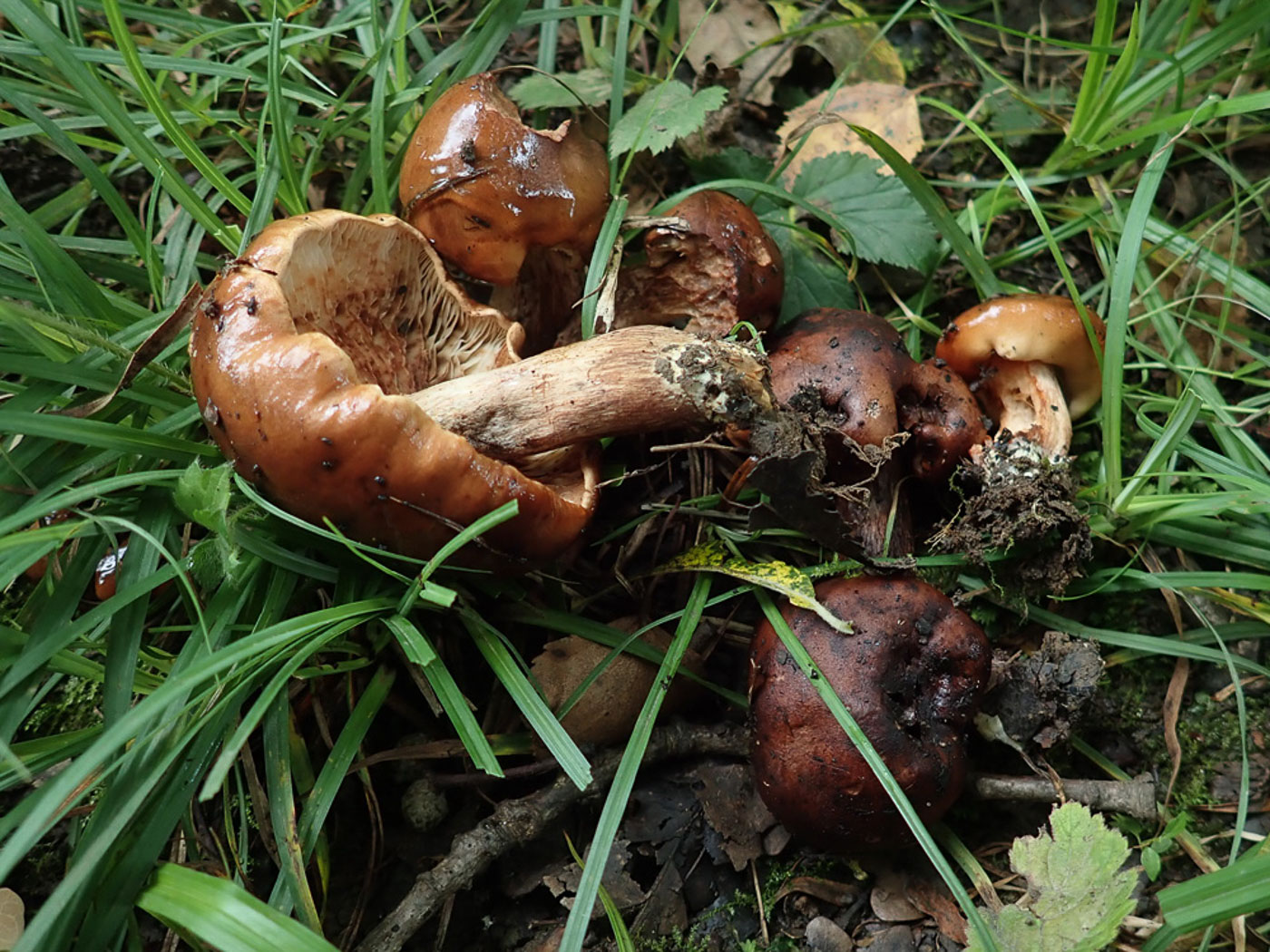 |
August 19th Tricholoma ustaloides (Charred Knight)
In thick vegetation at the edge of a ride near Oak in Rushbeds Wood Penny uncovered this clump of rich brown mushrooms which she at first couldn't place. Turning one over to see the pale gills spotting dark reddish brown reminded her of T. ustale - a Beech specific species but that tree is not present here. However, T. ustaloides is somewhat similar (hence its name) but is associated with Oak and favours clay soils, so a perfect match. It was extremely sticky - even more so than T. ustale, it has an intensely bitter cap cuticle (which Penny can vouch for!) though not visible here is the white zone just under the stem apex which apparently is another useful way to separate the two species. We have only a handful of county records and this was new to the site and to Finds today.
|
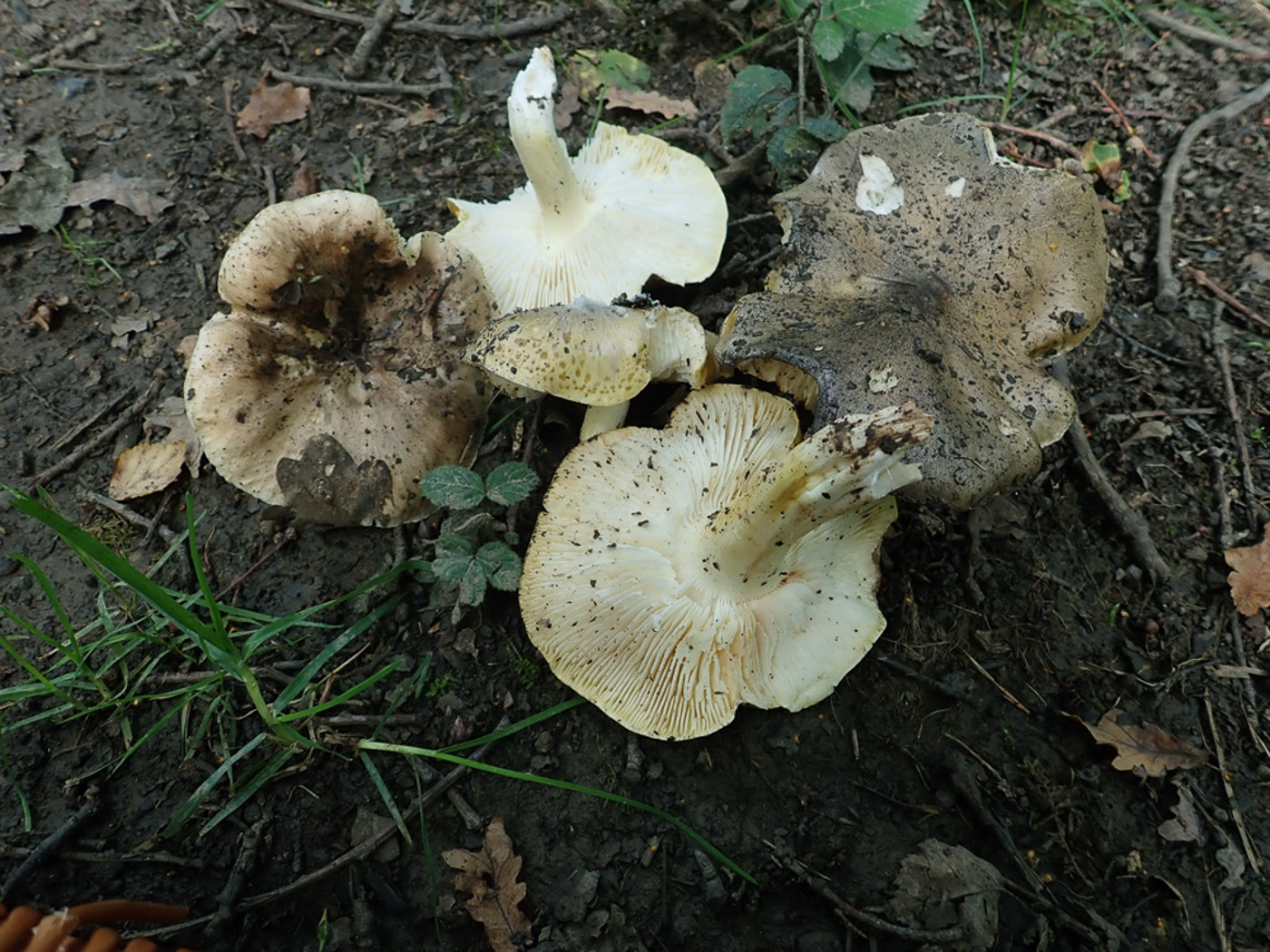
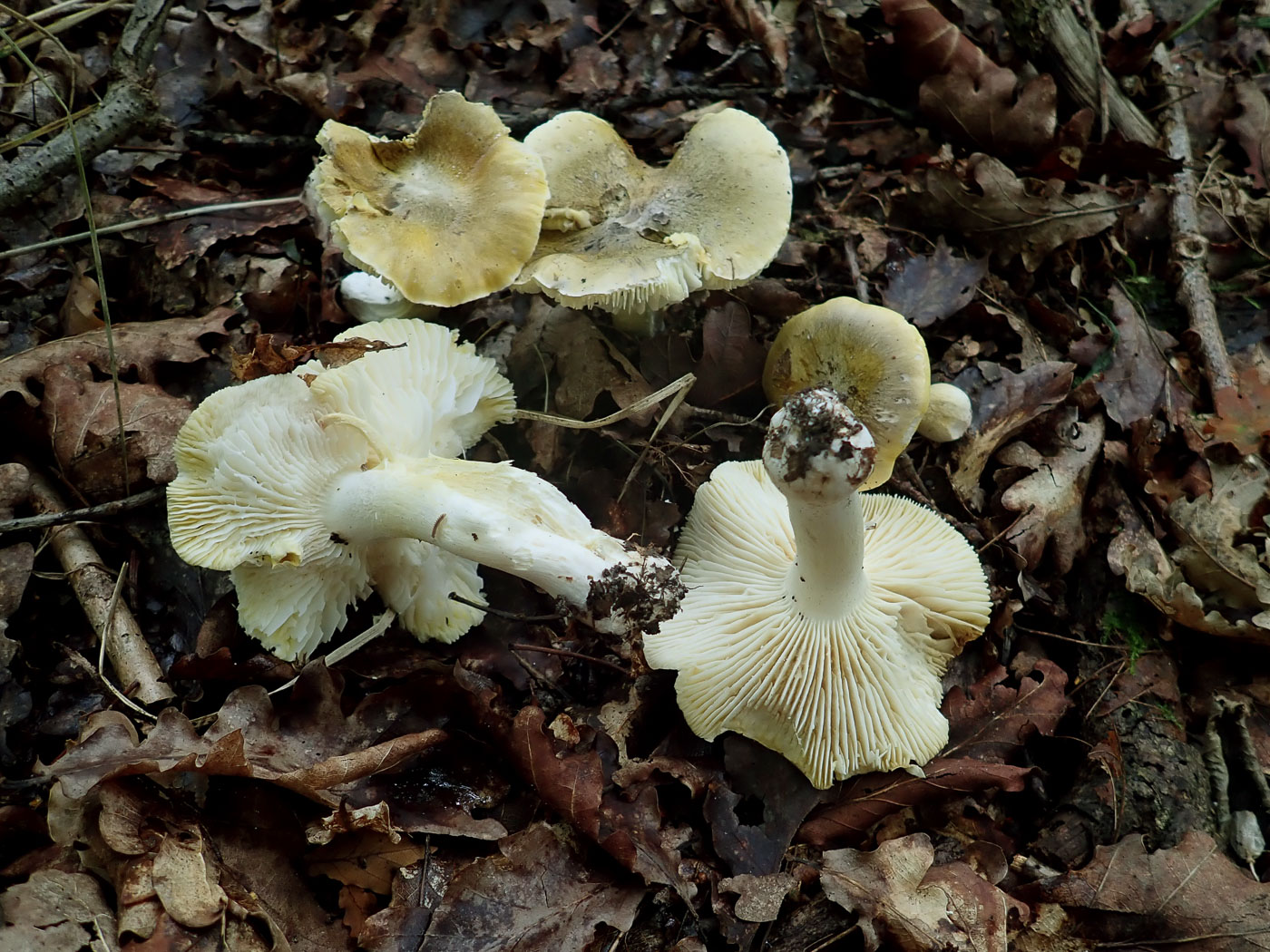 |
August 19th Tricholoma sejunctum (Deceiving Knight)
Beside a muddy ride in Rushbeds Wood Penny came across a large patch of these quite unusual Knights under Oak. They were, however, somewhat past their best, also quite faded from their exposed position, but their fibrillose surface and unusual greenish colour was still visible on a couple of caps though the greenish droplet markings visible on the central cap margin are not mentioned in descriptions. The yellow staining on the upturned stem is a further character of the species which has a farinaceous smell. This was new to the site and we have one previous image in Finds: 2022 October 21st. Photo 2 was found by Penny in Bernwood Forest on August 30th, also under Oak, and shows a fresher collection with more typical coloured caps.
|
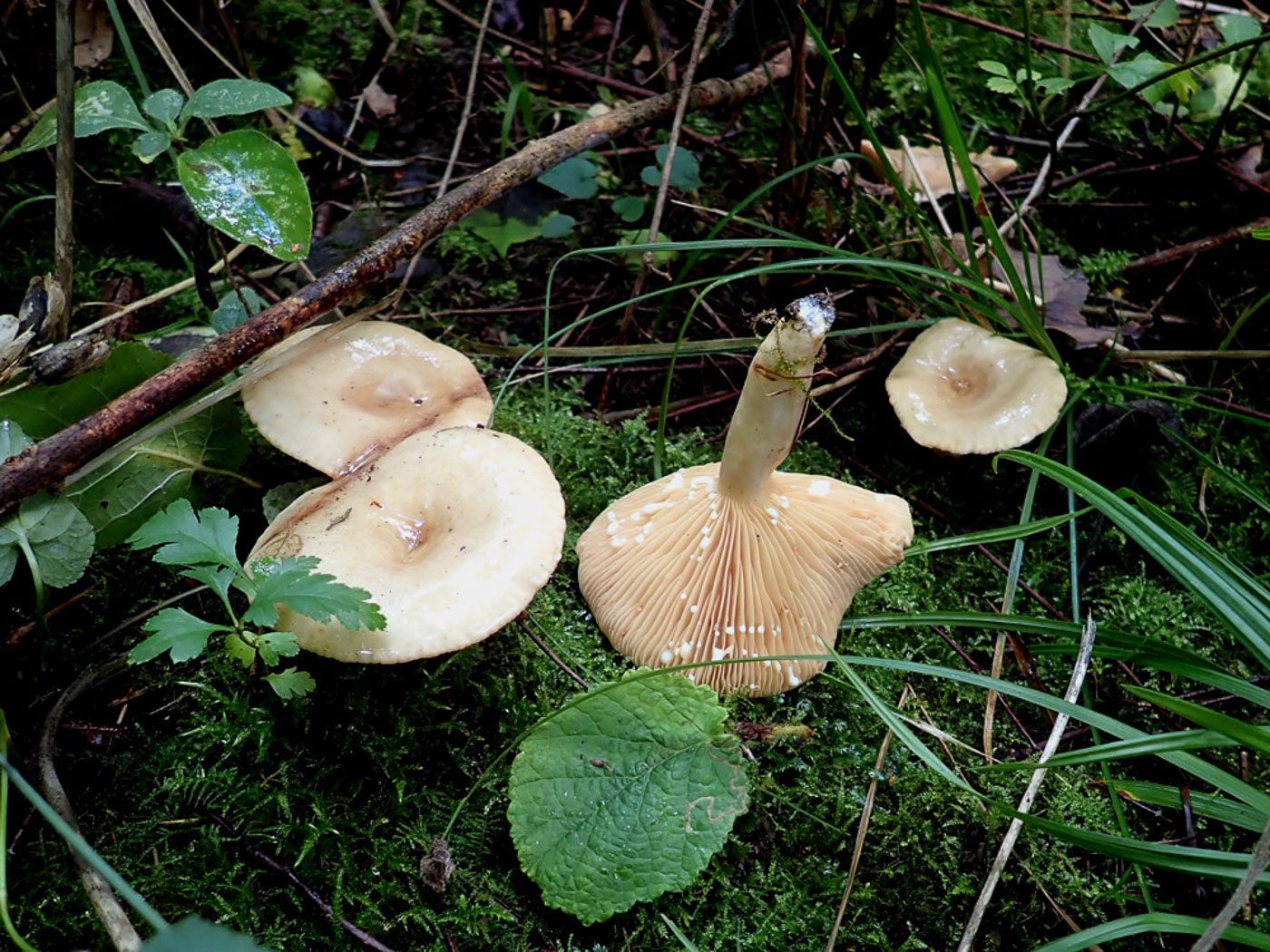 |
August 19th Lactarius pyrogalus (Fiery Milkcap)
Rushbeds Wood has abundant Hazel along the rides so Penny was not surprised to find this species (one which is host specific to Hazel) in good numbers in several place today. The species has a pale buff sticky cap (especially after rain) and quite widely spaced pinkish buff gills almost reminiscent of the group of Milkcaps in which the milk stains the gills pink as it slowly dries. However, the abundant milk in this species goes if anything greyish green and not pink, but is notable in being burning hot on the tongue - hence its common name. See also in Finds 2020 September 10th.
|
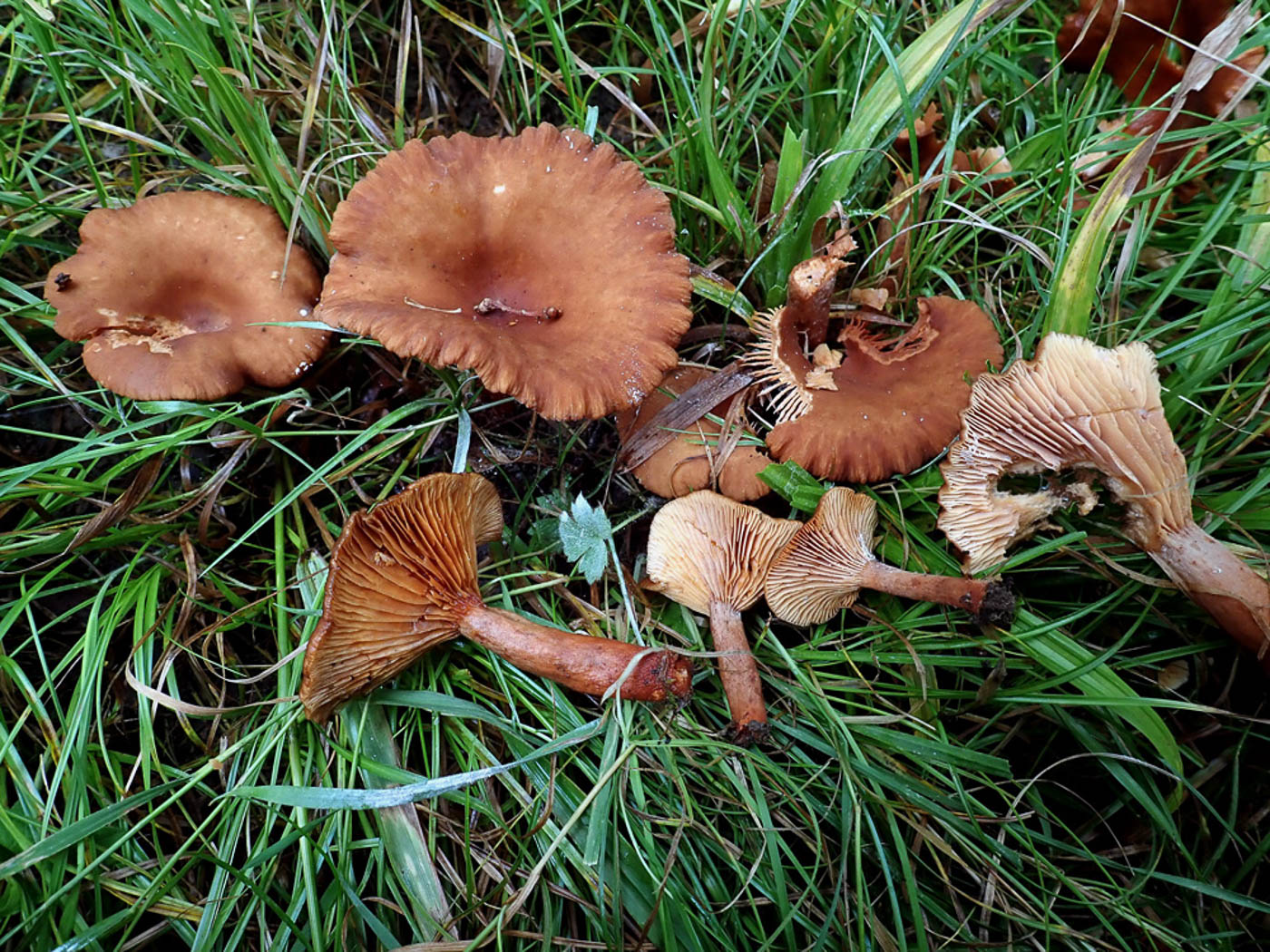 |
August 19th Lactarius camphoratus (Curry Milkcap)
In a grassy ride in Rushbeds Wood Penny noticed this sizeable patch of Milkcaps under Oak and Hazel. Though none of the specimens would produce enough milk for a photo there were characters here which helped with the ID: Firstly the brown stem with reddish tints, secondly the tendency for the caps to form a funnel shape with gills sloping upwards (even in the two immature fruitbodies at the front), thirdly the 'fluting' developing around the margin in the older fruitbodies, but most significantly the smell of curry (which was not as strong as sometimes here but still noticeable). This is an occasional species, possibly decreasing in our area - we don't often come across it now, and is a first for Finds and for the site.
|
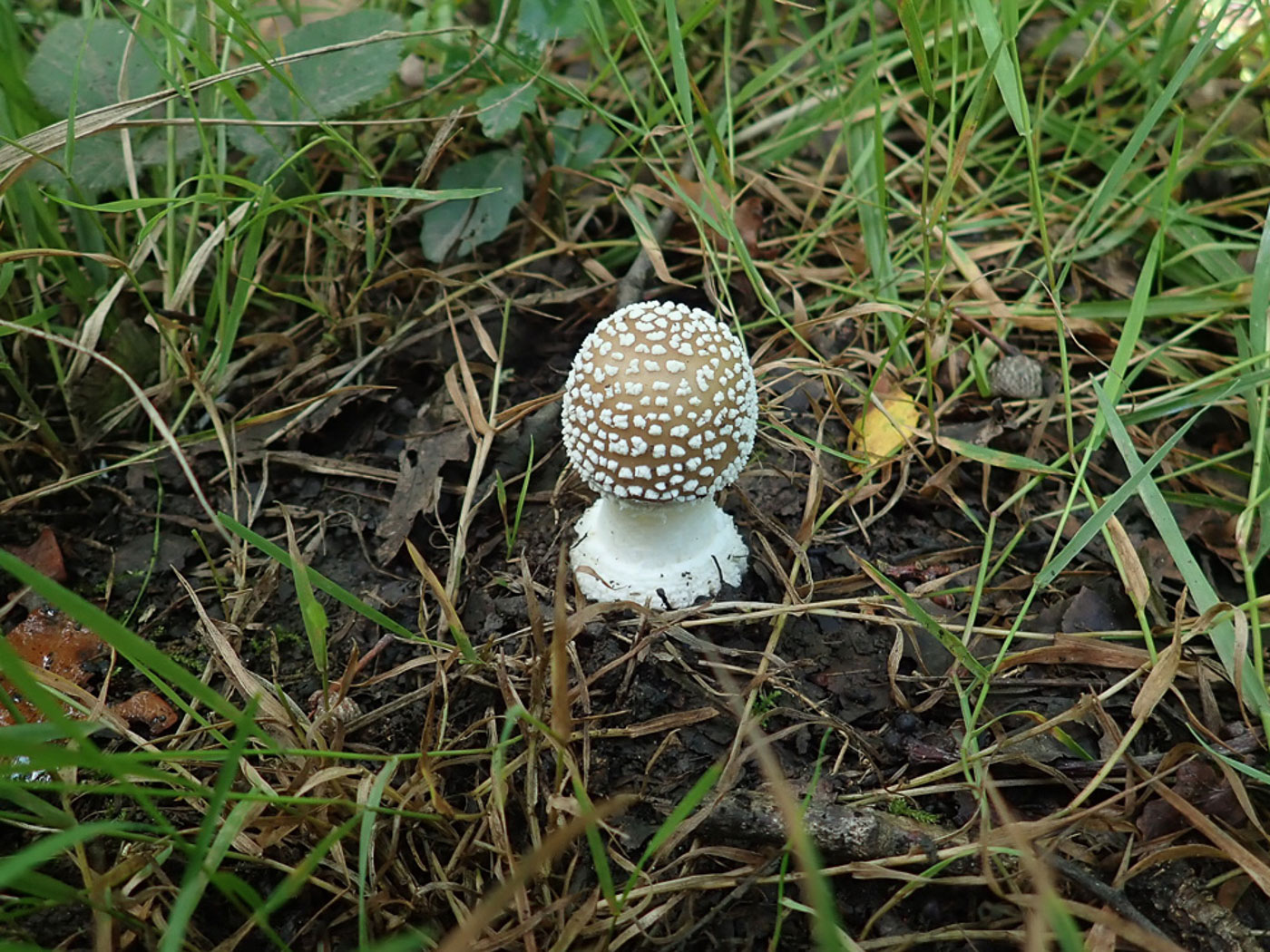 |
August 19th Amanita pantherina (Panthercap)
In Rushbeds Wood in a grassy path edge under Oak this small button was just emerging, its perfect regular white markings indicating the likelihood that it was this species rather than A. excelsa v. spissa - often mistaken for it. Even at this stage the volva appeared more formed and distinct than in that species, and at home Penny broke the button open to check for the striation markings above the ring on the stem - imprinted even at this stage by the adjacent gills in that species but missing in A. pantherina. They were missing. This is a useful way to split these two species if in doubt. See the Masterlist for further images.
|
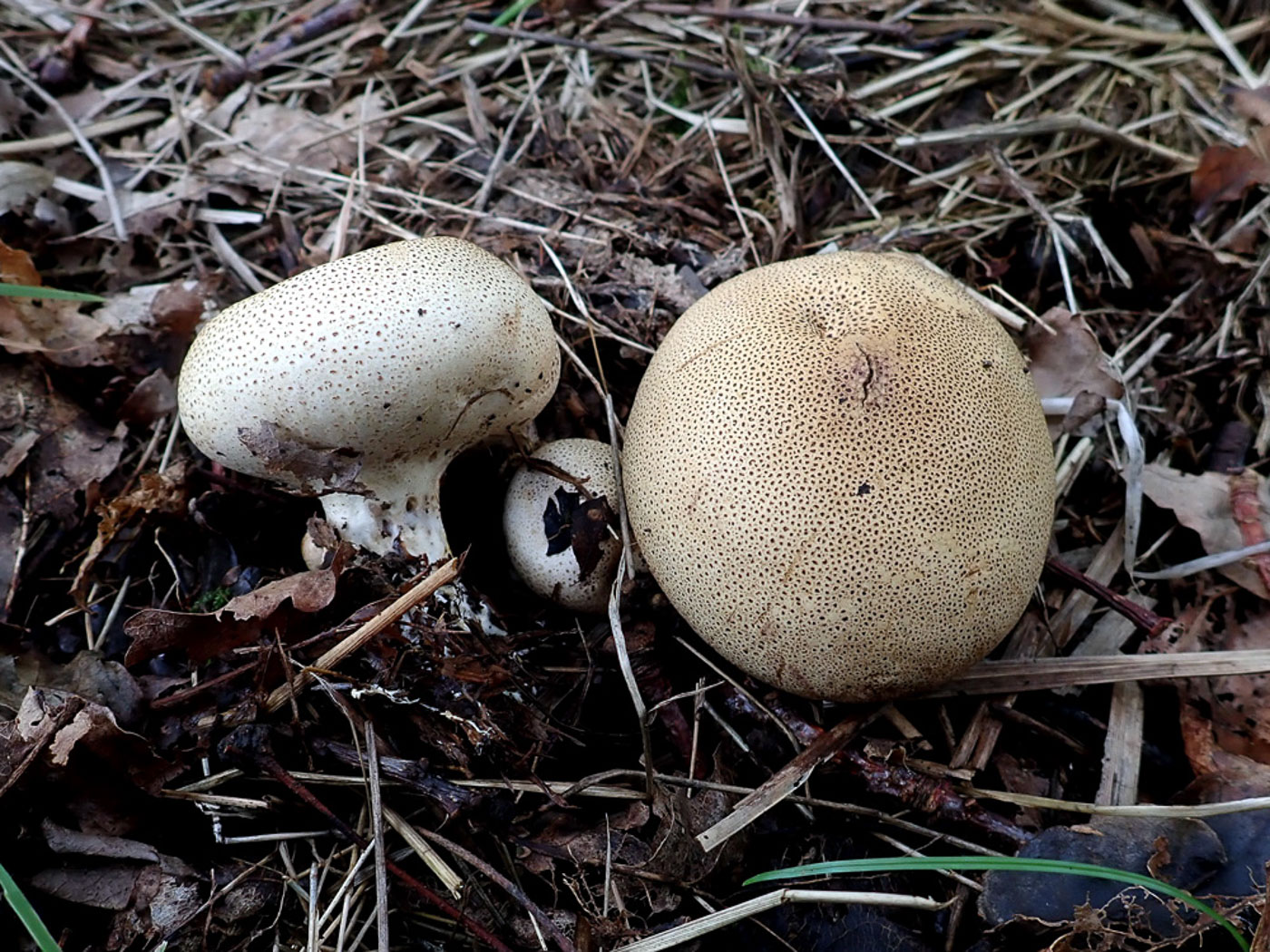
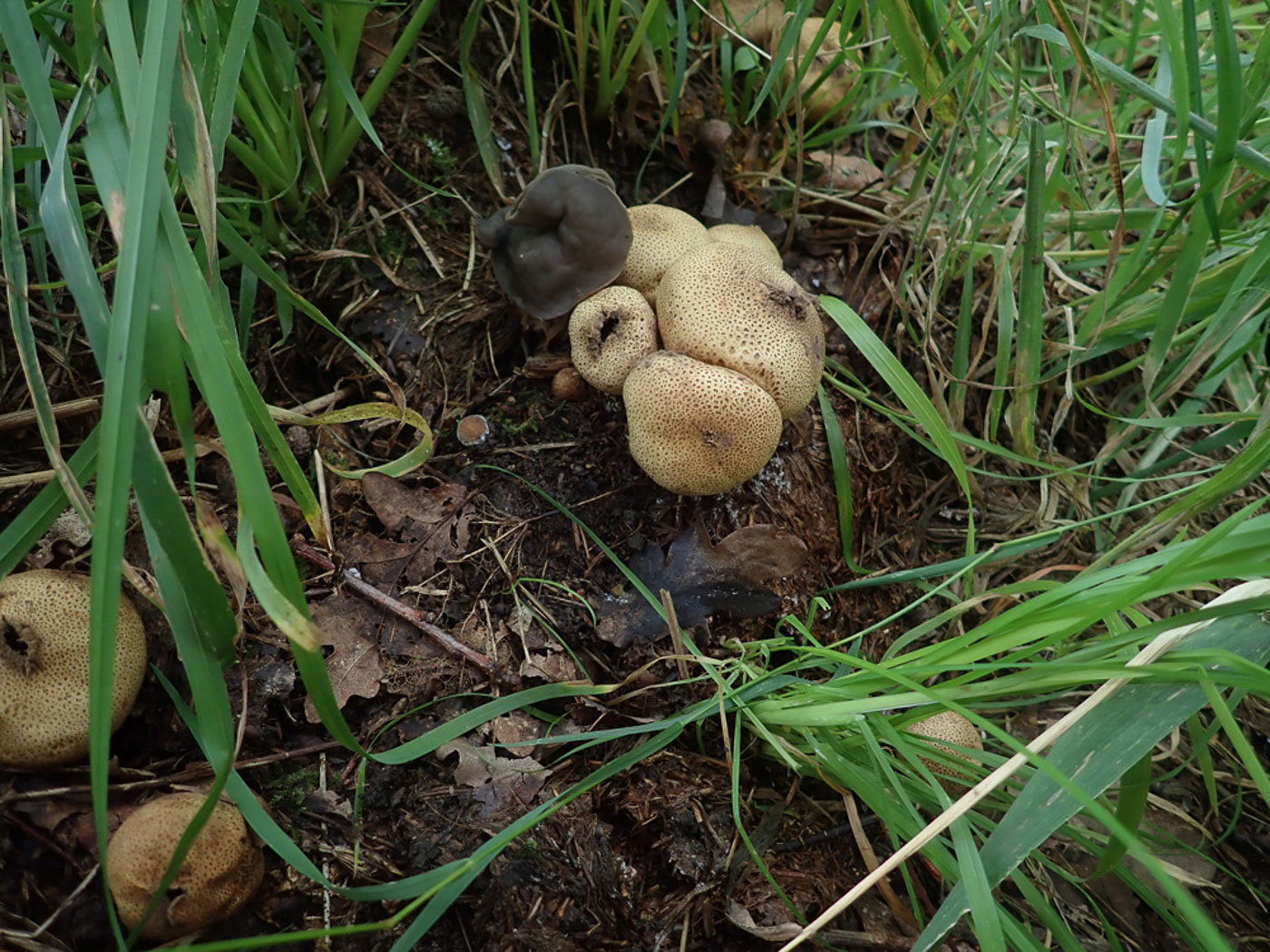 |
August 19th Scleroderma areolatum (Leopard Earthball)
In Rushbeds Wood under Oak on a pile of rotting vegetation - one which Penny regularly checks when here - she found good numbers of this Earthball in all stages of development. Not nearly as common as S. verrucosum though often confused with it, she was confident from the distinct and consistent markings of her iD but nevertheless checked the spore ornamentation to confirm. On clearing away the grass to take photo 2 she noticed the dark form of Helvella lacunosa lurking adjacent! See the Masterlist for further images.
|
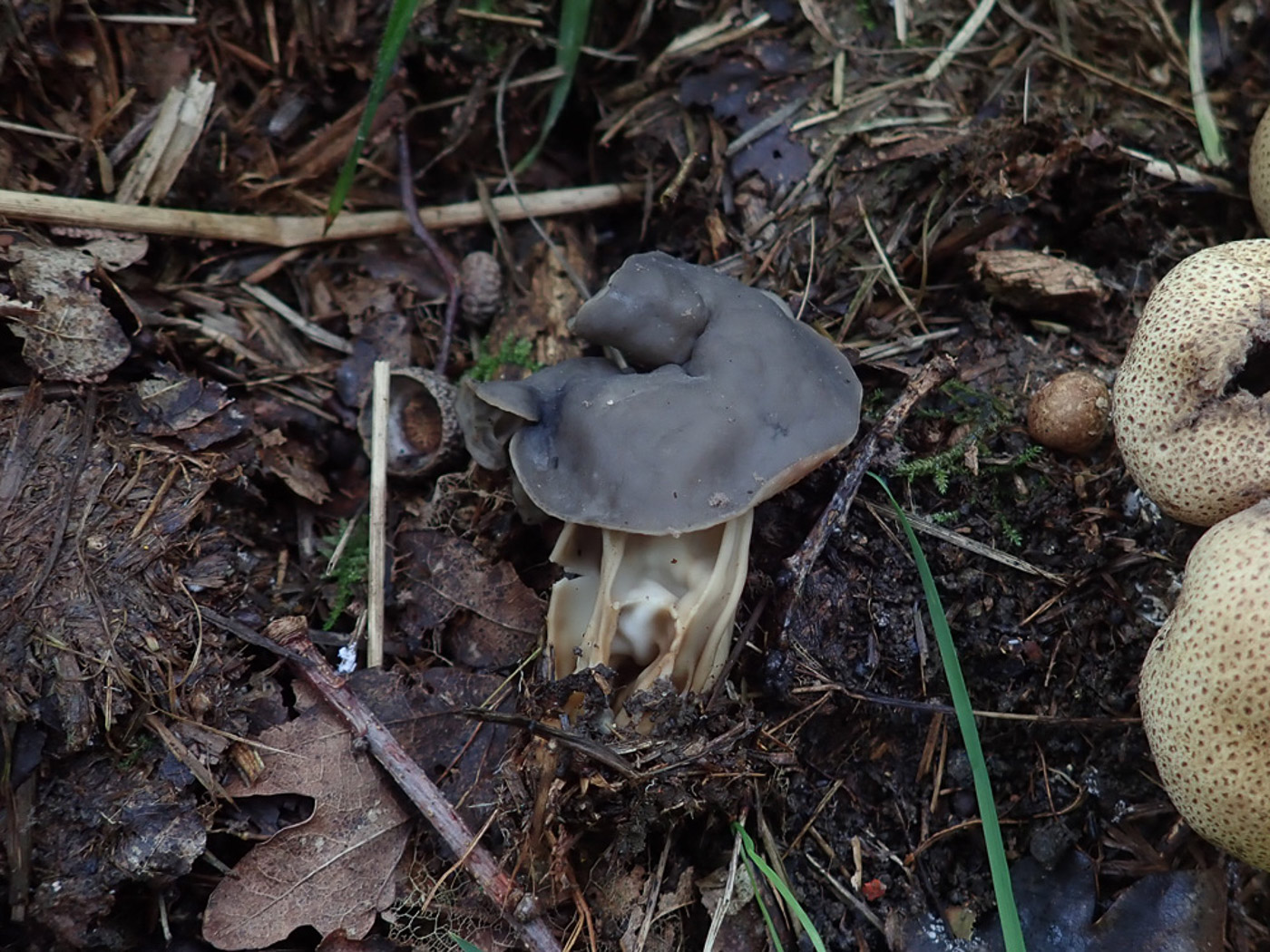 |
August 19th Helvella lacunosa (Elfin Saddle)
In Rushbeds Wood under Oak on a pile of rotting vegetation Penny spotted this singleton lurking amongst the collection of Scleroderma areolatum and but for the presence of that species would probably have missed it! (See photo 2 of the entry above.) This species can hardly be mistaken for anything else with its markedly ridged stem and dark 'saddle'. It occurs in mixed woodland litter quite commonly though is generally well camouflaged and easy to miss. See the Masterlist for further images.
|
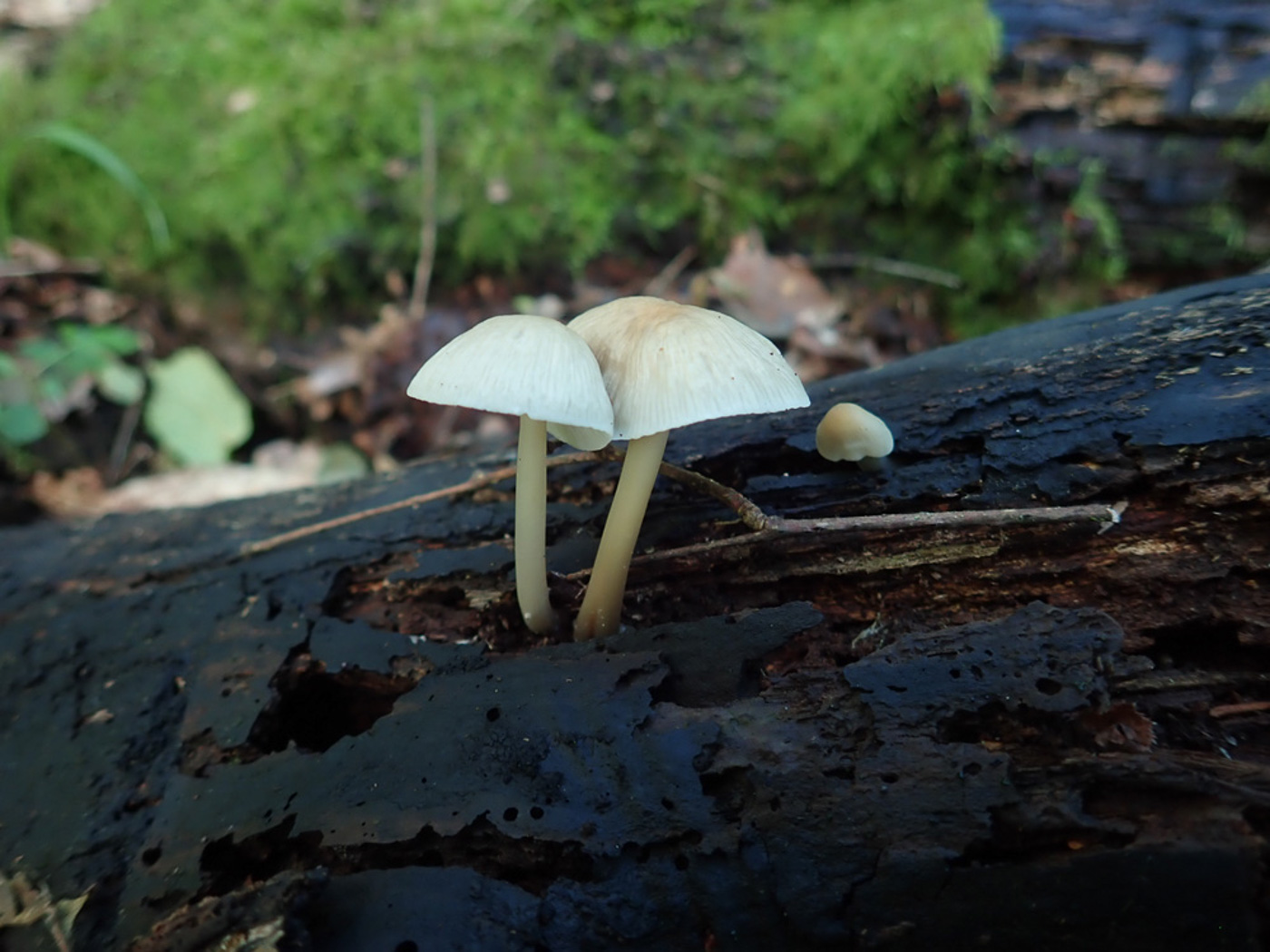
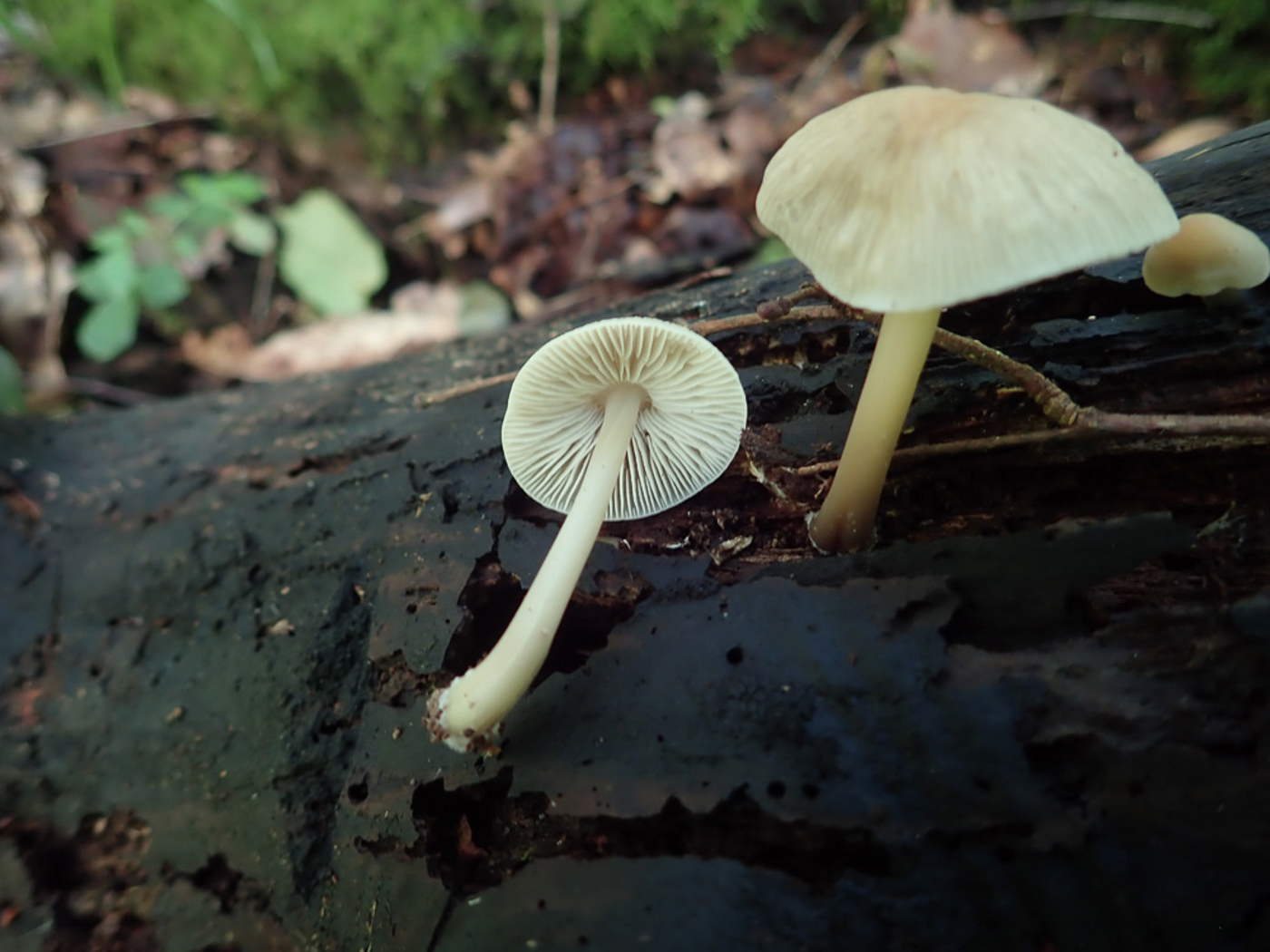 |
August 19th Mycena galericulata (Common Bonnet)
In a deciduous log pile at Rushbeds Wood Penny saw this pair and, noting that they were deeply rooted into the wood, was able to identify them on sight. The genus generally seems to have been reluctant to join in the summer frenzy of early fruiting we've been experiencing but maybe is now on the move. See the Masterlist for a choice of further images.
|
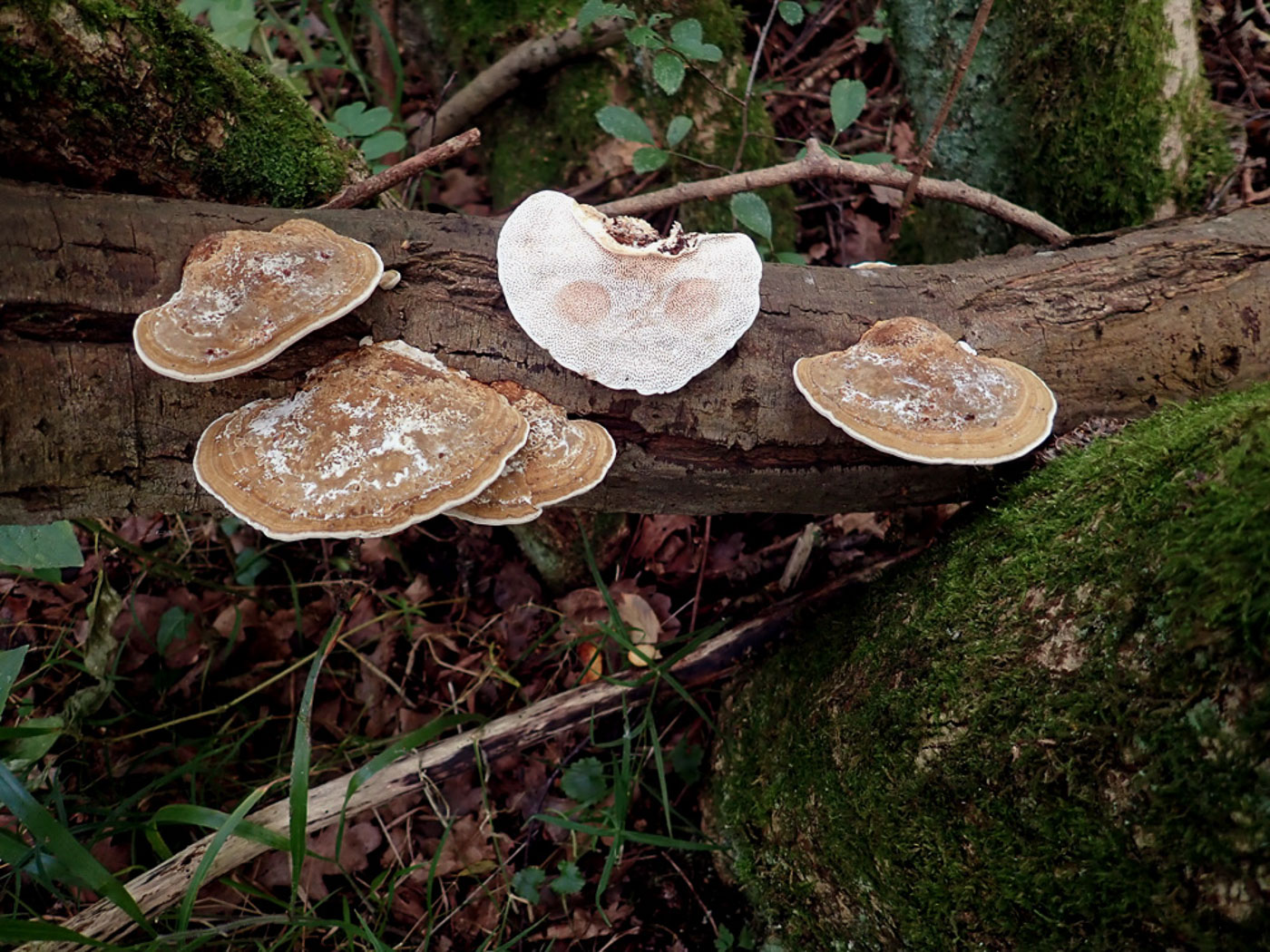 |
August 19th Daedaleopsis confragosa (Blushing Bracket)
At Rushbeds on fallen deciduous wood Penny saw plenty of fresh specimens of this very common bracket - often on Birch or Willow. This is a hard semicircular bracket and easy to identify when the widely spaced pores are pale and moist enough for a thumb print (in this case both thumbs!) to turn instantly pink. Once dried and pale brown with no pink reaction the species can be harder to separate from others. See the Masterlist for a choice of further images.
|
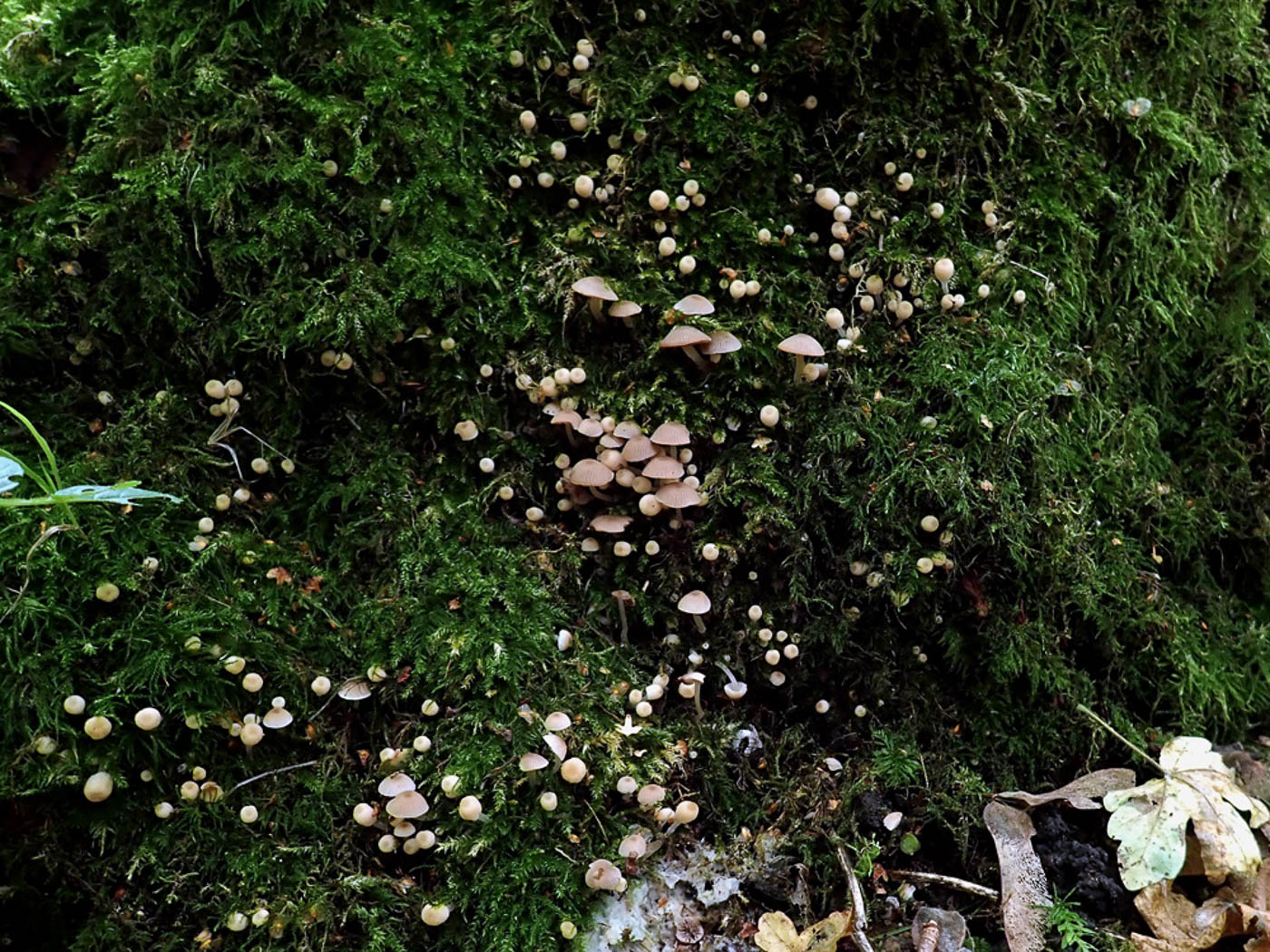
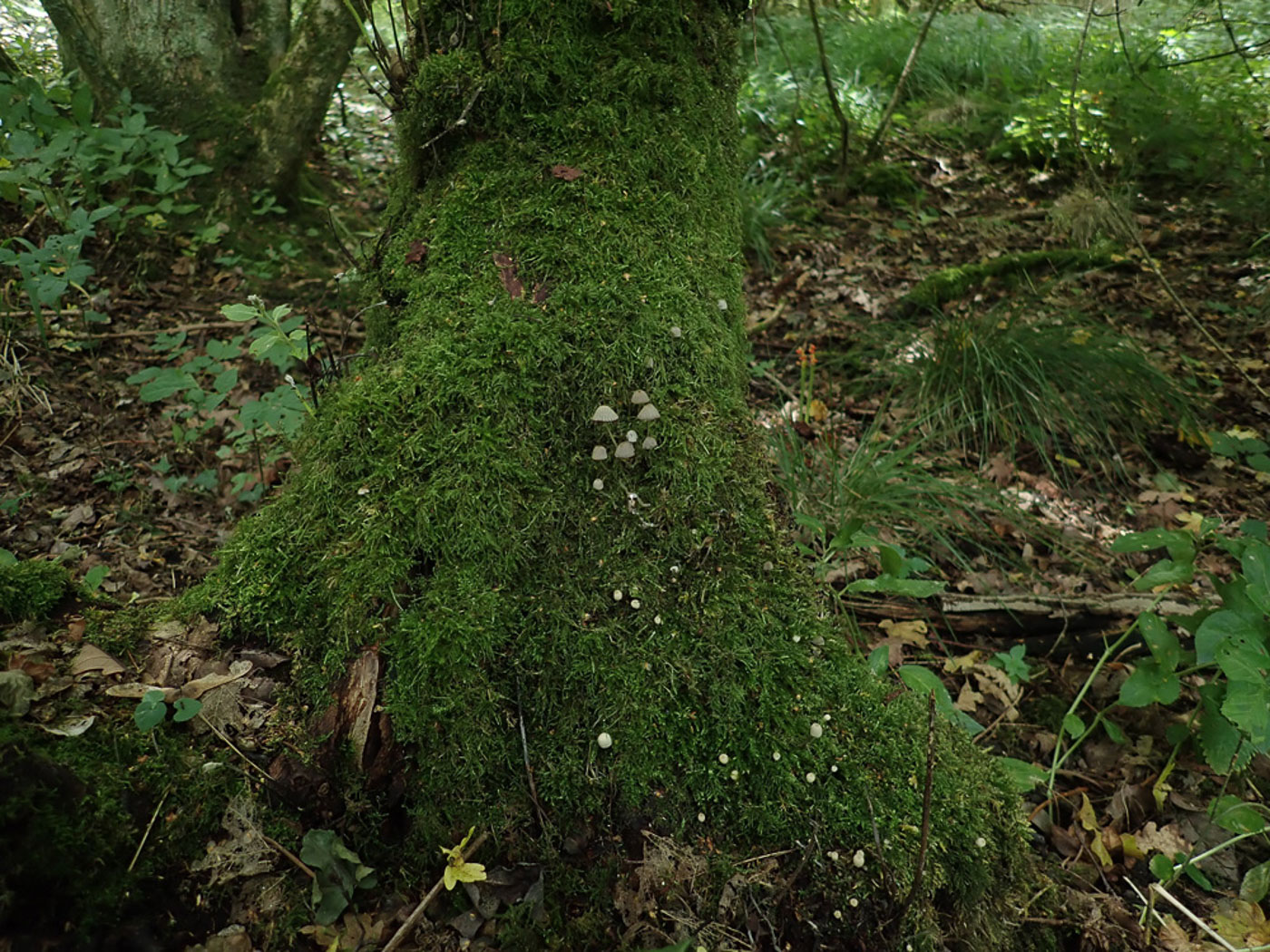
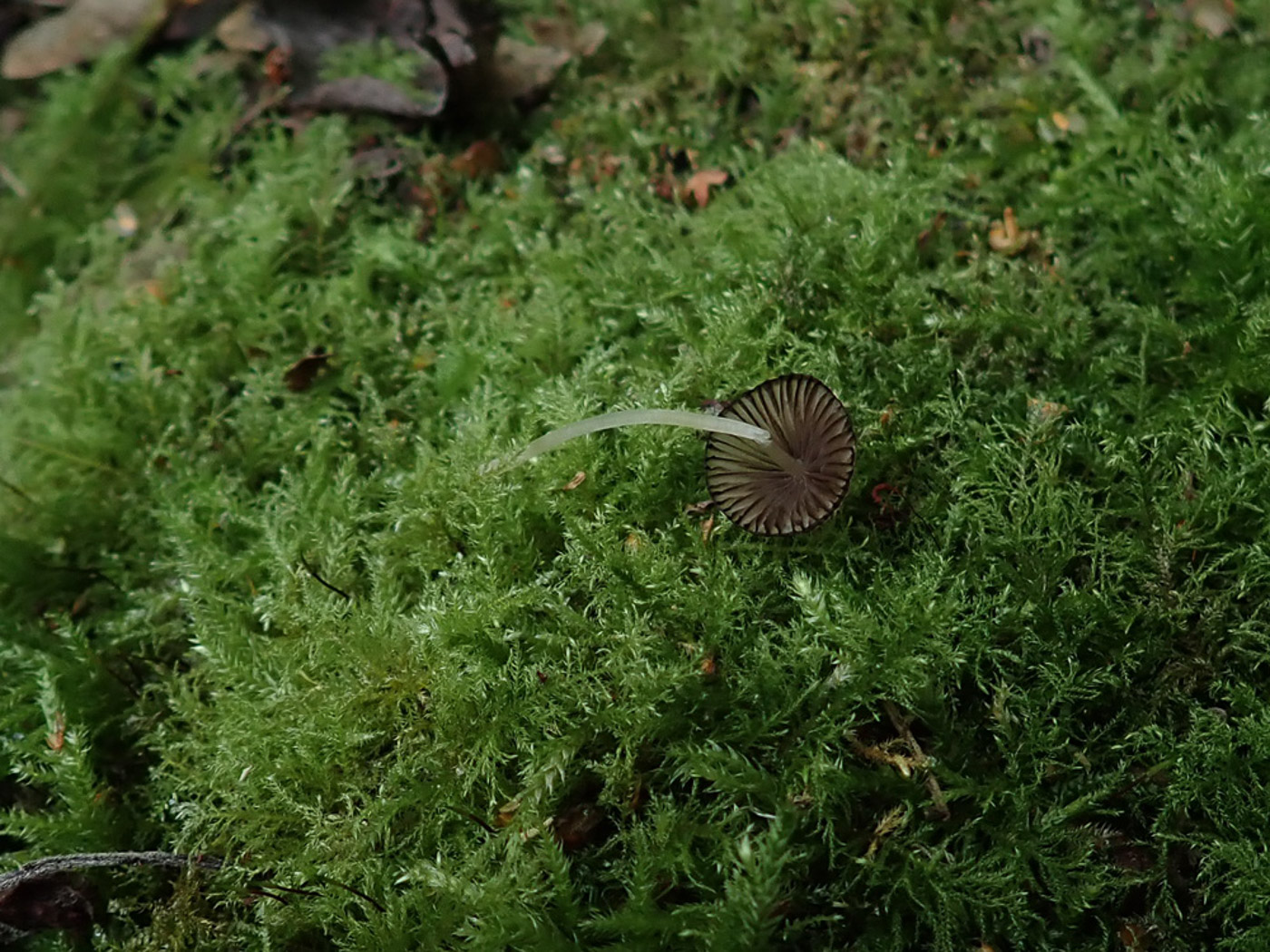 |
August 19th Coprinellus disseminatus (Fairy Inkcap) 
In Rushbeds Wood on a mossy old trunk Penny spotted a swarm of small mushrooms and, having had this species coming up in her Oxfordshire garden for weeks, was not surprised to find it here today. Photo 2 shows more on the other side of the trunk. She did, however, just wonder if it might be worth checking for the extremely similar but uncommon Psathyrella pygmaea - the two can grow together in mixed clumps like this but P. pygmaea has very different micro-characters. No such luck! She realised once at home because the specimens collected had already started to deliquesce! See the Masterlist for a choice of further images.
|
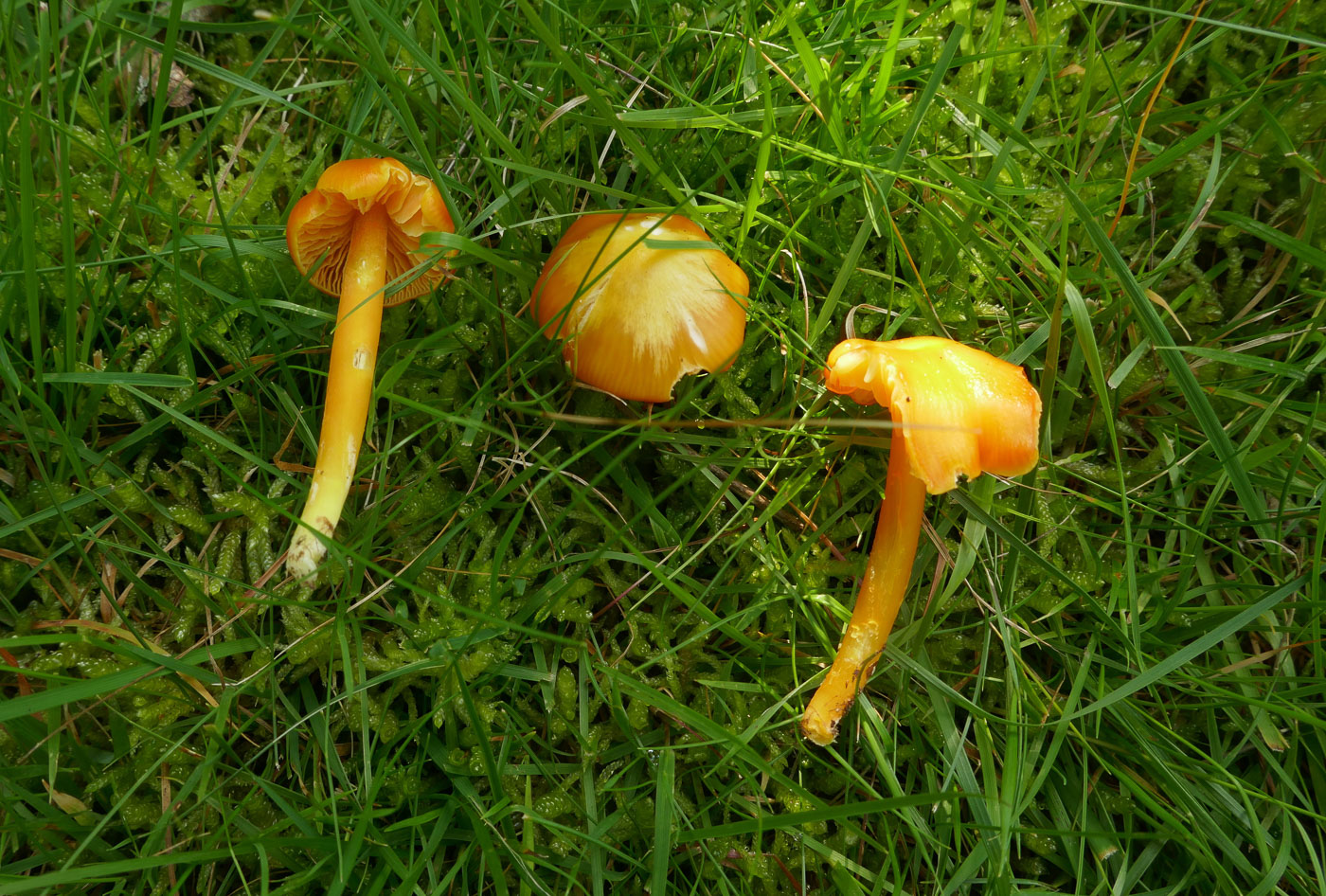 |
August 16th Hygrocybe chlorophana (Golden Waxcap) 
At Stampwell Farm Jackie Ewan came across these three in a grassy path edge. One of several yellow capped Waxcaps, both the stem and cap are greasy to sticky, it can get to a good size, and the spores are quite individually shaped - all clues to help with its ID. It's also probably the commonest with this colour cap though unusual to be fruiting in August (and even more unusual in May earlier this year!). See the Masterlist for a choice of other images.
|
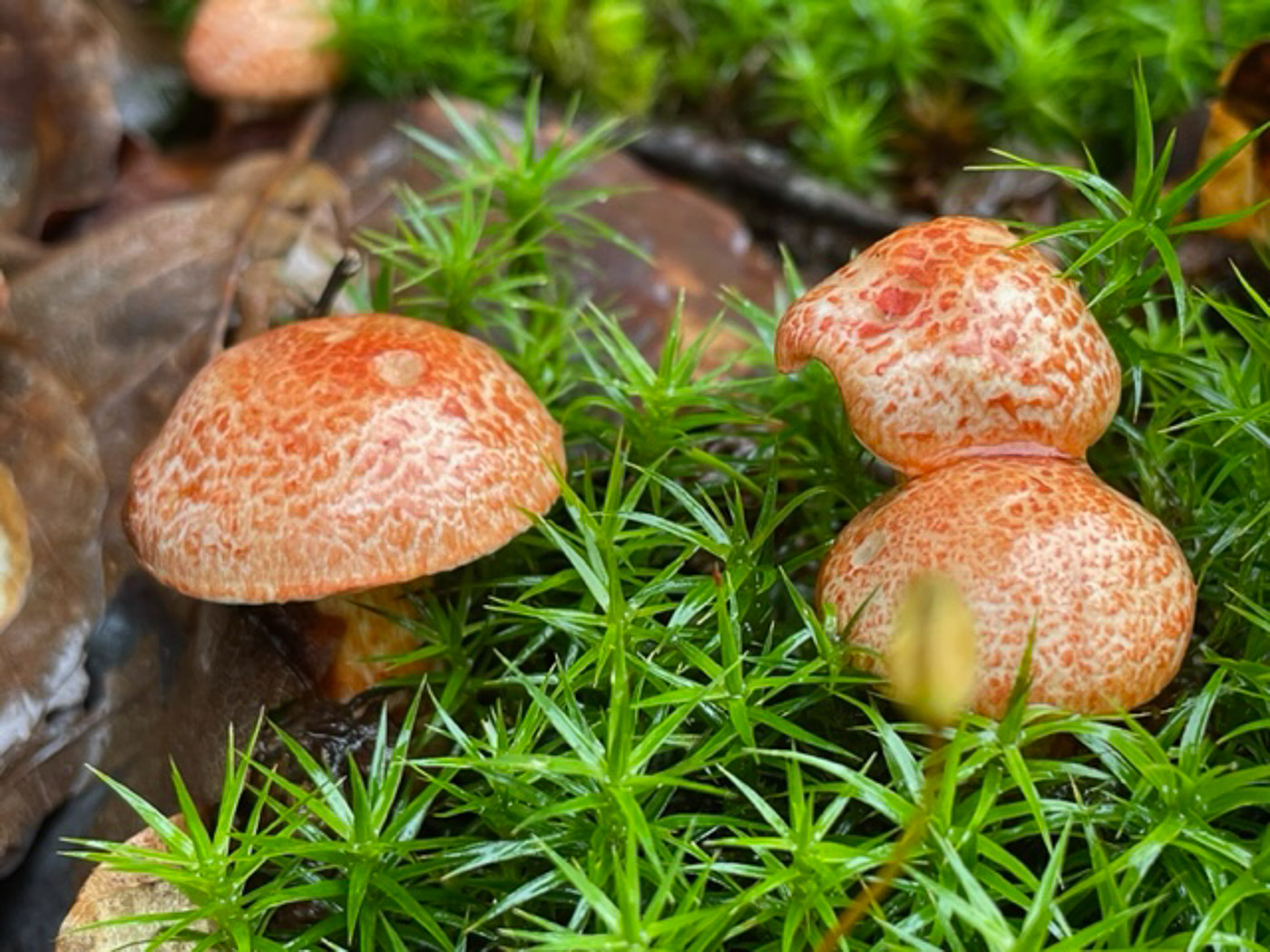
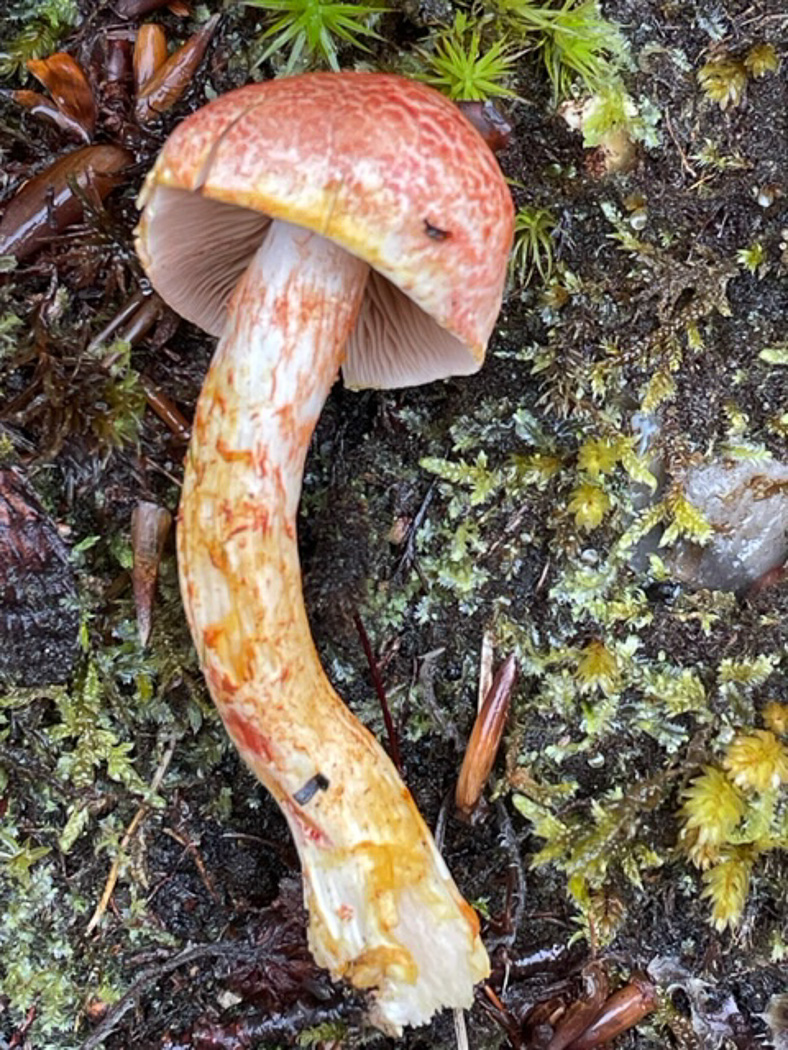
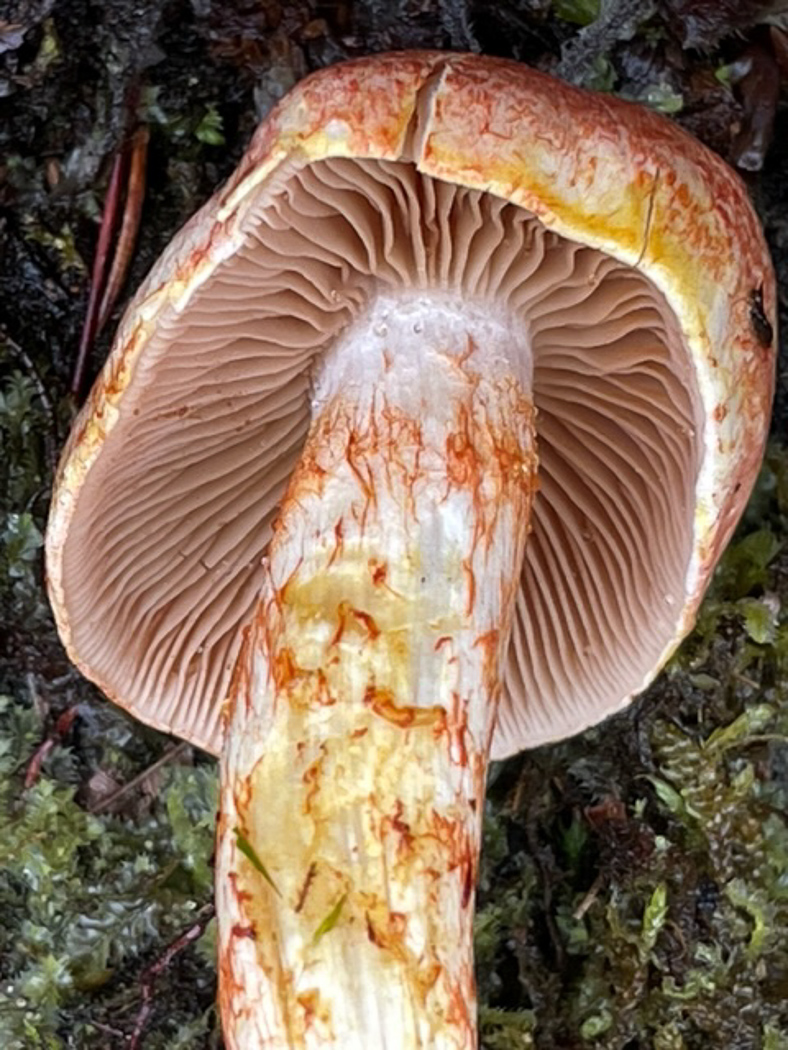 |
August 16th Cortinarius bolaris (Dappled Webcap)
In Lott's Wood under Beech Jackie Newcombe found these beauties, not rare but one of few Webcaps nameable with confidence in the field. The common name describes the cap texture aptly and for further confirmation the yellow staining where damaged or handled adds to the effect. See also in Finds 2020 October 22nd.
|
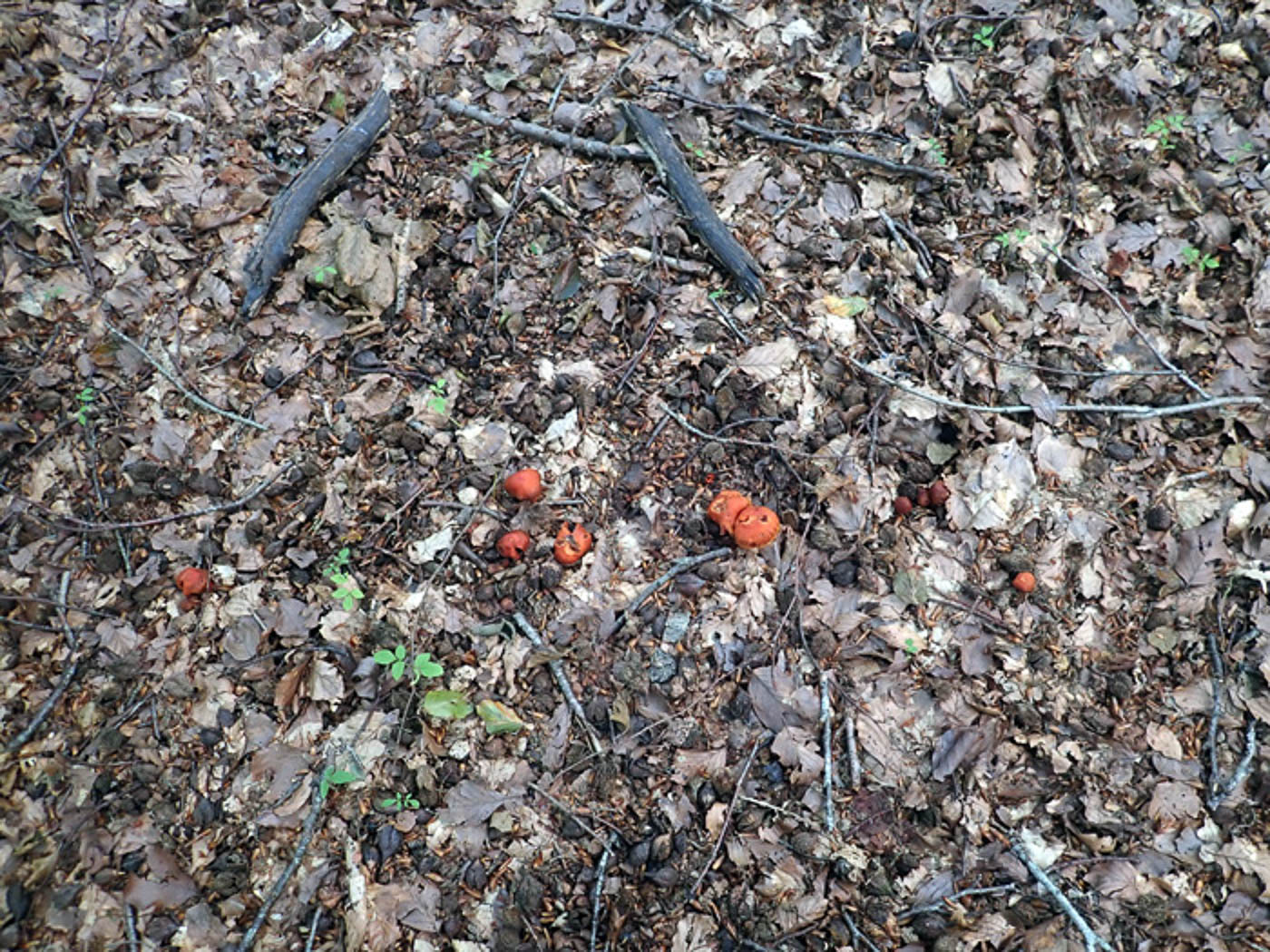
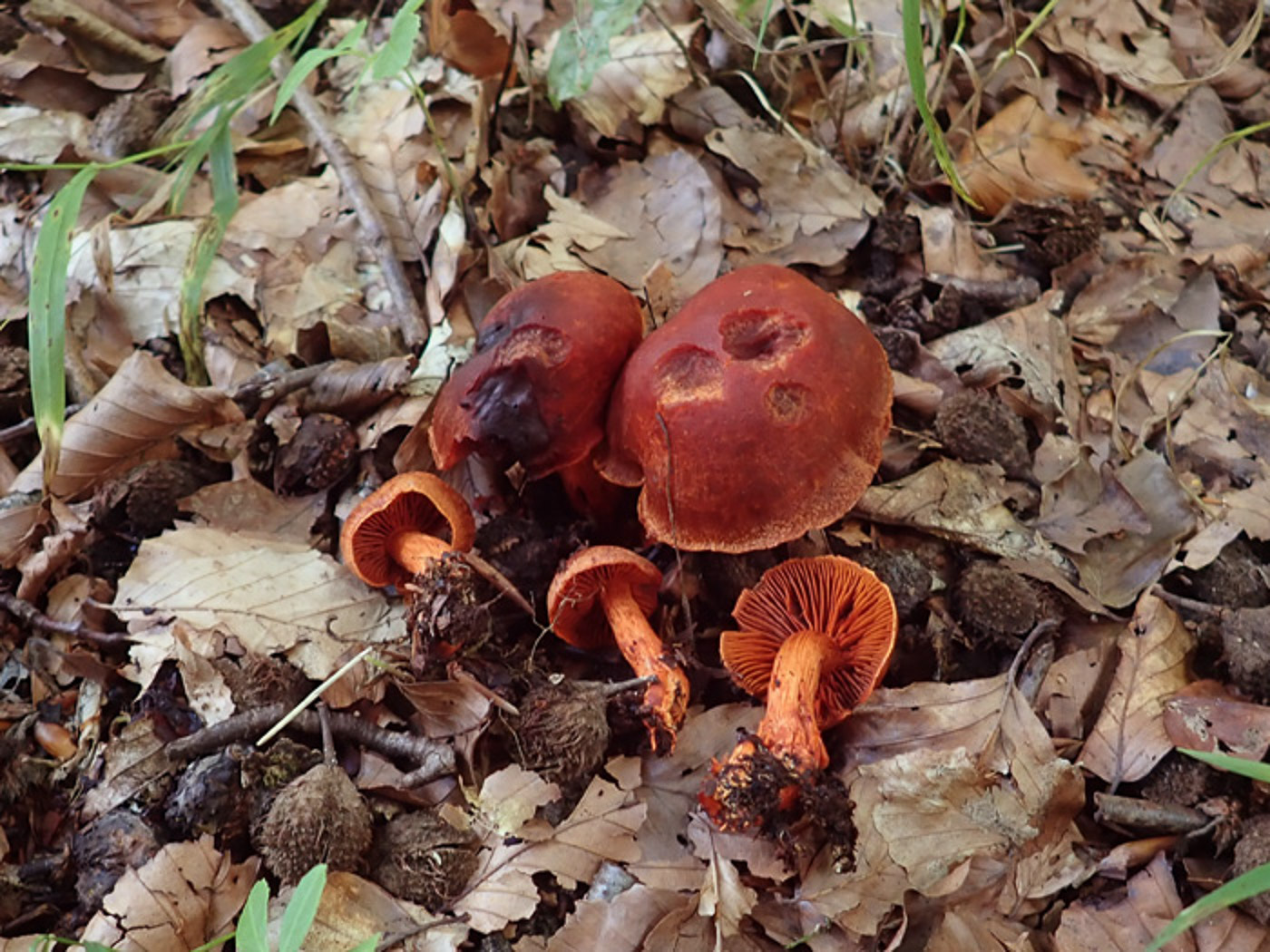 |
August 16th Cortinarius puniceus (Bloodred Webcap)
In Gussett's Wood Penny and Paul noticed these brightly coloured mushrooms standing out in the Beech litter and knew straight off that it was this species - the brilliant red cap and gills making it instantly recognisable. The DNA era has shown that the name C. sanguineus - by which we previously called this species - should apply only to the conifer lookalike and that the species we find in deciduous woods is different and now named C. puniceus. No doubt the common name given here will in time be amended to Crimson Webcap in accordance with the literal translation from the Latin.
|
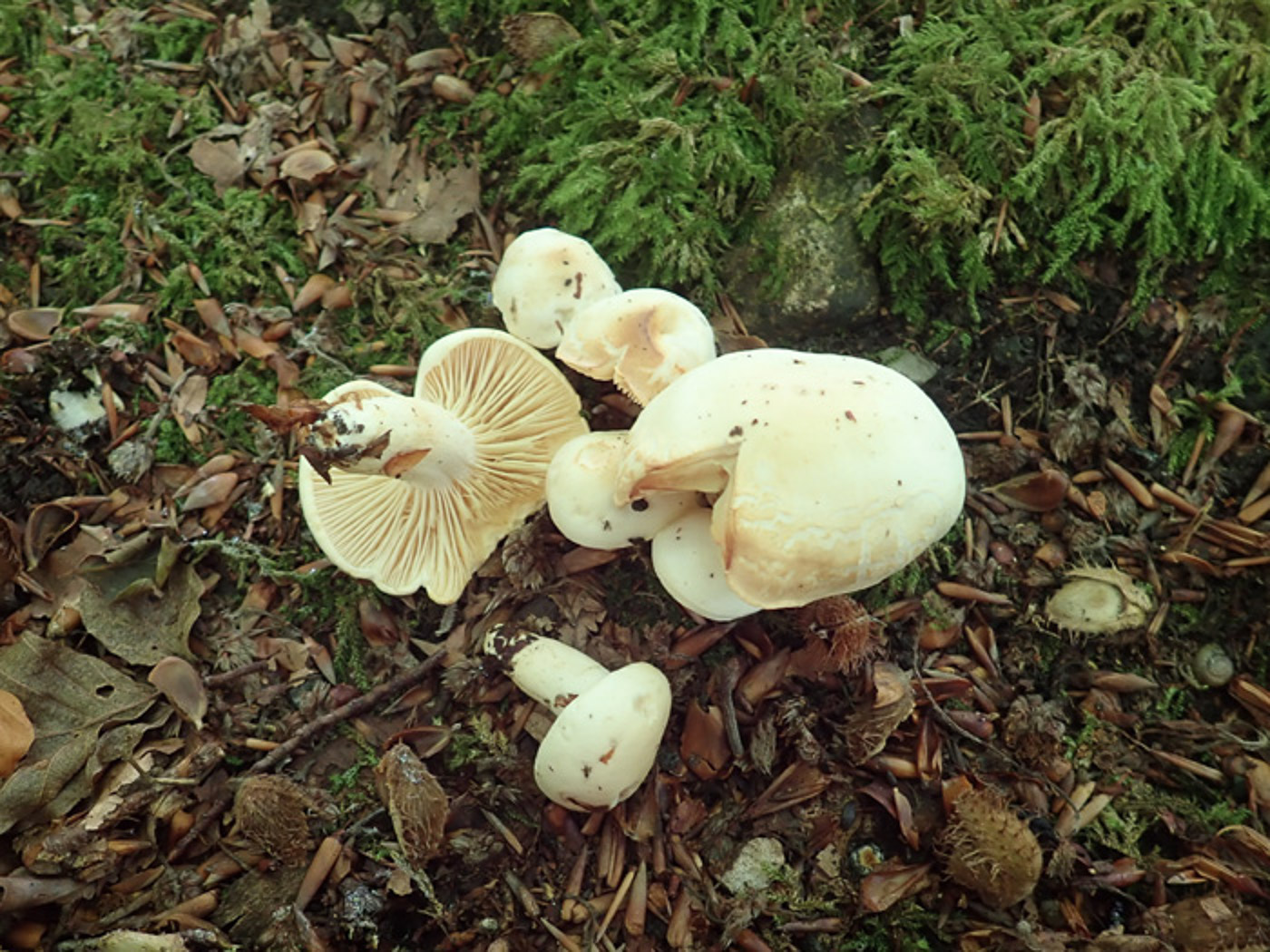
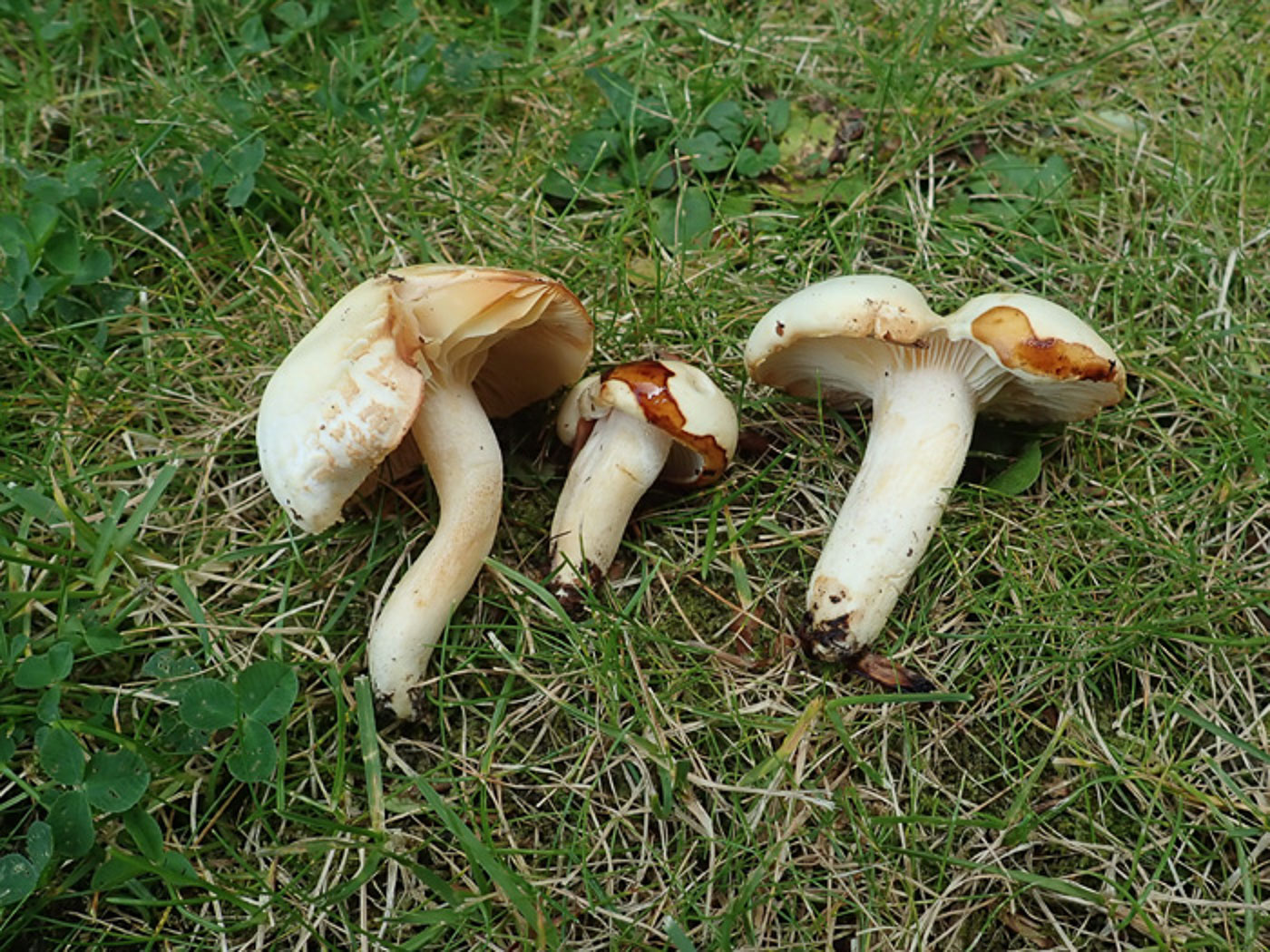 |
August 16th Hygrophorus discoxanthus (Yellowing Woodwax)
Under Beech in Gussett's Wood Penny and Paul found various examples of white Woodwax, one collection of which was H. eburneus (see under that species below under August 14th). The collection shown here, however, appeared different: less sticky, larger and just beginning to discolour with age. Penny assumed it was different but did not realise it was in fact H. discoxanthus until at home later when she placed a drop of KOH on the cap which turned it instantly rusty brown (photo 2). When immature this species can be identical with H. eburneus when the KOH test comes into its own. Both are quite common under Beech but usually fruit later in the autumn season. See also in Finds 2021 October 21st.
|
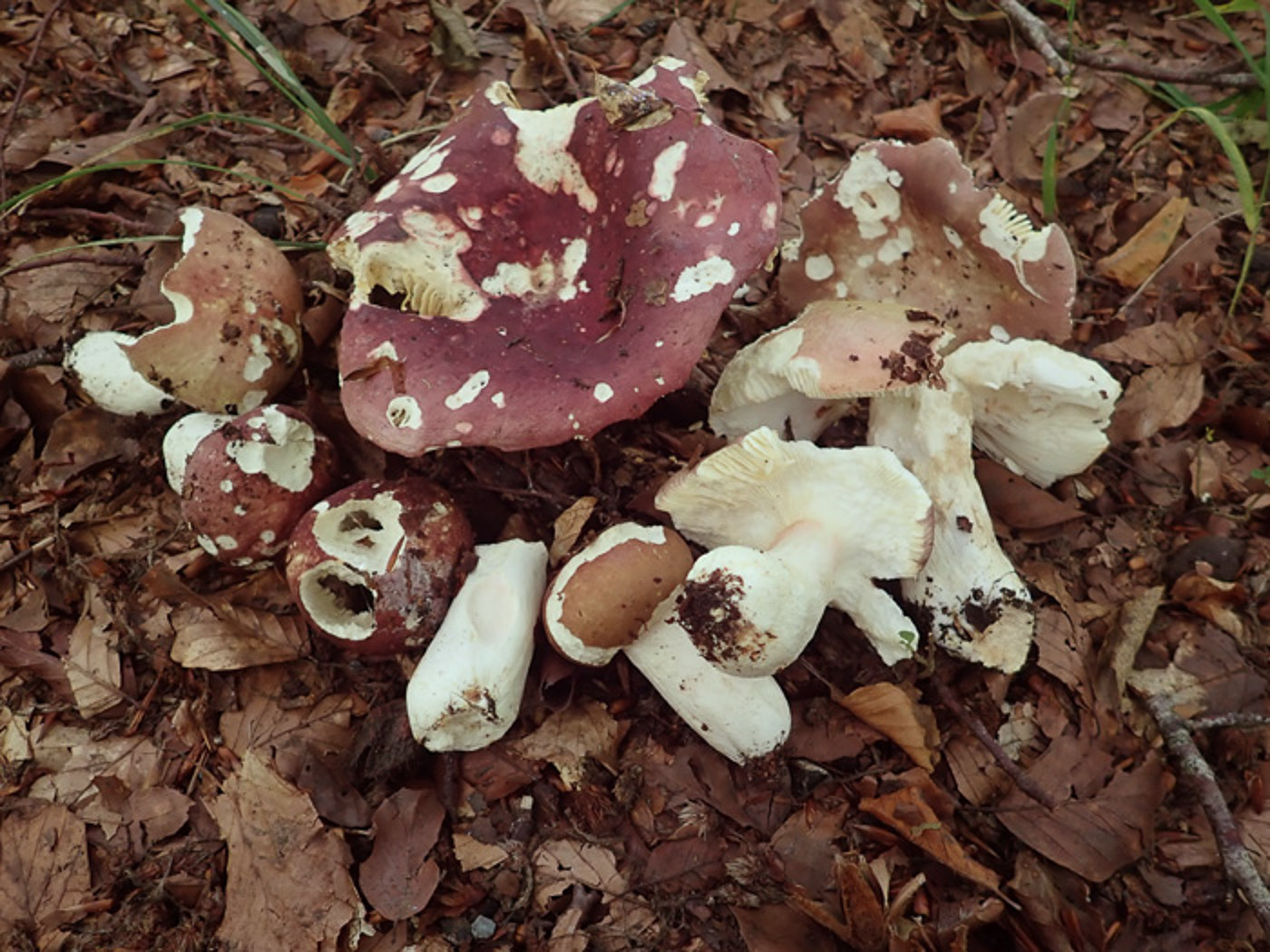 |
August 16th Russula olivacea (Olive Brittlegill)
Under Beech in Gussett's Wood Penny and Paul found this species in various places though all were somewhat damaged, eaten or past their best. The collection does at least show the range of cap colour which is by no means just 'olive' as its common name might suggest. This is a chunky Brittlegill - the largest cap here was 11 cm across - and only occurs under Beech, and despite its varied appearance it has one revealing field character: its solid white stem flushes a subtle shade of pink just under the apex, sometimes further down as well. This can just be seen here in the lowest RH upturned specimen but is not easy to capture on camera. See also in Finds 2020 September 27th and 2020 October 7th.
|
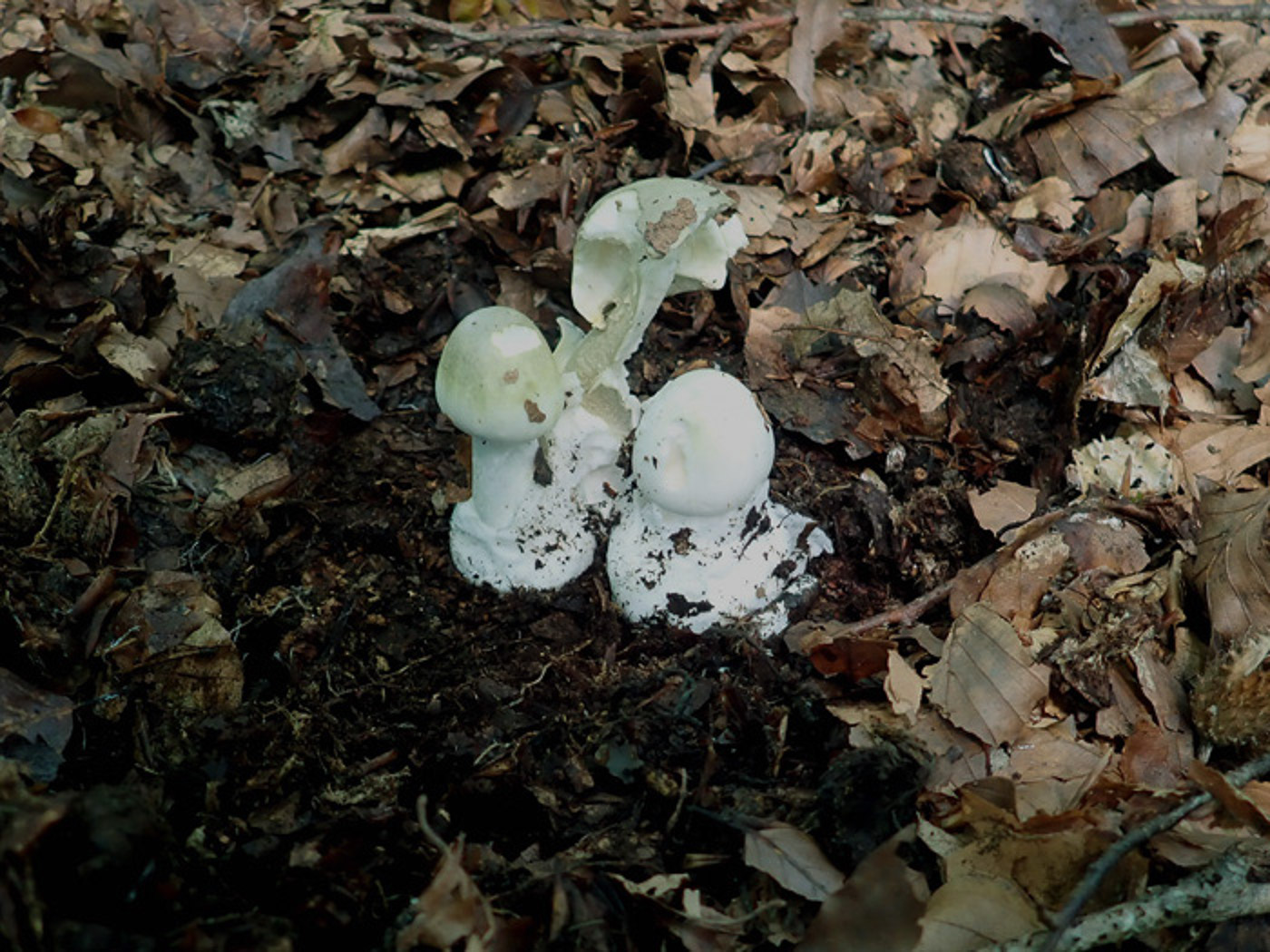
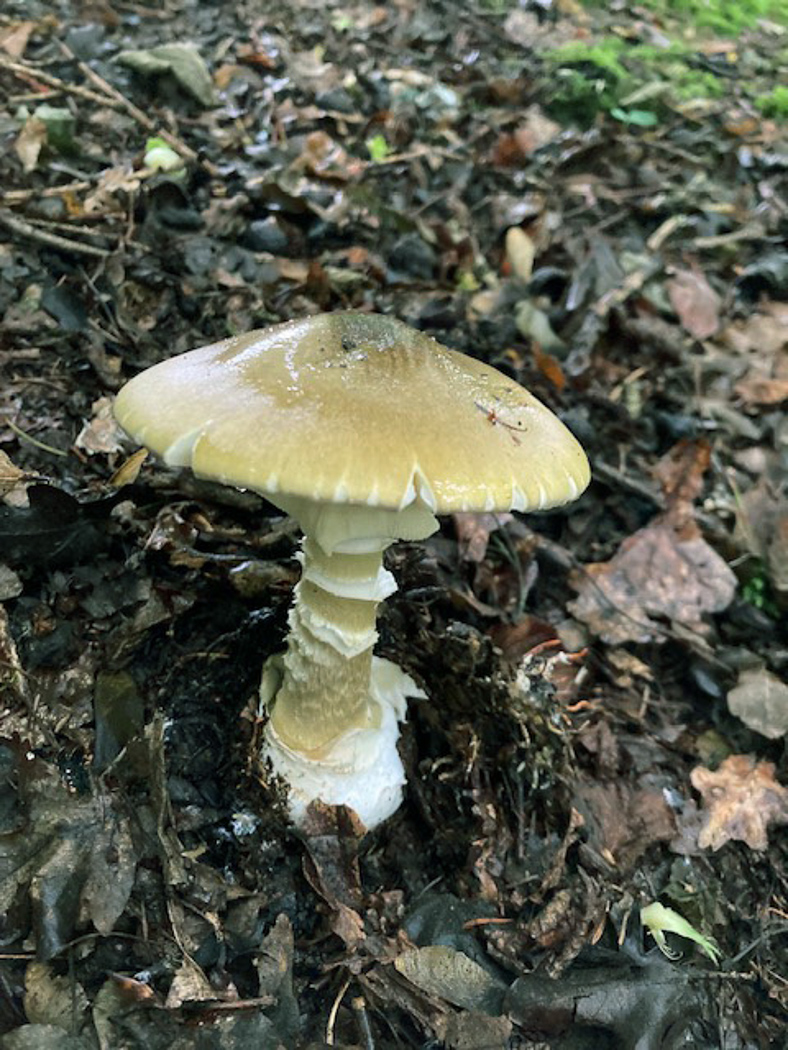
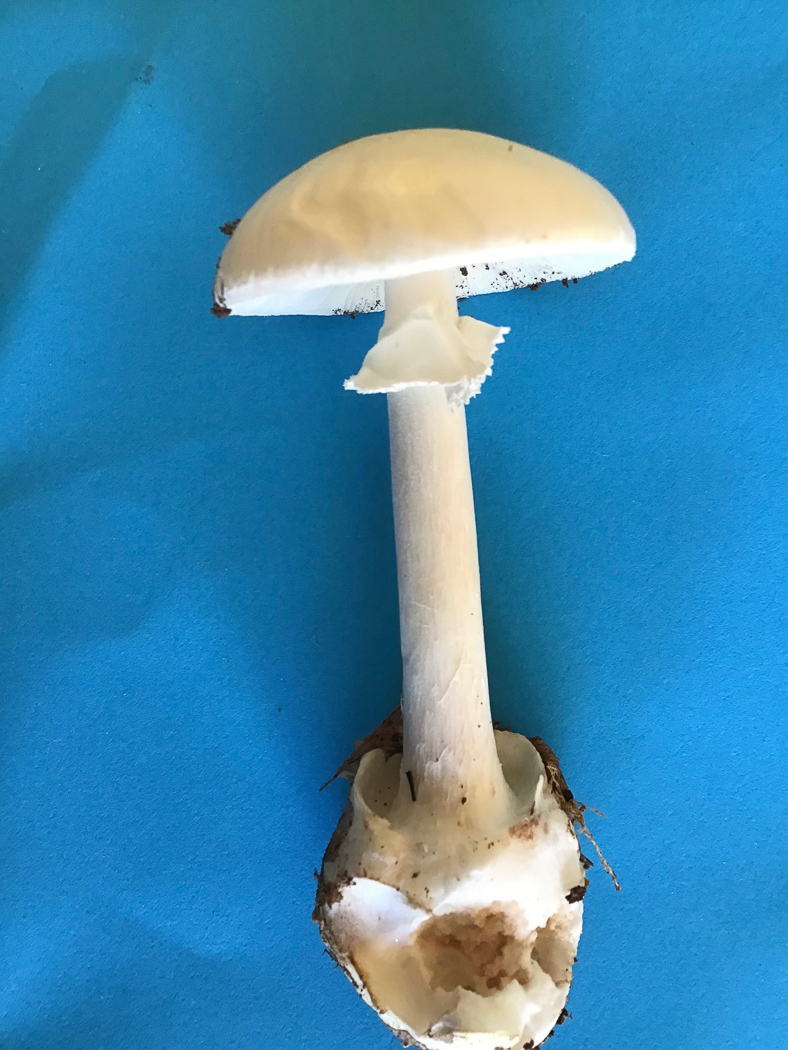 |
August 16th Amanita phalloides and var. alba (Deathcap)
In Gussett's Wood Penny and Paul found this immature bunch of Deathcaps just emerging under Beech and looking very pale but with enough green tinge and a suitably large volva to make the ID obvious. The following day Penny received photo 2 from Jackie Newcombe found in Lotts Wood, the same species but not showing the typical greenish tinge owing to Jackie's phone struggling with the poor light! She assured me that it was in reality much greener and the volva shape is spot on to confirm it. Then four days later Greg Douglas sent in photo 3 found at Hockeridge Wood which is surely this same species but the much rarer var. alba. To check that it wasn't the white and equally dangerously toxic A. virosa - very rare in the county - he applied a drop of KOH to the cap which instead of turning golden yellow remained unchanged, thus disproving that possibility. This was a nice find though sadly is not recognised as a separate species in its own right."
|
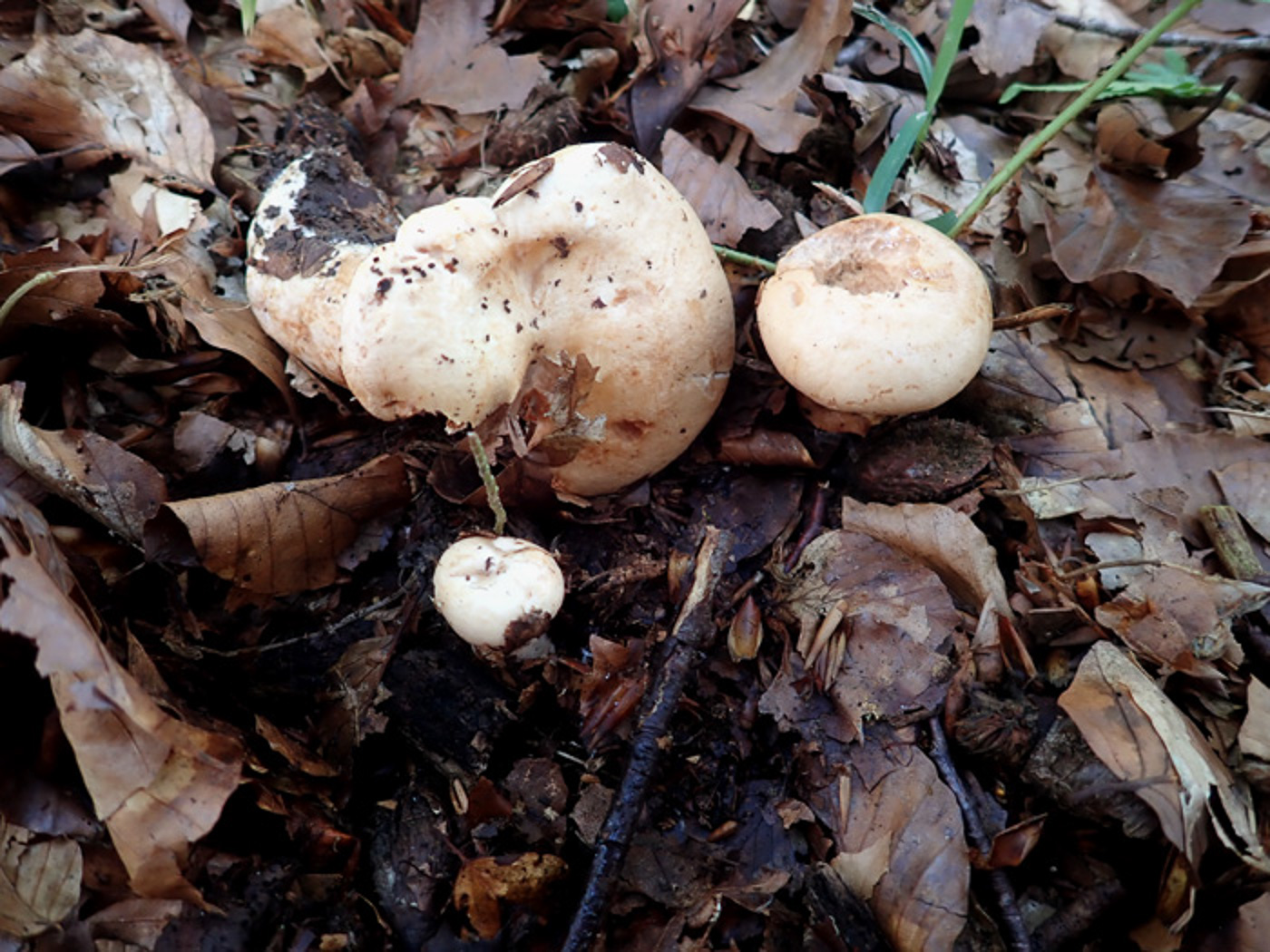
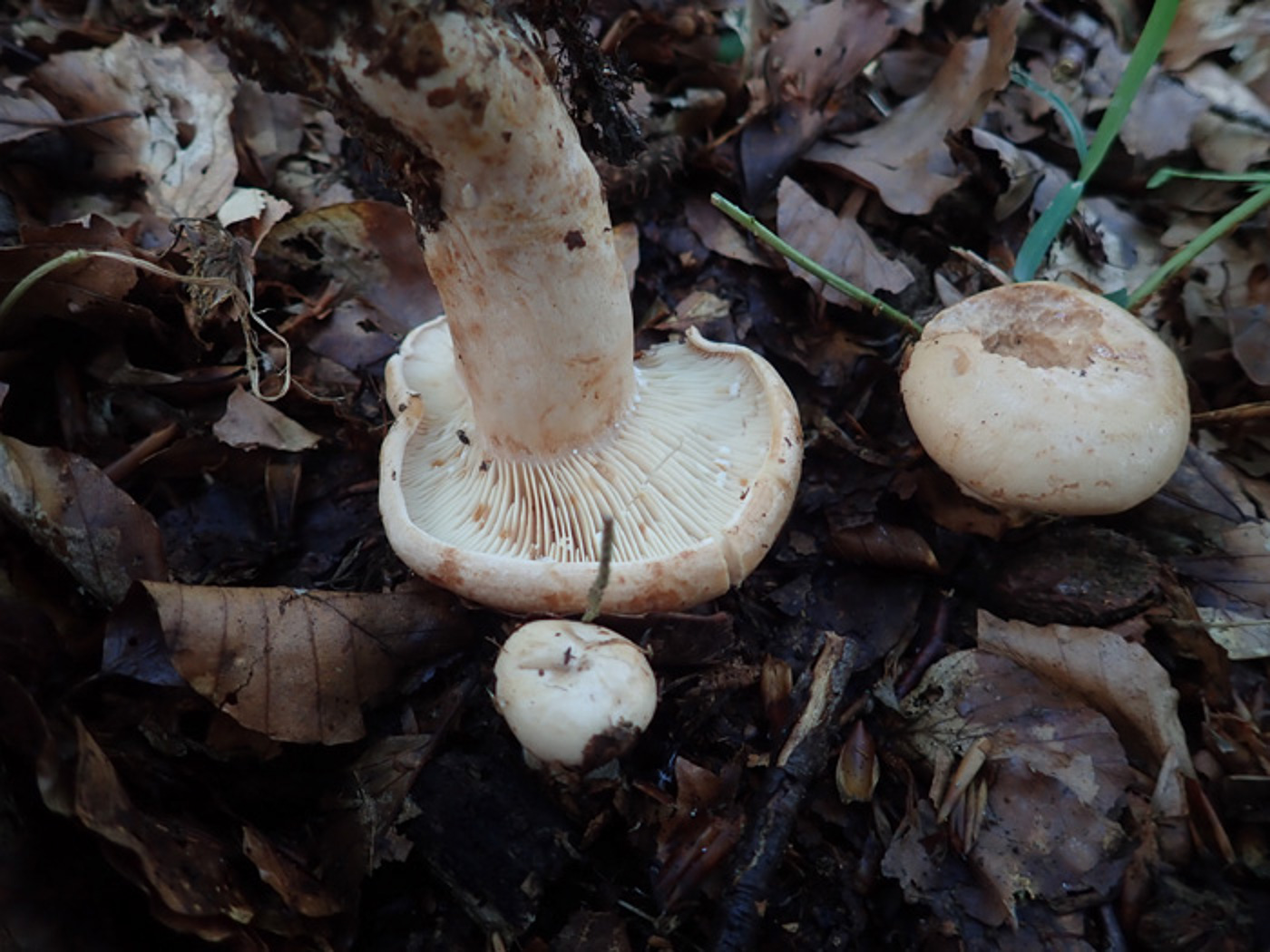 |
August 16th Lactarius pallidus (Pale Milkcap)
In Gussett's Wood Penny and Paul found just a few specimens of this occasional species coming up under Beech, the tree with which it associates. It has a pale pinkish cream smooth cap with no zoning and tends to be rounded in shape and can get quite big - up to 10 cm across. See also in Finds 2021 October 19th and 2022 October 21st.
|
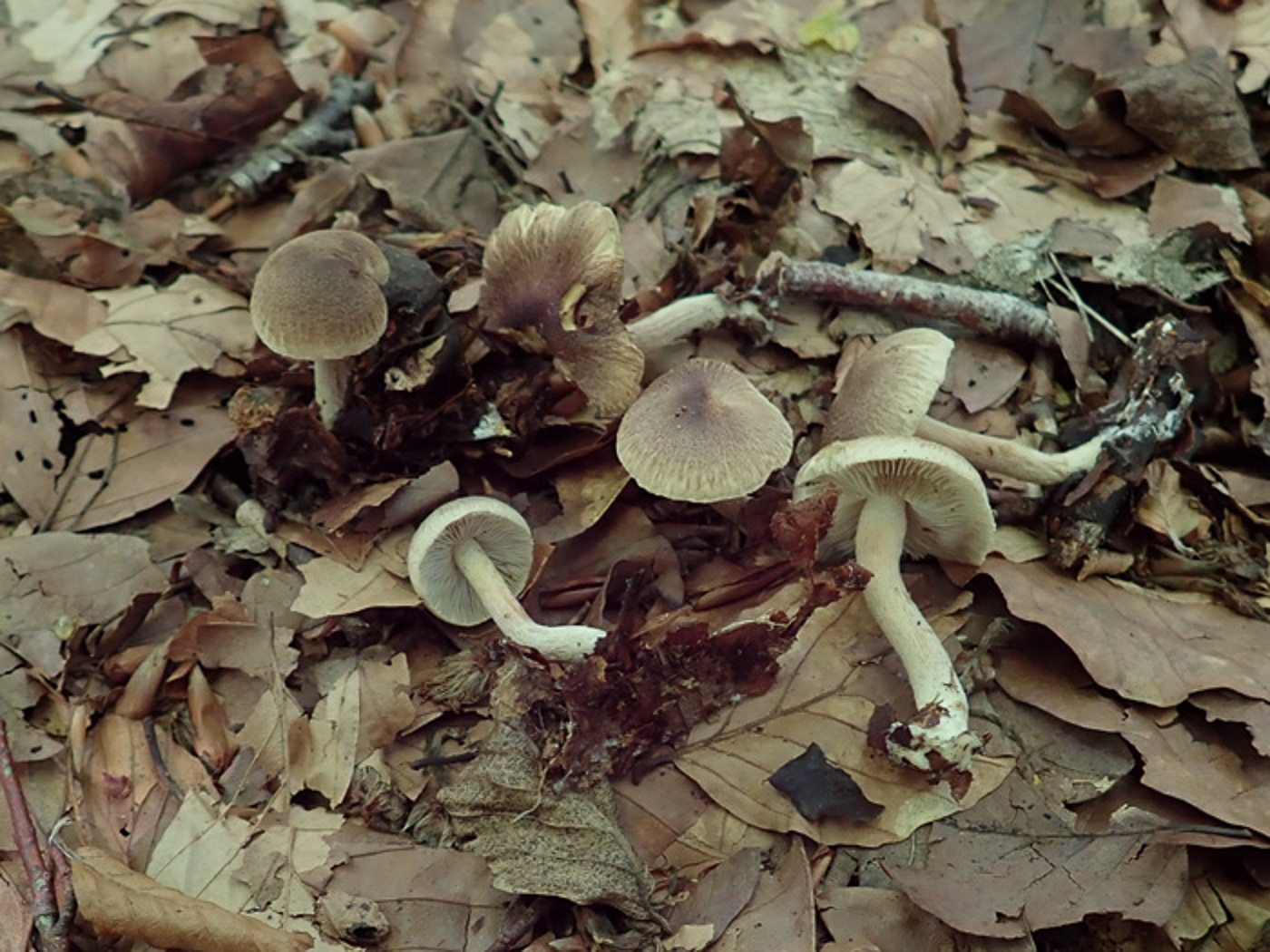 |
August 16th Inocybe flocculosa (Fleecy Fibrecap) 
In Gussett's Wood under Beech Penny and Paul found this quite common Fibrecap - a typical LBJ with no very distinctive macro features and always needing a scope to identify. Even so, though common it can be tricky to determine with a process of elimination needed, but Penny was eventually confident she had it nailed! See also in Finds 2020 October 5th.
|
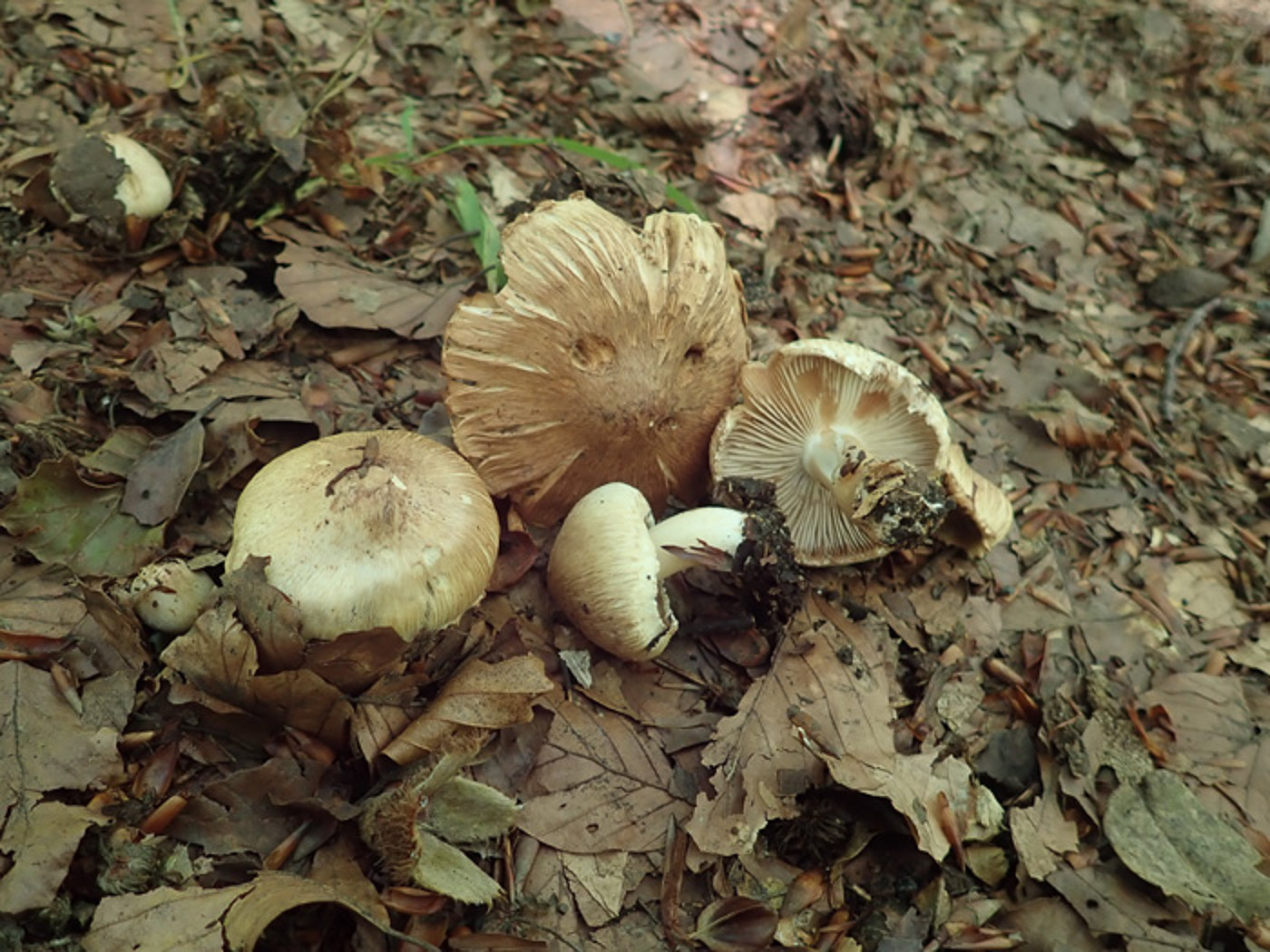
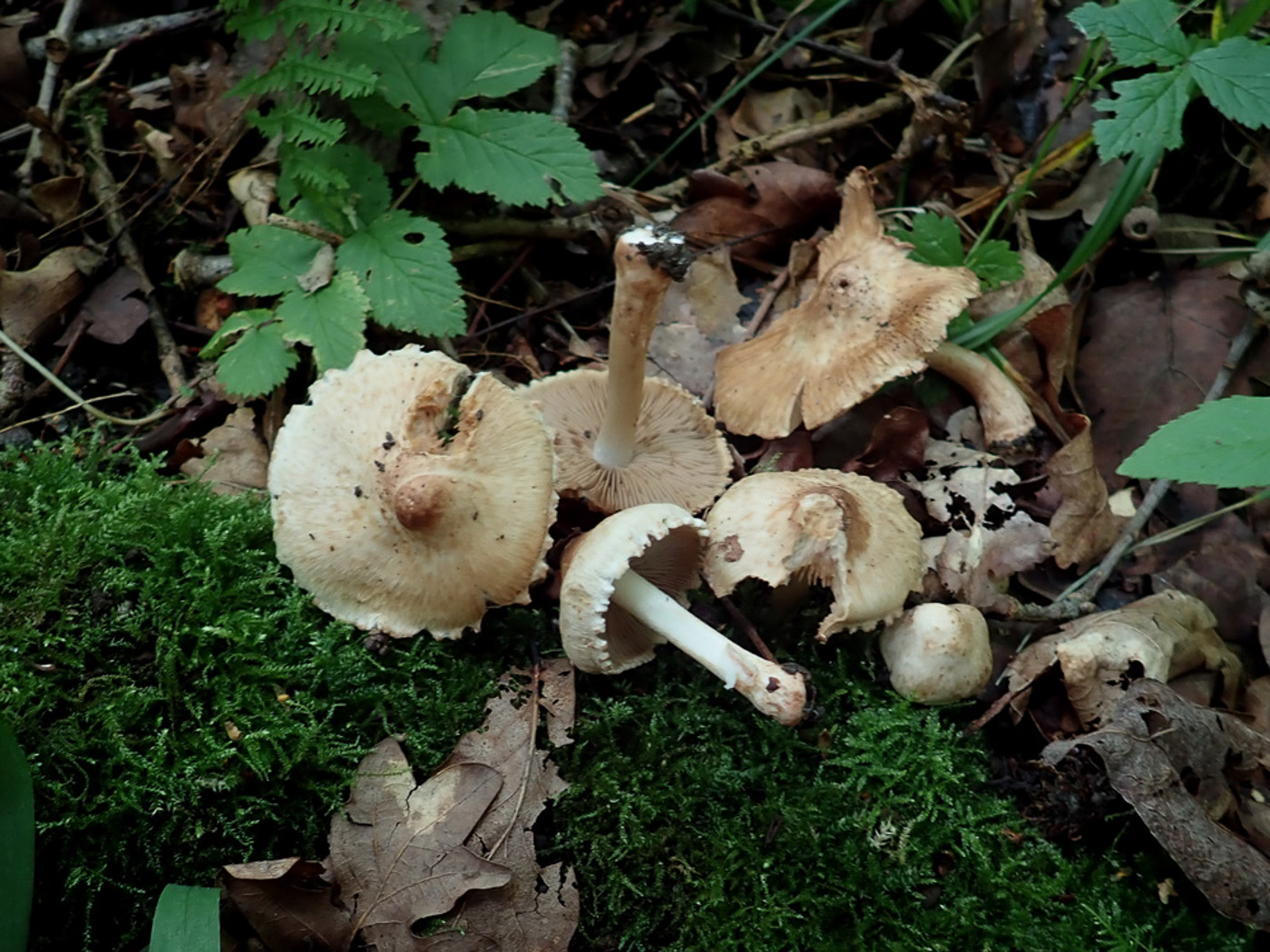 |
August 16th Inocybe fraudans (Pear Fibrecap) 
In Gussett's Wood Penny and Paul found this quite unusual Fibrecap on a muddy roadside bank under Beech. The species is one of several which have a distinctive and pervasive smell of pear drops though today's, being the most common of these species, refers to the smell in its common name. It is quite a chunky squat Fibrecap with a pale brown cap, sometimes splitting as it expands, and can sometimes redden when damaged or scratched (though today's collection did not do so). Photo 2 shows a collection from Rushbeds Wood made by Penny three days later where the species was abundant. The frilly cap margin seen here can quite often be a feature. This is a new entry for Finds.
|
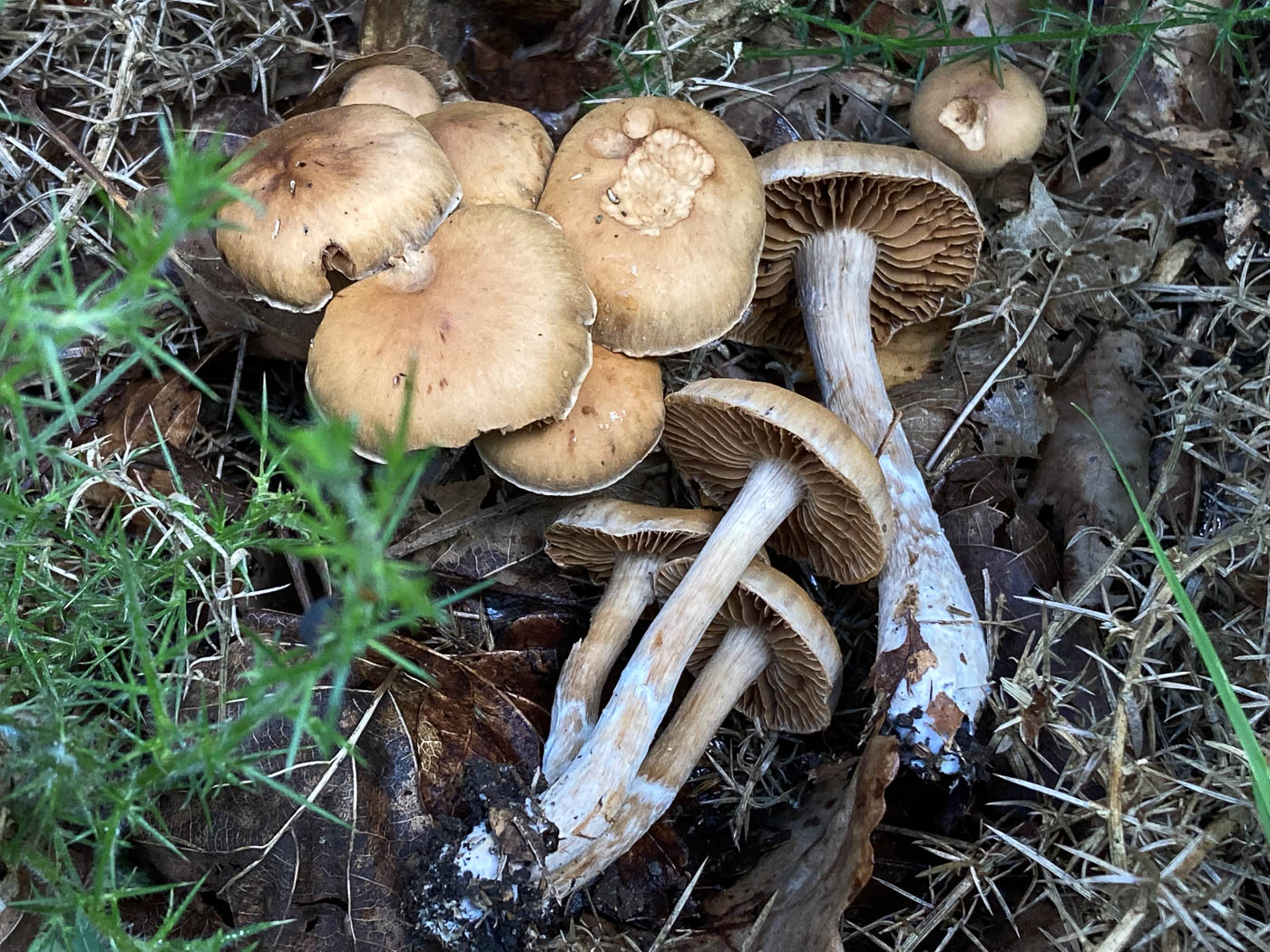
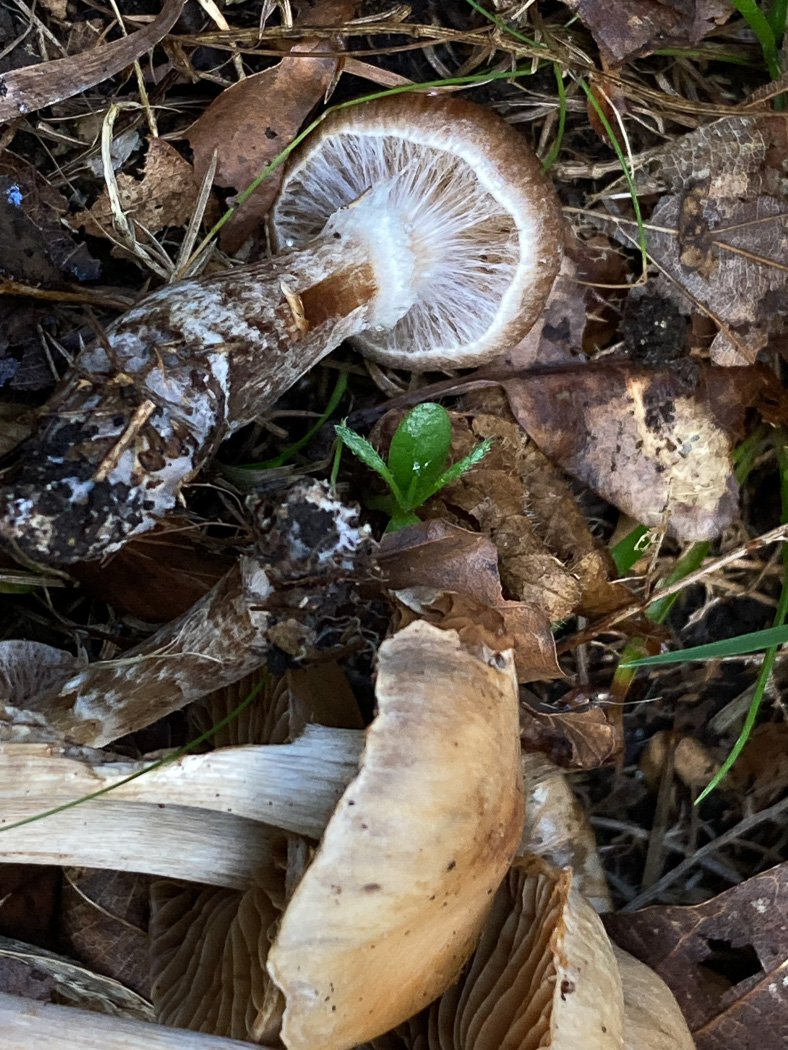 |
August 12th Cortinarius rubricosus (an uncommon Webcap with no common name) 
In Burnham Beeches in mixed woodland Russell Ness found this clump of Webcaps belonging to section Telamonia and (bravely) took them home to identify. This is not a species with which Penny would be confident naming but the features visible, also the spores, match the description in the new Kibby & Tortelli monograph, furthermore it was identified at this site by those authors from here back in 2020. However, so many of the small species in section Telamonia appear very similar that without recourse to sequencing we cannot guarantee this ID. It is a second for the county and a first for Finds.
|
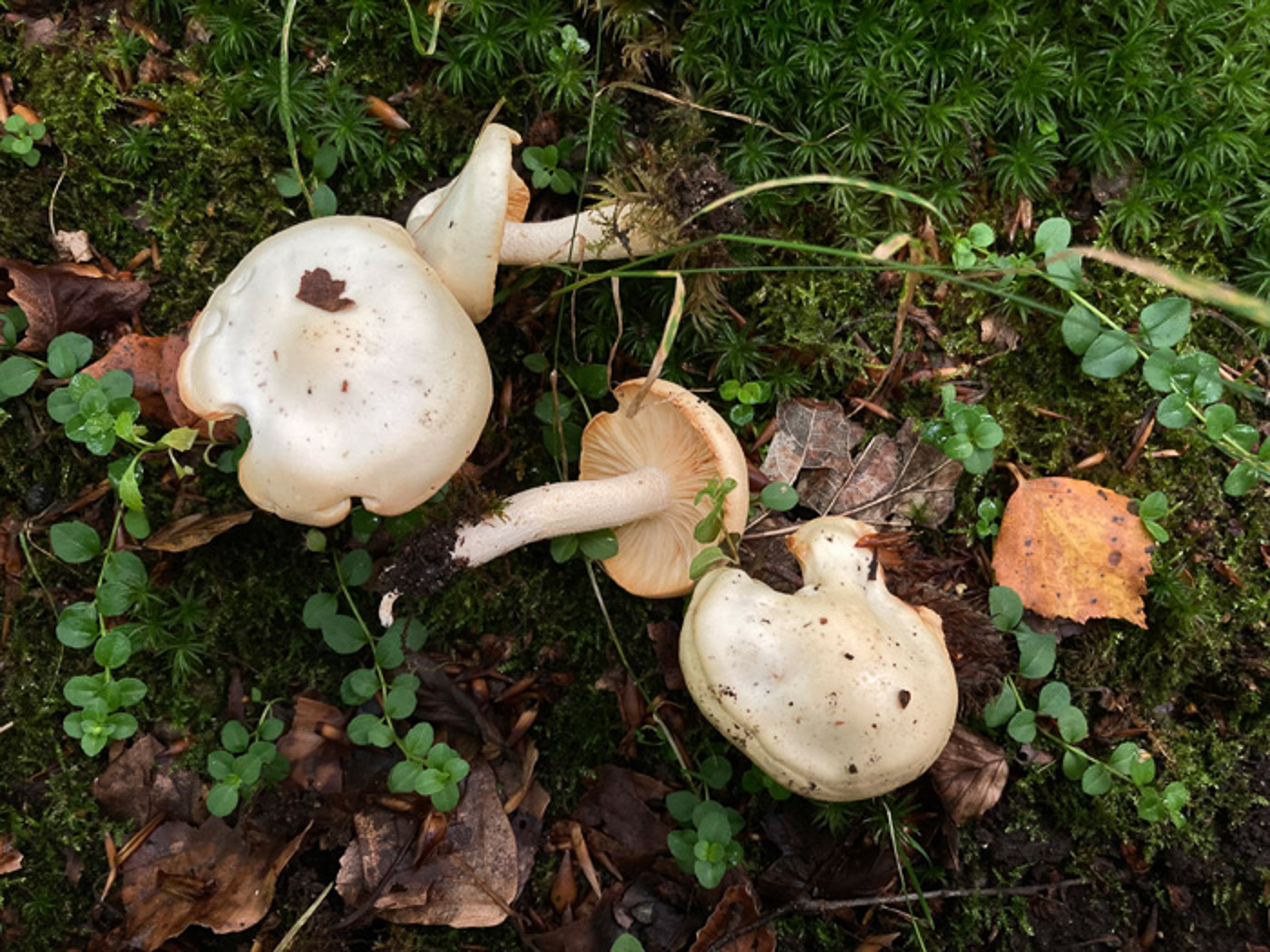
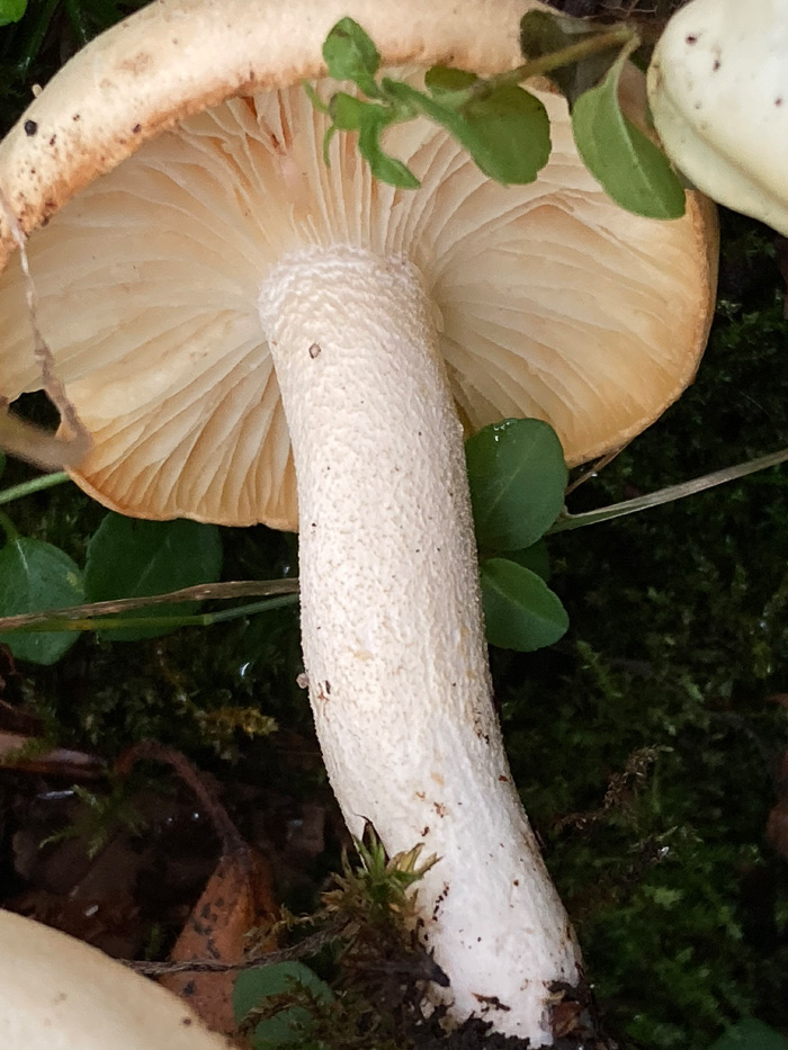 |
August 12th Hygrophorus unicolor (Twotone Woodwax)
In Burnham Beeches Russell Ness was confused by this species (presumably found under Beech though he didn't stipulate). He correctly guessed the genus but was then unable to determine the species. Penny, having seen it previously, was familiar with its pale flesh pink colour in both cap and gills though its common name is somewhat confusing when the species name correctly indicates that it is all basically one colour! The cap can be darker in the centre but not always in her experience. Unlike other similar Woodwaxes under Beech it lacks their slimy stems though the cap is sticky. It is far less common, however. See also in Finds 2020 October 24th.
|

 |
August 12th Mycena amicta (Coldfoot Bonnet) 
In Burnham Beeches Russell Ness noticed this rather drab Bonnet growing in woody litter and at home was not able to come to a conclusion as to its identity. Penny, on receiving his photo and reading that it had a notably hairy stem with blue-green staining at its base was able to point him in the right direction. When the blue-green colour shows on the cap, sometimes just on the rim, the species becomes instantly recognisable, but often this clue is entirely missing, leaving one with little to go on. However, if one know to test for it, it does have a removable gelatinous cap coating (like that found in M. epipterygia (Yellowleg Bonnet). The species is not that common and favours rotting conifer wood though not exclusively. See also in Finds 2020 November 07.
|
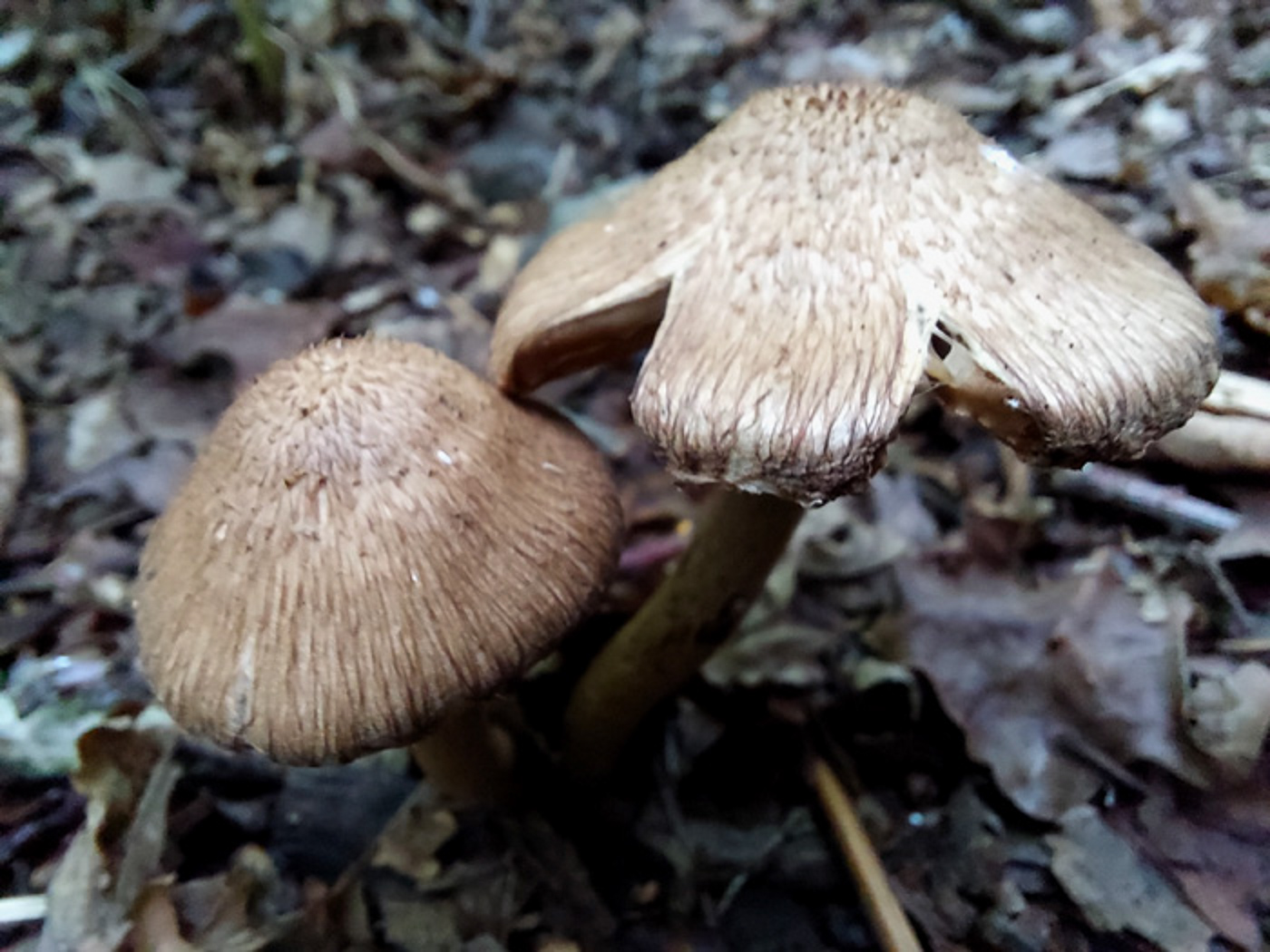
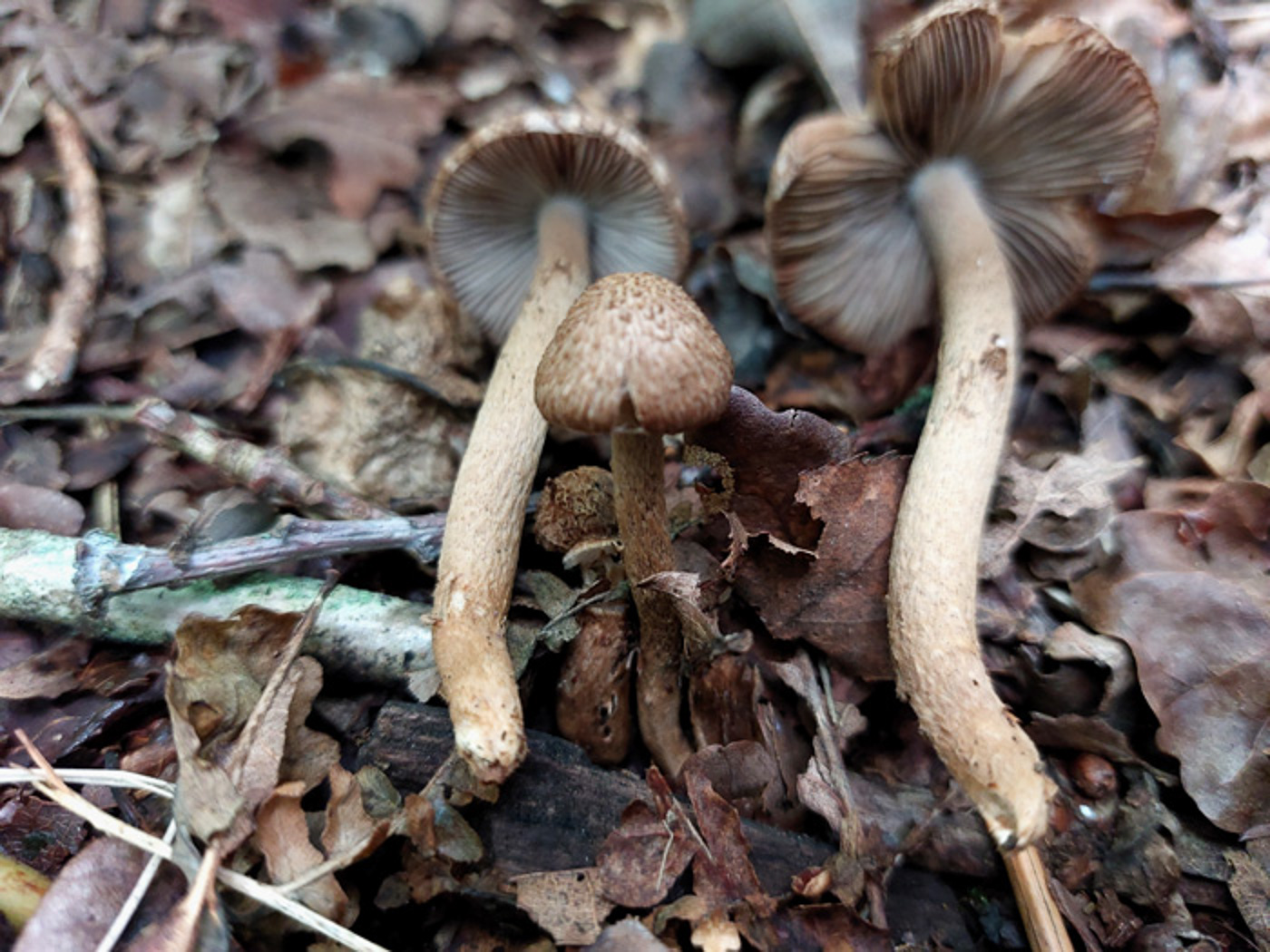 |
August 12th Inocybe stellatospora (Woolly Fibrecap) 
In Gerrards Cross Common under Oak Jesper Launder spotted this quite distinctive Fibrecap, having a scaly to almost furry cap and a fleecy stem also. Though not alone in having these characters the microscopic features are fairly distinctive also and help with the ID. It can occur under conifers as well as deciduous trees but is not that common. This is a new entry for Finds.
|
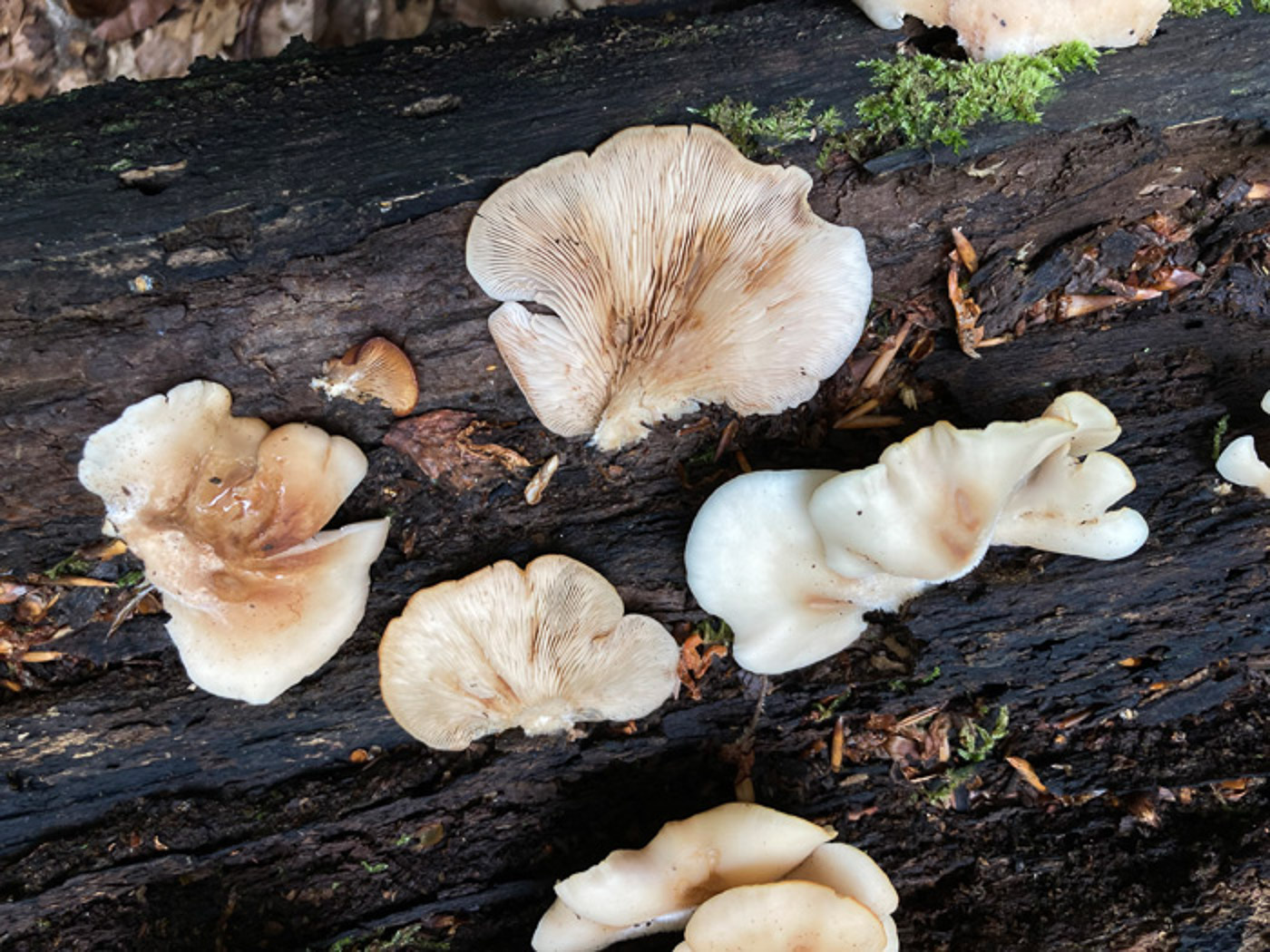 |
August 12th Crepidotus applanatus (Flat Oysterling) 
On very rotten fallen deciduous wood in Burnham Beeches Russell Ness found this Oysterling and took it home to work on. The small globose spores - smaller than in the similar and very common C. cesatii (Roundspored Oysterling - though by no means the only Oysterling with round spores!) helped with the ID. Furthermore this species favours well rotted wood rather than twigs and woody litter on which C. cesatii thrives. See also in Finds 2021 February 2nd.
|
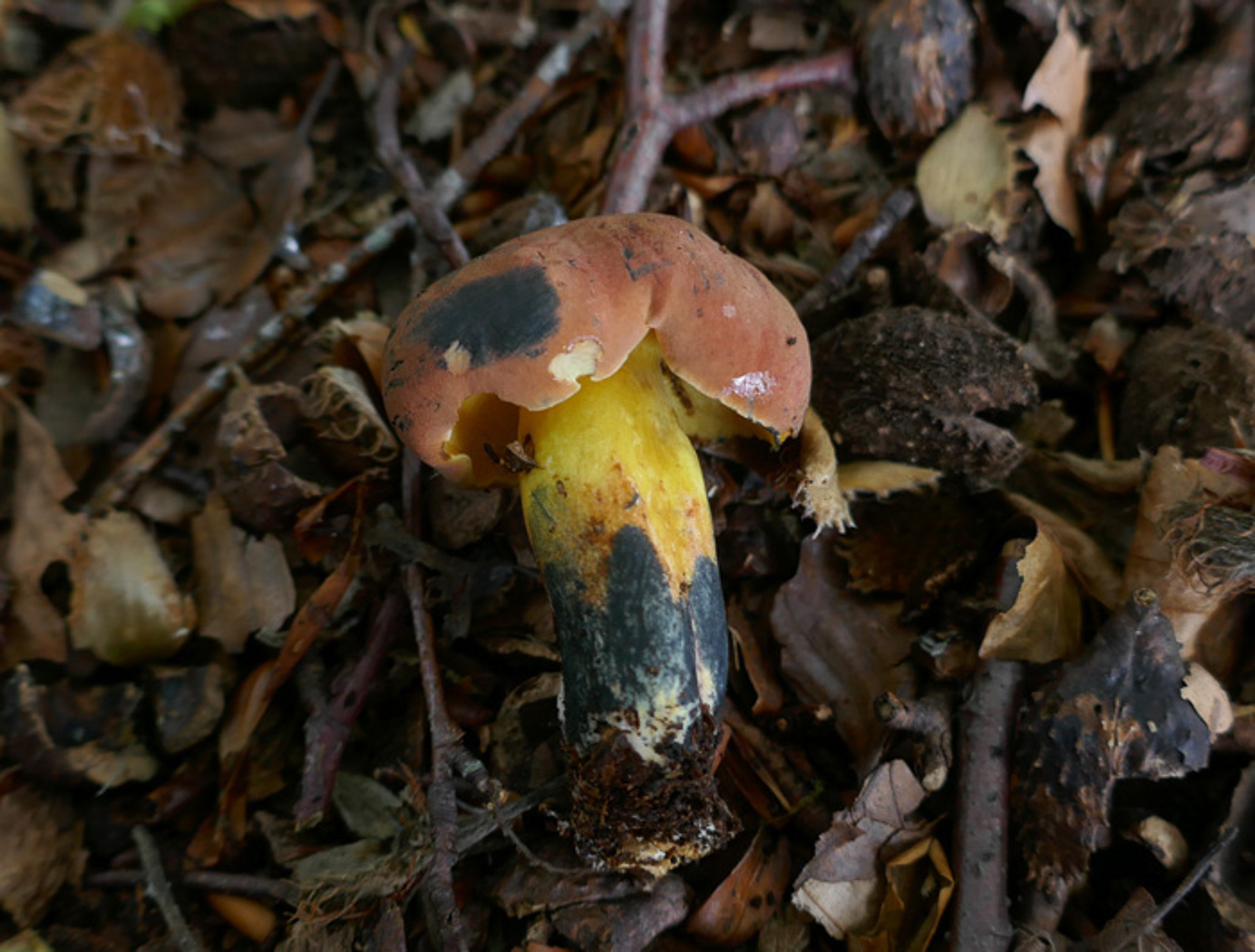
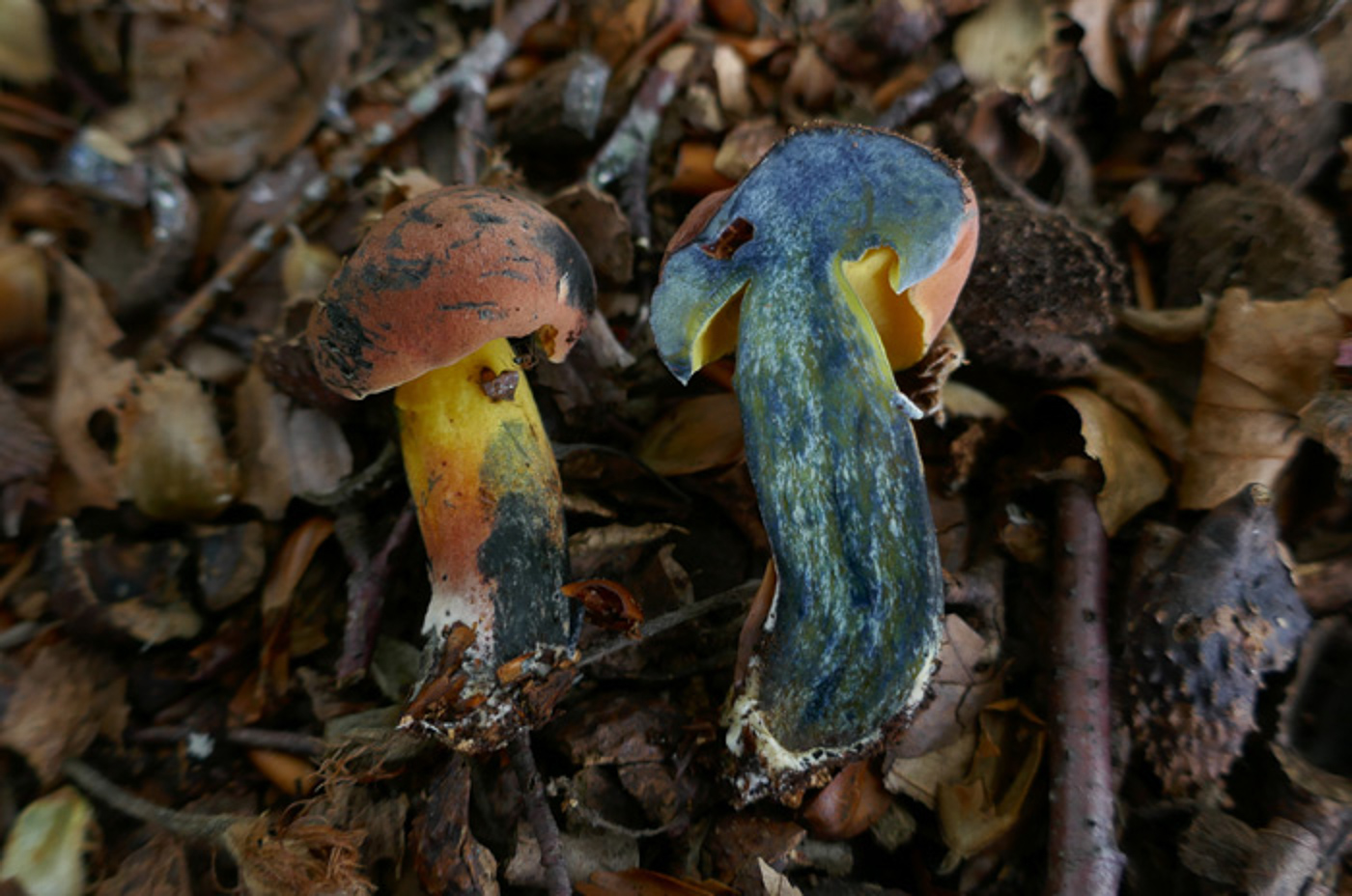 |
August 12th Cyanoboletus pulverulentus (Inkstain Bolete)
At Stampwell Farm under Beech Jackie Ewan found just this small singleton Bolete but the instant deep blueing though with yellow pores rather than red left little doubt as to its identity. See also a collection found a month earlier, July 17th, plus others via the Masterlist. In some years we hardly see this species but it appears to be doing well - like so many other fungi - at the moment.
|
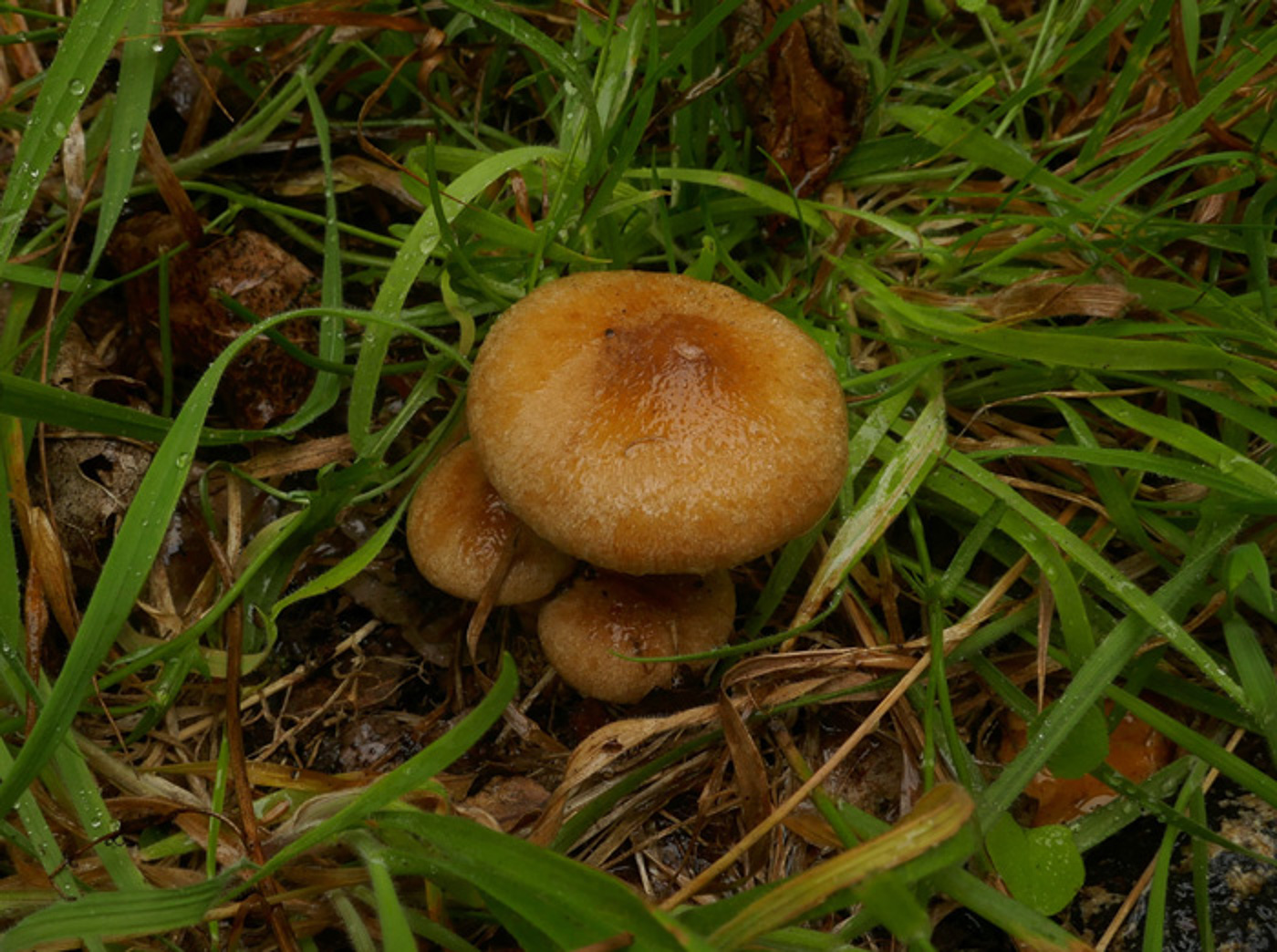
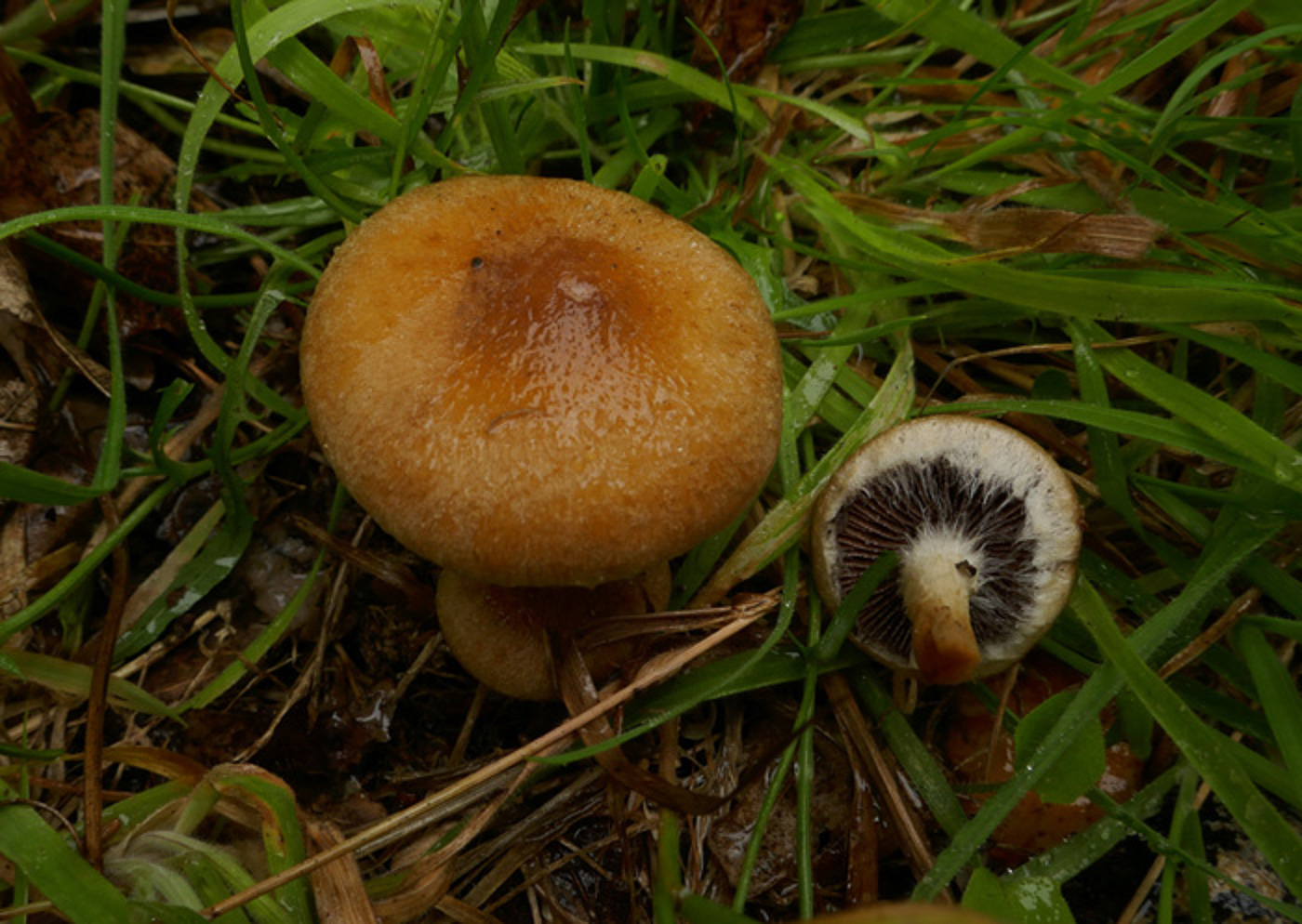 |
August 12th Lacrymaria lacrymabunda (Weeping Widow)
At Stampwell Farm Jackie Ewan found this common species in a grassy verge. Though not immediately obvious from above what this mushroom is, once you turn one over and notice the dark gills, often with droplets attached, and the whitish veil strands on the cap edge and stem which originally were adjoined to form a ring, you have your ID. The common name refers to the gill droplets. See also in Finds 2020 September 10th and 2021 August 8th.
|
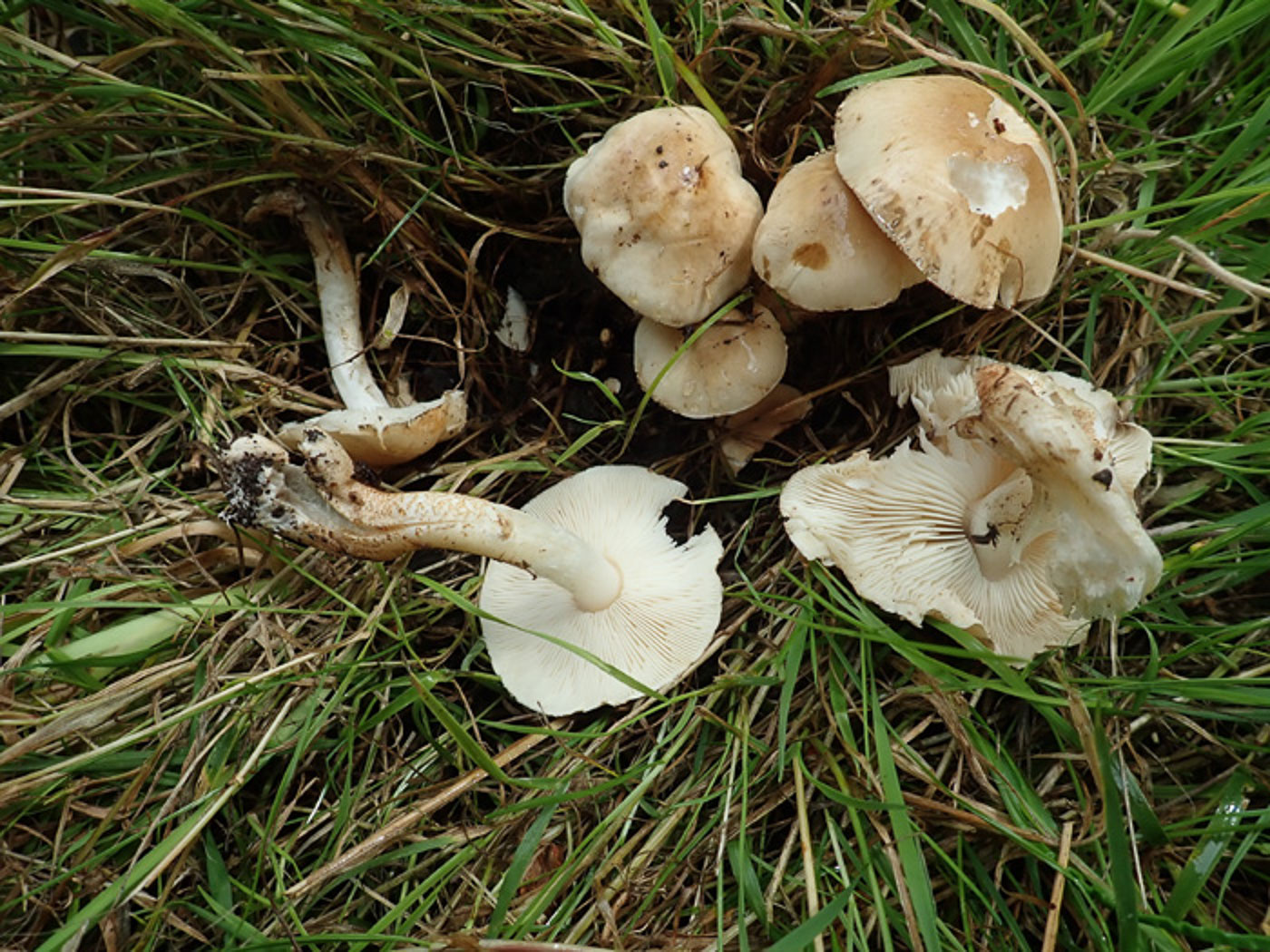 |
August 12th Chamaemyces fraxidus (Dewdrop Dapperling) 
In thickish grass near Pine at Turville Heath Penny spotted a cluster of unfamiliar mushrooms which were bit sticky, had a strange sweetish smell and free cream coloured gills. At a complete loss to start with, she also noticed the stem was finely scaly in the lower section and this began to ring a bell but it was not until she found small ellipsoid spores and prominent cystidia on the gill face and edge that she worked out what it was. She recalled spending many hours puzzling over the species with Derek in the Forest of Dean years ago and eventually cracking it! The species is loosely related to Lepiota (also with free pale gills) but somewhat uncommon and - though unhelpfully not apparent today - has drops of moisture on the stem (hence its common name) and often the delineation between the top white and the lower brownish scaly parts of the stem is much more marked than is visible here. We have only one previous county record: from Rushmere Estate last year though no image.
|
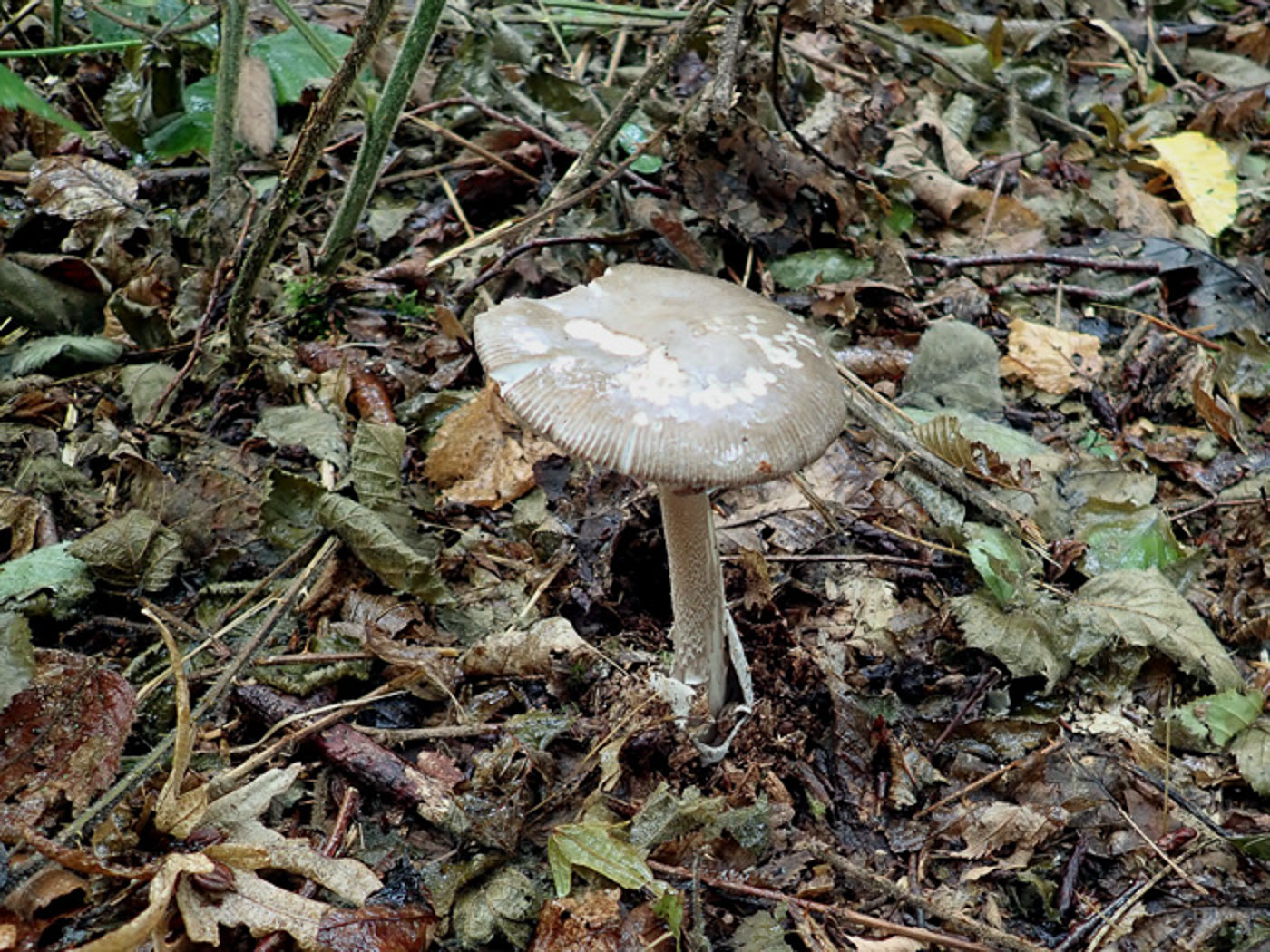
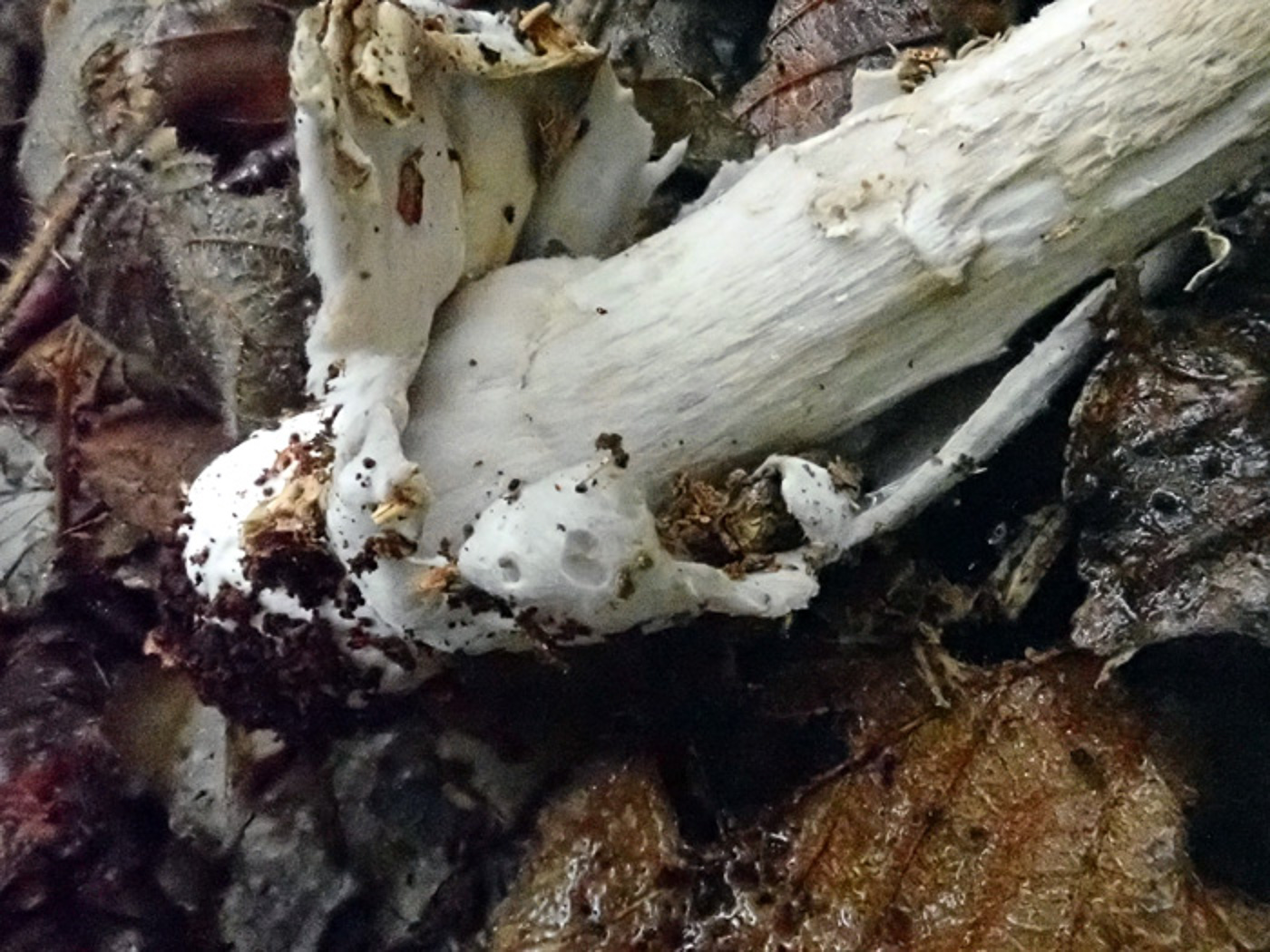 |
August 12th Amanita submembranacea (an unusual Amanita with no common name) 
Under Hornbeam at Turville Heath Penny stumbled across this quite large and uncommon Grisette type and carefully extricated the volva which would be critical to its ID. Several of these Grisettes (Amanitas with no ring) are very easy to confuse, especially A. vaginata and today's species. Microscopic differences are negligable but the brownish cap (rather than greyish in A. vaginata), also the clear 'double volva' with a somewhat grey inner part finally confirmed it. Penny then read that a drop of phenol on the stem flesh turned slowly wine red in this species and this also checked out. We have just a handful of previous county sites, and this is a first entry for Finds.
|
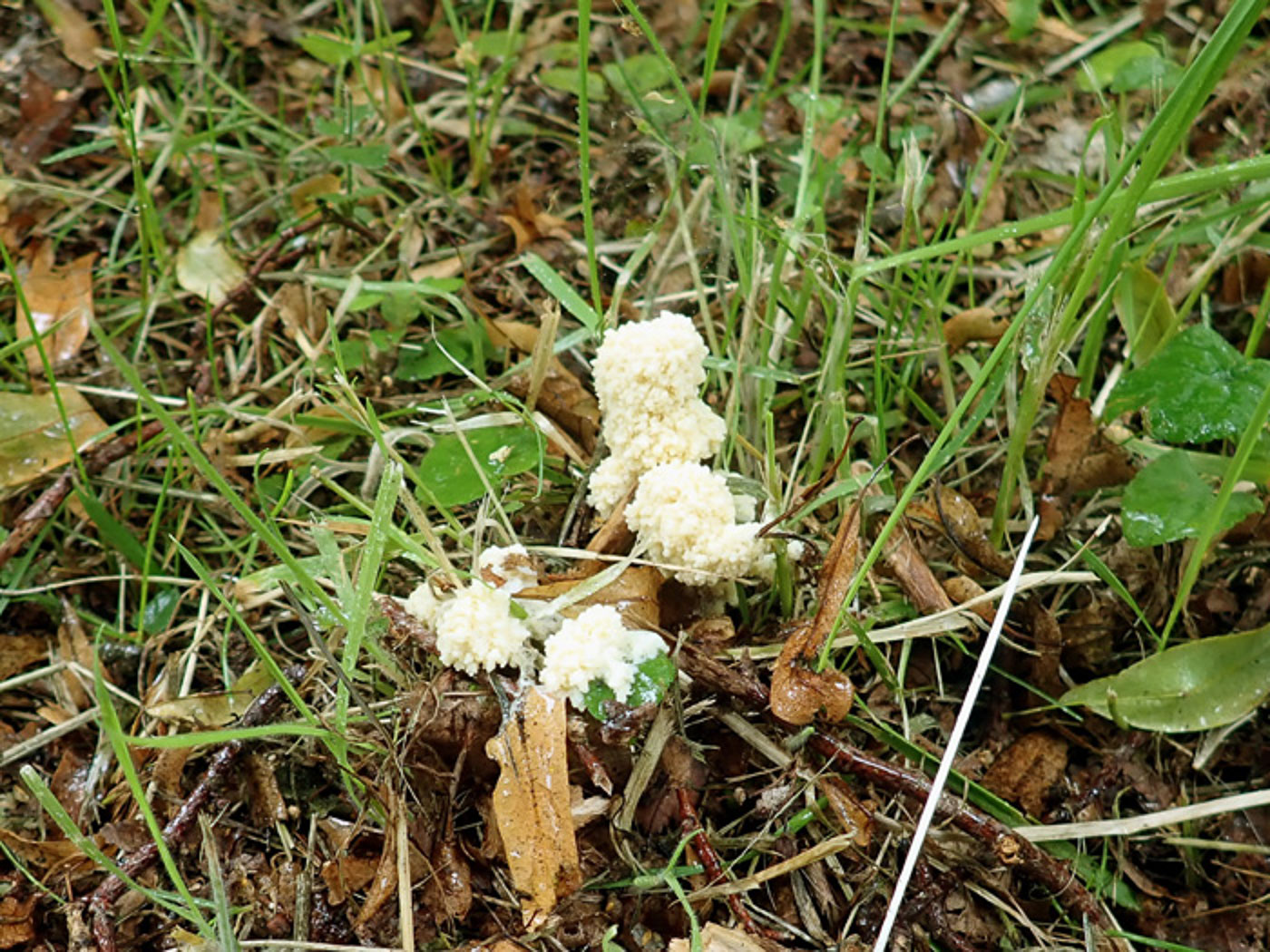 |
August 12th Mucilago crustacea (Dog Sick Slime Mould)
In grass at Turville Heath Penny found this common slime mould spreading over the stems before drying off and becoming crusty. The common name is far more suited to this species than to the bright yellow Fuligo septica var. flava for which it has recently (and in Penny's view) incorrectly been adopted! See the Masterlist for further examples.
|
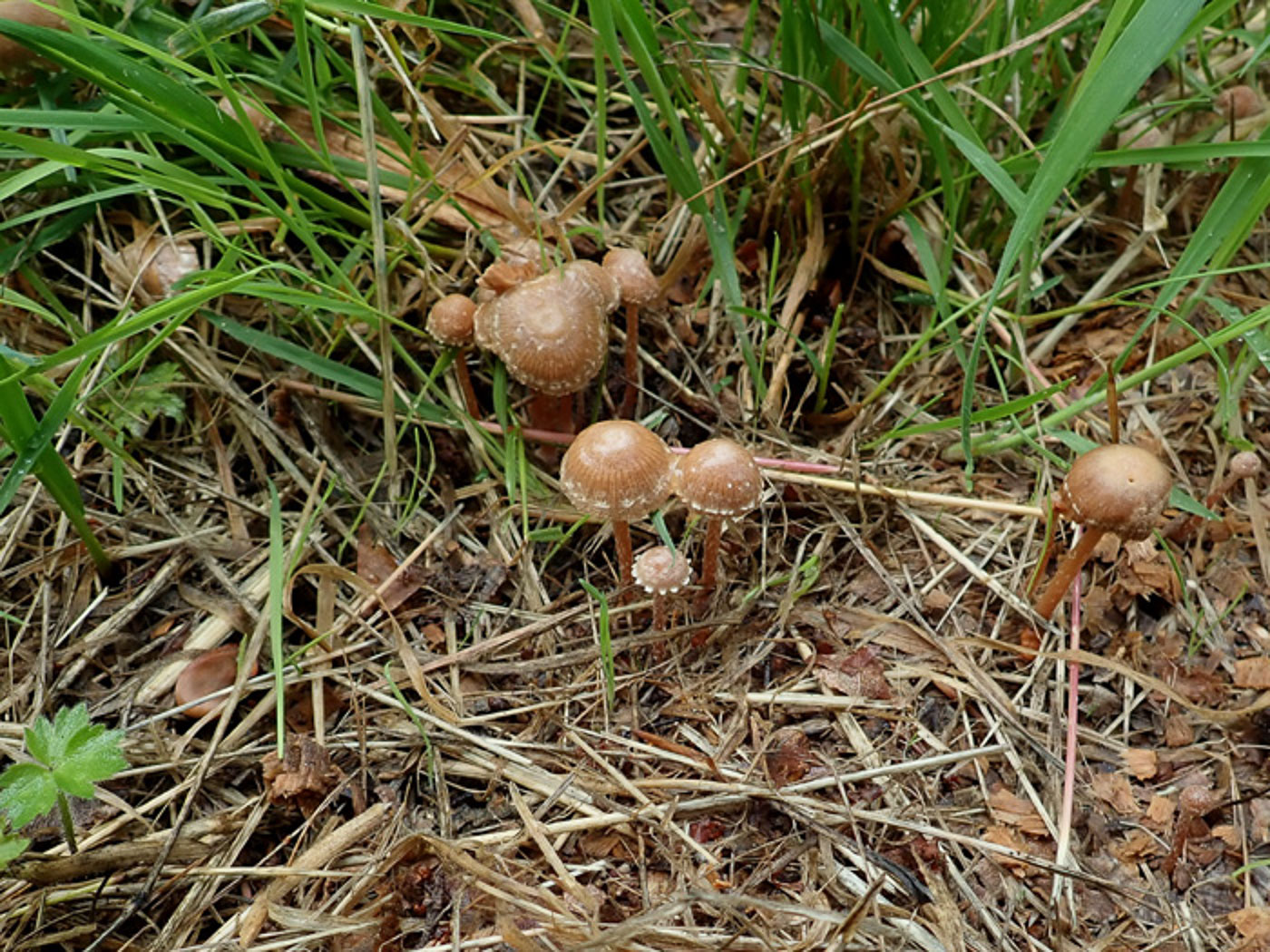
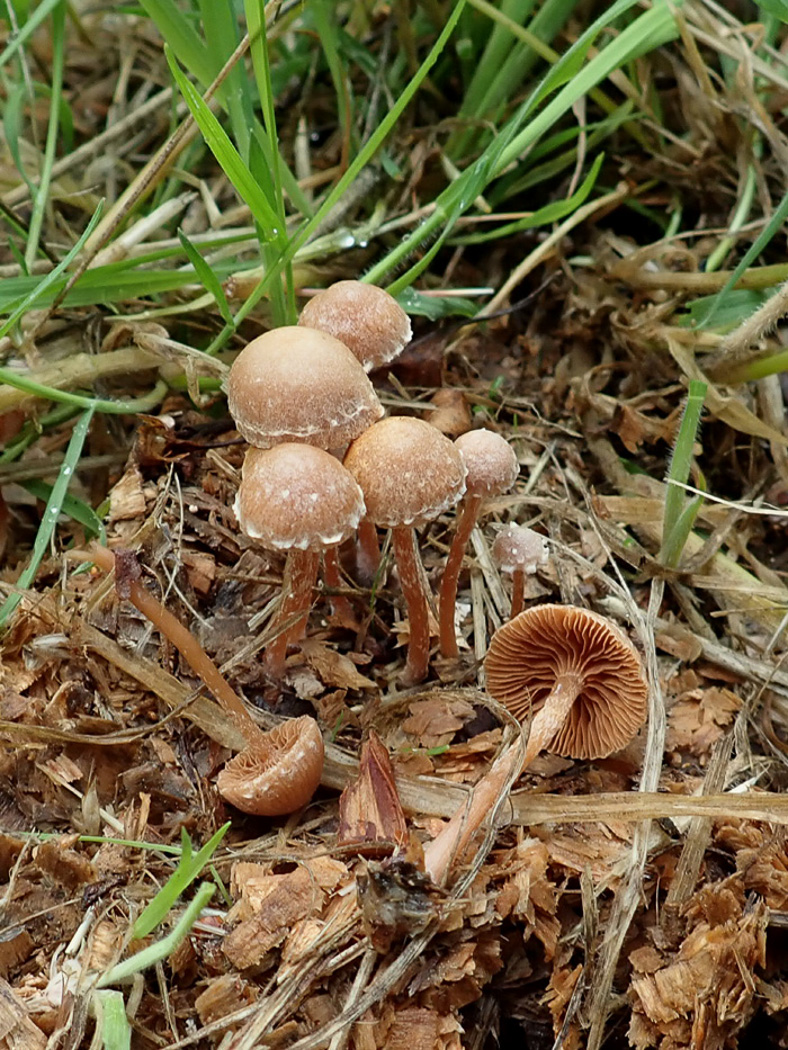 |
August 12th Tubaria furfuracea (Scurfy Twiglet)
At Turville Heath on some Beech sawdust Penny spotted loads of this LBJs and at first thought it must be a species of Galerina having a frilly veil around the edge. Turning one over and noticing the semi-decurrent gills she realised it was not that genus but the much more common T. furfuracea though it was unusual for the scurfy bits of veil to be so obviously apparent around the edge. Many clusters however lacked this where rain had probably removed it. The species is often one which can confuse but finding quantities of it like this surely pointed to it being something pretty common, and so it proved. See the Masterlist for further examples.
|
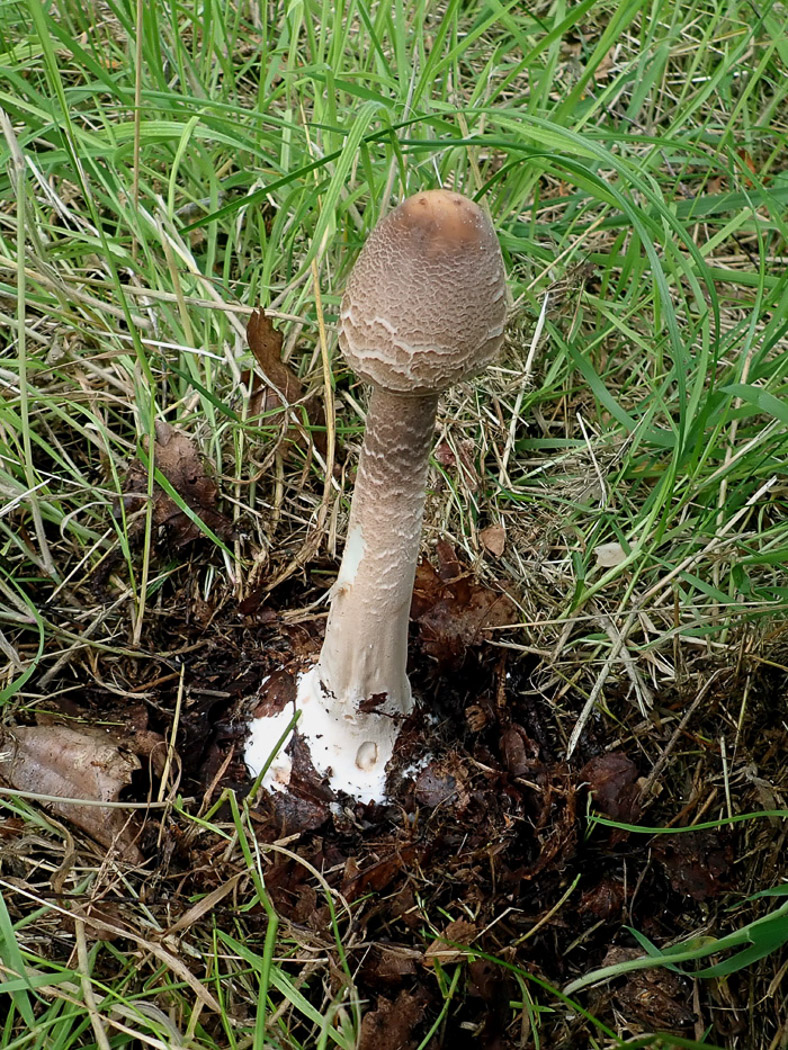
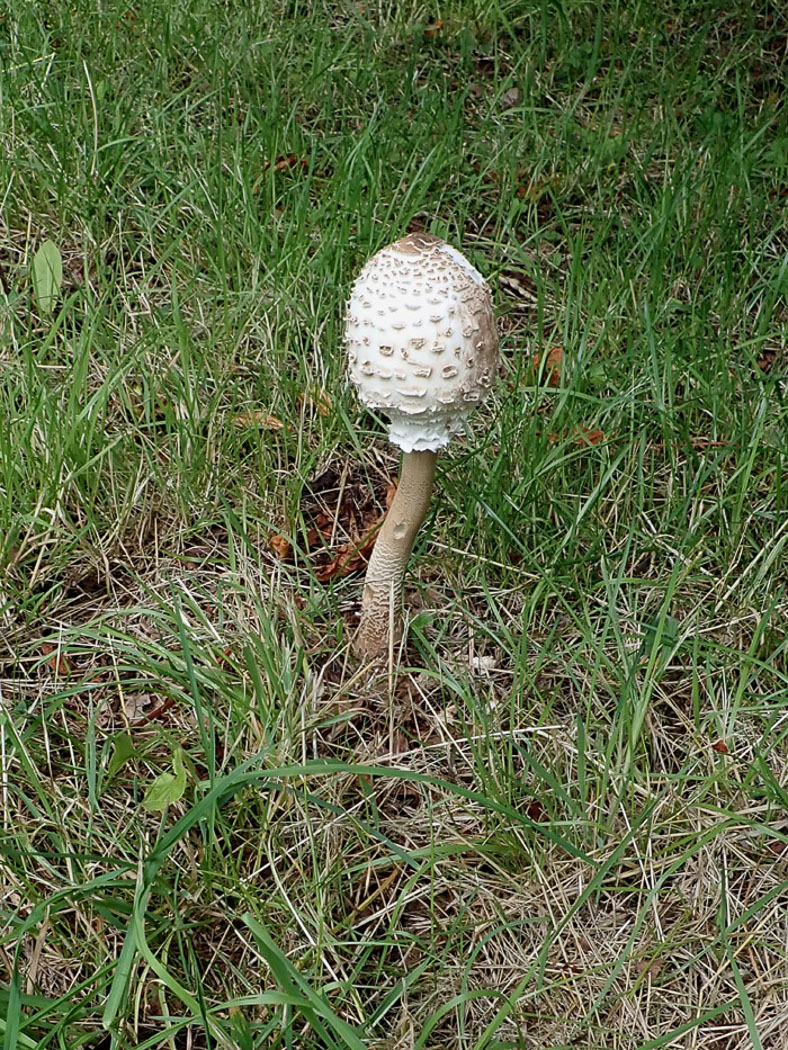
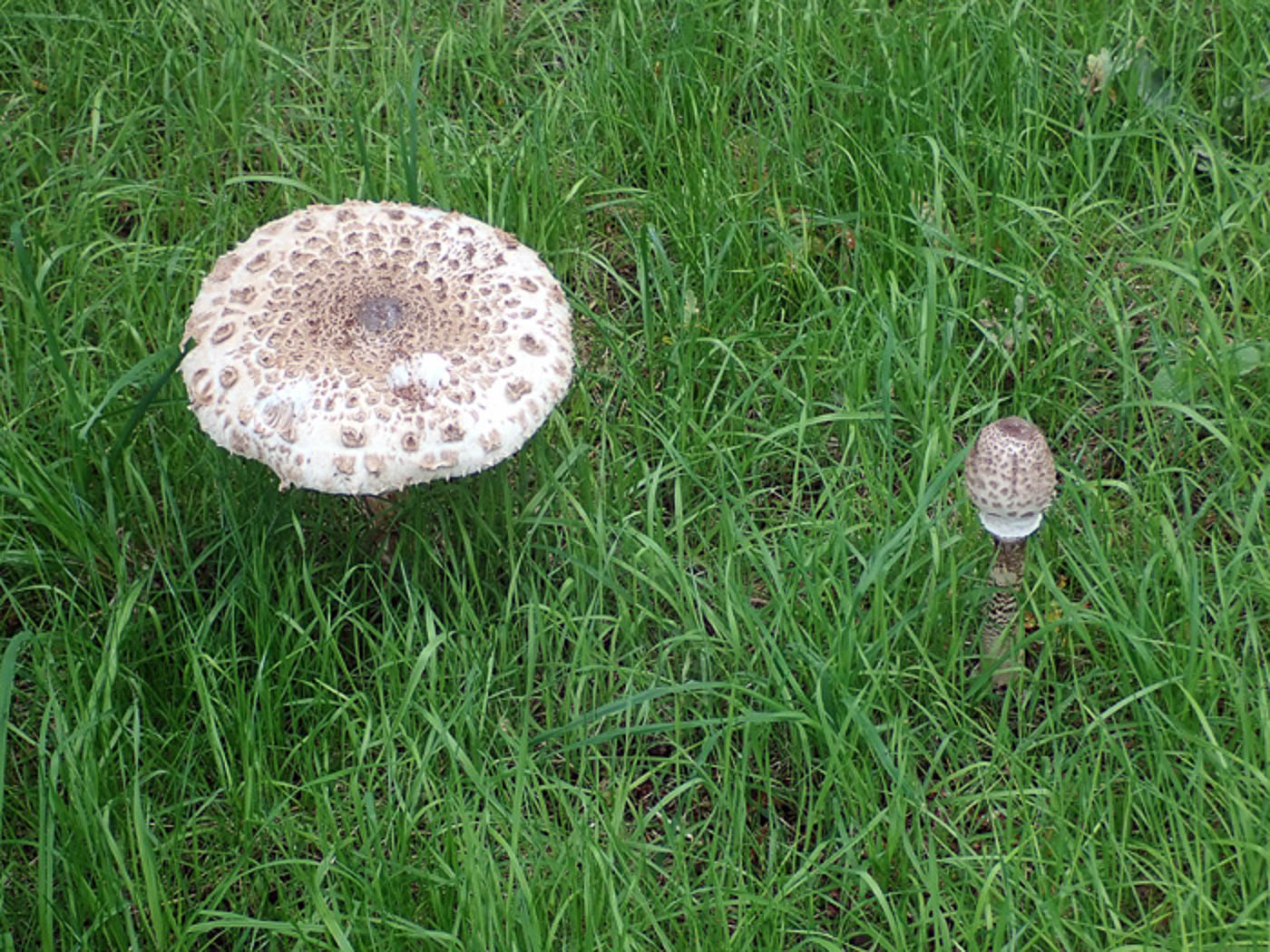 |
August 12th Macrolepiota procera (Parasol)
Having entered some rather dreary first specimens of this species a few weeks back, Penny found some beauties at Turville Heath today. The photos show the various stages of its development, the largest cap being a good handspan in width. See the Masterlist for plentiful other examples.
|
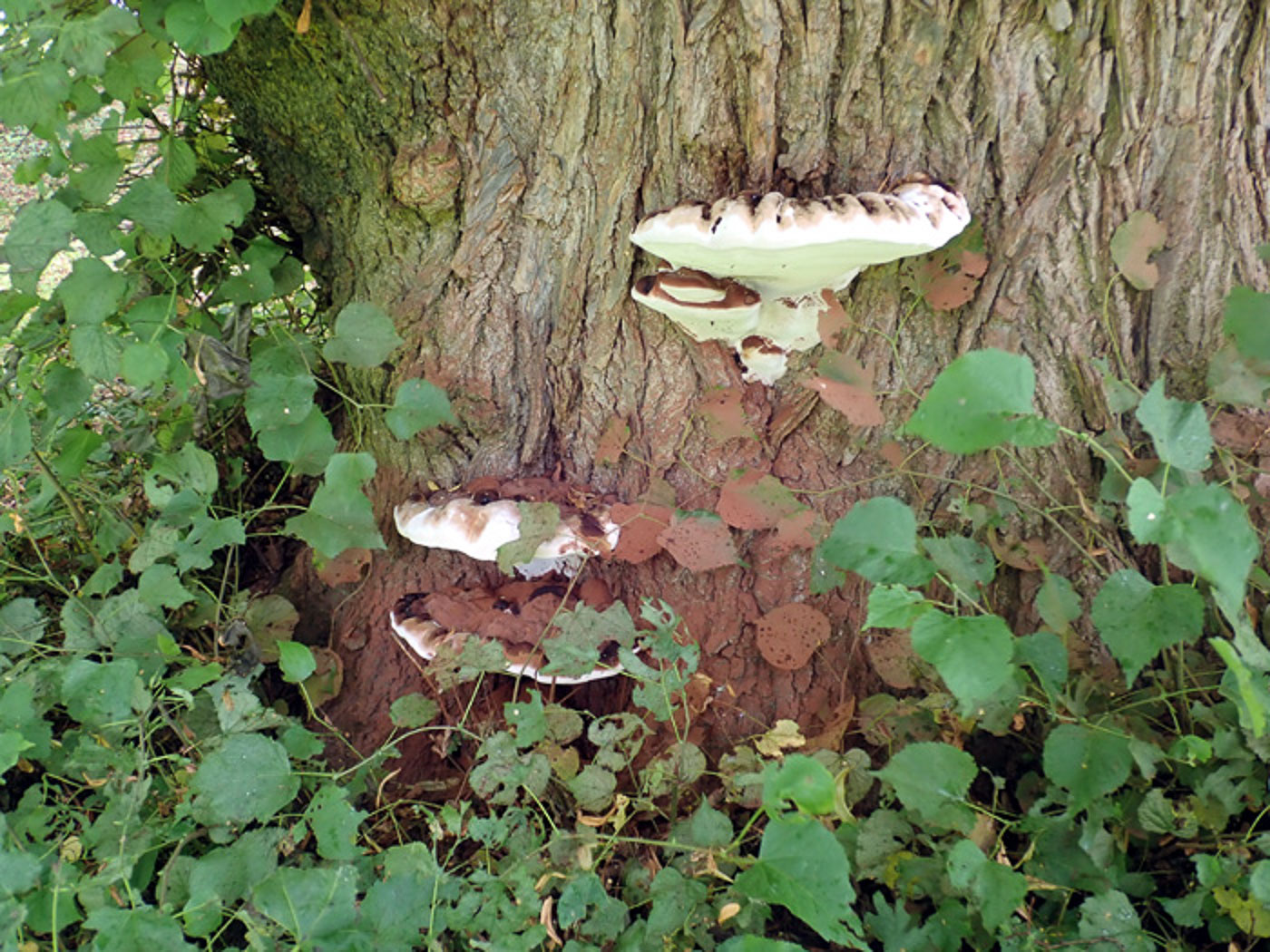
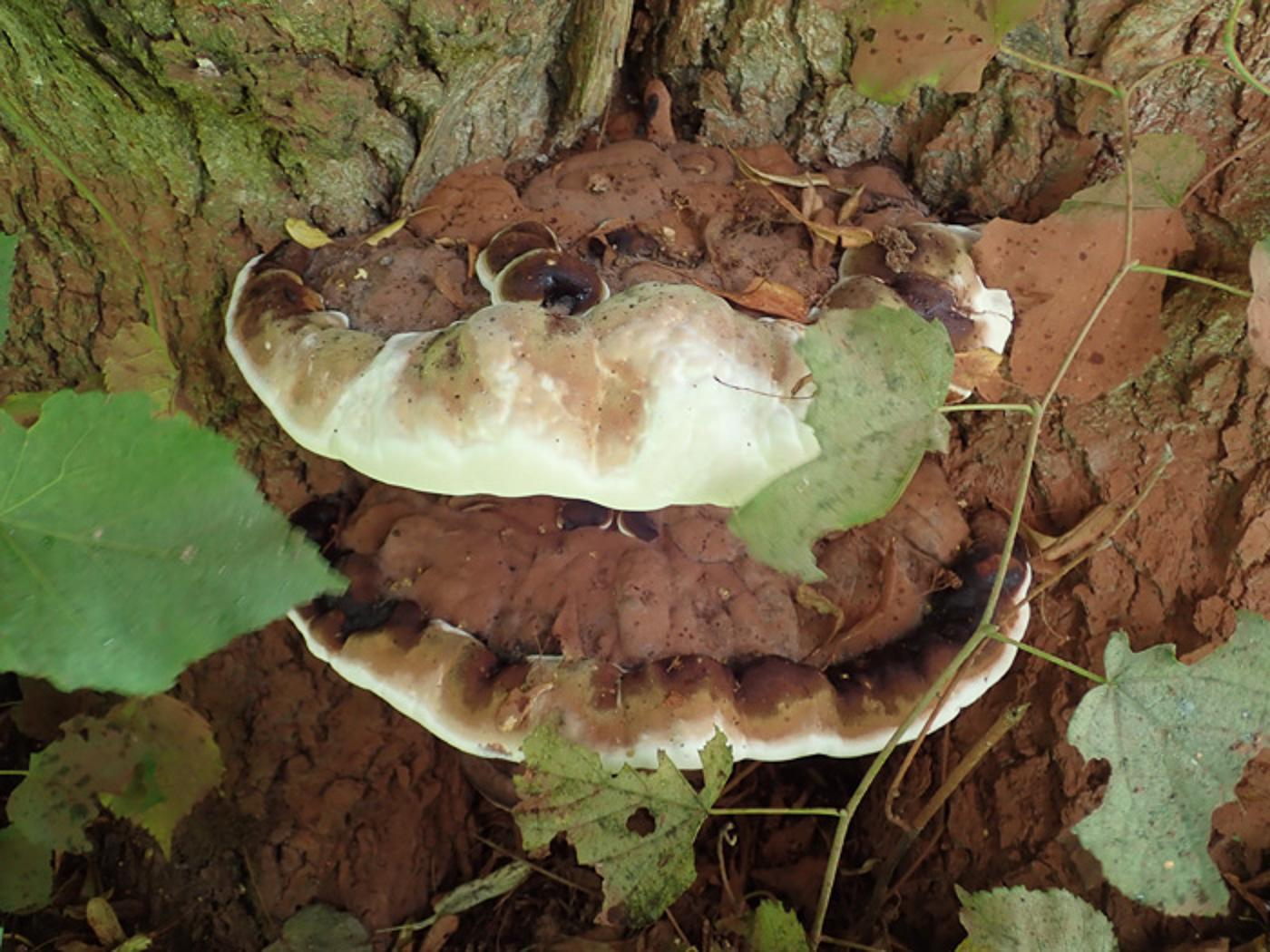
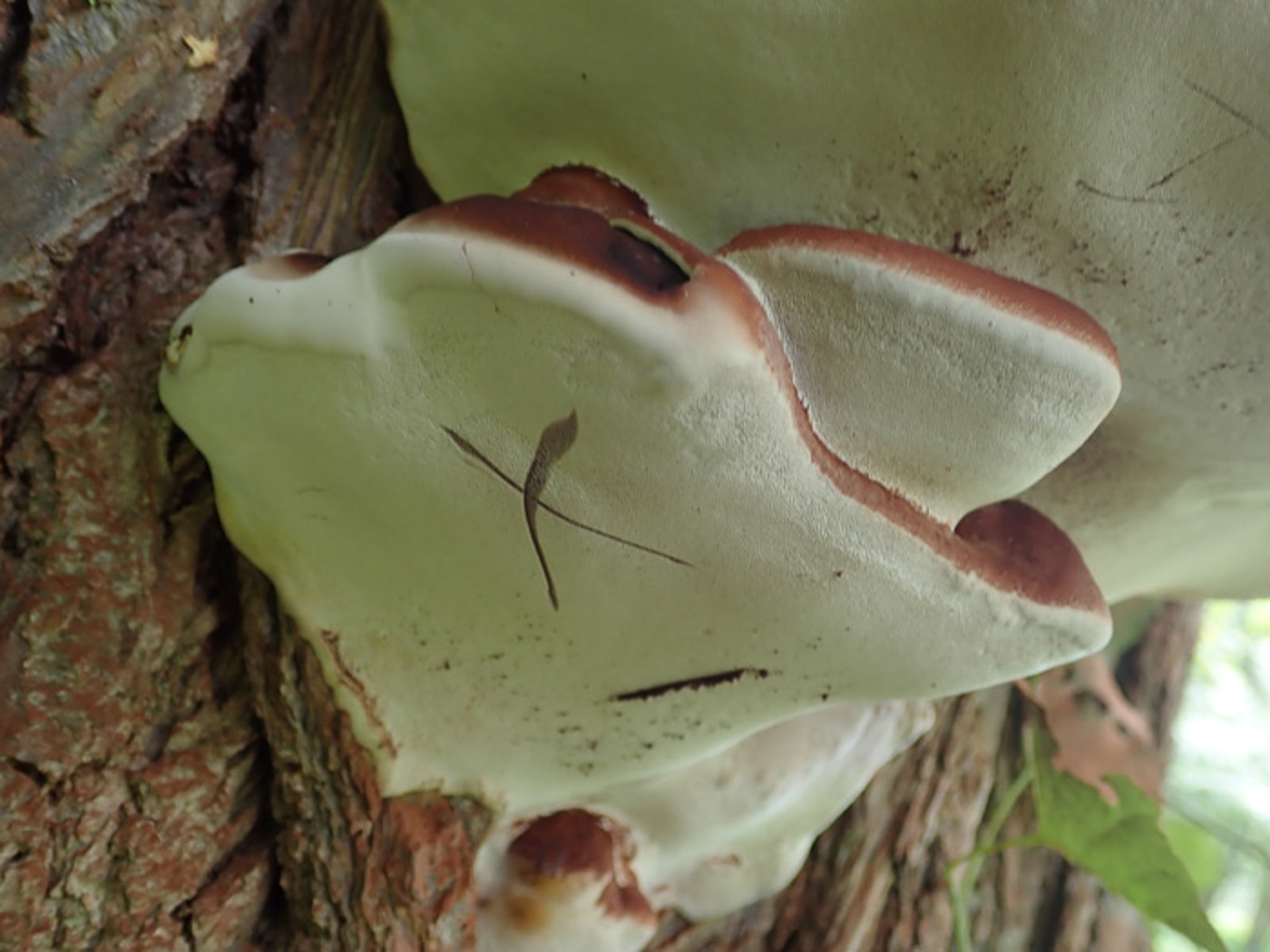 |
August 12th Ganoderma australe (Southern Bracket)
Low down on Lime at Turville Heath Penny noticed these fresh though a bit atypical examples of a common bracket clearly busy sporulating all over the adjacent foliage and covering it with cocoa-powder spores. The somewhat pale and rather thick margins together with the unusual host tree for the species led Penny to check the spores later at home, which however matched perfectly thus confirming the ID. See the Masterlist for plentiful other examples.
|
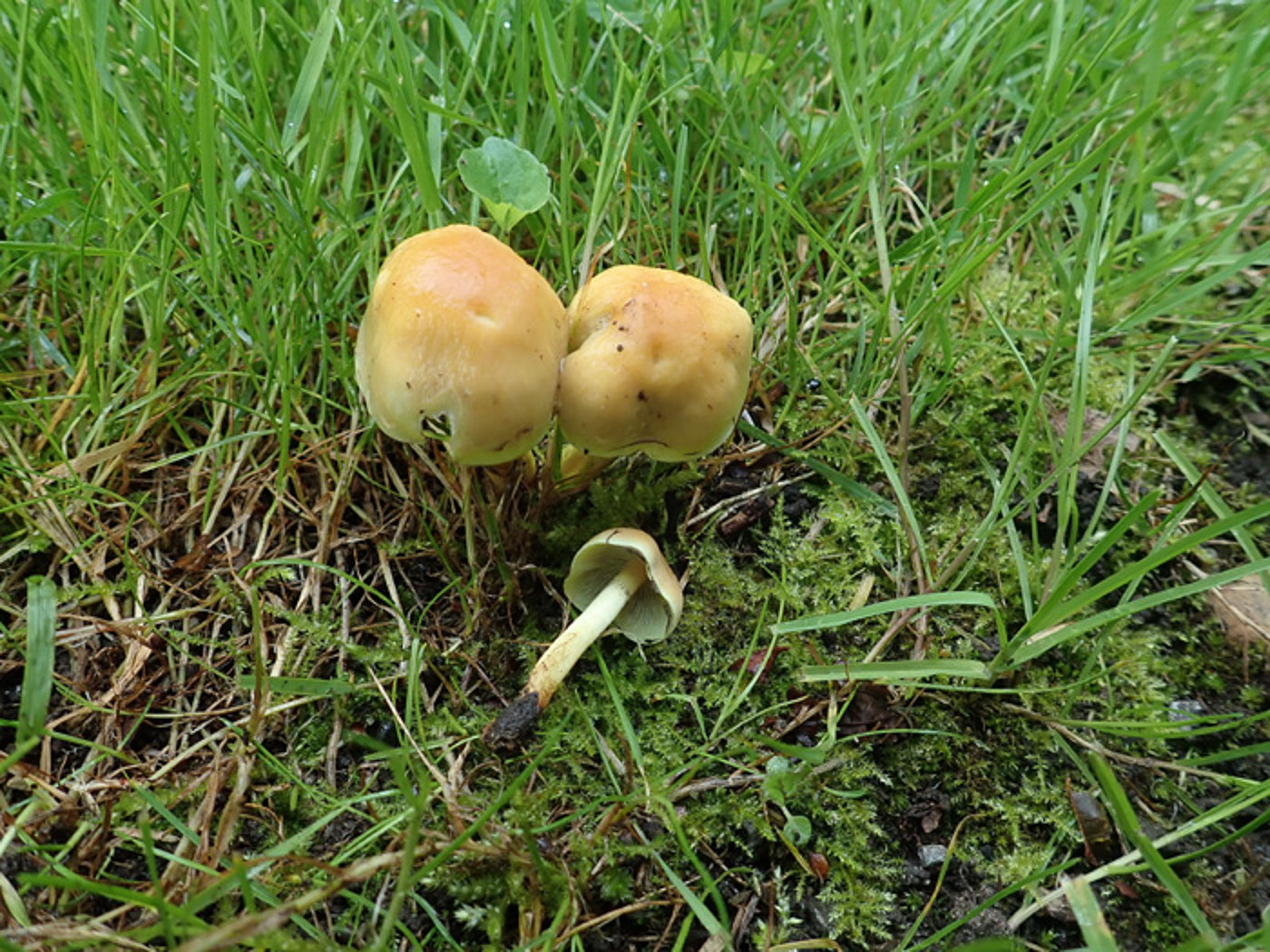
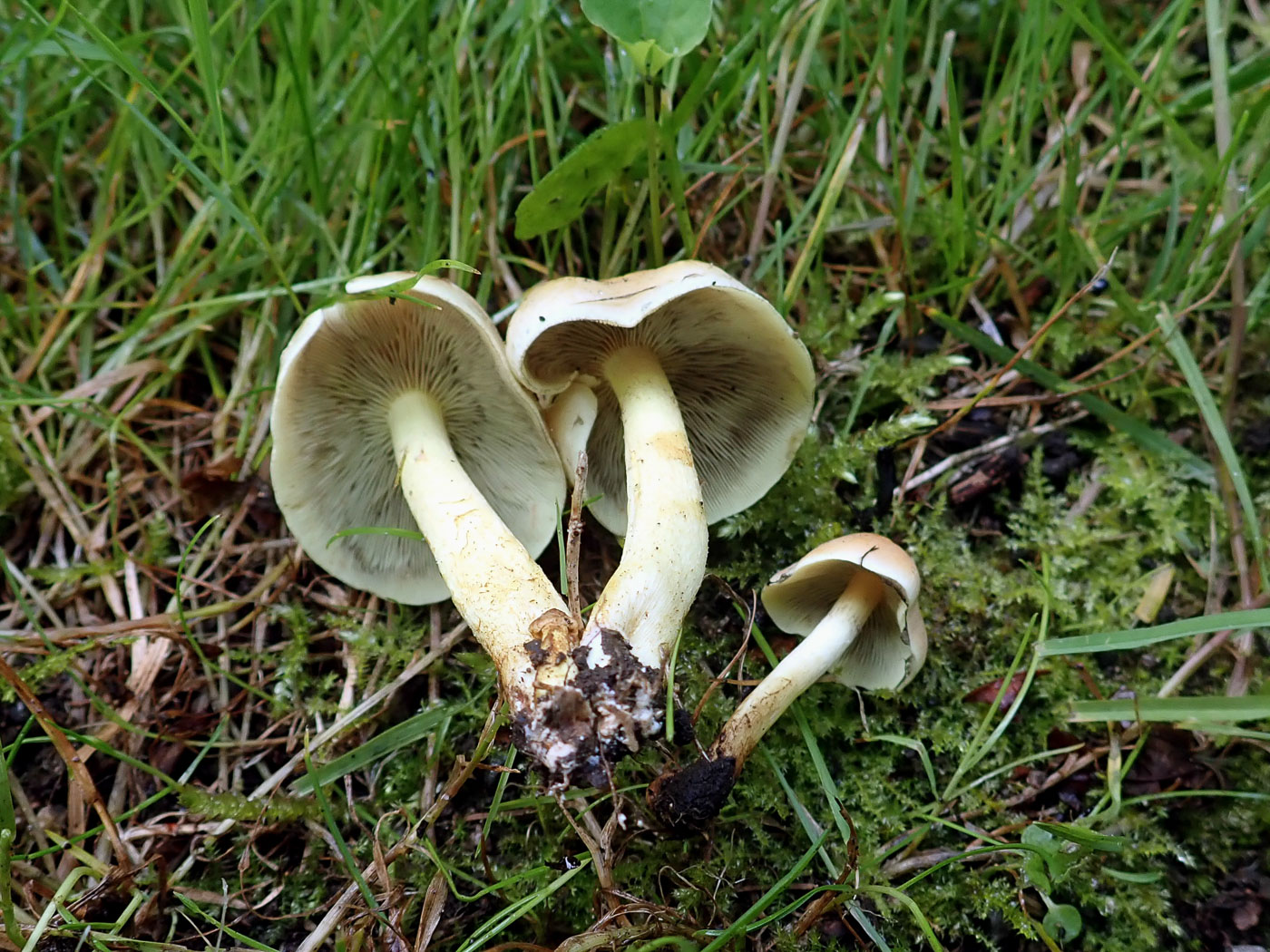 |
August 12th Hypholoma fasciculare (Sulphur Tuft)
In a grassy path edge near Oak at Turville Heath Penny saw these fresh examples of one of our commonest woodland mushrooms. Note its clustered habit, the greenish tinge to the gills when young and before they've been blackened by the maturing dark spores, also the blackish veil remnants usually attached to the cap rim - useful pointers to its ID. See the Masterlist for plentiful other examples.
|
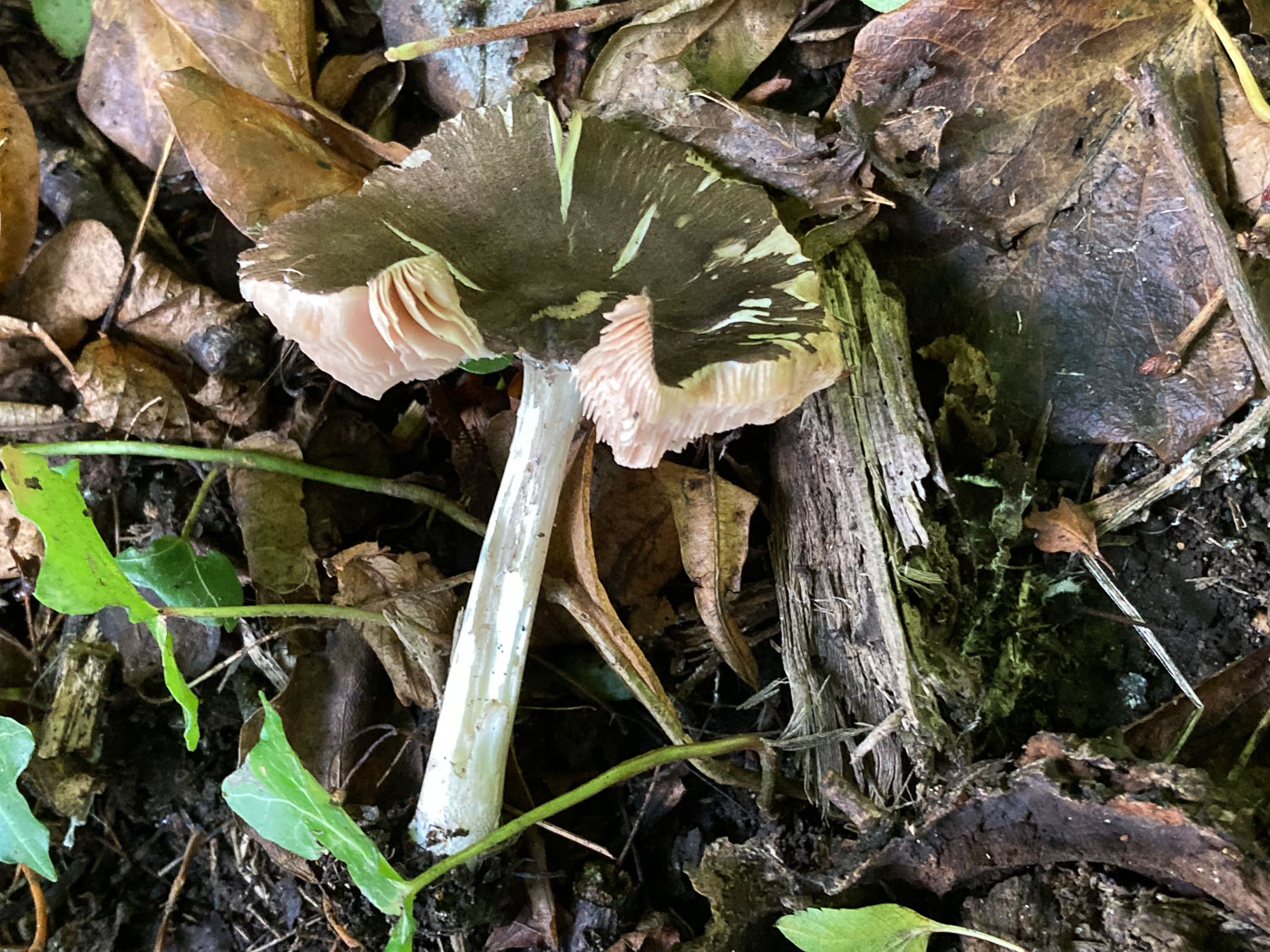 |
August 9th Pluteus ephebeus (Sooty Shield) 
In Cippenham in soil under Lime Russell Ness collected this smallish Shield, noticing the cracking cap which he put down to exposure to the sun. However, under the scope he found features entirely different from those of P. cervinus as he'd expected, so investigated further and keyed it out to this particular Shield noted for its dark cap with tends to split radially rather like a Fibrecap. Unlike many in the genus it often appears in soil (presumably on submerged roots) rather than on fallen wood. See the Masterlist for several other entries.
|
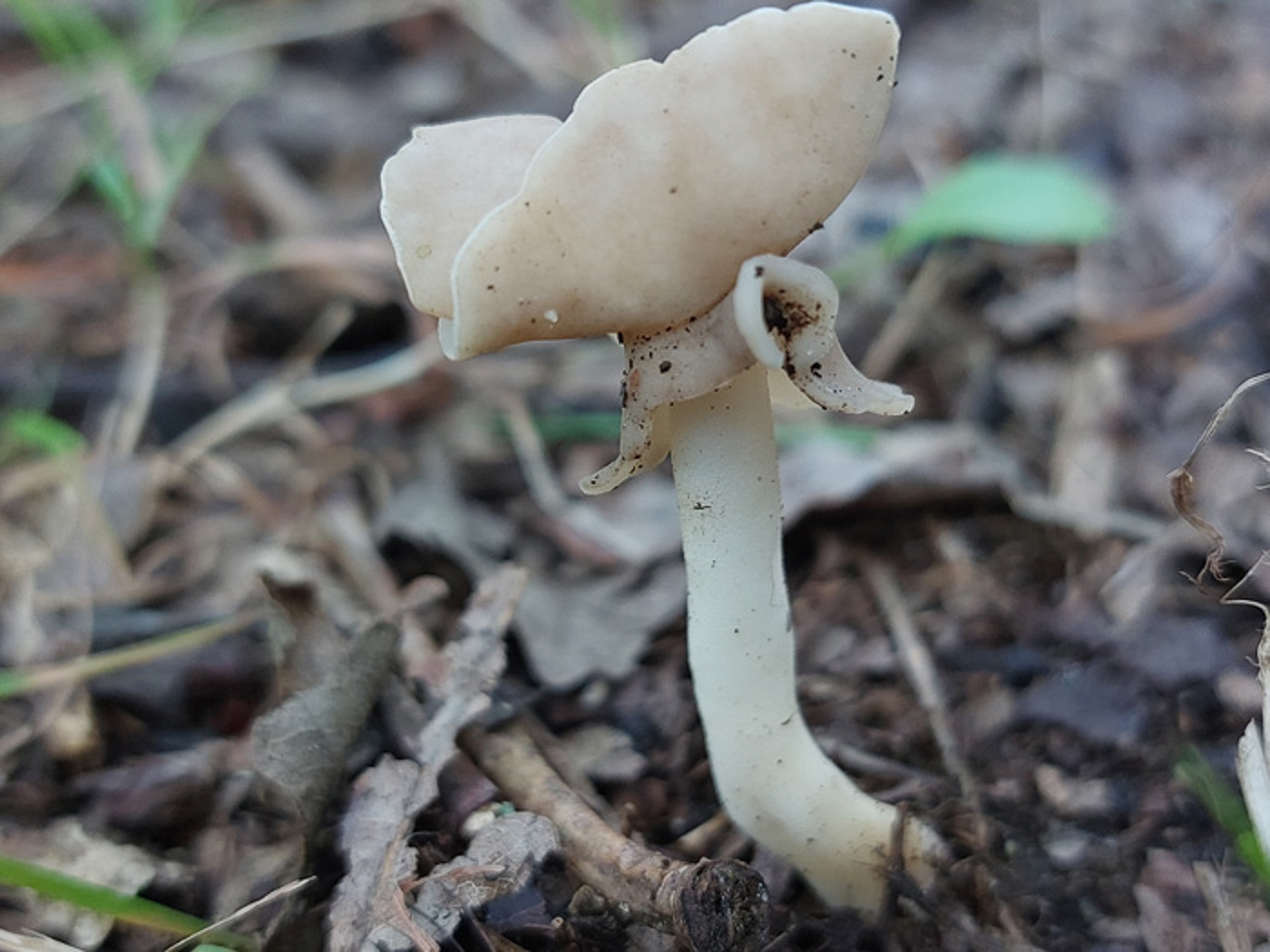 |
August 9th Helvella elastica (Elastic Saddle)
In a grassy path edge in Gerrards Cross Common Jesper Launder found this attractive ascomycete - not rare but not that common either. Its distinctive appearance makes it identifiable in the field though the top section starts out curled downwards, only flaring out as here later. We have one previous Finds Entry: 2022 November 23rd.
|
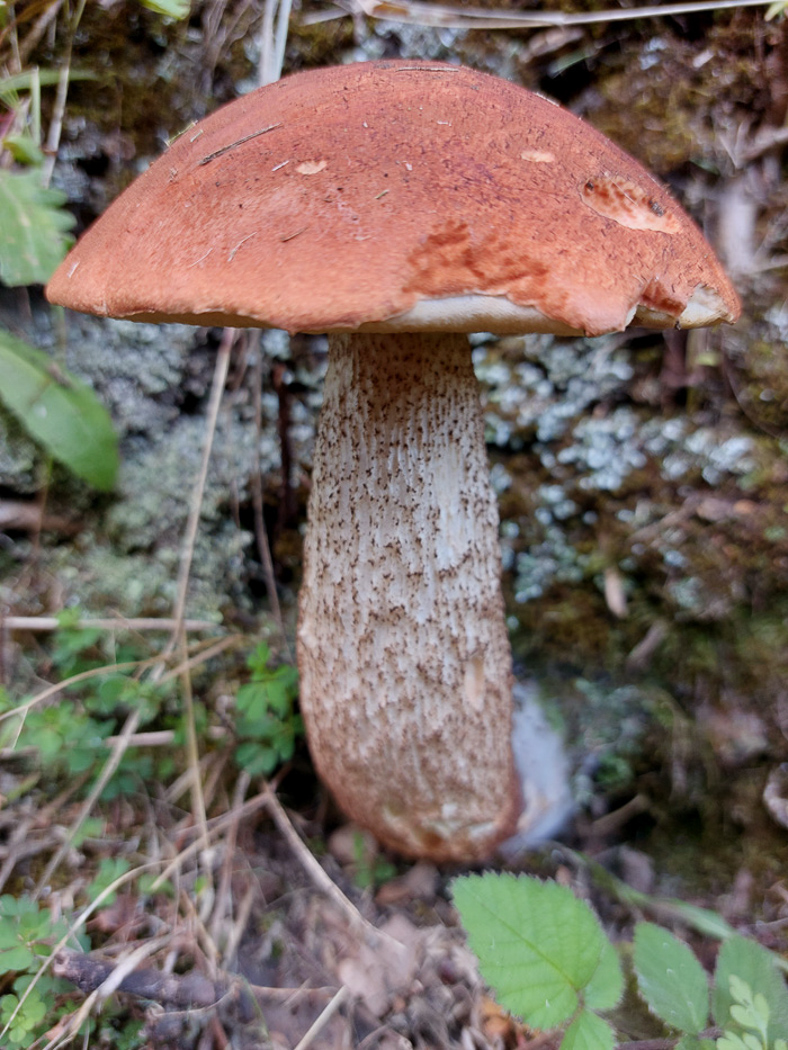 |
August 9th Leccinum aurantiacum (Orange Bolete)
Under Oak in Gerrards Cross Common Jesper Launder found this striking Bolete - not rare but always nice to see. The cap colour and tree association are sufficient to make an ID if your mushroom has the dark red to black 'scabers' on the stem as here, but if under Poplar - most commonly Aspen - and the stem scabers are not reddish but whitish (concolorous with the stem flesh) then you have the much rarer L. albostipitatum. L. aurantiacum is most commonly under Oak but can occasionally occur under other deciduous trees including Poplar and Aspen! See also in Finds 2020 September 15th and 2021 September 6th.
|
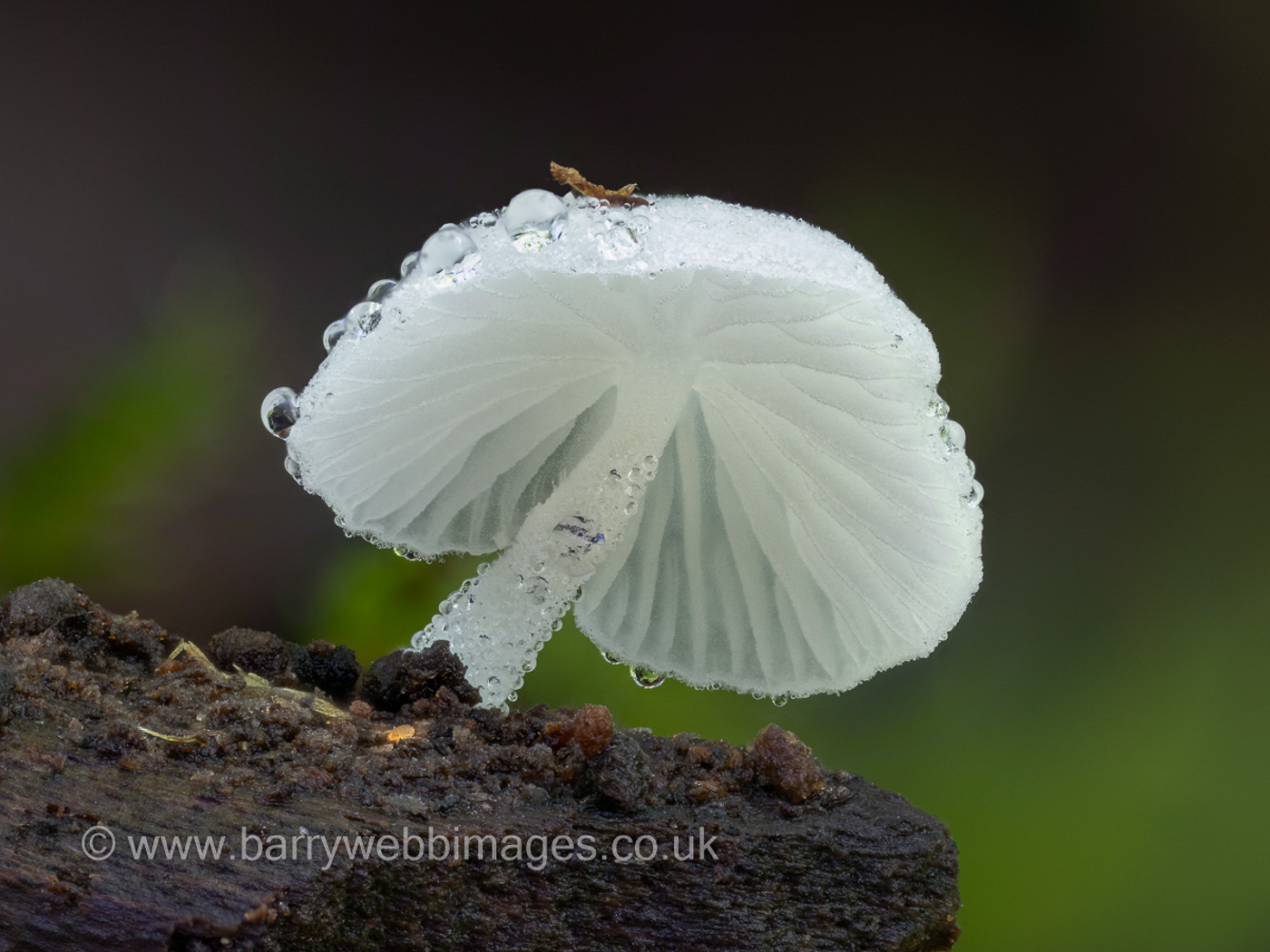 |
August 9th Hemimycena tortuosa (Dewdrop Bonnet) 
At College Lake Gill Ferguson found two tiny white gilled mushrooms on damp woody remains, noticing the droplets on the short stem and cap. Derek then examined it and confirmed from the amazing corkscrew hairs which cover it and which act as a trap for the moisture droplets which are nearly always present and give a clue to its identity. The species is in fact quite common - certainly the commonest Hemimycena - and under a scope it is always a delight to see these unique hairs. The photo is Barry Webb's. See also in Finds 2020 December 23rd and 2022 November 8th.
|
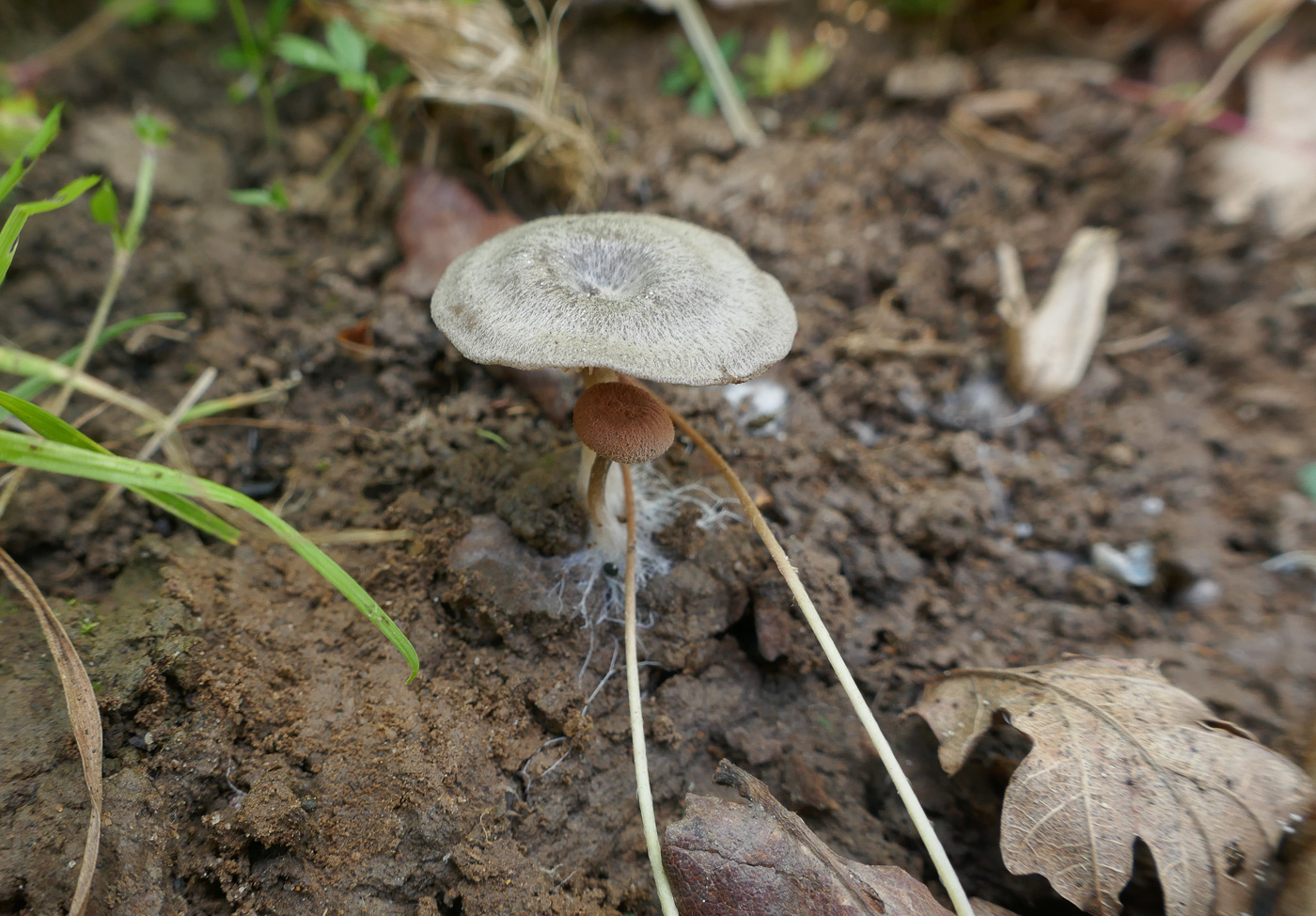
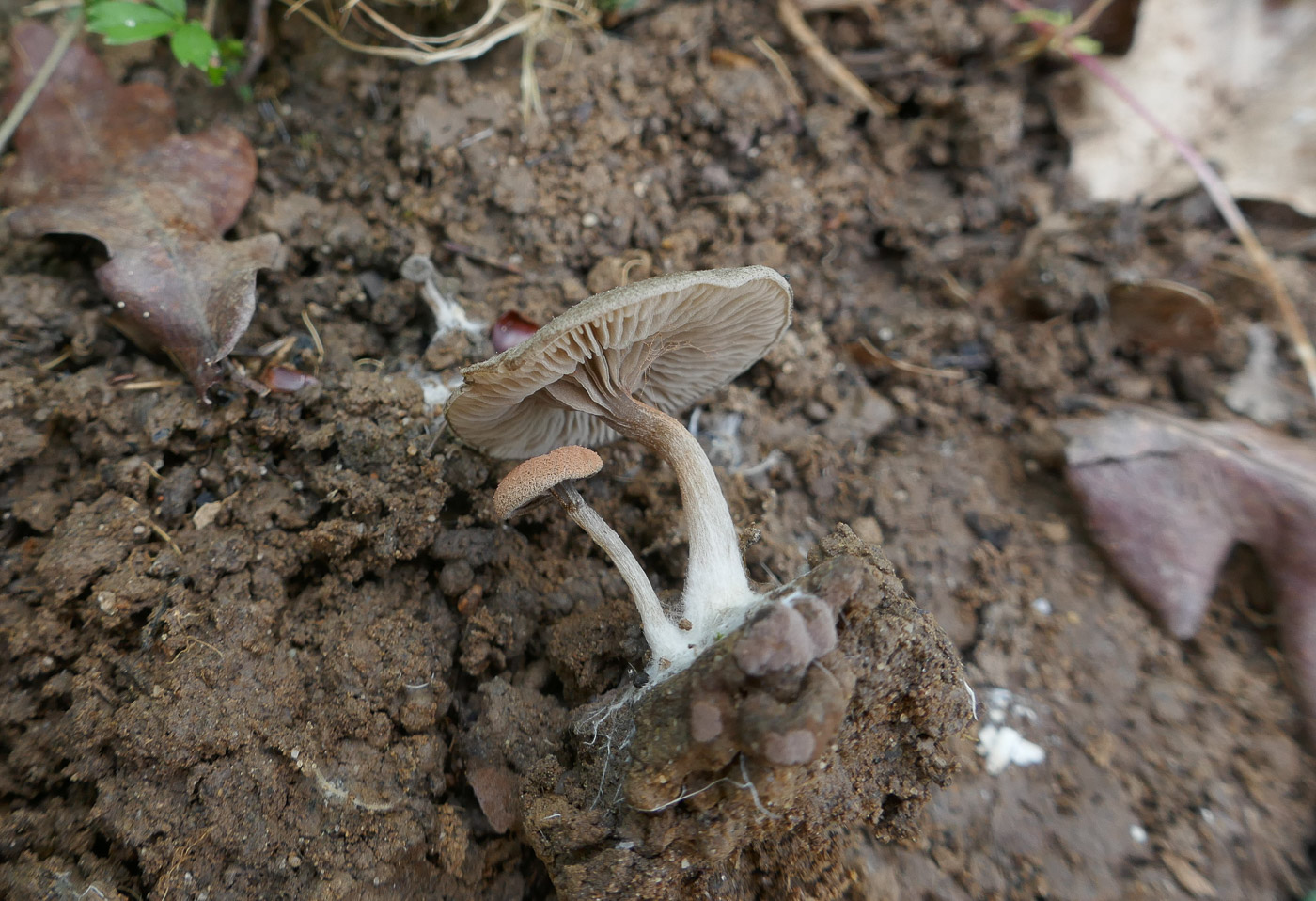 |
August 9th Entoloma undatum (a Pinkgill with no common name) 
Last year on our Stampwell Farm Walk we found a small greyish slightly furry Pinkgill growing in soil just under an old wooden door lying about near a pond; this turned out to be new to the county (see my report for another image and more info). Jackie has just found it again in exactly the same spot! She was, however, confused by the much smaller specimen underneath which looked somewhat different until she realised that it was covered by the pink-brown spores from the cap above it! So this is the second county find and a new entry for Finds.
|
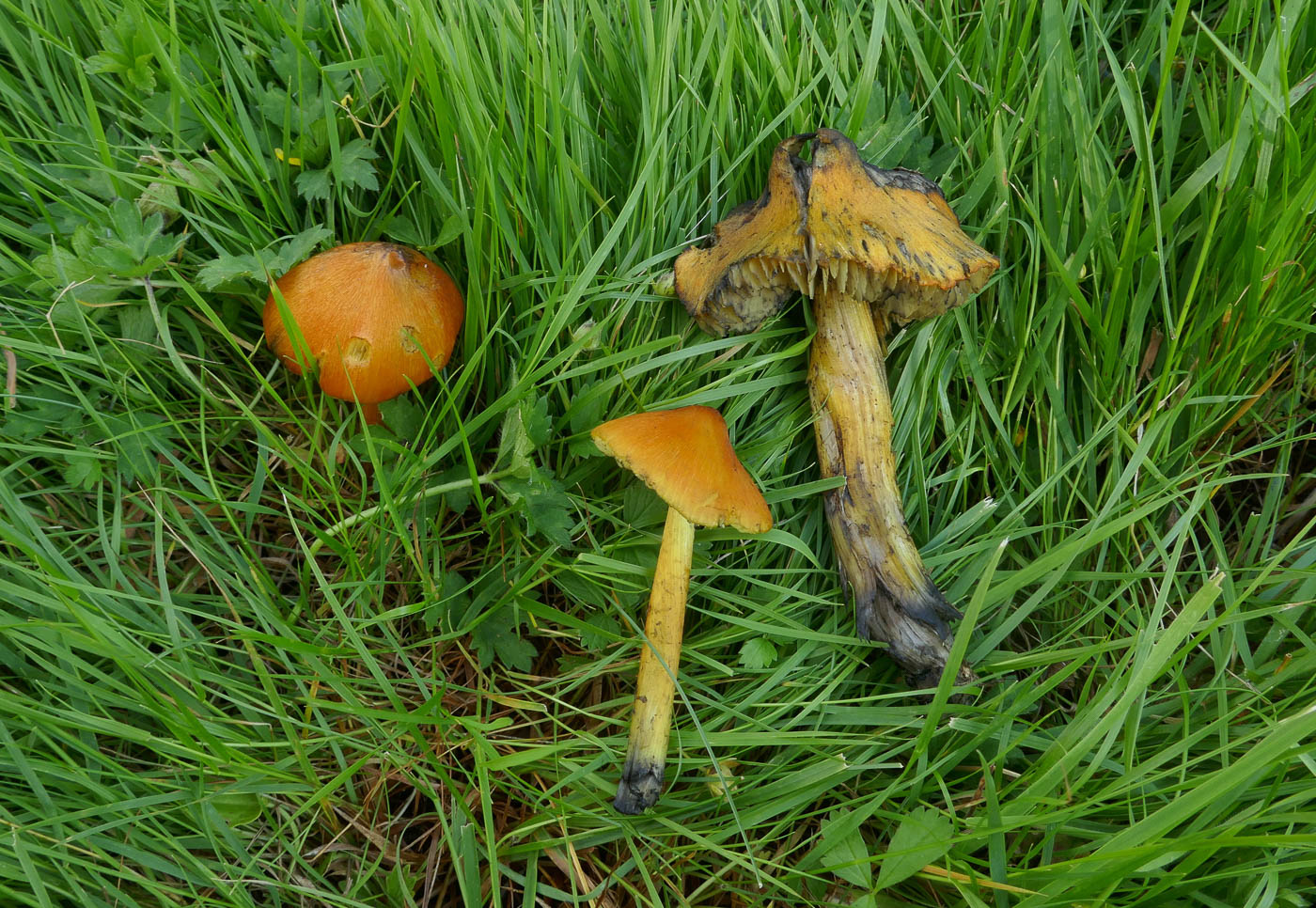 |
August 9th Hygrocybe conica (Blackening Waxcap)
At Stampwell Farm Jackie Ewan found this common species - one of the easiest Waxcaps to recognise once it starts to blacken. Though the cap colour is variable between red / orange / yellow, its combination of strongly conical shape, with both cap and stem viscid together with the blackening, should present no problems in ID - unless you're in dunes when there are other similar contenders! See the Masterlist for further examples.
|
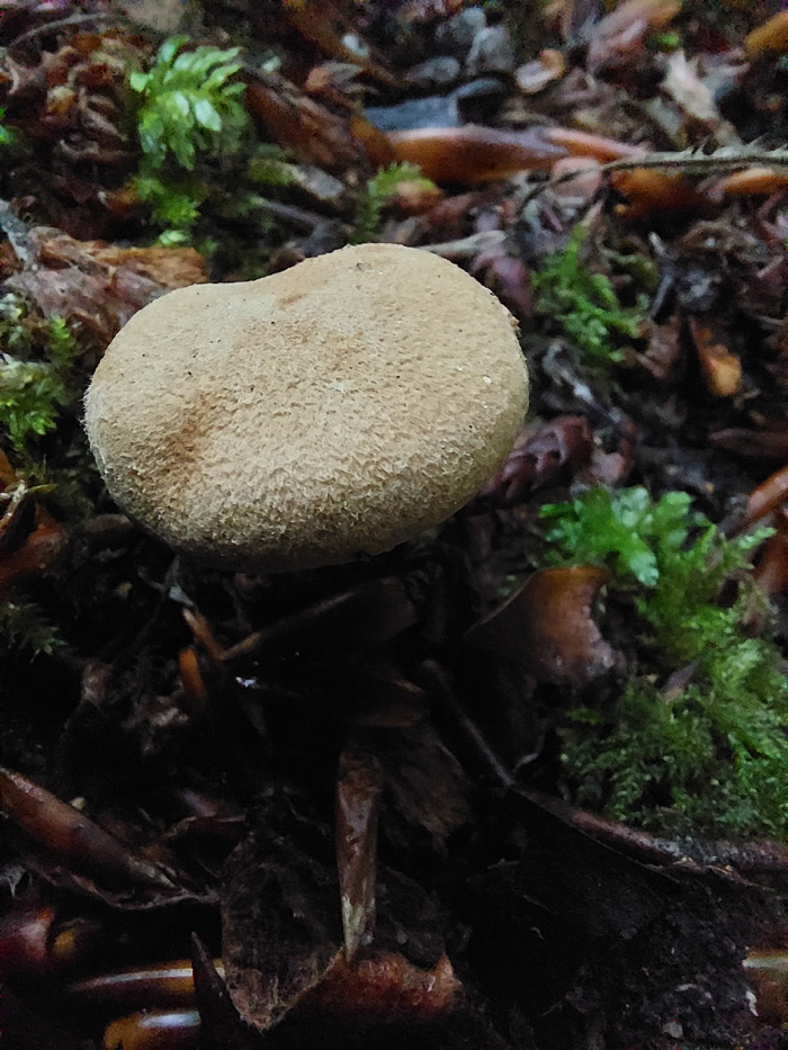
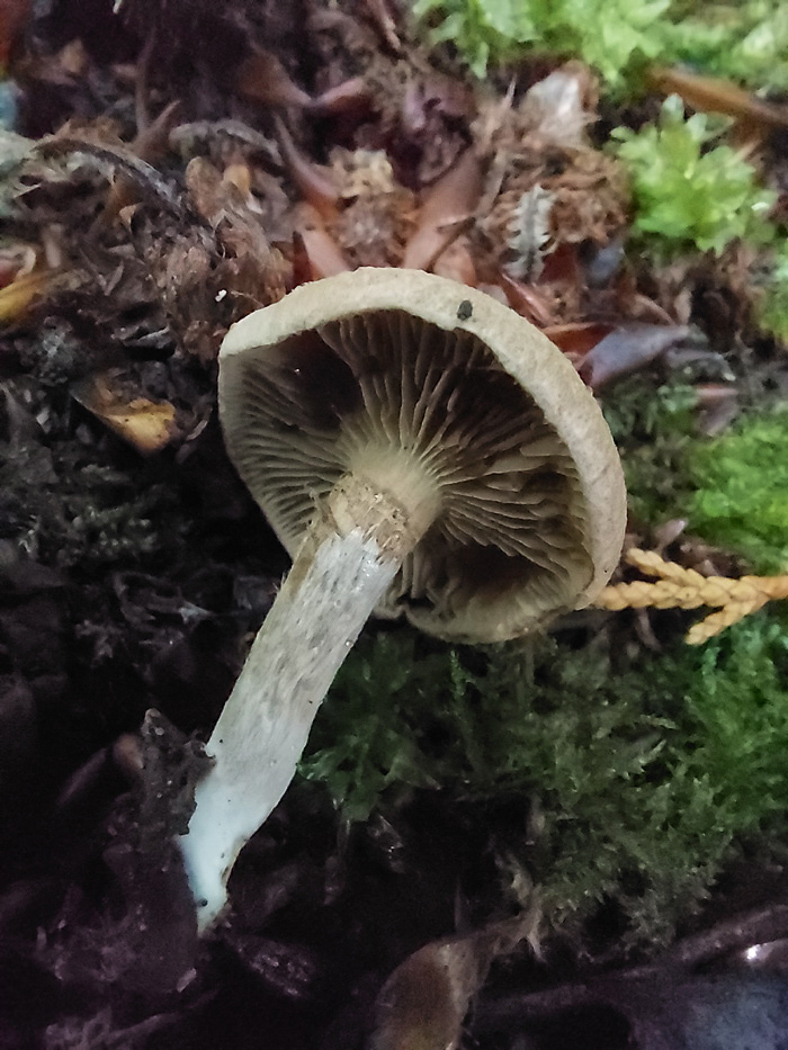 |
August 8th Mallocybe fuscomarginata (a rare Fibrecap with no common name) 
Under Hornbeam in Jordans Jesper Launder found this rare Fibrecap and took it to our microscope workshop the following day for further work to identify. Through the micro-features he recognised the specific genus but was then unsure though Penny was able to distinguish between the more common M. dulcamara (found the same day - see below) and M. fuscomarginata from the differently shaped gill edge cells. The species name refers to the darker brown gill edge which can develop in this species. Sadly the light was poor on collection hence his photos are not the best - his apologies! This is new to the county and to Finds.
|
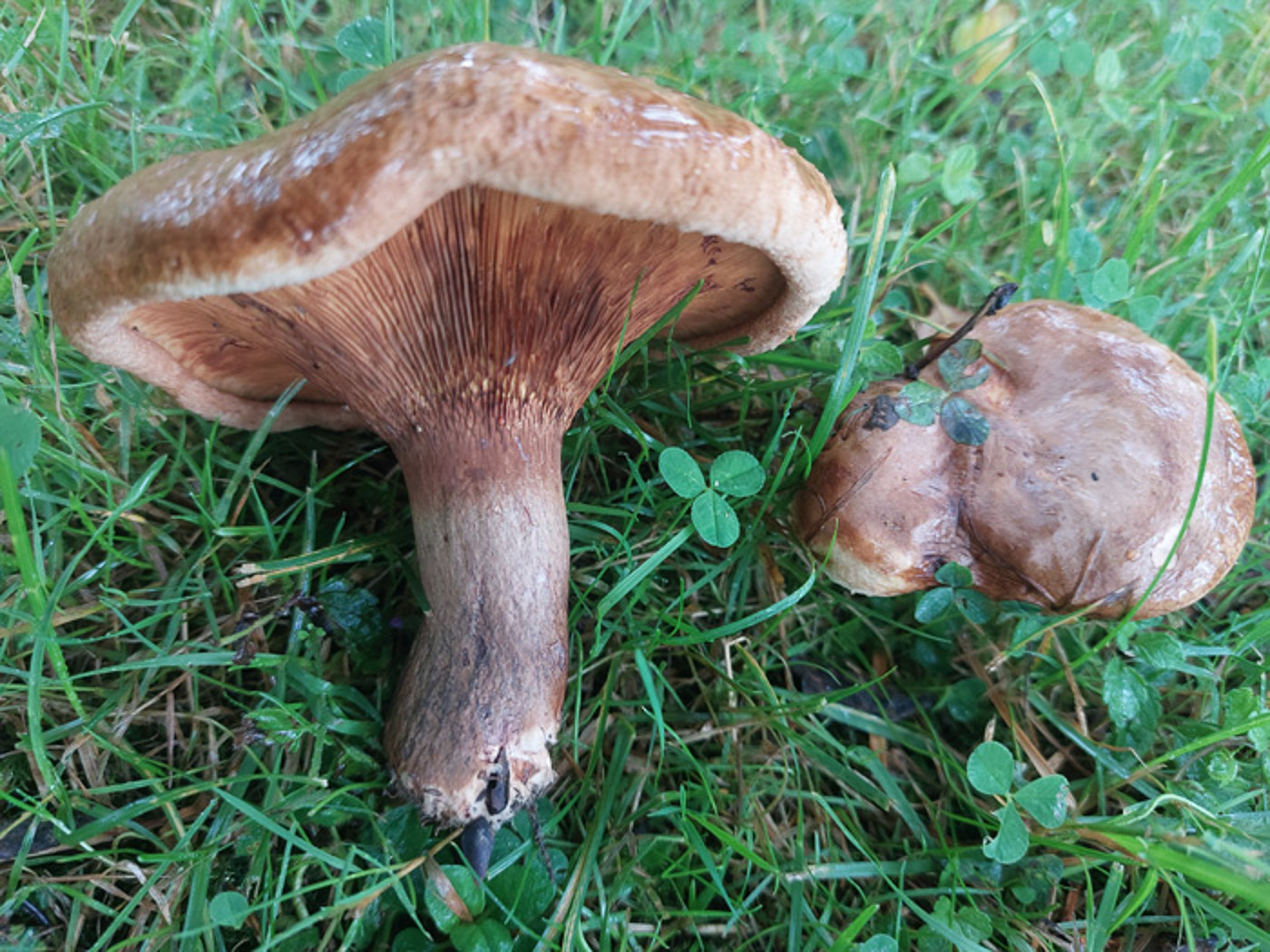 |
August 8th Paxillus obscurisporus (an unusual Rollrim with no common name) 
Under Willow in a grassy area in Jordans Jesper Launder found these extra large Rollrims which made him suspect they might be something other than the common Brown Rollrim. Sure enough the spore print was noticeably darker than that of the commoner species, therefore confirming his ID - the species name referring to this character. We have just one previous record (see in Finds 2020 October 31st) though it may well go unrecognised and therefore misnamed. It is rare in woodland so any large Rollrims in parkland / grassland etc could be this..........
|
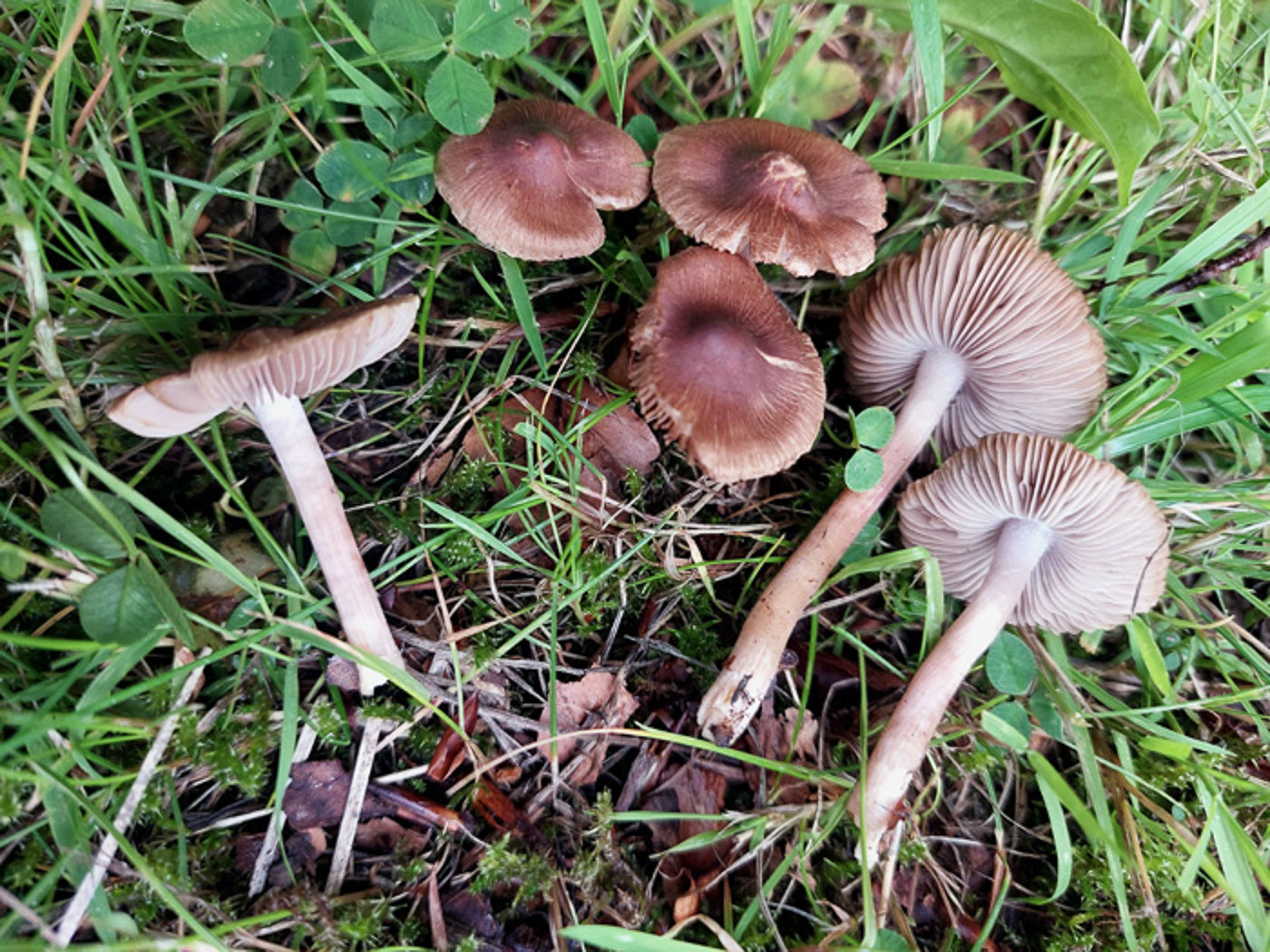
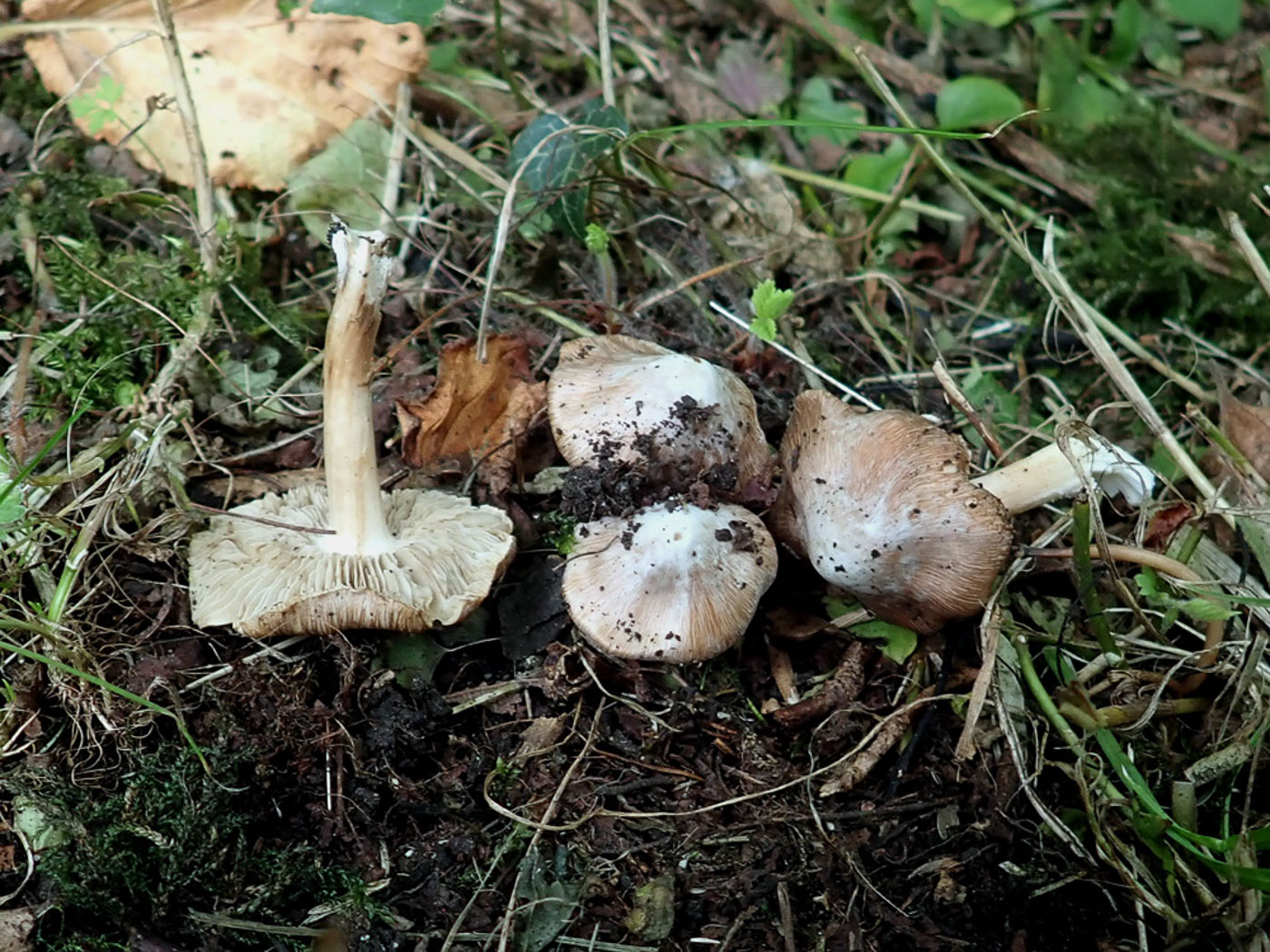 |
August 8th Inosperma maculatum (Frosty Fibrecap) 
In Jordans under Oak Jesper Launder made this collection of Fibrecaps to take to our microscope workshop the next day where Penny and he keyed it out. Previously in genus Inocybe, it is similar to many other Fibrecaps having a rich brown smooth cap with an umbo (in this species quite prominent) and a 'spermatic' smell. Often it can only safely be named through micro-characters which luckily are quite distinctive, though when young it can be distinctively conical and often has a white veil covering the central zone (hence its common name) but after rain this can get washed off as here! Photo 2, however, shows a more typical collection - from Rushbeds Wood made 10 days later by Penny - with both veil and conical shape in evidence. This is one of our commoner Fibrecaps though surprisingly is new to Finds.
|
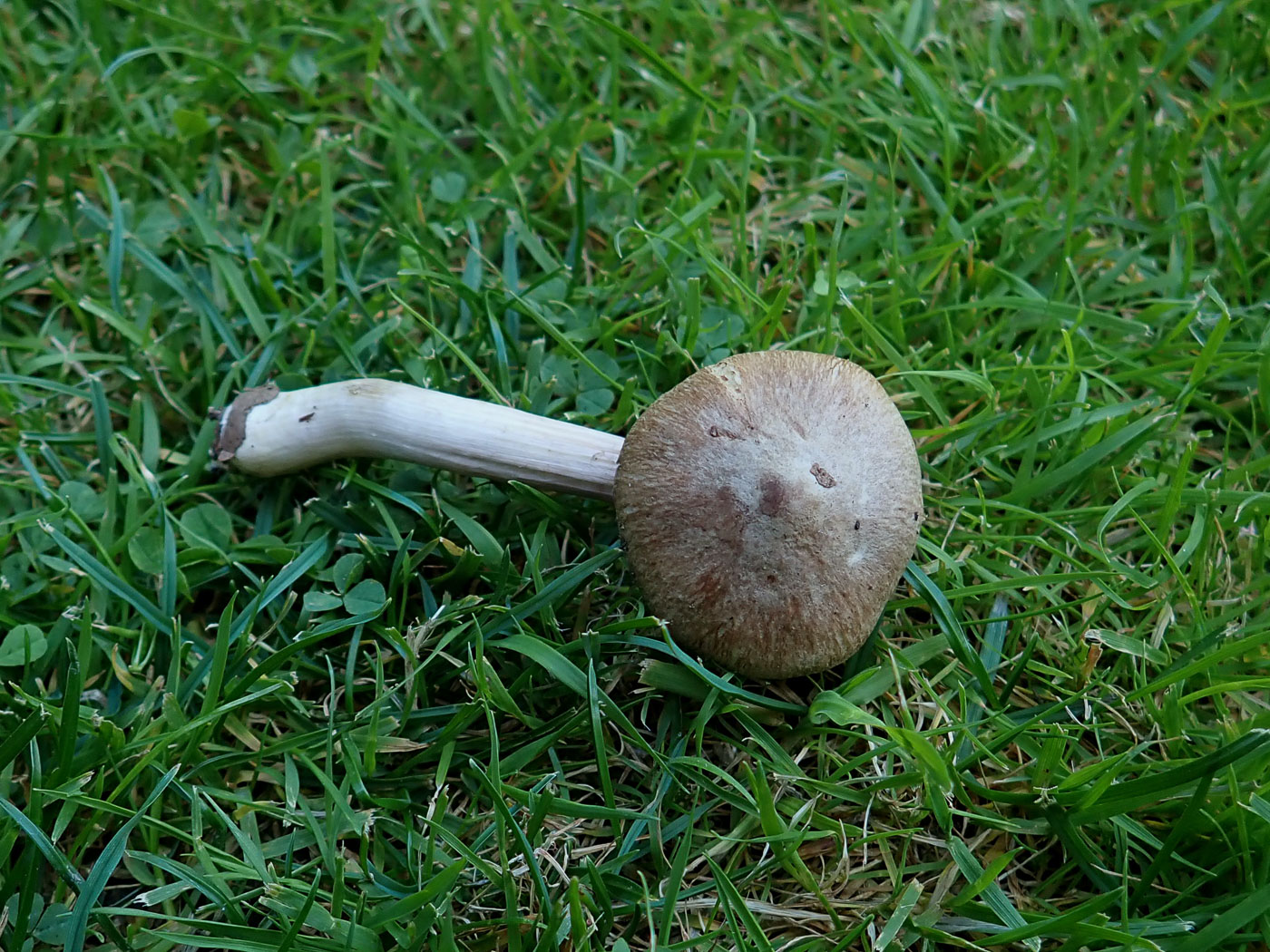
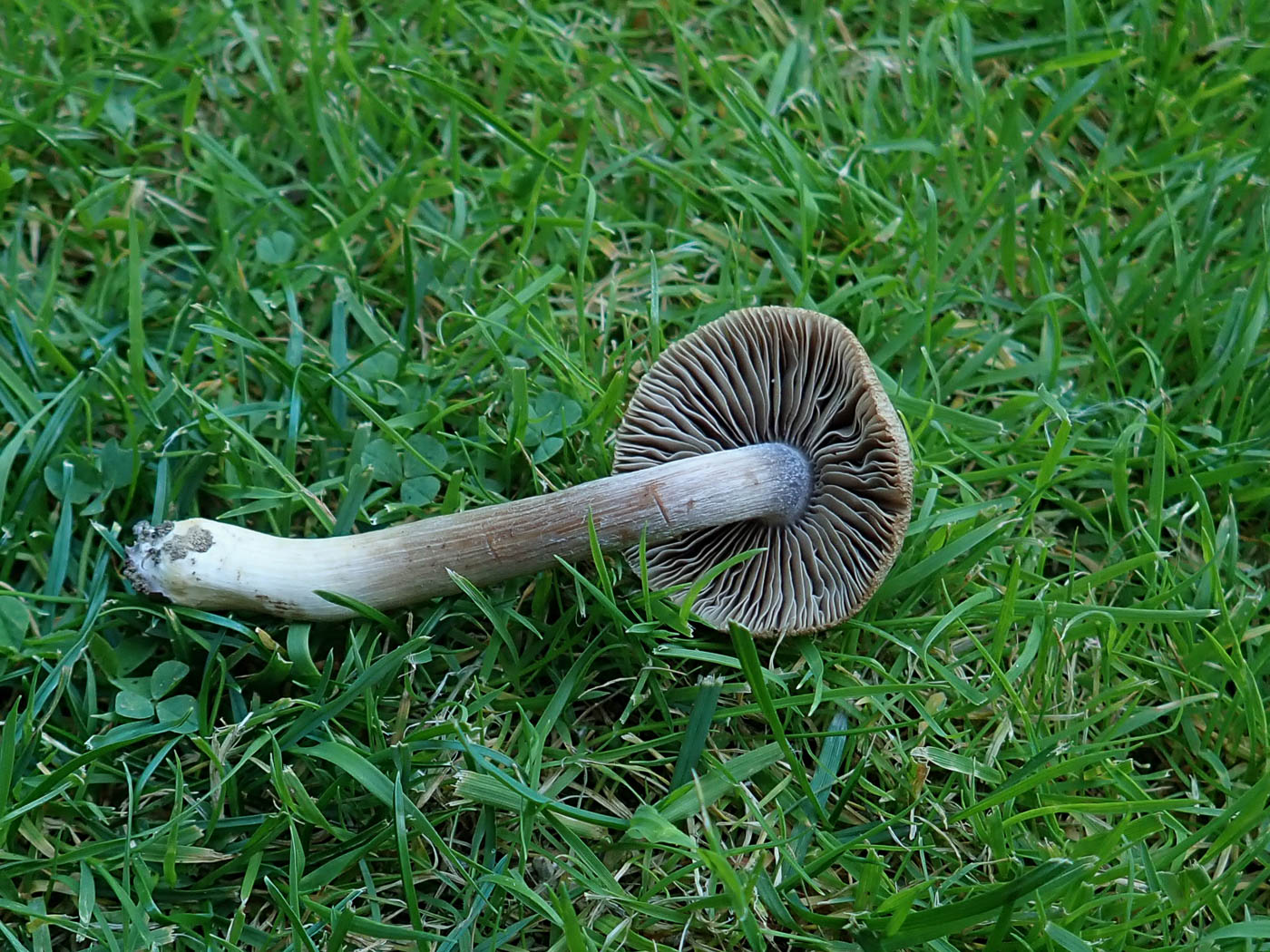 |
August 8th Inocybe lavandulochlora (a very rare Fibrecap with no common name) 
At College Lake Penny and Paul picked up this singleton Fibrecap under Beech but Penny didn't have time to to examine it until two days later when she realised it was something special, so then took the photos on her lawn at home. The buff brown cap was about 2 cm across and the stem apex was distinctly lavender / violet (as was the flesh inside), streaky brown in the middle though clearly pale cream at the base. The species was only recognised as British when a collection of hers from Wales (misidentified back in 2011) was eventually sequenced as this - a species not included in any available keys. Since then further sequencing has produced one or two more collections - one from Bucks - but she suspects this will be the first identified through macro and micro characters, though this will also need to be sequenced to confirm.
|
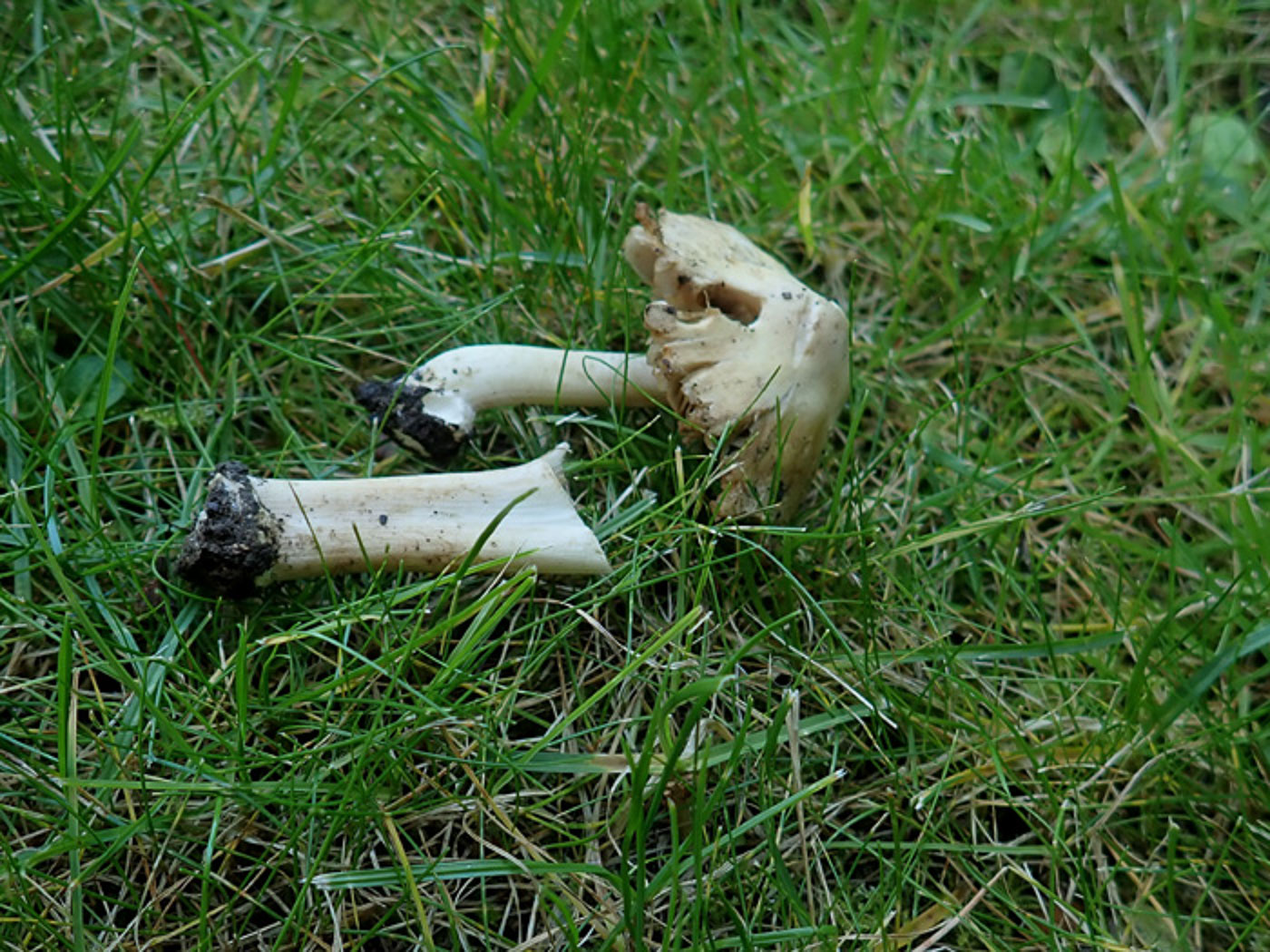
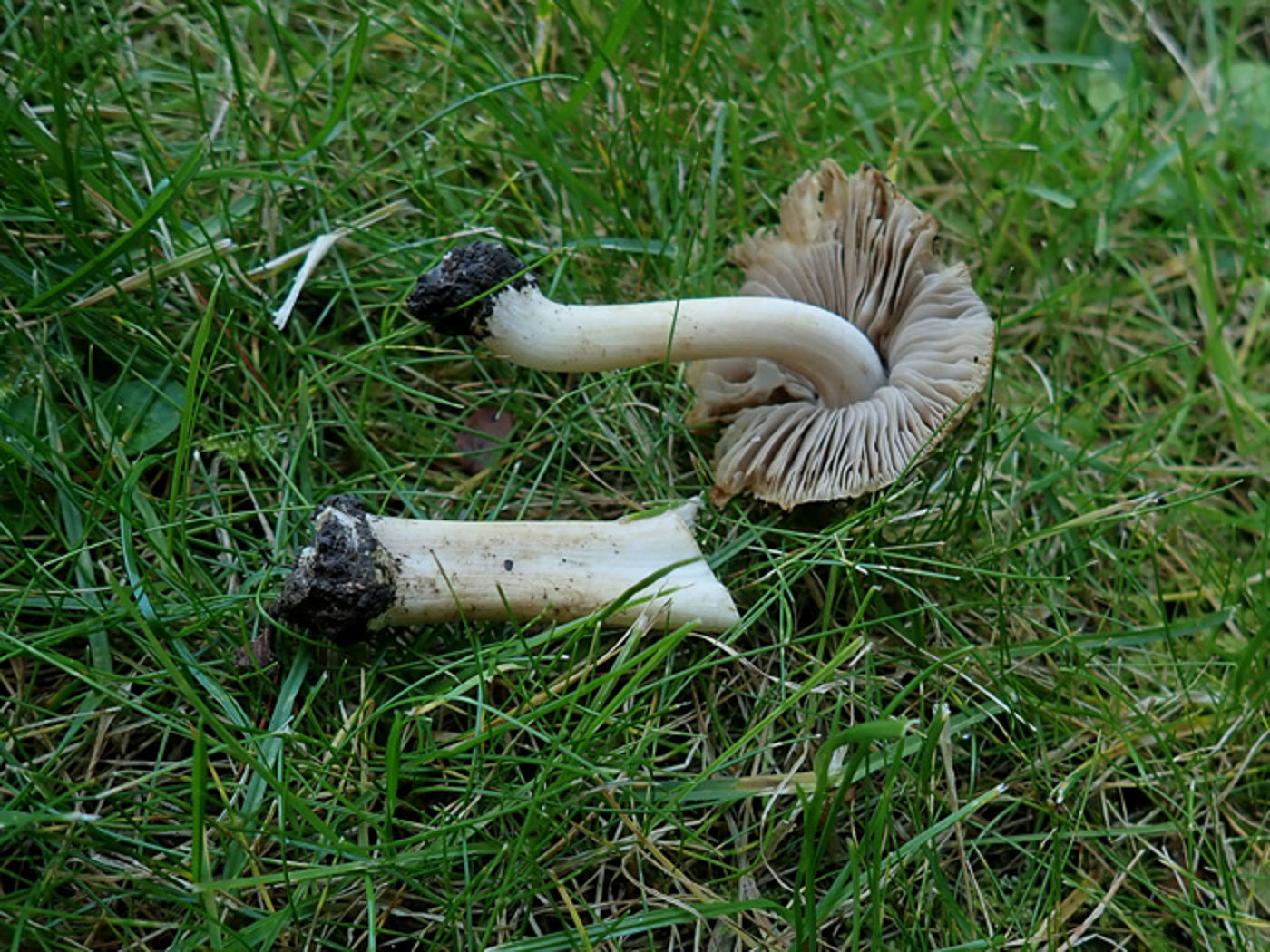 |
August 8th Inocybe duriuscula (a very rare Fibrecap with no common name) 
In preparation for our microscope workshop the following day, Bob Simpson collected samples from his wood, Salden Wood, and amongst them was this Fibrecap which Penny and others worked on at the workshop. This is quite a large Fibrecap with a pale buff to ivory smooth cap, a chunky white stem having a bulb at its base, also distinctive micro characters. It occurs under deciduous trees and we have just two previous county records. (The photos were taken by Penny on her lawn a couple of days later.) This is a first for Finds.
|
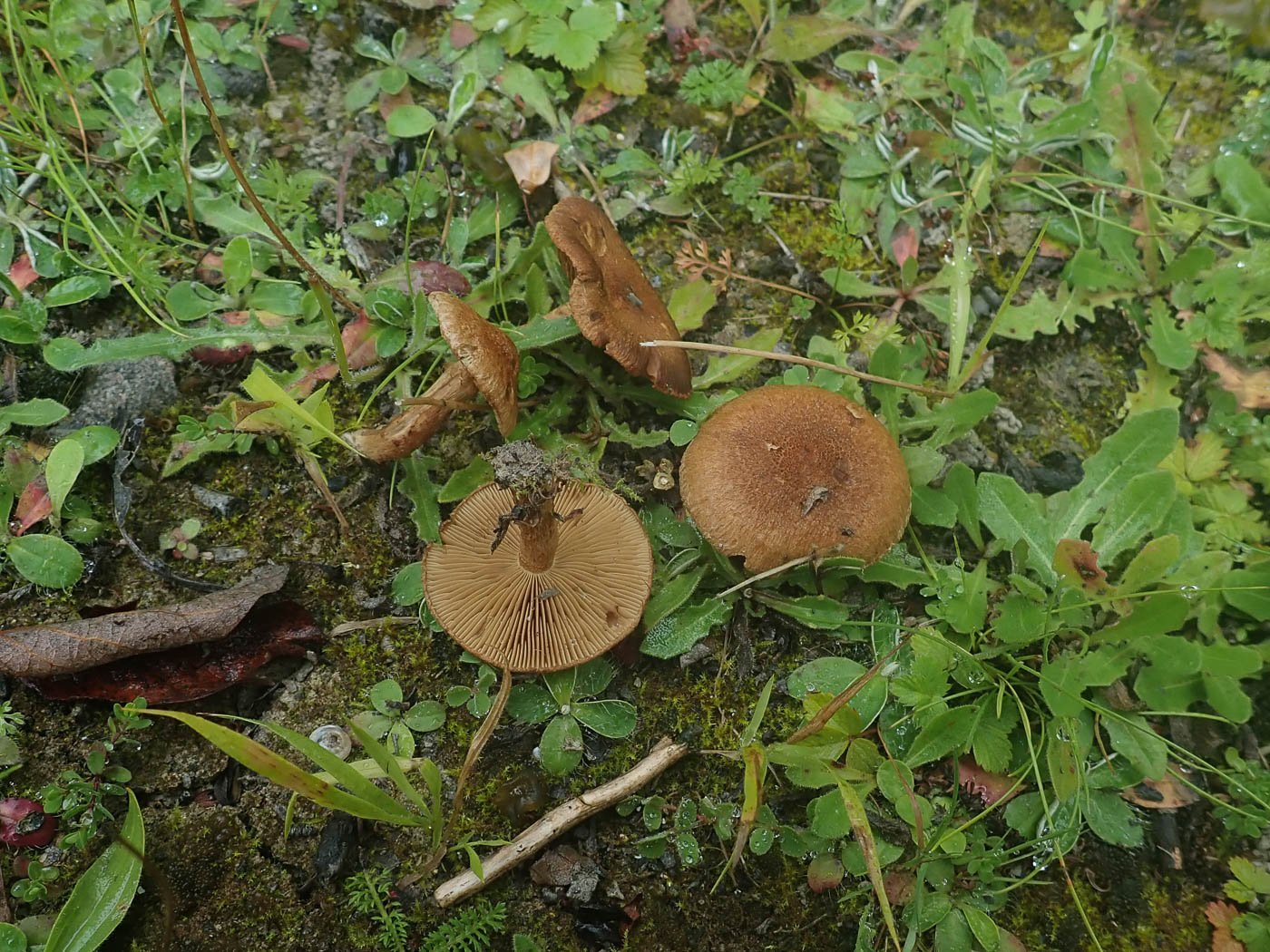 |
August 8th Mallocybe dulcamara (an unusual Fibrecap with no common name) 
At College Lake Penny found surprising numbers of this uncommon Fibrecap (previously in genus Inocybe) growing in path edges with Willow. The species has a rusty brown flattish cap, to 4cm across or more and having a roughened dry fibrous surface. Gills and stem are concolorous and the stem at first has a distinct hairy ring zone (a characteristic of this particular genus of Fibrecaps) though this tends to disappear. This is a first for Finds and is by far the commonest member of this small genus which is still poorly understood and probably has more species in the UK than we recognise at the moment.
|
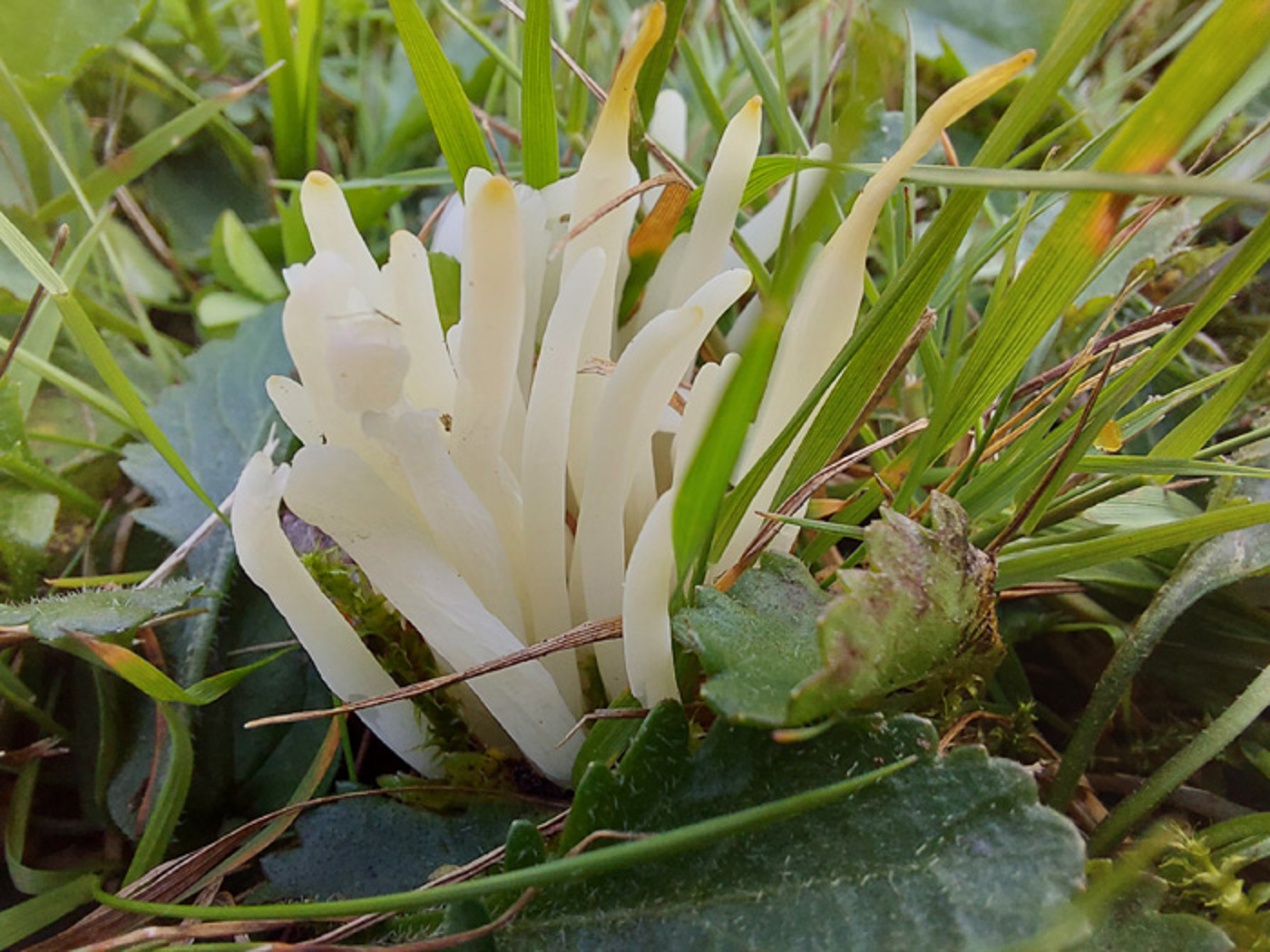 |
August 7th Clavaria fragilis (a Club with no common name)
In a grassy verse in Jordans Jesper Launder found this pure white clump of Clubs - not rare but apparently with only two previous county records. Another white Club, C. acuta, is much more commonly recorded though the two could easily be confused. That species is grouped together rather than tightly clustered as here, furthermore it has a distinct thinner stem section at the base, not seen here. This is a new entry for Finds.
|
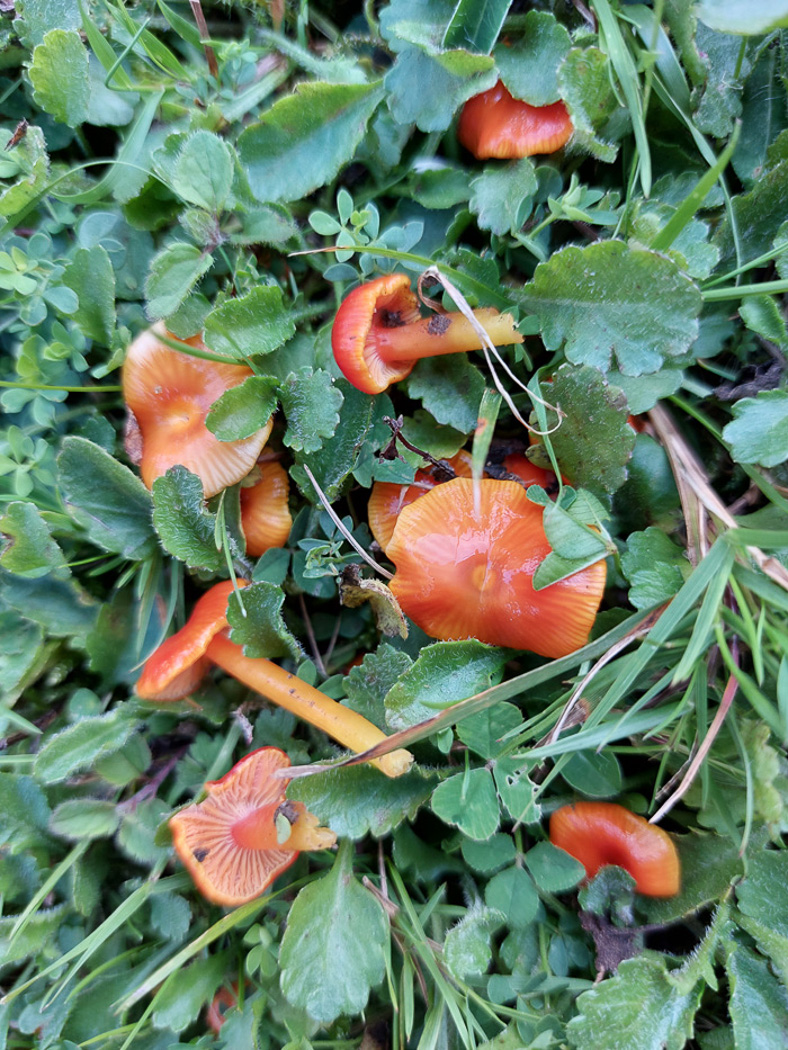 |
August 7th Hygrocybe insipida (Spangled Waxcap)
In a grassy verge in Jordans Jesper Launder found these small Waxcaps just appearing. Somewhat variable in colour, this common species tends to stay less than 2 cm across and both cap and stem are smooth and sticky. Some shade of yellow / orange / red over all, the stem top tends to be red as can be seen here and the gills may or may not be decurrent! See also in Finds 2020 November 1st and 2021 October 11th.
|
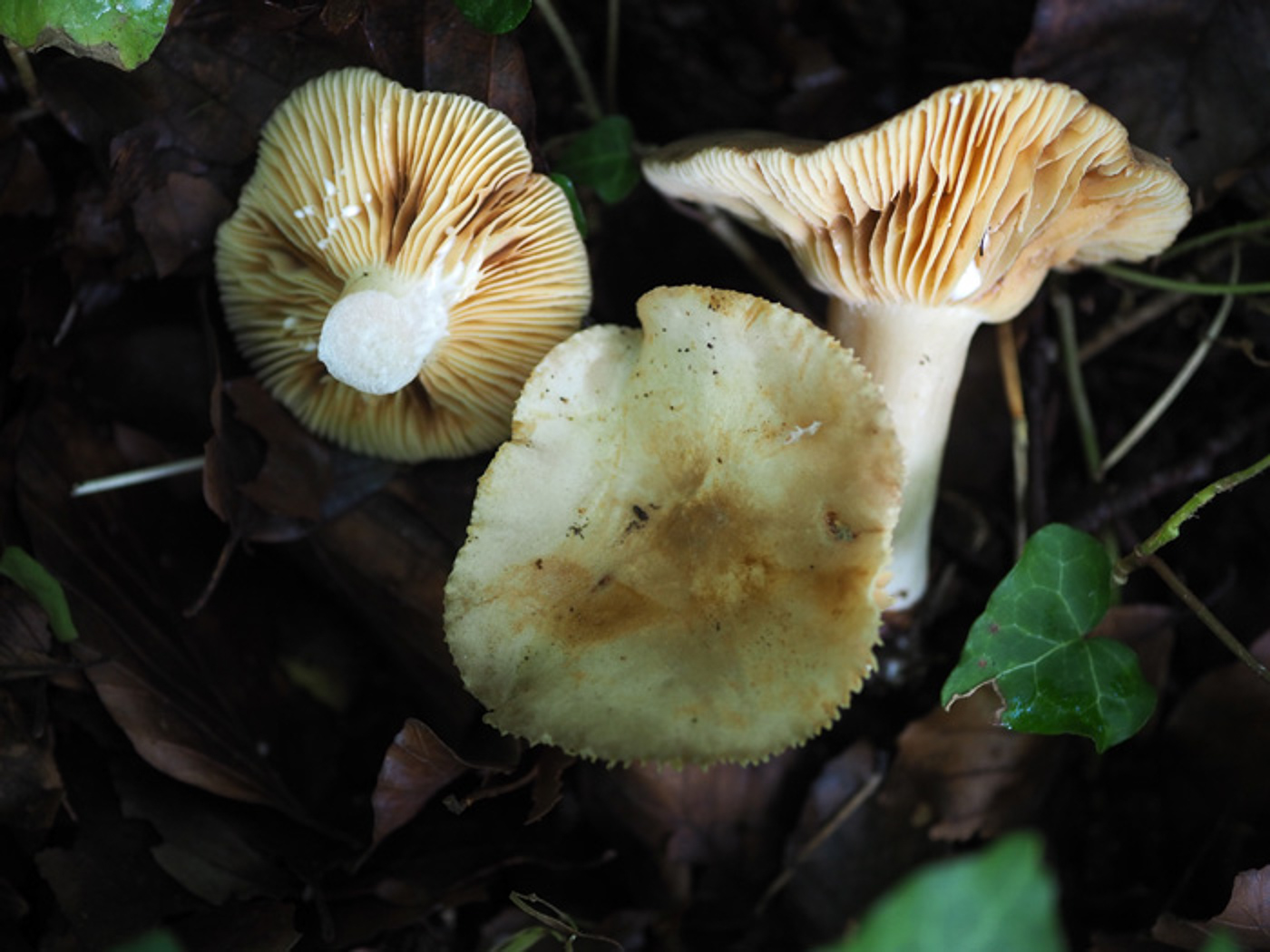 |
August 7th Lactarius azonites forma virgineus (an unusual Milkcap with no common name) 
In Tinkers Wood under Beech John Catterson found this trio of whitish Milkcaps which he was very unsure about and sent the photo to Penny for help. He wondered if it was L. pallidus but noticed that the milk turned pinkish on the gills where damaged (though still showing white in his photo - this colour can take half an hour or more to develop). There are a handful of Milkcaps with 'pink milk' and they can be difficult to separate, but this one has an unusual white form (seen here), also the spore markings differ from others which also helps. See a previous collection with more typical coloured caps on July 16th, with two other earlier collections in Finds also.
|
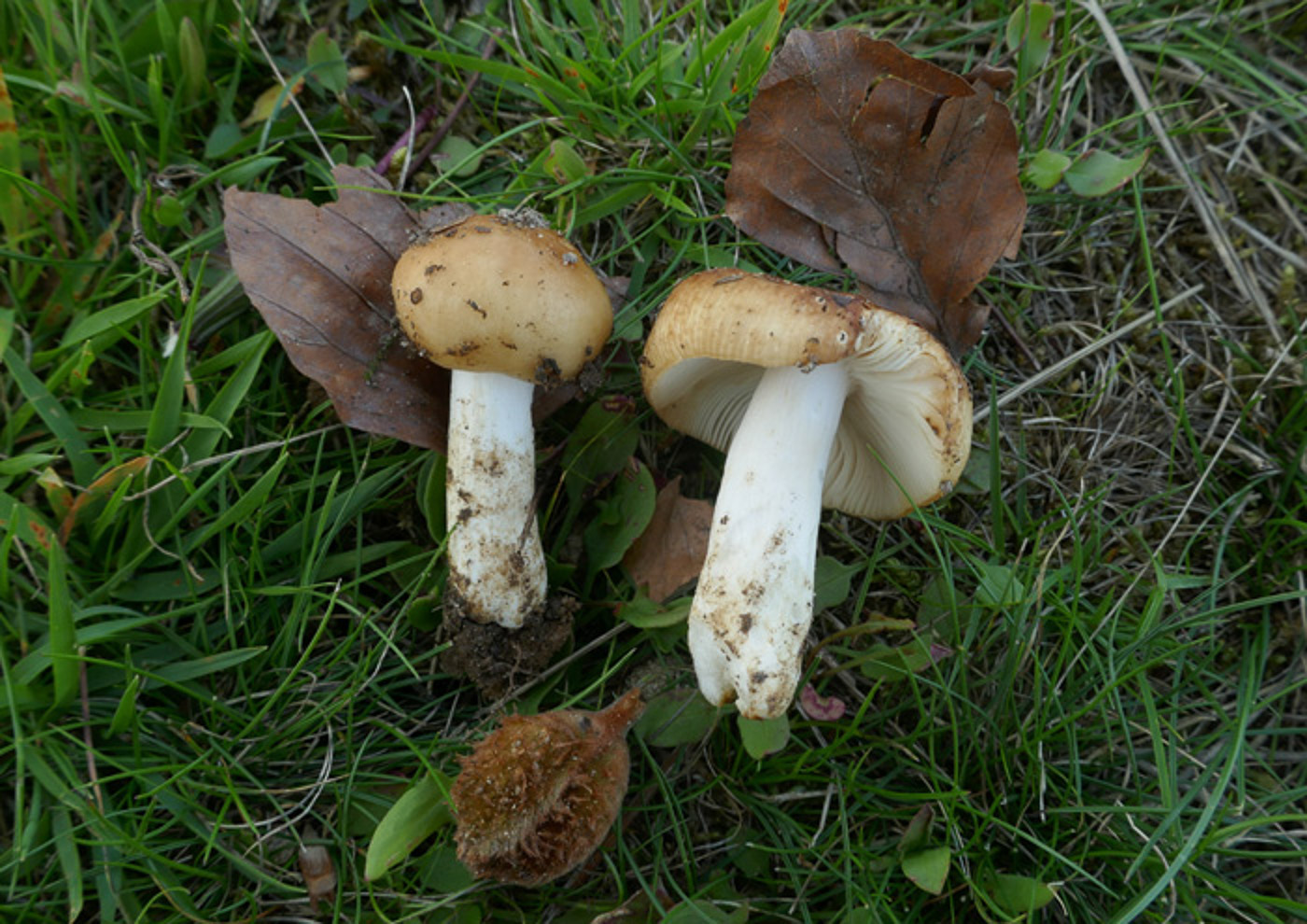 |
August 7th Russula grata (Bitter Almond Brittlegill) 
At Stampwell Farm Jackie Ewan found this pair under Beech - a new species for her and for the site. Previously R. laurocerasi, this is another of the 'smellies' but one with a beautiful smell of almonds / marzipan rather than the somewhat unpleasant smells of the otherwise very similar R. foetens and subfoetens (see July 30th for comparison with further examples elsewhere in Finds). The tightly closed sticky cap when young is typical, also the dirty ochre colour and often these species have cavities in the stem if sliced lengthways. They can get quite big, brittle and misshapen when older and though they favour Beech can also occur under other deciduous trees. This species is considerably less common that the other two, however. See also in Finds 2020 October 1st.
|
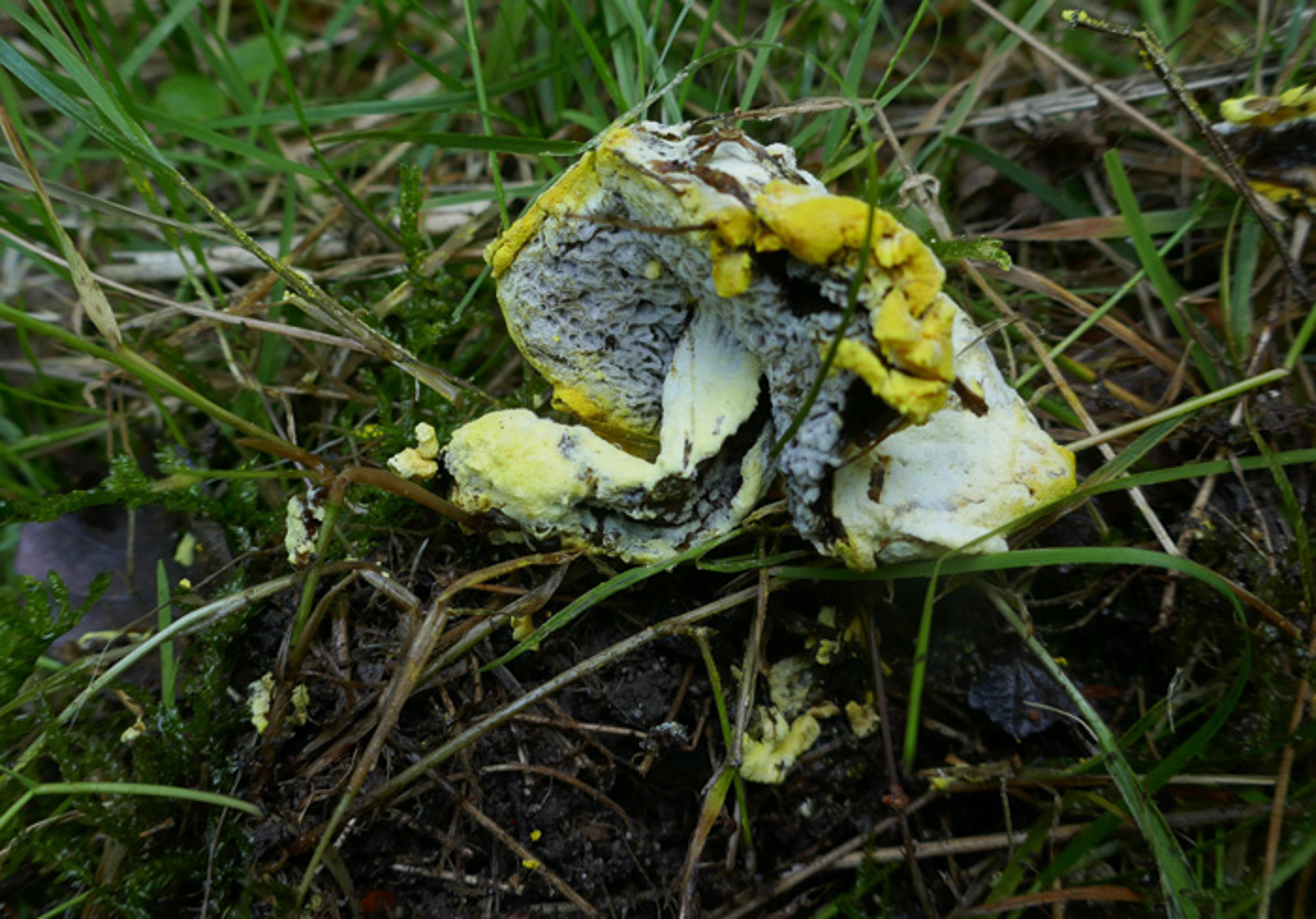 |
August 7th Hypomyces chrysospermus (Bolete Mould)
At Stampwell Farm Jackie Ewan noticed this typical example of a very common fungus though a first for Finds. Related to the Ascomycetes, the species parasitises several genera of Boletes, causing them to turn white then eventually bright chrome yellow as can be seen here and rendering them impossible to identify.
|
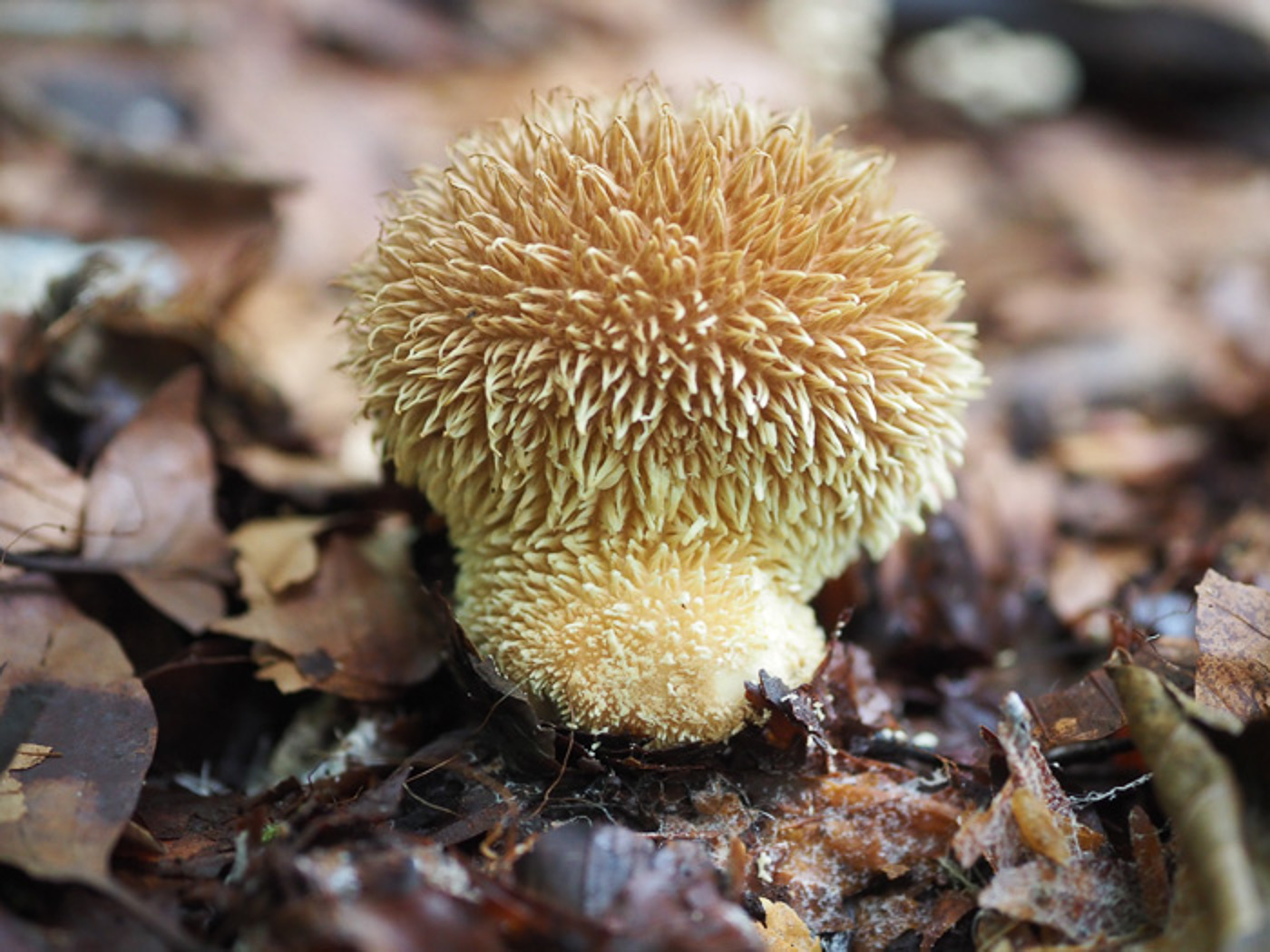
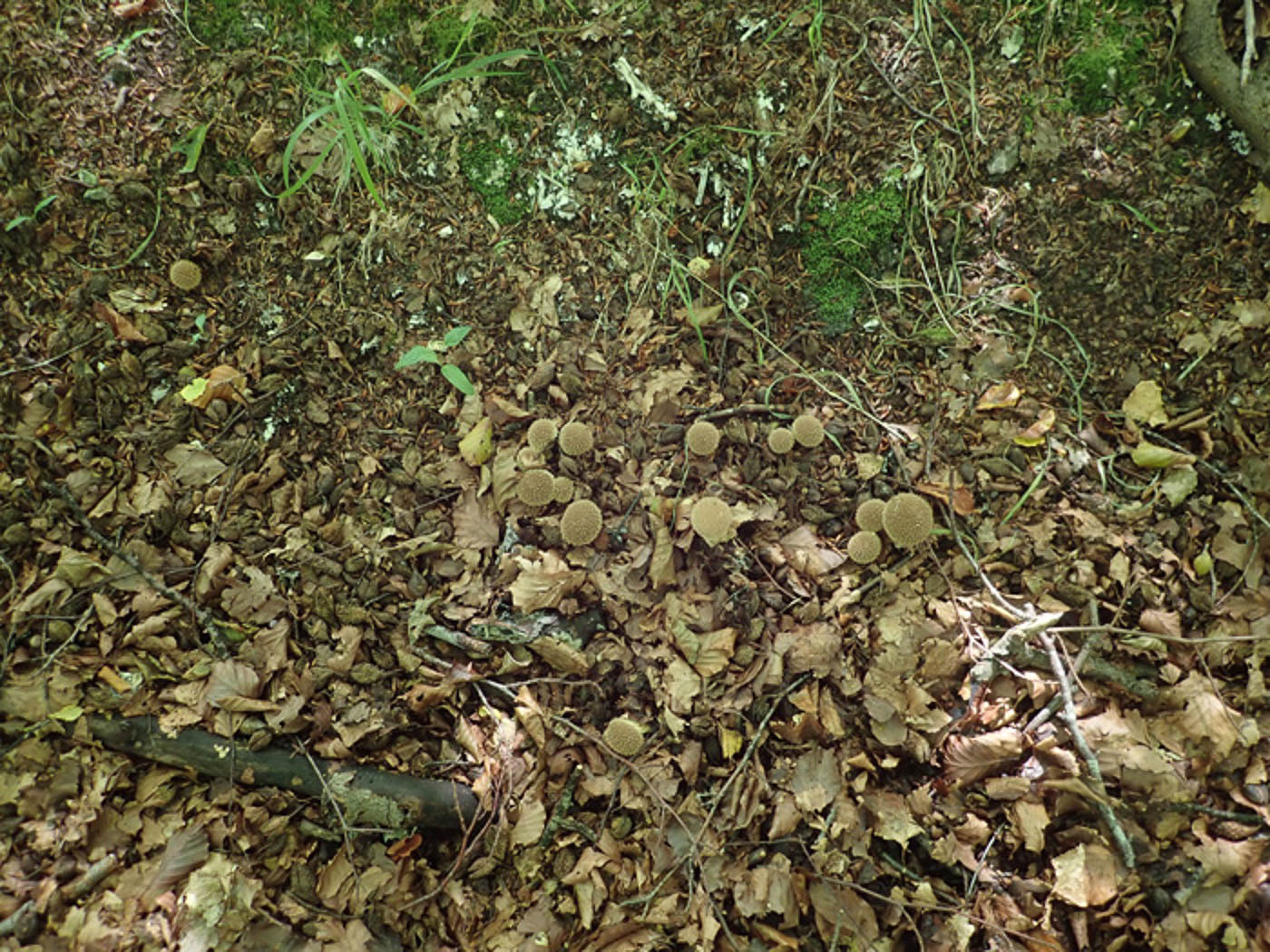
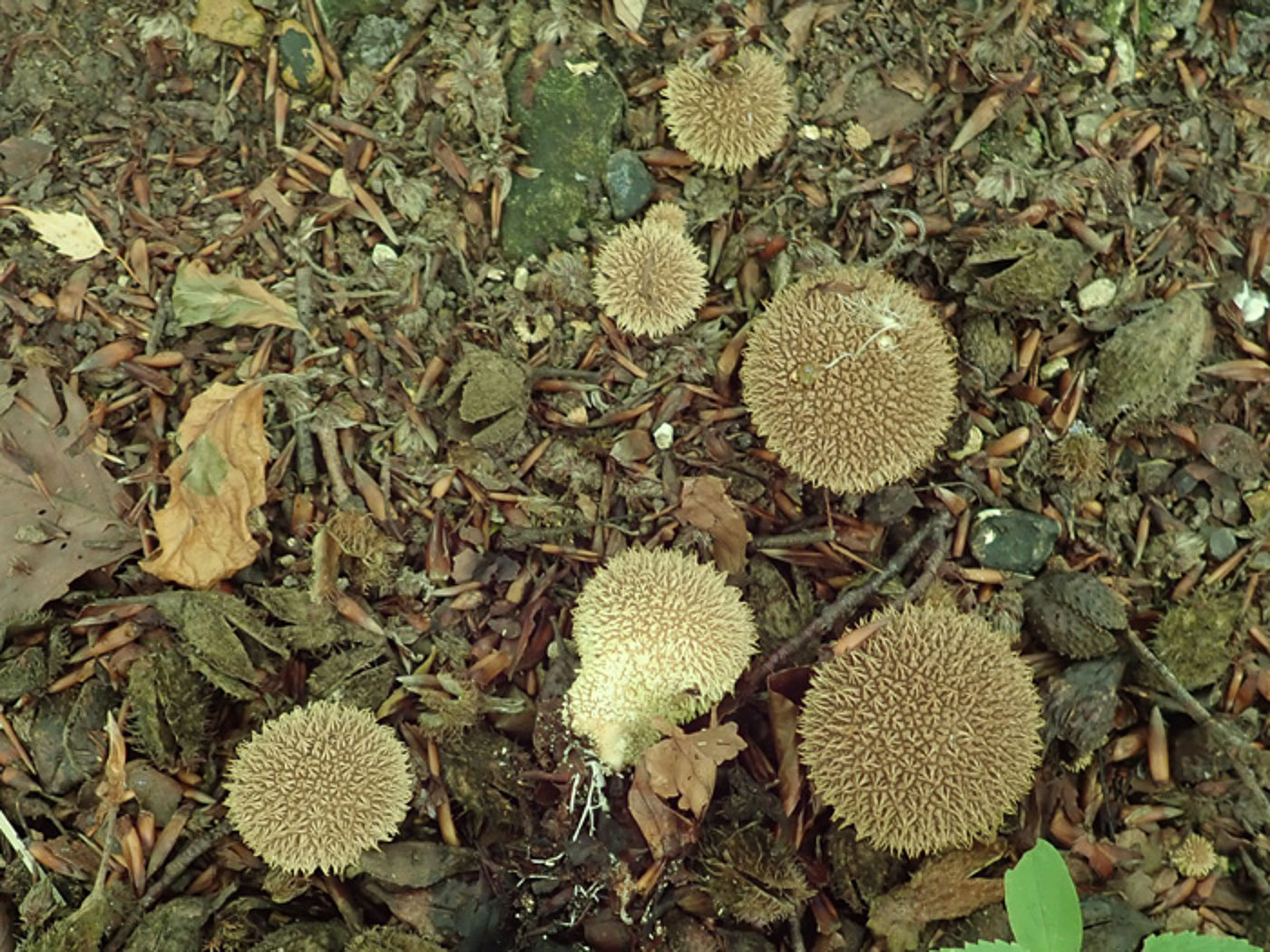
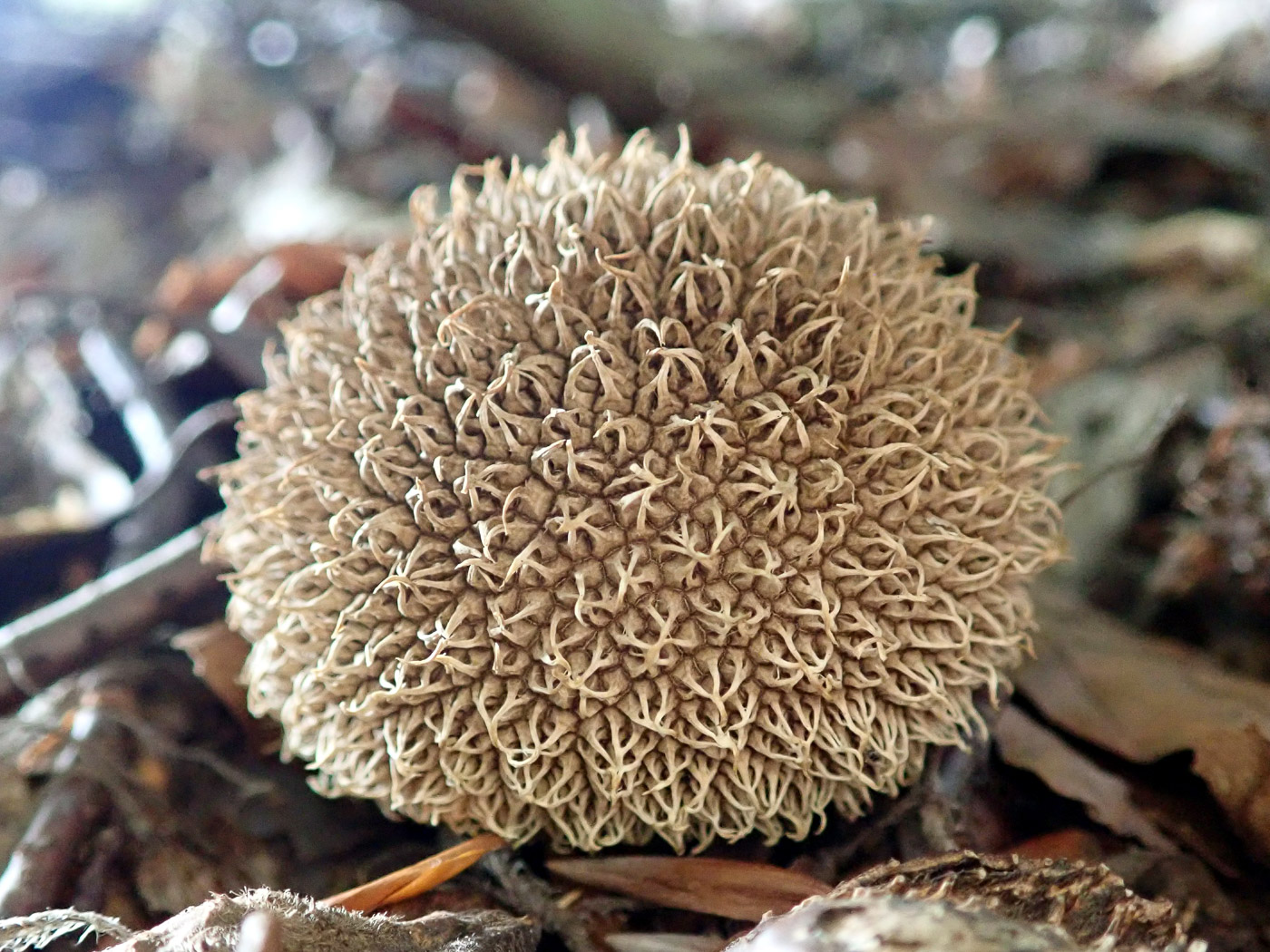 |
August 7th Lycoperdon echinatum (Spiny Puffball)
In Tinkers Wood John Catterson saw this perfect young specimen - always a delight to find! The species is not that common, favouring calcareous ancient woodland usually under Beech, and has far longer spines than any other puffball, formed in clusters which meet in the middle as seen here. Photos 2 and 3 were found a week later at Gussetts Wood by Penny who'd never seen so many fruitbodies together! Then on Aug 28th Mick Jones sent in photo 4 from Dancersend where he's found this species fruiting in this same spot over the last 40 years! See the Masterlist for three previous entries.
|
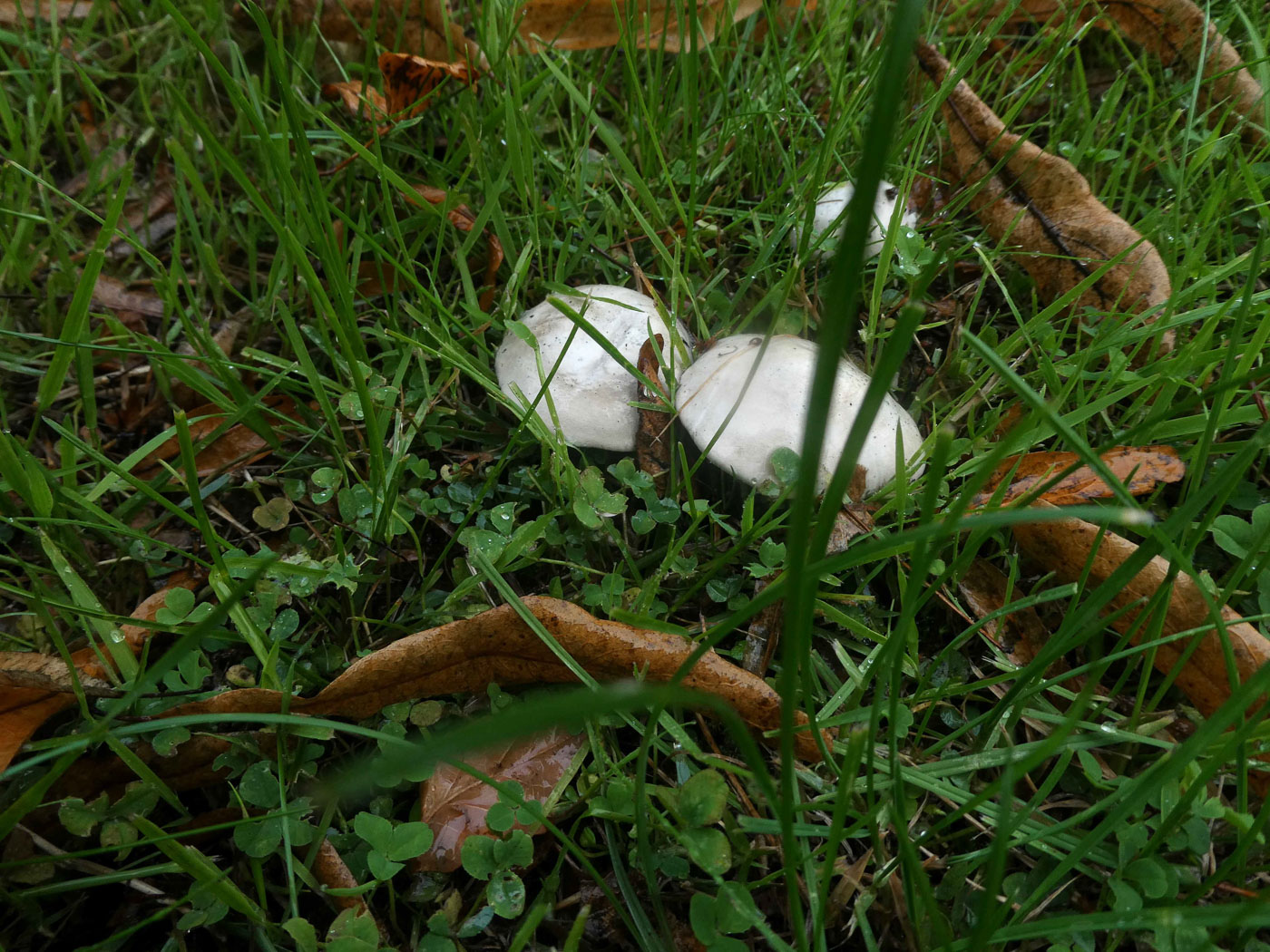
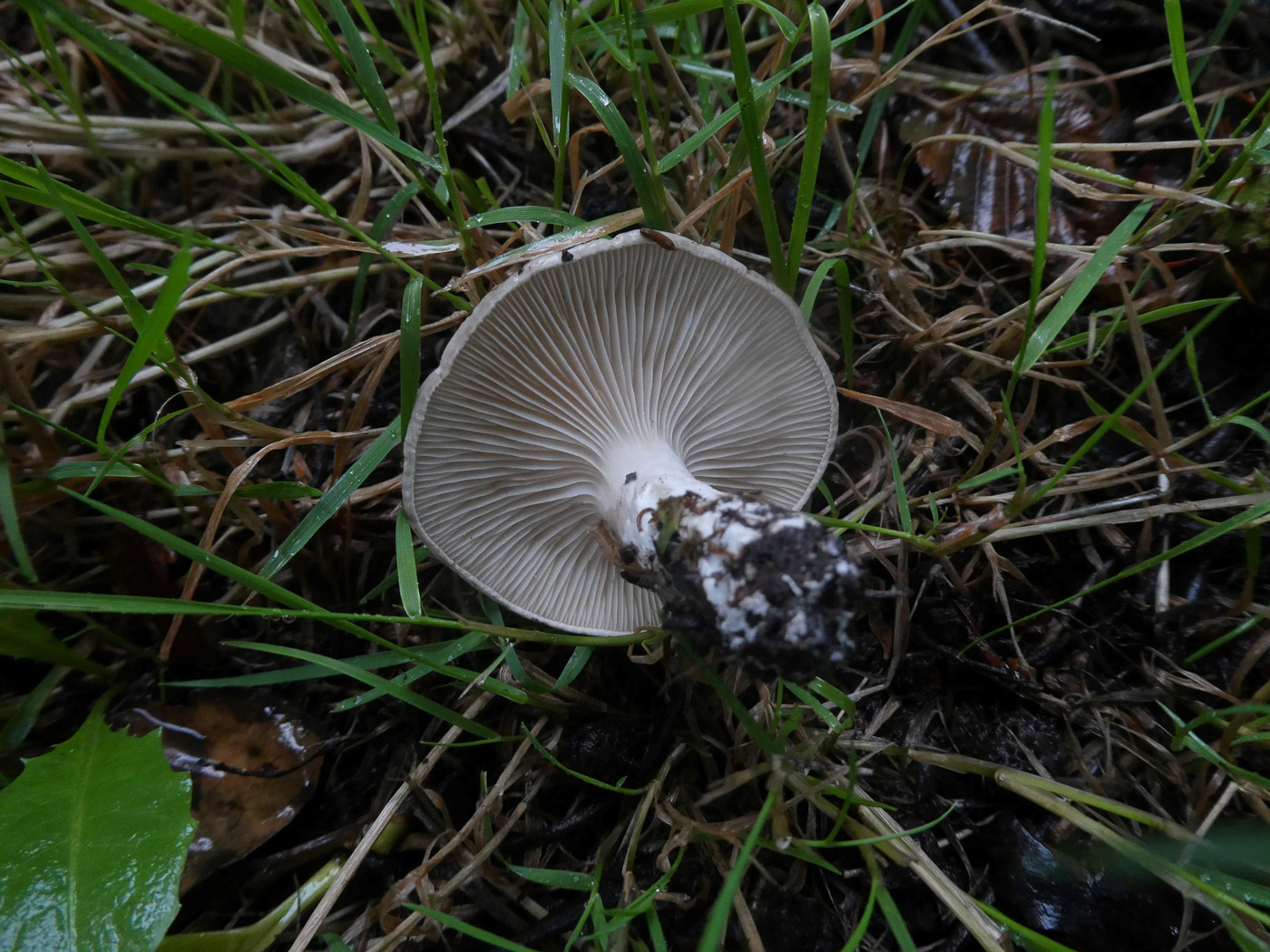
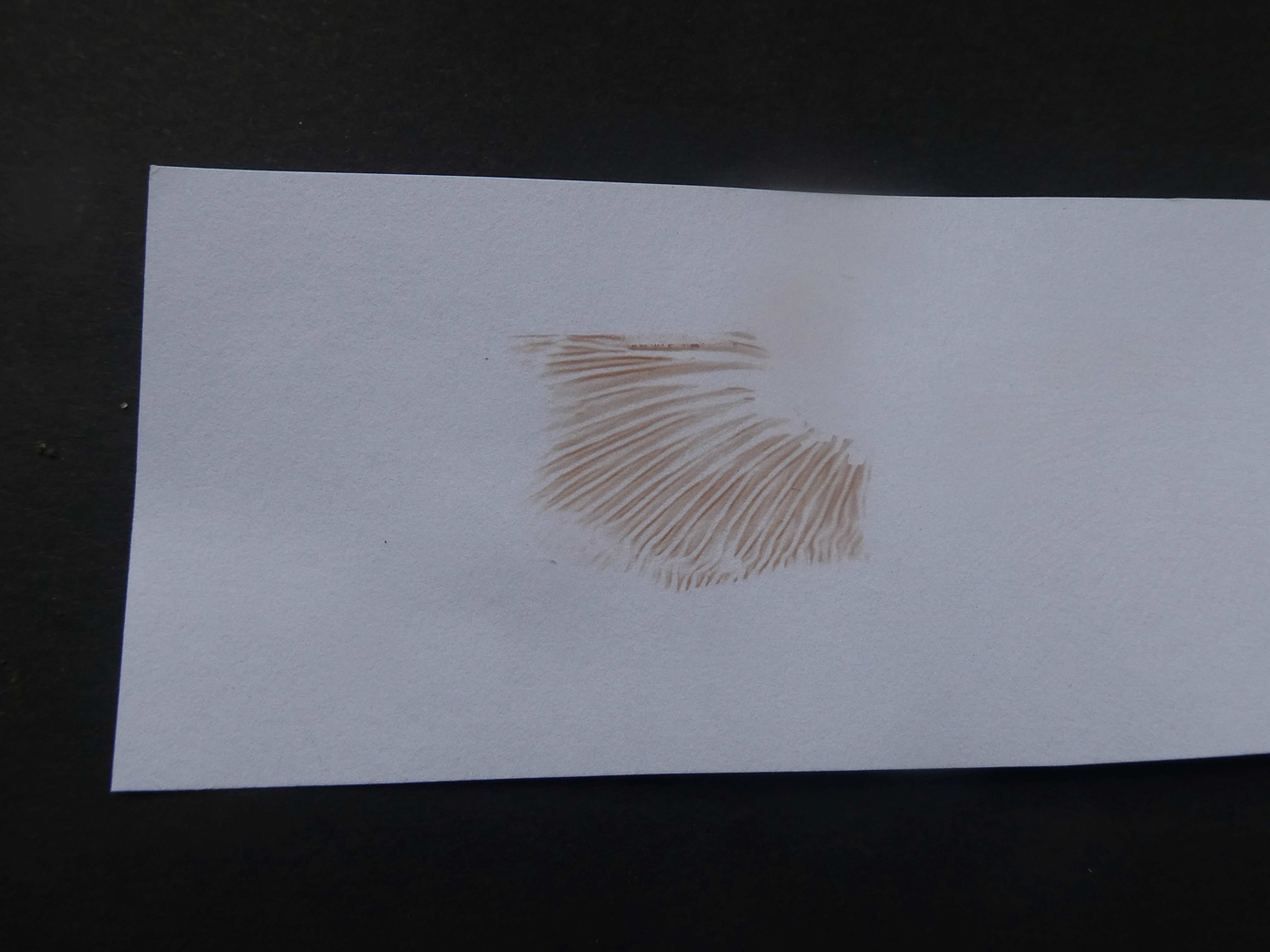
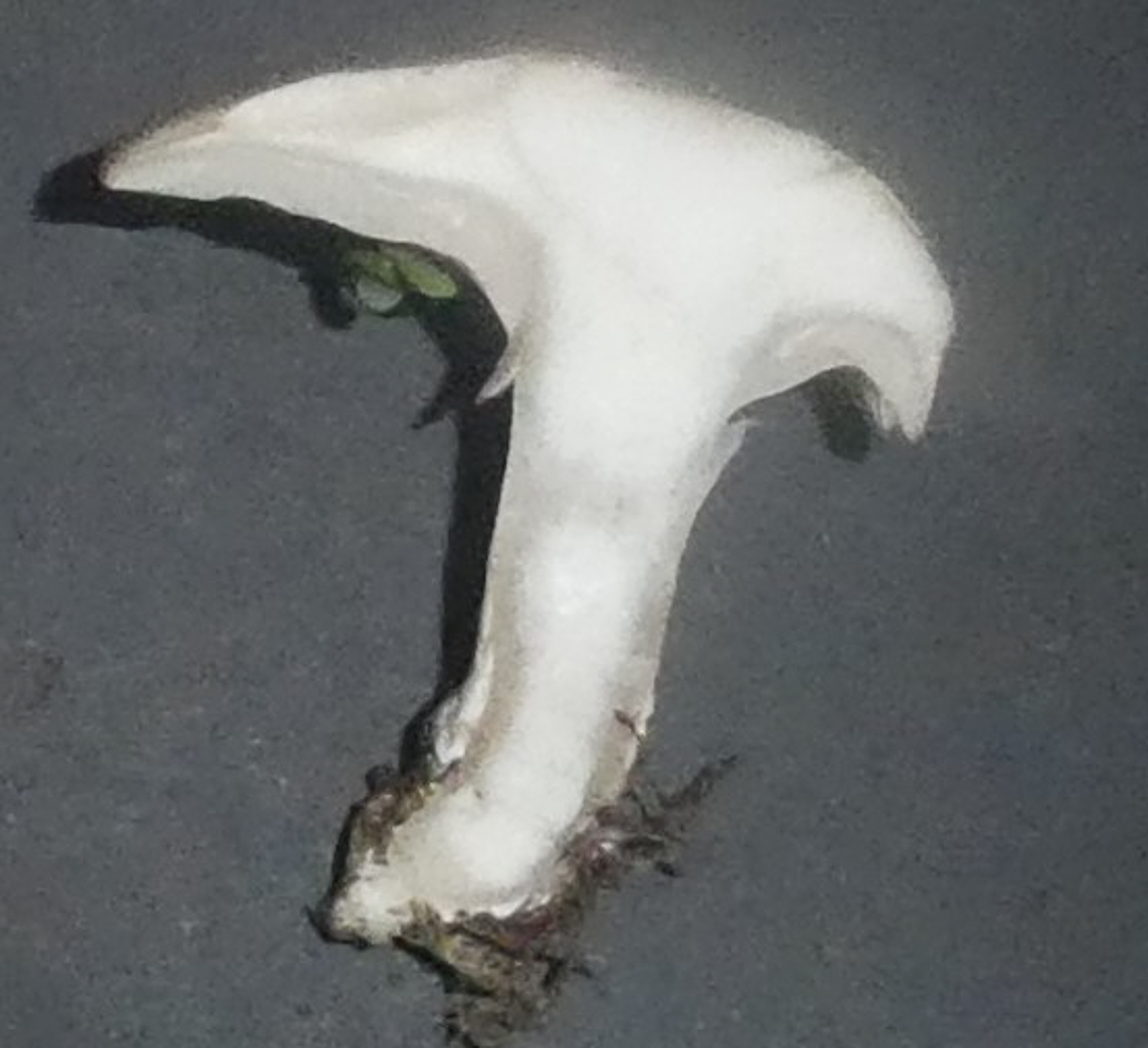 |
August 4th Clitopilus abprunulus (a very rare species of Miller)  
In a grassy roadside verge under Lime in Chalfont St. Peter Jim Wills noticed some whitish mushrooms just emerging. Collecting one, it resembled the common C. prunulus (The Miller) having the typical cap texture of kid gloves, decurrent gills turning slightly pink and mealy smell. However, the stem was clearly off centre - something he'd not noticed before in this species. At home consulting his Kibby vol 4 he found a newly described member of this genus (2020) which compared to the commoner species has a duller slightly grey cap, smaller spores and an eccentric stem. Having taken a sporeprint to check that it did indeed have the pink spores of this genus (photo 3), he checked them first for the unusual ridges which are characteristic of the genus, then for their size which was indeed too small for C. prunulus. Penny, when he contacted her, was cautious about making a claim for such a rarity (there being no FRDBI entries at all) so some material was dried and subsequently sent for sequencing. In Spring 2024 the results came back confirming Jim's ID! So congratulations to Jim and apologies from Penny for delaying this entry till confirmed - better safe than sorry, though. It is highly likely that though Jim's record - in April 2024 still the only one in FRDBI - is virtually a first for the UK (a 1994 collection of C. prunulus held in Kew was designated the paratype in 2020 following sequencing), that C. abprunulus is not that rare but has been overlooked and probably regularly misnamed as C. prunulus.
|
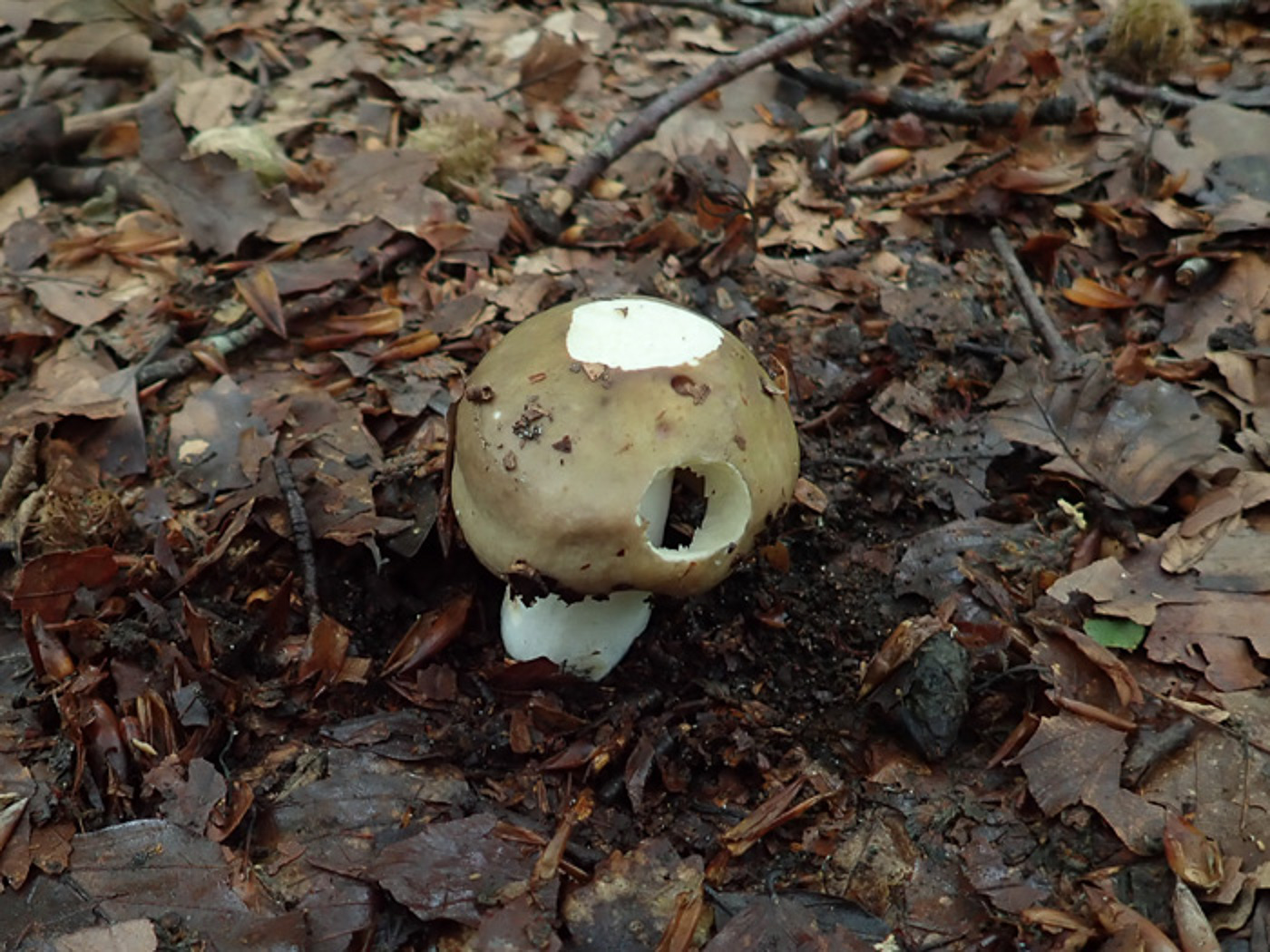
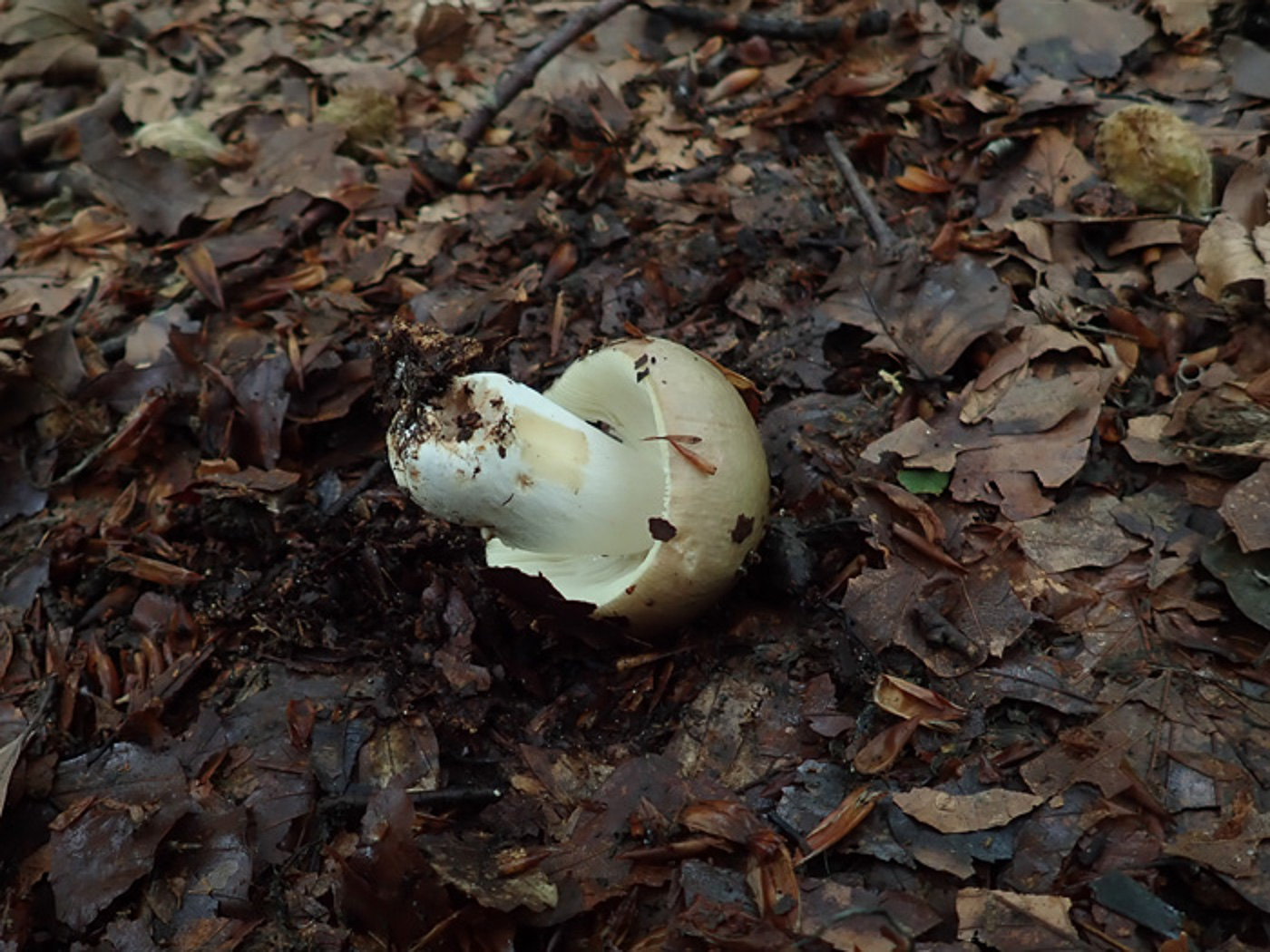 |
August 4th Russula carpini (a rare Brittlegill with no common name)
Under Hornbeam in Hodgemoor Woods Penny found this singleton dull dingy green Brittlegill which she didn't recognise as one of the commoner green capped species; the FE crystal reaction was strong salmon and she put it in her basket and thought no more about it. It was not until two days later when she was about to discard any unsolved mushrooms from that visit now past their best that she saw the distinctly dark orange gills and twigged what it must be. Recalling that it had been found in the Hornbeam avenue, this had to be R. carpini - a Brittlegill with very varied cap colour ranging from green (as here) to purple or brown, even pinkish and often a mix of these colours. The two constant features: its association with Hornbeam and its really dark orange sporeprint (one of the darkest in the genus) thought the gills are known to darken only late on in its development - hence their cream colour here. We have just one previous record and this is new to Finds.
|
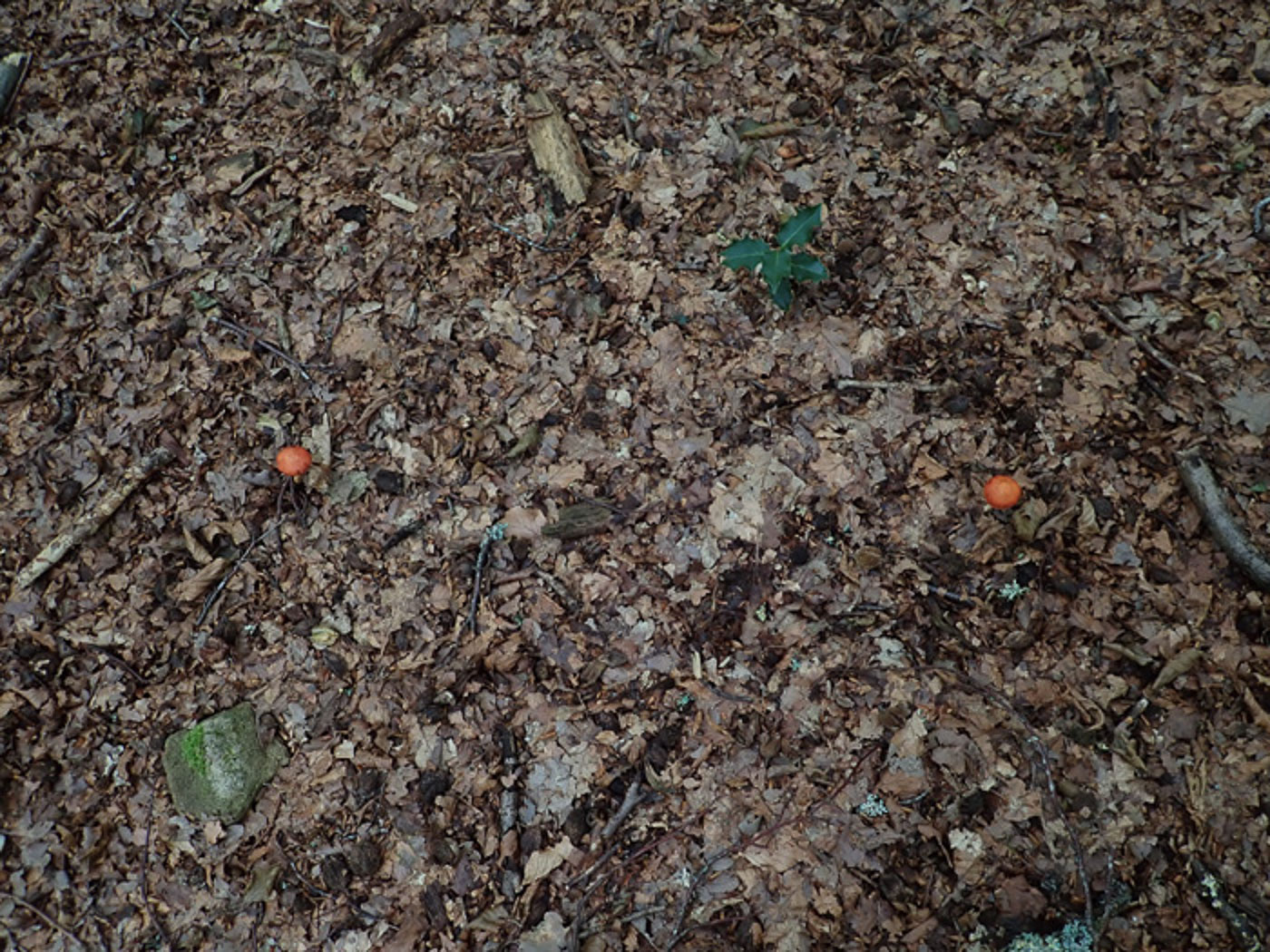
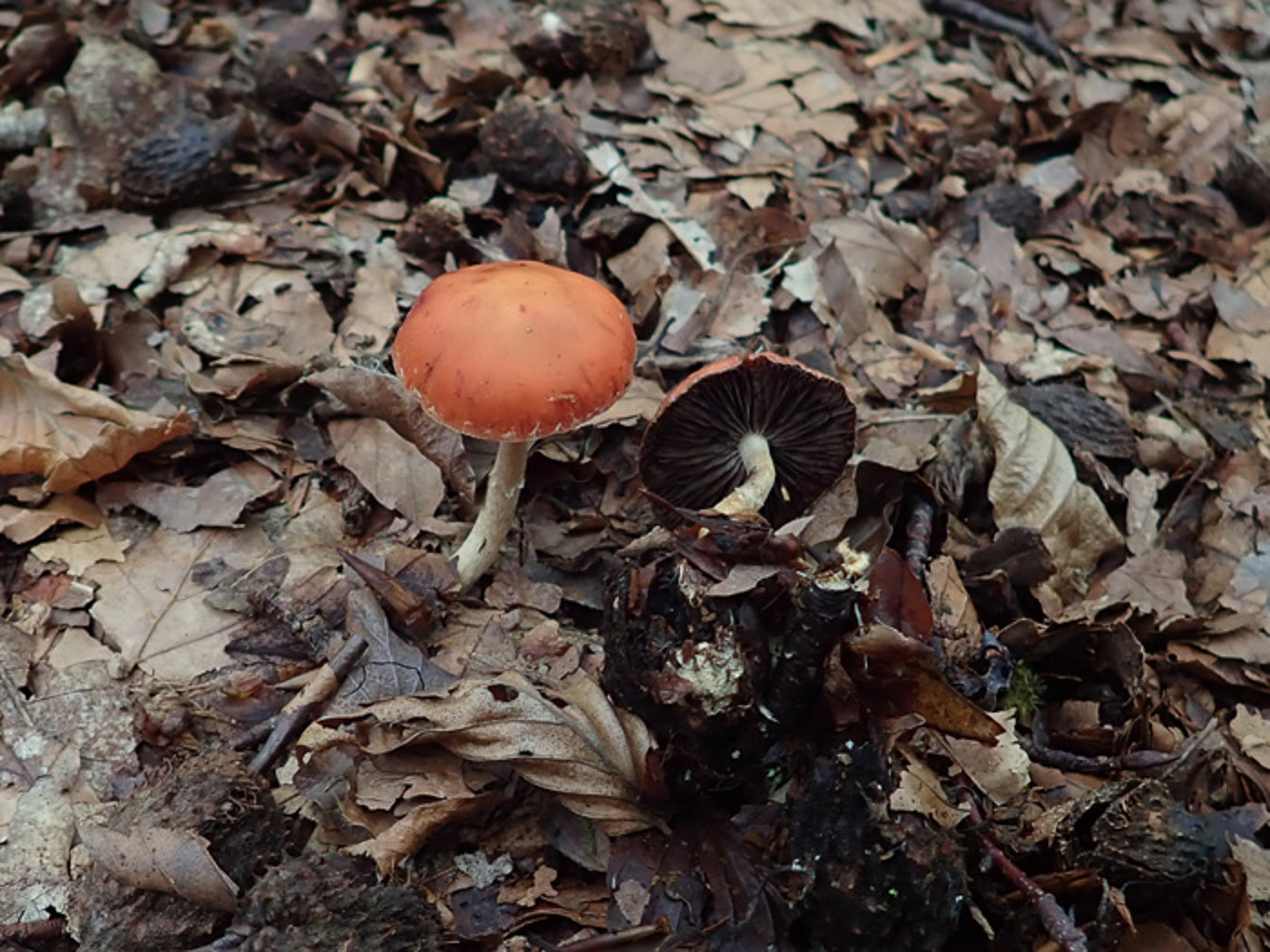 |
August 4th Leratiomyces ceres (Redlead Roundhead)
In Hodgmoor Woods Penny spotted two bright red caps amongst the thick decidous litter and assumed it was a species of Brittlegill until on closer inspection the thin long stem became apparent. What was it? Surely not L. ceres? That species occurs in woodchip piles, though the colour and shape was correct. Turning one over to reveal the dark gills - the species has almost black spores - she confirmed to her surprise that it was indeed that species. Though now very common wherever woodchip has been spread, the species is new to the site (and this is one of our best recorded woodland areas) and Penny has never seen it in natural woodland environment before. See the Masterlist for further examples, all of which are with woodchip.
|
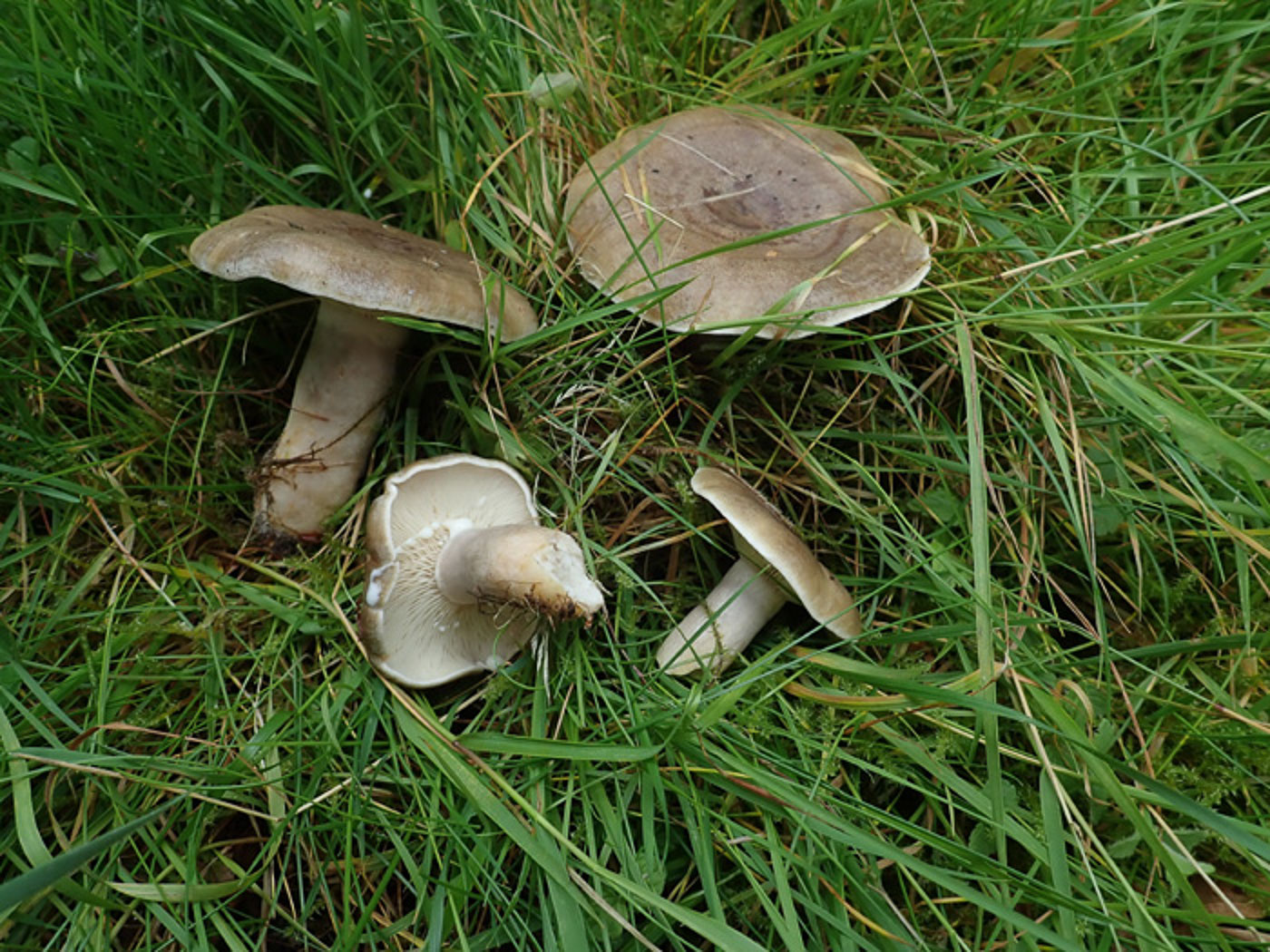 |
August 4th Lactarius fluens (a Milkcap with no common name)
In a grassy glade near Beech in Hodgemoor Woods Penny found this quite unusual Milkcap, one very similar to the very common L. blennius (Beech Milkcap) and probably often misidentified for that species. Also occurring under Beech, it shares very similar colours, is also smooth and slimy in damp conditions, and its copious milk turns slowly greenish grey where the gills are damaged. However, it lacks the 'droplet' cap markings of L. blennius (though that species can sometimes occur without them!) but more significantly it has a distinct white rim around the cap margin - not present in L. blennius and clearly visible in this nice collection. See also in Finds 2020 September 27th.
|
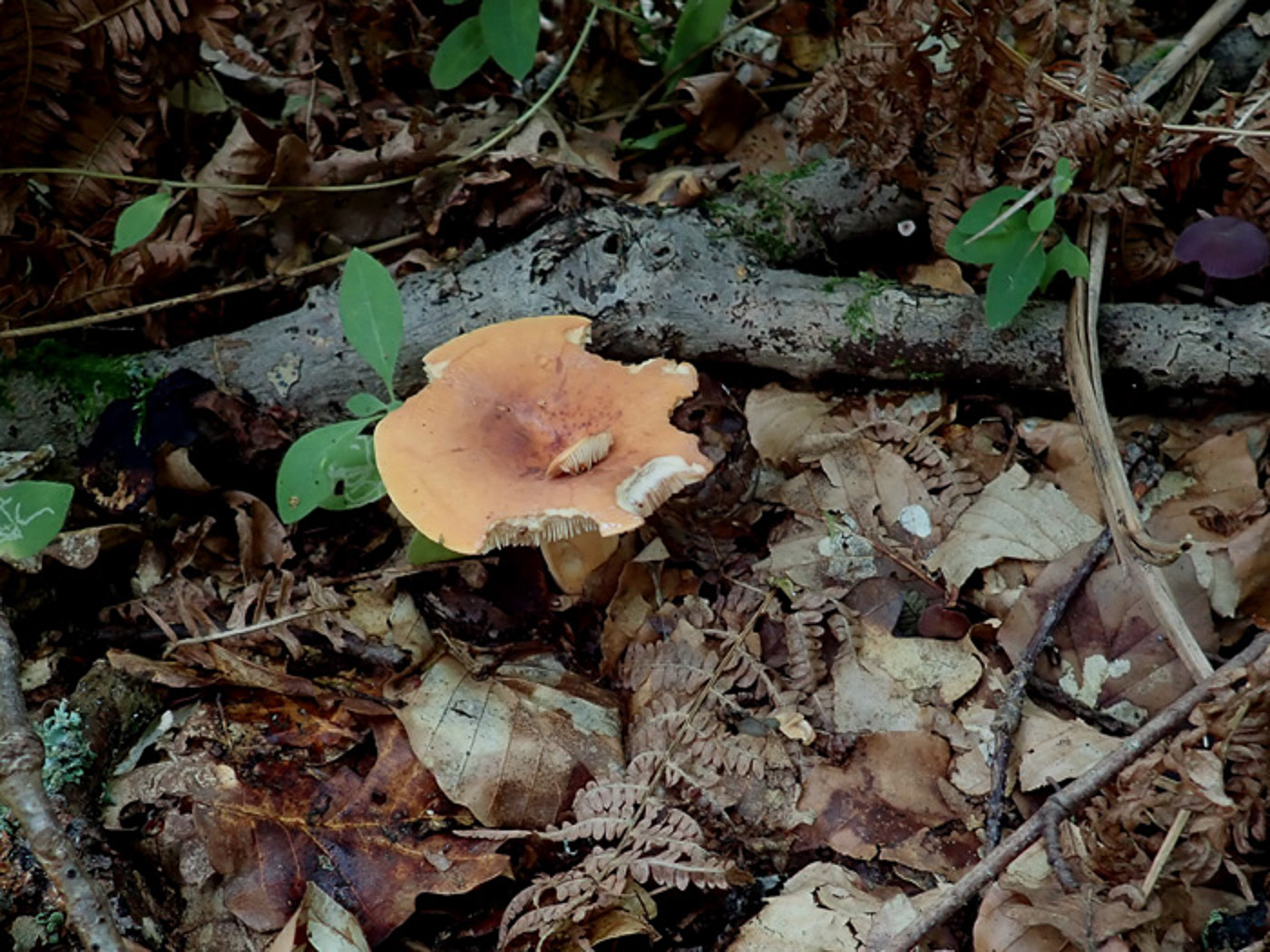
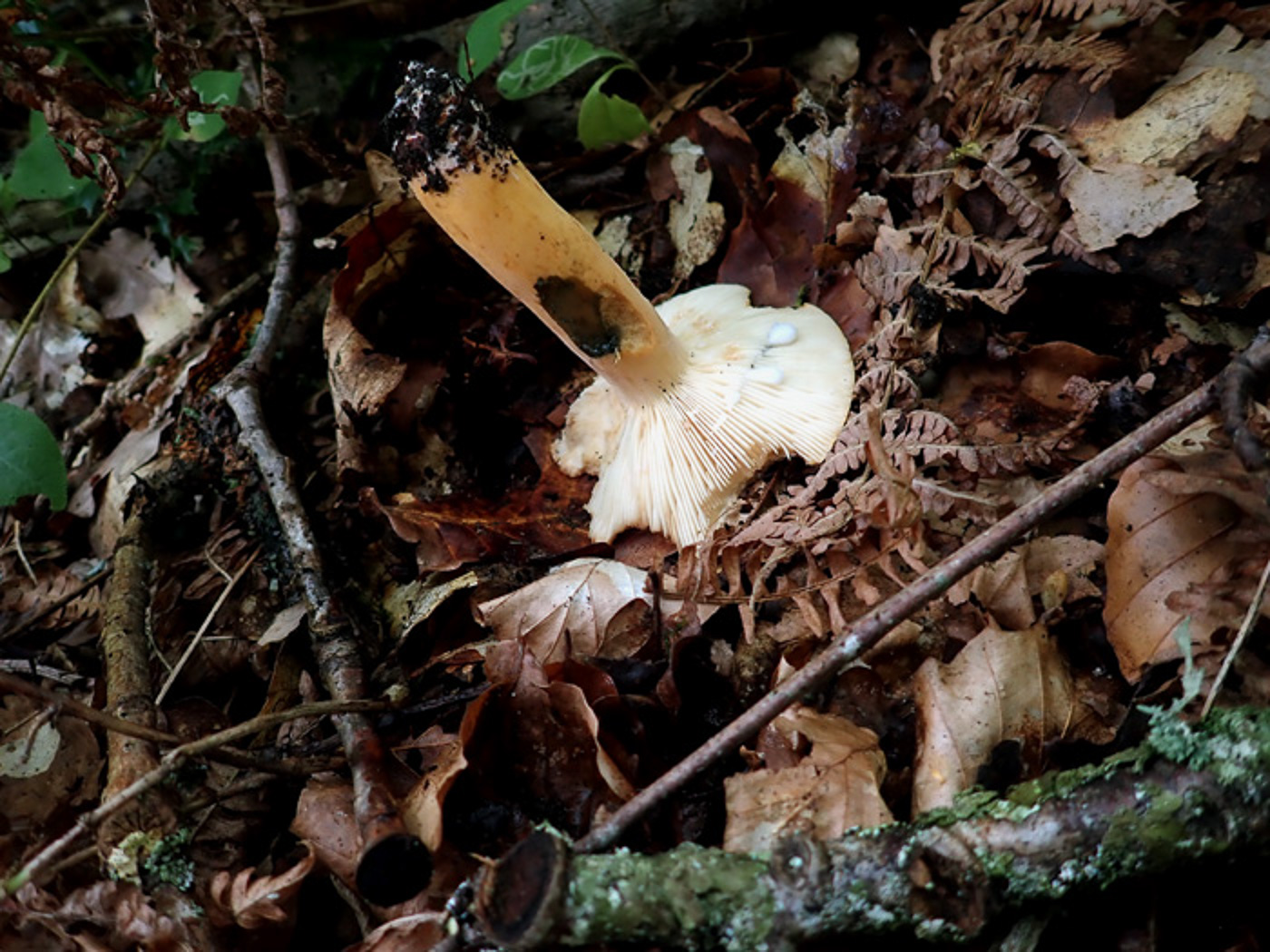
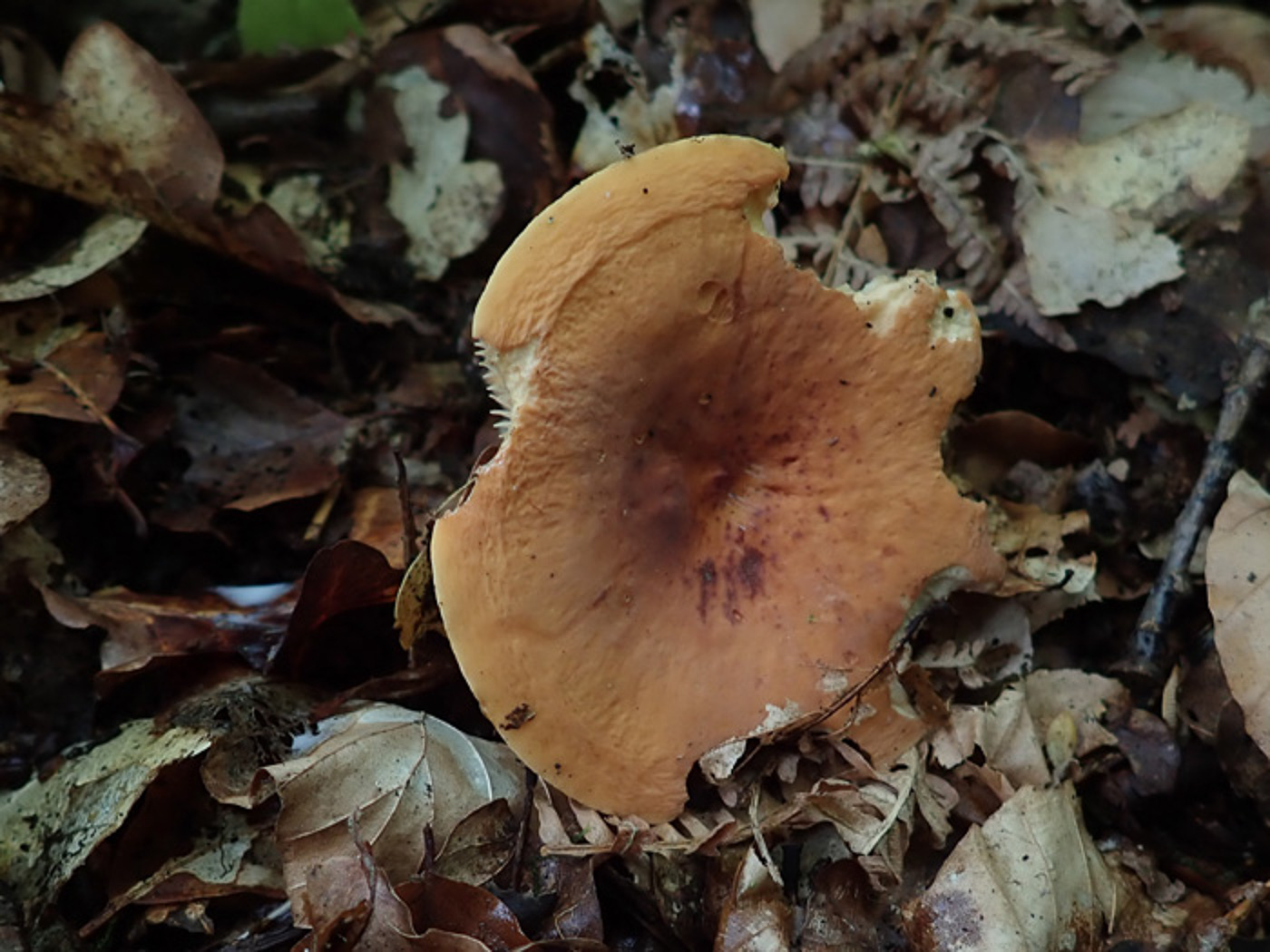 |
August 4th Lactifluus volemus (Fishy Milkcap)
Under Oak in Hodgemoor Woods Penny's eye was caught by this bright tawny cap and noticing the sturdy stem she hoped she'd found this quite unusual Milkcap - one for which we have just three previous records, two of these from this site. Previously in genus Lactarius, the species has two unique features which clearly demonstrate the close link between Milkcaps and Brittlegills: like members of the 'xerampelina' Brittlegills (see Russula graveolens two entries below) the stem turns instantly deep green when rubbed by an FE crystal, furthermore it develops the same smell of cooked crab (hence its common name). This is a new entry for Finds.
|
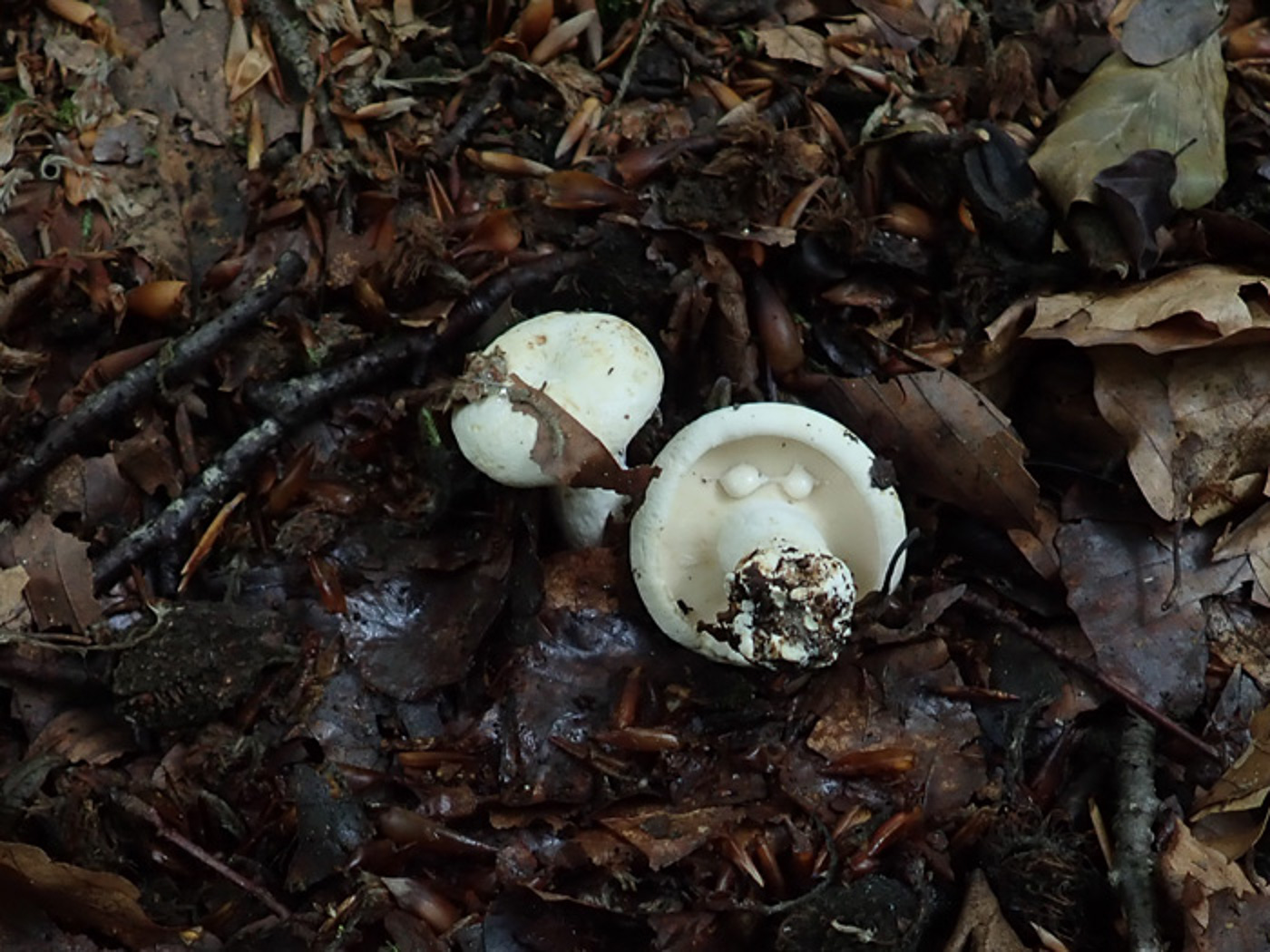
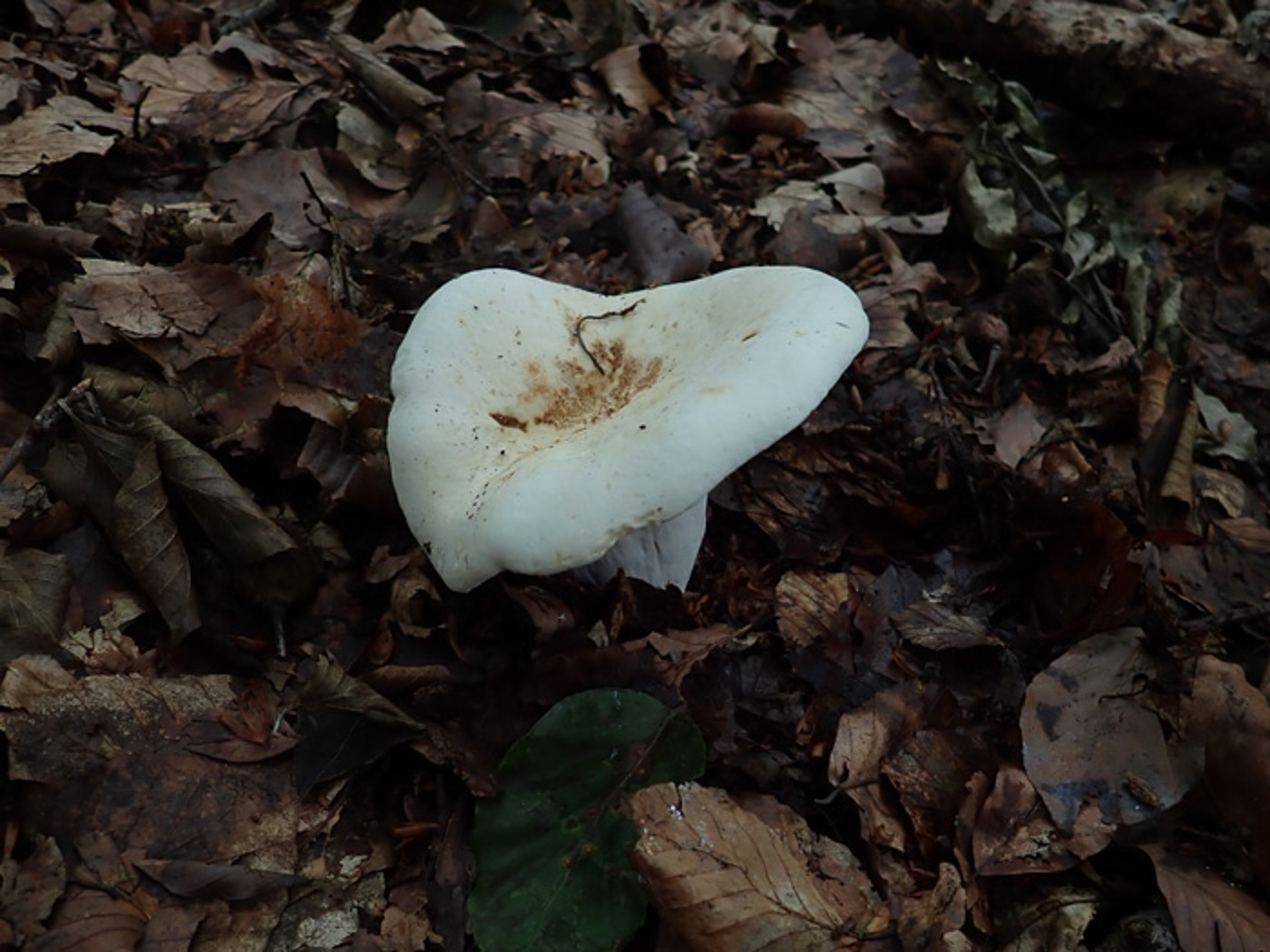
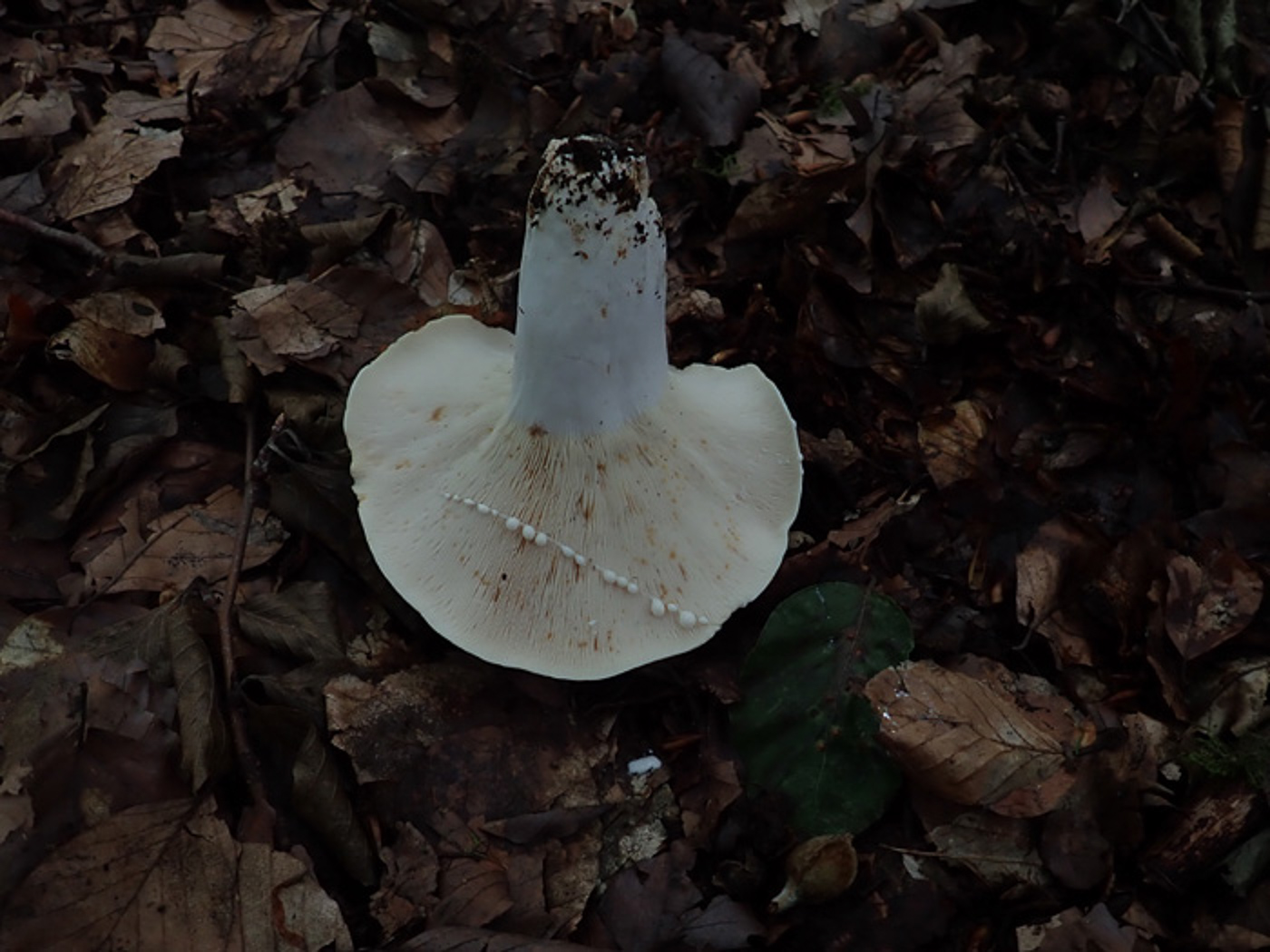 |
August 4th Lactifluus piperatus (Peppery Milkcap)
Under Beech in Hodgemoor Woods Penny first found these two immature but pure white and solid Milkcaps and tested for milk just to check that this was not one of the very similar Compactae Brittlegills (see the two entries below), then a few yards further on came across a much larger specimen about 10 cm across (photos 2 and 3). Previously in genus Lactarius, the species is by far the commonest of several very similar large Milkcaps with a clear link to the Compactae group of Brittlegills, but has the most crowded gills and also milk which is very hot to taste (hence its common name). See also in Finds 2020 October 12th.
|
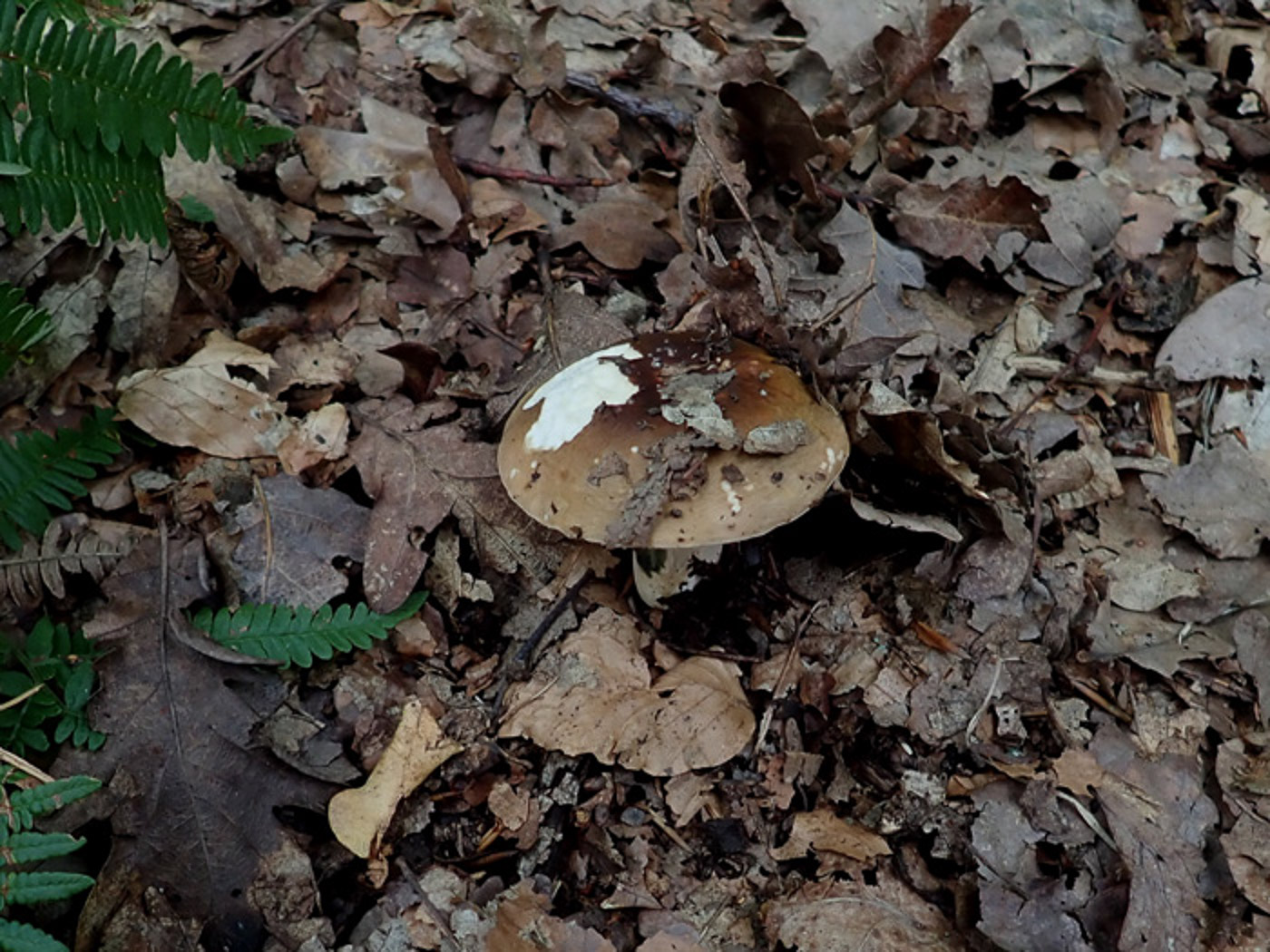
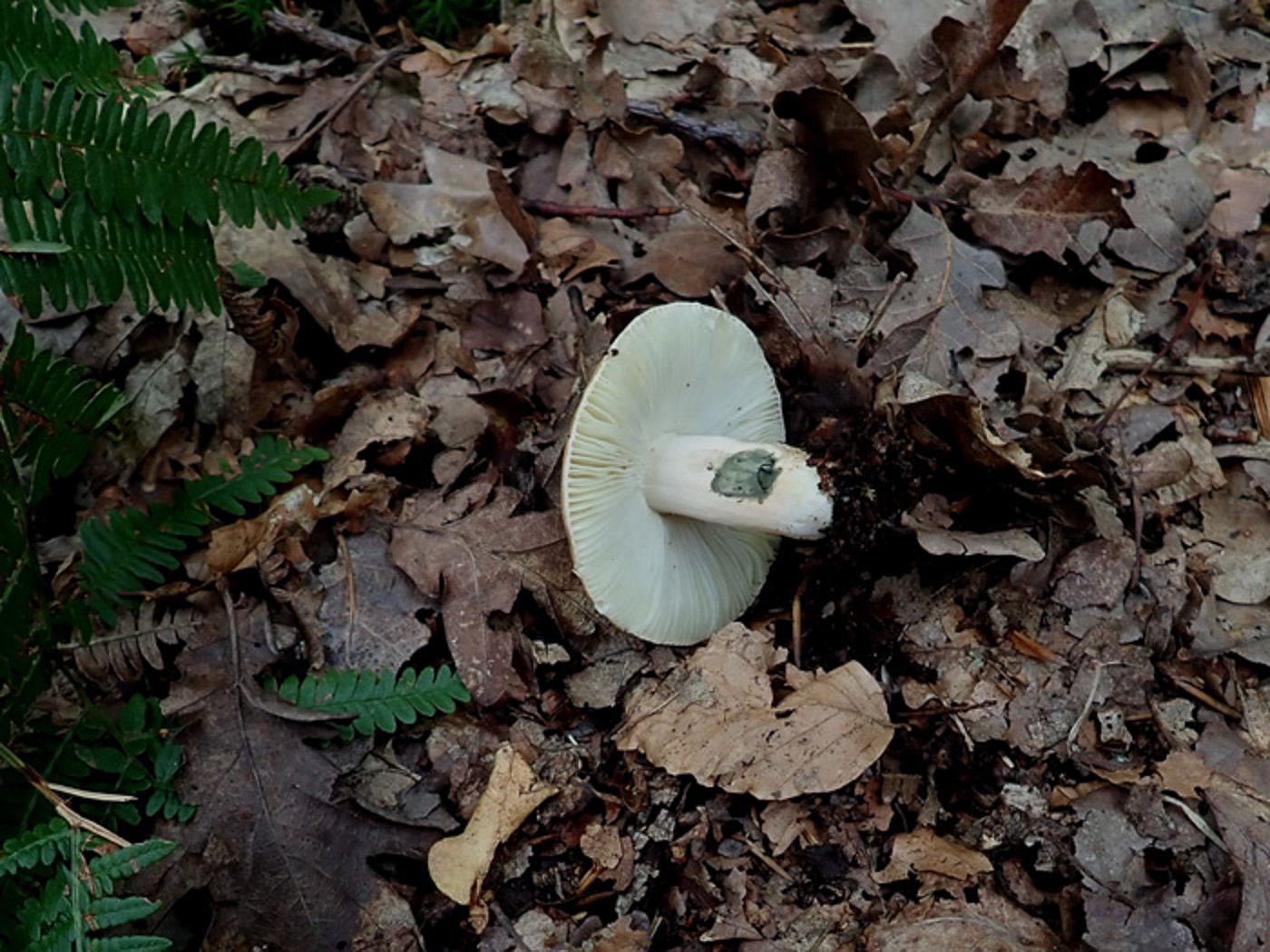 |
August 4th Russula graveolens (a Brittlegill with no common name)
In Hodgemoor Woods under Oak Penny spotted this well camouflaged cap amongst the litter and suspecting it was a member of the xerampelina group of Brittlegills she rubbed the stem with her FE crystal, watching it turn instantly dark green then eventually black (photo 2). Only members of this group have this unusual reaction and also develop a strong smell of cooked crab as they age or dry out - this smell was very apparent at home later. The species is our commonest member of the group, associating with Oak and often with purple or red shades mixed with brown as here. Like many of this genus at the moment it was well nibbled. See also in Finds 2021 August 17th.
|
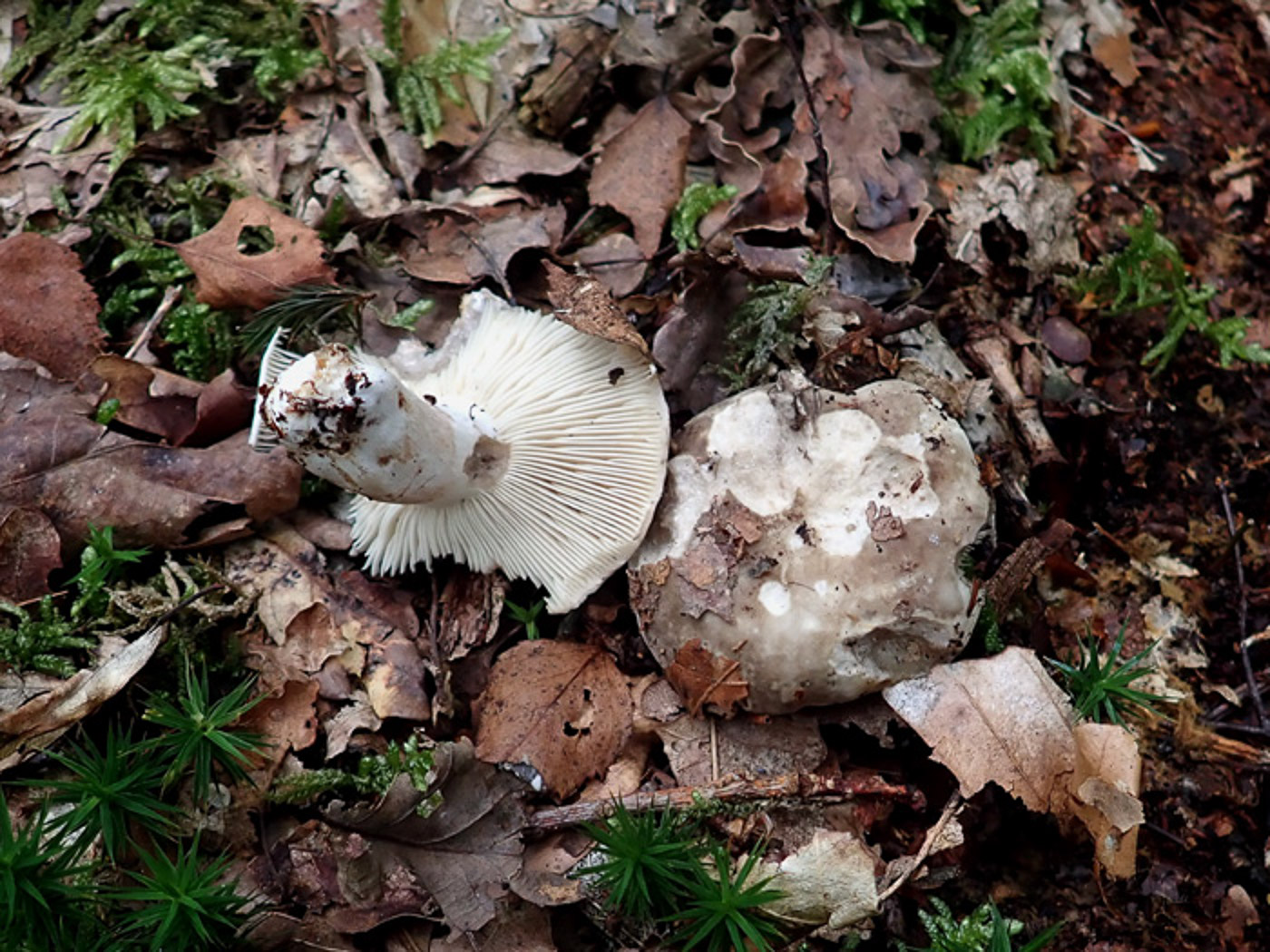
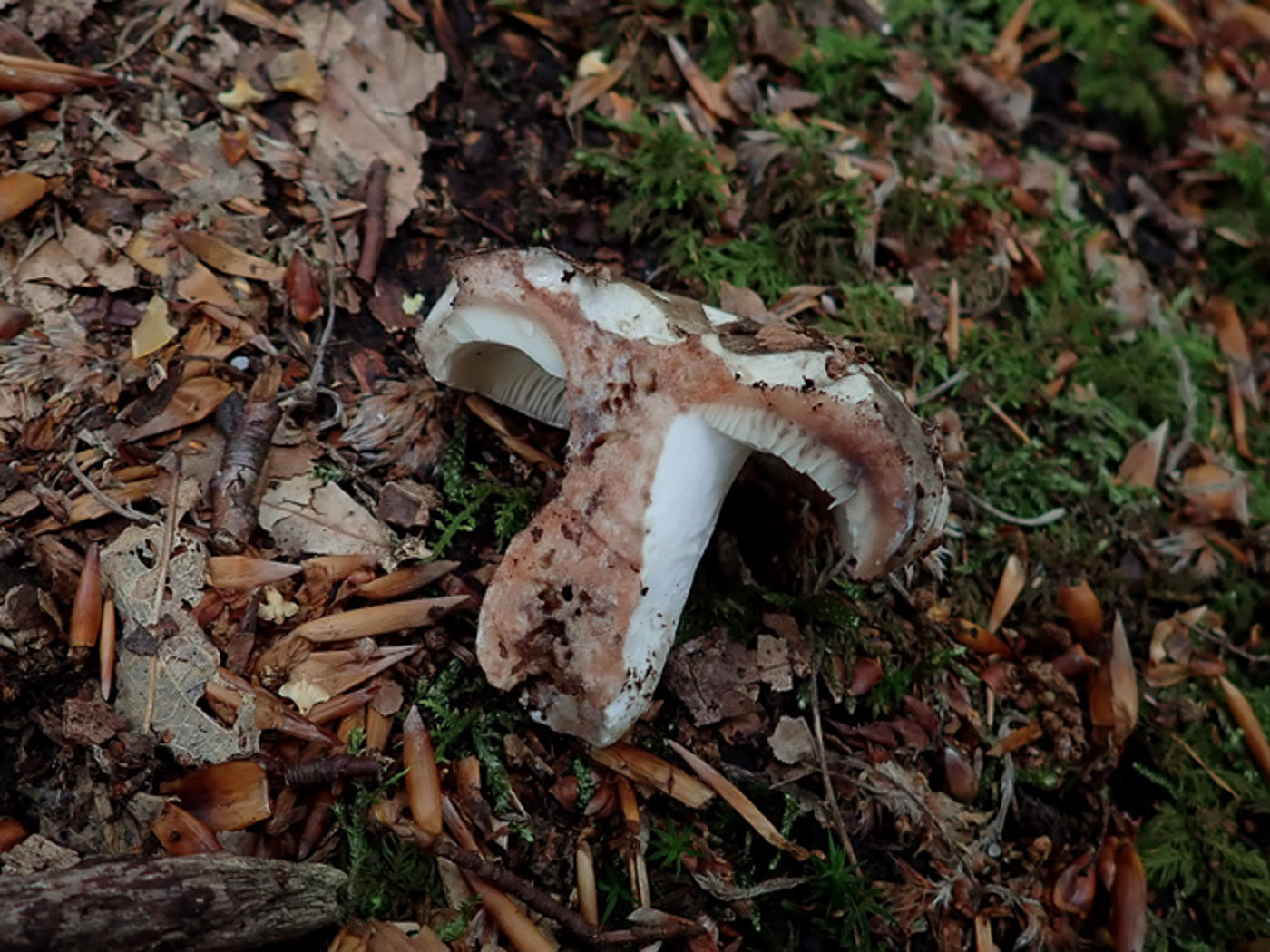
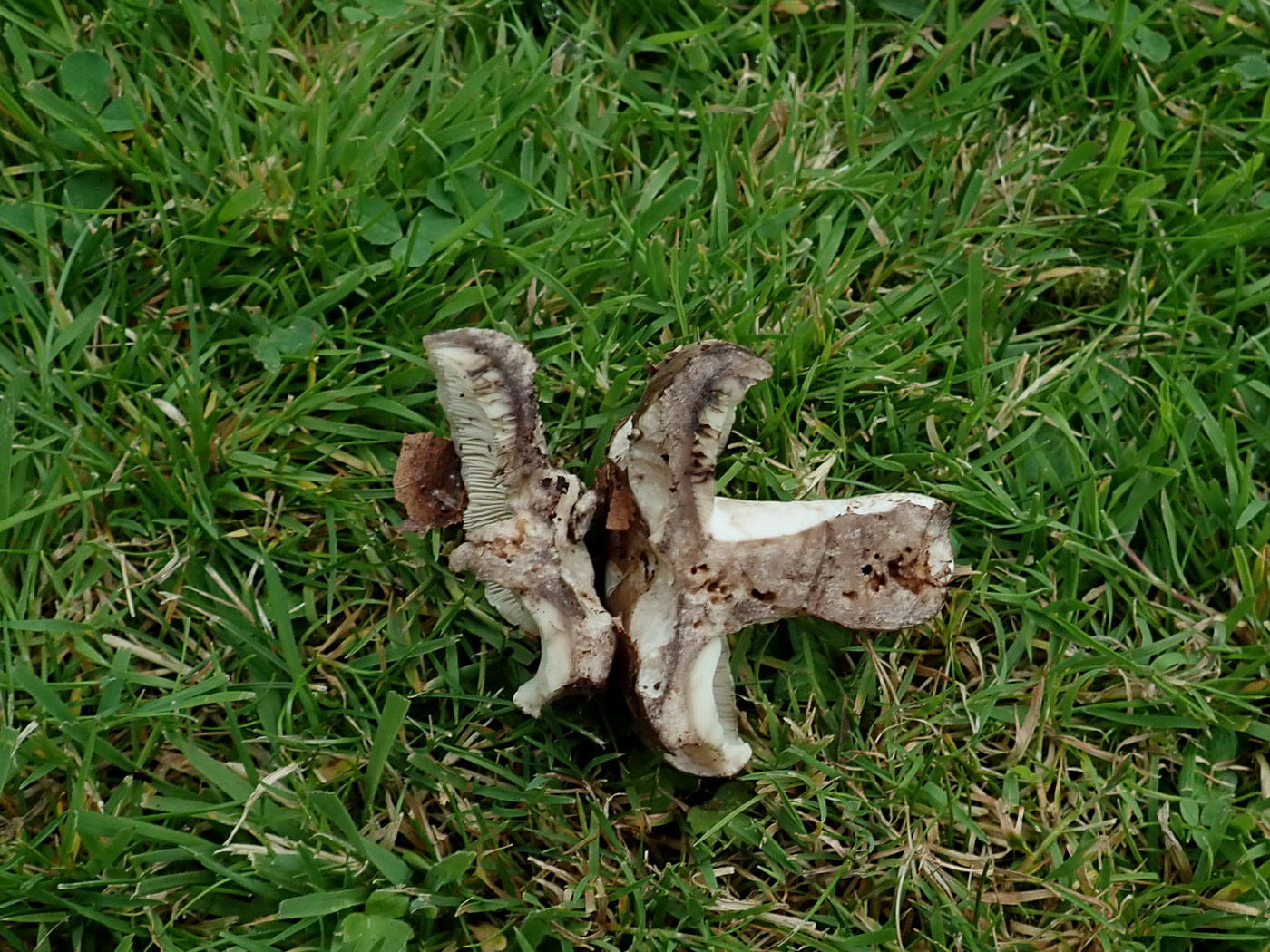 |
August 4th Russula densifolia (Crowded Brittlegill)
In Hodgemoor Woods under Oak Penny spotted a couple of these, thinking they were further specimens of the much more common R. nigricans (see the entry below). On turning one over, however, she realised that the gills were crowded thus eliminating that species despite the fact that from above the caps appeared identical. She broke one in half and then kept an eye on it to ascertain whether it blackened directly or reddened first. R. albonigra - another lookalike belonging to the Compactae group of Brittlegills - turns black with no reddening, whereas R. densifolia turns red first as in R. nigricans (see the entry below for comparison). Photo 2 taken after 30 minutes gave the answer and photo 3 taken later at home shows it blackening. See also in Finds 2020 October 5th.
|
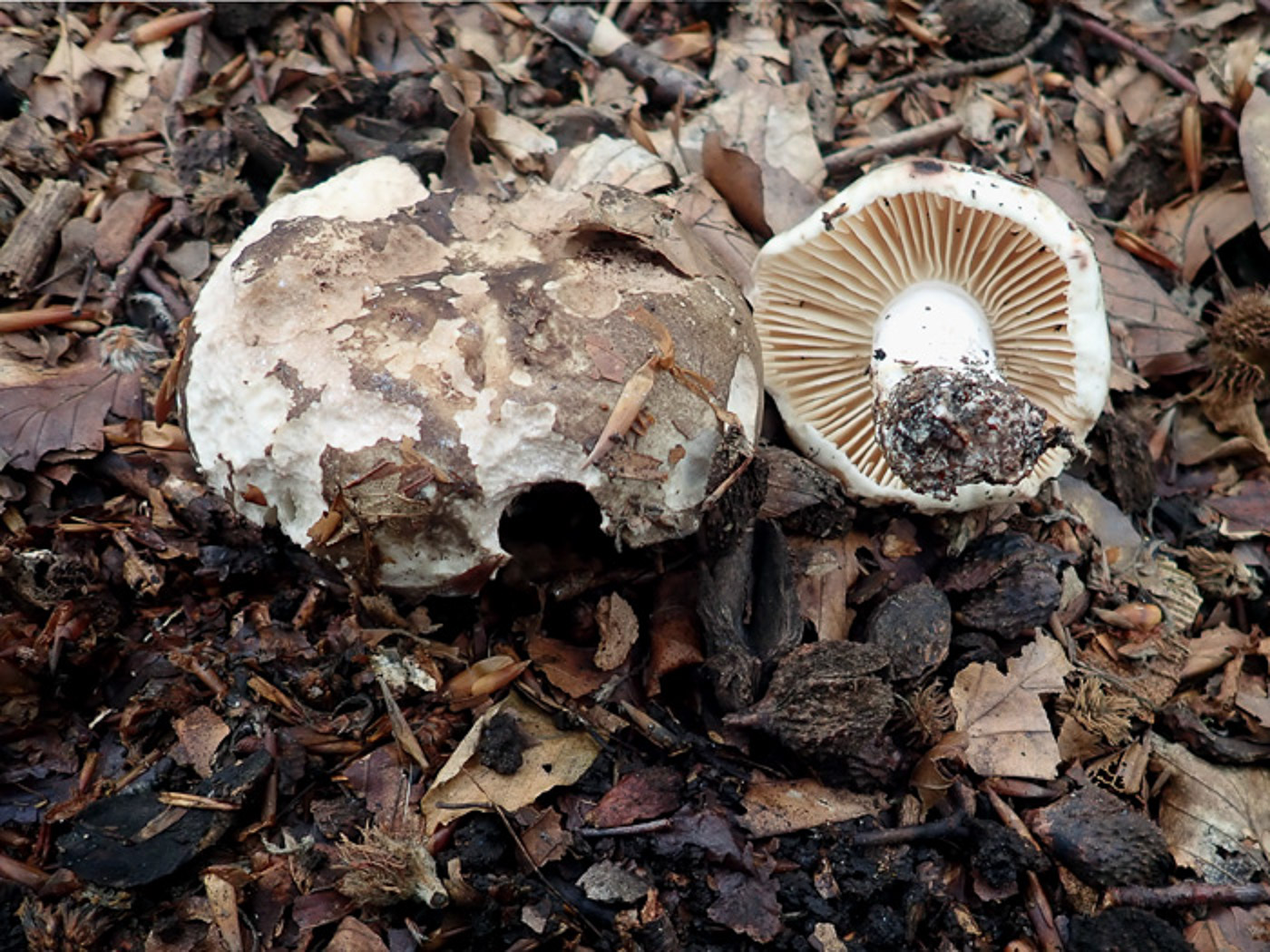
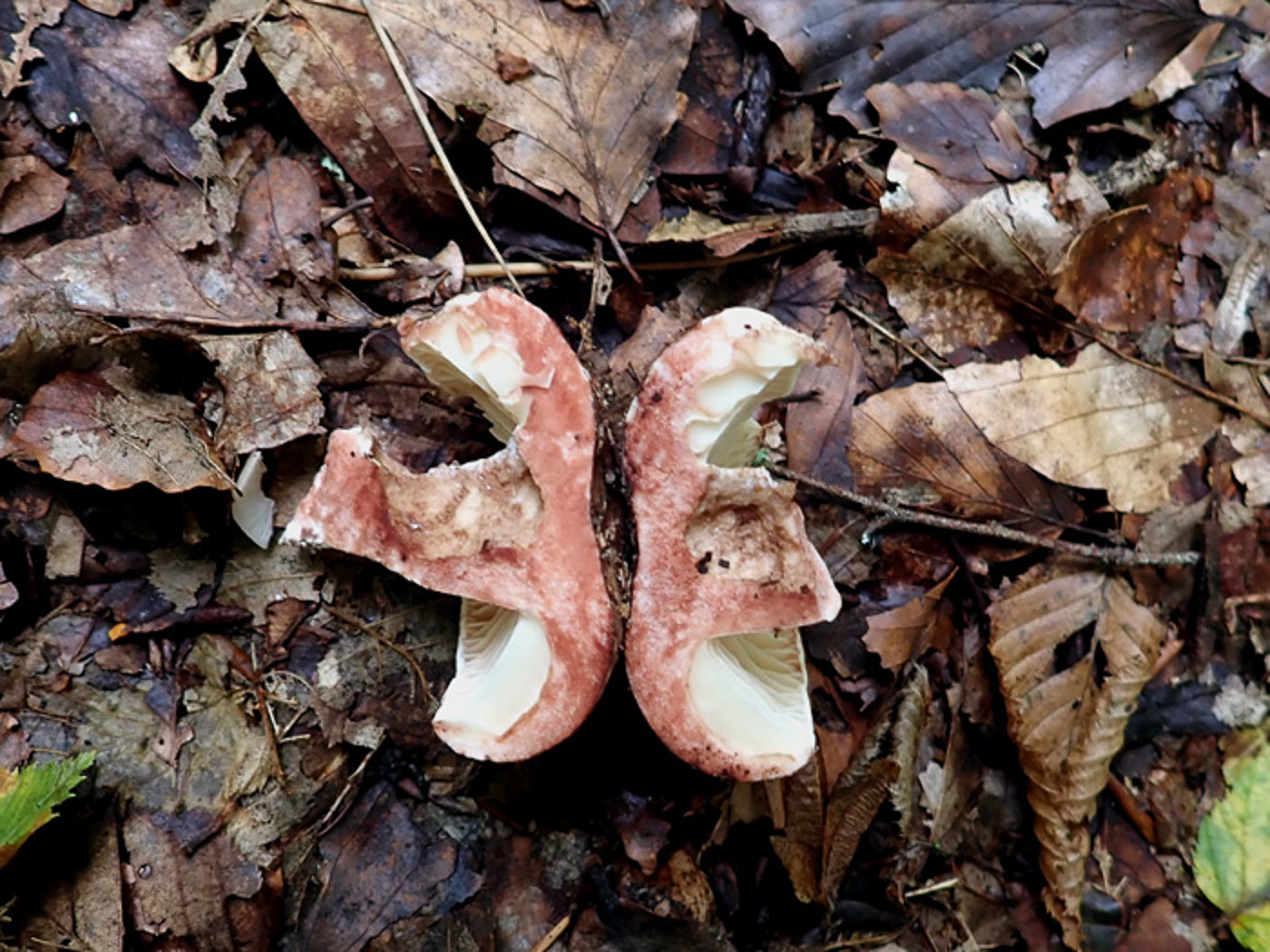
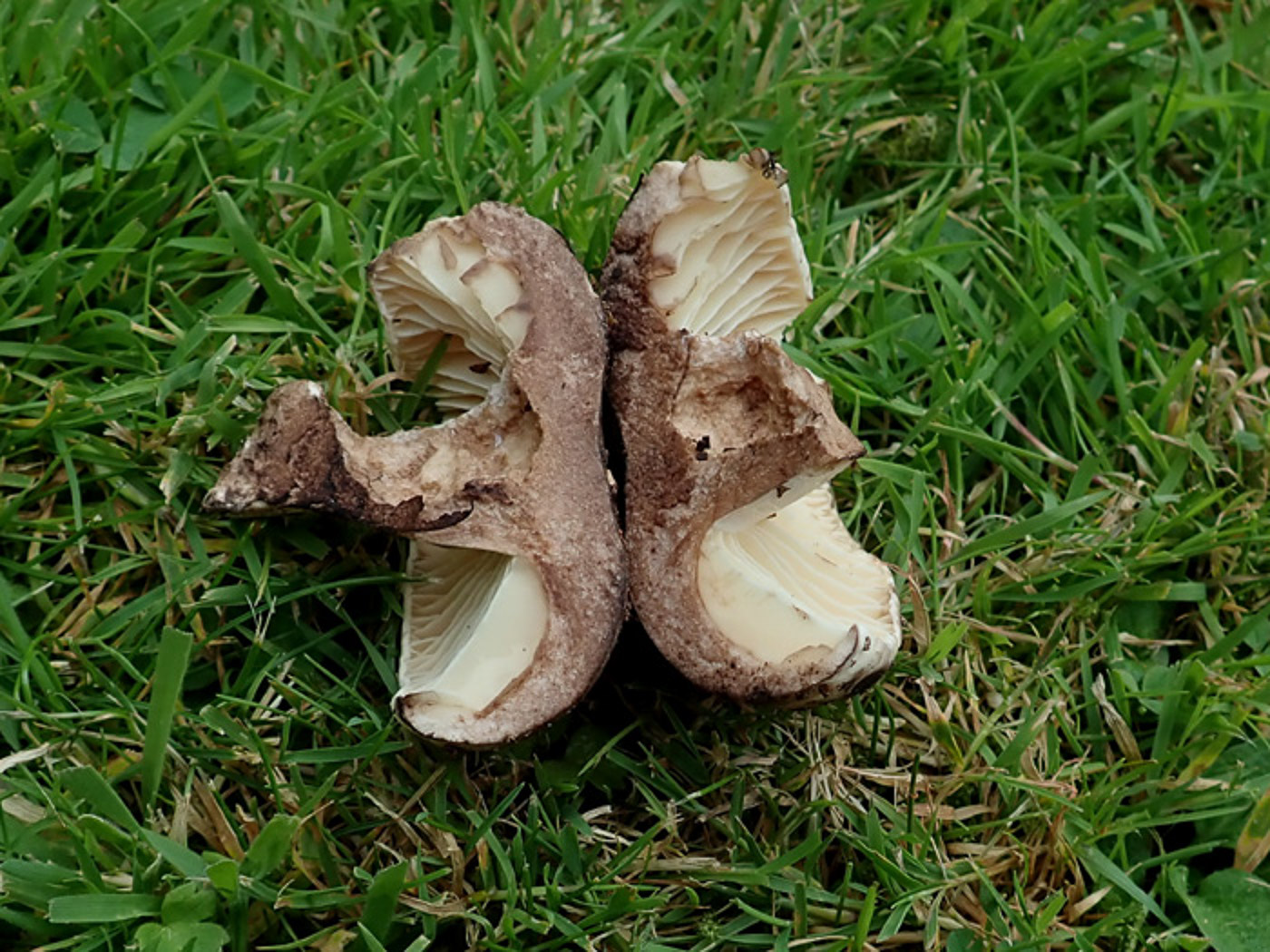 |
August 4th Russula nigricans (Blackening Brittlegill)
In Hodgemoor Woods under Oak Penny found this very common species just beginning to fruit and easily recognised by its widely spaced gills and very solid brittle texture. On collection she broke one in half and then kept an eye on it and after 30 minutes the flesh had started to redden (photo 2). At home some time later the same specimen was beginning to blacken (photo 3). Several of the Compactae group of Brittlegills display this same colour change to the flesh but none have the widely spaced gills of this species. See also in Finds 2020 September 18th.
|
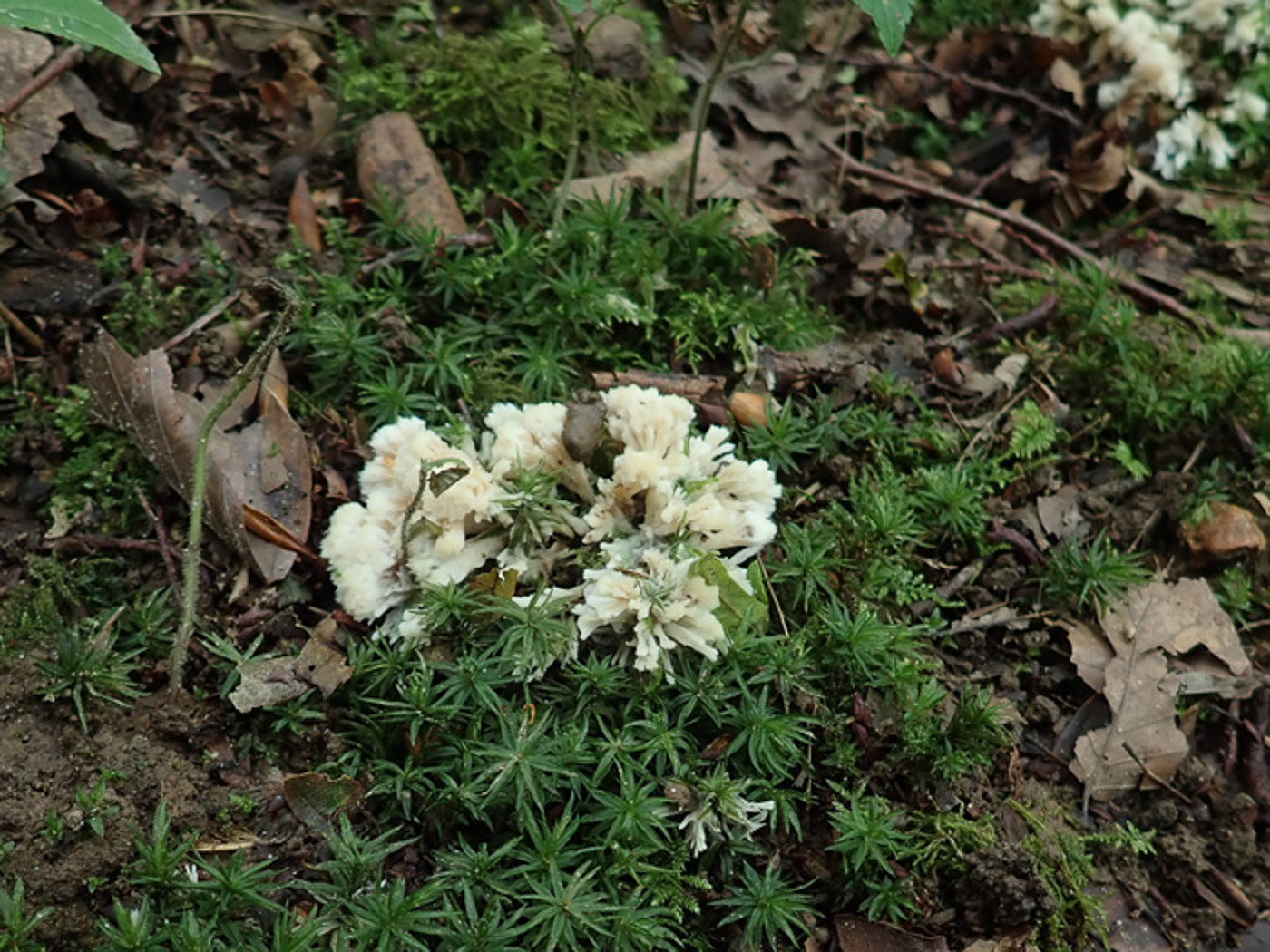
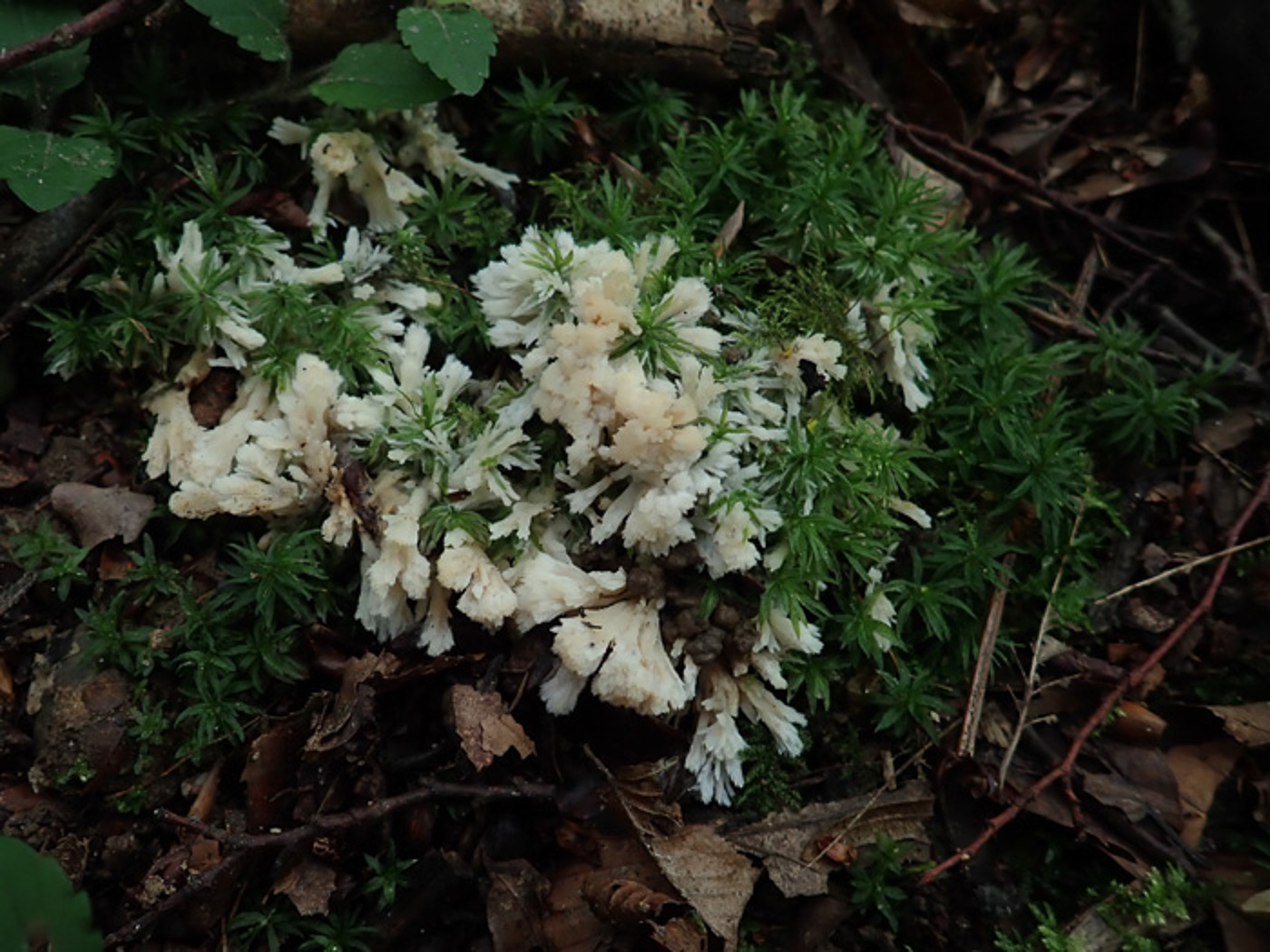 |
August 4th Thelephora penicillata (Urchin Earthfan)
In Hodgemoor Woods in mossy soil amongst deciduous litter Penny spotted two clumps of this uncommon and unusual looking species. Like a stubby coral fungus - though not related - it has soft feathery tufts, white at first then becoming dark grey at their base. We have a just handful of sites where it's been found previously, this being one of them. See also in Finds 2021 August 3rd.
|
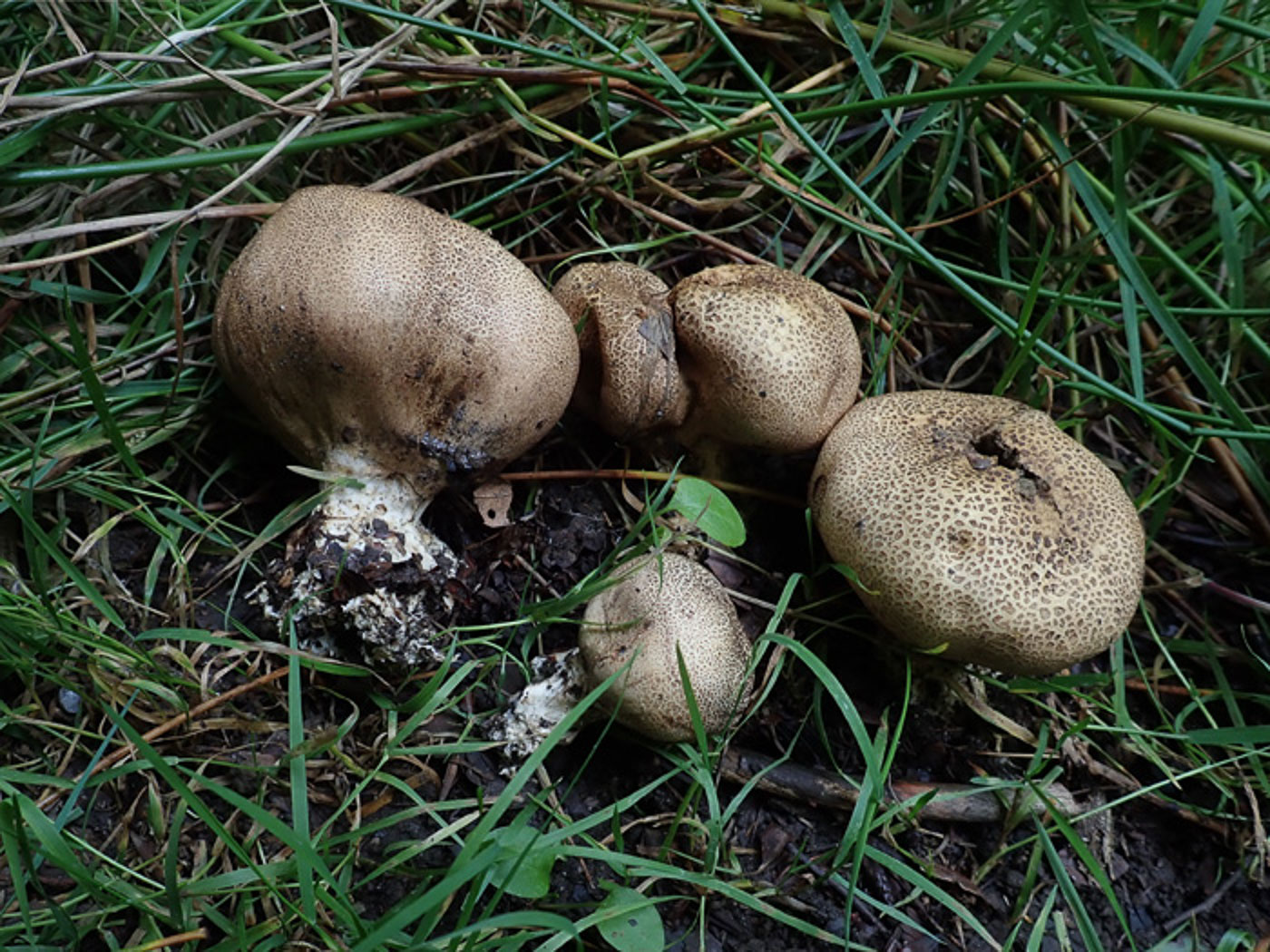 |
August 4th Scleroderma verrucosum (Scaly Earthball)
In a grassy path edge near Oak in Hodgemoor Woods Penny found nice examples of this species showing the distinct stem, the rough scaly surface which splits open at maturity to allow the spores to escape. See also in Finds 2020 September 19th and 2021 July 19th.
|
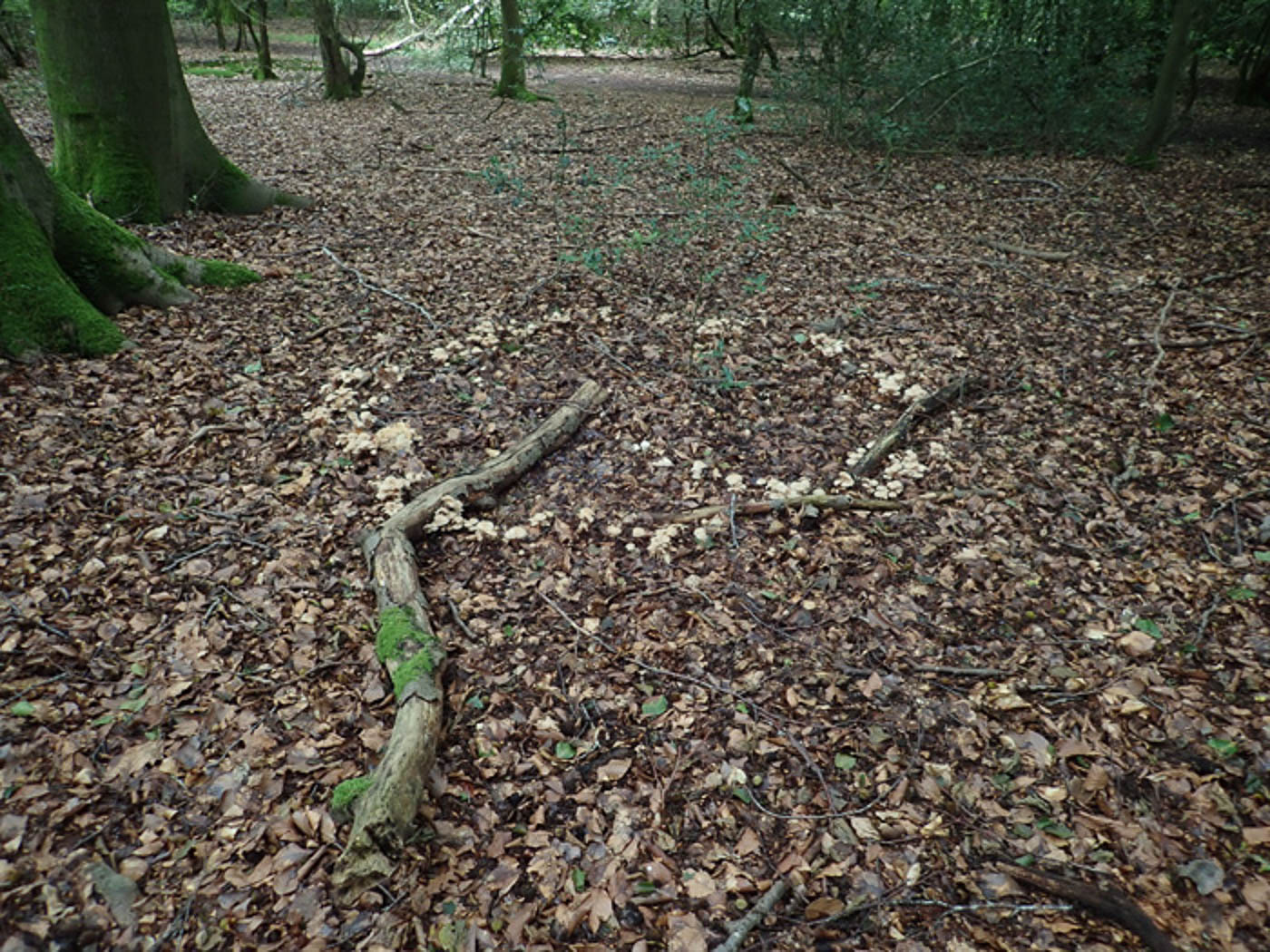
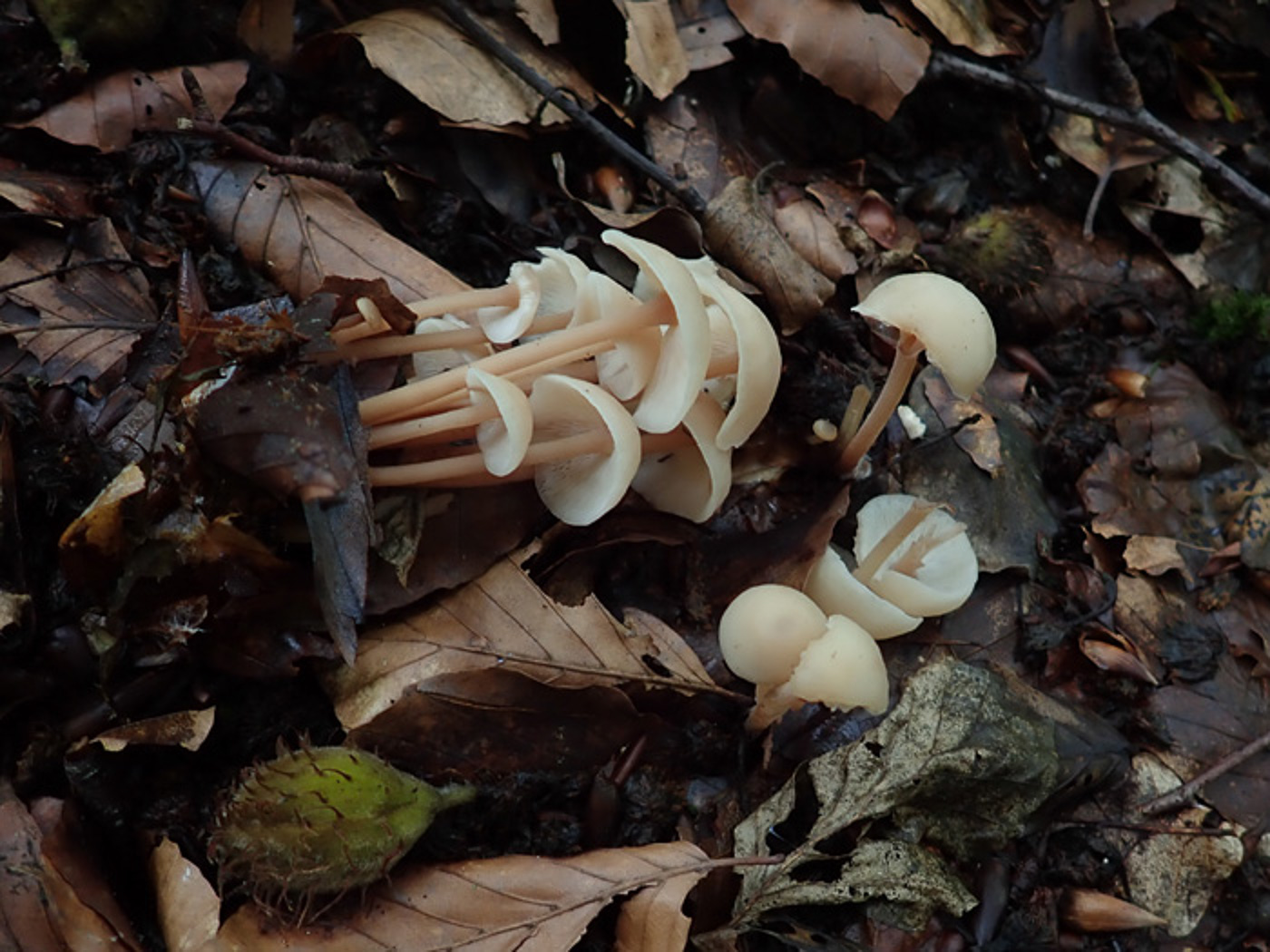 |
August 4th Gymnopus confluens (Clustered Toughshank)
In Hodgemoor Woods Penny spotted a perfect circle of fungi in the distance under Beech and went to investigate, discovering to her surprise that it was this species. Not known to form rings in this way, and new to Penny in this form, the species is common, often but not always in tight clumps and has very crowded gills and a finely velvety stem. See the Masterlist for plentiful examples.
|
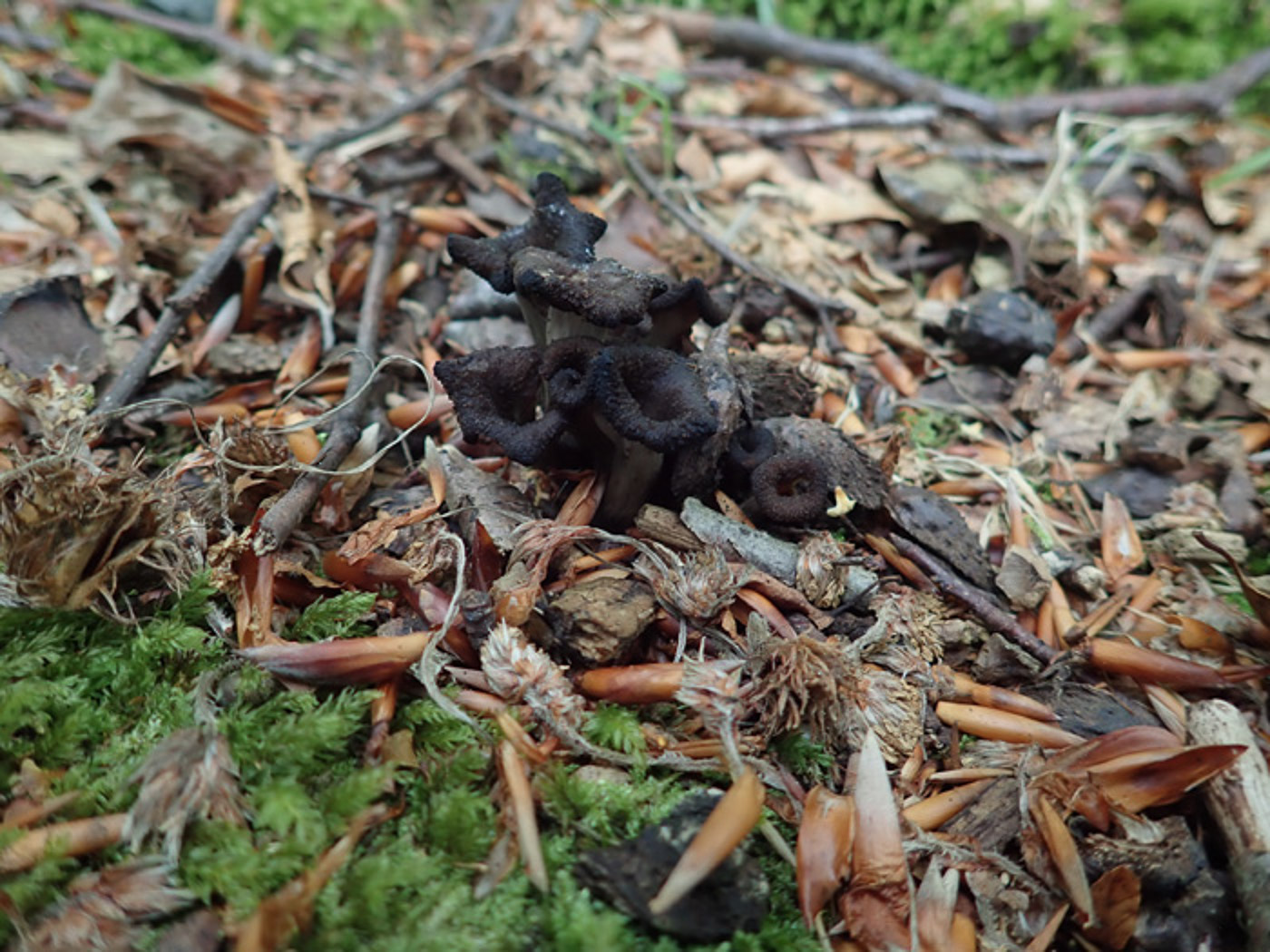
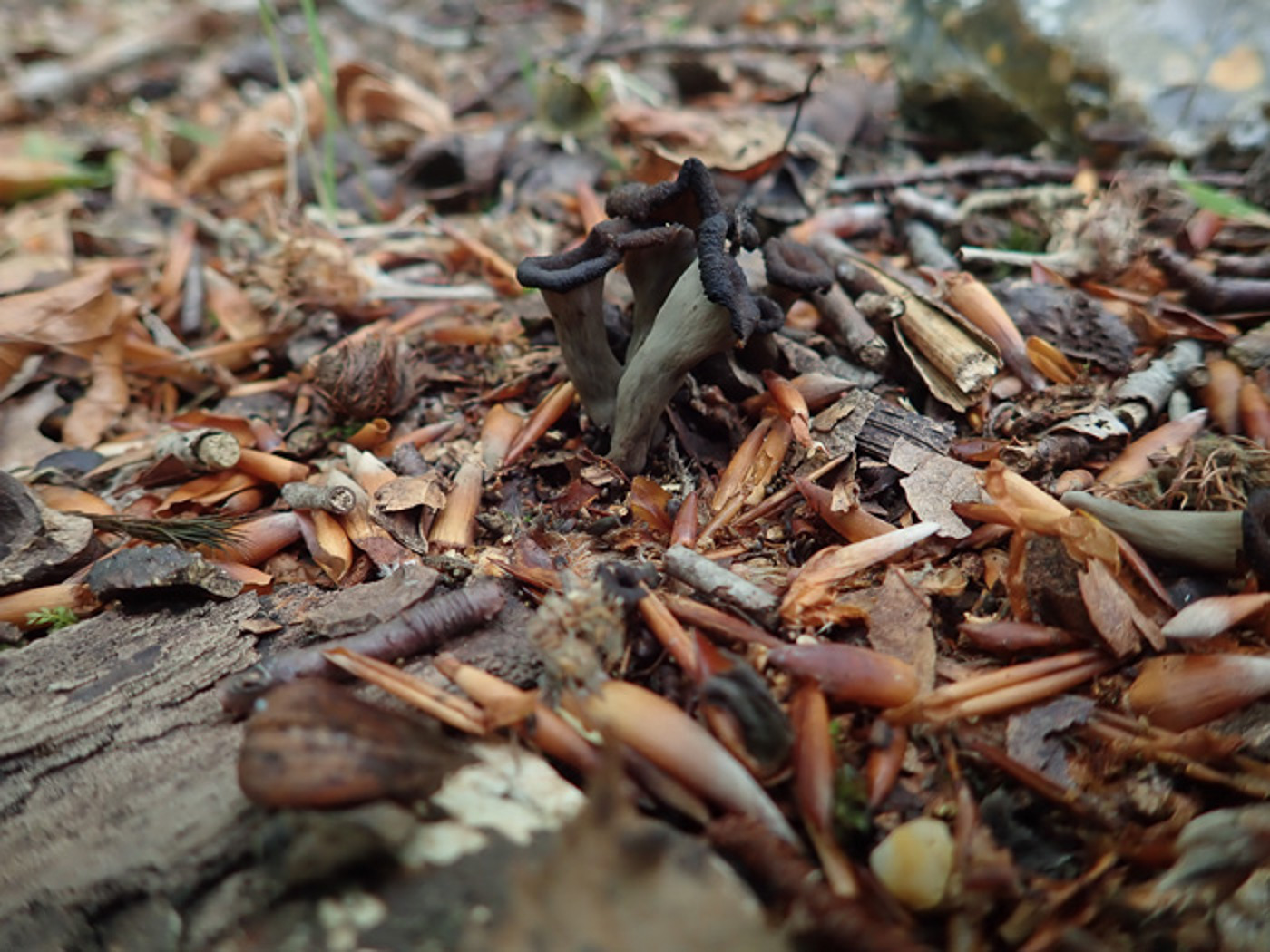 |
August 4th Craterellus cornucopioides (Horn of Plenty)
On a mossy bank under Birch in Hodgemoor Woods and adjacent to Penny's Chanterelles (see below) these young black trumpets would probably have been missed had Penny not known this was a particularly good spot for them! Once you get your eye in and have spotted one clump it's well worth looking for more because they blend in with very well with their surroundings, especially when only a couple of cms tall as here. The species is quite common though is usually later in the season than this, but nothing is following normal patterns this summer! See the Masterlist for plenty of other examples, all from September, October and November.
|
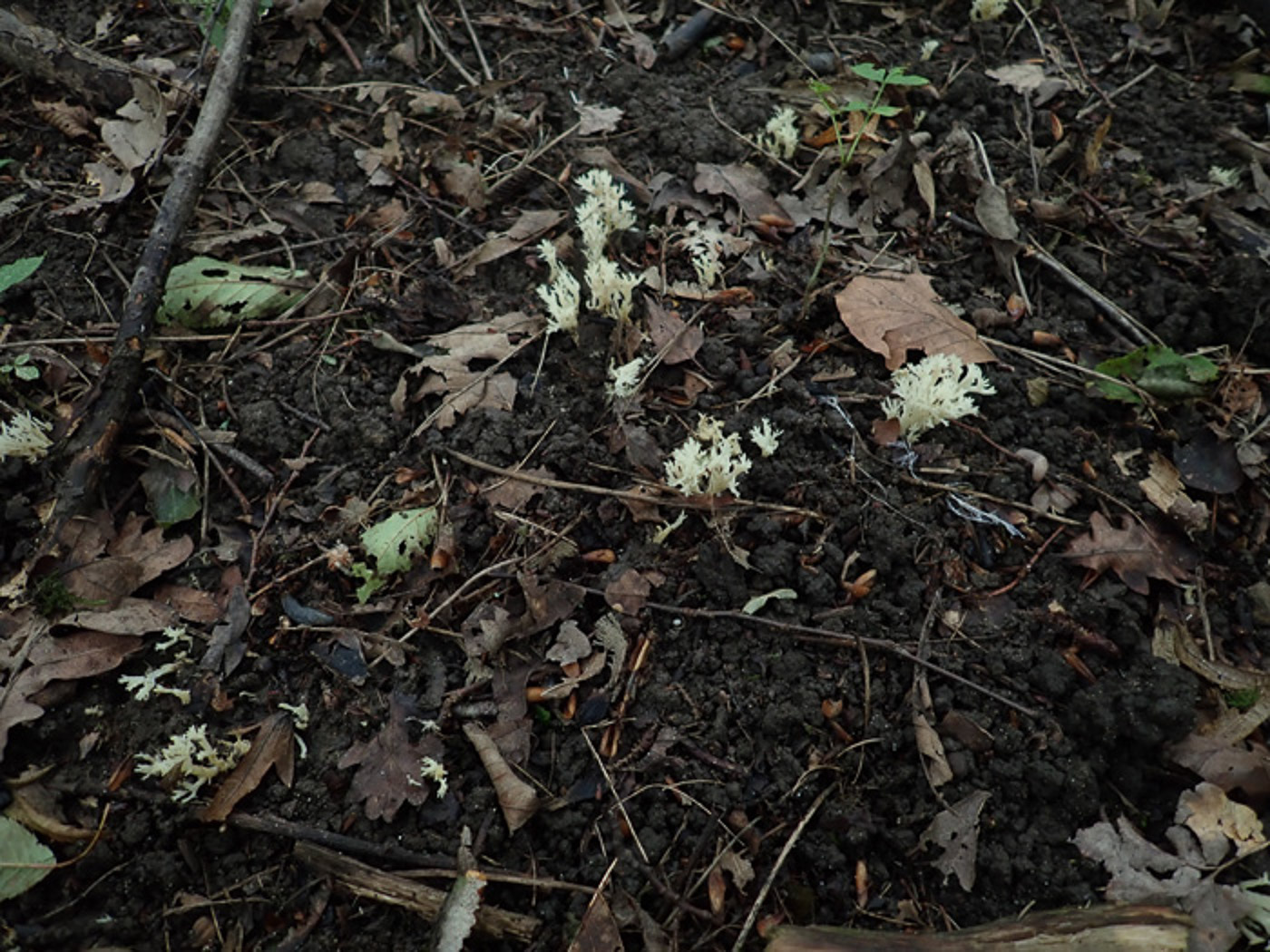
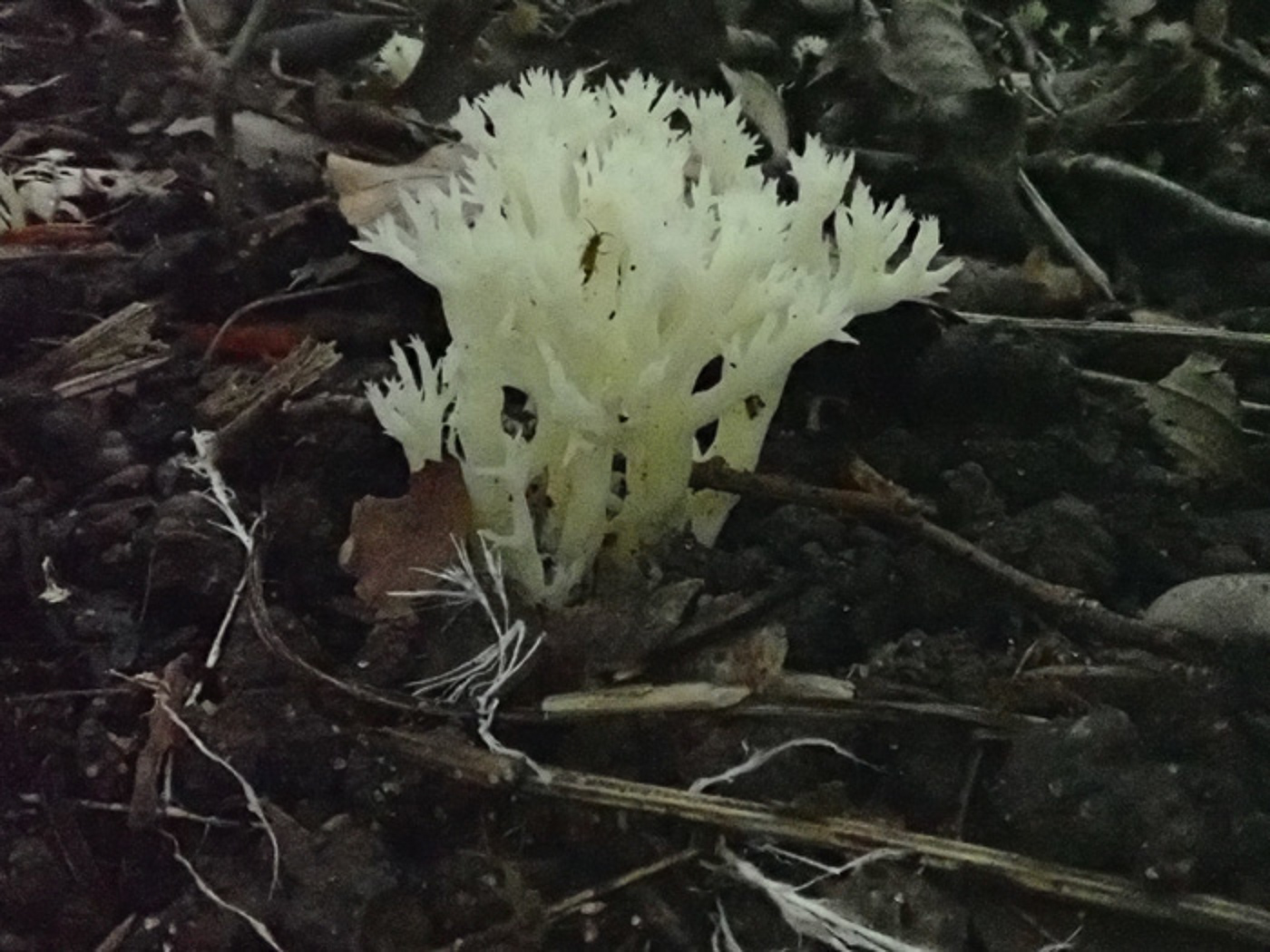 |
August 4th Clavulina coralloides (Crested Coral)
In soil / litter under Hornbeam in Hodgemoor Woods Penny came across this nice clump of fresh Coral. Though similar to and sometimes mistaken for the equally common C. cinerea, the tips of today's species are forking and sharp in comparison. See also in Finds 2020 October 14th.
|
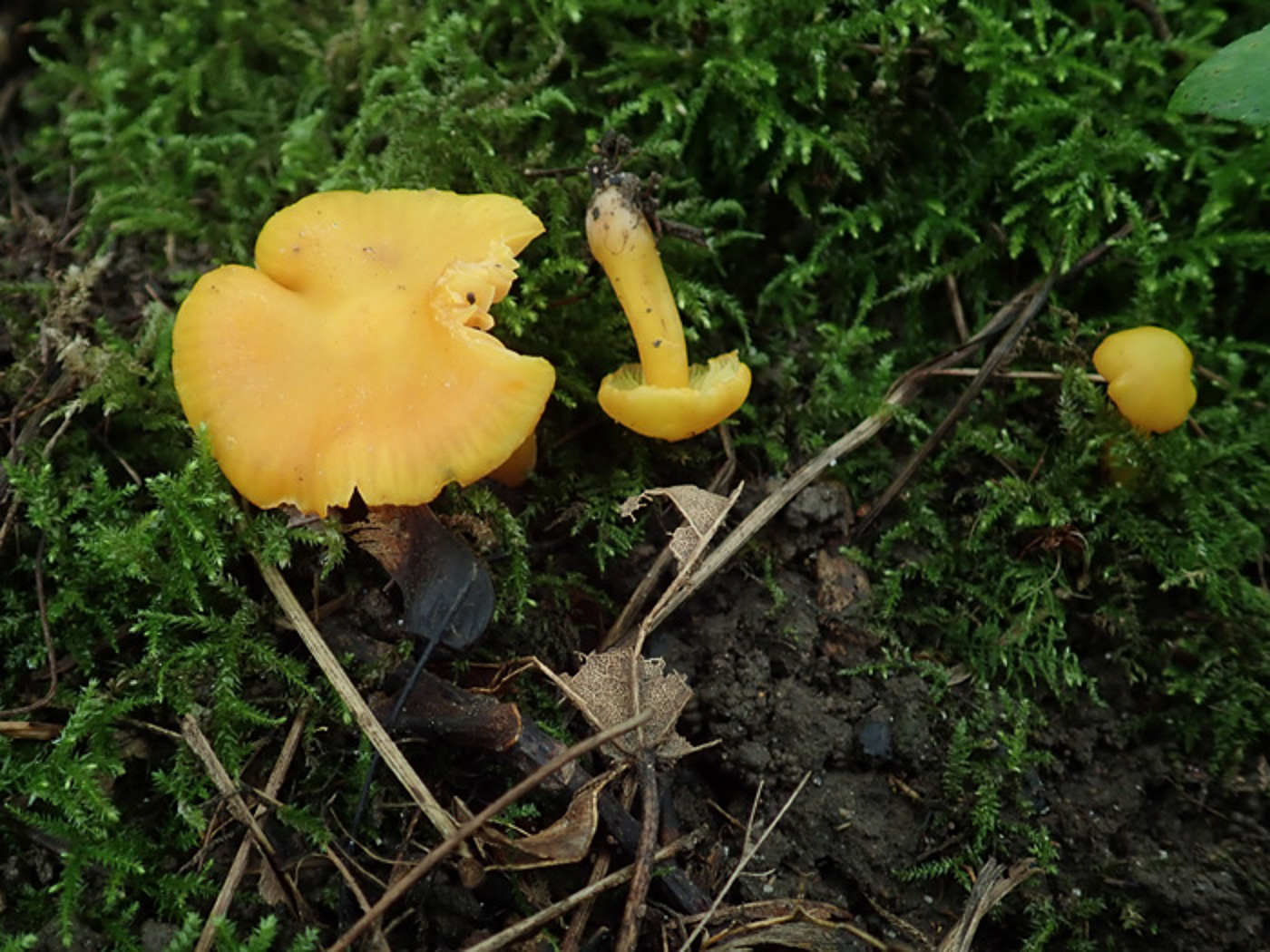
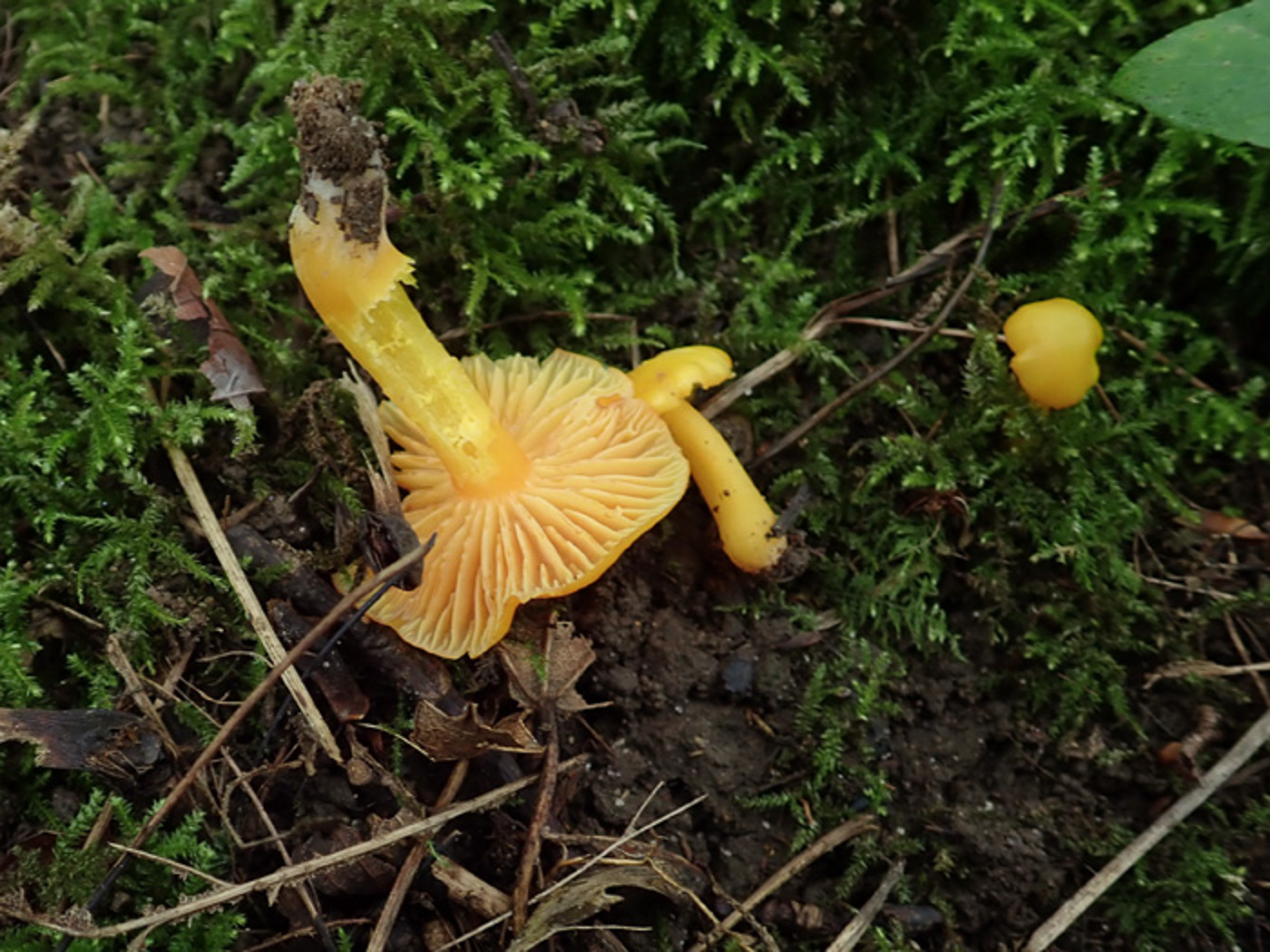 |
August 4th Hygrocybe quieta (Oily Waxcap) 
Under Hornbeam in Hodgemoor Woods Penny thought she'd found a Chanterelle but then realised it was a Waxcap! In fact, though we think of Waxcaps as grassland species they can and do appear in woodland and this species has been recorded here before. Features to note: the gills tend to be a darker orange than the cap, under the scope the spores are quite distinctive and have a 'waist', but the best pointer is its smell: similar to that of Lactarius quietus (hence its common name) but unique for a Waxcap species. Placing a specimen in a pot to dry out a bit, then mashing part of the gill surface can help to make this smell more obvious. See the Masterlist for further examples.
|
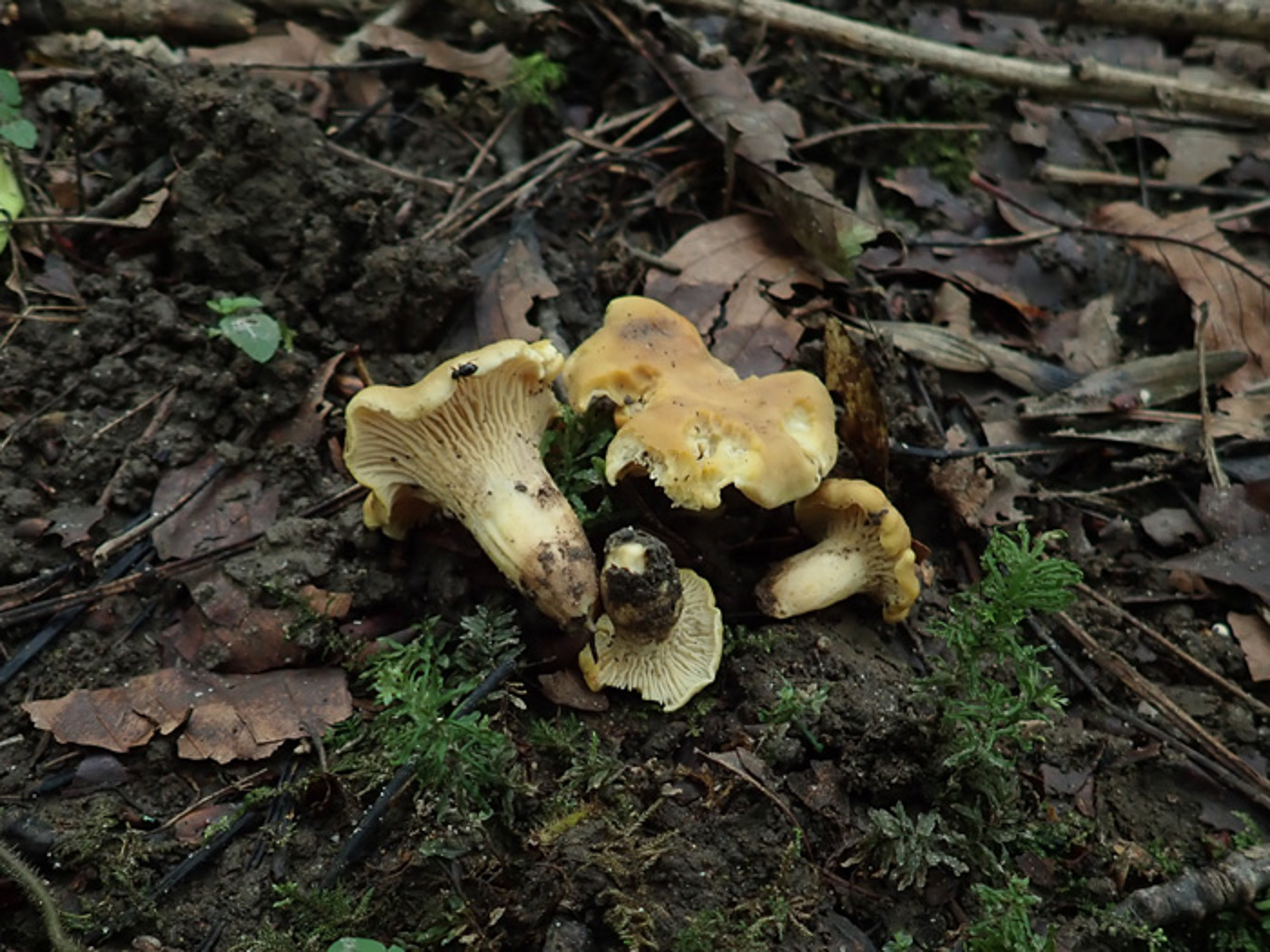
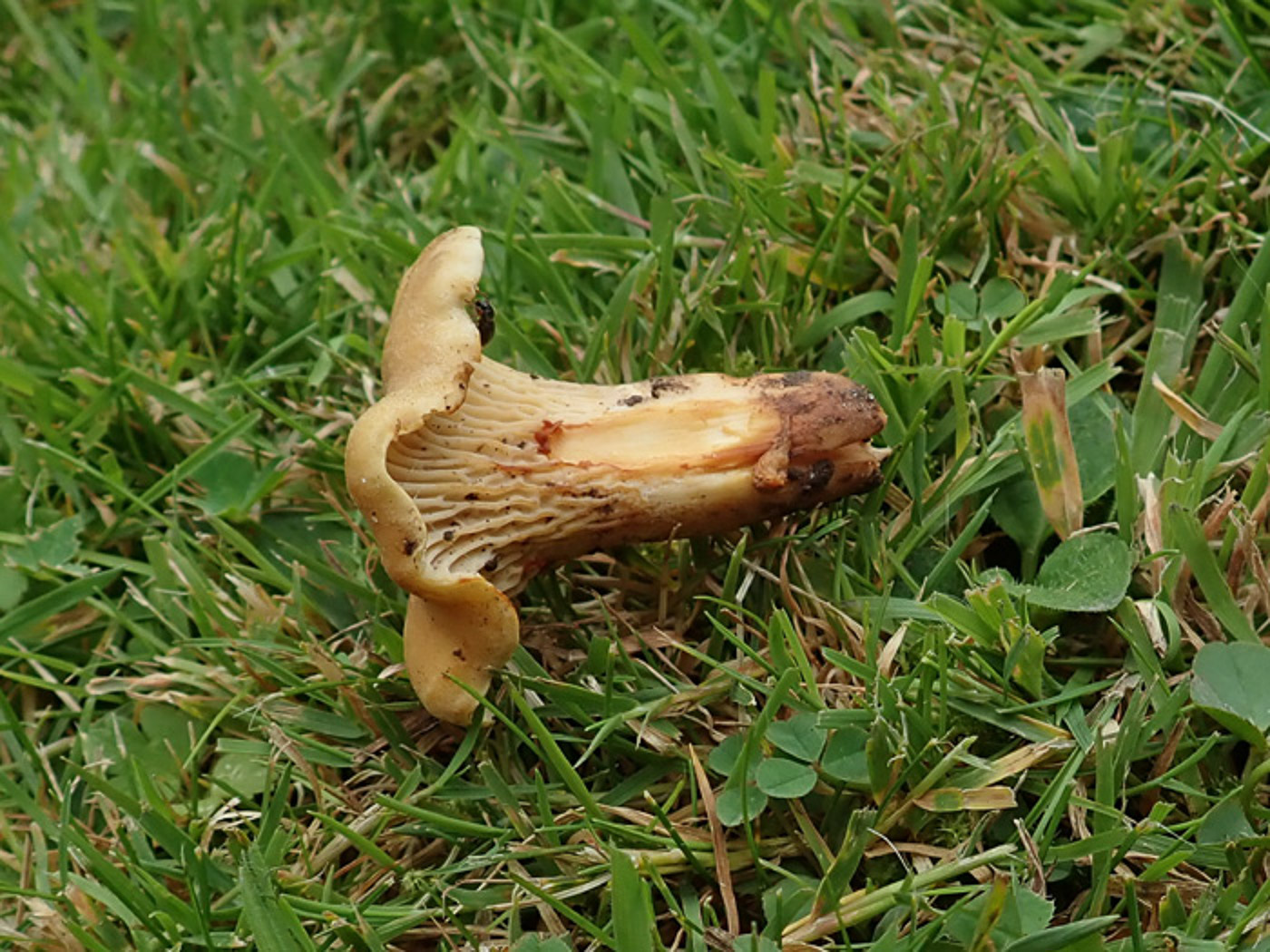 |
August 4th Cantharellus ferruginascens (Pale Chanterelle)
Under Hornbeam in Hodgemoor Woods Penny noticed these rather dull capped Chanterelles compared to the patch of this species she'd just found earlier (see the entry just below). She promptly scratched the stem of one and put them in a pot to check later, thinking it might well develop the dark rusty staining of this species. Sure enough this proved to be the case (see photo 2 taken on returning home and showing the edges of her scratch now rusty). Though described as rare, this may not be so because the species appears to be quite variable in cap colour, often much paler though here much more dull ochre, and the rusty staining would only become apparent if one knew to test for it. See a paler example in Finds 2021 July 11th. A sample will be sent for sequencing.
|
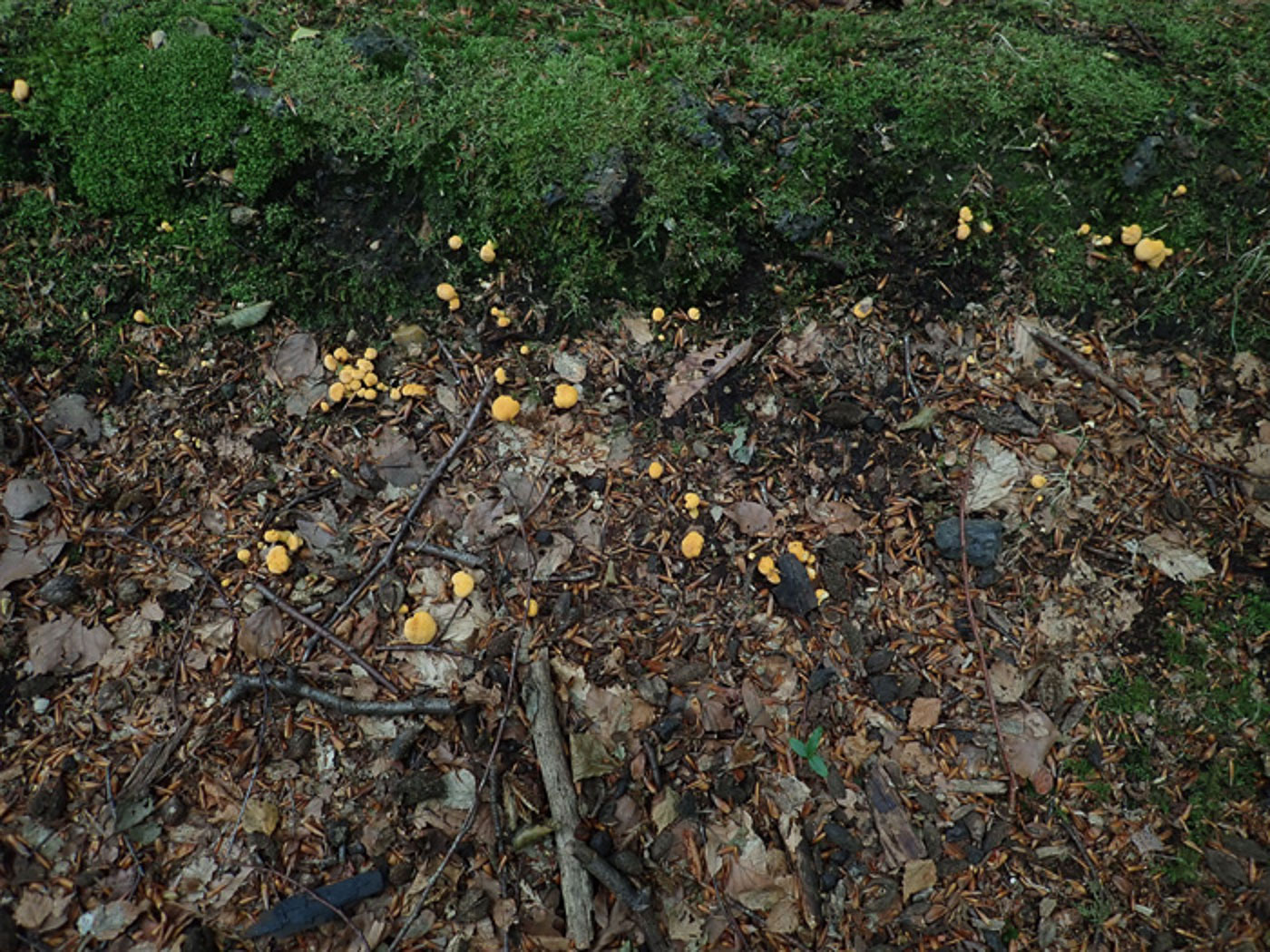
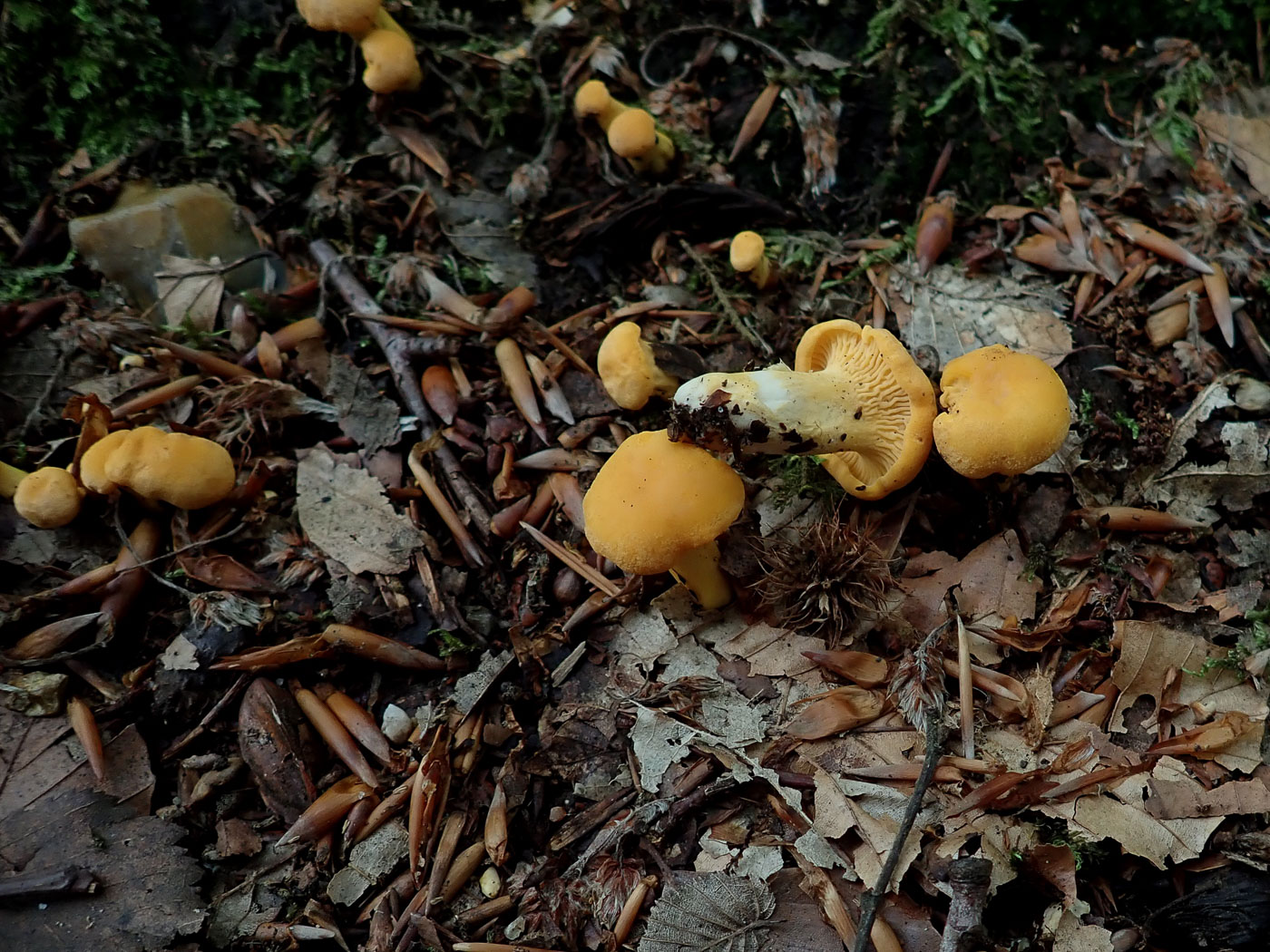 |
August 4th Cantharellus cibarius (Chanterelle)
On a mossy bank under Birch in Hodgemoor Woods this species was just emerging. Though still pretty tiny the intense apricot colour left one in little doubt what they were, and- just being revealed as the cap expands (this was the largest specimen available). See the Masterlist for more mature examples, also try Barry Webb's photo taken just three weeks ago on July 13th.
|
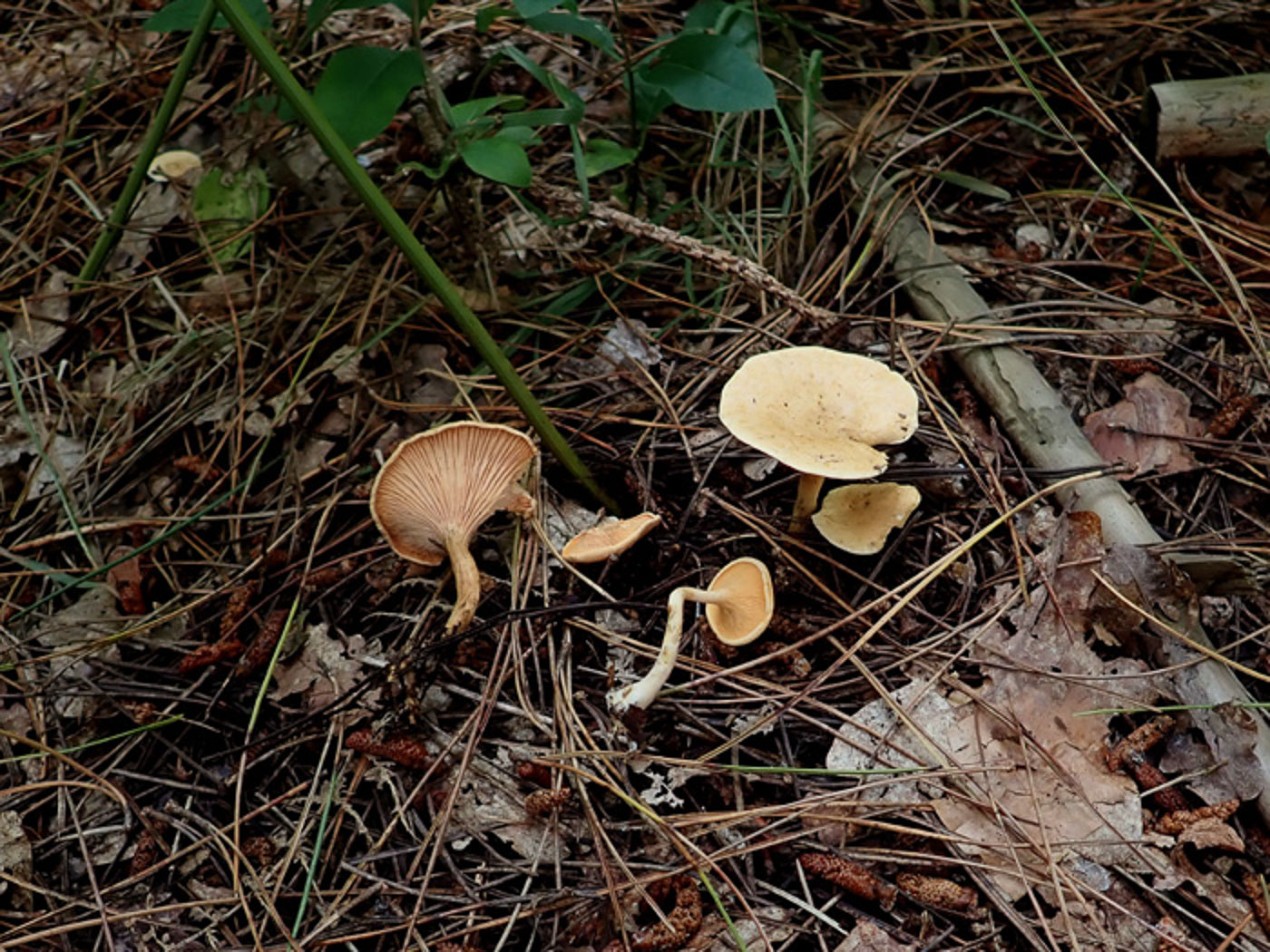 |
August 4th Hygrophoropsis aurantiaca (False Chanterelle)
In the dense Pine litter in Hodgemoor Woods this common species was beginning to appear. Though the cap colour can vary - here it is quite pale orange - the closely packed fine orange gills which run well down the stem should make the species easy to identify. Compare with the true Chanterelles in the entry above and see also in Finds 2020 October 27th and November 7th.
|
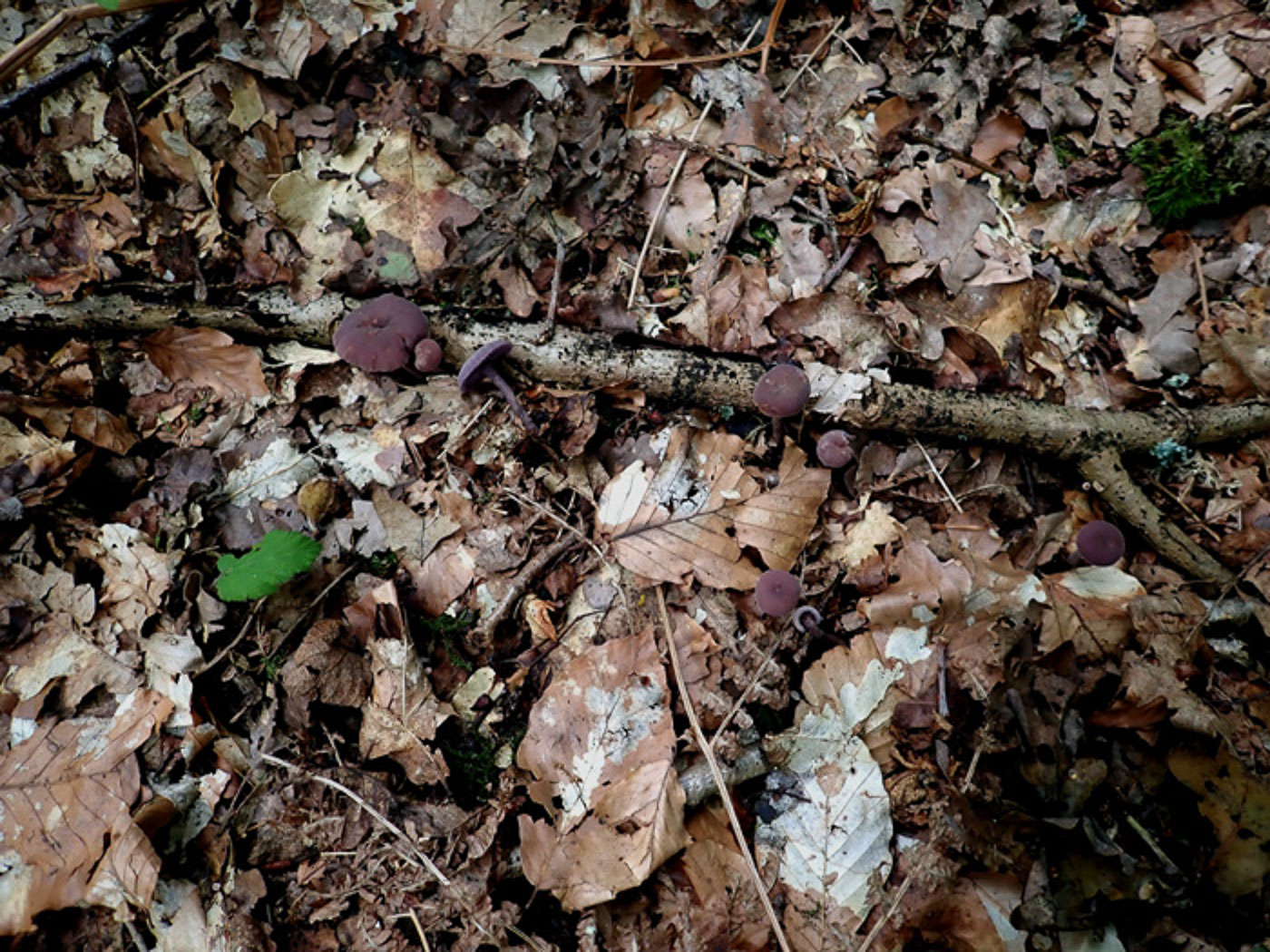
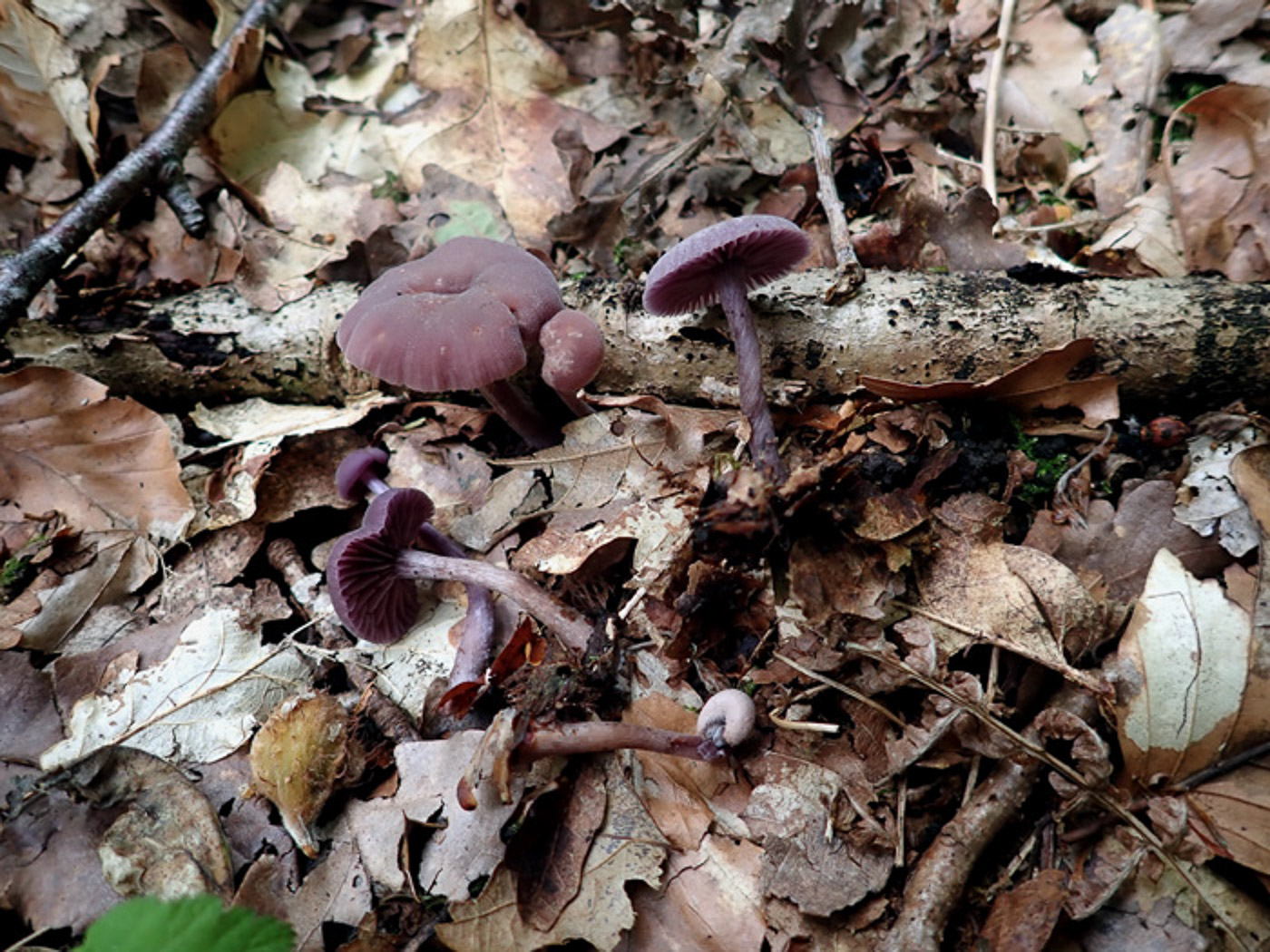
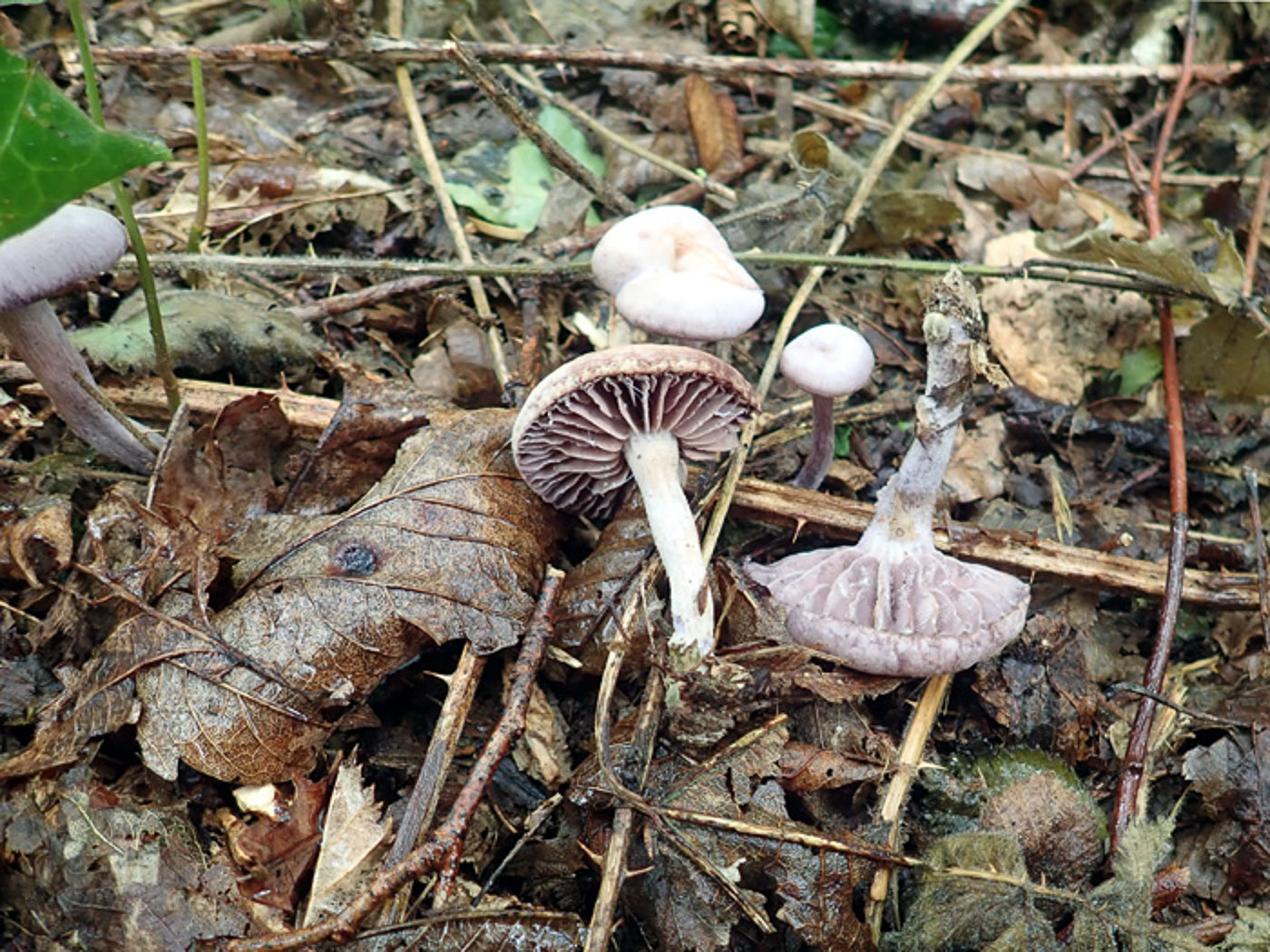 |
August 4th Laccaria amethystina (Amethyst Deceiver)
In deciduous litter in Hodgemoor Woods Penny found this common species coming up in lots of places though surprisingly well camouflaged considering its colour. Checking underneath for the widely spaced and concolorous gills is always a good plan because other entirely unrelated species can look similar from above (hence its common name). When the caps fade - which happens rapidly - the beautiful rich amethyst colour remains in the gills. Photo 3 was taken a week later at Turville Heath and shows well faded fruitbodies. Surprisingly we have only one other entry in Finds: 2020 October 3rd.
|
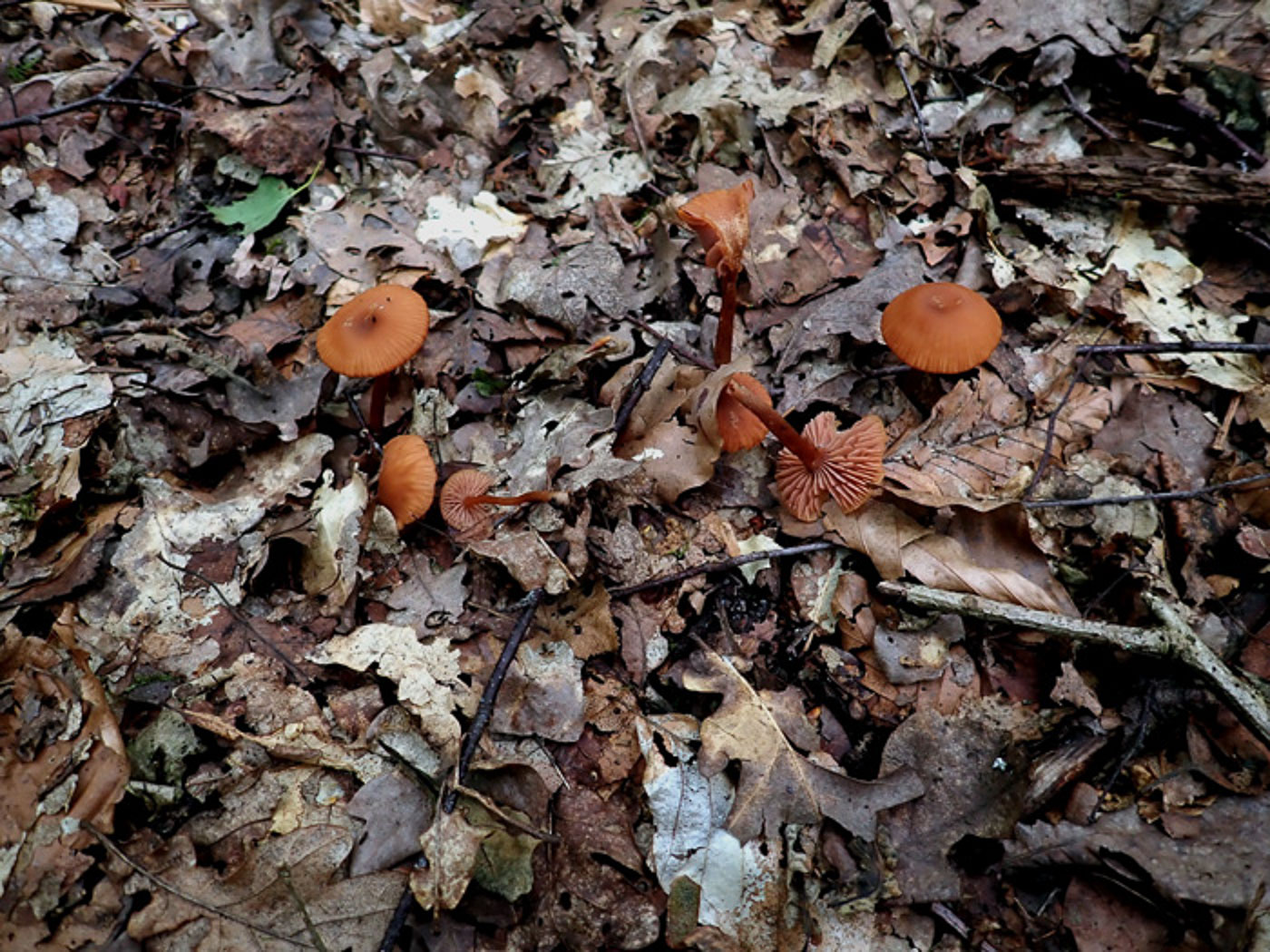 |
August 4th Laccaria laccata (Deceiver)
In Oak litter in Hodgemoor Woods Penny was not surprised to see this very common species appearing and displaying its rusty cap colour well in contrast to the pink and widely spaced gills. This cap colour is only apparent when fresh and in damp conditions but readily begins to fade. See the plentiful Finds examples located from the Masterlist.
|
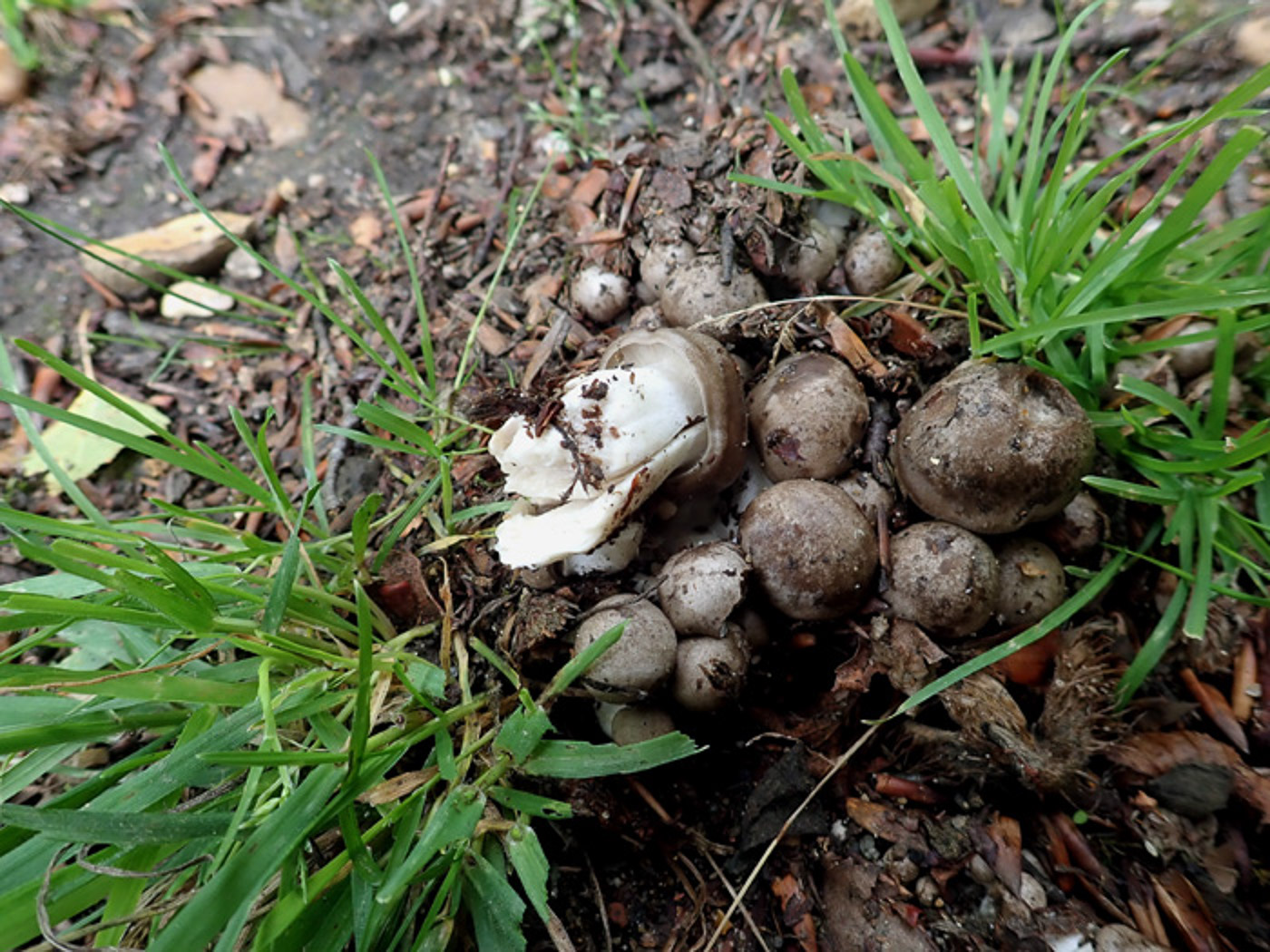 |
August 4th Lyophyllum decastes (Clustered Domecap) 
In soil on the edge of a path in Hodgemoor Woods Penny nearly trod on the two tight clumps just emerging. The tight clustered habit, white stem and dark brown domed cap was all she needed to put a name to this fairly common species, this quickly confirmed later by its globose spores. We have just one previous entry in Finds: 2020 November 7th.
|
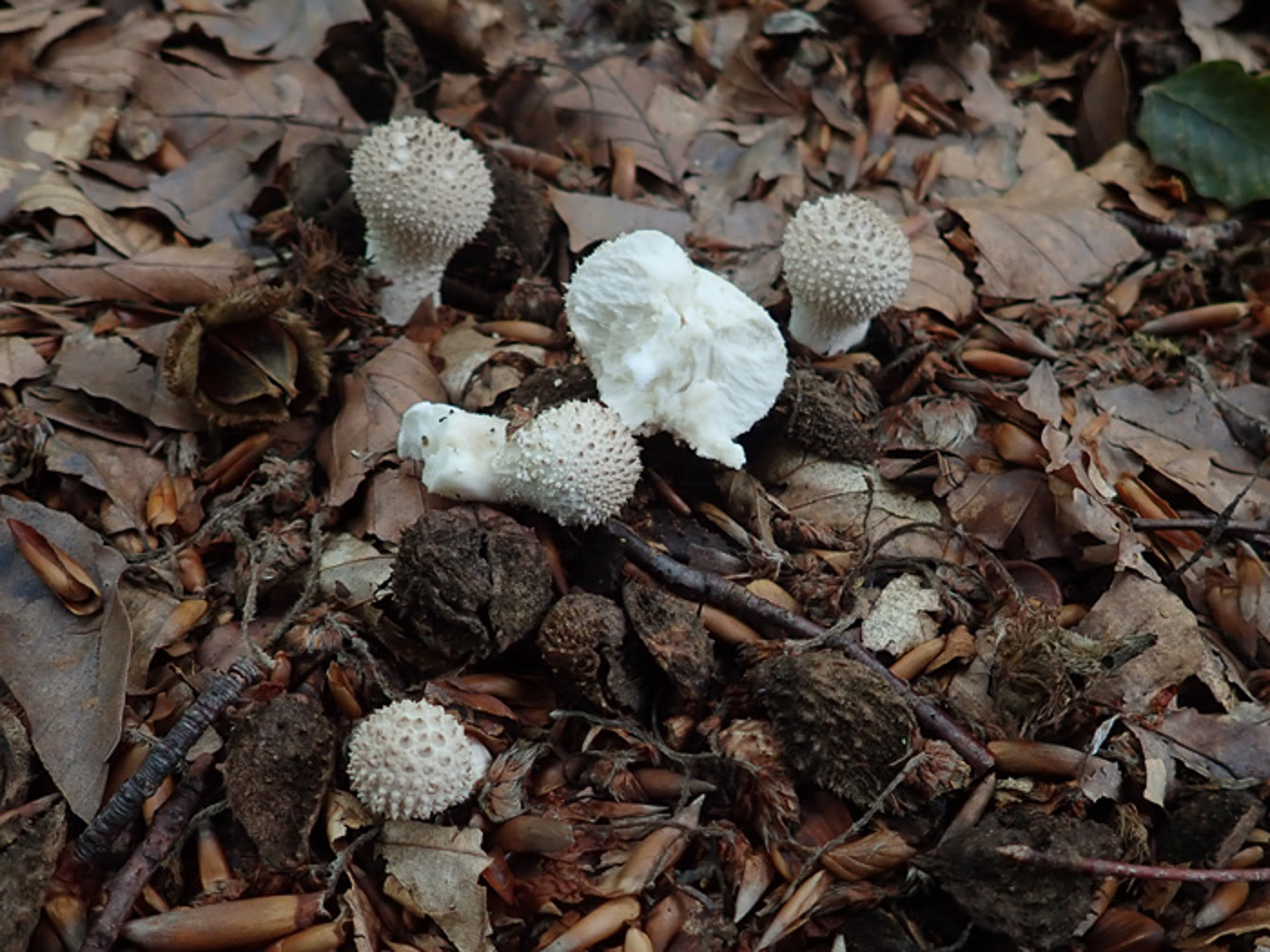 |
August 4th Lycoperdon perlatum (Common Puffball)
Penny found her first showing of this common and familiar species today in Hodgemoor Woods in the thick deciduous litter. The 'pearls' on the surface which rub off easily make the species easy to separate from the other really common woodland puffball, L. pyriforme. See the Masterlist for other examples.
|
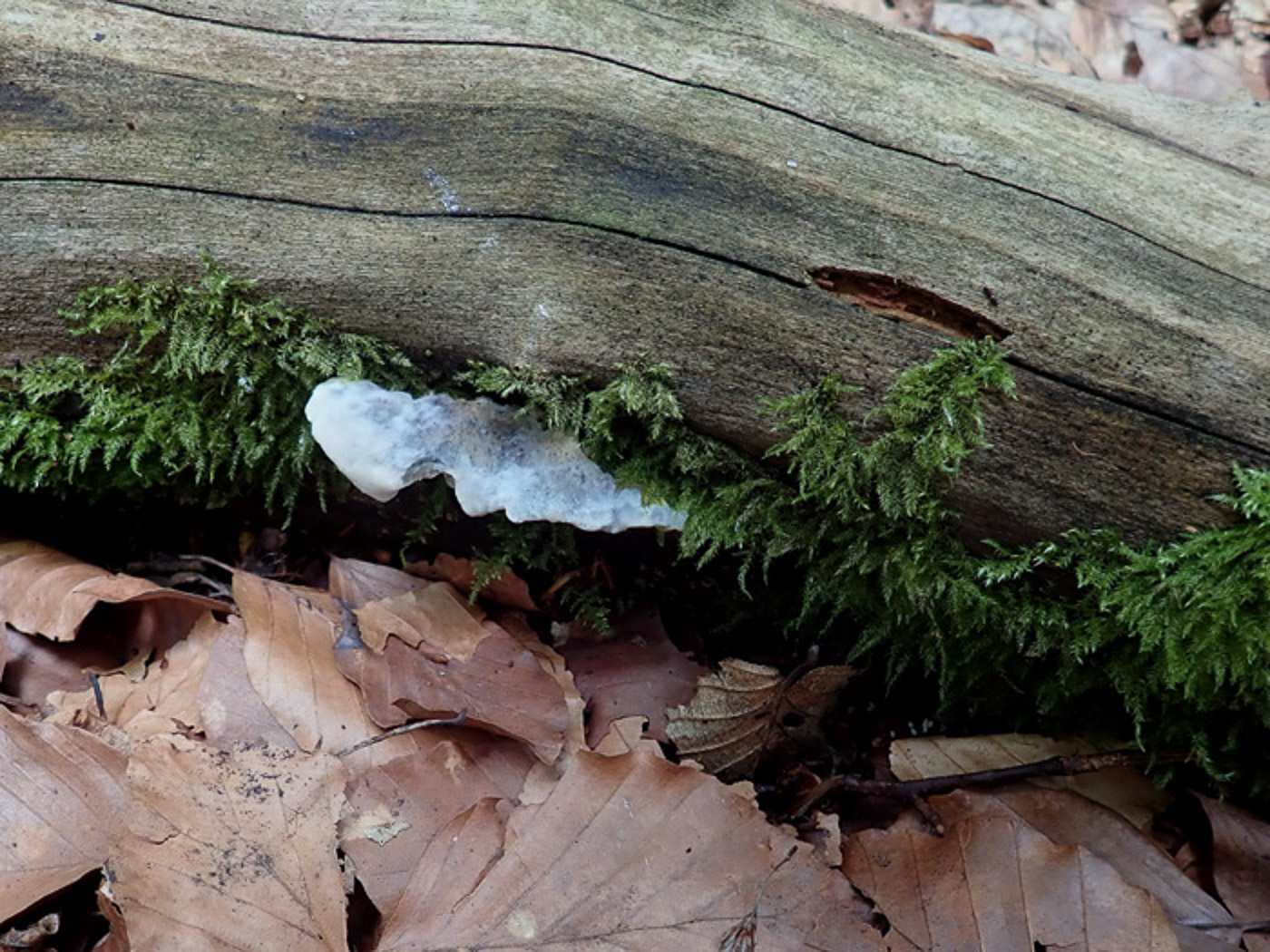
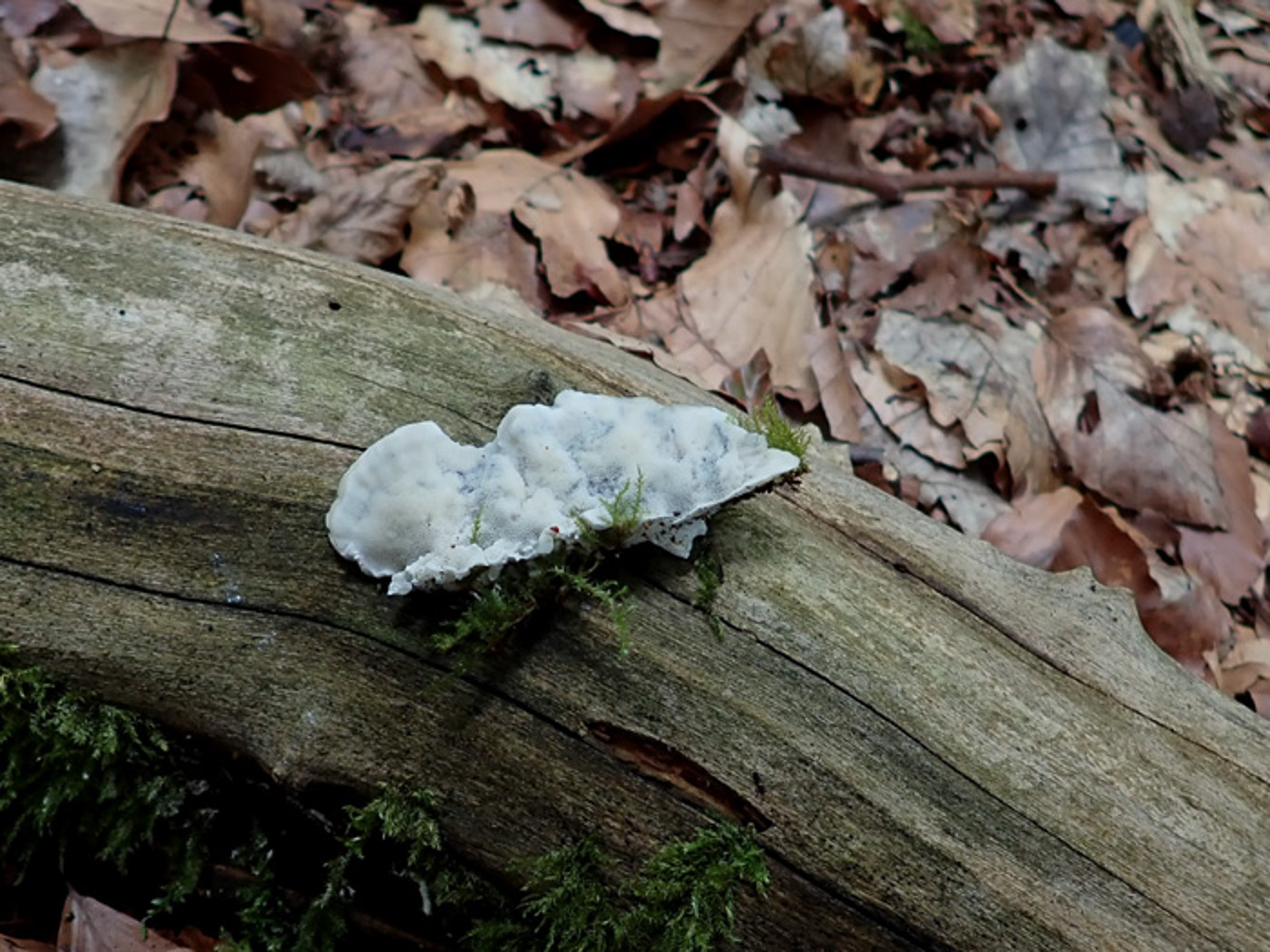 |
August 4th Postia subcaesia (Blueing Bracket)
In Hodgemoor Woods Penny found this distinctive and quite common bracket, here on bare fallen Elder. Though the upper surface is not as intensely blue as in the closely related P. caesia (which occurs on fallen conifer) the colour makes this an easy ID though the pores beneath usually lack much blue - here there is a hint of blue, however. Surprisingly this appears to be a new entry for Finds.
|
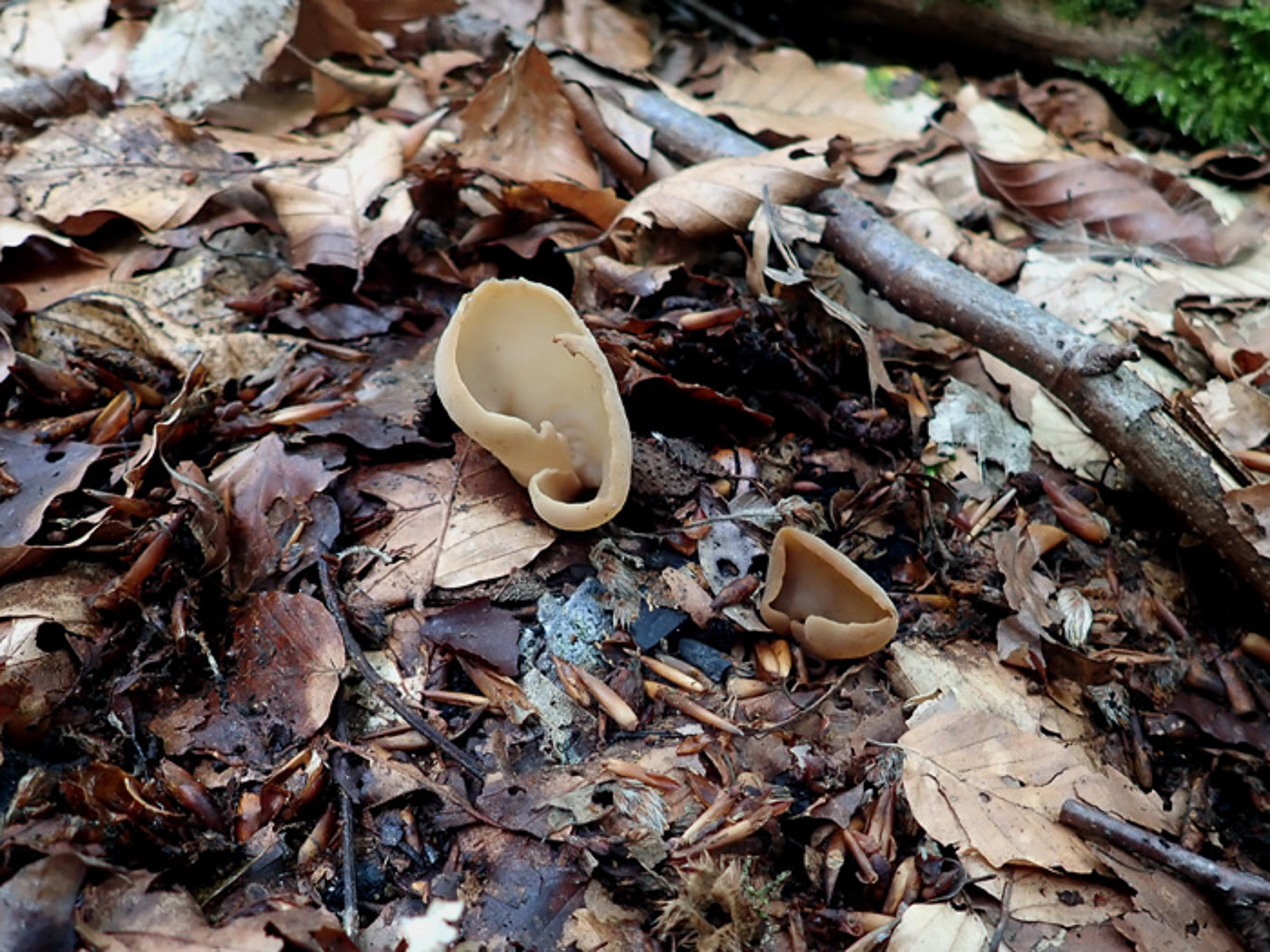 |
August 4th Otidea alutacea (Tan Ear) 
At Hodgemoor Woods on an old disused Charcoal heap Penny noticed this pale pair of cups. The split down one side eliminated the genus Peziza, the beige colour eliminated O. bufonia (Toad's Ear) and the lack of any pink patches then eliminated O. onitica (Hare's Ear), making this a quick check with a scope to confirm. We have just one previous Finds entry: 2020 September 12th.
|
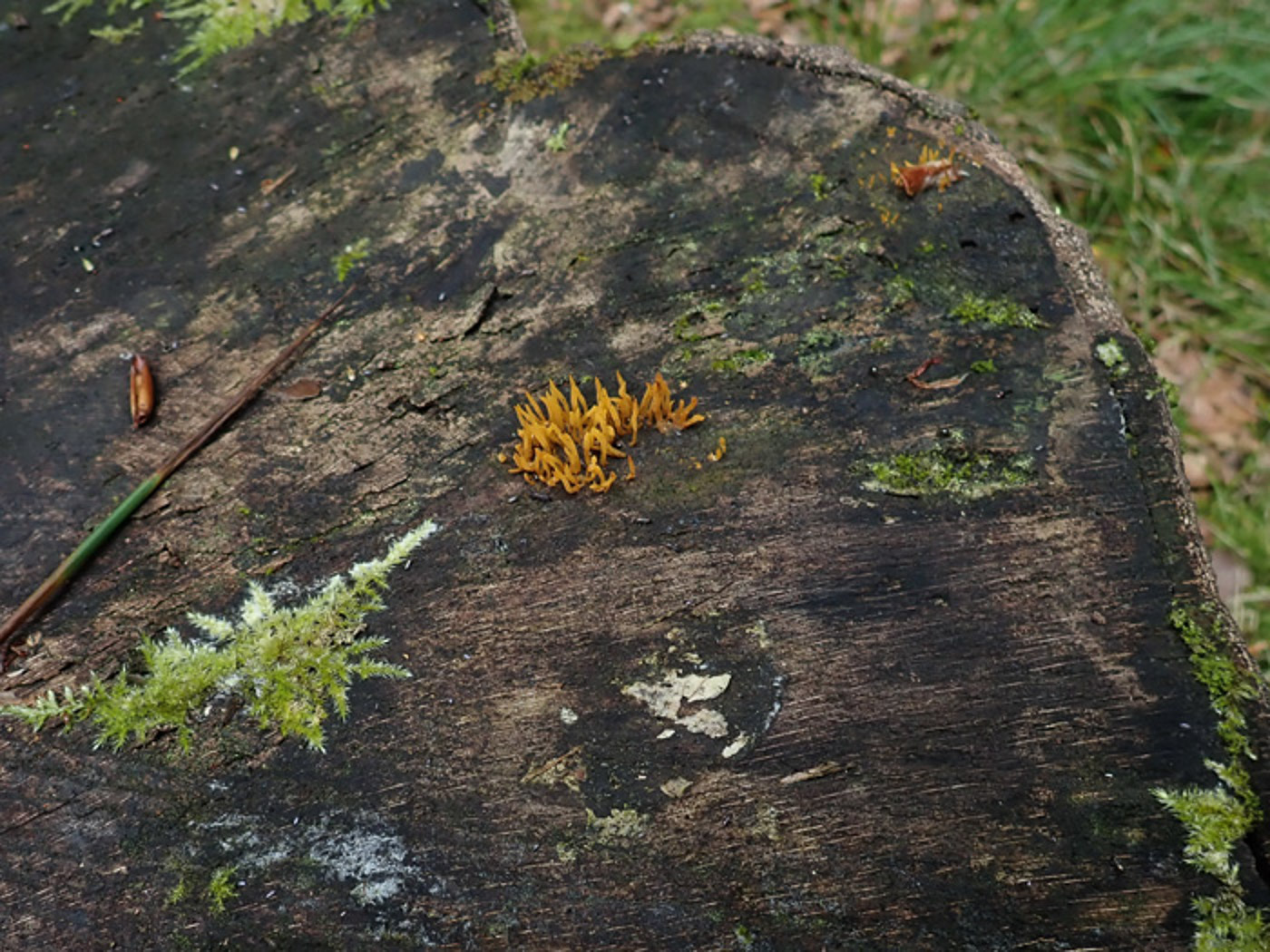 |
August 4th Calocera cornea (Small Stagshorn)
On a sawn off Beech stump in Hodgemoor Woods Penny found this little cluster. The species favours bare deciduous wood and true to its name is the smallest of the Stagshorns with individual spikes also the thinnest and most pointed. See the Masterlist for plenty more examples.
|
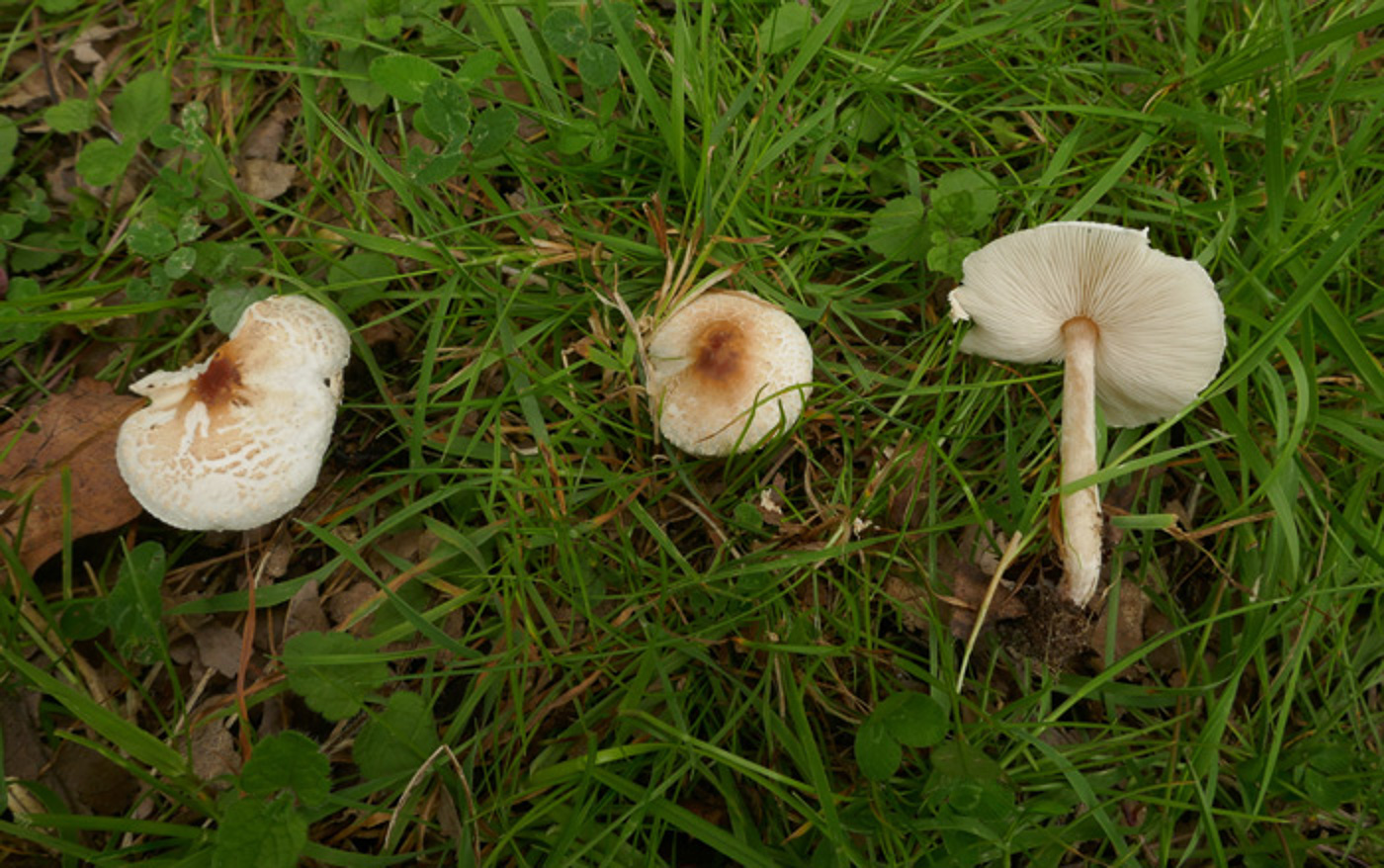 |
July 28th Lepiota cristata (Stinking Dapperling)
At Stampwell Farm in grassy litter Jackie Ewan found this trio both looking and smelling typical of this perhaps our commonest Dapperling. See the Masterlist for further examples.
|
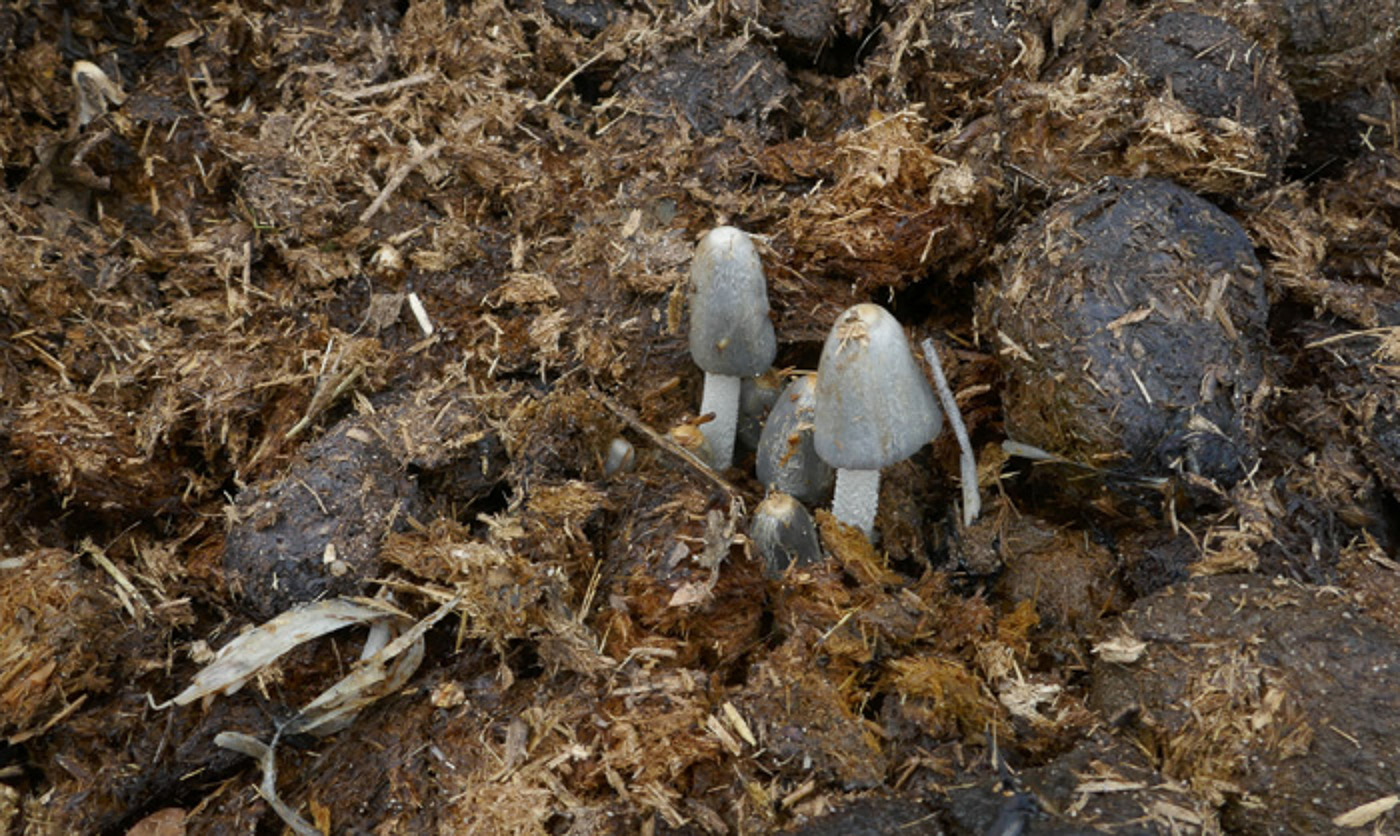
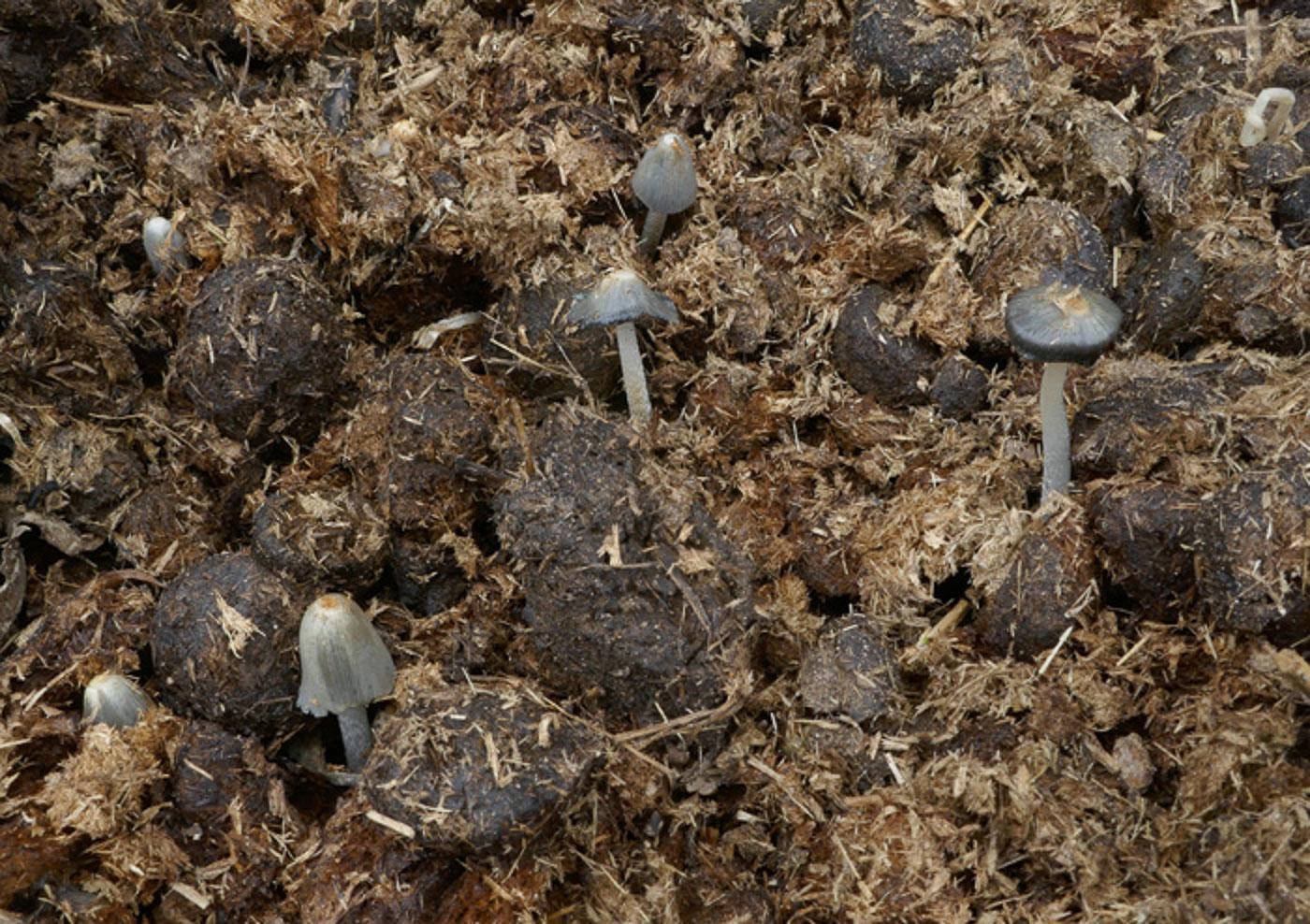
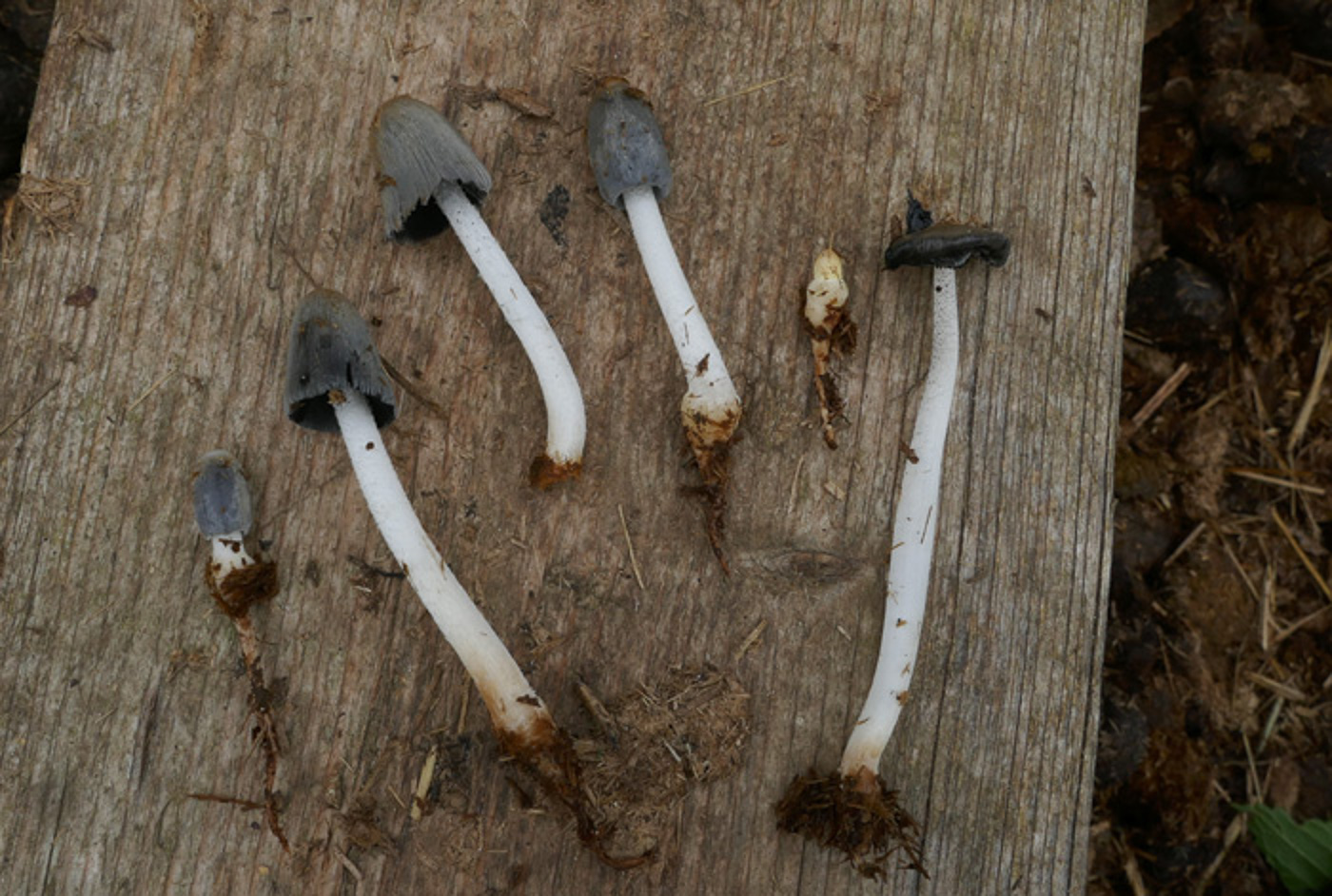 |
July 28th Coprinopsis cinerea (Grey Inkcap) 
On a dung heap at Stampwell Farm Jackie Ewan saw these Inkcaps appearing in good numbers and sent her photos to Derek who suggested the ID. This checked out with spore size together with the swollen stem base with long root - clearly visible in the smaller specimens in photo 3. We have just a handful of records from three other sites, all from dung heaps, though the species is not considered that unusual. This is a new entry for Finds.
|
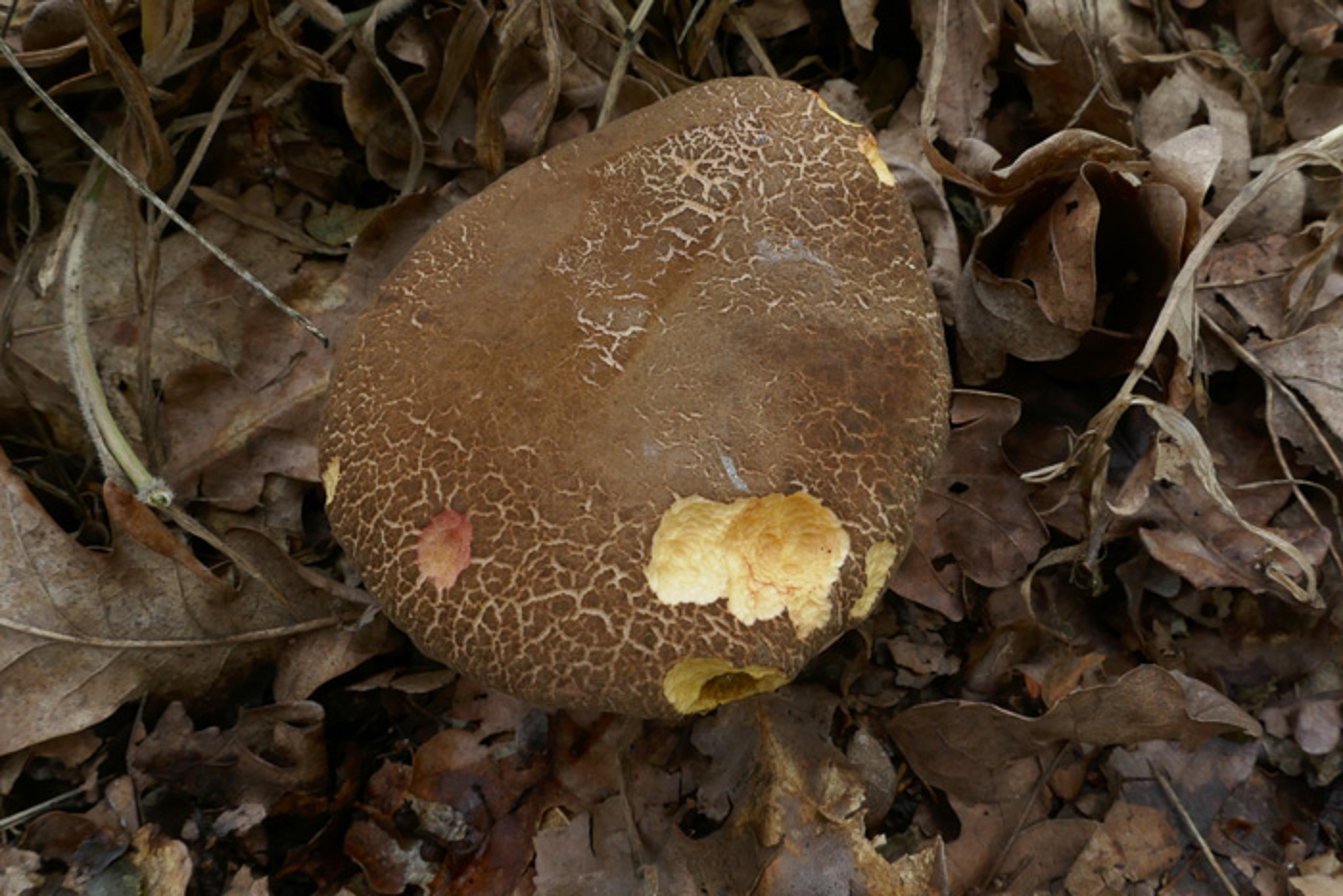
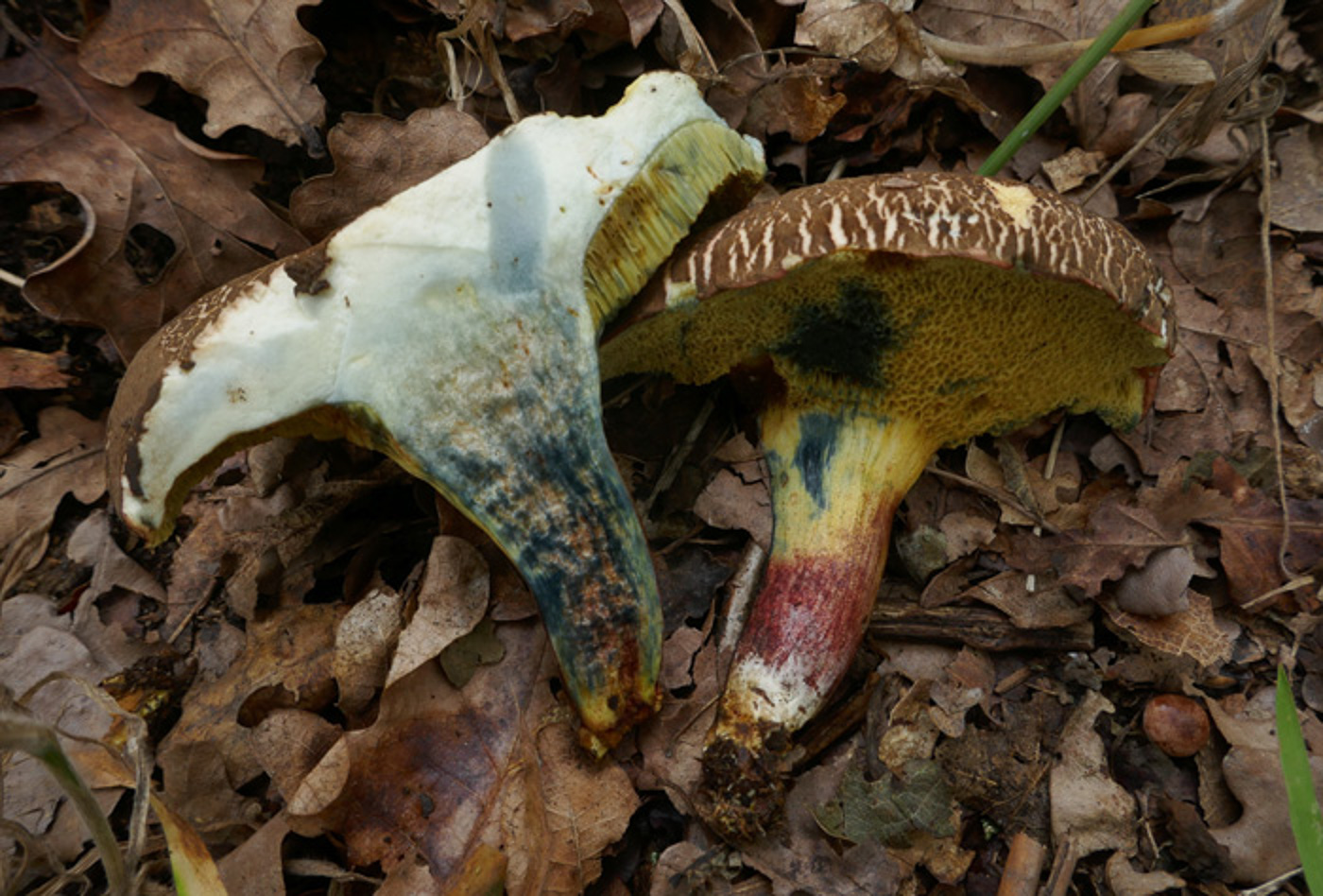 |
July 28th Xerocomellus cisalpinus (Bluefoot Bolete)
Under Oak at Stampwell Farm Jackie Ewan found this singleton and cut it open straight away, watching for how quickly the blue staining occurred. The white flesh, cracking cap and quick blueing all pointed to this species which we now realise is probably the commonest of the soft yellow-pored 'Xerocomoid' boletes we all used to assume was B. chrysenteron. See also in Finds 2022 September 7th.
|
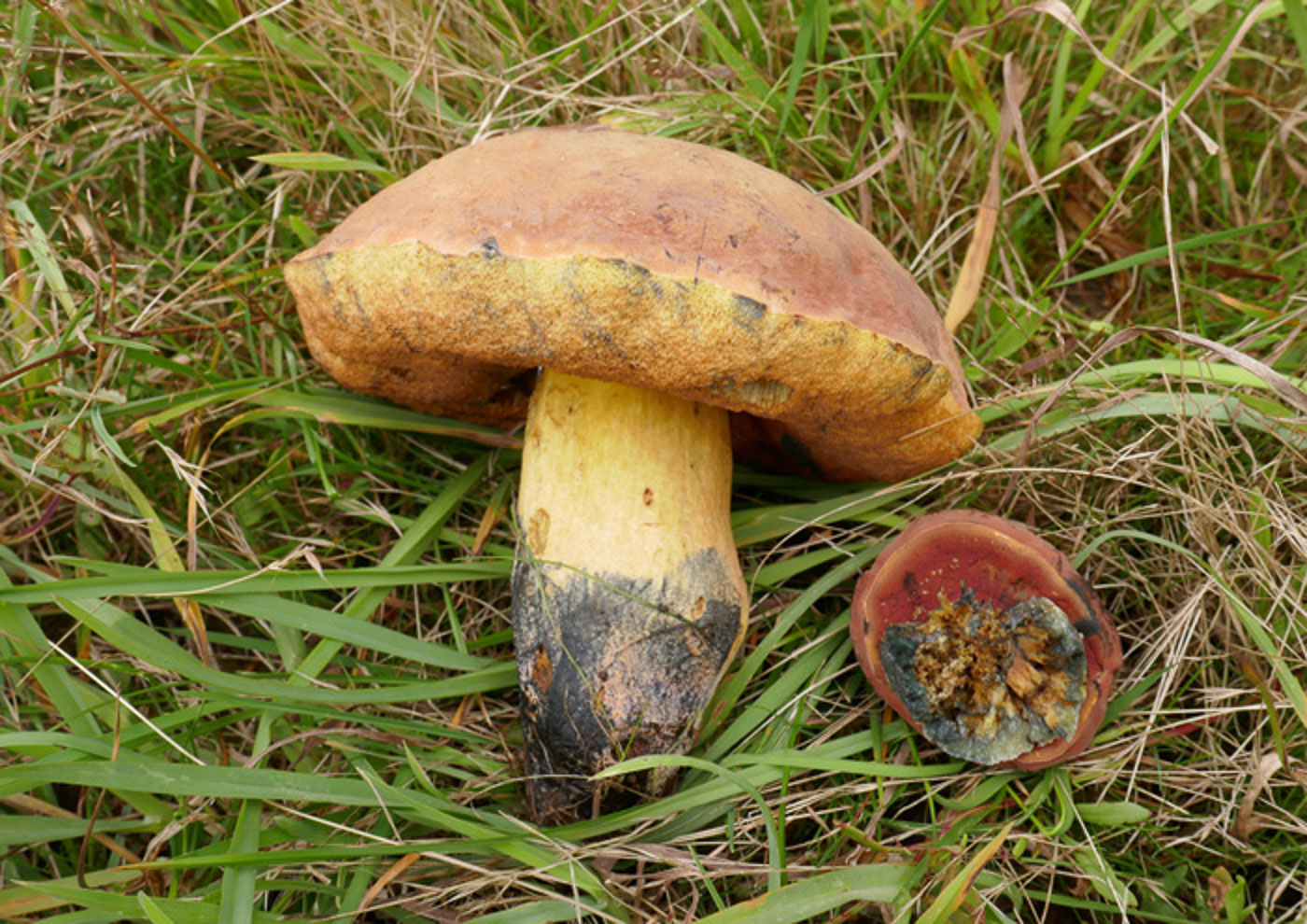
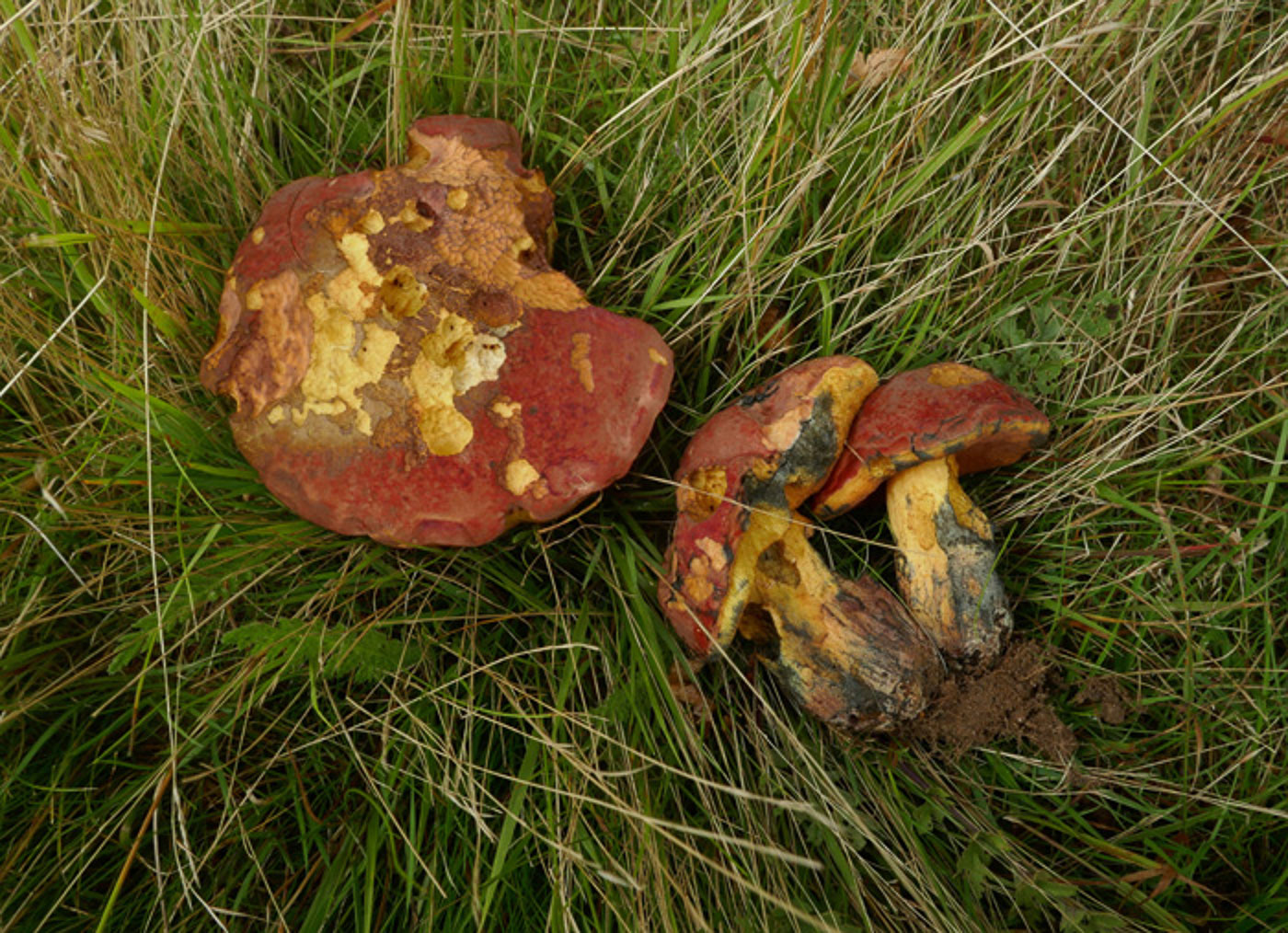
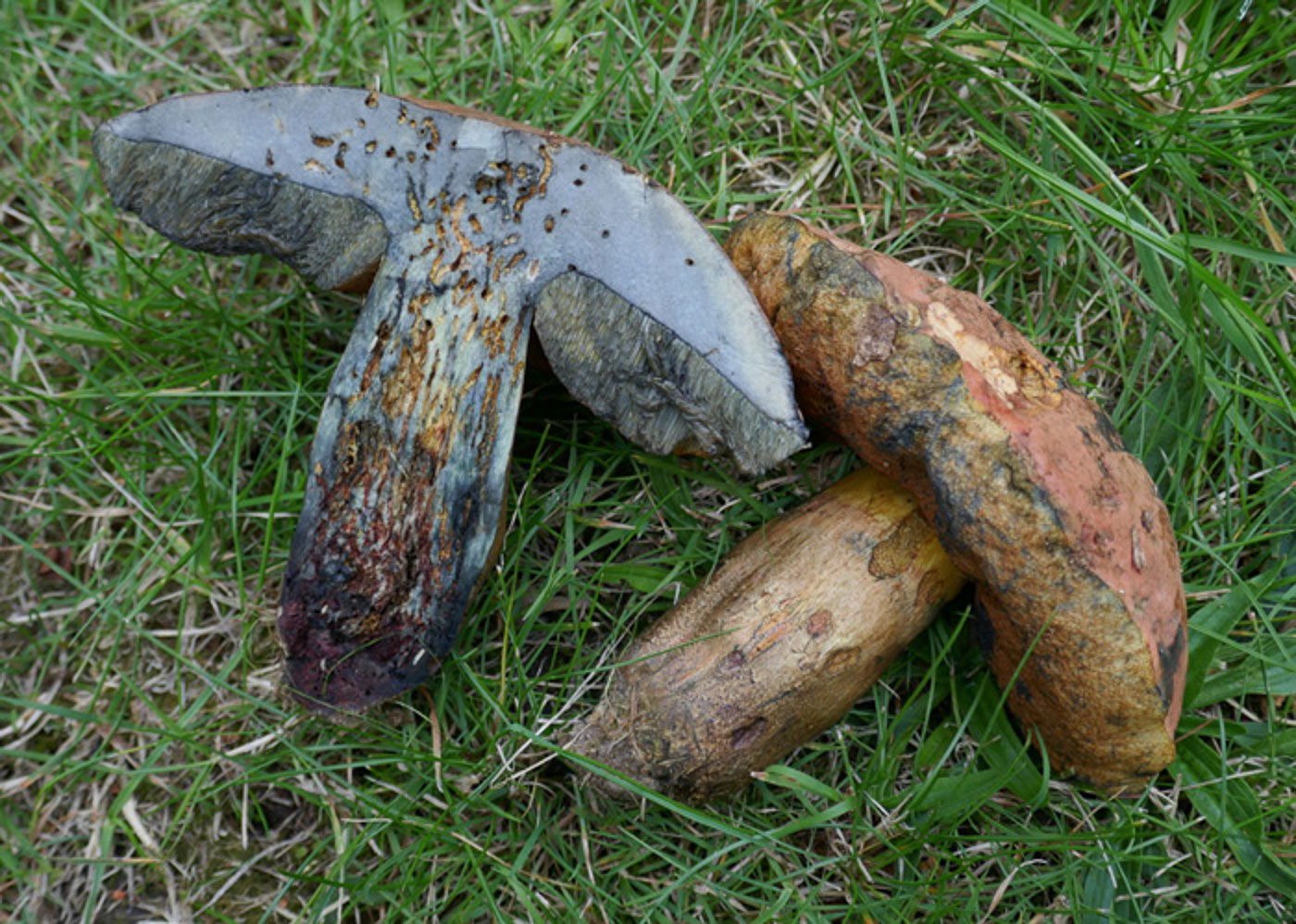
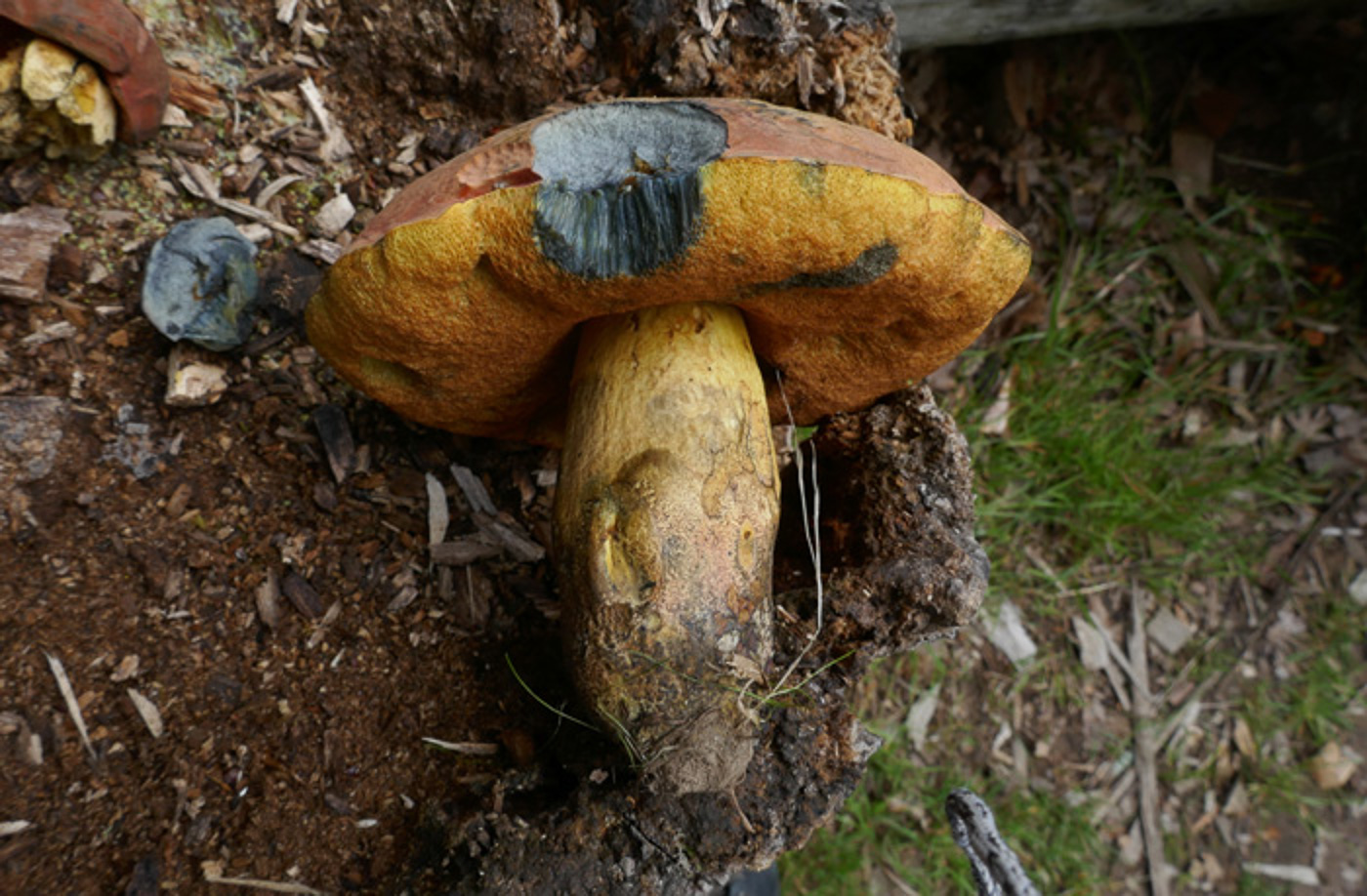
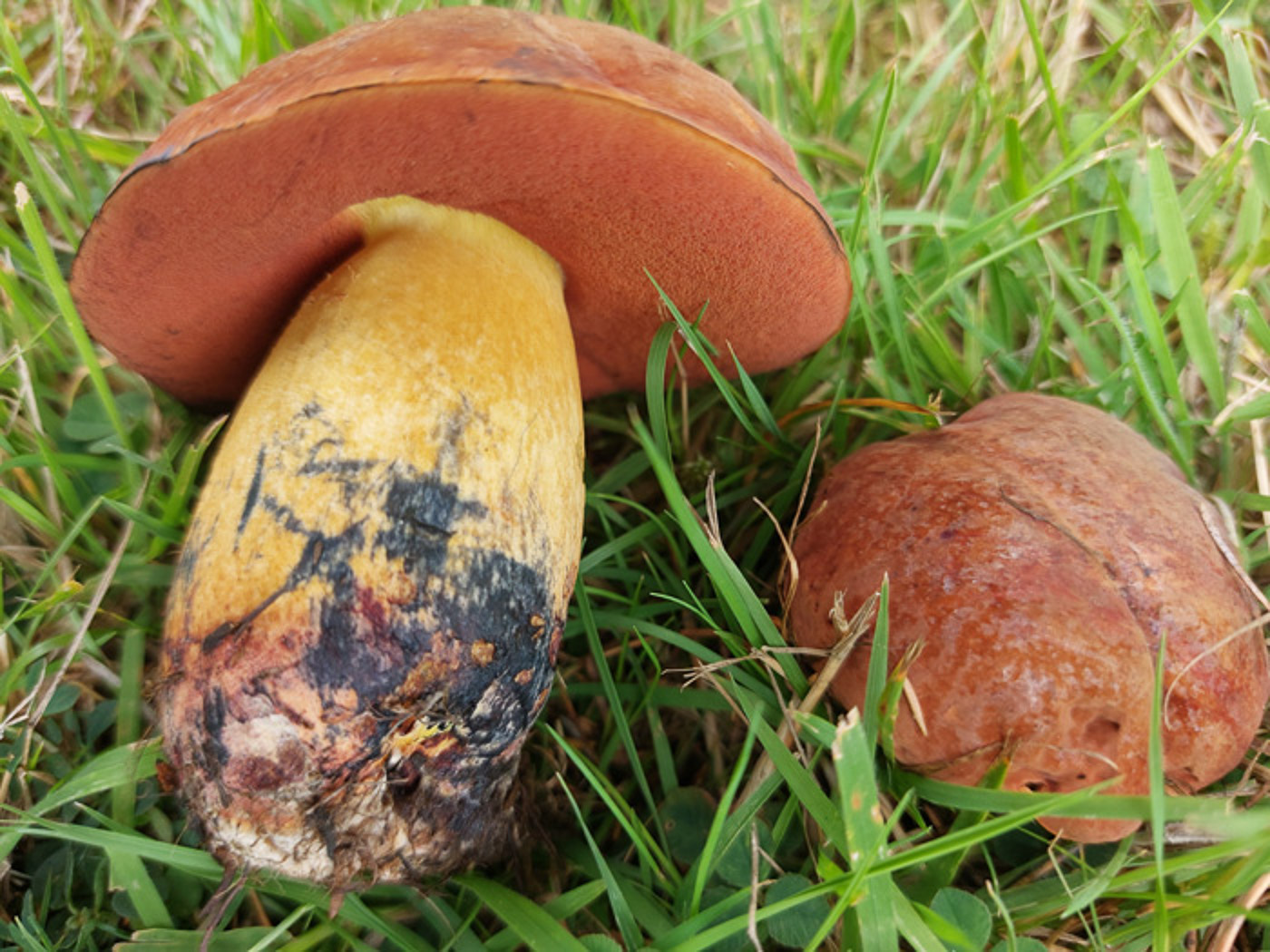 |
July 28th Suillellus queletii (Deceiving Bolete) 
At Stampwell Farm at the edge of a meadow near both Oak and Birch Jackie Ewan found a large gathering (11 fruitbodies) of this unusual Bolete, the largest being 16 cm across. The orange-tinged pores and instant blueing flesh when cut pointed to one of several very similar species, so careful checking of both macro and micro characters was needed before she could decide upon its ID. Points separating this species from S. luridus and N. luridiformis: the deep beetroot flesh at the slightly tapering stem base (photo 3), also the lack of reticulation on the stem which is yellow under the apex. Photo 5 was sent in by Jesper Launder from nearby Jordans village just 4 days later. See also his two previous entries of this species in Finds 2021 November 6th and 2022 September 5th.
|
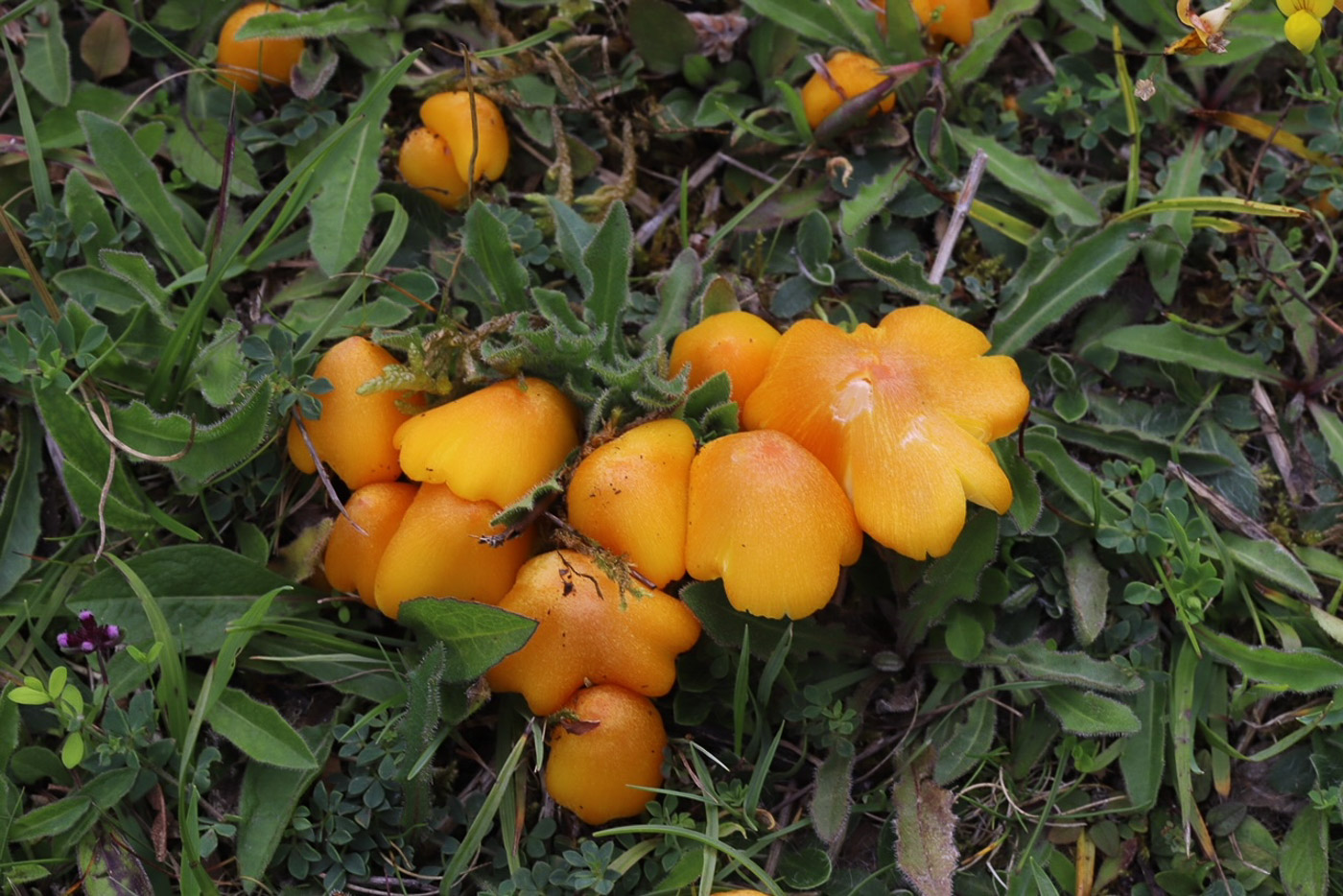
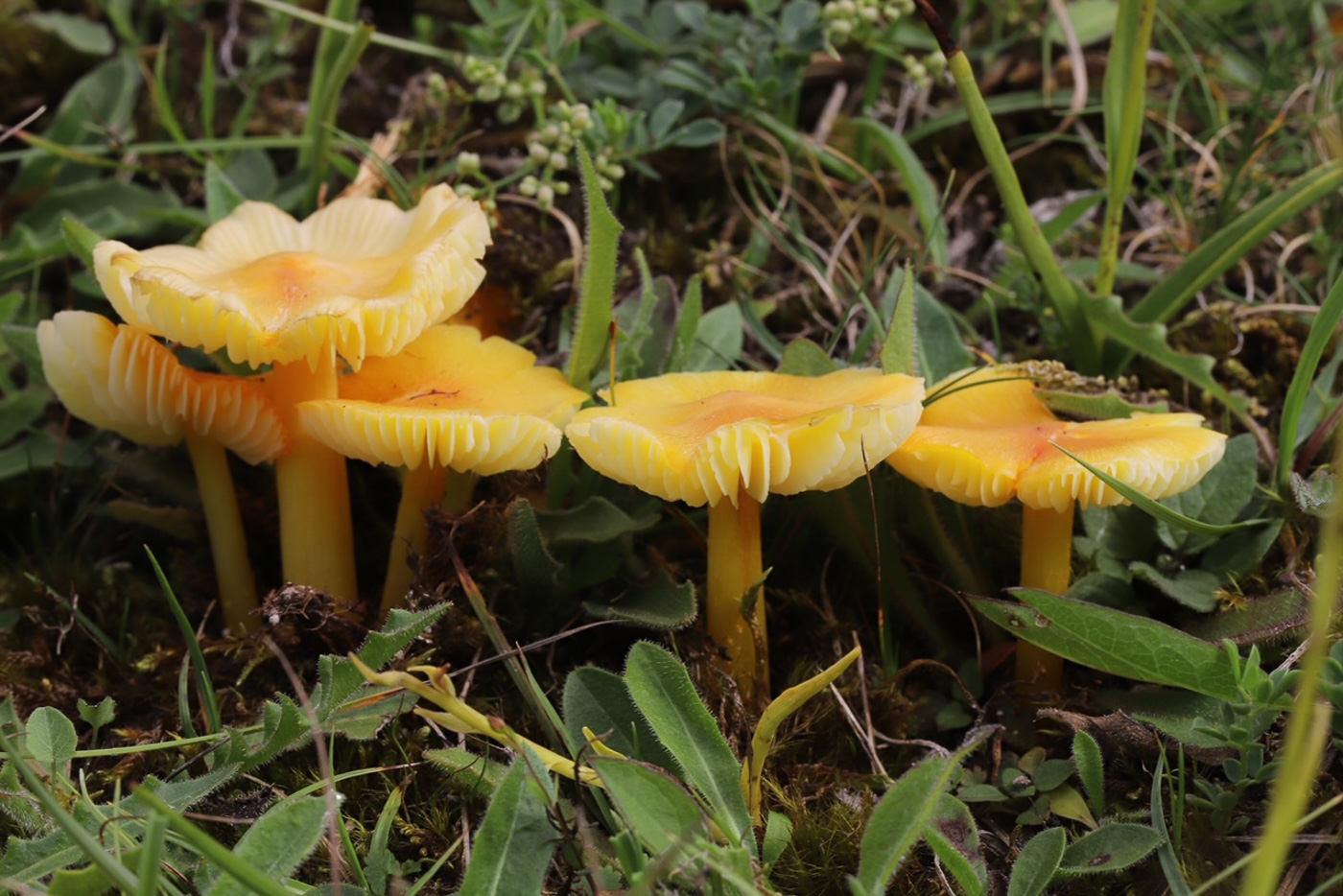
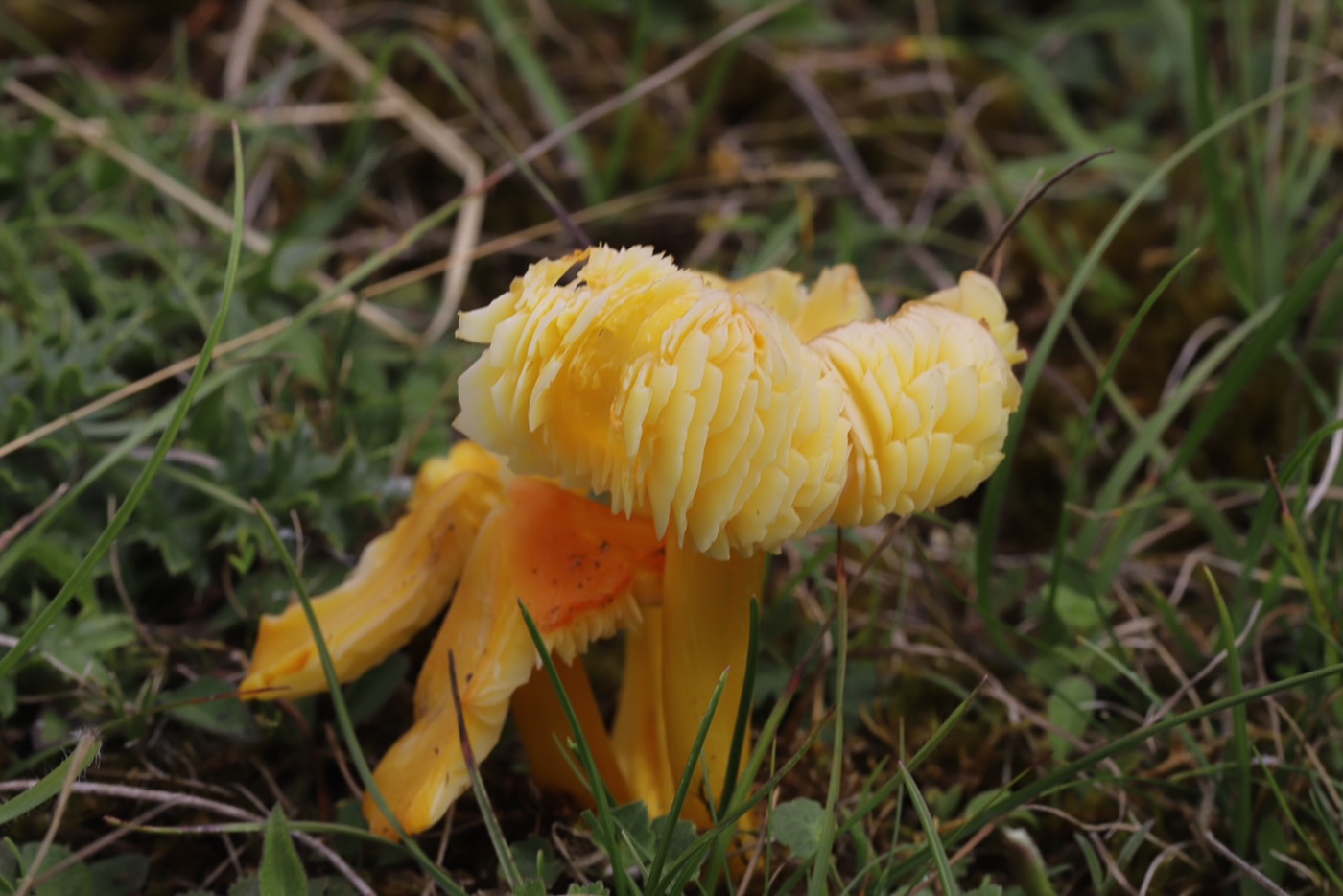 |
July 28th Hygrocybe acutoconica (Persistent Waxcap)
In Ragpits Reserve Phil Townsend reports good numbers of this early season Waxcap coming up now. Previously H. persistens - hence its common name – this is probably a species complex and is somewhat variable in appearance with colour ranging from greenish lemon yellow through to orange as here; it has a marked umbo especially when young. Unlike H. conica and related species, however, it does not blacken in maturity. See also in Finds 2021 August 15th.
|
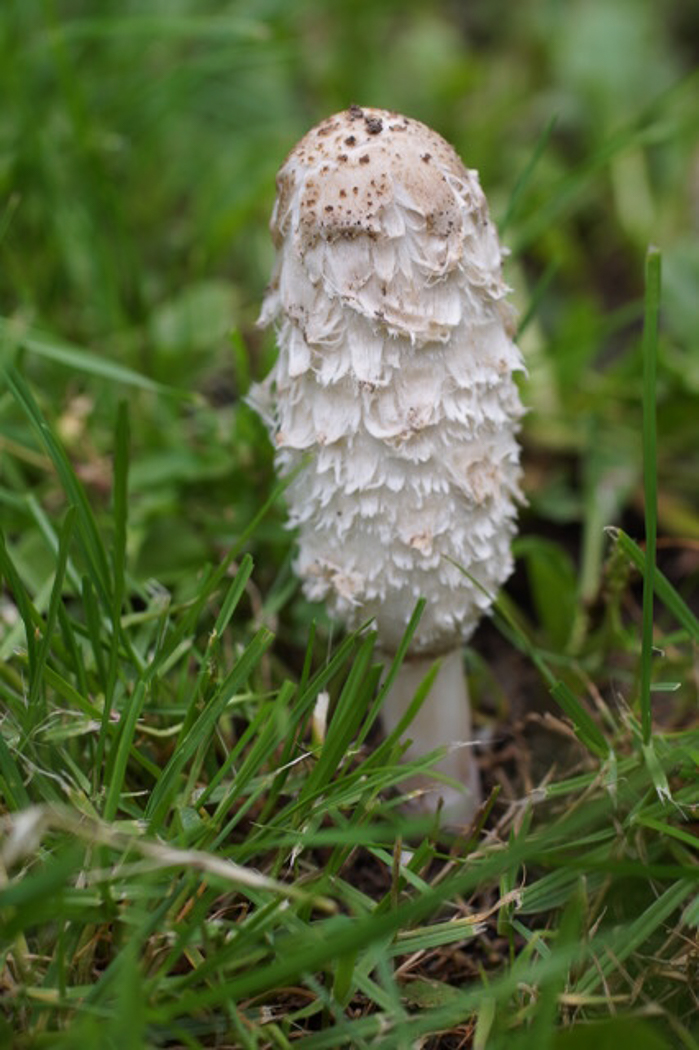
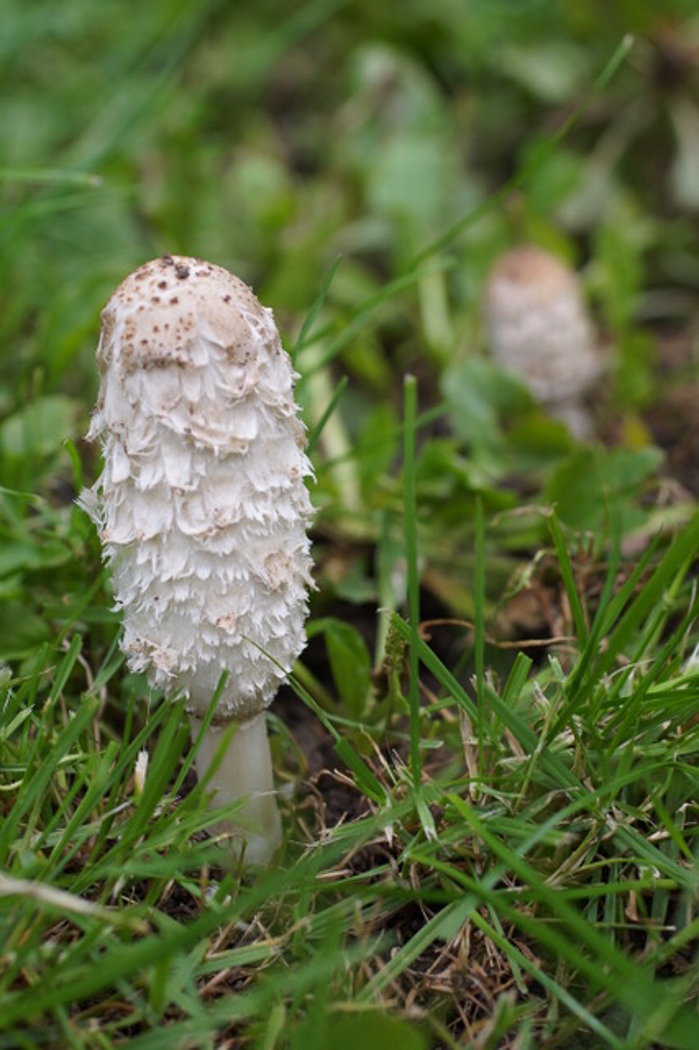 |
July 28th Coprinus comatus (Shaggy Inkcap, Lawyer's Wig)
In a grassy area adjacent to Salden Wood Bob Simpson noticed these distinctive mushrooms making an appearance. The common names being apt, the species is one of the easiest to recognise though - typical of Inkcaps - they are shortlived and in a day or so are reduced to a tall white stem with a black slimy splodge on top! None of our previous Finds images show this stage, however.
|
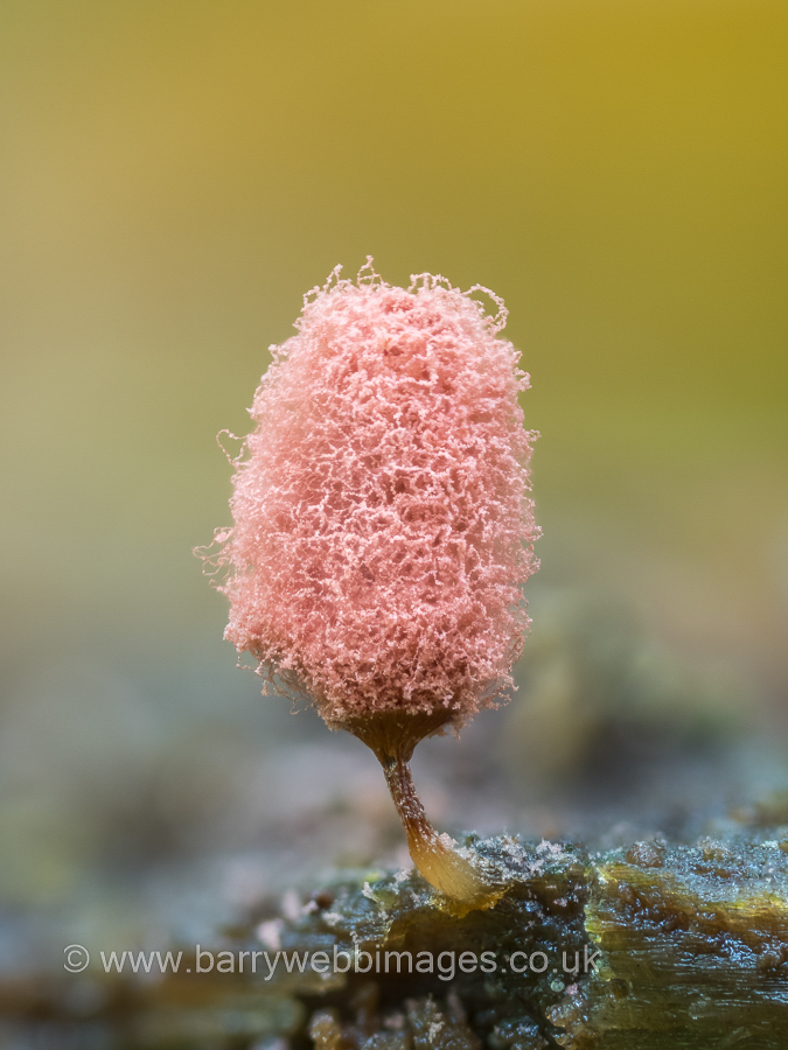 |
July 26th Arcyria denudata (a Slime Mould with no common name)
In Burnham Beeches Barry Webb found this little beauty on some very wet soggy rotten wood. The species is quite common if you know where to look and are prepared to search for tiny things with a x 10 lens and a torch! See in Finds 2020 October 12th.
|
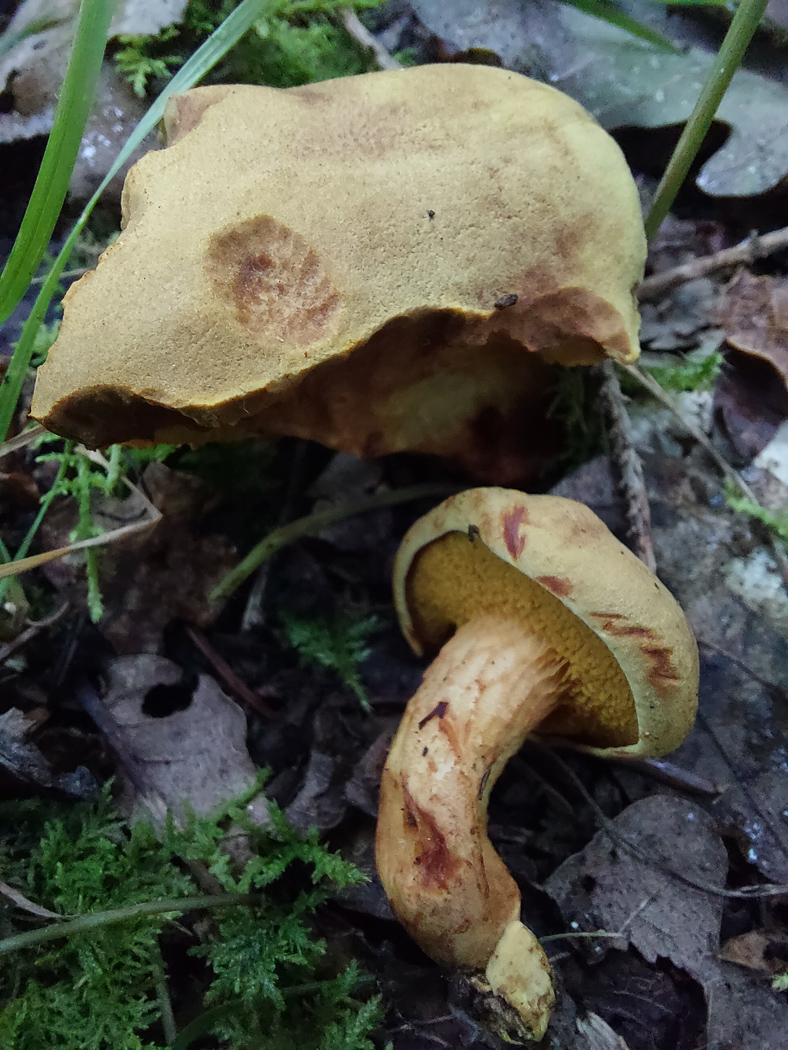
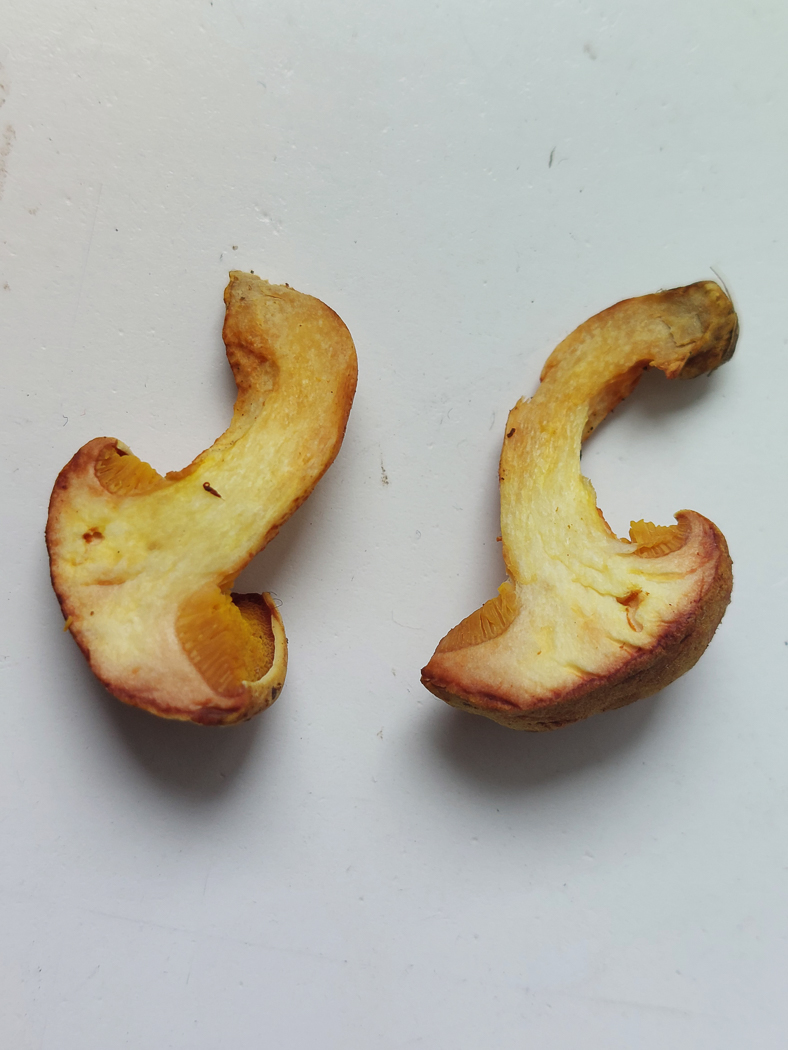 |
July 26th Xerocomus chrysonemus (Goldenthread Bolete)
In Bernwood Forest Jesper Launder was excited to find this rare species under Oak - new to him and with only one previous county record. Characters which distinguish it from X. subtomentosus and X. ferrugineus: the paler cap colour, pores which never blue when damaged, the rough reticulation on the stem and the yellow flesh at the stem base,often with yellow mycelial threads also. The species was first described from Hampshire in 2000 by Alan Hills who also found it at this site in 2004!
|
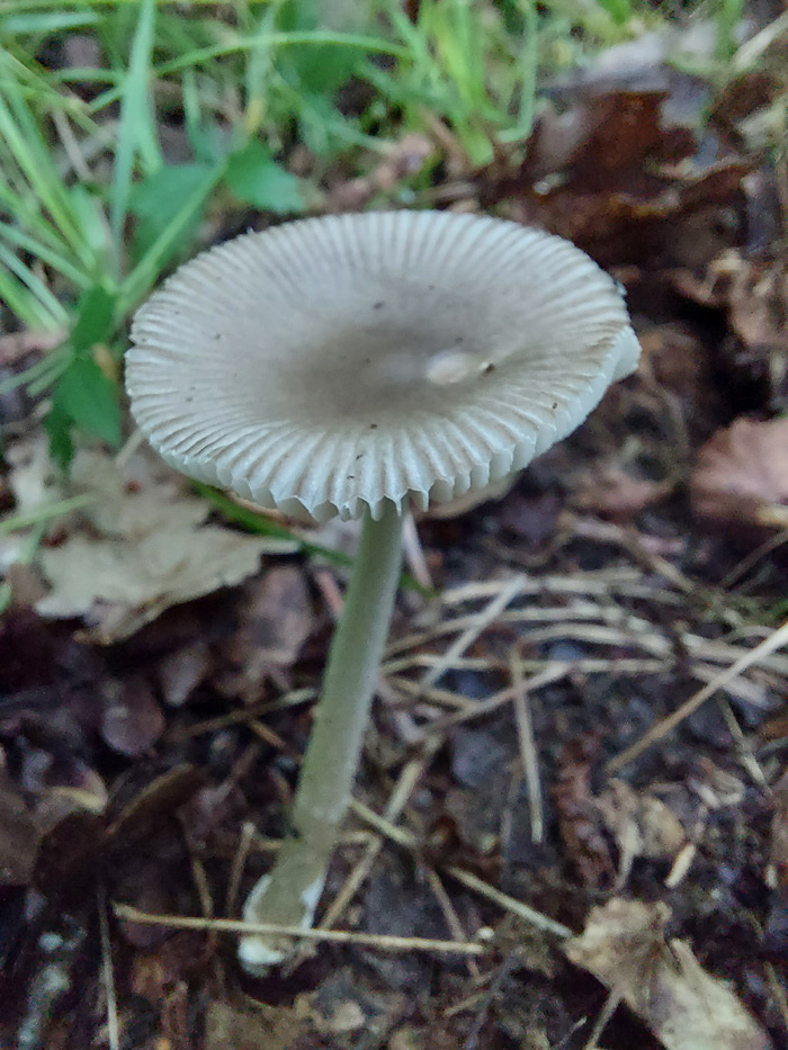
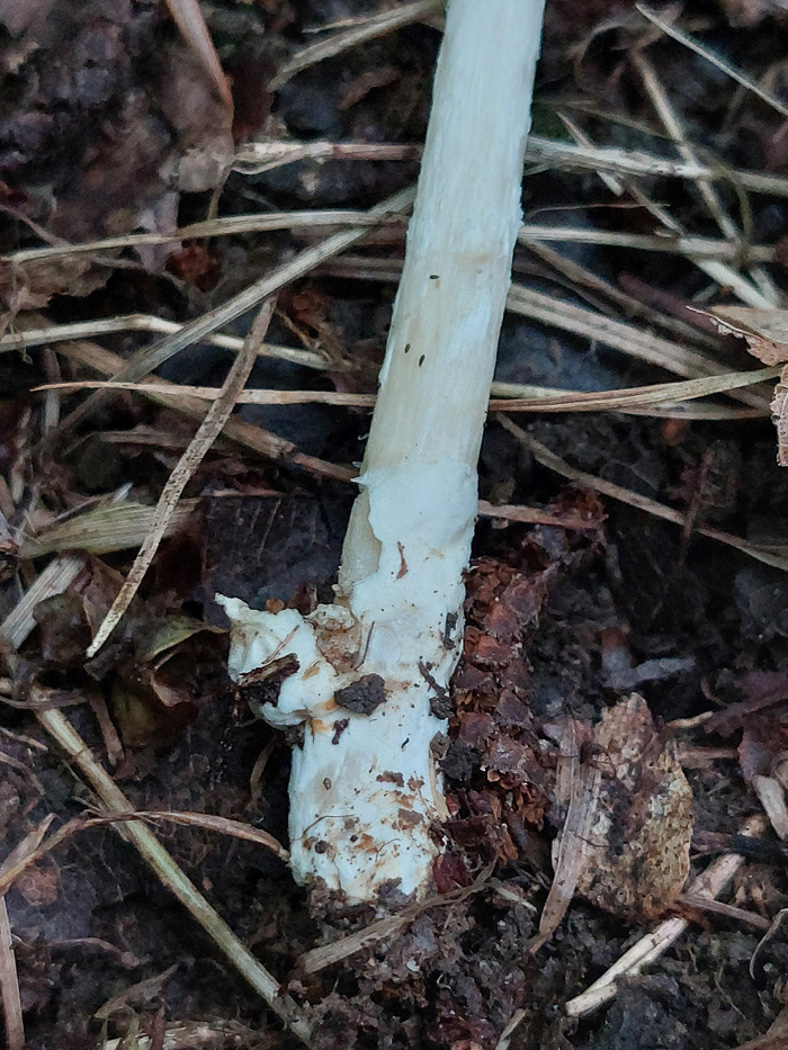 |
July 26th Amanita olivaceogrisea (a rare Amanita with no common name)
Under Birch and Hazel in Bernwood Forest Jesper Launder noticed this small delicate greyish brown Grisette which had a notably pure white volva at the stem base. He was unsure of its identity but knew it was likely to be interesting with that combination of characters. On seeing his photos Penny suggested this species having found it on a few occasions, and he readily agreed. The last time we recorded it was in fact at this site in 2021 (see her report on our Bernwood Forest Walk on August 29th where we also found the Ringless Honey Fungus featured below together with several other species found by Jesper here recently).
|
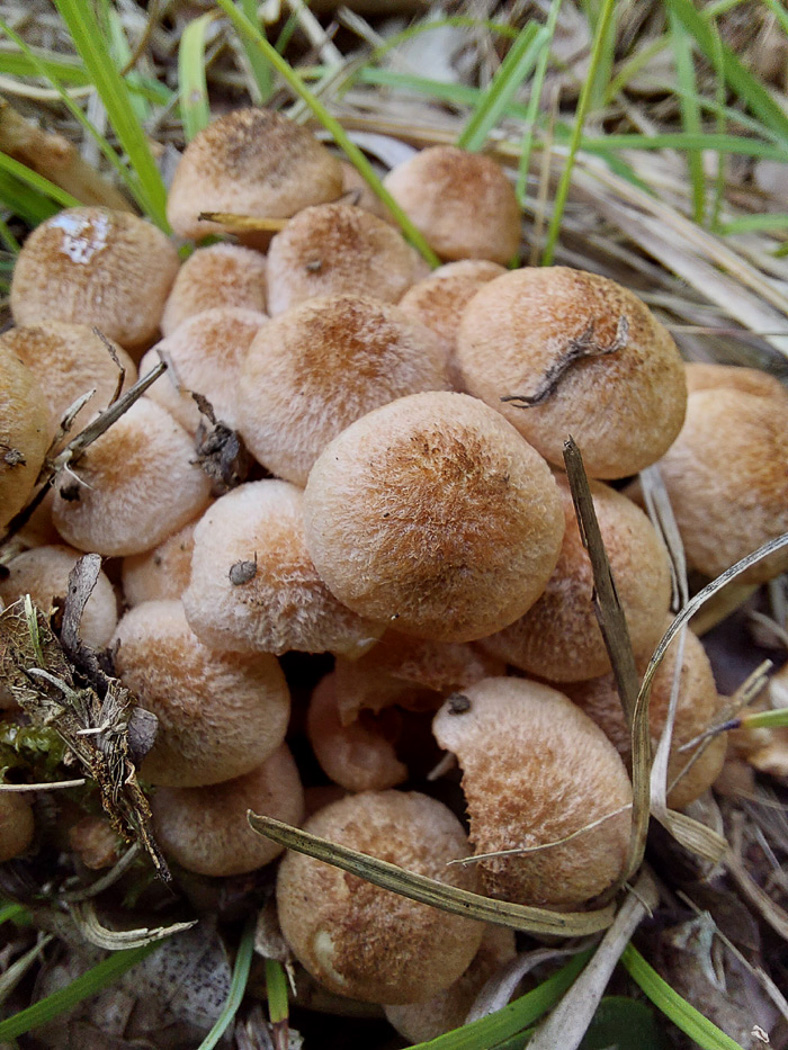
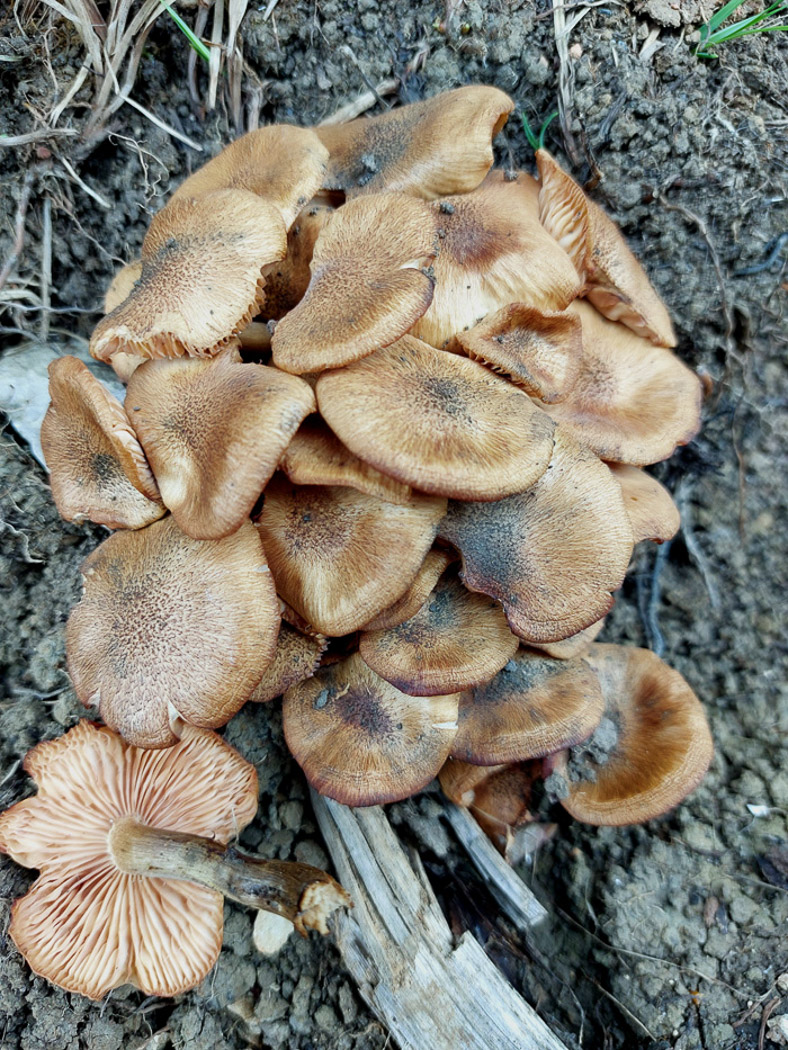 |
July 26th Desarmillaria tabescens (Ringless Honey Fungus)
At the edge of a path under deciduous trees in Bernwood Forest Jesper Launder found a couple of clumps of this unusual Honey Fungus just sprouting. Previously in genus Armillaria the species is not difficult to identify (once you've realised it's a Honey Fungus): not only is it smaller but it is alone in not having a ring on the stem. Interestingly all our records come from the south west tip of the county: Rushbeds, Whitecross Green, Shabbington Wood and today's site. See also in Finds 2020 September 28th.
|
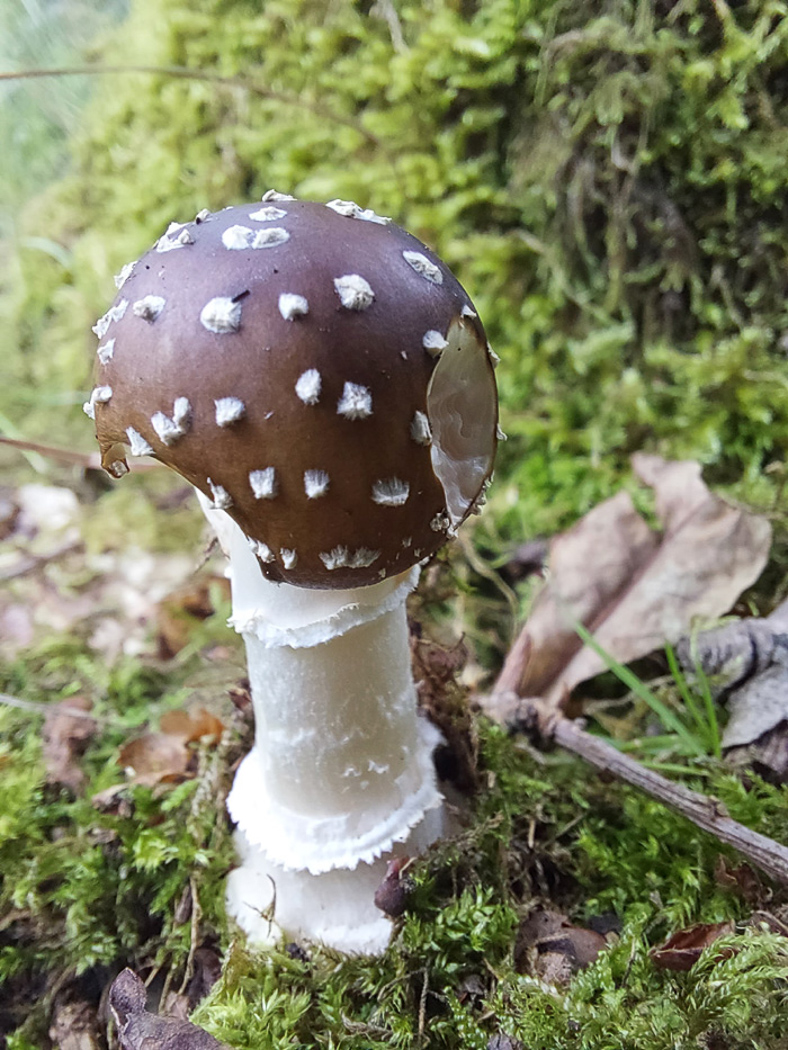
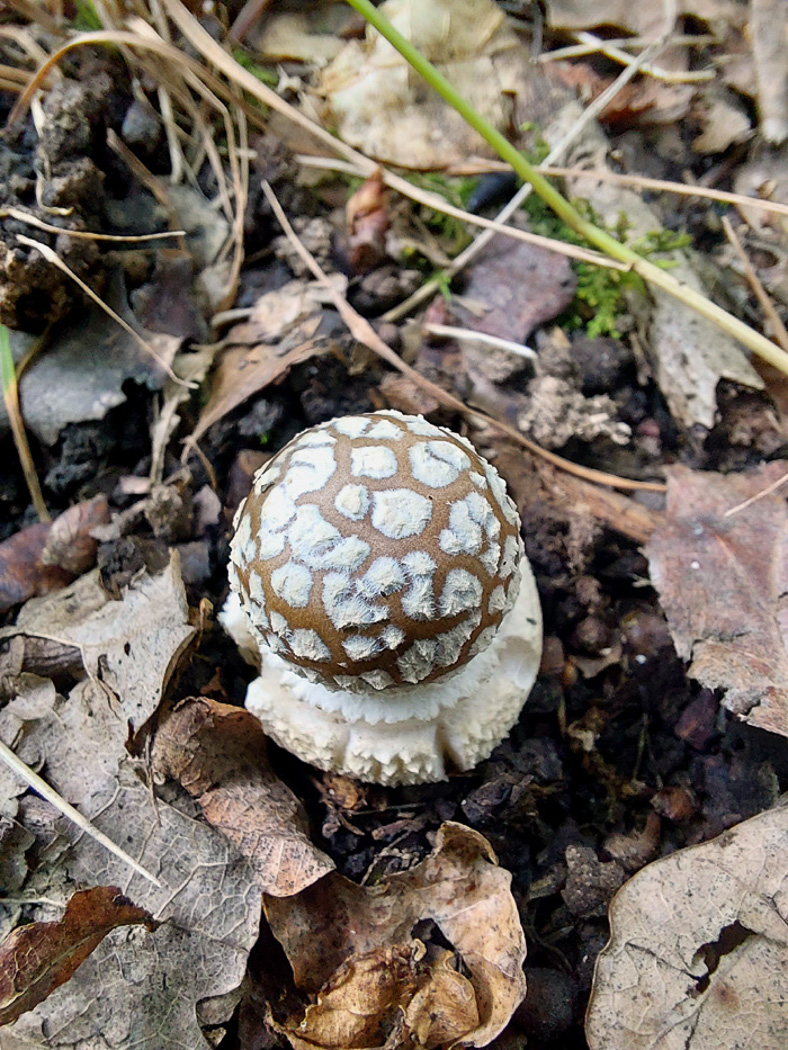 |
July 26th Amanita pantherina (Panthercap)
In Bernwood Forest under Oak and Birch Jesper Launder found several examples of this occasional species - these two were the best. Despite this being one of our most dangerously poisonous mushrooms (to humans), photo 1 shows some rodent has been enjoying a good nibble! As the forest was not dotted about with dead squirrels and mice one has to assume they are unaffected by its toxins. The species is not that common but possibly over-recorded in place of A. excelsa - for more on how to separate the two species see the notes on our three previous Finds entries - but there's no doubt about today's examples which is showing the typical white isolated regular veil patches on the brown cuticle.
|
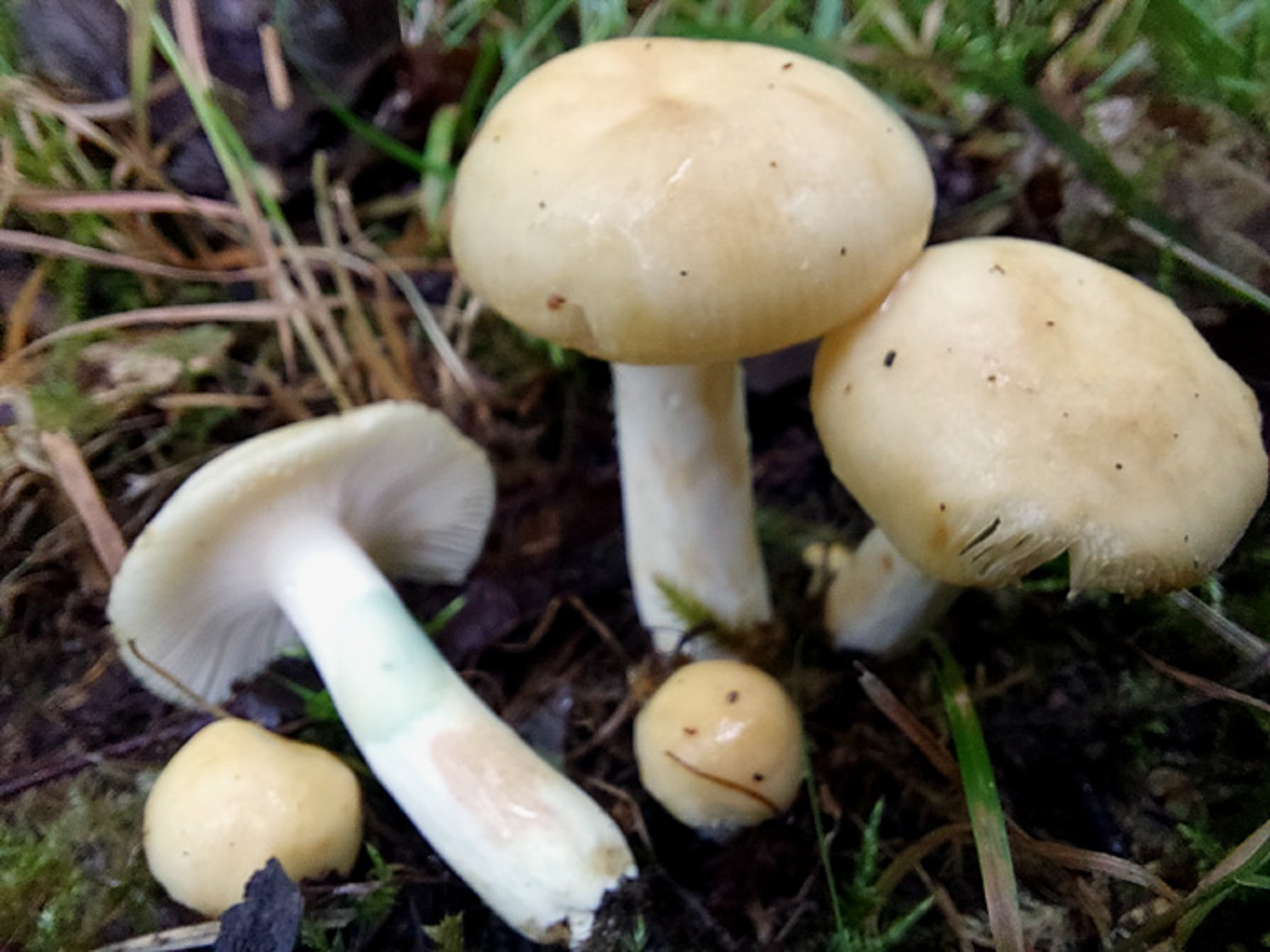 |
July 26th Russula farinipes (an unusual Brittlegill with no common name)
Under a mix of Oak and Birch in Bernwood Forest Jesper Launder found these Brittlegills but was in no doubt as to which of several species having yellow caps they belonged. Probably the least common of our yellow Brittlegills, it is one of only two to have an adnate cuticle (ie the cap skin refuses to peel but is elastic, often sticky) the other being R. violeipes which usually - but not always - has violet on the stem). Both species have a somewhat weak reaction to both Guaic and an FE crystal (seen here on the LH stem) but in today's species the cap is a slightly dirty ochre yellow though in R. violeipes it is a more lemon yellow. There's also a difference in spore colour and ornamentation. For comparison see the Masterlist for the few images available of both.
|
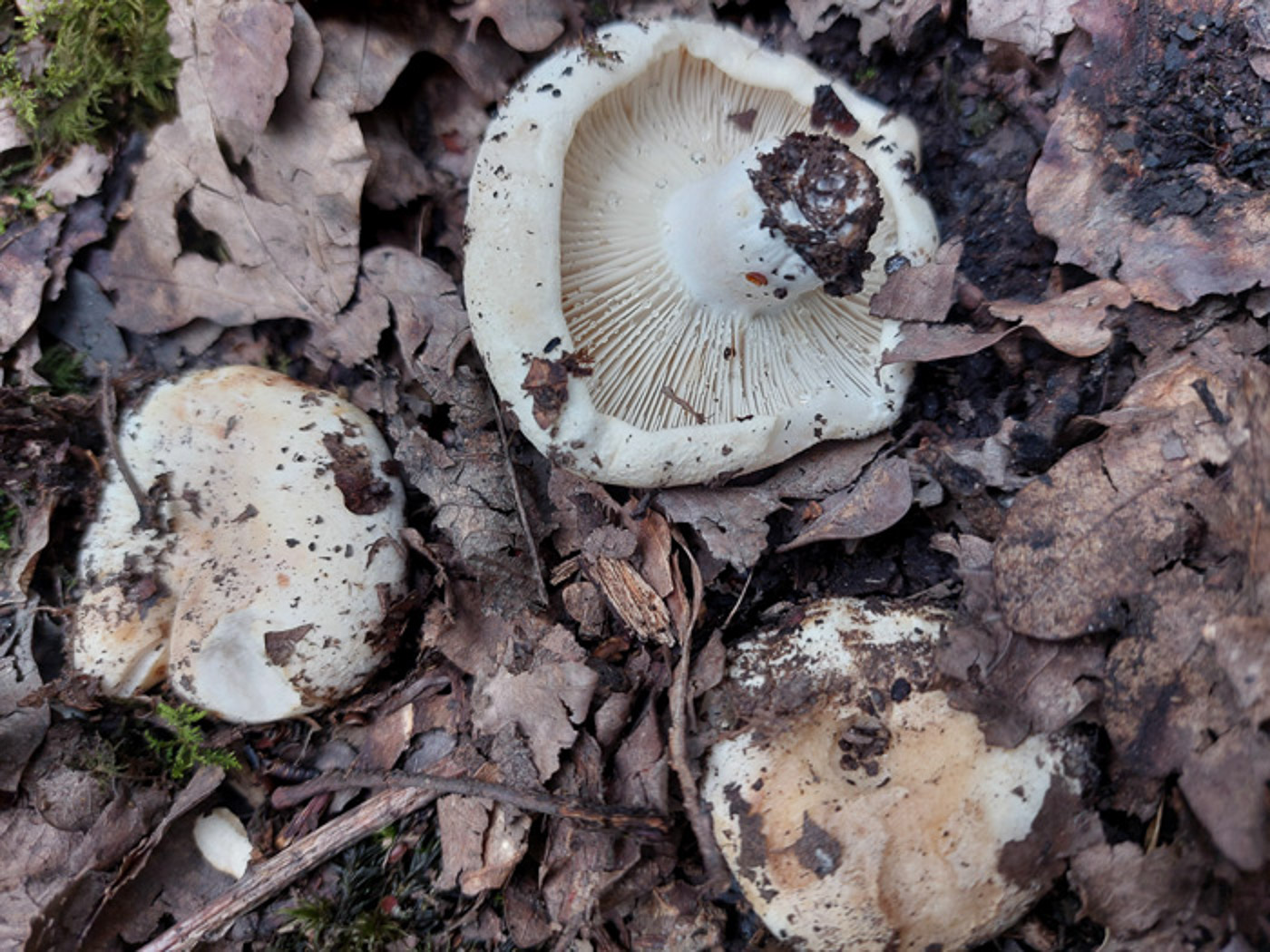
 |
July 26th Russula chloroides (Blue Band Brittlegill) 
Under a mix of Oak and Birch in Bernwood Forest Jesper Launder found these - a really stocky and chunky firm Brittlegill species and often difficult to split from the almost identical R. delica. Both are occasional species, usually under Oak, and if you're really lucky R. chloroides displays a distinctive blue green band just under the gills (never present in R. delica) but more often than not it's missing (as here)! However, Jesper spotted (and captured) the faintest hint of blue on the gill edge (photo 2), enough to point to R. chloroides here, then confirmed his ID with the spores under a scope which are differently ornamented. See in Finds 2020 September 21st for a splendid blue green band, also 2022 September 27th - much less convincing!
|
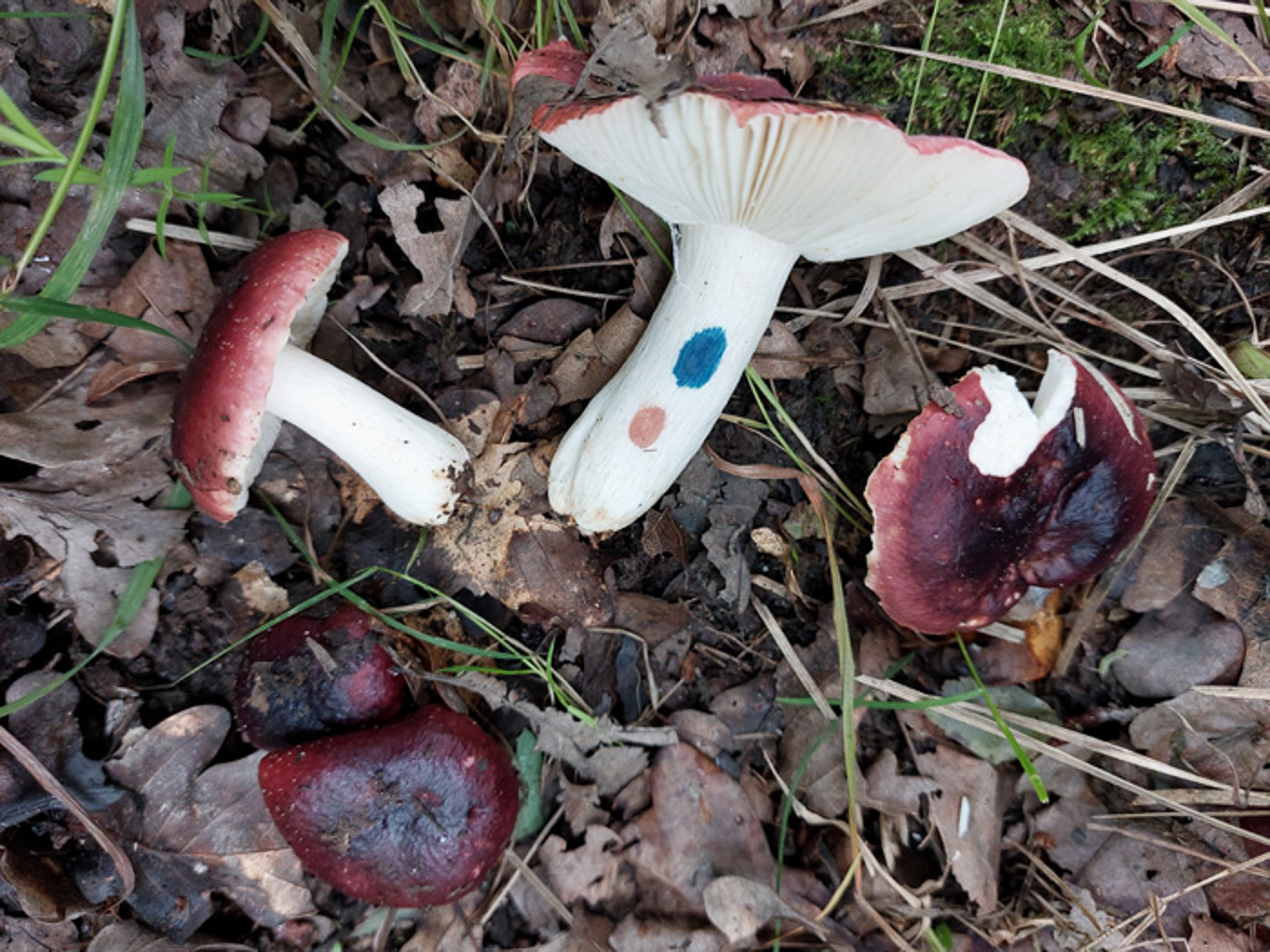 |
July 26th Russula atropurpurea (Purple Brittlegill)
In Bernwood Forest under Oak Jesper Launder found this group of one of our commonest Brittlegills. It occurs under many different trees and the - centre and can often have large patches of cream (here they are present but very small). Gills are white and stem reacts positively to both Guaiac and an FE crystals (also seen here). See the Masterlist for more examples.
|
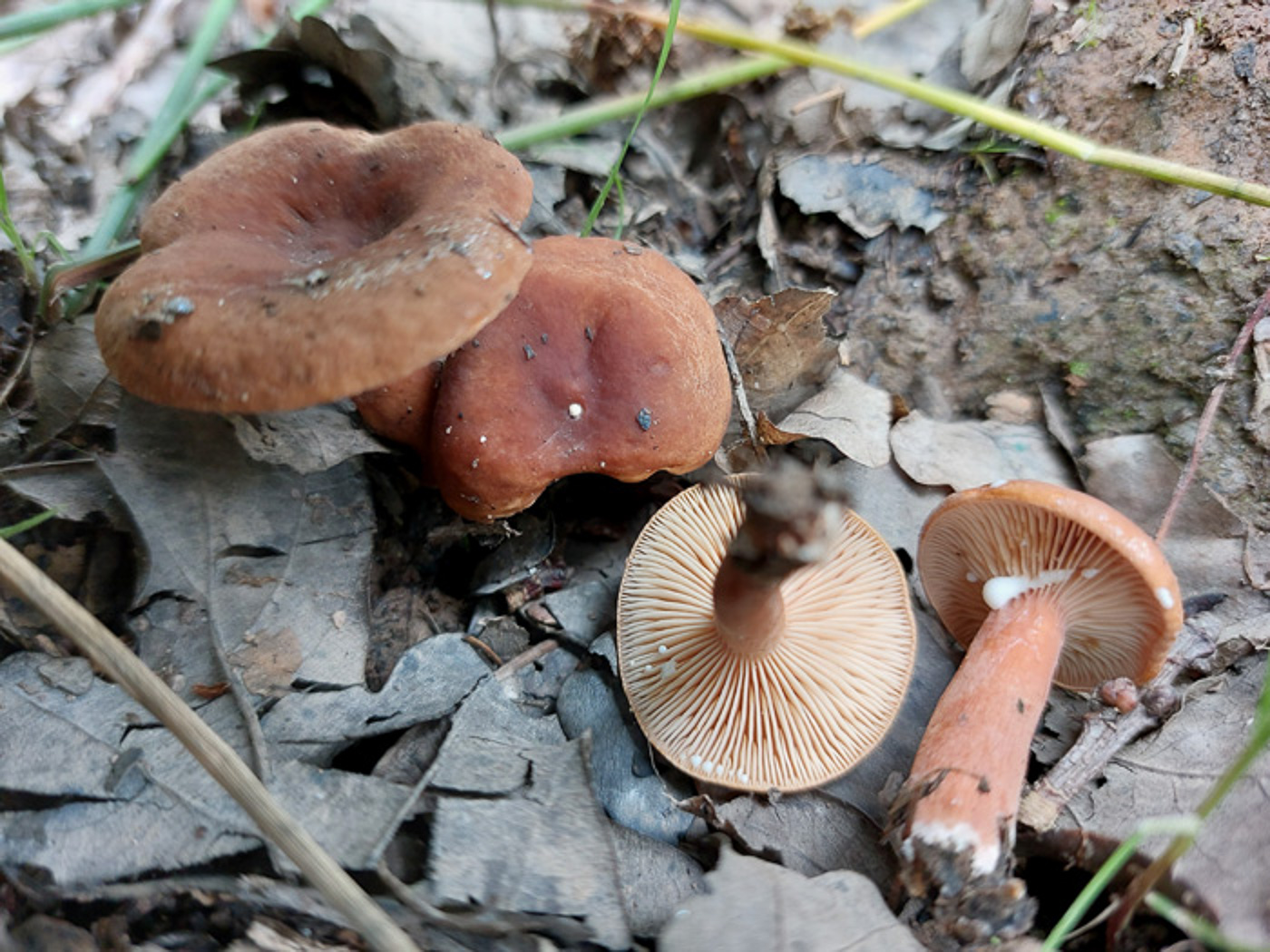 |
July 26th Lactarius lacunarum (a Milkcap with no common name) 
In Bernwood Forest Jesper Launder came across this group of Milkcaps under Oak, recognised the species but took it home to key out for confirmation. More often under Willow or Birch, this is quite a soft species - like a darker version of L. tabidus or L. subdulcis though much less common - and favours damp boggy areas. Also like L. tabidus, the milk turns yellow on a hankie but this is a paler, slower and less impressive reaction than in that species. See also in Finds 2021 October 27th.
|
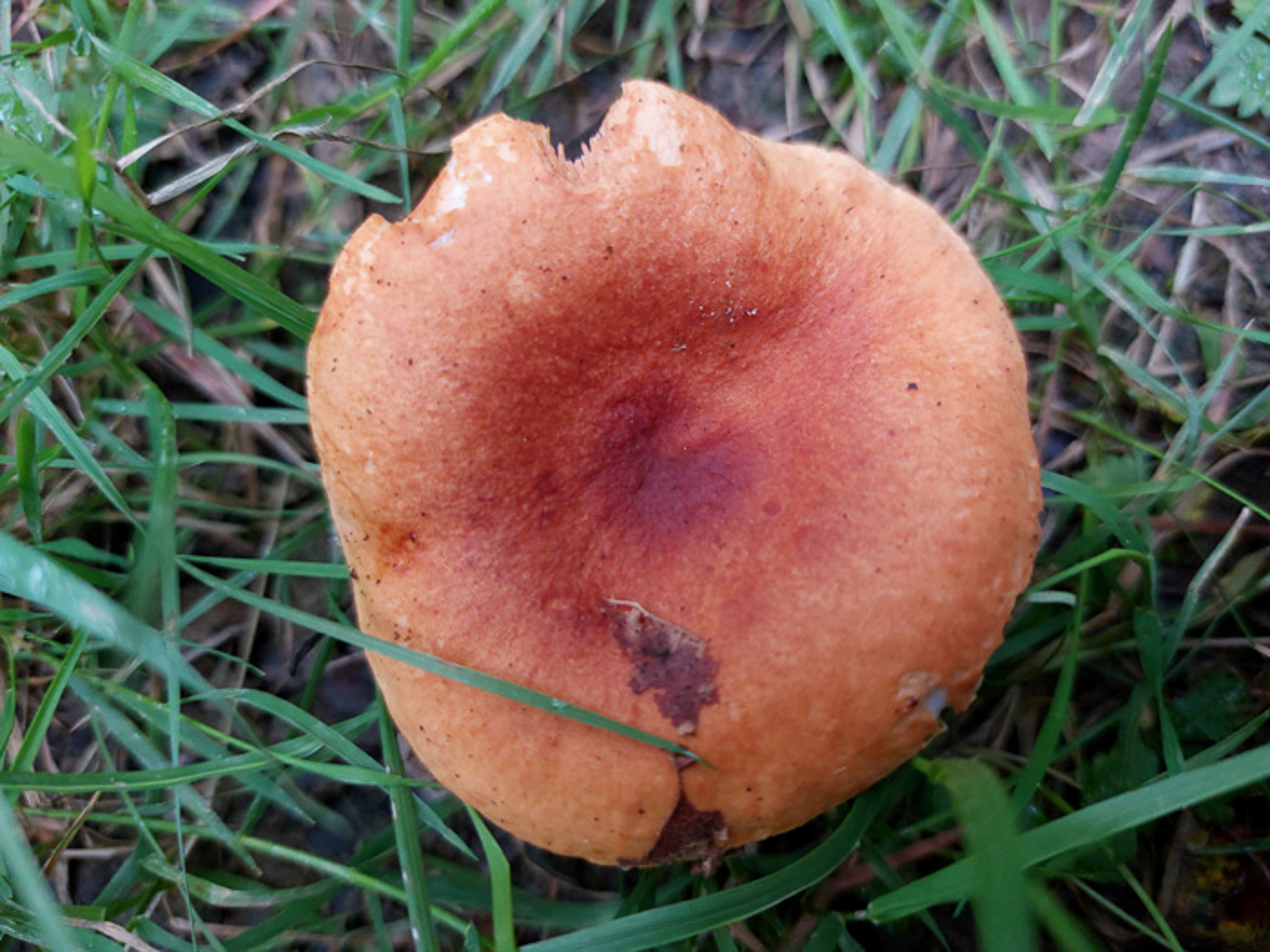
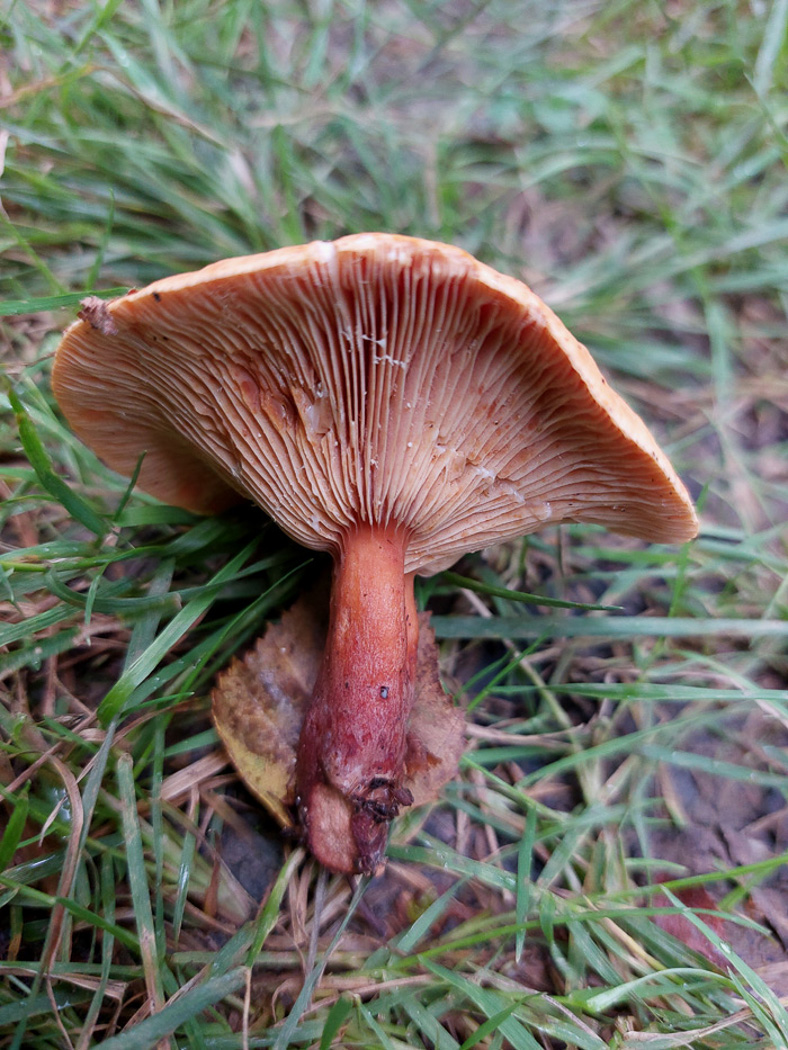 |
July 26th Lactarius aurantiacus (Orange Milkcap) 
In Bernwood Forest Jesper Launder found this bright orange Milkcap, a member of this genus having a cap with possibly the most intensely orange colour. It is not that common and occurs in mixed woodland, having a strong smell similar to that of L. quietus - the bedbug smell! See also in Finds 2022 November 17th.
|

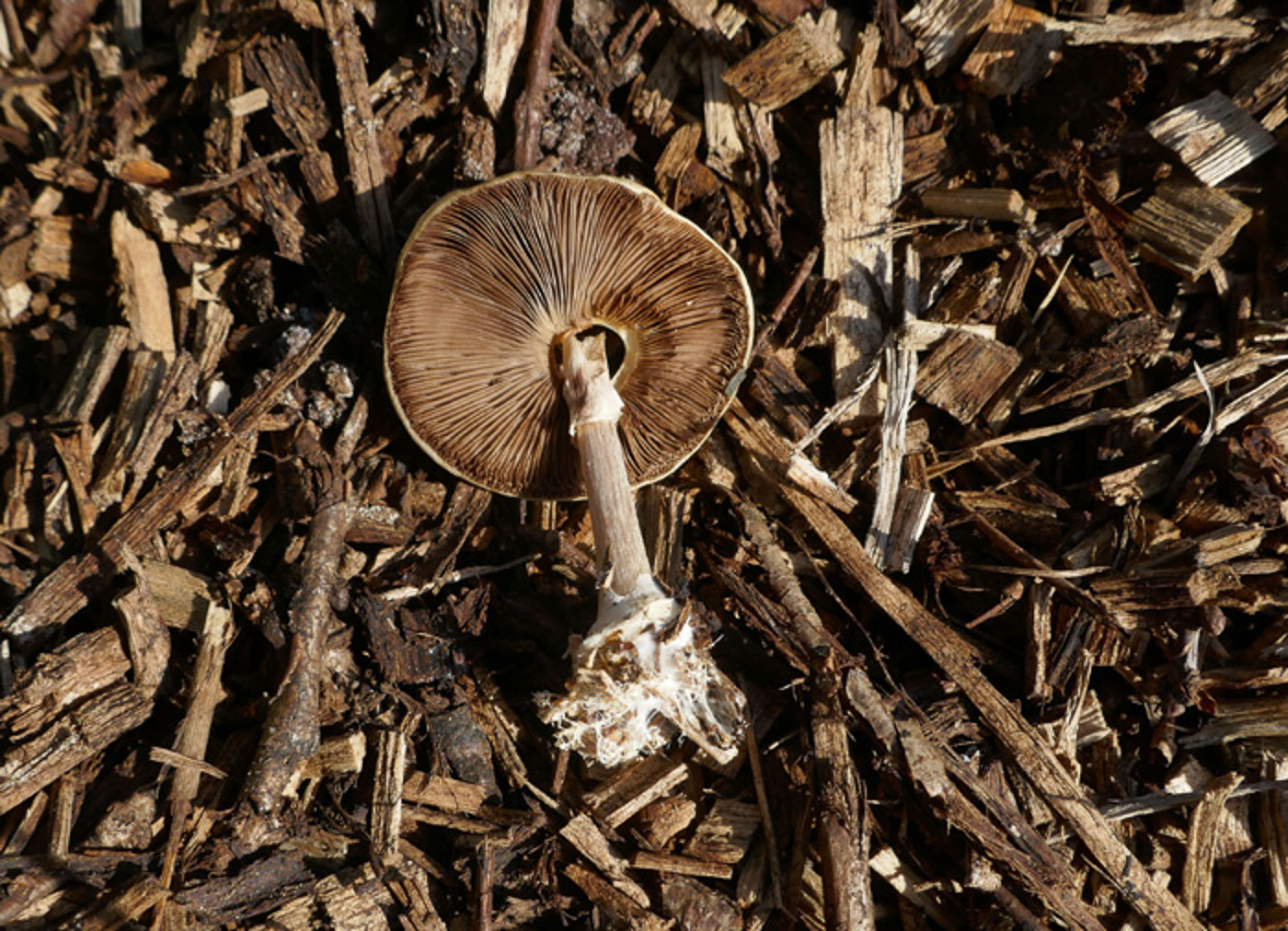 |
July 25th Agrocybe rivulosa (Wrinkled Fieldcap) 
At Stampwell Farm on a relatively fresh woodchip pile Jackie Ewan found this species in good numbers. The pale dry caps which are marked with rivulets rather than wrinkles, the beige brown gills typical of the genus and the stem with a distinct ring are all good characters; add to that its biggish size for the genus, its mealy smell and clustered occurrence on woodchip and it should cause no problems to identify. See also in Finds 2022 November 17th.
|
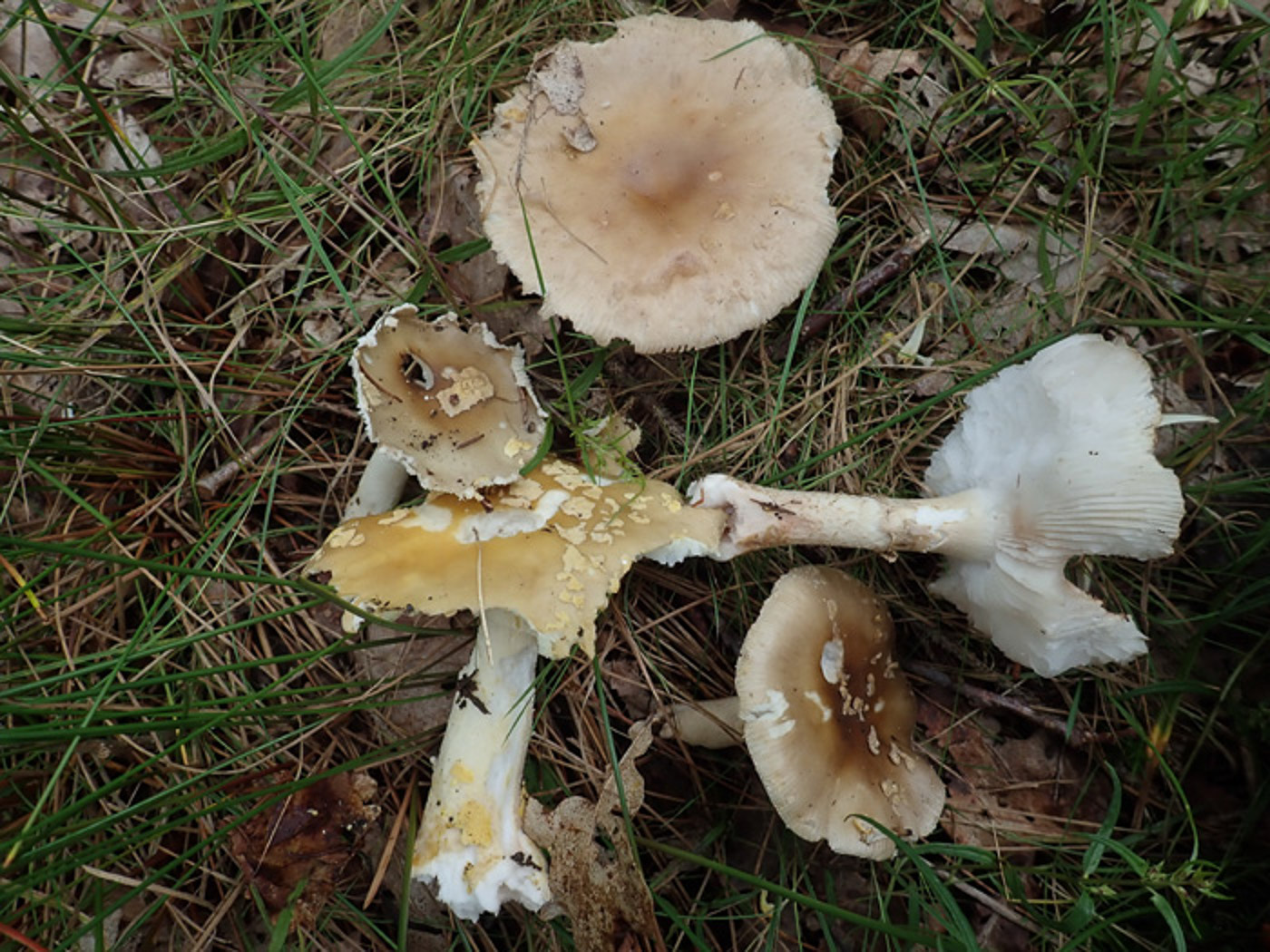
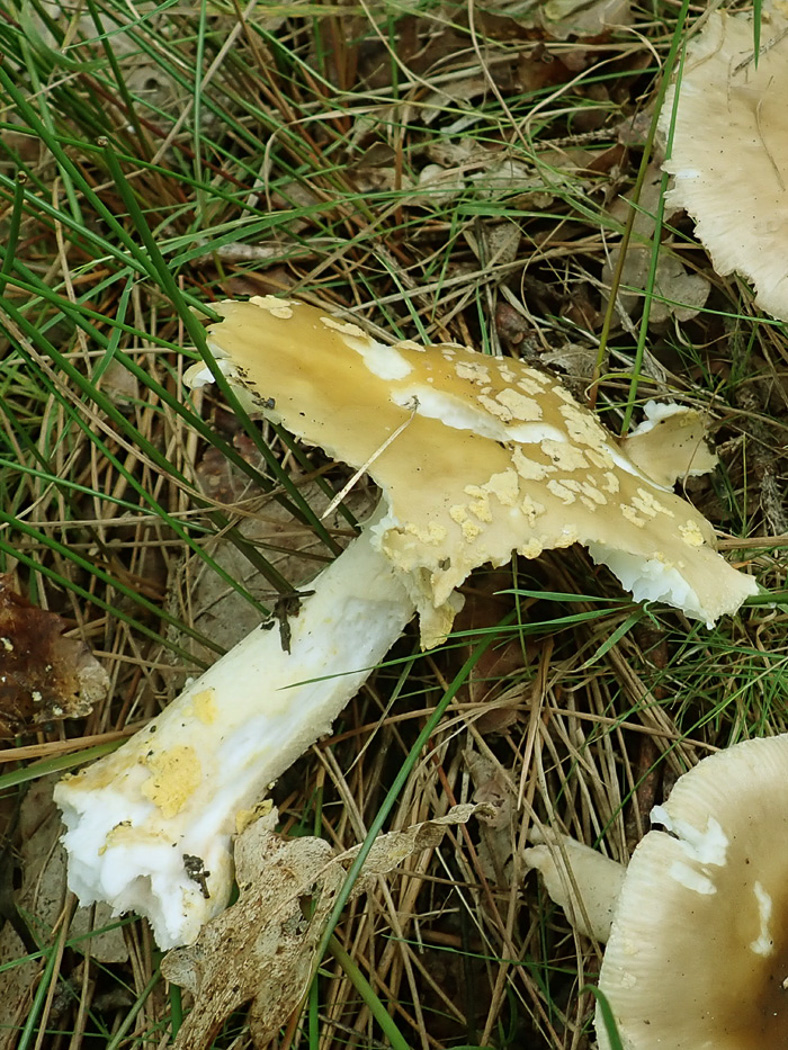
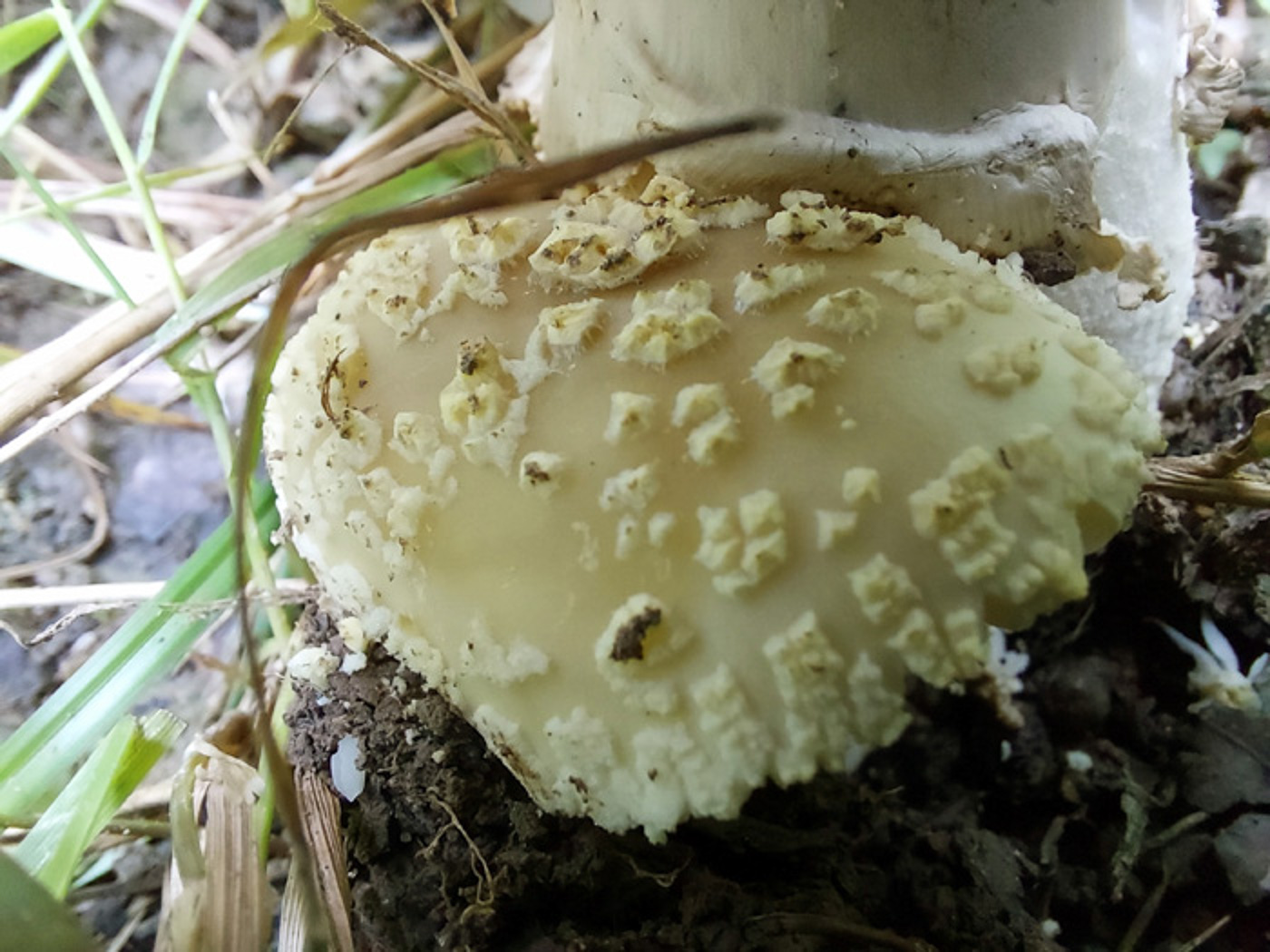 |
July 25th Amanita franchetii (Gilded Amanita) 
In Bernwood Forest Penny and Paul found a small cluster of an unfamiliar and unusual Amanita under Oak. Though sadly in rather a dilapidated state they were similar in shape and type to A. rubescens or A. excelsa but the veil remnants on the cap were distinctly yellow, with signs of yellow on the stem base and ring also. However, no reddening flesh where damaged eliminated A. rubescens and the cap colour showed no grey tints typical of A. excelsa. At home they were already deteriorating but the spores and yellow veil fitted well with A. franchetii - new to Penny and apparently to the county. Photo 3 was from this same site the following day when visited by Jesper Launder, confirming Penny's ID.
|
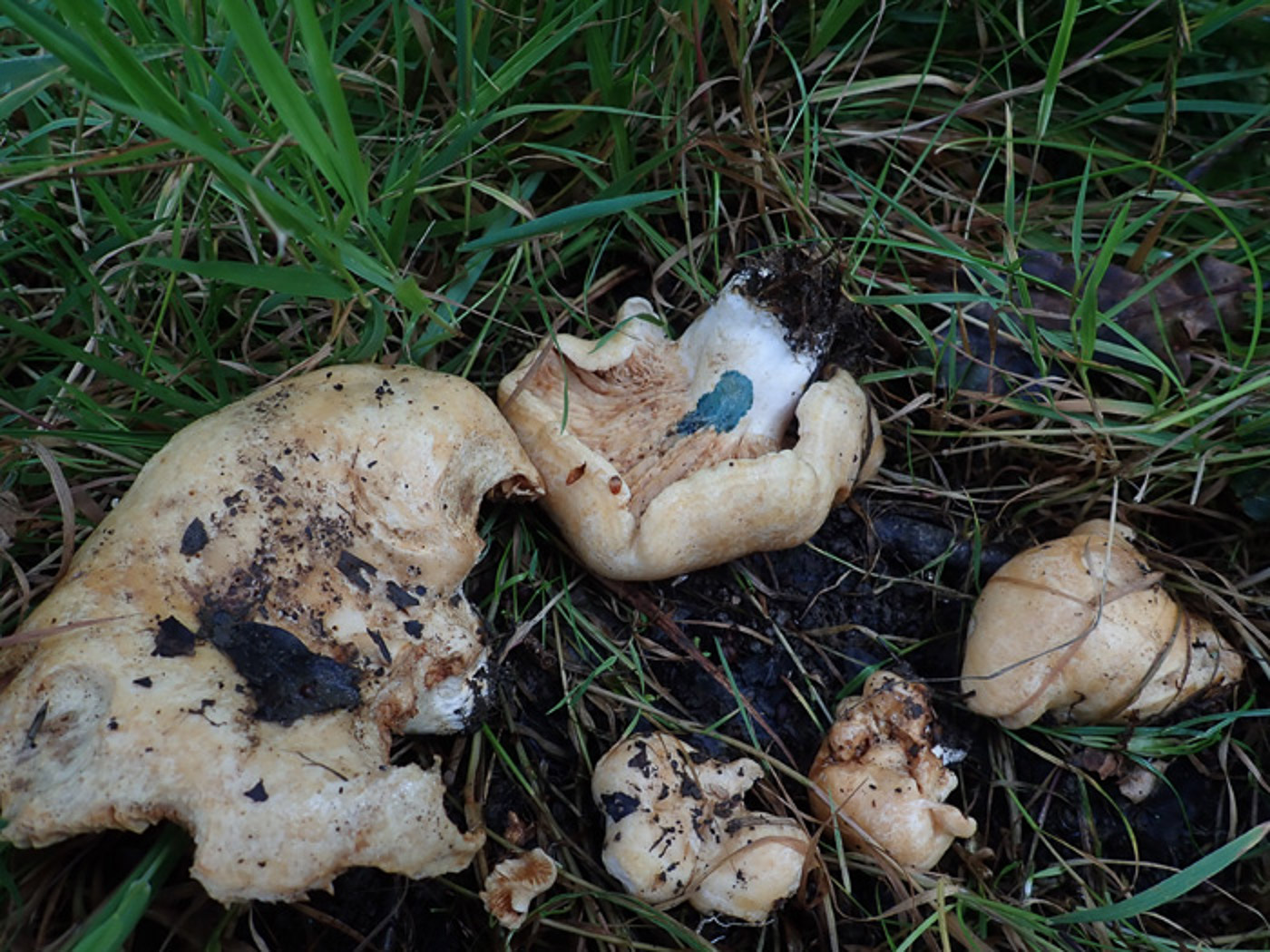
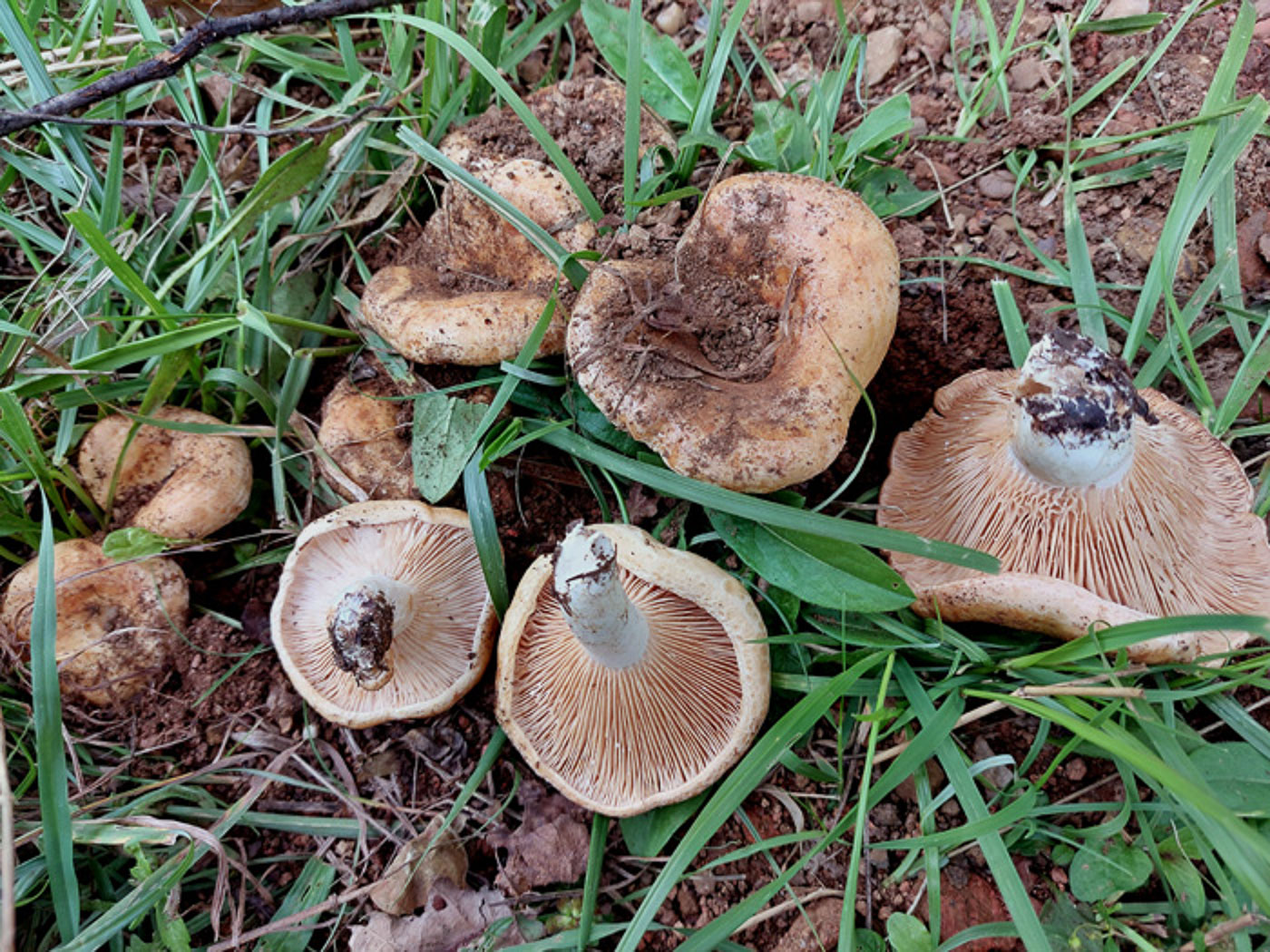 |
July 25th Lactarius acerrimus (Two spored Milkcap) 
In Bernwood Forest at a pathside in long grass under Oak Penny found first one cluster, then several more of this large misshapen mushroom which puzzled her. It surely had to be either Russula or Lactarius (the two are in fact very closely related), and as no milk was forthcoming when the gills were damaged she plumped for Russula (though it didn't fit with any she knew). Testing with Guaiac on the stem produced a positive strong blue reaction (seen here) which pointed also to this genus, but an FE crystal did nothing much and why were the gills this pinkish shade, also strongly anatomosing (with cross ridges)? At home various microcharacters also didn't fit with Russula and the light dawned: this was indeed a Lactarius and eventually one immature specimen she'd collected showed signs of milk when sliced with a sharp blade. Lactarius acerrimus is a very unusual Milkcap, often reluctant to produce milk and with basidia on the gills which bear only two spores each - a unique feature within the genus. This feature checked out as well, confirming the ID. Photo 2 was of a further collection made here by Jesper Launder a day later. See also in Finds 2020 September 23rd.
|
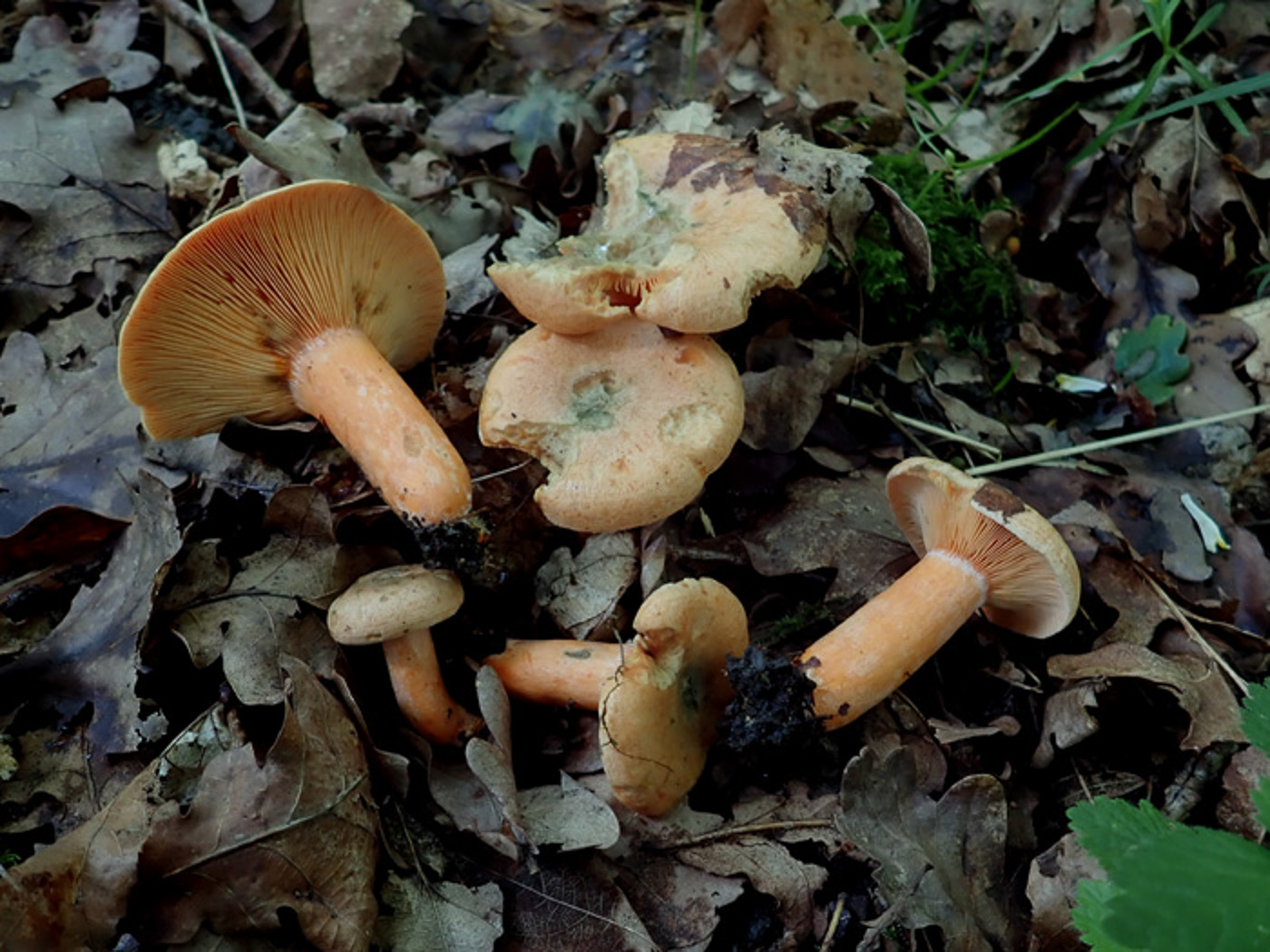 |
July 25th Lactarius deterrimus (False Saffron Milkcap)
In Bernwood Forest Penny and Paul found a patch of this striking species fruiting under Spruce. The lack of Pine present made the ID easy because this species, though very similar to L. deliciosus, is host specific to Spruce. Note also the lack of pitting on the stem, a feature with characterises the Pine associating L. deliciosus, though both can display green colours as here. It is quite common given its tree host. See in Finds 2021 November 13th for our only other example.
|
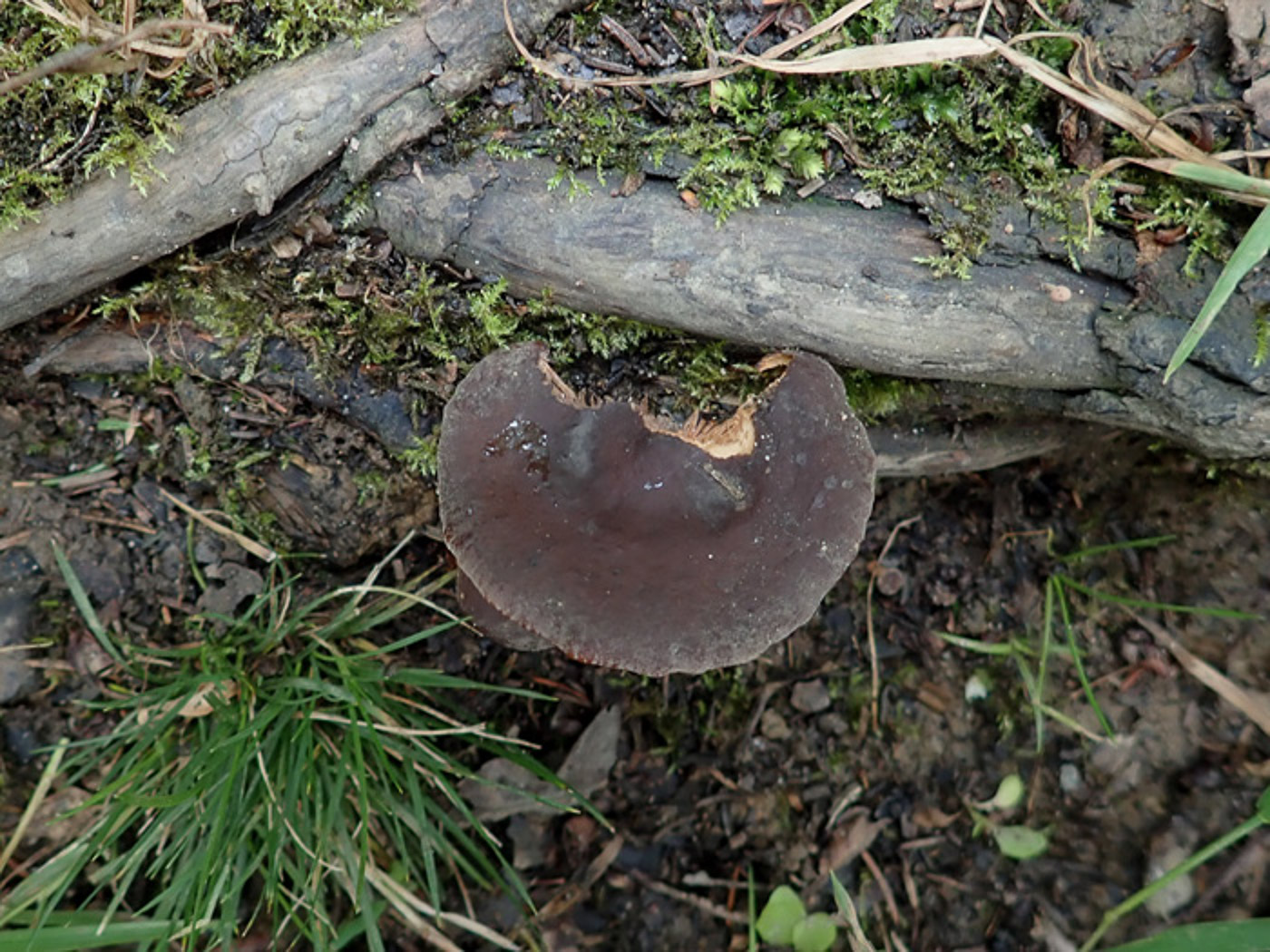
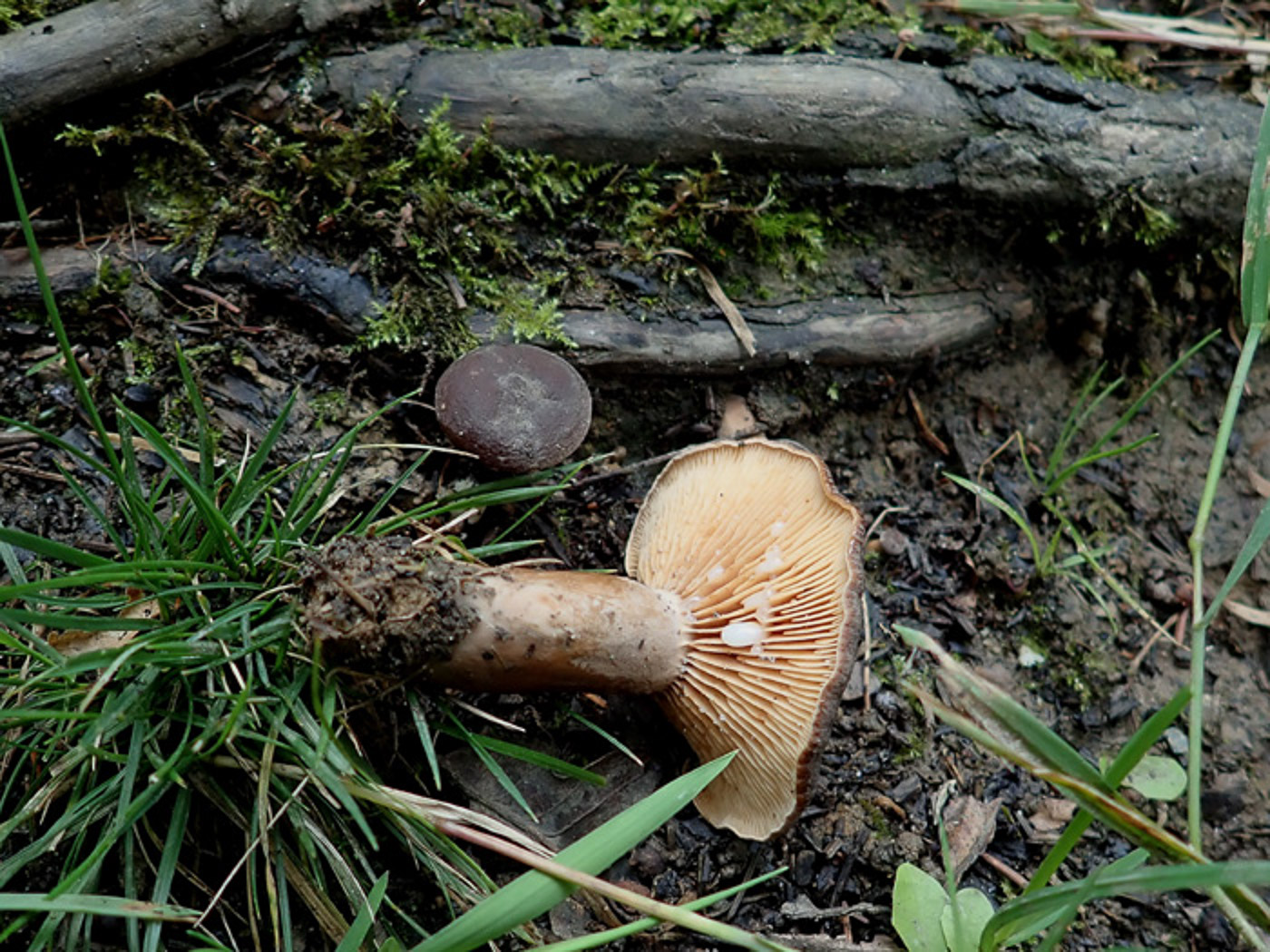 |
July 25th Lactarius serifluus (Watery Milkcap)
In soil attached to Oak roots in Bernwood Forest Penny spotted one very dark brown cap with a similar button coming up underneath it (visible in photo 2). The crimped cap margin together with rather watery milk - both visible in photo 2 - as well as the very dark cap colour with matt surface confirmed the species (previously know as L. subumbonatus, also L. cimicarius). The species is fairly common and often under Oak. This is a new entry for Finds.
|
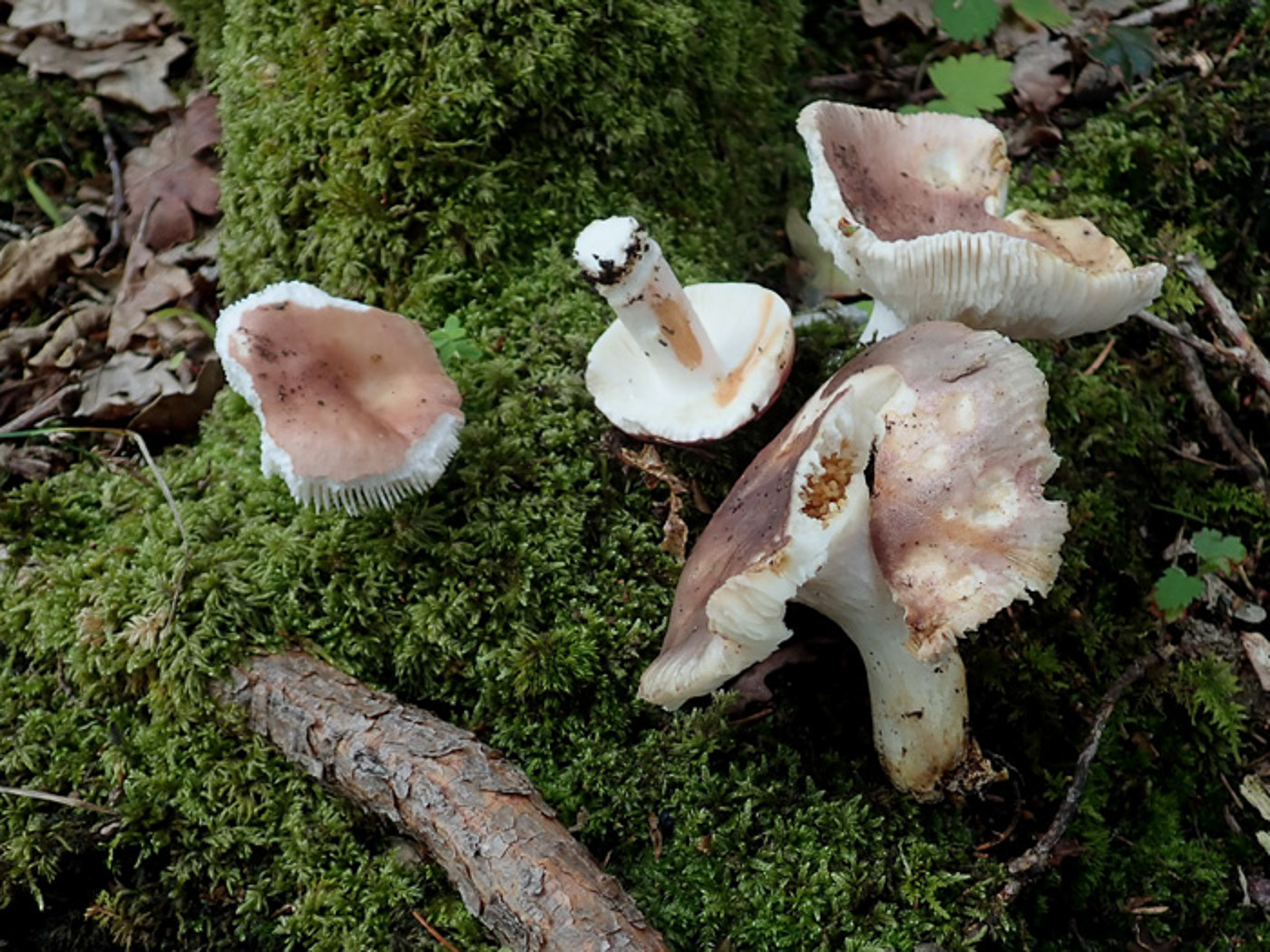
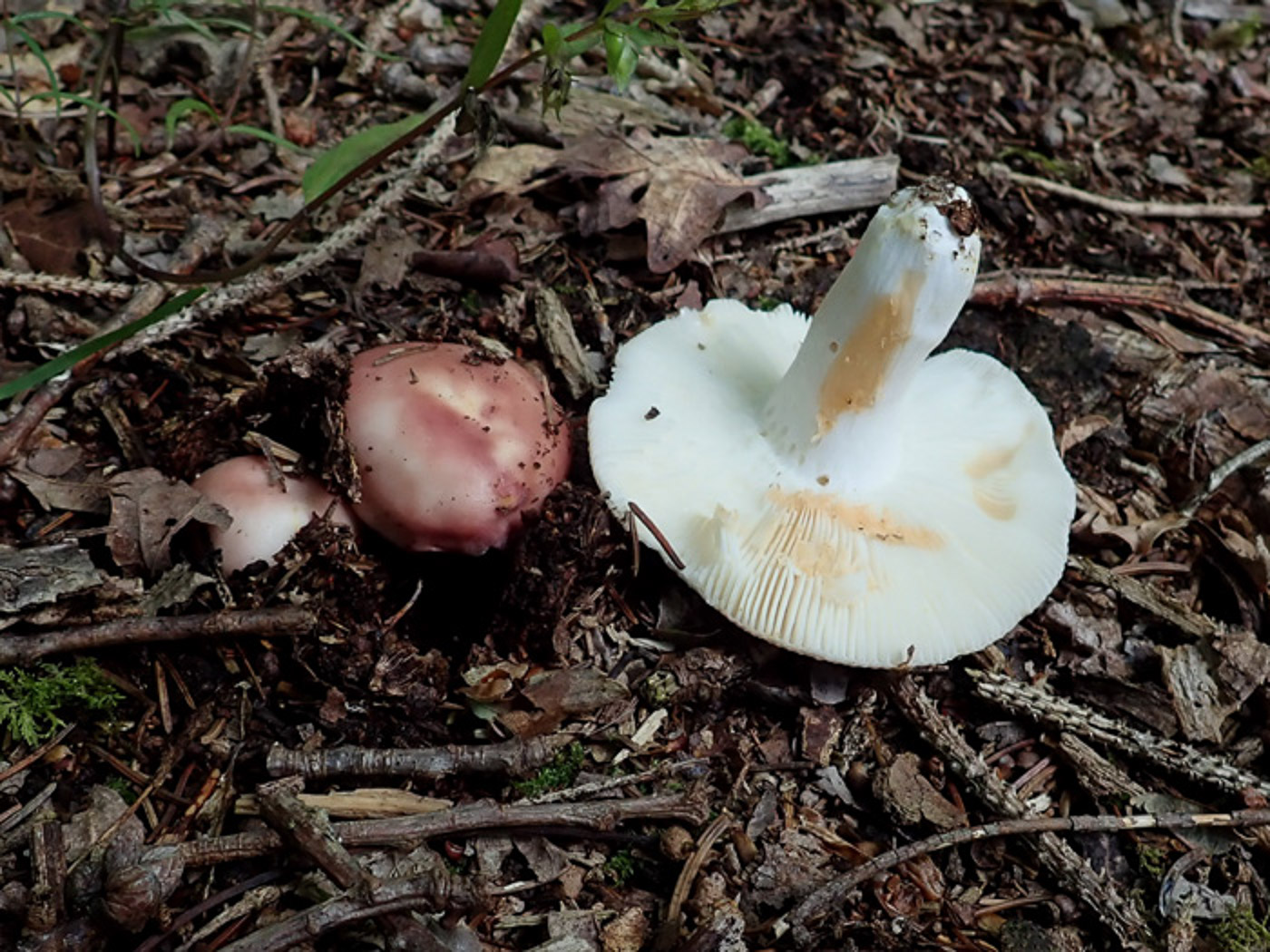
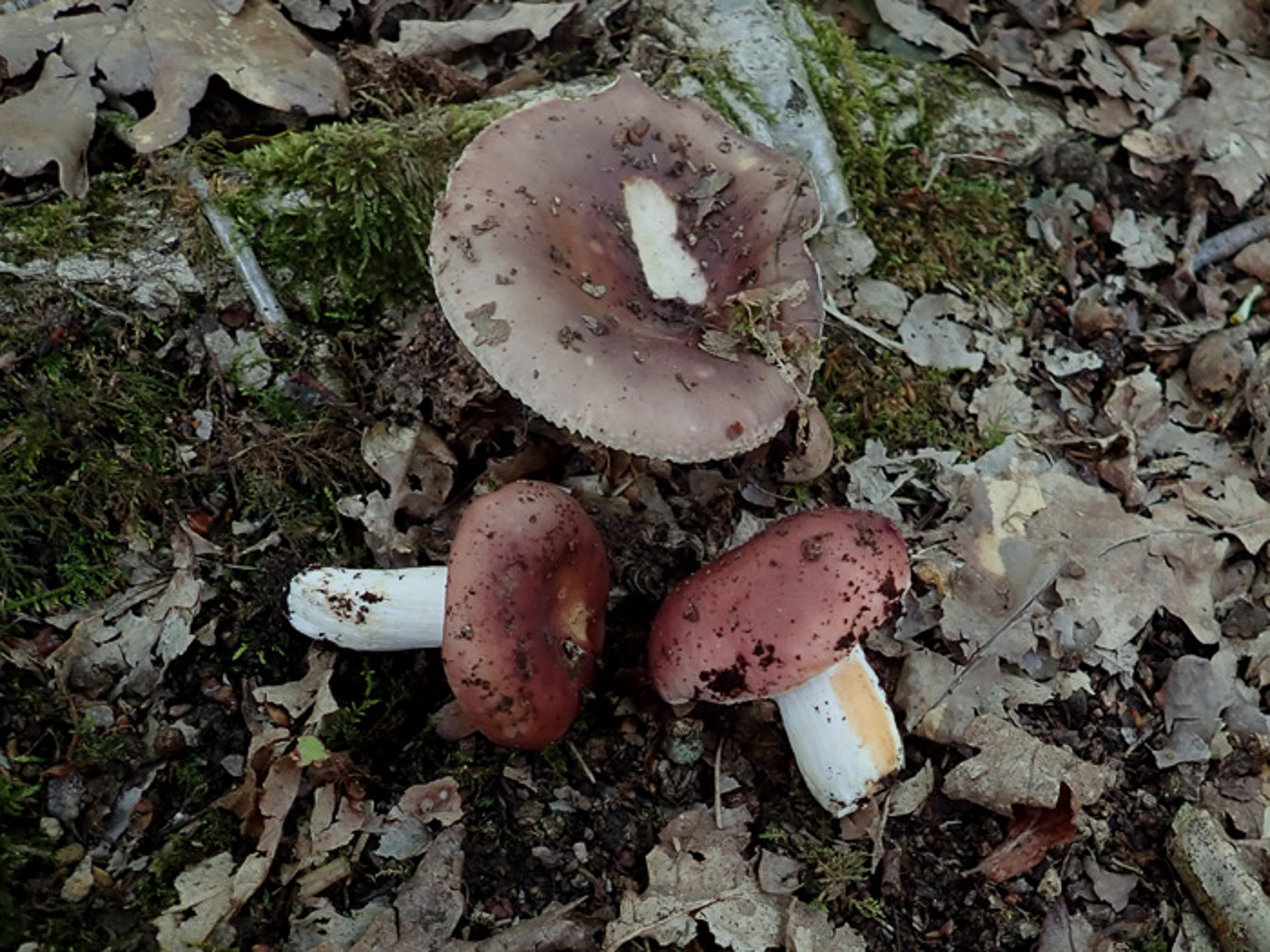 |
July 25th Russula vesca (The Flirt)
Under Oak in Bernwood Forest Penny and Paul found good numbers of this common Brittlegill though the range of cap colour was notable (hence the three images presented here). The bright salmon pink markings on both stem and gills seen here are the instant reaction to being rubbed with a Ferrous Sulphate crystal - proof positive of the ID: this is one of only two Brittlegills to show this reaction (see the other species below!). Today this test proved very useful with so much variation in cap colour. The larger paler cap in photo 3 is just beginning to show the reason for the common name here: the cuticle at the edge tends to shrink back to reveal the white gill edge like a petticoat! See also in Finds 2020 September 17th and 2021 July 12th.
|
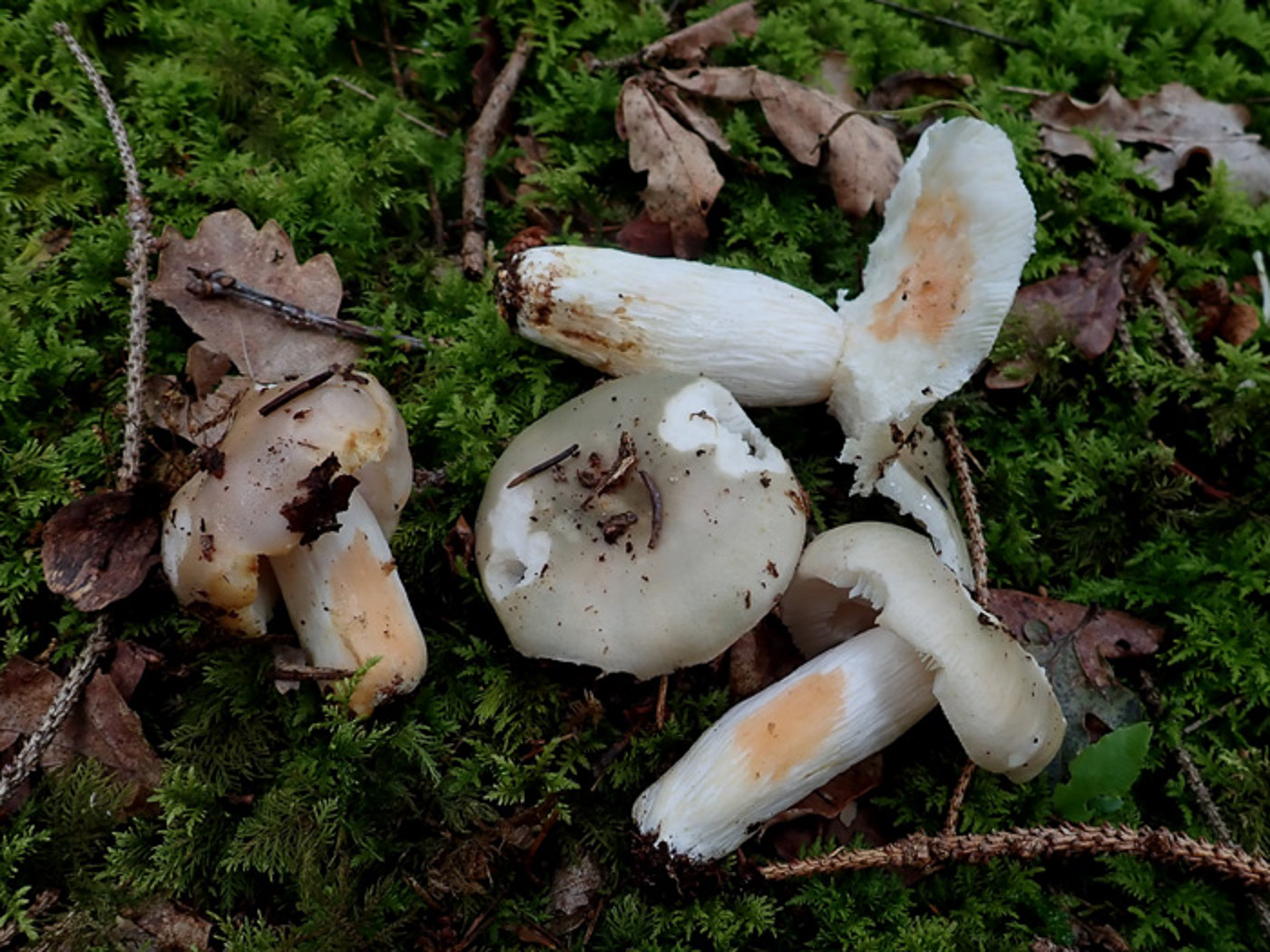 |
July 25th Russula heterophylla (Greasy Green Brittlegill)
Under Oak in Bernwood Forest Penny spotted this rather pale greeny grey collection and, thinking it was likely to be R. aeruginea (Green Brittlegill), she rubbed the stem with a Ferrous Sulphate crystal expecting the slow weak rusty reaction of that species. What she got, however, was an instant deep salmon reaction on both gills and stem, making this R. heterophylla - one of just two Brittlegills with this unique reaction. (See the entry above for the other one!) Cap colour is variable in this quite common species but is rarely as pale as this, often having either brown or yellow tones as well. It can occur under a range of deciduous trees. See also in Finds 2022 November 23rd.
|
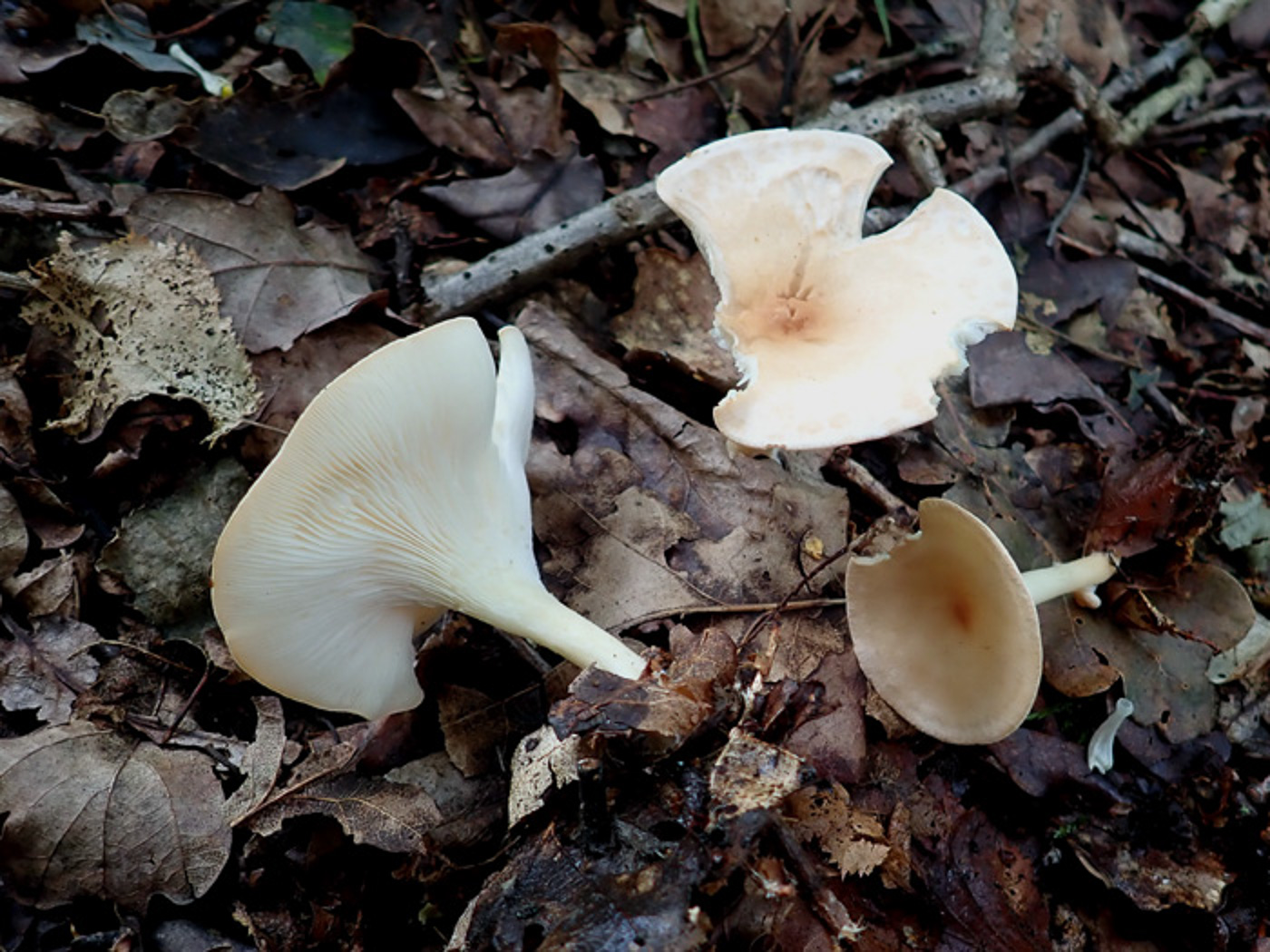 |
July 25th Infundibulicybe gibba (Common Funnel)
In Bernwood Forest under Oak Penny and Paul found this species just starting to fruit. Previously in genus Clitocybe, this is one of our commonest mushrooms inhabiting grassy glades and woodland litter; the distinctly decurrent crowded gills help to distinguish it from other pale capped species though the cap colour is variable and can be both paler and darker than shown here. There is a good choice of images available via the Masterlist.
|
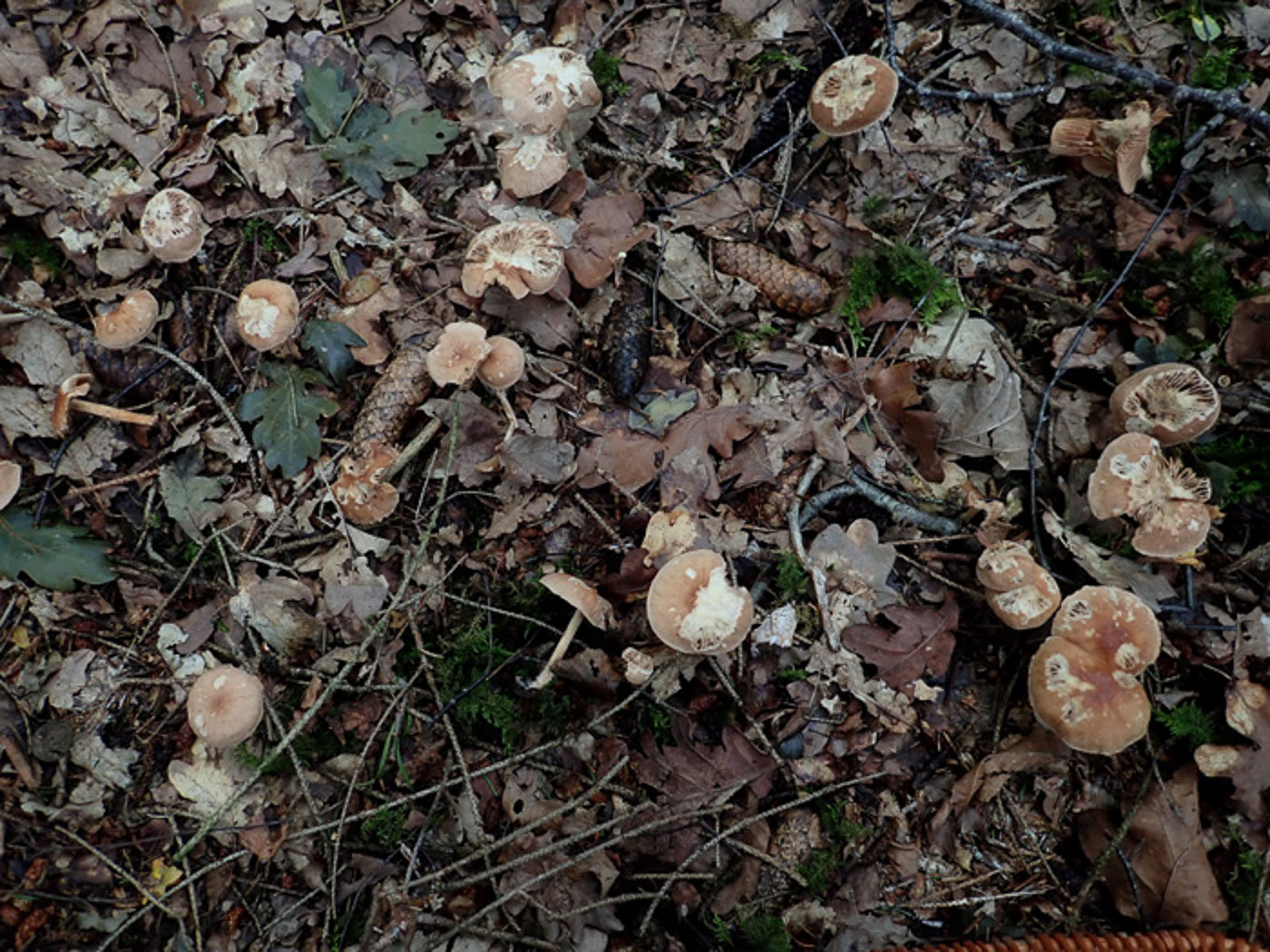
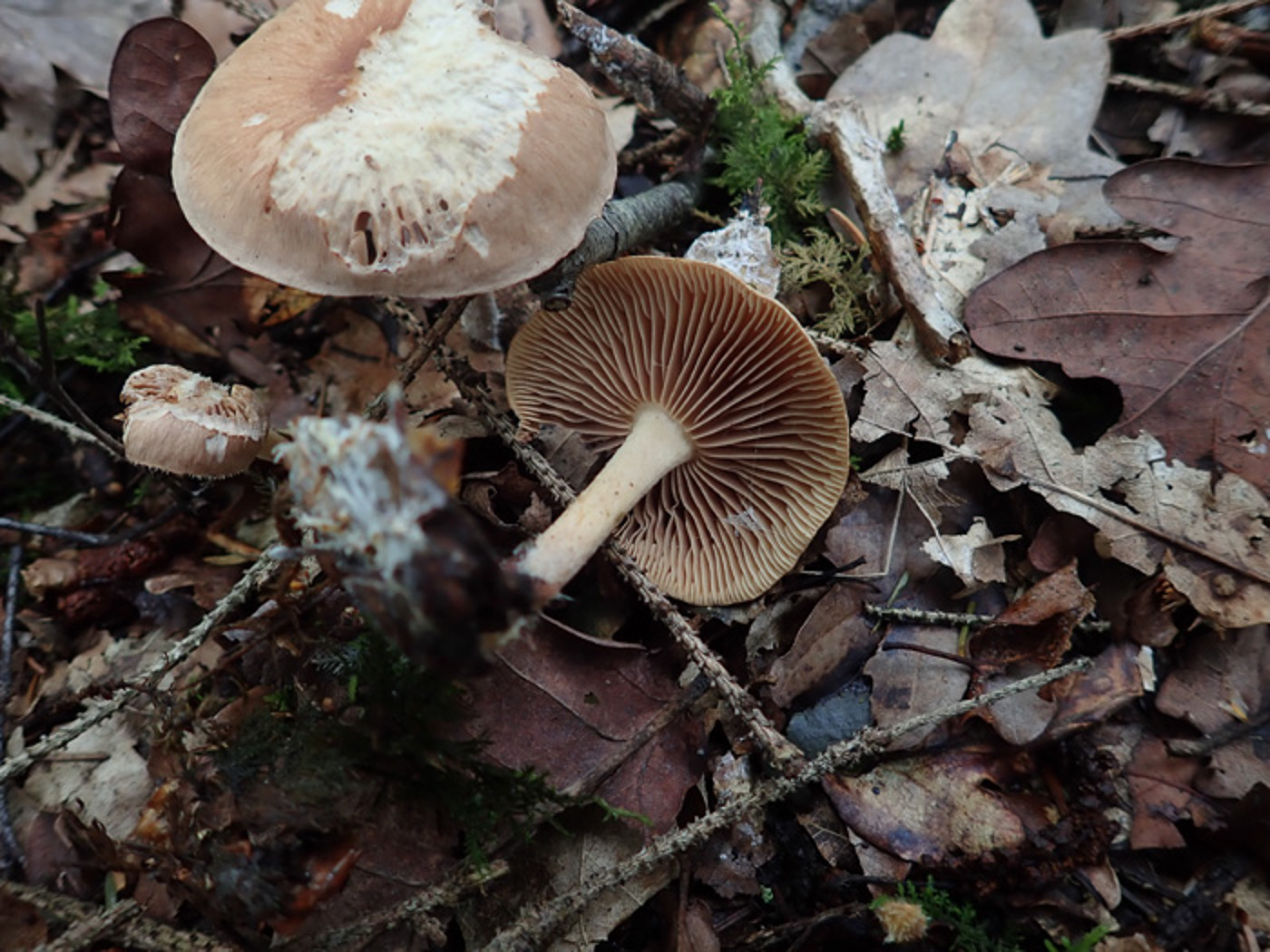
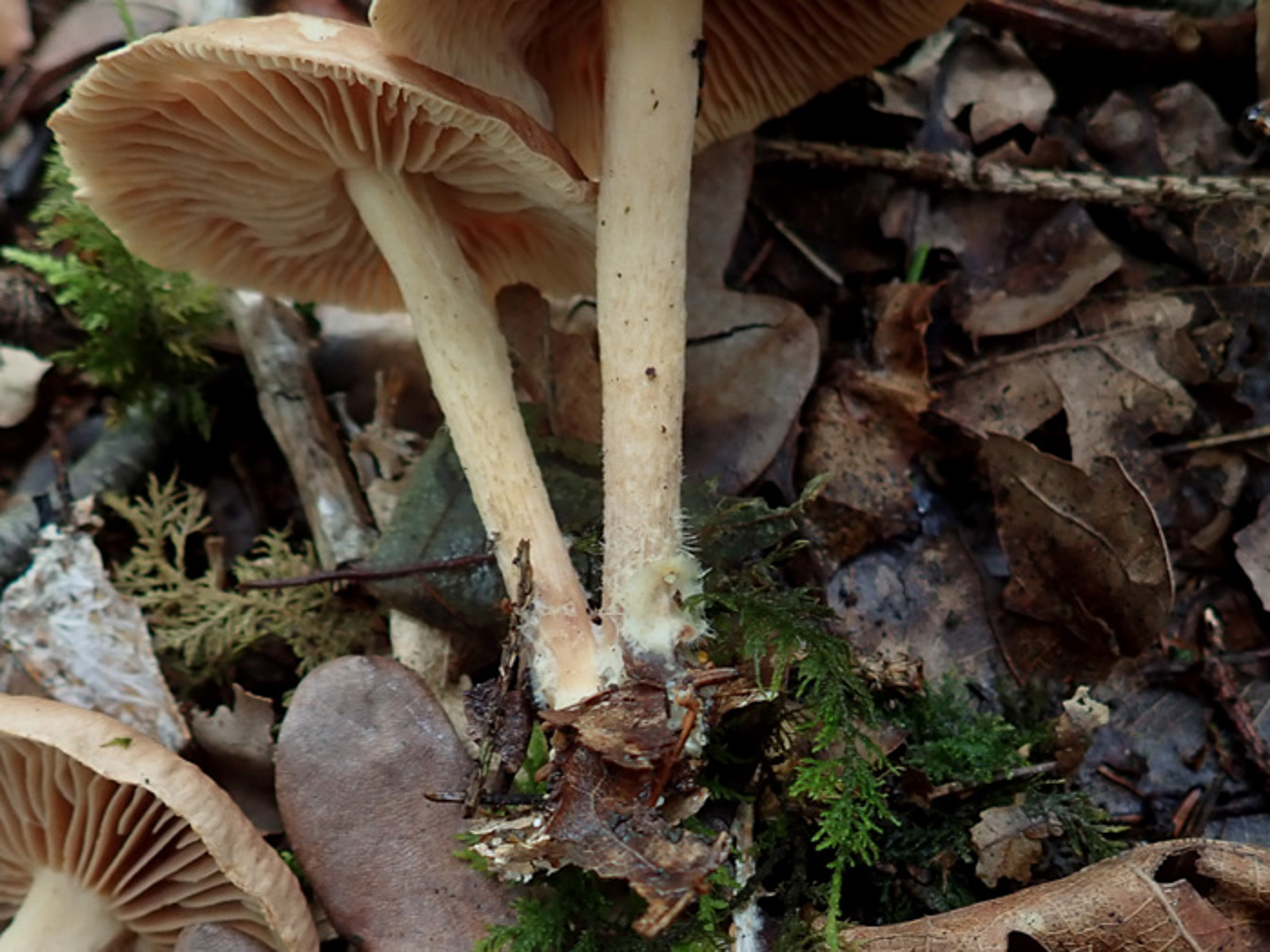 |
July 25th Gymnopus peronatus (Wood Woollyfoot)
Under Oak and Spruce in Bernwood Forest Penny found this good sized cluster though they'd clearly been well nibbled by forest rodents. Common under both broadleaf and coniferous trees, this LBJ species often seems to cause confusion though the gills and stem are quite distinctive (photos 2 and 3). A useful clue is the 'woolly' stem base with litter debris often attached as here (peronate: with a woolly furry covering). We have three other images - see the Masterlist for details.
|
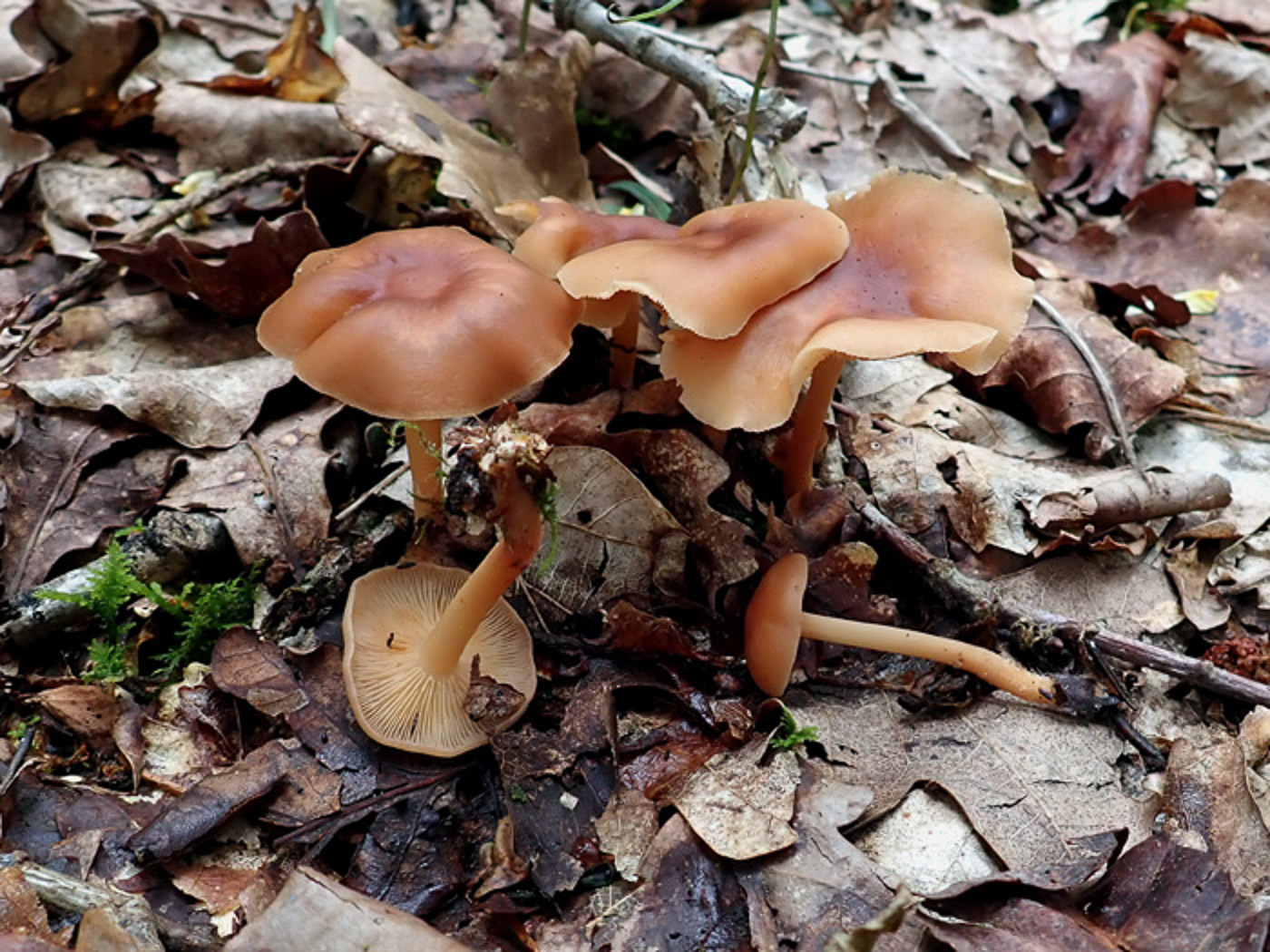 |
July 25th Gymnopus dryophilus (Russet Toughshank)
In Oak litter in Bernwood Forest Penny and Paul found a few clusters of this common early season litter feeder. The rich cap colour is notable in damp conditions though is sometimes much paler than see here. Like others in this genus it has a rubbery texture and the stem stays undamaged when twisted. We have a good selection of other images - see the Masterlist for details.
|
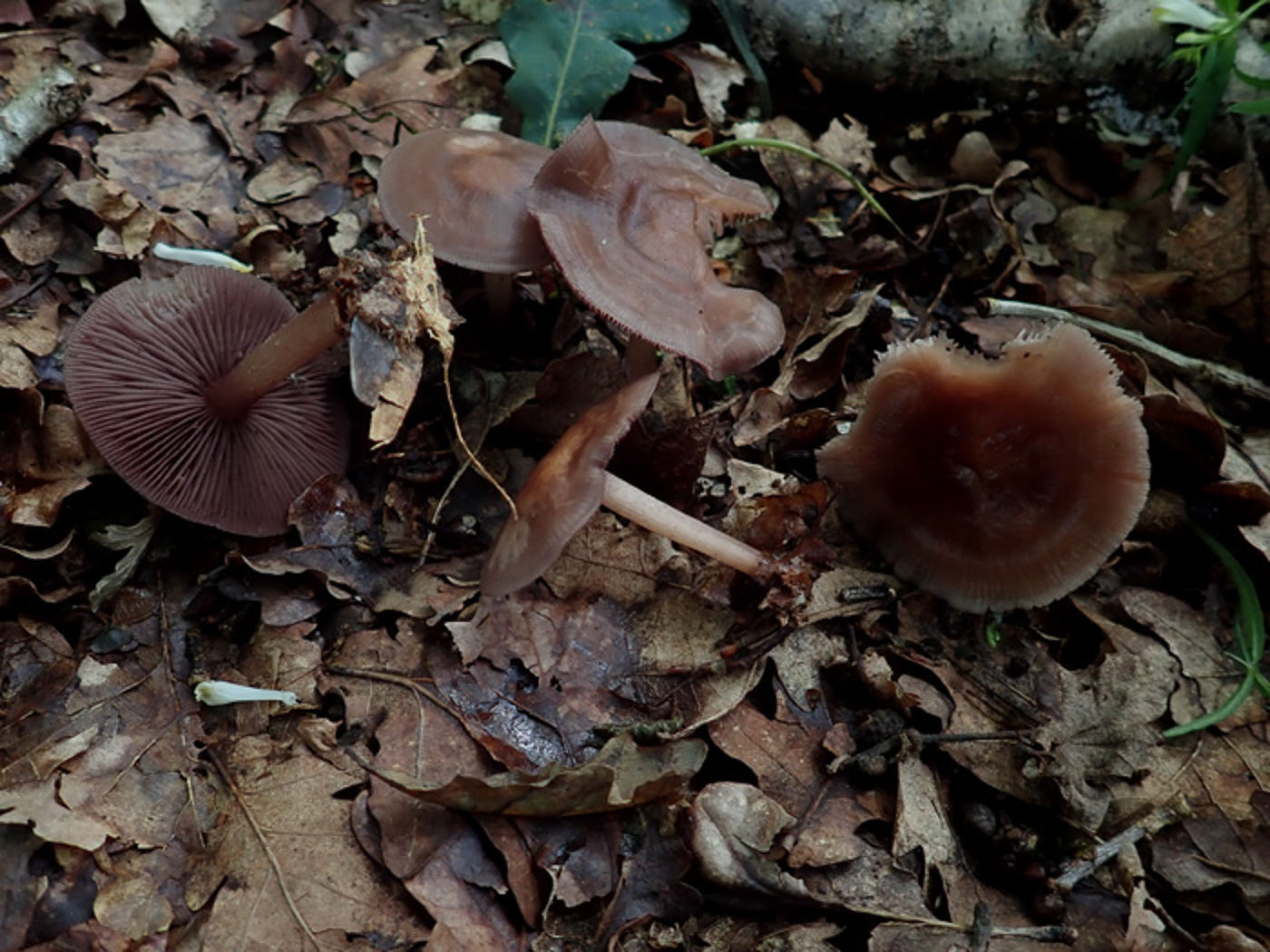
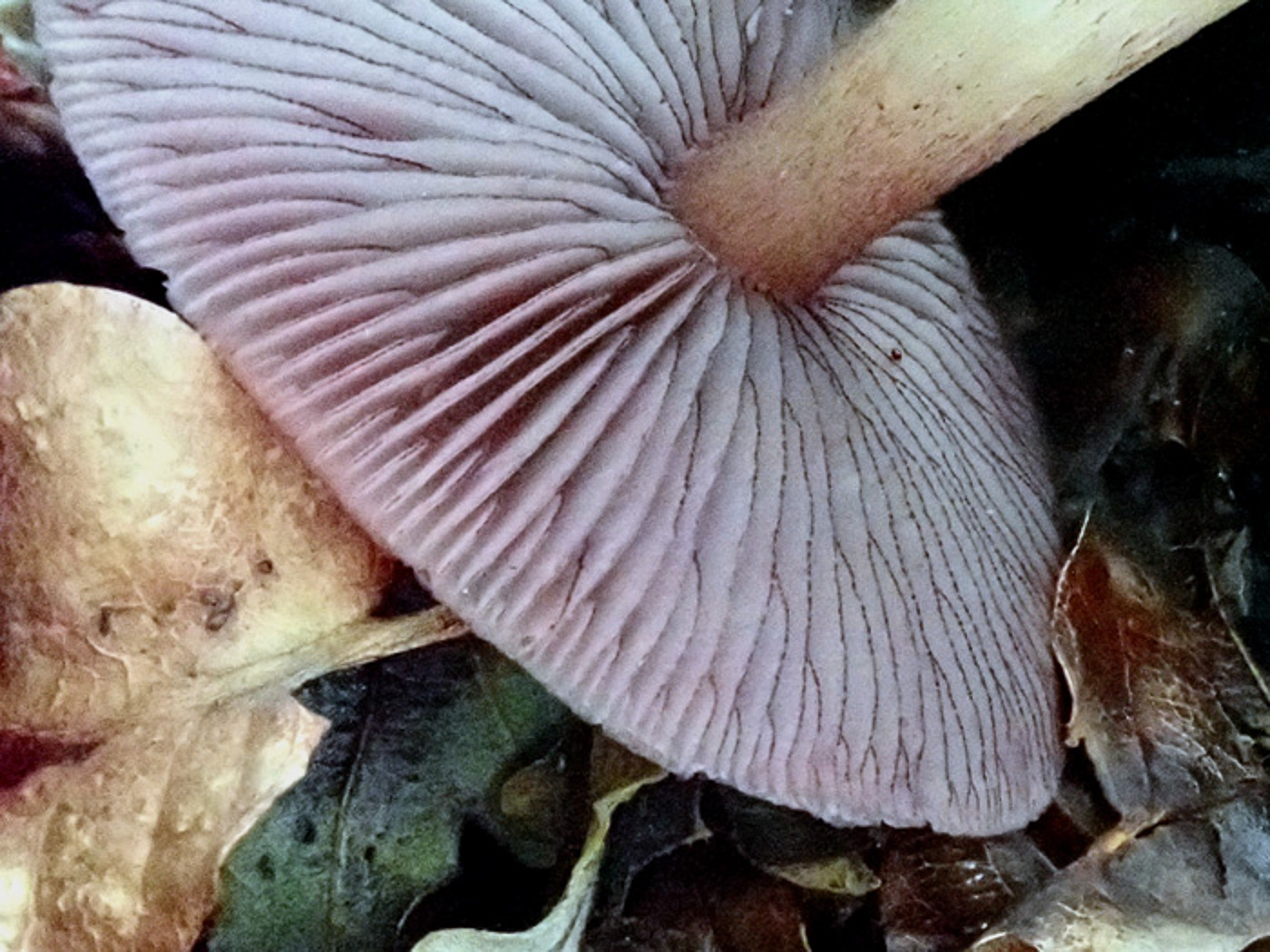 |
July 25th Mycena pelianthina (Blackedge Bonnet)
In Oak litter in Bernwood Forest Penny and Paul found this species just beginning to make an appearance. One of a group of Bonnets which inhabit leaf litter, often quite large for the genus, with a sharp radishy smell and with caps ranging from pink to some shade of purple, it is easy to recognise once you check the gills underneath which have a deep purple edge (photo 2) - a unique feature. See the Masterlist for a good range of alternative images.
|
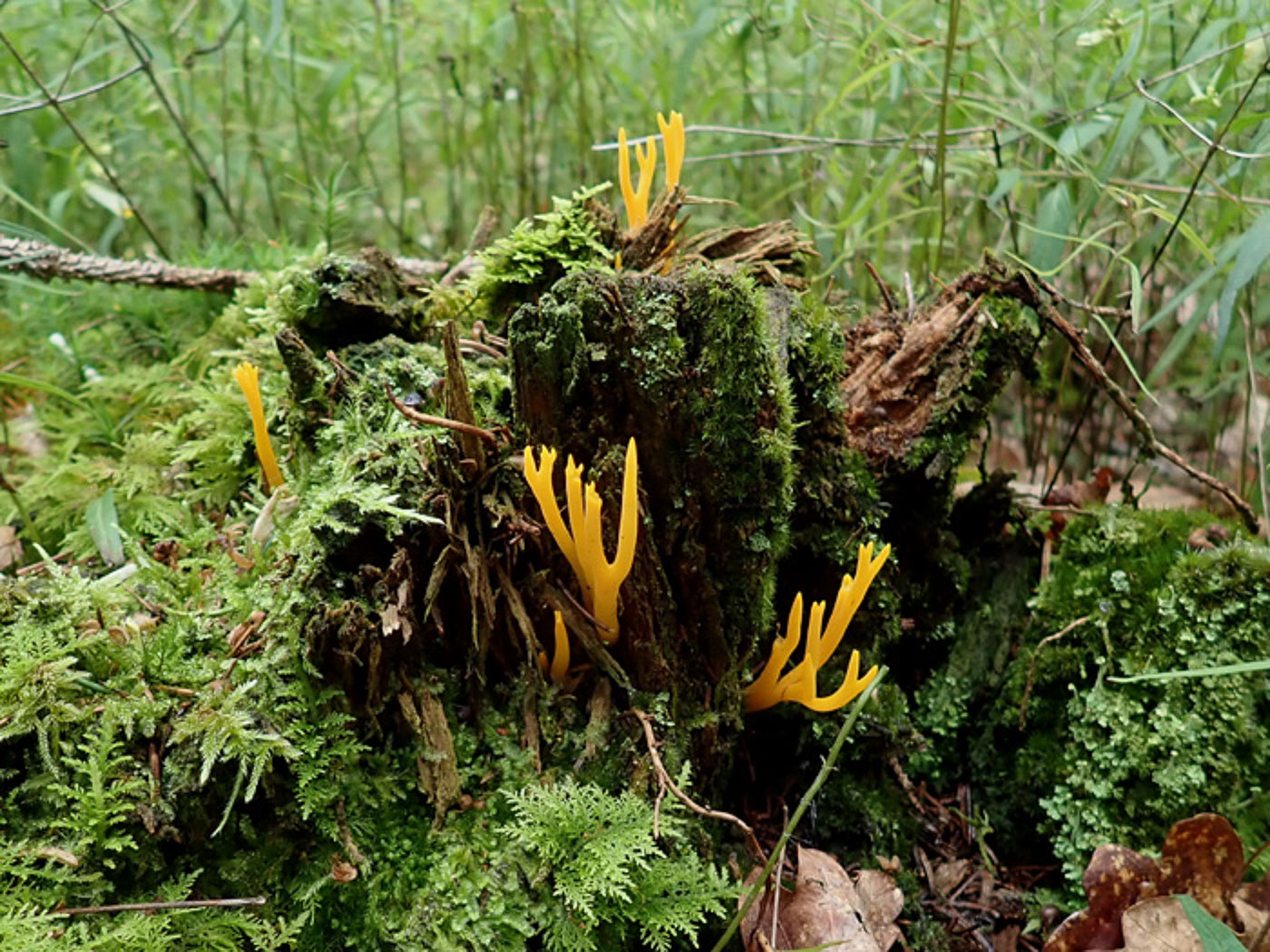 |
July 25th Calocera viscosa (Yellow Stagshorn)
In Bernwood Forest this attractive jelly fungus was much in evidence on the many Spruce stumps, found by Penny. Though other Stagshorn species can be confusing, this one is the easiest to recognise (also the most like stags' horns) being taller, distinctly branched in the upper half and common on conifer stumps and logs. See also in Finds 2020 October 3rd and 2021 October 5th.
|
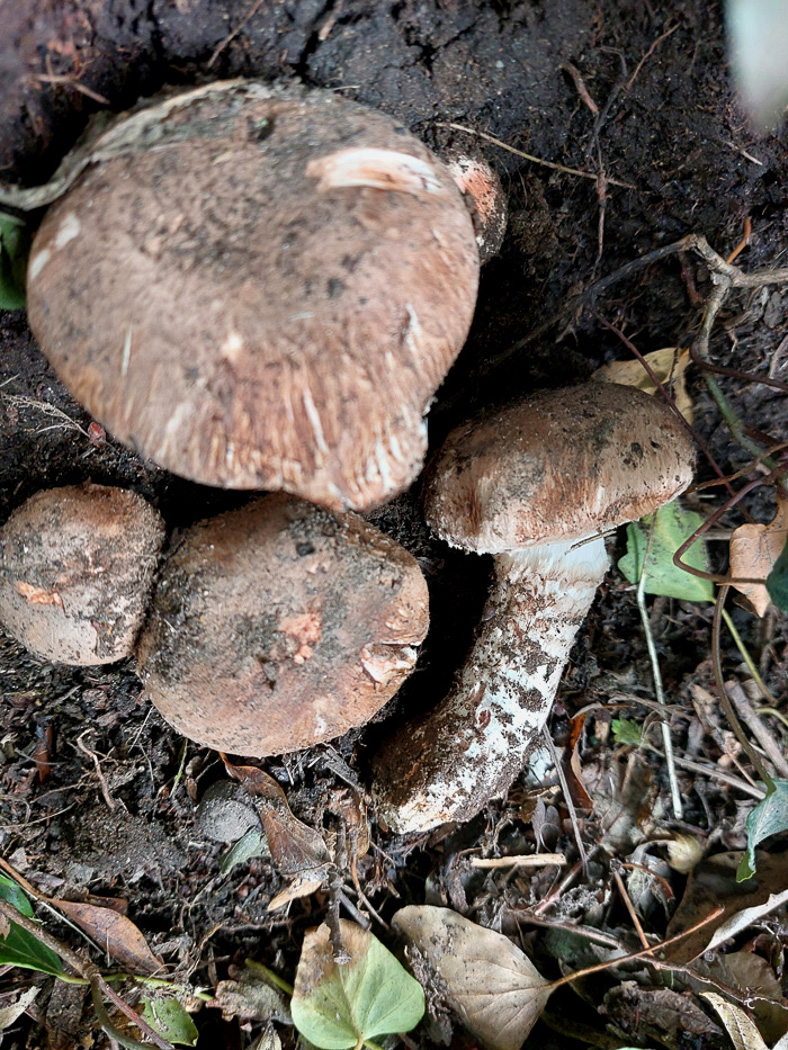 |
July 25th Agaricus subperonatus (Tapered Mushroom) 
In Jordans Village Jesper Launder found these rare mushrooms growing in soil / litter at the roadside. This is a distinctive dark scaly-capped Mushroom with bands of dark brown on the stem below the ring and reddening flesh throughout (seen in photo 2). It favours disturbed soil in inhabited areas such as parks and gardens, usually near trees or bushes. Though with over 70 records in FRDBI this is a new species for the county.
|
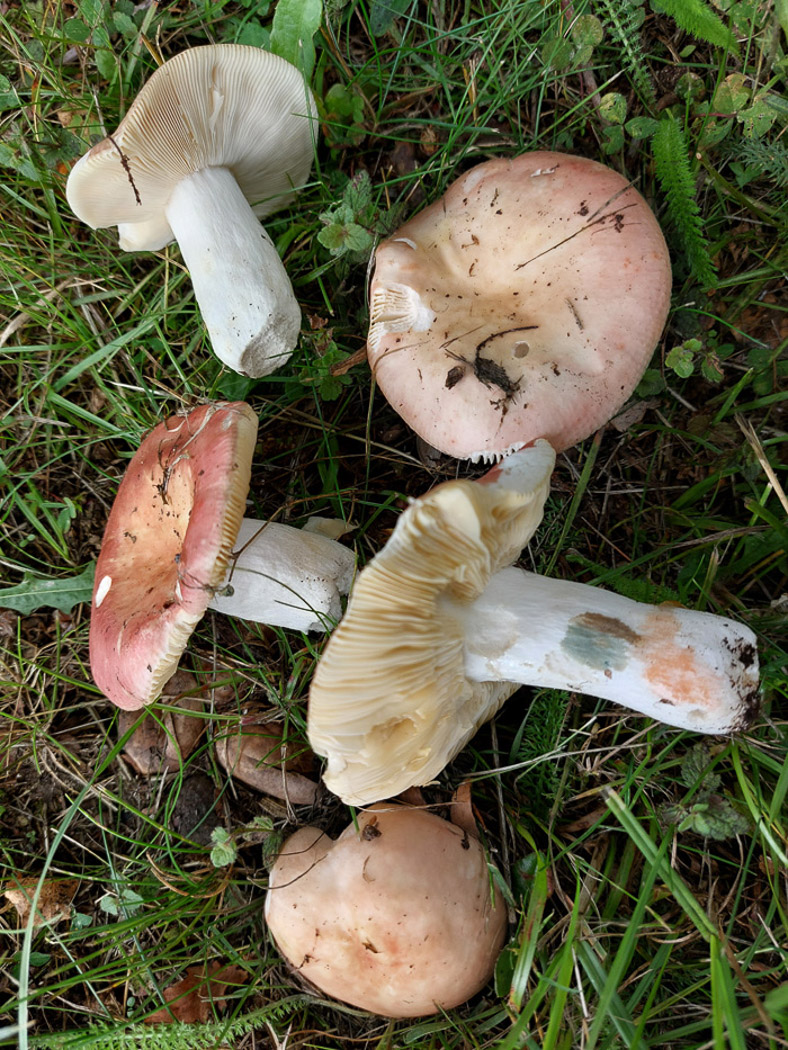 |
July 25th Russula decipiens (a rare Brittlegill with no common name) 
In Jordan Village under Oak Jesper Launder found a good number of this Brittlegill - one for which we have just two sites and only four previous records. The cap colour is similar to several other species (Penny describes it as peaches / strawberries and cream!) but it differs in having distinctly darker gills and therefore a deep orange sporeprint which in one stroke eliminates the commoner species (like R. vesca, for instance) with caps this colour. Microscopic characters are distinctive as well. It occurs under Oak, Beech and Sweet Chestnut. This is anew entry for Finds.
|
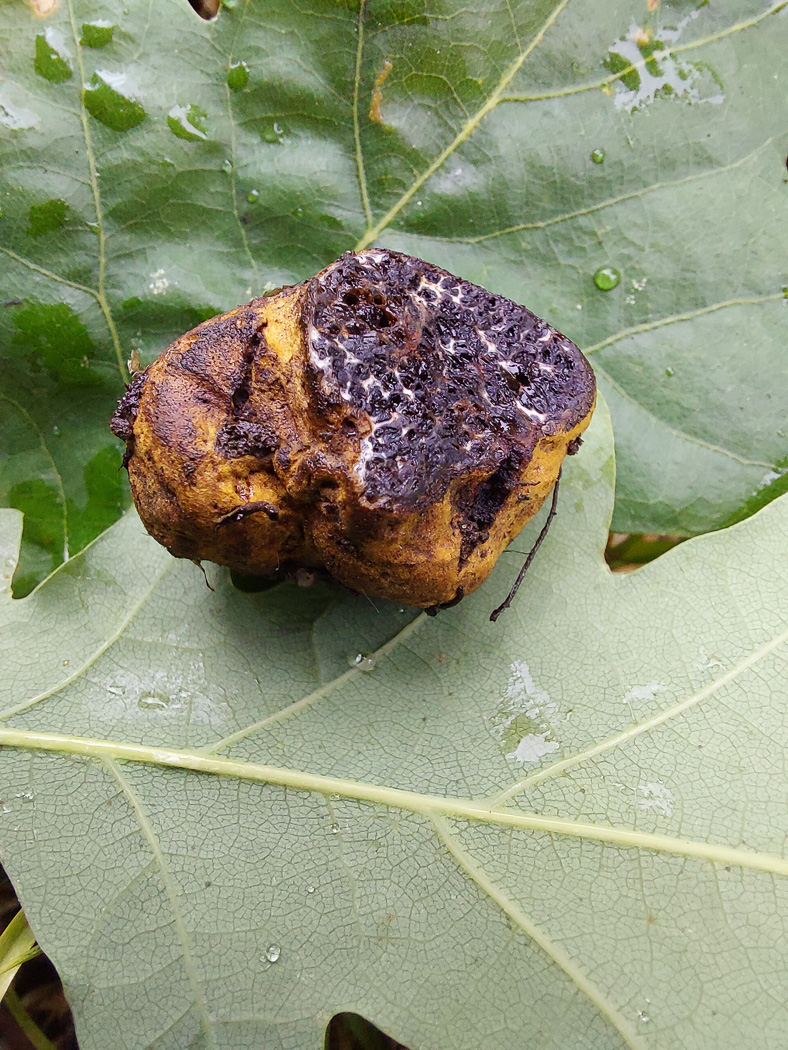 |
July 23rd Melanogaster broomeanus (a truffle-like fungus with no common name) 
In Seer Green Jesper Launder spotted this unusual species 'just sitting in the bottom of a recently dug hole'. He suggests a squirrel must have been distracted and dropped it! The genus is, surprisingly, related to Paxillus, and its various species often have unpleasant smells and are not considered edible. There are around 50 national records in FRDBI including just one from Bucks (Beaconsfield in 1927 by the prestigious mycologist Carlton Rea!) but as that was almost 100 years ago Penny felt the yellow box was merited here!
|
 |
July 23rd Xerocomellus chrysenteron (Red cracking Bolete)
In Jordans Village under Cypress, Jesper Launder found this collection of Boletes and owing to the presence only of conifer nearby was able to confidently name them. For many years thought to be our commonest Bolete of this type - ie with spongy dull yellow pores which blue when pressed and a soft cap with cracks showing pink beneath - sequencing has revealed that it occurs almost exclusively under conifers and only occasionally under Beech - not under Oak. This is perhaps surprisingly our first entry for Finds though records for the species abound, but many collections so-named in the past must now considered suspect.
|
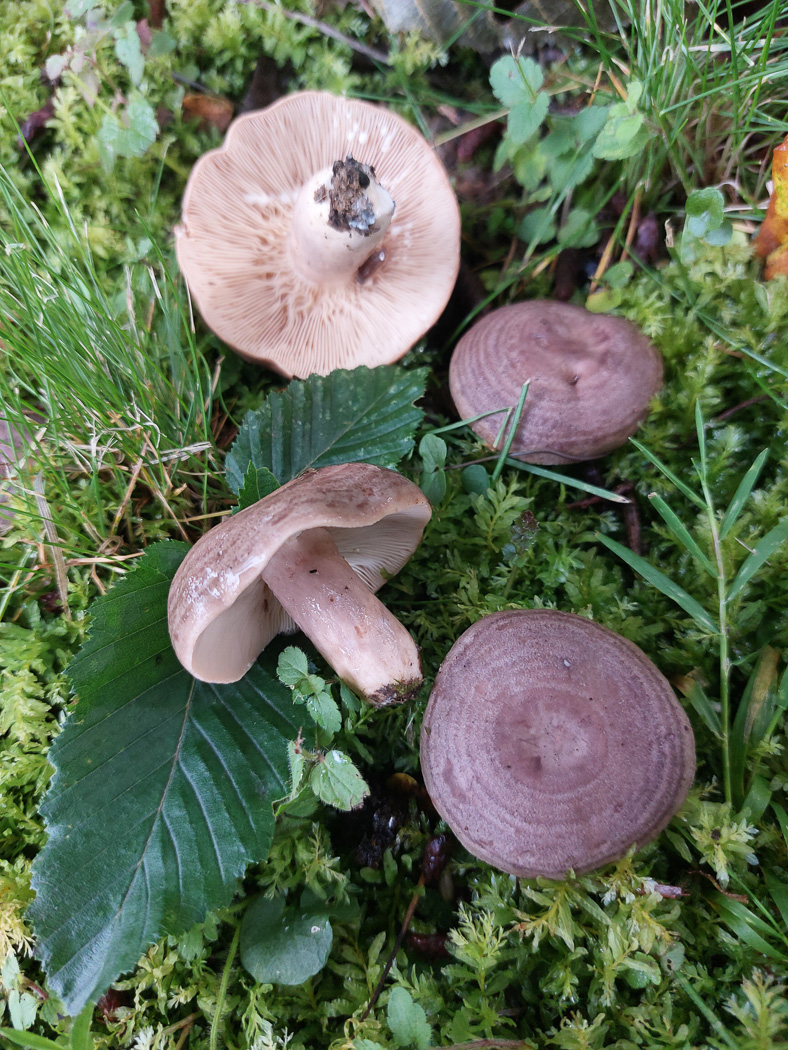 |
July 23rd Lactarius circellatus (a Milkcap with no common name)
In Jordans Village Jesper Launder found this group of unusual Milkcaps, the species being host specific to Hornbeam. The species is not unalike the very common L. blennius (Beech Milkcap) having a similarly zoned cap with droplet markings, though tends to have pinker tones and a fruity smell also. The best clue to its identity, however, is its occurrence under Hornbeam. See also in Finds 2021 July 18th.
|
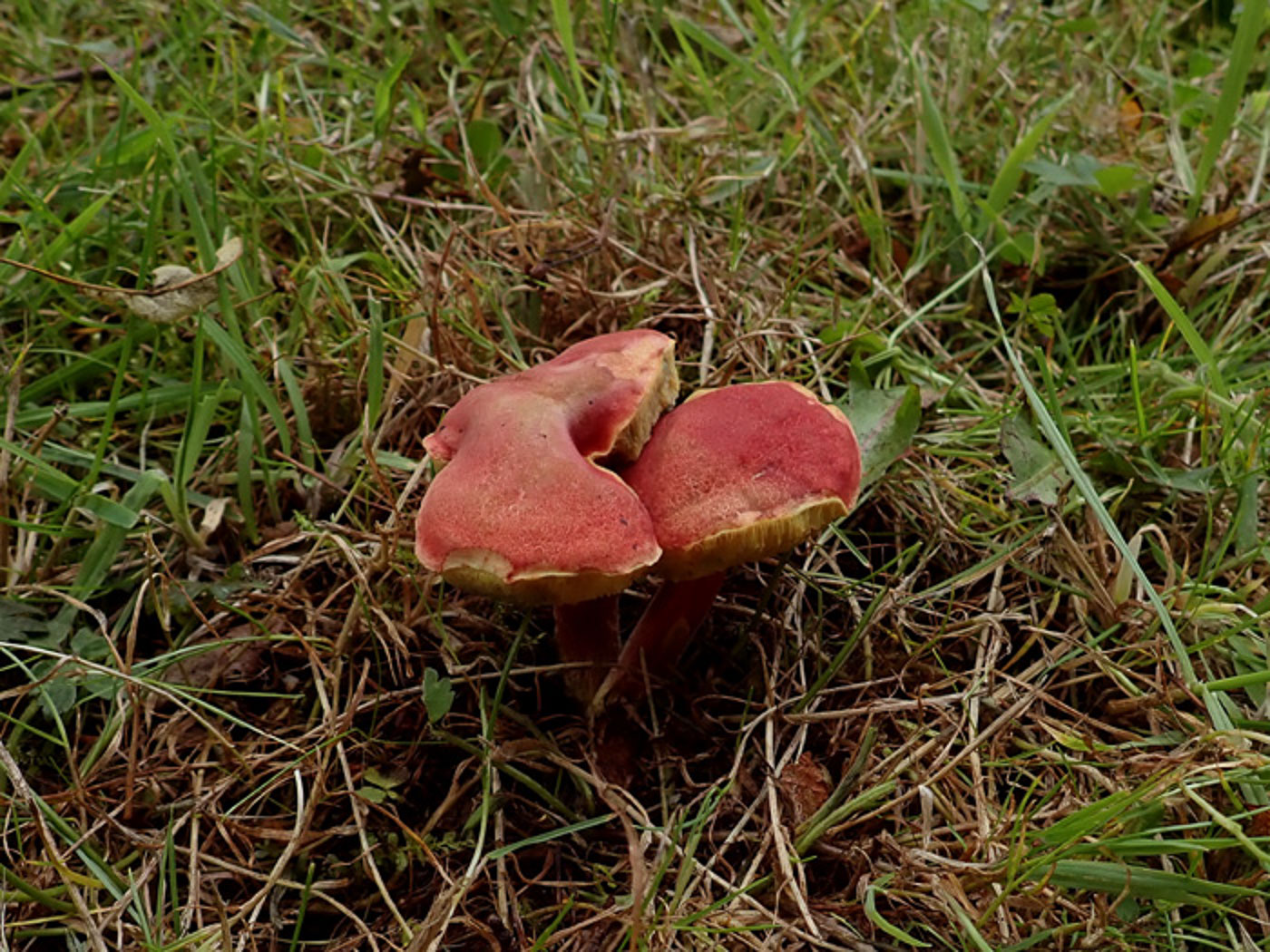
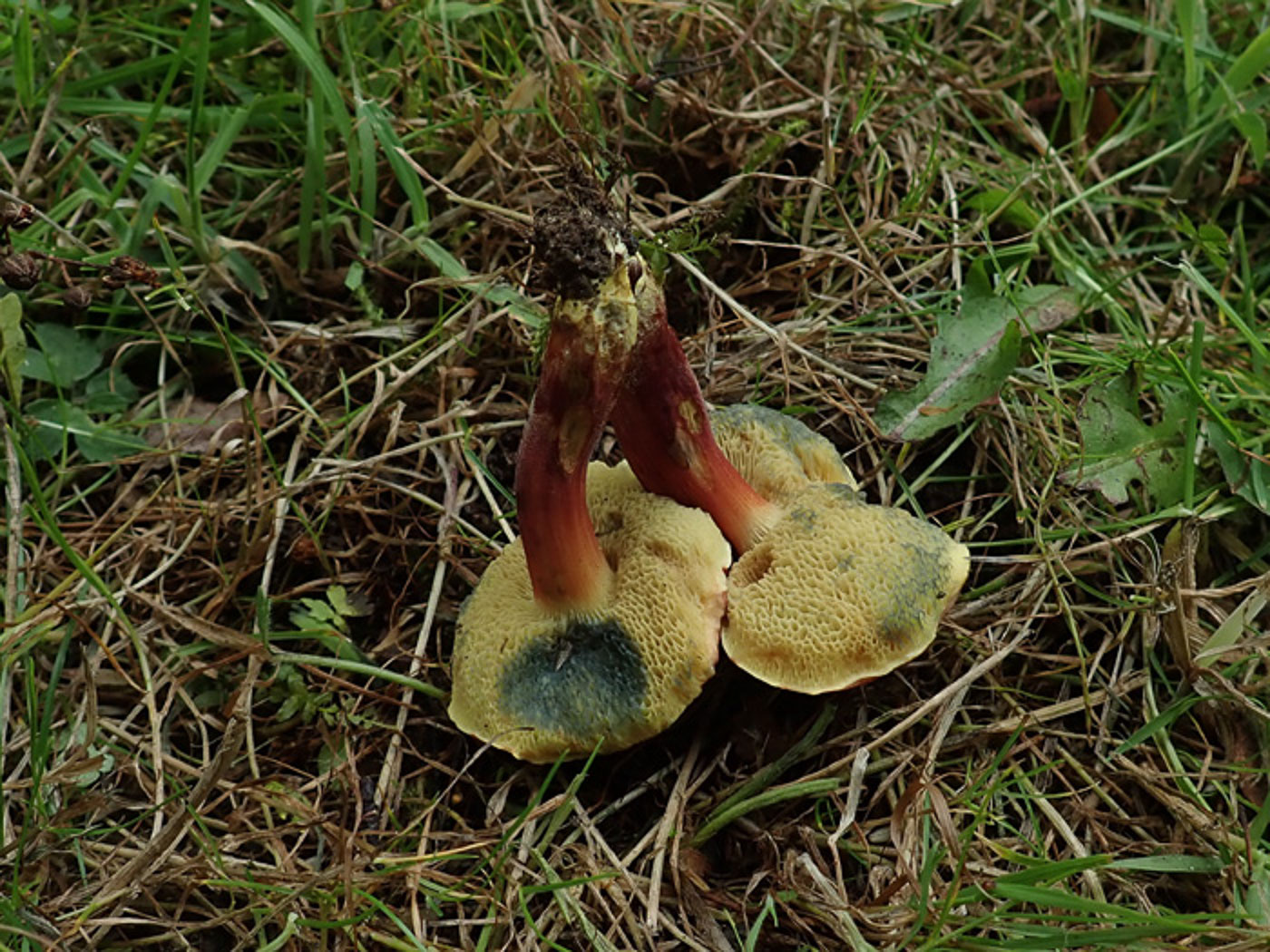

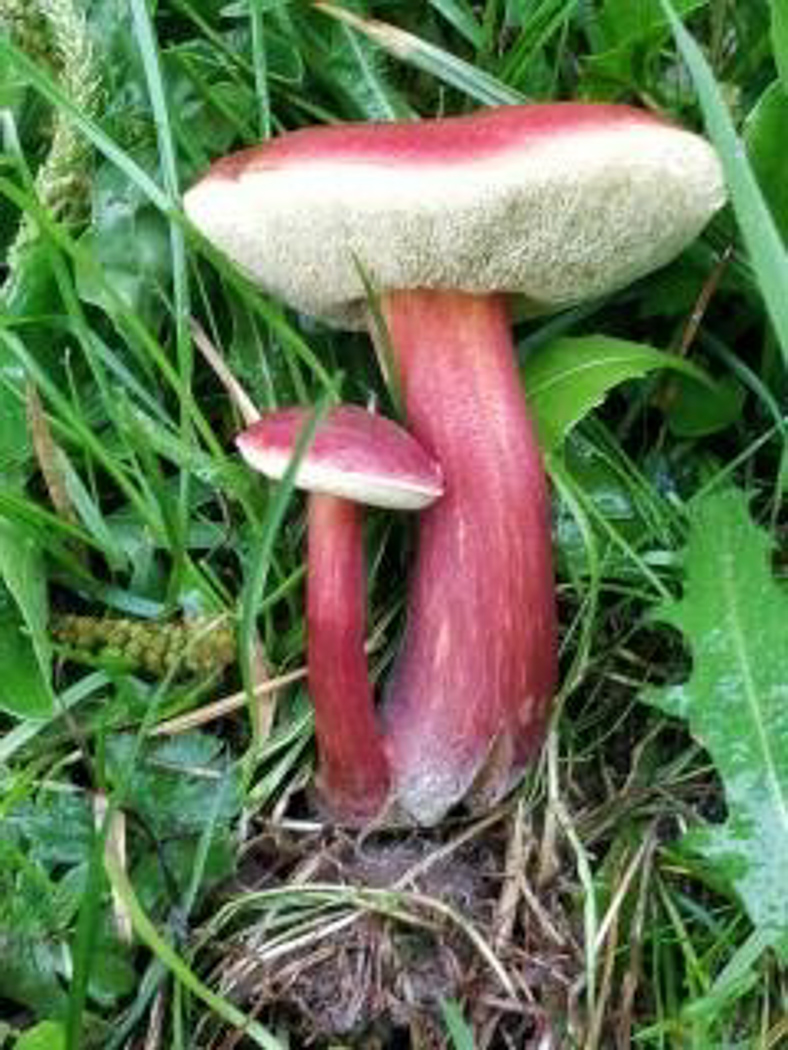 |
July 23rd Hortiboletus rubellus (Ruby Bolete)
Having just received from Sarah Ebdon photo 3 taken a day earlier in the tipping rain at Naphill Common, Penny then found this same species at Turville Heath in a grassy verge under Lime and luckily considerably more photogenic! The combination of intensely red cap, rather dirty yellow soft pores which turn blue when pressed, and red stem help to separate this from other similar species, though Penny later read that when dissected it shares the fine orange dots seen in the stem base flesh with H. engelii, a species to which it is closely related. Both species reportedly favour Oak despite today's collection being clearly under Lime. A day later in came photo 3, even more photogenic and found by Bob Simpson in Milton Keynes. See also in Finds 2022 September 13th.
|
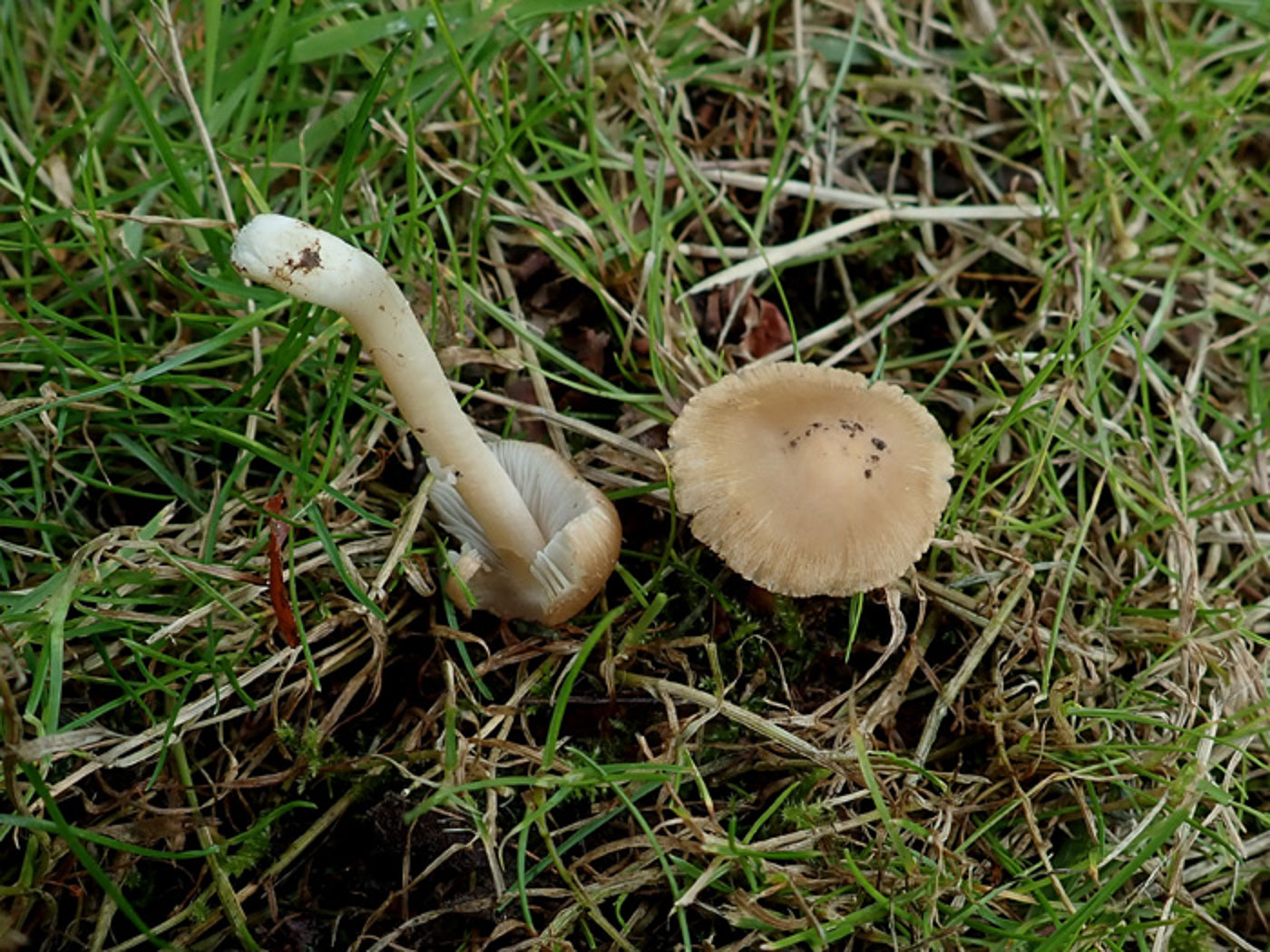 |
July 23rd Inocybe mixtilis sl. (a Fibrecap with no common name) 
At Turville Heath Penny found these two LBJs under Lime and, knowing the genus, took them home to work on - few if any of this genus can now be confidently named in the field! Both macro- and microscopic characters led her to I. mixtilis - now known to be a complex of at least six different species following DNA analysis, hence the 'sl' after the name here indicating 'in the broad sense'. She expects sequencing will show this collection to be I. mixtilis ss. (indicating in the strict sense) but reserves judgement for obvious reasons! This is a new entry for Finds.
|
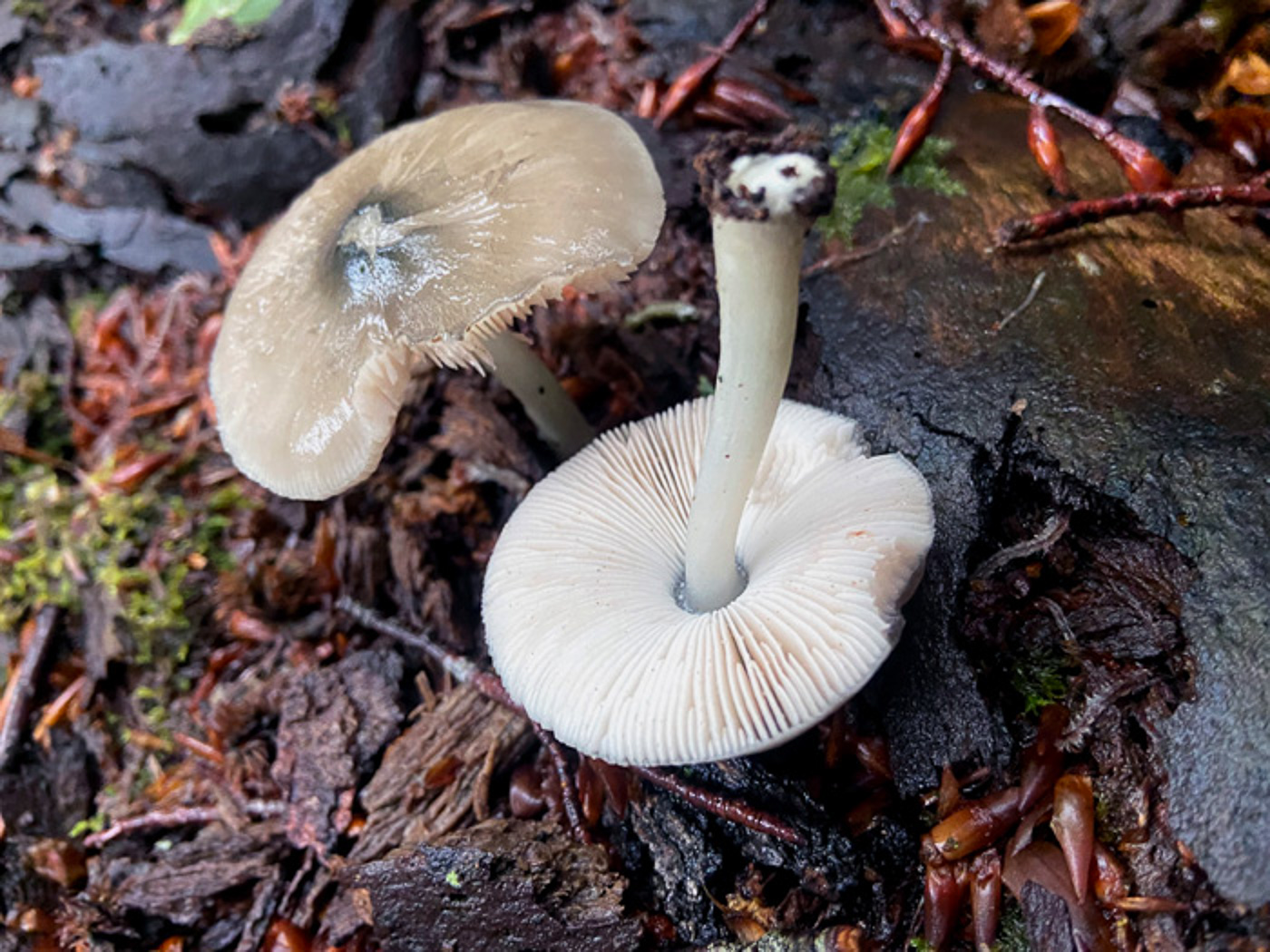 |
July 23rd Pluteus salicinus (Willow Shield) 
On fallen rotting Beech in Naphill Common Sarah Ebdon noticed this medium sized Shield but from its slightly blue/green tints suspected it might be this species which otherwise is very similar to the much more common P. cervinus (Deer Shield). The two species also share several microscopic features but differ in the cap cuticle (always an essential character to study in this genus) with clamps present in P. salicinus but absent in P. cervinus. All credit to Sarah for checking and finding them, thus confirming her ID. Despite its common name implying otherwise, this occasional species can occur on many different deciduous woods. This is a new species for Finds.
|
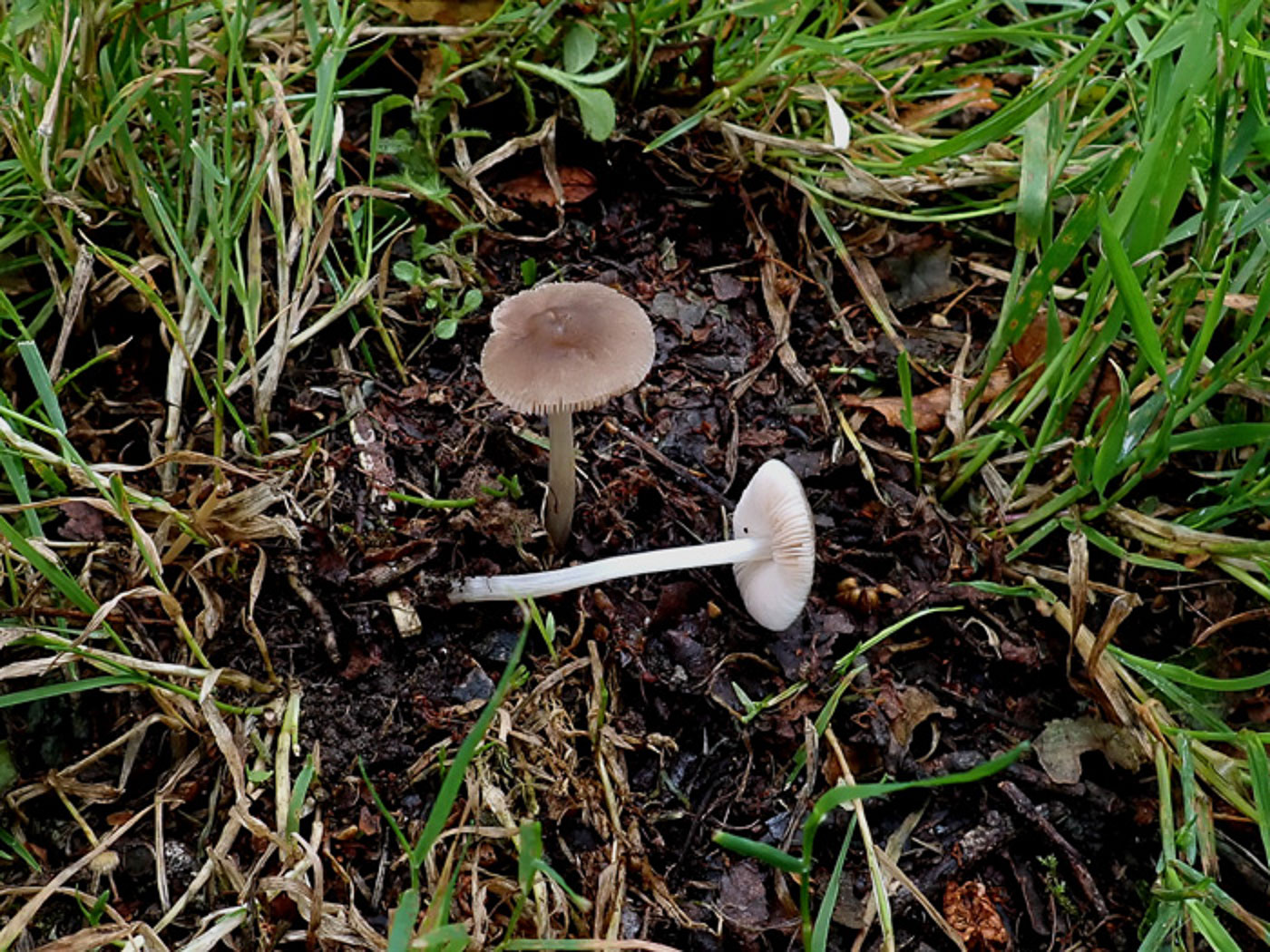
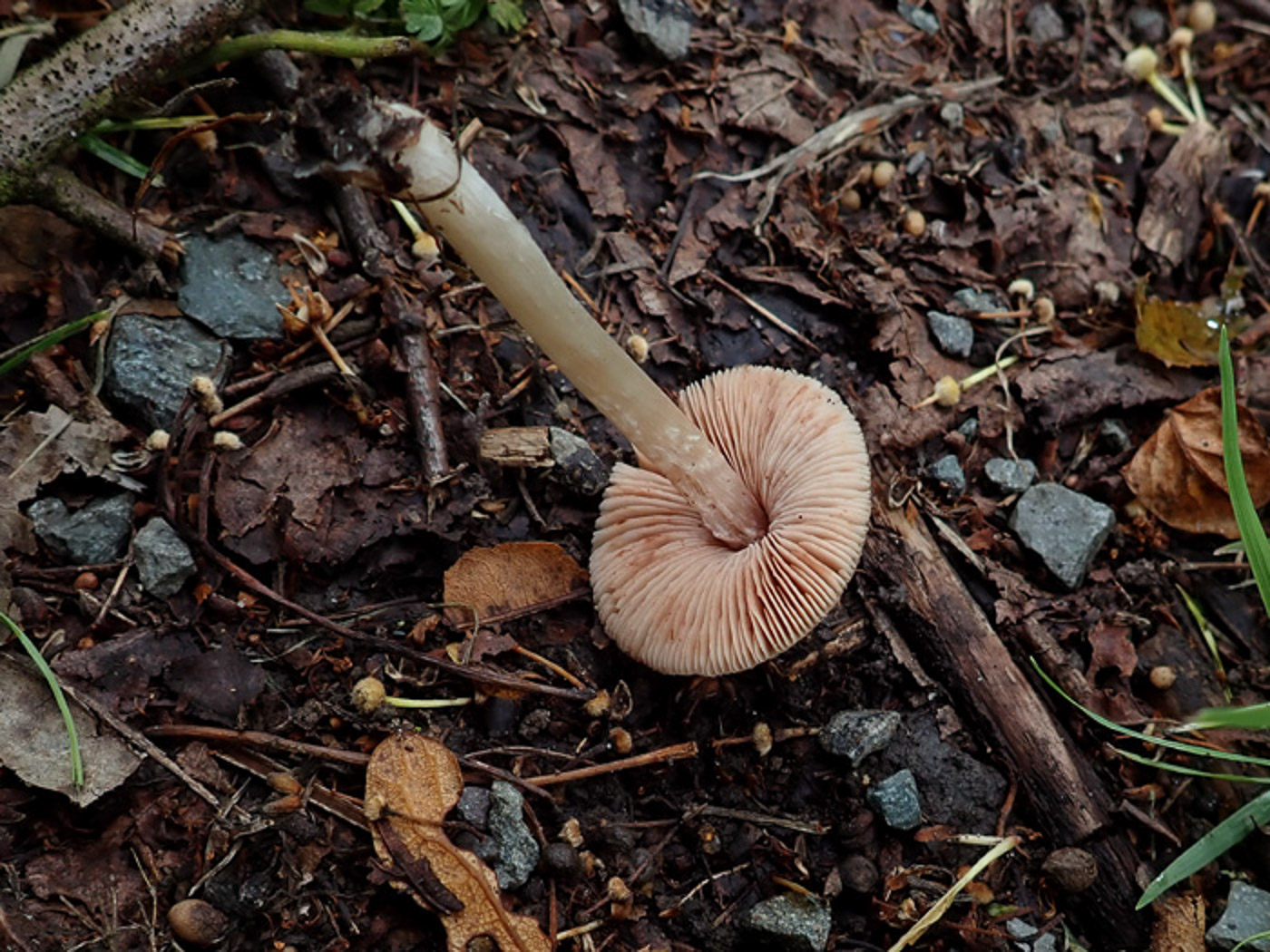 |
July 23rd Pluteus phlebophorus (Wrinkled Shield) 
Looking for Fibrecaps at Turville Heath in the Lime avenue, Penny found two smallish LBJs apparently on soil. Turning one over she recognised the genus from the free crowded gills just beginning to turn pinkish. Further on a larger one was spotted, cap 2.5cm across, with considerably darker pink gills (photo 2) but also not apparently on wood. Microscopic characters determined the species which has a wrinked / slightly veined surface (not visible here, sorry), and this only goes to prove that this genus - described as occurring on fallen wood - can sometimes occur on woodchip, woody debris or even submerged wood or roots as presumed here. See also in Finds 2020 October 12th and 2022 December 6th.
|
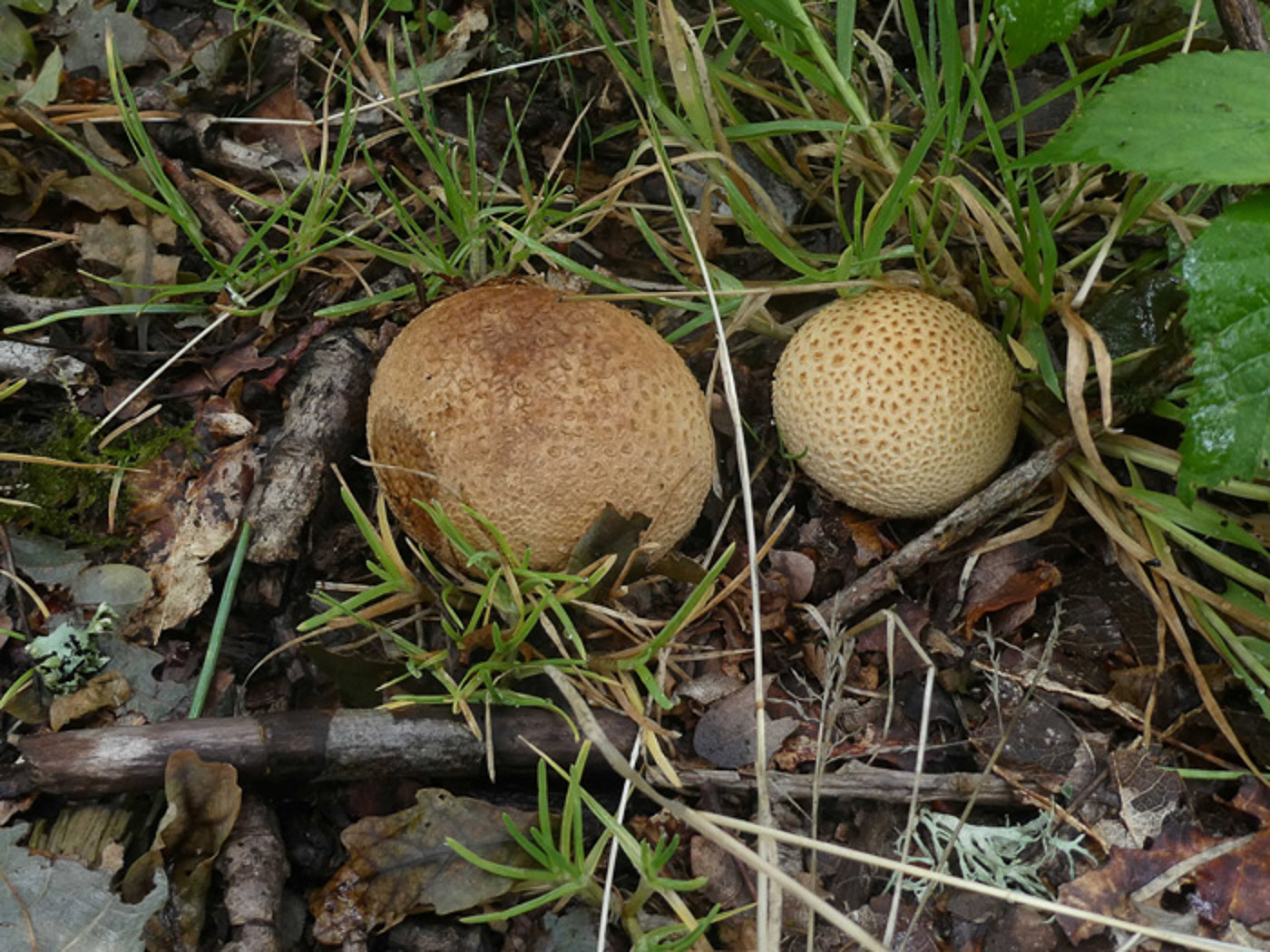
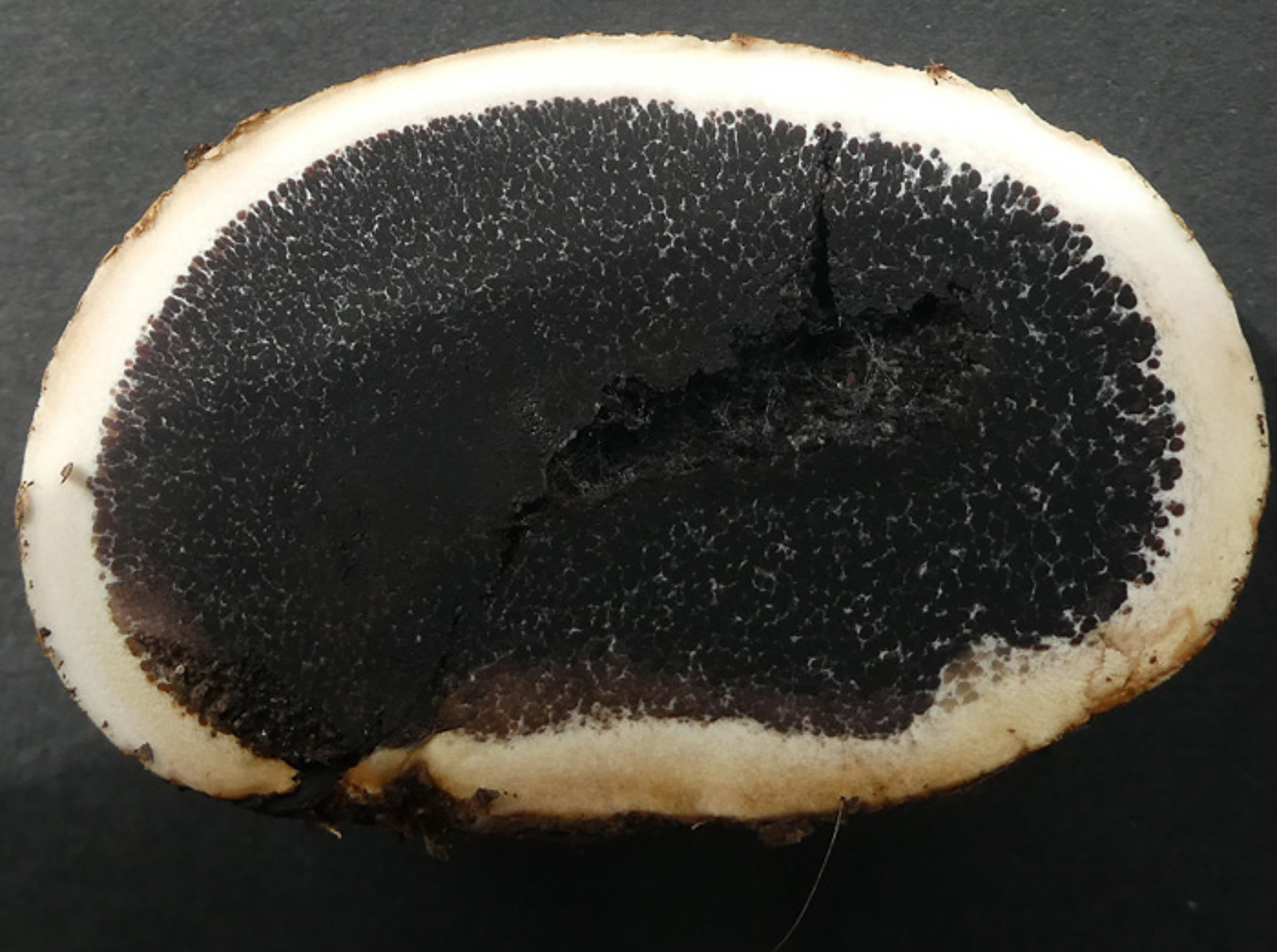 |
July 23rd Scleroderma citrinum (Common Earthball) 
Jim Wills found this common species (also other Earthballs) now beginning to pop up in many places in Gerrards Cross Common. Though often with a yellower colour than seen here, the large distinct scales, lack of stem and notably thick skin (up to 3mm in places) made Jim fairly sure of his ID. For confirmation he then with a scope checked and found clamps in the skin (lacking in both S. areolatum and S. verrucosum). Look for this genus under Oak with which it often associates. See also in Finds 2020 September 20th and 2021 February 1st and July 28th.
|
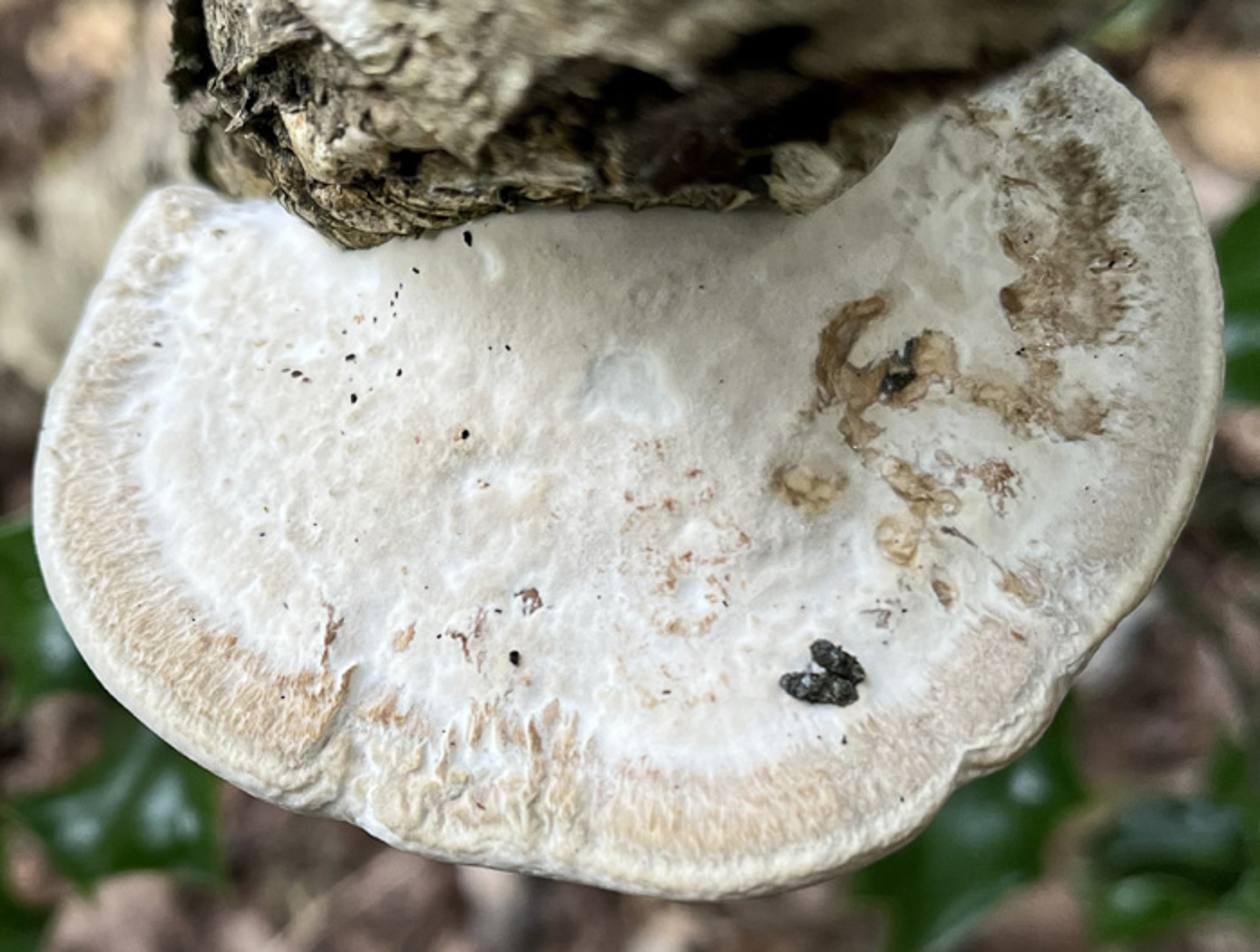
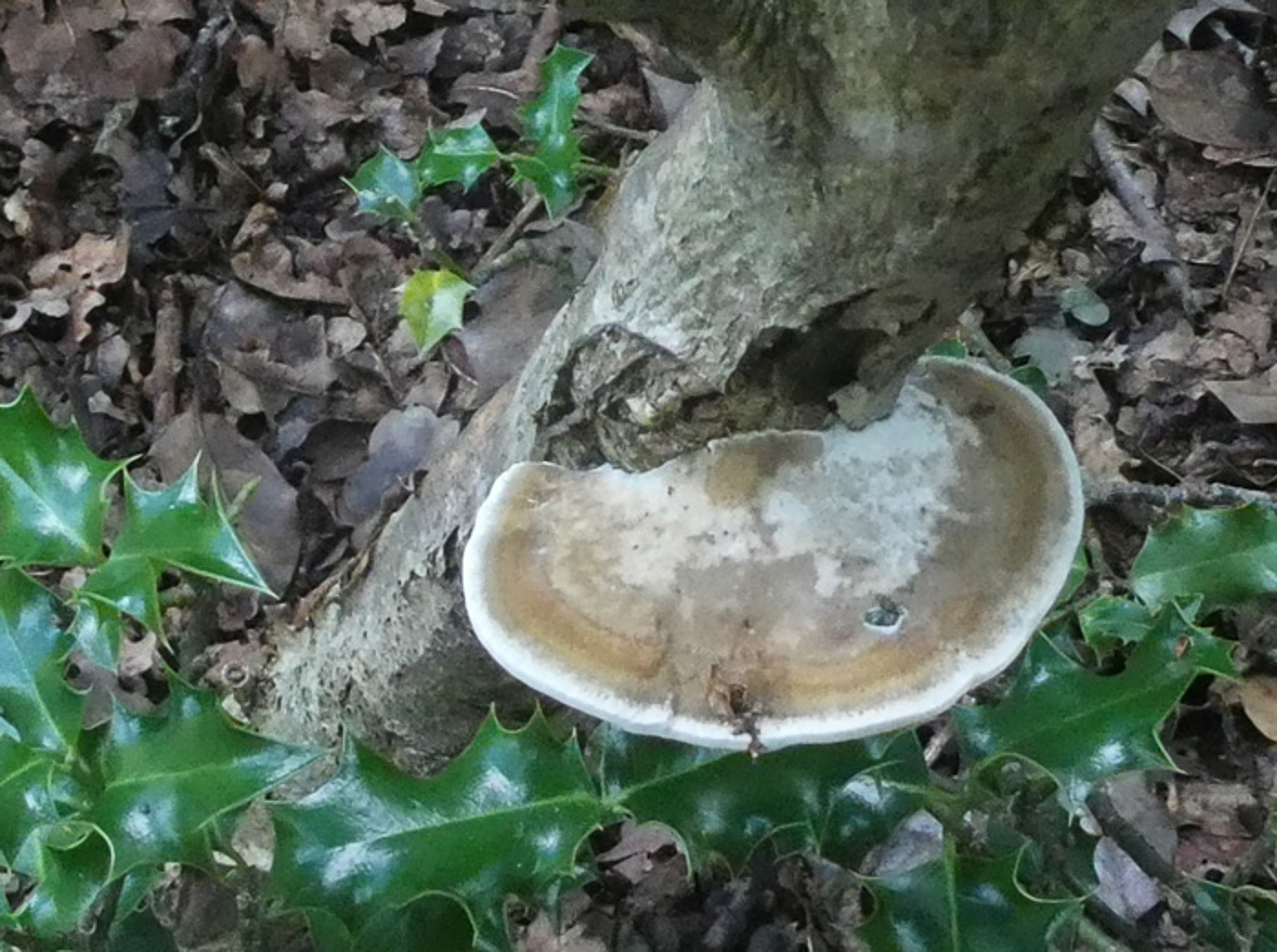
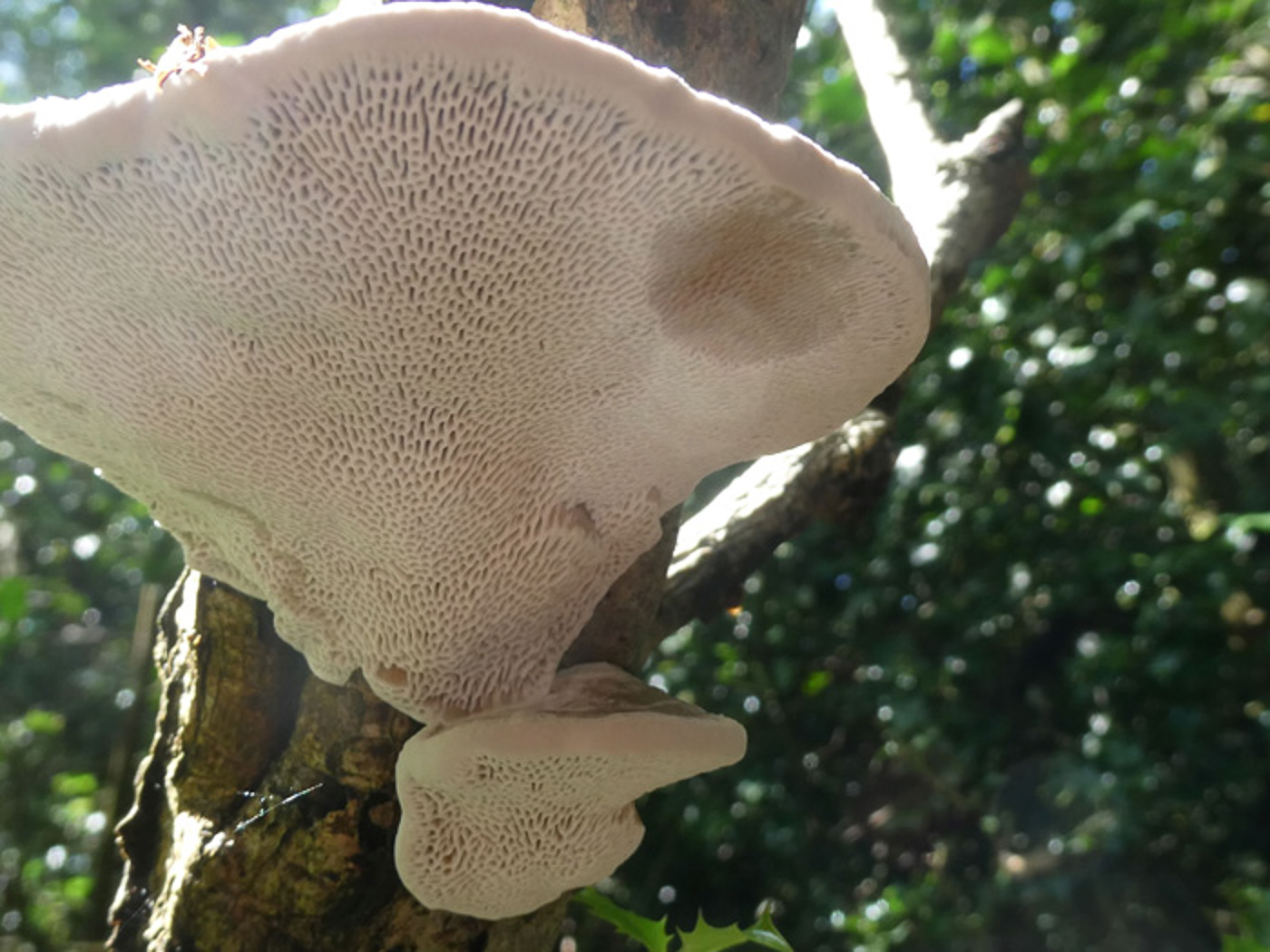 |
July 23rd Daedaleopsis confragosa (Blushing Bracket)
Though last year's rather blackened fruitbodies of this very common species are still around at the moment, Jim Wills noticed this fresh specimen in Gerrards Cross Common on dead standing Ash. Though unusually pale above (photo 1 taken 2 days earlier) the typical radial markings towards the margin can be seen, and photo 2 shows the browner colour already developing. The fresh white labyrinthine pores showing Jim's thumbprint, now pink, are surely diagnostic. Check the Masterlist for a range of other examples.
|
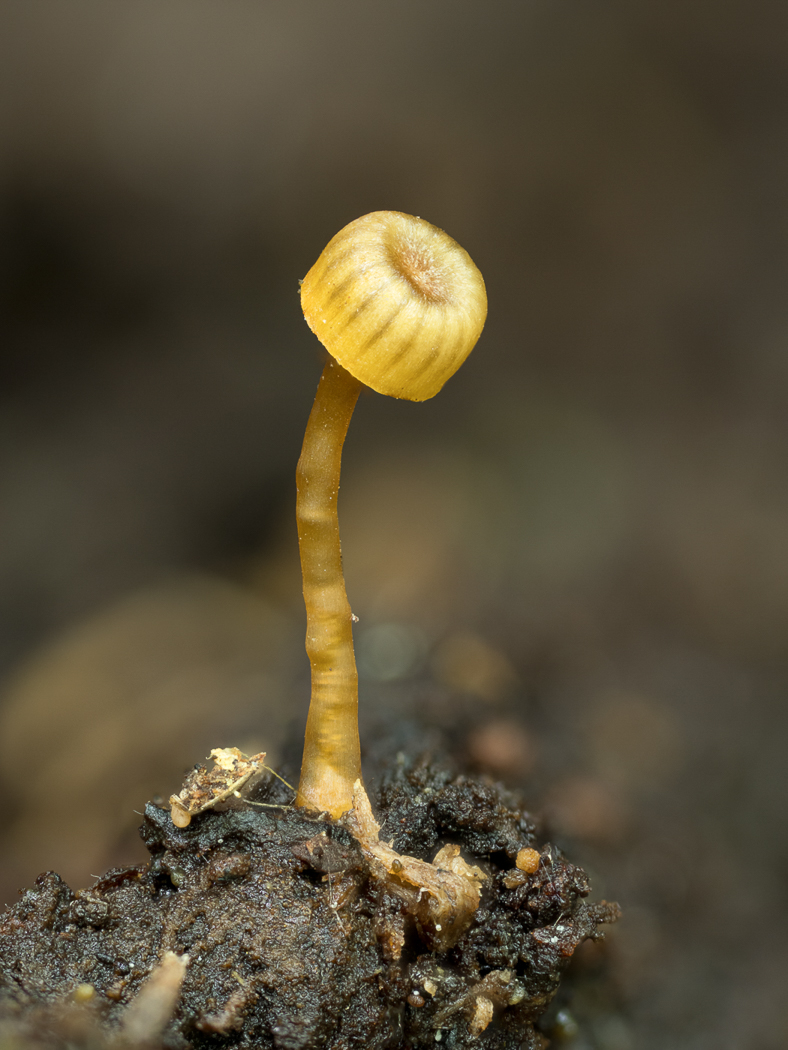
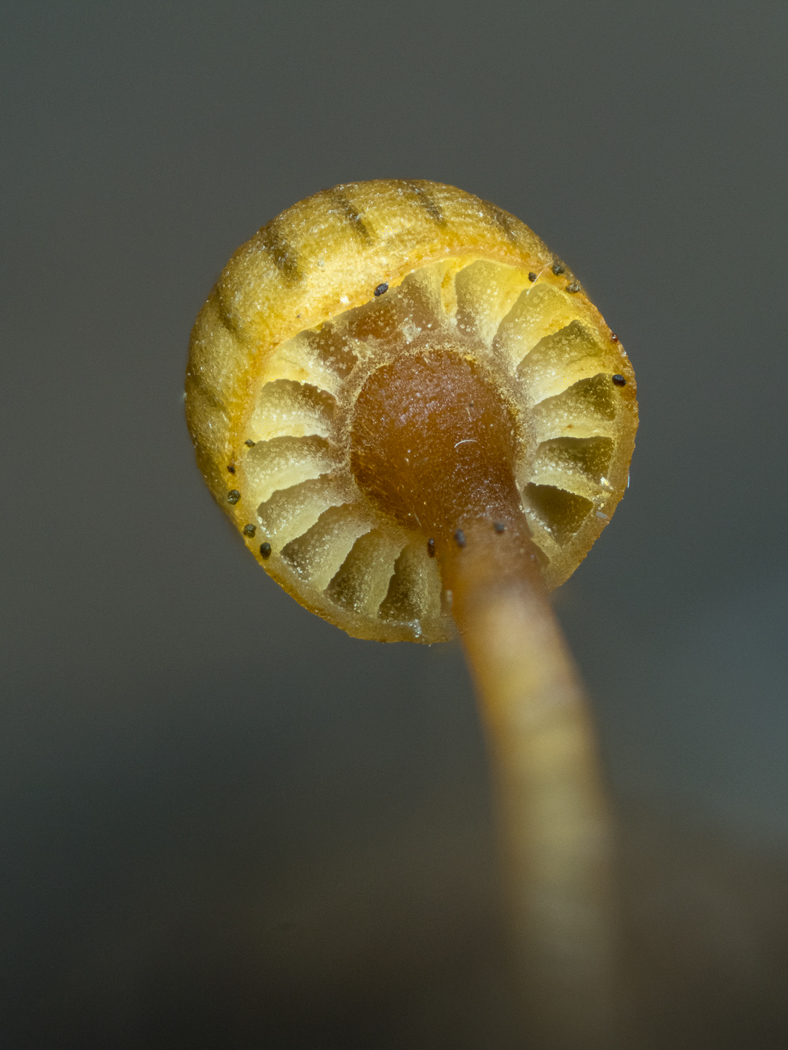
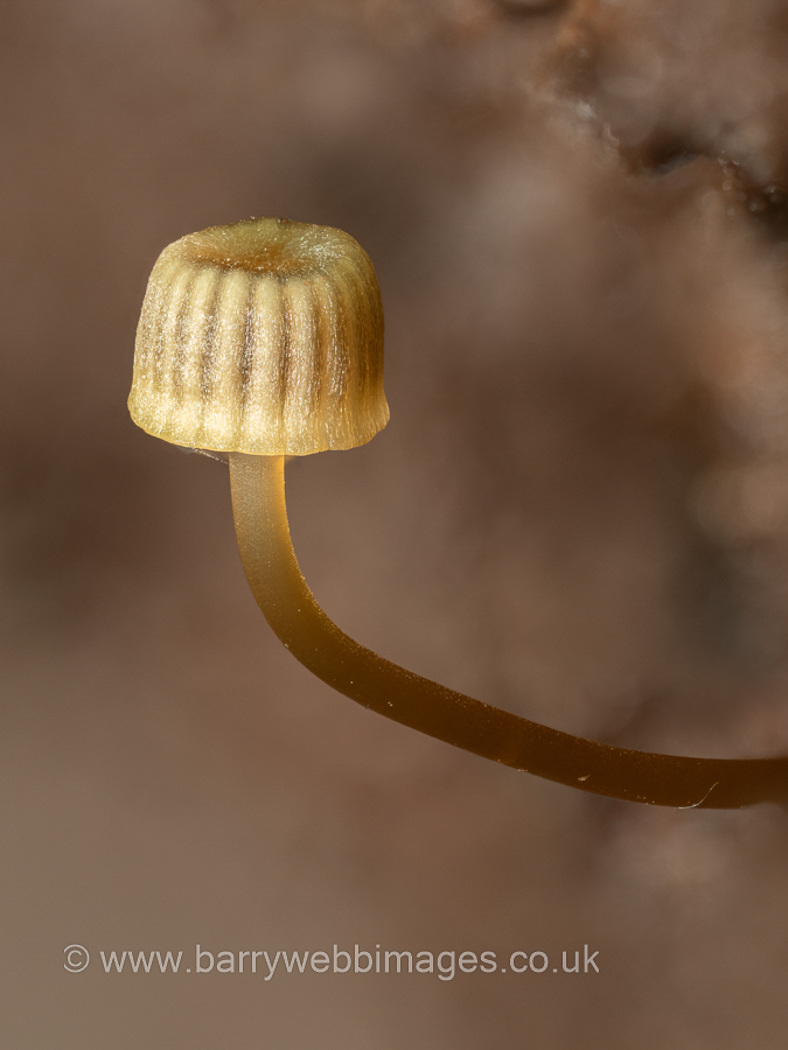 |
July 21st Mycena picta (Cryptic Bonnet) 
In Burnham Beeches Stephen Plummer spotted this tiny but exquisite little Bonnet on rotten woody debris in a marshy woodland area but had no idea what it might be, guessing at possibly Marasmius. Barry Webb was luckily at hand to take the photos which, hoping for help with ID, were then sent to Penny who recognised it instantly despite never having found it herself! Photo 3 is of a further find made by Barry here three weeks later. This is a very rare Mycena, unique in appearance with its flat-topped cap with translucent fluted straight sides, almost horizontal gills enclosed within and a thick mass of mycelial strands attaching it to the substrate. In fact Barry found it in a different area at this site in 2021 when it was new to the site and the county (see Finds 2021 October 16th). Penny is green with envy and congratulates Stephen for finding such a special little mushroom.
|
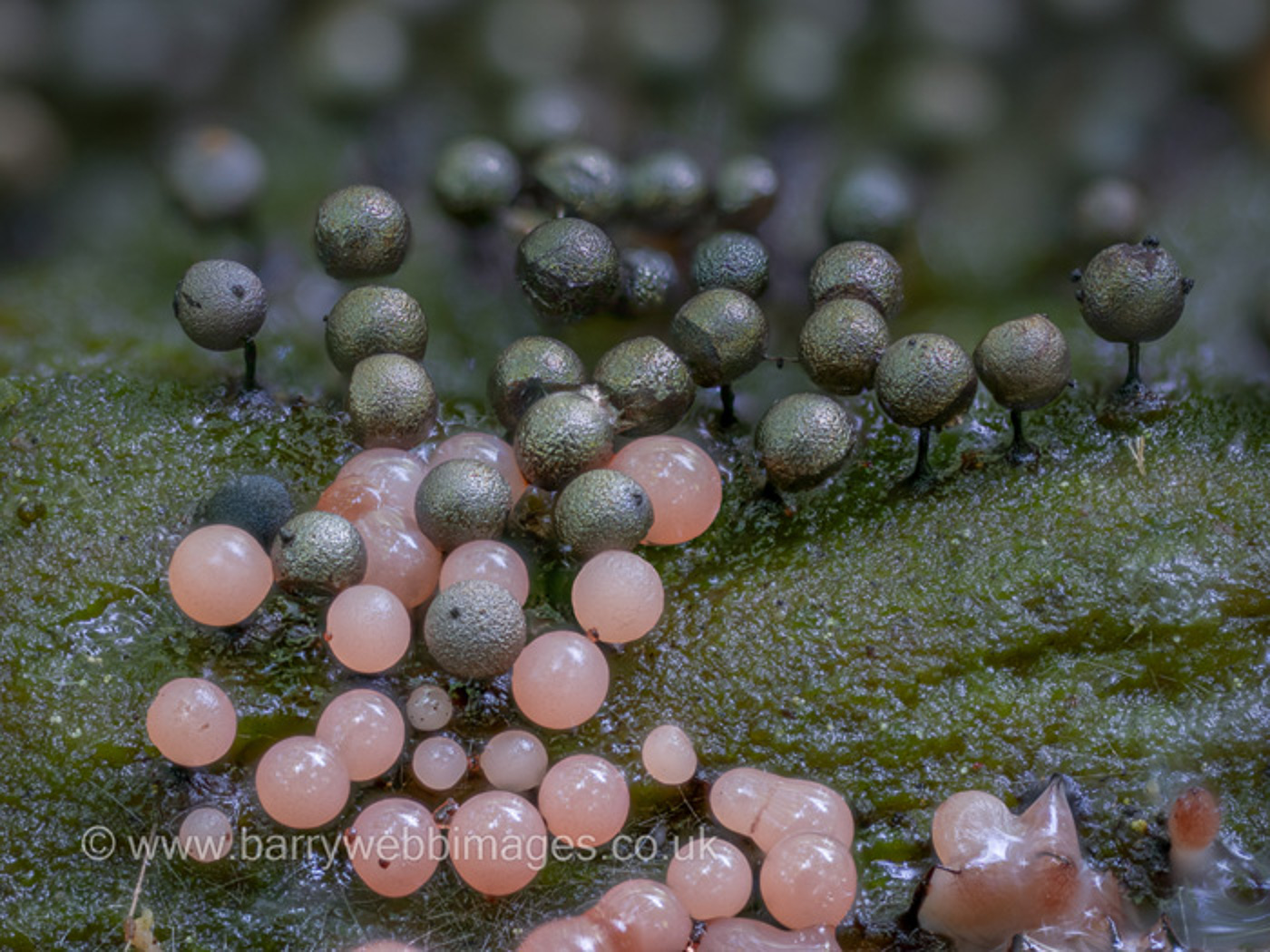 |
July 21st Collaria arcyrionema (a Slime Mould with no common name)
In Burnham Beeches Barry Webb had a field day together with Gill Ferguson and Stephen Plummer, finding 20 different species of Slime Mould including this one on rotten wood. Members of this genus are notable for their iridescent glinting colours as they mature, and this delightful photo conveniently shows the species at two different and equally beautiful stages. They may look as big as puffballs here but in fact are less than 2.5mm high! This is a new species for Finds.
|
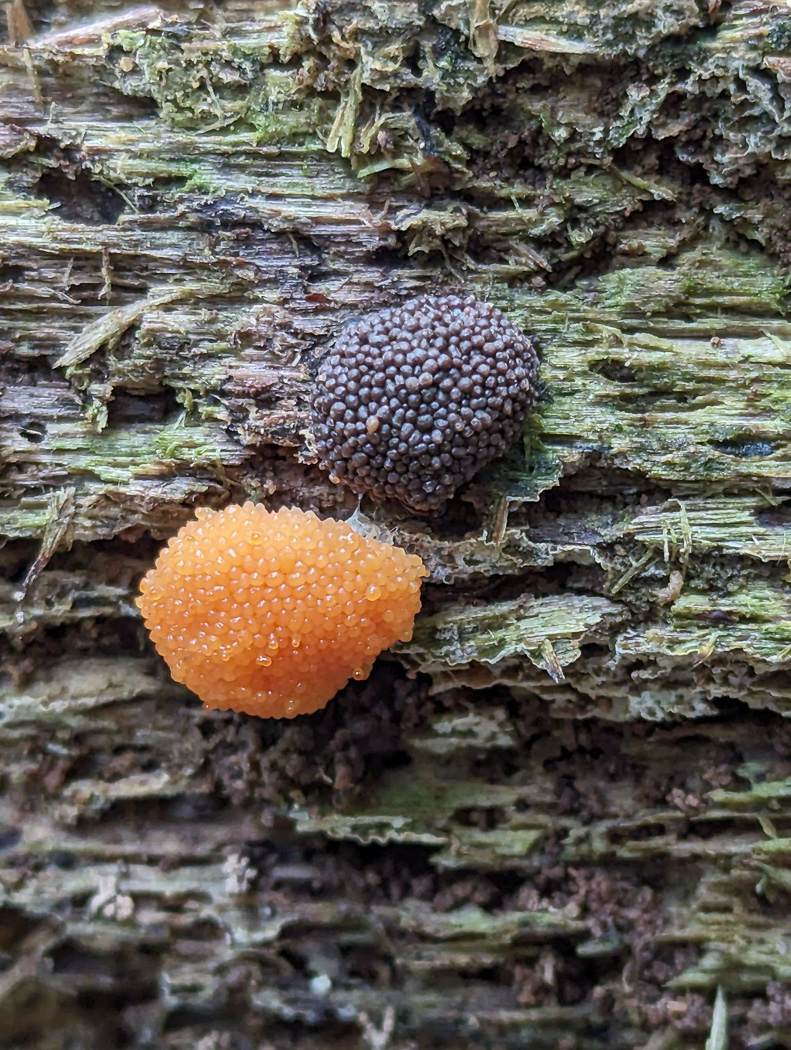
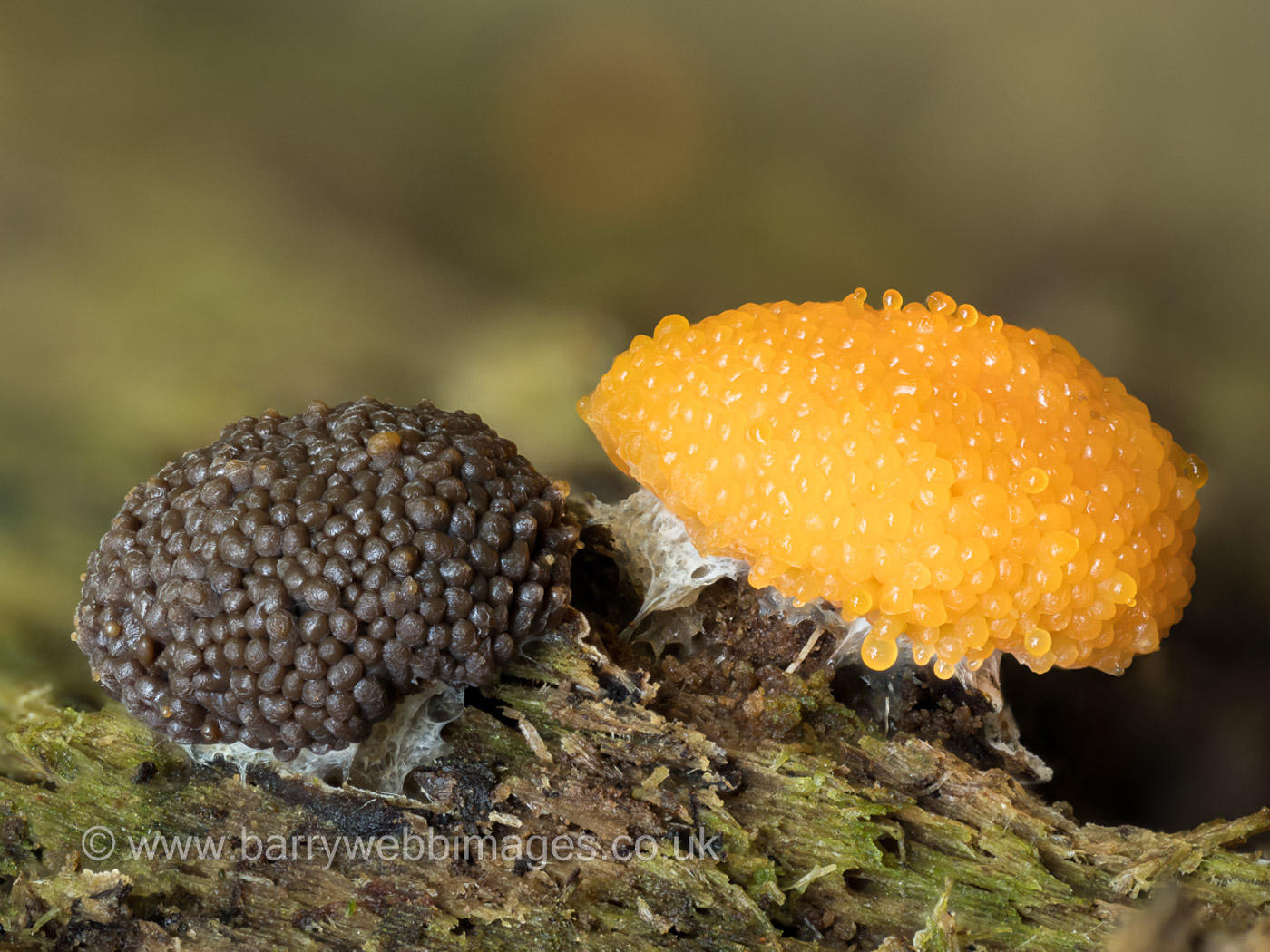 |
July 21st Tubifera ferruginosa (Raspberry Slime)
In Burnham Beeches on fallen damp conifer Gill Ferguson spotted the striking peachy orange immature stage of this quite common Slime Mould, then found that conveniently adjacent to it was a rapidly maturing patch of the same species. This is one of extremely few Slime Moulds which can be identified at this early stage of development, purely through its startlingly bright colour, ranging from orange through to pink - the vast majority of Slime Moulds have white plasmodium - and occurrence on conifer wood. Once mature the dull dark brown is well camouflaged on its woody substrate and much less impressive. (Photo 2 is Barry Webb's). See the Masterlist for further examples.
|
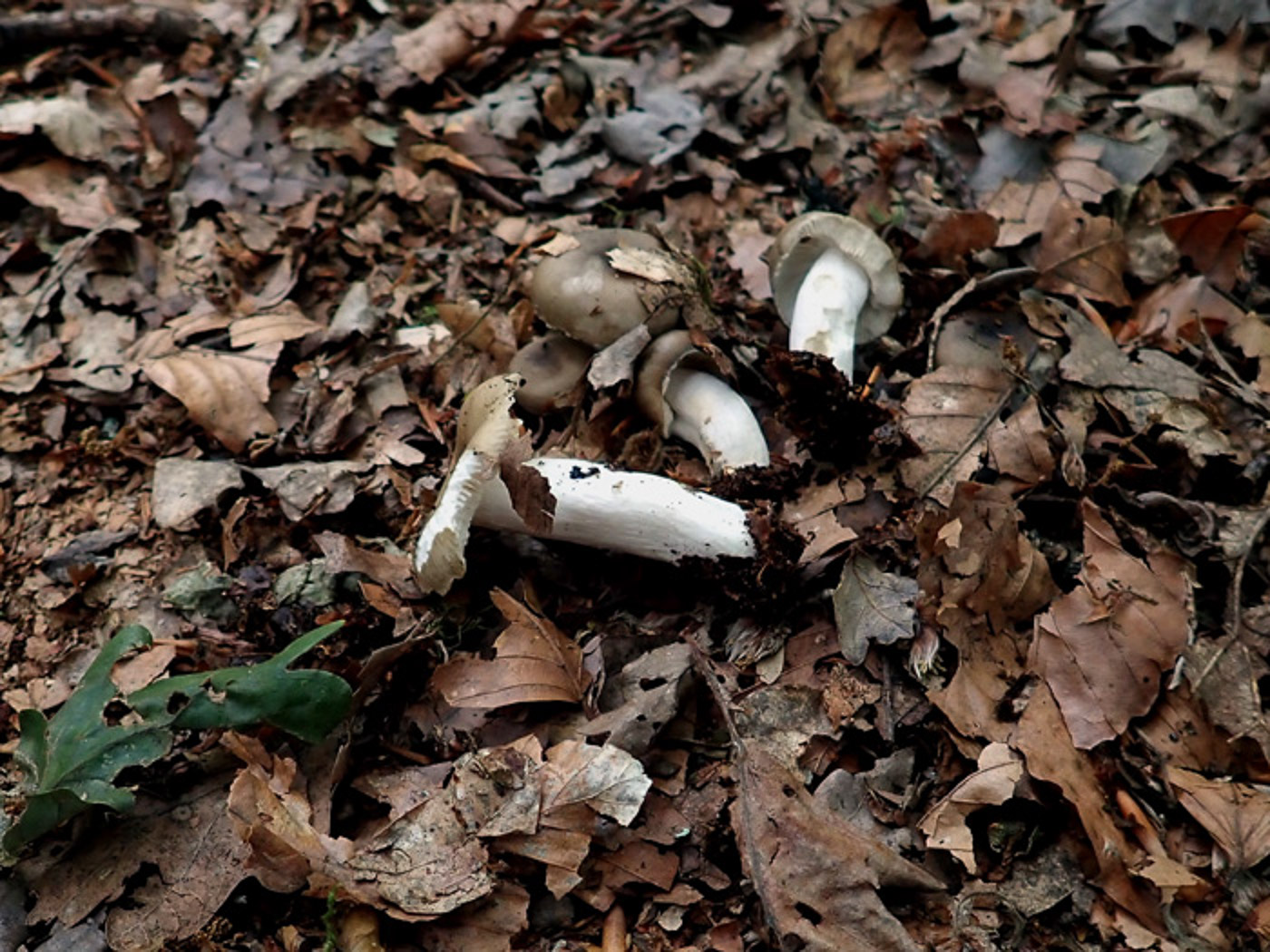
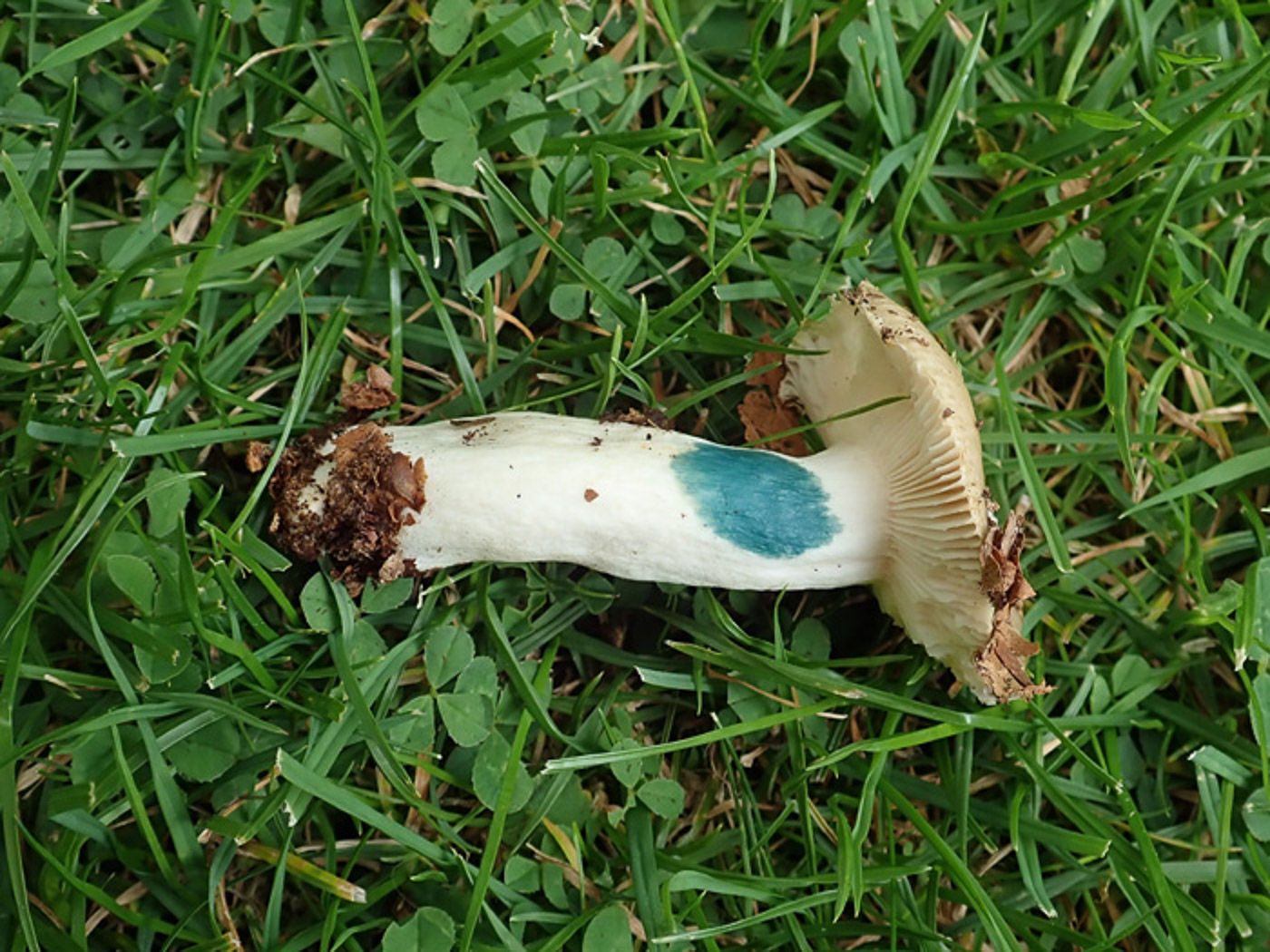
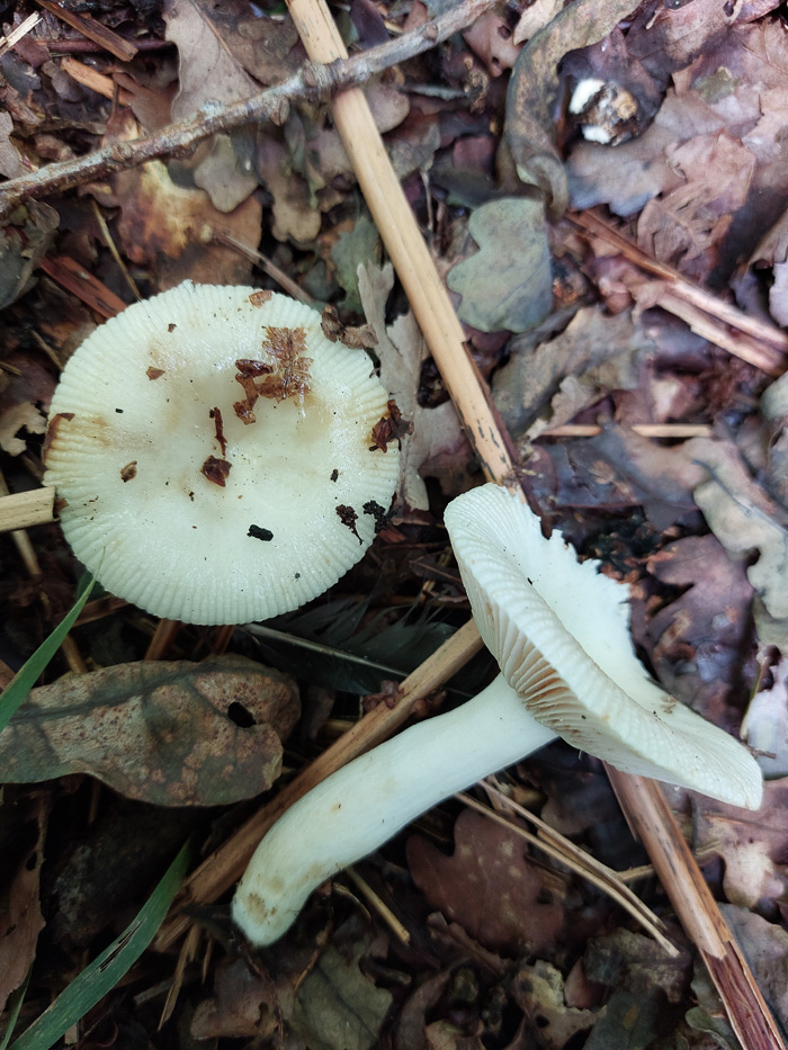 |
July 21st Russula amoenolens (Camembert Brittlegill)
In Marlow Common Penny spotted these well camouflaged brown caps pushing through the thick leaf litter under Oak (can you spot 6 caps in photo 1?). At home she tested the stem with Guaiac to confirm her ID (photo 2): instantly bright blue in this common species but with little or no colour change in the extremely similar and much rarer R. sororia (Sepia Brittlegill - see below on July 17th for Jesper's photo of that species). The two species are closely related, belonging to the so-called 'smellies' and with complex unpleasant smells - today's species with a cheesy component and R. sororia with a more rancid but fruity component. Photo 3 shows the rare entirely white form of this species, found by Jesper Launder in Gerrards Cross Common a few days later. See also in Finds 2021 July 16th and 2022 September 24th.
|
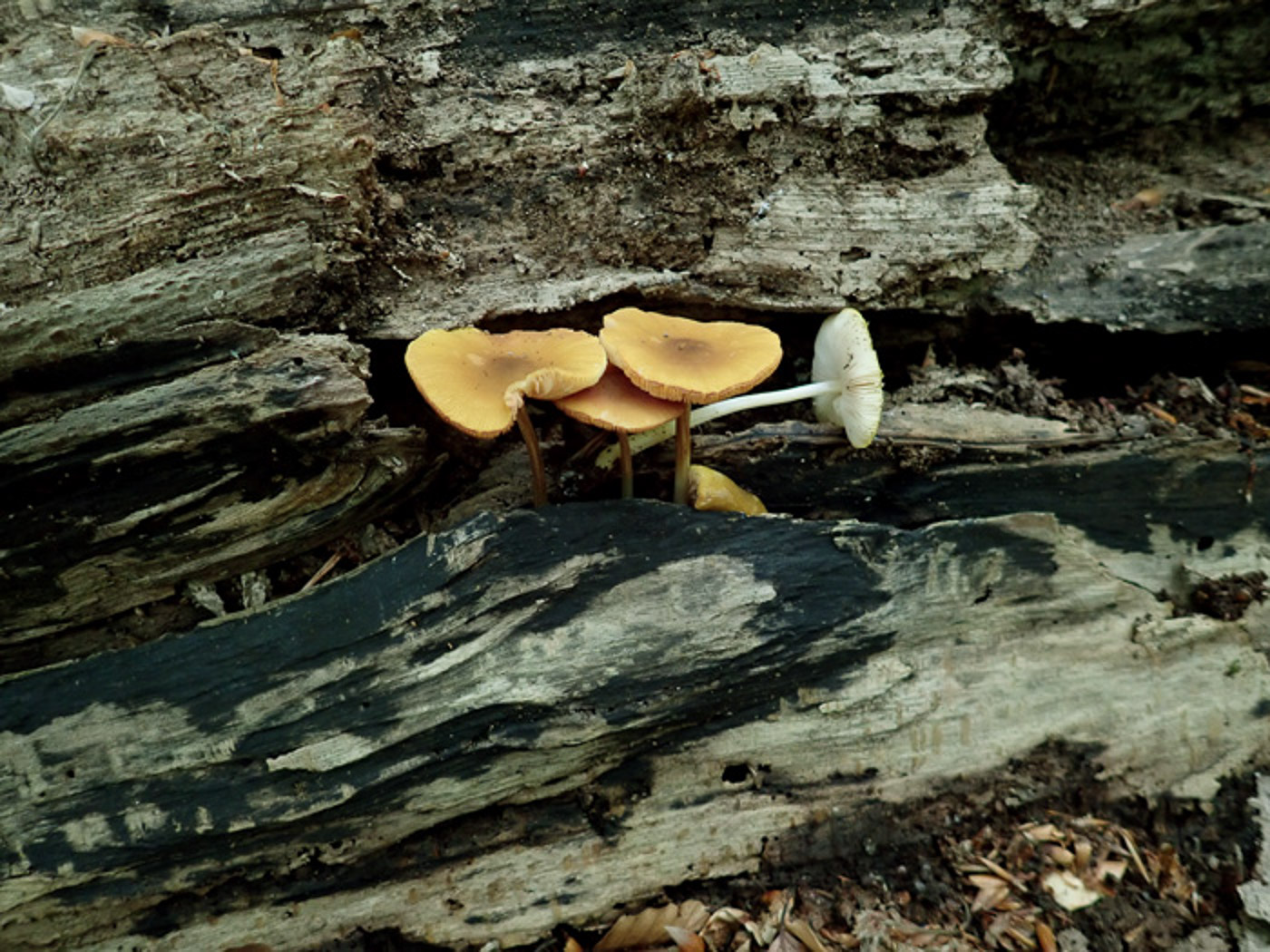
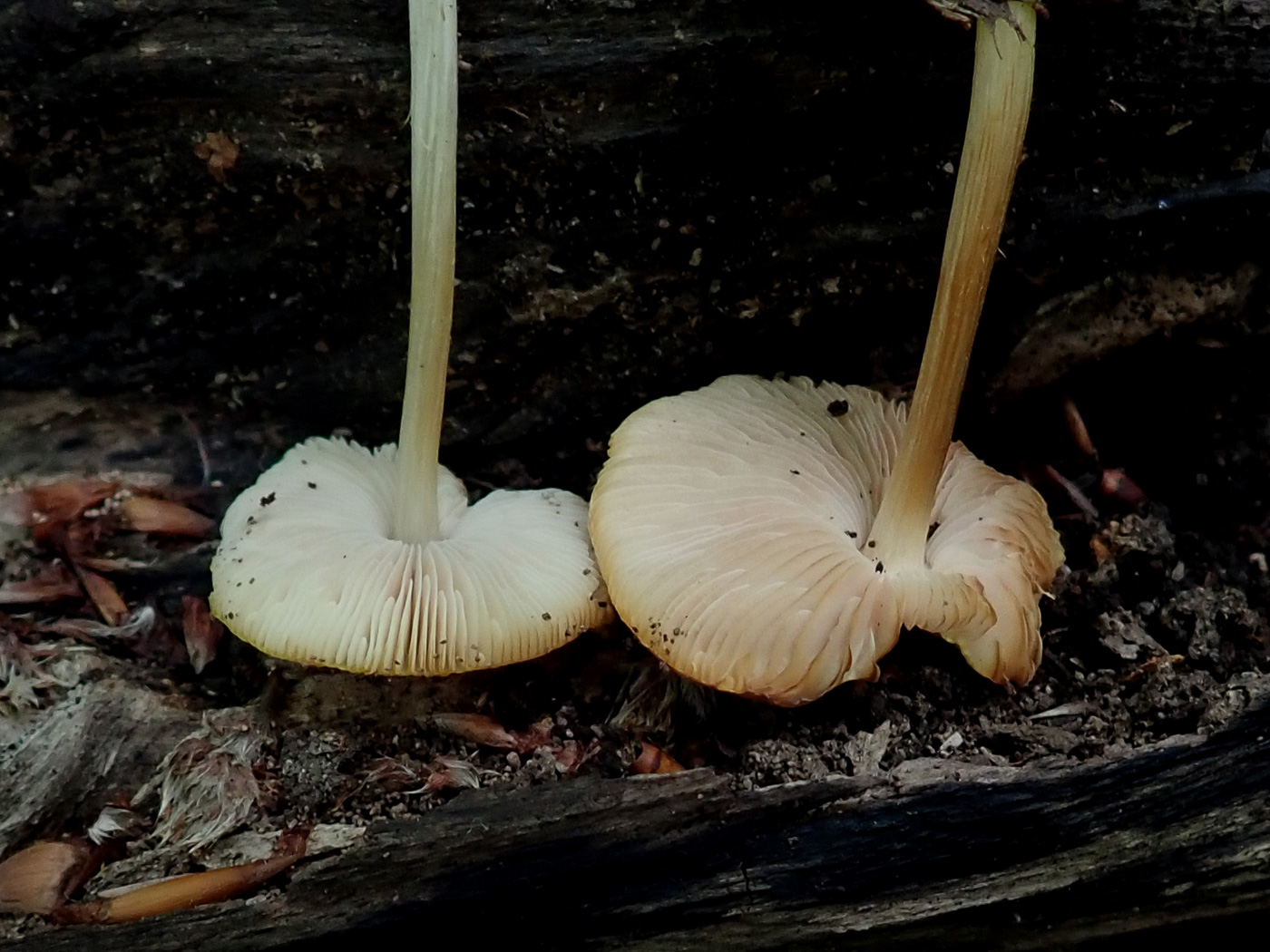 |
July 21st Pluteus chrysophaeus (Yellow Shield) 
In Pullingshill Wood Penny found very little but did spot a fallen deciduous log with this attractive and distinctive species. There are just two species of Shield with smallish yellow caps, this being by far the commoner of the two but making it necessary to check the cap cuticle with a scope: having round cells in today's species but cylindrical cells in P. leoninus (Lion Shield). Note the typical crowded gills of the genus turning gradually pink in maturity (photo 2). (In Kibby vol 2 this species is named P. chrysophlebius, not yet accepted in Index Fungorum.) See also in Finds 2021 September 21st and 2022 October 12th.
|
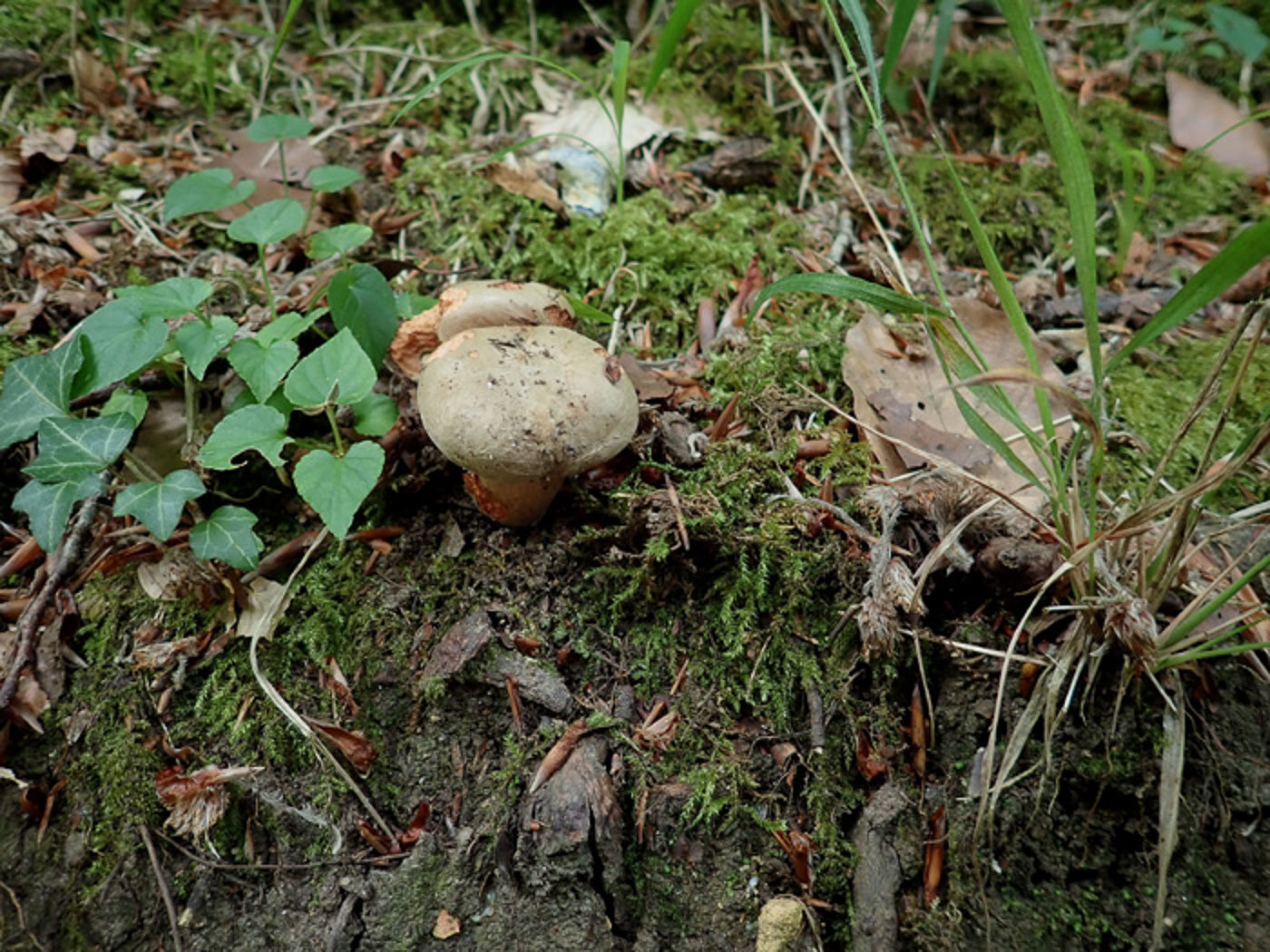
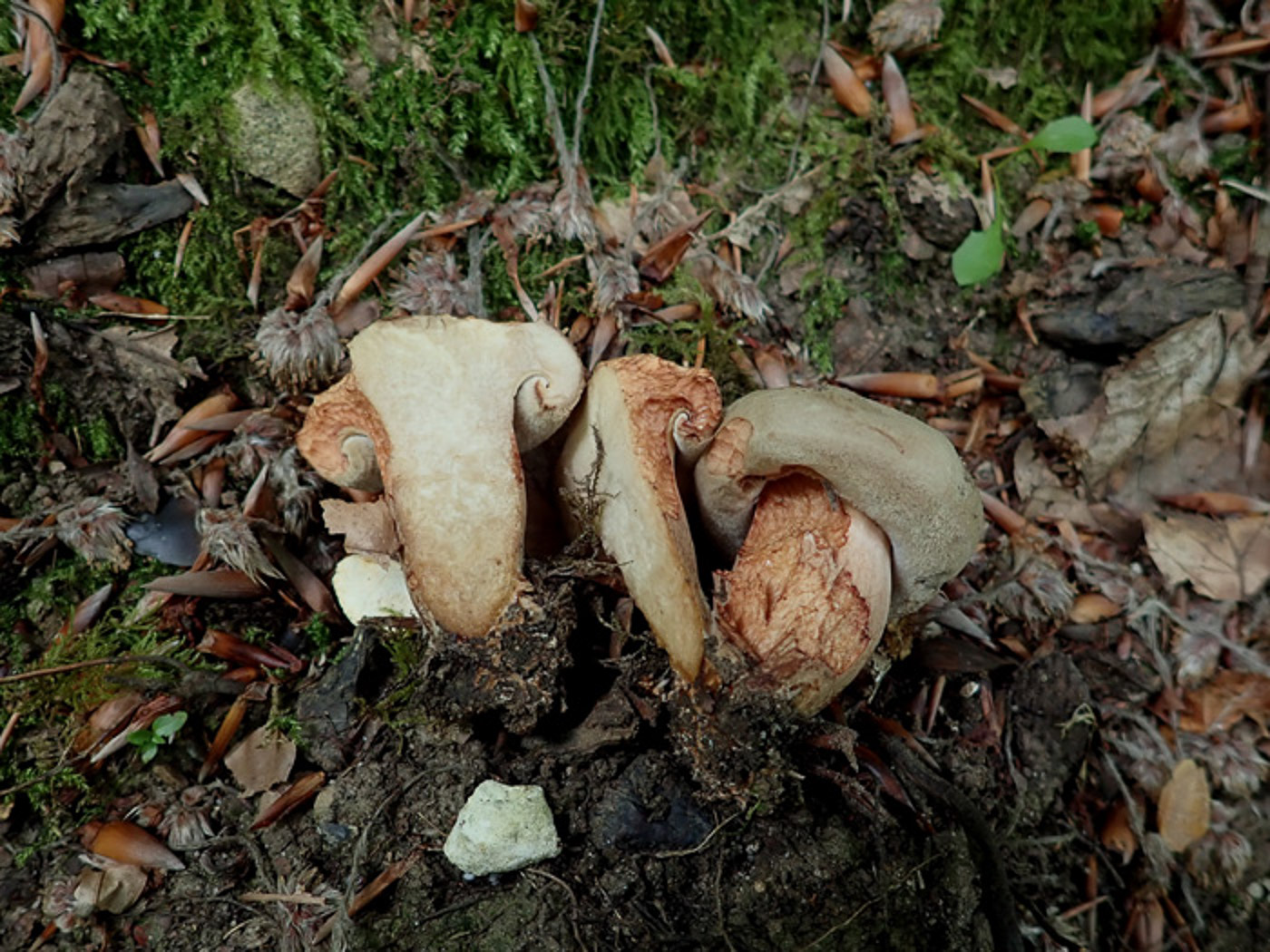
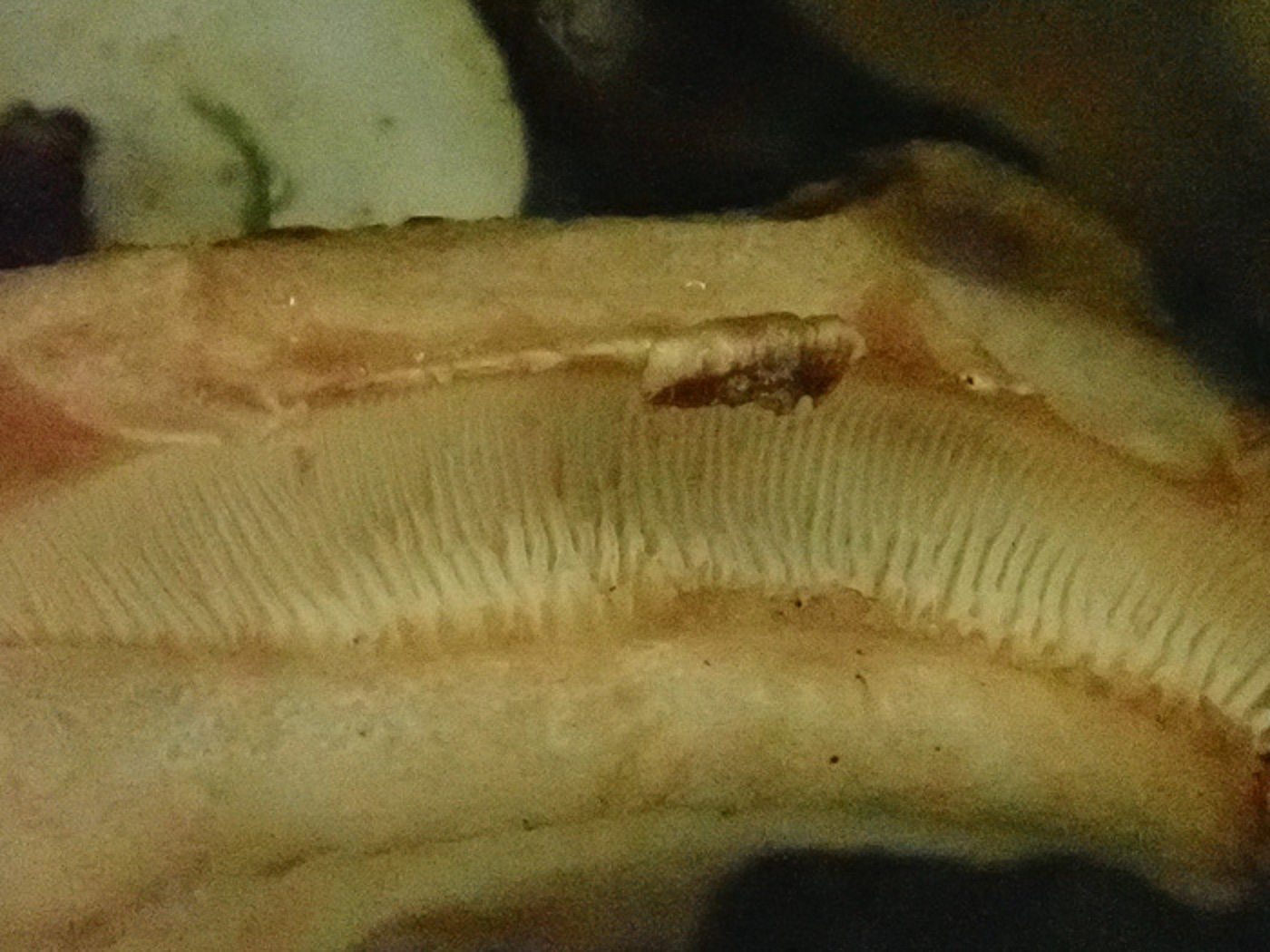 |
July 21st Paxillus involutus (Brown Rollrim)
In Mousells Wood Penny noticed these adjoining buttons on a wooded pathside bank and took them for immature Boletes until turning them over revealed the tightly inrolled caps and reddish flesh where damaged pointing to P. involutus, though neither gills nor pores were as yet visible. Breaking the inrolled edge off and checking with a x10 lens it was just possible to make out the undeveloped gills confirming this was not a Bolete (photo 3). Paxillus is (perhaps surprisingly) closely related to the Boletes despite over the millennia developing gills as opposed to pores underneath, hence the similarity when viewed purely from above. See the Masterlist for other examples showing it at maturity when the cap is no longer inrolled.
|
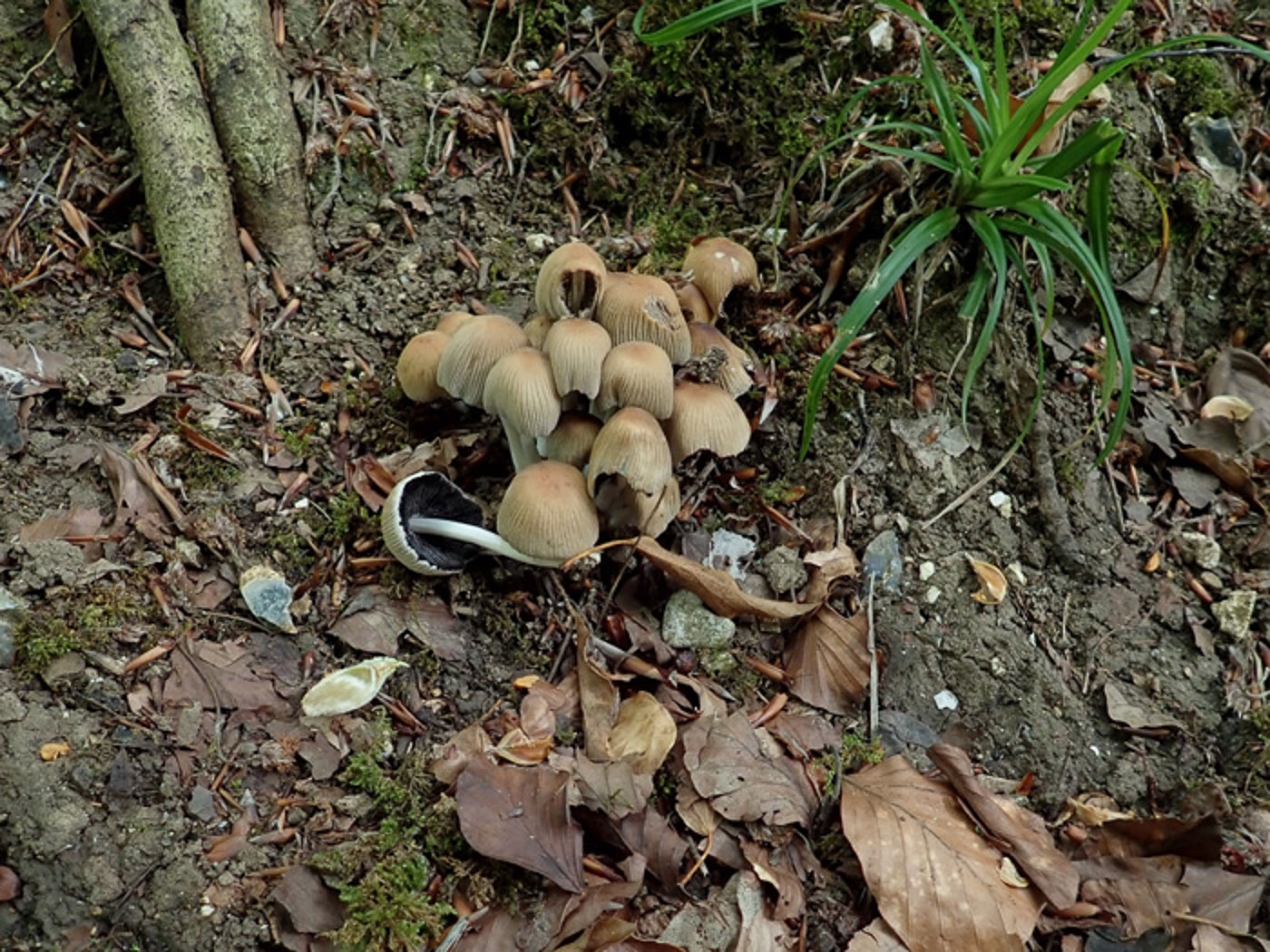 |
July 21st Coprinellus micaceus (Glistening Inkcap) 
At Mousells Wood Penny found this clump on a wooded pathside bank, then checked the spore shape and noted the cap was suitably covered in tiny flecks of veil confirming its identity though these were not visible in the field. See the Masterlist for further examples.
|
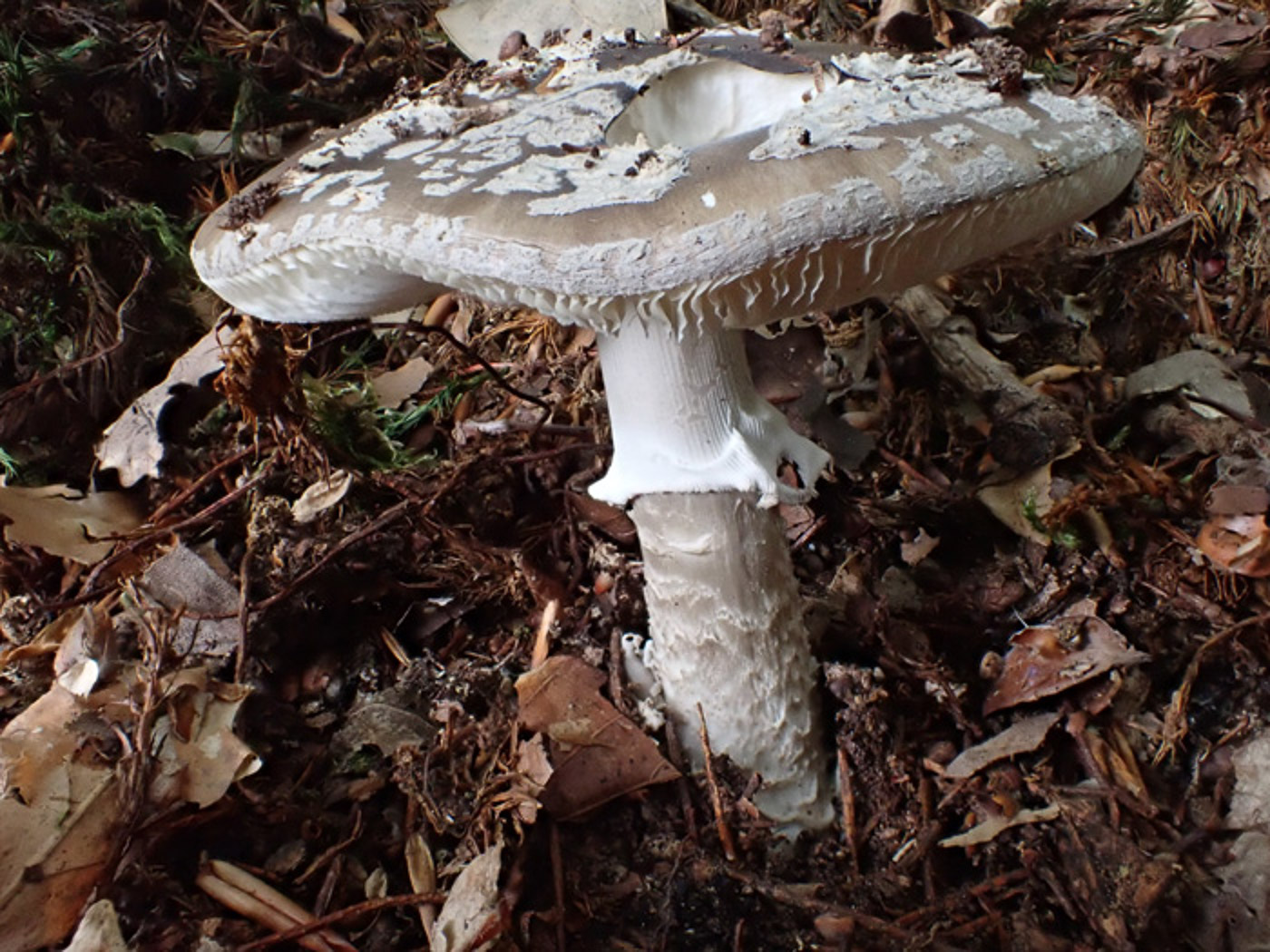
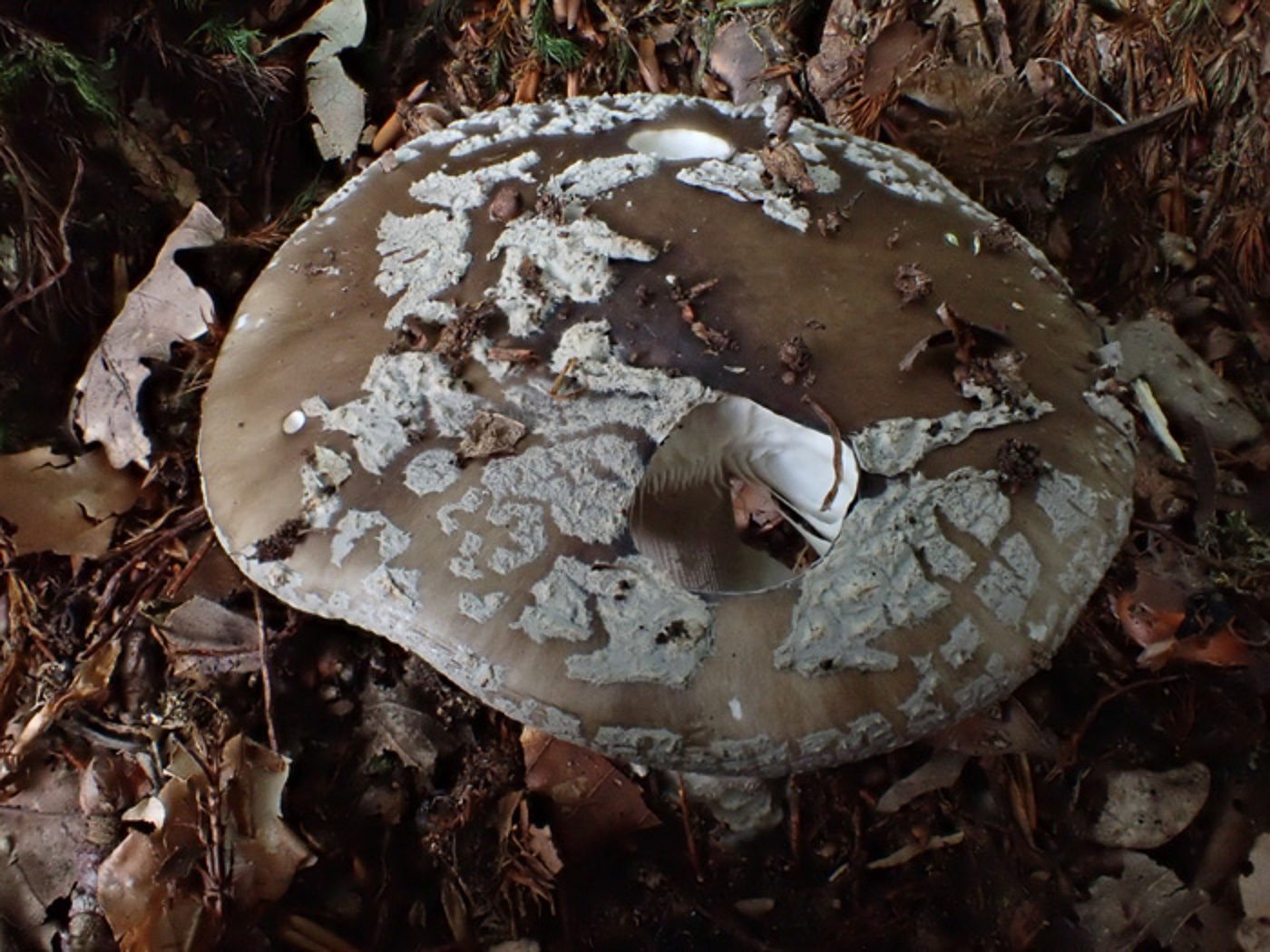 |
July 21st Amanita excelsa var. spissa (Grey spotted Amanita)
At Burnham Beeches Stephen Plummer found this nice example of a common species which often sometimes gets misnamed - either as a Blusher or as a Panthercap. Similar to A. rubescens (see just below) it does not 'blush' were damaged and tends to have more brown in the cap colour with conspicuous grey velar patches (not white as in A. pantherina). Note also the striations imprinted onto the upper stem, present also in Blusher but absent from Panthercap which incidentally also has a much more prominent volva than today's species. See the Masterlist for further examples.
|
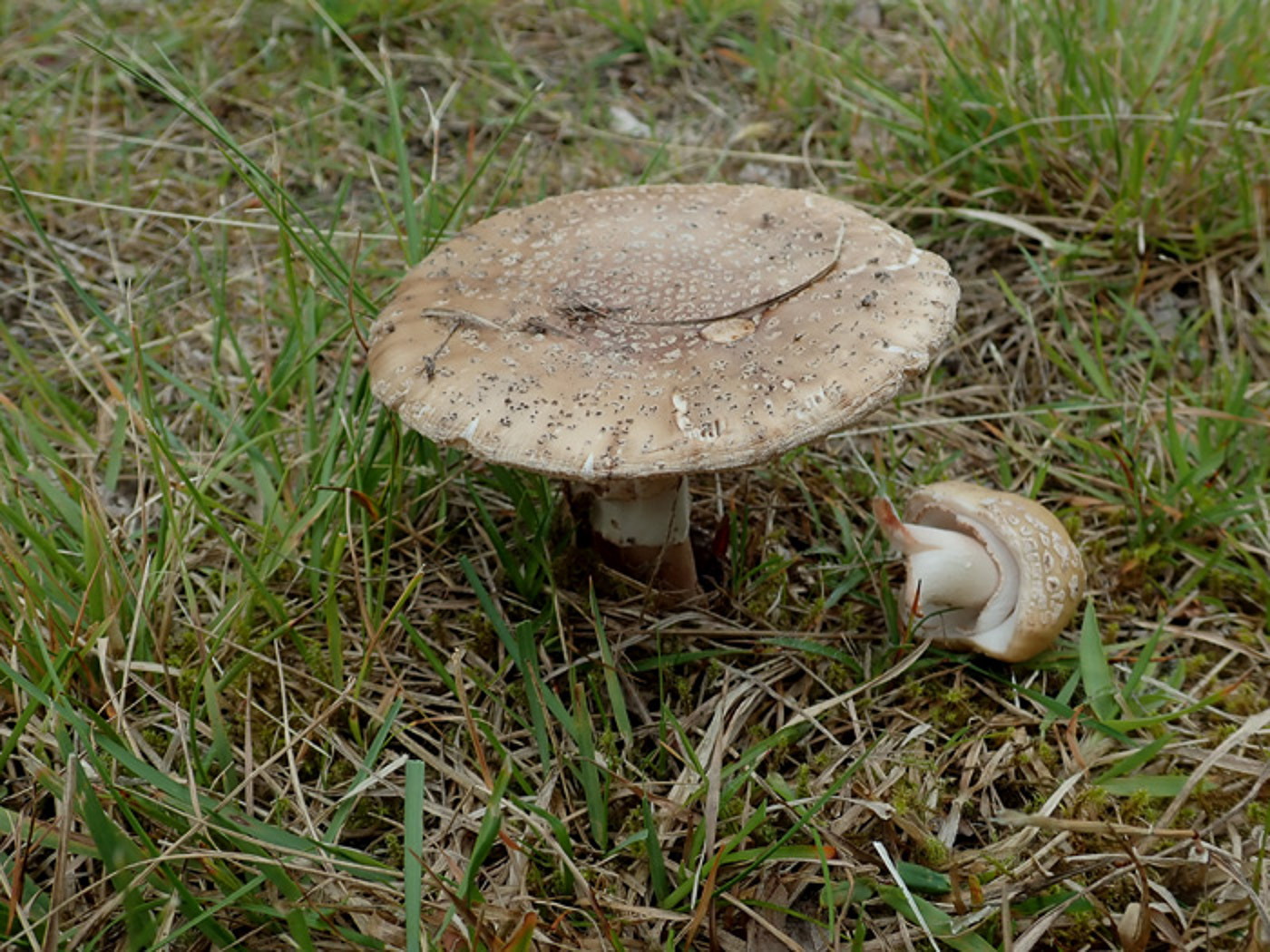
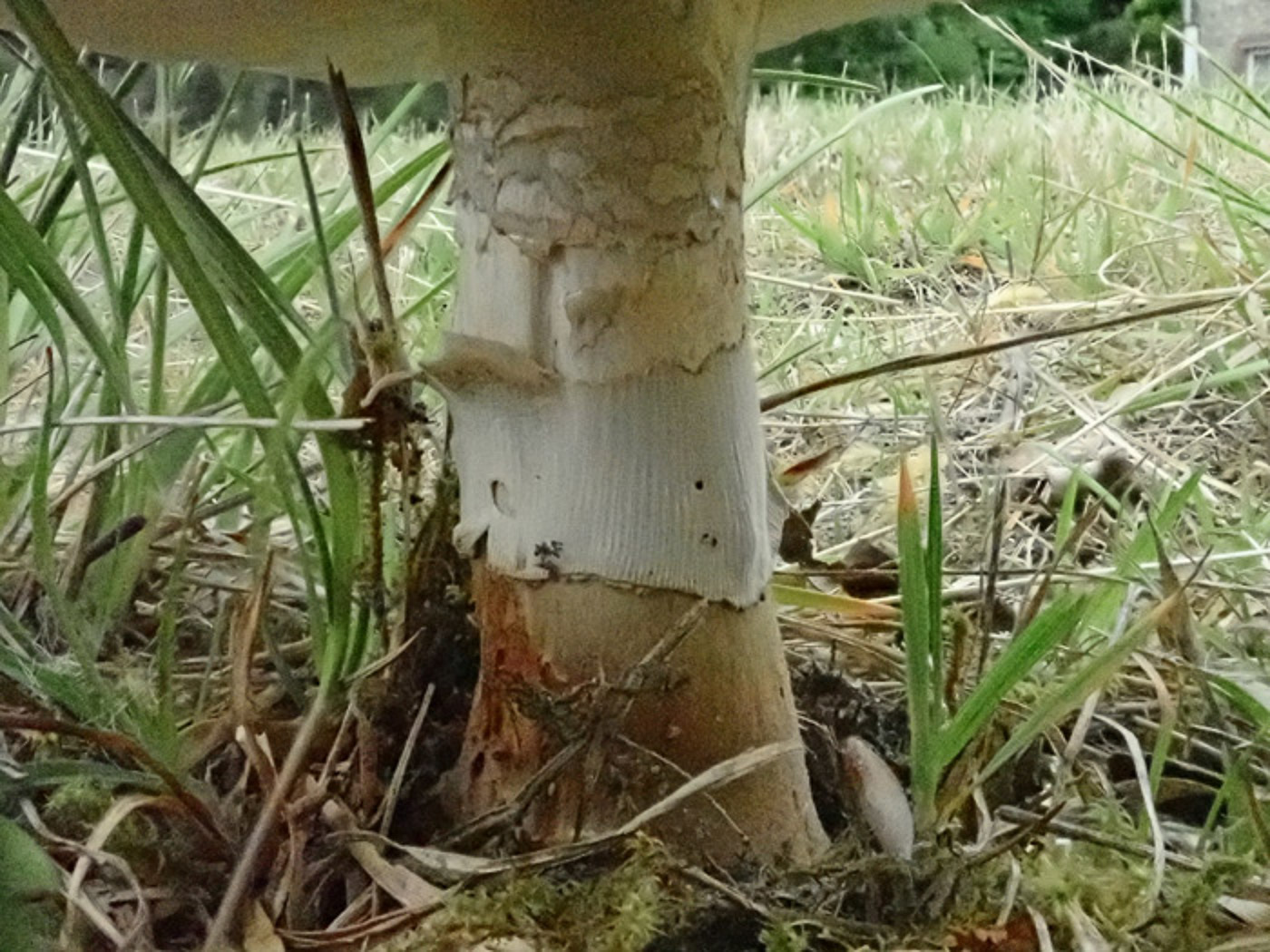 |
July 21st Amanita rubescens (Blusher)
In Cadmore End Penny noted the mown grass but luckily there was one unscathed mushroom in a small patch obviously deliberately left! This was a rather faded Blusher open to the elements but near to Oak and Beech with a rather slug-eaten button nearby which served to show the pink blushing where damaged. Slugs had also had a go at the stem below the ring where the striations typical of the species are to be seen above it. See the Masterlist for many more entries showing how this common species can vary.
|
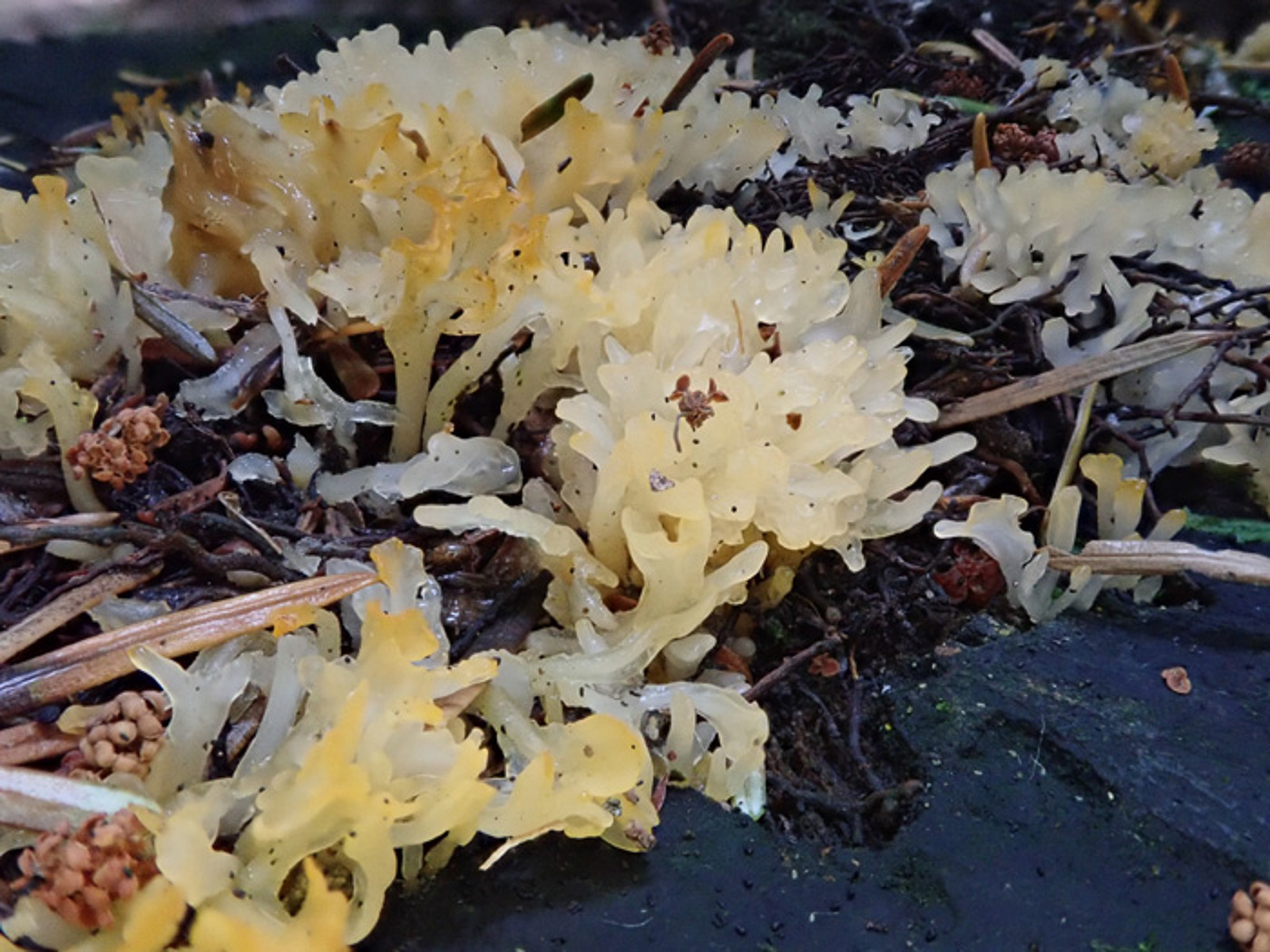

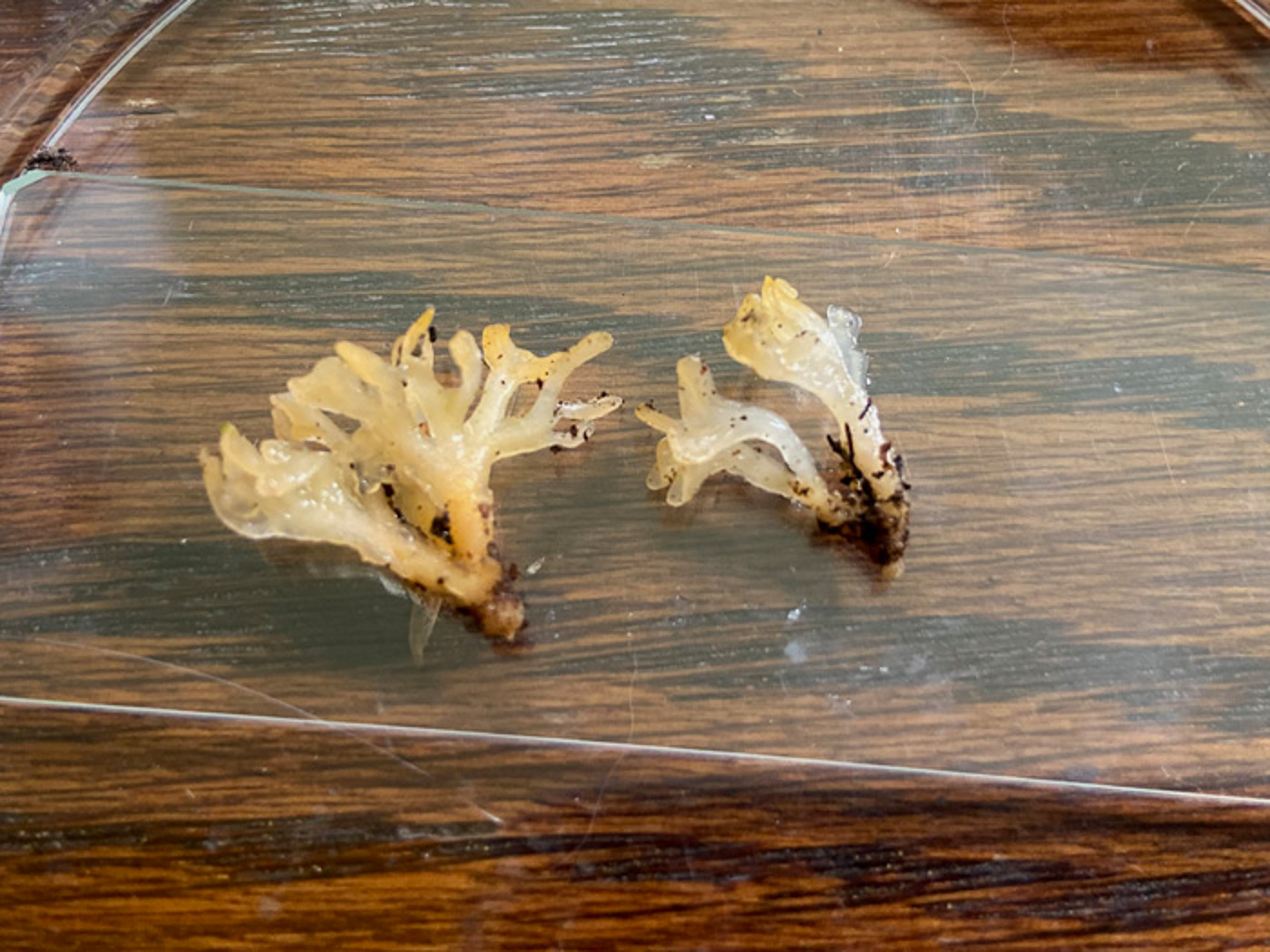 |
July 19th Calocera cf pallidospathulata (Pale Stagshorn) 
In Hampden Common Sarah Ebdon noticed these strange looking jelly fungi on damp fallen conifer. Being familiar with other species of this genus she was confused by its obvious branching though in other respects it was similar to C. pallidospathulata which occurs commonly but not exclusively on conifer and is paler than other species. At home she read about C. furcata - a rare but widespread species on conifer and with 'clubs' which can be forked or even branching into three, but checking with a scope the microscopic details matched better with C. pallidospathulata as did its pale 'washed-out' appearance. So for now we are naming this collection C. cf pallidospathulata and hope that sequencing will shed some light on its true identity because it is certainly unusual to find the species in this form. See in Finds 2020 October 3rd and 2022 November 29th for more typical collections.
|
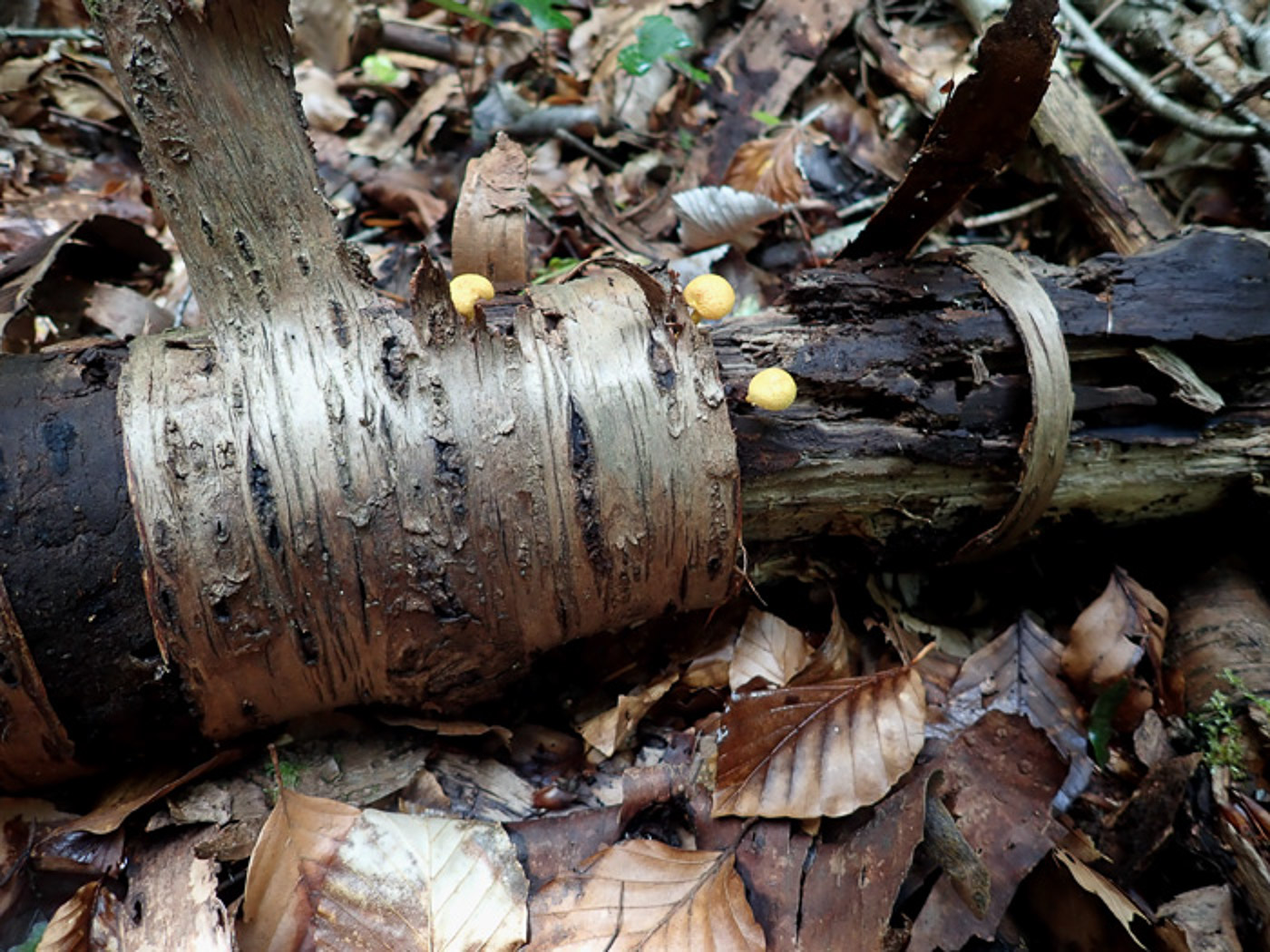
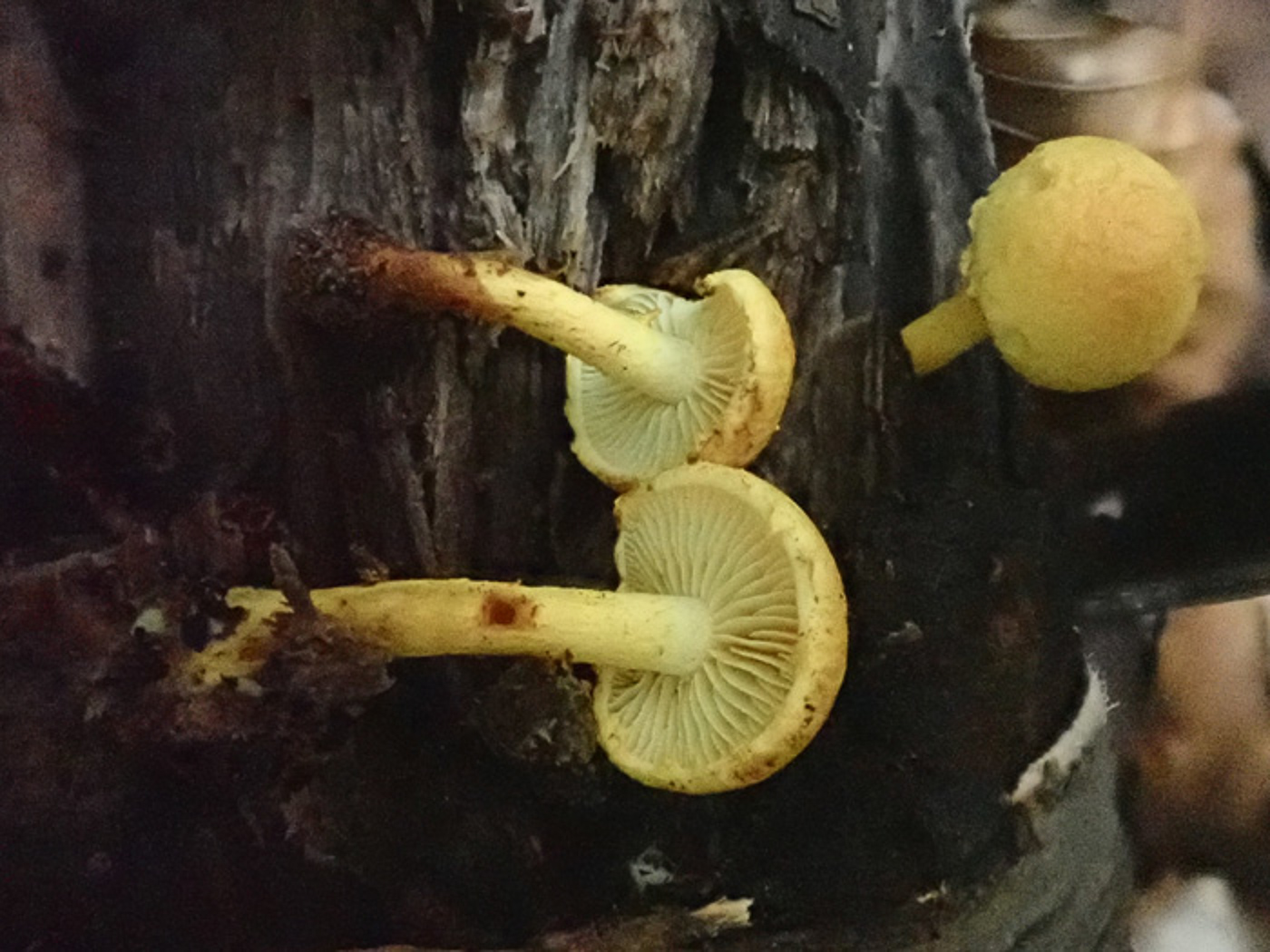
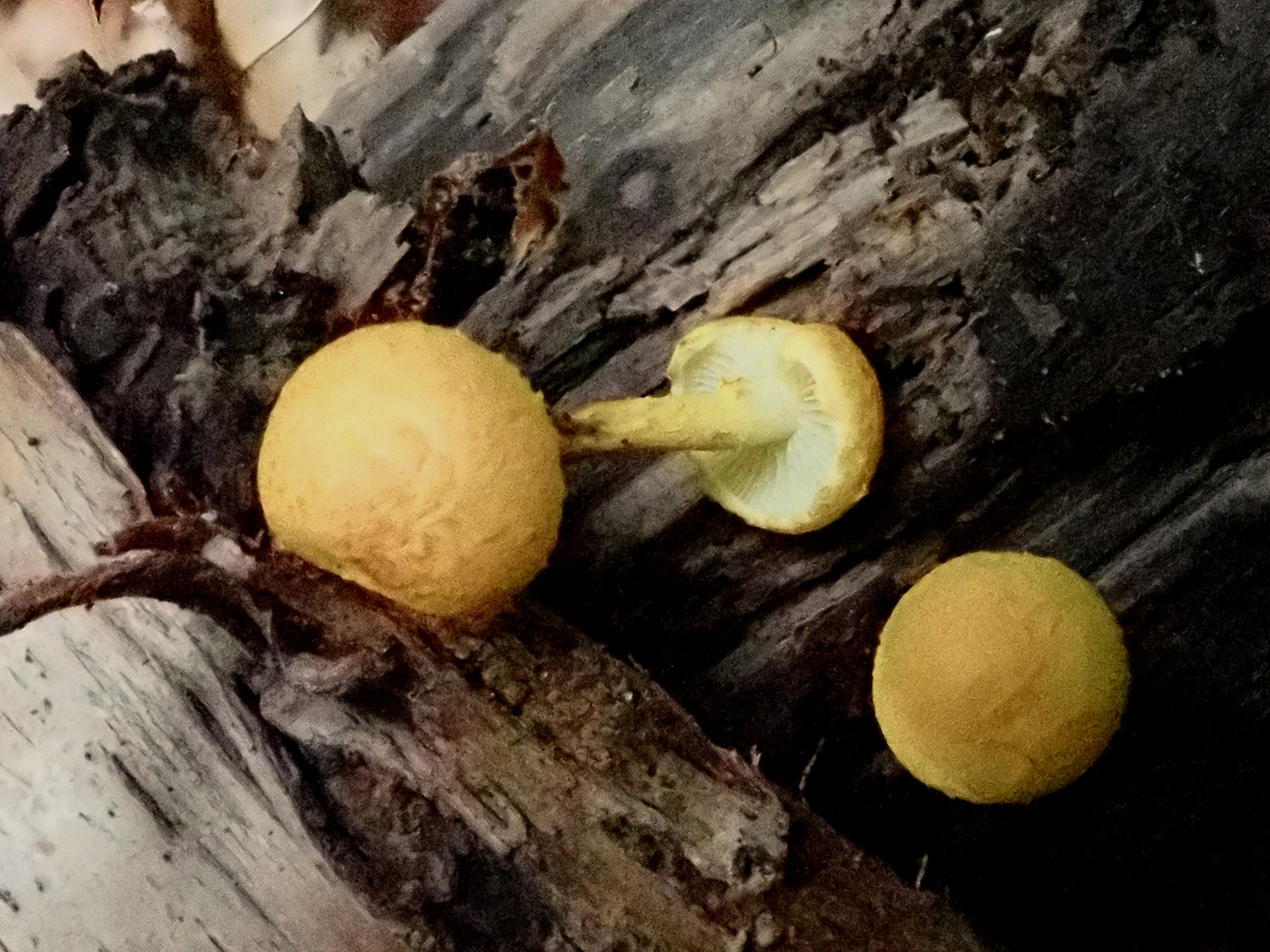 |
July 19th Pholiota tuberculosa (a Scalycap with no common name) 
On a fallen Cherry branch at Kings Wood, Tylers Green, Penny noticed these small but brightly coloured mushrooms, thought at first they might be immature Gymnopilus penetrans (Common Rustgill) but then realised they were too bright a yellow and might possibly be this unusual and possibly sometimes misidentified species of Pholiota. Microscopic features at home then confirmed it. Photo 3 shows the slightly roughened though hardly scaly cap surface compared to many in this genus, also when mature and larger - these were less than 1cm across but it can get to 4 cms or more - the cap colour becomes more ochre orange and less bright. It can occur on a range of deciduous woods. We have only a handful of county records since 2000 and this is a new entry for Finds.
|
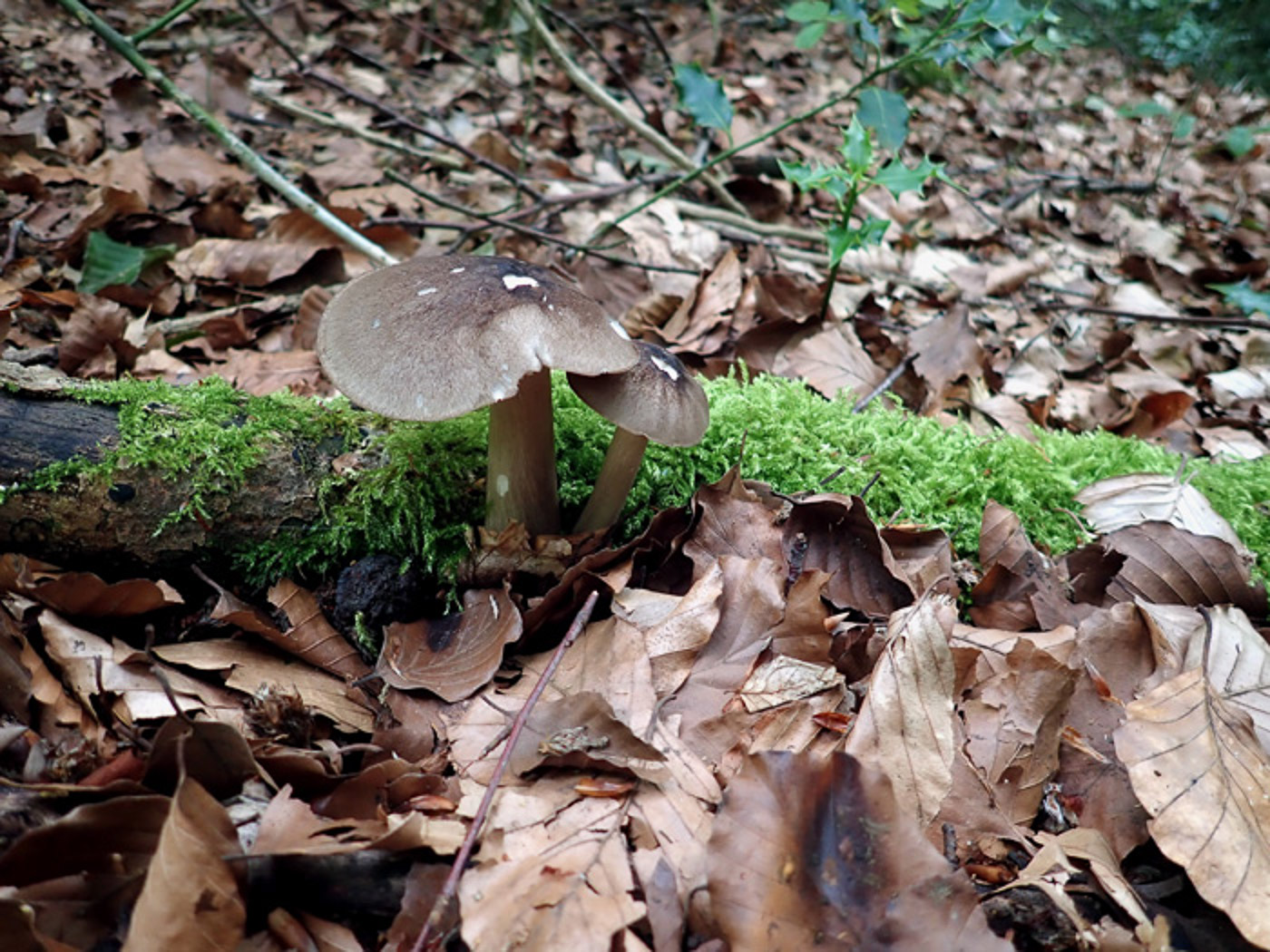
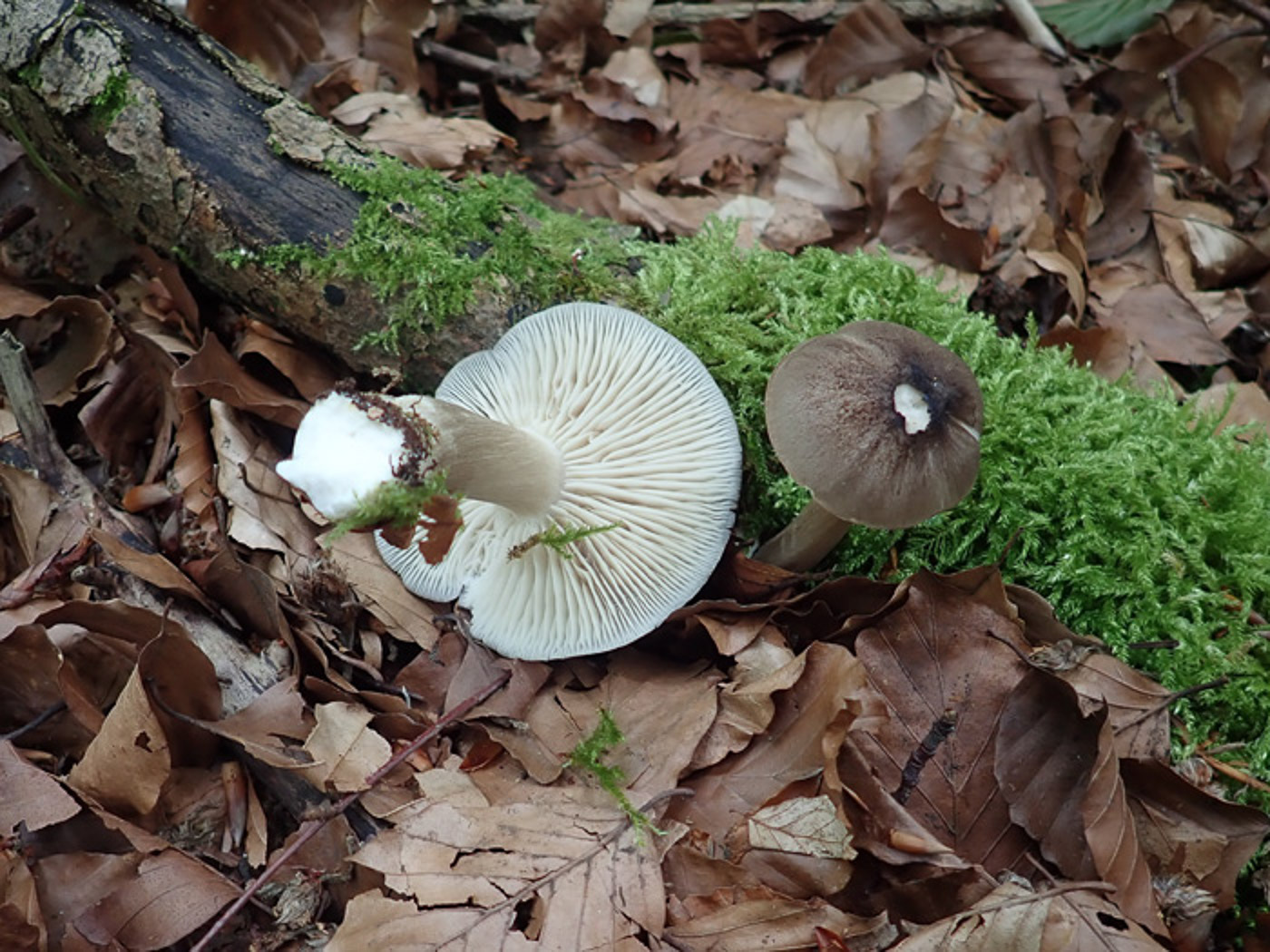
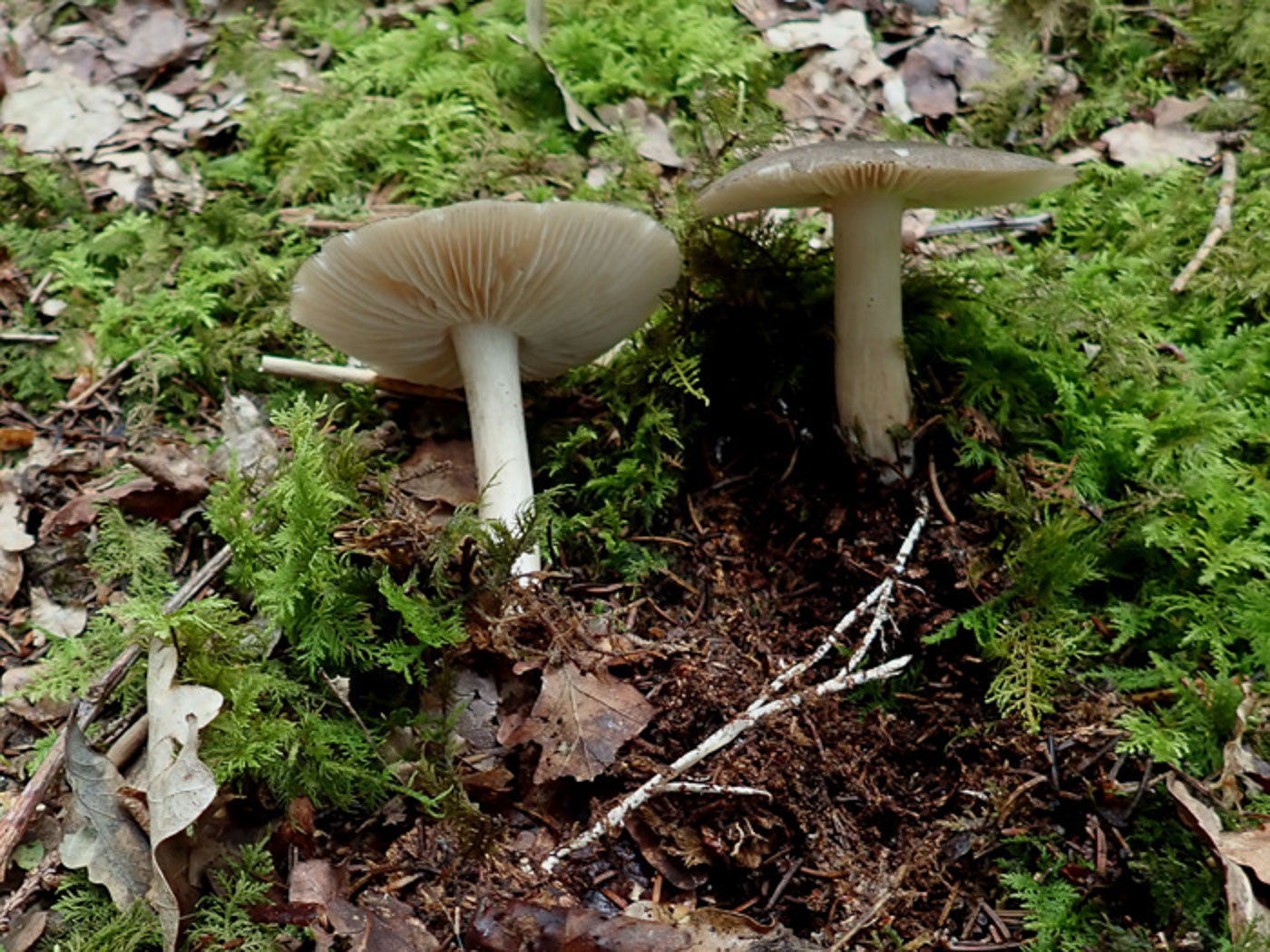 |
July 19th Megacollybia platyphylla (Whitelaced Shank)
In Kings Wood, Tylers Green, Penny spotted this fresh pair on a fallen rotting log and prior to picking one she guessed it was a species of Pluteus - typically on wood, with a mid brown cap about 4 cm across. Wrong! Take a look at photo 2 and spot the obvious mistake here. The gills are widely spaced and not crowded, they are cream and not pink, also they are adnate (attached to the stem) and not free - so definitely not Pluteus! When M. platyphylla occurs on wood above ground as here it attaches direct to the substrate and therefore lacks the telltale white 'bootlaces' (mycelial strands) which attach it to submerged roots and are easily uncovered with a bit of exploration. This nicely illustrates the need to collect and inspect all aspects of a mushroom before declaring its name! Photo 3 shows the bootlaces excavated by Penny in Bernwood Forest a few days later. Surprisingly we have only one previous entry of this common species in Finds: 2020 September 11th.
|
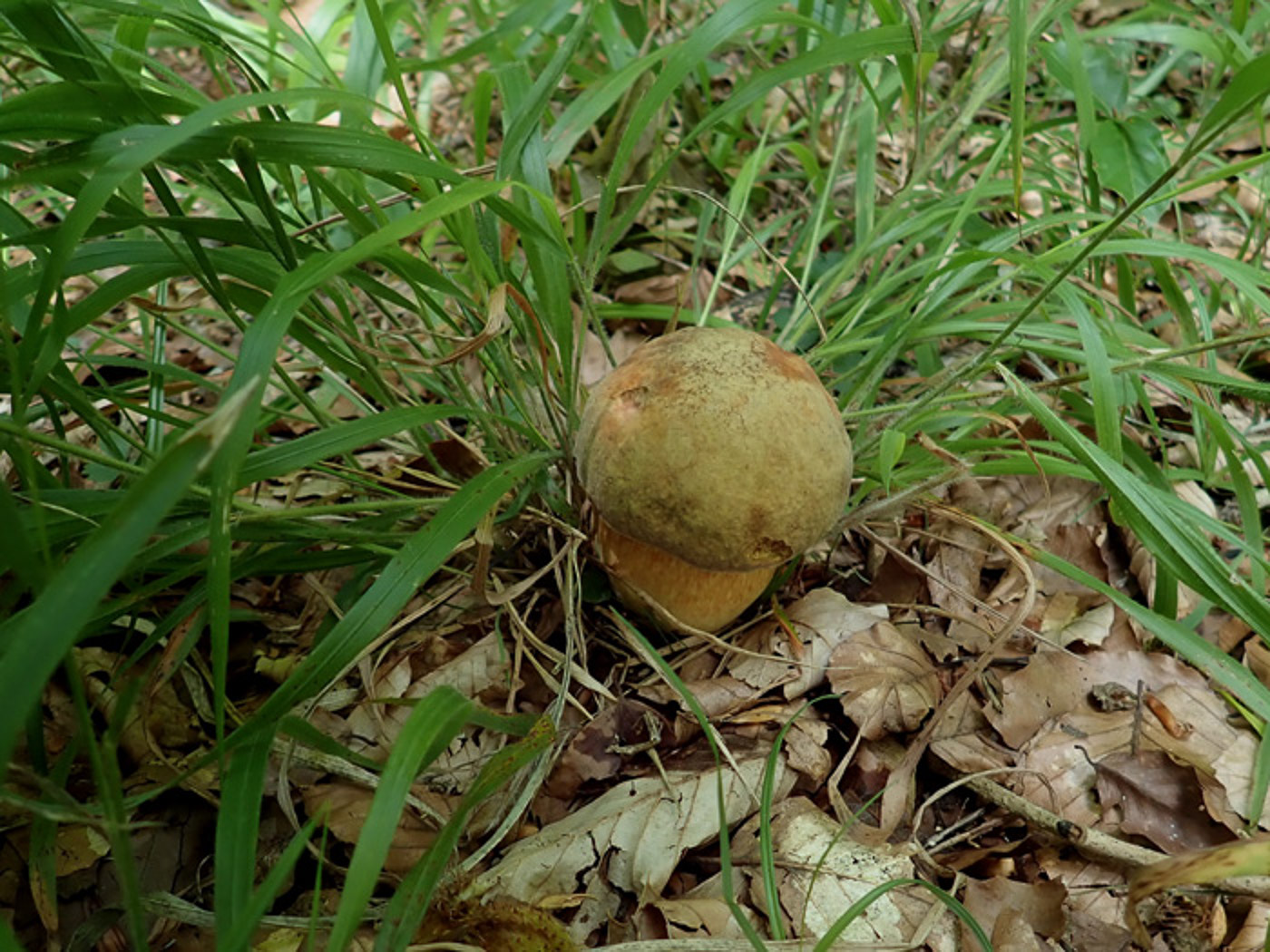
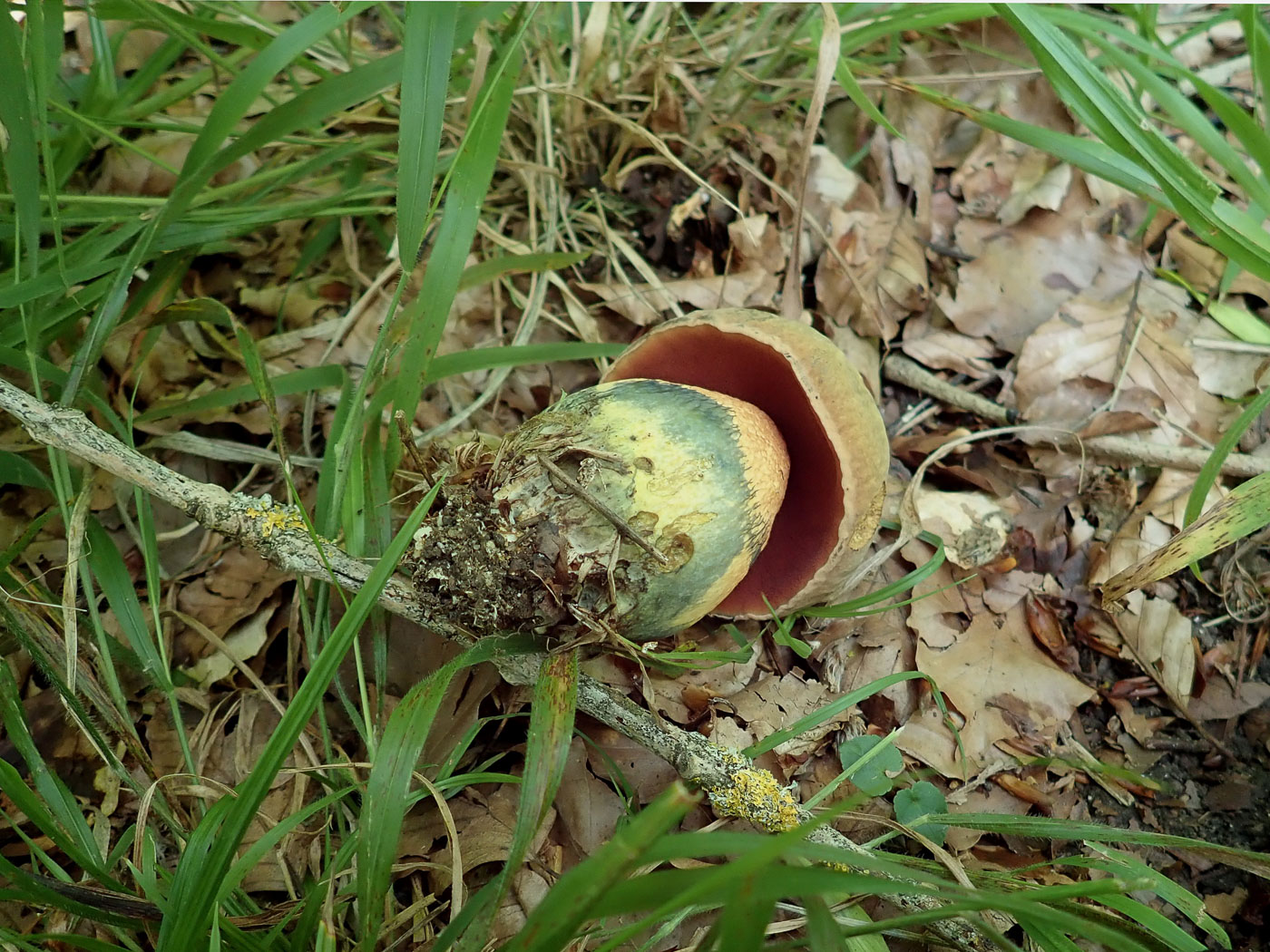
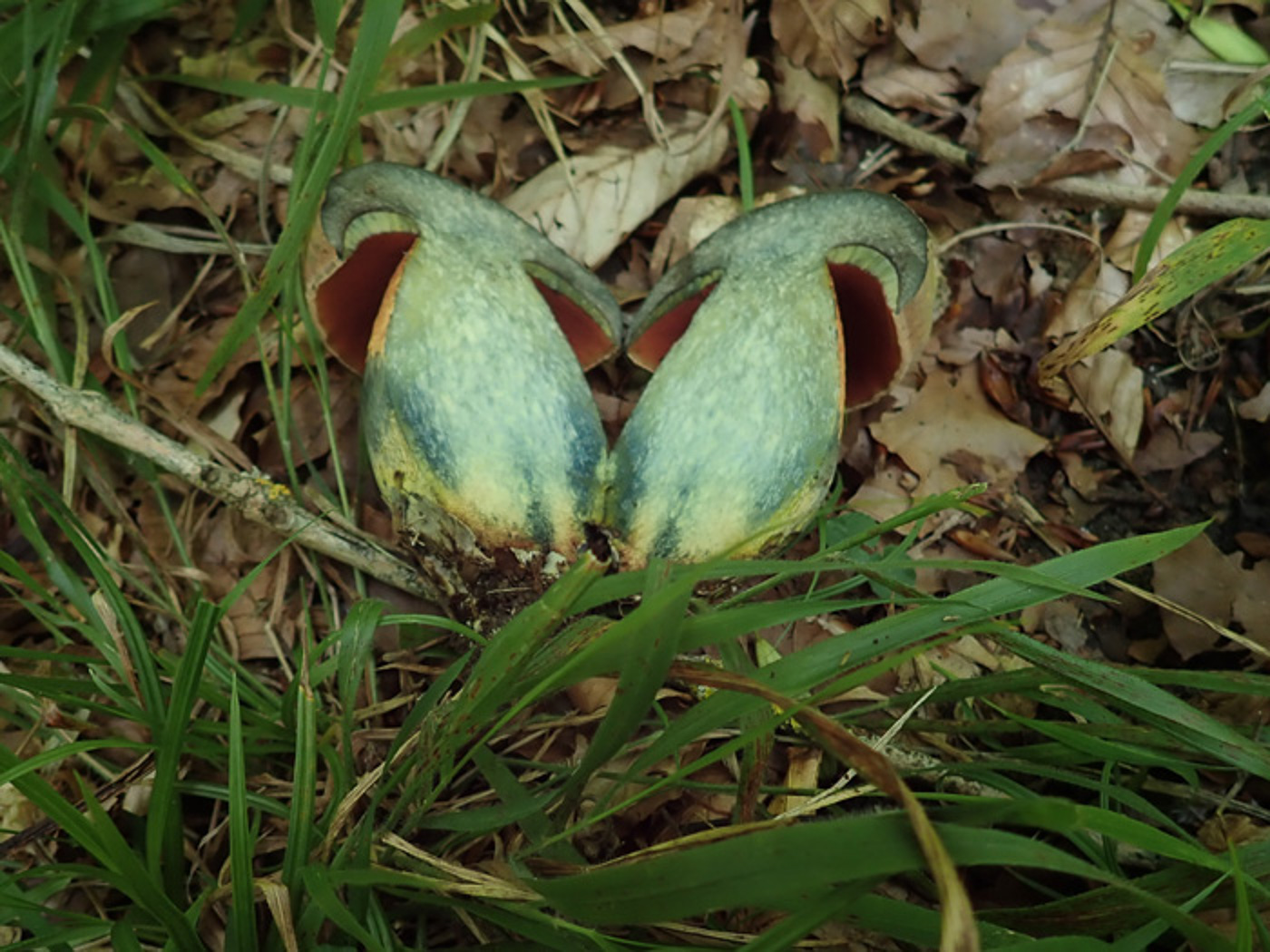
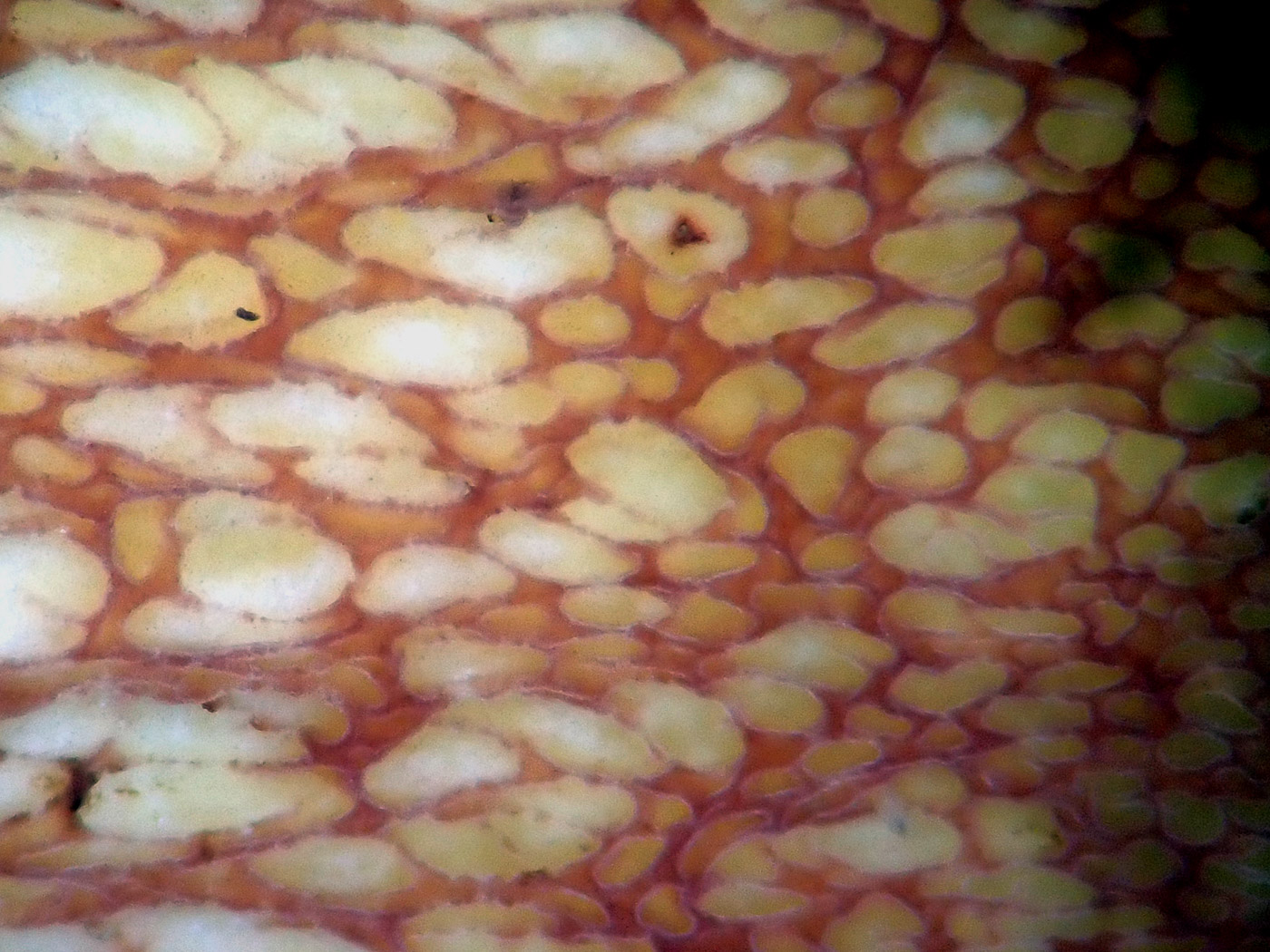
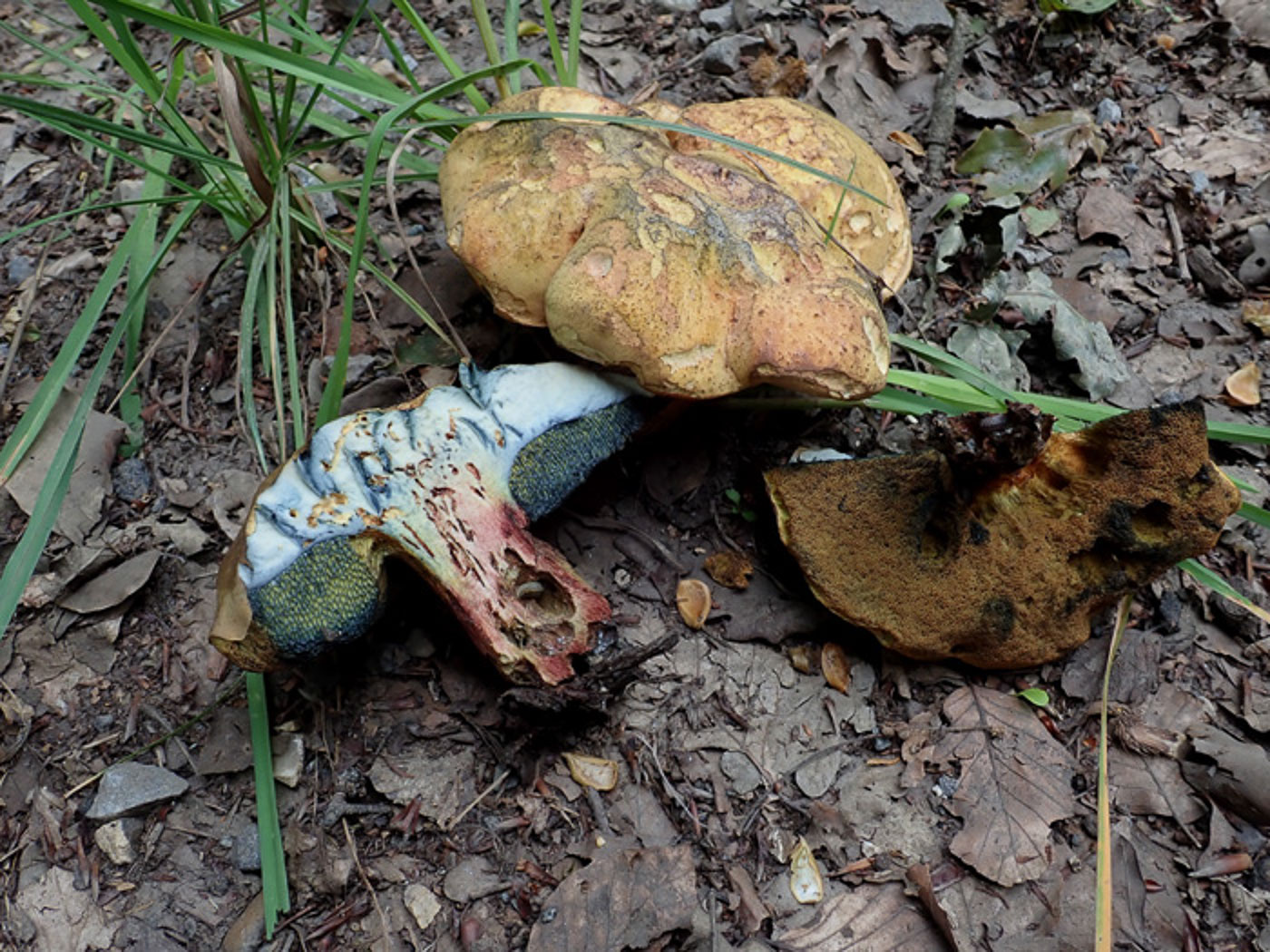
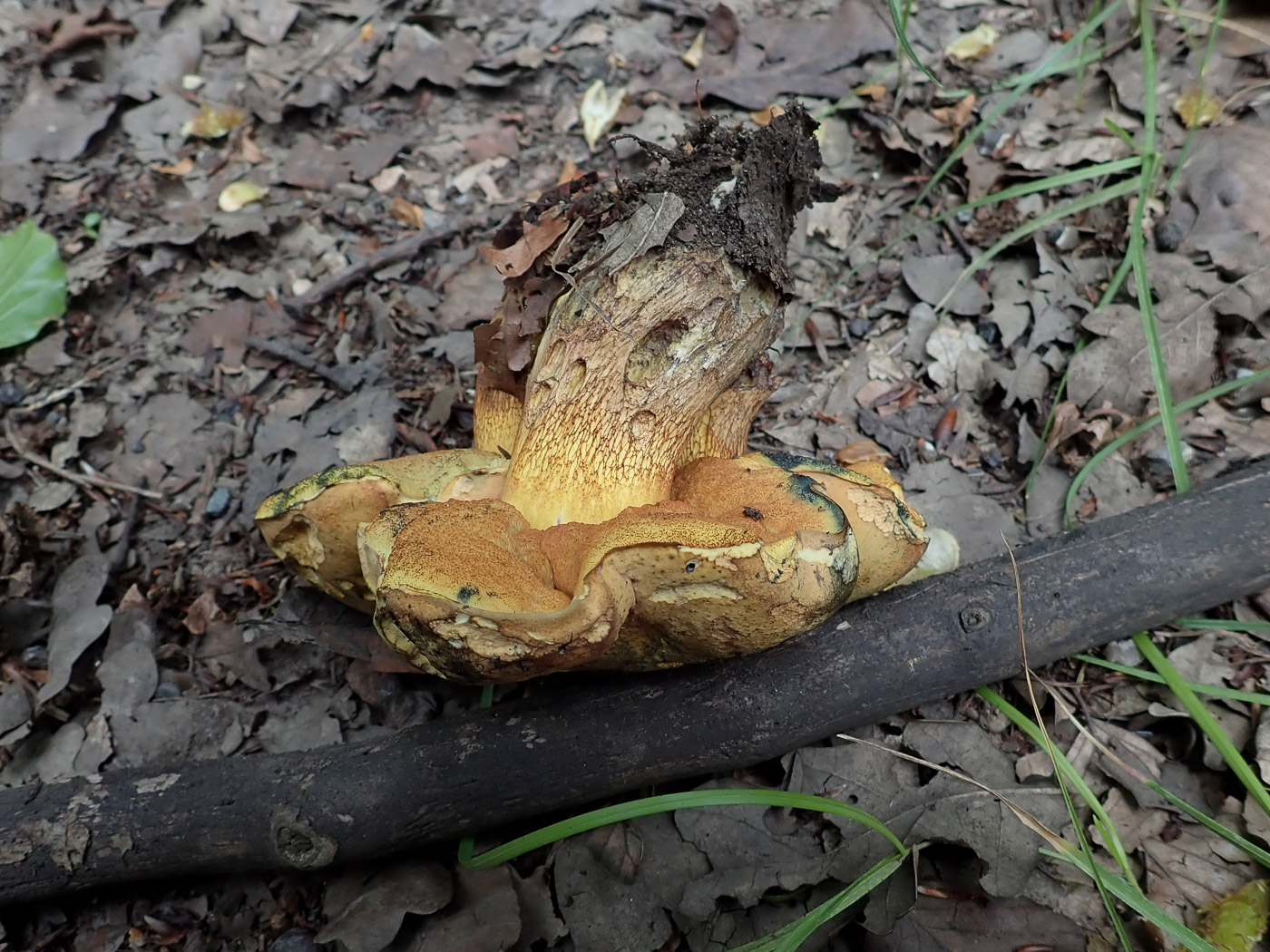 |
July 19th Suillellus luridus (Lurid Bolete)
In Kings Wood, Tylers Green, Penny spotted this immature Bolete under Beech and on collection (photo 2) the red pores and strong blueing on the stem became apparent. On cutting (photo 3) the blueing of the flesh was less instant, also less intense than one would expect for Neoboletus luridiformis (Scarletina Bolete - by far the commonest species with these striking features) and this together with the cap colour - somewhat pale for that species - suggested this was more likely to be the much less common S. luridus. (Both species were until quite recently in genus Boletus.) On checking at home the clear brown reticulation (mesh) visible on the upper stem (photo 4) confirmed her identification - N. luridiformis lacks a reticulation on the upper stem but instead has tiny red 'floccules' (dots) on a yellow background. Photos 5 and 6 are also Penny's of a mature collection found at Marlow Common also under Beech two days later.
|
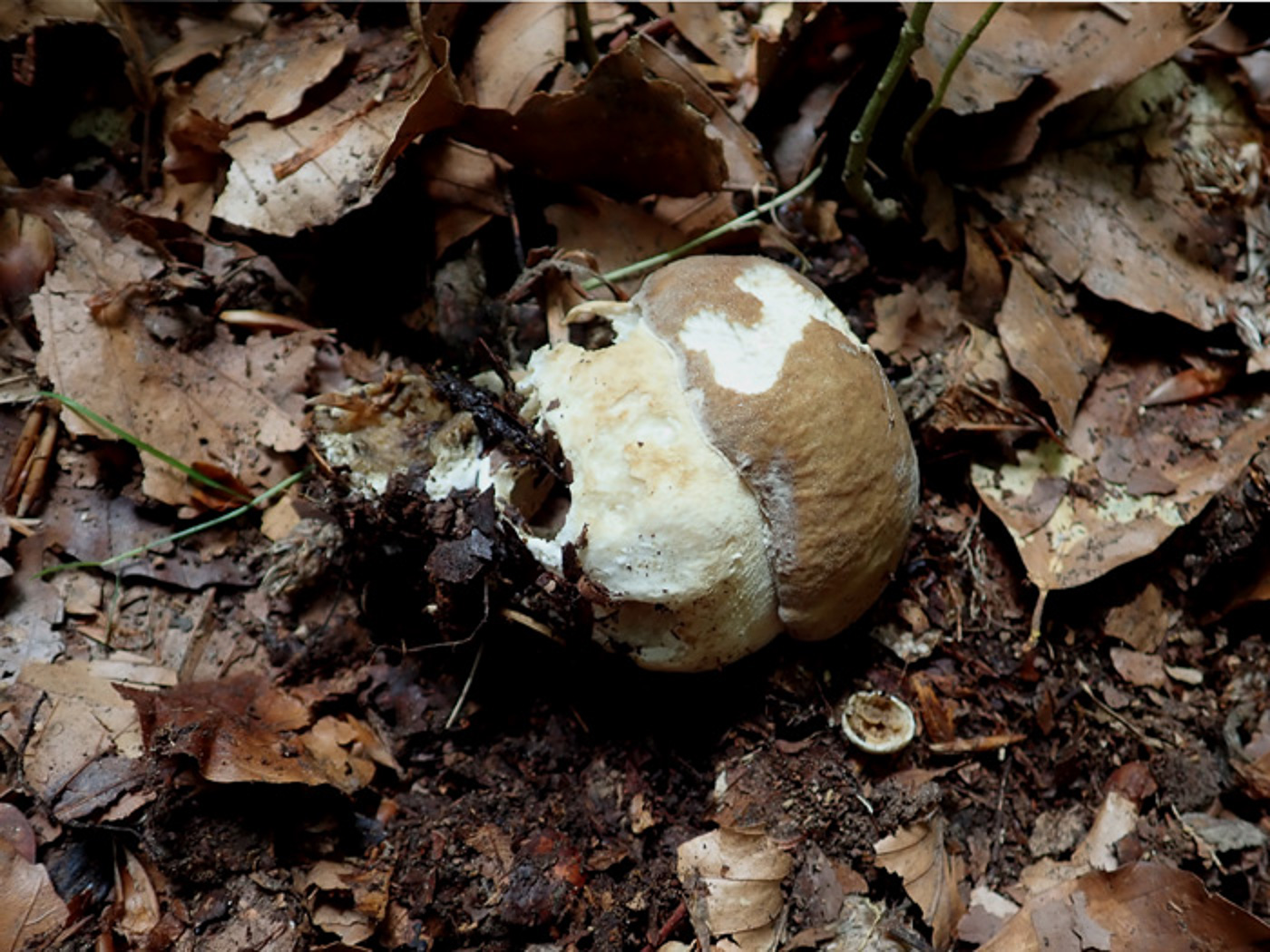
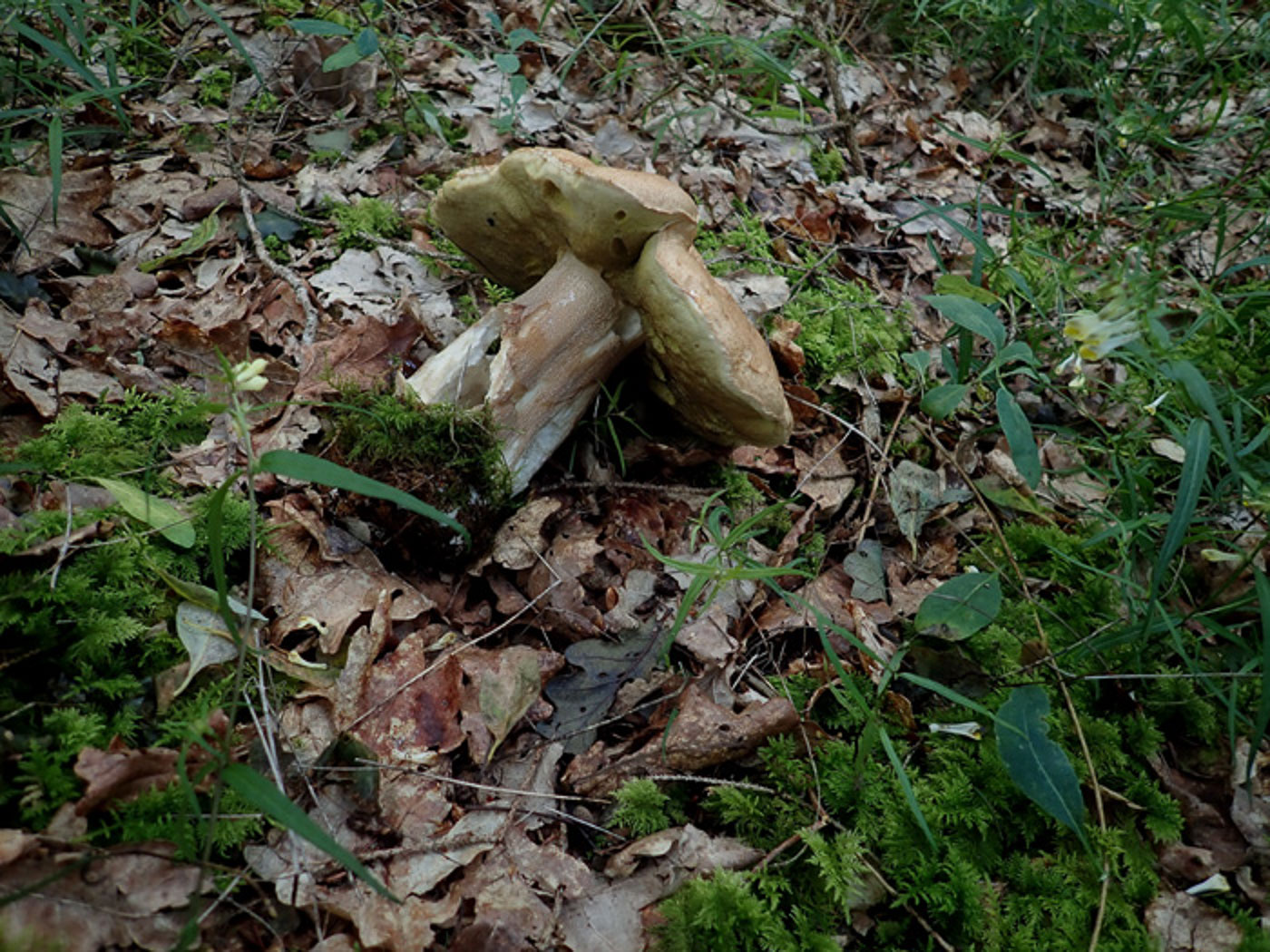 |
July 19th Boletus edulis (Penny Bun / Cep / Porcini)
Little and Large: In Kings Wood, Tylers Green, this small button was one of the few fungi Penny was able to find, though hopefully it was a promising sign of things to come! A few days later in Bernwood Forest she came across this whopper (photo 2) all of 15 cm across! See the Masterlist for other examples.
|
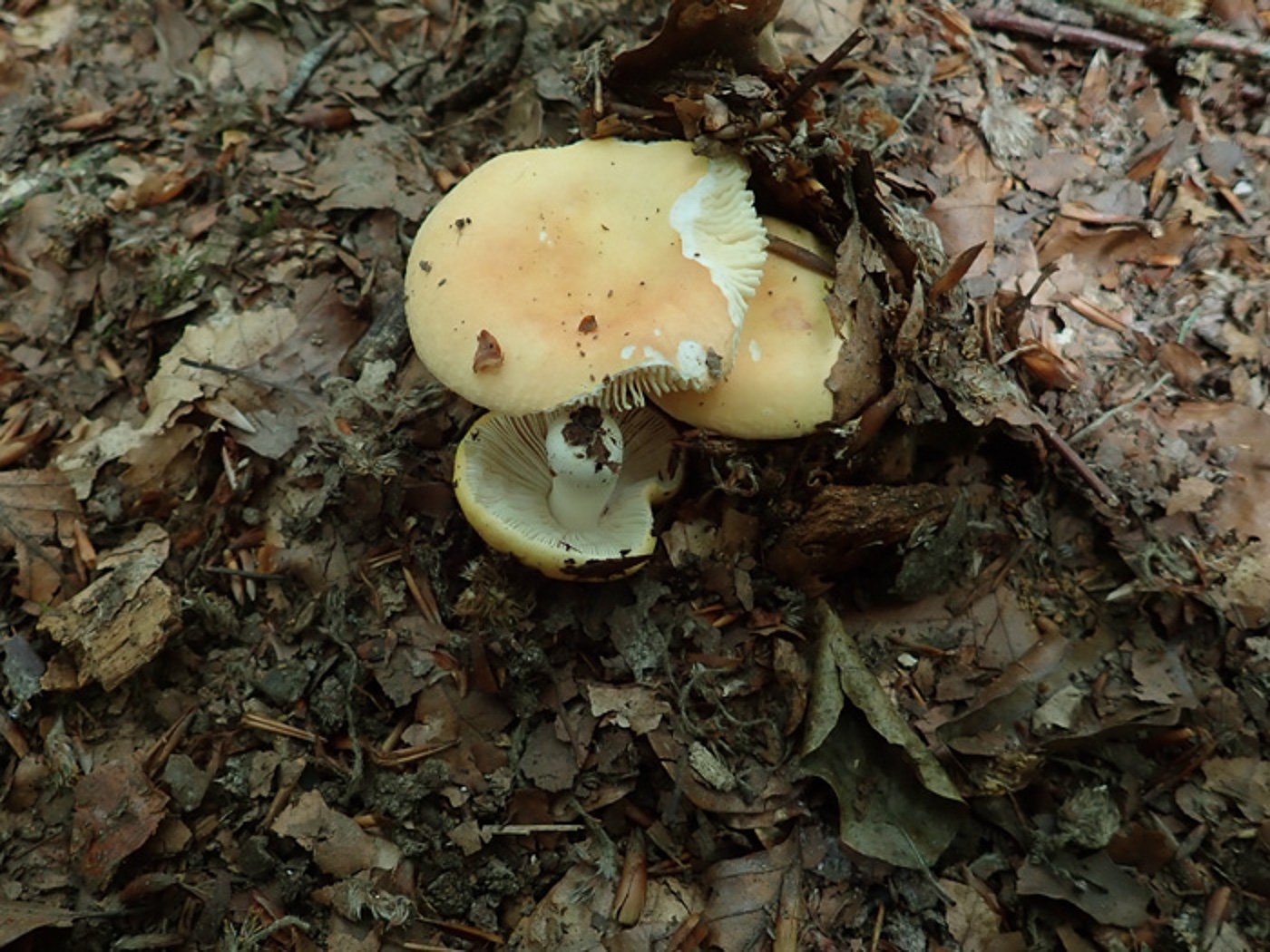
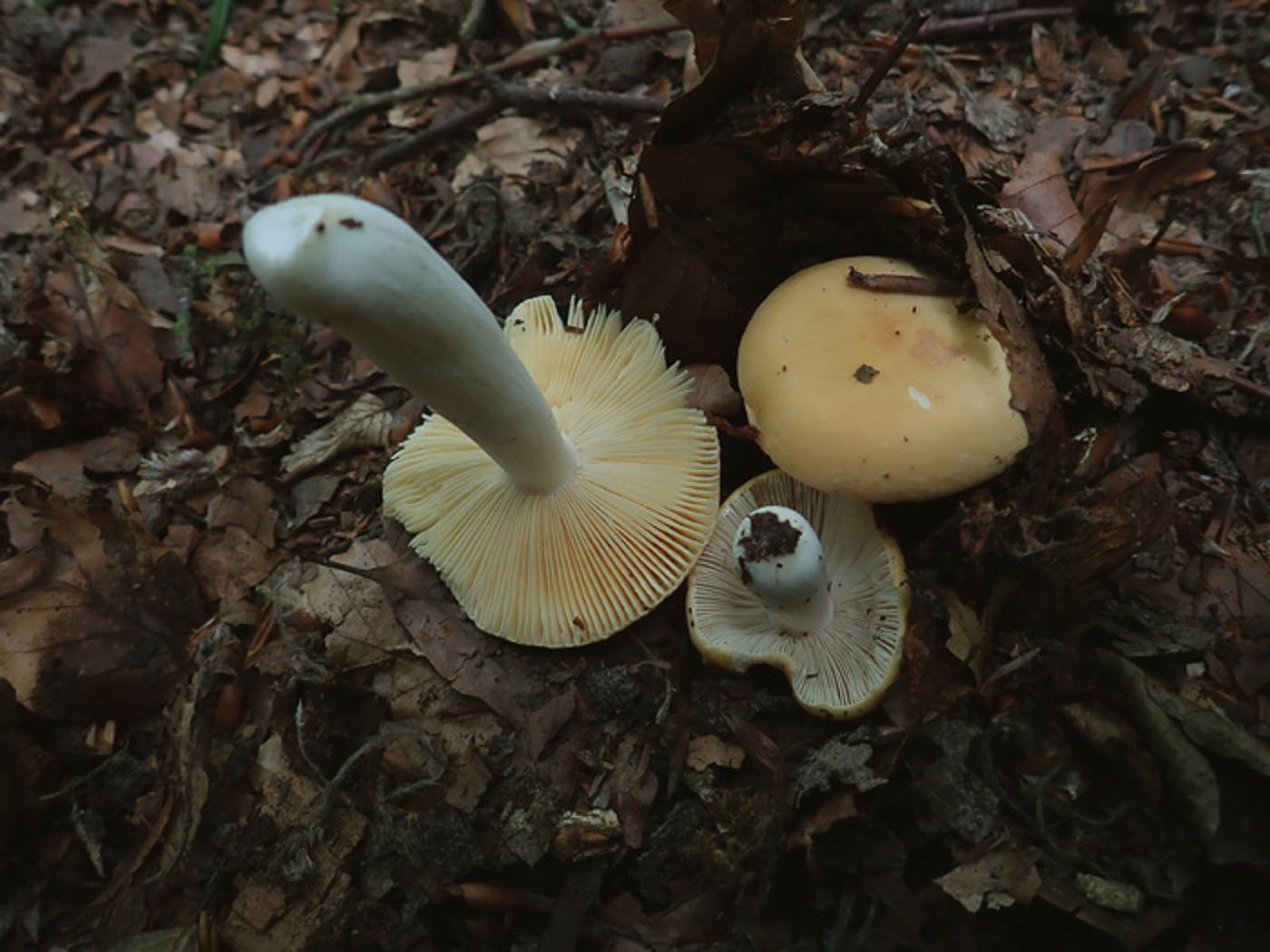 |
July 19th Russula risigallina (Golden Brittlegill) 
In Kings Wood, Tylers Green, Penny found surprisingly little about but this attractive Brittlegill was just pushing through the thick Beech mast. The species is one of several with yellow cap colours but differs from others by having ochre gills rather than white or pale cream, also a deep ochre sporeprint. Photo 2 shows the immature central specimen with gills still pale cream but the more mature upturned specimen reveals the spores' true deeper colour. The cap is variable and can be both yellower and pinker than this example but the mature gill colour and spores are consistent. Despite this being a new entry for Finds, the species is quite common under a mix of deciduous trees but does seem to favour Beech.
|
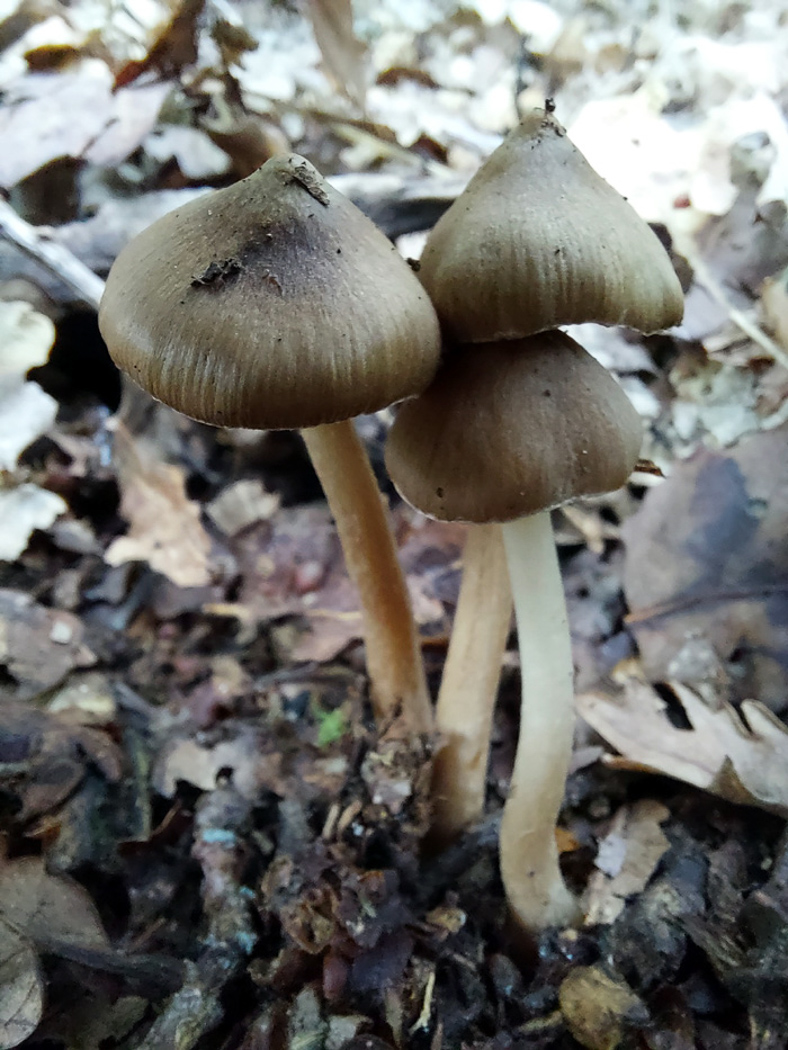
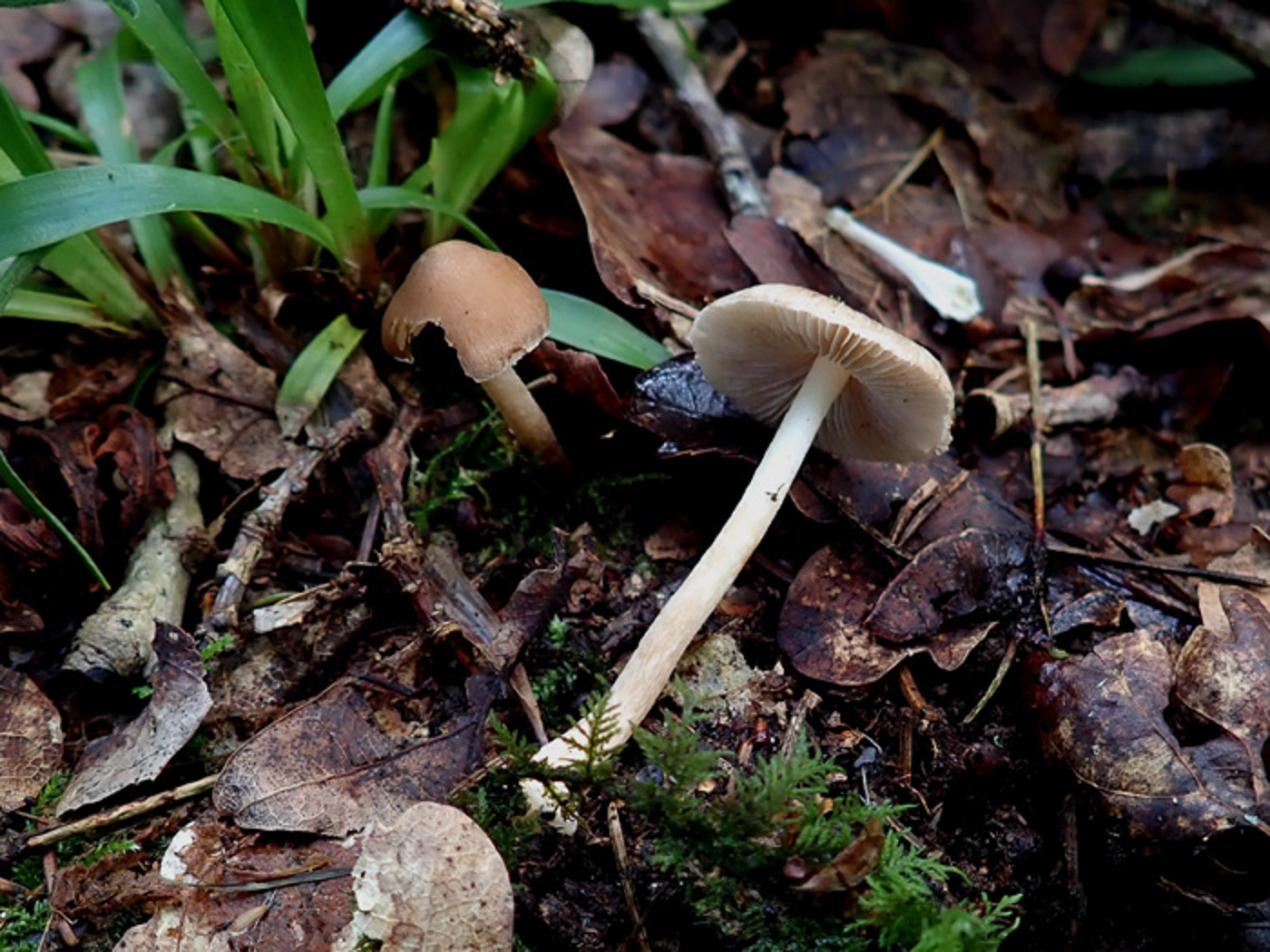 |
July 18th Inocybe napipes (Bulbous Fibrecap) 
In Gerrards Cross Common under Oak Jesper Launder found this attractive cluster of LBJs and took them home to check their identity. The species is quite common and typically has a smooth brown cap - conical when immature as here but becoming flattened later - also a slender stem tapering upwards and with a white round bulb at the base - not seen here. Penny also found this species in Bernwood Forest a few days later (photo 2). Under the scope it has quite distinctive features which help to separate it from the myriad of other similar Fibrecaps.This is a new entry for Finds.
|
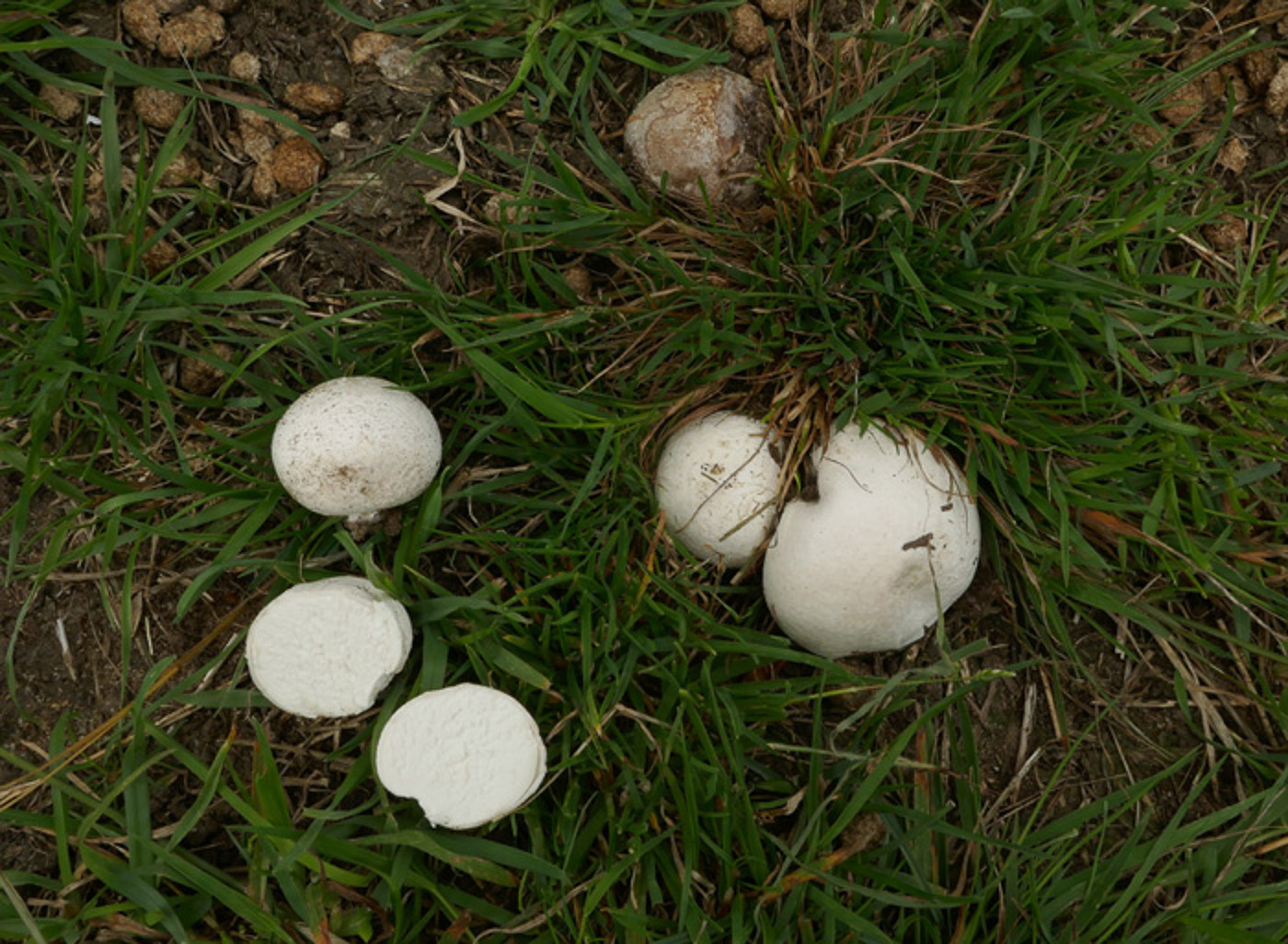 |
July 18th Bovista plumbea (Grey Puffball)
At Stampwell Farm Jackie Ewan came across this cluster in the same spot where she's found them in previous years. This is a purely grassland species and when immature as here is very similar to Lycoperdon vascellum (Meadow Puffball) - for comparison see that species in Finds found yesterday. Once it becomes more mature and shows its typical flaky surface and grey exterior the difference between the two species becomes obvious. For more information see our two previous entries: Finds 2021 May 25th and July 13th
|
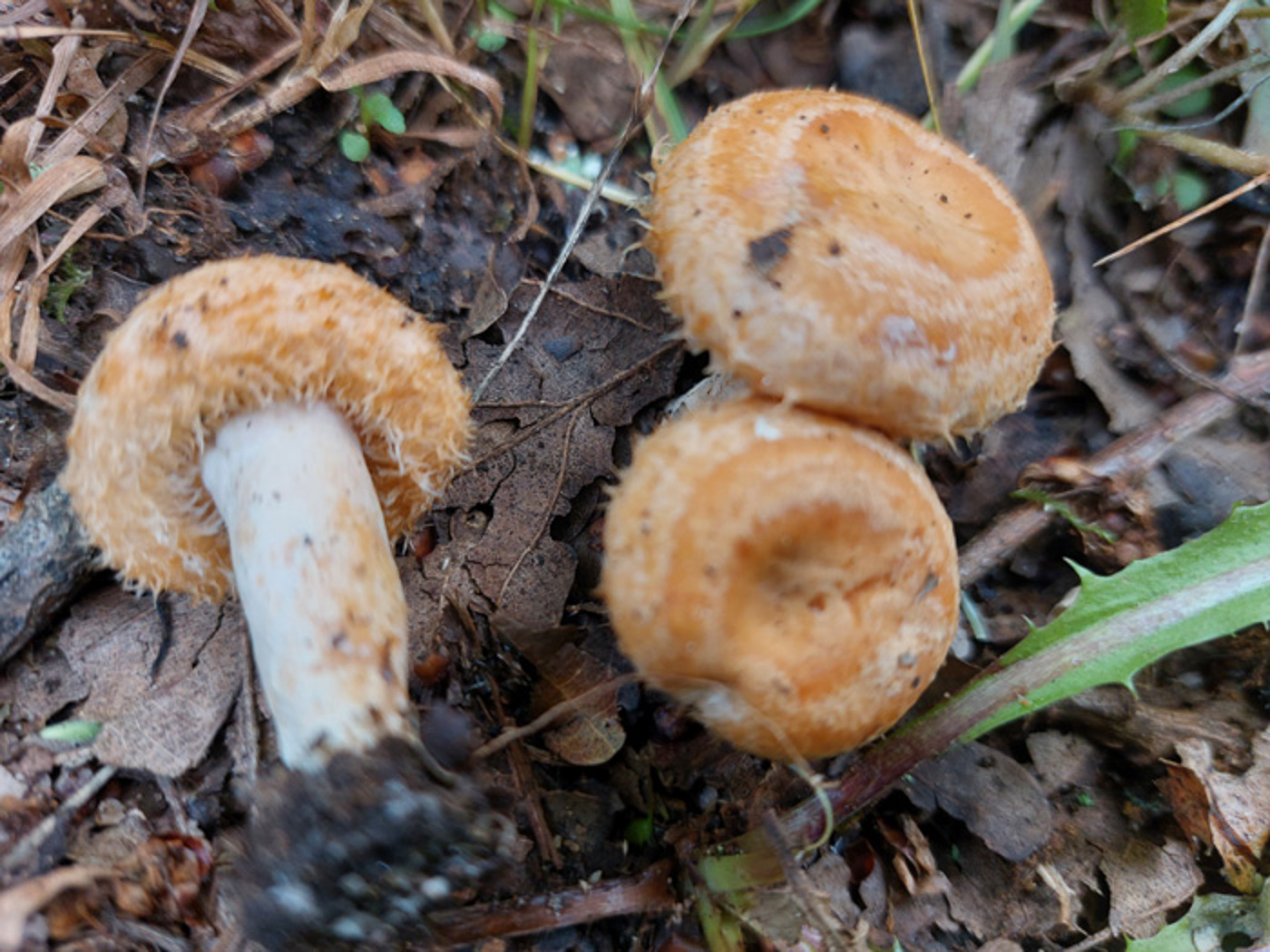
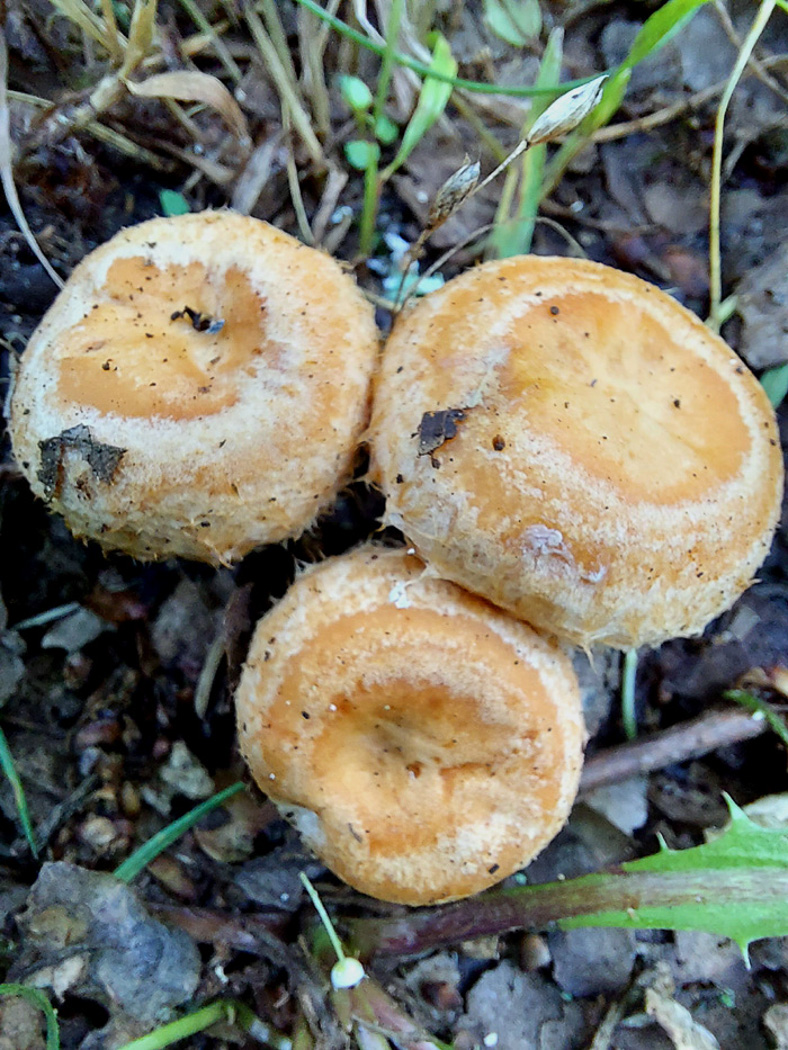 |
July 18th Lactarius mairei (Whiskery Milkcap)
In Gerrards Cross Common under Oak Jesper Launder was delighted to come across this rarity again - our first county record was his last year from Chalfont St. Peter (see in Finds 2022 November 2nd). L. torminosus and L. pubescens are two other quite similar Milkcaps having this combination of a tightly inrolled cap when immature which is somewhat hairy and zoned. However, both are host specific with Birch rather than Oak and have pink tints - paler in the quite common L. pubescens, darker in the less common L. torminosus; furthermore both reportedly have a slightly fruity smell whereas L mairei has an oily smell of Pelargonium leaves!
|
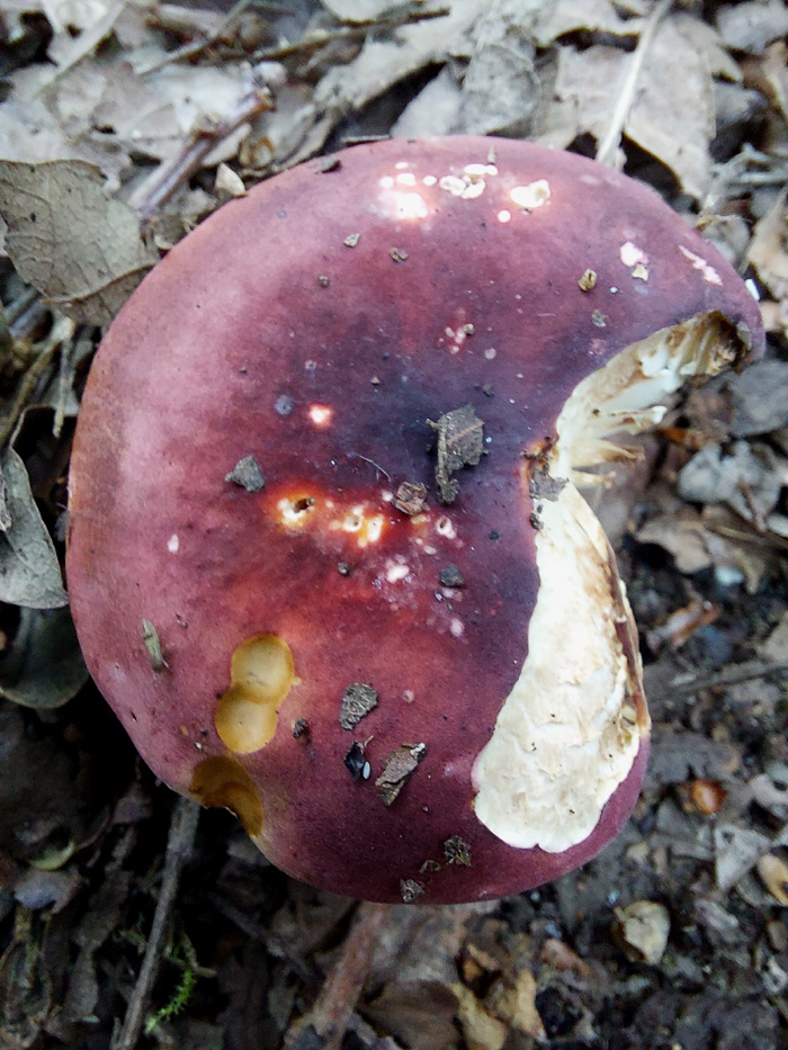
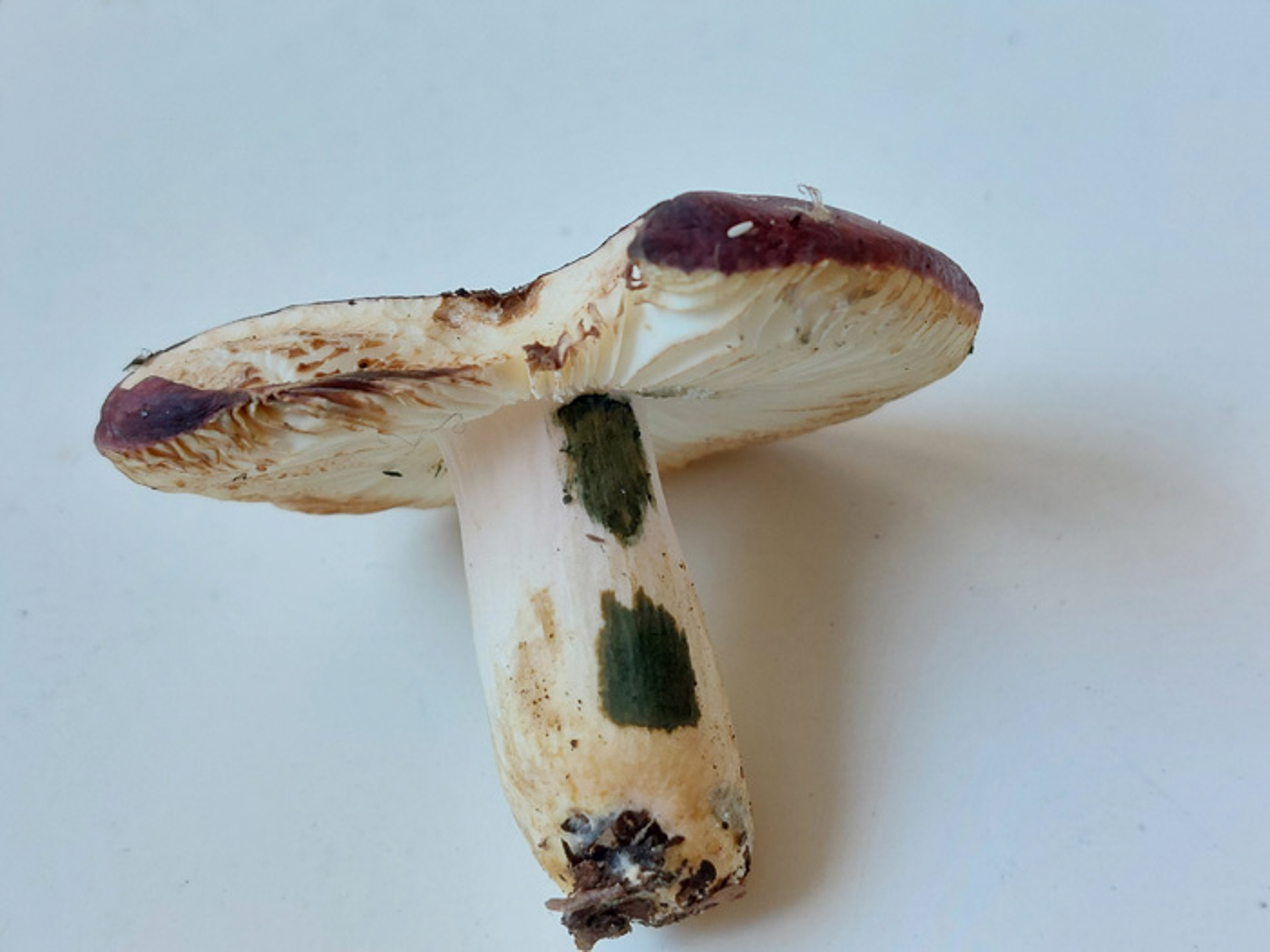 |
July 18th Russula amoenoides (a Brittlegill with no common name)
In Gerrards Cross Common under Oak Jesper Launder noticed this red-capped Brittlegill and at first glance thought it was the very common R. atropurpurea (Purple Brittlegill). However, on closer inspection and noticing the somewhat velvety cap surface (more shiny in R. atropurpurea) he suspected it was something different, maybe from the xerampelina complex (see the entry below for more on this), and at home tried the FE crystal test on the stem which turned quickly dark dirty green confirming this. The species favours Oak and is uncommon with similar cap colours to R. atropurpurea - even to having patches of cream mixed in with the purplish deep red - and can have red at the stem base also. This is a first for Finds and only the fourth county record.
|
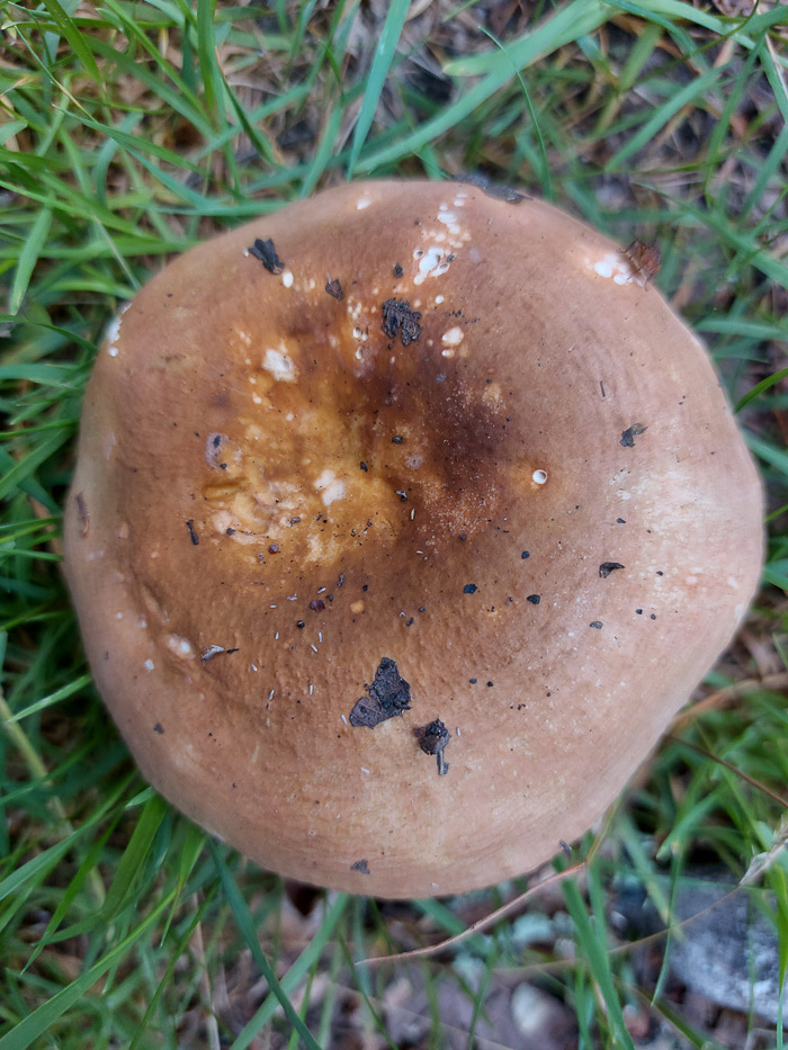
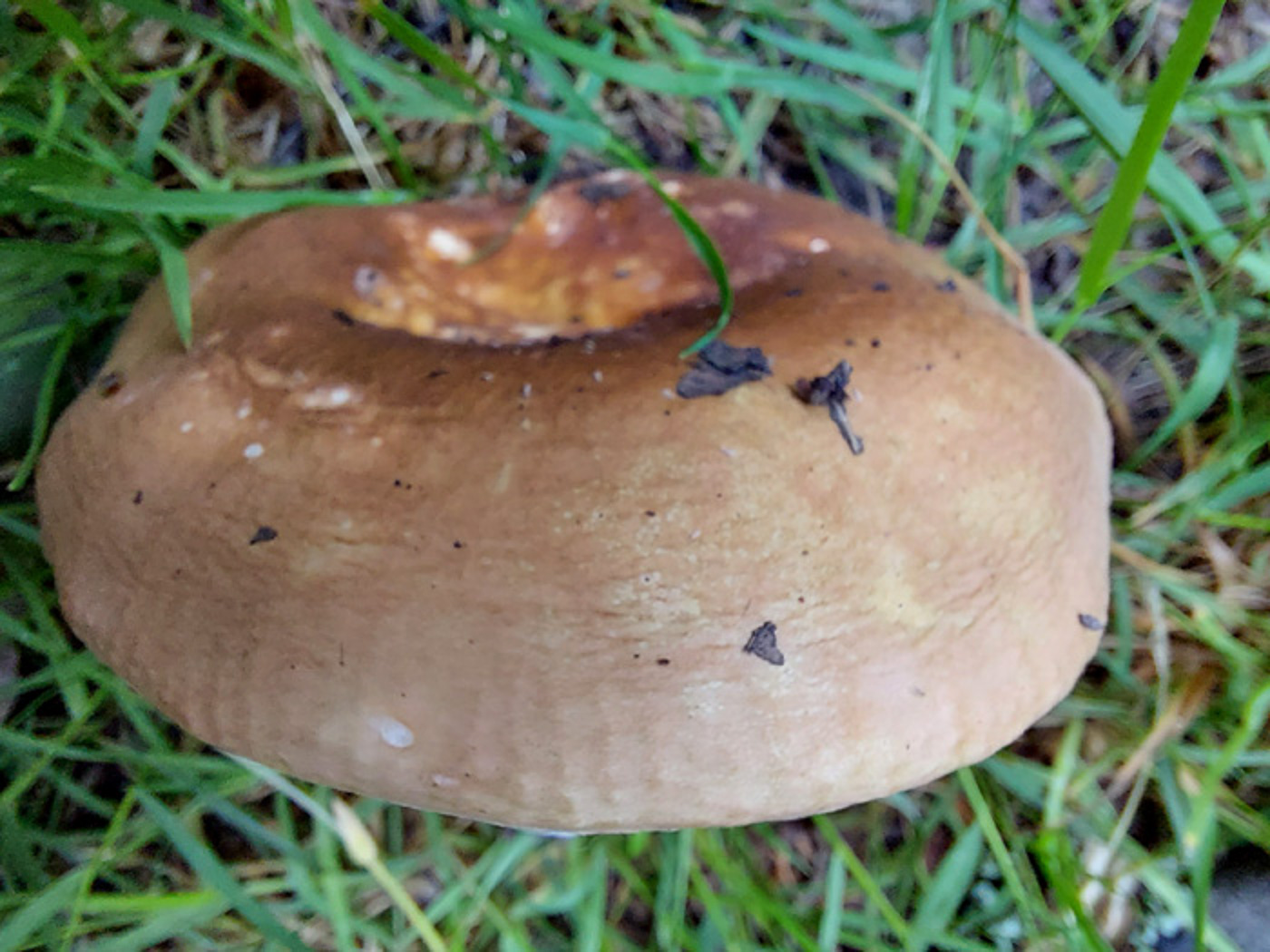
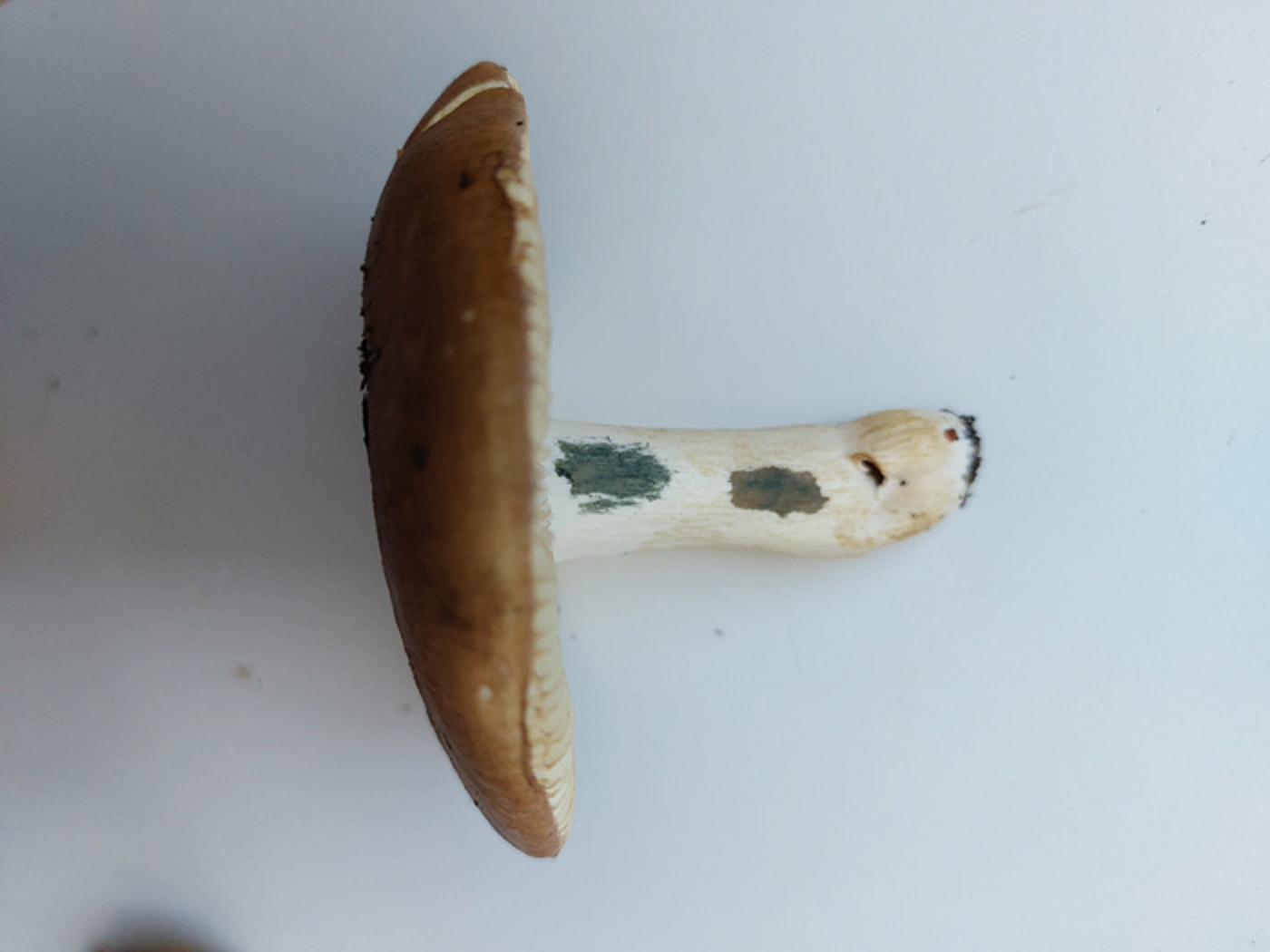 |
July 18th Russula cicatricata (a Brittlegill with no common name)
In Gerrards Cross Common under Oak Jesper Launder noticed this distinctly coloured Brittlegill and, suspecting what it was, took it home to apply a crystal of ferrous sulphate to the stem whereupon it quickly stained dark dirty green rather than giving the normal pink salmon reaction. The species is one of the xerampelina species complex within this genus and, like the more common R. graveolens, occurs under Oak - the true R. xerampelina ss. occurs under Pine but is rare in the S. England. These (seven) species share in common the distinctive smell of cooked crab (which becomes very obvious once collected and as it dries out) and the striking dark green reaction to an FE crystal. In our area R. graveolens is the commonest and R. cicatricata is occasional - distinguished by its browner more olive colours and the tendency to develop concentric wrinkles (seen in photo 2) near the cap margin. The stem in photo 3 shows the blue green reaction to Guaiac above and the dark green reaction to an FE crystal below. See also the entry above for a third much rarer member of this complex. To compare, see the Masterlist for examples of both R. graveolens and R. cicatricata.
|
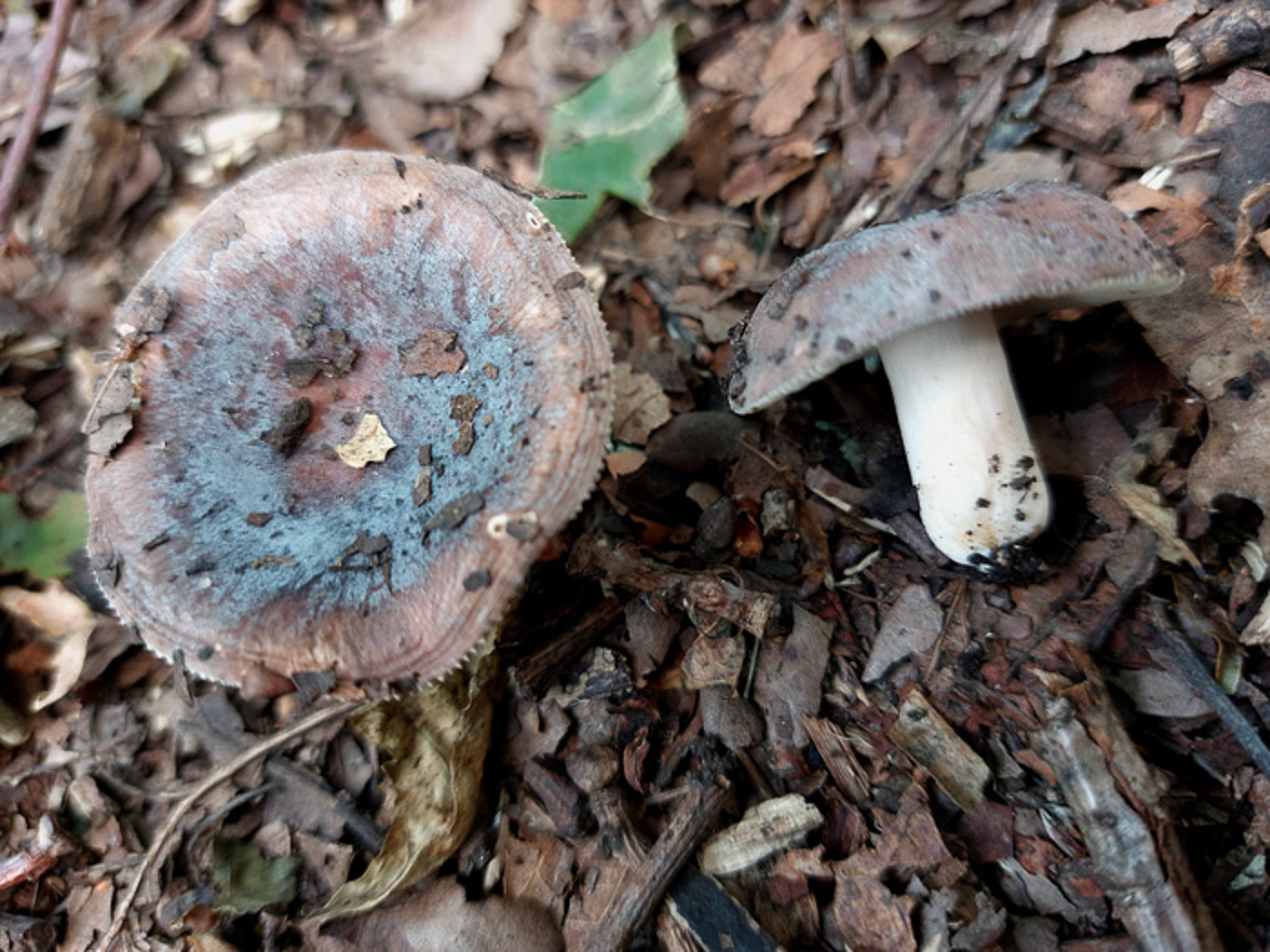 |
July 18th Russula parazurea (Powdery Brittlegill) 
Under Oak in Gerrards Cross Common Jesper Launder noticed this Brittlegill which more often than not in our area has a greyish blue green cap with rather a matt 'pruinose' surface (having a 'bloom' as in a bunch of fresh grapes). It can also present with entirely brown colours or a mix of all these colours as seen here. Easy to confuse with R. grisea and R. ionochlora - described as have colours of spilt petrol, the flesh when revealed by peeling away a bit of the cap cuticle is greeny grey as opposed to mauvy pink in the other two. All three have cream gills and a similar salmon pink reaction when the stem is rubbed with a crystal of ferrous sulphate; they can be further compared via our Masterlist.
|
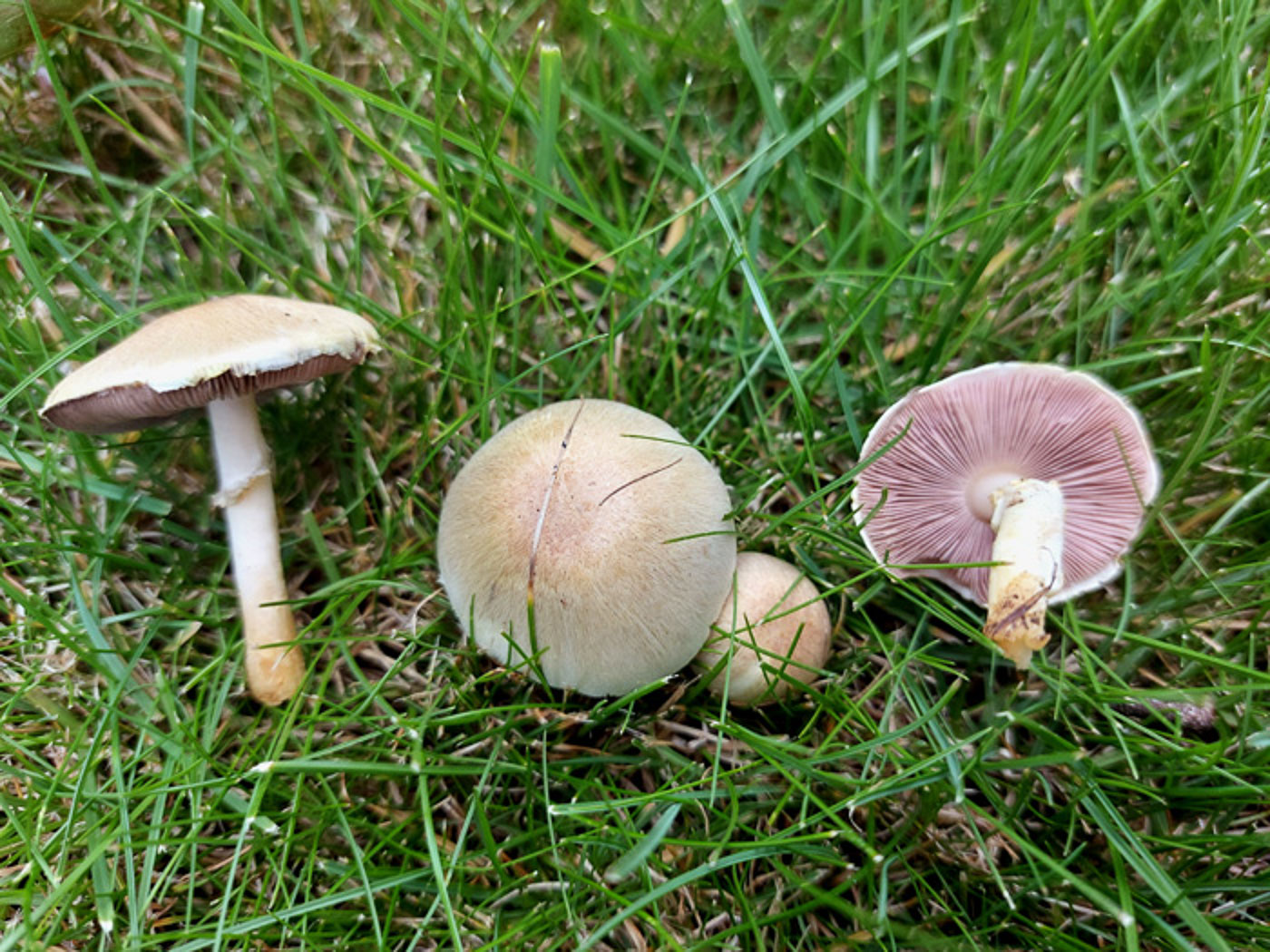 |
July 18th Agaricus comtulus (Mini Mushroom) 
In Gerrards Cross in a grassy verge Jesper Launder saw this group of small Mushrooms and took them home to check their identity. With basically white caps, pink free gills which darken with age, and a stem nearly always with a ring, this genus is an easy one to name in the field but far from easy to name to species. Today's is small and delicate (belonging to Section Minores) and one which yellows rather than reddens where damaged though not markedly; it has a pleasant almond smell. This is a new entry for Finds.
|
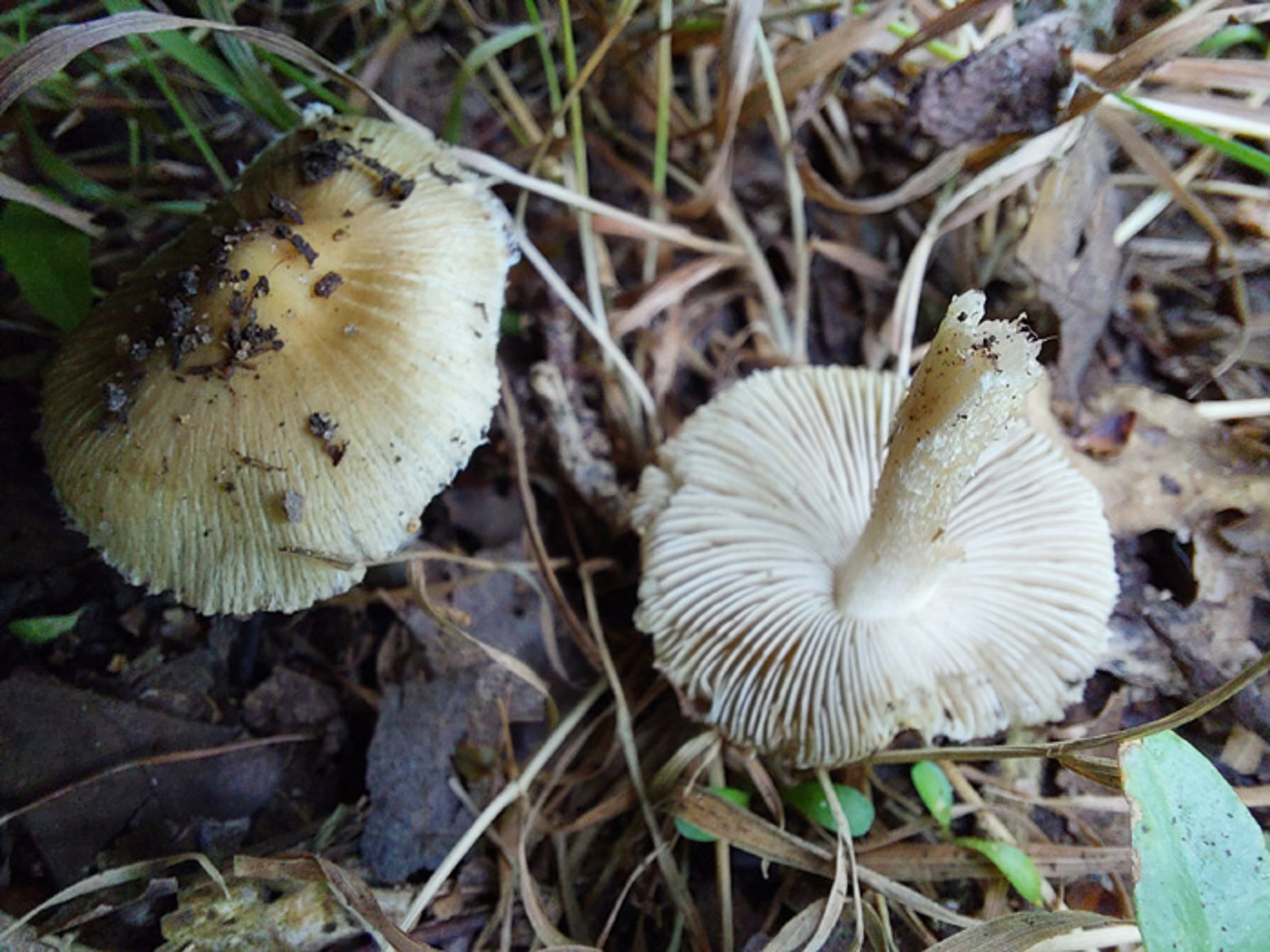 |
July 18th Pseudosperma rimosum (Split Fibrecap) 
In Gerrards Cross Common Jesper Launder found this pair of Fibrecaps under Oak and recognised the species (previously in genus Inocybe) from its pale streaky splitting cap and pale gills. Though one of our commonest Fibrecaps and found under a range of different trees, the species is variable and now recognised as a species complex but fairly safe to name when looking typical as here. See also in Finds 2022 November 10th.
|
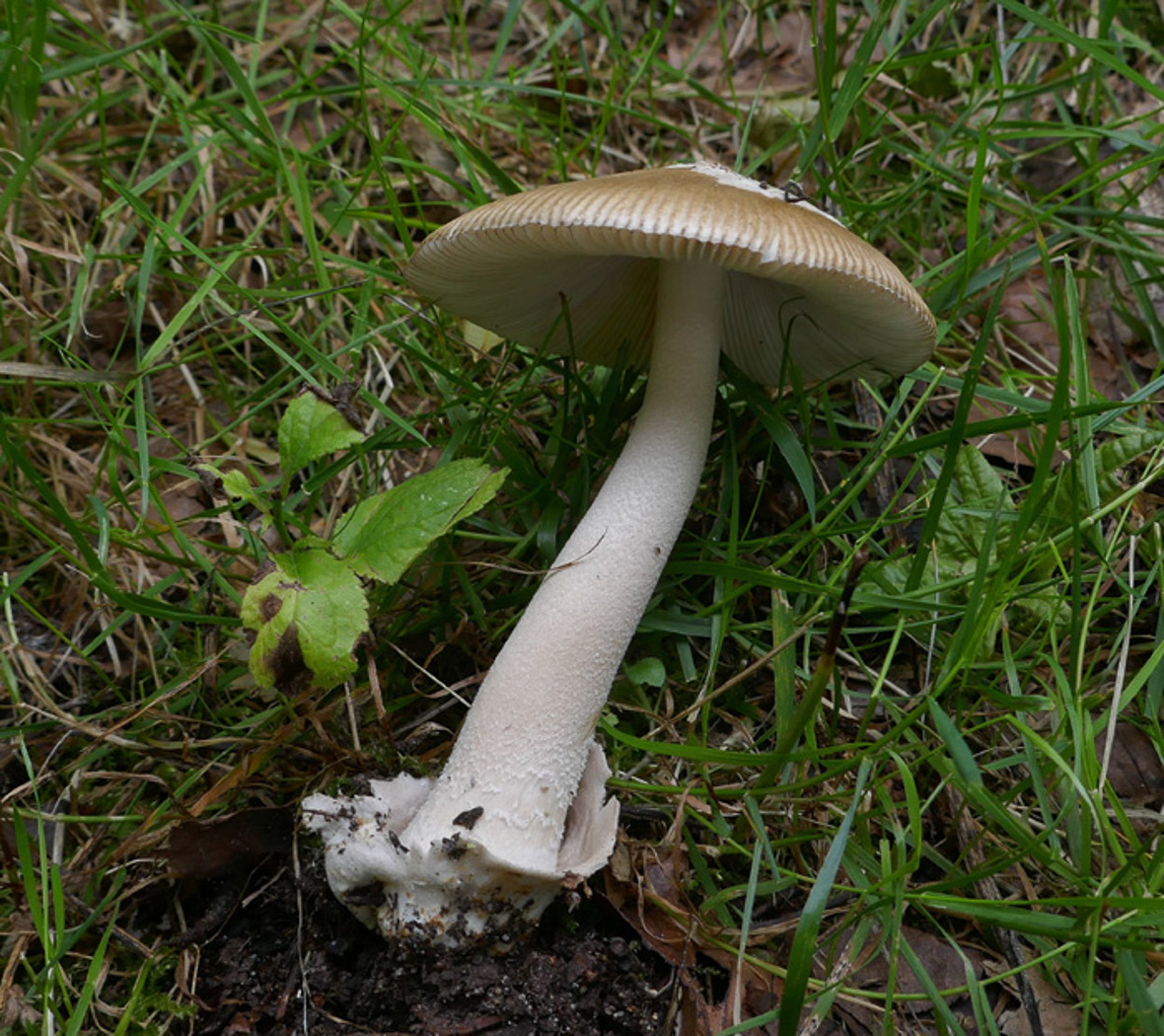
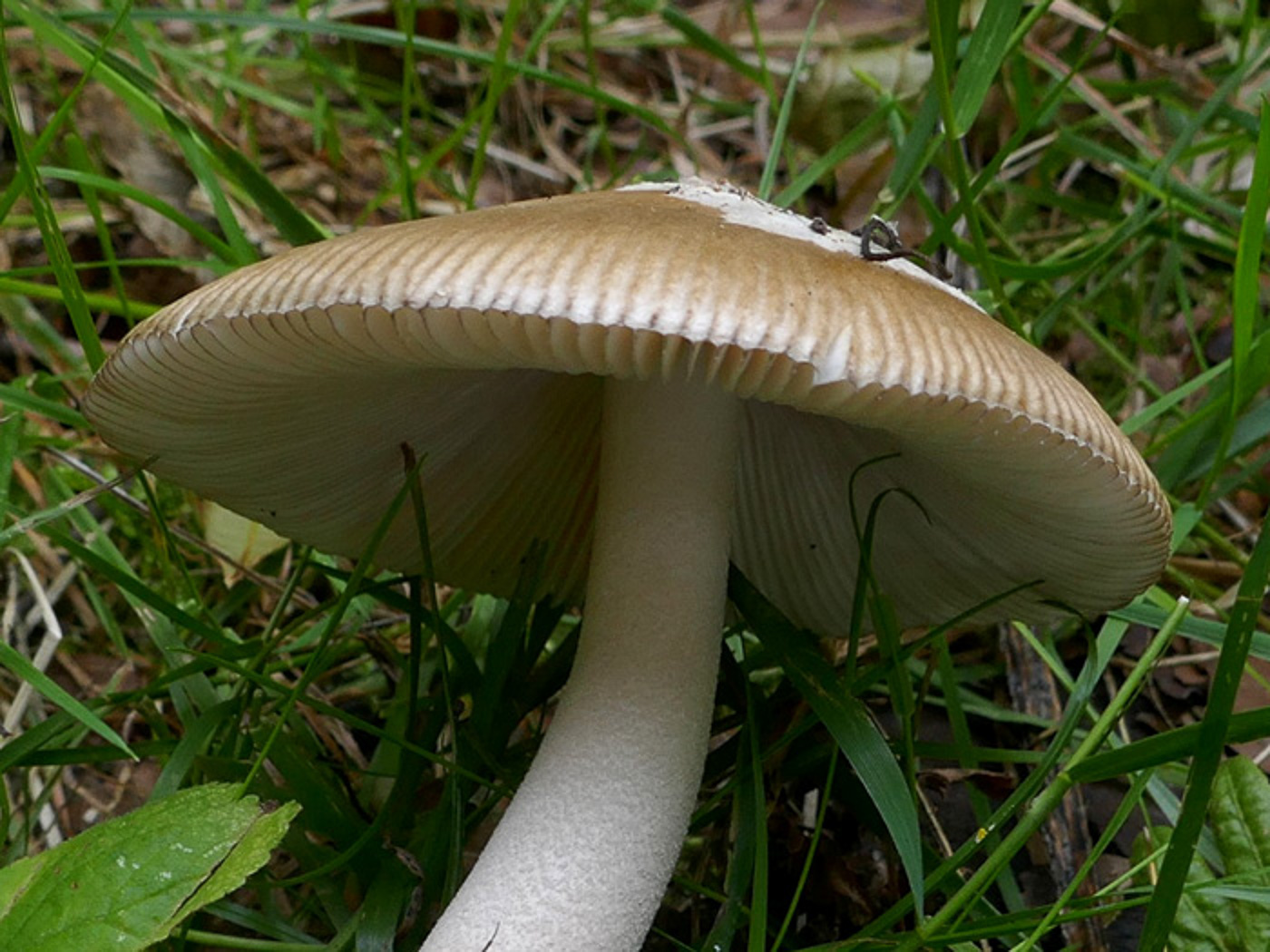 |
July 17th Amanita betulae (a rare Grisette with no common name) 
At Stampwell Farm under Birch Jackie Ewan found this Grisette and assumed it had to be the common A. fulva (Tawny Grisette) despite its rather paler cap colour and volva lacking the typical rust brown markings of that species. When nearby she spotted an immature 'button' which clearly showed the rust brown markings she was convinced. Penny, however, was uncertain on receiving the photo and knew that several other similar species existed so checked in Kibby vol 2 which covers A. betulae. Reading that this species has a faint brown gill edge (which helps to distinguish it from other lookalikes) she zoomed up on Jackie's photo where the brown edges near the cap rim are clearly visible (photo 2). Other features are the paler cap, the large white volva and association with Birch - though A. fulva also occurs under Birch but not exclusively. This is new to the county and certainly one to check for if you find a pale Grisette under Birch bearing in mind the brown gill edge and white volva.
|
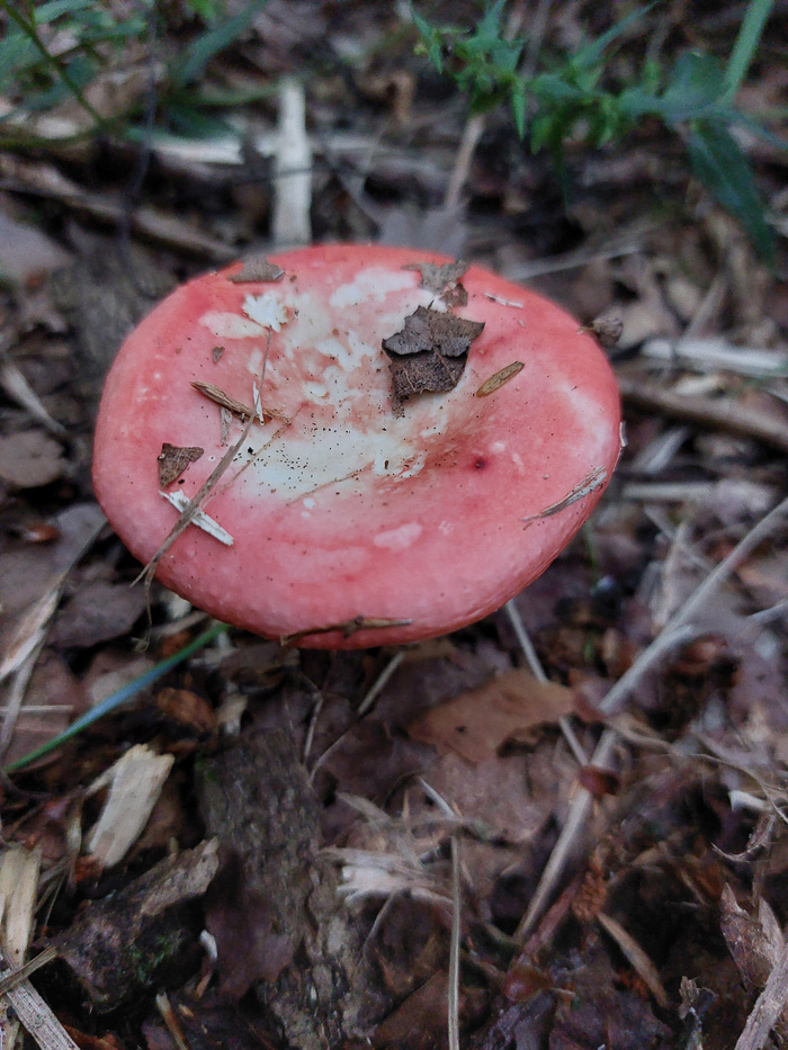
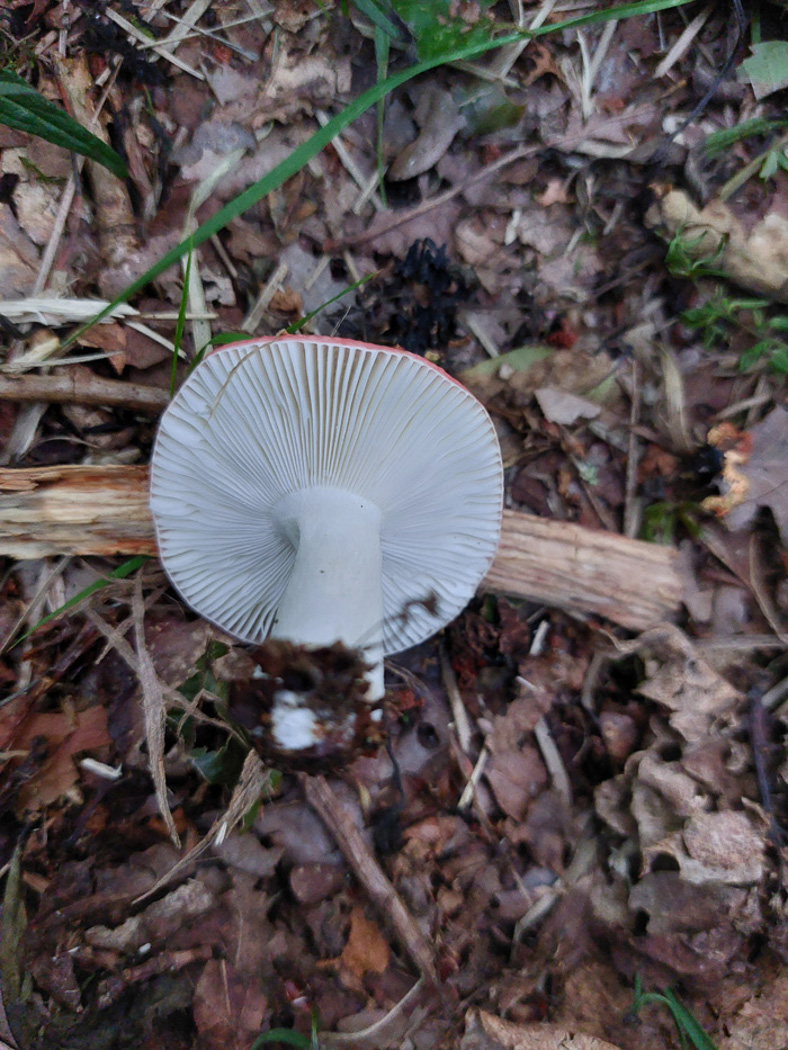 |
July 17th Russula silvestris (a Brittlegill with no common name) 
In Gerrards Cross Common under Oak Jesper Launder spotted this singleton, a species easily confused with the much more common R. nobilis (Beechwood Sickener). Both species have a rose pink red cap, sometimes pale cream in places, also a white stem and gills; whilst R. nobilis is host specific with Beech, R. silvestris favours Oak or occasionally Sweet Chestnut. So if both Beech and Oak are in the vicinity the two are tricky to separate. A drop of Guaiac on the stem helps: positive (instantly bright blue) in R. nobilis but negative (no change or just slight blue after a time) in R. silvestris; there are microscopic features which can help as well. No doubt the species is often misidentified and this is a new entry for Finds.
|
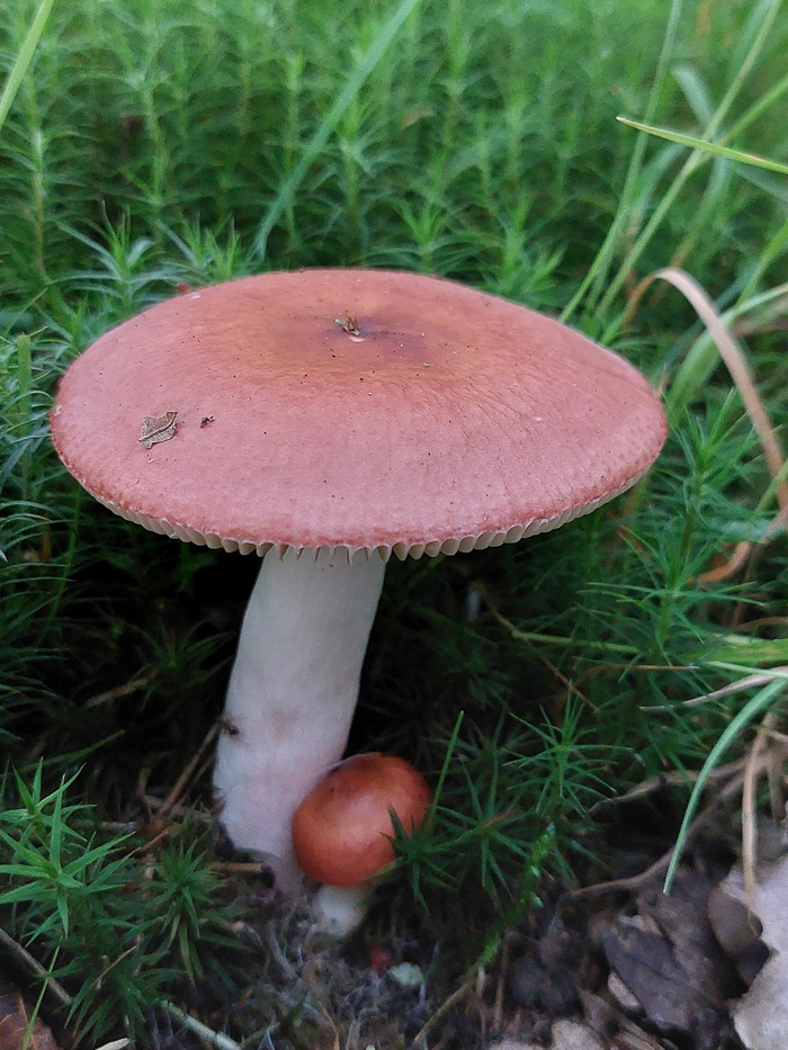
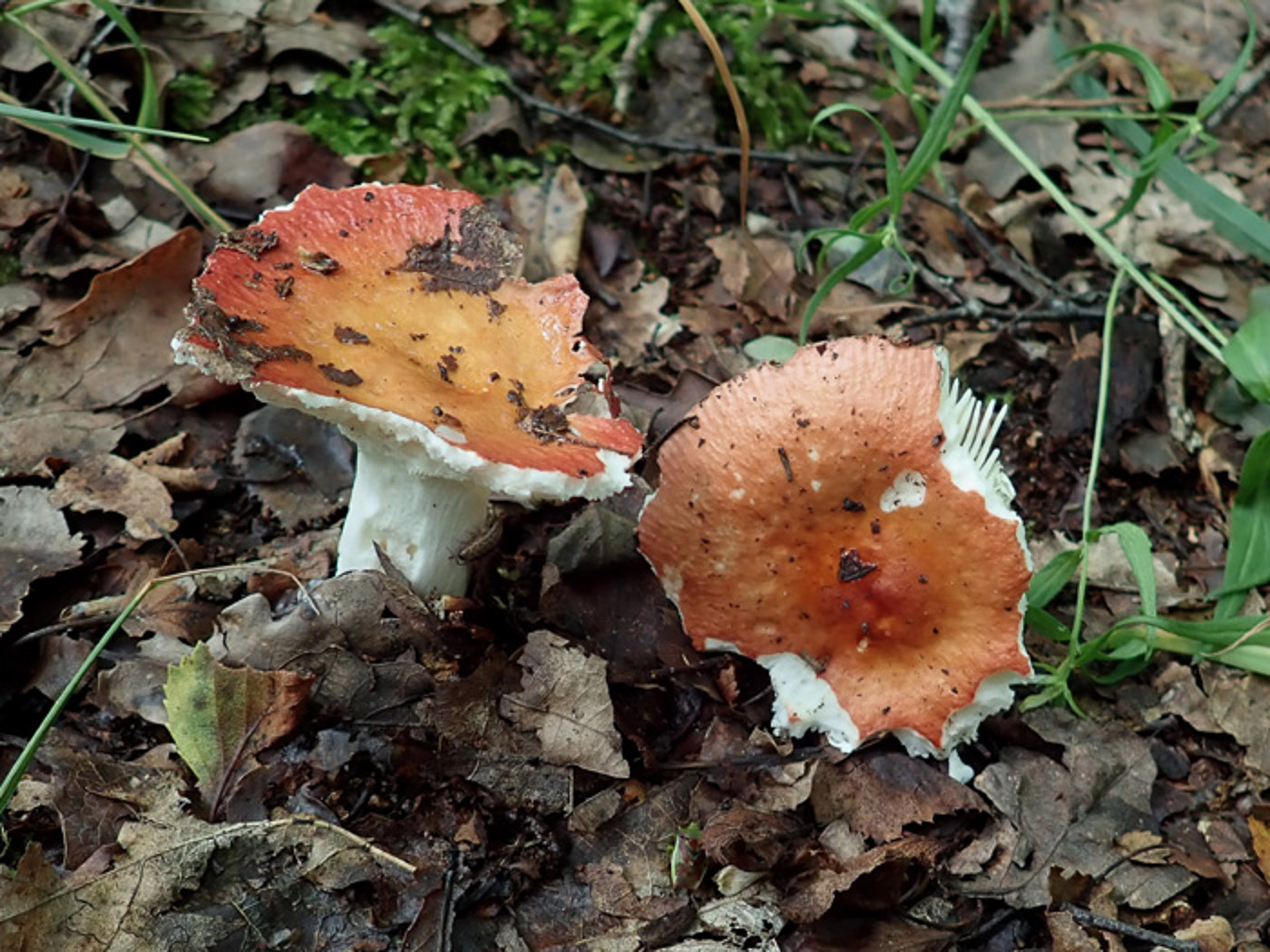 |
July 17th Russula velenovskyi (Coral Brittlegill)
In Gerrards Cross Common under Oak Jesper Launder found quite a few of these but most were well nibbled by squirrels apart from this photogenic pair. One of many red-capped species, the species is quite common and distinctly terra-cotta to coral red rather than pink or purple and often has a broad more orange umbo though is a little sunken around this. It has a white stem and gills and occurs under various deciduous trees. A few days later in Bernwood Forest Penny found two more typical examples, also thoroughly nibbled (photo 2). See also in Finds 2020 September 16th and 2021 July 19th and September 1st. |
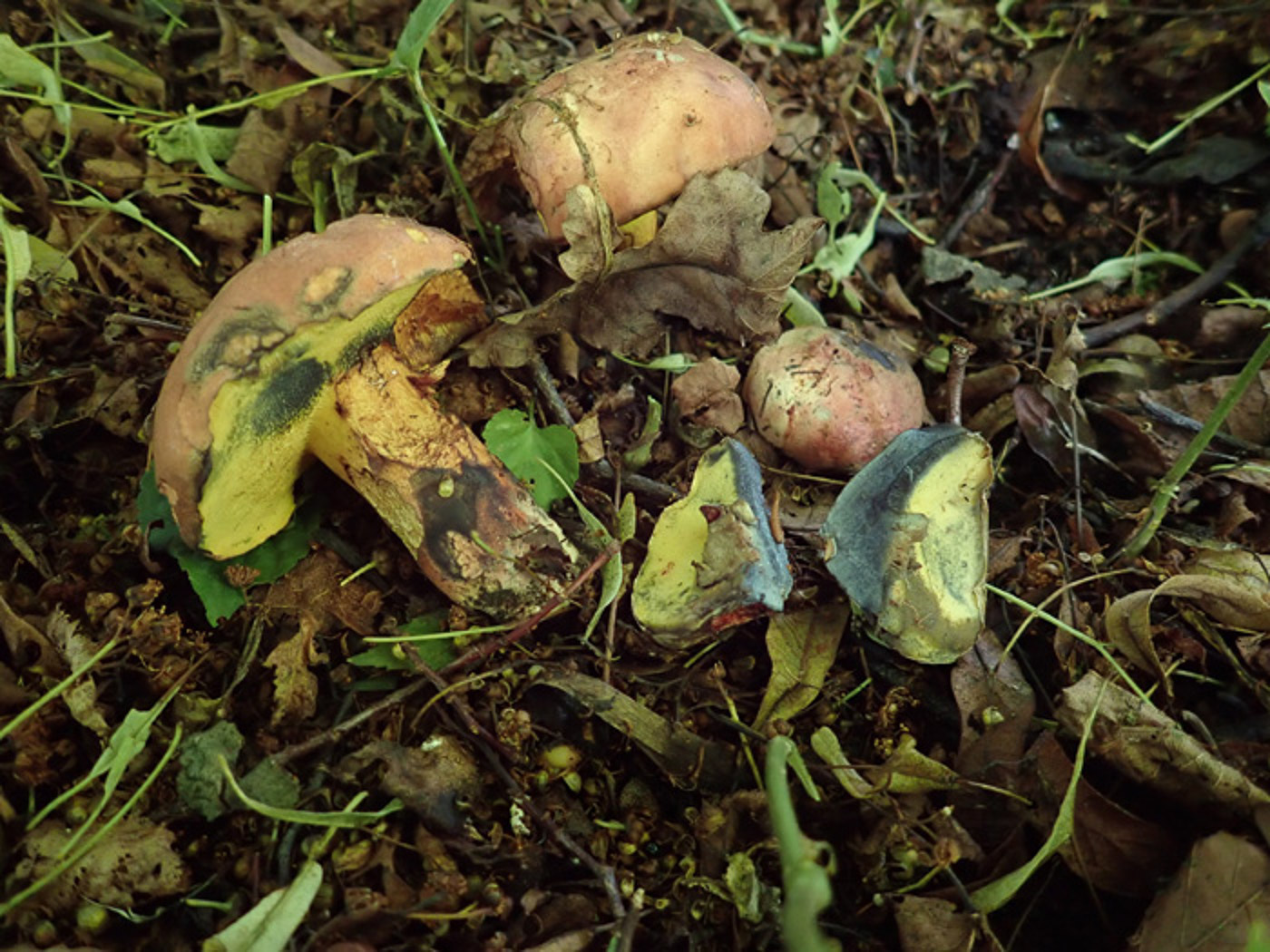 |
July 17th Cyanoboletus pulverulentus (Inkstain Bolete)
At Turville Heath under the Limes Penny noticed these somewhat broken specimens (the ground had recently been mown) but their yellow pores and strong really dark blueing together with the pink shades on cap and stem were sufficient to make an identification. The species (previously in genus Boletus) is uncommon (and was new to the site today) and mostly found under Beech or Oak, so this was a surprise to Penny under Lime. See also in Finds 2020 September 20th & October 1st, also 2021 July 19th.
|
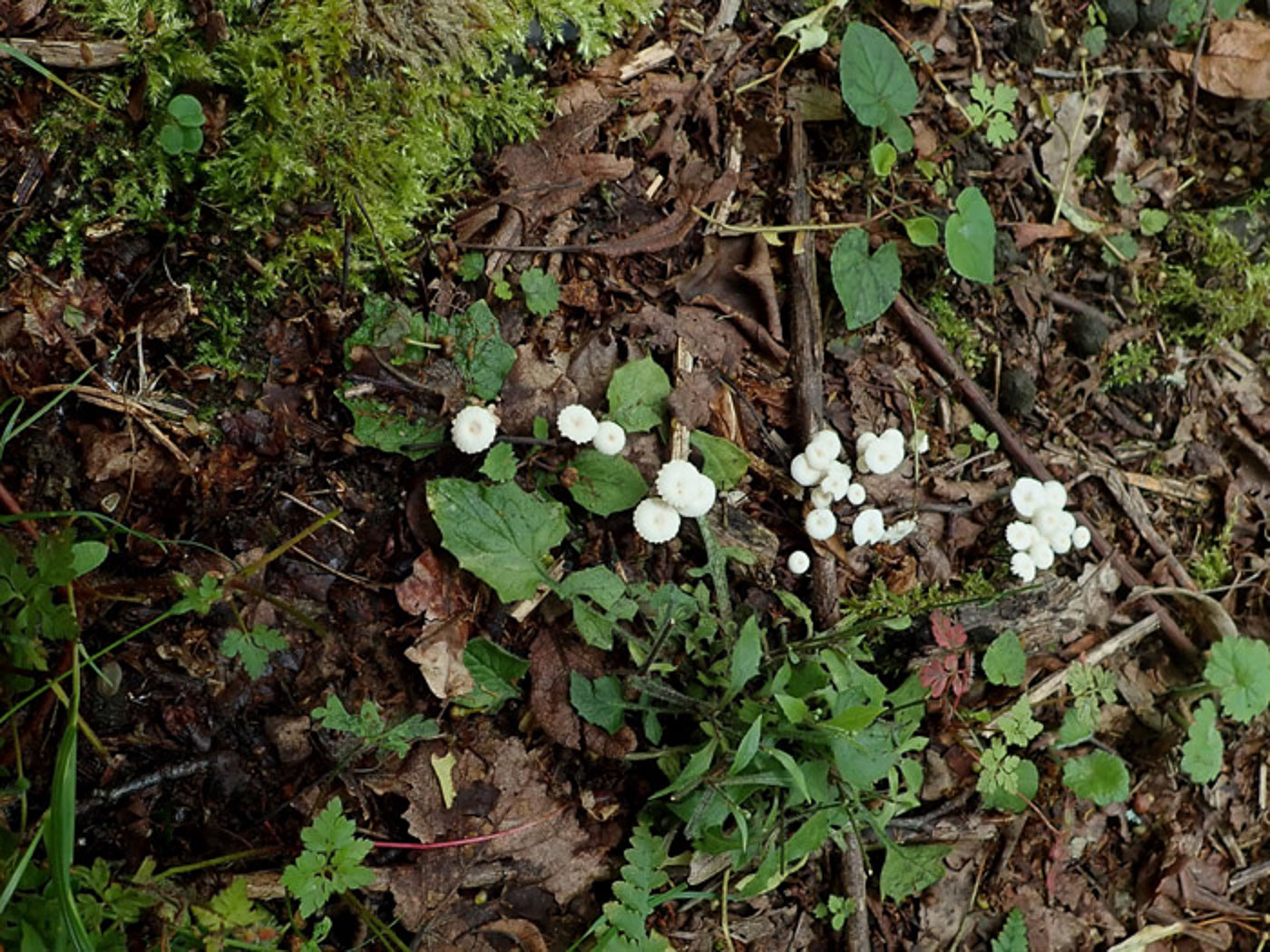
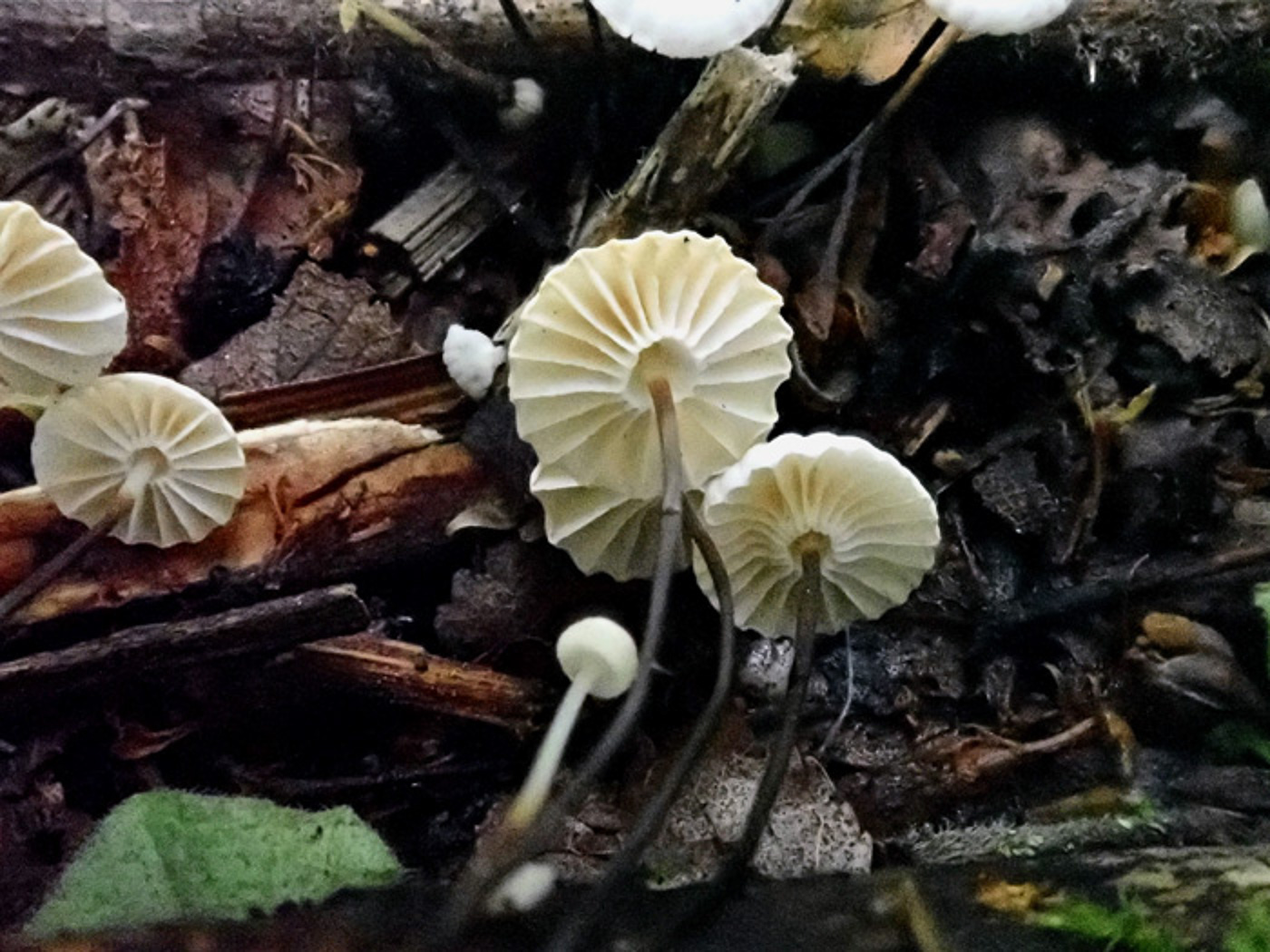 |
July 17th Marasmius rotula (Collared Parachute)
In woody debris under the Limes at Turville Heath Penny found this species popping up in many places in response to recent rains. From above this tiny mushroom could be one of several different species (photo 1) but the widely spaced gills attached to a 'cogwheel' rather than adjoining the stem (photo 2) leave its identity in no doubt. Only one other species (M. bulliardii) has this feature, but is much rarer, even smaller, found on fallen leaves of Beech, with the cap more cream than white and with a dark central dot. Both species are available via the Masterlist for comparison.
|
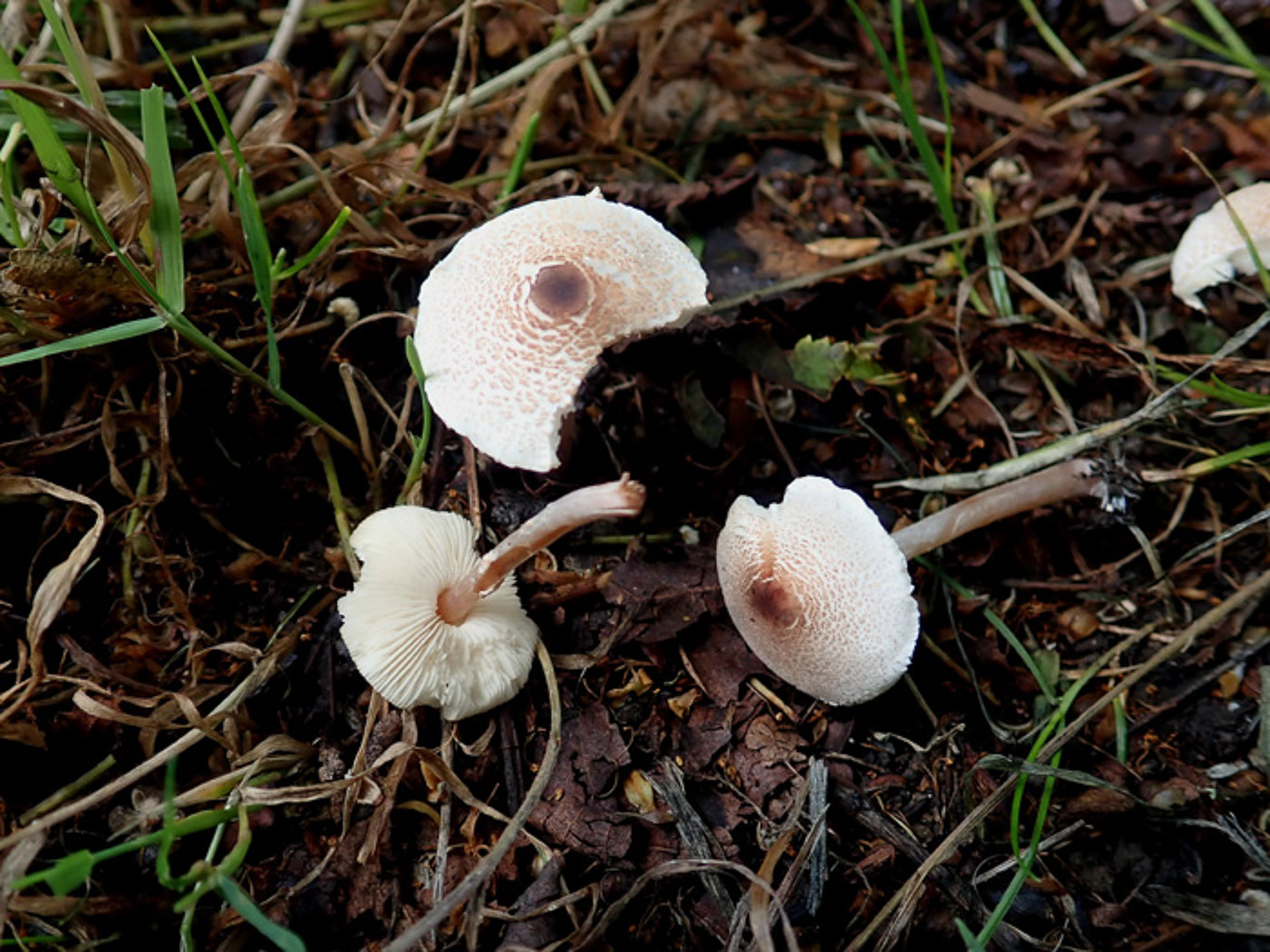 |
July 17th Lepiota cristata (Stinking Dapperling)
In a grassy roadside verge at Turville Heath Penny found this common autumn species was just beginning to make an appearance. If the white free gills, white finely scaly cap though increasingly brown towards the centre and small size (usually under 2.5 cms across) are not sufficient to suggest its name, the unpleasant soapy smell should clinch it. We have a good selection of images on Finds, found via the Masterlist.
|
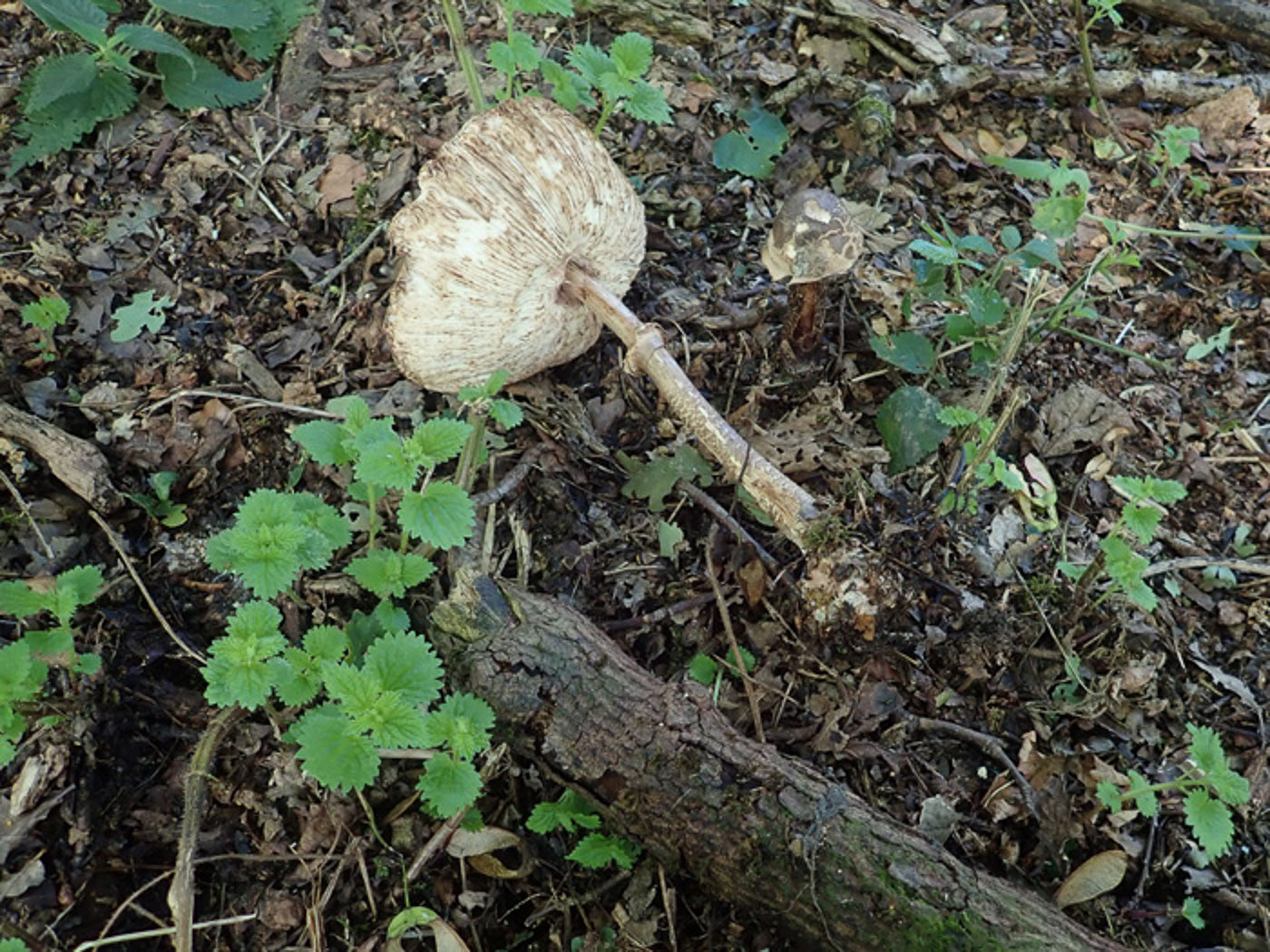
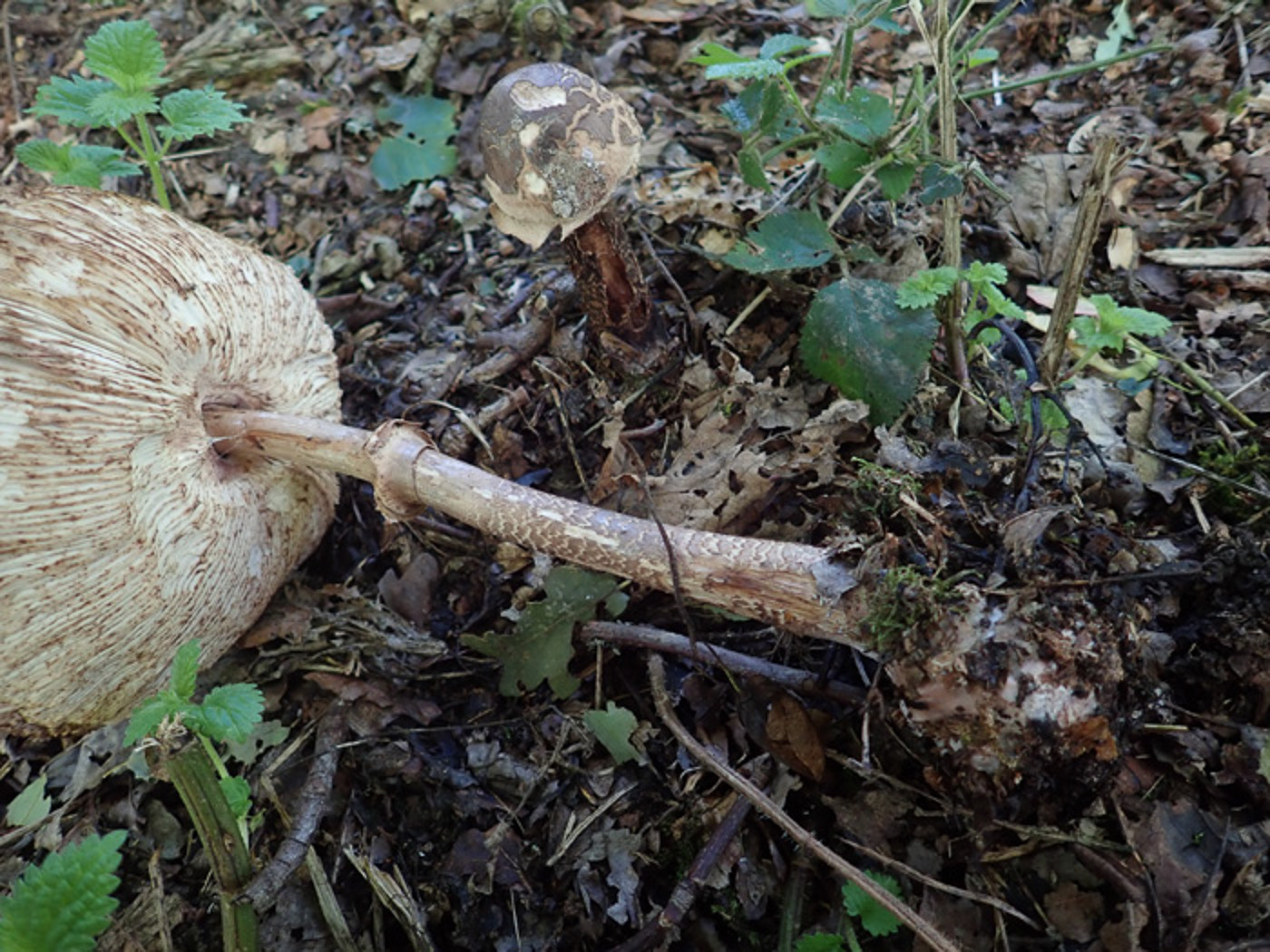 |
July 17th Macrolepiota procera (Parasol)
In contrast the the delicate species seen above, here is one of the largest Lepiota species, hence its genus name. This was under mixed deciduous trees at Turville Heath, found by Penny, though the relentless rain and wind of recent days had taken it toll so it was not in great condition. Nevertheless the snakeskin stem markings and swollen base left no doubt as to its identity. We have a good selection of images on Finds, found via the Masterlist.
|
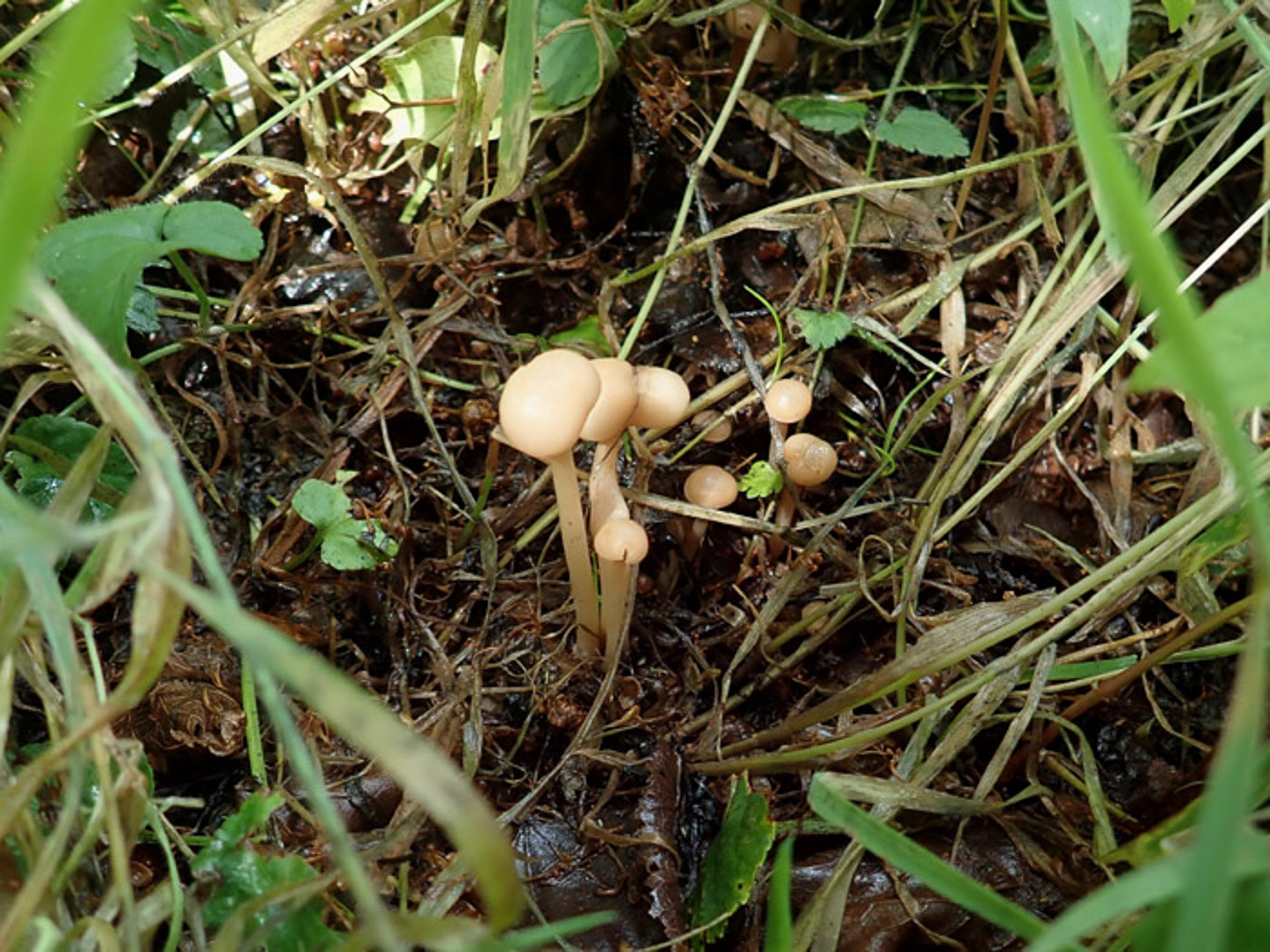
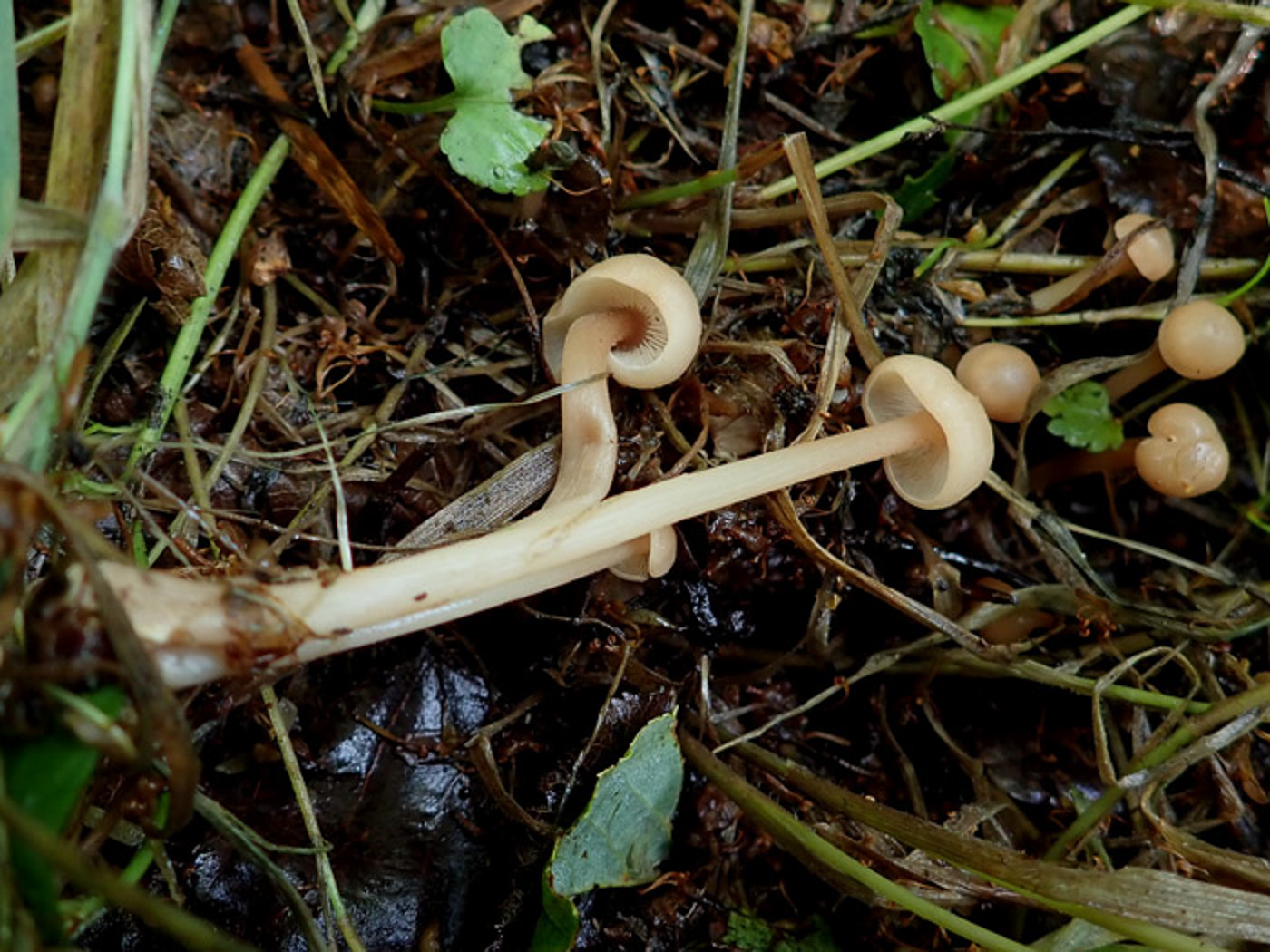 |
July 17th Gymnopus confluens (Clustered Toughshank)
At Turville Heath Penny found this common woodland species just beginning to emerge under the Limes. The caps were still less than 1 cm across but the clustered habit, crowded gills and finely furry stem surface gave away its identity. See the Masterlist for our many previous entries which show the species at different stages.
|
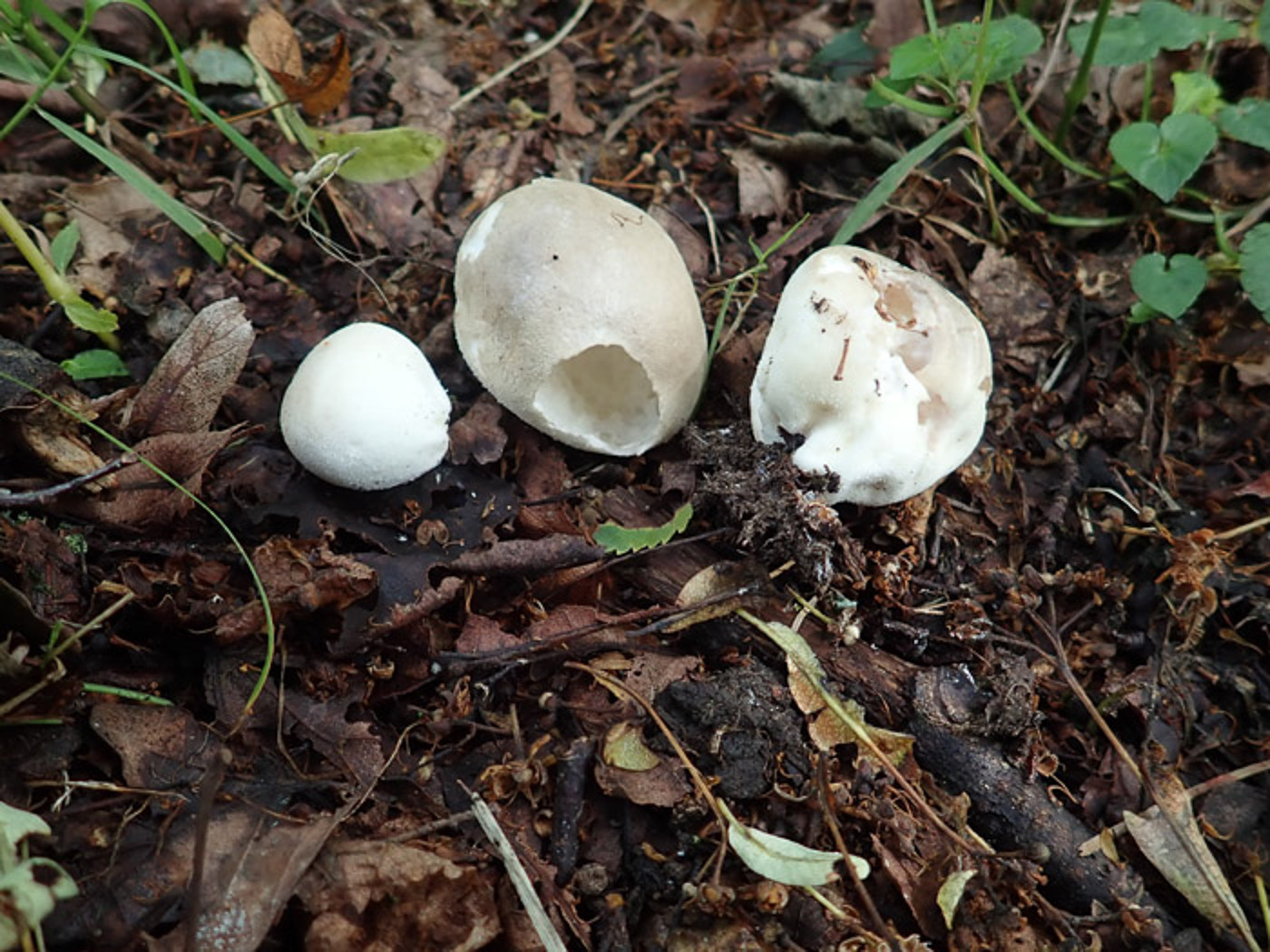
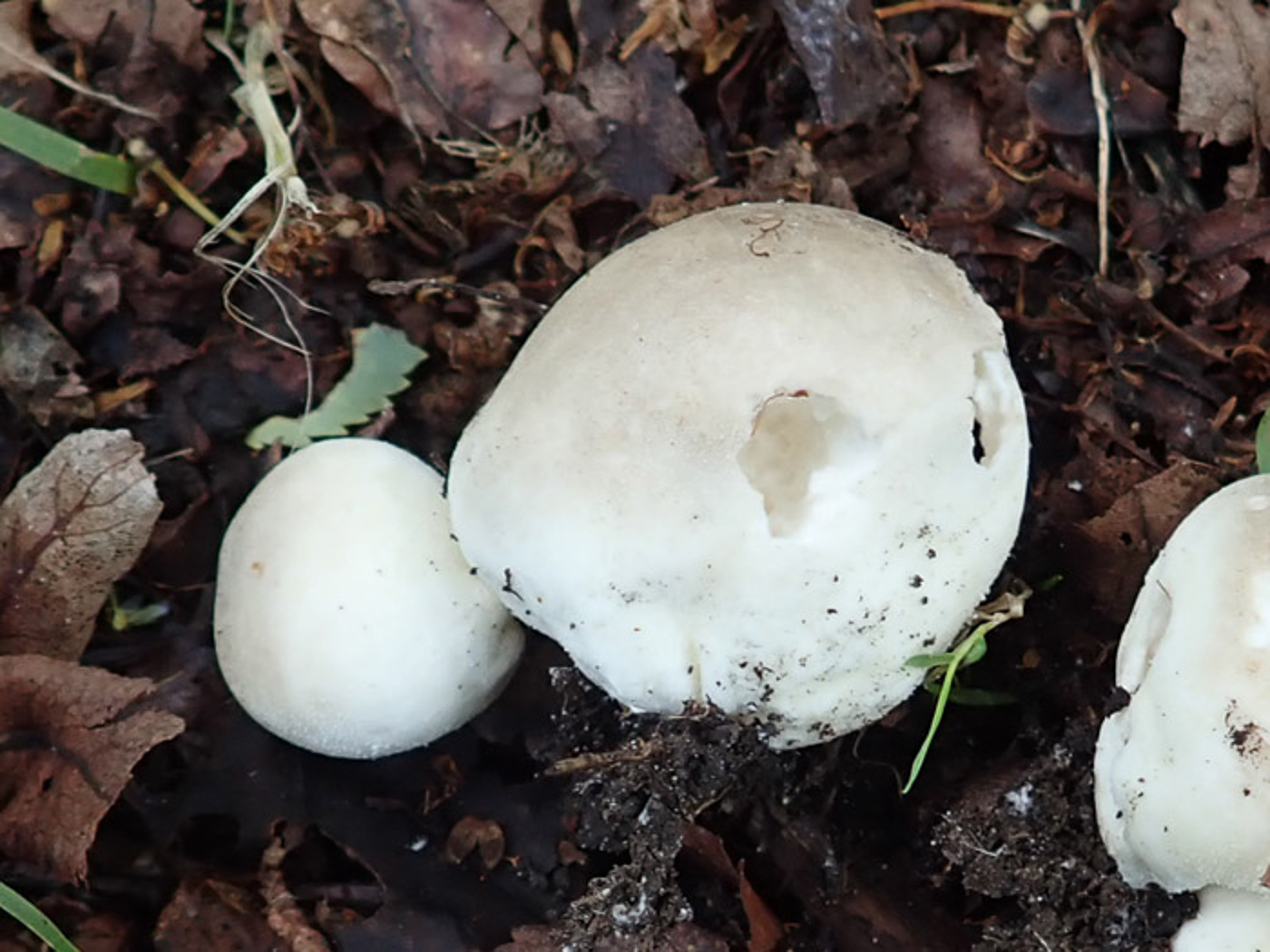 |
July 17th Lycoperdon pratense (Meadow Puffball)
At Turville Heath Penny noticed this species in several spots both in grassy glades and in soil amongst woody litter under the Limes as seen here. Previously in genus Vascellum, when in woody habitats it is separated from the two common woodland puffballs by its (a) smooth surface, soil substrate, also its slightly pleated base adjacent to where the mycelial cords are attached. It tends to appear earlier in the season also. See the Masterlist for our three previous entries.
|
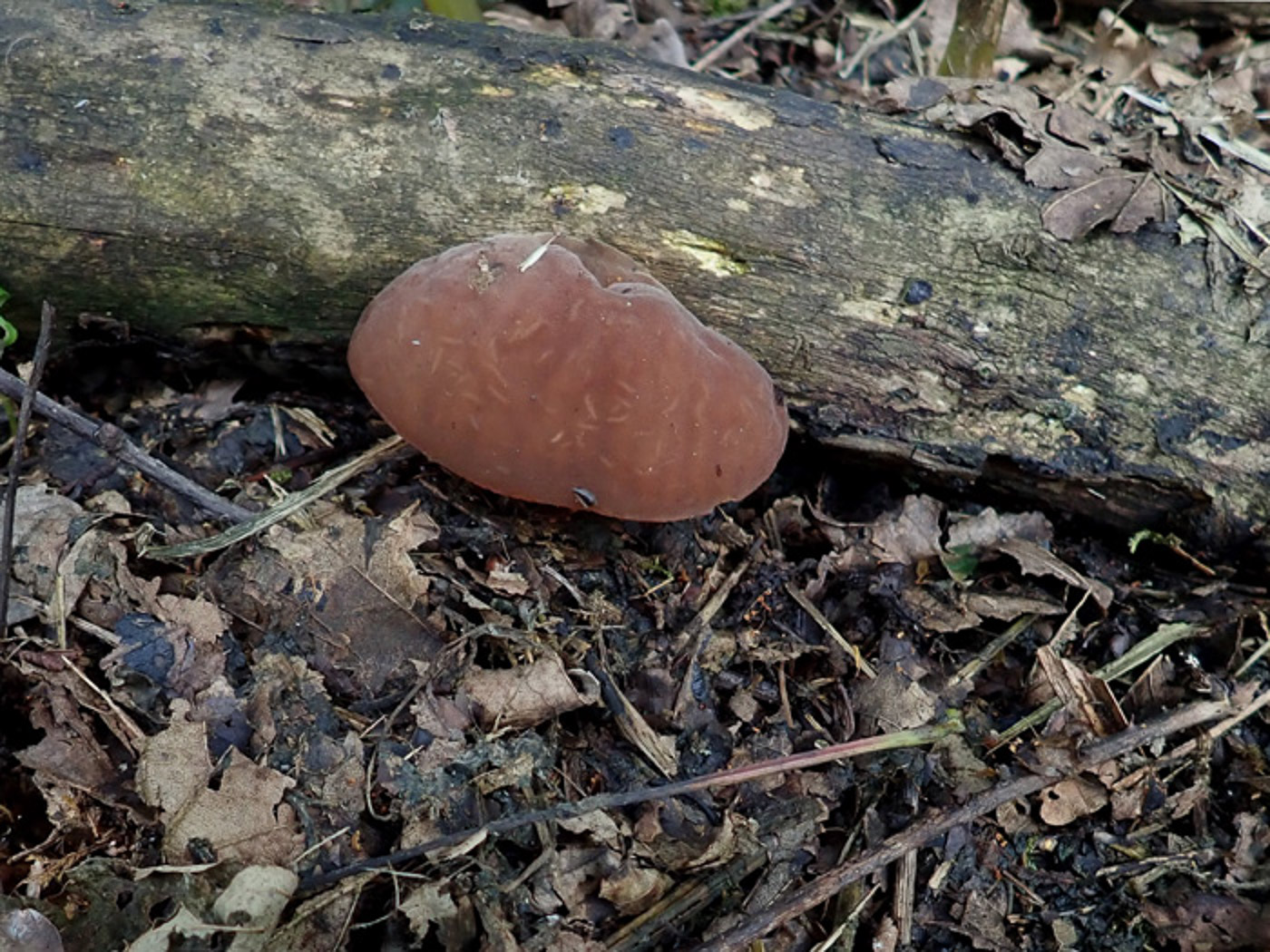
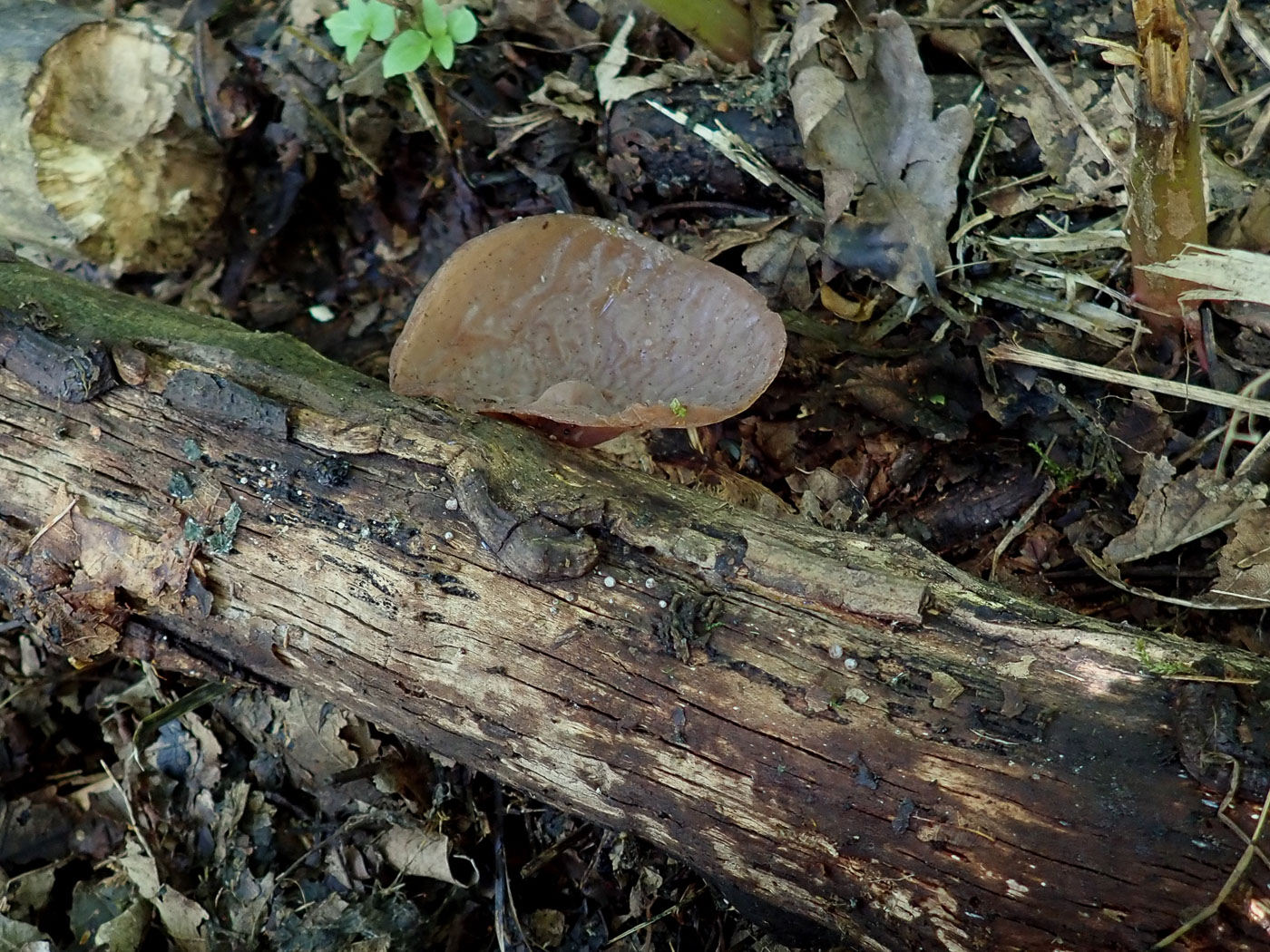 |
July 17th Auricularia auricula-judae (Jelly Ear)
At Turville Heath Penny noticed this single large ear on fallen Sycamore - an unusual host for this very common species. (Photo 2 shows the paler uneven underside.) We have plenty of images on Finds on various hosts though mostly on Elder - see the Masterlist to locate them.
|
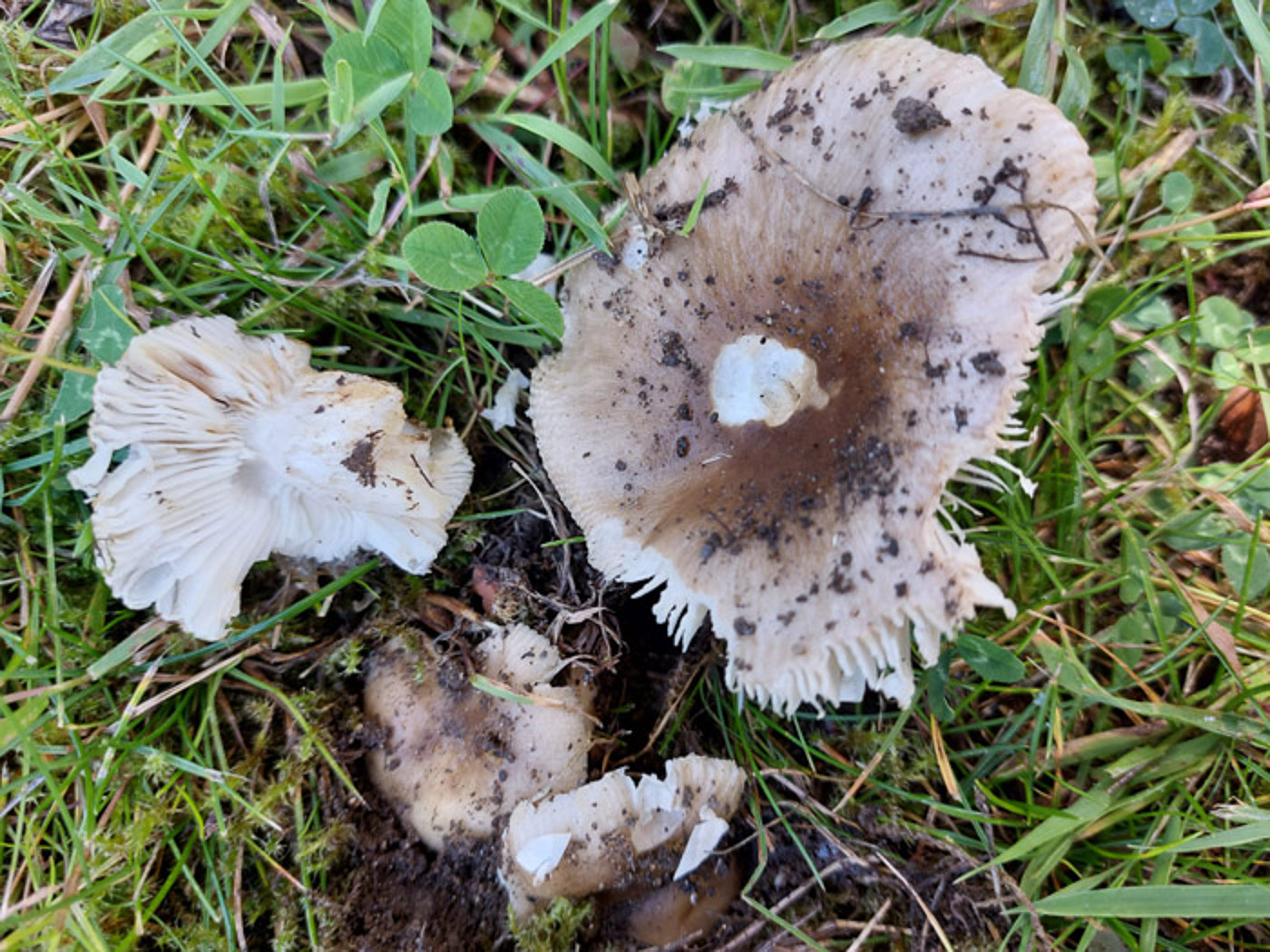 |
July 17th Russula sororia (Sepia Brittlegill)
In Gerrards Cross under Oak Jesper Launder found these rather nondescript Brittlegills which have an unpleasant sour smell - hence a species belonging to the so-called 'Smellies'. The species is more or less identical to the much more common R. amoenolens, also an Oak associate, but a drop of Guaiac on the stem separates them: positive = bright dark blue in R. amoenolens, but negative = little or no change in R. sororia, confirmed today by Jesper. Compare the two species on Finds using the Masterlist.
|
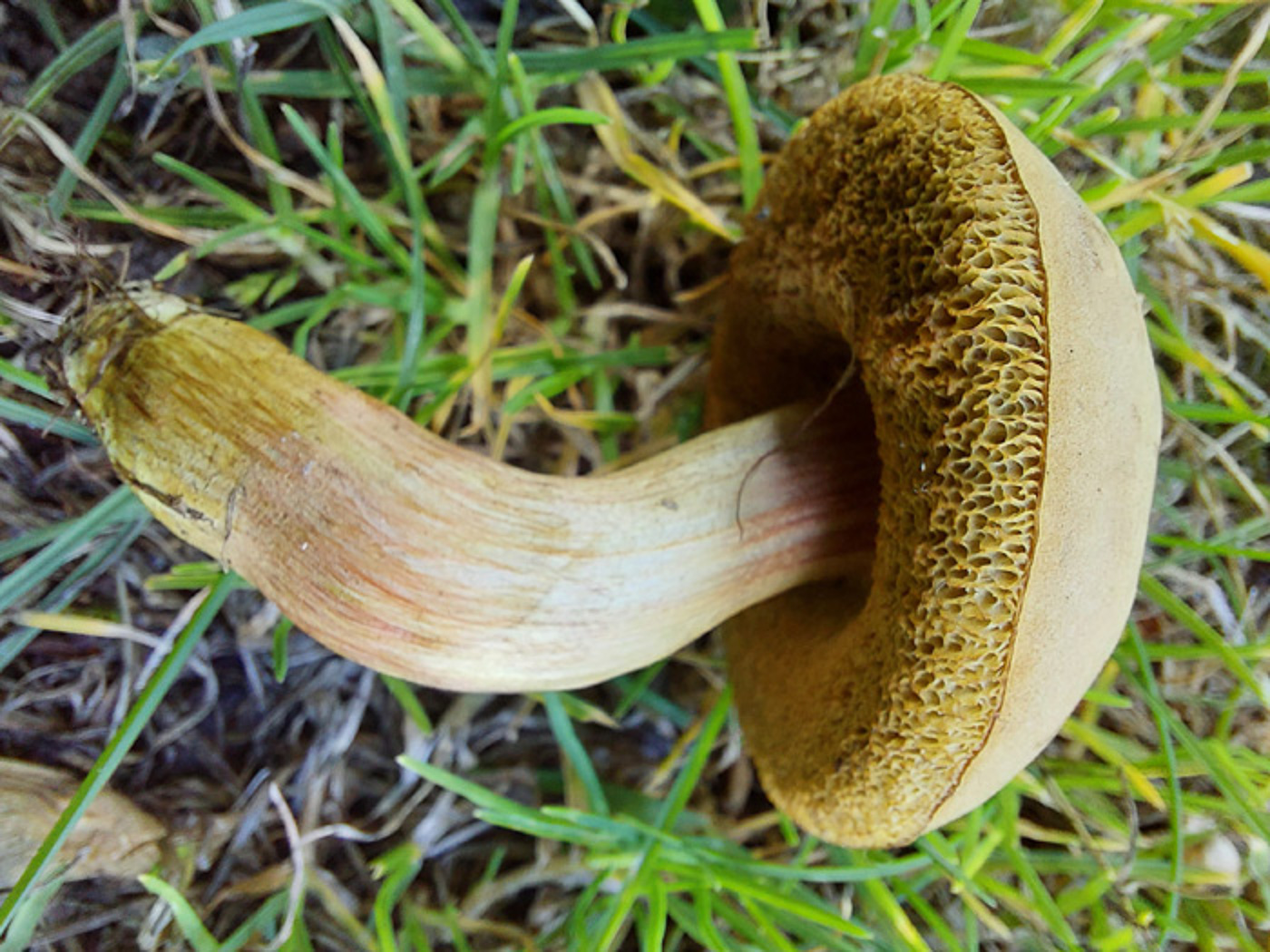
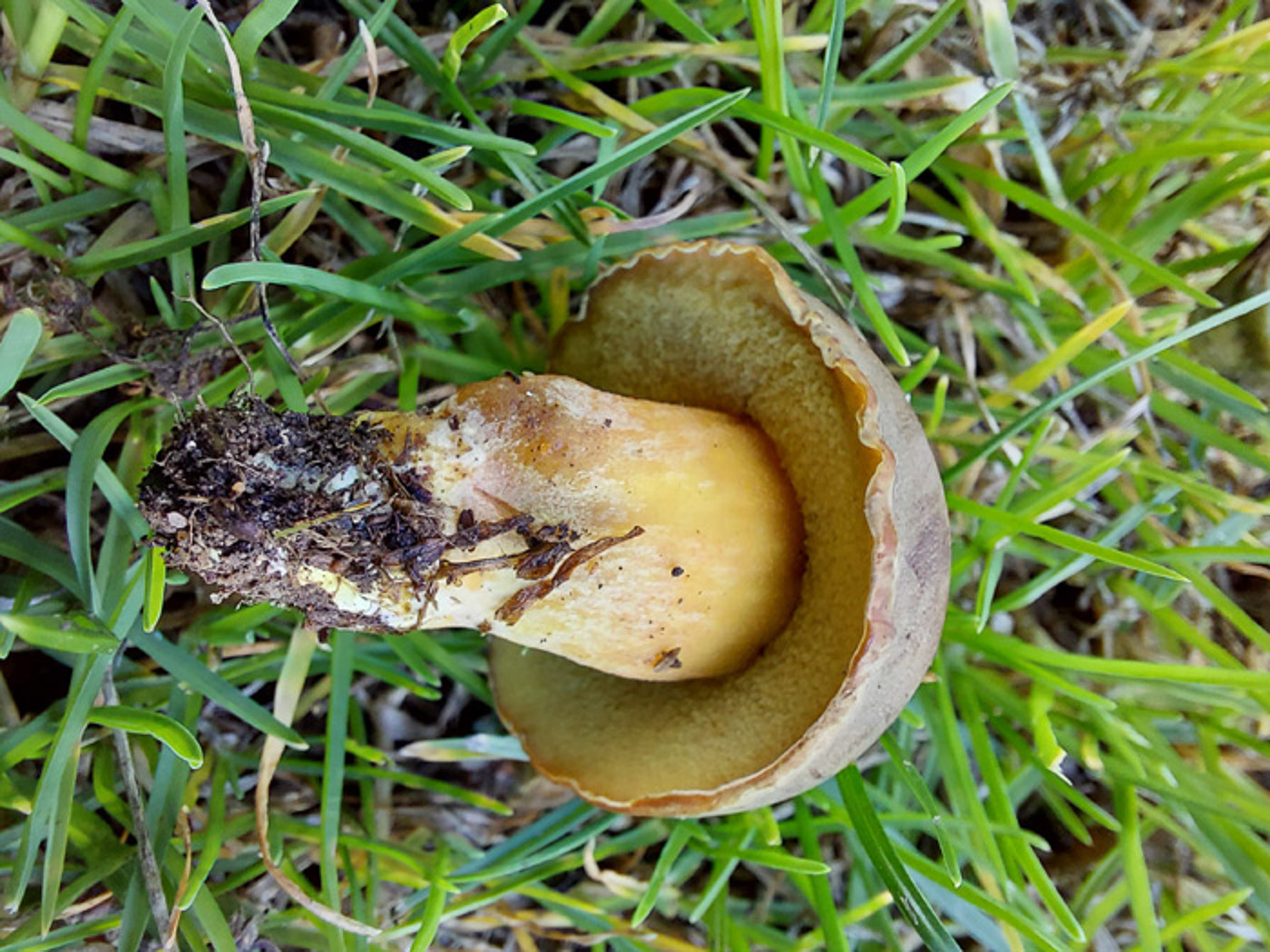
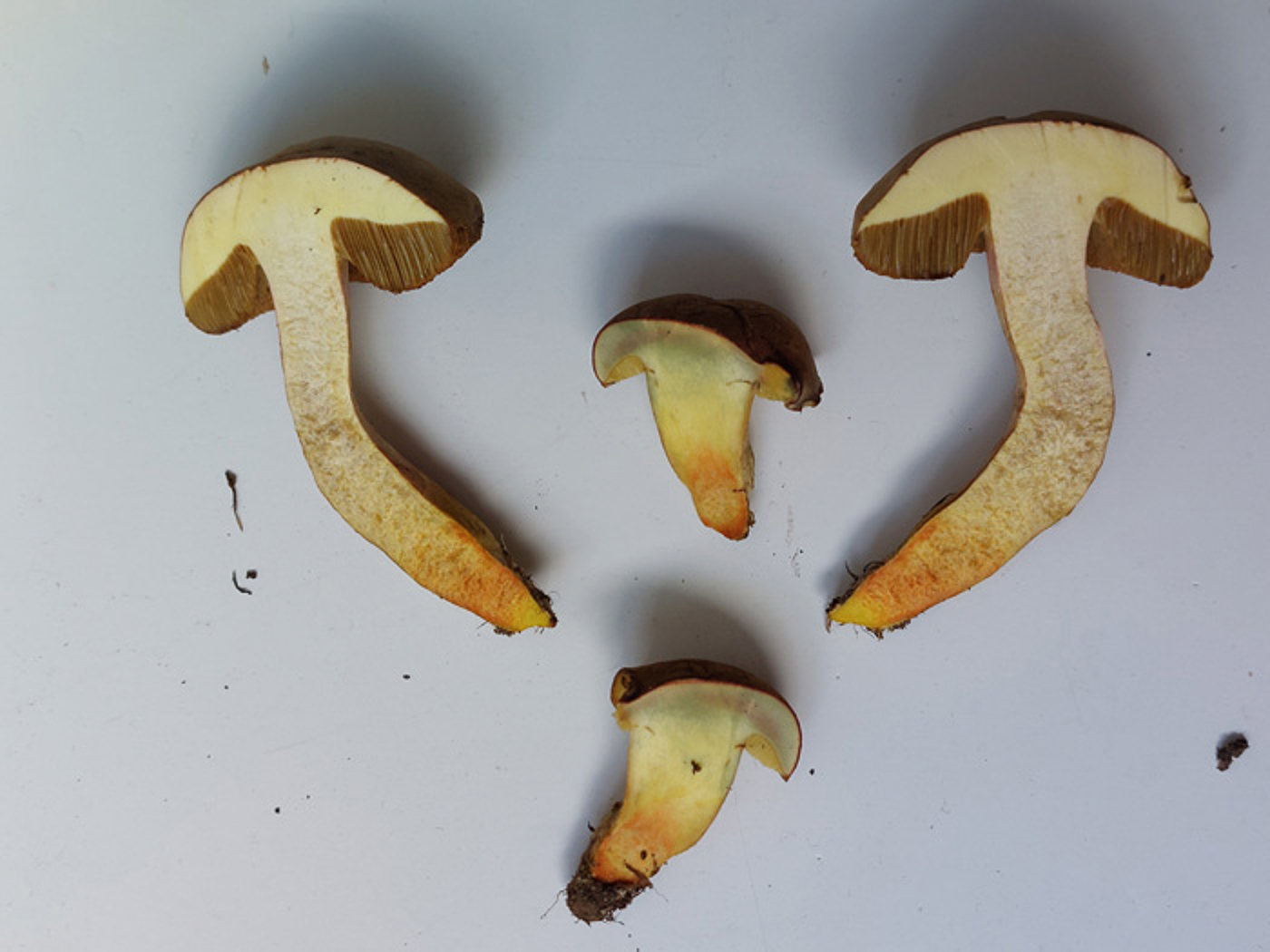 |
July 17th Hortiboletus engelii (a species of Bolete with no common name)
In Gerrards Cross Jesper Launder found this common species under Oak - it's most usual host. Very similar to members of the Xerocomellus genus (though now moved apart from them) it has one redeeming feature found at the stem base when dissected. Seen well in photo 3, it has fine orange dots / staining which are not seen in any other species. See the Masterlist for our several other examples.
|
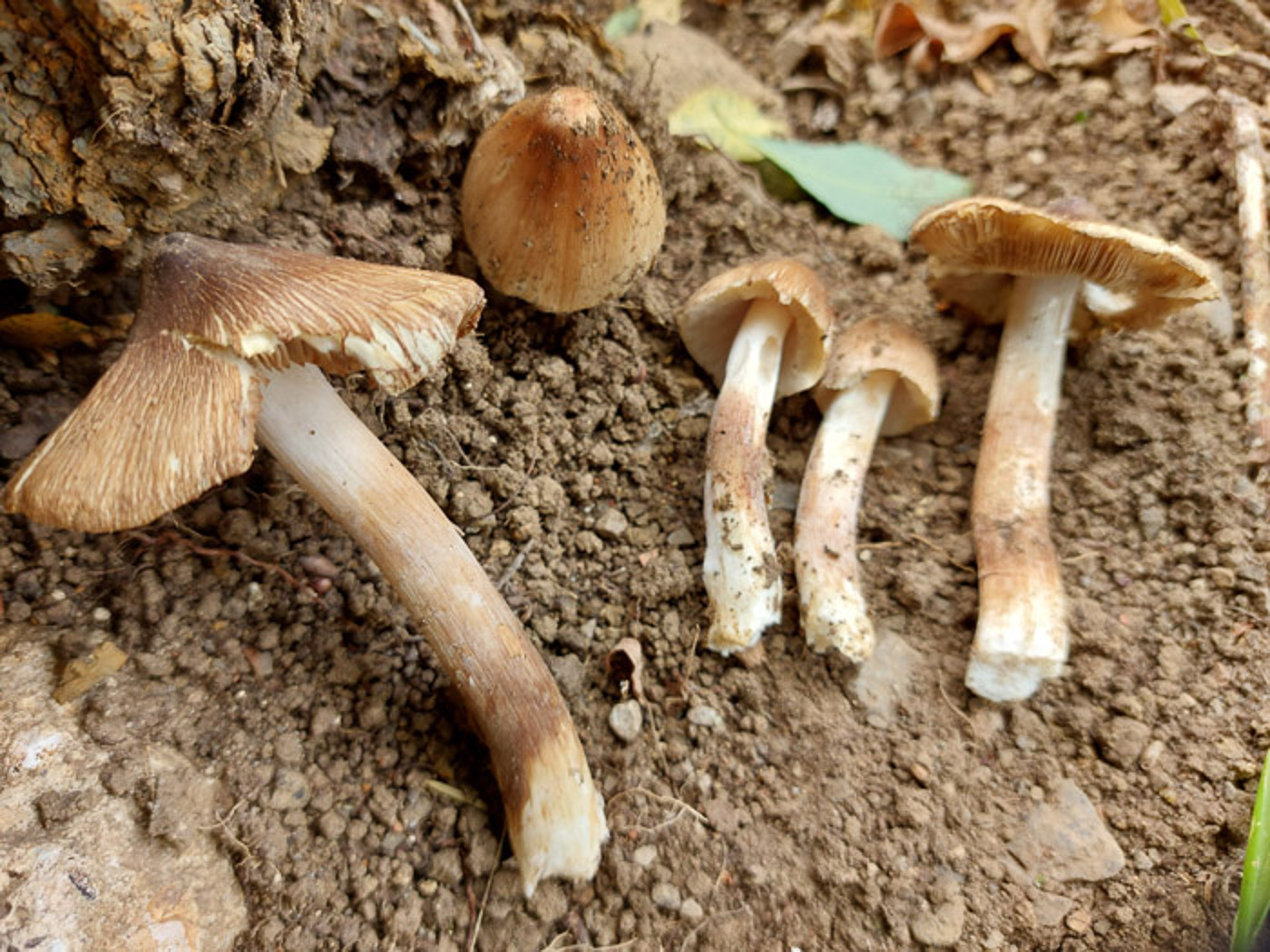 |
July 16th Pseudosperma perlatum (a rare Fibrecap with no common name) 
In soil under a mix of deciduous trees in Bernwood Forest Jesper Launder found this cluster of Fibrecaps which, as always with this genus, needed work at home to identify. This genus - split off from Inocybe ss in part on account of its thin-walled cystidia only found on the gill edge - is nearly always tricky to key out. This species is very closely related to the common P. rimosum but differs in having a brown cap with no yellow, also a stem which is darker towards the base, clearly seen here. We have only two previous county records and this is a new entry for Finds. The collection will be sequenced.
|
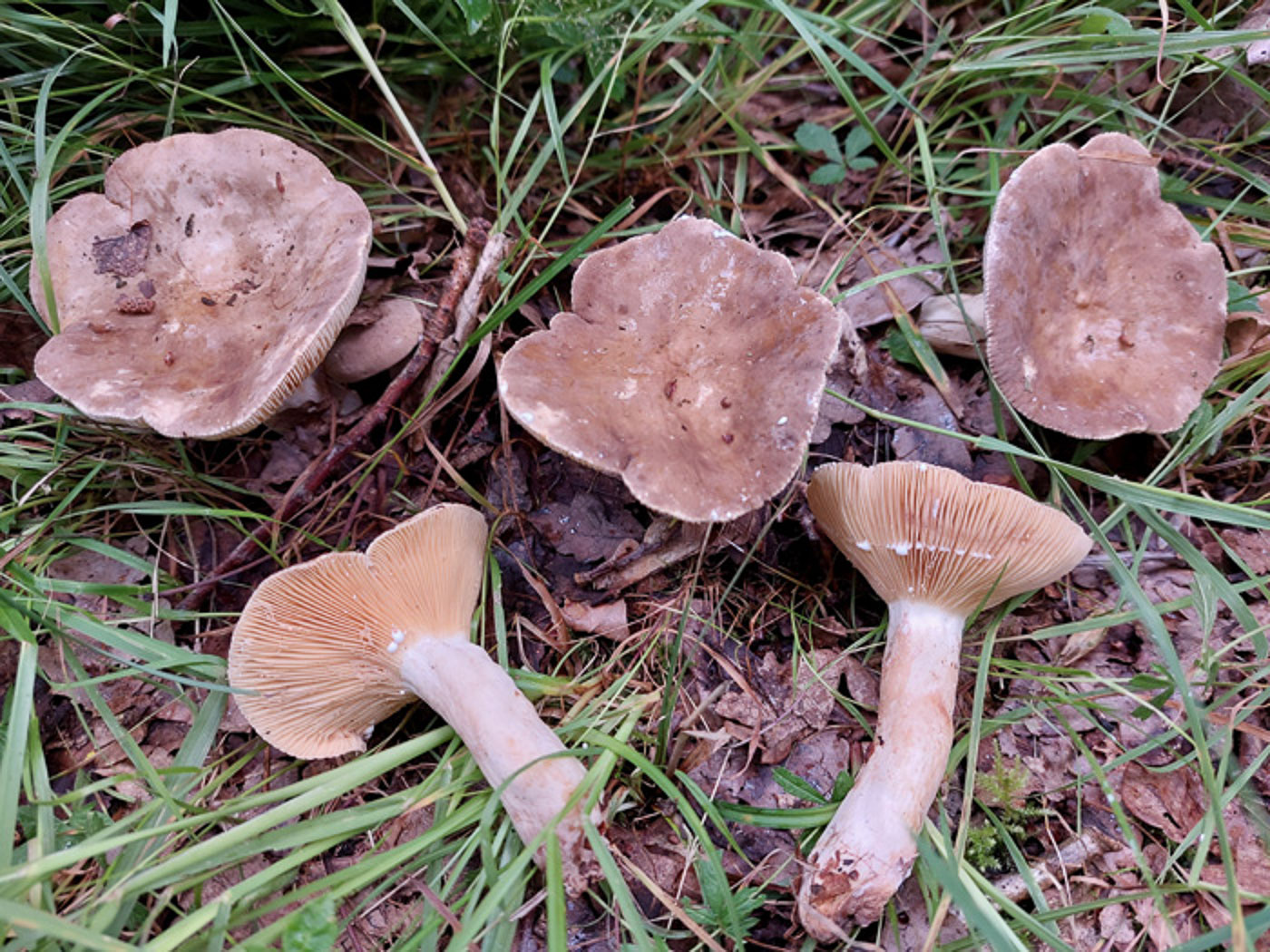
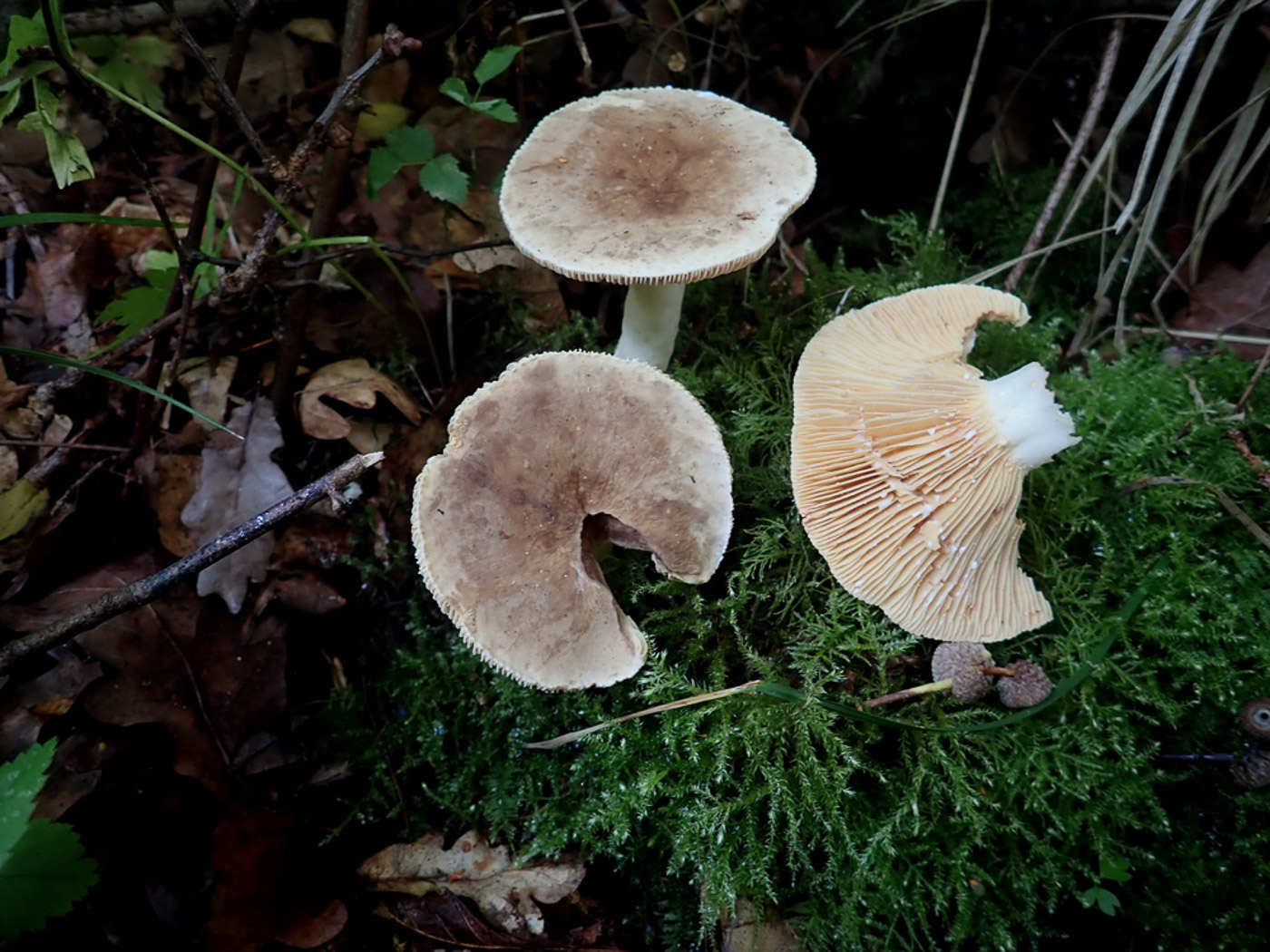
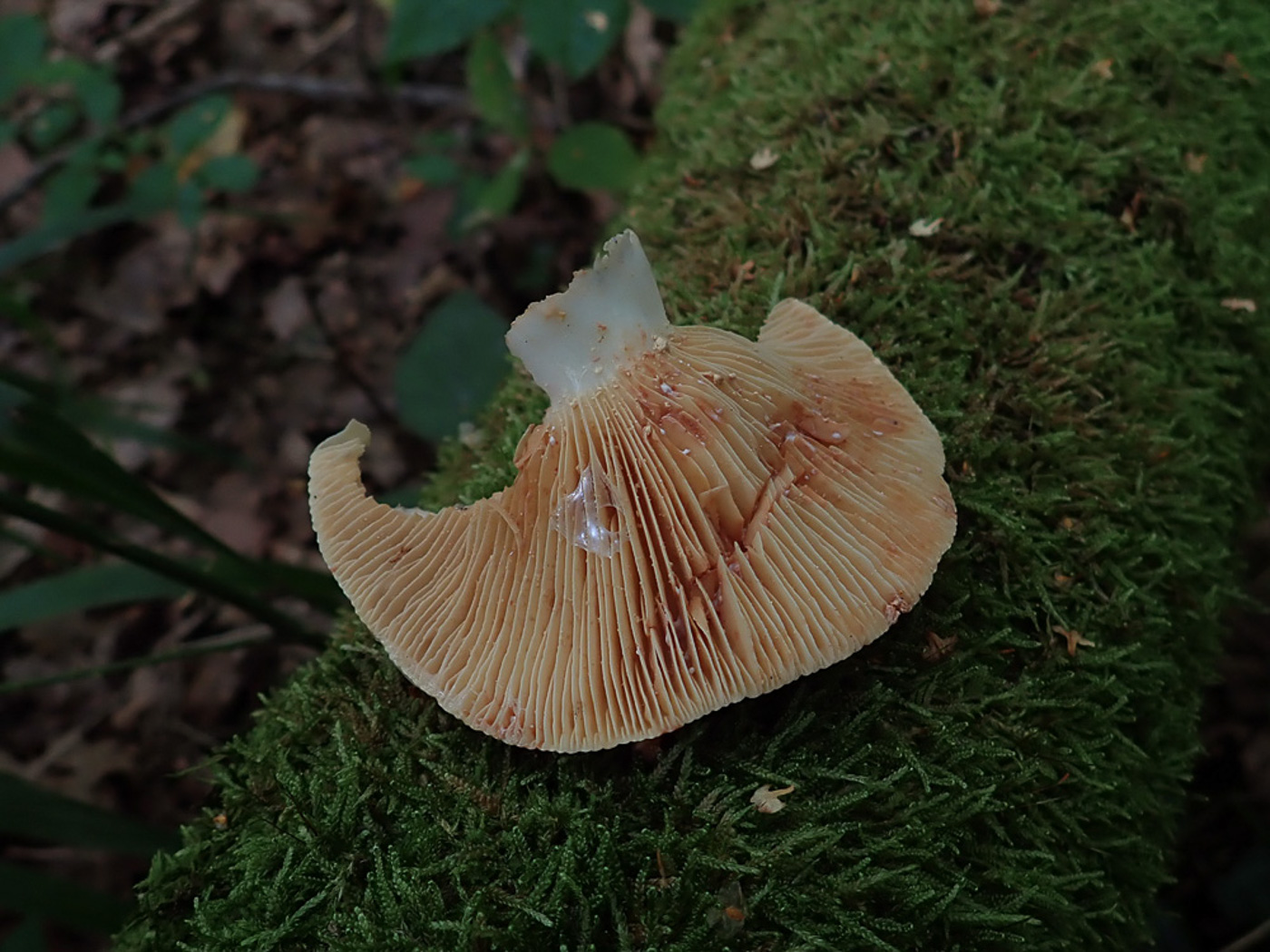 |
July 16th Lactarius azonites (a  Milkcap with no common name) Milkcap with no common name)
Under Oak at Bernwood Forest Jesper Launder found a collection of these quite unusual Milkcaps, one of a small group of this genus which has latex (milk) which turns pink on the gills when damaged. It has a dry velvety slightly mottled palish brown cap, a white stem and abundant milk which takes 5-10 minutes to turn pink. Photos 2 and 3 are of a collection from Rushbeds Wood made by Penny a month or so later, photo 3 taken about 10 minutes after collection to show the milk drying pink. (See also an unusual white variety of this species dated August 7th.) This is a new entry for Finds.
|
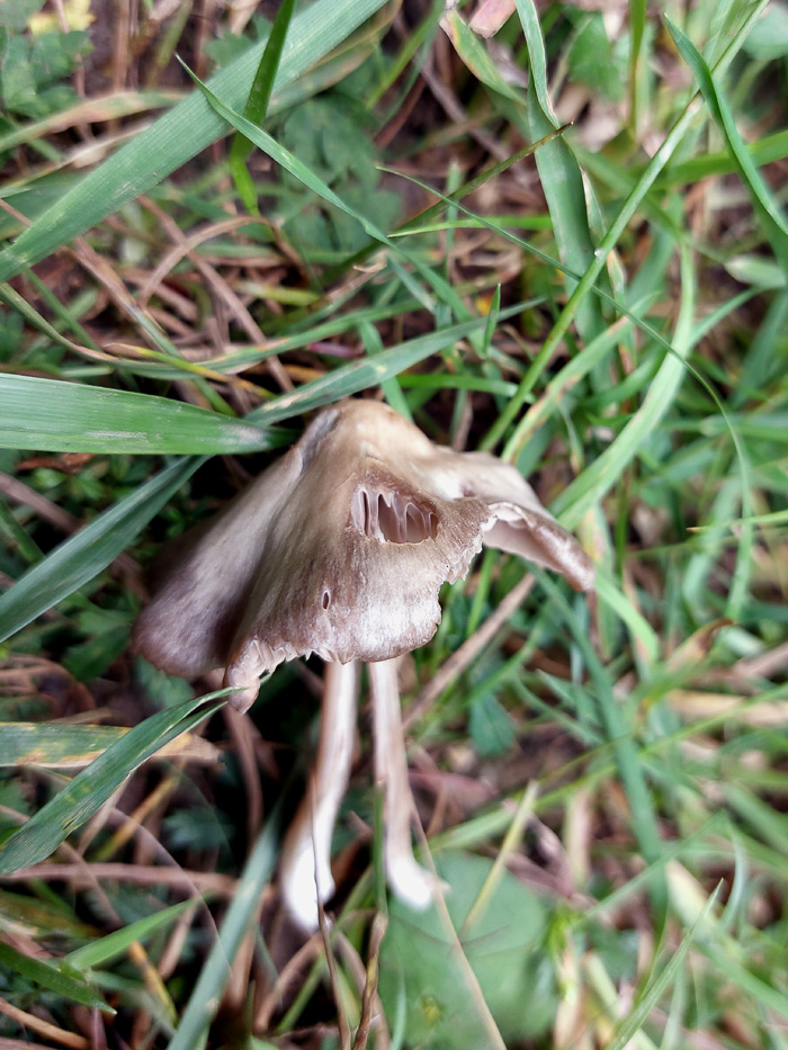
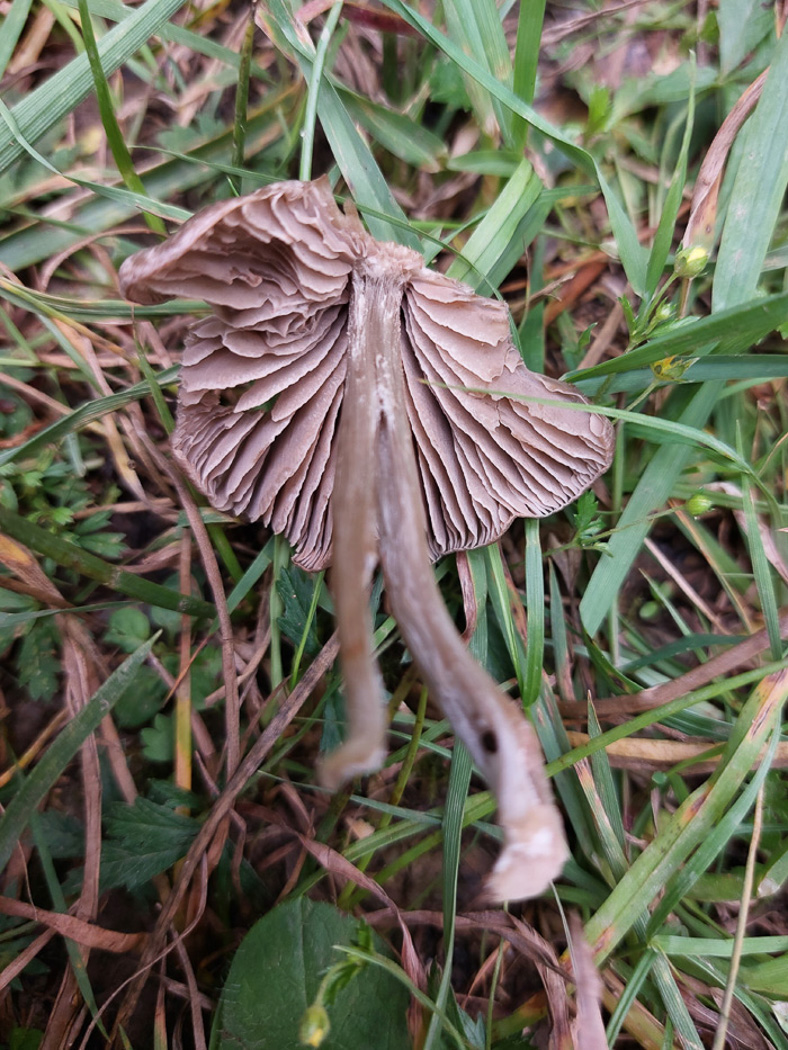
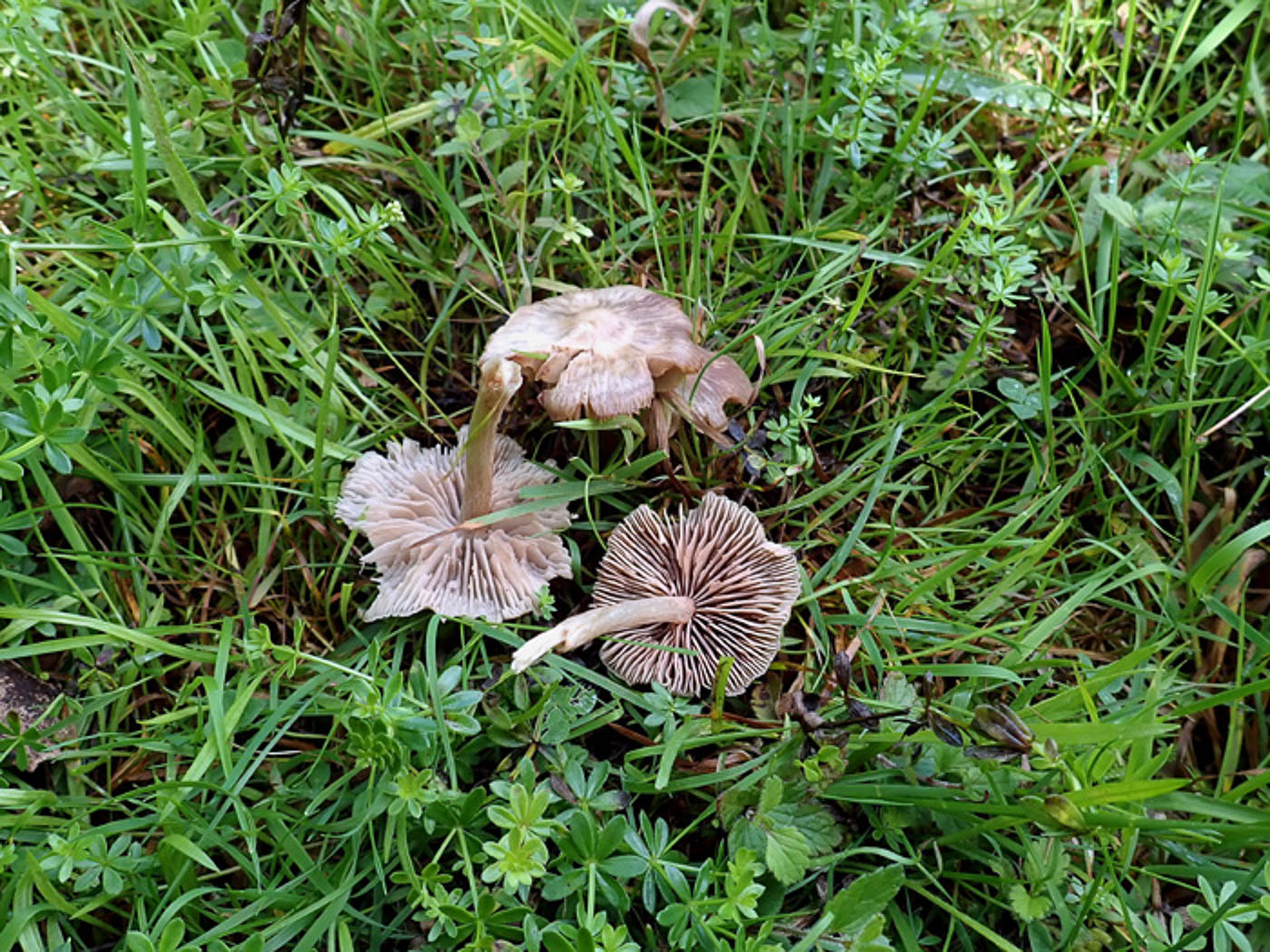 |
July 16th Entoloma ameides (a Pinkgill with no common name) 
In a grassy path edge in Bernwood Forest Jesper Launder caught his eye on this LBJ, recognised the genus from its pink gills and general jizz, then noticed its distinctive smell: not of meal / flour as in many of the genus but of bubblegum! This occasional grassland species is renowned for its unique smell which makes for a quick and easy check with a scope at home to confirm its identity. (Otherwise one can spend fruitless hours struggling through a lengthy and complicated key for this genus!). Photo 3 was taken by Penny when she found the same species in a grassy glade at Kings Wood Tylers Green three days later. We have a handful of county records for this unusual grassland species, and this is a new entry for Finds.
|
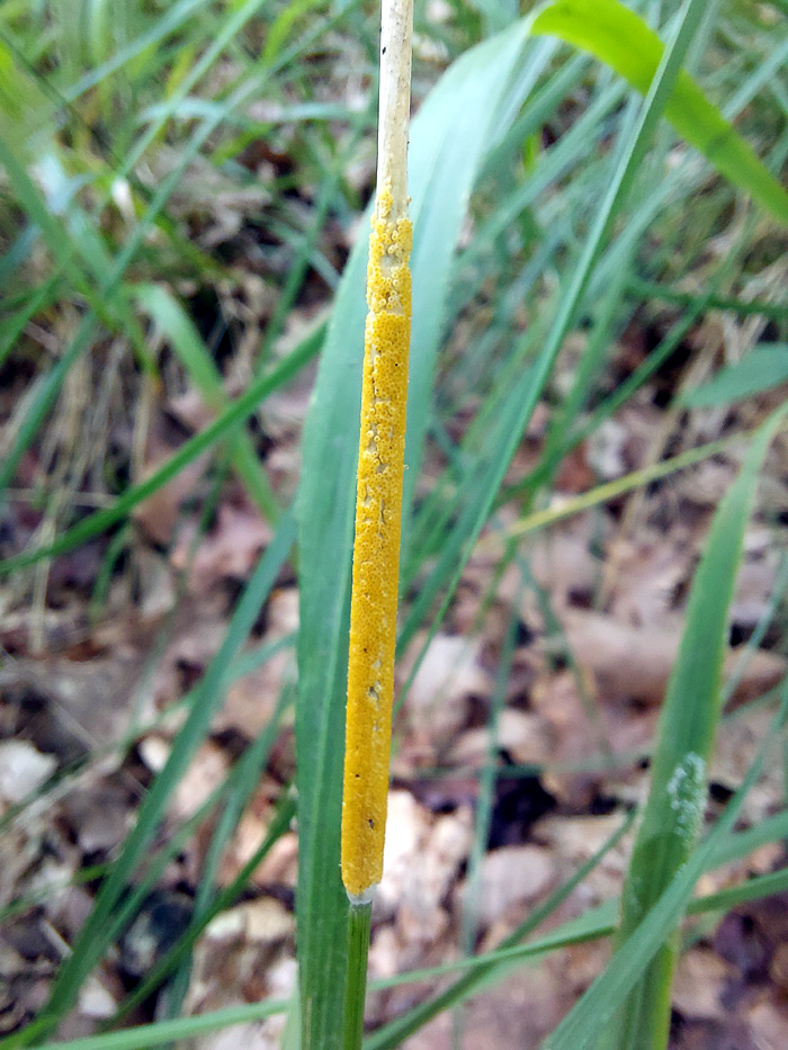 |
July 16th Epichloe sylvatica (a species of Choke with no common name)
In Bernwood Forest Jesper Launder noticed this Choke species on the living stem of Brachybodium sylvaticus (Wood False Brome). The genus is a member of the Ascomycetes and forms endophytic symbiotic relationships with the host plant. Though apparently not rare, this species has not previously been recorded in Bucks - you need to know your plants, also when and what to look for to locate these species - and is also another new entry to Finds.
|
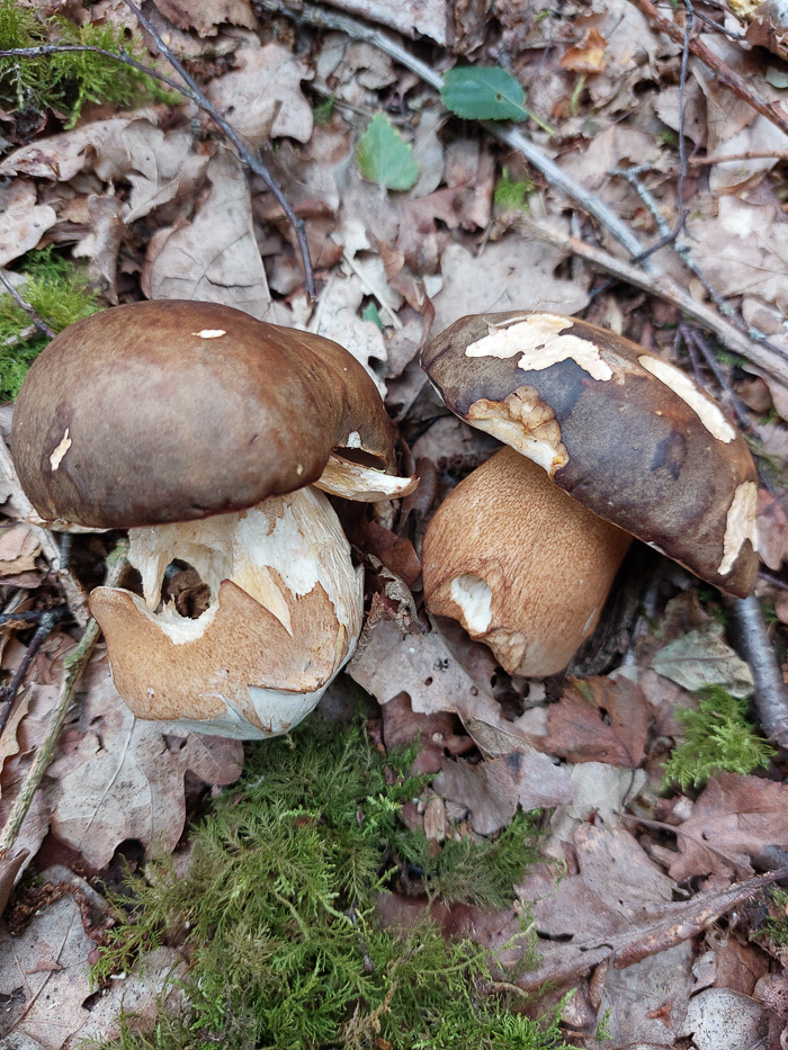 |
July 16th Boletus aereus (Bronze Bolete)
In Bernwood Forest Jesper Launder chanced upon some Ukranian ladies collecting mushrooms for the pot and in their basket were these two beauties (which he then borrowed for the photo!). This is a rare Bolete closely related to B. edulis, occurring in S. England under Beech and Oak but not one Penny has ever seen. It has a more intensely dark reddish brown cap and a pale brown clavate stem having a darker brown network. this was new to the county and also to Finds.
|
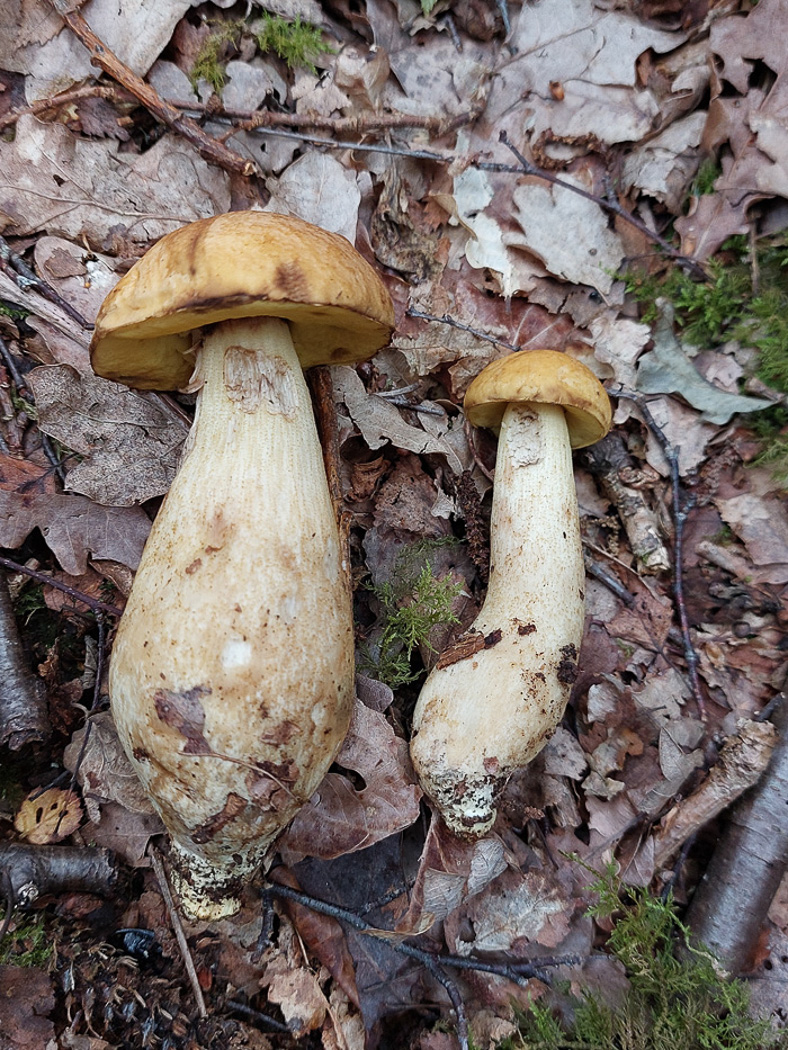
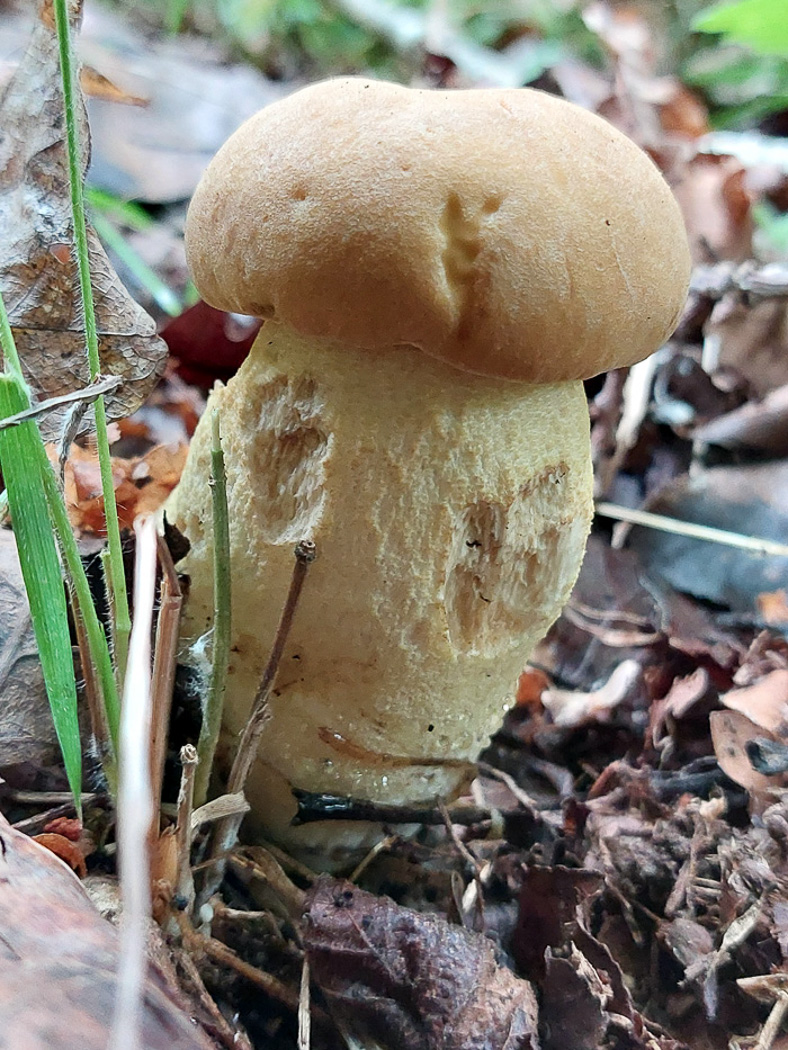 |
July 16th Leccinum crocipodium (Saffron Bolete)
In Bernwood Forest this was another nice Bolete Jesper Launder noticed in some Ukranian ladies' basket and borrowed for the photo (see above also)! This is a large Leccinum found under Oak rather than Birch - the host tree of many of this genus - and typically has a yellow ochre cap which becomes tessilated (indented). A useful pointer to its identity is that all parts turn slowly black when bruised / damaged. The stem 'scabers' are less apparent than in others of the genus, blending with the stem colour though do eventually blacken. An occasional species in the county, this is a new entry for Finds.
|
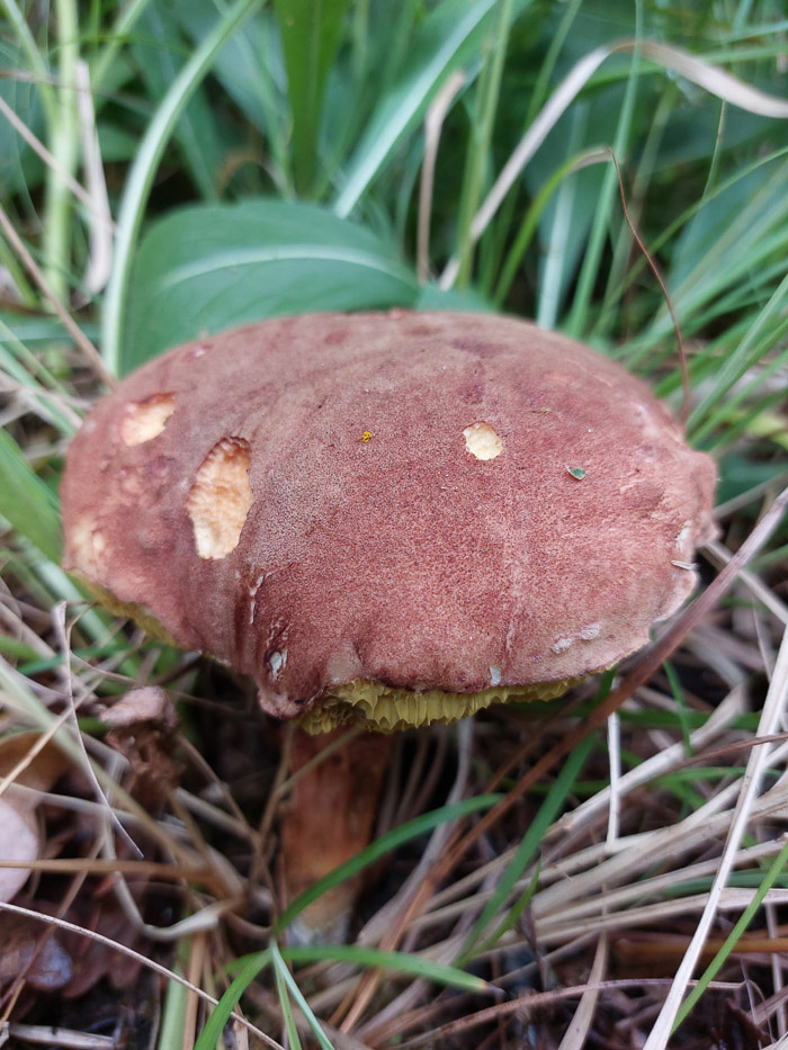
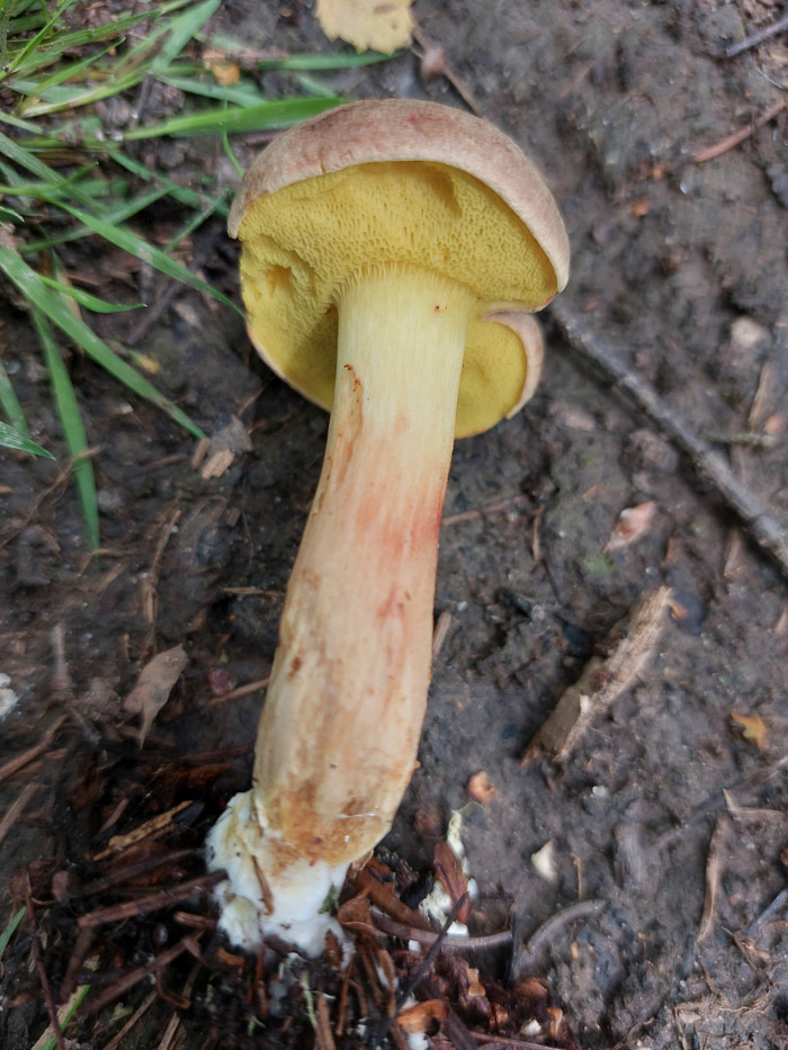
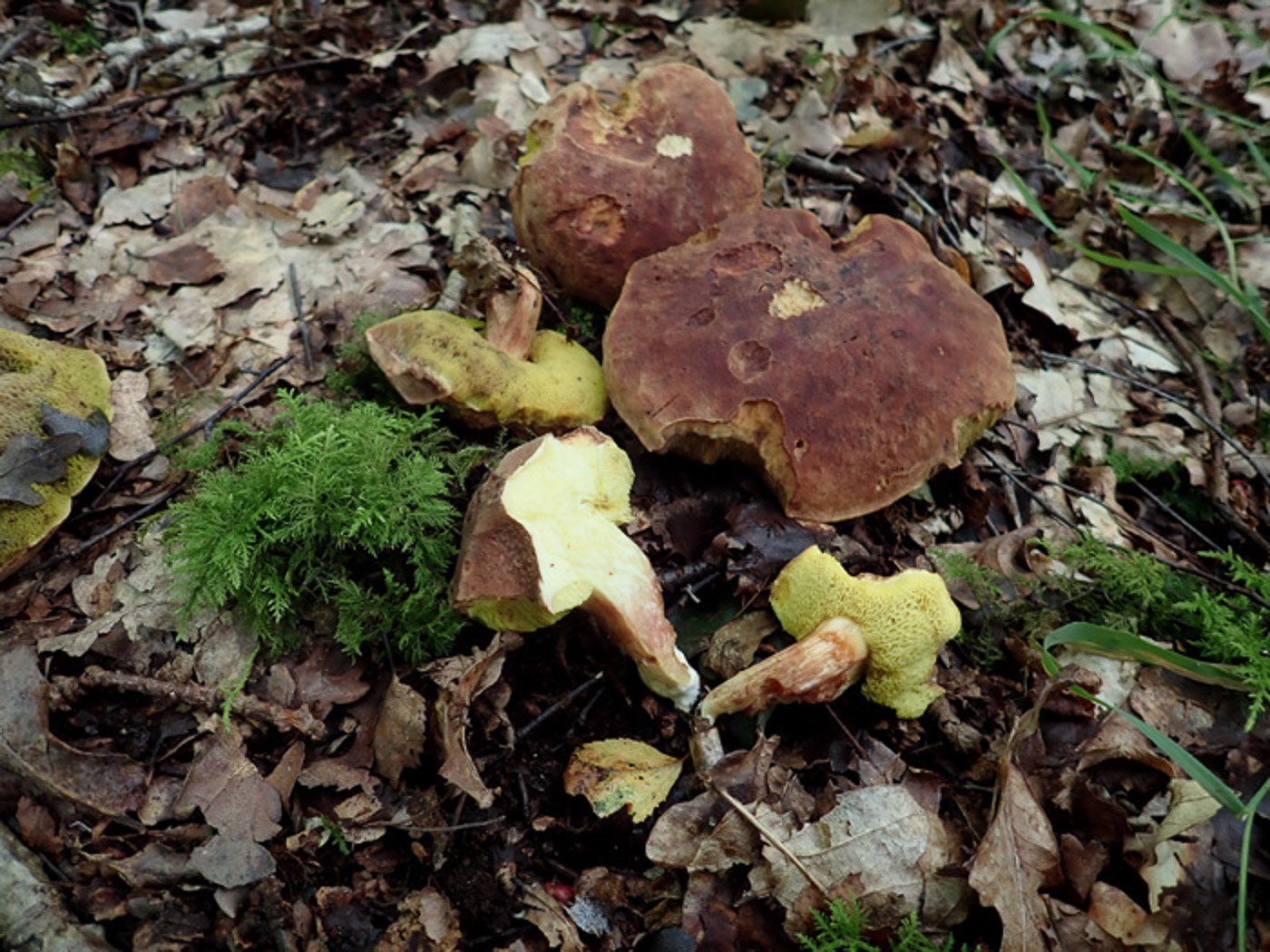
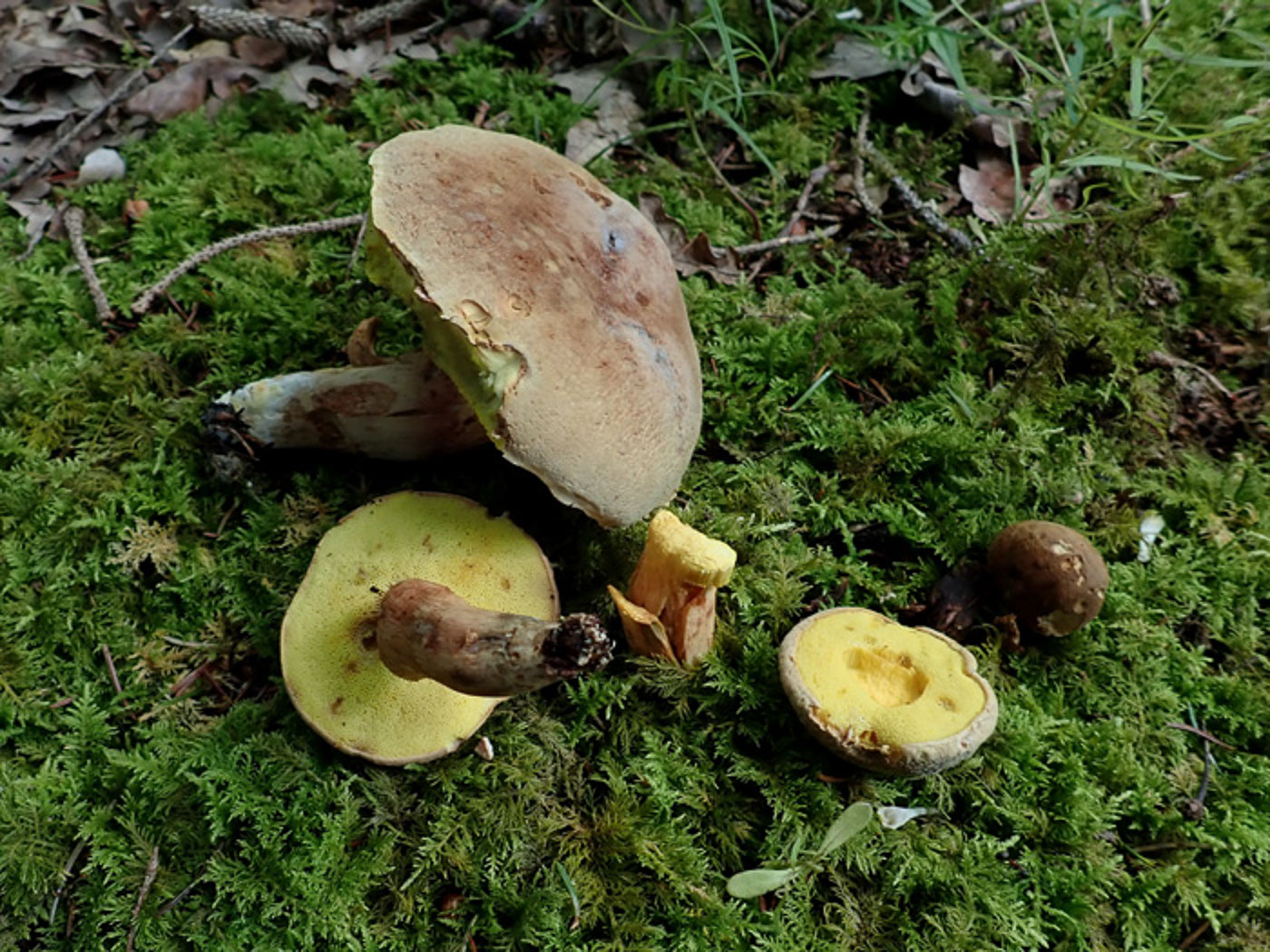 |
July 16th Xerocomus subtomentosus (a Bolete with no common name)
In Bernwood Forest Jesper Launder came across these two and was able to name them in the field (though X. ferrugineus is very similar). Neither species has a common name despite being not that rare though both are easily mistaken for members of the Xerocomellus genus - all were originally in genus Boletus and need an experienced eye to recognise individually. Today's species has notably bright yellow fine pores which blue when pressed / damaged and the cap is somewhat variable in colour but notably 'felty'. The stem tends to taper below (not apparent here, though), can sometimes have a mesh / network and the pores tend to be slightly decurrent - just visible here. A difference between the two lookalike species: today's has cap flesh (when cut in half) with a yellowish, sometimes bluish tint; in X. ferrugineus the cap flesh remains +/- white. A week later at the same site Penny found this species in abundance under Oak (photos 3 and 4). See also in Finds 2021 August 18th and November 9th for further discussion.
|
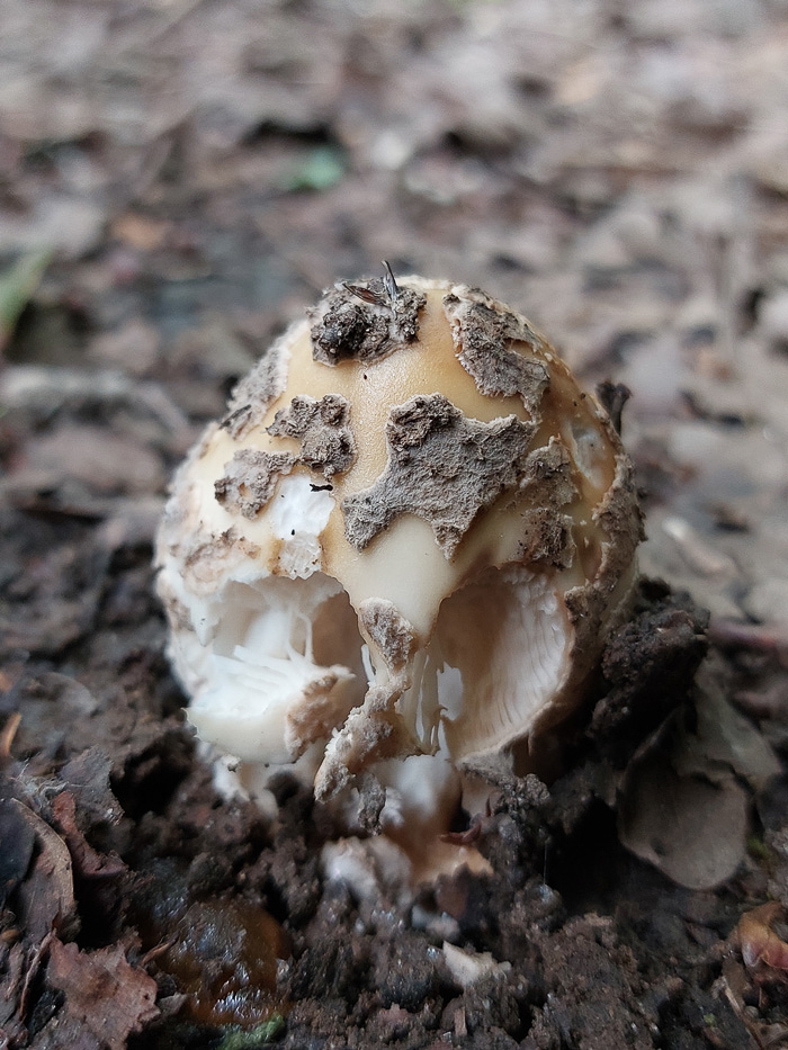 |
July 16th Amanita ceciliae (Snakeskin Grisette)
In Bernwood Forest Jesper Launder spotted this unusual Amanita still at the 'button' stage but nevertheless unmistakeable with its patches of large greyish flakes of veil adorning the cap. The species occurs with a mix of deciduous trees and this particular specimen appears unlikely to get a chance to develop further having already been munched by slugs. Like all those in this genus named Grisette, it lacks a ring on the slender tapering stem which in this species has greyish snakeskin markings. Our only previous entry in Finds is from 2020 September 13th.
|
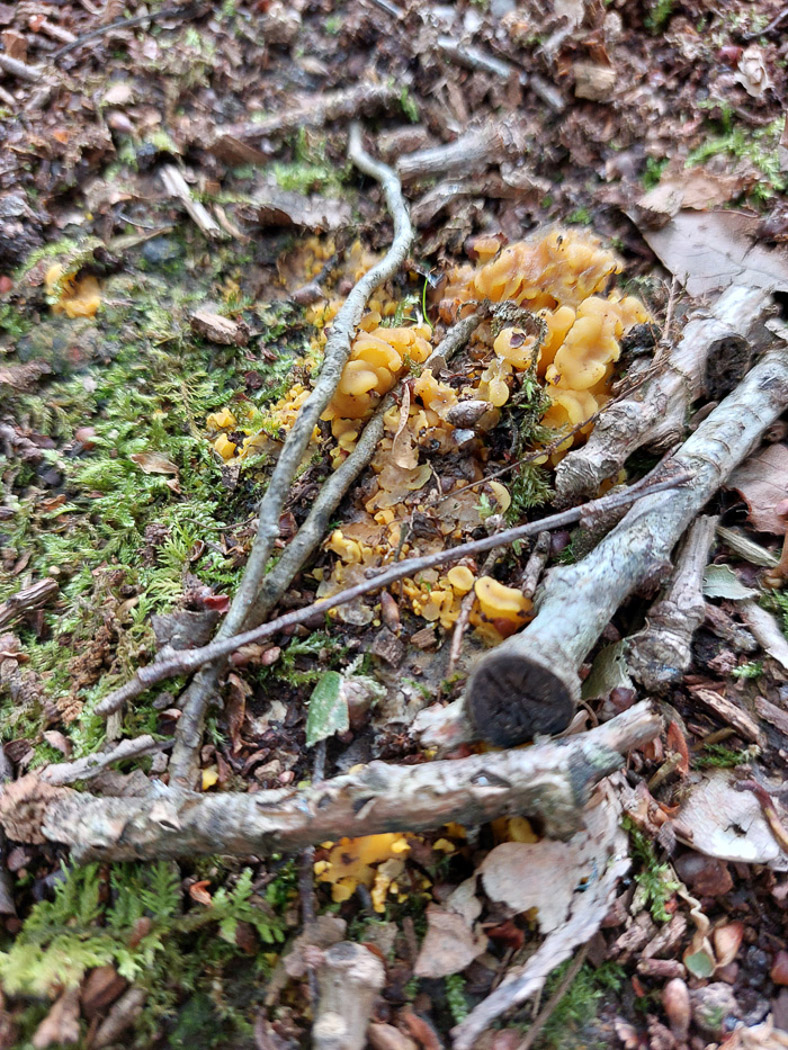 |
July 16th Cantharellus tubaeformis (Trumpet Chanterelle)
In Bernwood Forest in mixed litter, Jesper launder was surprised to find this late season species just emerging. Also known as Winter Chanterelle for obvious reasons, it is considerably smaller than the true Chanterelle (see July 13th for comparison), lacks the bright apricot cap of that species and - though not visible here in these immature examples - the gills are grey in contrast to its yellowish long stem. For more mature examples see Finds 2020 October 16th and 2022 November 20th.
|
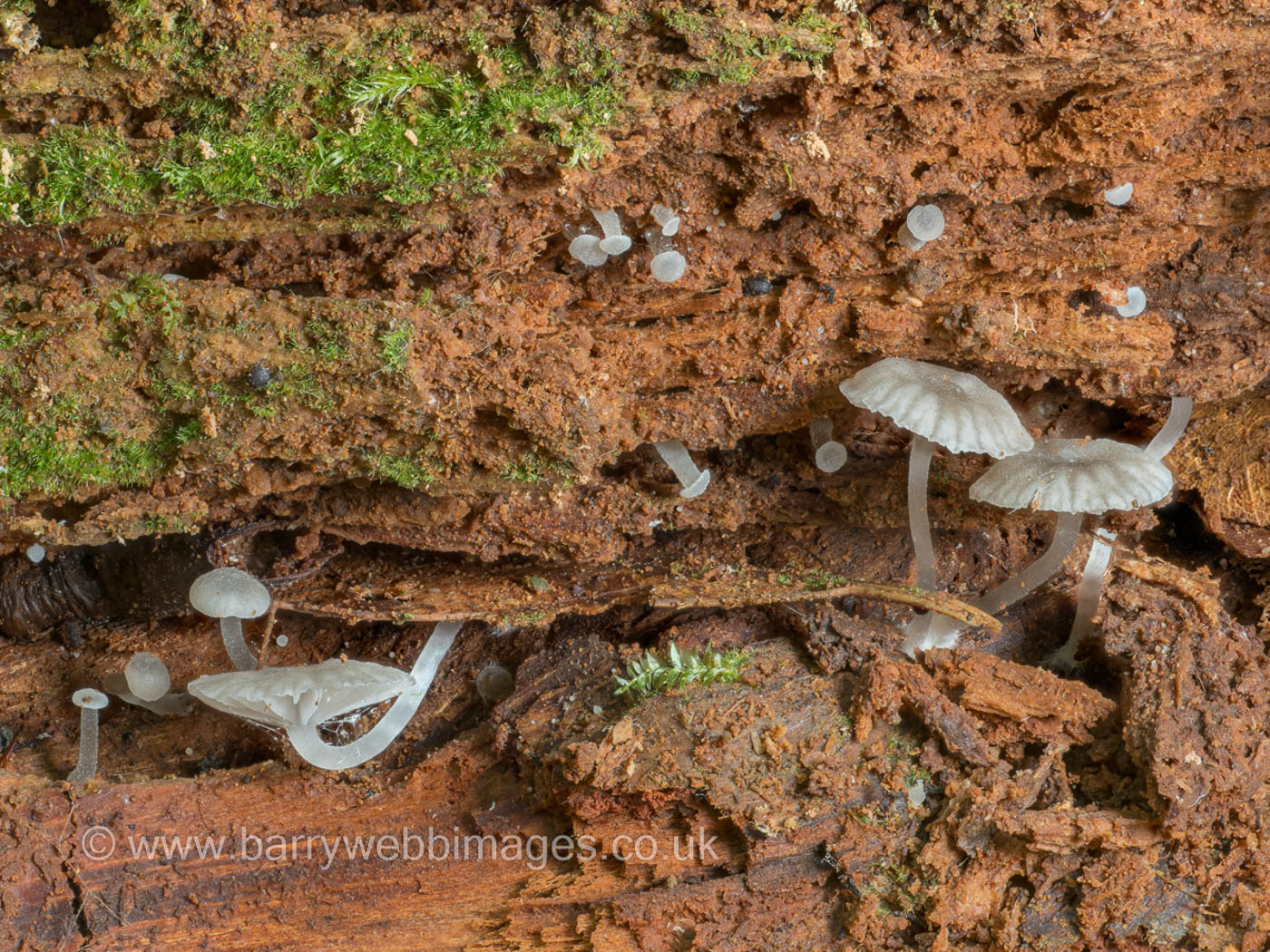
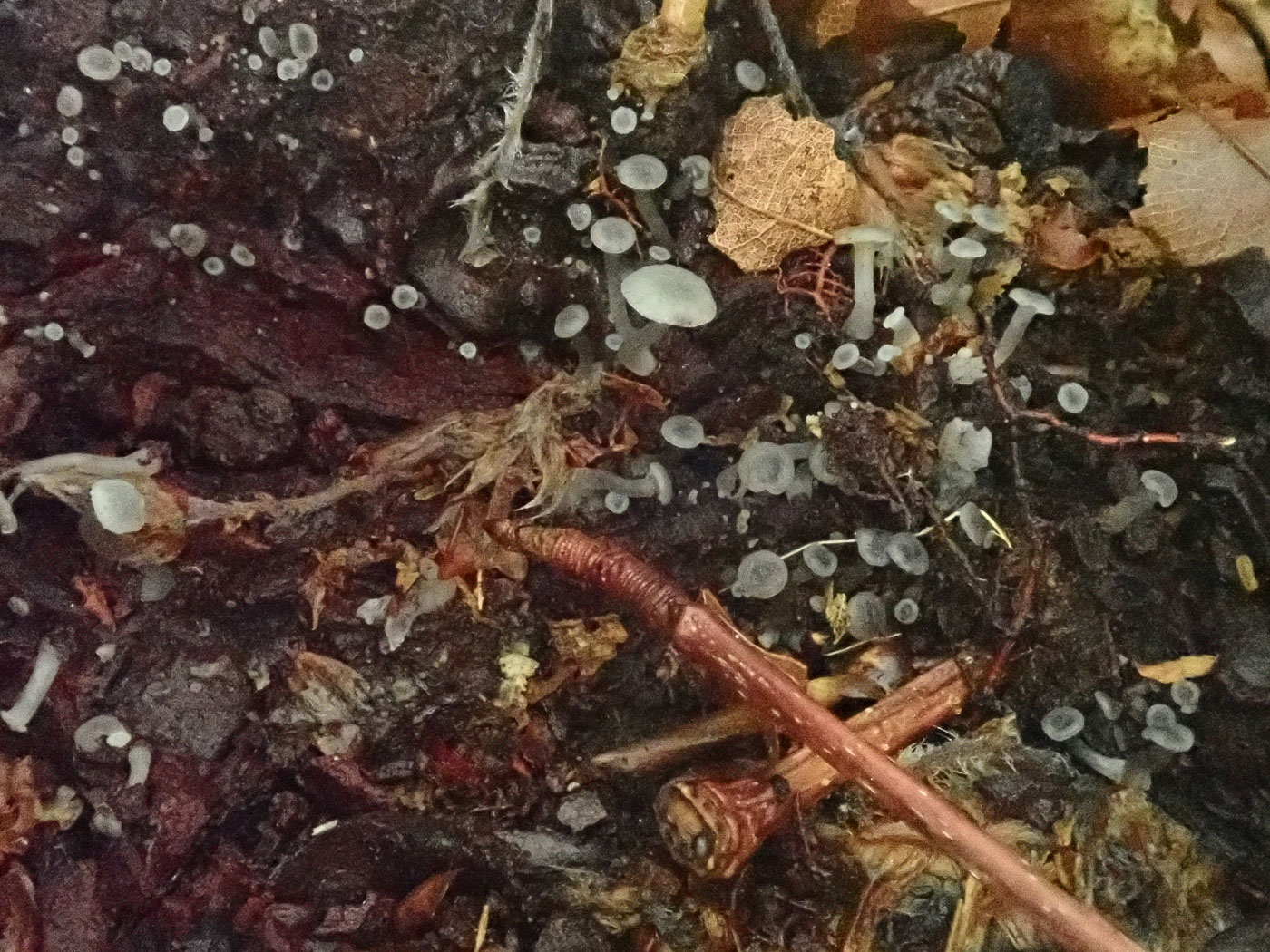
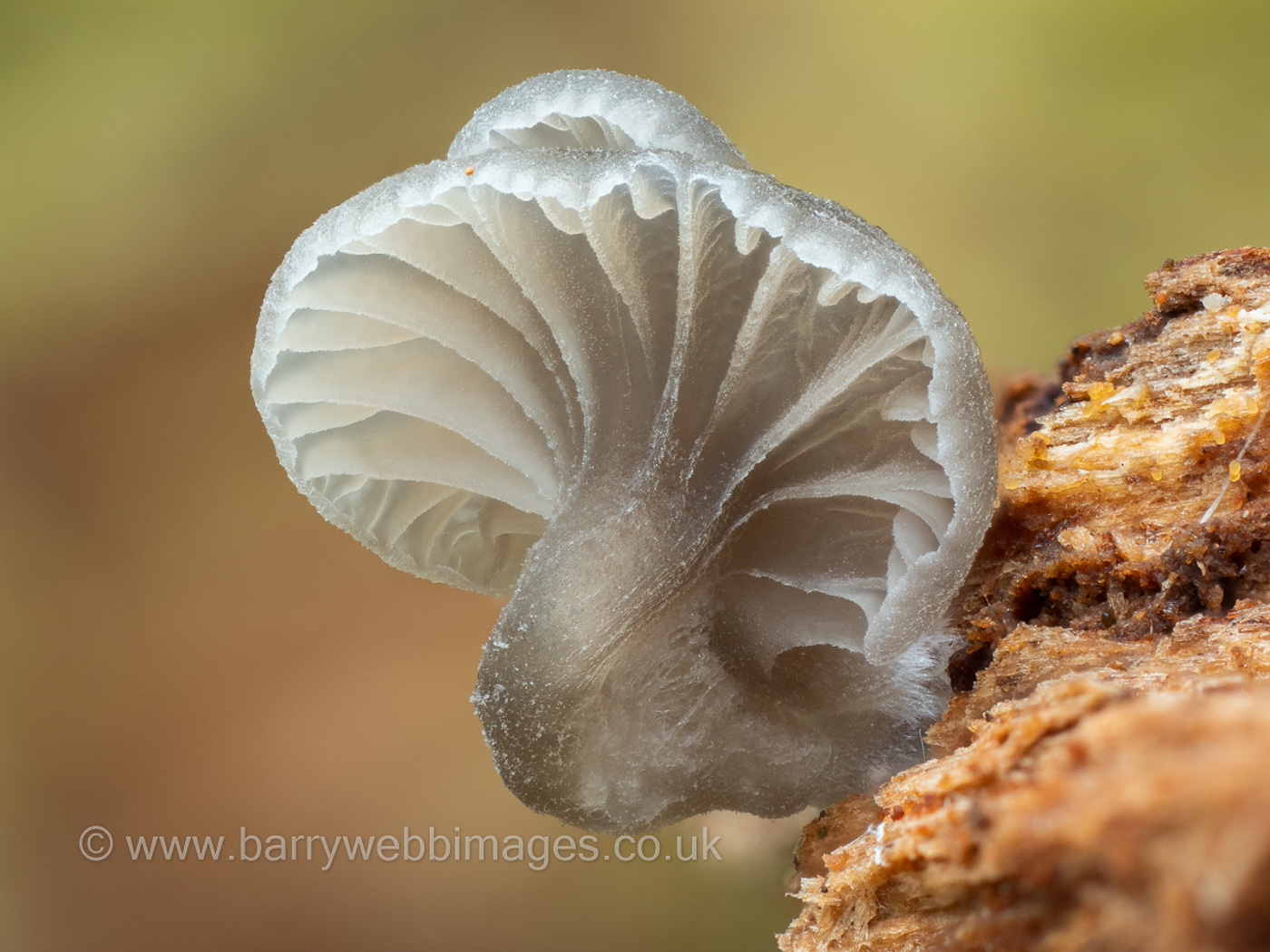
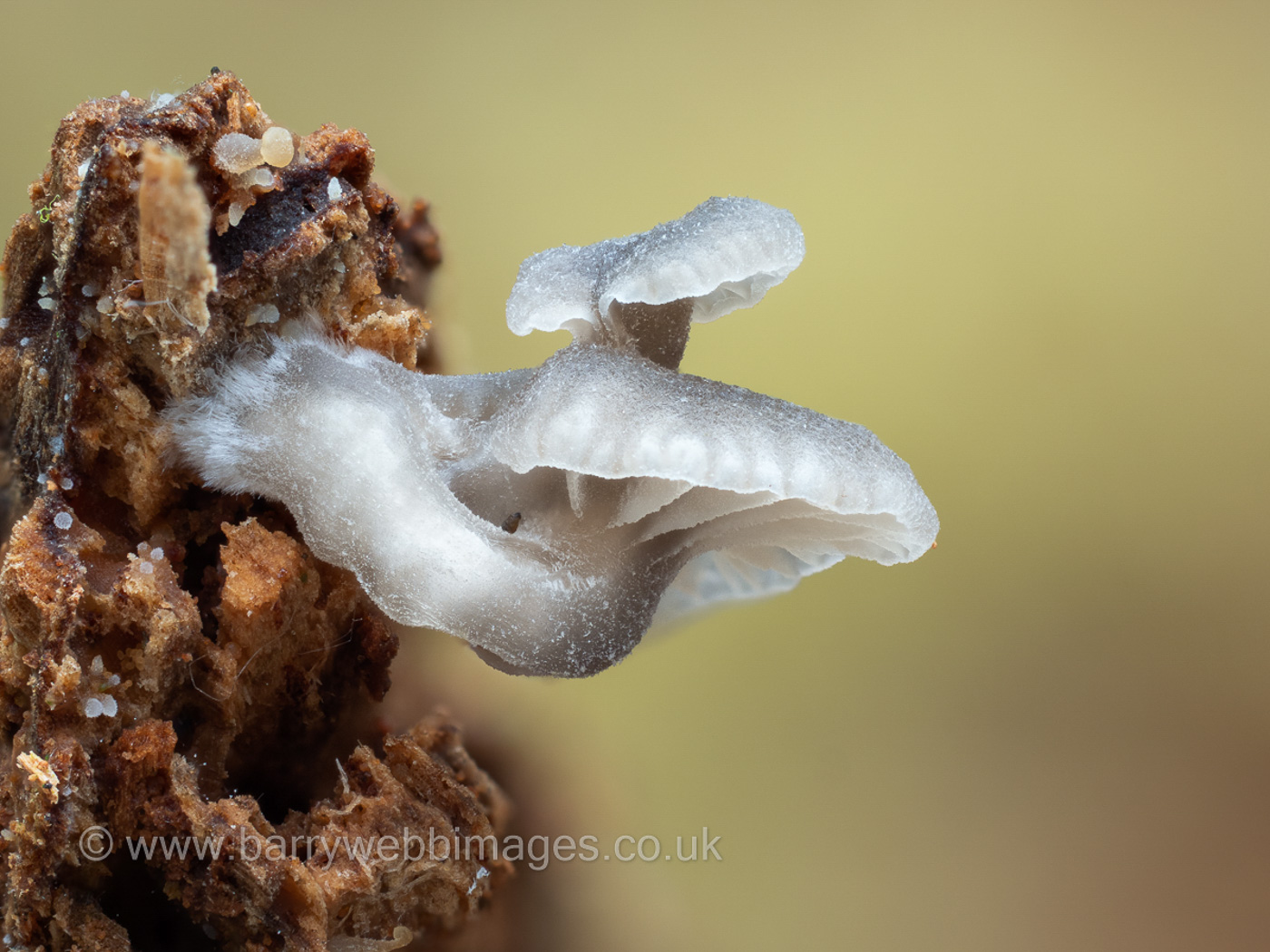 |
July 10th Hydropus sp (an extremely rare species as yet undescribed) 
This tiny Mycenoid mushroom was first found in 2021 on a piece of Pine collected from Burnham Beeches by Barry Webb and, following sequencing, described for the first time in the magazine Field Mycology vol 24 (1) earlier this year. Its reappearance has been eagerly awaited in order that sufficient material could be collected for further study and drying, and on July 3rd Barry rediscovered it on the same rotting Pine stump from which his original piece of wood was taken. Bingo!! It had also been found in Hampshire back in 2021 and in Kent in 2022, the sequence of both collections matching ours from Burnham Beeches. So a follow-up article is now needed once this latest material is proven by sequencing to be the same species, and a name chosen. Penny will update this entry when that happens.
|
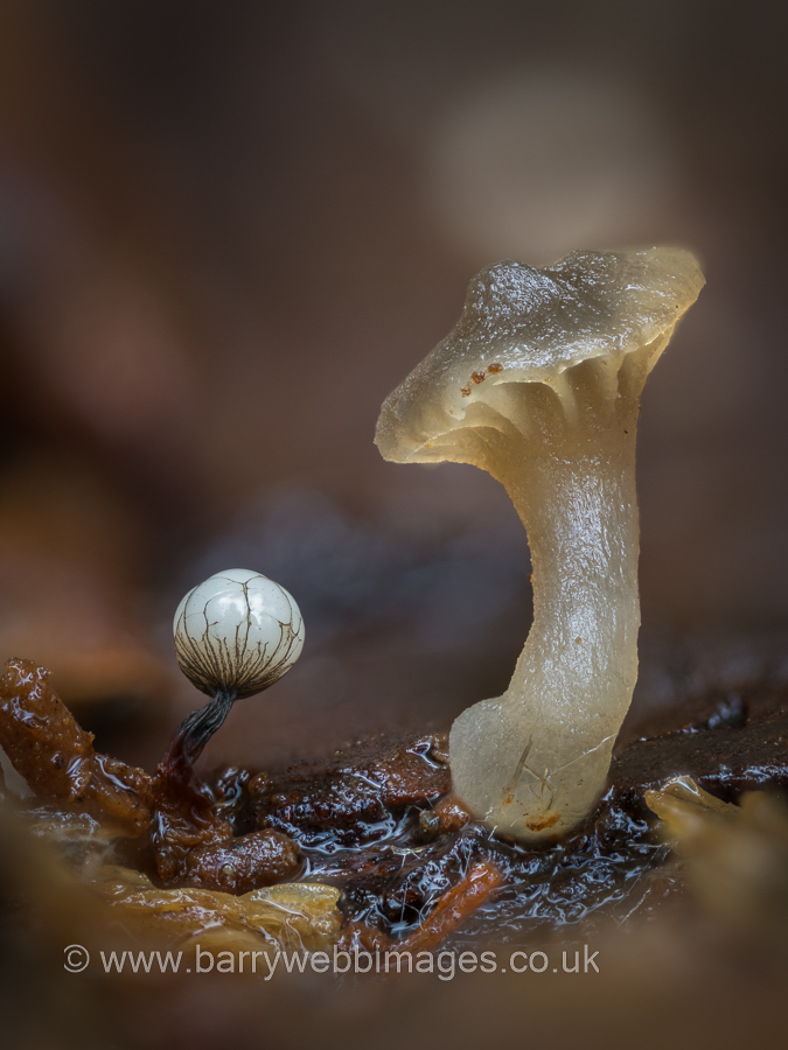 |
July 10th Cribraria rufa (a rare Slime Mould with no common name) 
On a piece of rotting Pine collected from Burnham Beeches a few days previously and taken home to incubate in his greenhouse, Barry Webb was delighted to see this little beauty appear beside a tiny species of Hydropus as yet unnamed (therein lies another story!). See also in Finds 2021 July 9th and September 13th.
|
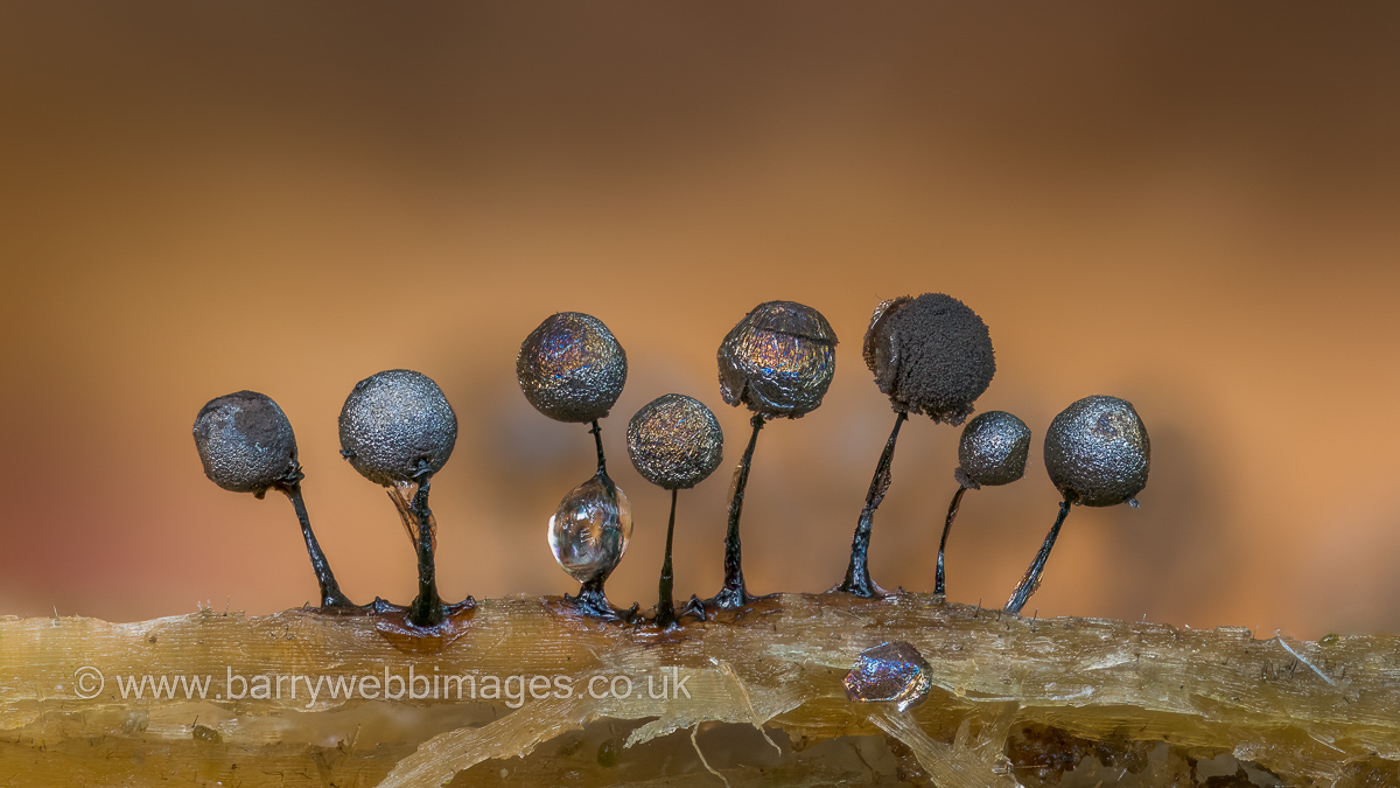 |
July 10th Collaria arcyrionema (a rare Slime Mould with no common name) 
At Burnham Beeches on the same Pine stump where he's found it in two previous years, Barry Webb spotted a row of this tiny iridescent species, each individual no more than 3 mm high. The species within the genus Lamproderma which form a tiny collar just underneath the globe are now moved into the genus Collaria. See also in Finds 2021 July 6th.
|
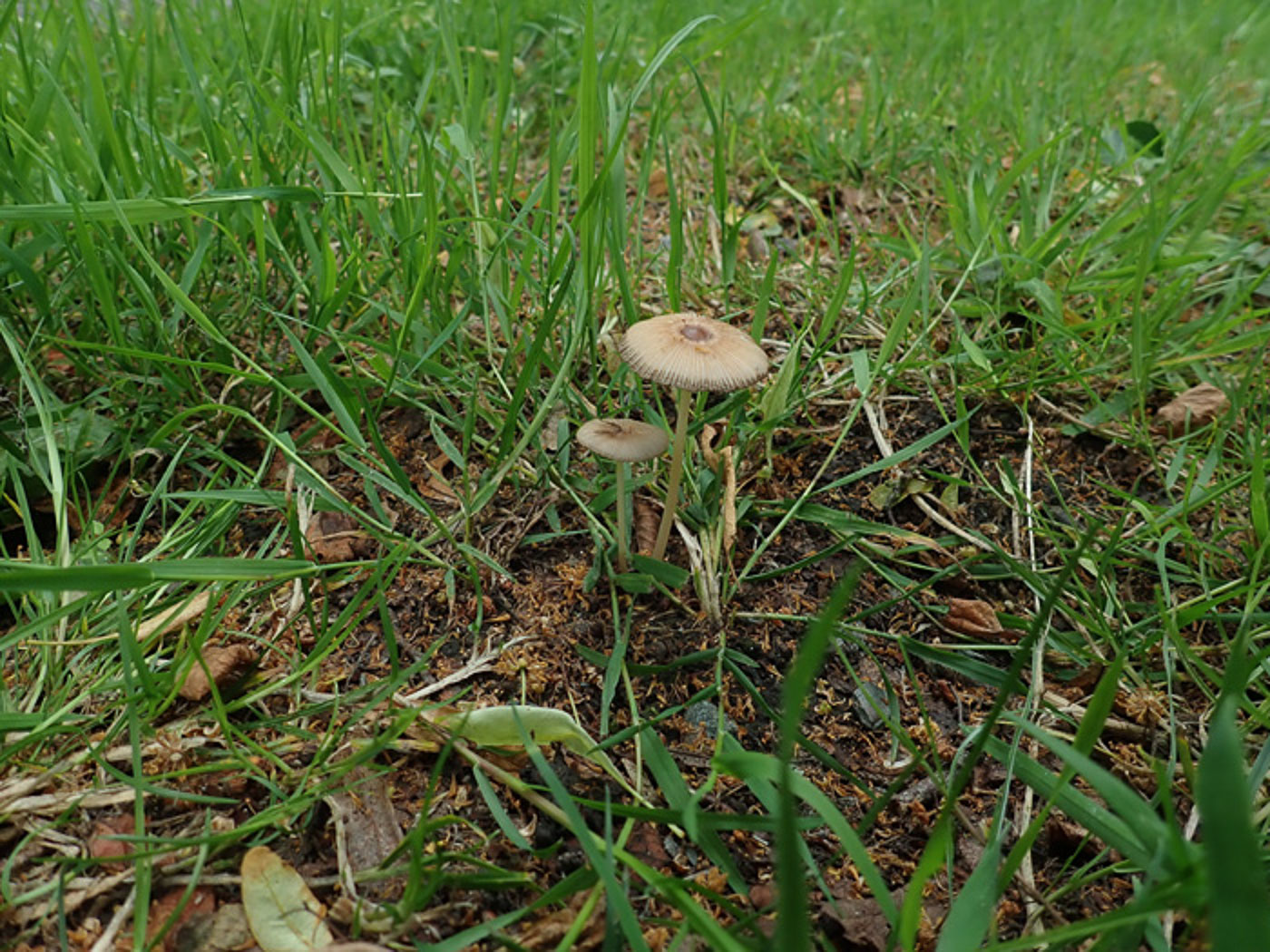
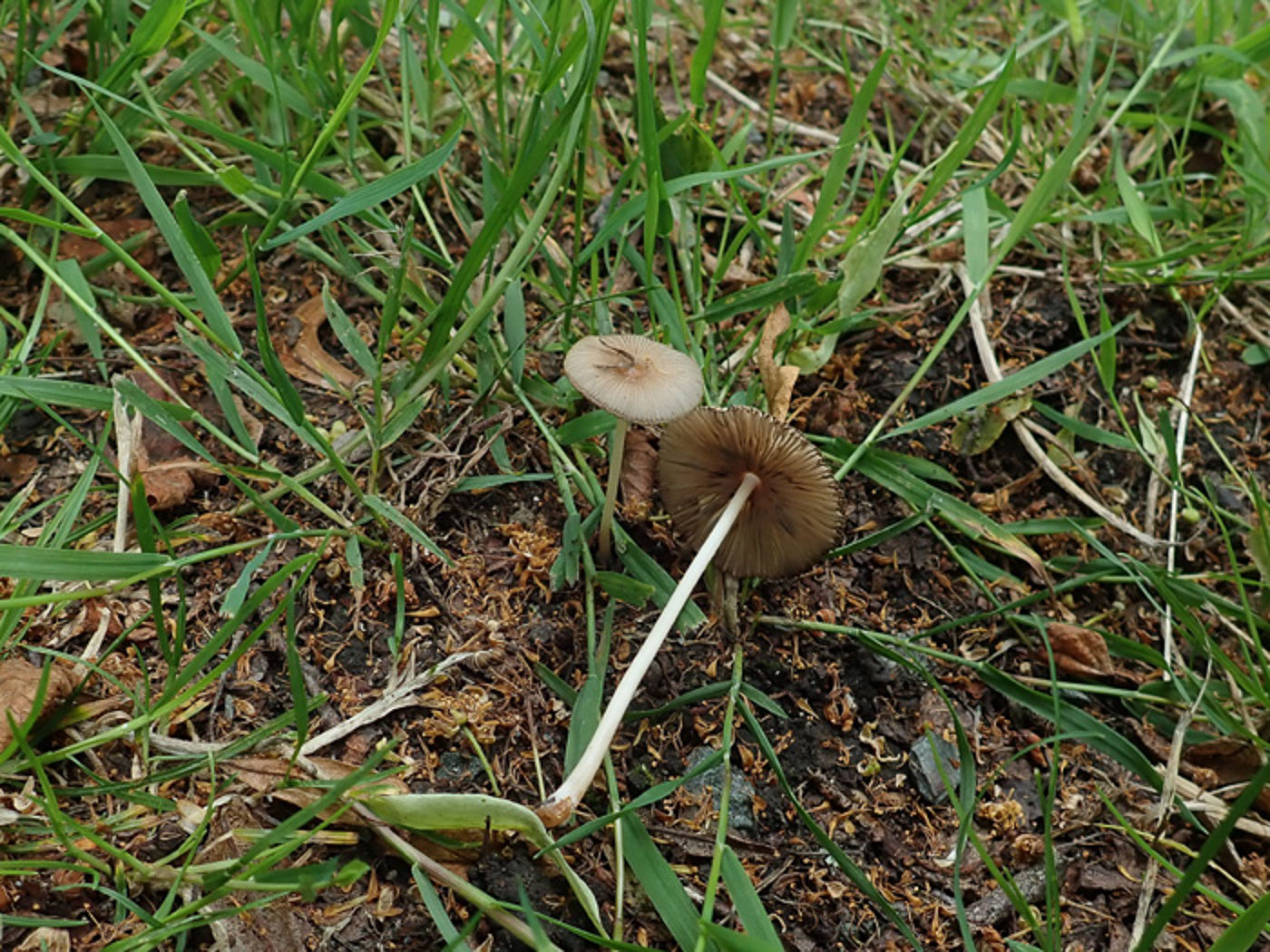 |
July 10th Parasola auricoma (Goldenhaired Inkcap) 
In soil on a grassy roadside verge at Turville Heath Penny spotted what she thought was a singleton Parasola but on closer inspection saw the smaller specimen lurking beneath. The larger cap was about 2.5 cm across, so a good size for this genus, and at home the spore shape and size pointed to this particular species so she checked the cap cuticle and found the long thick-walled hairs - a unique feature - which confirmed her ID. The species is not the commonest Parasola but may be misidentified as many of this genus are extremely similar. All need microscopic examination and cannot be safely named in the field. See also in Finds 2021 July 7th and 2022 June 9th.
|
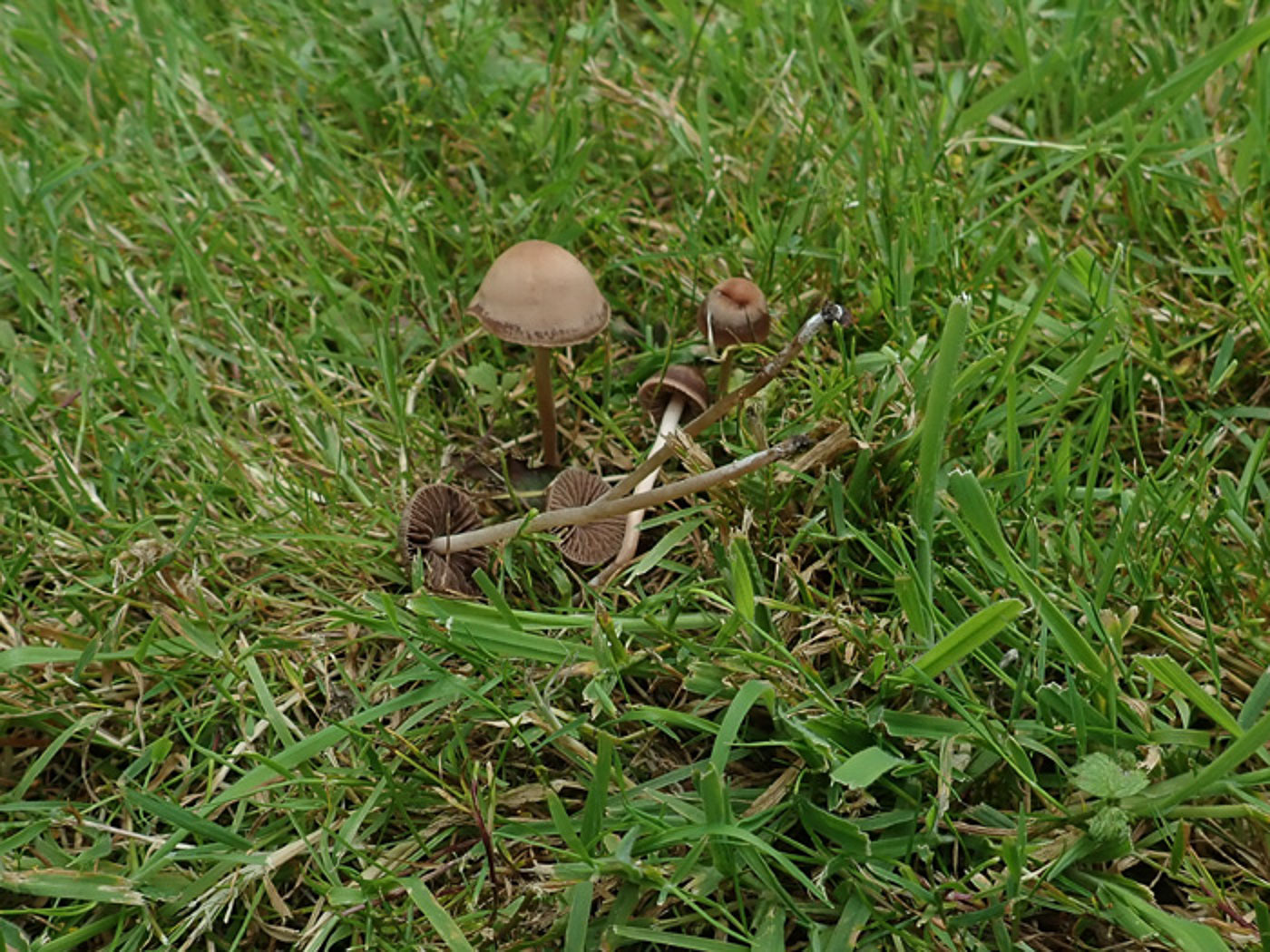 |
July 10th Panaeolina foenisecii (Brown Mottlegill) 
Along a mown grassy roadside verge at Turville Heath Penny found several clusters of this common lawn species which is just starting to fruit. The cap starts off a reddish brown but tends to fade when in exposed positions though often leaving dark bands of colour in places. The gills gradually darken as it matures and the brown spores are distinctively warty. (Though previously in genus Panaeolus, Penny notes that in Kibby vol 3 he places it back in that genus again - time will tell.) See the Masterlist for more images.
|
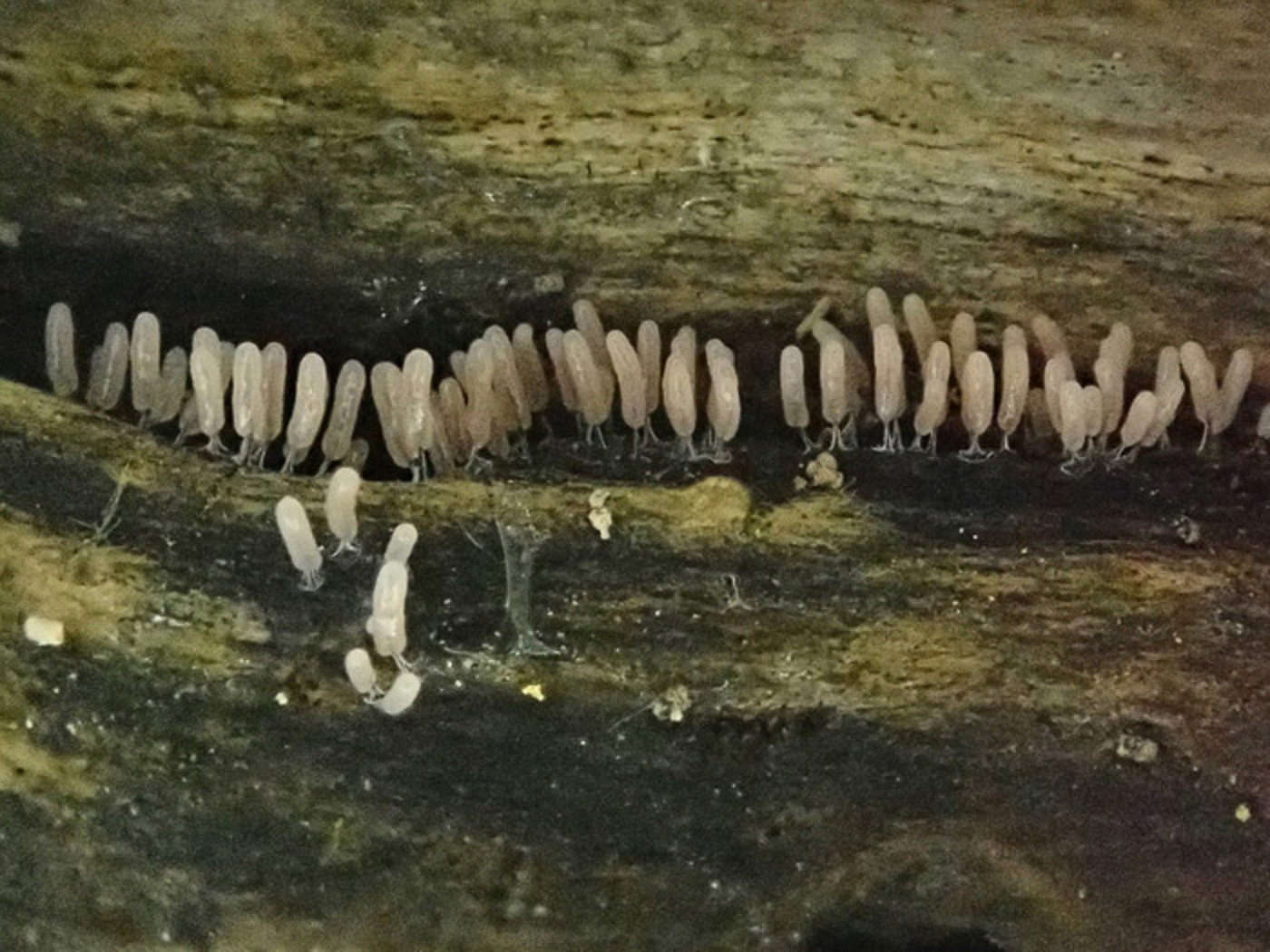
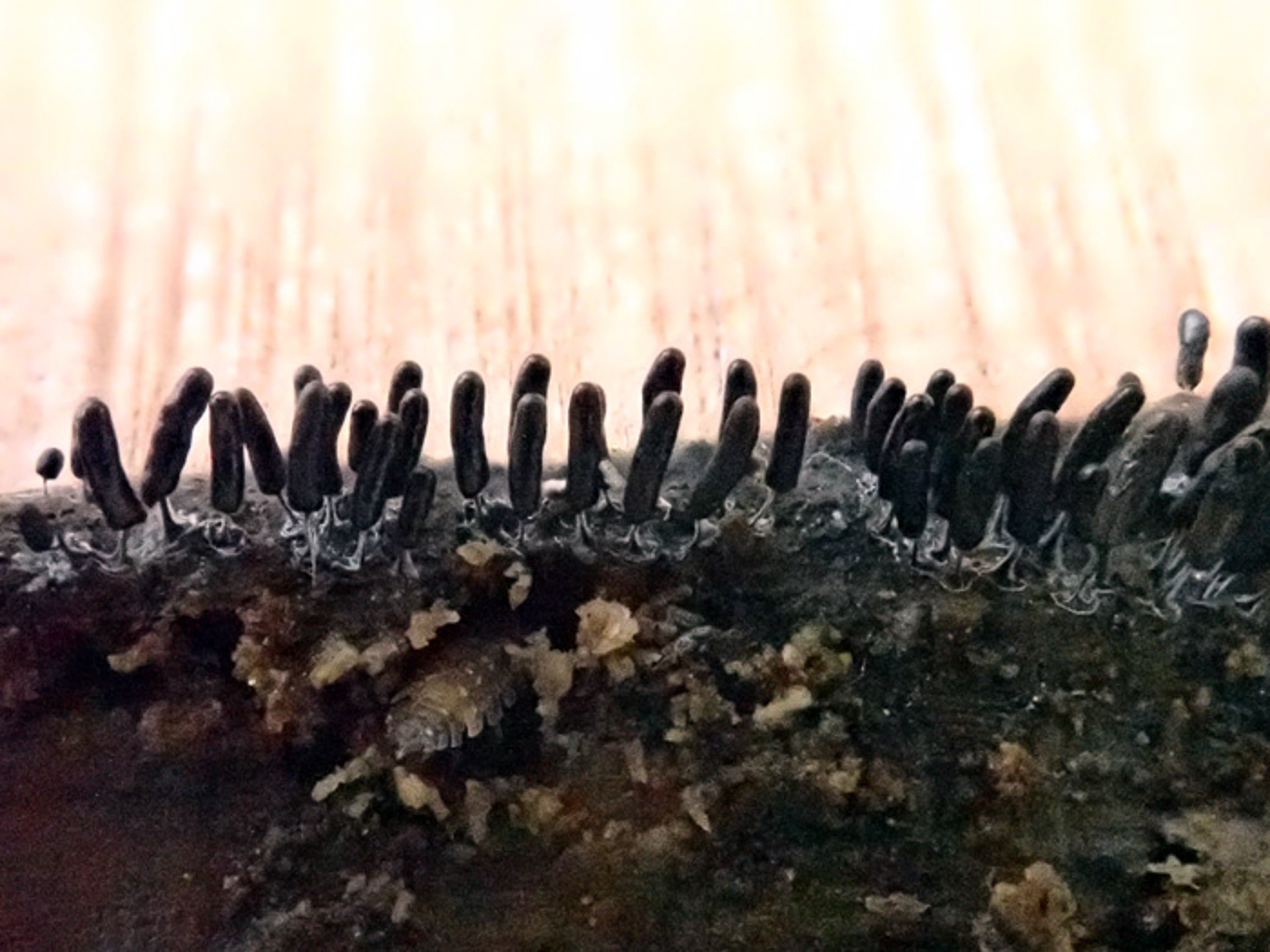
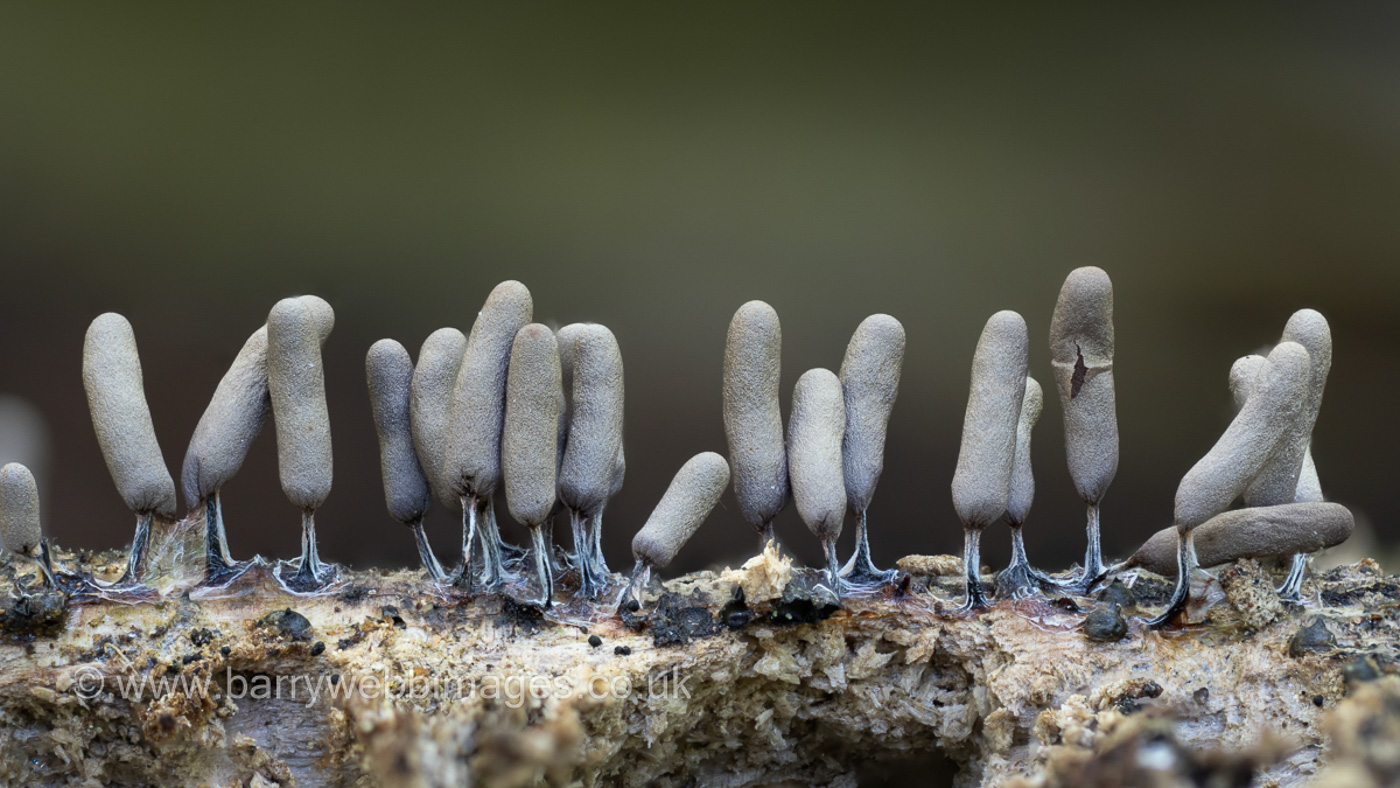 |
July 10th Stemonitopsis typhina (a Slime Mould with no common name)
In Gussett's Wood on a bare and very rotten Beech trunk Penny spotted these little beauties which at this stage were pink but already recognisable as this species, having developed their stalks with a shiny coating reminiscent of the seam on old fashioned silk stockings. Each individual was no more than 3 mm high. Knowing they would mature quickly if undisturbed, she carefully extracted the specimens en mass on the rotten wood without touching them, got them home undamaged and left them outside overnight on damp kitchen paper in a covered pot. Photo 2 shows the now maturing shiny black sausages on their stockinged stalks the following morning. Photo 3 shows the same collection a few days later when almost fully mature, taken by Barry Webb. See the Masterlist for more images.
|
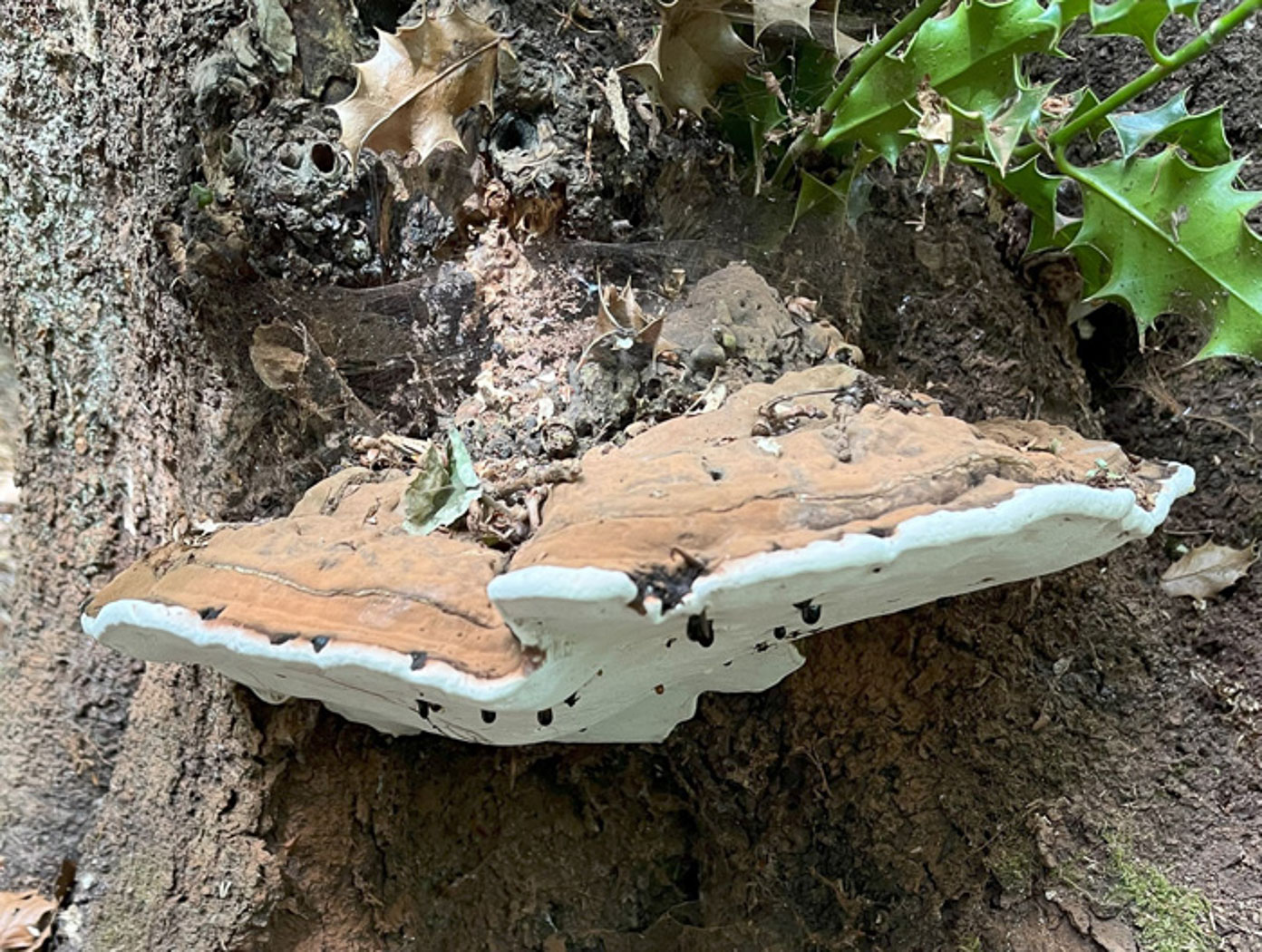 |
July 10th Ganoderma applanatum (Artist's bracket) 
In Gerrards Cross Common Jim Wills found this bracket at the base of a standing Birch - a timely find giving us the opportunity to compare two closely related species which appear more or less identical in the field (see below also). Jim looked for but did not find the fly galls (crusty dark lumps) which form on the lower surface of this species (but not on G. australe) when infected by the Yellow Flat-footed Fly - clearly this fly can distinguish between the two species with ease! However, Jim did notice some brown droplets (see photo 2) which Penny speculates may be connected to the fly? Anyway, the spores and other features confirmed Jim's ID and he'll keep an eye on this bracket to see if the galls develop. See Finds 2022 October 12th for a specimen showing the galls.
|
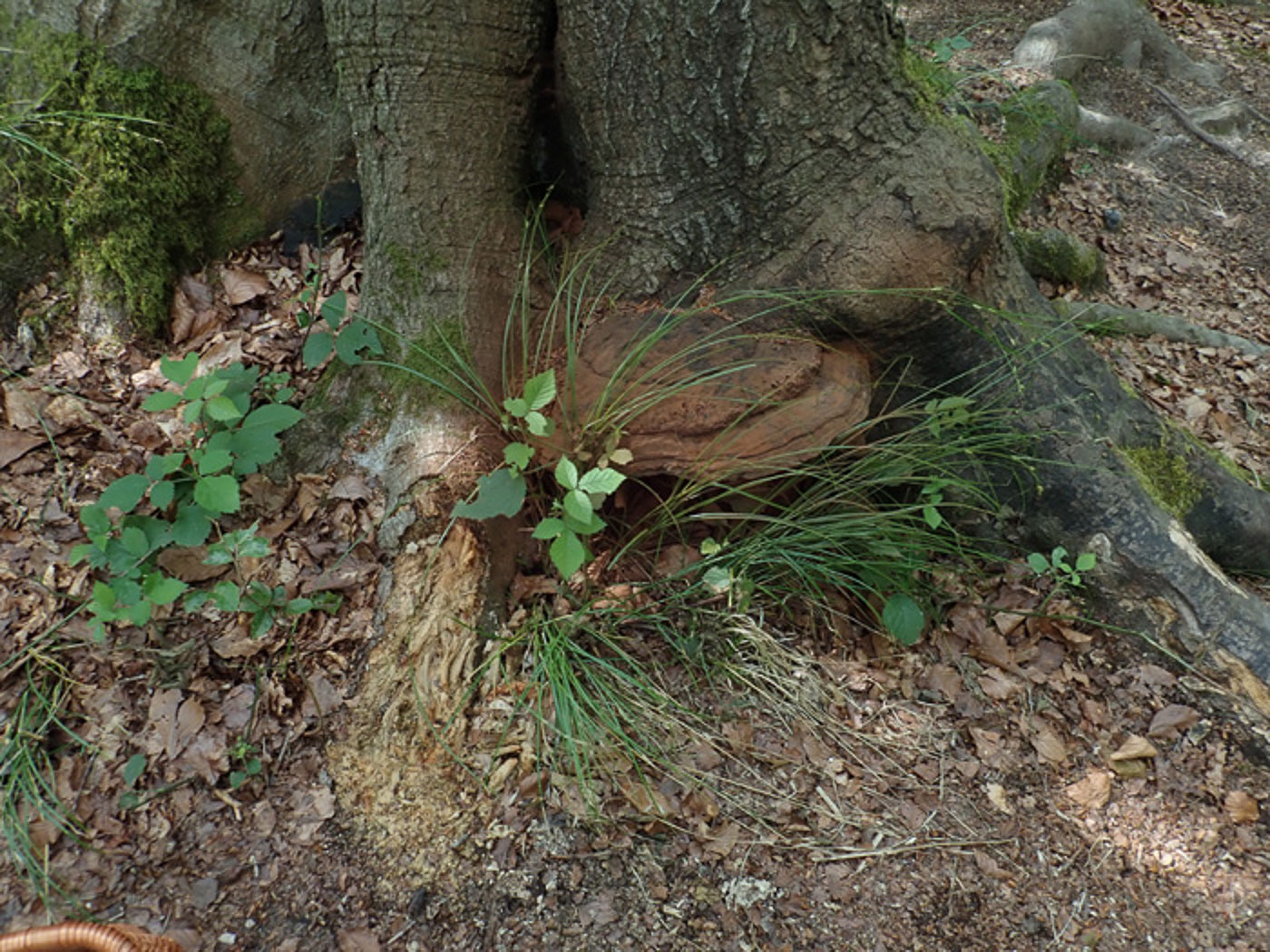
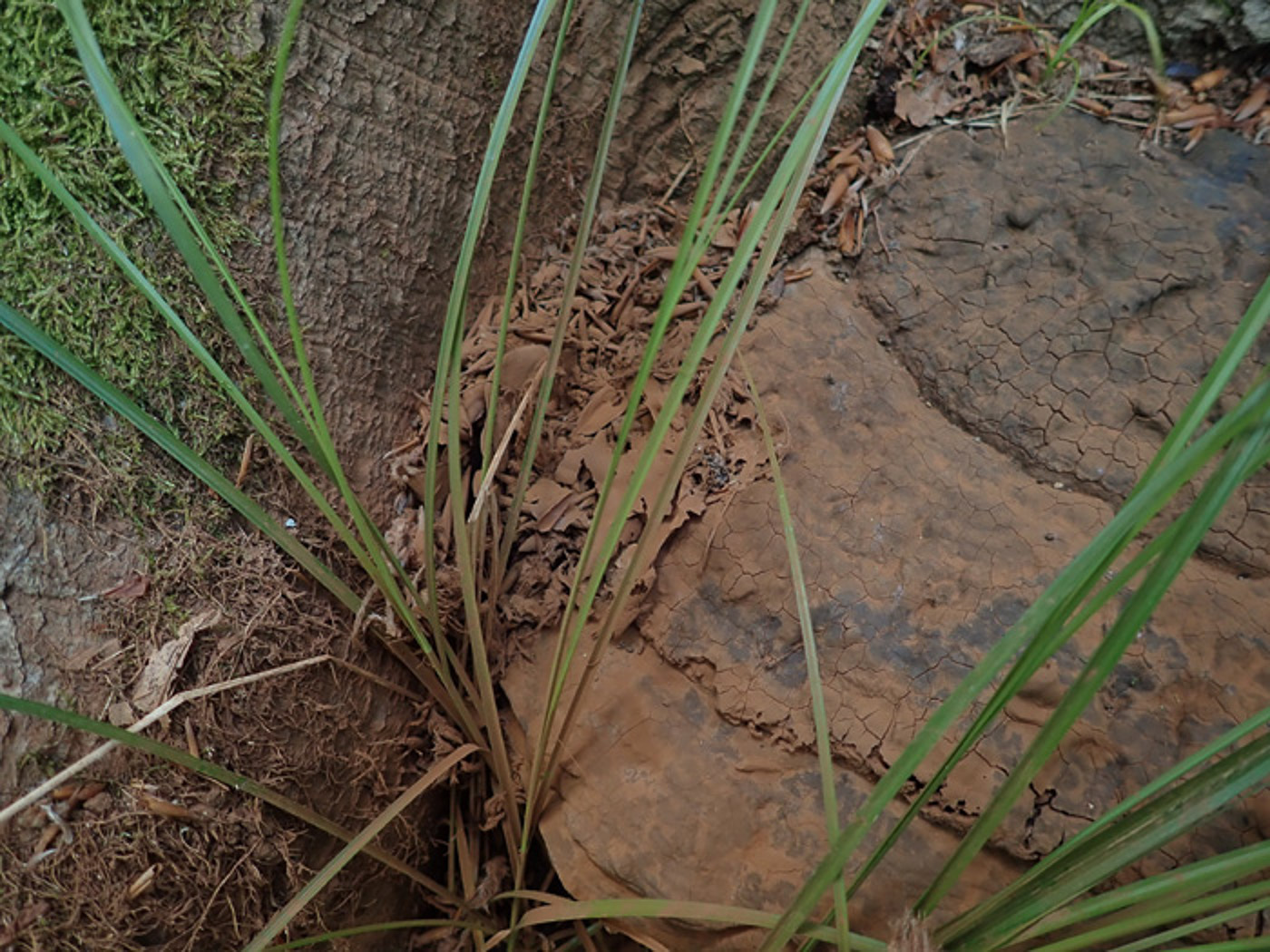 |
July 10th Ganoderma australe (Southern Bracket) 
This impressive bracket - about 15 inches across - was at the base of a standing Beech in Gussett's Wood, found by Penny. Photo 2 shows a closer view of the cocoa powder spores coating the surrounding vegetation, often observed with this species and providing the handiest way to determine whether you have this species or its lookalike G. applanatum (see above). Penny collected a coated leaf then at home scraped off some spores onto a slide to examine with a scope. Spores greater than 10 microns long = the very common G. australe but less than 10 microns long = the much less common G. applanatum. See the Masterlist for further examples.
|
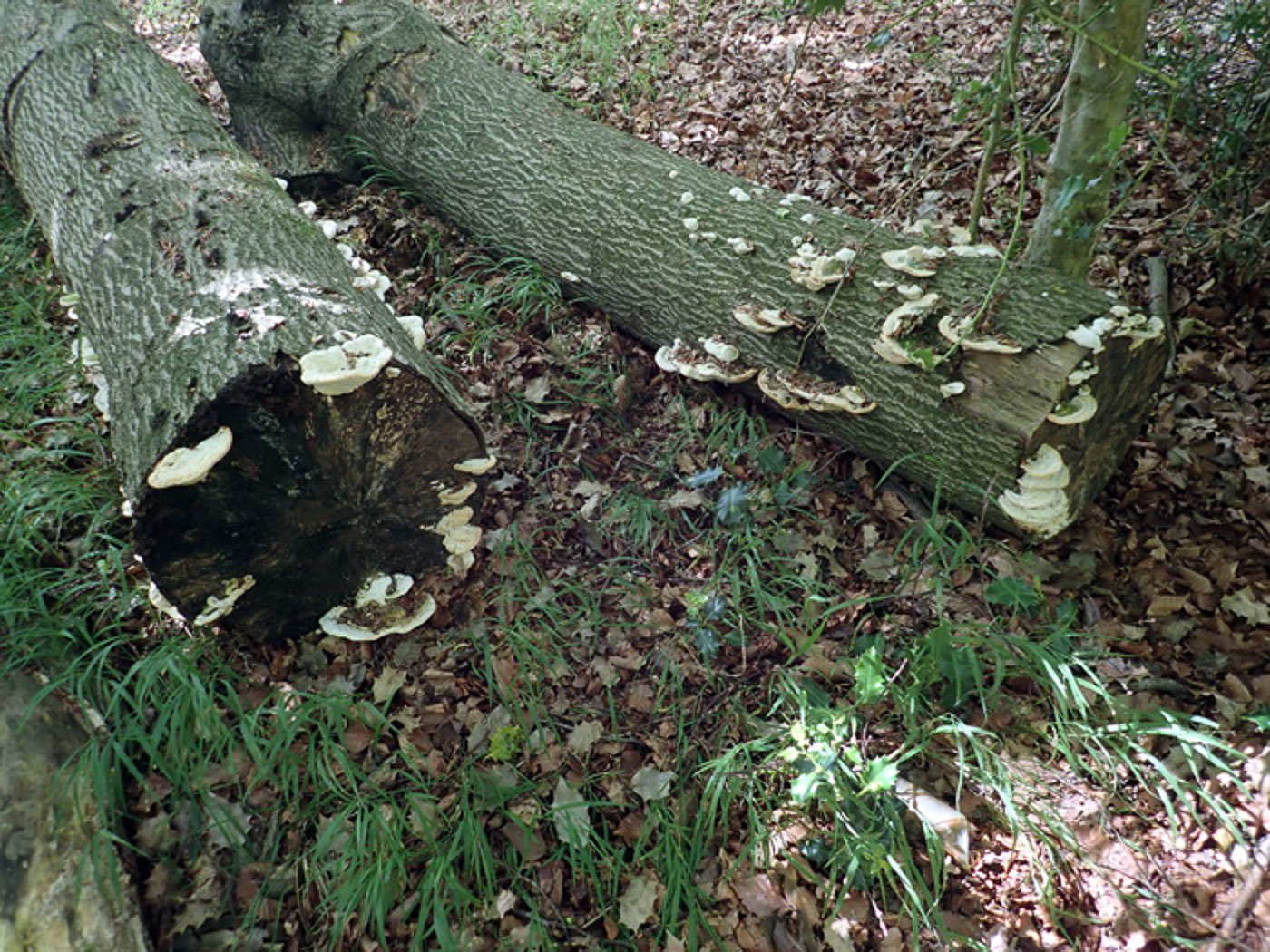
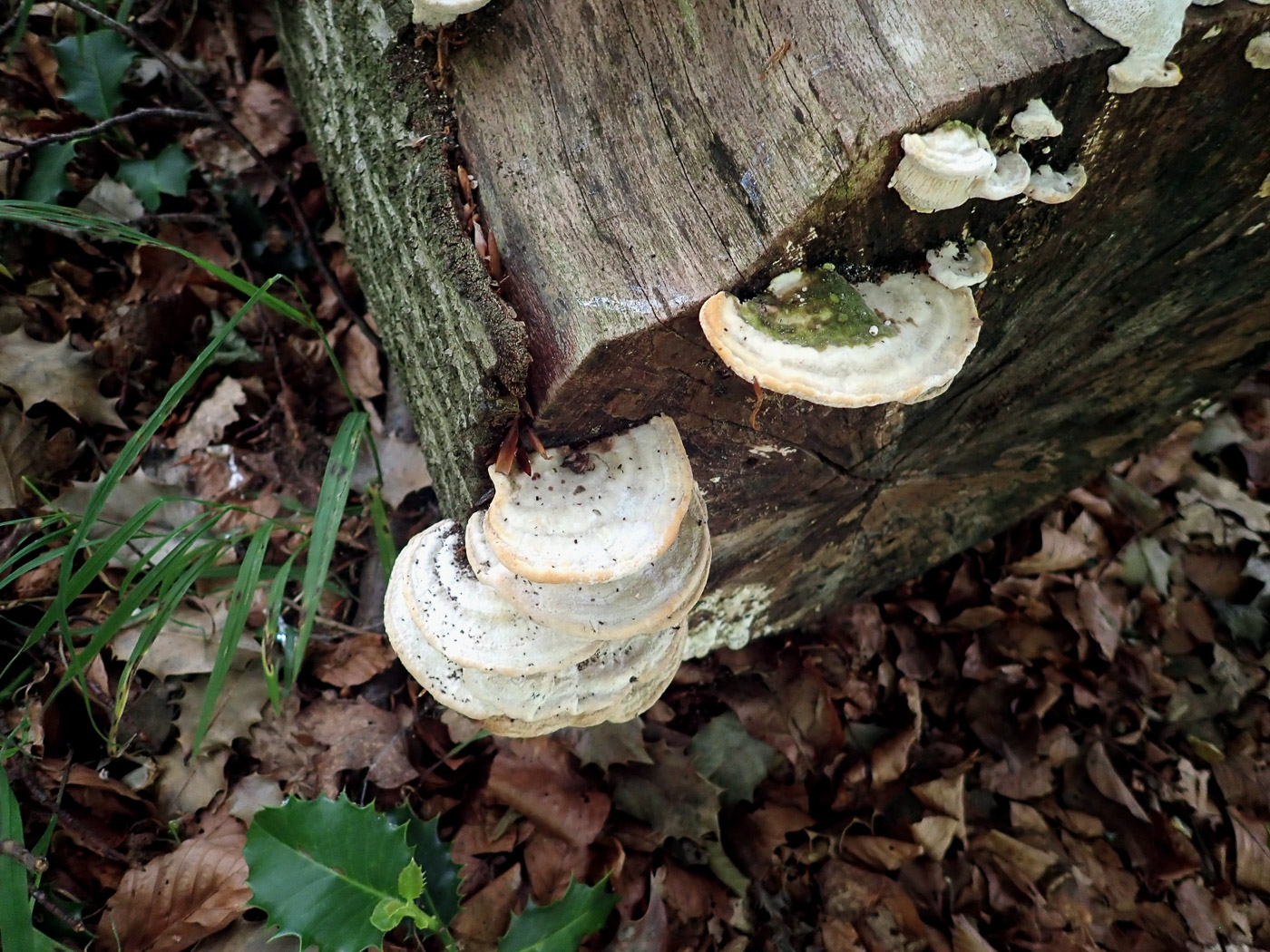
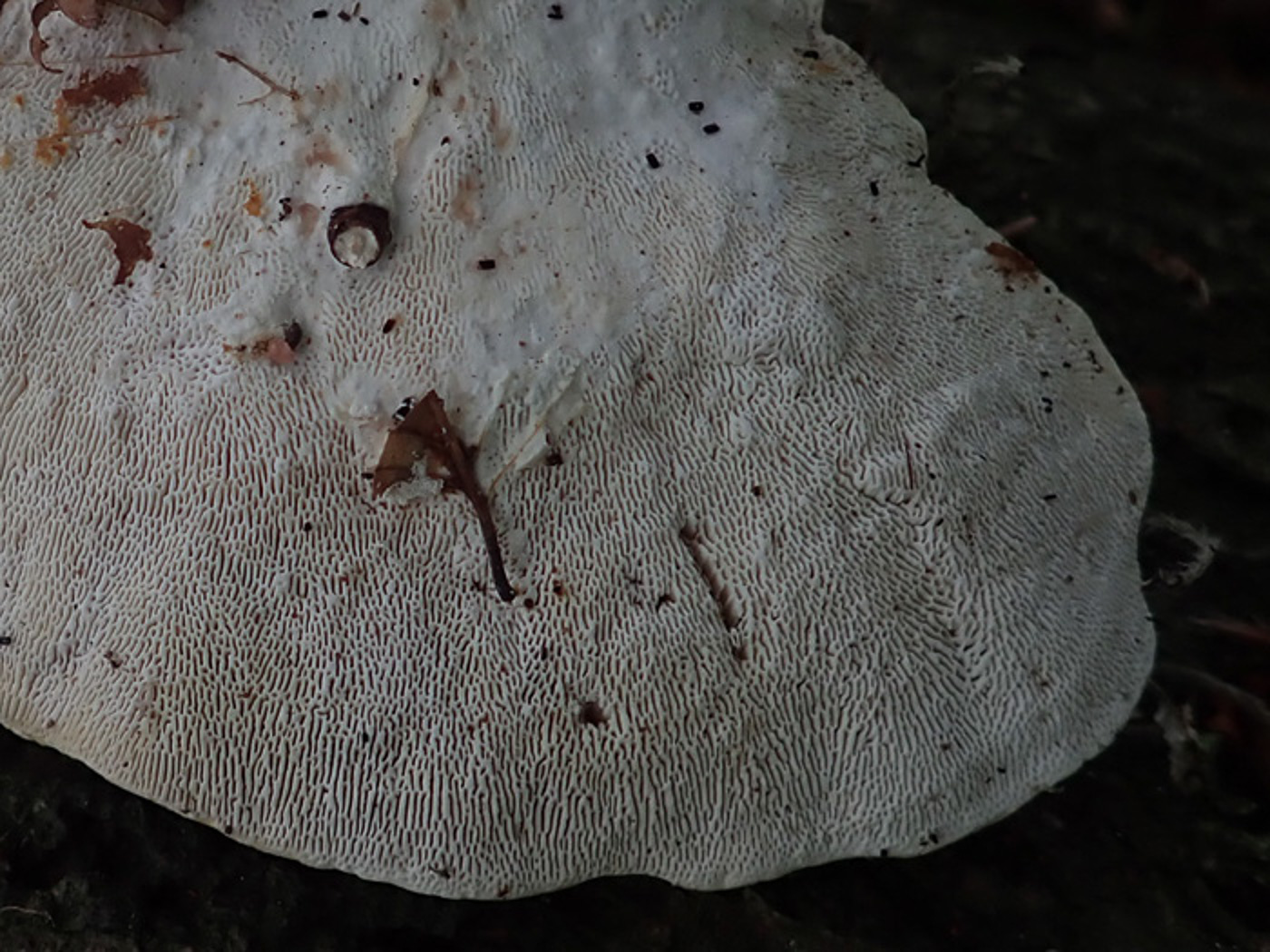 |
July 10th Trametes gibbosa (Lumpy Bracket)
A visit by Penny to Gussett's Wood - typical Chiltern Beech woodland - proved unproductive apart from this display of fresh brackets and the Ganoderma shown above. The brackets were liberally covering a felled Beech trunk and only one (see photo 2) was showing the green algi which often adorns this species as it ages. Photo 3 shows the unusual labyrinthine under-surface which, together with the presence of green algi and the hard lumpy zoned pale upper-surface, is sufficient to allow it to be named in the field. We have a range of images available via the Masterlist.
|
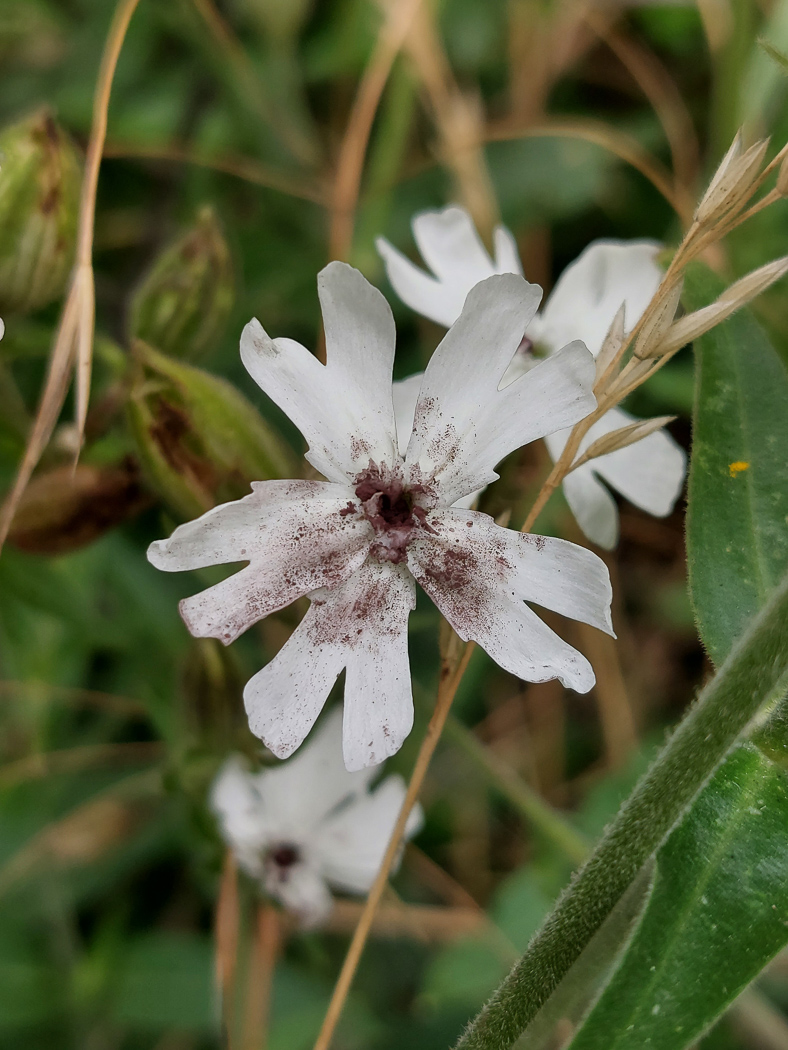 |
July 9th Microbotryum lychnidis-dioicae (Campion Anther Smut)
In Jordans Village Jesper Launder spotted a White Campion flower which had clearly been affected by this apparently common Smut fungus which replaces the host pollen with a mass of brown spores which are then spread by visiting insects. It appears to be known only from White Campion, not Red, and surprisingly it seems to be new to our database despite being considered quite a common species. It is another new entry for Finds.
|
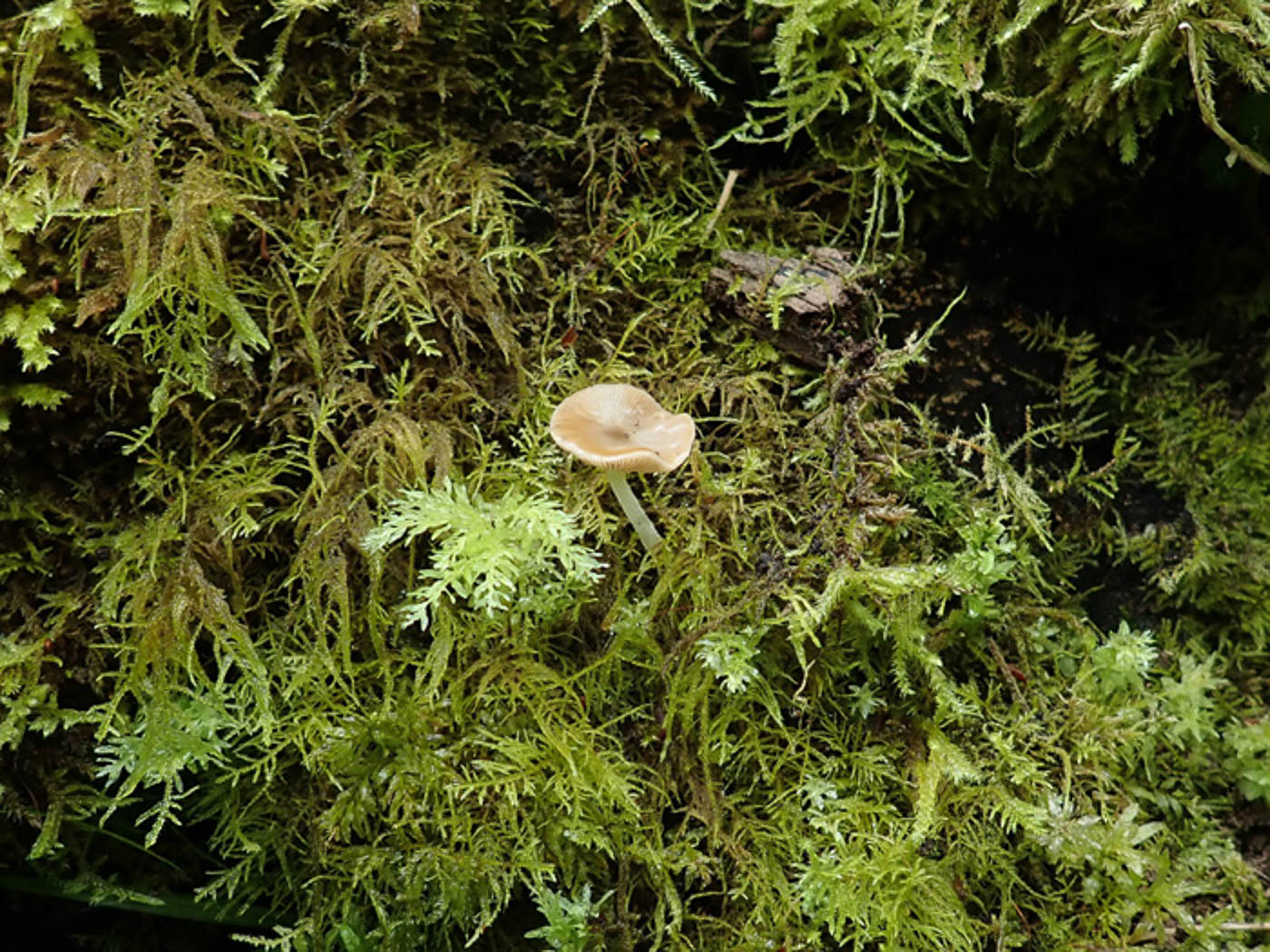
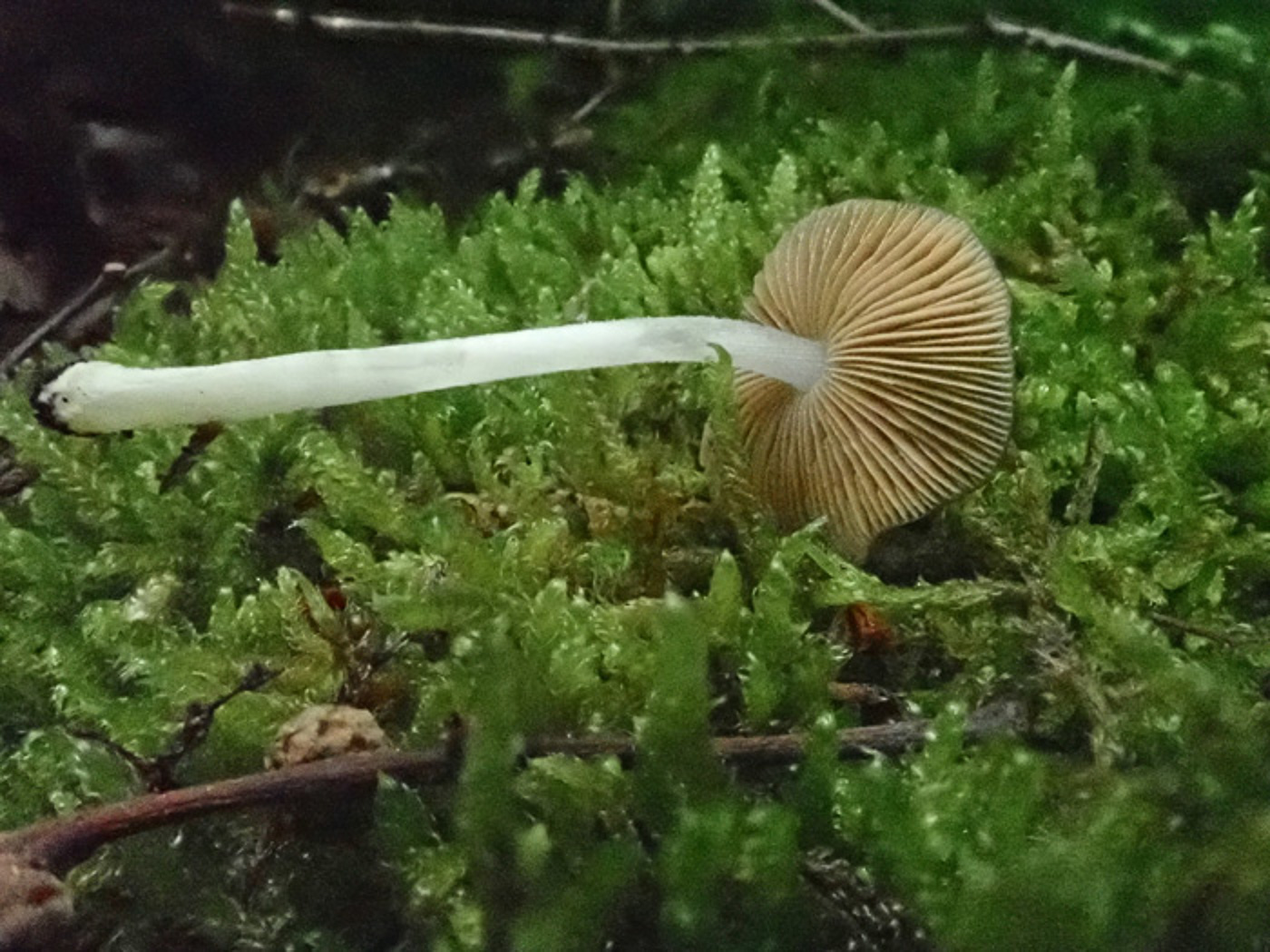 |
July 9th Bolbitius reticulatus (Netted Fieldcap) 
When Penny spotted this small singleton on a mossy deciduous log at Rushbeds Wood she wrongly assumed it was a species of small Pluteus (Shield). It was not until the scope revealed that both spores and cystidia were clearly not from that genus that she twigged what it was. Like most Pluteus species, it has a brown cap, free pinkish gills and occurs on fallen wood, but as well as having different micro-characters the cap tends to be wrinkled and is sticky in damp conditions, and its gills, though free, are not as pink but more buff fawn rusty than in that genus. It is uncommon though possibly goes misidentified for obvious reasons and in the field has little in common with much more familiar B. titubans (Yellow Fieldcap). It was new to the site today and we have one previous entry in Finds: 2020 October 10th.
|
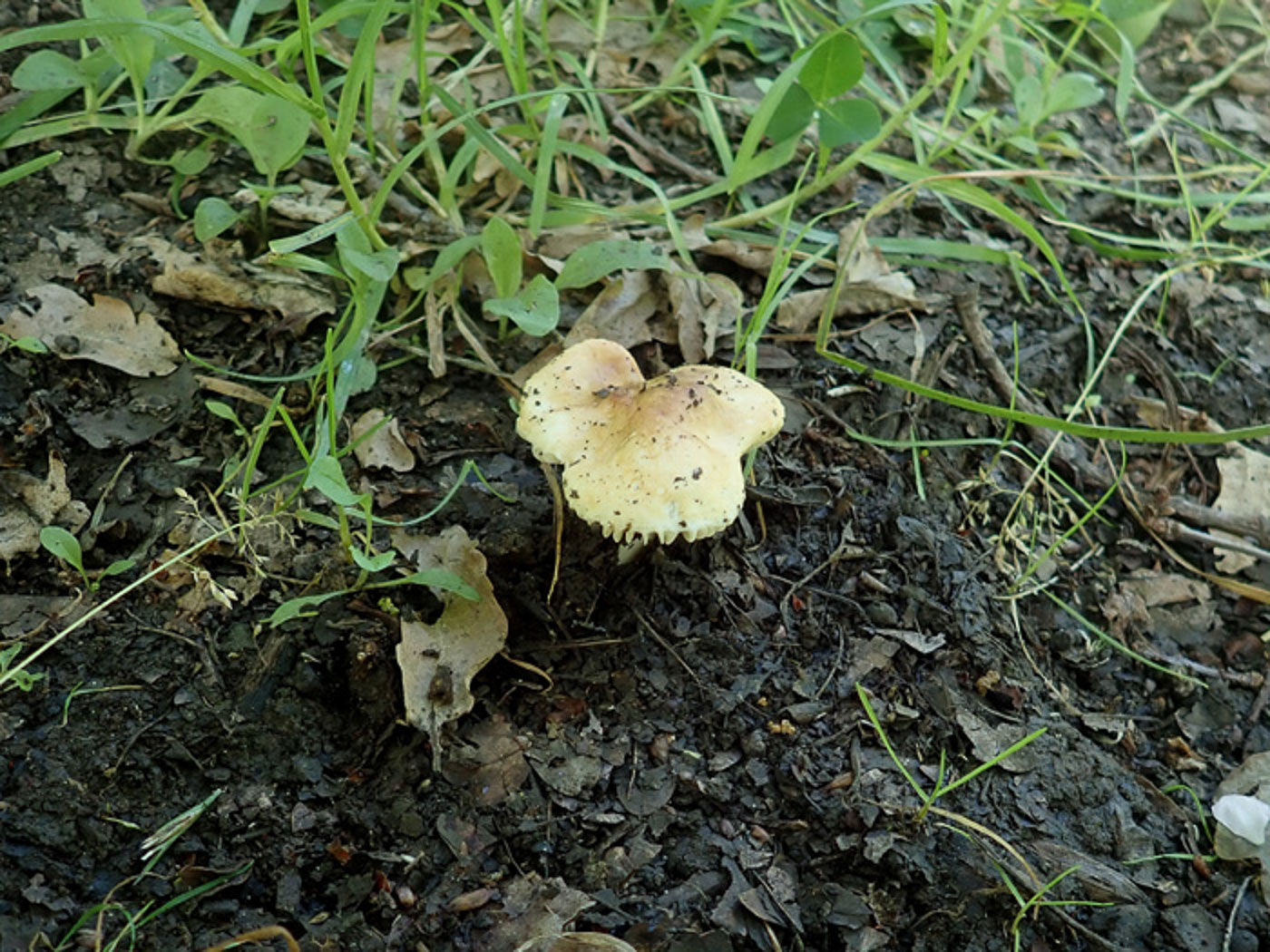
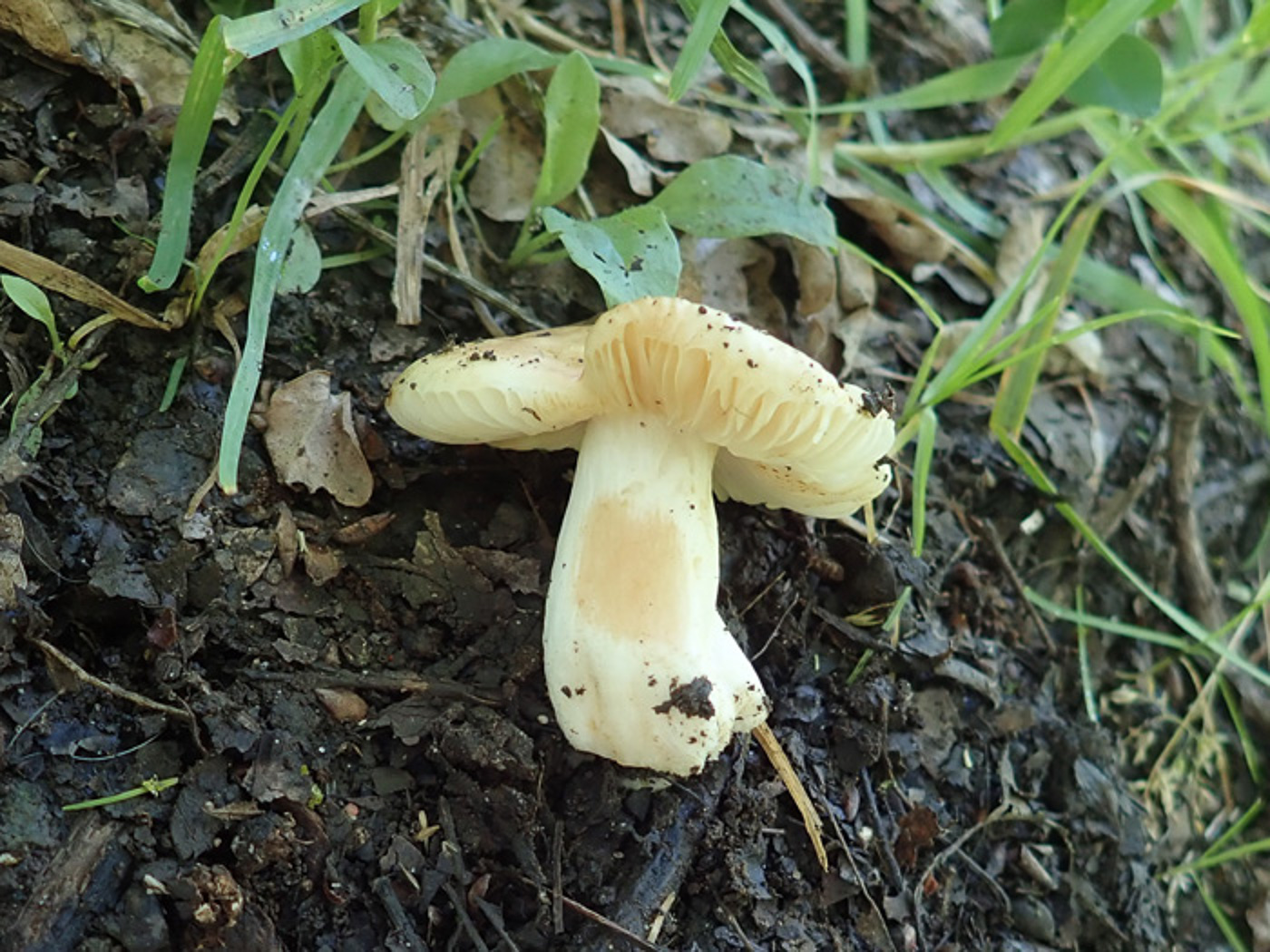 |
July 9th Russula odorata (a Brittlegill with no common name) 
At Rushbeds Wood Penny was pleased to find her first Brittlegill of the season though few of this genus are recorded from here compared to our Beech woodlands where they abound. This is quite an uncommon species, one which favours Oak - a common tree here - and is small, often with pink colours (though completely missing here!), yellow gills with a surprisingly deep ochre sporeprint, a sweet smell and distinctive micro-characters which help with its ID. It was new to the site today and we have one previous Finds entry: 2021 July 15th.
|
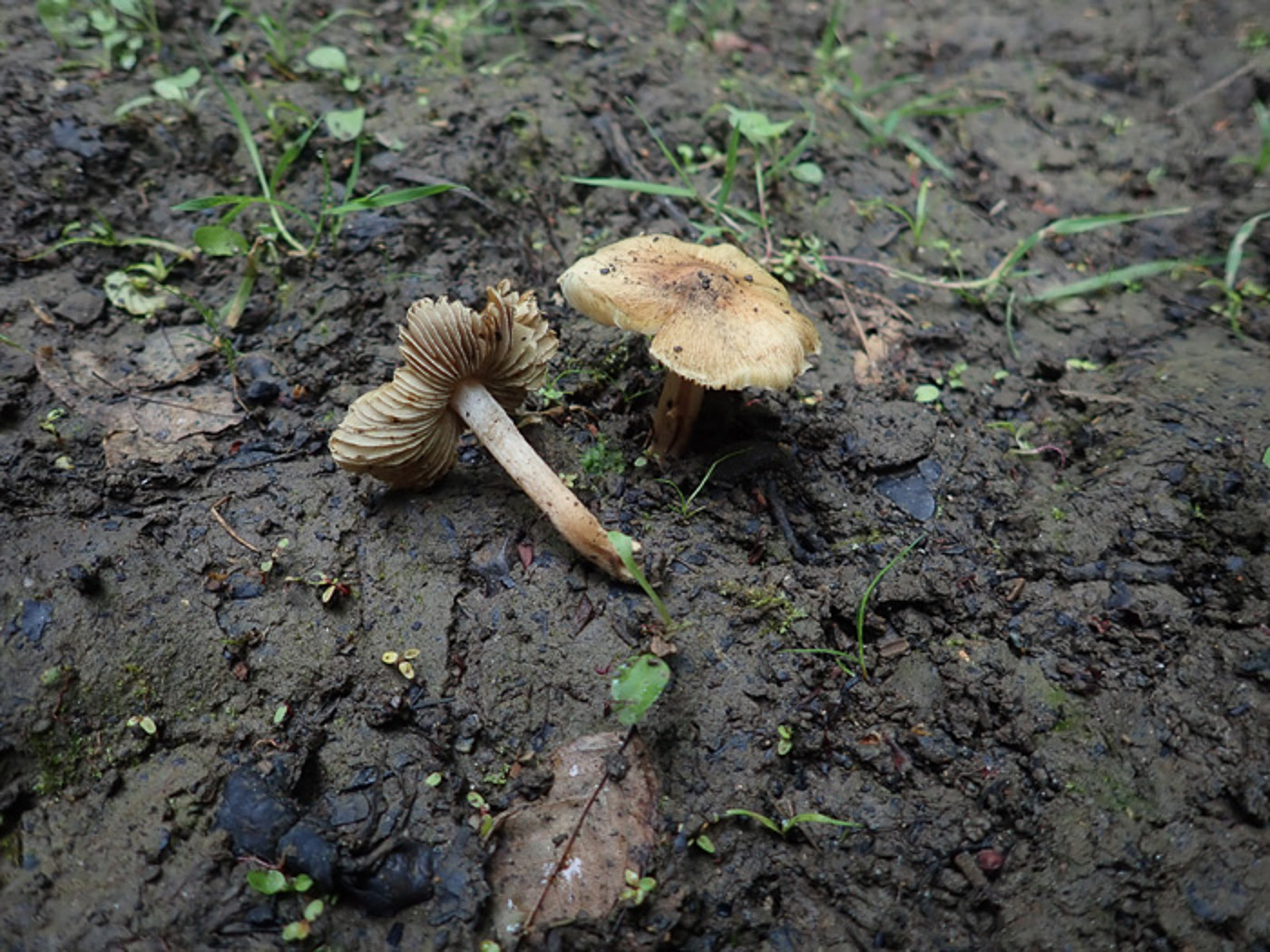 |
July 9th Pseudosperma squamatum (a species of Fibrecap with no common name) 
In the middle of a muddy path at Rushbeds Wood Penny nearly trod on these two! The species is quite rare, not often recorded, and this spot in Rushbeds is our only known county site. A typical nondescript LBJ and previously in genus Inocybe, it is very closely related to the much more common P. rimosum (previously I. rimosa) but has distinctive gill cells and often (though not clear here) a scaly cap. It favours Willow and Poplar but here was near Hazel. This is a new entry for Finds.
|
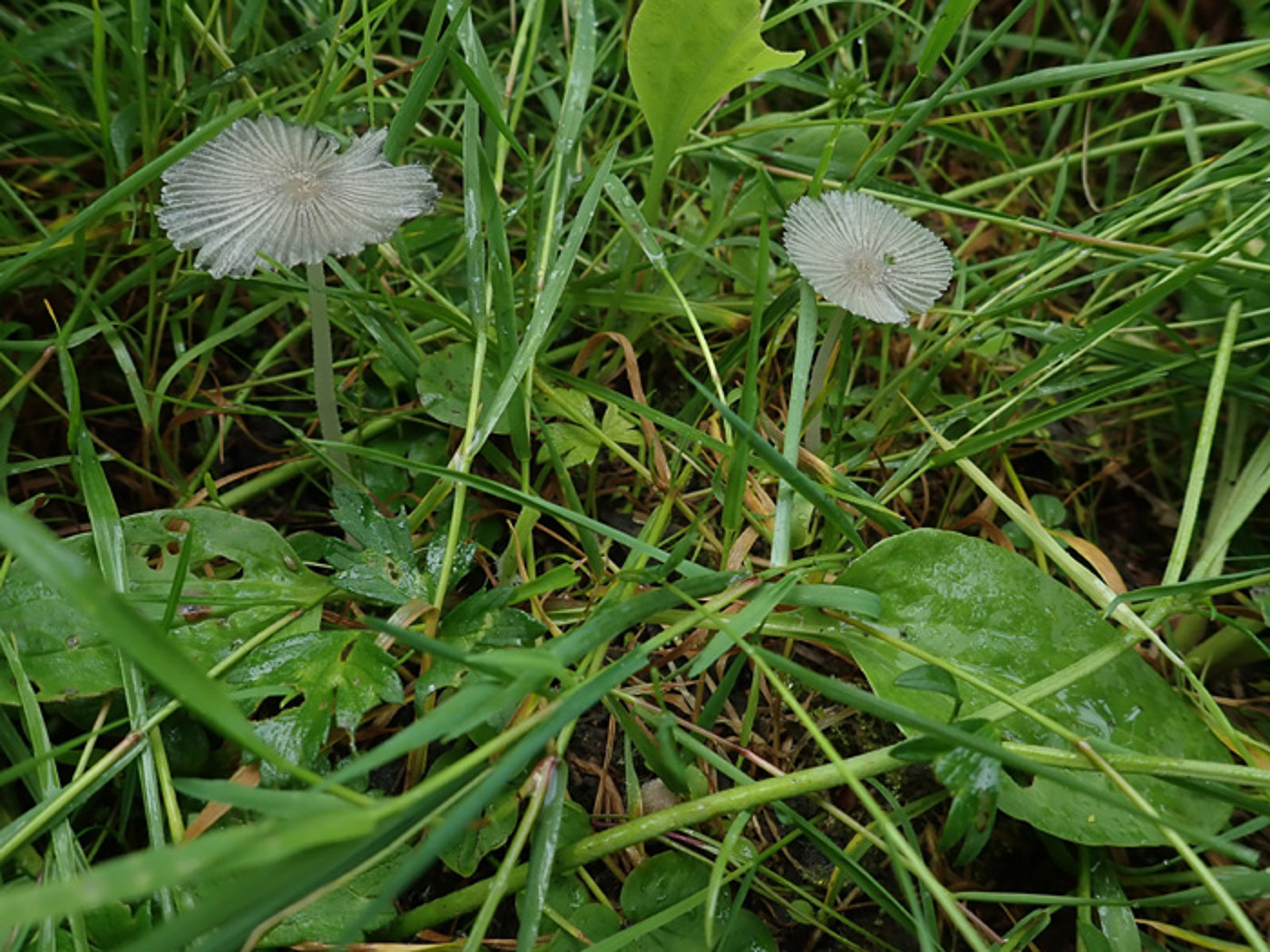
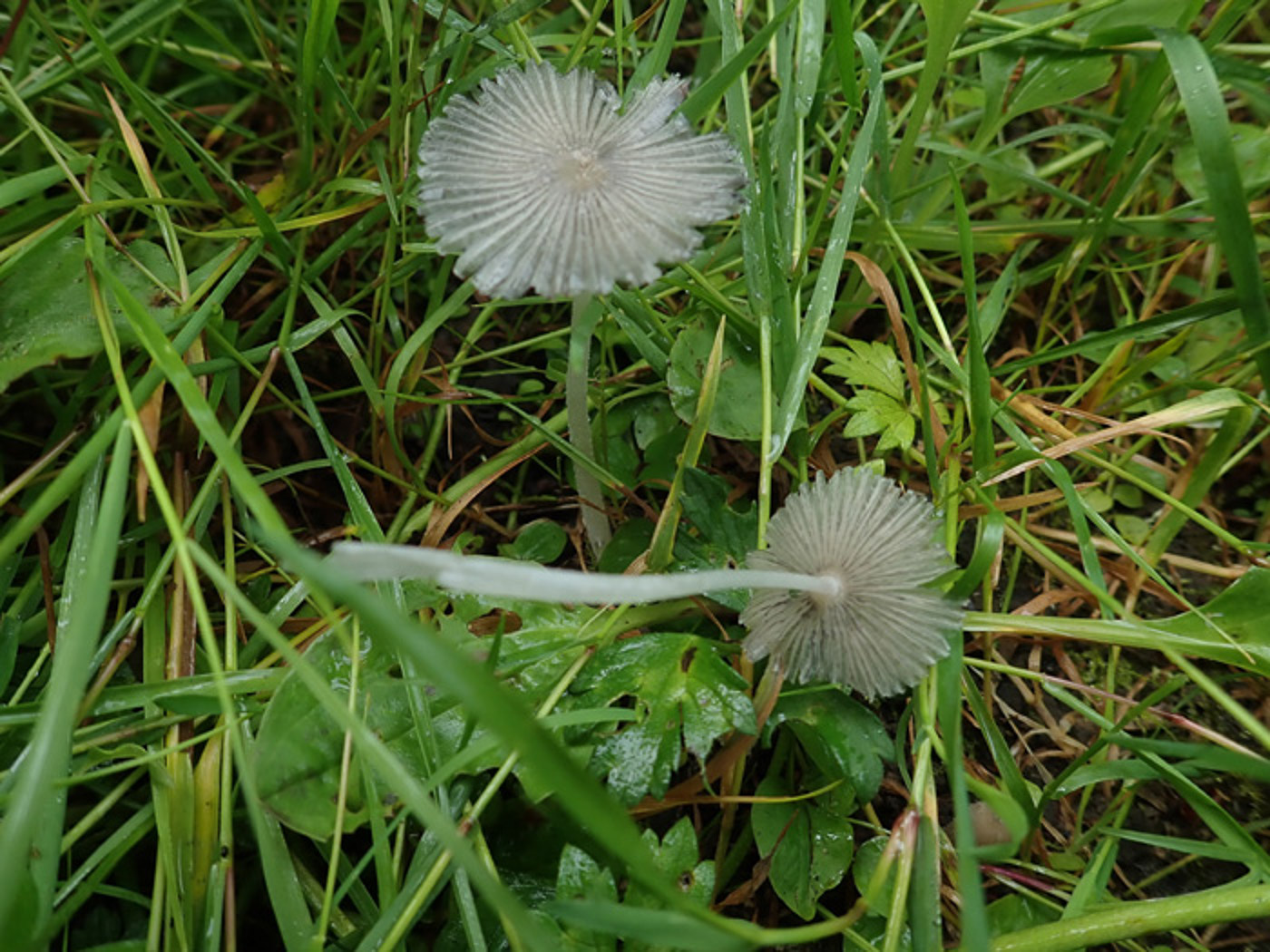
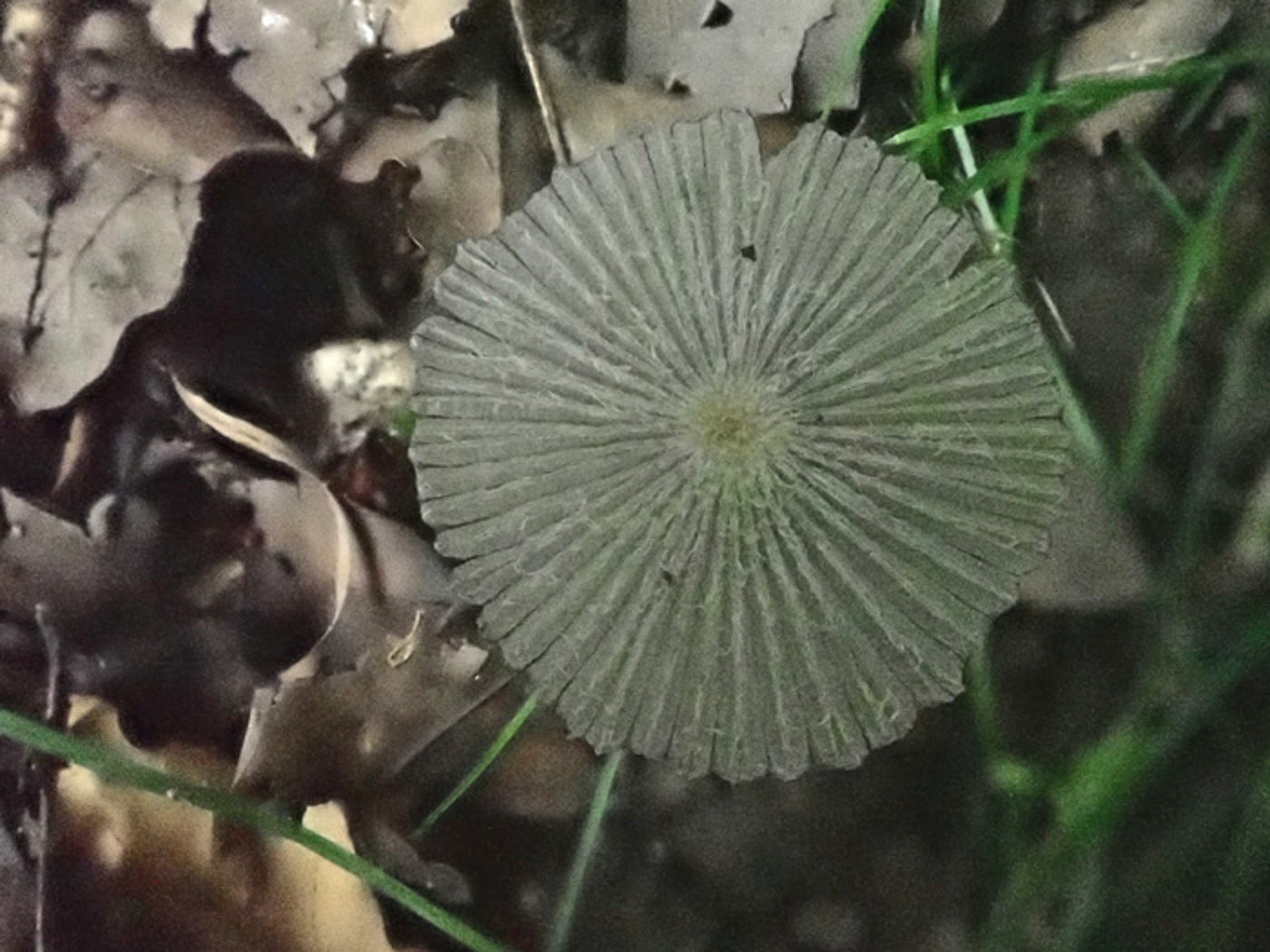 |
July 9th Coprinopsis lagopus (Hare'sfoot Inkcap) 
At Rushbeds Wood, now nicely damp, Penny found this delicate species fruiting in grassy path edges. Easily recognisable when often plentiful in woodchip piles where there are immature furry specimens (hence its common name), the species also occurs in soil in woodland glades though then needs checking as there are plenty of other similar Inkcaps it might be. Photo 3 shows the typical whispy white veil remnants which under a scope are like strings of chipolatas and together with its spores help to distinguish it.
|
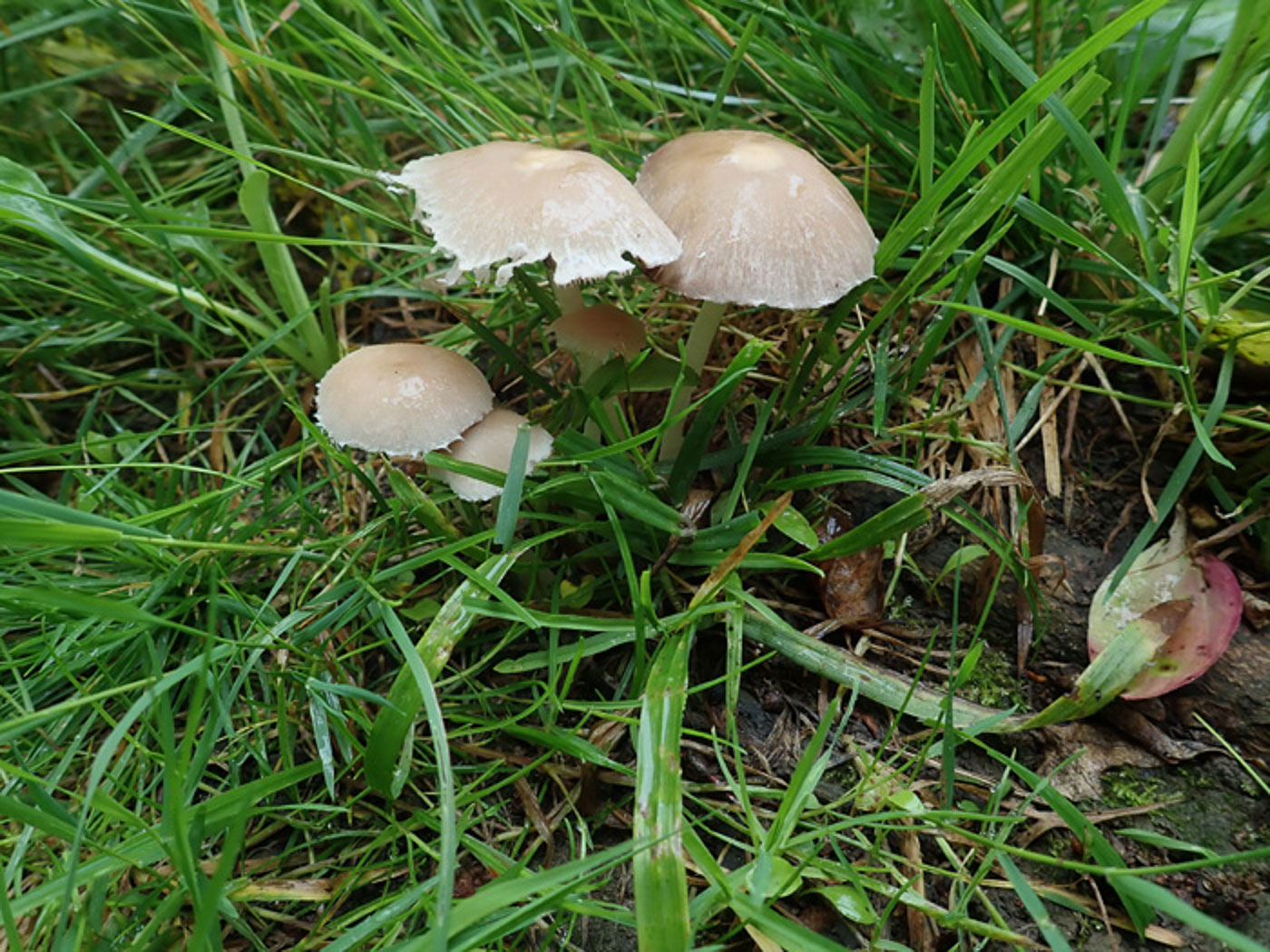
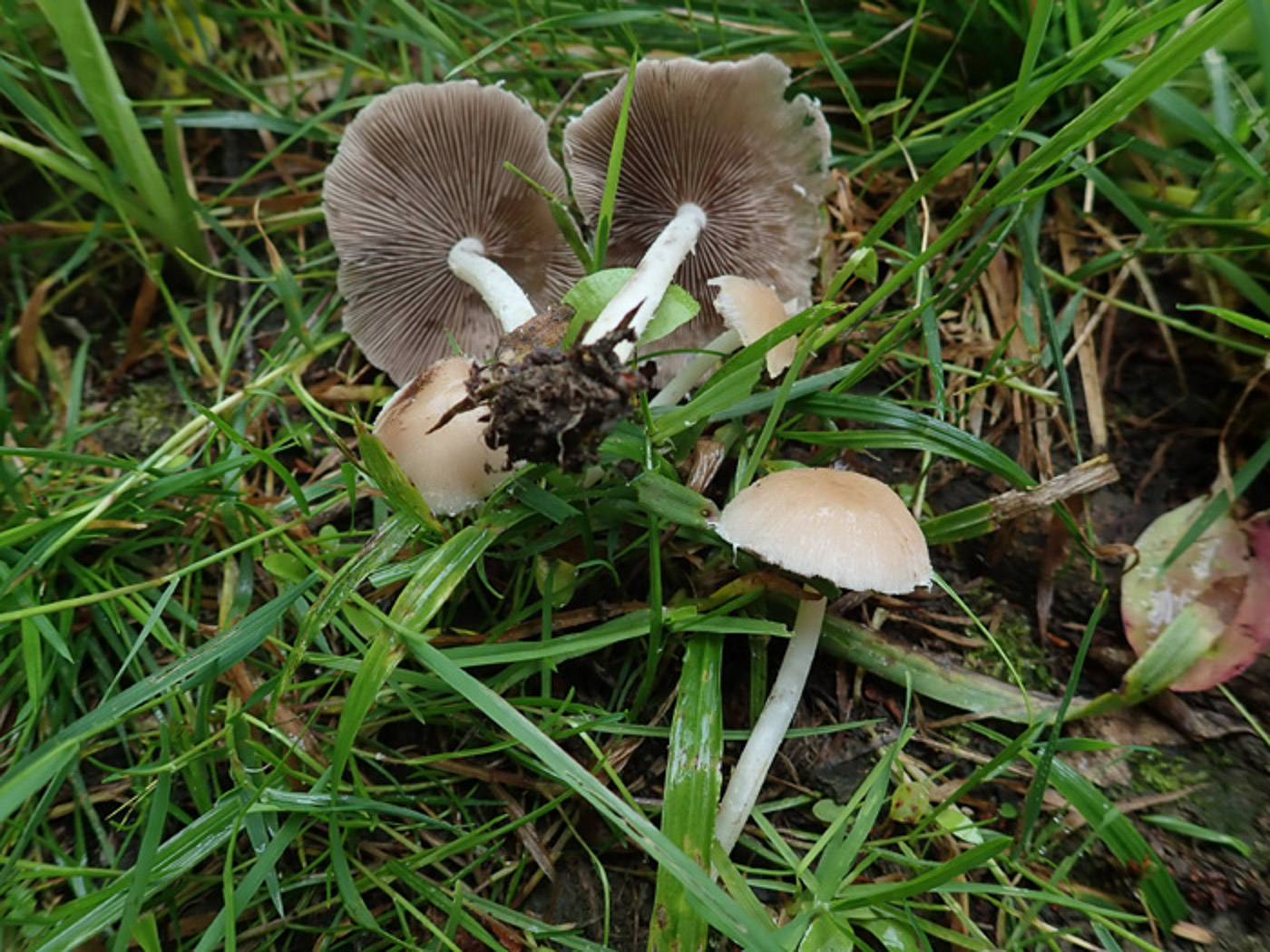
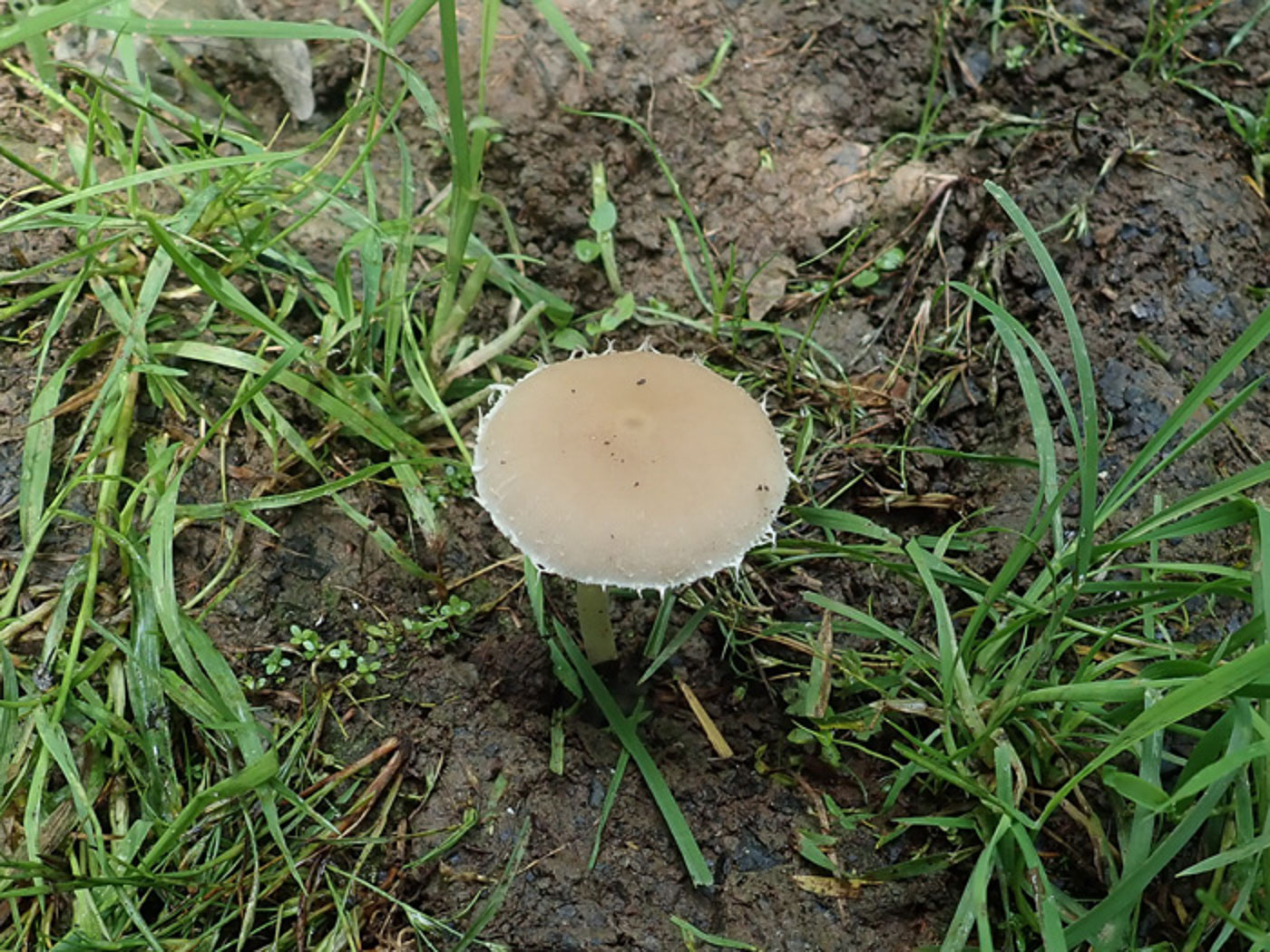 |
July 9th Candolleomyces candolleanus (Pale Brittlestem) 
At Rushbeds Wood, now nicely damp, Penny found several groups of this common Brittlegill, previously in genus Psathyrella, growing in muddy grassy path edges. Photo 2 shows the palish gills just beginning to darken as the dark brown spores mature to colour them, and photo 3 shows its most useful field character well: the frilly veil remnants around the cap margin. See the Masterlist for other examples.
|
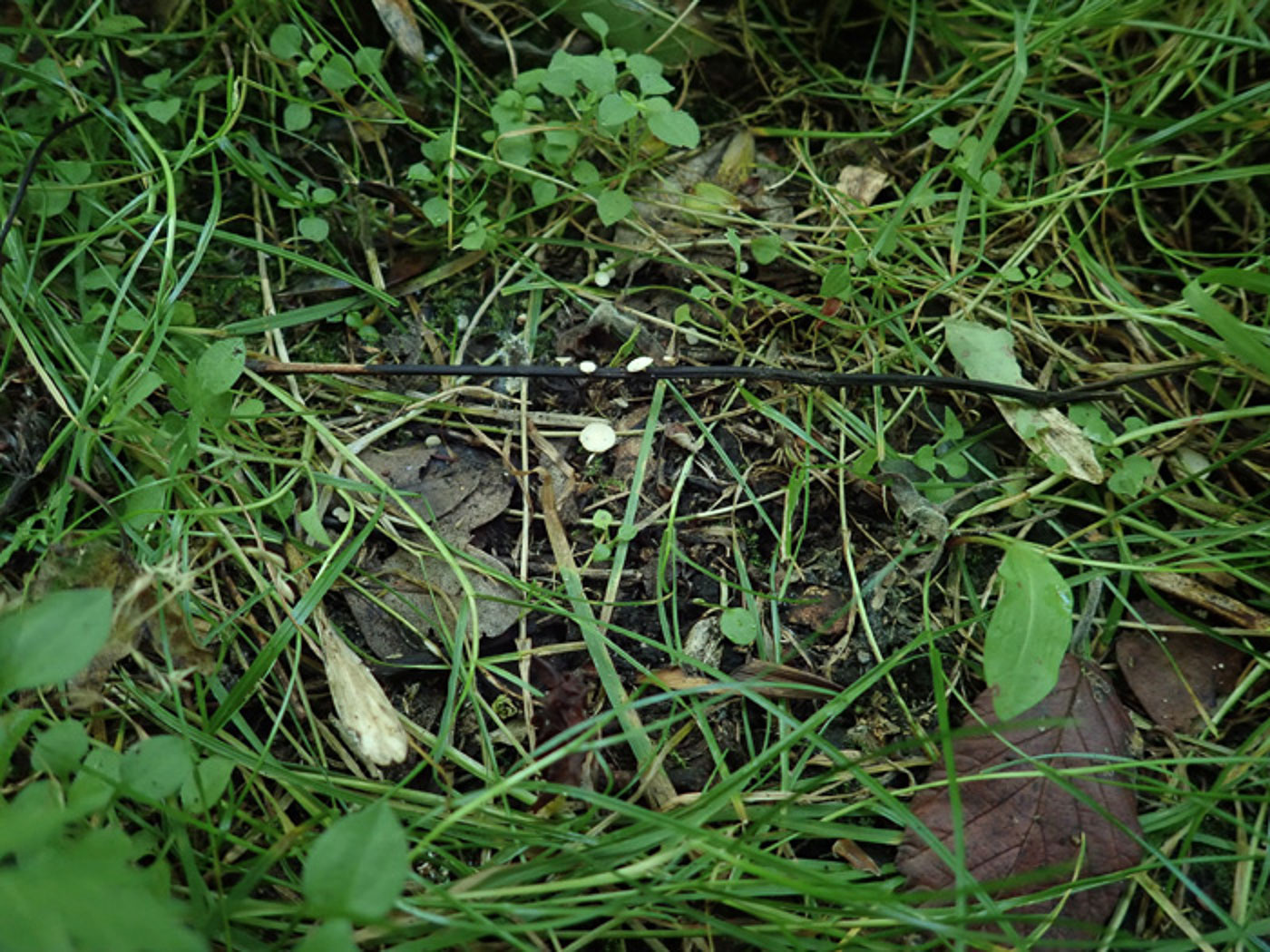
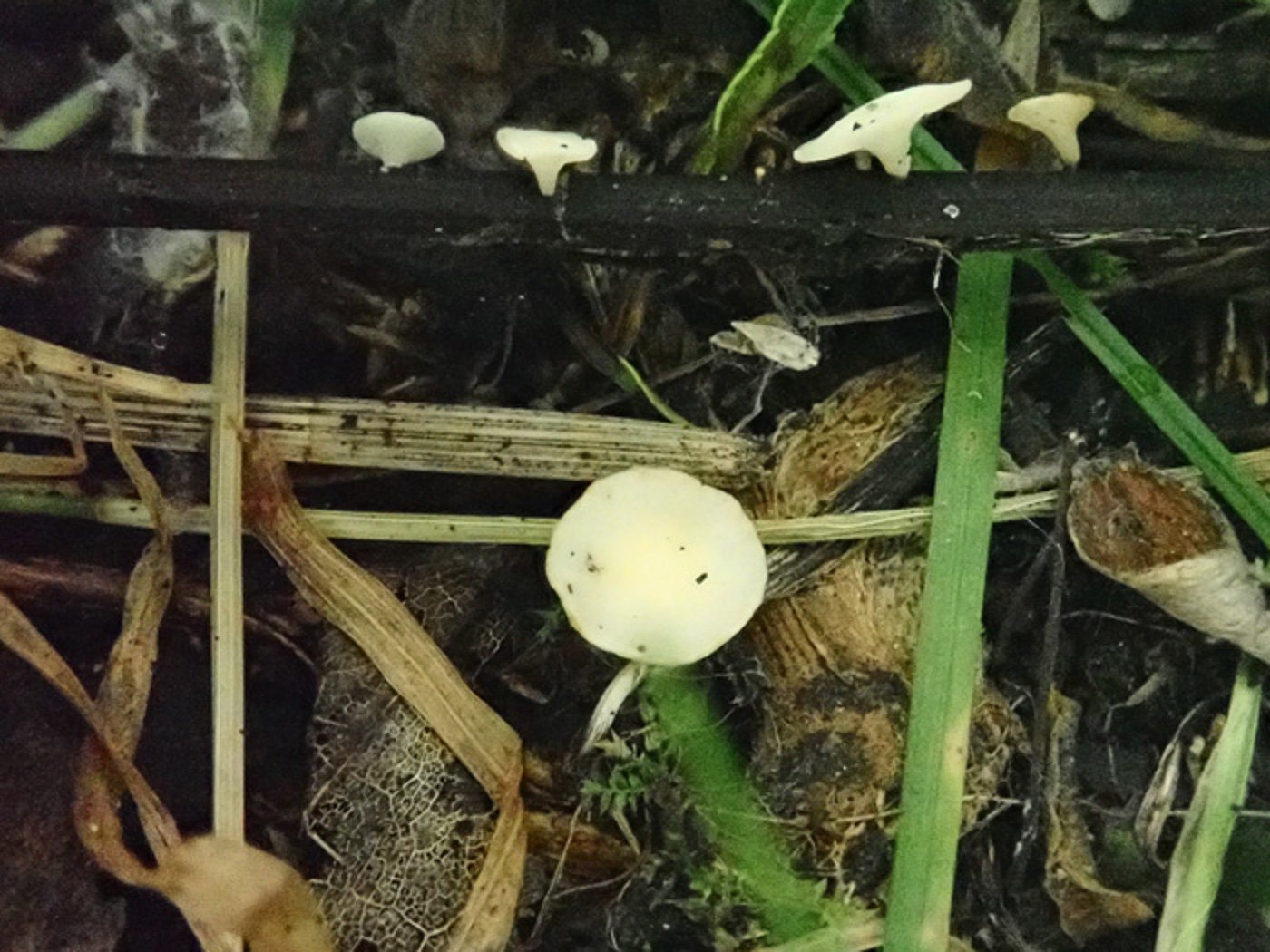 |
July 9th Hymenoscyphus fraxineus (Ash Dieback Disco)
In Rushbeds Wood Penny was not surprised to catch her eye in these tiny pale short-stemmed discs on a rotting leaf petiole in pathside litter. Sadly Ash Dieback is apparently rife at this site with much felling and some path closures as a result. See also in Finds 2021 August 13th and 2022 October 12th.
|
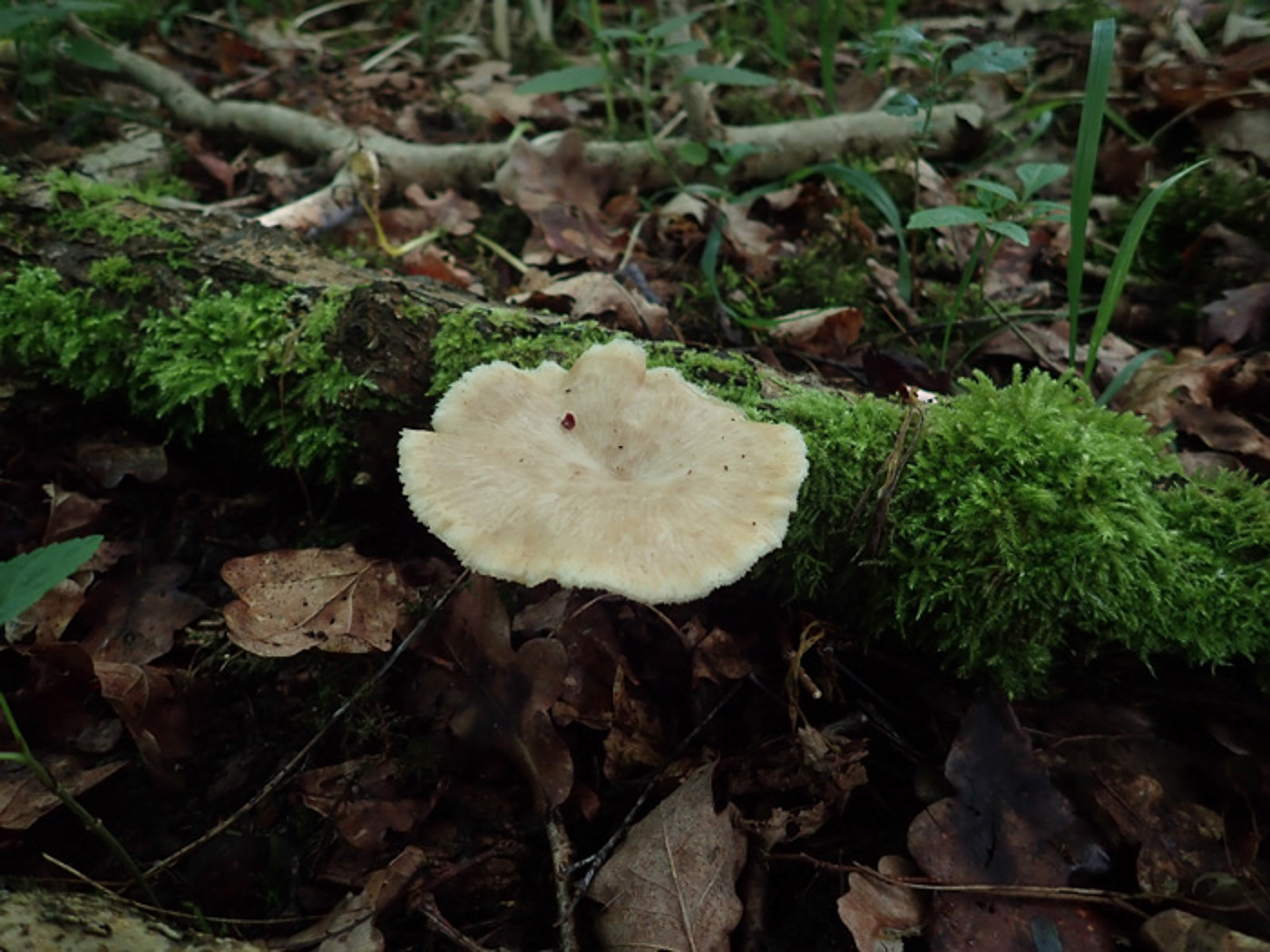
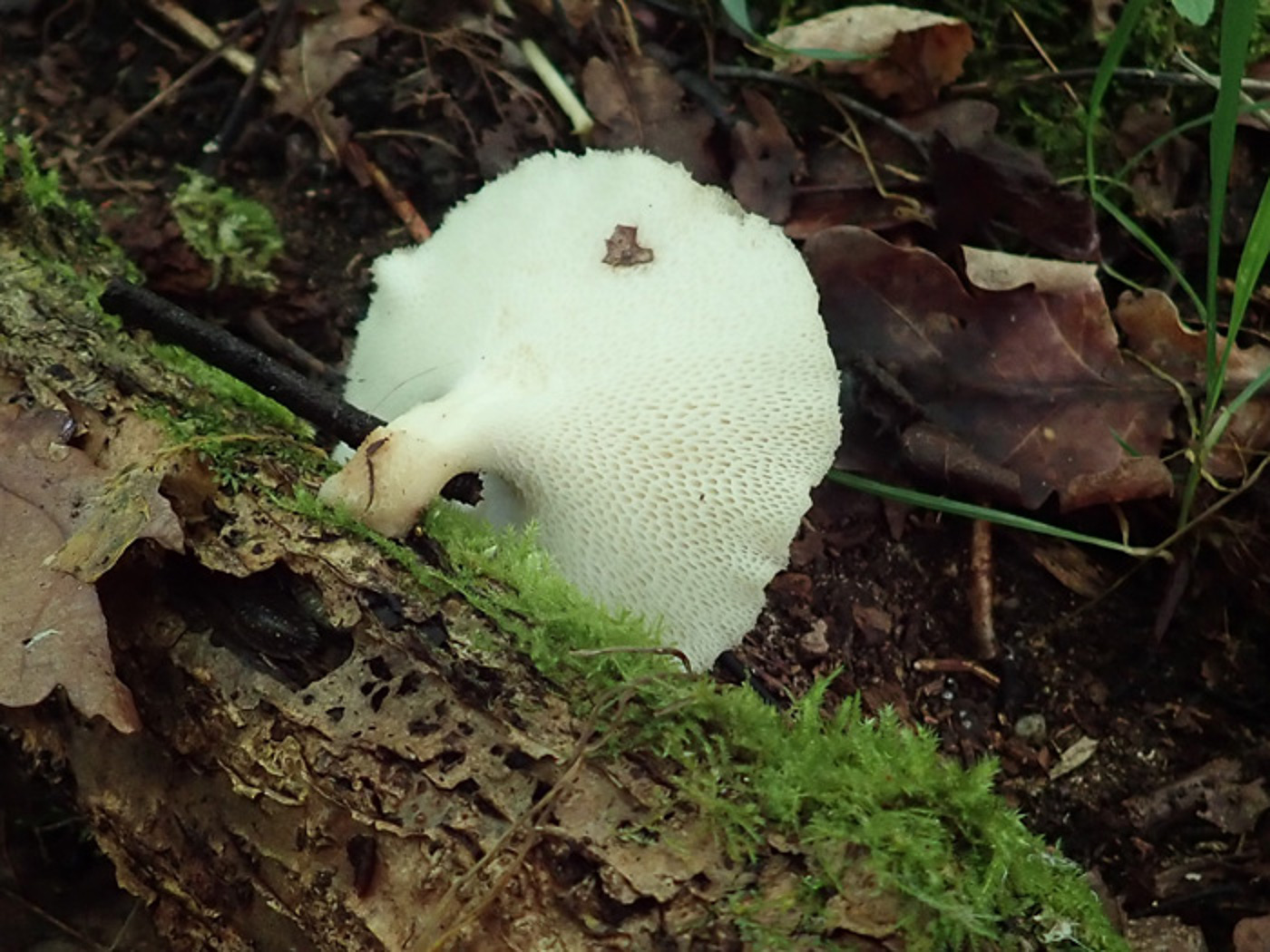 |
July 9th Lentinus substrictus (Fringed Polypore)
In Rushbeds Wood on a rotten deciduous stick Penny noticed this cap and (turning it over) the pores beneath. Previously known as Polyporus ciliatus - a name which described it well(!) - the species tends to fruit in Summer, lacks the black stem base found in the more common P. leptocephalus though its cap is similarly quite pale, and it does indeed have a fringed margin. See also in Finds 2020 October 03.
|
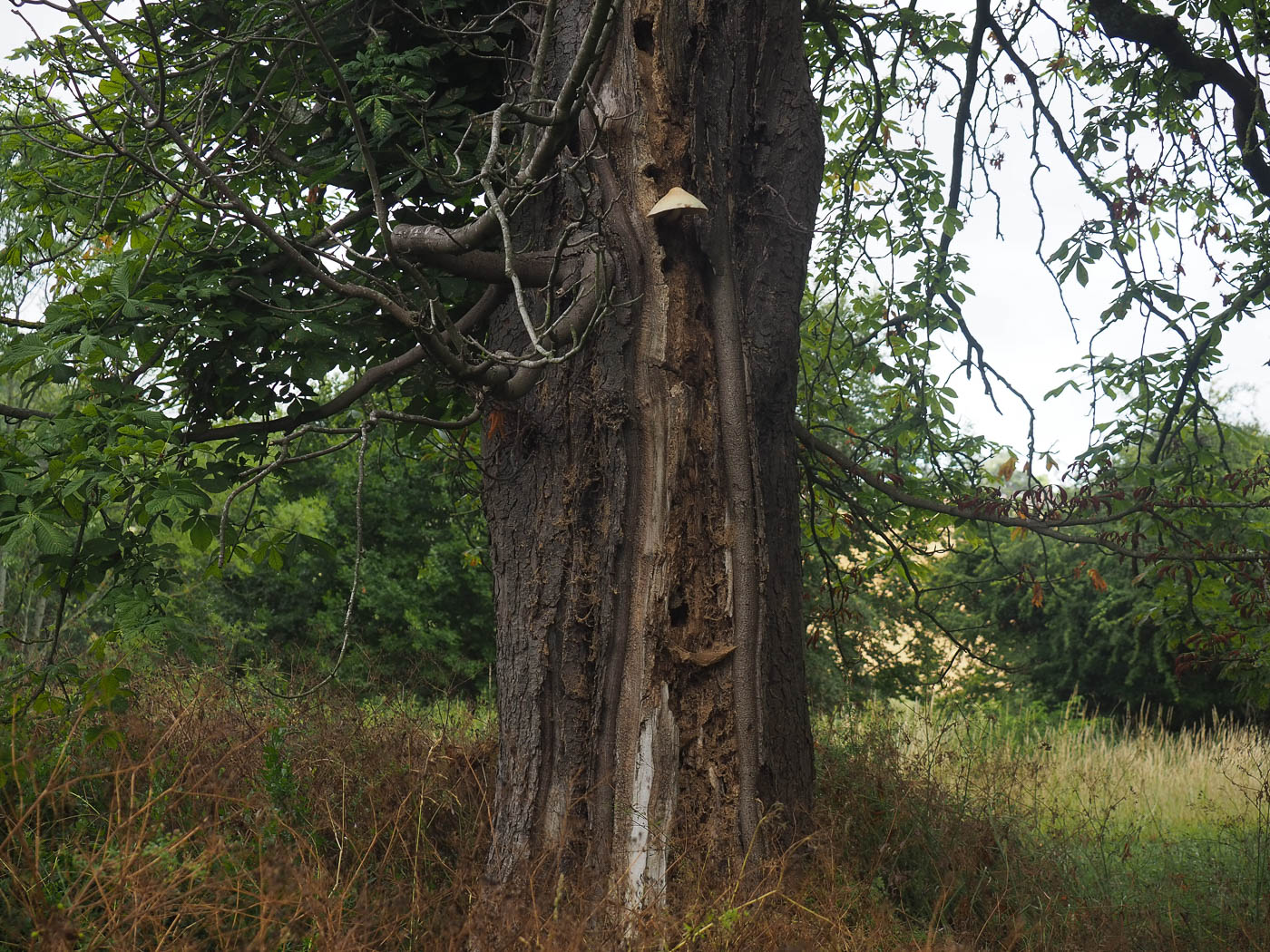
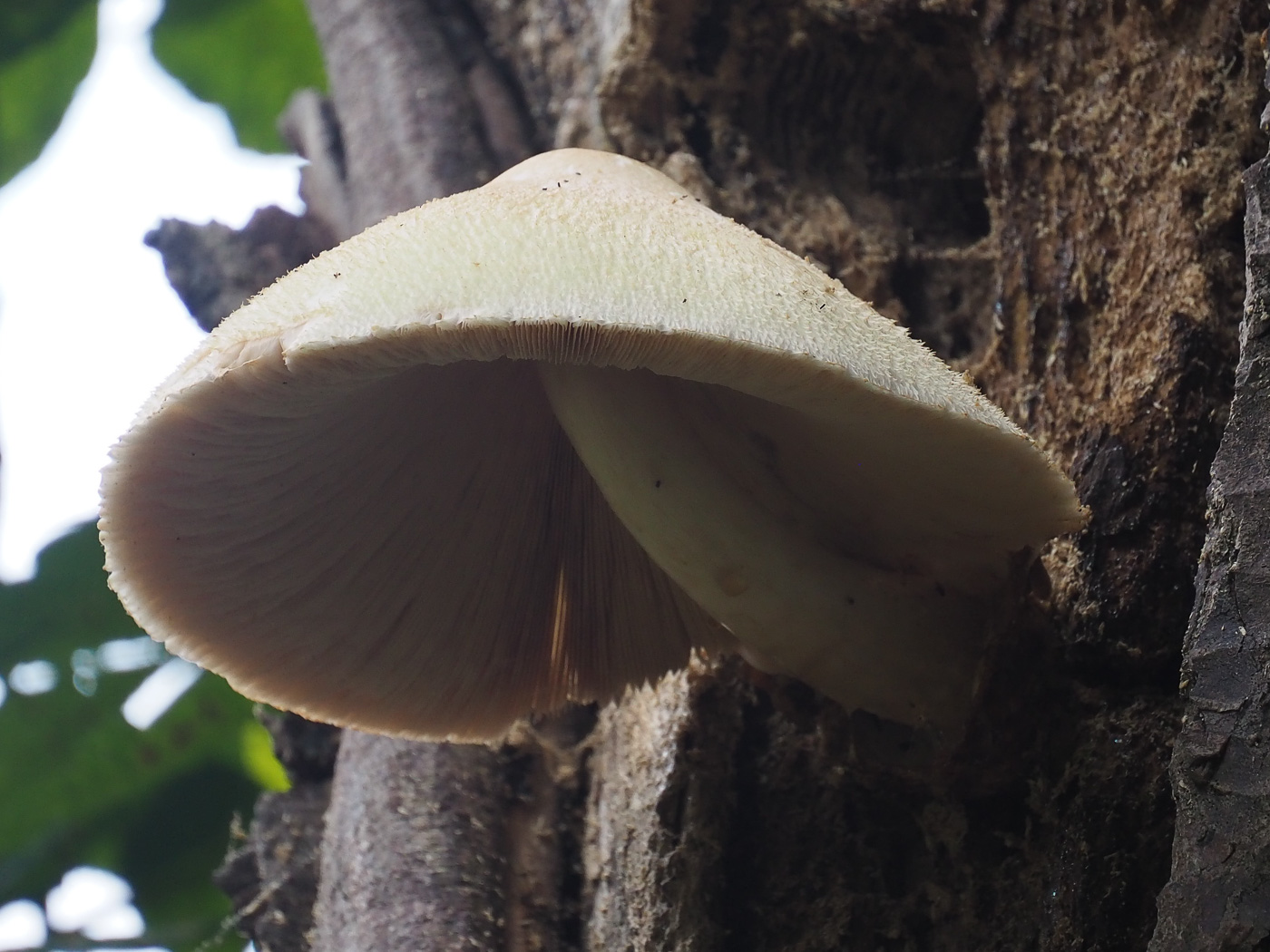
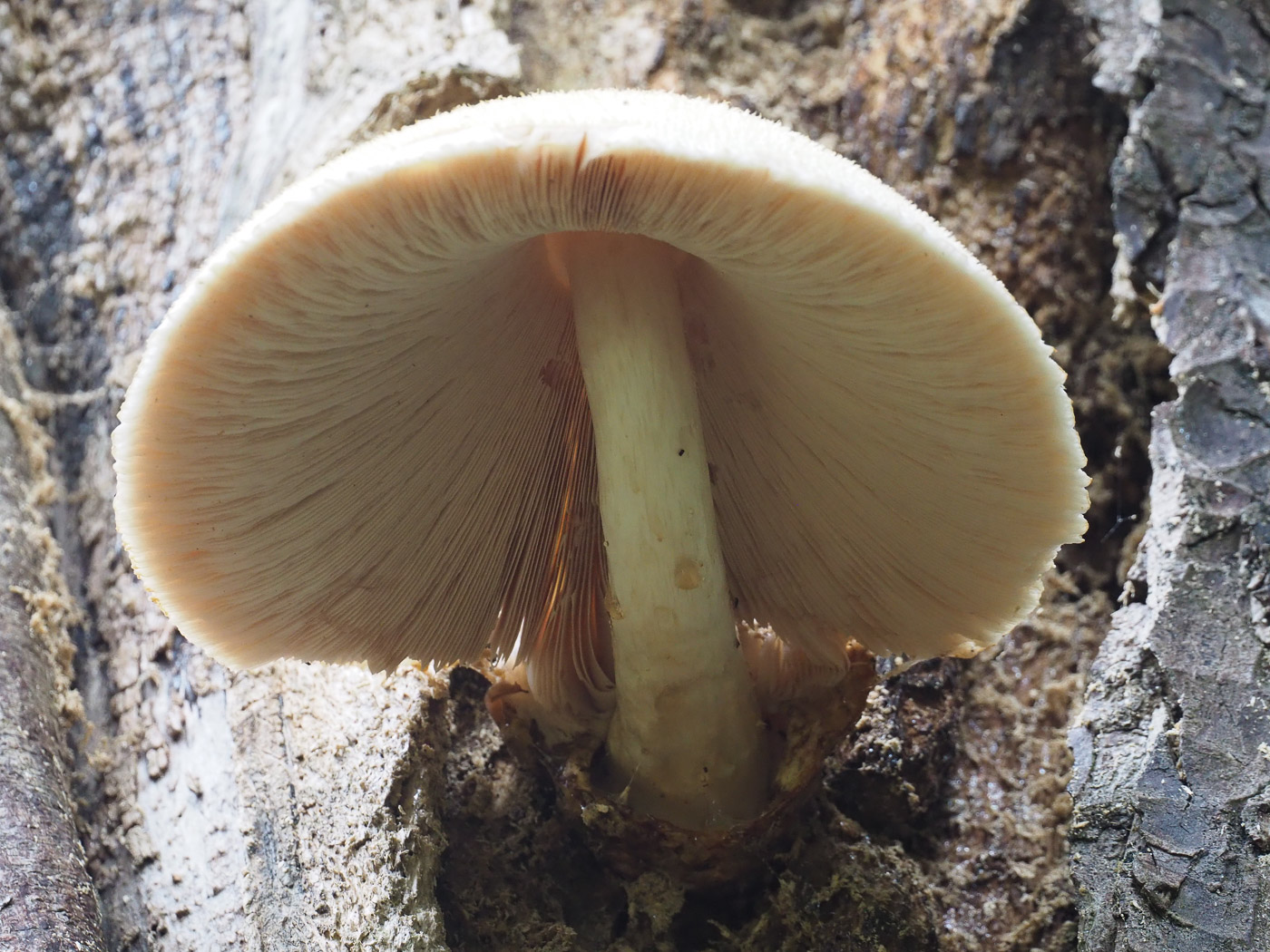 |
July 7th Volvariella bombycina (Silky Rosegill)
In Hughenden Park John Catterson spotted this beautiful specimen about 9-10 ft up on a decaying Horse Chestnut trunk. He comments that he's found it fruiting here for the last two years though not as high up as this. (Two of our three previous Finds images are John's photos from this same tree.) This is an uncommon species, similar to Pluteus (ie with free pink gills) but the genus name describes the difference: it has an Amanita-like volva at the stem base which though submerged within the wood here can just bee seen in photo 3.
|
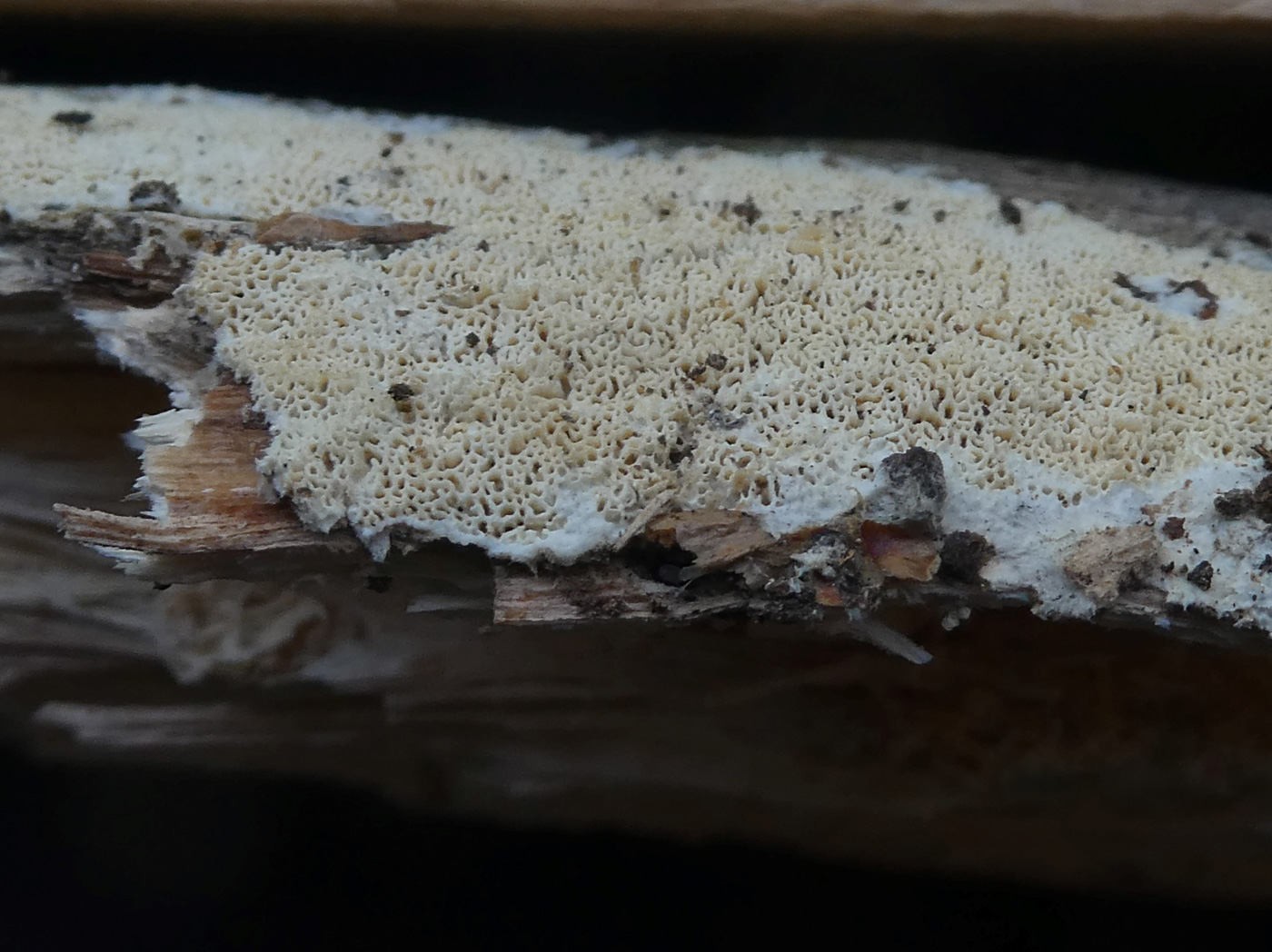 |
July 7th Schizopora paradoxa (Split Porecrust) 
In Gerrards Cross Common Jim Wills found this poroid corticioid species on very well rotted hardwood. It is possibly our commonest corticioids, occurring on fallen deciduous sticks and branches everywhere, though the closely related S. flavipora is extremely similar and apparently quite rare and possibly mistaken in the field but has smaller spores. See also in Finds 2020 December 07 and 2021 May 10, also S. flavispora for comparison in 2022 January 29th.
|
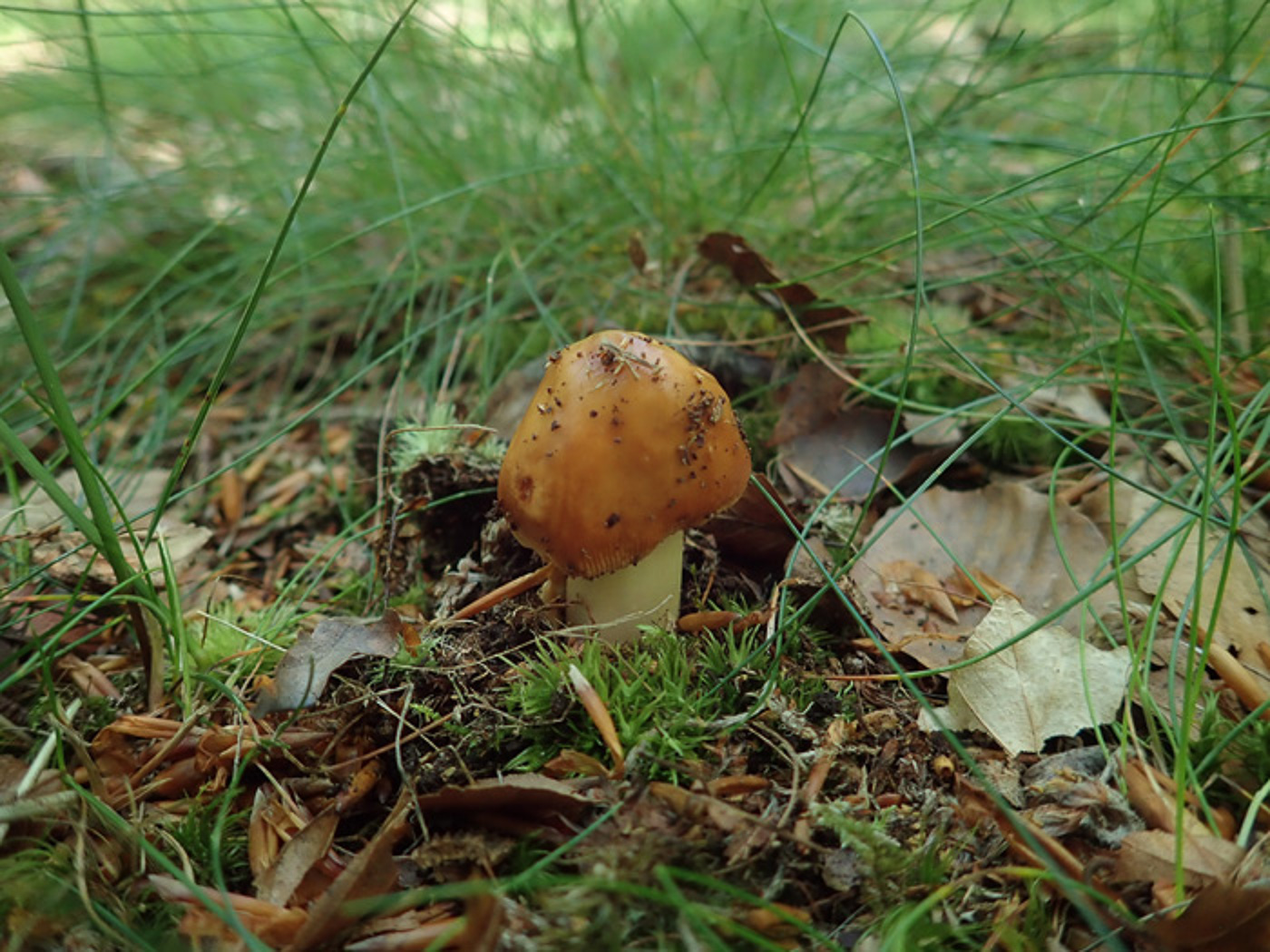 |
July 7th Amanita fulva (Tawny Grisette)
In a grassy Beech grove at Burnham Beeches this early fresh specimen was just emerging after recent rain, recognisable from its cap colour though the flecks of veil had clearly been washed off. Penny hadn't the heart to extract it to reveal the volva at its base but we have other examples which show this and will no doubt be featuring this common species again. See the Masterlist for more examples.
|
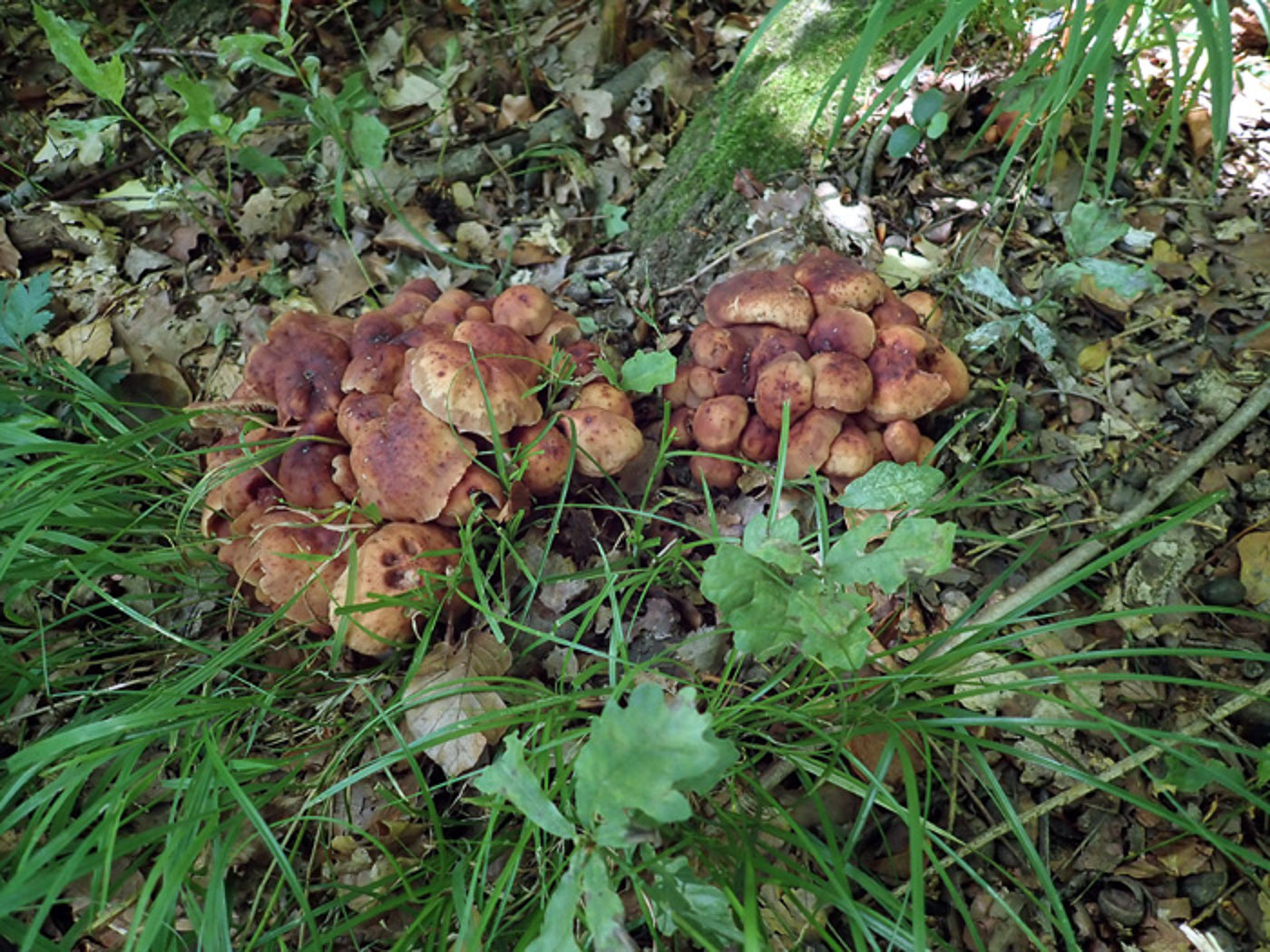
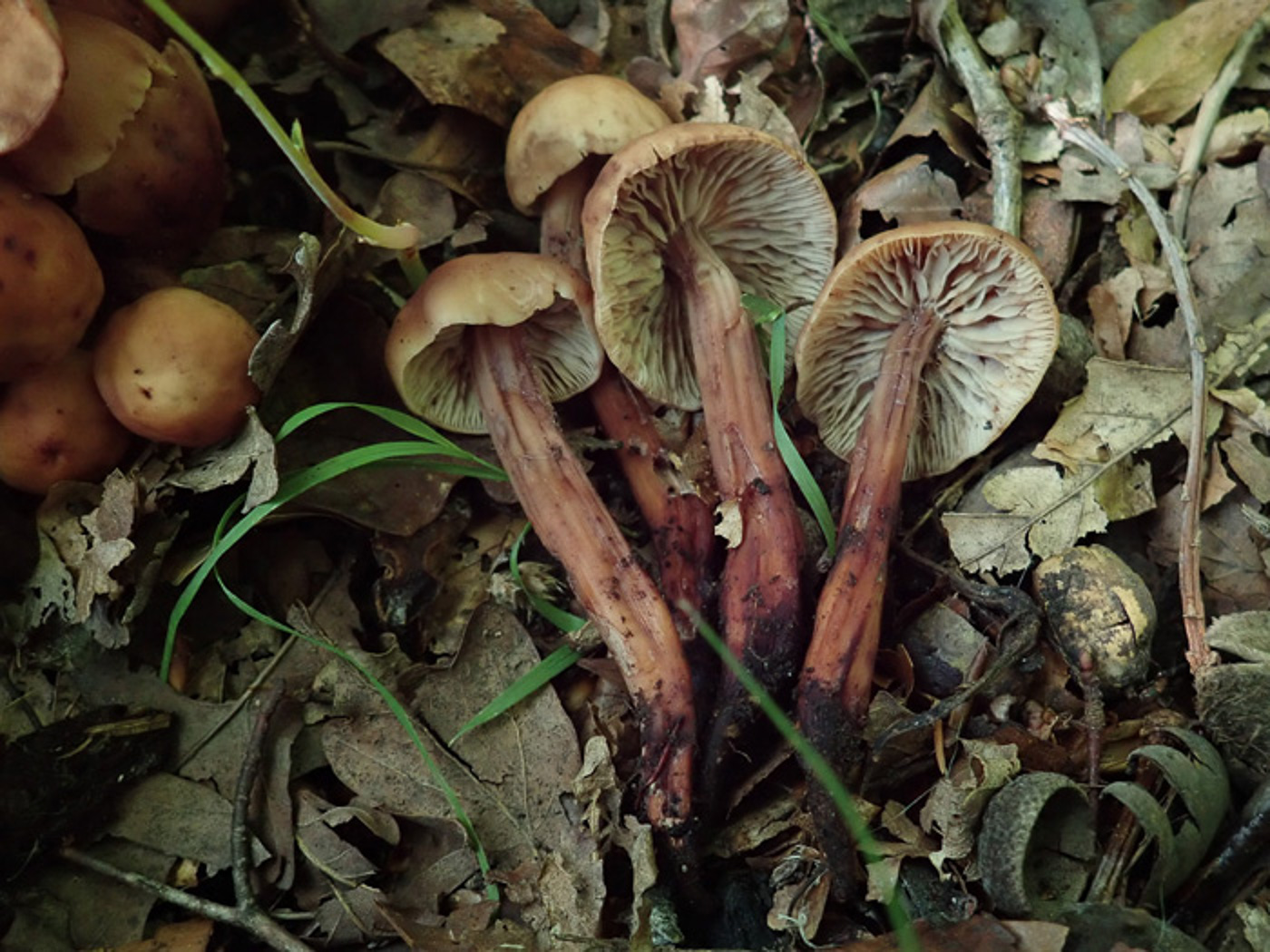 |
July 7th Gymnopus fusipes (Spindle Toughshank)
At Burnham Beeches Penny spotted several tight clumps of this species at the base of mature Oaks. They were looking surprisingly fresh and had no doubt been triggered into action by the much needed significant rain in recent days. Note the rather fibrous ridged stems which typically fuse together at their base which tends to be darker with a reddish tinge as seen here. The species favours mature Oak but also occurs under Beech, always at or near the trunk base and often early in the season. See the Masterlist for more examples.
|
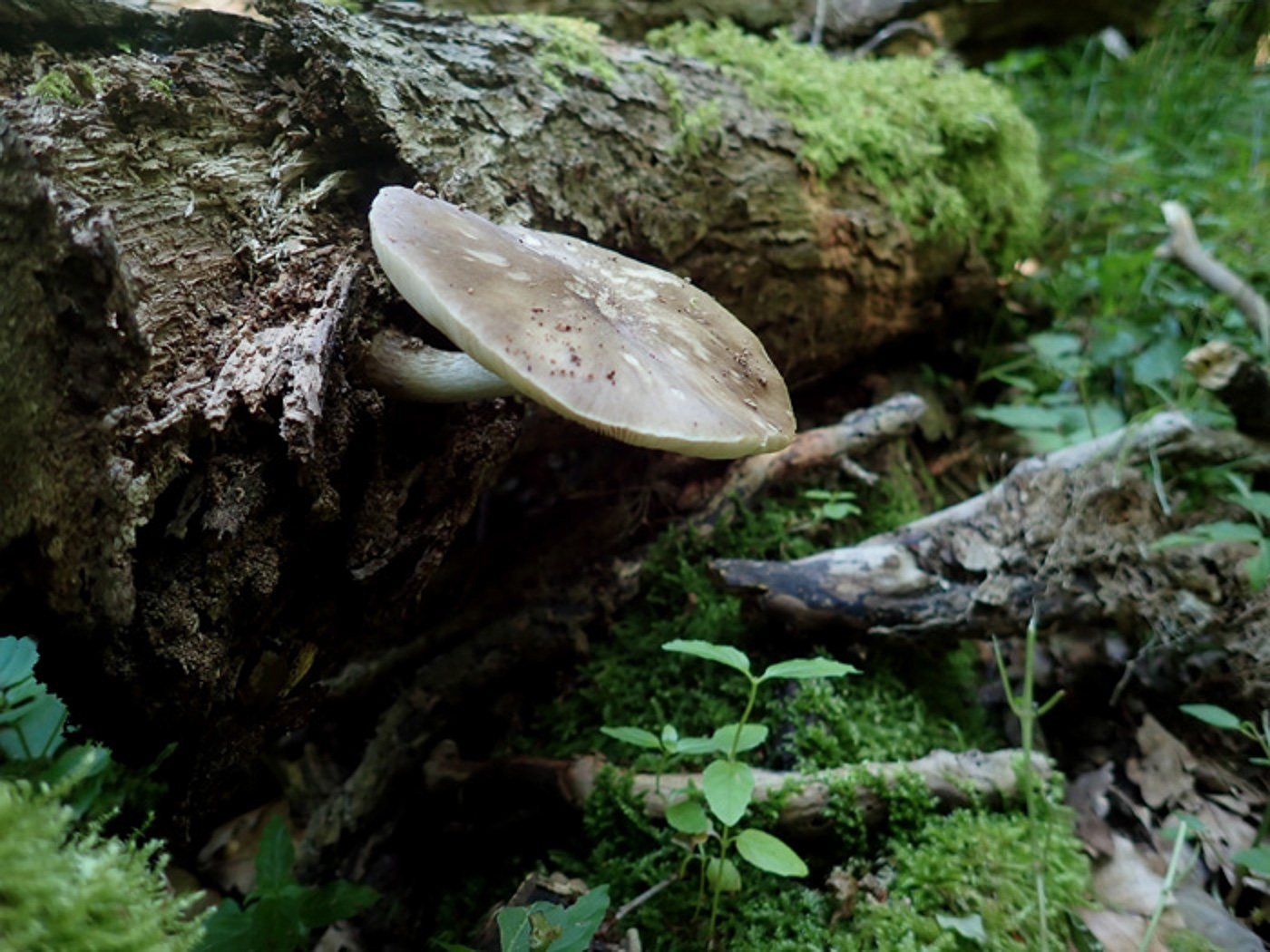
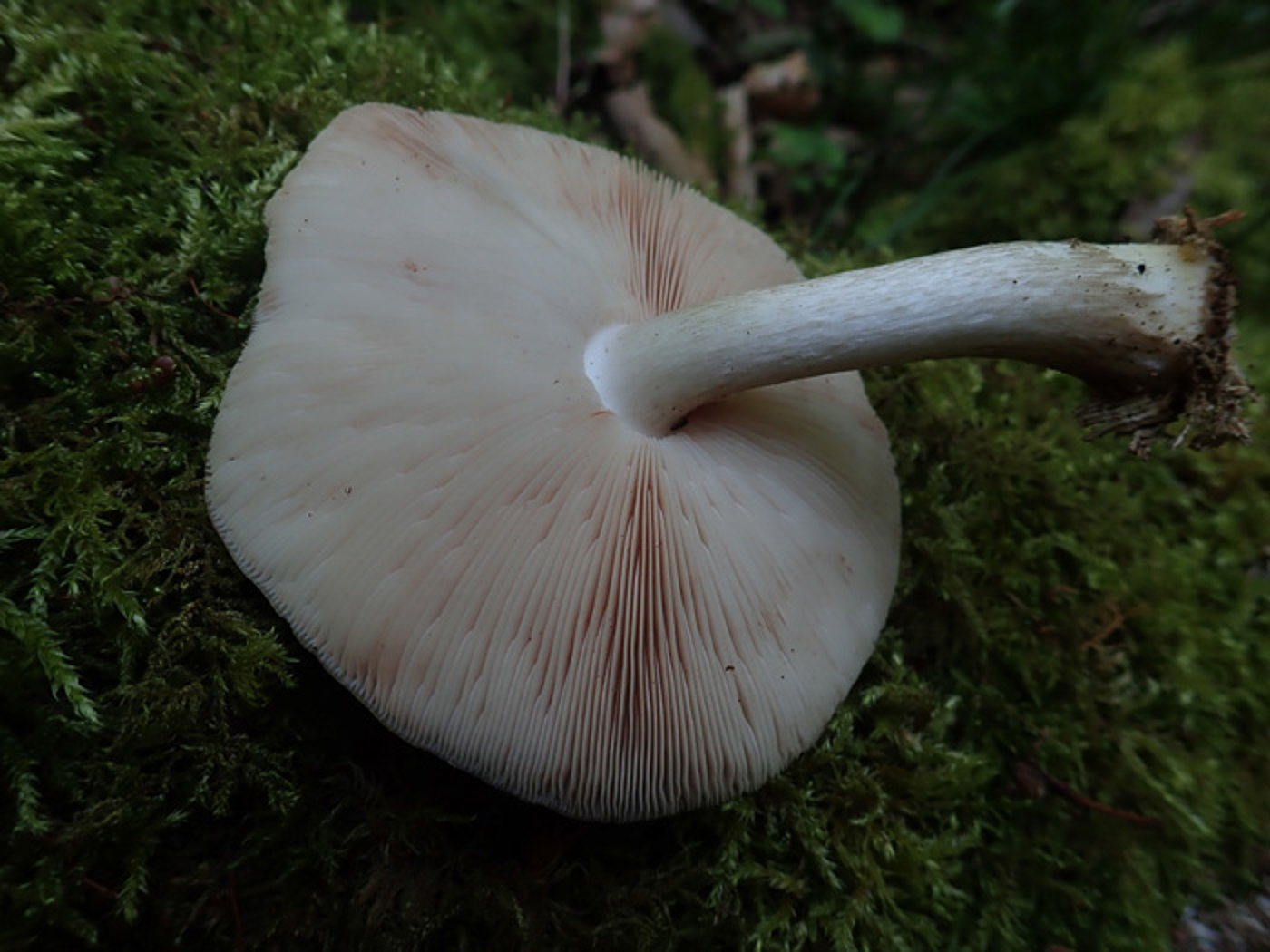 |
July 7th Pluteus cervinus (Deer Shield)
On an old Oak log at Burnham Beeches Penny noticed this singleton brown cap and at first thought it might be a Polypore till the crowded pink free gills underneath gave away its identity. A very common species on deciduous wood, the cap was a good size - about 6cm across - and any fresh mushrooms managing to fruit after this hot dry spell are nice to see at the moment. See the Masterlist for more examples.
|
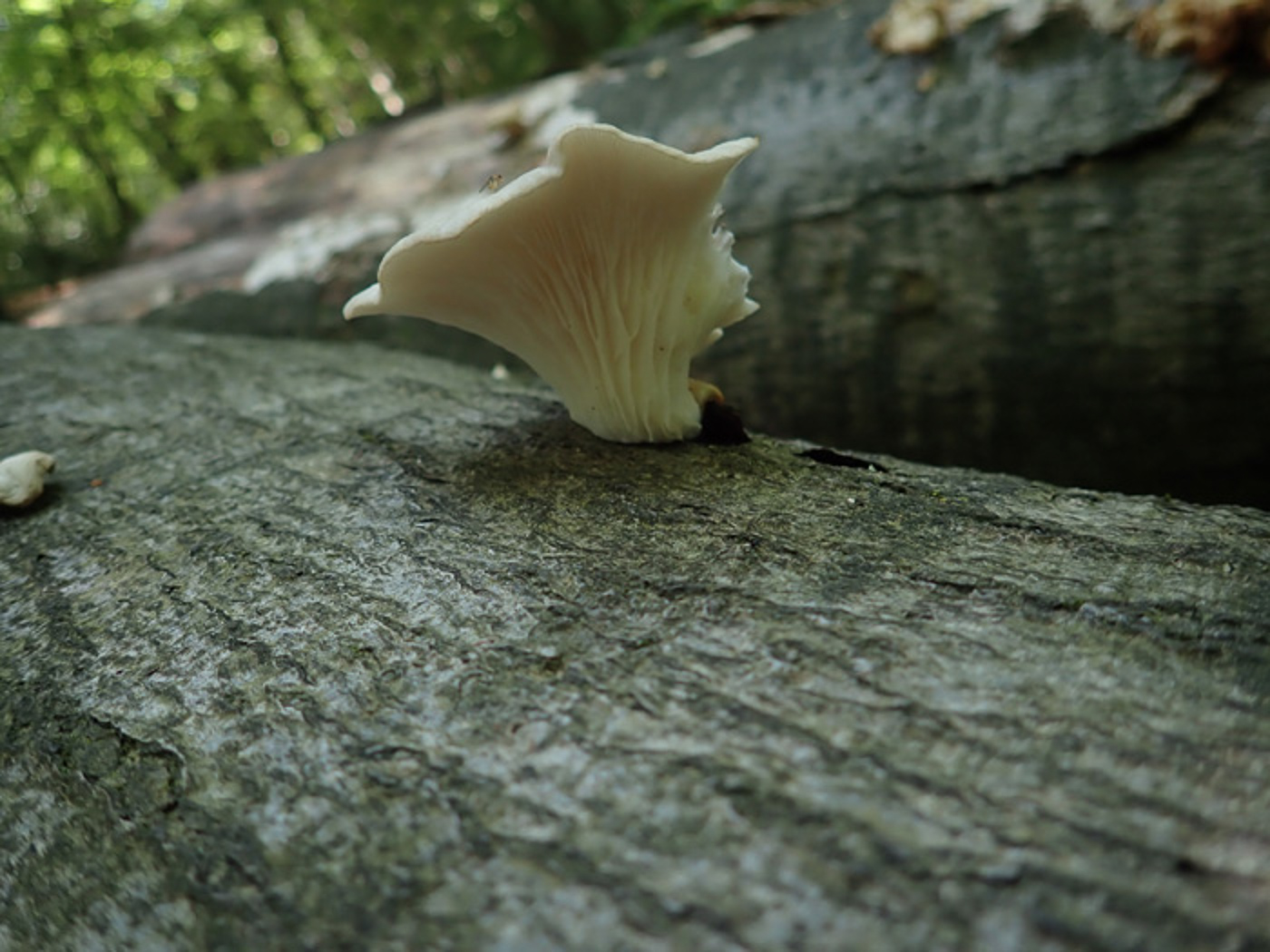
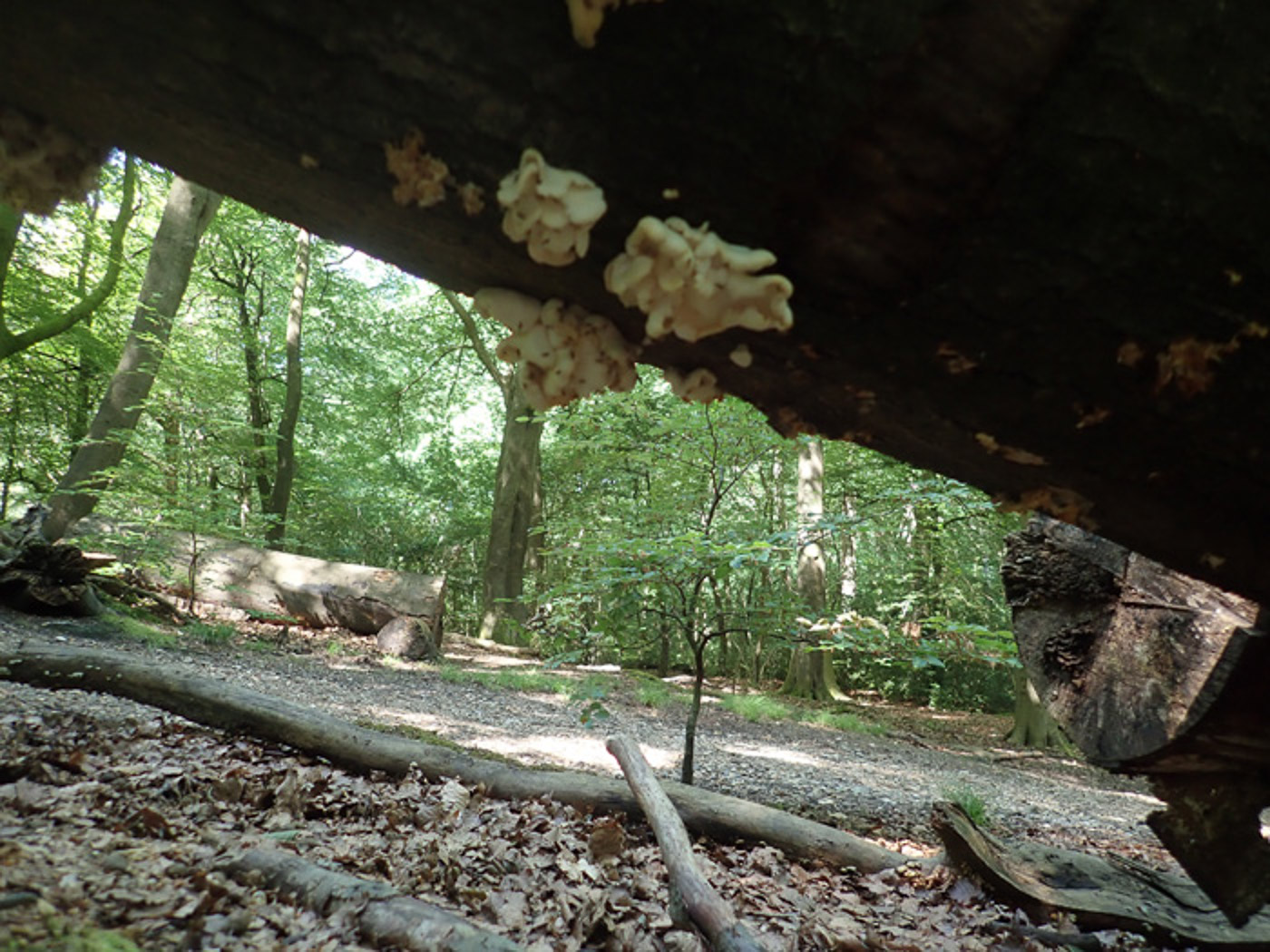
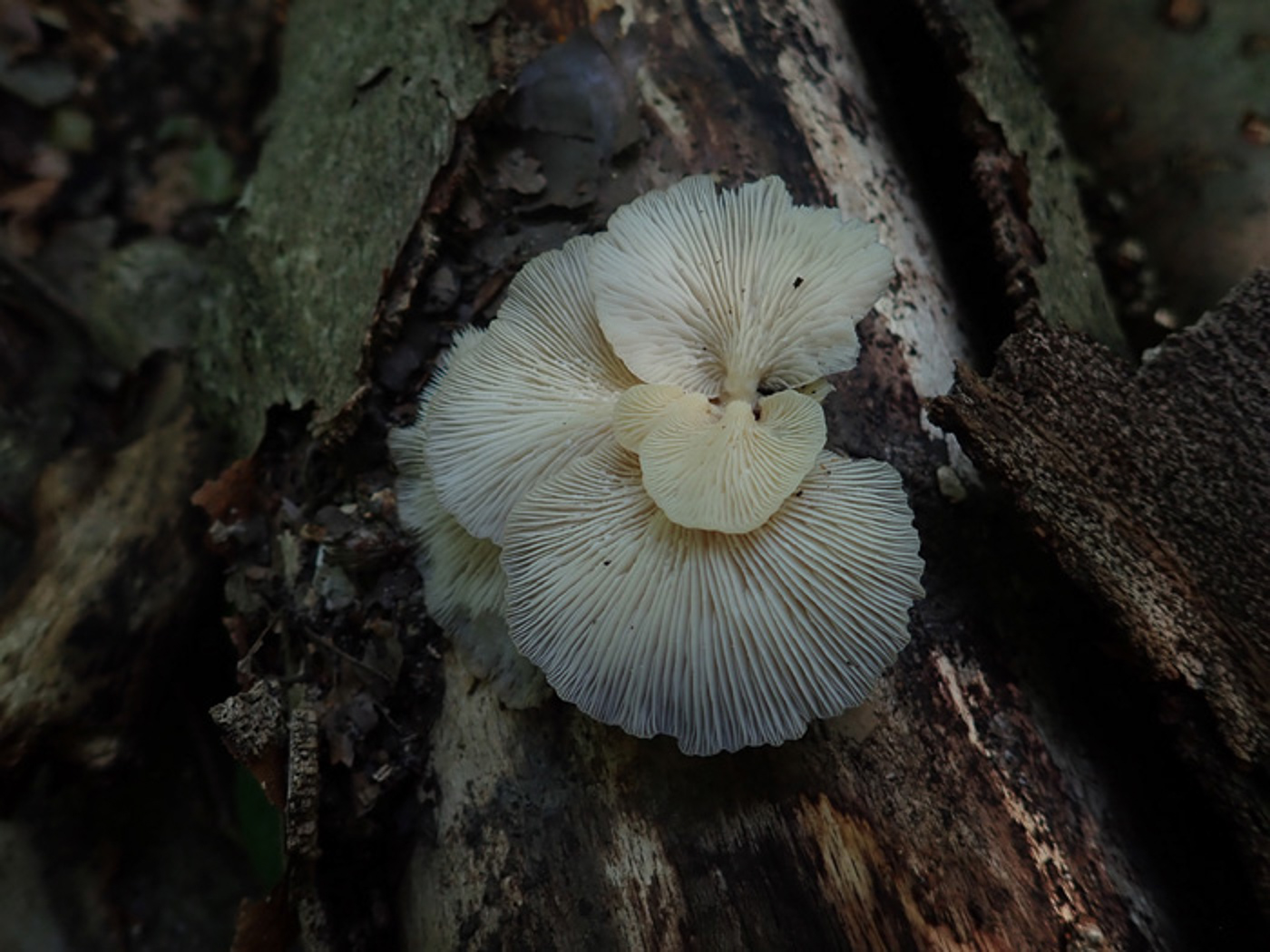 |
July 7th Pleurotus ostreatus (Oyster Mushroom)
At Burnham Beeches on a fallen Beech trunk which we often find covered in different species, Penny found it liberally spotted with patches of this common mushroom in various stages of development. See the Masterlist for plenty of other examples.
|
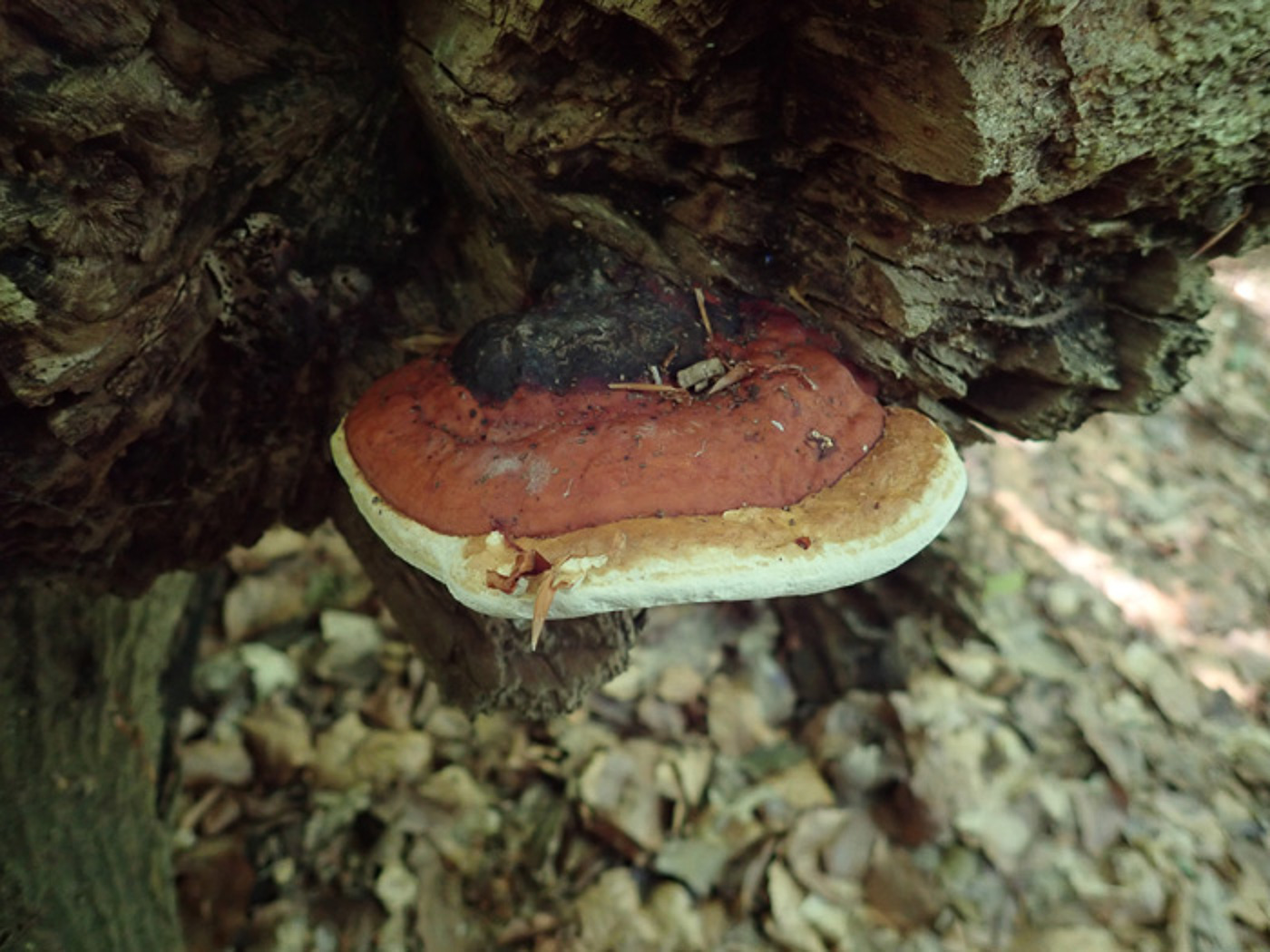
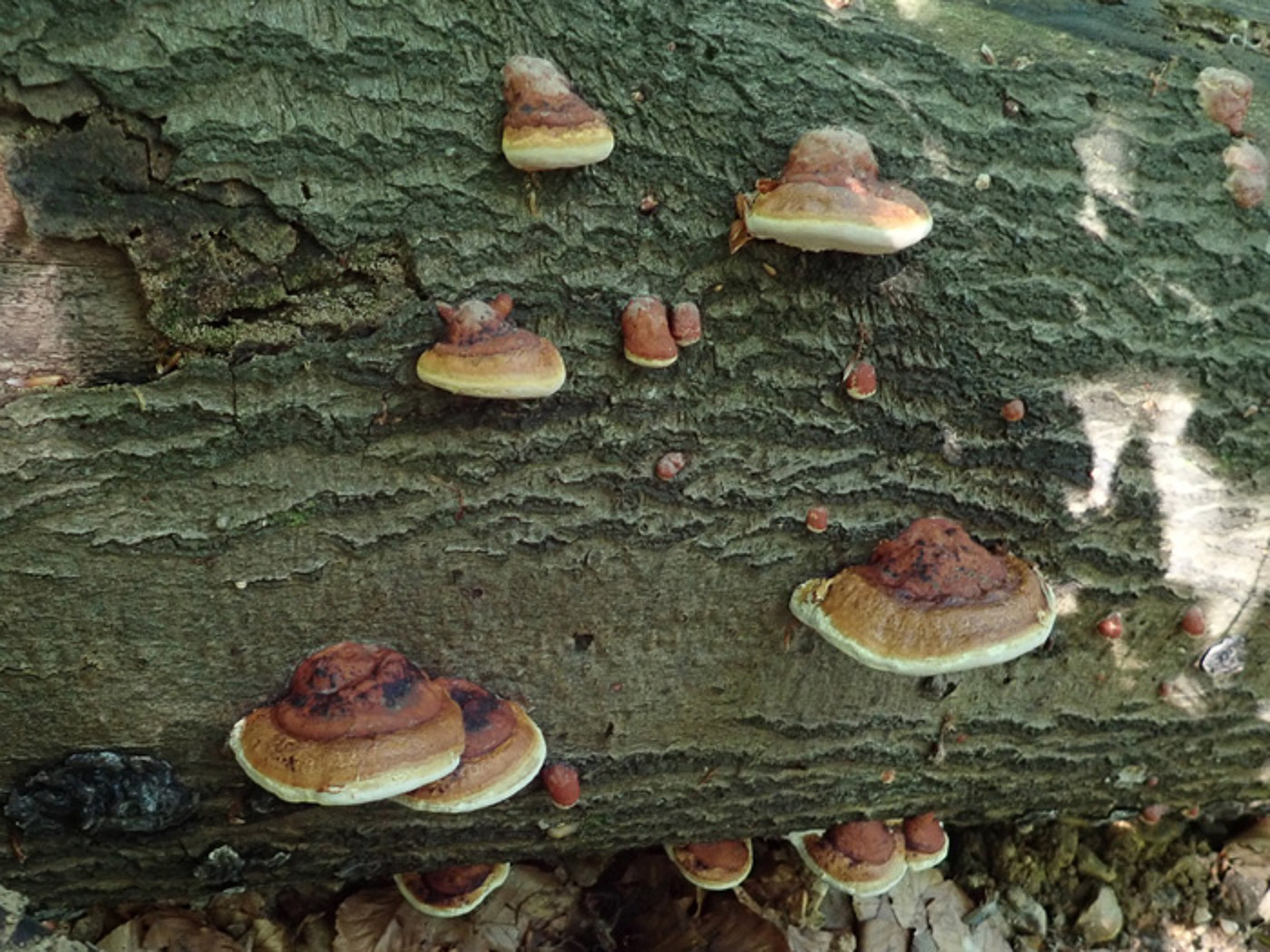
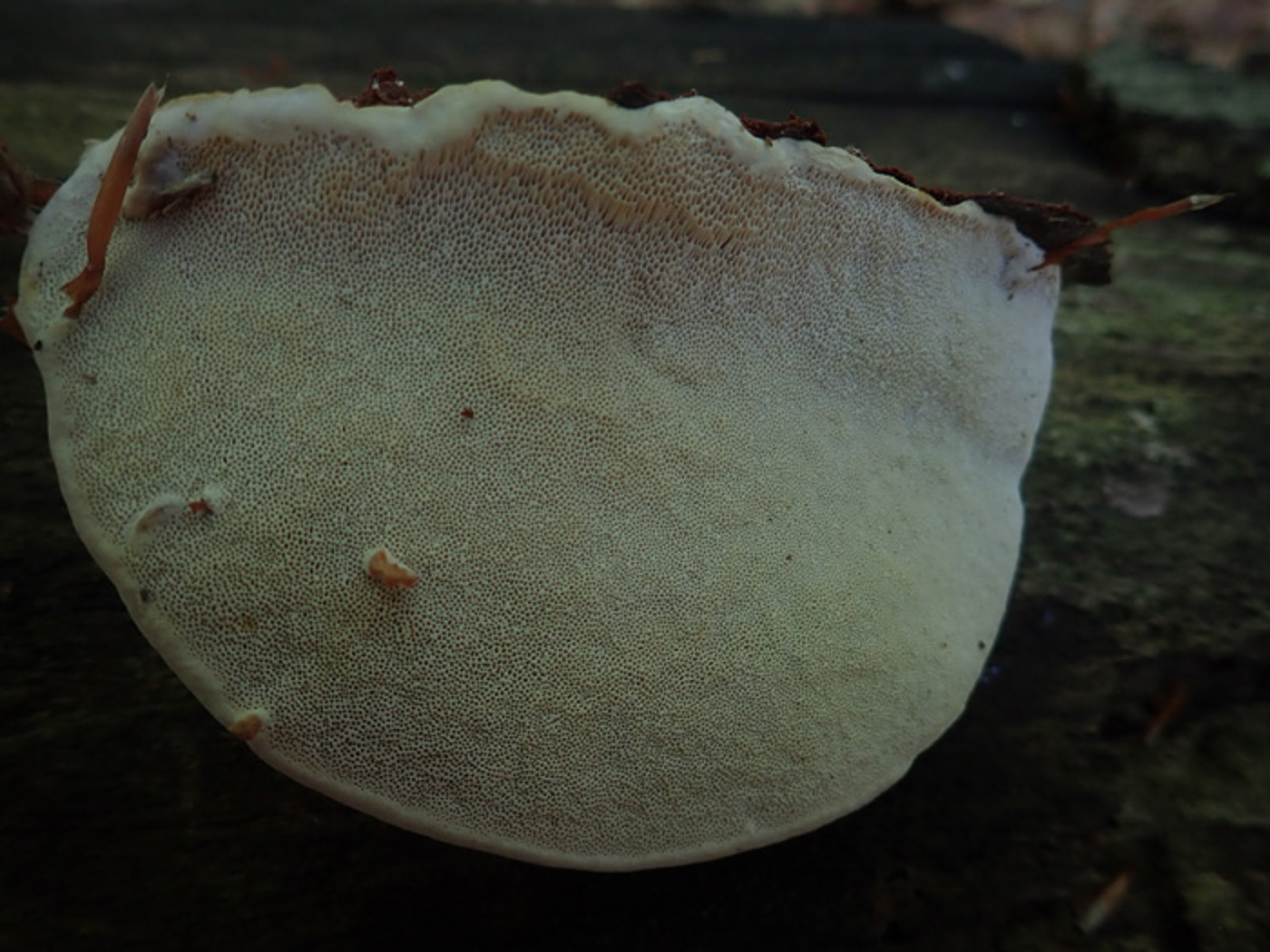 |
July 7th Fomitopsis pinicola (Red belted Bracket)
At Burnham Beeches Penny went to check the fallen Beech trunk where this now relatively common bracket was photographed for Finds last Autumn (see November 20th), and sure enough there were a good number of examples still in place and now much more mature. Despite its name it can occur on deciduous trees as well as Pine, especially Birch and Beech.
|
![]() have been fully examined in order to make a determination. No guarantee can therefore be given on any identifications which don't show this symbol though all photos are checked and selected by Penny to the best of her ability. Basic accompanying notes are also Penny's. When a species has already been covered on a previous Members' Finds page a reference to that entry will be given rather than duplicating the identification tips.
have been fully examined in order to make a determination. No guarantee can therefore be given on any identifications which don't show this symbol though all photos are checked and selected by Penny to the best of her ability. Basic accompanying notes are also Penny's. When a species has already been covered on a previous Members' Finds page a reference to that entry will be given rather than duplicating the identification tips.
















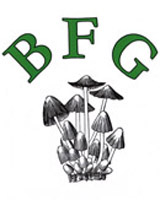
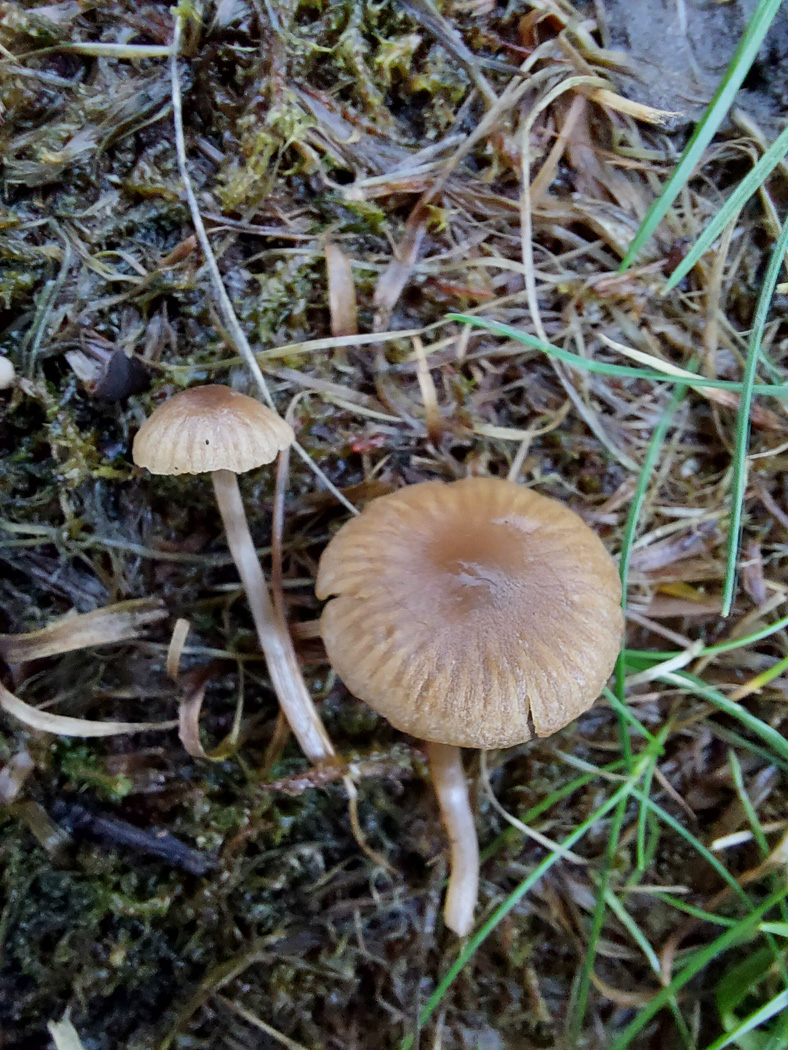
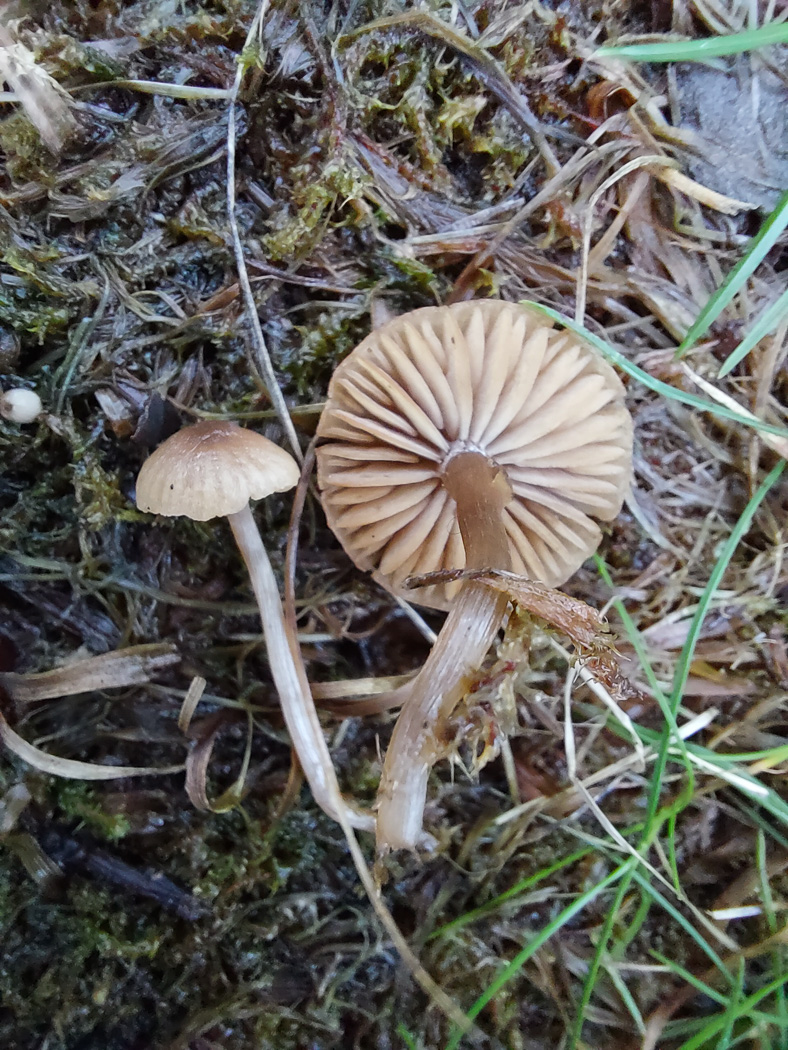
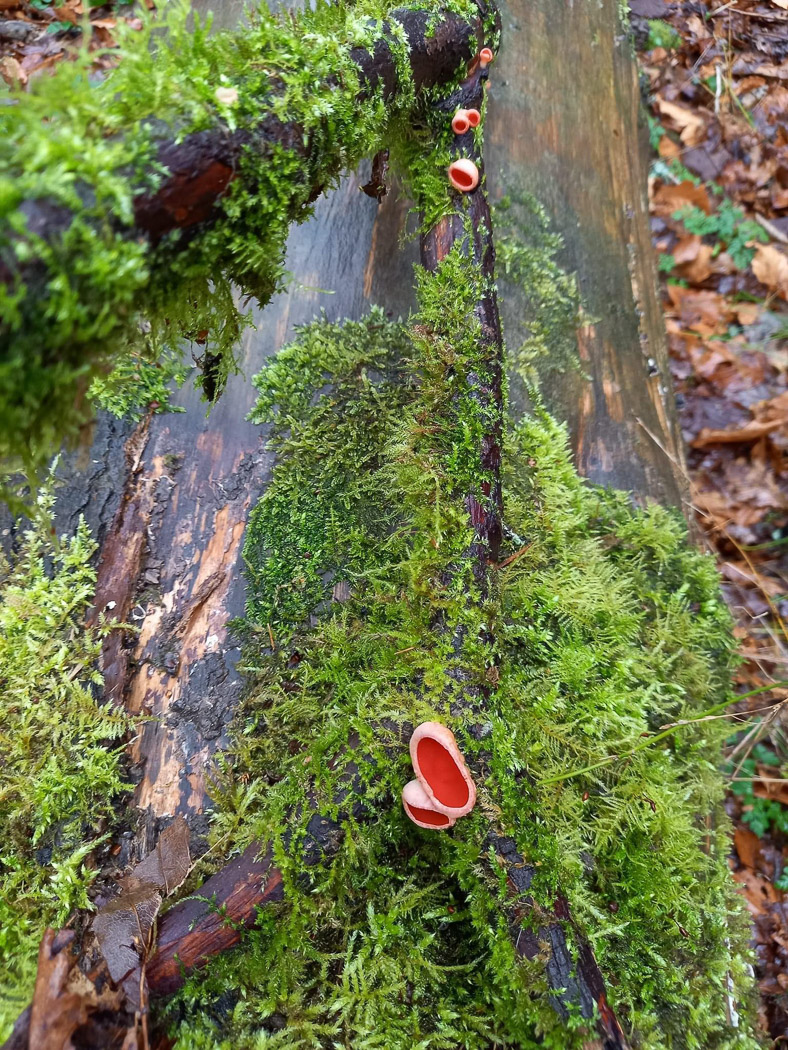
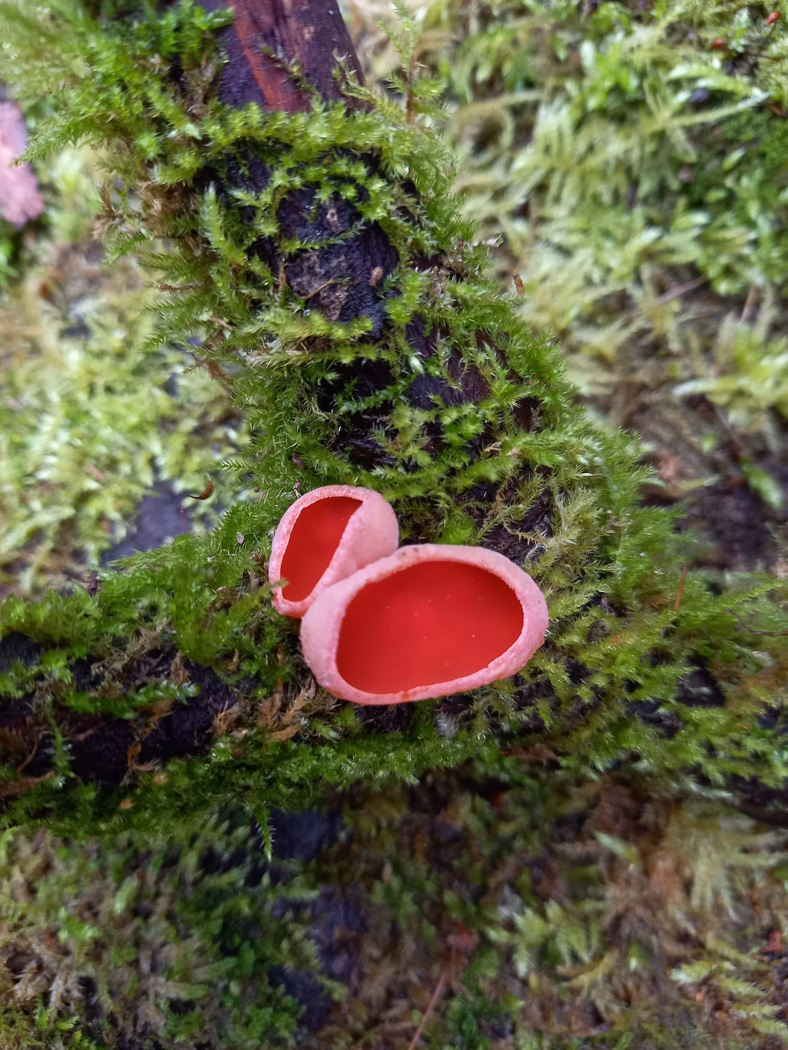
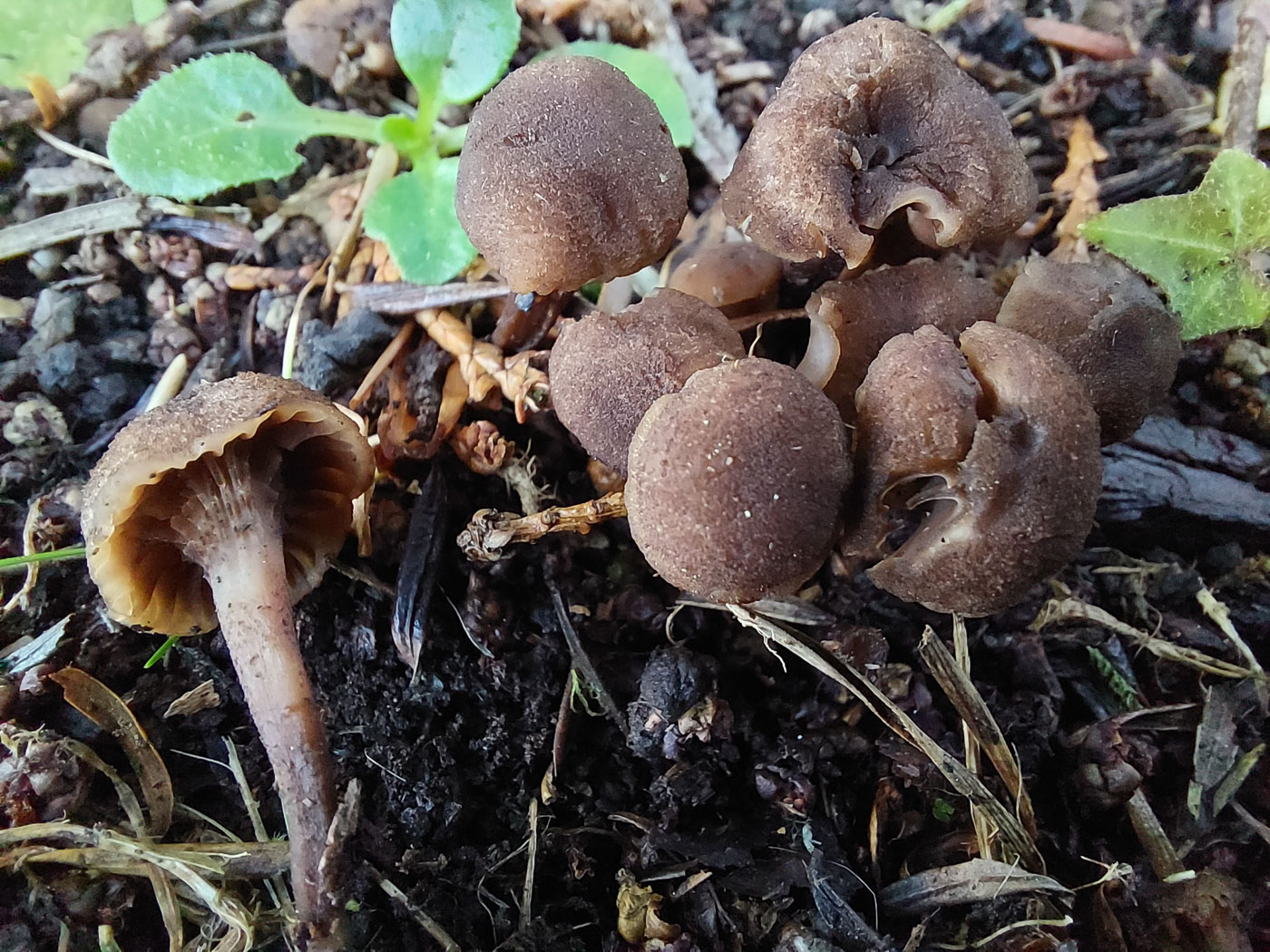
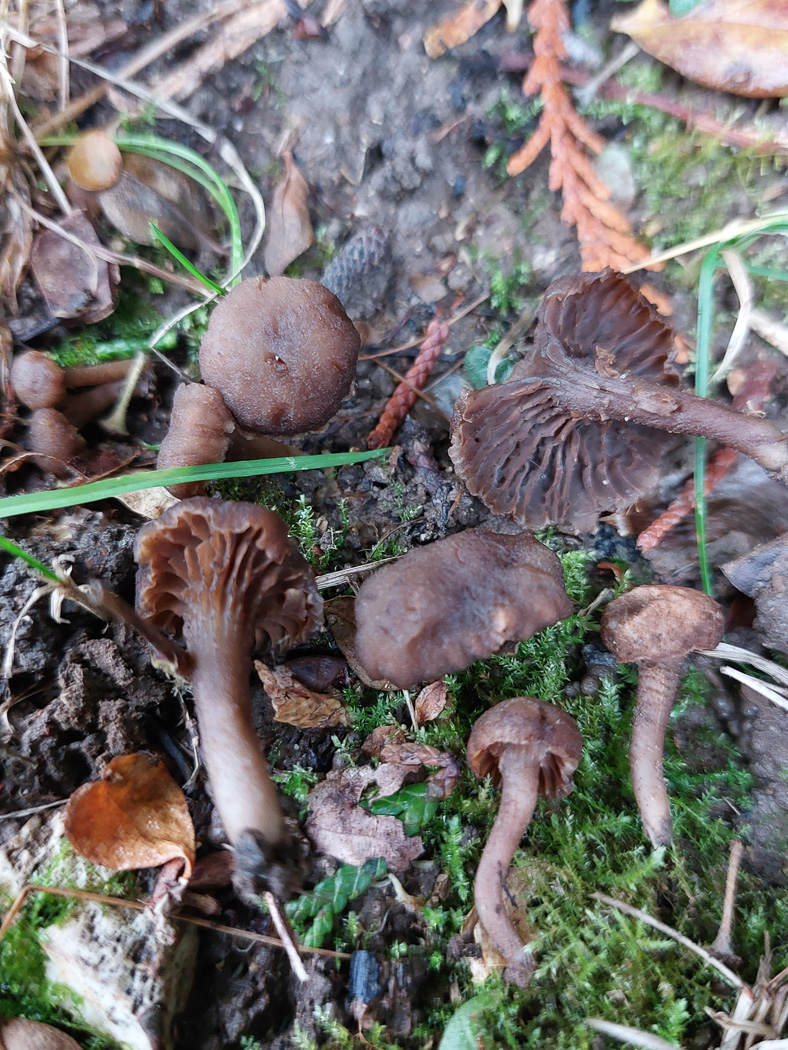
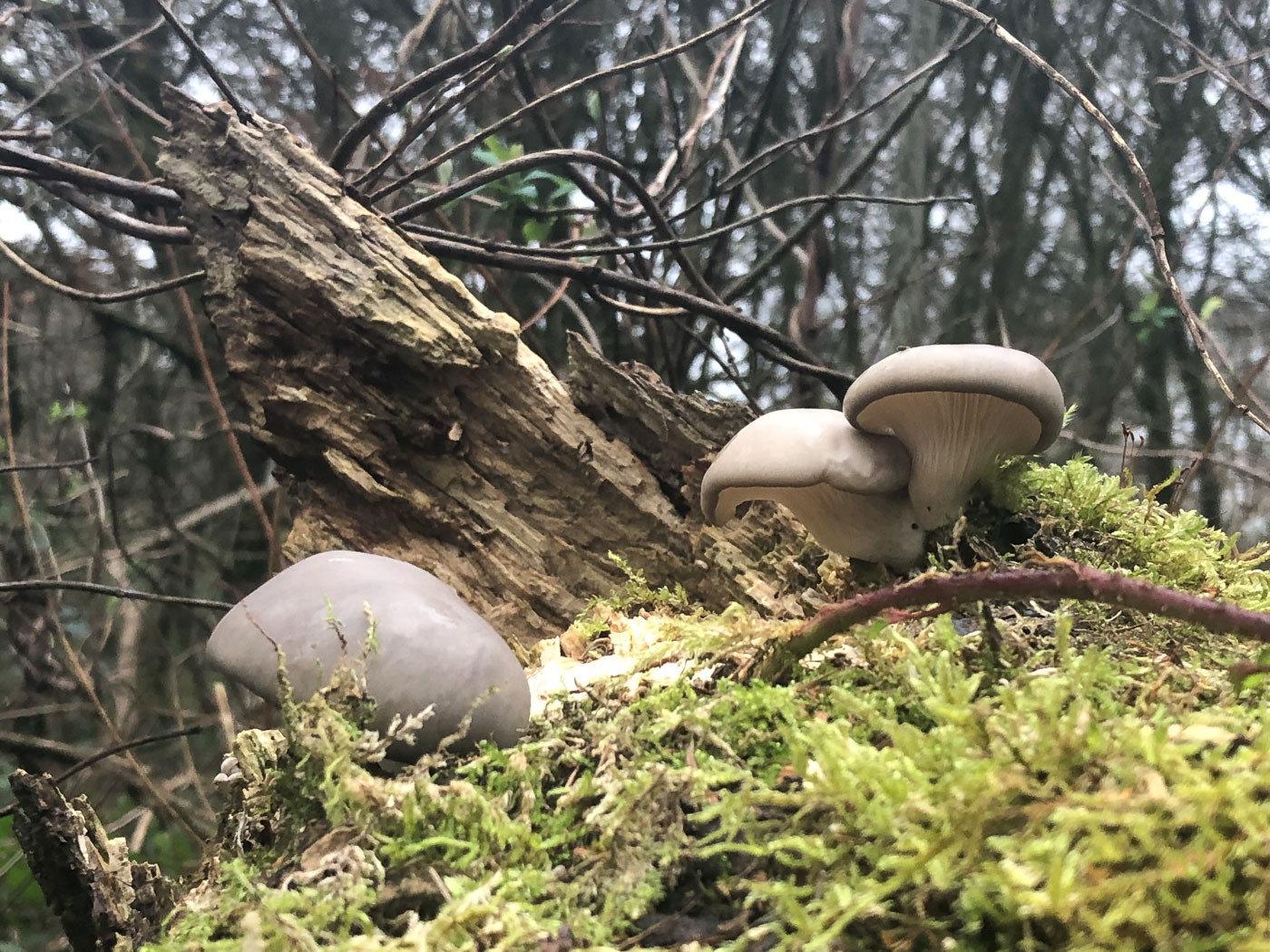
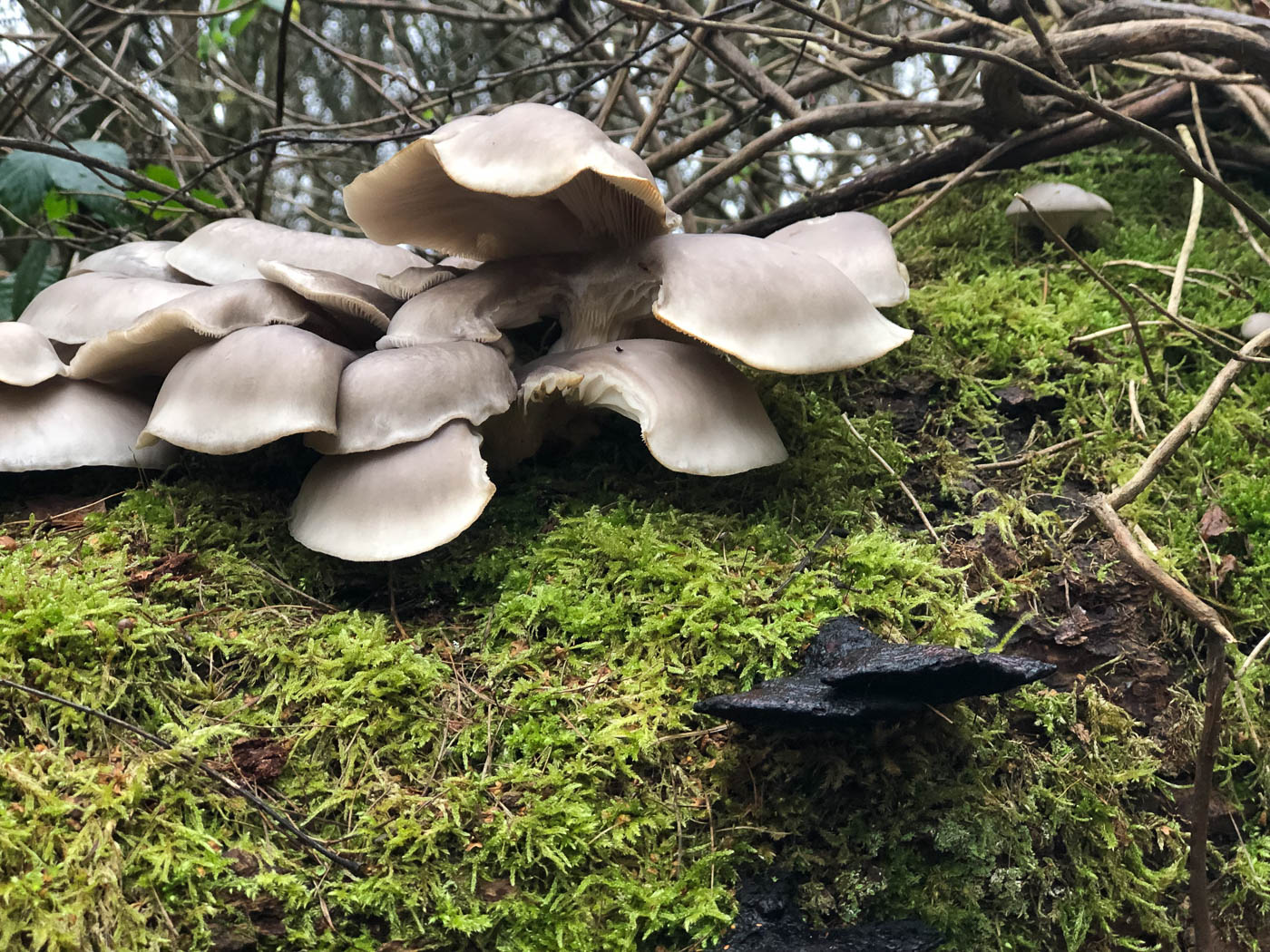
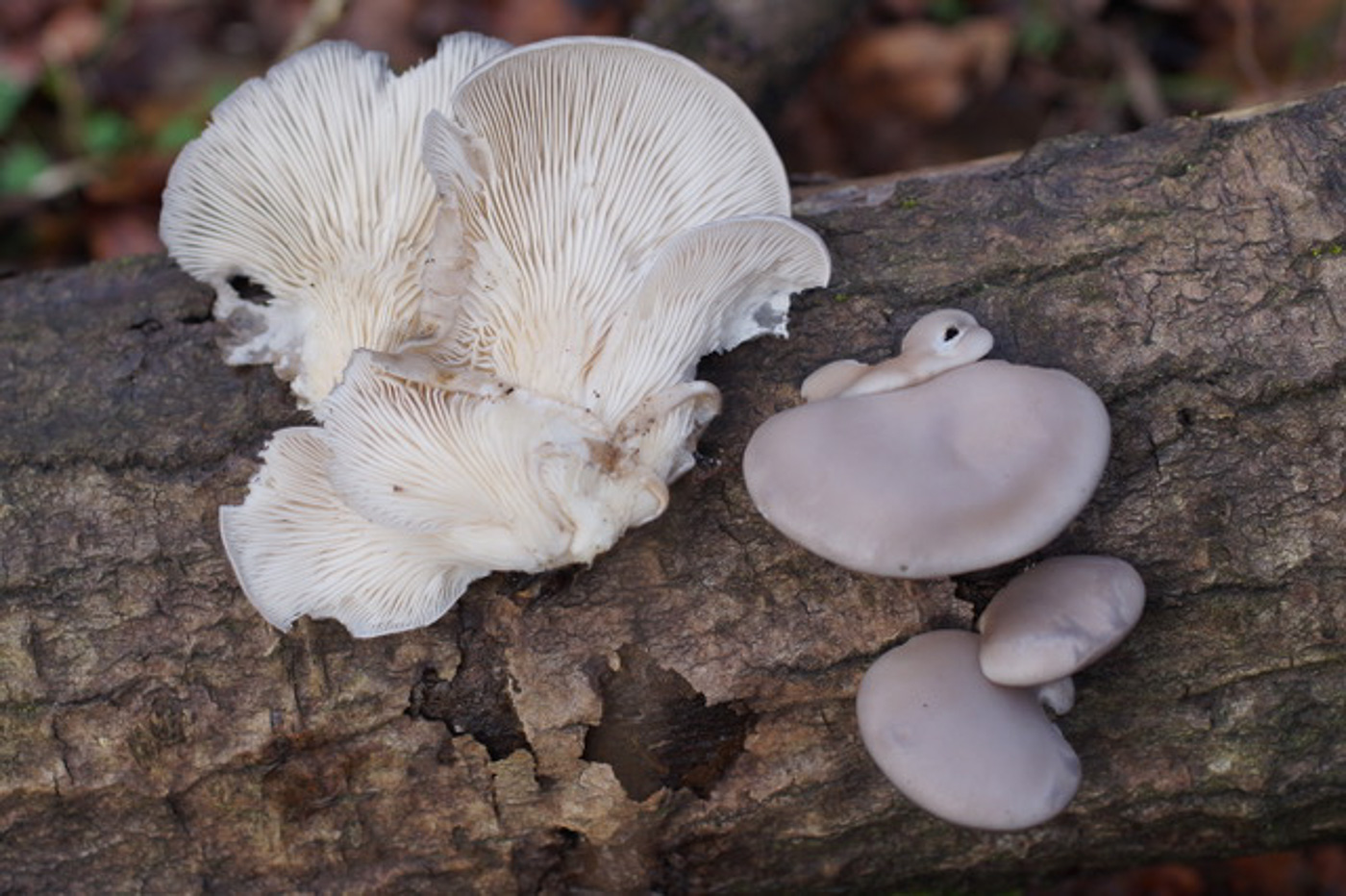
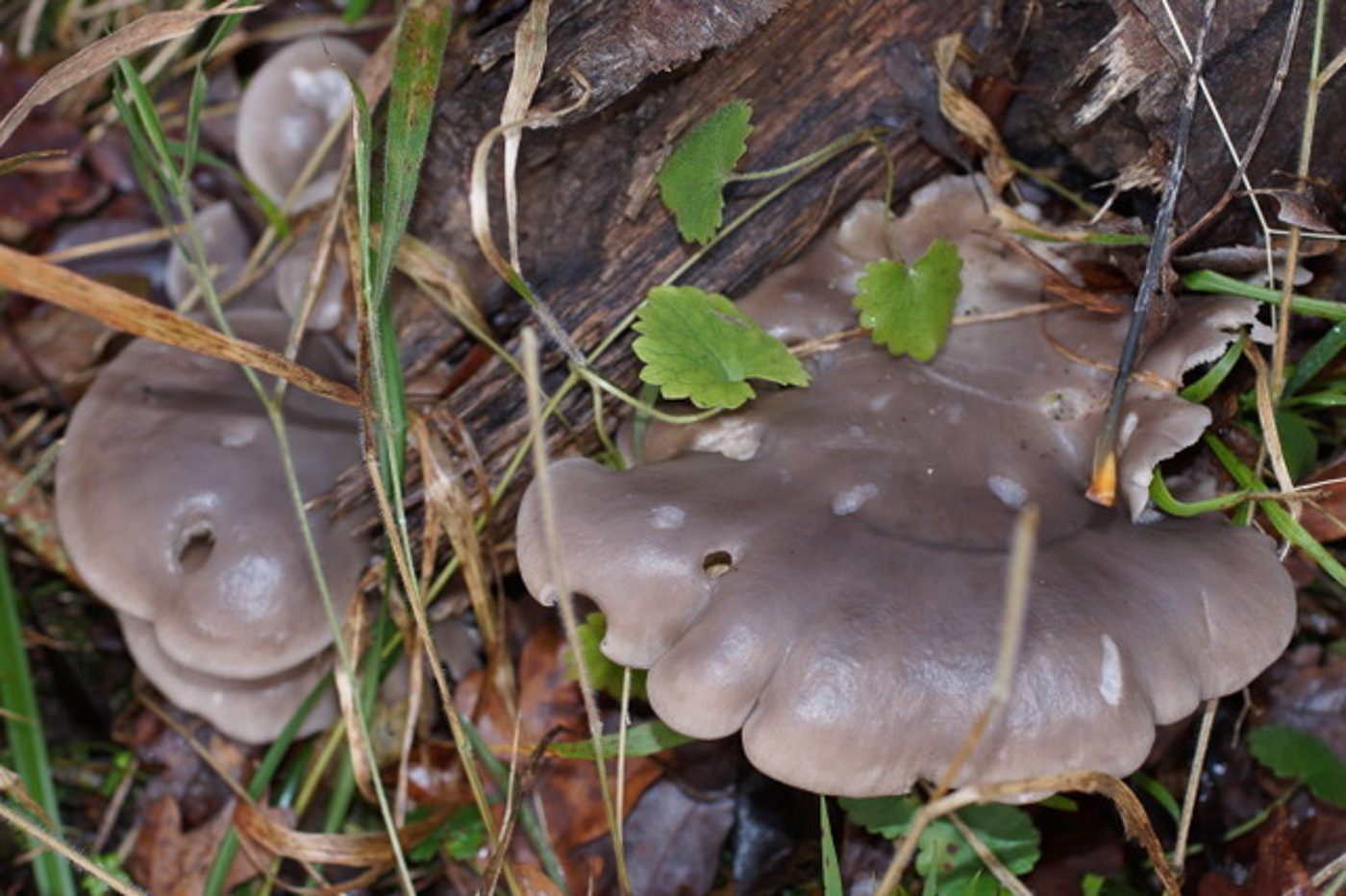
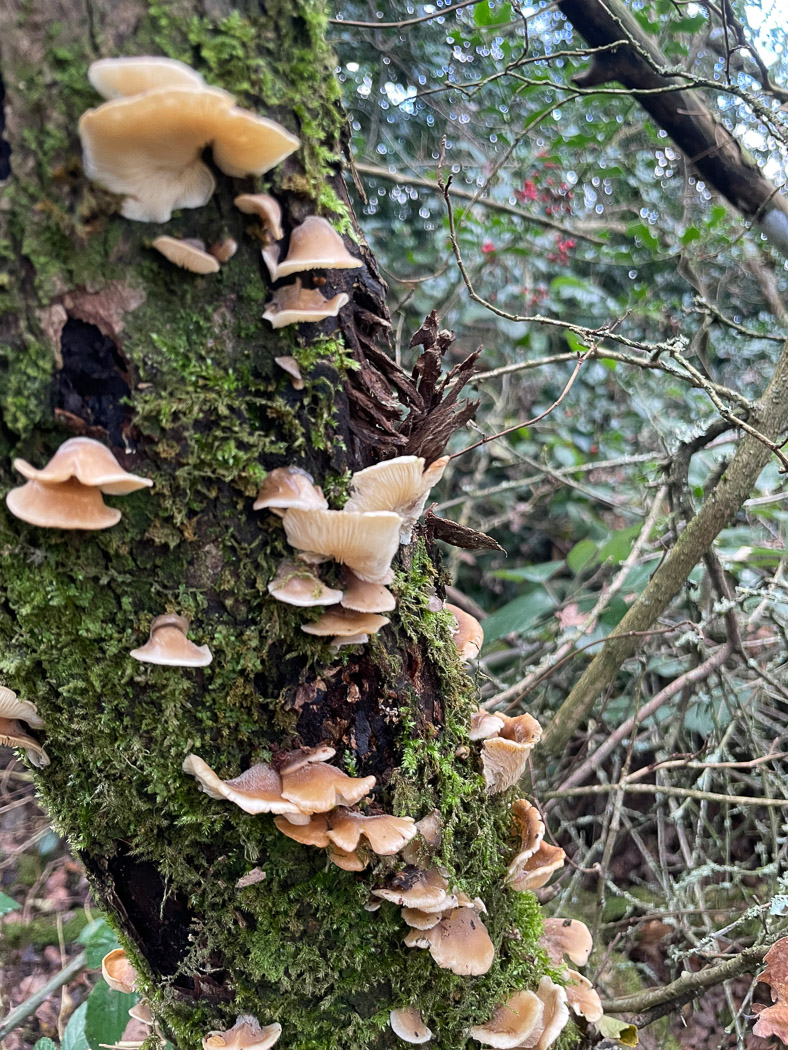

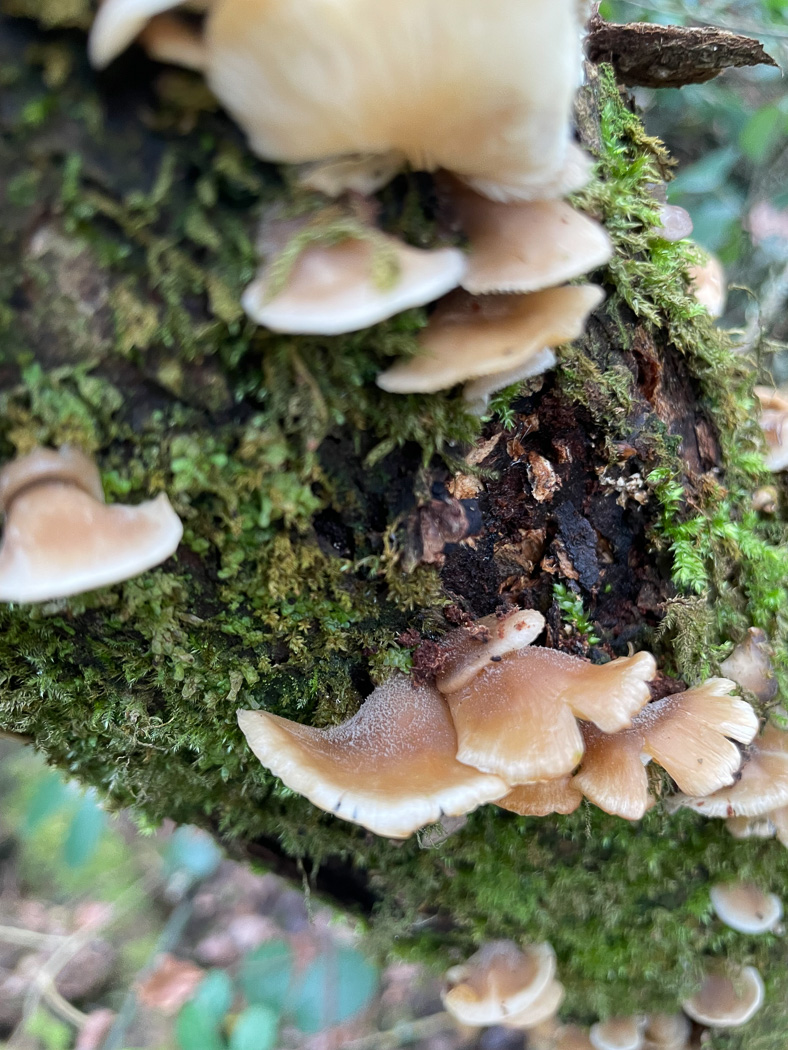
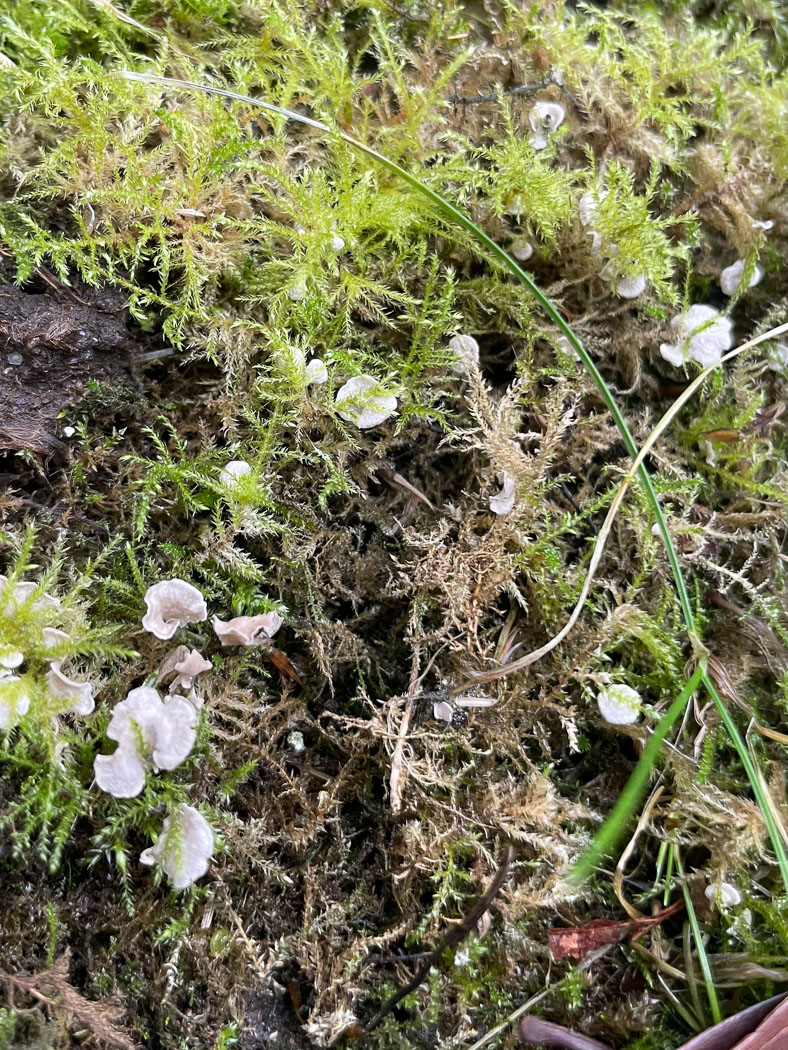
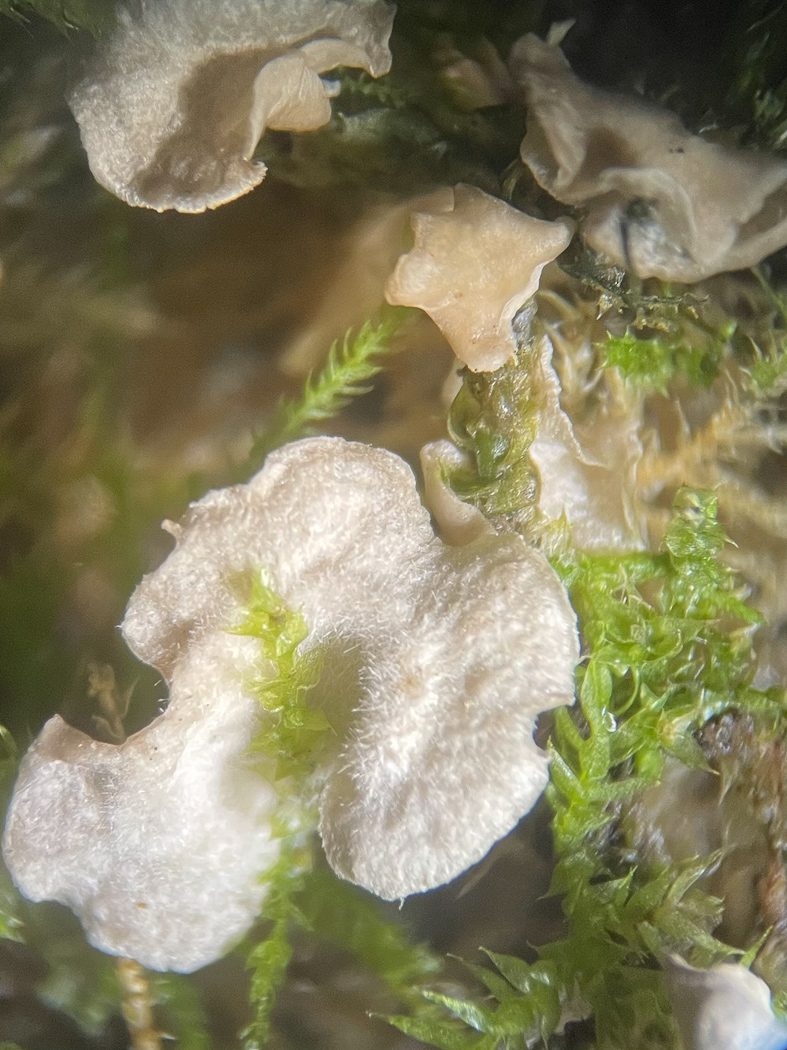
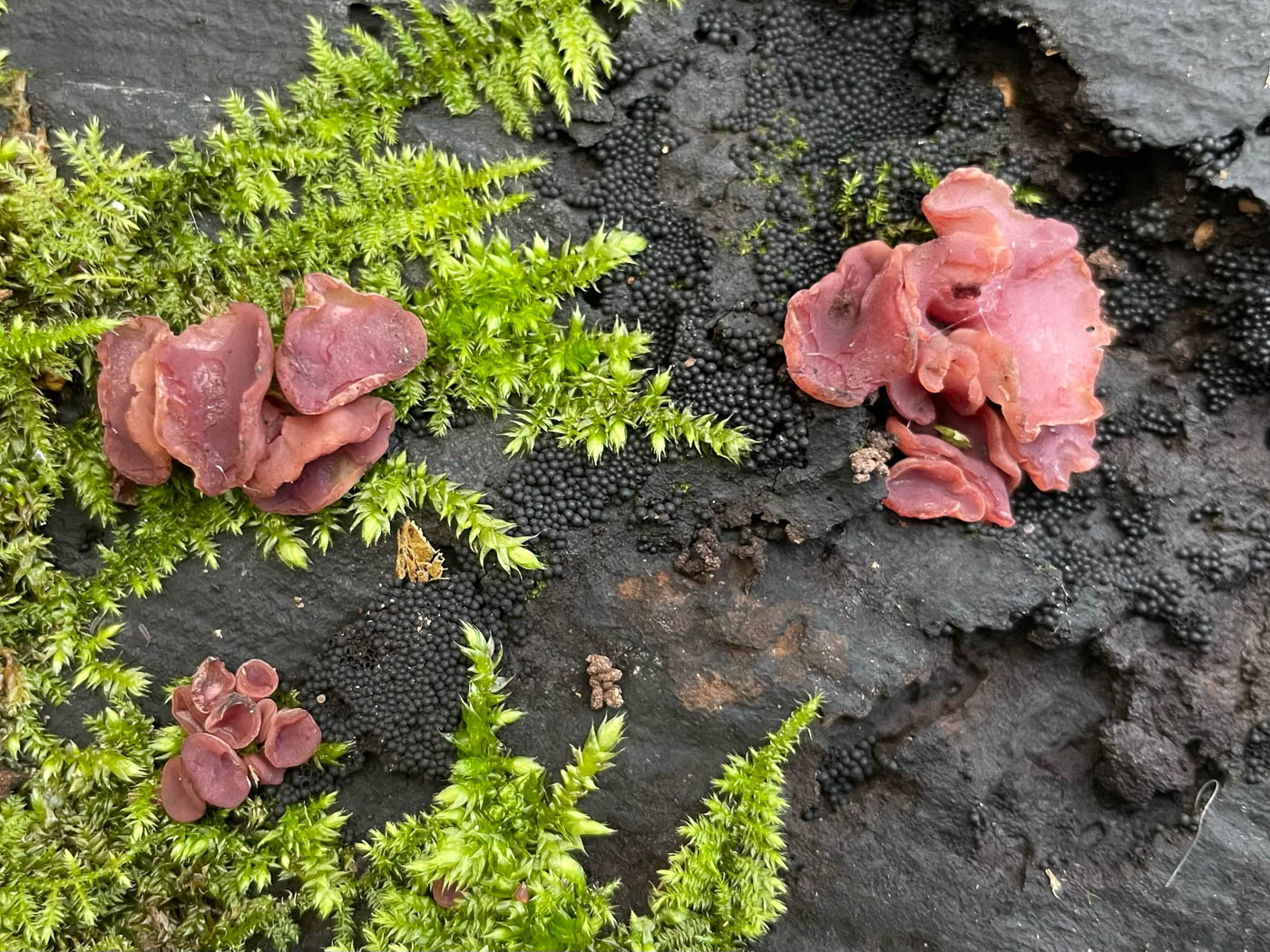
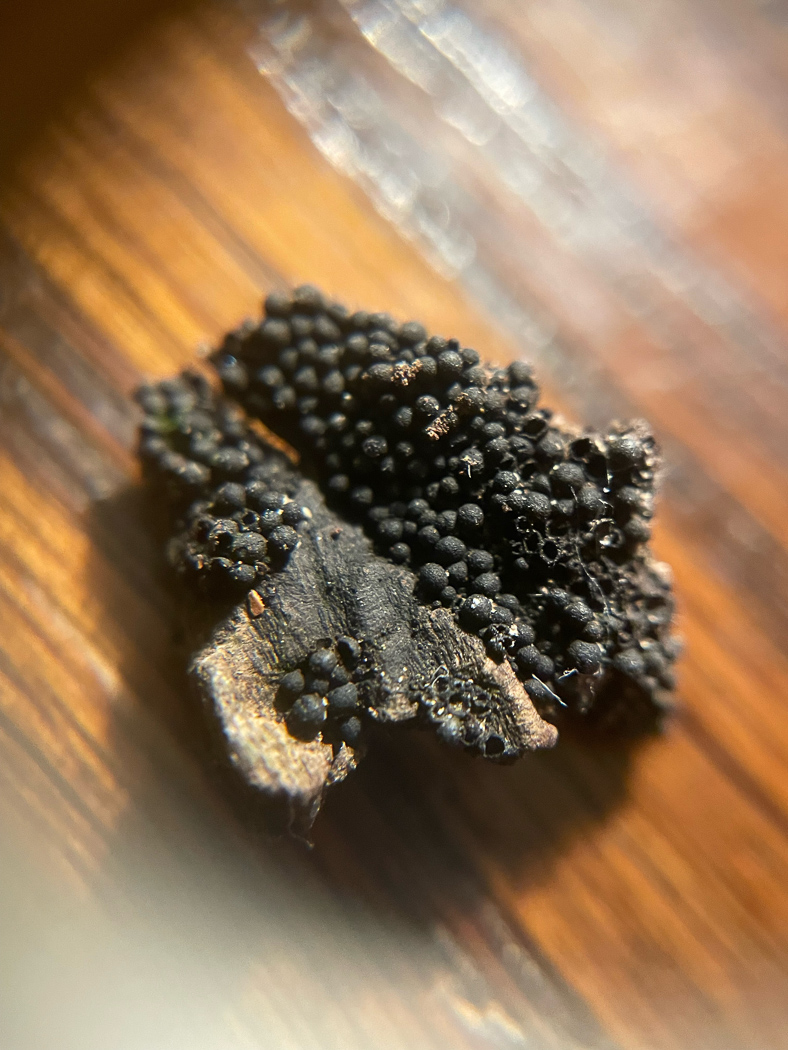
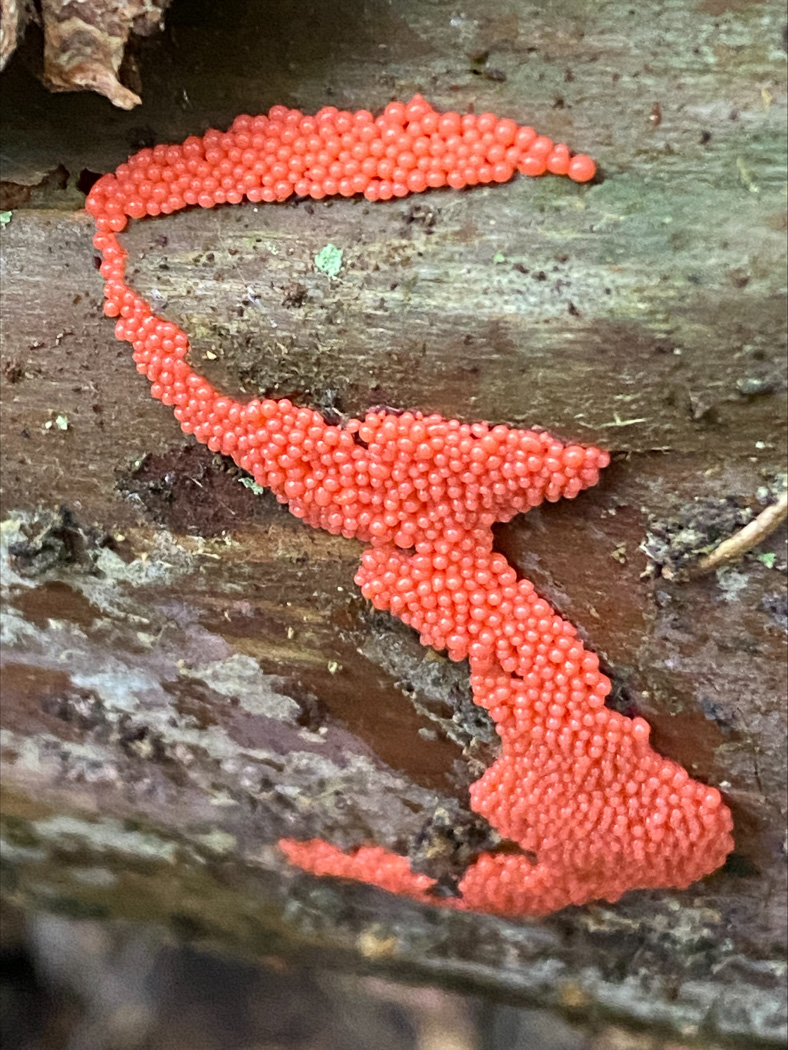
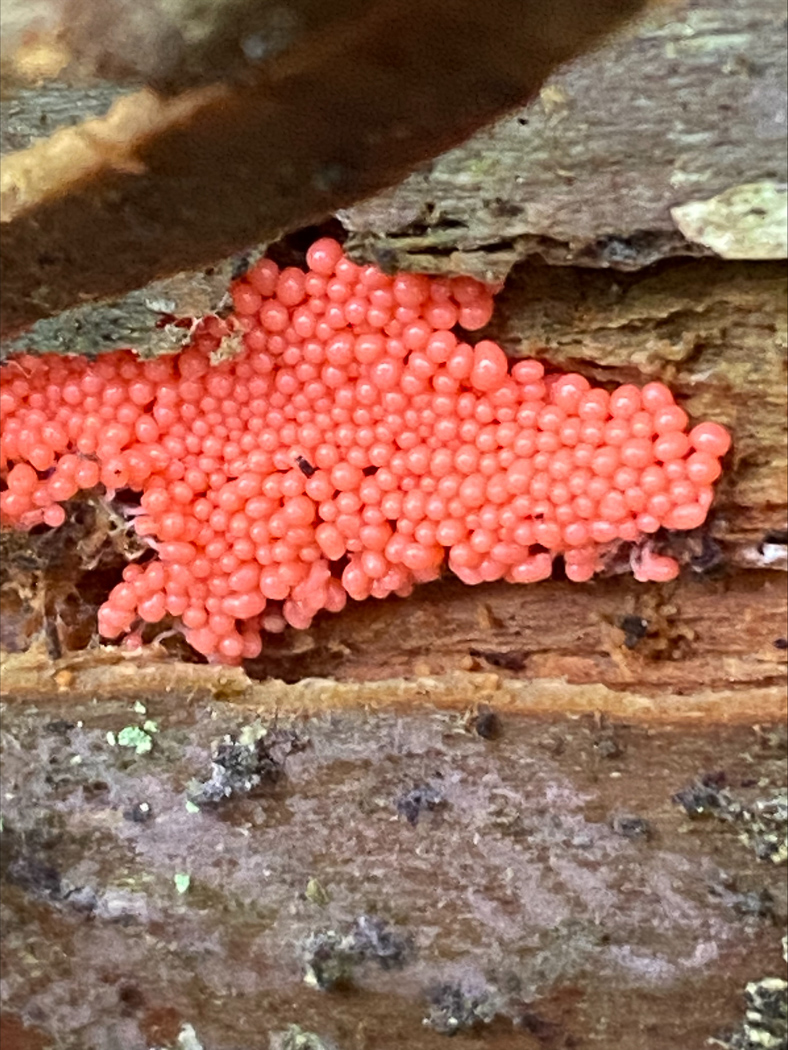
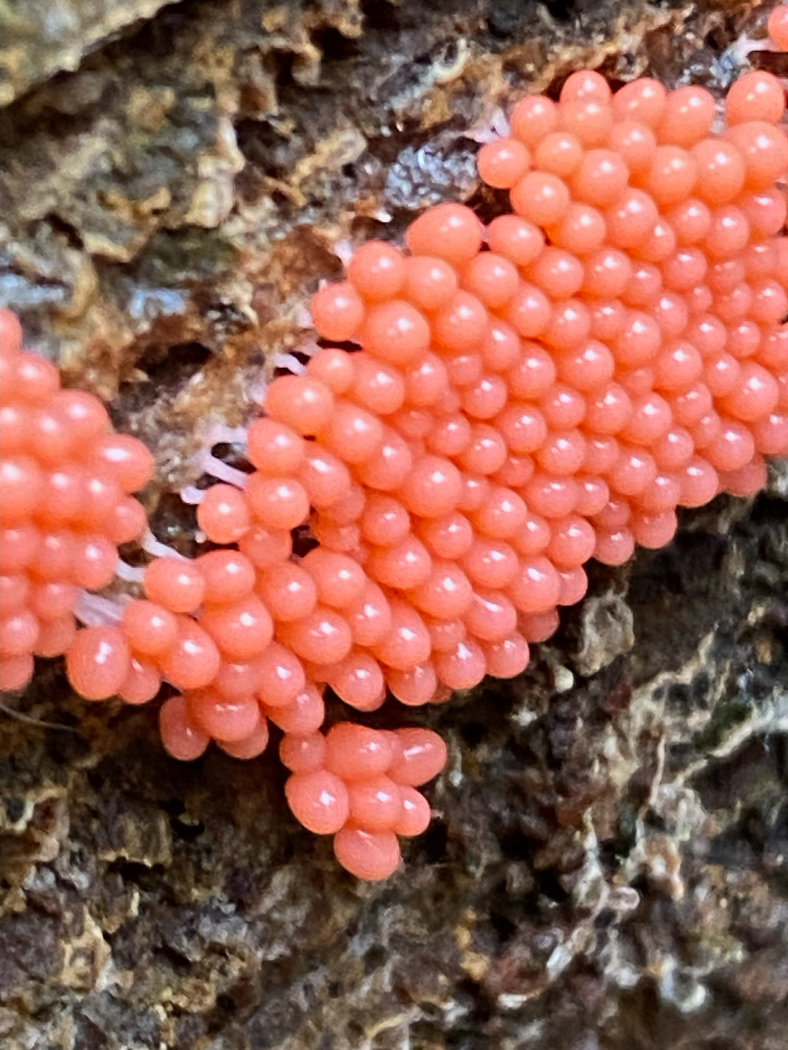
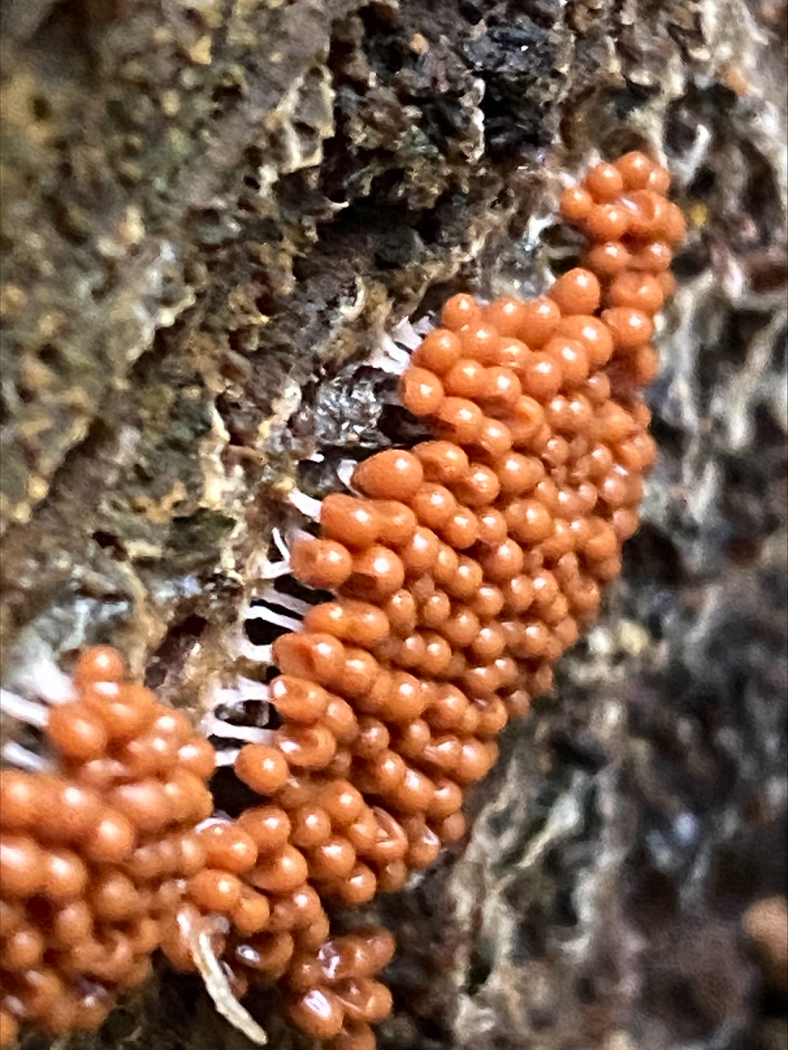
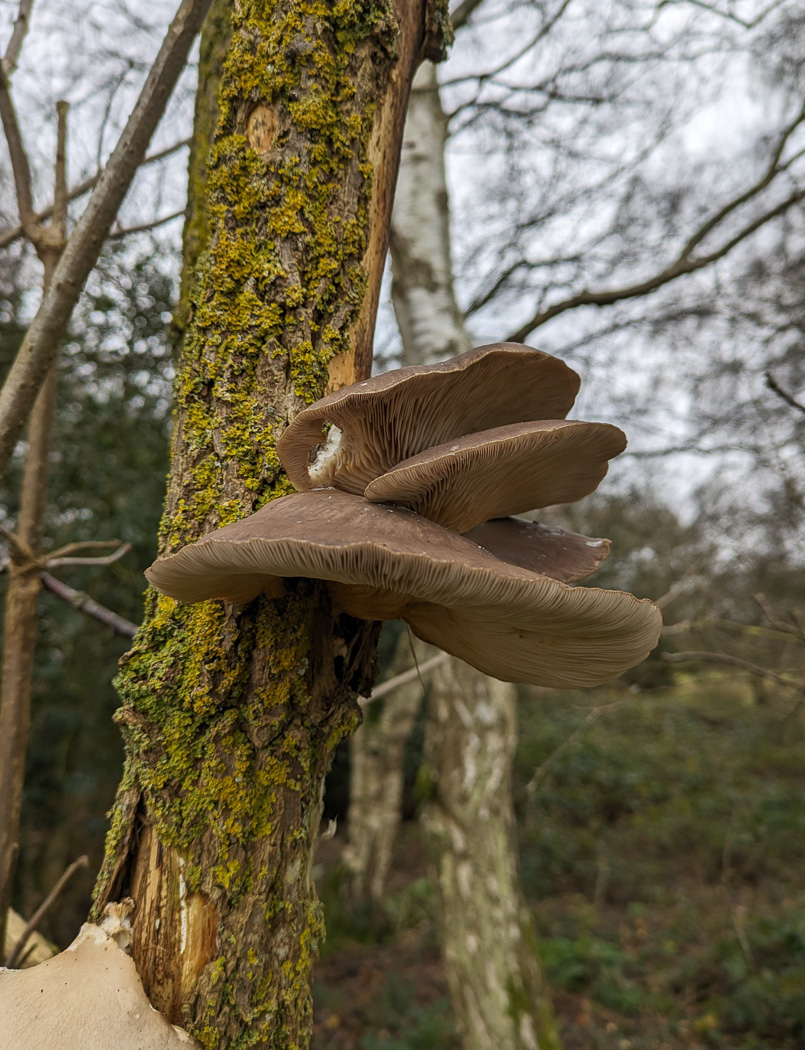
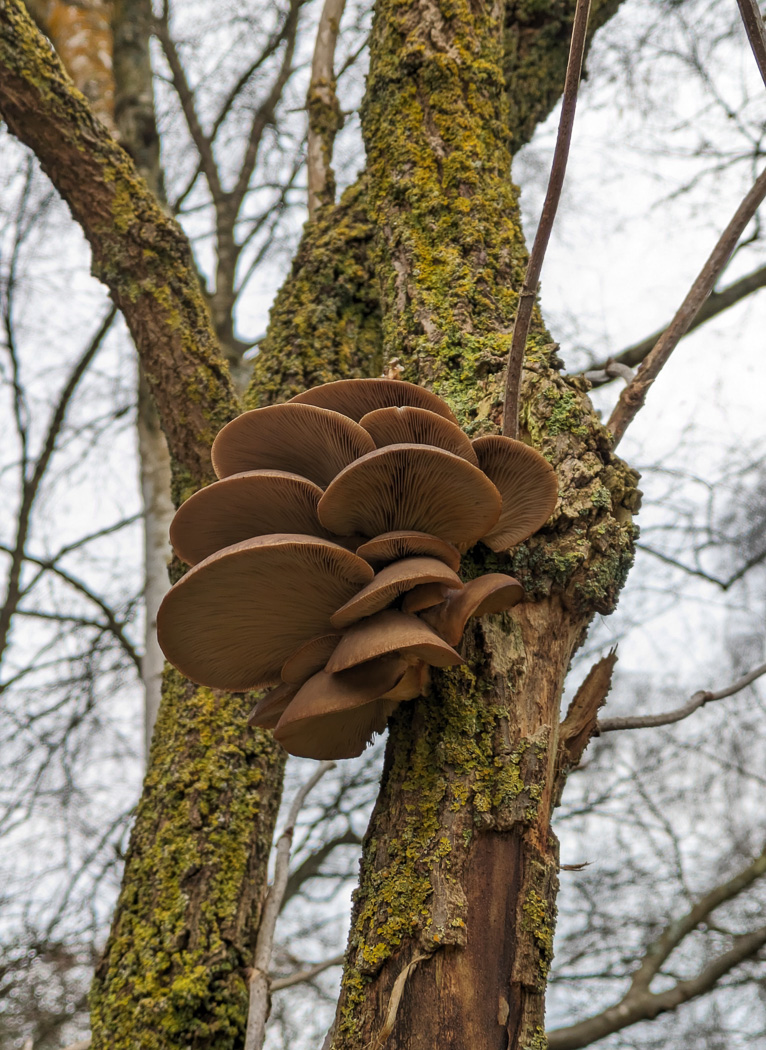











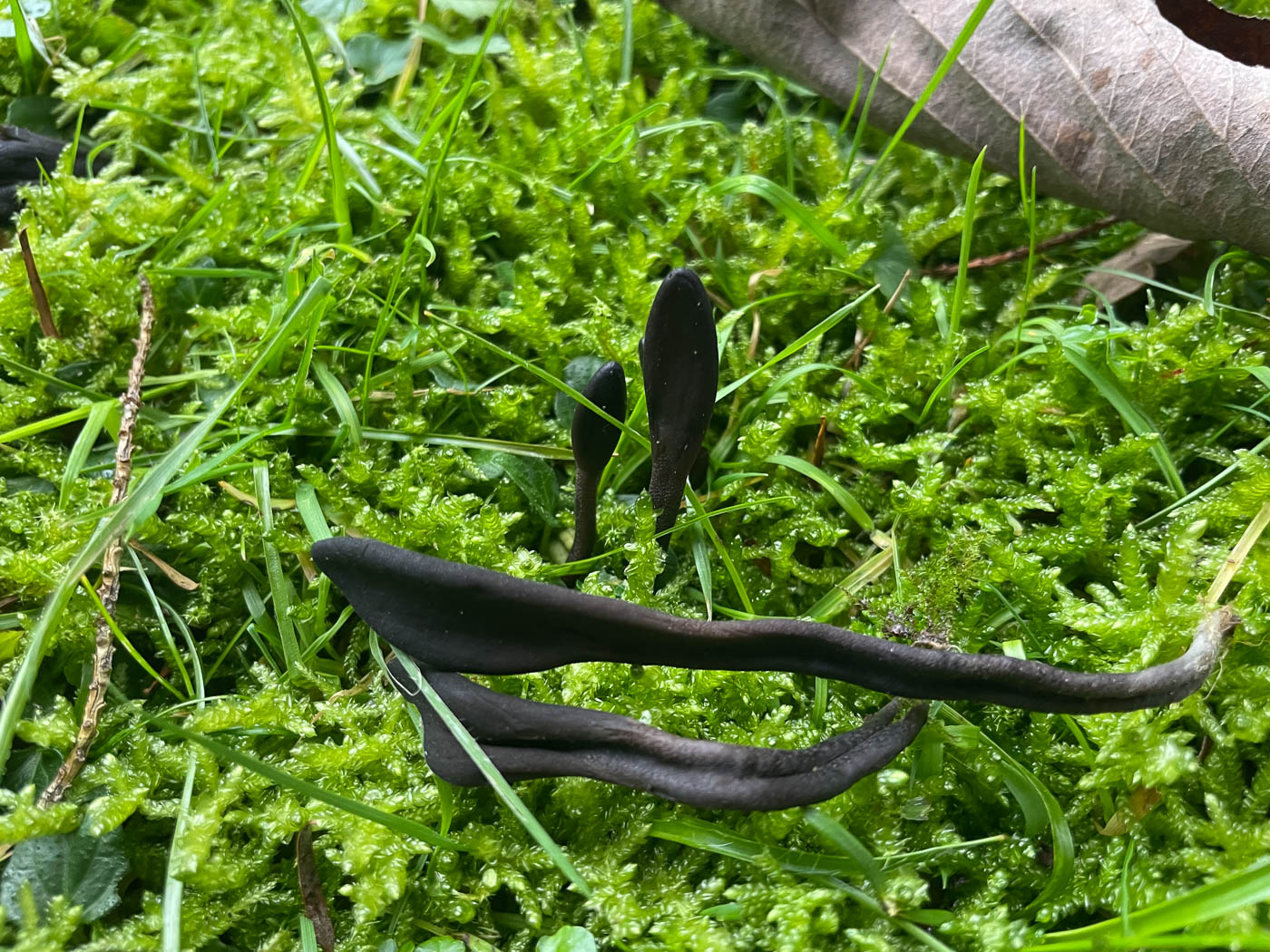
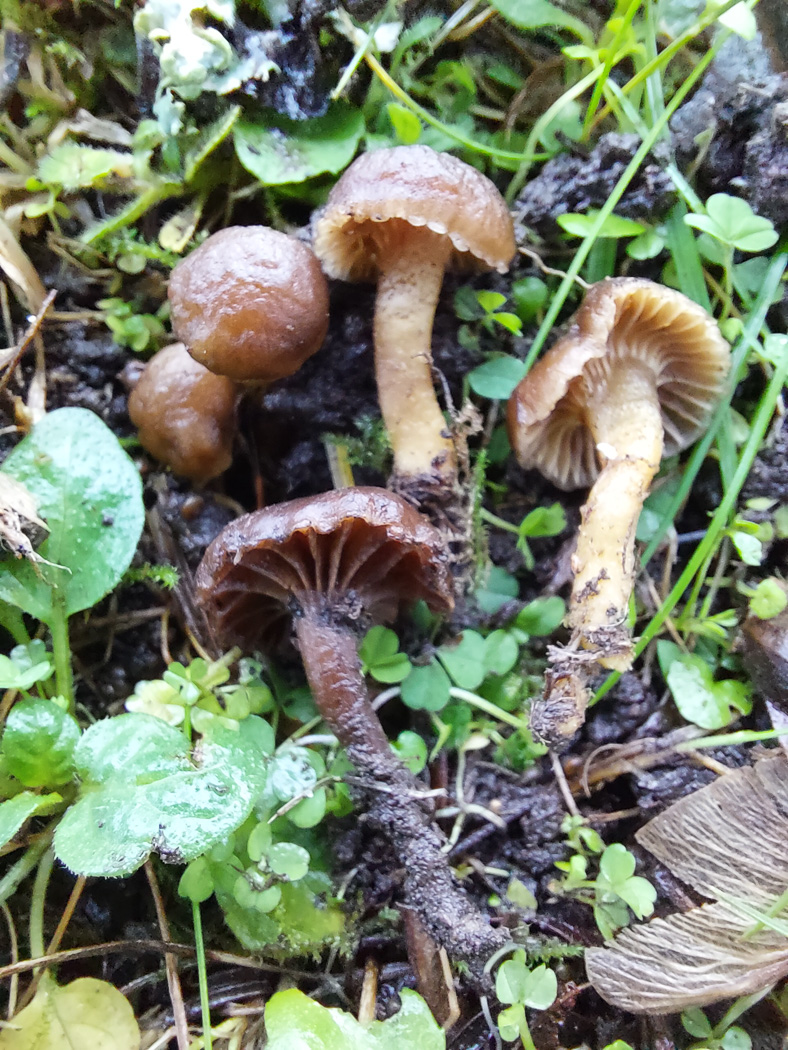
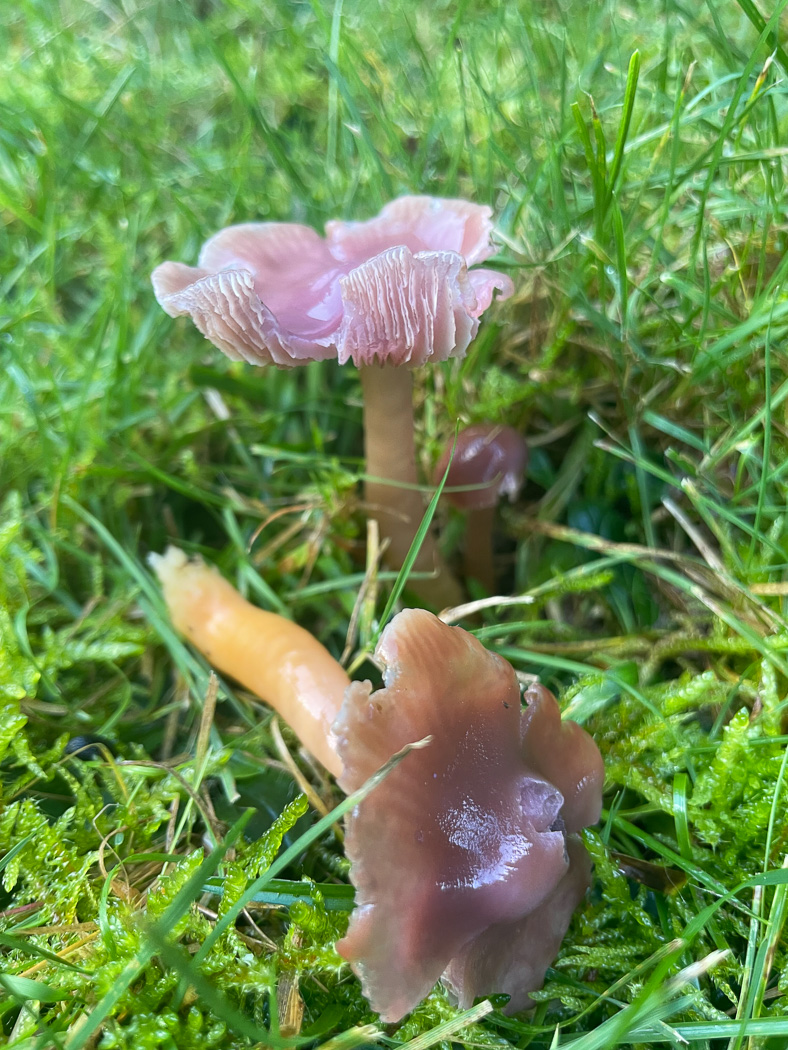
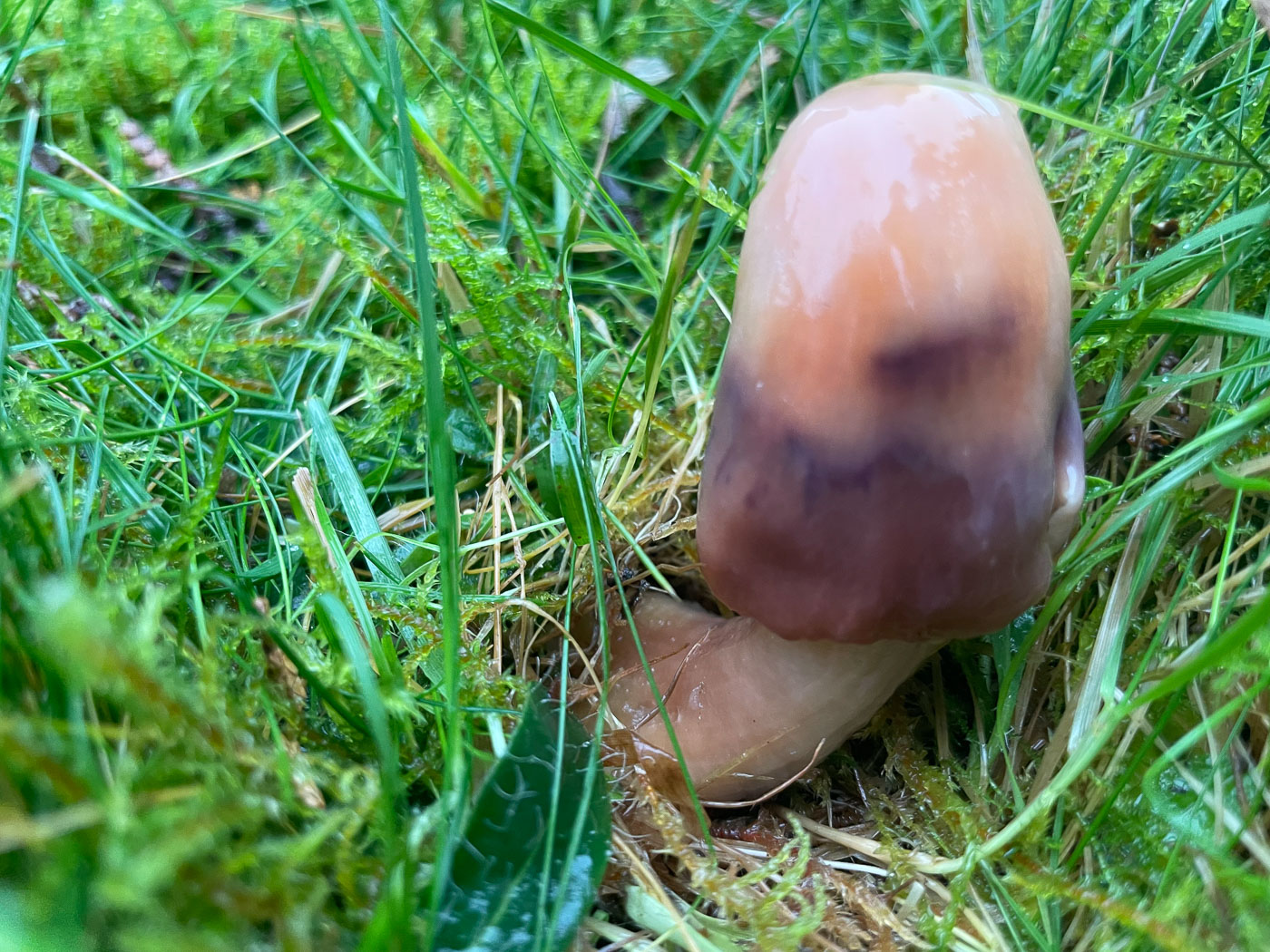
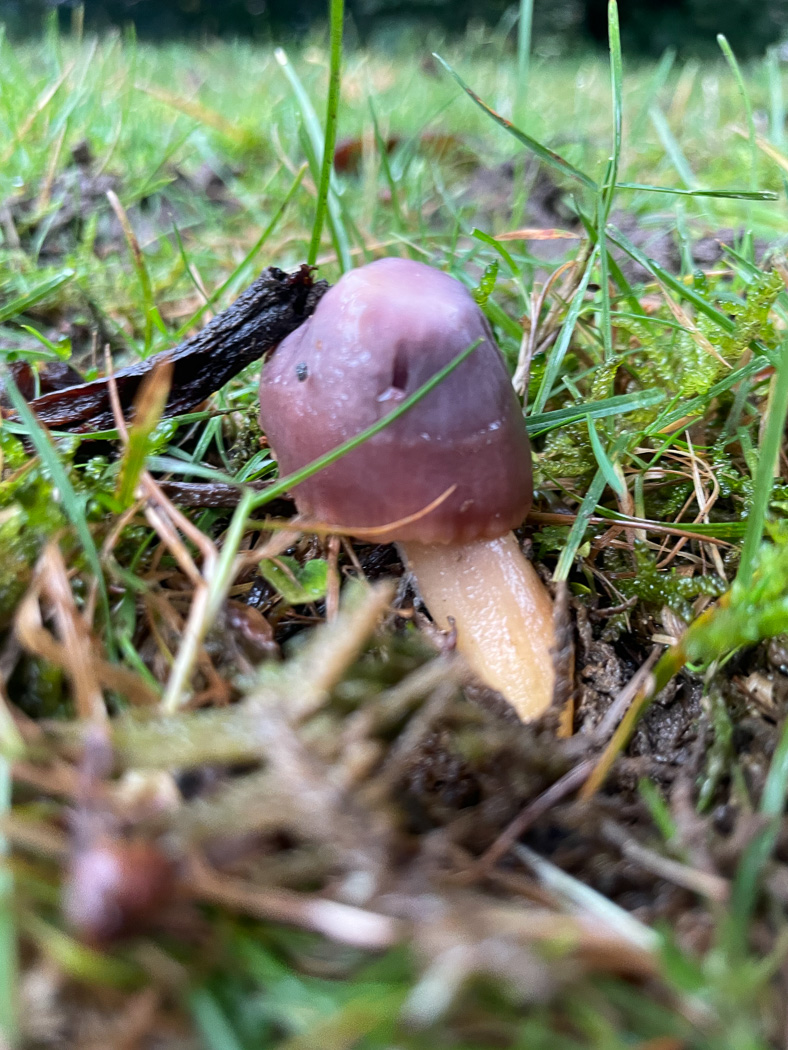
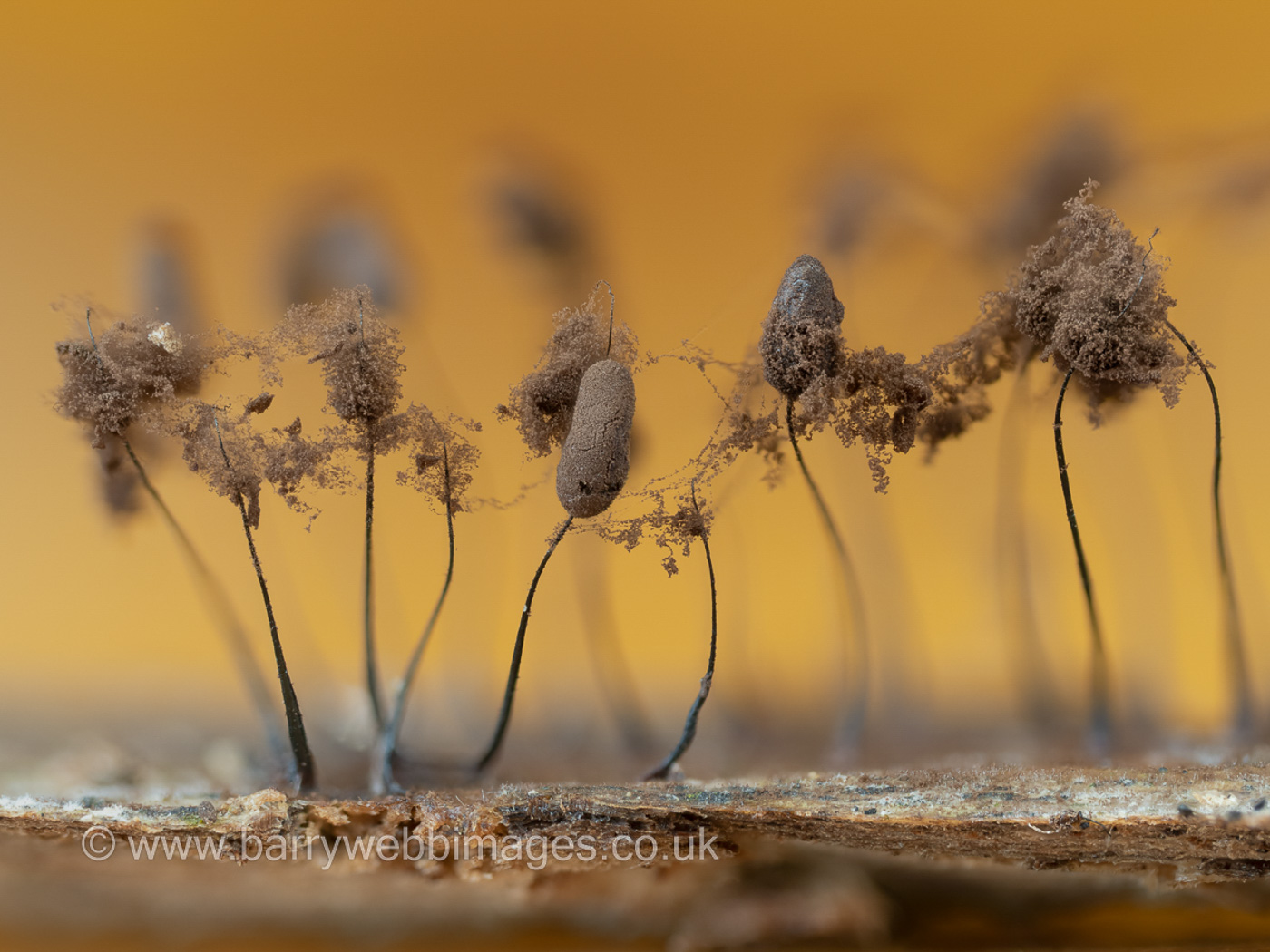
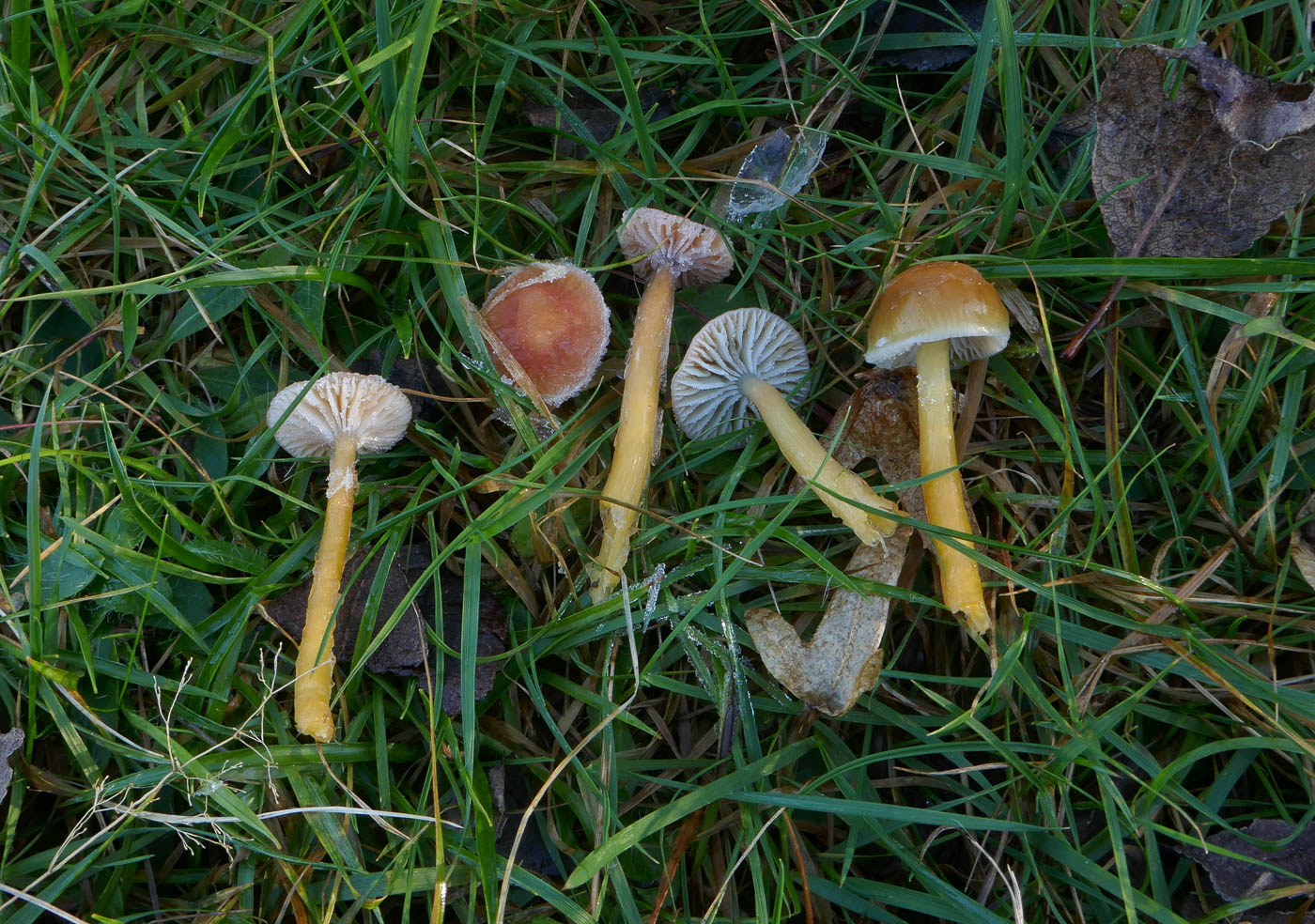
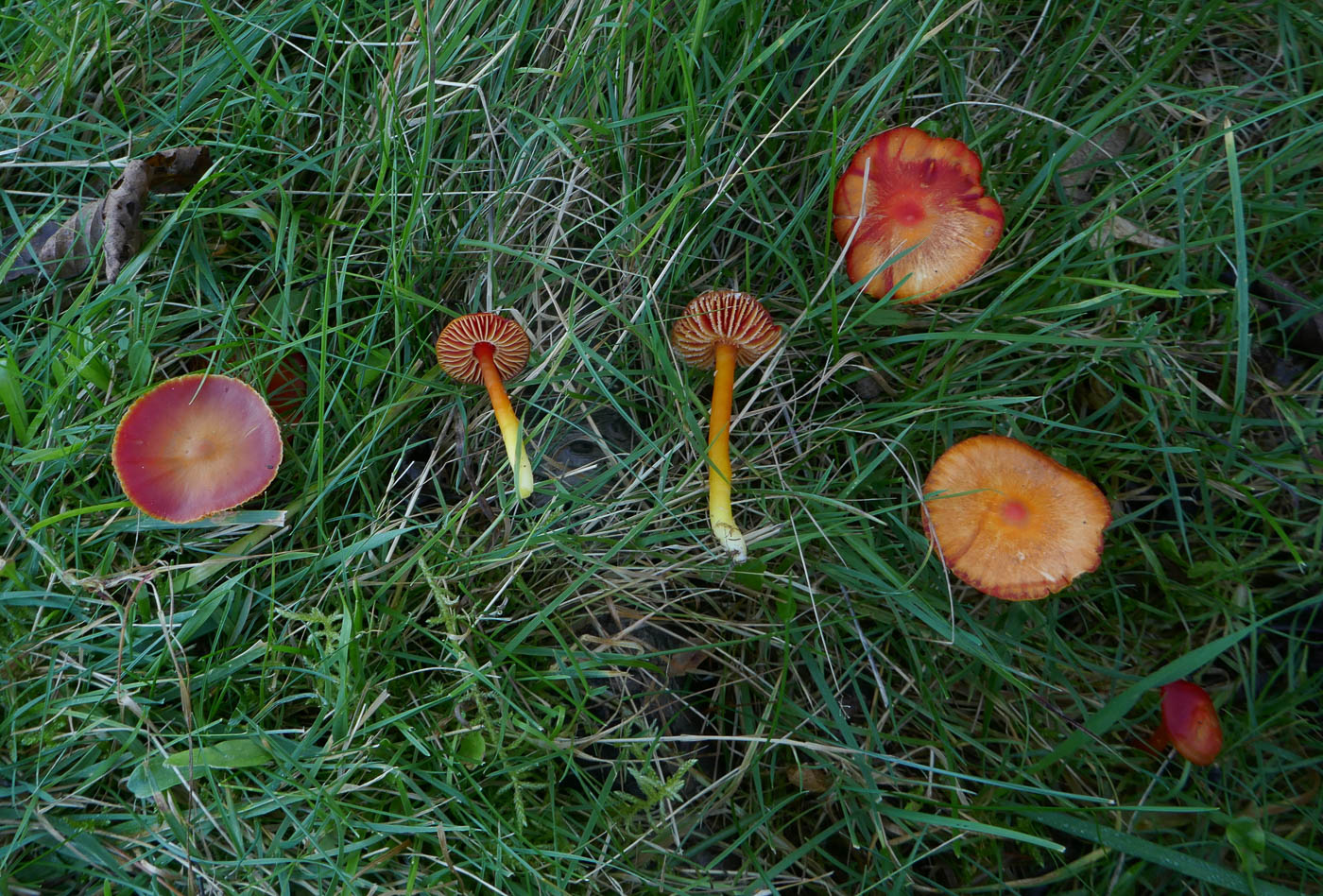
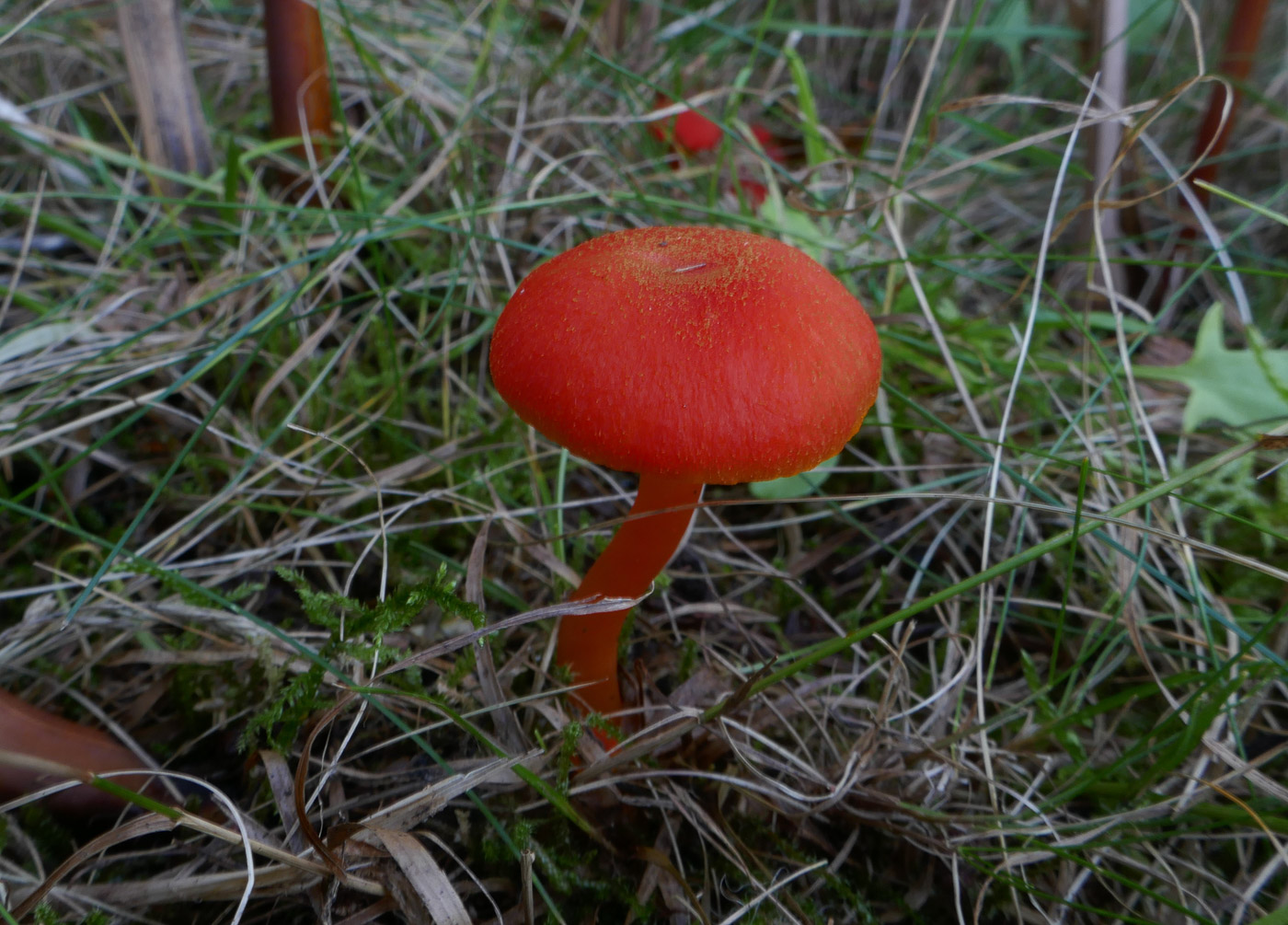
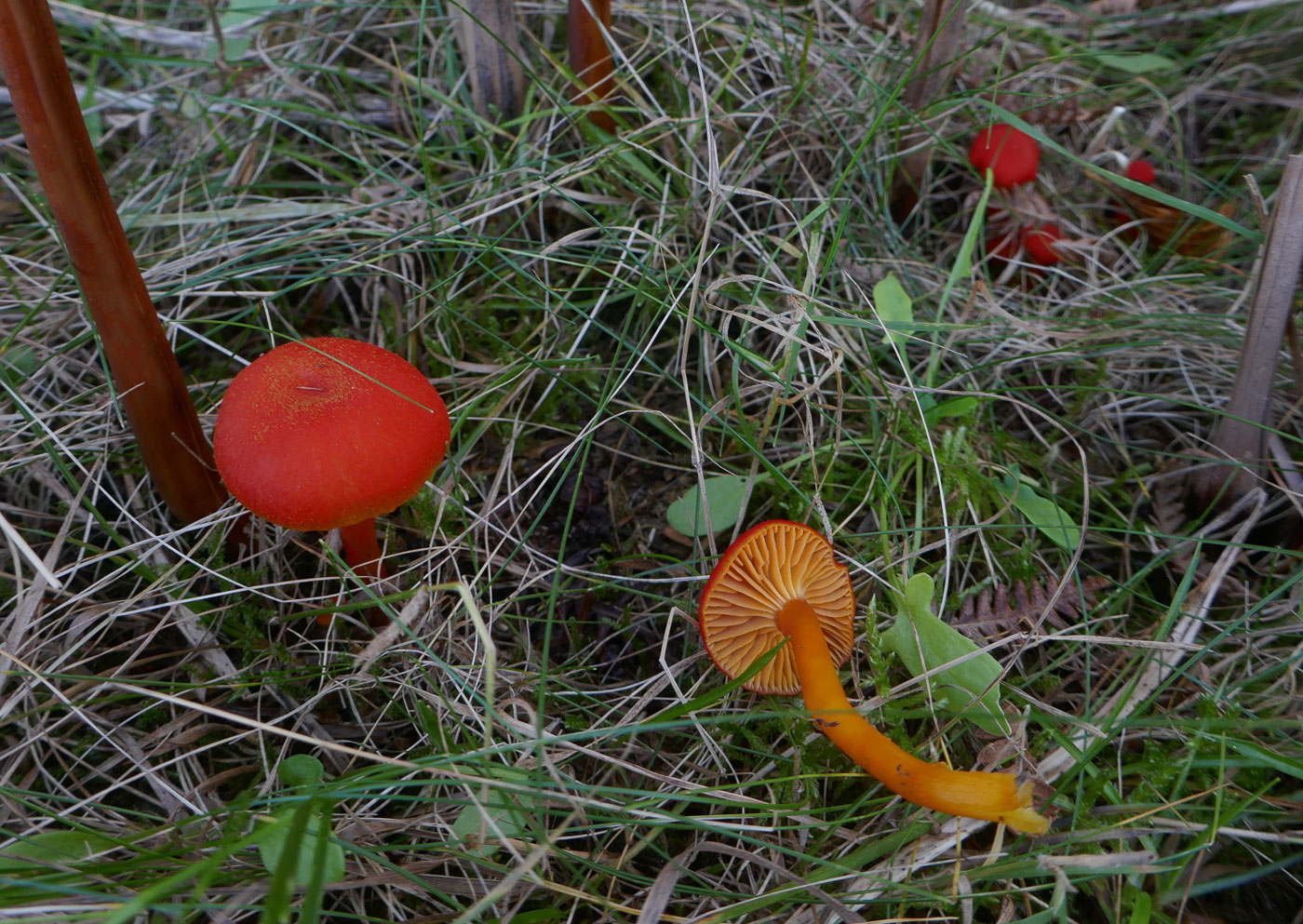
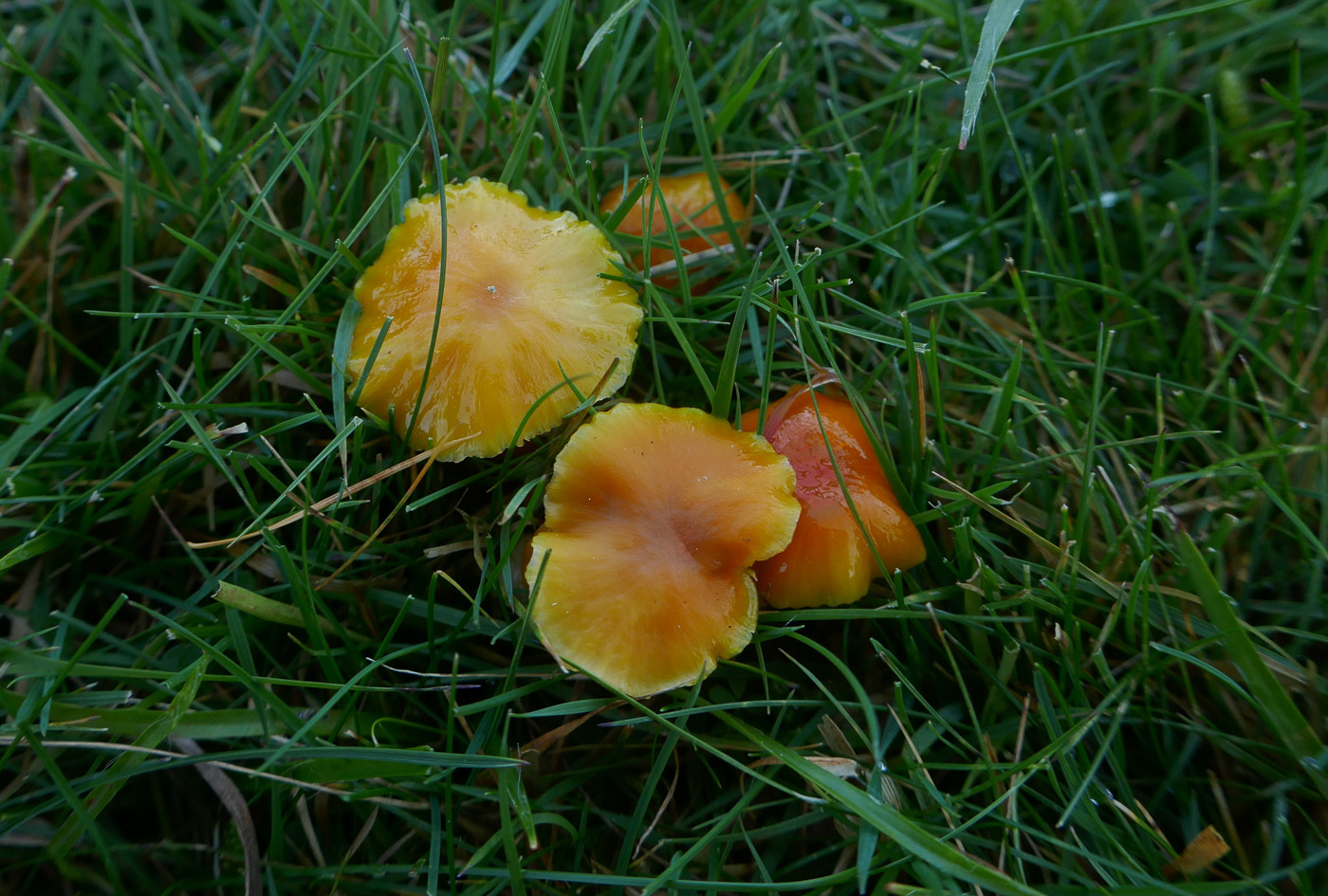
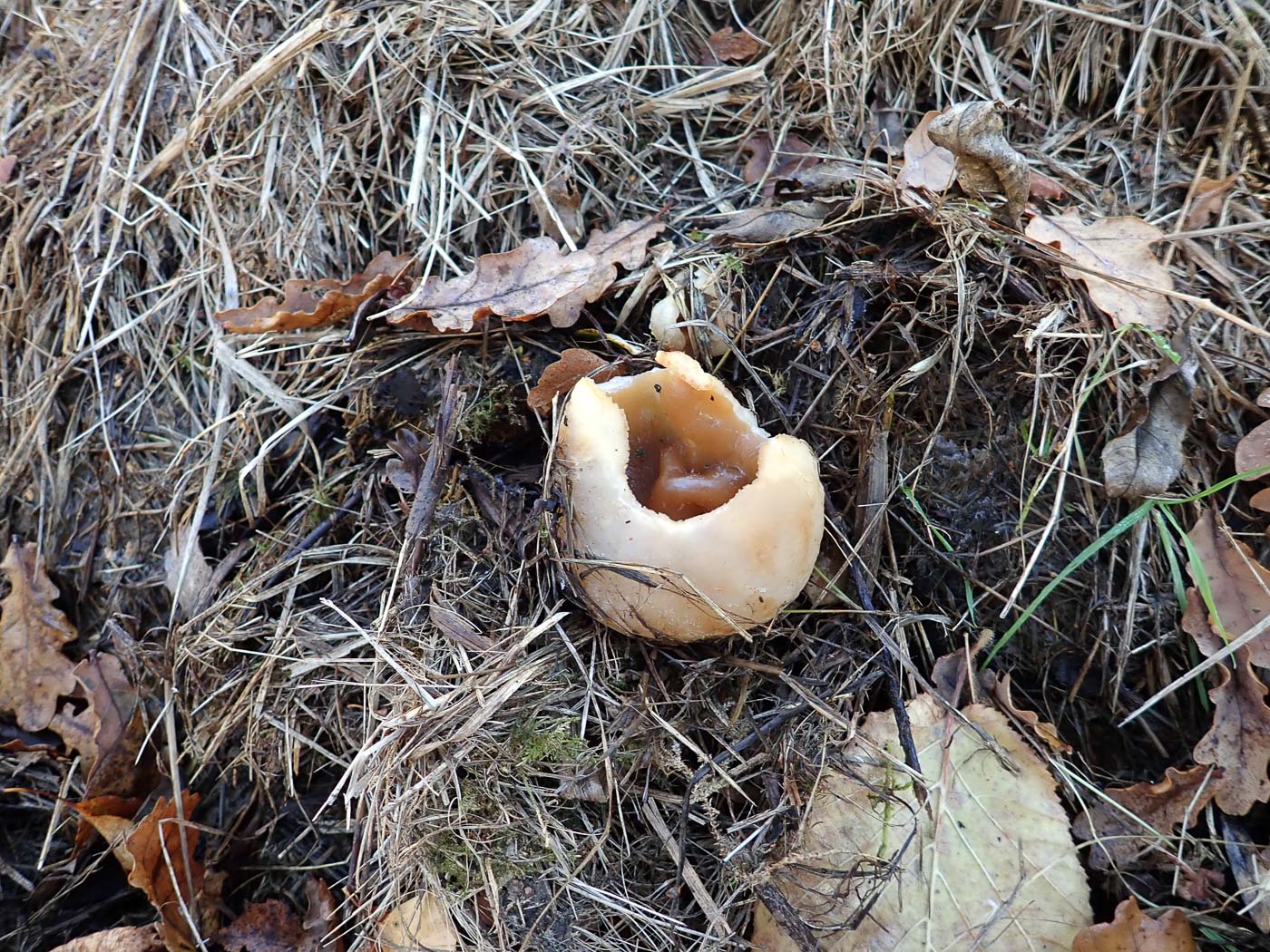
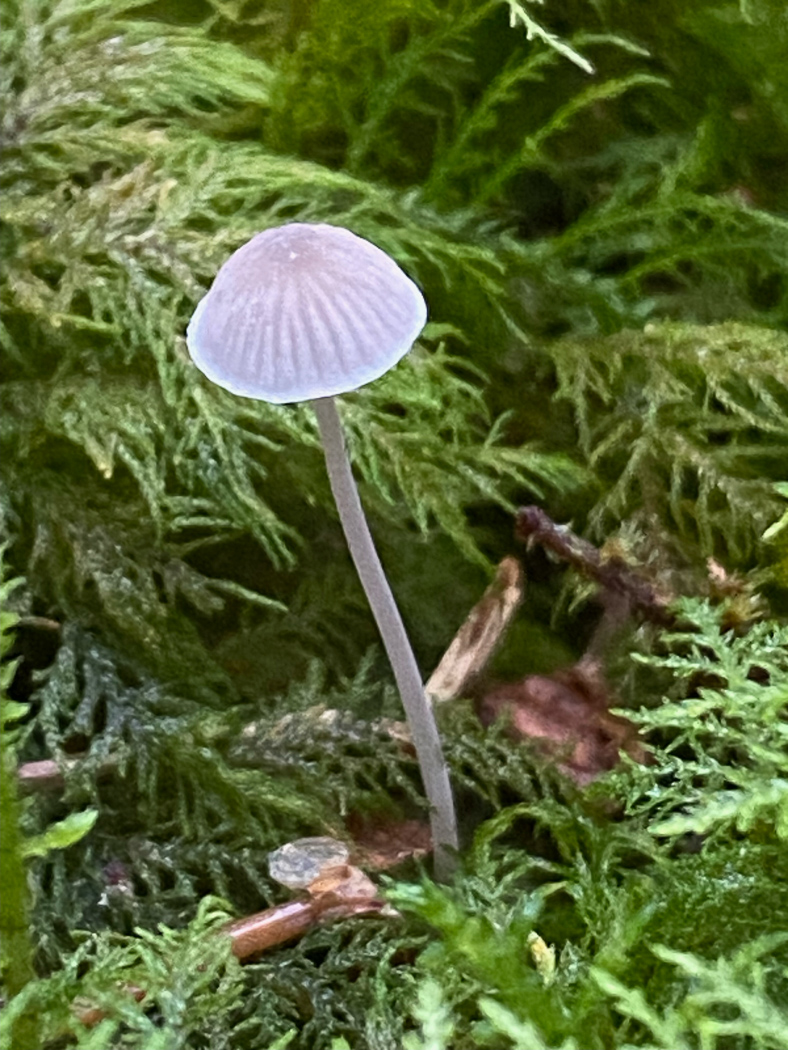
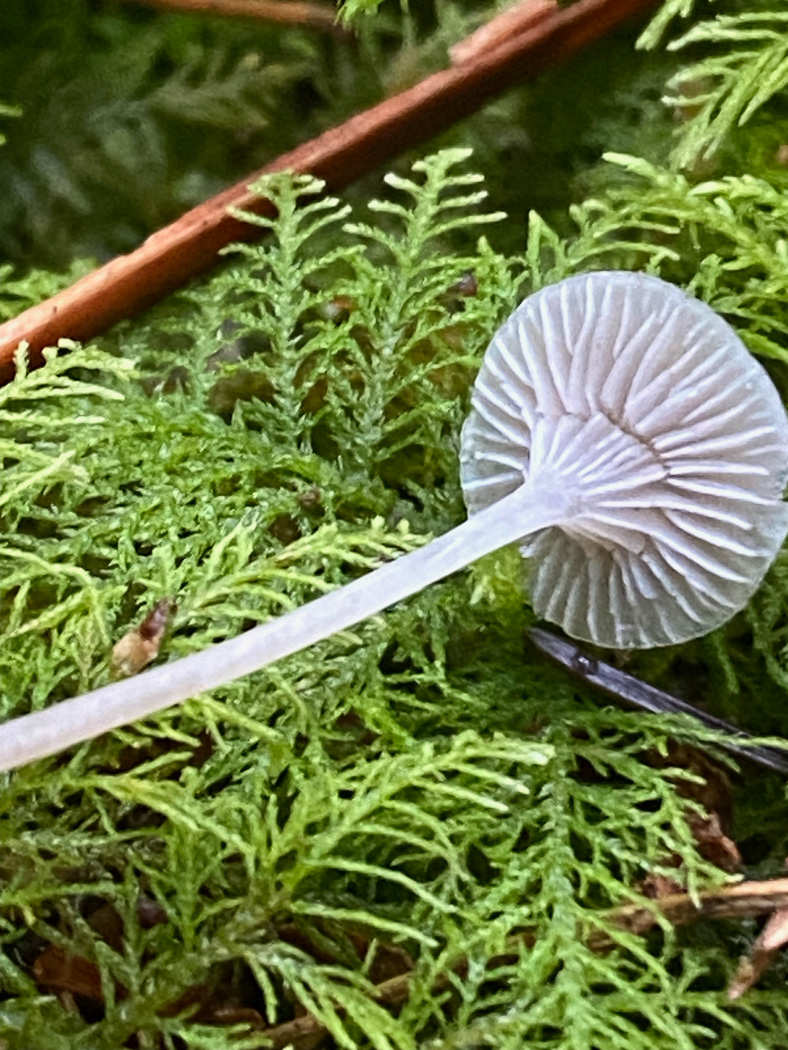
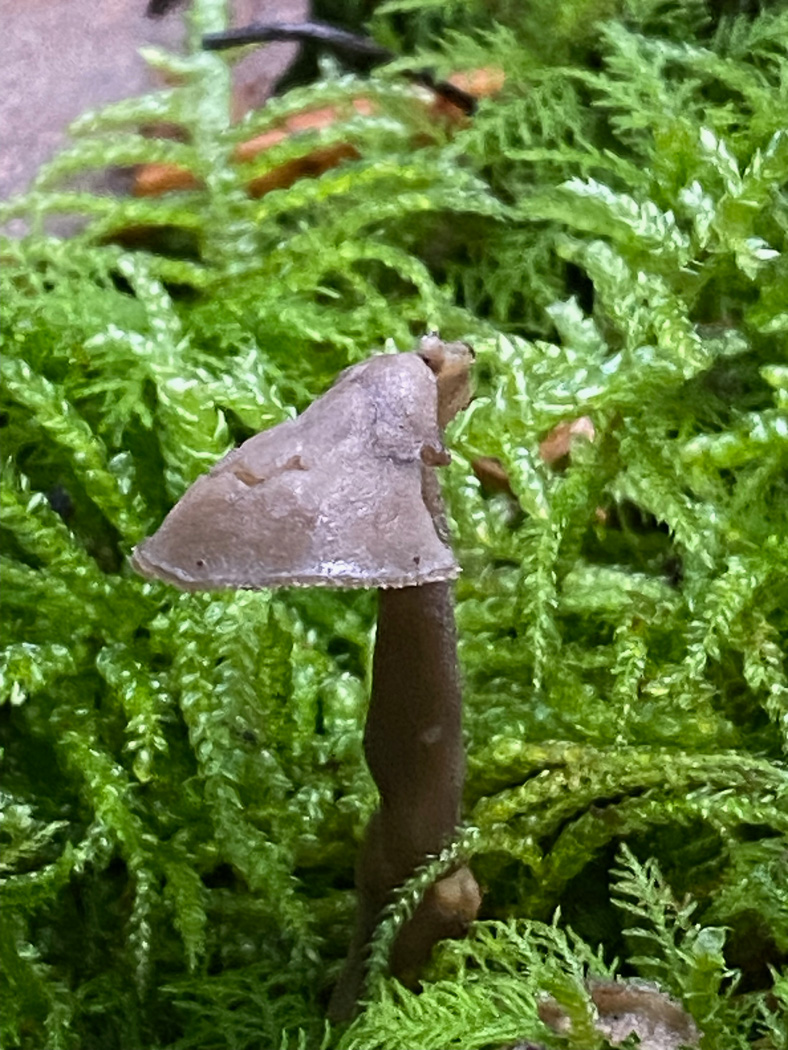
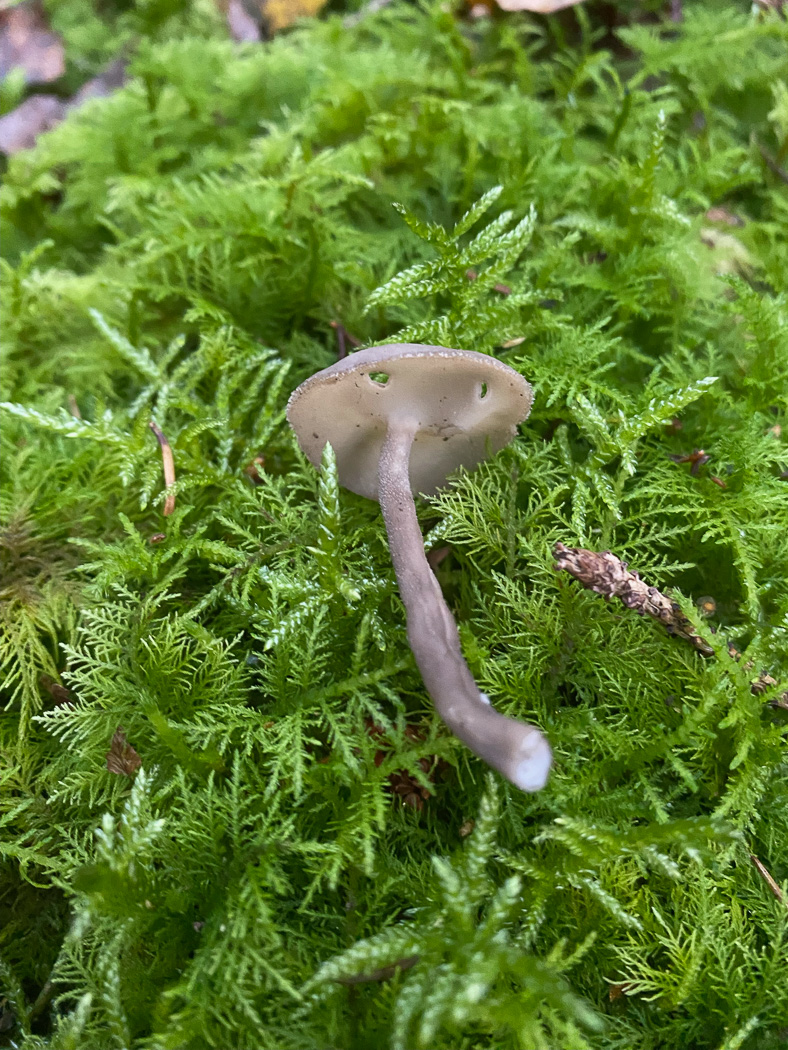
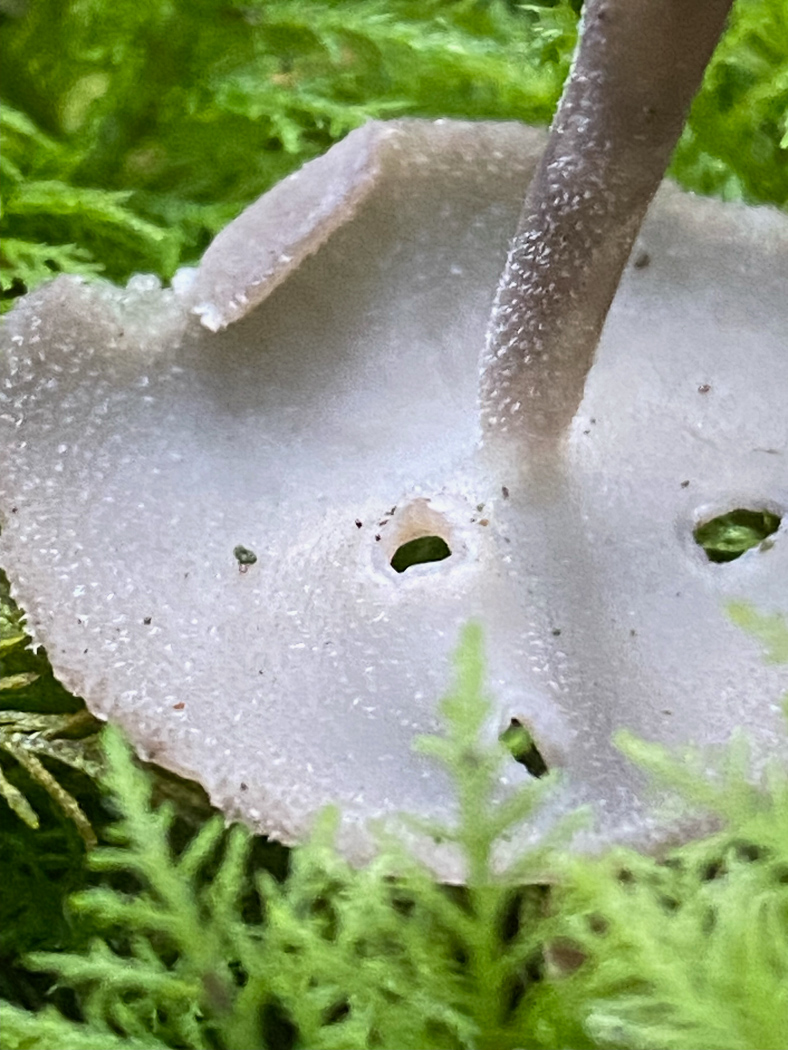
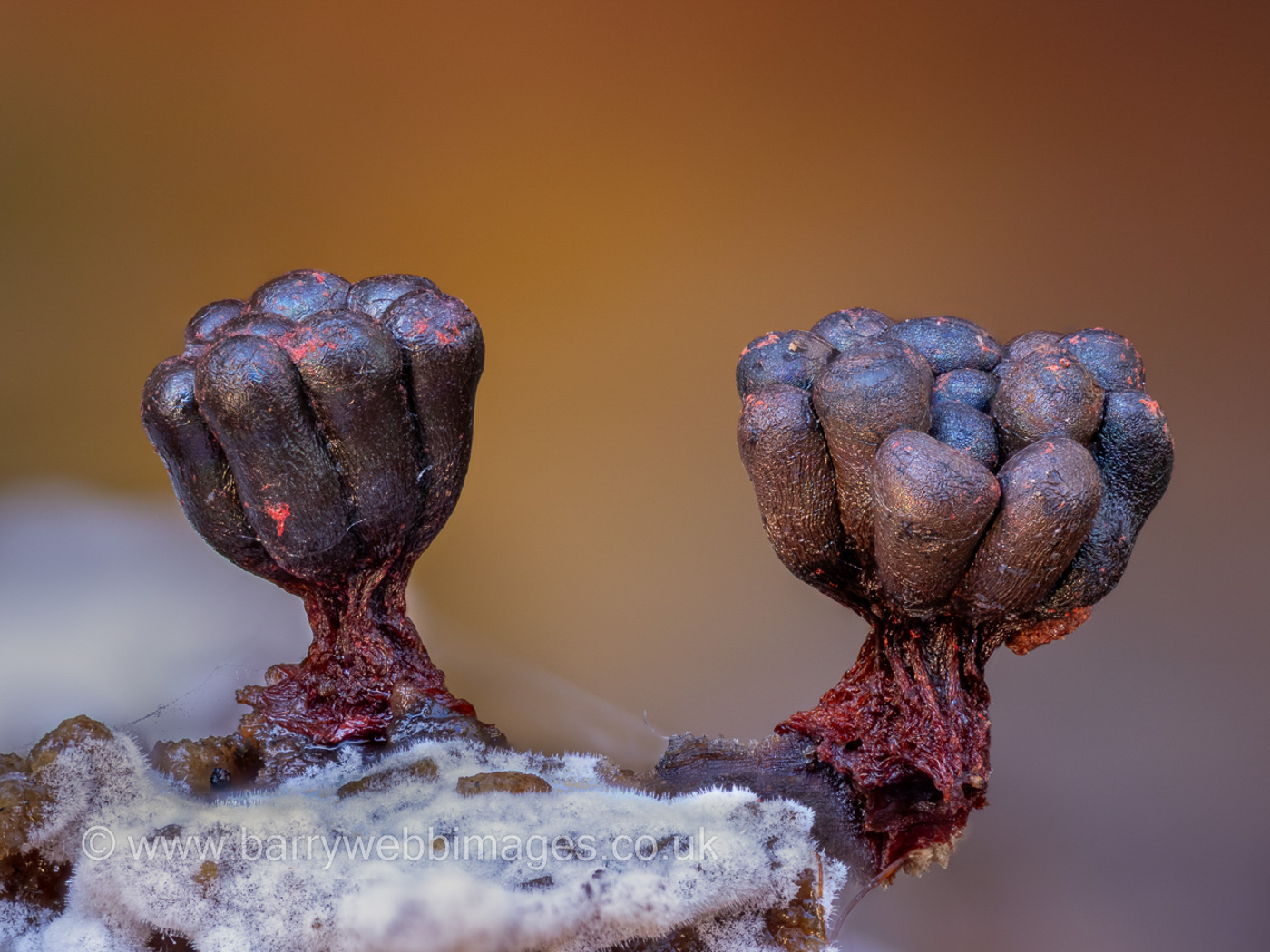
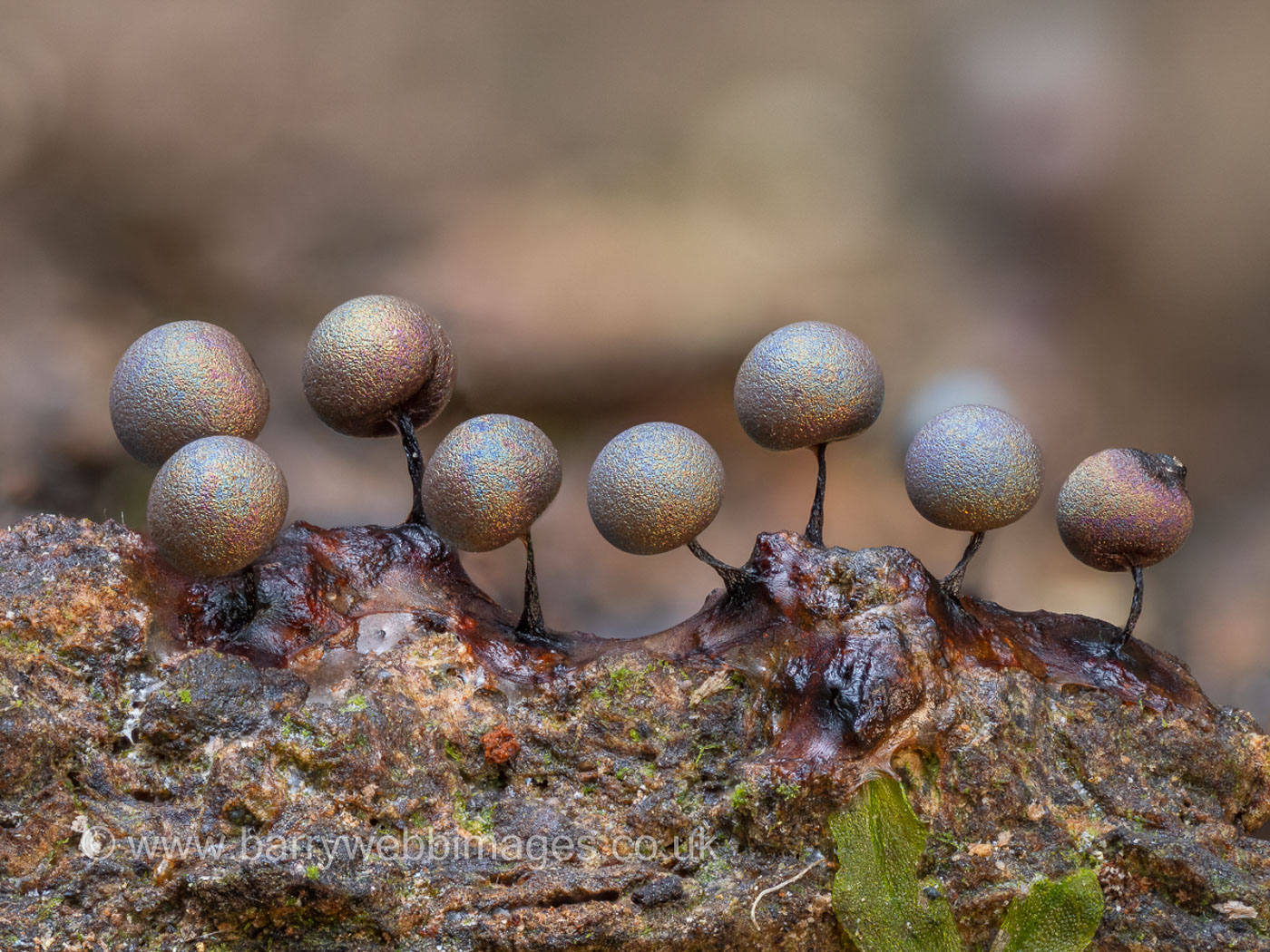
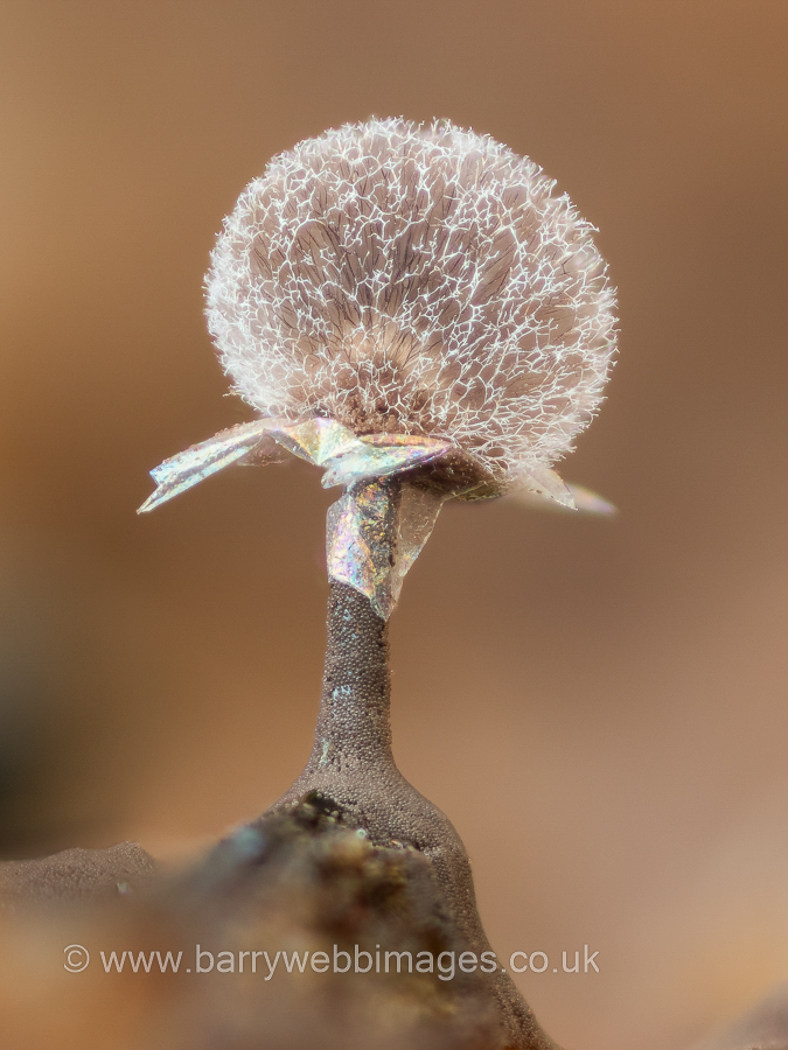
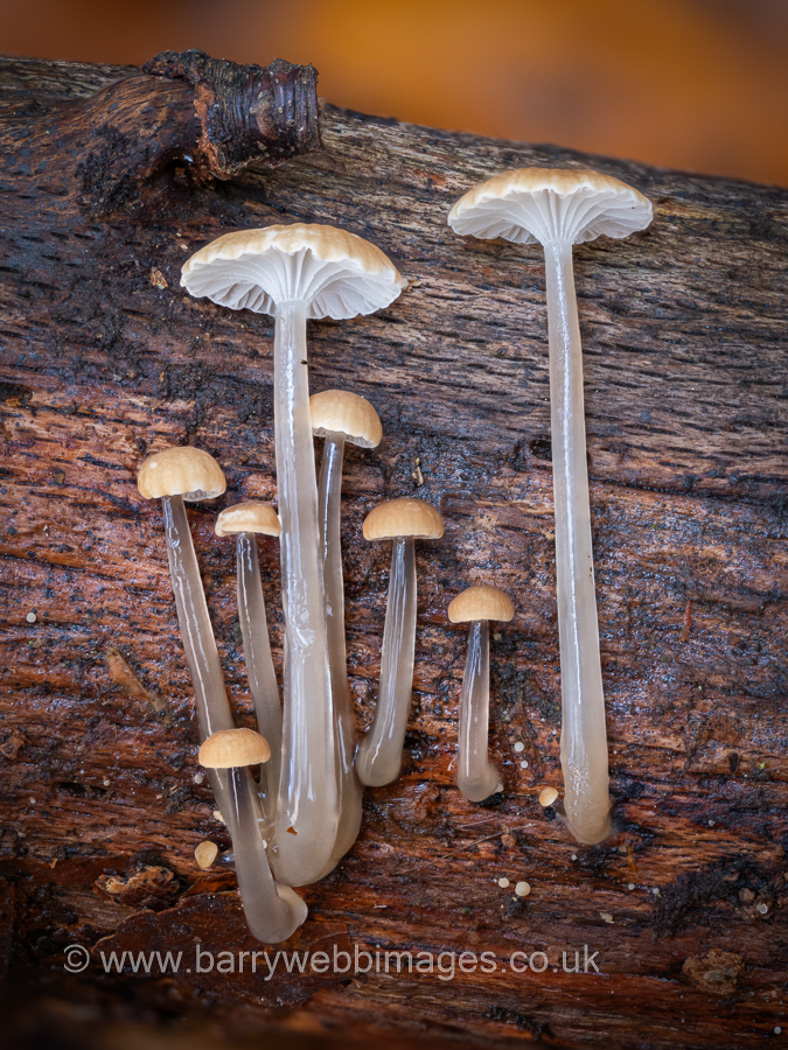
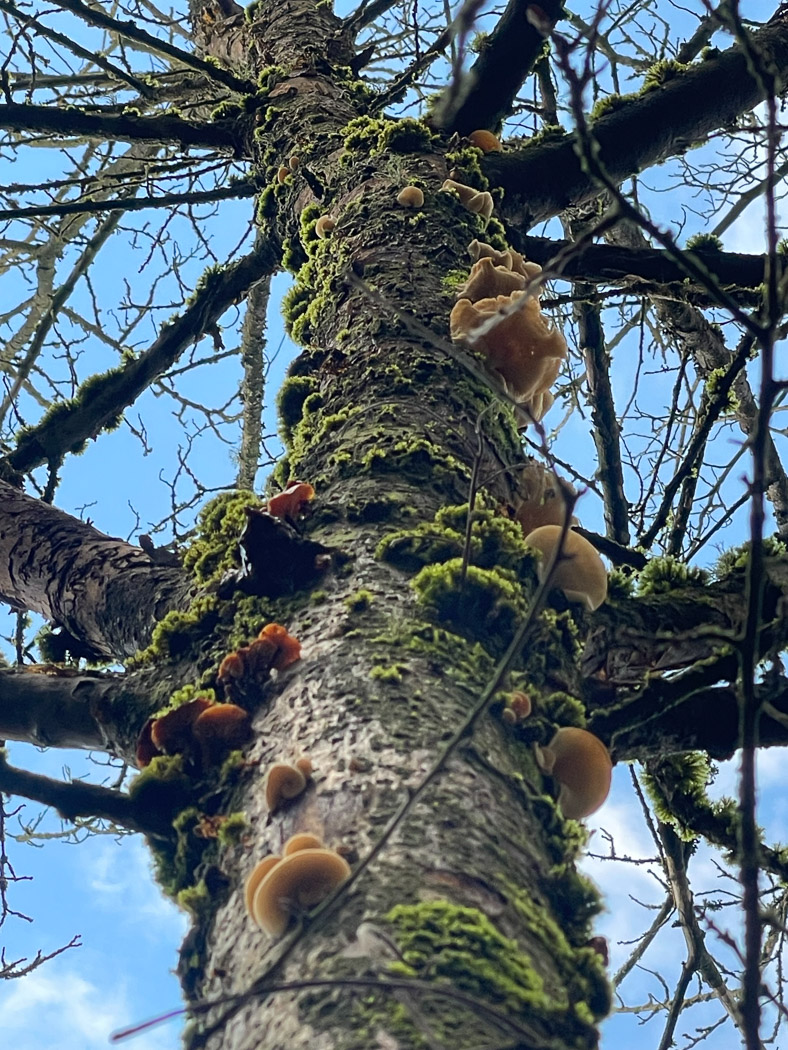
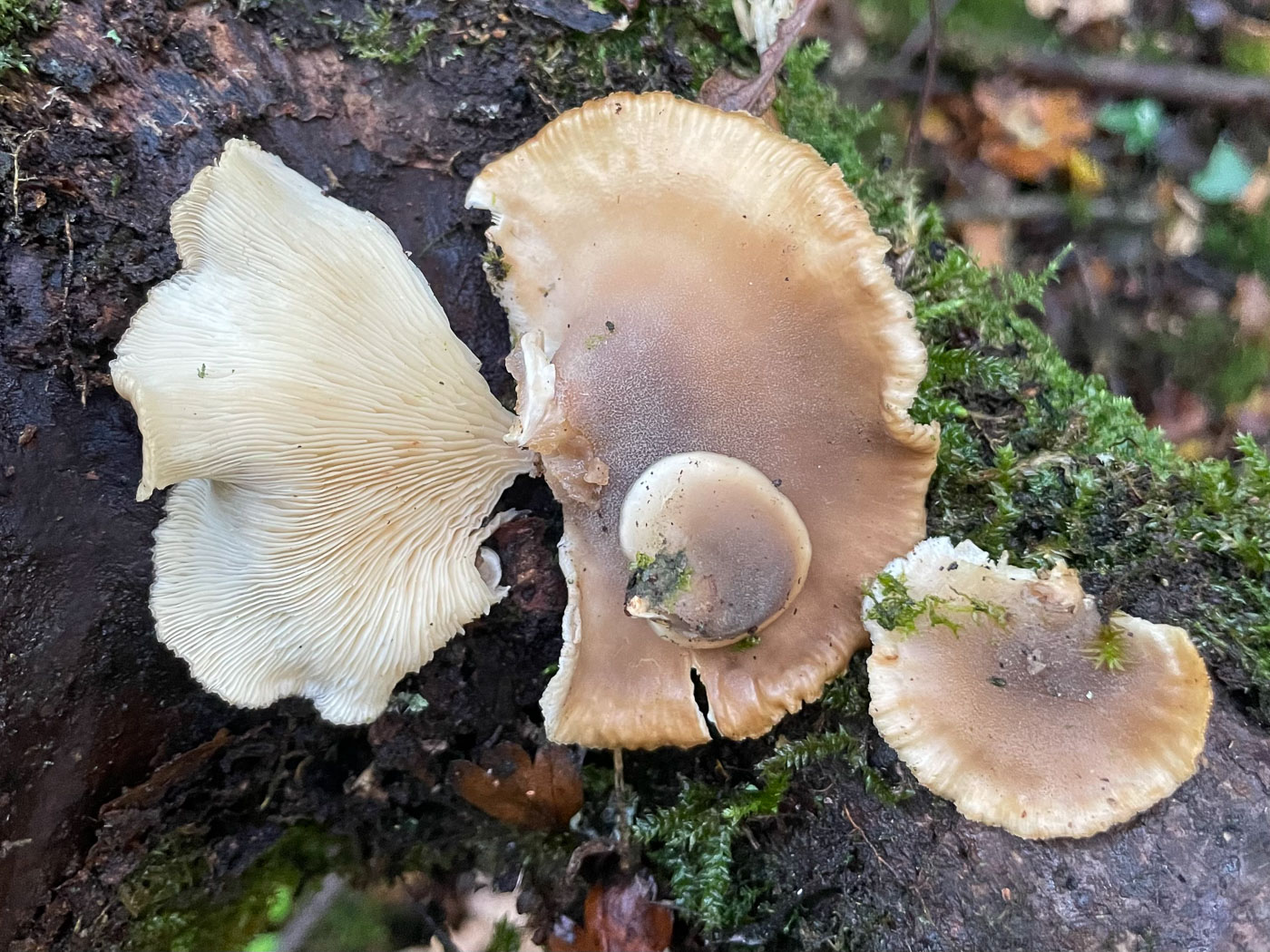
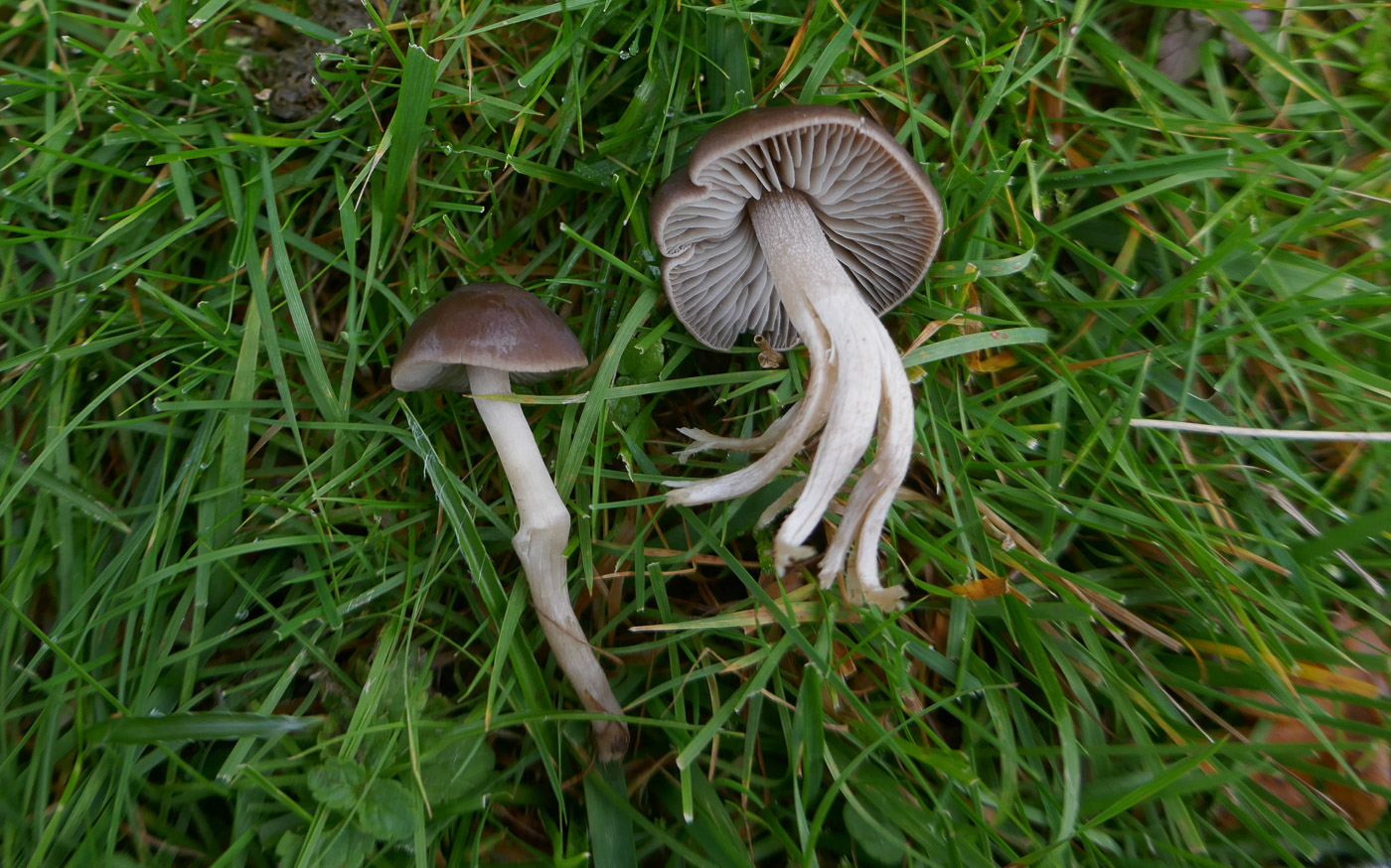
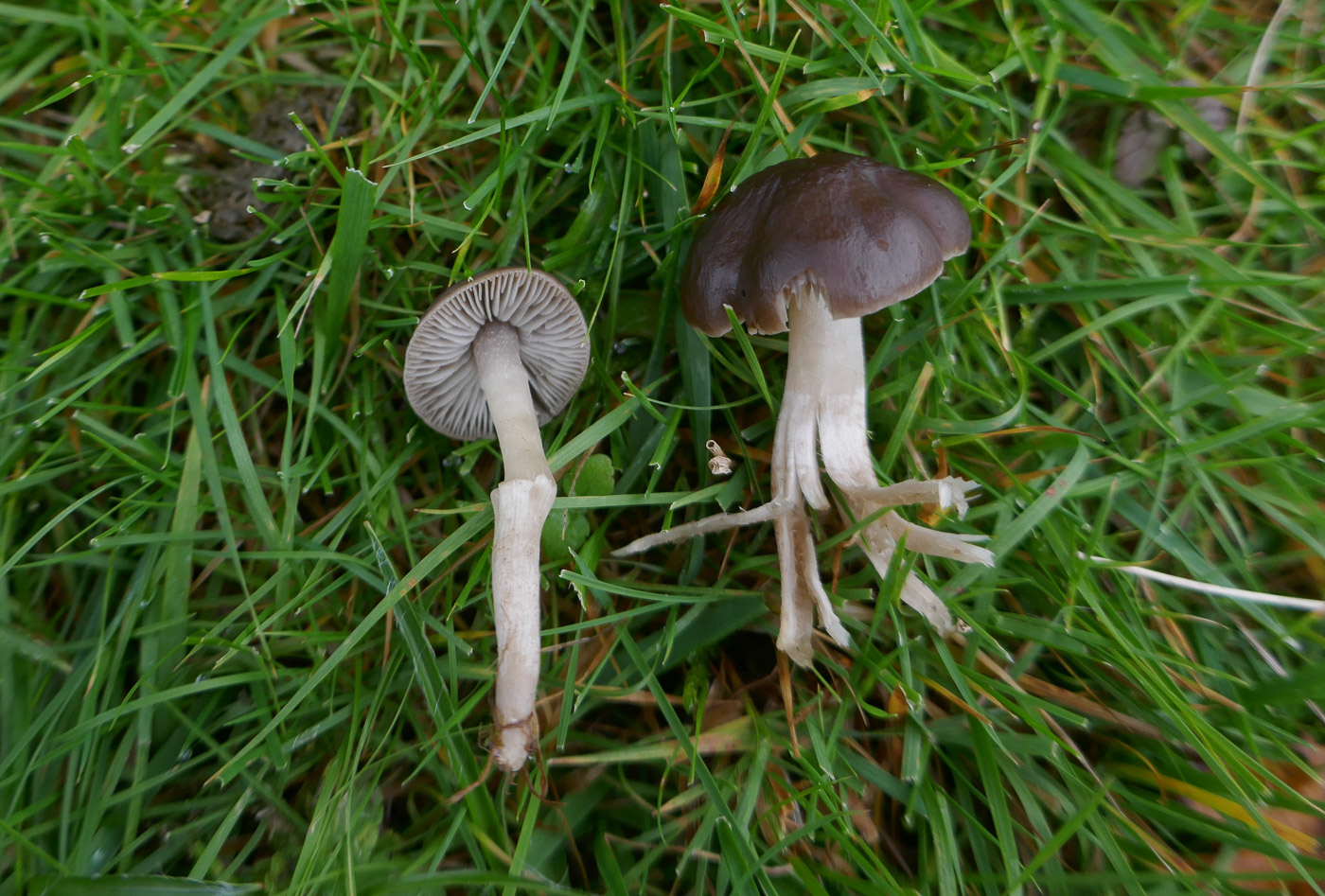
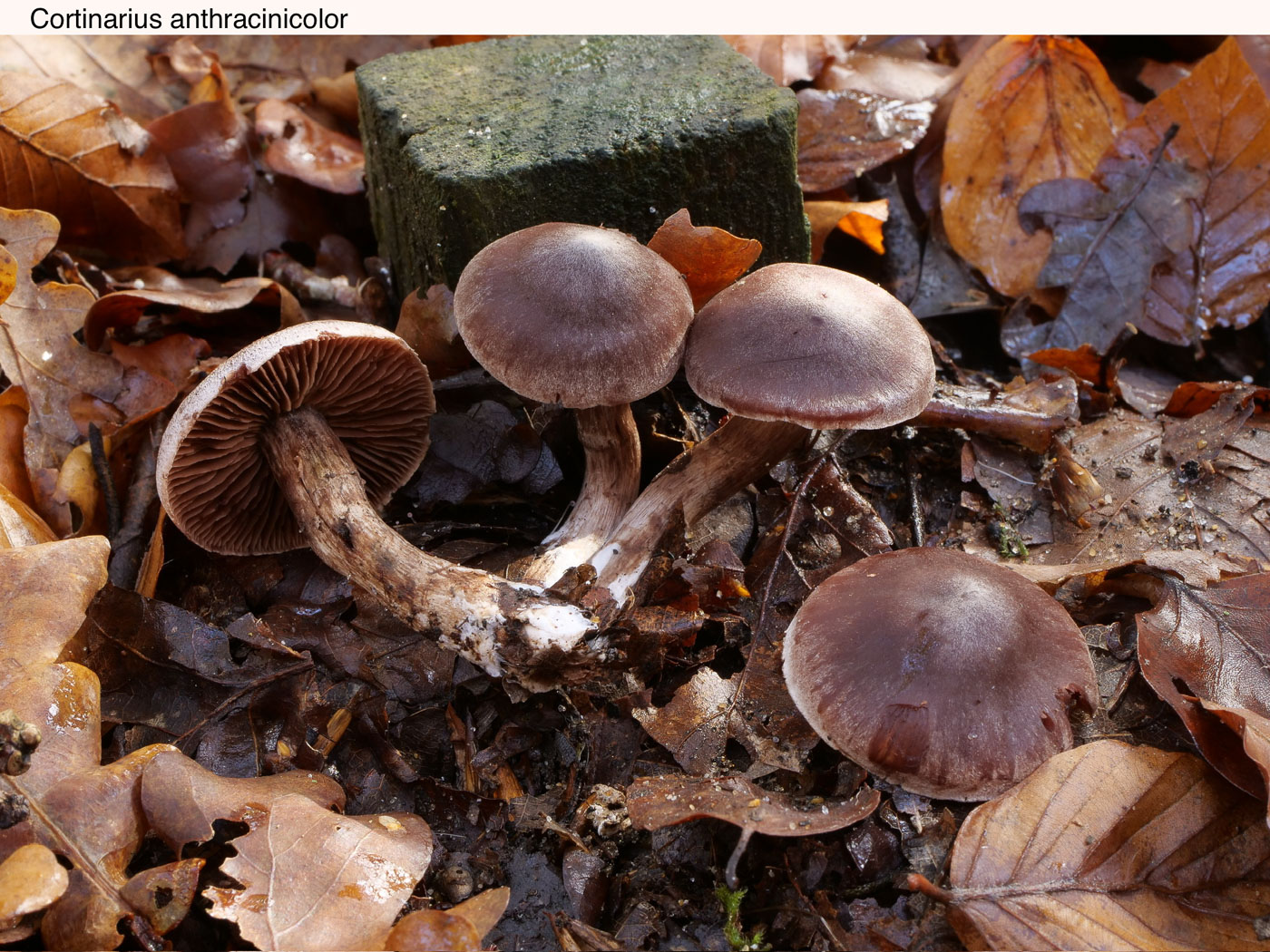
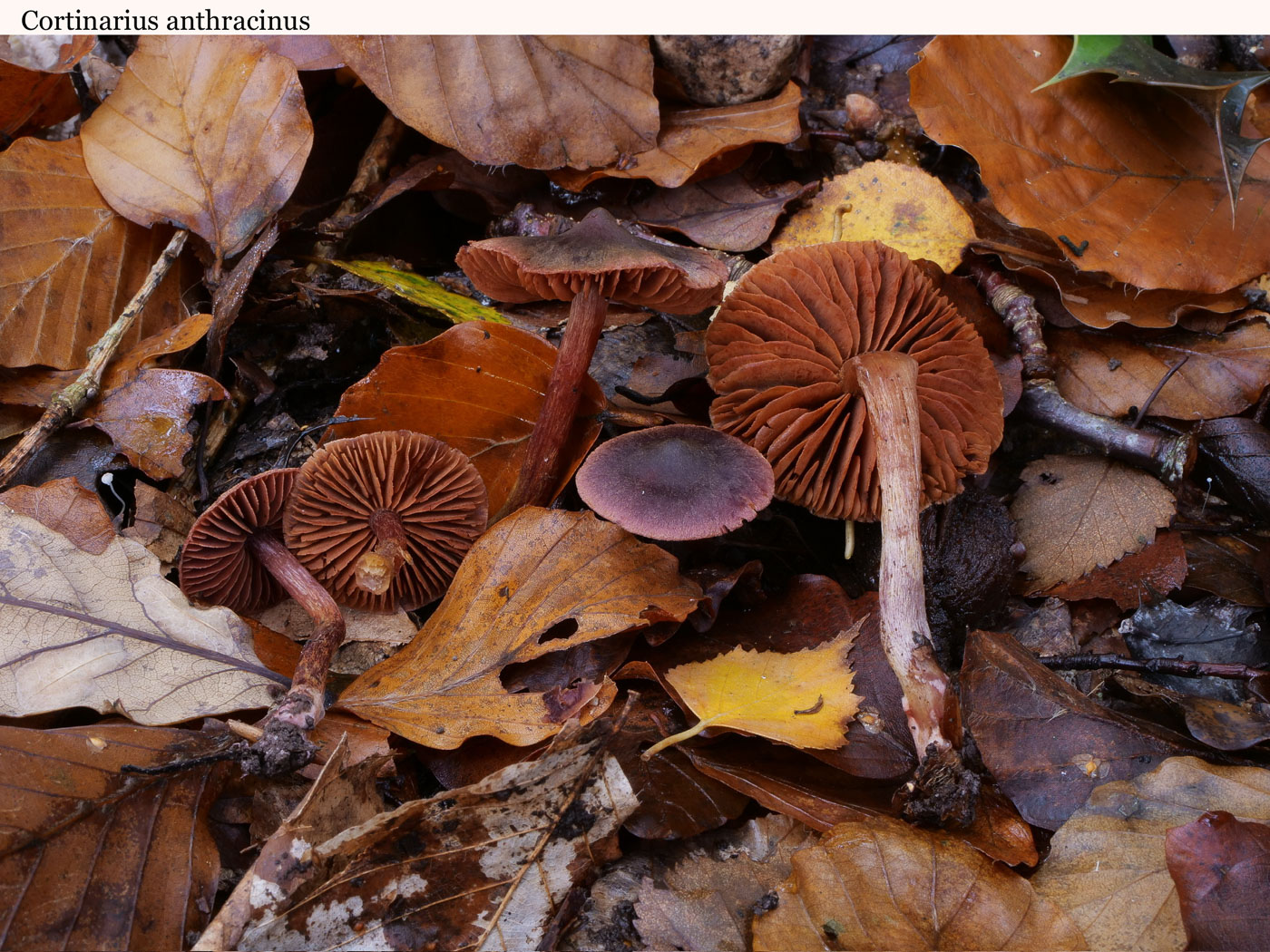
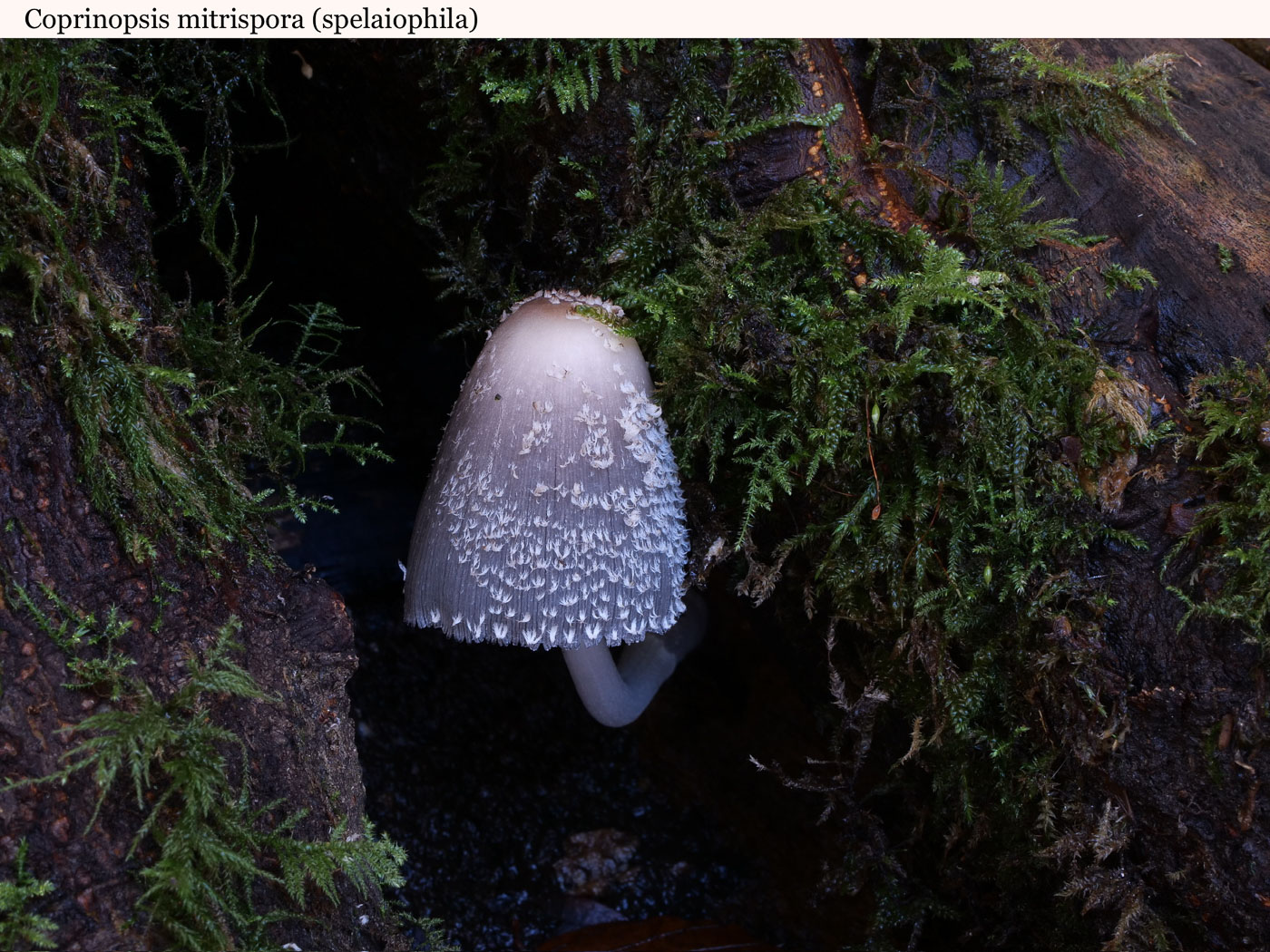



















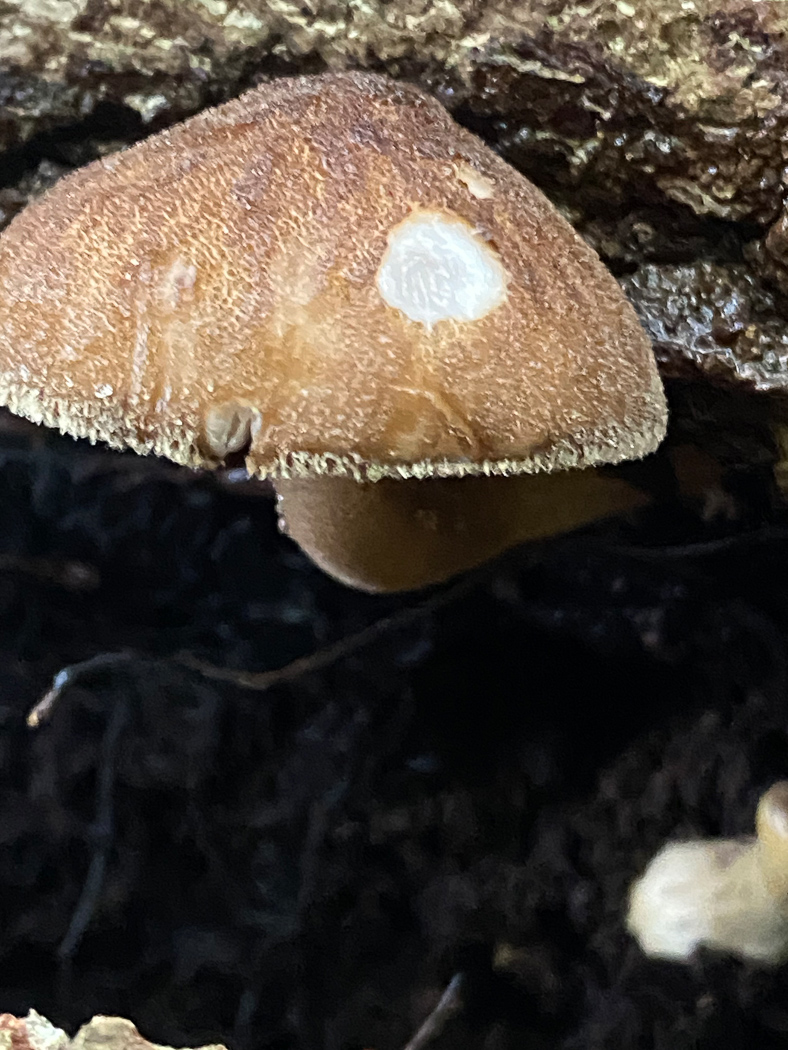
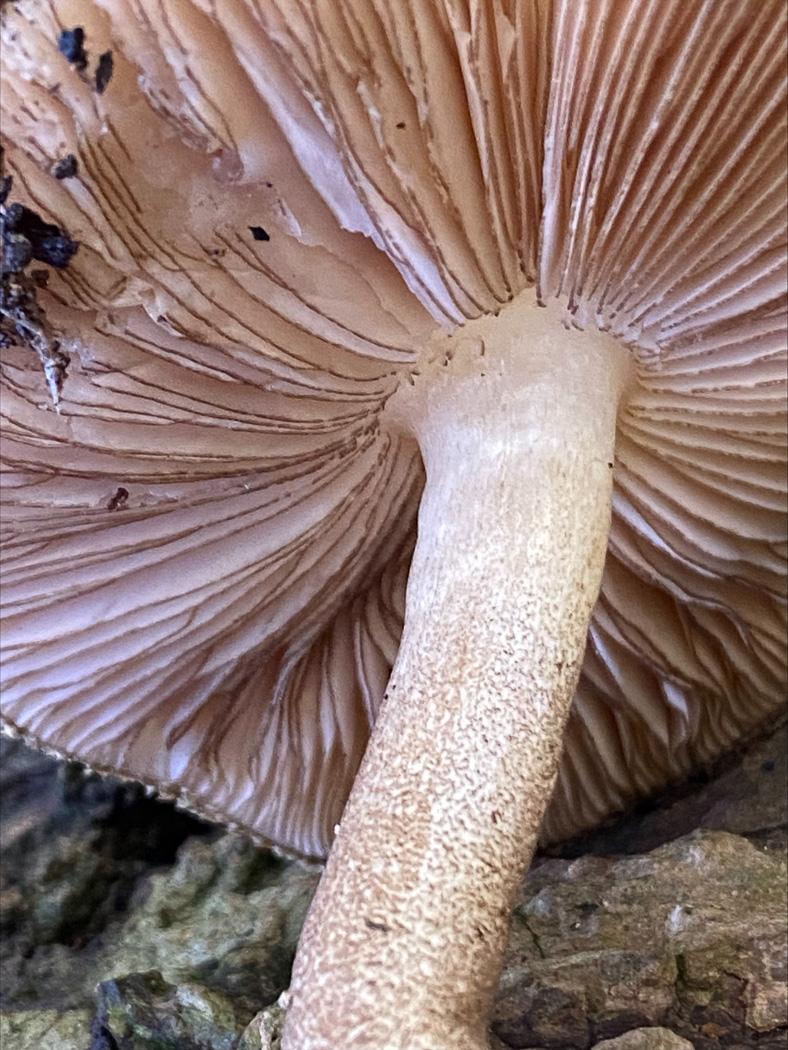










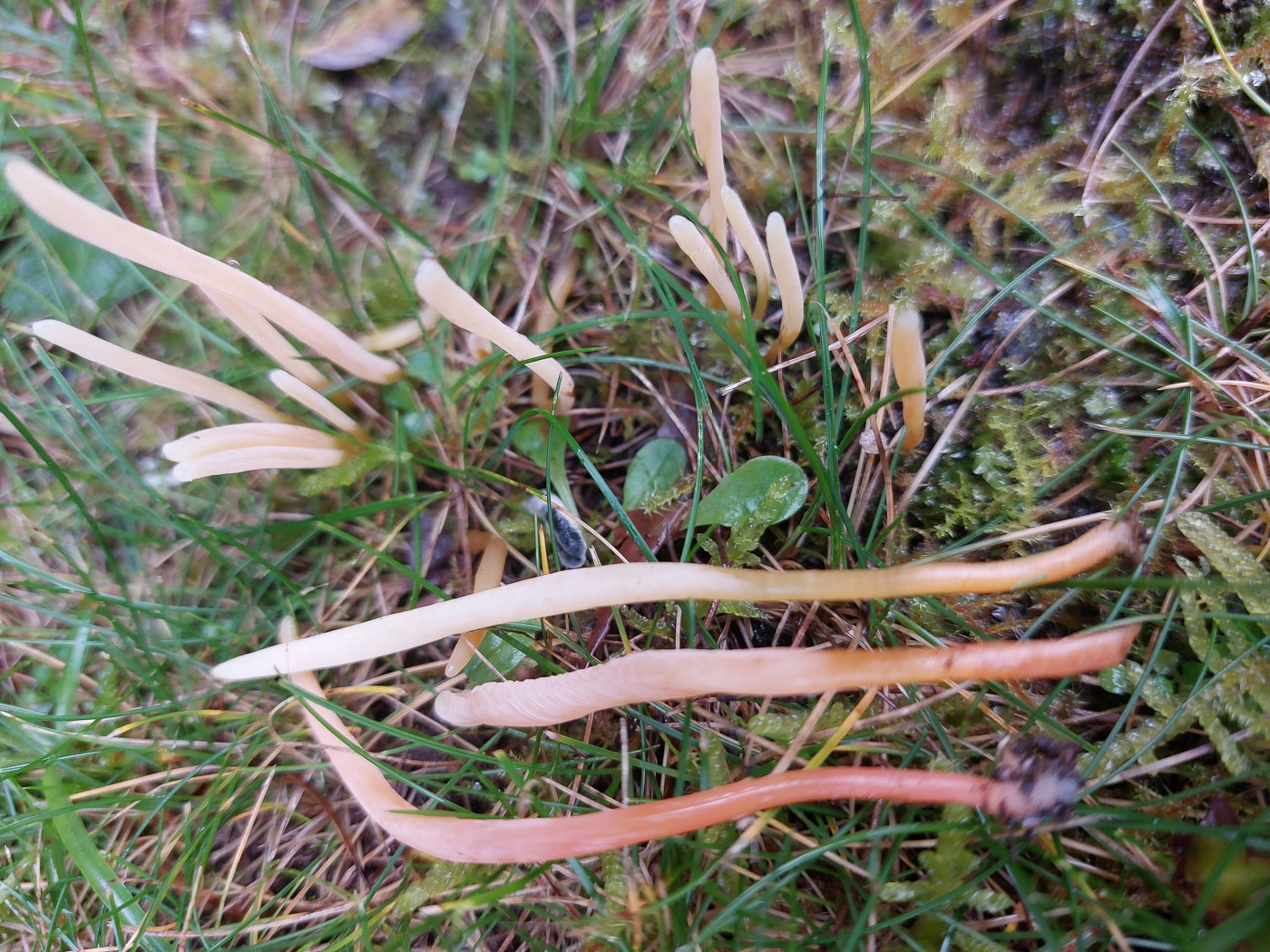
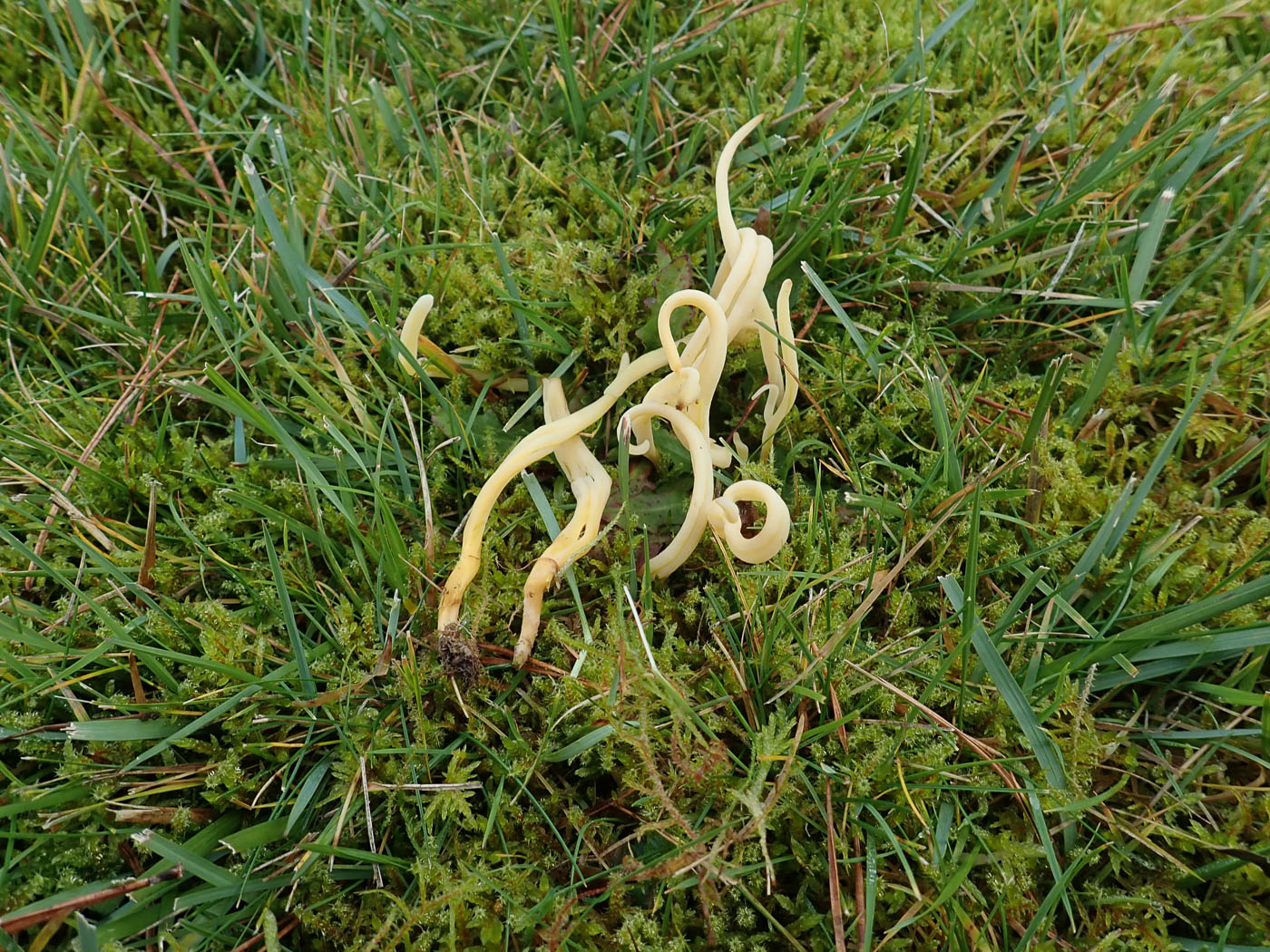




























































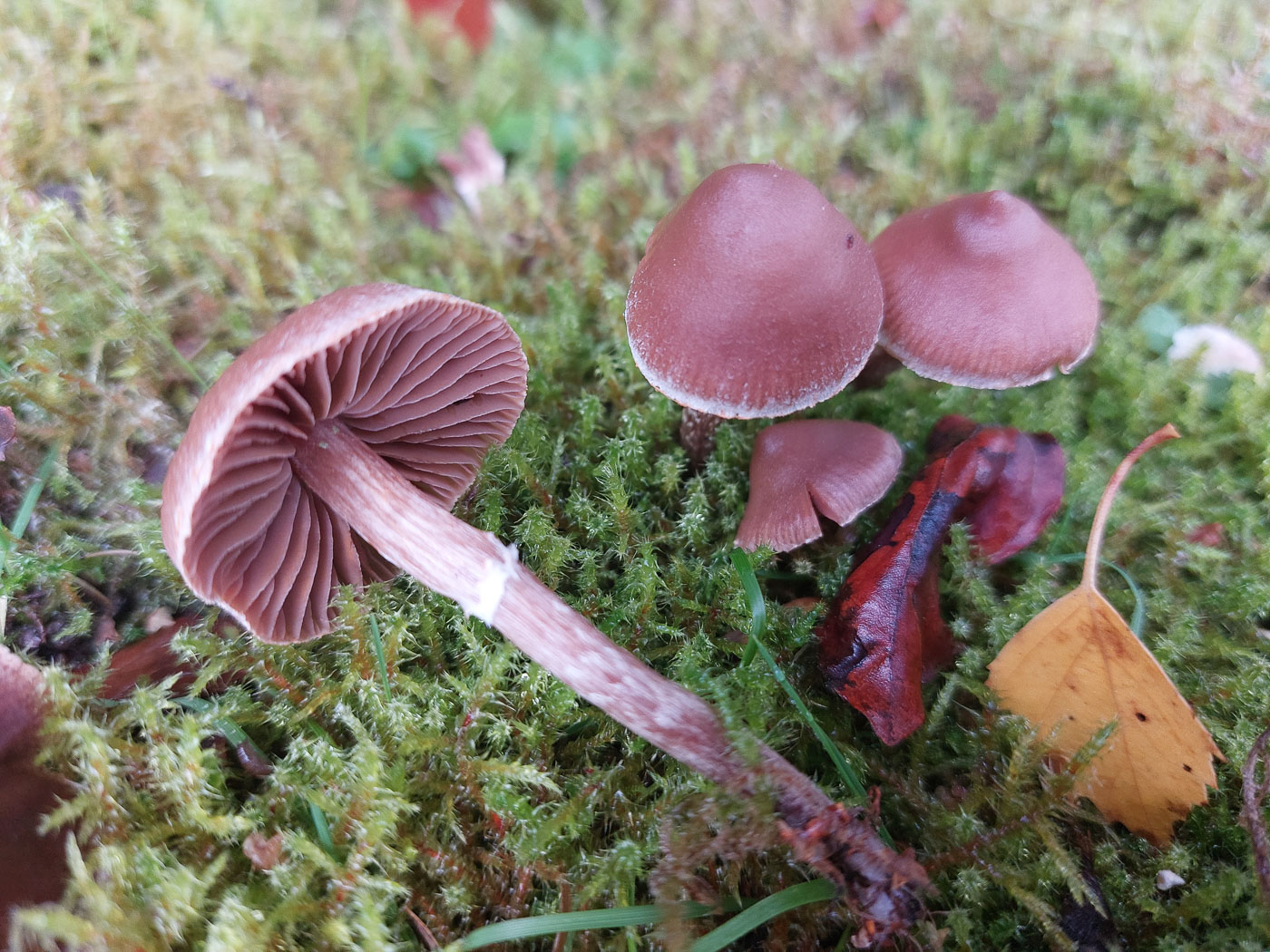
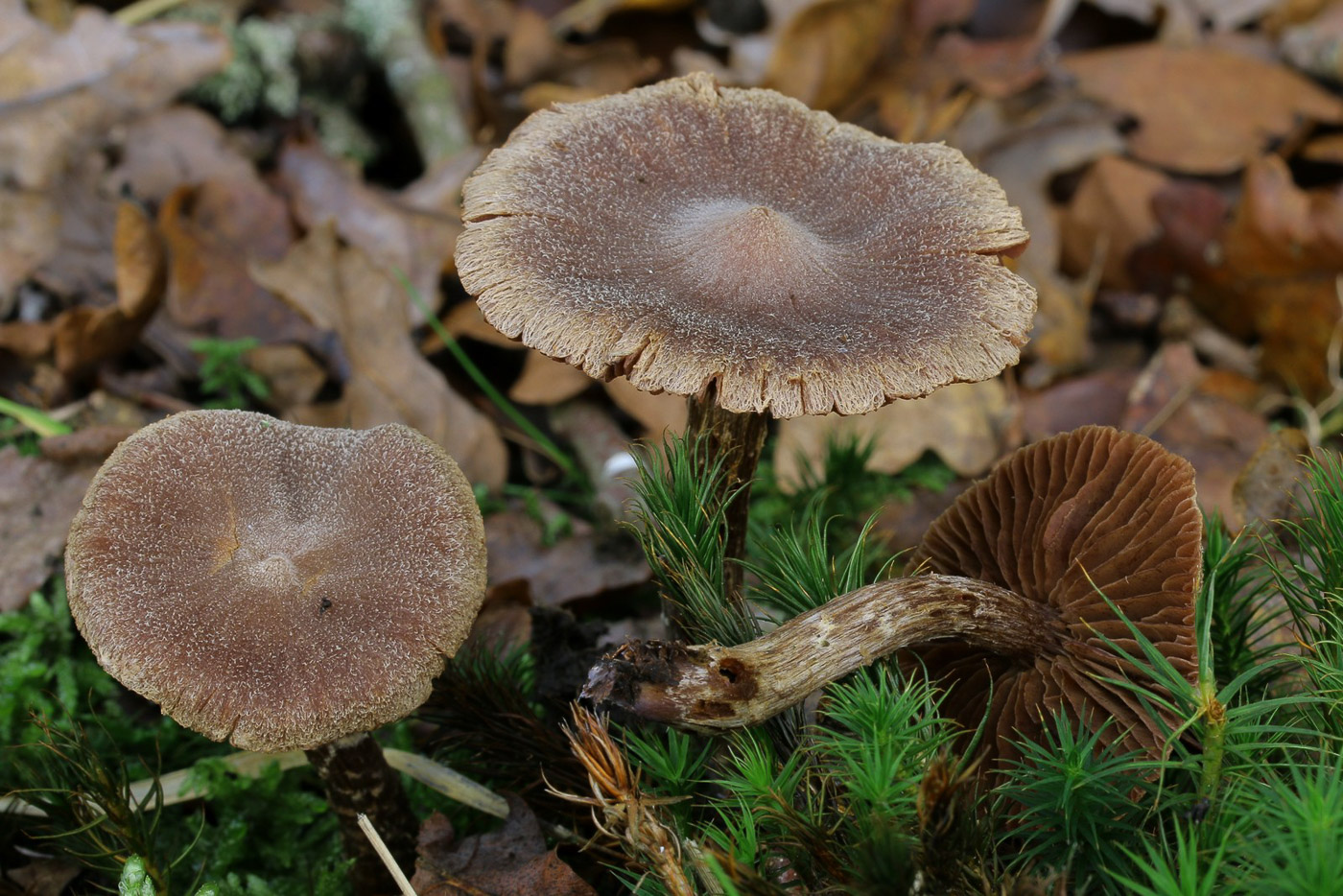
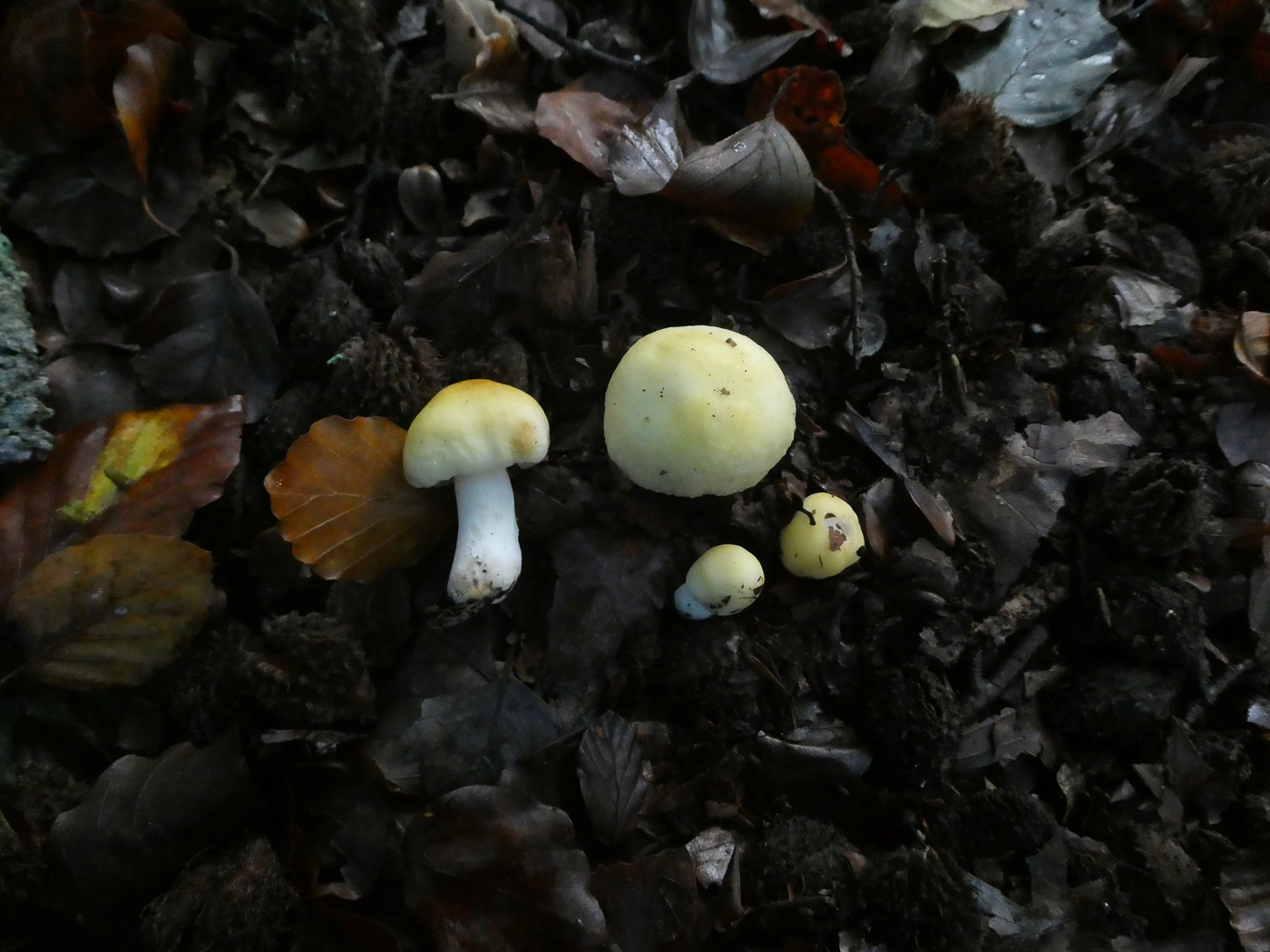
.jpg)
.jpg)
